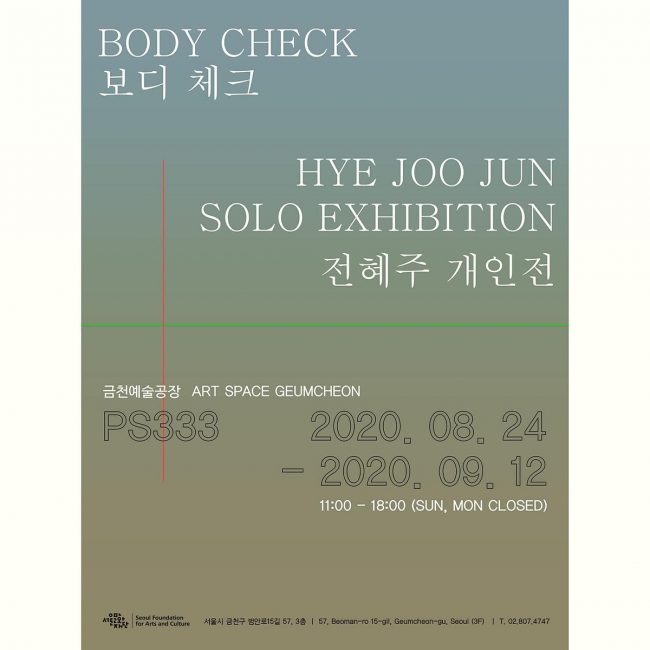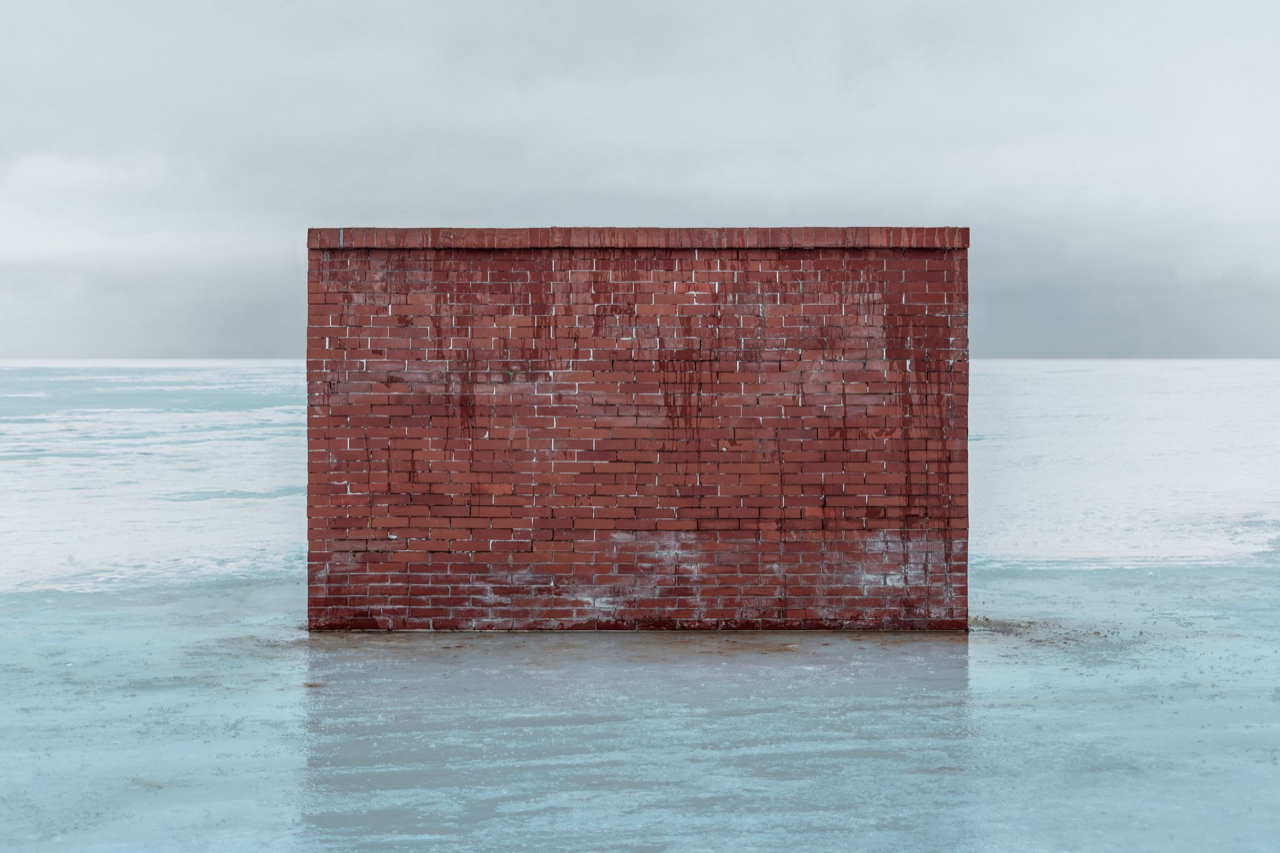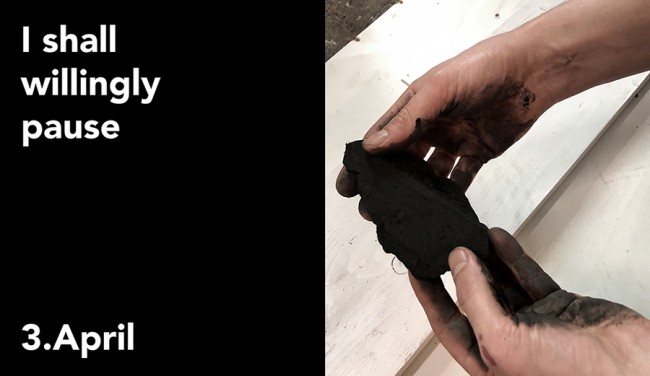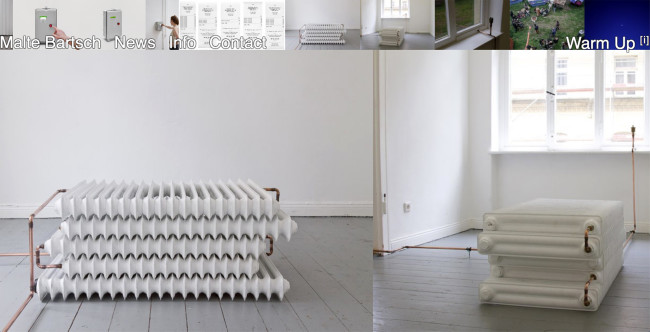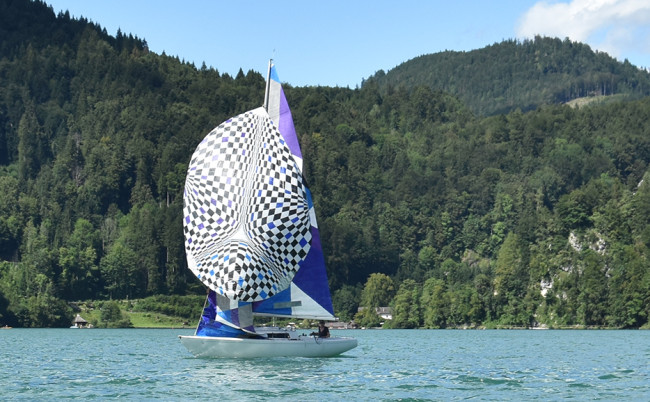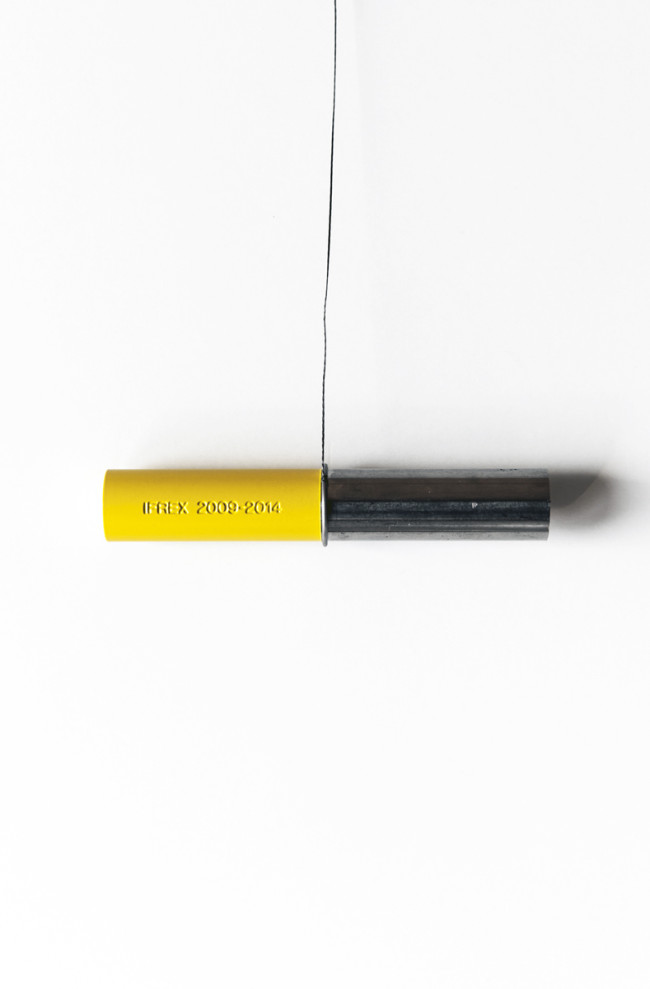NOWS: 2016-2021 archived
NOWS is a series introducing new works, sharing ideas and testing unrealized projects. It features experiments that don’t necessarily have a place and a public yet. NOWS is an ongoing project, initiated by theInstitut für Raumexperimente and is co-hosted by Studio Olafur Eliassonvia both institution’s websites and social media platforms. It expands the Instituts’s activities and aims to offer selected updates while cultivating the dialogue between artists associated with the Institut für Raumexperimente and a wider audience.
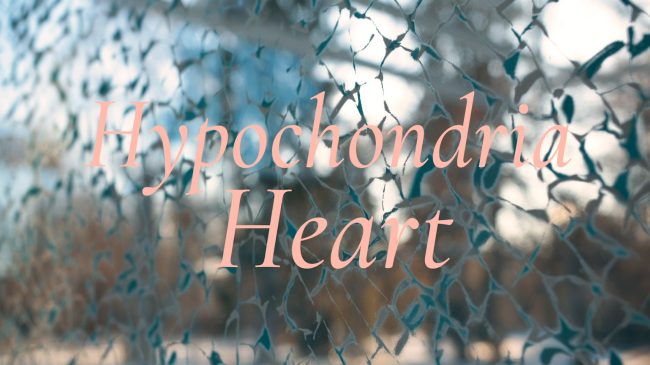
NOWs: Hypochondria Heart by Nina Schuiki
Nina Schuiki: Sorrow Window, 2020. Spray paint, existing window panes
FORUM STADTPARK, Graz
curated by zweintopf
What we don’t want to do here is to place an eloquent text in front of the work of art, outlining the only correct and exclusively rational approach to the work. The installation created by Nina Schuiki for Forum Stadtpark attempts to carefully expose all that is hidden behind objects, and the text is also intended to emphasise this transparency of the work. “Transparency” writes Susan Sonntag “means experiencing the luminosity of the object itself, of all the things in its essence”[1]. Text should not interfere with the sensual experience of art. Instead, the viewers should be given the opportunity to re-activate their senses. Susan Sonntag’s statement “We must learn in order to see more, to hear more and to feel more”[2]provides clear instructions for visiting the exhibition.
“The space should remain as empty as possible; I want to emphasise the dialogue that takes place between inside and outside“ wrote Nina Schuiki in February 2020 when describing her site-specific installation. The exhibition originally would have been opened in May, so it was already set up before that. And still, one has to view the work at present both through the lens of the pandemic and in context with it. It is not possible to separate the two, because the work fits quite naturally within the framework of experiential and emotional references that we have been given during this momentous year. Good works of art often manage to make life more understandable to us in new ways. But sometimes it’s the other way around: Life or even a pandemic can enable us to understand art in a new way. As a watchword for the visual arts programme in Forum Stadpark, KUNST [ART] today means exactly that: Good art is always current. And its contemporary nature, its strategic position at a crossroads within society – with all of its trends and problems – also inspires Nina Schuiki in important ways. Her works walk the tightrope between comfort and discomfort and serve as an example of a “therapeutic use of art”. Aristotle cited this use in his philosophy: By challenging us, art brings hidden emotions to light and purifies them.[3]
The phrase “Hypochondria Heart”[4], chosen as the title of the exhibition, has been taken from a book by Svetlana Boym. It refers to nostalgia as an incurable illness, as a longing for another time and a primordial form of experiencing the sense of self, free from forced progress and productive time management. In this context, Nina Schuiki‘s persistent preoccupation with transience and continuity also adopts a utopian dimension – after all, she is searching for a time beyond time.
In her central work Sorrow Window, Nina Schuiki takes a characteristic window façade and creates a pattern based on photographs of broken panes of safetyglass that she found in public space; these images are then sprayed directly onto the pane. This thin membrane that is revealed between the art venue and the – in part politically and deliberately problematised – public sphere exposes a seeming fragility, which we may never have noticed before. Perhaps it has always been present. As Susan Sonntag writes, it is as if Nina Schuiki reduced the content of her work precisely for this reason, until the matter itself was exposed: the essence of this relationship between space, art and society. The English term sorrow indicates sadness, but also suffering, pain and grief. Sorrow Window thus becomes an existential wailing wall that subtly but urgently reveals what we potentially have to lose. In terms of places and relationships. So much has fallen by the wayside this year. And yet: We will get these back.
zweintopf 2020
[1] Susan Sonntag, Gegen Interpretation, in: Susan Sonntag, Kunst und Antikunst. 24 literarischeAnalysen, Frankfurt, 201511, p. 21
[2] ditto, p. 22
[3] ditto,p. 11
[4] Svetlana Boym, The Future of Nostalgia, 2001
Video concept: Claudia Gerhäusser, Constantin Lederer, Nina Schuiki; Camera, Edit: Constantin Lederer Realtime Films; Text: Who Is Speaking, Bettina Landl, 2020; Speaker: Bettina Landl und Anja Korherr; Audio Recording: Arne Glöckner; Exhibition guard: Anja Korherr
WORKS:
DarknessSpoken, 2020. This work takes the idea of the spoken newspaper and runs with it. Emil Breisach used this format in the opening week of Forum Stadtpark to express current political commentary. Nina Schuiki has invited artists to provide her with text fragments at dark times. In the exhibition, these texts are kept deliberately short and are spoken into the space at a certain interval by a member of the supervisory staff. Selected texts by Melanie Ender, Elaine Wing-Ah Ho, Mihret Kebede, Bettina Landl and Catharina Szonn are performed orally within the exhibition.
For silence is a desolation scream inside your heart, 2020. Text, installed in three display windows in the outer façade
I still see you in everything (II), 2020. Tears, glass objects (hermetically sealed)
I still see you in everything (III), 2020. Eight-part photo series, direct print on white glass, each 20 cm in diameter
WoundsItch, 2019. Wax, colour pigments. According to an ancient custom practiced in Jerusalem, candles are cut to the exact height of a child and lit to ward off illness or stress. Nina Schuiki used black-coloured wax to assemble seven long, white candles from fragments.
Nina Schuiki: Sorrow Window, 2020. Spray paint, existing window panes
FORUM STADTPARK, Graz
curated by zweintopf
What we don’t want to do here is to place an eloquent text in front of the work of art, outlining the only correct and exclusively rational approach to the work. The installation created by Nina Schuiki for Forum Stadtpark attempts to carefully expose all that is hidden behind objects, and the text is also intended to emphasise this transparency of the work. “Transparency” writes Susan Sonntag “means experiencing the luminosity of the object itself, of all the things in its essence”[1]. Text should not interfere with the sensual experience of art. Instead, the viewers should be given the opportunity to re-activate their senses. Susan Sonntag’s statement “We must learn in order to see more, to hear more and to feel more”[2]provides clear instructions for visiting the exhibition.
“The space should remain as empty as possible; I want to emphasise the dialogue that takes place between inside and outside“ wrote Nina Schuiki in February 2020 when describing her site-specific installation. The exhibition originally would have been opened in May, so it was already set up before that. And still, one has to view the work at present both through the lens of the pandemic and in context with it. It is not possible to separate the two, because the work fits quite naturally within the framework of experiential and emotional references that we have been given during this momentous year. Good works of art often manage to make life more understandable to us in new ways. But sometimes it’s the other way around: Life or even a pandemic can enable us to understand art in a new way. As a watchword for the visual arts programme in Forum Stadpark, KUNST [ART] today means exactly that: Good art is always current. And its contemporary nature, its strategic position at a crossroads within society – with all of its trends and problems – also inspires Nina Schuiki in important ways. Her works walk the tightrope between comfort and discomfort and serve as an example of a “therapeutic use of art”. Aristotle cited this use in his philosophy: By challenging us, art brings hidden emotions to light and purifies them.[3]
The phrase “Hypochondria Heart”[4], chosen as the title of the exhibition, has been taken from a book by Svetlana Boym. It refers to nostalgia as an incurable illness, as a longing for another time and a primordial form of experiencing the sense of self, free from forced progress and productive time management. In this context, Nina Schuiki‘s persistent preoccupation with transience and continuity also adopts a utopian dimension – after all, she is searching for a time beyond time.
In her central work Sorrow Window, Nina Schuiki takes a characteristic window façade and creates a pattern based on photographs of broken panes of safetyglass that she found in public space; these images are then sprayed directly onto the pane. This thin membrane that is revealed between the art venue and the – in part politically and deliberately problematised – public sphere exposes a seeming fragility, which we may never have noticed before. Perhaps it has always been present. As Susan Sonntag writes, it is as if Nina Schuiki reduced the content of her work precisely for this reason, until the matter itself was exposed: the essence of this relationship between space, art and society. The English term sorrow indicates sadness, but also suffering, pain and grief. Sorrow Window thus becomes an existential wailing wall that subtly but urgently reveals what we potentially have to lose. In terms of places and relationships. So much has fallen by the wayside this year. And yet: We will get these back.
zweintopf 2020
[1] Susan Sonntag, Gegen Interpretation, in: Susan Sonntag, Kunst und Antikunst. 24 literarischeAnalysen, Frankfurt, 201511, p. 21
[2] ditto, p. 22
[3] ditto,p. 11
[4] Svetlana Boym, The Future of Nostalgia, 2001
Video concept: Claudia Gerhäusser, Constantin Lederer, Nina Schuiki; Camera, Edit: Constantin Lederer Realtime Films; Text: Who Is Speaking, Bettina Landl, 2020; Speaker: Bettina Landl und Anja Korherr; Audio Recording: Arne Glöckner; Exhibition guard: Anja Korherr
WORKS:
DarknessSpoken, 2020. This work takes the idea of the spoken newspaper and runs with it. Emil Breisach used this format in the opening week of Forum Stadtpark to express current political commentary. Nina Schuiki has invited artists to provide her with text fragments at dark times. In the exhibition, these texts are kept deliberately short and are spoken into the space at a certain interval by a member of the supervisory staff. Selected texts by Melanie Ender, Elaine Wing-Ah Ho, Mihret Kebede, Bettina Landl and Catharina Szonn are performed orally within the exhibition.
For silence is a desolation scream inside your heart, 2020. Text, installed in three display windows in the outer façade
I still see you in everything (II), 2020. Tears, glass objects (hermetically sealed)
I still see you in everything (III), 2020. Eight-part photo series, direct print on white glass, each 20 cm in diameter
WoundsItch, 2019. Wax, colour pigments. According to an ancient custom practiced in Jerusalem, candles are cut to the exact height of a child and lit to ward off illness or stress. Nina Schuiki used black-coloured wax to assemble seven long, white candles from fragments.
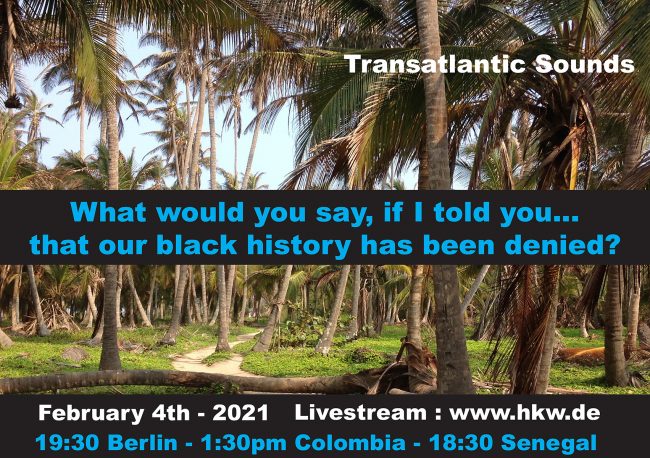
NOWs: Transatlantic Sounds
Transatlantic SoundsWhat would you say if I told you that our Black history has been denied?
as part of #Healing (Faju), New Alphabet School, HKW – Haus der Kulturen der Welt, Berlin
Thursday, Feb 4, 7.30–11pm
Sound marathon by Tomás Espinosa, Jorge Gómez, Carina Madsius and Linda-Philomène Tsoungui with Laeïla Adjovi, Margarita Ariza, Corinna Fiora, Mario Henao, Christian Howard Hooker, Ibaaku, Muhammed Lamin Jadama, LoMaasBello, Macú, Daba Makourejah, Daniela Maldonado (Red Comunitaria Trans), Plu con Pla, Johan Mijail, Yos Piña Narvaez, Ariel Palacios, Fundación Cultural Pilón, Abdulah Sow.
Partly in Spanish with translation into English
The African diaspora carries pain but also embraces transformation. Against the backdrop of trauma and violence, diasporic movements turned the Atlantic into a tunnel of cultural exchanges, where different Africas met the Caribbean, the Atlantic and the Pacific coast of Abya Yala as Indigenous people call the pre-colonized territory of what today is referred to as the American continent. They have been laying the foundations of a mestizaje that is reflected in dance, ritual practices, popular religiosity, musical instruments, drums, percussion. These manifestations have been undervalued, diluted and racialized by colonial structures of power, generating disconnections between afro-diasporic communities and a part of history – the history of the Black Atlantic.In a digital marathon, an archive of sounds, voices and experiences will be created while the participants exchange ideas, generate discussions and listen to each other. The marathon will bring together musicians, artists and other guests from Senegal, the Caribbean, Colombia and the Senegalese diaspora in Berlin. Through poems, interventions and other means, they will share their experience as members of the diaspora with the participants. This marathon lays the ground for the online transmission on February 6th.
This marathon lays the ground for the Transatlantic Sounds public event on February 6th, audio stream via hkw.de/healing. In a performance ritualbeing streamed into the digital realm, Transatlantic Sounds will be offering improvisations, live sound interventions and jam sessions based on samples from the online marathon of February 4th. Communicated through a communal radio frequency, they will open a portal and connect Tumaco with Dakar and Berlin:
Saturday, Feb 6, 2–4pm
Transatlantic Sounds: “What would you say if I told you that our Black history has been denied?”
Performance ritual by Tomás Espinosa, Jorge Gómez, Carina Madsius and Linda-Philomène Tsoungui with Muhammed Lamin Jadama, Abdulah Sow and Co.
To recognize oneself as afro-diasporic is to be aware that identities are the result of ruptures and fragmentations. This reveals that a part of history has been silenced and disconnected. These wounds are not yet repaired but might be healed through sounds and the act of listening to each other. In an audio performance ritual streamed into the digital realm, the contributors will be offering improvisations, live sound interventions and jam sessions based on samples from the sound marathon of February 4. Communicated through a communal radio frequency they will open a portal and connect Tumaco with Dakar, Berlin and other points of the partially disconnected African diaspora. The act of listening and the cathartic power of music and its vibrations permeate the body to heal the traumas of the past, to connect and vibrate together.
–
This is a poem for you
Transatlantic Sounds: What would you say, if I tell you that our black history has
been denied?
1.
If I can’ t trust the books,
incorrectly written
and hegemonic.
So I’m going to ask the stones, the heavens
I’m going to ask… the water, the ocean.
The ocean answers…
loaded
heavy
Not as much as my head,
who doesn’t want to get into more theory.
But this is something else…
Let’s go back to the ocean.
The ocean is loaded,
furious.
The ocean will not know about books,
but it does know about history
History!!
and the Atlantic becomes dark.
Transatlantico.
Transatlantic.
Transatlantisch.
Transatlantische.
2.
The history has been groped,
it is lost
the history under scopolamine
excited
drunk
telling stories.
Colonized and patriarchal.
The History is not allowed to drag
But…. What do you do when you are banned from drag?
dresses in the bathroom,
hidden.
History has been taken to study,
colonial color theory.
She learned from Europe and did not understand the rest
fell asleep
did not fall asleep!!
history has been drugged
she only can see in white
ahhh don’t tell me
history has been bleached.
3.
Neither one, nor the other, nor the other!
But yes the mixture of many.
Also the trauma of all.
They tell me that I am not the coca leaf,
that I am not the yam,
that I don’t own the plantation.
I am a Diaspora.
Disconnected !
Racializada
Vibrate! or don’t you have a voice?
Don’t you feel it?
Speak up!
I can’t find it…
Do you want to talk about Colonialism?
Let’s talk about fragmentations and ruptures.
Of movements.
Of movement in one direction!
Because this one doesn’t come back nor is it expected.
Glorious movement!
Glorious?
Painful. Painful.
Exchange.
Robbery!
Let’s talk about the drum! because I can’t hear it.
African, Caribbean, South American, Pacific, Europe!
Disconnected, fragmented.
Without a visa but with the gold somewhere else.
The forbidden language. The story that has not been properly told.. The bastard daughter. The
distant one.
History disguised a miracle.
Miracle?
rupture!
and does it hurt?
it didn’t hurt
It hurts.
With Joy,
Carina Madsius, Linda-Philomène Tsoungui, Jorge Gómez and Tomás Espinosa and the rest of the #Healing team
Transatlantic SoundsWhat would you say if I told you that our Black history has been denied?
as part of #Healing (Faju), New Alphabet School, HKW – Haus der Kulturen der Welt, Berlin
Thursday, Feb 4, 7.30–11pm
Sound marathon by Tomás Espinosa, Jorge Gómez, Carina Madsius and Linda-Philomène Tsoungui with Laeïla Adjovi, Margarita Ariza, Corinna Fiora, Mario Henao, Christian Howard Hooker, Ibaaku, Muhammed Lamin Jadama, LoMaasBello, Macú, Daba Makourejah, Daniela Maldonado (Red Comunitaria Trans), Plu con Pla, Johan Mijail, Yos Piña Narvaez, Ariel Palacios, Fundación Cultural Pilón, Abdulah Sow.
Partly in Spanish with translation into English
The African diaspora carries pain but also embraces transformation. Against the backdrop of trauma and violence, diasporic movements turned the Atlantic into a tunnel of cultural exchanges, where different Africas met the Caribbean, the Atlantic and the Pacific coast of Abya Yala as Indigenous people call the pre-colonized territory of what today is referred to as the American continent. They have been laying the foundations of a mestizaje that is reflected in dance, ritual practices, popular religiosity, musical instruments, drums, percussion. These manifestations have been undervalued, diluted and racialized by colonial structures of power, generating disconnections between afro-diasporic communities and a part of history – the history of the Black Atlantic.In a digital marathon, an archive of sounds, voices and experiences will be created while the participants exchange ideas, generate discussions and listen to each other. The marathon will bring together musicians, artists and other guests from Senegal, the Caribbean, Colombia and the Senegalese diaspora in Berlin. Through poems, interventions and other means, they will share their experience as members of the diaspora with the participants. This marathon lays the ground for the online transmission on February 6th.
This marathon lays the ground for the Transatlantic Sounds public event on February 6th, audio stream via hkw.de/healing. In a performance ritualbeing streamed into the digital realm, Transatlantic Sounds will be offering improvisations, live sound interventions and jam sessions based on samples from the online marathon of February 4th. Communicated through a communal radio frequency, they will open a portal and connect Tumaco with Dakar and Berlin:
Saturday, Feb 6, 2–4pm
Transatlantic Sounds: “What would you say if I told you that our Black history has been denied?”
Performance ritual by Tomás Espinosa, Jorge Gómez, Carina Madsius and Linda-Philomène Tsoungui with Muhammed Lamin Jadama, Abdulah Sow and Co.
To recognize oneself as afro-diasporic is to be aware that identities are the result of ruptures and fragmentations. This reveals that a part of history has been silenced and disconnected. These wounds are not yet repaired but might be healed through sounds and the act of listening to each other. In an audio performance ritual streamed into the digital realm, the contributors will be offering improvisations, live sound interventions and jam sessions based on samples from the sound marathon of February 4. Communicated through a communal radio frequency they will open a portal and connect Tumaco with Dakar, Berlin and other points of the partially disconnected African diaspora. The act of listening and the cathartic power of music and its vibrations permeate the body to heal the traumas of the past, to connect and vibrate together.
–
This is a poem for you
Transatlantic Sounds: What would you say, if I tell you that our black history has
been denied?
1.
If I can’ t trust the books,
incorrectly written
and hegemonic.
So I’m going to ask the stones, the heavens
I’m going to ask… the water, the ocean.
The ocean answers…
loaded
heavy
Not as much as my head,
who doesn’t want to get into more theory.
But this is something else…
Let’s go back to the ocean.
The ocean is loaded,
furious.
The ocean will not know about books,
but it does know about history
History!!
and the Atlantic becomes dark.
Transatlantico.
Transatlantic.
Transatlantisch.
Transatlantische.
2.
The history has been groped,
it is lost
the history under scopolamine
excited
drunk
telling stories.
Colonized and patriarchal.
The History is not allowed to drag
But…. What do you do when you are banned from drag?
dresses in the bathroom,
hidden.
History has been taken to study,
colonial color theory.
She learned from Europe and did not understand the rest
fell asleep
did not fall asleep!!
history has been drugged
she only can see in white
ahhh don’t tell me
history has been bleached.
3.
Neither one, nor the other, nor the other!
But yes the mixture of many.
Also the trauma of all.
They tell me that I am not the coca leaf,
that I am not the yam,
that I don’t own the plantation.
I am a Diaspora.
Disconnected !
Racializada
Vibrate! or don’t you have a voice?
Don’t you feel it?
Speak up!
I can’t find it…
Do you want to talk about Colonialism?
Let’s talk about fragmentations and ruptures.
Of movements.
Of movement in one direction!
Because this one doesn’t come back nor is it expected.
Glorious movement!
Glorious?
Painful. Painful.
Exchange.
Robbery!
Let’s talk about the drum! because I can’t hear it.
African, Caribbean, South American, Pacific, Europe!
Disconnected, fragmented.
Without a visa but with the gold somewhere else.
The forbidden language. The story that has not been properly told.. The bastard daughter. The
distant one.
History disguised a miracle.
Miracle?
rupture!
and does it hurt?
it didn’t hurt
It hurts.
With Joy,
Carina Madsius, Linda-Philomène Tsoungui, Jorge Gómez and Tomás Espinosa and the rest of the #Healing team
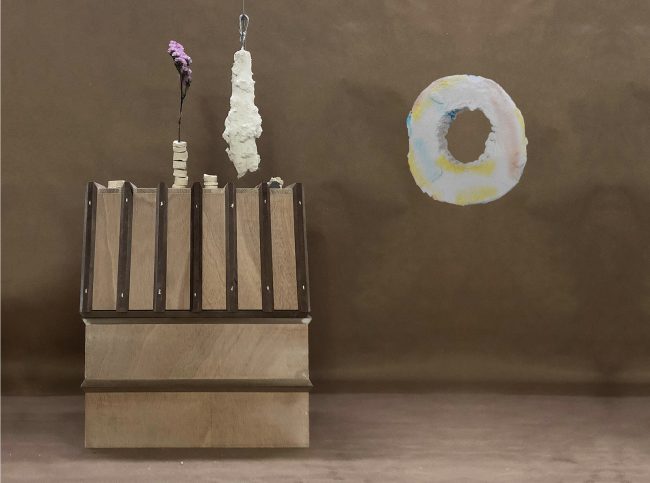
NOWs: Future archaeology – a return from the moon by Fabian Anselm Orasch
photo by the artist
Fabian Anselm Orasch: Future archaeology - a return from the moonat msu– Museum of Contemporary Art in Zagreb
During his residency in Zagreb in July 2019, the artist researched the specificities of contemporary Croatian art, the permanent collection at MSU, but also the city of Zagreb. He was especially attracted by the open character of the Kožarić Studio, as well as by Zagreb’s modernist architecture and the way in which its elements were present in the development of the city. Installations and sculptures he is preparing for this exhibition in his Berlin studio will reference the atmosphere and the invisible structure of Zagreb. During his numerous walks in the streets of the city, he noticed the exhaust pipes of the underground steam pipeline and the manholes that extended from the heating plants to the consumers. They were partly invisible because they were located in the underground zone of the city. The surreal atmosphere—reminiscent of the reflection of the Moon on the Earth’s surface—will produce a device that will generate steam in the installation space. The steam will come out of sculptural elements that visually reference the abovementioned exhaust pipes.
Fabian Anselm Orasch creates works that are based on research into the local context. They function independently, but also in relation to other elements of the exhibition display. The exhibition artifacts come from a familiar world, but form wondrous and new ensembles, which are strange to us, and which we cannot easily identify. In doing so, he uses aesthetic and functional aspects that are familiar to him from architecture, urban planning, science, nature, and from the context of the place where the exhibition is created. This encourages the viewer to establish personal imaginative and associative worlds.
Fabian Anselm Orasch is a German artist of the middle generation (Berlin, 1981). After studying philosophy and art history at the FU Berlin, he studied sculpture at AdBK Karlsruhe, where he graduated under Professor Harald Klingelhöller in 2013. From 2013 to 2014, he continued his studies with Klingelhöller. He has exhibited in numerous group and solo exhibitions both at home and abroad and has won awards and scholarships (2014 Baden-Württemberg Scholarship for a stay in Warsaw).
Curator of the exhibition: Nataša Ivančević, Museum Advisor
photo by the artist
Fabian Anselm Orasch: Future archaeology - a return from the moonat msu– Museum of Contemporary Art in Zagreb
During his residency in Zagreb in July 2019, the artist researched the specificities of contemporary Croatian art, the permanent collection at MSU, but also the city of Zagreb. He was especially attracted by the open character of the Kožarić Studio, as well as by Zagreb’s modernist architecture and the way in which its elements were present in the development of the city. Installations and sculptures he is preparing for this exhibition in his Berlin studio will reference the atmosphere and the invisible structure of Zagreb. During his numerous walks in the streets of the city, he noticed the exhaust pipes of the underground steam pipeline and the manholes that extended from the heating plants to the consumers. They were partly invisible because they were located in the underground zone of the city. The surreal atmosphere—reminiscent of the reflection of the Moon on the Earth’s surface—will produce a device that will generate steam in the installation space. The steam will come out of sculptural elements that visually reference the abovementioned exhaust pipes.
Fabian Anselm Orasch creates works that are based on research into the local context. They function independently, but also in relation to other elements of the exhibition display. The exhibition artifacts come from a familiar world, but form wondrous and new ensembles, which are strange to us, and which we cannot easily identify. In doing so, he uses aesthetic and functional aspects that are familiar to him from architecture, urban planning, science, nature, and from the context of the place where the exhibition is created. This encourages the viewer to establish personal imaginative and associative worlds.
Fabian Anselm Orasch is a German artist of the middle generation (Berlin, 1981). After studying philosophy and art history at the FU Berlin, he studied sculpture at AdBK Karlsruhe, where he graduated under Professor Harald Klingelhöller in 2013. From 2013 to 2014, he continued his studies with Klingelhöller. He has exhibited in numerous group and solo exhibitions both at home and abroad and has won awards and scholarships (2014 Baden-Württemberg Scholarship for a stay in Warsaw).
Curator of the exhibition: Nataša Ivančević, Museum Advisor
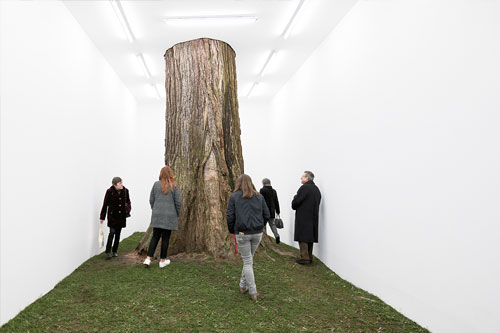
NOWs: Fabian Knecht – Werkstattpreisträger 2020
Isolation (Stamm), 2018. Installation in public space, Baden-Baden, Germany. Courtesy Fabian Knecht and alexander levy
Fabian Knecht – Werkstattpreisträger 2020
Kunststiftung Erich Hauser
Saline 36
78628 Rottweil
Ausstellungseröffnung am 26. September 2020, 19.00 Uhr
Seit 1997 wird der Werkstattpreis der Kunststiftung Erich Hauser an eine junge Bildhauerin/einen jungen Bildhauer vergeben. Inzwischen haben 25 Künstlerinnen und Künstler diese Auszeichnung erhalten. Der Preis bietet die Möglichkeit, mehrere Wochen in der Werkstatthalle zu arbeiten und die entstandenen Werke dort zu präsentieren. Es erscheint ein Katalog.
Fabian Knecht, geb. 1980 in Magdeburg, studierte an der Universität der Künste Berlin und am California Institute of Arts. 2012 arbeitete er im Studio von Matthew Barney in New York. 2014 war er Meisterschüler von Olafur Eliasson, an dessen Institut für Raumexperimente er von 2009 bis 2014 studierte.
In seinen auf einer konzeptuellen Herangehensweise beruhenden Skulpturen, Aktionen und Interventionen bezieht Fabian Knecht den öffentlichen Raum, das Alltagsleben wie auch den Naturkontext mit ein. Er verändert Wahrnehmungs- und Handlungsmuster, reflektiert Kunstbegriffe und Machtstrukturen und stellt soziale Verhältnisse und Normen durch Gegenbilder
infrage.
Fabian Knechts Werke wurden in nationalen und internationalen Institutionen und Ausstellungen unter anderem im MSU Museum für zeitgenössische Kunst, Zagreb, auf der Moscow International Biennale for Young Art, in der Neuen Nationalgalerie Berlin, im Hamburger Bahnhof, Berlin, im Imperial War Museum, London, und in der Staatlichen Kunsthalle Baden-Baden gezeigt.
Die Jury, bestehend aus Charlotte Mumm, Werkstattpreisträgerin von 2018, Dr. Claudia Emmert, Direktorin Zeppelinmuseum Friedrichshafen, und Roland Nachtigäller, Direktor Marta Herford gGmbH, haben einstimmig entschieden, den Werkstattpreis an Fabian Knecht zu vergeben. Die Jury hob hervor, dass sie Fabian Knecht für besonders geeignet hält, sich mit dem Kunst-, Arbeits- und Alltagskosmos des Bildhauers Erich Hauser auseinanderzusetzen und zu einer eigenständigen künstlerischen Positionierung zu kommen. Im Rahmen des diesjährigen Jubiläumsjahres – Erich Hauser wäre in diesem Jahr 90 Jahre alt geworden – wünscht sich die Kunststiftung einen Dialog des Preisträgers mit Erich Hauser. In seinen, auf einer konzeptuellen Herangehensweise beruhenden Skulpturen, Aktionen und Interventionen bezieht Fabian Knecht den öffentlichen Raum, das Alltagsleben wie auch den Naturkontext mit ein. Er verändert Wahrnehmungs- und Handlungsmuster, reflektiert Kunstbegriffe und Machtstrukturen, stellt soziale Verhältnisse und Normen durch starke Gegenbilder infrage.
Isolation (Stamm), 2018. Installation in public space, Baden-Baden, Germany. Courtesy Fabian Knecht and alexander levy
Fabian Knecht – Werkstattpreisträger 2020
Kunststiftung Erich Hauser
Saline 36
78628 Rottweil
Ausstellungseröffnung am 26. September 2020, 19.00 Uhr
Seit 1997 wird der Werkstattpreis der Kunststiftung Erich Hauser an eine junge Bildhauerin/einen jungen Bildhauer vergeben. Inzwischen haben 25 Künstlerinnen und Künstler diese Auszeichnung erhalten. Der Preis bietet die Möglichkeit, mehrere Wochen in der Werkstatthalle zu arbeiten und die entstandenen Werke dort zu präsentieren. Es erscheint ein Katalog.
Fabian Knecht, geb. 1980 in Magdeburg, studierte an der Universität der Künste Berlin und am California Institute of Arts. 2012 arbeitete er im Studio von Matthew Barney in New York. 2014 war er Meisterschüler von Olafur Eliasson, an dessen Institut für Raumexperimente er von 2009 bis 2014 studierte.
In seinen auf einer konzeptuellen Herangehensweise beruhenden Skulpturen, Aktionen und Interventionen bezieht Fabian Knecht den öffentlichen Raum, das Alltagsleben wie auch den Naturkontext mit ein. Er verändert Wahrnehmungs- und Handlungsmuster, reflektiert Kunstbegriffe und Machtstrukturen und stellt soziale Verhältnisse und Normen durch Gegenbilder
infrage.
Fabian Knechts Werke wurden in nationalen und internationalen Institutionen und Ausstellungen unter anderem im MSU Museum für zeitgenössische Kunst, Zagreb, auf der Moscow International Biennale for Young Art, in der Neuen Nationalgalerie Berlin, im Hamburger Bahnhof, Berlin, im Imperial War Museum, London, und in der Staatlichen Kunsthalle Baden-Baden gezeigt.
Die Jury, bestehend aus Charlotte Mumm, Werkstattpreisträgerin von 2018, Dr. Claudia Emmert, Direktorin Zeppelinmuseum Friedrichshafen, und Roland Nachtigäller, Direktor Marta Herford gGmbH, haben einstimmig entschieden, den Werkstattpreis an Fabian Knecht zu vergeben. Die Jury hob hervor, dass sie Fabian Knecht für besonders geeignet hält, sich mit dem Kunst-, Arbeits- und Alltagskosmos des Bildhauers Erich Hauser auseinanderzusetzen und zu einer eigenständigen künstlerischen Positionierung zu kommen. Im Rahmen des diesjährigen Jubiläumsjahres – Erich Hauser wäre in diesem Jahr 90 Jahre alt geworden – wünscht sich die Kunststiftung einen Dialog des Preisträgers mit Erich Hauser. In seinen, auf einer konzeptuellen Herangehensweise beruhenden Skulpturen, Aktionen und Interventionen bezieht Fabian Knecht den öffentlichen Raum, das Alltagsleben wie auch den Naturkontext mit ein. Er verändert Wahrnehmungs- und Handlungsmuster, reflektiert Kunstbegriffe und Machtstrukturen, stellt soziale Verhältnisse und Normen durch starke Gegenbilder infrage.
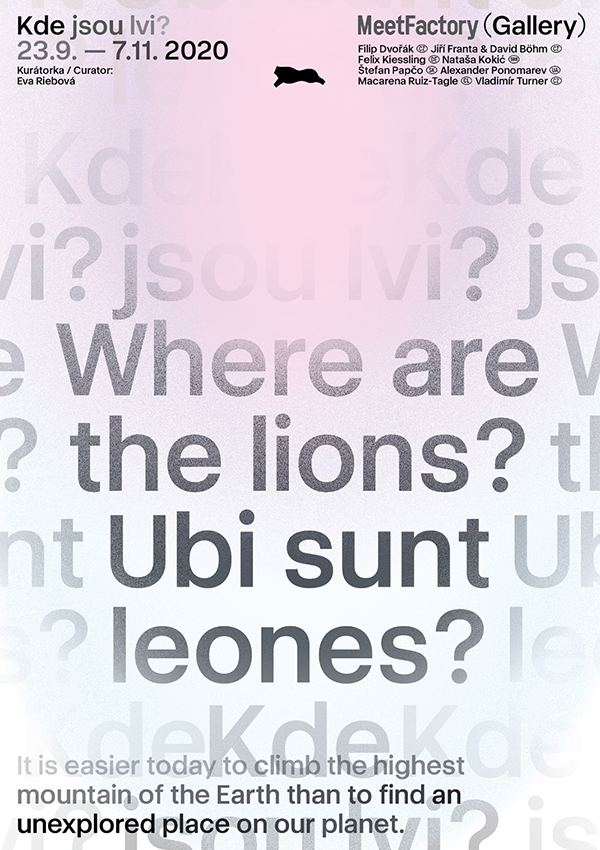
NOWs: Where are the lions? Ubi sunt leones?
Where are the lions? Ubi sunt leones?group exhibition
Opening
22 September
(Public House Event)
MeetFactory Galery
Ke Sklárně 3213/15
150 00 Praha 5
The exhibition Where Are the Lions? / Ubi sunt leones? looks into a phenomenon of human fascination for overcoming physical and psychological limits through adventures, extreme sports, and explorative expeditions. The title of the exhibition itself, being derived from the cartographic description of unexplored territories (Hic sunt leones) reminds us that it is easier today to climb the highest mountain of the Earth than to find an unexplored place on our planet.
The exhibition attempts to develop a story of artists-explorers from both historical and contemporary perspectives. It follows different motivations and objects of their fascinations. At the same time, the exhibition draws attention to the dilemma of today’s adventurers who want to satisfy their romantic lust for exploring new sites and being at the same time responsible for our ecosystem. The title of the show therefore can be also seen as a metaphoric question: where are today’s “lions” and their unknown territories?
The project connects international and Czech artists combining loaned artworks with works commissioned especially for the exhibition during the first half of 2020.
with works by
Filip Dvořák (CZ), Jiří Franta & David Böhm (CZ), Felix Kiessling (DE), Nataša Kokić (RS), Štefan Papčo (SK), Alexander Ponomarev (UA), Macarena Ruiz-Tagle (CL), Vladimír Turner (CZ)
curated by: Eva Riebová
production: Jan Vítek
architecture: Heinich & Stibitz
Where are the lions? Ubi sunt leones?group exhibition
Opening
22 September
(Public House Event)
MeetFactory Galery
Ke Sklárně 3213/15
150 00 Praha 5
The exhibition Where Are the Lions? / Ubi sunt leones? looks into a phenomenon of human fascination for overcoming physical and psychological limits through adventures, extreme sports, and explorative expeditions. The title of the exhibition itself, being derived from the cartographic description of unexplored territories (Hic sunt leones) reminds us that it is easier today to climb the highest mountain of the Earth than to find an unexplored place on our planet.
The exhibition attempts to develop a story of artists-explorers from both historical and contemporary perspectives. It follows different motivations and objects of their fascinations. At the same time, the exhibition draws attention to the dilemma of today’s adventurers who want to satisfy their romantic lust for exploring new sites and being at the same time responsible for our ecosystem. The title of the show therefore can be also seen as a metaphoric question: where are today’s “lions” and their unknown territories?
The project connects international and Czech artists combining loaned artworks with works commissioned especially for the exhibition during the first half of 2020.
with works by
Filip Dvořák (CZ), Jiří Franta & David Böhm (CZ), Felix Kiessling (DE), Nataša Kokić (RS), Štefan Papčo (SK), Alexander Ponomarev (UA), Macarena Ruiz-Tagle (CL), Vladimír Turner (CZ)
curated by: Eva Riebová
production: Jan Vítek
architecture: Heinich & Stibitz
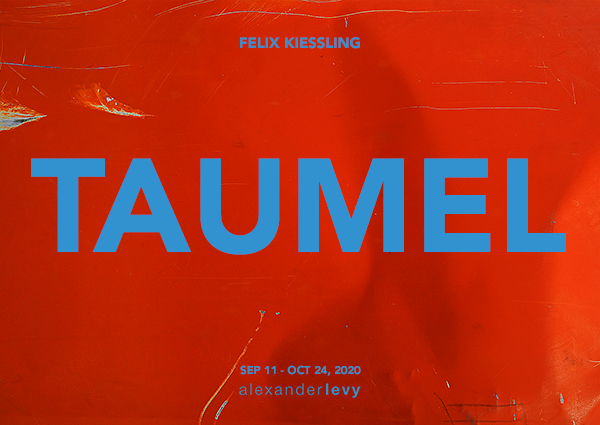
NOWs: Trauma by Felix Kiessling
Traumasolo exhibition
alexander levy
Rudi-Dutschke-Strasse 26
10969 Berlin
Soft opening 12 September 12–7 pm
Accompanied by a text by Larissa Kikol
The current hygiene regulations will be maintained for the entire duration of the exhibition.
The gallery alexander levy is pleased to present new works by Felix Kiessling for this year’s Gallery Weekend Berlin (Sep 11 – Sep 13).
The chaos has been a starting point for many of Felix Kiessling’s works over the past few years. In a playful way, he fathoms human perception and the question of how the world is connected. Hereby, physical parameters such as energy, tension and effect are decisive for him. Kiessling tries to explore and expand the limits of the possible. For the upcoming exhibition he is now going to examine the chaos within the social context of large cities.
In the exhibition, individual work complexes are combined to form an overall spatial concept. When entering the gallery space, the observer becomes part of an abstract, chaotic urban playground. The entire floor will be covered with paving slabs, which are commonly known from our cityscape. Nevertheless, some of them are wobbling, which results in a feeling of insecurity.
A new series of works deals with the bicycle as representation for the dealing with public space and property: the bicycle stands for mobility and independence, though through choice of model and color it also stands for individuality and differentiation. The bicycle that has been forgotten or left behind, rusted and broken on the street on the other hand, shows the divided relationship of an affluent society to its artifacts. Combined into abstract sculptures and covered with fresh paint, the old, deformed corpses are transformed into new objects that highlight the tense field between individuality and mass production.
Two further current works unfold through the dialogue with the space. For the first work, Felix Kiessling transposes the material steel into a minimalist sculpture by bending a four-meter long plank and connecting its ends. The sculpture is thus exposed to permanent tension, always close to escalation. The chained sequence of action and reaction is therefore put to halt. The sculpture is in a moment of suspension, almost an uncanny calm. In another work, drywall profiles are braced against the gallery ceiling by a scaffolding spindle. The sculpture freezes for a moment from a deformation process and the individual elements merge into a collective unit.
Felix Kiessling’s series is the result of extensive researches about the possibilities and weaknesses of industrially produced materials. They refer to a time, in which large cities are marked by construction projects and estate speculations and the societies of our globalized reality are confronted with social segregation and exclusion. Our environment is built from geometric and symmetrical construction materials. These materials will be the elements on which the forces of the exhibition will rub off, will cause them to totter and destroy their symmetry.
The artist hereby raises the questions of who and to which extent actually shapes the city – the citizens or the economy, and looks at what our culturally constructed sense of stability consists of and considers moments in which our reality begins to crumble.
Felix Kiessling, born in Hamburg in 1980, studied at the University of Arts Berlin. In 2014 he was a master student of Olafur Eliasson, at whose Institute for Space Experiments he studied from 2009 to 2014.
Felix Kiessling’s works have been shown in national and international institutions and exhibitions, including Matucana100 (Santiago, Chile), MOCAK – Museum of Contemporary Art Krakow (Krakow, Poland), Neue Nationalgalerie (Berlin), Hamburger Bahnhof (Berlin), Sprengel Museum (Hanover) and the 5th Moscow International Biennale for Young Art (Moscow, Russia).
alexander levy
Rudi-Dutschke-Strasse 26
10969 Berlin
Soft opening 12 September 12–7 pm
Accompanied by a text by Larissa Kikol
The current hygiene regulations will be maintained for the entire duration of the exhibition.
The gallery alexander levy is pleased to present new works by Felix Kiessling for this year’s Gallery Weekend Berlin (Sep 11 – Sep 13).
The chaos has been a starting point for many of Felix Kiessling’s works over the past few years. In a playful way, he fathoms human perception and the question of how the world is connected. Hereby, physical parameters such as energy, tension and effect are decisive for him. Kiessling tries to explore and expand the limits of the possible. For the upcoming exhibition he is now going to examine the chaos within the social context of large cities.
In the exhibition, individual work complexes are combined to form an overall spatial concept. When entering the gallery space, the observer becomes part of an abstract, chaotic urban playground. The entire floor will be covered with paving slabs, which are commonly known from our cityscape. Nevertheless, some of them are wobbling, which results in a feeling of insecurity.
A new series of works deals with the bicycle as representation for the dealing with public space and property: the bicycle stands for mobility and independence, though through choice of model and color it also stands for individuality and differentiation. The bicycle that has been forgotten or left behind, rusted and broken on the street on the other hand, shows the divided relationship of an affluent society to its artifacts. Combined into abstract sculptures and covered with fresh paint, the old, deformed corpses are transformed into new objects that highlight the tense field between individuality and mass production.
Two further current works unfold through the dialogue with the space. For the first work, Felix Kiessling transposes the material steel into a minimalist sculpture by bending a four-meter long plank and connecting its ends. The sculpture is thus exposed to permanent tension, always close to escalation. The chained sequence of action and reaction is therefore put to halt. The sculpture is in a moment of suspension, almost an uncanny calm. In another work, drywall profiles are braced against the gallery ceiling by a scaffolding spindle. The sculpture freezes for a moment from a deformation process and the individual elements merge into a collective unit.
Felix Kiessling’s series is the result of extensive researches about the possibilities and weaknesses of industrially produced materials. They refer to a time, in which large cities are marked by construction projects and estate speculations and the societies of our globalized reality are confronted with social segregation and exclusion. Our environment is built from geometric and symmetrical construction materials. These materials will be the elements on which the forces of the exhibition will rub off, will cause them to totter and destroy their symmetry.
The artist hereby raises the questions of who and to which extent actually shapes the city – the citizens or the economy, and looks at what our culturally constructed sense of stability consists of and considers moments in which our reality begins to crumble.
Felix Kiessling, born in Hamburg in 1980, studied at the University of Arts Berlin. In 2014 he was a master student of Olafur Eliasson, at whose Institute for Space Experiments he studied from 2009 to 2014.
Felix Kiessling’s works have been shown in national and international institutions and exhibitions, including Matucana100 (Santiago, Chile), MOCAK – Museum of Contemporary Art Krakow (Krakow, Poland), Neue Nationalgalerie (Berlin), Hamburger Bahnhof (Berlin), Sprengel Museum (Hanover) and the 5th Moscow International Biennale for Young Art (Moscow, Russia).
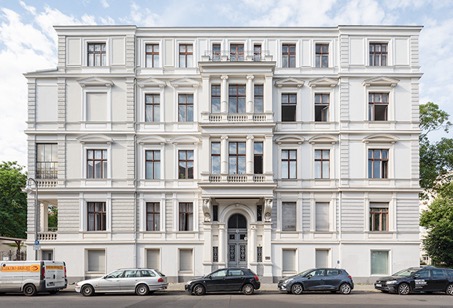
NOWs: Vom bürgerlichen Wohnhaus zum selbstverwalteten Hausprojekt / Kumi*13 mit Yves Mettler et al.
Foto: Anne Herdin, Landesdenkmalamt Berlin
Vom bürgerlichen Wohnhaus zum selbstverwalteten HausprojektAusstellung zum Tag des offenen Denkmals
12. & 13. September
geöffnet von 13.00 – 18.00 Uhr
Zum Tag des Denkmals öffnen wir den Innenhof und die Garage. Wir zeigen eine CHRONOLOGIE aller Eigentümer*innen und Bewohner*innen, mit Namen und Berufen, von 1877 bis heute, die die Altmieterin Susanne Kahl aus Telefon- und Adressbüchern zusammengetragen hat.
Mit FENSTERBILDERZWISCHENWELTEN präsentieren wir Pastellgemälde von Peter Klemke, der sein Atelier in den 80er Jahren in der Kurmärkischen 13 hatte und wir stellen das SYNDIKATSMODELL vor in Gesprächen und mit der Dokumentation „Das ist unser Haus“ von Burkhard Grießenauer, Daniel Kunle, Holger Lauinger.
Der diesjährige Tag des offenen Denkmals, bundesweit koordiniert durch die Deutsche Stiftung Denkmalschutz, findet unter dem Motto „Chance Denkmal: Erinnern. Erhalten. Neu denken” statt. Für Berlin gibt es ein Extra-Motto: „Denk_mal nachhaltig.“
Aufgrund aktueller Bauarbeiten und Corona-bedingter Einschränkungen wird die Ausstellung in der Garage stattfinden; ein Besuch des Haupthauses wird nicht möglich sein.
Kumi*13
– ein Hausprojekt in Selbstverwaltung –
Kurmärkische Str. 13
10783 Berlin
Foto: Anne Herdin, Landesdenkmalamt Berlin
Vom bürgerlichen Wohnhaus zum selbstverwalteten HausprojektAusstellung zum Tag des offenen Denkmals
12. & 13. September
geöffnet von 13.00 – 18.00 Uhr
Zum Tag des Denkmals öffnen wir den Innenhof und die Garage. Wir zeigen eine CHRONOLOGIE aller Eigentümer*innen und Bewohner*innen, mit Namen und Berufen, von 1877 bis heute, die die Altmieterin Susanne Kahl aus Telefon- und Adressbüchern zusammengetragen hat.
Mit FENSTERBILDERZWISCHENWELTEN präsentieren wir Pastellgemälde von Peter Klemke, der sein Atelier in den 80er Jahren in der Kurmärkischen 13 hatte und wir stellen das SYNDIKATSMODELL vor in Gesprächen und mit der Dokumentation „Das ist unser Haus“ von Burkhard Grießenauer, Daniel Kunle, Holger Lauinger.
Der diesjährige Tag des offenen Denkmals, bundesweit koordiniert durch die Deutsche Stiftung Denkmalschutz, findet unter dem Motto „Chance Denkmal: Erinnern. Erhalten. Neu denken” statt. Für Berlin gibt es ein Extra-Motto: „Denk_mal nachhaltig.“
Aufgrund aktueller Bauarbeiten und Corona-bedingter Einschränkungen wird die Ausstellung in der Garage stattfinden; ein Besuch des Haupthauses wird nicht möglich sein.
Kumi*13
– ein Hausprojekt in Selbstverwaltung –
Kurmärkische Str. 13
10783 Berlin
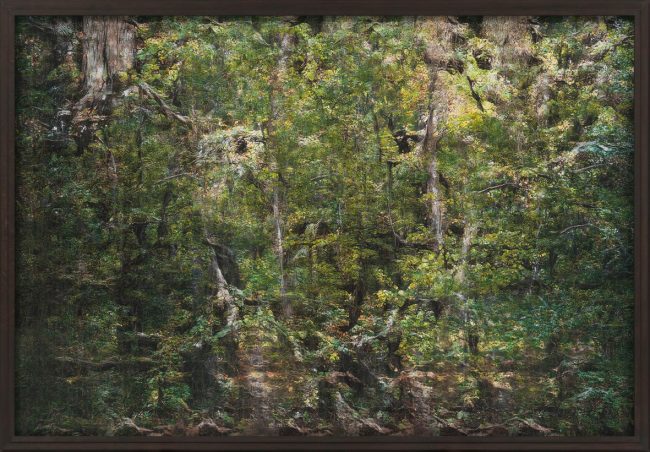
NOWs: Jungle Memory by Andreas Greiner
Andreas Greiner, Jungle Memory 0001, 2019
Andreas Greiner: Jungle Memory
at DITTRICH & SCHLECHTRIEM, Berlin
In Andreas Greiner’s work, there is no contradiction between art and science. His multi-media, multi-disciplinary practice includes time-based living and digital sculptures, photographs, and video works that chart complex concerns and expose vital issues in contemporary society, including environmental and ecological challenges. In the exhibition Jungle Memory, Greiner recreates nature, representing his research into endangered forests in Germany and Poland.
Greiner probes the relationship between ecology and technology. Amid a simulated forest and light scenario that transforms the main gallery space, Greiner presents a large-format video work made with the aid of artificial intelligence. A dataset comprising several thousand photographs that Greiner shot in the ancient Hambacher Forst and Białowieża forests was fed into a digital calculus to derive the idea of a forest. In processing the pictures, the artist created generated recollections or algorithmic projections of an abundant and unruly nature whose romantic flair is unmistakable. The resulting images are layered and morphed together to create a cinematic dance of trees, bright and illusionary yet concerning and oddly foreboding of a post-human world. A sound composition accompanies the installation.
Paralleling the abstractions on the four-square-meter LED screen and the sound piece, Greiner premieres a video in the first room. A two-channel video, created in collaboration with Paul Rohlfs, is presented on screens (purchased second-hand) that are connected to a central control box. In addition, the screens display archival quotes from texts on the economic or protective vision of silviculture, and a video illustrating the current process of natural dynamic reforestation. The video shows how the death of old spruce trees at the hands of the bark beetles allows the forest to regenerate, making it versatile and resilient. […]
The exhibition can be read as a cognitive and emotional collage that highlights, through a concrete local example, the interdependence of historical factors, economic decisions and climate change. Taking as a starting point the catastrophic situation of the forests of the Harz (a highland region in Lower Saxony), the works address an immediate reality that is tied as much to past centuries’ silviculture as to contemporary global ecological choices.
With Jungle Memory, Greiner probes the question whether, in our age of climate change and the mass extinction of species, the language of art is actually capable of adequately articulating these concerns. The passages above are excerpts from an essay that Bernard Vienat contributed for the gallery catalogue, which will be published in September 2020 and available at the gallery and via the online shop.
Andreas Greiner, Jungle Memory 0001, 2019
Andreas Greiner: Jungle Memory
DITTRICH & SCHLECHTRIEM, Berlin
Zwischen Kunst und Wissenschaft gibt es im Schaffen von Andreas Greiner keinen Widerspruch. Seine multimediale und interdisziplinäre Praxis umfasst zeitbasierte lebende und digitale Skulpturen, Fotografien und Videos, die komplexe Themen anschaulich machen und ein Schlaglicht auf drängende Fragen der heutigen Gesellschaft und insbesondere Umweltprobleme und ökologische Herausforderungen werfen. In Jungle Memory schafft Greiner Natur nach, um seine Forschungen zu gefährdeten Wäldern in Deutschland und Polen darzustellen.
Greiner hinterfragt das Verhältnis zwischen Ökologie und Technologie. In einer Nachbildung eines Waldes und einem Lichtszenario, das den Hauptraum der Galerie verwandelt, zeigt Greiner eine großformatige Videoarbeit, für die künstliche Intelligenz zum Einsatz kam. Aus einem Datensatz von mehreren tausend Fotografien, die Greiner im uralten Hambacher Forst und im Białowieża-Urwald geschossen hat, wurde mittels digitaler Rechenverfahren die Idee eines Waldes abstrahiert. Aus dem Bildmaterial fabrizierte der Künstler so Erinnerungen an oder algorithmische Projektionen einer reichhaltigen, unbändigen Natur, deren romantische Aura unverkennbar ist. Durch Überlagerung und Verformung der Bilder entstand ein filmreifer Tanz der Bäume, eine leuchtende, aber auch befremdliche Illusion, die eine Ahnung einer Welt ohne Menschen vermittelt. Eine Klangkomposition untermalt die Installation.
Parallel zu den Abstraktionen auf dem vier Quadratmeter messenden LED-Bildschirm und der Soundarbeit zeigt Greiner im ersten Raum eine neue Videoarbeit. Am Anfang der Ausstellung wird auf (gebraucht gekauften) Bildschirmen, die mit einer zentralen Kontrolleinheit verbunden sind, ein in Zusammenarbeit mit Paul Rohlfs entstandenes Zweikanalvideo gezeigt. Außerdem werden Archivzitate aus Schriften zum wirtschaftlich orientierten oder auf Bewahrung zielenden Waldbau sowie ein Video eingeblendet, das den derzeitigen Prozess naturnah-dynamischer Aufforstung veranschaulicht. Das Video zeigt, wie das durch den Borkenkäfer verursachte Absterben alter Fichten eine Verjüngung des Waldes ermöglicht, aus der er seine Wandlungs- und Widerstandsfähigkeit zieht. […]
Die Ausstellung lässt sich als Collage von Gedanken und Gefühlen lesen, die anhand eines konkreten Beispiels aus der näheren Umgebung ein Schlaglicht auf die Verbindungen zwischen historischen Faktoren, wirtschaftlichen Entscheidungen und Klimawandel wirft. Ausgehend vom katastrophalen Zustand der Wälder im niedersächsischen Harz wenden die Arbeiten sich einer handgreiflichen Wirklichkeit zu, die das Ergebnis von Jahrhunderten der Forstbewirtschaftung ebenso wie heutiger globaler ökologischer Weichenstellungen ist.
In Jungle Memory geht Greiner der Frage nach, ob die Sprache der Kunst in unserer von Klimawandel und massenhaftem Artensterben geprägten Zeit überhaupt in der Lage ist, diese Themen angemessen zu artikulieren. Die zitierten Passagen stammen aus einem Essay von Bernard Vienat für den Katalog, der im September 2020 erscheinen und in der Galerie sowie über unseren Onlineshop zu beziehen sein wird.
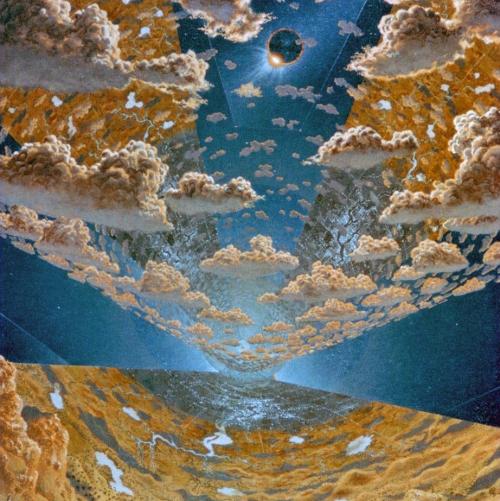
NOWs: Tanznacht Berlin Vertigo
Tanznacht Berlin Vertigogroup exhibition
Tanznacht Berlin
Badstr. 41a
13357 Berlin Wedding
Opening
9 September 6 – 11 pm,
7:30 pm choir performance and opening speeches
Performances
durational: Rike Horb Gummimauer / flexible walls
durational: Roger Sala Reyner when it lands will my eyes be closed or open?
Hana Lee Erdmann Animal Companion
At the heart of this year’s edition of Tanznacht Berlin Vertigo (Part One) is a choreographic group exhibition, showing throughout the festival in Studio 14, where projects in various artistic fields can interact and exchange viewpoints. Choreographer Kat Válastur is showing an installation developed in cooperation with visual artist Leon Eixenberger from the stage set for her piece Stelllar Fauna. Visual artist Rike Horb, meanwhile, is extending her installation Gummimauer / flexible walls to incorporate a performance by the diese Frau collective.
Other performances also add dynamic elements to the sculptural and installation aspects of the exhibition: Roger Sala Reyner, Guillaume Marie and Igor Dobričić have transformed the solo piece Roger into a living installation, going beyond the original choreographic format to counter suffering with comfort and a gesture of empathy and bring it into the centre of society. Complete artwork devotee Liina Magnea and opera singer Sigrún Gyða Sveinsdóttir keep art alive in Sehnsucht + and imagine themselves as cells in a sleeping body.
These two formats, adapted and developed especially in response to the pandemic for the first part of Tanznacht, are accompanied by Hana Lee Erdman’s Animal Companion. Here, the eponymous associates escort visitors through the exhibition, shifting perspectives on conventional modes of encounter between humans and animals.
For the closing event of this year’s edition of Tanznacht Berlin, the curators have invited Mmakgosi Kgabi and Dasniya Baddhanasiri to round off the programme with a dialogue that is as physical as it is vocal.
Info:
Mouth/nose protection is required
Tanznacht Berlin Vertigogroup exhibition
Tanznacht Berlin
Badstr. 41
13357 Berlin Wedding
Opening
9. September, 18 – 23 h
19h30 Chorauftritt und Reden
Im Mittelpunkt der diesjährigen Ausgabe der Tanznacht Berlin, „Vertigo (Part One)“, steht eine choreografische Gruppenausstellung im Studio 14, die über den Zeitraum des ganzen Festivals hinweg künstlerische Positionen aus unterschiedlichen Disziplinen miteinander ins Gespräch bringt.
Die Choreografin Kat Válastur hat in Kooperation mit dem Bildenden Künstler Leon Eixenberger aus dem Bühnenbild ihres Stücks „Stellar Fauna“ eine Installation entwickelt. Die Bildende Künstlerin Rike Horb wiederrum erweitert ihre Installation „Gummmimauer / flexible walls“ um eine Performance des Kollektivs diese Frau.
Neben Rike Horbs Arbeit dynamisieren weitere Performances die installativ-skulpturale Landschaft des Ausstellungsprogramms: Roger Sala Reyner, Guillaume Marie und Igor Dobričić haben das Bühnensolo „Roger“ in eine lebende Installation verwandelt. Jenseits der ursprünglichen choreografischen Form schenken sie dem Leiden durch Trost so eine Geste der Empathie und einen Platz mitten in der Gesellschaft. Gesamtkunstwerkerin Liina Magnea und Opernsängerin Sigrún Gyða Sveinsdóttir halten die Kunst in „Sehnsucht +“ lebendig und imaginieren sich dazu als Zellen in einem schlafenden Körper.
Ergänzt werden diese beiden coronabedingten und so speziell für den ersten Teil der Tanznacht entwickelten Formate durch „Animal Companion“ von Hana Lee Erdman. Ihre tierischen Gefährt*innen begleiten die Besucher*innen durch die Ausstellung, um den Blick auf übliche Verhaltensmodi zwischen Mensch und Tier zu verändern.
Zur Finissage der Ausstellung und auf Einladung der Kuratoren runden Mmakgosi Kgabi und Dasniya Baddhanasiri das Programm der diesjährigen Ausgabe der Tanznacht Berlin mit einem stimmlich-körperlichen Dialog ab.
Mund- und Nasenschutz erforderlich.
Slots mit 90 Minuten Gültigkeit buchbar.
Eine Weitergabe des Zeitfenstertickets an Dritte ist nicht möglich.
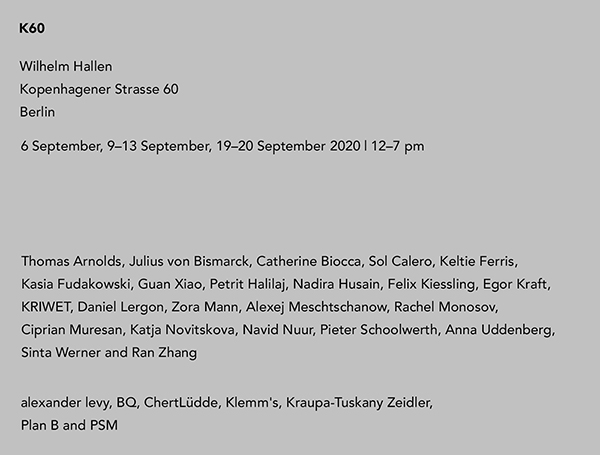
NOWs: K60
K60group exhibition
K60
Wilhelm Hallen
Kopenhagener Strasse 60
13407 Berlin
Opening 06.09.2020, 12–7 pm
Opening hours: 9–13 September, 19–20 September 2020, 12–7 pm
Seven Berlin galleries – alexander levy, BQ, ChertLüdde, Klemm’s, Kraupa-Tuskany Zeidler, Plan B and PSM – will open the joint exhibition K60 on September 6th, 2020. The opening will feature the performance installation The Blind Leader by artist Rachel Monosov.
Works by Thomas Arnolds, Julius von Bismarck, Catherine Biocca, Sol Calero, Keltie Ferris, Kasia Fudakowski, Guan Xiao, Petrit Halilaj, Nadira Husain, Felix Kiessling, Egor Kraft, KRIWET, Daniel Lergon, Zora Mann, Alexej Meschtschanow, Rachel Monosov, Ciprian Muresan, Katja Novitskova, Navid Nuur, Pieter Schoolwerth, Anna Uddenberg, Sinta Werner and Ran Zhang will be on view.
All events take place in compliance with current hygiene measures.
K60group exhibition
K60
Wilhelm Hallen
Kopenhagener Strasse 60
13407 Berlin
Opening 06.09.2020, 12–7 pm
Opening hours: 9–13 September, 19–20 September 2020, 12–7 pm
Seven Berlin galleries – alexander levy, BQ, ChertLüdde, Klemm’s, Kraupa-Tuskany Zeidler, Plan B and PSM – will open the joint exhibition K60 on September 6th, 2020. The opening will feature the performance installation The Blind Leader by artist Rachel Monosov.
Works by Thomas Arnolds, Julius von Bismarck, Catherine Biocca, Sol Calero, Keltie Ferris, Kasia Fudakowski, Guan Xiao, Petrit Halilaj, Nadira Husain, Felix Kiessling, Egor Kraft, KRIWET, Daniel Lergon, Zora Mann, Alexej Meschtschanow, Rachel Monosov, Ciprian Muresan, Katja Novitskova, Navid Nuur, Pieter Schoolwerth, Anna Uddenberg, Sinta Werner and Ran Zhang will be on view.
All events take place in compliance with current hygiene measures.
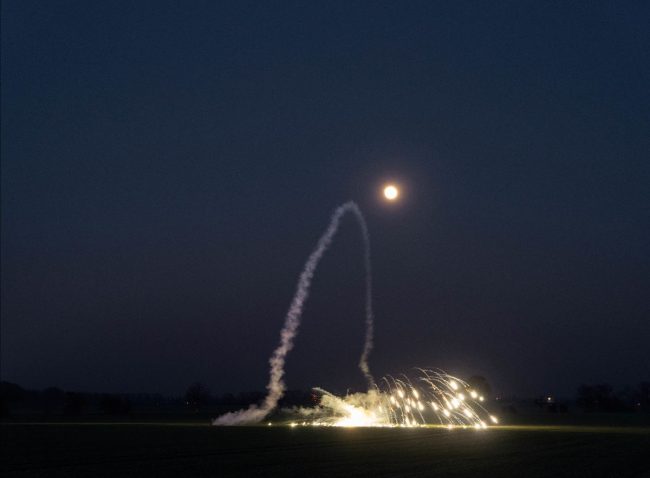
NOWs: Bottom Up by Malte Bartsch
Bottom Upsolo exhibition by Malte Bartsch
Lemoyne
Feldstrasse 121
8004 Zurich
Opening
6 September, 2 – 7 pm
Lemoyne is happy to announce Malte Bartsch‘s (*1984) first solo show in Zurich titled Bottom Up.
In this exhibition, the Berlin-based artist explores themes of innovation, labor and the relationship between man and machine that are recurrent in his œuvre. The so-called ‘bottom-up approach’ describes the optimization of work processes from ‘bottom to top’. In this process, an increased and thus more profitable work performance is achieved by giving employees the right of co-determination with regard to certain projects and processes, thereby stimulating their motivation. This process culminates in an apparent freedom that is particularly popular in times of tech start-ups, which have now grown into giants, and is part of their innovation-driven success. In his exhibition ‘Bottom Up’, Malte Bartsch discusses what technological progress, competition and labor can stand for in an age of technology and globalization. The measurability of success and optimization is questioned, as well as the inability of humans to deal with their own failure.
Bottom UpEinzelausstellung von Malte Bartsch
Lemoyne
Feldstrasse 121
8004 Zurich
Opening
6 September, 2 – 7 pm
Lemoyne is happy to announce Malte Bartsch‘s (*1984) first solo show in Zurich titled Bottom Up.
In this exhibition, the Berlin-based artist explores themes of innovation, labor and the relationship between man and machine that are recurrent in his œuvre. The so-called ‘bottom-up approach’ describes the optimization of work processes from ‘bottom to top’. In this process, an increased and thus more profitable work performance is achieved by giving employees the right of co-determination with regard to certain projects and processes, thereby stimulating their motivation. This process culminates in an apparent freedom that is particularly popular in times of tech start-ups, which have now grown into giants, and is part of their innovation-driven success. In his exhibition ‘Bottom Up’, Malte Bartsch discusses what technological progress, competition and labor can stand for in an age of technology and globalization. The measurability of success and optimization is questioned, as well as the inability of humans to deal with their own failure.
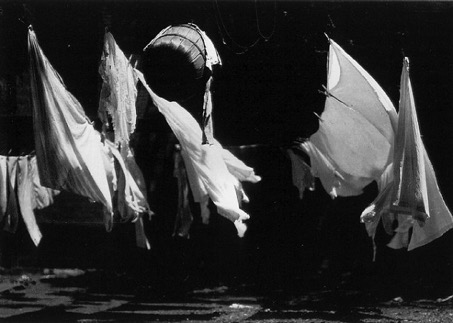
NOWs: Waschtage / Kumi*13 with Yves Mettler et al.
Man Ray, Moving sculpture, 1922
WaschtageInstallation
Parkplatz Zietenstrasse / Ecke Bülowstrasse
07. – 27. September, ganztägig
Klatsch mit Kuminist*innen: 10., 17. und 24. 09. von 17.00 bis 20.00 Uhr
Wehende Wäsche in einer Momentaufnahme. Ein Bild, das die Zeit einfriert: am Waschtag versammelten sich die Frauen zum Arbeiten und Reden. Das typische Geräusch beim Waschen – das laute Klatschen der ausgelaugten Wäsche, wenn der Schmutz auf dem Stein ausgeschlagen wird – bezeichnet auch das die Arbeit erleichternde Gerede, das Schwatzen und Lästern, – das Klatschen eben.
Klatsch ist eine unterschätzte Form der Wissensvermittlung. Die Klatschenden spekulieren über soziale, politische oder sexuelle Überschreitungen und genießen die Indiskretion, man testet soziales Verhalten von sich und anderen, man erfindet sich neu. Der Klatsch zirkuliert unkontrolliert zwischen Leuten, angeblich meist Frauen, er unterläuft subversive den öffentlichen Radar, Klatsch kann nicht zensuriert werden.
Versammeln wir uns zu nachbarschaftlichen Klatschtagen in der Zietenstraße.
An den Donnerstagen (10., 17. & 24.) sitzen diverse Kuminist*innen auf dem Waschplatz und bieten zwischen 17.00 – 20.00 Uhr Klatsch an und würden auch gerne welchen hören.
RESPEKT UND EIN HOCH AUF DEN KLATSCH !
Die Kumi*13 beteiligt sich hiermit an einem Nachbarschaftsprojekt der Initiative Kiez erFahren: Die Initiative hat 5 Parkplätze gemietet und die AnwohnerInnen zeigen dort Vorschläge, welche anderweitigen Nutzungen auf diesen 12 qm großen Autostellfläche denkbar wären.
SchöneFläche Nord ist ein Modul innerhalb des Mobilitätsprojektes Kiez erFahren, das das Bezirksamt Tempelhof-Schöneberg in Schöneberg Nord durchführt. Gemeinsam entwickelt mit hochC Landschaftsarchitekten, zeigen die fünf SchönenFlächen im September alternative Nutzungen von Parkflächen. Das Projekt wird gefördert durch das Bundesministerium für Umwelt, Naturschutz und nukleare Sicherheit im Rahmen der Nationalen Klimaschutzinitiative (NKI) im Förderstrang „Kurze Wege für den Klimaschutz“.
https://kiezerfahren.berlin
Kumi*13
– ein Hausprojekt in Selbstverwaltung –
Kurmärkische Str. 13
10783 Berlin
Man Ray, Moving sculpture, 1922
WaschtageInstallation
Parkplatz Zietenstrasse / Ecke Bülowstrasse
07. – 27. September, ganztägig
Klatsch mit Kuminist*innen: 10., 17. und 24. 09. von 17.00 bis 20.00 Uhr
Wehende Wäsche in einer Momentaufnahme. Ein Bild, das die Zeit einfriert: am Waschtag versammelten sich die Frauen zum Arbeiten und Reden. Das typische Geräusch beim Waschen – das laute Klatschen der ausgelaugten Wäsche, wenn der Schmutz auf dem Stein ausgeschlagen wird – bezeichnet auch das die Arbeit erleichternde Gerede, das Schwatzen und Lästern, – das Klatschen eben.
Klatsch ist eine unterschätzte Form der Wissensvermittlung. Die Klatschenden spekulieren über soziale, politische oder sexuelle Überschreitungen und genießen die Indiskretion, man testet soziales Verhalten von sich und anderen, man erfindet sich neu. Der Klatsch zirkuliert unkontrolliert zwischen Leuten, angeblich meist Frauen, er unterläuft subversive den öffentlichen Radar, Klatsch kann nicht zensuriert werden.
Versammeln wir uns zu nachbarschaftlichen Klatschtagen in der Zietenstraße.
An den Donnerstagen (10., 17. & 24.) sitzen diverse Kuminist*innen auf dem Waschplatz und bieten zwischen 17.00 – 20.00 Uhr Klatsch an und würden auch gerne welchen hören.
RESPEKT UND EIN HOCH AUF DEN KLATSCH !
Die Kumi*13 beteiligt sich hiermit an einem Nachbarschaftsprojekt der Initiative Kiez erFahren: Die Initiative hat 5 Parkplätze gemietet und die AnwohnerInnen zeigen dort Vorschläge, welche anderweitigen Nutzungen auf diesen 12 qm großen Autostellfläche denkbar wären.
SchöneFläche Nord ist ein Modul innerhalb des Mobilitätsprojektes Kiez erFahren, das das Bezirksamt Tempelhof-Schöneberg in Schöneberg Nord durchführt. Gemeinsam entwickelt mit hochC Landschaftsarchitekten, zeigen die fünf SchönenFlächen im September alternative Nutzungen von Parkflächen. Das Projekt wird gefördert durch das Bundesministerium für Umwelt, Naturschutz und nukleare Sicherheit im Rahmen der Nationalen Klimaschutzinitiative (NKI) im Förderstrang „Kurze Wege für den Klimaschutz“.
https://kiezerfahren.berlin
Kumi*13
– ein Hausprojekt in Selbstverwaltung –
Kurmärkische Str. 13
10783 Berlin

NOWs: Towards No Earthly Pole by Julian Charrière
Julian Charrière, We Are All Astronauts, 2013. Ausstellungsansicht Centre Culturel Suisse, Paris, Frankreich, 2014. Courtesy the artist © 2020, Pro Litteris, Zürich
Julian Charrière: Towards No Earthly Pole
Aargauer Kunsthaus
Switzerland
With Towards No Earthly Pole the Aargauer Kunsthaus is presenting the work of the Swiss artist Julian Charrière (b. 1987). The subject of travel as well as the actual expedition assume a central importance in his artistic practice. Time and again, he seeks out regions that have global significance for our past, present and future. For his latest, monumental film work Towards No Earthly Pole he journeyed to the most inhospitable parts of the planet: the Antarctic, Greenland and Iceland, but also extraordinary domestic topographies such as the alpine glaciers.
The projection that lends its title to the solo exhibition allows the viewers to immerse themselves in fascinating ice landscapes, and transports them into a remote and deserted spot. It shows regions that we think we know thanks to collectively constructed images, but which very few of us have visited in person. The depiction of these places in Charrière’s feature-length film work astonishes with its deliberately subjective, poetic reproduction of these unusual territories.
Other works in the exhibition—photographs, sculptures, videos and installations—are steeped in the artist’s curiosity about understanding the environment: photographs of idyllic palm beaches treated with radioactive material, floating globes stripped of their surface information, or pictures showing Charrière himself melting a glacier. For visitors, the tour of the exhibition becomes a journey through the cosmos of Charrière, who is both artist and researcher, and offers an engagement with the inseparable connection between humanity and nature.
In cooperation with MASI Lugano
Publication
To coincide with the exhibition, in October a comprehensive publication (German/English) will be released on the subject of Julian Charrière’s latest film Towards No Earthly Pole. With essays by: Francesca Benini, Amanda Boetzkes, Katherine Brodbeck, Dehlia Hannah, Scott MacKenzie & Anna Westerståhl Stenport, Shane McCorristine, Nadim Samman and Katrin Weilenmann, as well as a conversation between the artist and the climate expert Konrad Steffen.
Aargauer Kunsthaus, MASI Lugano, Dallas Museum of Art, and Mousse Publishing, ISBN 978-88-6749-434-7
Julian Charrière, We Are All Astronauts, 2013. Ausstellungsansicht Centre Culturel Suisse, Paris, Frankreich, 2014. Courtesy the artist © 2020, Pro Litteris, Zürich
Julian Charrière: Towards No Earthly Pole
Aargauer Kunsthaus
Switzerland
With Towards No Earthly Pole the Aargauer Kunsthaus is presenting the work of the Swiss artist Julian Charrière (b. 1987). The subject of travel as well as the actual expedition assume a central importance in his artistic practice. Time and again, he seeks out regions that have global significance for our past, present and future. For his latest, monumental film work Towards No Earthly Pole he journeyed to the most inhospitable parts of the planet: the Antarctic, Greenland and Iceland, but also extraordinary domestic topographies such as the alpine glaciers.
The projection that lends its title to the solo exhibition allows the viewers to immerse themselves in fascinating ice landscapes, and transports them into a remote and deserted spot. It shows regions that we think we know thanks to collectively constructed images, but which very few of us have visited in person. The depiction of these places in Charrière’s feature-length film work astonishes with its deliberately subjective, poetic reproduction of these unusual territories.
Other works in the exhibition—photographs, sculptures, videos and installations—are steeped in the artist’s curiosity about understanding the environment: photographs of idyllic palm beaches treated with radioactive material, floating globes stripped of their surface information, or pictures showing Charrière himself melting a glacier. For visitors, the tour of the exhibition becomes a journey through the cosmos of Charrière, who is both artist and researcher, and offers an engagement with the inseparable connection between humanity and nature.
In cooperation with MASI Lugano
Publication
To coincide with the exhibition, in October a comprehensive publication (German/English) will be released on the subject of Julian Charrière’s latest film Towards No Earthly Pole. With essays by: Francesca Benini, Amanda Boetzkes, Katherine Brodbeck, Dehlia Hannah, Scott MacKenzie & Anna Westerståhl Stenport, Shane McCorristine, Nadim Samman and Katrin Weilenmann, as well as a conversation between the artist and the climate expert Konrad Steffen.
Aargauer Kunsthaus, MASI Lugano, Dallas Museum of Art, and Mousse Publishing, ISBN 978-88-6749-434-7
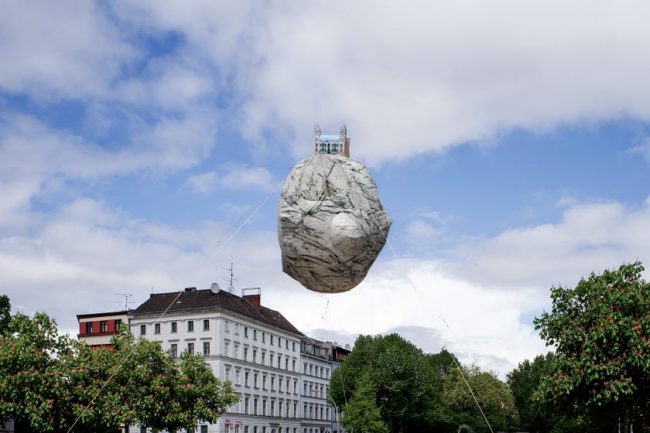
NOWs: Floating Utopias
Floating Utopiasgroup exhibition
Lunds Konsthall
Mårtenstorget 3
223 51 Lund
Press preview on 4 September at noon
Ant Farm, Anetta Mona Chisa & Lucia Tkácová, Elise Eeraerts, Eventstructure Research Group, Anna Hoetjes, Franco Mazzucchelli, Dawn Ng, Ahmet Öğüt, Tomás Saraceno, Graham Stevens, SUPERFLEX, Tools for Action, UFO, Artúr van Balen, The Yes Men
Floating Utopias presents various inflatable media at Lunds konsthall, accompanied by an intervention in urban space. The exhibition juxtaposes historical and contemporary works and shows how inflatables may be used in artistic and activist practices: formless bundles of material are instantly transformed into voluminous spatial presence.
The exhibited works invite us to be playful and to claim space. They demonstrate a potential to forge communities and prompt participation. Floating Utopias indicates that inflatables could and should be used to critique the present order and create better futures.
The exhibition navigates the broad cultural history of inflatables in art, activism and architecture, their impact on our collective imagination. The first manned balloon flight in the late eighteenth century shifted the general understanding of the possible, suggested new worlds and encouraged visionary utopianism.
The history of inflatables is closely intertwined with industrial development. In the 1930s, the car tire industry found a new market in giant inflatable rubber puppets. Soon these figures hovered above socialist and capitalist parades, used for propaganda and advertisement in cities across the Soviet Union and the United States.
In the late 1960s, a time of global political turmoil and the promise of space travel, plastic became widely available as an affordable material and was used in pneumatic experiments. Artists, activists and architects tested new forms of performance, protest and alternative living.
Recent artistic practices show how inflatables can be used as tools in activism, as an artistic material to challenge monumental spaces and political symbols, and as vehicles for rethinking our dependency on fossil fuels.
Floating Utopias foregrounds contemporary inflatable artworks, reflecting a world defined by technological advances, climate change and increasing political polarisation and offering new approaches to social engagement.
Southern Sweden and the Copenhagen Area have a tradition of urban activism, including utopian art projects and happenings with inflatable objects. This legacy is also part of the exhibition history of Lunds konsthall. Futures-oriented exhibitions such as Superlund and New Babylon in the 1960s imagined new roles and habitats for humankind in relation to nature and the city, and Floating Utopias continues this progressive tradition.
During the exhibition’s opening weekend, the helium balloon Castle of Vooruit by Kurdish artist Ahmet Öğüt will float over Lund. It will take off from Stortorget Friday 4 September, as soon as wind conditions allow it.
Floating Utopias was first shown at nGbK neue Gesellschaft für bildende Kunst in Berlin in 2018 and then at ArtScience Museum Singapore in 2019. Now the exhibition lands for the third time at Lunds konsthall. It is organised by the three curators Artúr van Balen, Fabiola Bierhoff and Anna Hoetjes. The exhibition design was created in collaboration with Agustina Pascotto and Jazmin Schenone.
Floating Utopiasgroup exhibition
Lunds Konsthall
Mårtenstorget 3
223 51 Lund
Press preview on 4 September at noon
Ant Farm, Anetta Mona Chisa & Lucia Tkácová, Elise Eeraerts, Eventstructure Research Group, Anna Hoetjes, Franco Mazzucchelli, Dawn Ng, Ahmet Öğüt, Tomás Saraceno, Graham Stevens, SUPERFLEX, Tools for Action, UFO, Artúr van Balen, The Yes Men
Floating Utopias presents various inflatable media at Lunds konsthall, accompanied by an intervention in urban space. The exhibition juxtaposes historical and contemporary works and shows how inflatables may be used in artistic and activist practices: formless bundles of material are instantly transformed into voluminous spatial presence.
The exhibited works invite us to be playful and to claim space. They demonstrate a potential to forge communities and prompt participation. Floating Utopias indicates that inflatables could and should be used to critique the present order and create better futures.
The exhibition navigates the broad cultural history of inflatables in art, activism and architecture, their impact on our collective imagination. The first manned balloon flight in the late eighteenth century shifted the general understanding of the possible, suggested new worlds and encouraged visionary utopianism.
The history of inflatables is closely intertwined with industrial development. In the 1930s, the car tire industry found a new market in giant inflatable rubber puppets. Soon these figures hovered above socialist and capitalist parades, used for propaganda and advertisement in cities across the Soviet Union and the United States.
In the late 1960s, a time of global political turmoil and the promise of space travel, plastic became widely available as an affordable material and was used in pneumatic experiments. Artists, activists and architects tested new forms of performance, protest and alternative living.
Recent artistic practices show how inflatables can be used as tools in activism, as an artistic material to challenge monumental spaces and political symbols, and as vehicles for rethinking our dependency on fossil fuels.
Floating Utopias foregrounds contemporary inflatable artworks, reflecting a world defined by technological advances, climate change and increasing political polarisation and offering new approaches to social engagement.
Southern Sweden and the Copenhagen Area have a tradition of urban activism, including utopian art projects and happenings with inflatable objects. This legacy is also part of the exhibition history of Lunds konsthall. Futures-oriented exhibitions such as Superlund and New Babylon in the 1960s imagined new roles and habitats for humankind in relation to nature and the city, and Floating Utopias continues this progressive tradition.
During the exhibition’s opening weekend, the helium balloon Castle of Vooruit by Kurdish artist Ahmet Öğüt will float over Lund. It will take off from Stortorget Friday 4 September, as soon as wind conditions allow it.
Floating Utopias was first shown at nGbK neue Gesellschaft für bildende Kunst in Berlin in 2018 and then at ArtScience Museum Singapore in 2019. Now the exhibition lands for the third time at Lunds konsthall. It is organised by the three curators Artúr van Balen, Fabiola Bierhoff and Anna Hoetjes. The exhibition design was created in collaboration with Agustina Pascotto and Jazmin Schenone.
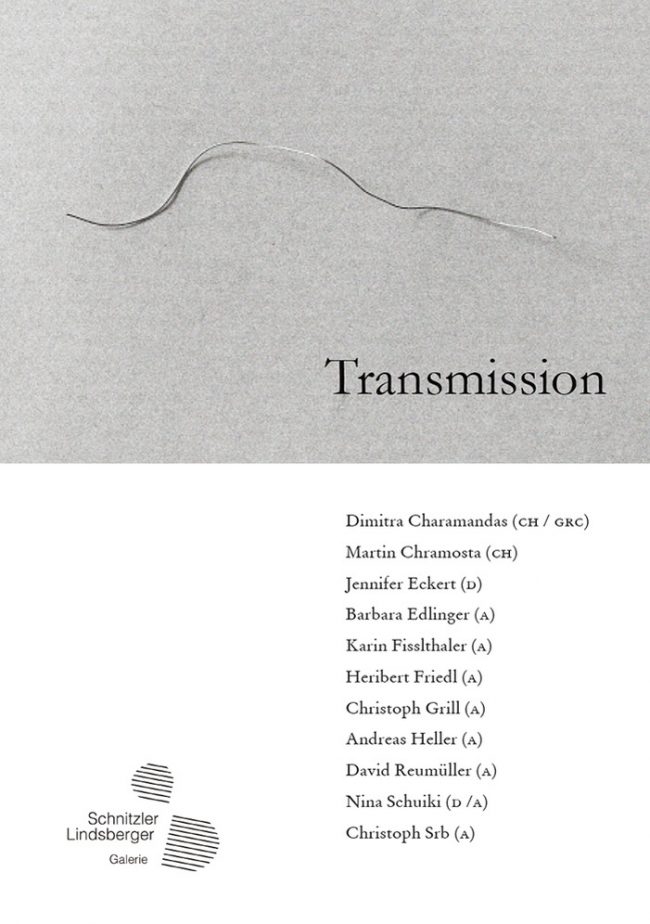
NOWs: Transmission
transmission with Nina Schuiki et al.group exhibition
Artists: Dimitra Charamandas, Martin Chramosta, Jennifer Eckert, Barbara Edlinger, Karin Fisslthaler, Heribert Friedl, Christoph Grill, Andreas Heller, David Reumüller, Nina Schuiki, Christoph Srb
curated by Andreas HellerOpening 3 September 2020, 5 – 10 pmGalerie Schnitzler & LindsbergerRechbauerstraße 21, 8010 Graz Opening times: Thursdays and Fridays 3 – 6 pmas well as by appointmentwww.sl-galerie.at
Den Wegfall traditioneller Begründungen und Normativitäten, klassischer Ikonografie sowie mimetischer Verpflichtungen durch Demokratisierung, Säkularisierung und die Erfindung der Fotografie hat die Kunst bekanntlich durch den Rückzug auf das ihr Ureigene, mit Selbstreferenzialität kompensiert. Das Ende der großen Erzählungen betrifft die bildende Kunst auch in einem sehr wörtlichen Sinn, es manifestiert sich zunächst ja schon im Fragwürdig-Werden bewährter Narrationen, derer sich die Kunst ehemals zwanglos bedienen konnte, um an Spannung zu gewinnen. Der „fruchtbare Augenblick“, auf den die gute Darstellung dabei zurückgreifen konnte, ist damit nicht länger einer schon erzählten Geschichte – wie prototypisch jener von Lessing besprochenen des Priesters Laokoon – zu entnehmen, sondern muss sich nun eher ausschließlich aus dem Eigentlichen des jeweiligen Entstehungsprozesses ergeben. „Denn wo etwas noch nicht ist, aber soeben entsteht, befindet sich der essentielle Ort in jeder Schöpfung, dorthin muss man vordringen, und die Arbeit besteht ebenso sehr darin, dorthin zu gelangen, wie in dem, was dort getan wird. Und das eine, das zum anderen wird, die Verwandlung, ist die Methode der Kunst“, resümiert Karl Ove Knausgård.
Wie die von Andreas Heller für die Galerie Schnitzler und Lindsberger kuratierte Schau Transmission anhand klug ausgewählter, sehr zeitgenössischer Beispiele zeigt, verdankt sich der gute, weil am meisten erzählende Moment dabei zwar weiterhin einem präzisen Austarieren unterschiedlicher Zustände, gelingt als Fest- und In-Schwebe-Halten labiler Gleichgewichte, wie sie an den Umschlagpunkten der Form oder zwischen Licht und Schatten liegen. Jedoch ereignet er sich inzwischen im Rahmen mitunter zufälliger Verwandlungsprozesse von Größe, Substanz oder Gestalt sowie während der Transformation semantischer Gehalte ins pure Material des textlichen Gewebes oder in die Poesie, die ein synästhetischer Gegenentwurf zur geruchslosen Glätte des „Digitalschönen“ mit sich bringt.
Ulrich Tragatschnig
transmission with Nina Schuiki et al.group exhibition
Künstler*innen: Dimitra Charamandas, Martin Chramosta, Jennifer Eckert, Barbara Edlinger, Karin Fisslthaler, Heribert Friedl, Christoph Grill, Andreas Heller, David Reumüller, Nina Schuiki, Christoph Srb
Kuratiert von Andreas HellerEröffnung: 03.09.2020, 17:00 – 22:00Galerie Schnitzler & LindsbergerRechbauerstraße 21, 8010 Graz Öffnungszeiten: Donnerstag und Freitag: 15:00 – 18:00sowie nach Vereinbarungwww.sl-galerie.at
Den Wegfall traditioneller Begründungen und Normativitäten, klassischer Ikonografie sowie mimetischer Verpflichtungen durch Demokratisierung, Säkularisierung und die Erfindung der Fotografie hat die Kunst bekanntlich durch den Rückzug auf das ihr Ureigene, mit Selbstreferenzialität kompensiert. Das Ende der großen Erzählungen betrifft die bildende Kunst auch in einem sehr wörtlichen Sinn, es manifestiert sich zunächst ja schon im Fragwürdig-Werden bewährter Narrationen, derer sich die Kunst ehemals zwanglos bedienen konnte, um an Spannung zu gewinnen. Der „fruchtbare Augenblick“, auf den die gute Darstellung dabei zurückgreifen konnte, ist damit nicht länger einer schon erzählten Geschichte – wie prototypisch jener von Lessing besprochenen des Priesters Laokoon – zu entnehmen, sondern muss sich nun eher ausschließlich aus dem Eigentlichen des jeweiligen Entstehungsprozesses ergeben. „Denn wo etwas noch nicht ist, aber soeben entsteht, befindet sich der essentielle Ort in jeder Schöpfung, dorthin muss man vordringen, und die Arbeit besteht ebenso sehr darin, dorthin zu gelangen, wie in dem, was dort getan wird. Und das eine, das zum anderen wird, die Verwandlung, ist die Methode der Kunst“, resümiert Karl Ove Knausgård.
Wie die von Andreas Heller für die Galerie Schnitzler und Lindsberger kuratierte Schau Transmission anhand klug ausgewählter, sehr zeitgenössischer Beispiele zeigt, verdankt sich der gute, weil am meisten erzählende Moment dabei zwar weiterhin einem präzisen Austarieren unterschiedlicher Zustände, gelingt als Fest- und In-Schwebe-Halten labiler Gleichgewichte, wie sie an den Umschlagpunkten der Form oder zwischen Licht und Schatten liegen. Jedoch ereignet er sich inzwischen im Rahmen mitunter zufälliger Verwandlungsprozesse von Größe, Substanz oder Gestalt sowie während der Transformation semantischer Gehalte ins pure Material des textlichen Gewebes oder in die Poesie, die ein synästhetischer Gegenentwurf zur geruchslosen Glätte des „Digitalschönen“ mit sich bringt.
Ulrich Tragatschnig
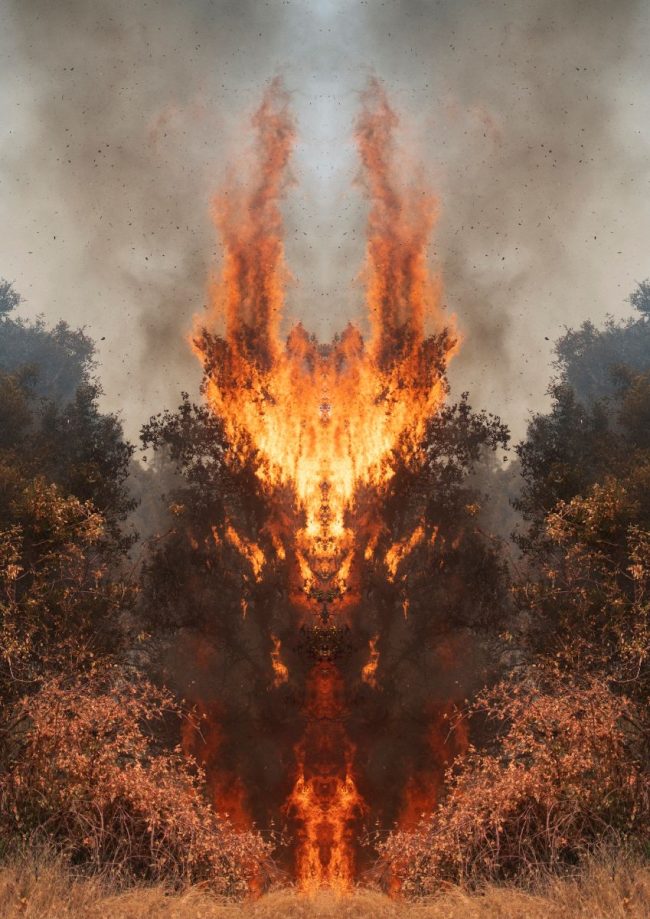
NOWs: Feuer mit Feuer by Julius von Bismarck
Julius von Bismarck, from the series Fire with Fire, 2020, fine art inkjet print, 164 x 117 cm. Courtesy the artist; alexander levy, Berlin; Sies + Höke, Düsseldorf
Fire with Firesolo exhibition
Bundeskunsthalle
Museumsmeile Bonn
Helmut-Kohl-Allee 4
53113 Bonn
Opening
3 September 2020, 6 – 8 pm
What do we perceive today as nature? Has the view of nature changed through confrontations with natural disasters, via the media or in real life? Do we still entertain a romantic image of nature?
Humankind has always had to fight against the forces of nature, but when these become rampant or turn into catastrophes, real events influence our notion of nature and are reflected in pictorial representations of our visual cultures.
«Nowhere else does one dream as one does in front of the flame of a candle.» Gaston Bachelard, Philosopher
Julius von Bismarck delves into questions regarding a contemporary conception of nature within the context of recent climate changes. In his performances, installations, sculptures, videos and photographs, he oscillates experimentally between scientific and artistic perspectives and, in doing so, creates powerful aesthetic imagery. ‘I draw my inspiration from science and work artistically,’ von Bismarck explains his working strategy. Always on the lookout for alternative forms of perception, he translates nature and technology into fresh, hitherto unseen images.
For an exhibition in 2015, von Bismarck spun around on a large, fast-rotating dish, his Egocentric System, thus confronting himself with centrifugal forces for an entire week. For his work Punishment, the thirty-six-year-old artist gave the ocean in Rio de Janeiro and the mountains in the Swiss Alps a whipping, ironizing the human ambivalence between megalomania and pettiness. In Venezuela, he used rockets to trigger lightning, forming it and manipulating the forces of nature through his intervention. The artist has exposed himself to extreme weather events often understood to be consequences of climate change: the hurricanes Irma in Florida and Ophelia in Ireland. The results are slow-motion video works: The camera stretches seconds to minutes, presenting wind and floods not as apocalyptic scenes but rather as moments of great calm and poesy. “Suddenly, you look into the aesthetics of this storm […] and see plants being caressed by the storm. The result is something very delicate, something very beautiful – trees dancing with the wind,” von Bismarck explains.
His visual processing of natural events seems to want to convey that, as devastating and powerful as the forces of nature appear to be, there is a boundless beauty hidden in the catastrophe which needs to be depicted. This contrast becomes particularly clear in the exhibition Fire with Fire, which is based on von Bismarck’s expeditions to various forest fire sites.
The central work in the exhibition space is a large LED screen, on which a video is presented depicting decelerated images of forest fires in a vertical symmetry. This mirroring explicitly refers to the aesthetics of the so-called ‘inkblot images’ developed by the Swiss psychoanalyst Herman Rorschach for his test of ‘psychological diagnostics and personality psychology’.
«I draw my inspiration from science and work artistically.» Julius von Bismarck
The French philosopher Gaston Bachelard ascribes such a hypnotic effect to fire that he concludes that ‘nowhere else does one dream as one does in front of the flame of a candle’. It captivates us, and we can neither turn our gaze away from the burning of a campfire nor from the roar of a forest fire. If we follow Bachelard and Rorschach, this ‘psychoanalysis with fire’ creates a space for reflection. With the publicity associated with forest fires—the collective staring into the flame—a complex psychograph of our contemporary society reveals itself. While viewing the work, moments of irritation arise, since the illusions created by the vertical mirroring of the image differ greatly from the brutal reality filmed.
A promenade lined by eight sculptures leads to this present-day campfire, created with the help of modern media technology. ‘Eternal flames’ in monuments and memorials – constructed sites of collective memory worldwide – are the models for these sculptures. The originals made of bronze or stone are duplicated here in fired ceramics, the blazing fire transformed into flickering LEDs.
The production of fire is one of the great cultural techniques; its use and mastery has been a central factor for all civilisations. As a force that creates everything and destroys everything, fire dominates both the profane and the intellectual realms of human thought more than any other element – the narratives about purgatory, the funeral pyre, the Easter fire, the Biikebrennen, the liturgical formula ‘ashes to ashes’ and the myth of Prometheus, who robs the gods of fire in order to bring it to the people, are but a few examples of the thematic variations of the dynamics of fire.
All these thoughts lead back to the exhibition title, Fire with Fire, which Julius von Bismarck uses as an image to refer to the ambiguity, reflection and interaction of the element – its purifying and destructive, civilising and barbaric power.
Julius von Bismarck during his research and production for the exhibition Feuer mit Feuer. ©️Studio Julius von Bismarck, VG Bild-Kunst, Bonn 2020
Julius von Bismarck, from the series Fire with Fire, 2020, fine art inkjet print, 164 x 117 cm. Courtesy the artist; alexander levy, Berlin; Sies + Höke, Düsseldorf
Feuer mit FeuerEinzelausstellung
Bundeskunsthalle
Museumsmeile Bonn
Helmut-Kohl-Allee 4
53113 Bonn
Eröffnung
3. September 2020, 18 – 20 h
Was nehmen wir heute als Natur wahr? Hat sich der Blick auf sie durch die mediale und reale Konfrontation mit Naturkatastrophen verändert? Erlauben wir uns noch ein romantisches Bild der Natur?
Gegen Naturgewalten mussten Menschen schon immer kämpfen, nehmen sie aber überhand oder gehen in Katastrophen über, beeinflusst das reale Geschehen unsere Vorstellung von Natur und spiegelt sich in bildlichen Darstellungen unserer visuellen Kulturen.
«Nirgends wird so geträumt, wie vor der Flamme einer Kerze.»Gaston Bachelard, Philosoph
Julius von Bismarck spürt den Fragen einer zeitgenössischen Auffassung von Natur entlang der jüngsten Klimaveränderungen nach. In seinen Performances, Installationen, Skulpturen, Videos und Fotografien changiert er experimentell zwischen naturwissenschaftlichen und künstlerischen Perspektiven und schafft so ästhetische Bildgewalten. „Ich ziehe meine Inspiration aus der Wissenschaft und arbeite künstlerisch“, sagt von Bismarck über seine Werkstrategie. Immer auf der Suche nach alternativen Formen der Wahrnehmung, übersetzt er Natur und Technologie in unverbrauchte, so noch nie gesehene Bilder.
2015 rotiert von Bismarck in einer Ausstellung auf einer schnell drehenden Schüssel, seinem Egocentric System, und konfrontiert sich so eine Woche lang mit den Fliehkräften. Für seine Arbeit Punishment peitscht der 36-jährige Künstler in Rio de Janeiro das Meer aus oder in den Schweizer Alpen die Berge und ironisiert damit die menschliche Ambivalenz zwischen Größenwahn und Kleinlichkeit. In Venezuela löst er mittels Raketen Blitze aus, formt diese und manipuliert durch seinen Eingriff die Naturgewalt. Der Künstler liefert sich selbst den oft als Folgen der Klimaveränderung verstandenen Wetterextremen aus: den Wirbelstürmen Irma in Florida oder Ophelia in Irland. Dabei entstehen Zeitlupen-Videoarbeiten: Die Kamera, die Sekunden zu Minuten dehnt und so Wind und Hochwasser nicht als apokalyptische Szenerie, sondern als Augenblicke großer Ruhe und Poesie zeichnet. „Plötzlich schaut man in die Ästhetik dieses Sturms … und man sieht, wie Pflanzen vom Sturm gestreichelt werden. Es entsteht etwas ganz Zartes, etwas sehr Schönes – ein Tanz der Bäume mit dem Wind“, so von Bismarck.
Seine visuelle Verarbeitung des Naturgeschehens scheint vermitteln zu wollen: So verheerend und gewaltig die Naturkräfte auch zu sein scheinen, ist doch eine grenzenlose Schönheit in der Katastrophe verborgen, die es darzustellen gilt. Dieser Gegensatz wird in der Ausstellung Feuer mit Feuer, die auf von Bismarcks Expeditionen zu verschiedenen Waldbrandgebieten basiert, besonders deutlich.
Die zentrale Arbeit im Ausstellungsraum bildet ein großer LED-Bildschirm, auf dem ein Video gezeigt wird, das verlangsamte Aufnahmen von Waldbränden vertikal symmetrisch zeigt. Diese Spiegelung verweist explizit auf die Ästhetik der sogenannten „Tintenklecks-Bilder“, die der Schweizer Psychoanalytiker Herman Rorschach für seinen Test „der psychologischen Diagnostik und Persönlichkeitspsychologie“ entwickelt hat.
«Ich ziehe meine Inspiration aus der Wissenschaft und arbeite künstlerisch.» Julius von Bismarck
Der französische Philosoph Gaston Bachelard spricht dem Feuer eine so hypnotische Wirkung zu, dass er zu dem Schluss kommt, dass „nirgends so geträumt wird, wie vor der Flamme einer Kerze“. Sie zieht uns in ihren Bann, und weder können wir unseren Blick vom Zündeln eines Lagerfeuers noch vom Toben eines Waldbrands wenden. Folgen wir Bachelard und Rorschach, entsteht durch diese „Psychoanalyse mit dem Feuer“ ein Raum für Reflexion. Mit der mit den Waldbränden einhergehenden Öffentlichkeit, dem kollektiven Starren ins Feuer, entsteht hier ein vielschichtiges Psychogramm unserer heutigen Gesellschaft. Bei der Betrachtung ergeben sich Momente der Irritation, da die durch die vertikale Spiegelung des Bildes entstandenen Illusionen stark von der gefilmten brutalen Realität abweichen.
Zu diesem – durch moderne Medientechnik – erzeugten Lagerfeuer der Jetztzeit führt ein Wandelgang aus acht Skulpturen. „Ewige Feuer“ in Monumenten, Mahnmälern, Ehrendenkmälern –, gebaute Orte der kollektiven Erinnerung weltweit sind die Vorbilder für diese Skulpturen. Die Originale aus Bronze oder Stein sind hier in gebrannter Keramik dupliziert, das lodernde Feuer wird zu flackernden LEDs.
Die Erzeugung von Feuer zählt zu den großen Kulturtechniken, seine Nutzung und Beherrschung war ein zentraler Faktor für alle Zivilisationen. Als alles bringende, alles zerstörende Kraft dominiert das Feuer wie kein anderes Element die profanen wie auch intellektuellen Gedankenwelten der Menschen – die Narrative um das Fegefeuer, den Scheiterhaufen, das Osterfeuer, das Biikebrennen, die liturgische Formel „Asche zu Asche“ oder der Mythos des Prometheus, der den Göttern das Feuer raubt, um es den Menschen zu bringen, sind nur einige inhaltliche Variationen der Feuerdynamik.
All diese Gedanken führen zurück zum Ausstellungstitel Feuer mit Feuer, den Julius von Bismarck als Bild benutzt, um auf die Mehrdeutigkeit, Spiegelung und Wechselwirkungen des Elements hinzuweisen – auf die reinigende neben der zerstörerischen, die zivilisatorische wie auch barbarische Kraft.
Julius von Bismarck during his research and production for the exhibition Feuer mit Feuer. ©️Studio Julius von Bismarck, VG Bild-Kunst, Bonn 2020
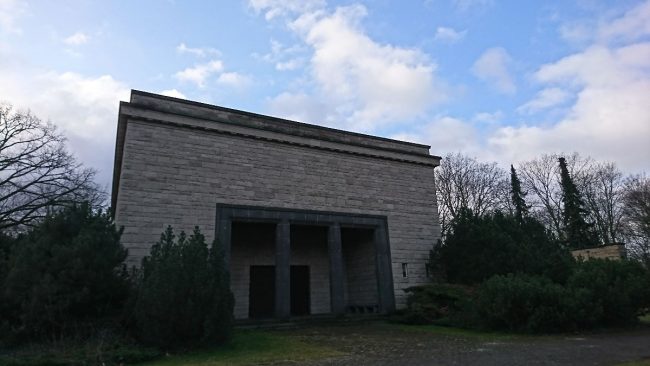
NOWs: A Handful of Dust
Lösch Mir Die Augen Aus (Anne Duk Hee Jordan, Viron Erol Vert, 2020), 3D Simulation
A HANDFUL OF DUSTEhrenhalle Lilienthalstrasse Neukölln
Lilienthalstraße Cemetery, Lilienthalstraße 7, 10965 Berlin
CURATED BY
Pauline Doutreluingne & Petra Poelzl
ARTISTS
Anne Duk Hee Jordan & Viron Erol Vert
CONTRIBUTIONS BY
Mika Hayashi Ebbesen, Sara Neidorf, Mmakgosi Kgabi, Nathalie Mba Bikoro, Ariel Efraim Ashbel, Cymin Samawatie, Korhan Erel, Ralf Schwarz, Lena Ditte Nissen, Sandra Franz and Dr. Anna Zakrisson
www.ahandfulofdust.com
Departing from the so-called “Ehrenhalle” (Hall of Honour), built between 1938 and 1941 as a “Temple of the Fatherland” at the site of the Lilienthalstraße cemetery in Berlin-Neukölln, A Handful of Dust deals with the topic of fear within historical socio-political contexts. The generation of social fear has always been a reliable tool in the process of gaining power and occupies the core of the National Socialist structures and colonial history. Recently, the creation of the concept of the enemy is used to fuel fear, which serves to build up and expand political and social power structures. For instead of a constructive and strategic approach to issues such as climate change, migration and technological upheaval, populism and emotionalization are fanning the flames of insecurity in broad sections of society and thus nurturing the ground for fear to ripen and flourish.
A Handful of Dust understands itself as a questioning of black-and-white juxtapositions and seeks ways of thinking and acting outside of these extremes in order to make visible the complexity of historiography. The project aims to counter the advancing polarization and social division through a collective search for nuance, variation and lyricism.
Together with the artists Anne Duk Hee Jordan and Viron Erol Vert, the curators Pauline Doutreluingne and Petra Poelzl have developed an artistic, performative and discursive space of experience, searching for strategies for deconstructing hegemonic systems of thought and making multiform, norm-converting imaginations and narratives visible, audible, and tangible.
In addition to a collaboratively developed artistic installation by Anne Duk Hee Jordan and Viron Erol Vert in the Ehrenhalle in the center of the cemetery site, the area surrounding the hall will also be used for four weekends (04.09.2020 – 27.09.2020) through sound, discursive and performative formats. The curators, artists, performers, scientists and musicians will consciously enter this “foreign body”, a historically occupied non-art space, and aim to open up pluralistic spaces of thought through a reflective examination on the embodiment of fear.
PROGRAM
DURATION OF THE EXHIBITION | 04.09. – 27.09.2020
OPENING HOURS EXHIBITION | Fri, Sat, Sun | 1 – 7 pm
Location Lilienthalstraße Cemetery
Lilienthalstraße 7 | 10965 Berlin
FRIDAY | 04.09.2020 | 3 – 9 pm
OPENING & SONIC MANIFESTATION
7 pm | Mika Hayashi Ebbesen and Sara Neidorf
SATURDAY | 05.09.2020
PERFORMANCE
1 – 8 pm | Durational Performance by Nathalie Mba Bikoro
SATURDAY | 12.09.2020
PERFORMATIVE WALK
5 pm | Performative Walk | Lena Ditte Nissen & Sandra Franz
SATURDAY | 19.09.2020
SONIC MANIFESTATION & PERFORMATIVE WALK
5.00 pm | Sonic Manifestation | Mika Hayashi Ebbesen and Sara Neidorf
6.00 pm | Performative Walk | Ariel Efraim Ashbel
SATURDAY | 26.09.2020
LECTURE
5 pm | Lecture | Dr. Anna Zakrisson
SUNDAY, 27.09.2020
SOUND IMPROVISATION | FINISSAGE
5 pm | Concert
Cymin Samawatie, Korhan Erel & Ralf Schwarz
Lösch Mir Die Augen Aus (Anne Duk Hee Jordan, Viron Erol Vert, 2020), 3D Simulation
A HANDFUL OF DUSTEhrenhalle Lilienthalstrasse Neukölln
Lilienthalstraße Cemetery, Lilienthalstraße 7, 10965 Berlin
CURATED BY
Pauline Doutreluingne & Petra Poelzl
ARTISTS
Anne Duk Hee Jordan & Viron Erol Vert
CONTRIBUTIONS BY
Mika Hayashi Ebbesen, Sara Neidorf, Mmakgosi Kgabi, Nathalie Mba Bikoro, Ariel Efraim Ashbel, Cymin Samawatie, Korhan Erel, Ralf Schwarz, Lena Ditte Nissen, Sandra Franz and Dr. Anna Zakrisson
www.ahandfulofdust.com
Departing from the so-called “Ehrenhalle” (Hall of Honour), built between 1938 and 1941 as a “Temple of the Fatherland” at the site of the Lilienthalstraße cemetery in Berlin-Neukölln, A Handful of Dust deals with the topic of fear within historical socio-political contexts. The generation of social fear has always been a reliable tool in the process of gaining power and occupies the core of the National Socialist structures and colonial history. Recently, the creation of the concept of the enemy is used to fuel fear, which serves to build up and expand political and social power structures. For instead of a constructive and strategic approach to issues such as climate change, migration and technological upheaval, populism and emotionalization are fanning the flames of insecurity in broad sections of society and thus nurturing the ground for fear to ripen and flourish.
A Handful of Dust understands itself as a questioning of black-and-white juxtapositions and seeks ways of thinking and acting outside of these extremes in order to make visible the complexity of historiography. The project aims to counter the advancing polarization and social division through a collective search for nuance, variation and lyricism.
Together with the artists Anne Duk Hee Jordan and Viron Erol Vert, the curators Pauline Doutreluingne and Petra Poelzl have developed an artistic, performative and discursive space of experience, searching for strategies for deconstructing hegemonic systems of thought and making multiform, norm-converting imaginations and narratives visible, audible, and tangible.
In addition to a collaboratively developed artistic installation by Anne Duk Hee Jordan and Viron Erol Vert in the Ehrenhalle in the center of the cemetery site, the area surrounding the hall will also be used for four weekends (04.09.2020 – 27.09.2020) through sound, discursive and performative formats. The curators, artists, performers, scientists and musicians will consciously enter this “foreign body”, a historically occupied non-art space, and aim to open up pluralistic spaces of thought through a reflective examination on the embodiment of fear.
PROGRAM
DURATION OF THE EXHIBITION | 04.09. – 27.09.2020
OPENING HOURS EXHIBITION | Fri, Sat, Sun | 1 – 7 pm
Location Lilienthalstraße Cemetery
Lilienthalstraße 7 | 10965 Berlin
FRIDAY | 04.09.2020 | 3 – 9 pm
OPENING & SONIC MANIFESTATION
7 pm | Mika Hayashi Ebbesen and Sara Neidorf
SATURDAY | 05.09.2020
PERFORMANCE
1 – 8 pm | Durational Performance by Nathalie Mba Bikoro
SATURDAY | 12.09.2020
PERFORMATIVE WALK
5 pm | Performative Walk | Lena Ditte Nissen & Sandra Franz
SATURDAY | 19.09.2020
SONIC MANIFESTATION & PERFORMATIVE WALK
5.00 pm | Sonic Manifestation | Mika Hayashi Ebbesen and Sara Neidorf
6.00 pm | Performative Walk | Ariel Efraim Ashbel
SATURDAY | 26.09.2020
LECTURE
5 pm | Lecture | Dr. Anna Zakrisson
SUNDAY, 27.09.2020
SOUND IMPROVISATION | FINISSAGE
5 pm | Concert
Cymin Samawatie, Korhan Erel & Ralf Schwarz
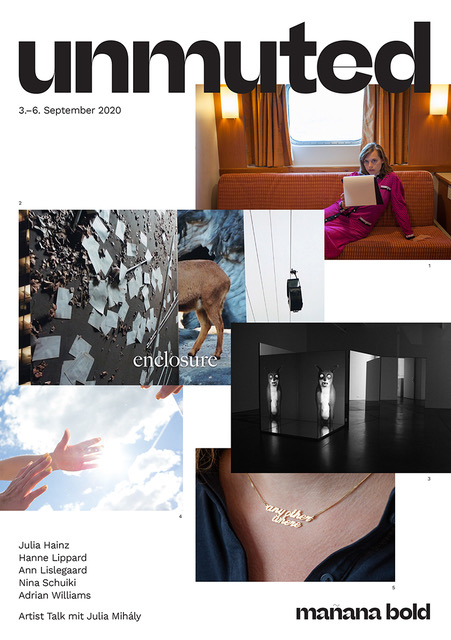
NOWs: Unmuted
unmuted with Nina Schuiki et al.group exhibition
Ausstellung im Rahmen von The Frankfurt Art Experience
LSTNR-Space
Große Eschenheimer Str. 16
60313 Frankfurt a. M.
Öffnungszeiten der Ausstellung:
Eröffnung: 3. September
Freitag, 4. September, 11–18 Uhr
Samstag, 5. September, 11–20 Uhr
Sonntag, 6. September, 11–16 Uhr
www.mananabold.de
www.frankfurtexperience.art/
mit Julia Hainz, Hanne Lippard, Ann Lislegaard, Nina Schuiki, Adrian Williams
Artist Talk mit Julia Mihály
unmuted widmet sich der Stimme als einem Medium der Bewegung in der Zeit, eines sprachlichen Voraus- und Zurückschauens. Welche Rolle spielt der Klang des Gesprochenen in Zeiten, in denen eingefroren scheint, was kommen könnte, was erwartet, gefürchtet und erhofft wird? Wie viel Utopie und Dystopie vermag Stimme zu beschwören? Eine Stimme ist meist an eine Subjektposition geknüpft. Sie kann jedoch variiert, verstellt und unterschiedlich intoniert – ebenso wie programmiert – werden. Eine Stimme verleiht einer Aussage Dynamik, Nachdruck und Emotion. Je nach Situation, in der sie sich Gehör verschafft, bewegt sie sich anders im Raum: Sie stolpert über sich selbst, nimmt mehrfach Anlauf, kehrt zurück, läuft voraus und überholt das Gesprochene.
Nina Schuiki: any other where, 2018; ©Foto: Tobias Wootton, Kunstverein Wilhelmshöhe, 2018
unmuted mit Nina Schuiki et. al.Gruppenausstellung
Ausstellung im Rahmen von The Frankfurt Art Experience
LSTNR-Space
Große Eschenheimer Str. 16
60313 Frankfurt a. M.
Öffnungszeiten der Ausstellung:
Eröffnung: 3. September
Freitag, 4. September, 11–18 Uhr
Samstag, 5. September, 11–20 Uhr
Sonntag, 6. September, 11–16 Uhr
www.mananabold.de
www.frankfurtexperience.art/
mit Julia Hainz, Hanne Lippard, Ann Lislegaard, Nina Schuiki, Adrian Williams
Artist Talk mit Julia Mihály
unmuted widmet sich der Stimme als einem Medium der Bewegung in der Zeit, eines sprachlichen Voraus- und Zurückschauens. Welche Rolle spielt der Klang des Gesprochenen in Zeiten, in denen eingefroren scheint, was kommen könnte, was erwartet, gefürchtet und erhofft wird? Wie viel Utopie und Dystopie vermag Stimme zu beschwören? Eine Stimme ist meist an eine Subjektposition geknüpft. Sie kann jedoch variiert, verstellt und unterschiedlich intoniert – ebenso wie programmiert – werden. Eine Stimme verleiht einer Aussage Dynamik, Nachdruck und Emotion. Je nach Situation, in der sie sich Gehör verschafft, bewegt sie sich anders im Raum: Sie stolpert über sich selbst, nimmt mehrfach Anlauf, kehrt zurück, läuft voraus und überholt das Gesprochene.
Nina Schuiki: any other where, 2018; ©Foto: Tobias Wootton, Kunstverein Wilhelmshöhe, 2018
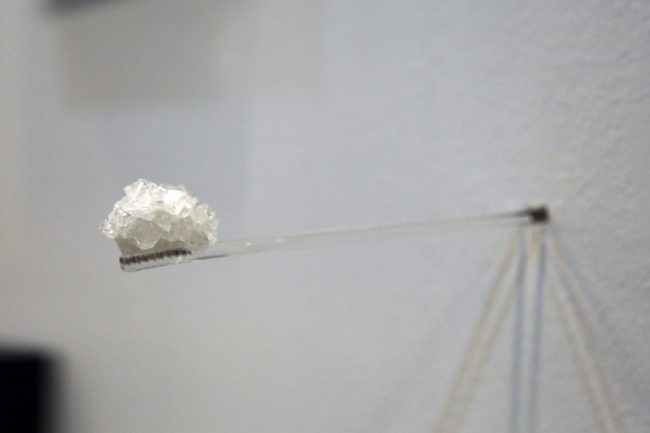
NOWs: La Fabrique du Temps – Acte 2
Sophia Pompéry, "White Charm", Alumcrystals, Toothbrush
La Fabrique du Temps - Acte 2group exhibition
Galerie Dix9
19 rue des Filles du Calvaire
75003 Paris
Opening: 30 August 2020, 12 – 7 pm
Aristide Barraud, Françoise Coutant, Camille Fallet, Katia Kameli, Vincent Lemaire, Louisa Marajo, Nathan, Sophia Pompéry, Sebastian Riemer, Paula de Solminihac
As a follow up to the exhibit La Fabrique du Temps (Interpretation of Time), with its theme of analyzing the interpretation of time and its materialization, Act 2 focuses on an approach where the predominant idea is the resurgence of the past in the present world. Testimony of a world gone or collapsing, reactivation of a past image or an abandoned place, revelation of the horrors of time or fantasies of a golden age, so many proposals of artists from diverse backgrounds questioning the relevance of memory and history in the present world and to come.
Come and visit the booth of Galerie Dix9 at PHOTO BASEL @ Flughafen Tempelhof, Berlin 10 – 13 September 2020
Sophia Pompéry, "White Charm", Alumcrystals, Toothbrush
La Fabrique du Temps - Acte 2Gruppenausstellung
Galerie Dix9
19 rue des Filles du Calvaire
75003 Paris
Eröffnung: 30. August 2020, 12 – 19 h
Aristide Barraud, Françoise Coutant, Camille Fallet, Katia Kameli, Vincent Lemaire, Louisa Marajo, Nathan, Sophia Pompéry, Sebastian Riemer, Paula de Solminihac
As a follow up to the exhibit La Fabrique du Temps (Interpretation of Time), with its theme of analyzing the interpretation of time and its materialization, Act 2 focuses on an approach where the predominant idea is the resurgence of the past in the present world. Testimony of a world gone or collapsing, reactivation of a past image or an abandoned place, revelation of the horrors of time or fantasies of a golden age, so many proposals of artists from diverse backgrounds questioning the relevance of memory and history in the present world and to come.
Come and visit the booth of Galerie Dix9 at PHOTO BASEL @ Flughafen Tempelhof, Berlin 10 – 13 September 2020
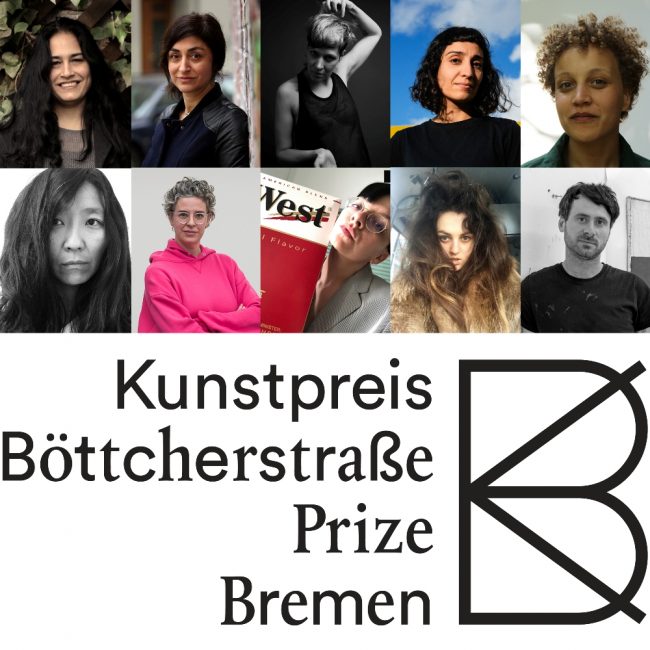
NOWs: Anne Duk Hee Jordan nominated for the Böttcherstrasse Prize Bremen
f.l.t.r.: Bani Abidi (photo: Schokofeh Kamiz), Nevin Aladağ, Jesse Darling (photo: Christa Holka), Toulu Hassani (photo: Volker Crone), Janine Jembere (© Sebastian Bodirsky), Anne Duk Hee Jordan, Ulrike Müller (© Katja Illner), Henrike Naumann (photo: Henrike Naumann), Raphaela Vogel (photo: Jane Eyre), Stefan Vogel
Prize of the Böttcherstraße in Bremen 2020art prize and group exhibition
Exhibition: 29 August – 1 November 2020
Press conference: 28 August 2020, 11am
Award ceremony: 27 October 2020, 7pm
Curated by Mara-Lisa KinneThe Kunsthalle Bremen presents ten young and promising positions in contemporary art. Distinguished curators such as Johan Holten, Bonaventure Soh Bejeng Ndikung and Bettina Steinbrügge have nominated ten artists from the German-speaking area. Their works can be seen in the Kunsthalle Bremen in an exhibition from 29 August to 1 November 2020.The Prize of the Böttcherstraße in Bremen is among the leading and highest awards in the field of contemporary art in Germany. The competition features 30,000 Euro in prize money for the winner and, in 2020, it was held for the 47th time in the Kunsthalle Bremen. A prominent jury determines the winner of the prize during the course of the exhibition. The following ten artists have been nominated for the 2020 Prize of the Böttcherstraße in Bremen:Bani Abidi (born 1971 in Karachi, Pakistan, lives in Berlin), nominated by Natasha Ginwala, Gropius Bau, Berlin
Nevin Aladağ (born 1972 in Van, Turkey, lives in Berlin), nominated by Johan Holten, Kunsthalle Mannheim
Jesse Darling (born 1984 in Coventry, UK, lives in Berlin and London), nominated by Dr. Andrea Schlieker, Tate Britain, London
Toulu Hassani (born 1984 in Ahwaz, Iran, lives in Hanover), nominated by Stifterkreis des Kunstpreis der Böttcherstraße, Bremen
Janine Jembere (born 1985 in Magdeburg, lives in Vienna), nominated by Dr. Yvette Mutumba, Contemporary And (C&) und Universität der Künste, Berlin
Anne Duk Hee Jordan (born 1978 in Korea, lives in Berlin), nominated by Dr. Bonaventure Soh Bejeng Ndikung, SAVVY Contemporary, Berlin
Ulrike Müller (born 1971 in Brixlegg, Austria, lives in New York), nominated by Prof. Dr. Christoph Grunenberg, Kunsthalle Bremen
Henrike Naumann (born 1984 in Zwickau, lives in Berlin), nominated by Severin Dünser, Belvedere 21, Vienna
Raphaela Vogel (born 1988 in Nuremberg, lives in Berlin), nominated by Thomas D. Trummer, Kunsthaus Bregenz
Stefan Vogel (born 1981 in Fürth, lives in Leipzig), nominated by Prof. Dr. Bettina Steinbrügge, Kunstverein in Hamburg
The art prize has been awarded for over sixty years. Since 1985 the prize and the exhibition has been presented in the Kunsthalle Bremen with the support of the Donors’ Circle (Stifterkreis) of the Kunstverein in Bremen (Bremen Art Association). They have also made possible the purchase of a work by each of the prize’s winners. The Kunsthalle Bremen has thus been able to expand its collection through significant works by Martin Honert, Olafur Eliasson, Wolfgang Tillmans, Tino Sehgal, Ulla von Brandenburg, Thea Djordjadze or Daniel Knorr and Nina Beier, among others. Every two years, ten distinguished curators each independently select one artist from the German-speaking area.
v.l.n.r.: Bani Abidi (photo: Schokofeh Kamiz), Nevin Aladağ, Jesse Darling (photo: Christa Holka), Toulu Hassani (photo: Volker Crone), Janine Jembere (© Sebastian Bodirsky), Anne Duk Hee Jordan, Ulrike Müller (© Katja Illner), Henrike Naumann (photo: Henrike Naumann), Raphaela Vogel (photo: Jane Eyre), Stefan Vogel
Kunstpreis der Böttcherstraße Bremen 2020Kunstpreis und Gruppenausstellung
Ausstellung: 29. August bis 1. November 2020
Pressekonferenz: Freitag, 28. August 2020, 11 Uhr
Preisverleihung: Dienstag, 27. Oktober 2020, 19 Uhr
Kuratorin: Mara-Lisa Kinne
Im Jahr 2020 findet der Kunstpreis der Böttcherstraße in Bremen zum 47. Mal statt. Vom 29. August bis 1. November 2020 präsentiert die Kunsthalle Bremen zehn vielversprechende Positionen der zeitgenössischen Kunst. Angesehene Kurator*innen wie Johan Holten, Bonaventure Soh Bejeng Ndikung oder Bettina Steinbrügge haben zehn Künstler*innen aus dem deutschsprachigen Raum nominiert. Nun stehen die nominierten Positionen fest.
Der Kunstpreis der Böttcherstraße in Bremen zählt zu den anerkanntesten und mit 30.000 Euro Preisgeld am höchsten dotierten Auszeichnungen, die im Bereich der zeitgenössischen Kunst in Deutschland, Österreich und der Schweiz vergeben werden. Die Wettbewerbsausstellung findet 2020 zum 47. Mal statt. Im Laufe der Ausstellung ermittelt eine hochrangige fünfköpfige Jury den/die Preisträger*in. In der Vergangenheit waren unter den Preisträger*innen sowie unter den vorgeschlagenen Künstler*innen zahlreiche Namen, die in den folgenden Jahren in der internationalen Kunstszene große Aufmerksamkeit erhielten. Dazu gehören zum Beispiel Tomma Abts, die später mit dem Turnerpreis ausgezeichnet wurde, sowie Dirk Skreber, der den Preis für Junge Kunst der Nationalgalerie Berlin erhielt.
Für den Kunstpreis der Böttcherstraße in Bremen 2020 wurden folgende zehn Künstler*innen nominiert:
Bani Abidi (geboren 1971 in Karatschi, Pakistan, lebt in Berlin) vorgeschlagen von Natasha Ginwala, Gropius Bau, Berlin
Nevin Aladağ (geboren 1972 in Van, Türkei, lebt in Berlin) vorgeschlagen von Johan Holten, Kunsthalle Mannheim
Jesse Darling (geboren 1984 in Coventry, UK, lebt in Berlin und London) vorgeschlagen von Dr. Andrea Schlieker, Tate Britain, London
Toulu Hassani (geboren 1984 in Ahwaz, Iran, lebt in Hannover) vorgeschlagen vom Stifterkreis des Kunstpreis der Böttcherstraße, Bremen
Janine Jembere (geboren 1985 in Magdeburg, lebt in Wien) vorgeschlagen von Dr. Yvette Mutumba, Contemporary And (C&) und Universität der Künste, Berlin
Anne Duk Hee Jordan (geboren 1978 in Korea, lebt in Berlin) vorgeschlagen von Dr. Bonaventure Soh Bejeng Ndikung, SAVVY Contemporary, Berlin
Ulrike Müller (geboren 1971 in Brixlegg, Österreich, lebt in New York) vorgeschlagen von Prof. Dr. Christoph Grunenberg, Kunsthalle Bremen
Henrike Naumann (geboren 1984 in Zwickau, lebt in Berlin) vorgeschlagen von Severin Dünser, Belvedere 21, Wien
Raphaela Vogel (geboren 1988 in Nürnberg, lebt in Berlin) vorgeschlagen von Thomas D. Trummer, Kunsthaus Bregenz
Stefan Vogel (geboren 1981 in Fürth, lebt in Leipzig) vorgeschlagen von Prof. Dr. Bettina Steinbrügge, Kunstverein in Hamburg
Der Kunstpreis wird seit über sechzig Jahren verliehen. Getragen werden der Kunstpreis und die gemeinsame Ausstellung der nominierten Künstler*innen seit 1985 vom Stifterkreis für den Kunstpreis der Böttcherstraße des Kunstvereins in Bremen. Dieser ermöglicht zudem den Ankauf eines Werks des/der jeweiligen Preisträger*in. So konnte die Sammlung der Kunsthalle Bremen unter anderem um Arbeiten von Martin Honert, Olafur Eliasson, Wolfgang Tillmans, Tino Sehgal, Ulla von Brandenburg, Thea Djordjadze oder Daniel Knorr und Nina Beier erweitert werden. Im Zweijahresrhythmus schlagen zehn angesehene Kurator*innen unabhängig voneinander je eine*n Künstler*in aus dem deutschsprachigen Raum vor.
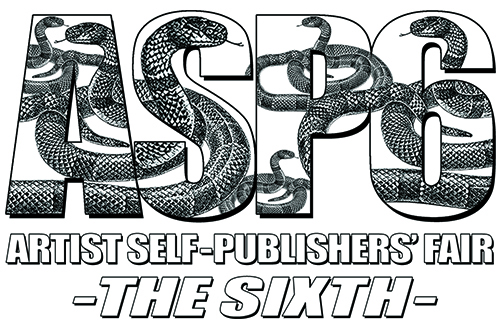
NOWs: ZTSCRT #35 – Fragen
ZTSCRT #35 - FragenBerlin release of ZTSCRT magazine’s latest issue Fragen
Release party
29 August, 5–10pm
with a video piece by Mårten Spångberg
Hopscotch Reading Room (outdoors)
Kurfürstenstrasse 14
10785 Berlin
Featuring contributions by
Nikita Kadan, Nora Turato, Mårten Spångberg, Johanna Dumet, Barry Schwabsky, Till Megerle, Michael Baers, John Miller, Alexander Wolff, Marco Poloni, Eugenia Lai, Sarah Ortmeyer, Olivier Foulon, George Porteus and Christian Egger
Since 2002, the artists Christian Egger, Christian Kosmas Mayer, Yves Mettler, Magda Tothova and Alexander Wolff have been producing a magazine as an independent, international publication on contemporary art, theory and society. The magazine changes its font with each issue. The name of the font becomes the issues’ title.
Published so far: Chicago, Times, Plotter, Helvetica, DIN, Techno, Löhfelm, RR_02, Univers, Tiffany, Circuit, Memphis, Gringo, Zeus, The Mix, Princess Lulu, Pigiarniq, Paper, Libertine, Trixie, Déjà Vu, Auto, Rediviva, Acid, Wanda, Loraine, Hallo, Korpus, Spiegel, Zeitschrift, FIG, Museo, Lisa Fittko, Dyslexie and Fragen.
Edited and published by: Christian Egger, Christian Kosmas Mayer, Yves Mettler, Magda Tóthová, Alexander Wolff
—
Upcoming: ASP6 Fair The Sixth 2020
ASP6 will be taking place on Sunday the 27th of September, 2–7 pm and will be 100% online: www.aspfair.uk
ZTSCRT #35 - FragenBerlin release of ZTSCRT magazine’s latest issue Fragen
Release party
29 August, 5–10pm
with a video piece by Mårten Spångberg
Hopscotch Reading Room (outdoors)
Kurfürstenstrasse 14
10785 Berlin
Featuring contributions by
Nikita Kadan, Nora Turato, Mårten Spångberg, Johanna Dumet, Barry Schwabsky, Till Megerle, Michael Baers, John Miller, Alexander Wolff, Marco Poloni, Eugenia Lai, Sarah Ortmeyer, Olivier Foulon, George Porteus and Christian Egger
Since 2002, the artists Christian Egger, Christian Kosmas Mayer, Yves Mettler, Magda Tothova and Alexander Wolff have been producing a magazine as an independent, international publication on contemporary art, theory and society. The magazine changes its font with each issue. The name of the font becomes the issues’ title.
Published so far: Chicago, Times, Plotter, Helvetica, DIN, Techno, Löhfelm, RR_02, Univers, Tiffany, Circuit, Memphis, Gringo, Zeus, The Mix, Princess Lulu, Pigiarniq, Paper, Libertine, Trixie, Déjà Vu, Auto, Rediviva, Acid, Wanda, Loraine, Hallo, Korpus, Spiegel, Zeitschrift, FIG, Museo, Lisa Fittko, Dyslexie and Fragen.
Edited and published by: Christian Egger, Christian Kosmas Mayer, Yves Mettler, Magda Tóthová, Alexander Wolff
—
Upcoming: ASP6 Fair The Sixth 2020
ASP6 will be taking place on Sunday the 27th of September, 2–7 pm and will be 100% online: www.aspfair.uk
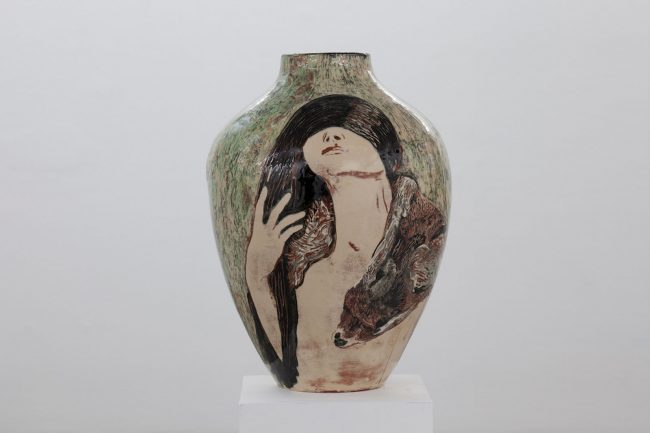
NOWs: Cool Clay – Ceramic Containers in Art Today
Cool Clay - Ceramic Containers in Art Todaygroup exhibition
Gammel Holtegaard
Attemosevej 170
2840 Holte
Denmark
OPENING
27 August 2020, 5 – 7:30 pm
PROGRAM
Welcome by Maria Gadegaard, director of Gl. Holtegaard.
The performanceduo Philip I Schneider will be performing their piece SOIL – WATER – SUN together with six choristers.
The performace will take place twice on the courtyard on the opening night at: 5:30pm and 6:45pm
Gammel Holtegaard is serving eco beer and some sweets.
Ceramic: Clay in art is more popular than ever both in Denmark and internationally. COOL CLAY – Ceramic Containers in Art Today presents 20 Danish artists’ reinterpretation of clay pots as works of art. Here the clay container exists as applied art, myth, body, sound instrument, canvas, and sculpture.
The staging of the exhibition – with tons of earth on the gallery floors and heavy textiles on the walls – arouses the senses – touch, sight, smell and hearing intensify the experience of the many works filling the galleries.
ARTISTS
Lisbeth Bank (b.1975), Claus Carstensen (b.1957), Cathrine Raben Davidsen (b. 1972), Rose Eken (b.1976), Nour Fog (b.1981), Ida Kvetny (b.1980), Klara Lilja (b.1989), Carl Mannov (b.1990), Karl Monies (b.1984), Mie Mørkeberg (b.1980), Ursula Nistrup (b.1974), Fie Norsker (b.1974), Frederik Nystrup-Larsen (b.1992), Frederik Næblerød (b.1988), Knud Odde (b.1955), Anna Samsøe (b.1987), Andreas Schulenburg (b.1975), Anna Stahn (b.1994), Dan Stockholm (b.1982), Anna Sørensen (b.1968)
The exhibition is generously supported by:
The Augustinus Foundation, the Spar Nord Foundation, the Foundation of June 15th, the Louis-Hansen Foundation, the Jorck Foundation, the Knud Højgaard Foundation, the William Demant Foundation, the Ernst B. Sund Foundation, and the Toyota Foundation.
The exhibition events programme is supported by the Nordea Foundation.
The Danish Art Foundation supports Gammel Holtegaard’s exhibition programme.
Thanks to Kvadrat.
Klara Lilja
Mie Mørkeberg
Cool Clay - Ceramic Containers in Art Todaygroup exhibition
Gammel Holtegaard
Attemosevej 170
2840 Holte
Denmark
OPENING
27 August 2020, 5 – 7:30 pm
PROGRAM
Welcome by Maria Gadegaard, director of Gl. Holtegaard.
The performanceduo Philip I Schneider will be performing their piece SOIL – WATER – SUN together with six choristers.
The performace will take place twice on the courtyard on the opening night at: 5:30pm and 6:45pm
Gammel Holtegaard is serving eco beer and some sweets.
Ceramic: Clay in art is more popular than ever both in Denmark and internationally. COOL CLAY – Ceramic Containers in Art Today presents 20 Danish artists’ reinterpretation of clay pots as works of art. Here the clay container exists as applied art, myth, body, sound instrument, canvas, and sculpture.
The staging of the exhibition – with tons of earth on the gallery floors and heavy textiles on the walls – arouses the senses – touch, sight, smell and hearing intensify the experience of the many works filling the galleries.
ARTISTS
Lisbeth Bank (b.1975), Claus Carstensen (b.1957), Cathrine Raben Davidsen (b. 1972), Rose Eken (b.1976), Nour Fog (b.1981), Ida Kvetny (b.1980), Klara Lilja (b.1989), Carl Mannov (b.1990), Karl Monies (b.1984), Mie Mørkeberg (b.1980), Ursula Nistrup (b.1974), Fie Norsker (b.1974), Frederik Nystrup-Larsen (b.1992), Frederik Næblerød (b.1988), Knud Odde (b.1955), Anna Samsøe (b.1987), Andreas Schulenburg (b.1975), Anna Stahn (b.1994), Dan Stockholm (b.1982), Anna Sørensen (b.1968)
The exhibition is generously supported by:
The Augustinus Foundation, the Spar Nord Foundation, the Foundation of June 15th, the Louis-Hansen Foundation, the Jorck Foundation, the Knud Højgaard Foundation, the William Demant Foundation, the Ernst B. Sund Foundation, and the Toyota Foundation.
The exhibition events programme is supported by the Nordea Foundation.
The Danish Art Foundation supports Gammel Holtegaard’s exhibition programme.
Thanks to Kvadrat.
Klara Lilja
Mie Mørkeberg
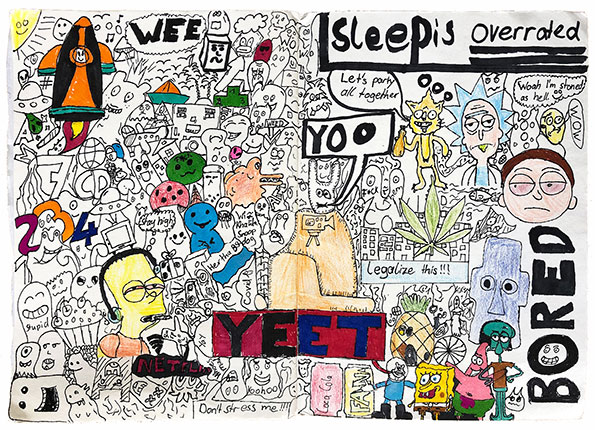
NOWs: Sleep is overrated
Sleep is overrated, © Jan Peter Zaugg 2020
Sleep is overratedgroup exhibition
With: Heather Allen, Heike Baranowsky, Emmanuelle Castellan, Katharina Grosse, Ilona Kálnoky, Mark Le Ruez, Via Lewandowsky, Sophia Pompéry, Karin Sander, Salah Saouli, Karen Scheper, Veronika Witte, Jan Peter Zaugg, Georg Zey
Vernissage: Friday, 28 August 2020, 6 – 10 pm
during Ortstermin Festival: 29 + 30 August 2020, 3 – 8 pm
regular opening hours: Fr – Sun 4 – 7 pm and by appointment
Finissage: Sunday, 13 September 2020, 4 – 7 pm
In the group exhibition Sleep is overrated Kurt-Kurt takes the visitors on a tour through the international art scene of Moabit; just in time for “Ortstermin” the local art festival and the Berlin Art Week.
We hope that the art, perceived insitu at a self-chosen period of time, is contagious and infects the audience again and again; of course within all the rules of the Covid regulations valid at the end of August.
Kunst und Kontext im Stadtlabor Berlin-Moabit
A project lead by Simone Zaugg and Pfelder at the birthplace of Kurt Tucholsky.
Lübecker Str. 13 | 10559 Berlin | Tel 030-397 46 942 | Mail info@kurt-kurt.de
www.kurt-kurt.de | www.sanspapiers.de
Sleep is overrated, © Jan Peter Zaugg 2020
Sleep is overratedgroup exhibition
With: Heather Allen, Heike Baranowsky, Emmanuelle Castellan, Katharina Grosse, Ilona Kálnoky, Mark Le Ruez, Via Lewandowsky, Sophia Pompéry, Karin Sander, Salah Saouli, Karen Scheper, Veronika Witte, Jan Peter Zaugg, Georg Zey
Vernissage: Friday, 28 August 2020, 6 – 10 pm
during Ortstermin Festival: 29 + 30 August 2020, 3 – 8 pm
regular opening hours: Fr – Sun 4 – 7 pm and by appointment
Finissage: Sunday, 13 September 2020, 4 – 7 pm
In the group exhibition Sleep is overrated Kurt-Kurt takes the visitors on a tour through the international art scene of Moabit; just in time for “Ortstermin” the local art festival and the Berlin Art Week.
We hope that the art, perceived insitu at a self-chosen period of time, is contagious and infects the audience again and again; of course within all the rules of the Covid regulations valid at the end of August.
Kunst und Kontext im Stadtlabor Berlin-Moabit
A project lead by Simone Zaugg and Pfelder at the birthplace of Kurt Tucholsky.
Lübecker Str. 13 | 10559 Berlin | Tel 030-397 46 942 | Mail info@kurt-kurt.de
www.kurt-kurt.de | www.sanspapiers.de
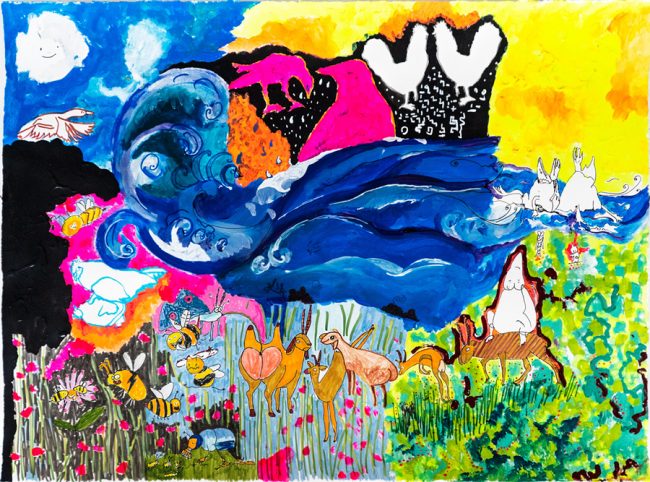
NOWs: HERR DER KRÄHEN
HERR DER KRÄHEN
DIRECTED BY Carlos Manuel
Premiere August 28th at 7 pm in the JTW
Gelsenkircherstr. 20, 12583 Berlin
The production deals with the novel “Lord of the Crows” by the Kenyan author Ngugi wa Thiong’o and creates a polyphonic political parable that does not know the one truth: in the confusion of voices, everyone seeks their place in the world And every story opens up a new event. In a country that wants to reach the sky with the tallest tower in the world, everyone has their hardship – from the simple policeman to the housewife, from the corrupt magnate to the countless unemployed who work in long periods Queues stand and wait until the dictator himself …
Director: Carlos Manuel | Choreography: Jenny Mezile | Stage / Installation: Anne Duk Hee Jordan | Costume: Verena Hay
with André Bertholdt, Andrea Manke, Daria Lazarieva, Esra Meyer, Florian Henning, Gianni Masariè, Jawid Arthen, Jingyun Li, Joachim Giera, Joyce Ferse, Leon Schley, Lia Runau, Maria Cecília, Martina-Malte Rathmann, Natalia Matthies, Pedro Ramires , Renate Schönfisch, Samson Ghebrehiwet, Sibel Kir
Register at schreiner@jtw-spandau.de or at 030-37587623
We would be delighted to see you here at jtw spandau.
HERR DER KRÄHEN
DIRECTED BY Carlos Manuel
Premiere August 28th at 7 pm in the JTW
Gelsenkircherstr. 20, 12583 Berlin
The production deals with the novel “Lord of the Crows” by the Kenyan author Ngugi wa Thiong’o and creates a polyphonic political parable that does not know the one truth: in the confusion of voices, everyone seeks their place in the world And every story opens up a new event. In a country that wants to reach the sky with the tallest tower in the world, everyone has their hardship – from the simple policeman to the housewife, from the corrupt magnate to the countless unemployed who work in long periods Queues stand and wait until the dictator himself …
Director: Carlos Manuel | Choreography: Jenny Mezile | Stage / Installation: Anne Duk Hee Jordan | Costume: Verena Hay
with André Bertholdt, Andrea Manke, Daria Lazarieva, Esra Meyer, Florian Henning, Gianni Masariè, Jawid Arthen, Jingyun Li, Joachim Giera, Joyce Ferse, Leon Schley, Lia Runau, Maria Cecília, Martina-Malte Rathmann, Natalia Matthies, Pedro Ramires , Renate Schönfisch, Samson Ghebrehiwet, Sibel Kir
Register at schreiner@jtw-spandau.de or at 030-37587623
We would be delighted to see you here at jtw spandau.
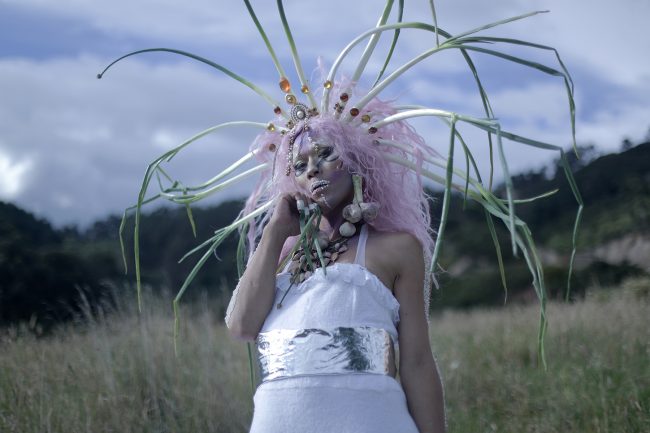
NOWs: Continuum II by La Red Communitaria Trans/Tomás Espinosa
Continuum IIVideo installation
Center for Literature
Burg Hülshoff
Schonebeck 6
48329 Havixbeck
watch teaser here
Continuum II is on view as part of the festival Keine Sorge / Don’t Care.
Check out the full program here.
Continuum II is an invitation to immerse oneself in the lives of six transgender women sex workers and is an opportunity not only to understand their pain but to see what they have done with it. We hear stories and testimonies that have not been told. It is memories of oppression, persecution and violence that need to be told and shared, because this recognition is a guarantee to heal the present and open the way to the future.*
Art in the form of performance and installation is used as a tool to make the violence known, to express and acknowledge it, to embrace the pain and then let it go.
*32 trans people were murdered in Colombia during the preparations for Continuum II
A work by Daniela Maldonado, Ana Bravo, Paula Gempeler, Juan David Cortes, Tomás Espinosa in Collaboration with the Red Comunitaria Trans: Valeria Lopez, Franchesca Caballero, Nini Palomino, Natalia Bernal and Bárbara Sanchez
read the artist statement here (Englisch/Spanisch)
Continuum IIVideo installation
Center for Literature
Burg Hülshoff
Schonebeck 6
48329 Havixbeck
watch teaser here
Continuum II ist zu sehen als Teil des Festivals Keine Sorge / Don’t Care.
Zum vollen Programm hier.
Continuum II ist eine Einladung, in das Leben von sechs transsexuellen Sexarbeiterinnen in Kolumbien einzutauchen, und eine Gelegenheit, nicht nur ihren Schmerz zu verstehen, sondern auch zu sehen, was sie daraus gemacht haben. Wir hören Geschichten und Zeugenaussagen, die nie erzählt wurden. Es sind Erinnerungen an Unterdrückung, Verfolgung und Gewalt, die erzählt und geteilt werden müssen, denn diese Anerkennung ist eine Garantie, um die Gegenwart zu heilen und den Weg in die Zukunft zu öffnen.*
Kunst in Form von Performance und Installation wird als Werkzeug genutzt, um die Gewalt bekannt zu machen, sie auszudrücken und anzuerkennen, den Schmerz zu umarmen und ihn dann loszulassen.
*Während der Vorbereitungen zu Continuum II wurden 32 trans Menschen in Kolumbien ermordet.
Eine Arbeit von Daniela Maldonado, Ana Bravo, Paula Gempeler, Juan David Cortes, Tomás Espinosa in Zusammenarbeit mit der Red Comunitaria Trans: Valeria Lopez, Franchesca Caballero, Nini Palomino, Natalia Bernal und Bárbara Sanchez
zum Künstlerstatement (Englisch/Spanisch)
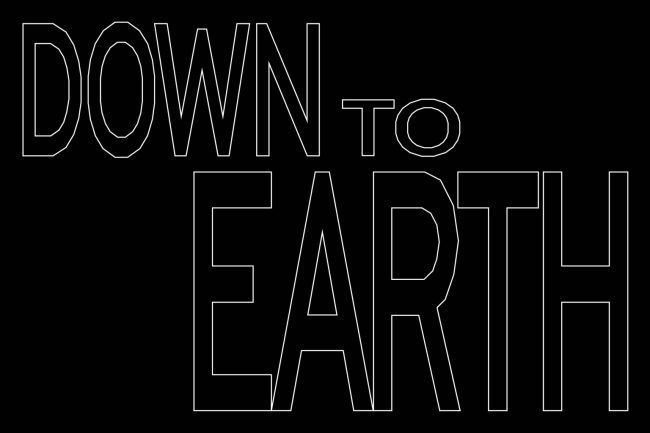
NOWs: Anne Duk Hee Jordan, Robert Lippok at Down to Earth
Down to EarthClimate Art Discourse unplugged
Gropius Bau
Niederkirchnerstraße 7
10963 Berlin
“Down to Earth”, a summer at the Gropius Bau: four weeks without electricity, loudspeakers, videos, screens, air travel or spotlights, but with daylight, heat, recycling, analogue music, dance and talks by experts on change, exhibits on the themes of the ocean, Gaia, puddles, the living earth, a sawn-up Porsche and modern rituals, in the spirit of Latour, Margulis, Lovelock and the Shipibo – 14 rooms and different overall every day.
With Frédérique Aït-Touati mit Bruno Latour und Gästen (SPEAP, Zone Critique), Kader Attia, Peter Berz, Luca Di Blasi, Grit Bürgow, Filipa César / Louis Henderson, François Chaignaud & Marie-Pierre Brébant, Marco Clausen, Johannes Comeau-Milke, Steven Corcoran, Agnes Denes, Immanuel Dorn, Jan Edler & Tim Edler, Ensemble Extrakte, Shelley Etkin, Maja Chiara Faber, Henry Farkas, Andreas Frädrich, Vibha Galhotra, Simryn Gill, Andreas Gursky, Joschka Härdtner, Benedikt Haerlin, Helen Mayer Harrison & Newton Harrison, Cornelis F. Hemmer, Femke Herregraven, Christian Heymann, Louise Höjer, Yngve Holen, Anne Duk Hee Jordan, Koo Jeong A, Rüdiger Kruse, Lukasz Kuni, Alicja Kwade, Michelle-Marie Letelier, Armin Linke, Robert Lippok, Diego Maronese, Konstanze Meyer, Dr. Motte, Marion Müller, Hermann E. Ott, Jean Painlevé, Khien Phuc, Kirsten Pieroth, Asad Raza, Tomás Saraceno, Birgit Schattling, Karin Schönberger, Isabell Schrickel, Carla Schulte-Fischedick, Dorothea Schwierskott, Tino Sehgal, Claire Vivianne, Sobottke, Himali Singh Soin, Kerstin Stark, Anja Steglich, Stegreif Orchester, Joulia Strauss, Meg Stuart, Rirkrit Tiravanija / Nikolaus Hirsch / Michel Müller, Marcus Vietzke, Andrea Voets, Andreas Weber, Peter Weibel, Peter Wilhelm, Susanne Winter, Bartosz Żurowski and many others
Initiated by Thomas Oberender
Co-curated by Julia Badaljan, Thomas Oberender, Anja Predeick, Tino Sehgal, Jeroen Versteele
Curatorial associates Descha Daemgen, Stefanie Hessler, Marc Pohl, Joulia Strauss, Frédérique Aït-Touati
An exhibition organised by Berliner Festspiele as part of the programme series Immersion.
Down to EarthKlima Kunst Diskurs unplugged
Gropius Bau
Niederkirchnerstraße 7
10963 Berlin
„Down to Earth“, der Sommer im Gropius Bau: Vier Wochen ohne Strom, Lautsprecher, Videos, Screens, Flugreisen, Scheinwerfer, dafür mit Tageslicht, Hitze, Recycling, analoger Musik, Tanz, Talks mit Expert*innen des Wandels, Exponaten zum Thema Ozean, Gaia, Wasserpfützen, lebender Erde, einem zersägten Porsche, modernen Ritualen, im Geiste Latours, Margulis, Lovelocks und der Shipibo – 14 Räume, im Ganzen jeden Tag anders.
Mit Frédérique Aït-Touati mit Bruno Latour und Gästen (SPEAP, Zone Critique), Kader Attia, Peter Berz, Luca Di Blasi, Grit Bürgow, Filipa César / Louis Henderson, François Chaignaud & Marie-Pierre Brébant, Marco Clausen, Johannes Comeau-Milke, Steven Corcoran, Agnes Denes, Immanuel Dorn, Jan Edler & Tim Edler, Ensemble Extrakte, Shelley Etkin, Maja Chiara Faber, Henry Farkas, Andreas Frädrich, Vibha Galhotra, Simryn Gill, Andreas Gursky, Joschka Härdtner, Benedikt Haerlin, Helen Mayer Harrison & Newton Harrison, Cornelis F. Hemmer, Femke Herregraven, Christian Heymann, Louise Höjer, Yngve Holen, Anne Duk Hee Jordan, Koo Jeong A, Rüdiger Kruse, Lukasz Kuni, Alicja Kwade, Michelle-Marie Letelier, Armin Linke, Robert Lippok, Diego Maronese, Konstanze Meyer, Dr. Motte, Marion Müller, Hermann E. Ott, Jean Painlevé, Khien Phuc, Kirsten Pieroth, Asad Raza, Tomás Saraceno, Birgit Schattling, Karin Schönberger, Isabell Schrickel, Carla Schulte-Fischedick, Dorothea Schwierskott, Tino Sehgal, Claire Vivianne, Sobottke, Himali Singh Soin, Kerstin Stark, Anja Steglich, Stegreif Orchester, Joulia Strauss, Meg Stuart, Rirkrit Tiravanija / Nikolaus Hirsch / Michel Müller, Marcus Vietzke, Andrea Voets, Andreas Weber, Peter Weibel, Peter Wilhelm, Susanne Winter, Bartosz Żurowski u.v.a.
Initiiert von Thomas Oberender
Kuratorisches Team Julia Badaljan, Thomas Oberender, Anja Predeick, Tino Sehgal, Jeroen Versteele
Kuratorische Mitarbeit Descha Daemgen, Stefanie Hessler, Marc Pohl, Joulia Strauss, Frédérique Aït-Touati
Eine Ausstellung der Berliner Festspiele im Rahmen der Programmreihe Immersion.
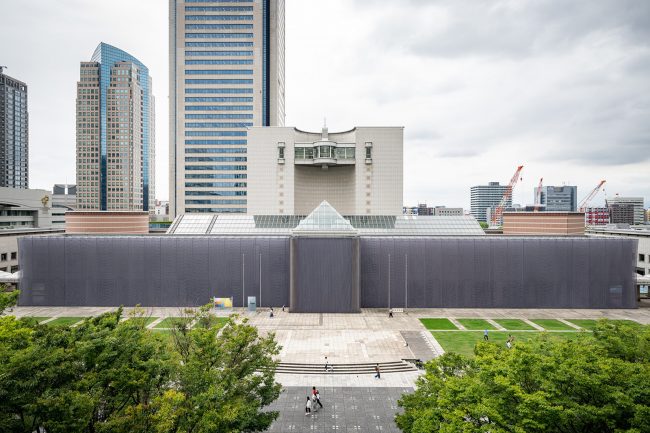
NOWs: Contributions at Yokohama Triennale 2020
Resonance of the Unforeseen, Yokohama Museum of Art. Photos by KATO Ken © Ivana Franke, © Yokohama Triennale. Courtesy of Organizing Committee for Yokohama Triennale
Yokohama Triennale 2020Afterglow
Yokohama Museum of Art
Afterglow
A luminous interval, a glowing anticipation, a lambent flow, a charged current of energy between thickets of presence and becoming
Yokohama Triennale 2020, its 7th edition, will be led by Raqs Media Collective, a collective of three artists based in New Delhi, India, as its artistic director. Under Raqs Media Collective’s direction, it will take the artists and co-travelers on a journey through time and space.
The title of Yokohama Triennale 2020 is “AFTERGLOW,” a word chosen by Raqs Media Collective to reference how, in our everyday lives, we unknowingly experience the residues of light sparked at the beginning of our time, as in the case of how the “white noise” on our analog televisions included fragments of cosmic microwave background radiation left over from the cosmic Big Bang. By referring to the Big Bang’s destructive energy that propelled creativity and over time, gave birth to life on this planet, and its radiation that is toxic as well as therapeutic, Raqs Media Collective takes interest in the cycle of destruction/toxicity and recovery/care in the human activities of the contemporary age. Together with the artists, audience, and others, Raqs Media Collective will explore ways to co-exist with toxicity for human sustenance and survival in this world in flux, rather than eliminate it.
Artists @ Yokohama Museum of Art (YMA)
Morehshin Allahyari / Robert Andrew / Aono Fumiaki / Arai Takashi / Rosa Barba / Taysir Batniji / Nick Cave / Chen Zhe / Jesse Darling / Max De Esteban / Eva Fàbregas / Alia Farid / Ivana Franke / Zuza Golińska / Nilbar Güreş / Ingela Ihrman / Iiyama Yuki / Iwama Asako / Kaneuji Teppei / Lebohang Kganye / Kim Yunchul / Make or Break (Rebecca Gallo & Connie Anthes) / Taus Makhacheva/ James Nasmyth / Park Chan-Kyong / Renuka Rajiv / Oscar Santillan / Sarker Protick / Sato Masaharu / Sato Risa / Tsherin Sherpa / Elias Sime / Rayyane Tabet / Takemura Kei / Omer Wasim & Saira Sheikh / Lantian Xie / Zhang Xu Zhan
Artists @ PLOT 48
Haig Aivazian / Farah Al Qasimi / Korakrit Arunanondchai / Hicham Berrada / Farming Architects / Rahima Gambo / Andreas Greiner / Tina Havelock Stevens / Joyce Ho / Iikawa Takehiro / Kawakubo Yoi / Elena Knox with collaborating artists / Lau Wai / Russ Ligtas / Naeem Mohaiemen / Amol K. Patil / Aluaiy Pulidan / Oscar Santillan / Sarker Protick / Sato Risa / Renu Savant / Anton Vidokle / Zheng Bo
Artist @ NYK Maritime Museum / Marianne Fahmy
Artists @ Ongoing Episōdos
Episōdo 02 / Deliberations on Discursive Justice / Michelle Wong, Lantian Xie, Kabelo Malatsie / Scenography for Suspended Time / Protagonists: Heron, fish, copper, Nanni, Kinoshita Takahiro, Mr. King, Cici Wu, Pallavi Paul, Sunday Lai Long Sang, Hicham Berrada, money plant, snake plant, butterfly palm, Pushie the cat, and George Mahashe/ Johannesburg—July 3 to August 14, 2020
Episōdo 03 / Deliberations on Discursive Justice / Michelle WONG, Lantian XIE, Kabelo MALATSIE / Yokohama / Chasing the Scent / With Merv ESPINA and PUGMENT / @ YMA
Episōdo 04 / Institute for Tropical and Galactical Studies / Curated by Inti Guerrero / From the YMA collection: Ishikawa Mao, Ishiuchi Miyako, Paul Jacoulet, Tanaka Atsuko, Wilhelm Von Gloeden, and with invited artists: Kathy Jetñil-Kikiner with Dan Lin, Eisa Jocson, Cristina Lucas and Anting-Anting artifacts from the Philippines / @ YMA
Episōdo 06 / Broom stars / Iwai Masaru / @ YMA and dispersed in the city
Episōdo 09 / The case of the ringing bell / Dennis Tan / @ PLOT 48
Episōdo X / Online with artists, docents, volunteers, and viewers
Artists @ Forthcoming Episōdos
Episōdo 01 / Deliberations on Discursive Justice / Michelle Wong, Lantian Xie, Kabelo Malatsie / Afterparty / Protagonists: Phastoki, Fotan Laikee, Amiya Napgal, and Jerome Reyes / Hong Kong (TBA)
Episōdo 05 / SURE INN / Printing Sound / @ PLOT 48
Episōdo 07 / Sound Reasons / Ish Shehrawat (Ish S), Venzha Christ / @ YMA
Episōdo 08 / Chemistry – The Story of C / Tamura Yuichiro / @ YMA + online
Episōdo 10 / TBA
Artists @ Episōdo 00 / Sharing the Sources / November 30, 2019 / Shintaku Kanako, Tamura Yuichiro, Lantian Xie, Ivana Franke, Hicham Berrada / @ PLOT 48
Sourcebook / Yokohama Triennale
Asako Iwama: non-visible (still), 2013. © Asako Iwama and Derrick Wang
Andreas Greiner: From Strings To Dinosaurs, 2014 © Andreas Greiner, composition by Tyler Friedman
Resonance of the Unforeseen, Yokohama Museum of Art. Photos by KATO Ken © Ivana Franke, © Yokohama Triennale. Courtesy of Organizing Committee for Yokohama Triennale
Yokohama Triennale 2020Afterglow
Yokohama Museum of Art
Afterglow
A luminous interval, a glowing anticipation, a lambent flow, a charged current of energy between thickets of presence and becoming
Yokohama Triennale 2020, its 7th edition, will be led by Raqs Media Collective, a collective of three artists based in New Delhi, India, as its artistic director. Under Raqs Media Collective’s direction, it will take the artists and co-travelers on a journey through time and space.
The title of Yokohama Triennale 2020 is “AFTERGLOW,” a word chosen by Raqs Media Collective to reference how, in our everyday lives, we unknowingly experience the residues of light sparked at the beginning of our time, as in the case of how the “white noise” on our analog televisions included fragments of cosmic microwave background radiation left over from the cosmic Big Bang. By referring to the Big Bang’s destructive energy that propelled creativity and over time, gave birth to life on this planet, and its radiation that is toxic as well as therapeutic, Raqs Media Collective takes interest in the cycle of destruction/toxicity and recovery/care in the human activities of the contemporary age. Together with the artists, audience, and others, Raqs Media Collective will explore ways to co-exist with toxicity for human sustenance and survival in this world in flux, rather than eliminate it.
Artists @ Yokohama Museum of Art (YMA)
Morehshin Allahyari / Robert Andrew / Aono Fumiaki / Arai Takashi / Rosa Barba / Taysir Batniji / Nick Cave / Chen Zhe / Jesse Darling / Max De Esteban / Eva Fàbregas / Alia Farid / Ivana Franke / Zuza Golińska / Nilbar Güreş / Ingela Ihrman / Iiyama Yuki / Iwama Asako / Kaneuji Teppei / Lebohang Kganye / Kim Yunchul / Make or Break (Rebecca Gallo & Connie Anthes) / Taus Makhacheva/ James Nasmyth / Park Chan-Kyong / Renuka Rajiv / Oscar Santillan / Sarker Protick / Sato Masaharu / Sato Risa / Tsherin Sherpa / Elias Sime / Rayyane Tabet / Takemura Kei / Omer Wasim & Saira Sheikh / Lantian Xie / Zhang Xu Zhan
Artists @ PLOT 48
Haig Aivazian / Farah Al Qasimi / Korakrit Arunanondchai / Hicham Berrada / Farming Architects / Rahima Gambo / Andreas Greiner / Tina Havelock Stevens / Joyce Ho / Iikawa Takehiro / Kawakubo Yoi / Elena Knox with collaborating artists / Lau Wai / Russ Ligtas / Naeem Mohaiemen / Amol K. Patil / Aluaiy Pulidan / Oscar Santillan / Sarker Protick / Sato Risa / Renu Savant / Anton Vidokle / Zheng Bo
Artist @ NYK Maritime Museum / Marianne Fahmy
Artists @ Ongoing Episōdos
Episōdo 02 / Deliberations on Discursive Justice / Michelle Wong, Lantian Xie, Kabelo Malatsie / Scenography for Suspended Time / Protagonists: Heron, fish, copper, Nanni, Kinoshita Takahiro, Mr. King, Cici Wu, Pallavi Paul, Sunday Lai Long Sang, Hicham Berrada, money plant, snake plant, butterfly palm, Pushie the cat, and George Mahashe/ Johannesburg—July 3 to August 14, 2020
Episōdo 03 / Deliberations on Discursive Justice / Michelle WONG, Lantian XIE, Kabelo MALATSIE / Yokohama / Chasing the Scent / With Merv ESPINA and PUGMENT / @ YMA
Episōdo 04 / Institute for Tropical and Galactical Studies / Curated by Inti Guerrero / From the YMA collection: Ishikawa Mao, Ishiuchi Miyako, Paul Jacoulet, Tanaka Atsuko, Wilhelm Von Gloeden, and with invited artists: Kathy Jetñil-Kikiner with Dan Lin, Eisa Jocson, Cristina Lucas and Anting-Anting artifacts from the Philippines / @ YMA
Episōdo 06 / Broom stars / Iwai Masaru / @ YMA and dispersed in the city
Episōdo 09 / The case of the ringing bell / Dennis Tan / @ PLOT 48
Episōdo X / Online with artists, docents, volunteers, and viewers
Artists @ Forthcoming Episōdos
Episōdo 01 / Deliberations on Discursive Justice / Michelle Wong, Lantian Xie, Kabelo Malatsie / Afterparty / Protagonists: Phastoki, Fotan Laikee, Amiya Napgal, and Jerome Reyes / Hong Kong (TBA)
Episōdo 05 / SURE INN / Printing Sound / @ PLOT 48
Episōdo 07 / Sound Reasons / Ish Shehrawat (Ish S), Venzha Christ / @ YMA
Episōdo 08 / Chemistry – The Story of C / Tamura Yuichiro / @ YMA + online
Episōdo 10 / TBA
Artists @ Episōdo 00 / Sharing the Sources / November 30, 2019 / Shintaku Kanako, Tamura Yuichiro, Lantian Xie, Ivana Franke, Hicham Berrada / @ PLOT 48
Sourcebook / Yokohama Triennale
Asako Iwama: non-visible (still), 2013. © Asako Iwama and Derrick Wang
Andreas Greiner: From Strings To Dinosaurs, 2014 © Andreas Greiner, composition by Tyler Friedman
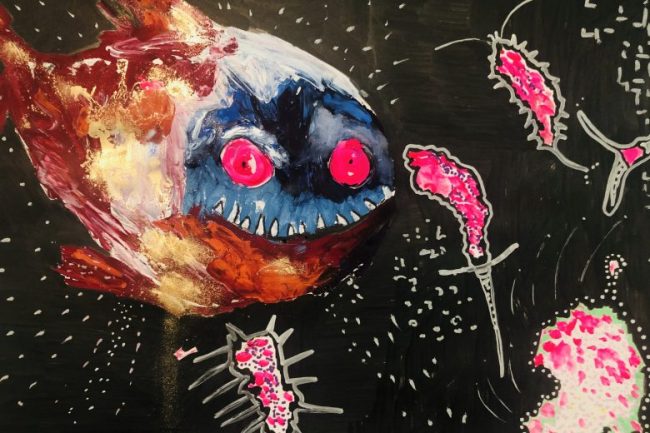
NOWs: Making Kin – Melanie Bonajo, Madison Bycroft, Anne Duk Hee Jordan
Making Kin – Melanie Bonajo, Madison Bycroft, Anne Duk Hee Jordan
Kunsthaus Hamburg
Klosterwall 15
20095 Hamburg
Der titelgebende Ausspruch „Making Kin“ (Macht euch verwandt) ist eine Maxime der Wissenschaftsphilosophin und Cyborg-Feminismus-Pionierin Donna Haraway, die zur artenübergreifenden Symbiose auffordert. In ihren Texten wimmelt es von Lebewesen unterschiedlichster Arten. Um für kommende Generationen eine Zukunft zu ermöglichen, müssen wir uns als sterbliche „Kritter“ mit unzähligen Konfigurationen aus Orten, Zeiten, Materien und Bedeutungen verflechten, damit aus dem planetenzerstörenden Homo sapiens neues Leben „kompostiert“ werden kann.
Die Künstlerinnen hinterfragen gesetzte Begriffe wie Natur, Kultur und Technik und ihre jeweiligen Trennlinien. Dabei interessieren sie sich für das hybride Netzwerk zwischen dem Menschen und seiner Umwelt. Humorvoll und spielerisch entwerfen sie experimentelle und zukunftsorientierte Szenarien, die unsere gewohnten Lebensweisen in Frage stellen und neue Modelle von Gemeinsamkeit erlebbar machen. Für die Ausstellung sind neue Arbeiten entstanden, die zum Nachdenken über ein übergreifendes ökologisches Prinzip der Verbundenheit anregen.
Anne Duk Hee Jordan, From the deep sea archive: piranhas are not so deep, 2017
Making Kin – Melanie Bonajo, Madison Bycroft, Anne Duk Hee Jordan
Kunsthaus Hamburg
Klosterwall 15
20095 Hamburg
„Making Kin”, the phrase that gave the show its title, is a maxim coined by the philosopher of science and pioneer cyborg feminist Donna Haraway who calls for an interspecies symbiosis. Her texts are teeming with all kinds of different creatures. To ensure a liveable future for the following generations, we, as mortal “critters”, need to link up ourselves with multiple configurations of places, times, matters and meanings so that new life can be “composted” from the planet-destroying Homo sapiens.
The artists scrutinize established terms like nature, culture and technology, including their definitional boundaries. They are interested in the hybrid network between humans and their environment. In a humorous and playful manner, they draw up experimental and future-oriented scenarios that challenge our customary lifestyles and likewise make new models of community both imaginable and apprehensible. New works were created for the exhibition that inspire us to reflect upon an overall ecological principle of connectivity.
Anne Duk Hee Jordan, From the deep sea archive: piranhas are not so deep, 2017
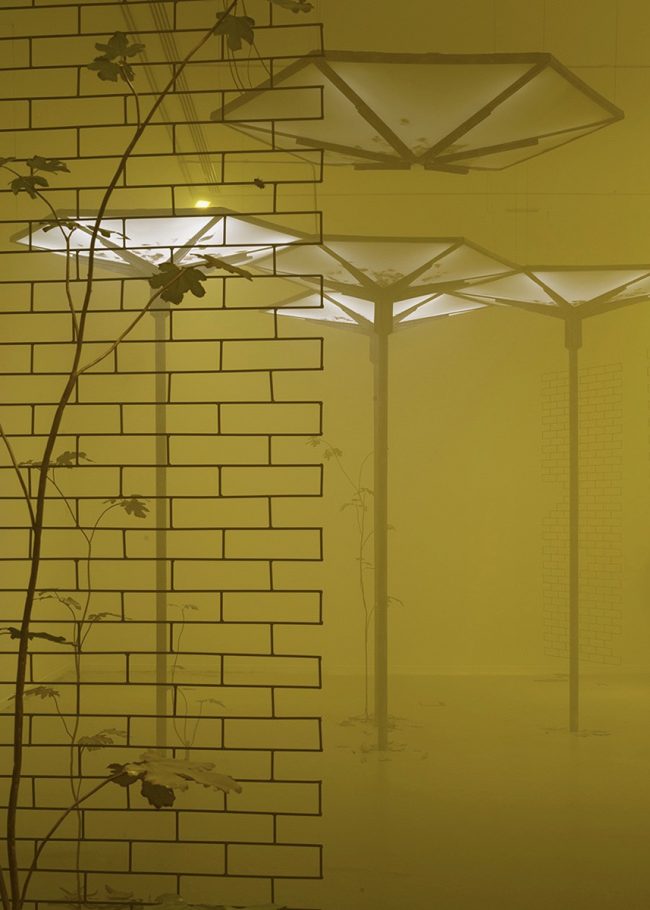
NOWs: El Despertar by Alvaro Urbano
NOWs: El Despertar solo exhibition by Alvaro Urbano
La Casa Encendida
Ronda de Valencia, 2
28012 Madrid
Reopening on the 1st of July 2020 until the 10 of January 2021
Like a strange dream that seems to go on forever, El Despertar (The Awakening) reanimates a building whose life appears to have expired long ago. Through an immersive installation comprised of fragments that make up the body of a building, a forgotten edifice is reactivated to provoke speculative thought about its past and future.
In this exhibition in one scene, artist Alvaro Urbano (Madrid, 1983) uses as a case study the celebrated Hexagon Pavilion, designed by architects José Antonio Corrales and Ramón Vázquez Molezún. The building, now languishing in a ruinous state in Madrid’s Casa de Campo park, was first presented as the Spanish Pavilion at the 1958 Brussels World’s Fair and is considered an important example of modern Spanish architecture. After years of abandonment, it is hard to believe what it once was and what it contained.
Here, where the architecture and vegetation seem to be frozen in time, where the building itself holds a pictorial and sonic landscape that speaks of the past experiences lived within its walls, and where a pair of raccoons intermittently dwells—an endless twilight bathes the space in color and brings it to life.
Like an unscripted film that captures daily existence, The Awakening constructs a parallel life for an exhausted building in order to revive seemingly dormant histories.
Curator: José Esparza Chong Cuy
Soundscape: Coeval and Alvaro Urbano
Photos: Trevor Lloyd
Read here an interview with Alvaro Urbano published in Umbigo magazine
download the exhibition publication by clicking on the image above
“Monja en el interior del Pabellón España Expo 1958. Bruselas” Image from Wikipedia
NOWs: El Despertar solo exhibition by Alvaro Urbano
La Casa Encendida
Ronda de Valencia, 2
28012 Madrid
Reopening on the 1st of July 2020 until the 10 of January 2021
Like a strange dream that seems to go on forever, El Despertar (The Awakening) reanimates a building whose life appears to have expired long ago. Through an immersive installation comprised of fragments that make up the body of a building, a forgotten edifice is reactivated to provoke speculative thought about its past and future.
In this exhibition in one scene, artist Alvaro Urbano (Madrid, 1983) uses as a case study the celebrated Hexagon Pavilion, designed by architects José Antonio Corrales and Ramón Vázquez Molezún. The building, now languishing in a ruinous state in Madrid’s Casa de Campo park, was first presented as the Spanish Pavilion at the 1958 Brussels World’s Fair and is considered an important example of modern Spanish architecture. After years of abandonment, it is hard to believe what it once was and what it contained.
Here, where the architecture and vegetation seem to be frozen in time, where the building itself holds a pictorial and sonic landscape that speaks of the past experiences lived within its walls, and where a pair of raccoons intermittently dwells—an endless twilight bathes the space in color and brings it to life.
Like an unscripted film that captures daily existence, The Awakening constructs a parallel life for an exhausted building in order to revive seemingly dormant histories.
Curator: José Esparza Chong Cuy
Soundscape: Coeval and Alvaro Urbano
Photos: Trevor Lloyd
Read here an interview with Alvaro Urbano published in Umbigo magazine
download the exhibition publication by clicking on the image above
“Monja en el interior del Pabellón España Expo 1958. Bruselas” Image from Wikipedia
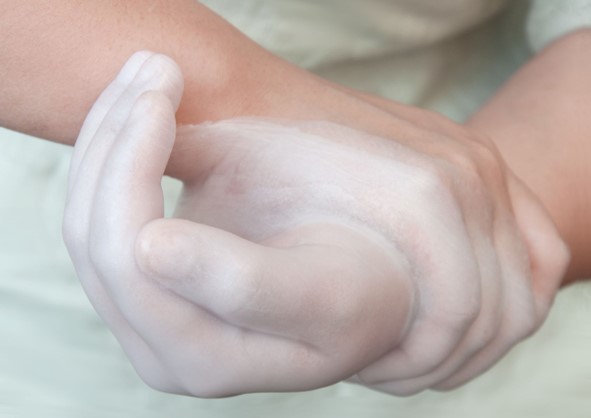
NOWs: StipendiatInnen der Hans und Charlotte Krull Stiftung 2018 – 2020
Nina Schuiki, Auf Dauer, 2019. Fotografie einer Geste (Wachs, Hände), Fine Art Print, 20 x 30 cm
ausgezeichnet | gefördertStipendiatInnen der Hans und Charlotte Krull Stiftung 2018 – 2020
In der Kommunalen Galerie Berlin
Heiner Franzen | Leonid Keller | Oskar Schmidt | Nina Schuiki | Christian Schellenberger | Stephanie Steinkopf | Leon Eixenberger
Die Hans und Charlotte Krull Stiftung fördert seit 2010 bildende Künstler*innen mit jährlichen Arbeitsstipendien von 12.000 €. Alle zwei Jahre richtet sie eine Ausstellung für ihre Stipendiat*innen aus, in diesem Jahr für die sieben der Jahre 2018 bis 2020 und zum wiederholten Mal in der Kommunalen Galerie Berlin.
Es geht um Politisches, Privates und Perspektivwechsel.
Reale und innere Mauern trennen Zimmer, Menschen und Länder, das zeigen Leon Eixenberger in einer Videoarbeit, gedreht in einem Haus des Architekten Hans Scharoun und Stephanie Steinkopf in ihrem Fotofilm über die Spuren der Berliner Mauer in Biografien. Das Schwanken zwischen Sozialismus und Kapitalismus thematisiert auch das Künstlerduo Leonid Keller in ihrer Installation. Im Dazwischen zeichnet Christian Schellenberger, meist in Bus und Bahn. Heiner Franzen befasst sich in einem Video mit Sprechakten und der Fotograf Oskar Schmidt stellt den Eurozentrismus in der Kunstgeschichte infrage. Doch am Ende ist eh alles ephemer, daran erinnert uns die Projektion von Nina Schuikis ewig verdampfender und verflüssigender Träne.
Da es dieses Jahr keine Rundgänge geben kann, werden online Videos auf Instagram eingestellt, in denen Ihnen die Werke der Künstler*innen nähergebracht werden.
Ausstellung:
25.6. – 06.9.2020 | Di., Do., Fr. 10 bis 17 Uhr | Mi. 10 – 19 Uhr | So. 11 bis 17 Uhr | Eintritt frei
Kommunale Galerie Berlin | Hohenzollerndamm 176 | 10713 Berlin | www.kommunalegalerie-berlin.de
Hans und Charlotte Krull Stiftung
c/o RA Hans-Georg Schüler
Hindenburgdamm 33
12203 Berlin
www.krull-stiftung.de
Leon Eixenberger, Filmstills Alphabet, 2020
Nina Schuiki, Auf Dauer, 2019. Fotografie einer Geste (Wachs, Hände), Fine Art Print, 20 x 30 cm
ausgezeichnet | gefördertStipendiatInnen der Hans und Charlotte Krull Stiftung 2018 – 2020
In der Kommunalen Galerie Berlin
Heiner Franzen | Leonid Keller | Oskar Schmidt | Nina Schuiki | Christian Schellenberger | Stephanie Steinkopf | Leon Eixenberger
Die Hans und Charlotte Krull Stiftung fördert seit 2010 bildende Künstler*innen mit jährlichen Arbeitsstipendien von 12.000 €. Alle zwei Jahre richtet sie eine Ausstellung für ihre Stipendiat*innen aus, in diesem Jahr für die sieben der Jahre 2018 bis 2020 und zum wiederholten Mal in der Kommunalen Galerie Berlin.
Es geht um Politisches, Privates und Perspektivwechsel.
Reale und innere Mauern trennen Zimmer, Menschen und Länder, das zeigen Leon Eixenberger in einer Videoarbeit, gedreht in einem Haus des Architekten Hans Scharoun und Stephanie Steinkopf in ihrem Fotofilm über die Spuren der Berliner Mauer in Biografien. Das Schwanken zwischen Sozialismus und Kapitalismus thematisiert auch das Künstlerduo Leonid Keller in ihrer Installation. Im Dazwischen zeichnet Christian Schellenberger, meist in Bus und Bahn. Heiner Franzen befasst sich in einem Video mit Sprechakten und der Fotograf Oskar Schmidt stellt den Eurozentrismus in der Kunstgeschichte infrage. Doch am Ende ist eh alles ephemer, daran erinnert uns die Projektion von Nina Schuikis ewig verdampfender und verflüssigender Träne.
Da es dieses Jahr keine Rundgänge geben kann, werden online Videos auf Instagram eingestellt, in denen Ihnen die Werke der Künstler*innen nähergebracht werden.
Ausstellung:
25.6. – 06.9.2020 | Di., Do., Fr. 10 bis 17 Uhr | Mi. 10 – 19 Uhr | So. 11 bis 17 Uhr | Eintritt frei
Kommunale Galerie Berlin | Hohenzollerndamm 176 | 10713 Berlin | www.kommunalegalerie-berlin.de
Hans und Charlotte Krull Stiftung
c/o RA Hans-Georg Schüler
Hindenburgdamm 33
12203 Berlin
www.krull-stiftung.de
Leon Eixenberger, Filmstills Alphabet, 2020
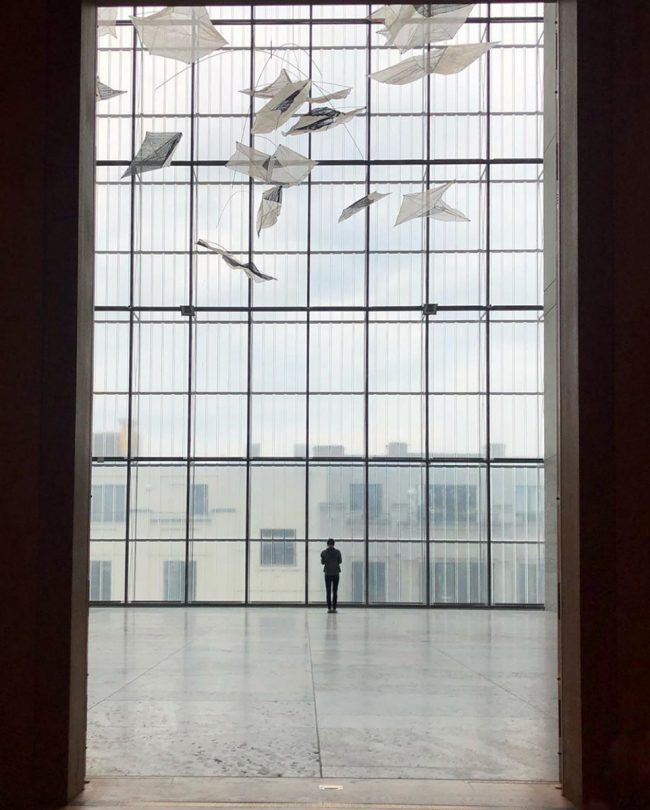
NOWS: Zero Waste at MdbK
Raul Walch: Laborant s Pause, 2018. Photo by the artist.
Zero WasteGroup exhibition at Museum der bildenden Künste Leipzig
Soft Opening: 24/06/2020, 18–21 h
–
Waste is everywhere: in the Great Pacific garbage patch, as fine particular matter in the air, or as microplastics in the food chain. The group exhibition Zero Waste showcases international positions in contemporary art that point out the urgency to save resources, consume less, and live more sustainably. In diverse installations, videos, sculptural works, and photographs the artists investigate the global consequences of plastic packaging, tire abrasion, toxic chemicals, and the overproduction of consumer goods. Zero Waste will be realized by the German Environment Agency in cooperation with the MdbK and curated by Hannah Beck-Mannagetta and Lena Fließbach.
Every day shreds from the horticultural greenhouses in southern Spain, also known as “El Mar de Plástico”, drift into the sea – Raul Walch uses these remnants as material for his expansive kinetic objects. For their video work the artist duo Irwan Ahmett & Tita Salina transferred a small fish from a polluted water in Jakarta to a crystal-clear river. Erik Sturm scrapes fine dust from window sills along heavily trafficked streets for producing paint, whereas Swaantje Güntzel’s photographs and objects illustrate the effects microplastics have in cosmetics and on marine creatures. In his laboratory Dani Ploeger experiments with manufacturers’ intentional obsolescence of electronic devices, and Eliana Heredia’s installation works with disposable products and cleaning agents.
The exhibition takes a critical look at the current condition of our planet but also aims to imagine possible solutions, encourage alternative scopes of action, and propose visions for the future. While questioning the lifestyle of the international jet set as well as the lavish use of materials in the art world, the project follows self-imposed climate-friendly rules in an attempt to make its own carbon footprint transparent and to compensate it.
Exhibiting artists: Irwan Ahmett & Tita Salina, Michel de Broin, Nadine Fecht, Vibha Galhotra, Tue Greenfort, Andreas Greiner, Swaantje Güntzel, Eliana Heredia, Bianca Kennedy & The Swan Collective, Wolf von Kries, Christoph Medicus, Klara Meinhardt, Alexander Oelofse, Kadija de Paula & Chico Togni, Dani Ploeger, Mika Rottenberg, Erik Sturm, Raul Walch
Raul Walch: Laborant s Pause, 2018. Photo by the artist.
Zero WasteGroup exhibition at Museum der bildenden Künste Leipzig
Soft Opening: 24/06/2020, 18–21 h
–
Waste is everywhere: in the Great Pacific garbage patch, as fine particular matter in the air, or as microplastics in the food chain. The group exhibition Zero Waste showcases international positions in contemporary art that point out the urgency to save resources, consume less, and live more sustainably. In diverse installations, videos, sculptural works, and photographs the artists investigate the global consequences of plastic packaging, tire abrasion, toxic chemicals, and the overproduction of consumer goods. Zero Waste will be realized by the German Environment Agency in cooperation with the MdbK and curated by Hannah Beck-Mannagetta and Lena Fließbach.
Every day shreds from the horticultural greenhouses in southern Spain, also known as “El Mar de Plástico”, drift into the sea – Raul Walch uses these remnants as material for his expansive kinetic objects. For their video work the artist duo Irwan Ahmett & Tita Salina transferred a small fish from a polluted water in Jakarta to a crystal-clear river. Erik Sturm scrapes fine dust from window sills along heavily trafficked streets for producing paint, whereas Swaantje Güntzel’s photographs and objects illustrate the effects microplastics have in cosmetics and on marine creatures. In his laboratory Dani Ploeger experiments with manufacturers’ intentional obsolescence of electronic devices, and Eliana Heredia’s installation works with disposable products and cleaning agents.
The exhibition takes a critical look at the current condition of our planet but also aims to imagine possible solutions, encourage alternative scopes of action, and propose visions for the future. While questioning the lifestyle of the international jet set as well as the lavish use of materials in the art world, the project follows self-imposed climate-friendly rules in an attempt to make its own carbon footprint transparent and to compensate it.
Exhibiting artists: Irwan Ahmett & Tita Salina, Michel de Broin, Nadine Fecht, Vibha Galhotra, Tue Greenfort, Andreas Greiner, Swaantje Güntzel, Eliana Heredia, Bianca Kennedy & The Swan Collective, Wolf von Kries, Christoph Medicus, Klara Meinhardt, Alexander Oelofse, Kadija de Paula & Chico Togni, Dani Ploeger, Mika Rottenberg, Erik Sturm, Raul Walch
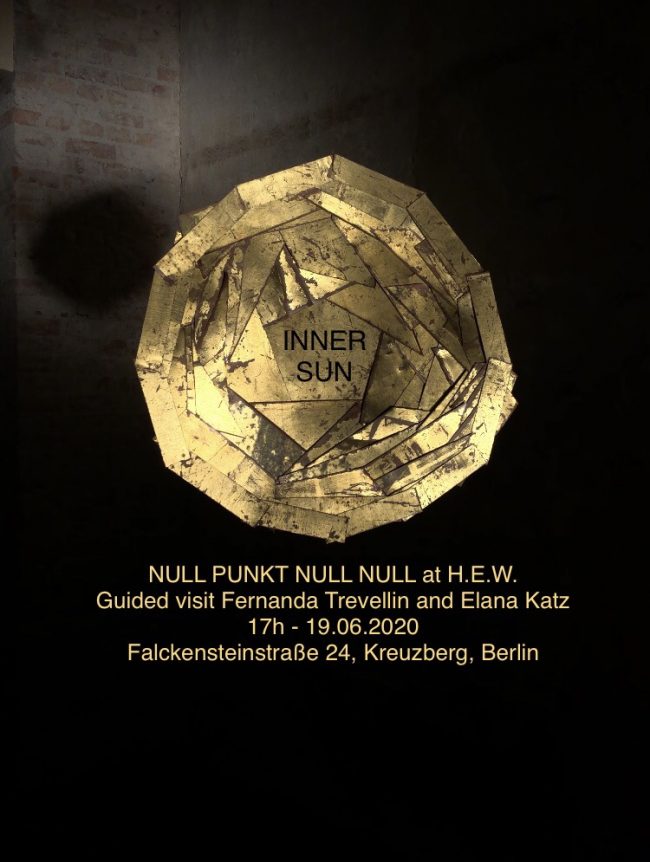
NOWs: Inner Sun by Fernanda Trevellin
Null Punkt Null Nullat H.E.W., Falckensteinstraße 24, Berlin
INNER SUN
Fernanda Trevellin
NULL PUNKT NULL NULL is a break.
and then,
to embrace what is potential,
what is already there.
to be delicate with the present.
recognise it.
and everything to start,
with pleasure,
again.
–
Null Punkt Null Nullat H.E.W., Falckensteinstraße 24, Berlin
INNER SUN
Fernanda Trevellin
NULL PUNKT NULL NULL is a break.
and then,
to embrace what is potential,
what is already there.
to be delicate with the present.
recognise it.
and everything to start,
with pleasure,
again.
–
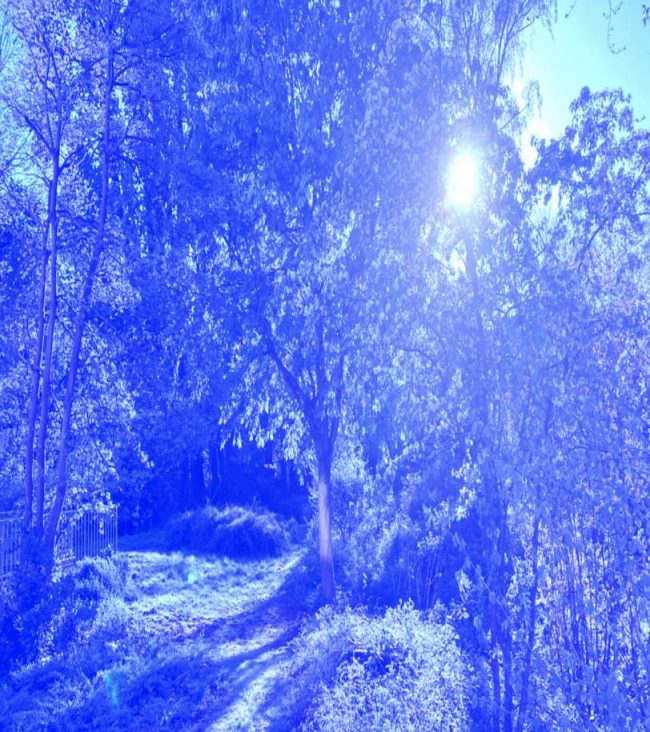
NOWs: Garten der Gegenwart
Garten der GegenwartSommerausstellung in Hamburg
Jeder neue Tag hat zwei Griffe.
Wir können ihn am Griff der Ängstlichkeit oder am Griff der Zuversicht halten.
(H. Beecher, 1813-1887)
–
Statt ihrem “Salon der Gegenwart” veranstalten Margarita und Christian Holle dieses Jahr Corona-bedingt den “Garten der Gegenwart”: Fast 30 Künstler zeigen in Harvestehude ihre Werke.
–
Die Adresse:
Garten der Gegenwart
Rothenbaumchaussee 145
20149 Hamburg
–
Künstler und Künstlerinnen:
Nevin Aladag, Christian Awe, Tjorg Douglas Beer, Matthias Bitzer, Jonas Burgert, Claudia Comte, Jose Dávila, Henrik Eiben, Jeppe Hein, Gregor Hildebrandt, Fabian Knecht, Lilia Kovka, Gerold Miller, Paul Morrison, Timo Nasseri, Anselm Reyle, Hoda Tawakol
–
Fabian Knecht: Bruch 3 (studio view), Bronze, 123 x 34 x 34 cm, 2019
Garten der GegenwartSommerausstellung in Hamburg
Jeder neue Tag hat zwei Griffe.
Wir können ihn am Griff der Ängstlichkeit oder am Griff der Zuversicht halten.
(H. Beecher, 1813-1887)
–
Statt ihrem “Salon der Gegenwart” veranstalten Margarita und Christian Holle dieses Jahr Corona-bedingt den “Garten der Gegenwart”: Fast 30 Künstler zeigen in Harvestehude ihre Werke.
–
Die Adresse:
Garten der Gegenwart
Rothenbaumchaussee 145
20149 Hamburg
–
Künstler und Künstlerinnen:
Nevin Aladag, Christian Awe, Tjorg Douglas Beer, Matthias Bitzer, Jonas Burgert, Claudia Comte, Jose Dávila, Henrik Eiben, Jeppe Hein, Gregor Hildebrandt, Fabian Knecht, Lilia Kovka, Gerold Miller, Paul Morrison, Timo Nasseri, Anselm Reyle, Hoda Tawakol
–
Fabian Knecht: Bruch 3 (studio view), Bronze, 123 x 34 x 34 cm, 2019
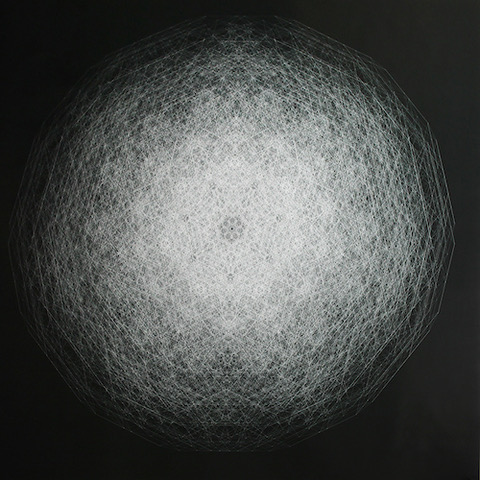
NOWs: Your country of two dimensions is not spacious enough. Limits of Perception Lab. By Ivana Franke
Ivana Franke. Planetary Nebula, World t012345_A6_0, 2019. Photo Martina Mihaljevic
Your country of two dimensions is not spacious enough. Limits of Perception Lab by Ivana Franke
at
SAAVY Contemporary, Berlin
Entrance; Plantagenstraße 31
–
OPEN LAB, EXHIBITION, EXPERIMENTS
18.06.–28.06.2020
Tuesday–Sunday
14:00–19:00
Open to the public (max of 15 people in the gallery at same time), visitors wanting to participate in the experiments should register HERE
ONLINE INVOCATIONS
21.06.2020
18:00–20:00
WITH Jarita Holbrook, Taita Juan Martín Jamioy Juajibio, Juan-Andres Leon, Sangeetha Menon, Ida Momennejad, Monica Narula, Lisa Randall, Tomas Saraceno, Sunčica Ostojić
SATELLITE EVENT: DREAMSCAPE #1
18.06.–28.06.2020
WITH Israel Lopez
In the Limits Lab in Berlin-Moabit – Open to the public by appointment HERE
…your country of Two Dimensions is not spacious enough to represent me, a being of Three, but can only exhibit a slice or section of me, which is what you call a Circle. – Edwin Abbott Abbott.1884. Flatland: A Romance of Many Dimensions
For one week, SAVVY Contemporary transforms itself into the LIMITS OF PERCEPTION LAB, a hybrid of an artist studio and a scientific laboratory, using multidisciplinary methodologies to study experience and as a means of knowledge disruption and production. [2] It is grounded in artistic practice within an extended context, drawing from and working with practitioners from the fields of cognitive and vision science, neuroscience, experimental psychology, mathematics, and architecture while being in conversation with critical practitioners from the fields of humanities, including but not limited to art history, history of science, and philosophy.
The project serves an experimental phase of a long-term platform for investigation of perceptual limits as potential sites of social transformation. This materialization of the open lab at SAVVY Contemporary focuses on perception and imaginations of extra dimensions.
The SAVVY Contemporary iteration of LIMITS OF PERCEPTION LAB concerns itself with limits of perception and epistemological categories, including Western definitions and how they shape the ways in which we are taught to think, feel, and rationalise our sensing of ourselves and the world. Ivana Franke’s work probes possibilities of approaching consciousness in “a multidimensional way,” [3] seeking means of affirming our imaginations beyond already known categories and habituated ways of perceiving – going beyond what Harvard physicist Lisa Randall calls the “pervasive but quite possibly mistaken assumption that we live in a three-dimensional world.” The weeklong exhibition and laboratory installed at SAVVY Contemporary materialises as a zone to provide experience in which to question the habitual ways of seeing and knowing in three-dimensional environments.
Visitors are invited to navigate the gallery space transformed into an open studio, and to engage with spaces of darkness, epiphanies of lights, visual quandaries and thought experiments. In addition to the public experiments, a discursive programme and a radio broadcast will address Western scientific assumptions about consciousness and the limits of perception. The project connects to and draws upon SAVVY Contemporary’s programme THE INVENTION OF SCIENCE and its long-term explorations and challenges of the frailties and fallacies of objective scientific knowledge.
The laboratory problematises the potential of “epistemological ruptures” that break with “normal science” [4] and evokes experiences to challenge existing common modes of knowledge-production, to question the “hegemonic assertions of Enlightenment ideals of the liberal white male subject,” [5] to crack open preconceived ideas of reality, and to lend it other dimensions that are decidedly fictitious, imaginary, and cosmic.
We concern ourselves with a set of questions: What is an experience and what conditions it? How does the meaning from the experience itself? How does cultural embeddedness influence perception and cognition of experience?
Every single view from within speaks the truth about its own reality. It is irreplaceable, so invaluable, and equally valid as all others are. Experiencer’s experience holds the power to subjective truth. Disrupting the Cartesian tradition of placing mind over matter, and interrupting the idea of the “liberal subject, represented as having a body, but not being a body,” as Alexander G. Weheliye states, the experiments also grapple with redrafting the hegemonic Western version of personhood, and engage with “inscriptions of humanity” … “that always incorporate their own multiplicities, as opposed to mere uncritical echoes of the white liberal humanist subject.” [6]
This project engages with scientists alongside indigenous, non-Western and non-positivist modes of investigating human consciousness. It reflects on lived experiences, which combine first and third-person perspectives, while suggesting new ways of sharing them. This opens possibilities for producing and disseminating knowledge in an unterritorialized, non-hierarchical, multidimensional, and more-than-human future planetary imagination.
–
OPEN LAB
Visitors are invited into an archive of scientific papers, literary pieces, filled questionnaires, sketched analysis of data, drawings and dreamscapes shared by subjects experiencing the exhibition. An exercise to probe the limits of our perception and imagination follow.
INSTALLATIONS BY Ivana Franke
Within the installation We close our eyes and see a flock of birds: we sit in the middle of a cylindrical room and are invited to close our eyes. We are exposed to a flickering light which gives rise to a quasi-hallucinatory visual experience of moving images behind our closed eyes. A shimmering of colours, patterns, shapes, or figures in motion happen in our heads, making us see a stream of images: birds flying, people passing by, circles and spirals swirling and whatever else one can imagine. Each person “constructs” their very own “movie”, a possible reminiscence of something long forgotten or closeby.
We are also asked to enter From The Faraway Past and From The Future: we perceive a dark space where the only thing visible are thin curved lines floating in the air, at eye level. Slowly, circular shapes start to emerge, flowing in different directions. Decontextualized specular highlights move according to the viewer’s individual movements; the unknown “object” starts to overlap, merge, shrink, expand, appear and disappear, bustling in unexpected directions, changing its shape, size and position. These curious constitutions seem to extend deep into the space, only to come back towards us in rolling motion. Our brains cannot measure what they perceive, we can only guess, speculate, imagine and try to find the coordinates.
EXPERIMENTS
After being exposed to flickering light in the first installation, participants are asked to fill a version of 5D-ASC, 5-Dimensional Altered State of Consciousness: a questionnaire to explore measures of subjective qualities of non-ordinary waking states. Following the experience of darkness in the second installation, participants are handed questionnaires inquiring about their perceptual experiences and cognitive processes – with focus on experience of spatial dimensions and interpretation of spatial concepts.
ONLINE INVOCATIONS 21.06.2020 14:00–20:00
WITH Jarita Holbrook, Taita Juan Martín Jamioy Juajibio, Juan-Andres Leon, Sangeetha Menon, Ida Momennejad, Monica Narula, Lisa Randall, Tomas Saraceno, Sunčica Ostojić, and others
A number of thinkers will examine the concept of multidimensionality within their respective disciplines and reflect on its significance as a transformative force for production and dissemination of knowledge in unterritorialized, non-hierarchical, multidimensional future world.
SATELLITE EVENT: DREAMSCAPE #1 18.06.–28.06.2020
WITH Israel Lopez
Dreamscape #1 is an installation that aims to stage a dream. The installation works based on sensory manipulation, by which a flat is staged as a place to tune down, isolate, and calibrate the sensory system in preparation for the sleepstate. Dreamscape #1 is a composition for closed eyes, is an offer of self space and an attempt to modulate the ways in which we create spatial relations.
The flat will be open for several visitors every day after a previous appointment, each occupying the flat alone.
CURATOR Elena Agudio
CO-CURATOR Kelly Krugman
ARTISTIC DIRECTION Bonaventure Soh Bejeng Ndikung
PRODUCTION Kimani Joseph
MANAGEMENT Lema Sikod
COMMUNICATIONS Anna Jäger
LIVE-STREAM Boiling Head Media
LAB COLLABORATORS Israel Lopez, Dora Sribar
THANKS to Elena Agudio, Bilge Sayim, Ida Momennejad, Heike Catherina Mertens, Katja Naie, Hannah Hurzig, Tomas Saraceno, Natalija Miodragović, Philipp Dreyer, Olafur Eliasson, Mathias Sohr, Sunčica Ostojić, Martina Kramer, Pierre Gallais, Etienne Ghys, Oliviere Varenne, Sandra Aračić, Tanja Cvetko, Elena Chronopolou, Frank Spenling, Stephan Spenling, Johann Klaphake, Israel Lopez, Alexandre Mballa Ekobena, Dora Šribar, Vedran Franke.
SUPPORT The project is supported by the Ministry of Culture of Republic of Croatia, part of the program Croatian presidency of the Council of the European Union
–
1 “When we widen our horizon to include transformative approaches to experience, especially those concerned not with escape from the world or the discovery of some hidden, true self but with releasing the everyday world from the clutches of the grasping mind and its desire for an absolute ground, we gain a sense of perspective on the world that might be brought forth by learning to embody groundlessness as compassion in a scientific culture.” Varela, Francisco J., et al. 2016. The Embodied Mind: Cognitive Science and Human Experience. The MIT Press.
2 Artworks or artist-devised tools are employed to create settings for conducting experiments and developing questionnaires in collaboration with cognitive scientists for subjective reports – including verbal and visual descriptions, and quantitative measures. One of the experiments at SAVVY Contemporary employs flickering light and standardised 5D-ASC rating scale.
3 Tim Bayne and Olivia Carter. 2018. “Dimensions of Consciousness and the Psychedelic State.” in: Neuroscience of Consciousness.
4 Thomas S. Kuhn and Ian Hacking. 2012. The Structure of Scientific Revolution. University Of Chicago Press.
5 Ibid 7.
6 Alexander G. Weheliye, 2002. “‘Feenin’: Posthuman Voices in Contemporary Black Popular Music“ in Social Text, 71 (Volume 20, Number 2), Summer 2002, 21-47, Duke University Press.
Ivana Franke. Planetary Nebula, World t012345_A6_0, 2019. Photo Martina Mihaljevic
Your country of two dimensions is not spacious enough. Limits of Perception Lab by Ivana Franke
at
SAAVY Contemporary, Berlin
Entrance; Plantagenstraße 31
–
OPEN LAB, EXHIBITION, EXPERIMENTS
18.06.–28.06.2020
Tuesday–Sunday
14:00–19:00
Open to the public (max of 15 people in the gallery at same time), visitors wanting to participate in the experiments should register HERE
ONLINE INVOCATIONS
21.06.2020
18:00–20:00
WITH Jarita Holbrook, Taita Juan Martín Jamioy Juajibio, Juan-Andres Leon, Sangeetha Menon, Ida Momennejad, Monica Narula, Lisa Randall, Tomas Saraceno, Sunčica Ostojić
SATELLITE EVENT: DREAMSCAPE #1
18.06.–28.06.2020
WITH Israel Lopez
In the Limits Lab in Berlin-Moabit – Open to the public by appointment HERE
…your country of Two Dimensions is not spacious enough to represent me, a being of Three, but can only exhibit a slice or section of me, which is what you call a Circle. – Edwin Abbott Abbott.1884. Flatland: A Romance of Many Dimensions
For one week, SAVVY Contemporary transforms itself into the LIMITS OF PERCEPTION LAB, a hybrid of an artist studio and a scientific laboratory, using multidisciplinary methodologies to study experience and as a means of knowledge disruption and production. [2] It is grounded in artistic practice within an extended context, drawing from and working with practitioners from the fields of cognitive and vision science, neuroscience, experimental psychology, mathematics, and architecture while being in conversation with critical practitioners from the fields of humanities, including but not limited to art history, history of science, and philosophy.
The project serves an experimental phase of a long-term platform for investigation of perceptual limits as potential sites of social transformation. This materialization of the open lab at SAVVY Contemporary focuses on perception and imaginations of extra dimensions.
The SAVVY Contemporary iteration of LIMITS OF PERCEPTION LAB concerns itself with limits of perception and epistemological categories, including Western definitions and how they shape the ways in which we are taught to think, feel, and rationalise our sensing of ourselves and the world. Ivana Franke’s work probes possibilities of approaching consciousness in “a multidimensional way,” [3] seeking means of affirming our imaginations beyond already known categories and habituated ways of perceiving – going beyond what Harvard physicist Lisa Randall calls the “pervasive but quite possibly mistaken assumption that we live in a three-dimensional world.” The weeklong exhibition and laboratory installed at SAVVY Contemporary materialises as a zone to provide experience in which to question the habitual ways of seeing and knowing in three-dimensional environments.
Visitors are invited to navigate the gallery space transformed into an open studio, and to engage with spaces of darkness, epiphanies of lights, visual quandaries and thought experiments. In addition to the public experiments, a discursive programme and a radio broadcast will address Western scientific assumptions about consciousness and the limits of perception. The project connects to and draws upon SAVVY Contemporary’s programme THE INVENTION OF SCIENCE and its long-term explorations and challenges of the frailties and fallacies of objective scientific knowledge.
The laboratory problematises the potential of “epistemological ruptures” that break with “normal science” [4] and evokes experiences to challenge existing common modes of knowledge-production, to question the “hegemonic assertions of Enlightenment ideals of the liberal white male subject,” [5] to crack open preconceived ideas of reality, and to lend it other dimensions that are decidedly fictitious, imaginary, and cosmic.
We concern ourselves with a set of questions: What is an experience and what conditions it? How does the meaning from the experience itself? How does cultural embeddedness influence perception and cognition of experience?
Every single view from within speaks the truth about its own reality. It is irreplaceable, so invaluable, and equally valid as all others are. Experiencer’s experience holds the power to subjective truth. Disrupting the Cartesian tradition of placing mind over matter, and interrupting the idea of the “liberal subject, represented as having a body, but not being a body,” as Alexander G. Weheliye states, the experiments also grapple with redrafting the hegemonic Western version of personhood, and engage with “inscriptions of humanity” … “that always incorporate their own multiplicities, as opposed to mere uncritical echoes of the white liberal humanist subject.” [6]
This project engages with scientists alongside indigenous, non-Western and non-positivist modes of investigating human consciousness. It reflects on lived experiences, which combine first and third-person perspectives, while suggesting new ways of sharing them. This opens possibilities for producing and disseminating knowledge in an unterritorialized, non-hierarchical, multidimensional, and more-than-human future planetary imagination.
–
OPEN LAB
Visitors are invited into an archive of scientific papers, literary pieces, filled questionnaires, sketched analysis of data, drawings and dreamscapes shared by subjects experiencing the exhibition. An exercise to probe the limits of our perception and imagination follow.
INSTALLATIONS BY Ivana Franke
Within the installation We close our eyes and see a flock of birds: we sit in the middle of a cylindrical room and are invited to close our eyes. We are exposed to a flickering light which gives rise to a quasi-hallucinatory visual experience of moving images behind our closed eyes. A shimmering of colours, patterns, shapes, or figures in motion happen in our heads, making us see a stream of images: birds flying, people passing by, circles and spirals swirling and whatever else one can imagine. Each person “constructs” their very own “movie”, a possible reminiscence of something long forgotten or closeby.
We are also asked to enter From The Faraway Past and From The Future: we perceive a dark space where the only thing visible are thin curved lines floating in the air, at eye level. Slowly, circular shapes start to emerge, flowing in different directions. Decontextualized specular highlights move according to the viewer’s individual movements; the unknown “object” starts to overlap, merge, shrink, expand, appear and disappear, bustling in unexpected directions, changing its shape, size and position. These curious constitutions seem to extend deep into the space, only to come back towards us in rolling motion. Our brains cannot measure what they perceive, we can only guess, speculate, imagine and try to find the coordinates.
EXPERIMENTS
After being exposed to flickering light in the first installation, participants are asked to fill a version of 5D-ASC, 5-Dimensional Altered State of Consciousness: a questionnaire to explore measures of subjective qualities of non-ordinary waking states. Following the experience of darkness in the second installation, participants are handed questionnaires inquiring about their perceptual experiences and cognitive processes – with focus on experience of spatial dimensions and interpretation of spatial concepts.
ONLINE INVOCATIONS 21.06.2020 14:00–20:00
WITH Jarita Holbrook, Taita Juan Martín Jamioy Juajibio, Juan-Andres Leon, Sangeetha Menon, Ida Momennejad, Monica Narula, Lisa Randall, Tomas Saraceno, Sunčica Ostojić, and others
A number of thinkers will examine the concept of multidimensionality within their respective disciplines and reflect on its significance as a transformative force for production and dissemination of knowledge in unterritorialized, non-hierarchical, multidimensional future world.
SATELLITE EVENT: DREAMSCAPE #1 18.06.–28.06.2020
WITH Israel Lopez
Dreamscape #1 is an installation that aims to stage a dream. The installation works based on sensory manipulation, by which a flat is staged as a place to tune down, isolate, and calibrate the sensory system in preparation for the sleepstate. Dreamscape #1 is a composition for closed eyes, is an offer of self space and an attempt to modulate the ways in which we create spatial relations.
The flat will be open for several visitors every day after a previous appointment, each occupying the flat alone.
CURATOR Elena Agudio
CO-CURATOR Kelly Krugman
ARTISTIC DIRECTION Bonaventure Soh Bejeng Ndikung
PRODUCTION Kimani Joseph
MANAGEMENT Lema Sikod
COMMUNICATIONS Anna Jäger
LIVE-STREAM Boiling Head Media
LAB COLLABORATORS Israel Lopez, Dora Sribar
THANKS to Elena Agudio, Bilge Sayim, Ida Momennejad, Heike Catherina Mertens, Katja Naie, Hannah Hurzig, Tomas Saraceno, Natalija Miodragović, Philipp Dreyer, Olafur Eliasson, Mathias Sohr, Sunčica Ostojić, Martina Kramer, Pierre Gallais, Etienne Ghys, Oliviere Varenne, Sandra Aračić, Tanja Cvetko, Elena Chronopolou, Frank Spenling, Stephan Spenling, Johann Klaphake, Israel Lopez, Alexandre Mballa Ekobena, Dora Šribar, Vedran Franke.
SUPPORT The project is supported by the Ministry of Culture of Republic of Croatia, part of the program Croatian presidency of the Council of the European Union
–
1 “When we widen our horizon to include transformative approaches to experience, especially those concerned not with escape from the world or the discovery of some hidden, true self but with releasing the everyday world from the clutches of the grasping mind and its desire for an absolute ground, we gain a sense of perspective on the world that might be brought forth by learning to embody groundlessness as compassion in a scientific culture.” Varela, Francisco J., et al. 2016. The Embodied Mind: Cognitive Science and Human Experience. The MIT Press.
2 Artworks or artist-devised tools are employed to create settings for conducting experiments and developing questionnaires in collaboration with cognitive scientists for subjective reports – including verbal and visual descriptions, and quantitative measures. One of the experiments at SAVVY Contemporary employs flickering light and standardised 5D-ASC rating scale.
3 Tim Bayne and Olivia Carter. 2018. “Dimensions of Consciousness and the Psychedelic State.” in: Neuroscience of Consciousness.
4 Thomas S. Kuhn and Ian Hacking. 2012. The Structure of Scientific Revolution. University Of Chicago Press.
5 Ibid 7.
6 Alexander G. Weheliye, 2002. “‘Feenin’: Posthuman Voices in Contemporary Black Popular Music“ in Social Text, 71 (Volume 20, Number 2), Summer 2002, 21-47, Duke University Press.
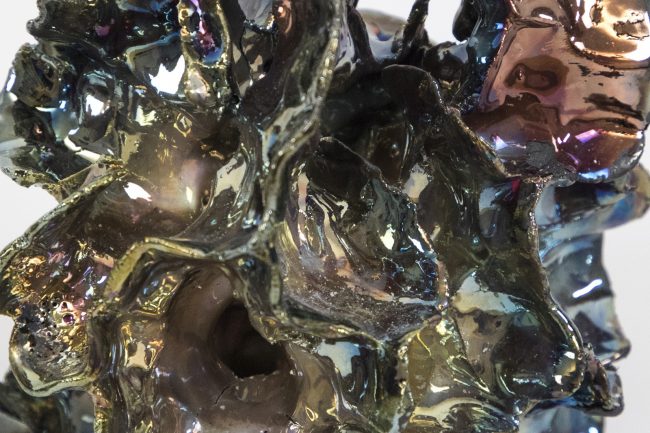
NOWs: ONLY by Jonas Wendelin
ONLYsolo exhibition by Jonas Wendelin
Dittrich & Schlechtriem
Linienstrasse 23
10178 Berlin
DITTRICH & SCHLECHTRIEM is pleased to present the first solo exhibition with JONAS WENDELIN (b. Düsseldorf, DE, 1985) in our gallery, titled ONLY, on view from Monday, 15 June, through Saturday, 29 August, 2020.
The exhibition was originally scheduled to open as part of Gallery Weekend Berlin 2020. Due to the lockdown in Los Angeles, the artist could not travel to Europe and the works could not be shipped to Berlin. The show was substantially conceived in 2019.
For his first solo show ONLY at the gallery, Wendelin deconstructs the actual and symbolic context of the gallery, exposing its methodologies through a fictive architectural installation and aligning strands of his thinking into a narrative spanning from conceptual found objects to the visceral physicality of his ceramics practice. ONLY engages the public in an alternative reality, pursuing an organic futuristic narrative of idealism and leaving the viewer with hope in dystopia.
An ecology held together by stories needs people to hear them and retell them. But how do these tales disintegrate without an audience? And without civilization to know the difference between natural matter and cultural objects, how might these things take on or leave behind lives of their own? Wendelin’s question is: “When we leave or vanish, how will the dust settle? If we return, what new traces will be found?”
He stages these questions in the form of a scene. The exhibition is set in a gallery concealed by broadsheets posted over its windows. These are pages of a publication commissioned and edited by the artist called THE ALLUSION, whose contributors have offered “fictions on fiction” that dissect conceits of the show while also propagating them.THE ALLUSION is produced in collaboration with multiple artists, architects, writers, and journalists and describes an entry to this illusion of abandonment. Through the juxtaposed, overlapping, and contradicting contributions, it aims to limn perspectives examining these tools of contemporary fiction. The involvement of different voices raises the question of individual agency and opens gateways toward shaping a shared evaluation of objects and belief systems.
The inside of the exhibition suggests the aftermath of some progress-halting event. Wandering among empty workstations through the stripped gallery, one can see that files and business machines have been replaced with jars of preserved foods predating the internet. Some are from the Chernobyl era, artifacts of times shaped by disaster, and in response, by the physical limitations of bodies and of resources like these. Wendelin presents them here as readymades and as bunker decor, items that might be found in a place where survivors subsist waiting for history to restart its engine.
Dozens of organic, aqueous forms are littered around the galleries themselves. These are ceramic artworks made by Wendelin titled ONLY ONE, TWO, THREE … counting upwards in numeric evolution. Despite their raw contours and appearance of natural proliferation throughout the space, these are hand-pinched and deliberately placed sculptures. Here as thousands of years ago, they are the product of ritualistic methods, the practice of which could be thought to hold some part of the time concentrated within their making. Their abyssal lusters are the result of a chemical-induced glazing technique called raku. To achieve these, the sculptures are removed from the kiln at their peak temperature of more than 1800 degrees and placed in metal containers full of paper that combusts upon contact. The resulting carbon compounds extract otherworldly colors from the suffocated glazes. Charred remnants of paper appear in traces around the sculptures. In their virgin form they are pages from the publication pasted in the gallery windows, which have also been placed in geometric stacks throughout the exhibition to be taken.
Additionally, stored up in shelves, are customized preserves from the last decades dating back to 1945, pre-internet or -Chernobyl. These objects assemble a sentiment or timeline of technology in the early stages of our kind, to the enhancements leading up to our way of life today, with generational differences widening more than ever as it accelerates. The shift in consumption laid the foundations for our technological revolutions, elevated our consciousness to experimentation, and refocused our attention to develop increasingly complex social structures. These objects are reminders of a world prior to our human-centric sphere.
The above contains excerpts from the press text of Kevin McGarry, published in THE ALLUSION.
Jonas Wendelin currently works between Los Angeles and Berlin. His work includes performance, sculpture, installation, studies in traditional ceramics, as well as the facilitation of cultural spaces, initiating, cultivating, and directing a social vision that queries cultural abetments. Wendelin is a co- founder and director of FRAGILE, a multi-disciplinary nonprofit project for contemporary artistic practices located in Berlin. FRAGILE encompasses an exhibition and a residency space, and fosters a program of conversation, antagonism, renegotiation, and celebration. He is also a co- founder of NAVEL, a community-driven nonprofit residency, learning platform, and self-defined test site for collectivity and creative practices in downtown Los Angeles. Wendelin graduated as Hito Steyerl’s Meisterschüler from the Berlin University of the Arts and was a participant at Olafur Eliasson’s Institut für Raumexperimente (Institute for Spatial Experiments). Wendelin was an artist in residence at the American Museum Of Ceramics Art, AMOCA in Pomona, California. His work has been shown at Hamburger Bahnhof— Museum für Gegenwart, Berlin; KW Institute for Contemporary Art, Berlin; MoMA PS1, New York; Neue Nationalgalerie, Berlin; The Storefront for Art and Architecture, New York; and NAVEL, Los Angeles.
For further information on the artist and the works or to request images, please contact Nils Petersen, nils(at)dittrich-schlechtriem.com.
ONLYEinzelausstellung von Jonas Wendelin
DITTRICH & SCHLECHTRIEM freuen sich, die erste Einzelausstellung von JONAS WENDELIN (geb. Düsseldorf, DE, 1985) in unserer Galerie zu präsentieren. Die Schau mit dem Titel ONLY wird ab Montag, dem 15. Juni bis zum 29. August zu besichtigen sein.
Die Ausstellung sollte ursprünglich im Rahmen des Gallery Weekend Berlin 2020 eröffnen. Aufgrund des Lockdowns in Los Angeles konnte sowohl der Künstler als auch seine Werke nicht nach Europa reisen. Die inhaltliche Auseinandersetzung der Ausstellung wurde schon im Jahr 2019 konzipiert.
Für seine Ausstellung ONLY dekonstruiert Wendelin den tatsächlichen und symbolischen Kontext der Galerie, legt deren Methodik durch eine fiktive Architekturinstallation offen und verflicht verschiedene Stränge seines Denkens zu einer Erzählung, die von konzeptuellen gefundenen Objekten bis zur handfesten Körperlichkeit seiner Keramikpraxis reicht. Die Ausstellung ONLY bezieht die Besucher in eine alternative architektonische Realität ein, verfolgt eine organische futuristische Erzählung des Idealismus und lässt den Betrachter mit Hoffnung in der Dystopie zurück.
Ein von Geschichten zusammengehaltenes Ökosystem braucht Menschen, die sie hören und nacherzählen. Wie aber vollzieht sich die Auflösung dieser Geschichten, wenn es kein Publikum für sie gibt? Und wenn keine Zivilisation mehr den Unterschied zwischen Naturstoff und Kulturgegenstand kennt, wie könnte das Eigenleben aussehen, das diese Dinge dann womöglich annähmen oder hinterließen? Wendelin formuliert es so: „Wenn wir weggehen oder verschwinden, wie wird der Staub sich legen? Wenn wir zurückkehren, welche neuen Spuren werden wir vorfinden?“
Diese Fragen setzt er in der Ausstellung in Szene. Die Fenster der Galerie sind mit großformatigen bedruckten Seiten zugehängt, die aus einer vom Künstler herausgegebenen Publikation mit dem Titel THE ALLUSION stammen. Die Autoren, die er dafür einlud, steuerten „Fiktionen über Fiktion“ bei, die die Ideen hinter der Schau auseinandernehmen, aber auch weitertragen.
THE ALLUSION ist in Zusammenarbeit mit mehreren Künstlern, Architekten, Schriftstellern und Journalisten entstanden und beschreibt einen Einstieg in jene Illusion der Verlassenheit. Durch die nebeneinanderstehenden, sich überschneidenden und einander widersprechenden Beiträge sollen Perspektiven einer Auseinandersetzung mit diesen Werkzeugen der zeitgenössischen Fiktion entworfen werden. Die Einbeziehung verschiedener Stimmen wirft die Frage nach der individuellen Handlungsmacht auf und öffnet Wege zur Gestaltung einer gemeinsamen Bewertung von Objekten und Glaubenssystemen.
Die Szene im Inneren der Galerie wirkt, als habe ein unerwartetes Ereignis den Betrieb zum Erliegen gebracht. Die Arbeitsplätze sind verwaist, die Räumlichkeiten weitgehend leer; statt Aktenschränken und Bürogeräten finden sich Nahrungsmittel in Einmachgläsern, die älter sind als das Internet – manche stammen aus der Zeit von Tschernobyl, Artefakte, in die sich die Katastrophe und die Grenzen von Körpern und Ressourcen wie diesen in der Reaktion auf sie eingeschrieben haben. Wendelin zeigt sie hier als Readymades und Bunkerausstattung, wie sie an einem Ort zu finden sein mögen, wo Überlebende ausharren, bis das Räderwerk der Geschichte sich wieder in Bewegung setzt.
Dutzende wässrig-organischer Gestalten sind über die Räume der Galerie verteilt: Keramiken von Wendelin mit den Titeln ONLY ONE, TWO, THREE … und so weiter in numerischer Reihung. Trotz ihrer rohen Konturen und dem Anschein einer Art natürlichen Ausbreitung im Raum handelt es sich um von Hand in Form gepresste und sorgfältig angeordnete Skulpturen. Hier wie vor tausenden Jahren sind sie Früchte ritueller Verfahren, in deren Ausübung man sich etwas von der Zeit, die in ihrer Herstellung verdichtet wurde, aufgespeichert denken mag. Ihr abgründiges Schimmern verdanken sie einer durch chemische Zugaben herbeigeführten Glasurtechnik namens Raku. Dazu werden die Skulpturen dem auf eine Maximaltemperatur von über 1800 Grad erhitzten Brennofen entnommen und in Metallbehälter gelegt, die mit Papier gefüllt sind, das bei der Berührung in Flammen aufgeht. Die entstehenden Kohlenstoffverbindungen entlocken den erstickten Glasuren überirdische Farben. Spuren von verkohlten Papierschnipseln sind um die Skulpturen herum zu erkennen. In unversehrter Form waren es Seiten aus der Publikation auf den Galeriefenstern; weitere Exemplare liegen in der Ausstellung in geometrischen Stapeln zum Mitnehmen aus.
In Regalen aufgestellte scheinbar aufbewahrte individuell gestaltete Artefakte aus den letzten Jahrzehnten zurück bis 1945, aus der Zeit vor dem Internet und Tschernobyl, bieten einen Eindruck oder eine Zeitleiste der Technologie in den frühen Stadien unserer Art bis hin zu den Neuentwicklungen, die zu unserer heutigen Lebensweise führen, wobei die Generationsunterschiede mehr denn je zunehmen, je schneller sie fortschreitet. Der Wandel des Konsums hat die Grundlagen für unsere technologischen Revolutionen gelegt, unser Bewusstsein auf die Stufe des Experimentierens gehoben, die in der frühen Menschheit begann, und unsere Aufmerksamkeit bewusst auf die Entwicklung unserer immer komplexeren sozialen Strukturen ausgerichtet. Diese Objekte erinnern an eine Welt vor der unseren, in der der Mensch im Mittelpunkt steht.
Diese Ausführungen stammen von Kevin McGarry, welcher einen Pressetext für THE ALLUSION verfassen hat.
Jonas Wendelin arbeitet derzeit in Los Angeles und Berlin. Sein Werk umfasst Performances, Skulpturen, Installationen, Studien zur traditionellen Keramik sowie die Moderation kultureller Räume; er initiiert, fördert und entwickelt eine gesellschaftliche Vision, die kulturelle Routinen hinterfragt. Wendelin ist Mitbegründer und Leiter von FRAGILE, eines multidisziplinären Nonprofit-Projekts für zeitgenössische künstlerische Praxen in Berlin, das einen Ausstellungs- und ein „Artist in Residence“ für eingeladene Künstler umfasst und Gesprächen, Auseinandersetzungen, Neuverhandlungen und Festivitäten Raum gibt. Außerdem ist er Mitbegründer von NAVEL, einer gemeinschaftlich betriebenen Nonprofit-Organisation in Downtown Los Angeles, die Künstleraufenthalte ermöglicht, eine Lernplattform betreibt und sich als Testgelände für Kollektivität und kreative Praxen versteht. Wendelin war Hito Steyerls Meisterschüler an der Berliner Universität der Künste, Teilnehmer an Olafur Eliassons Institut für Raumexperimente und „Artist in Residence“ in American Museum Of Ceramics Art, AMOCA in Pomona, Kalifornien. Seine Arbeiten waren im Hamburger Bahnhof – Museum für Gegenwart, Berlin, im KW Institute for Contemporary Art, Berlin, im MoMA PS1, New York, in der Neuen Nationalgalerie, Berlin, und bei The Storefront for Art and Architecture, New York, und NAVEL, Los Angeles, zu sehen.
Für weitere Informationen zum Künstler und den Arbeiten und für Bildanfragen wenden Sie sich bitte an Nils Petersen, nils(at)dittrich-schlechtriem.com.
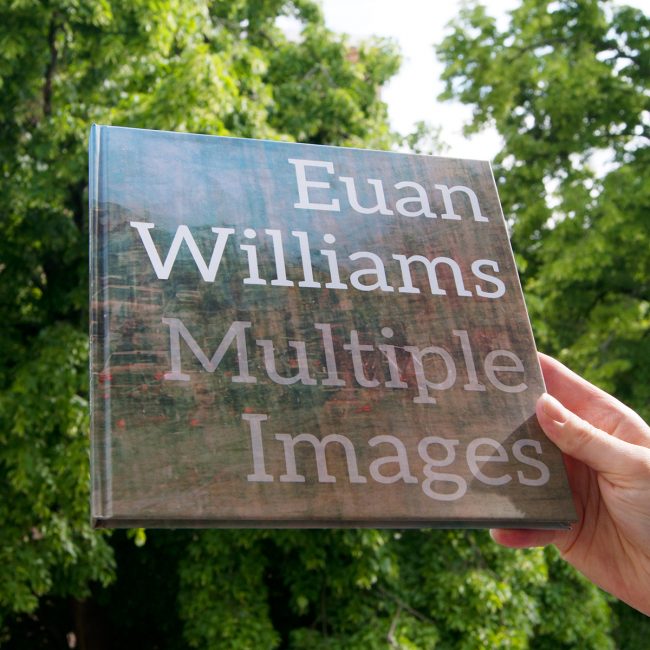
NOWs: Multiple Images by Euan Williams
Euan Williams: Multiple ImagesCatalogue with text by Lena Fließbach
The catalogue Multiple Images encapsulates the variety and development of Euan Williams’s 10 year photographic series Collapse. Rebuilding analogue cameras so that they expose images on the same part of the negative – Williams condenses walked journeys through urban and natural landscapes into a single image. A flattening of time and space. With an accompanying text by Lena Fließbach, the clinical and repetitive methodology is explored alongside the process’s painterly and impressionistic results. Multiple Images is a thorough survey of the entire Collapse series to date.
–
Euan Williams: Multiple ImagesCatalogue with text by Lena Fließbach
The catalogue Multiple Images encapsulates the variety and development of Euan Williams’s 10 year photographic series Collapse. Rebuilding analogue cameras so that they expose images on the same part of the negative – Williams condenses walked journeys through urban and natural landscapes into a single image. A flattening of time and space. With an accompanying text by Lena Fließbach, the clinical and repetitive methodology is explored alongside the process’s painterly and impressionistic results. Multiple Images is a thorough survey of the entire Collapse series to date.
–
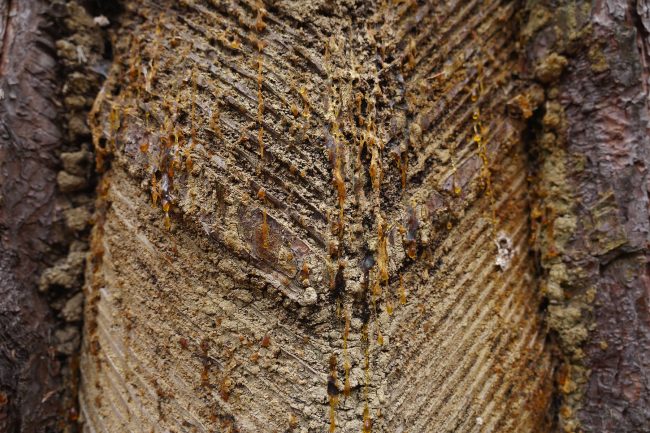
NOWs: Asako Iwama’s Pinocchio at Things Entangling. A collaboration between MOT and KADIST
photos: Asako Iwama
Things EntanglingA collaboration between MOT and KADIST
The Museum of Contemporary Art Tokyo and KADIST present the exhibition Things Entangling, the culmination of a major, long-term curatorial collaboration.
Trees, fossils, books, artifacts—these are some of our companions as we live in and make sense of a world in which realities and histories collide and reverberate continuously. This exhibition features artworks by twelve artists/groups that trace and animate the trajectories, nexuses, and mutations of things that resonate with a specific time and place. These things might be material objects or living subjects, but they are always also mediators of meaning, ideology, and memory. When these artists’ practices invoke anthropology, archaeology, or historiography to seek rootedness, they aim less to excavate or clarify the past than to open up a new politics of interpretation for building the present. Haunted by different time spans and territories, positions and subjectivities, the artists reveal unexpected intersections, elusive networks, and fleeting affinities between things. Through their work they aspire to open up the closed circles, exclusive territories, and static systems that are around and also within us.
Artists: Pio Abad, Liu Chuang, Hikaru Fujii, Dale Harding, Yukihisa Isobe, Asako Iwama, Kapwani Kiwanga, Jumana Manna, mixrice, Tom Nicholson, The Propeller Group and Superflex, Alexandra Pirici.
―
Asako Iwama: Pinocchio (2020)
The installation produced for this exhibition, Pinocchio (2020), is one such project. It began when the artist learned that the Japanese imperial army had attempted to develop alternative aviation fuel from pine roots towards the end of World War II. She investigated the historical background and chemical research to render pine tree sap―the fluid for circulating nutrition and closing wounds―into energy used for wars, as well as the use of pine in France and Germany, where the artist resides. She visited pine forests still remaining in Germany, making molds of the scars left on pine trunks and collecting resin from the trees. Through her archival research, she produced a series of prints from the traces of the bodies of workers who engage in the extraction of pine sap, including their extraction tools and distillation devices.
Pinocchio is an installation assembling pieces produced in this process of physical engagement and research. Different forms of resin and objects reminiscent of distillation point toward the contention with human forces that transforms this natural element, as well as this long, close relationship that reflects the condition of human society. The title of the piece, appropriated from Carlo Collodi’s The Adventures of Pinocchio, reflects the story of a pine trunk (pino = pine) becoming a human child.
As another figure in which human and pine meet, Iwama additionally created a small print with the image of the “pine hermit” from Taoism, said to eat pine needles in order to attain eternal life. The nexuses of pine trees and humans generate alterities without delineating linear histories or fixed meanings, offering the possibility for viewers to find their own micro-views and narratives.
–
Asako Iwama, born in 1975 in Tokyo. Lives and works in Berlin and Tokyo.
With her professional experience as a chef and interest in the production, distribution, and consumption of food as well as labor, the circulation of resources, and the social relationships they create, Asako Iwama has organized various types of workshops and performances for collective discourse. Her recent work includes videos and objects of various media made in collaboration with others, reflecting systems of society by way of shifts in the technological, ecological, and cultural relationships between humans and natural materials.
photos: Asako Iwama
Things EntanglingA collaboration between MOT and KADIST
The Museum of Contemporary Art Tokyo and KADIST present the exhibition Things Entangling, the culmination of a major, long-term curatorial collaboration.
Trees, fossils, books, artifacts—these are some of our companions as we live in and make sense of a world in which realities and histories collide and reverberate continuously. This exhibition features artworks by twelve artists/groups that trace and animate the trajectories, nexuses, and mutations of things that resonate with a specific time and place. These things might be material objects or living subjects, but they are always also mediators of meaning, ideology, and memory. When these artists’ practices invoke anthropology, archaeology, or historiography to seek rootedness, they aim less to excavate or clarify the past than to open up a new politics of interpretation for building the present. Haunted by different time spans and territories, positions and subjectivities, the artists reveal unexpected intersections, elusive networks, and fleeting affinities between things. Through their work they aspire to open up the closed circles, exclusive territories, and static systems that are around and also within us.
Artists: Pio Abad, Liu Chuang, Hikaru Fujii, Dale Harding, Yukihisa Isobe, Asako Iwama, Kapwani Kiwanga, Jumana Manna, mixrice, Tom Nicholson, The Propeller Group and Superflex, Alexandra Pirici.
―
Asako Iwama: Pinocchio (2020)
The installation produced for this exhibition, Pinocchio (2020), is one such project. It began when the artist learned that the Japanese imperial army had attempted to develop alternative aviation fuel from pine roots towards the end of World War II. She investigated the historical background and chemical research to render pine tree sap―the fluid for circulating nutrition and closing wounds―into energy used for wars, as well as the use of pine in France and Germany, where the artist resides. She visited pine forests still remaining in Germany, making molds of the scars left on pine trunks and collecting resin from the trees. Through her archival research, she produced a series of prints from the traces of the bodies of workers who engage in the extraction of pine sap, including their extraction tools and distillation devices.
Pinocchio is an installation assembling pieces produced in this process of physical engagement and research. Different forms of resin and objects reminiscent of distillation point toward the contention with human forces that transforms this natural element, as well as this long, close relationship that reflects the condition of human society. The title of the piece, appropriated from Carlo Collodi’s The Adventures of Pinocchio, reflects the story of a pine trunk (pino = pine) becoming a human child.
As another figure in which human and pine meet, Iwama additionally created a small print with the image of the “pine hermit” from Taoism, said to eat pine needles in order to attain eternal life. The nexuses of pine trees and humans generate alterities without delineating linear histories or fixed meanings, offering the possibility for viewers to find their own micro-views and narratives.
–
Asako Iwama, born in 1975 in Tokyo. Lives and works in Berlin and Tokyo.
With her professional experience as a chef and interest in the production, distribution, and consumption of food as well as labor, the circulation of resources, and the social relationships they create, Asako Iwama has organized various types of workshops and performances for collective discourse. Her recent work includes videos and objects of various media made in collaboration with others, reflecting systems of society by way of shifts in the technological, ecological, and cultural relationships between humans and natural materials.
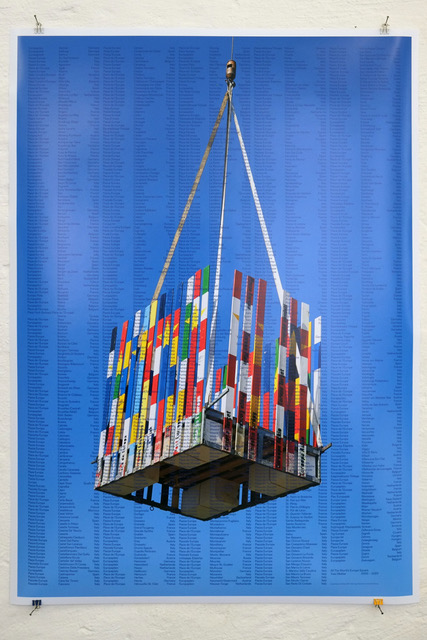
NOWs: Atlas Europe Square. A book by Yves Mettler
Atlas Europe Square. A book by Yves MettlerCall for action
Dear friends, colleagues and supporters,
I am currently working on a comprehensive book about my Europe Square project. The project is well advanced, with the documentation and the contributions coming together in an overwhelmingly inspiring layout. Altough three quarters of the budget is secured, I’m now calling on to you to get the final buck.
In order to complete the budget, I launch an exclusive numbered edition of 30 posters. On the background of an installation shot made in Daejeon, South Korea, I release the as exhaustive as possible list of Europe Squares in the world. The 100 x 70cm poster is printed in Berlin on Hahnemühle Photo Luster paper.
The price is 350.- EUR (without shipping costs). The purchase includes the signed book, which will be sent once it’s out. The order can be placed directly by writing to yvesmettler@theselection.net, including the delivery address. I’ll send an invoice that can be paid by IBAN/BIC or Paypal. Upon receiving the payment I’ll be delighted to send the numbered and signed poster.
Thank you,
Yves Mettler
About the book:
Atlas Europe Square
If the built environment is a record of our modes of organisation and the compromises we make in order to live together, then what are we to make of the plethora of Europe Squares, Europa Places, Places de l’Europe, and Europaplatzes? Public spaces that connect numerous disparate towns and cities through a ‘supersite’ called Europe, today they may appear as avatars of an idea in crisis, as ‘eurocentric values’ and the concept of Europe as a unified political space are attacked and eroded from all sides.
Atlas Europe Square documents a body of work by Swiss artist Yves Mettler who, since 2003, has engaged in an ongoing mapping and documentation of these sites, along with a series of projects triangulating between particular squares, interrogating their differing architectural, environmental, and public functions, and what they tell us about the ideality of ‘Europe’ and the (im)possibility of its concrete instantiation.
Here this work is extended into reflections on the relationship between art and public space, site-specificity, and the artist’s own implication in the imaginary of Europe as he becomes enmeshed in a network of projects, funds, and public bodies that seek to promote ‘European culture’ through art.
Alongside extensive photographic documentation, Atlas Europe Square contains texts by the artist alongside texts by Reza Negarestani, Teresa Pullano, Laurent Thévenot, and Stephen Zepke, discussing Mettler’s work and addressing the question of how to square ‘Europe’ with the contemporary complex that connects the city to the nation state and the global economy.
Contributors
Reza Negarestani, Teresa Pullano, Laurent Thévenot, Stephen Zepke
Published by
Urbanomic Ltd., Falmouth, UK.
Design
Dual Room, Biel/Bienne
Printed in
Italy
Distributed by
MIT Press
With the support of
Pro Helvetia, Erna und Curt Burgauer Stiftung, Canton de Vaud
Release date
April 2021
Atlas Europe Square. A book by Yves MettlerCall for action
Dear friends, colleagues and supporters,
I am currently working on a comprehensive book about my Europe Square project. The project is well advanced, with the documentation and the contributions coming together in an overwhelmingly inspiring layout. Altough three quarters of the budget is secured, I’m now calling on to you to get the final buck.
In order to complete the budget, I launch an exclusive numbered edition of 30 posters. On the background of an installation shot made in Daejeon, South Korea, I release the as exhaustive as possible list of Europe Squares in the world. The 100 x 70cm poster is printed in Berlin on Hahnemühle Photo Luster paper.
The price is 350.- EUR (without shipping costs). The purchase includes the signed book, which will be sent once it’s out. The order can be placed directly by writing to yvesmettler@theselection.net, including the delivery address. I’ll send an invoice that can be paid by IBAN/BIC or Paypal. Upon receiving the payment I’ll be delighted to send the numbered and signed poster.
Thank you,
Yves Mettler
About the book:
Atlas Europe Square
If the built environment is a record of our modes of organisation and the compromises we make in order to live together, then what are we to make of the plethora of Europe Squares, Europa Places, Places de l’Europe, and Europaplatzes? Public spaces that connect numerous disparate towns and cities through a ‘supersite’ called Europe, today they may appear as avatars of an idea in crisis, as ‘eurocentric values’ and the concept of Europe as a unified political space are attacked and eroded from all sides.
Atlas Europe Square documents a body of work by Swiss artist Yves Mettler who, since 2003, has engaged in an ongoing mapping and documentation of these sites, along with a series of projects triangulating between particular squares, interrogating their differing architectural, environmental, and public functions, and what they tell us about the ideality of ‘Europe’ and the (im)possibility of its concrete instantiation.
Here this work is extended into reflections on the relationship between art and public space, site-specificity, and the artist’s own implication in the imaginary of Europe as he becomes enmeshed in a network of projects, funds, and public bodies that seek to promote ‘European culture’ through art.
Alongside extensive photographic documentation, Atlas Europe Square contains texts by the artist alongside texts by Reza Negarestani, Teresa Pullano, Laurent Thévenot, and Stephen Zepke, discussing Mettler’s work and addressing the question of how to square ‘Europe’ with the contemporary complex that connects the city to the nation state and the global economy.
Contributors
Reza Negarestani, Teresa Pullano, Laurent Thévenot, Stephen Zepke
Published by
Urbanomic Ltd., Falmouth, UK.
Design
Dual Room, Biel/Bienne
Printed in
Italy
Distributed by
MIT Press
With the support of
Pro Helvetia, Erna und Curt Burgauer Stiftung, Canton de Vaud
Release date
April 2021
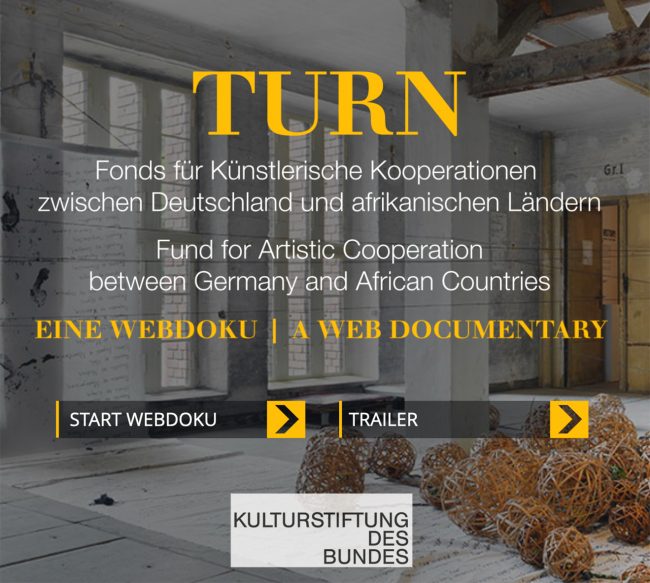
NOWs: Interactive web documentary on the TURN fund of the Federal Cultural Foundation
TURN – Fund for artistic collaborations between Germany and African countries launches an interactive web documentary on the TURN fund
For seven years the TURN Fund of the Federal Cultural Foundation has supported artistic cooperation between Germany and African countries – what experiences have the projects made? What kind of projects were supported? What challenges had to be overcome? Which themes recur again and again? How is the cultural creativity from African countries today in Germany? The interactive web documentary TURN presents exemplary projects supported by the TURN Fund and gives artists, curators, directors, dramaturgists, performers, musicians, and experts a chance to have their say. They talk about observations challenges and insights, but also about the wishes, perspectives and opportunities that the joint project work has opened up. Interactive links within the TURN film refer to further clips, links, materials, and background information.
In 2012, the Federal Cultural Foundation established the TURN – Fund for Artistic Cooperation between Germany and African Countries in order to encourage a wide range of German institutions to shift their focus on the artistic production and cultural debates in African countries. German cultural organisations in all artistic areas were called upon to engage in new forms of artistic collaboration with African partners. The programme offers incentives primarily to German institutions and artists (museums, theatres, dance companies, art associations, composers, writers, publishers, etc.) to enhance their profile with new themes, working methods and perspectives. A total of 101 projects and research measures has been funded through the TURN Fund from 2013 to 2020.
Please watch the documentary here.
The documentary portrays a small selection from funded projects and summarizes some of the central questions and results from this period. The Institut für Raumexperimente (Institute for Spatial Experiments) is grateful that our long-term collaboration with Tobiya Poetic Jazz and its joint Poetry Jazz initiative with the poetry series Poetry Jazz: Wax and Honey, I’m home has been one of those 101 projects.
TURN – Fonds für künstlerische Kooperationen zwischen Deutschland und afrikanischen Ländern stellt eine interaktive Webdoku zum Fonds TURN vor
Sieben Jahre lang hat die Kulturstiftung des Bundes mit dem Fonds TURN künstlerische Kooperationen zwischen Deutschland und afrikanischen Ländern gefördert – welche Erfahrungen haben die Projekte gemacht? Was für Projekte wurden im Fonds TURN gefördert? Welche Hürden mussten genommen werden? Welche Themen kehren immer wieder? Welchen Stellenwert hat die Auseinandersetzung mit dem kulturellen Schaffen in afrikanischen Ländern heute in Deutschland? Die interaktive Webdoku TURN stellt beispielhaft einzelne geförderte Projekte vor und lässt KünstlerInnen KuratorInnen RegisseurInnen DramaturgInnen PerformerInnen MusikerInnen und ExpertInnen zu Wort kommen. Sie erzählen von Beobachtungen Herausforderungen und Erkenntnissen aber auch von den Wünschen Perspektiven und Chancen die die gemeinsame Projektarbeit eröffnet hat. Interaktive Verlinkungen innerhalb des TURN-Films verweisen auf weiterführende Clips Links Materialien und Hintergrundinformationen.
Mit dem im Jahr 2012 initiierten Programm TURN – Fonds für künstlerische Kooperationen zwischen Deutschland und afrikanischen Ländern möchte die Kulturstiftung des Bundes möglichst viele unterschiedliche Institutionen in Deutschland anregen sich mit dem künstlerischen Schaffen und den kulturellen Debatten in afrikanischen Ländern zu beschäftigen. Deutsche Kultureinrichtungen aller Sparten wurden aufgefordert neue Formen der künstlerischen Zusammenarbeit mit afrikanischen Partnern zu erproben und gemeinsame Kulturprojekte auf den Weg zu bringen. Das Programm soll in erster Linie deutschen Institutionen und Akteuren (Museen, Theaterhäusern, Tanzkompanien, Kunstvereinen, Komponisten, Schriftstellern, Verlagen u.a.) Anreize bieten ihr Profil um neue Themen und Arbeitsweisen zu erweitern. Insgesamt 101 Projekte haben in den Jahren 2013 bis 2020 im Fonds TURN eine Förderung erhalten.
Sehen Sie die Webdoku hier.
Die Doku porträtiert eine kleine Auswahl der geförderten Projekte und fasst einige der zentralen Fragen und Ergebnisse aus dieser Zeit zusammen. Das Institut für Raumexperimente ist dankbar, dass die langfristige Kooperation mit Tobiya Poetic Jazz und die gemeinsame Poetry Jazz Initiative, mit der Veranstaltungsserie Poetry Jazz: Wax and Honey, I’m home zu einem der 101 Projekt zählt.
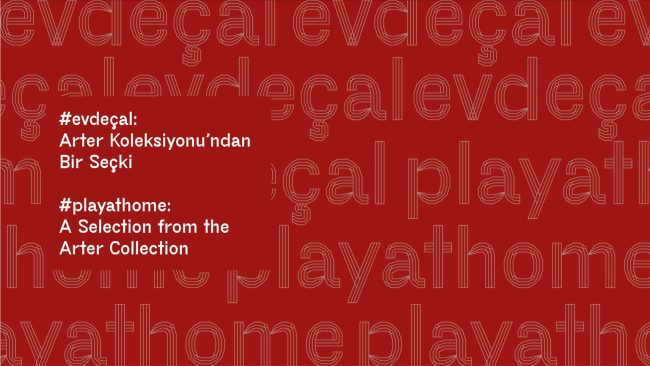
NOWs: #playathome. A Selection from the Arter Collection
#playathome. A Selection from the Arter Collectiononline video exhibition with Sophia Pompéry et al.
Arter presents the second edition of #playathome, an online selection of video works which can be accessed from arter.org.tr between 21 May and 21 June 2020. Selected from the Arter Collection to be played at home, this edition features nine videos with a particular focus on the act of drawing and painting, even though the contextual frames surrounding each work and the tools they utilise may differ from one another.
Practised on paper or on the surface of still water, these actions performed with everyday materials and bodily gestures enable diverse artistic genres to disperse into each other through the temporality of video.
Artists:
Josef Bares
Geta Brătescu
Marie Cool Fabio Balducci
Ali Kazma
Diána Keller & Péter Rizmayer
İz Öztat
Sophia Pompéry
Kata Tranker
Angel Vergara
Please click here to view the second edition of #playathome.
#playathome. A Selection from the Arter Collectiononline video exhibition with Sophia Pompéry et al.
Arter presents the second edition of #playathome, an online selection of video works which can be accessed from arter.org.tr between 21 May and 21 June 2020. Selected from the Arter Collection to be played at home, this edition features nine videos with a particular focus on the act of drawing and painting, even though the contextual frames surrounding each work and the tools they utilise may differ from one another.
Practised on paper or on the surface of still water, these actions performed with everyday materials and bodily gestures enable diverse artistic genres to disperse into each other through the temporality of video.
Artists:
Josef Bares
Geta Brătescu
Marie Cool Fabio Balducci
Ali Kazma
Diána Keller & Péter Rizmayer
İz Öztat
Sophia Pompéry
Kata Tranker
Angel Vergara
Please click here to view the second edition of #playathome.
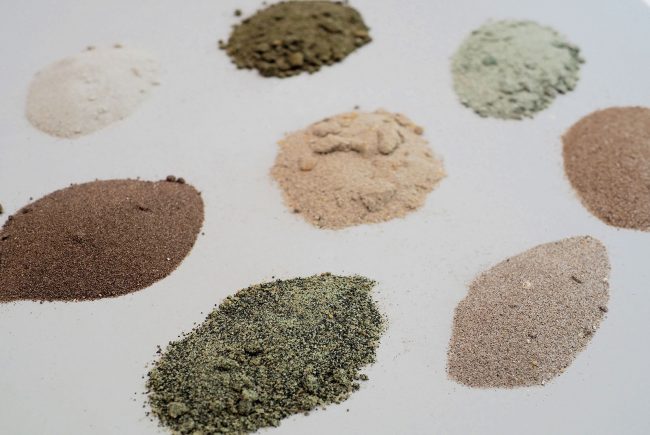
NOWs: Sand (Lommel) by Elise Eeraerts and Roberto Aparicio Ronda
Sand (Lommel)intervention by Elise Eeraerts and Roberto Aparicio Ronda
This year the intervention Sand (Lommel) will be realized at three different locations in the city center of Lommel, Belgium. It connects sand, nature, past and future in a special way. Lommel and sand as a material are intertwined through geological occurrences forming layers of sand measuring hundreds of meters below the earth’s surface. These contain quartz sand typical for the area, a fine and extremely white sand which is mined for its properties and purity.
One line divided in three parts, made of sand in the pavement will visually connect three parks in the city. Through drilling until a depth of 200 meters, sand samples have been taken at each meter. Each sand sample will be made into triangular ceramic elements as a part of the intervention. A line made of three parts will be composed of more than 1000 modular triangles to form the layers of sand in their true scale. So, sand that was located at a depth of precisely 100 meters below the earth will instead be situated in a line at a length of 100 meters on the surface of the earth. This way the depth and visual aspect of the layers of sand become perceivable.
In order to complement this intervention, additional triangular elements will be assembled into tetrahedron shaped, helices that mimic the atomic crystal structure of quartz (sand), also know as silicon dioxide. Some tetrahedrons will contain plants that are typical of the biodiversity of Lommel’s dune landscape. Other tetrahedrons will be covered in sand patterns, in reference to the local tradition of making sand carpets. Moreover, during a performative event, sand carpets will be installed temporarily in the city center.
Finally, the exact spot where the drilling occurred will be sealed with a silicon wafer, as a small memorial. This circular disc has the same diameter and shape as the drill. Silicon is crucial in our highly technological inventions, and it is the processed result that is extracted from silicon dioxide. That way the old – the natural, geological past revealed by the drilling, and the new – material transformation in science and technology, are confronted with each other.
These interventions combine and originated from the idea of making the invisible visible. From the vast layers of sand, to the crystal structures of the quartz atoms and forgotten traditions, the presence of these elements in public space will make these ideas and therefore the city’s identity more tangible.
Sand (Lommel)intervention by Elise Eeraerts and Roberto Aparicio Ronda
This year the intervention Sand (Lommel) will be realized at three different locations in the city center of Lommel, Belgium. It connects sand, nature, past and future in a special way. Lommel and sand as a material are intertwined through geological occurrences forming layers of sand measuring hundreds of meters below the earth’s surface. These contain quartz sand typical for the area, a fine and extremely white sand which is mined for its properties and purity.
One line divided in three parts, made of sand in the pavement will visually connect three parks in the city. Through drilling until a depth of 200 meters, sand samples have been taken at each meter. Each sand sample will be made into triangular ceramic elements as a part of the intervention. A line made of three parts will be composed of more than 1000 modular triangles to form the layers of sand in their true scale. So, sand that was located at a depth of precisely 100 meters below the earth will instead be situated in a line at a length of 100 meters on the surface of the earth. This way the depth and visual aspect of the layers of sand become perceivable.
In order to complement this intervention, additional triangular elements will be assembled into tetrahedron shaped, helices that mimic the atomic crystal structure of quartz (sand), also know as silicon dioxide. Some tetrahedrons will contain plants that are typical of the biodiversity of Lommel’s dune landscape. Other tetrahedrons will be covered in sand patterns, in reference to the local tradition of making sand carpets. Moreover, during a performative event, sand carpets will be installed temporarily in the city center.
Finally, the exact spot where the drilling occurred will be sealed with a silicon wafer, as a small memorial. This circular disc has the same diameter and shape as the drill. Silicon is crucial in our highly technological inventions, and it is the processed result that is extracted from silicon dioxide. That way the old – the natural, geological past revealed by the drilling, and the new – material transformation in science and technology, are confronted with each other.
These interventions combine and originated from the idea of making the invisible visible. From the vast layers of sand, to the crystal structures of the quartz atoms and forgotten traditions, the presence of these elements in public space will make these ideas and therefore the city’s identity more tangible.
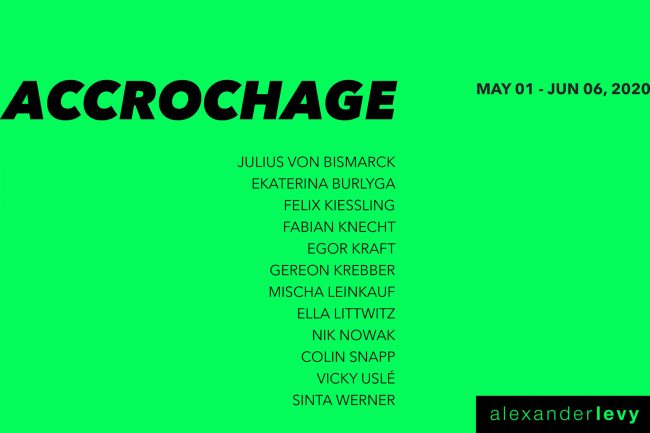
NOWs: Accrochage
Accrochageonline group show
alexander levy
Rudi-Dutschke-Strasse 26
10969 Berlin
Due to the current situation we postponed our exhibition Taumel by Felix Kiessling to September 2020 in conjunction with the official Gallery Weekend Berlin.
In this difficult time we cannot make any plans and won’t invite an artist for an exhibition that would not get the attention it deserves.
We are pleased to use this time for another great initiative: Please have a look at our Accrochage – a selection of works by: Julius von Bismarck, Ekaterina Burlyga, Felix Kiessling, Fabian Knecht, Egor Kraft, Gereon Krebber, Ella Littwitz, Mischa Leinkauf, Nik Nowak, Colin Snapp, Vicky Uslé and Sinta Werner.
The online brochure accompaning the exhibition in the gallery gives you a special insight into the artists’ practices narrating background stories of the works.
You are very welcome to visit the gallery by appointment.
AccrochageOnline Gruppenausstellung
alexander levy
Rudi-Dutschke-Strasse 26
10969 Berlin
Due to the current situation we postponed our exhibition Taumel by Felix Kiessling to September 2020 in conjunction with the official Gallery Weekend Berlin.
In this difficult time we cannot make any plans and won’t invite an artist for an exhibition that would not get the attention it deserves.
We are pleased to use this time for another great initiative: Please have a look at our Accrochage – a selection of works by: Julius von Bismarck, Ekaterina Burlyga, Felix Kiessling, Fabian Knecht, Egor Kraft, Gereon Krebber, Ella Littwitz, Mischa Leinkauf, Nik Nowak, Colin Snapp, Vicky Uslé and Sinta Werner.
The online brochure accompaning the exhibition in the gallery gives you a special insight into the artists’ practices narrating background stories of the works.
You are very welcome to visit the gallery by appointment.
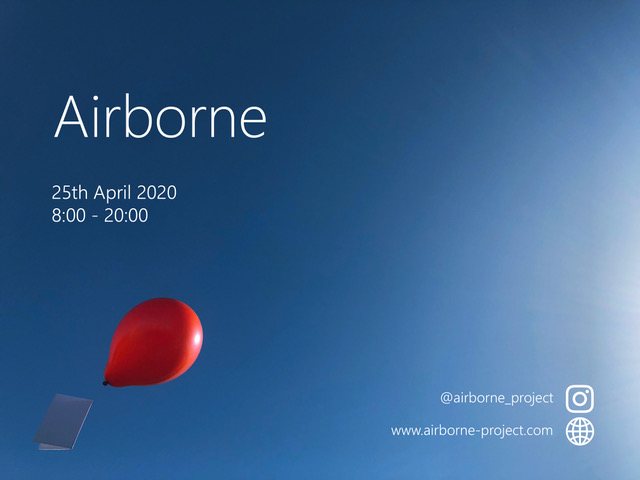
NOWs: AIRBORNE
AIRBORNE
Although lock-down measures across the world are slowly being loosened, cultural institutions and exhibition spaces still remain largely closed. We are therefore opening the guaranteed corona-free exhibition project Airborne – contactlessly transmitted messages, designed for this new, socially distant world.
On Saturday 25th April starting at 8 in the morning a balloon will ascend into the sky of Berlin every 15-30 minutes. Attached to each balloon will be a piece of paper carrying a thought, sketch, photograph or poem from artists, writers, curators and thinkers. They shall be released into the world like messages in a bottle.
The original works can be found scattered around Berlin and Brandenburg from April 25th, and the event will also be shared live on Instagram from @airborne_project starting at 8 am. The individual contributions can be viewed on the project website www.airborne-project.com from 8 pm.
A project by Diana Sprenger and Euan Williams with contributions by Be Andr, Rosie Arnold, Sven Beckstette, Fritz Bornstück, Nino Cais, Leon Eixenberger, Ivana Franke, Andreas Greiner, Lutz Henke, Alison Hugill, Samuel Imbach, Anne Duk Hee Jordan, Shinae Kim, Nele Köhler, Lydia Korndörfer, Diana Liljelund, Rebecca Partridge, Gerald Pirner, Sophia Pompery, Tiago Romagnani Silveira, Otto E. Rossler, Rike Scheffler, Nina Schuiki, Diana Sprenger, Yuichiro Jose Tamura, Julia Katharina Thiemann, Lukas Töpfer, Tomoyuki Ueno, Bernard Vienat, Tom Wagner, Jonas Wendelin, Euan Williams, e.a.
AIRBORNE
Die Lockdown-Maßnahmen werden auf der ganzen Welt langsam zurückgefahren, doch kulturelle Institutionen und Ausstellungsräume bleiben noch immer weitgehend geschlossen. Wir eröffnen deshalb das garantiert coronafreie Ausstellungsprojekt Airborne – kontaktlos übermittelte Botschaften, konzipiert für diese neue, sozial distanzierte Welt.
Am Samstag, den 25. April 2020, steigt ab 8 Uhr morgens alle 15 – 30 Minuten ein Luftballon in den Himmel über Berlin auf. An jeden Ballon ist ein Papier geheftet, das einen Gedanken, eine Zeichnung, eine Fotografie oder ein Gedicht von Künstlern, Autoren und Kuratoren in die Welt trägt. Im Gegensatz zum unbestimmten Versand einer intimen Flaschenpost, oft bestückt mit Sorgen, Nöten und Ängsten, kalkulieren die Autoren des Airborne-Projekts das Entdecken ihrer Botschaft fest ein. Gefunden zwischen Sträuchern, auf Balkonen oder Parkplätzen, in Coronakrisenzeiten mehrere Hundertmeter weit entfernt übergeben. Die subtile Anspielung auf die luftgetragene Infektion des Corona-Virus ist auch ein Versuch, den Akt des Kunstbetrachtens in Quarantäne weg von rein online-basierten Lösungen großer Institutionen zu leiten.
Die Originalkunstwerke sind ab 25. April in Berlin und Umgebung verstreut zu finden, zudem wird die Veranstaltung ab 8 Uhr live auf Instagram unter @airborne_project geteilt. Die einzelnen Beiträge können ab 20 Uhr auf der Projektwebsite www.airborne-project.com eingesehen werden.
Ein Project von Diana Sprenger und Euan Williams mit Beiträgen von Be Andr, Rosie Arnold, Sven Beckstette, Fritz Bornstück, Nino Cais, Leon Eixenberger, Ivana Franke, Andreas Greiner, Lutz Henke, Alison Hugill, Samuel Imbach, Anne Duk Hee Jordan, Shinae Kim, Nele Köhler, Lydia Korndörfer, Diana Liljelund, Rebecca Partridge, Gerald Pirner, Sophia Pompery, Tiago Romagnani Silveira, Otto E. Rossler, Rike Scheffler, Nina Schuiki, Diana Sprenger, Yuichiro Jose Tamura, Julia Katharina Thiemann, Lukas Töpfer, Tomoyuki Ueno, Bernard Vienat, Tom Wagner, Jonas Wendelin, Euan Williams, u.a.
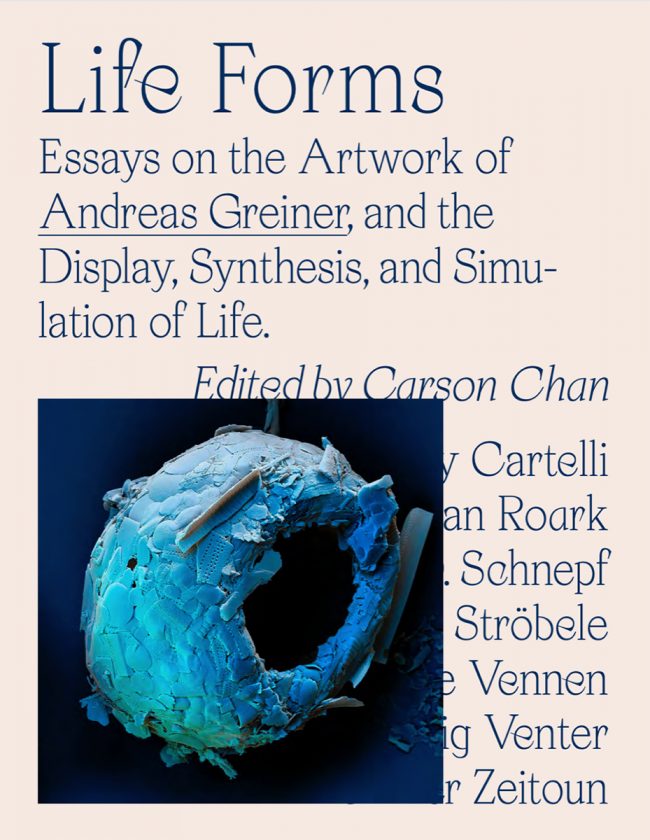
NOWs: LIFE FORMS by Andreas Greiner, edited by Carson Chan
LIFE FORMSEssays on the Display, Synthesis and Simulation of Life and Artworks of Andreas Greiner
Cat. Kunstverein Heilbronn / Mönchehaus Museum Goslar; edited by Carson Chan
texts (English) by Gregory Cartelli, Ryan Roark, J.D. Schnepf, Ursula Ströbele, Mareike Vennen, J. Craig Venter, Olivier Zeitoun and German Synopses by Stefan Vicedom
Design: Sin-U-Ko
232 p with 250 coloured and 70 b/w illustrations
250 x 200 mm, Swiss brochure
Published by Snoeck Verlag, Cologne, 2020.
ISBN 978-3-86442-309-3
Order: 39,80 €
Andreas Greiner’s Artwork and the Simulation of Life
Which forms does artificial life take? How do humans today intervene in growth processes through synthetic biology? How does this affect the relationship between nature and culture? And what significance does art have in the age of the anthropocene? For Andreas Greiner (*1979), these questions are at the center of his work, where he scrutinizes the relationships between nature/technology/culture/art with regard to ethics as well as social and ecological issues. This volume places Andreas Greiner’s work in a dialogue with scientists and experts from various disciplines such as physics, computer science, biology, music and architecture. The emerging interfaces raise the integral questions that the artist examines, which are more urgent than ever after the apparent quantum leaps in the medical-biological field, such as genetic engineering
LIFE FORMSEssays on the Display, Synthesis and Simulation of Life and Artworks of Andreas Greiner
Kat. Kunstverein Heilbronn / Mönchehaus Museum Goslar; herausgegeben von Carson Chan
Texte (eng.) von Gregory Cartelli, Ryan Roark, Jennifer Schnepf, Ursula Ströbele, Mareike Vennen, J. Craig Venter, Olivier Zeitoun und deutschsprachigen Synopsen von Stefan Vicedom
Design: Sin-U-Ko
232 S. mit 250 farbigen und 70 s/w Abbildungen
250 x 200 mm, Schweizer Broschur
Erschinen im Snoeck Verlag, Köln, 2020.
ISBN 978-3-86442-309-3
Bestellung: 39,80 €
Andreas Greiners Kunst an der Schnittstelle zur Biowissenschaft
Welche Formen nimmt künstliches Leben an? Wie greift der Mensch durch synthetische Biologie heute in Wachstumsprozesse ein? Wie gestaltet sich dadurch das Verhältnis von Natur und Kultur? Und welchen Stellenwert nimmt die Kunst im Zeitalter des Anthropozäns ein? Diese Fragen stehen für Andreas Greiner (*1979) im Zentrum seines Werkes in dem er die Verhältnisse von Natur/Technik/Kultur/Kunst ethisch sowie sozial-gesellschaftlich und ökologiekritisch hinterfragt. Der Band stellt die künstlerischen Arbeiten Andreas Greiners in einen Dialog mit Wissenschaftlern und Experten aus unterschiedlichen Disziplinen wie Physik, Informatik, Biologie, Musik und Architektur. Das führt in die Schnittstellen und ruft die integralen Fragestellungen auf, mit denen sich der Künstler beschäftigt, die drängender denn je sind, nachdem Quantensprünge im medizinisch-biologischen Bereich, etwa der Gentechnologie, zu beobachten sind.
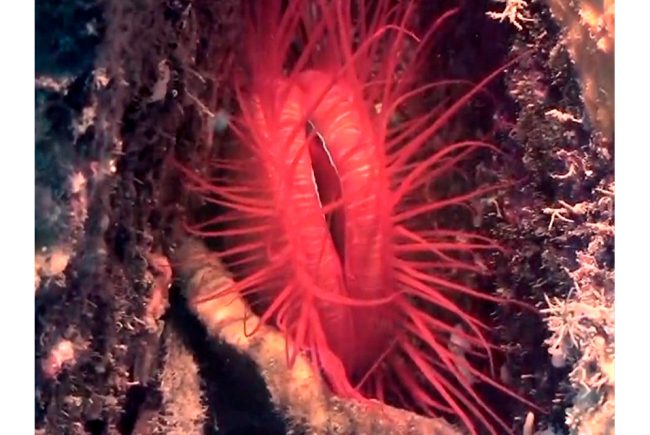
NOWs: The Far Away Is Here
The Far Away Is Hereonline video group exhibition
Anne Duk Hee Jordan, Ziggy and the Starfish, 2018, video single-channel color, 16:28 min.
Catinca Tabacaru Gallery
With: Marie José Burki, Sue de Beer, Anne Duk Hee Jordan, Sanja Latinović, Rachel Monosov
Curated by Rachel Monosov & Catinca Tabacaru
Catinca Tabacaru presents The Far Away Is Here, a video exhibition presented exclusively on our gallery website with works by Marie José Burki, Sue de Beer, Sanja Latinović, Anne Duk Hee Jordan, Rachel Monosov. It is a curatorial response to the current global crisis in both content and form.
What is happening over there will not happen here!
This time it started in China, and neither the EU, nor any other nations held meetings on how to help the red dragon; maybe thinking that COVID-19 won’t arrive to their part of the world.
This idea that war, refugee crisis, or viruses, are far-away and not here, is the complete opposite of solidarity.
Clearly, we are currently face to face with what we saw happening far-away. And now, because it is here, we are turning the world upside down.
What if we always lived with the idea that the far-away is actually also here?
Maybe this perspective will change our behavior completely.
By force, this virus brings to the forefront a global realty as each of us lives a similar experience. There is no here and there any longer. The differences are small, and all based in governmental ideology and enforcement. On a human level, we turn to solidarity, empathy, and respect in the search for a cure for both the virus and our civilization.
The video works The Far Away Is Here take these ideas as their starting point… even before these ideas were at the forefront of our minds, conversations, and news.
Sanja Latinovic’s Abandoned, a performance-based work, “is how we feel right now in Belgrade.”
Sue de Beer’s characters in her low-budget horror-thriller The White Wolf grapple to find equilibrium and meaning in the midst of an experience that is out of their control.
In It will end up in me, Rachel Monosov places ideas from traditional Indonesian medicine as a mirror in front of the “savage neo-liberalist intensification of deep social economic problems,” in Noam Chomsky’s words, as capitalist governments have known for a long time that pandemics would become a problem but failed to prepare for them because the market signals were wrong (Coronavirus – What is at stake?, DiEM25 TV, 17:00 – 18:24).
While Anne Duk Hee Jordan’s Ziggy and the Starfish gestates in a political world, it is not overtly political as it begs the question “how will we adapt?”
In A Film by Marie José Burki we listen to a familiar conversation about global warming, information we all know but do little with because global warming is happening somewhere there and not here, so we turn on our air conditioning and ignore what is happening outside our windows. Do we need to wait until our air conditioner turns into a melted stinky plastic box to change our behavior? Morton offers the example of global warming as a hyperobject which impacts meteorological conditions, such as tornado formation. Entities do not feel global warming, but instead, experience tornadoes as they cause damage in specific places (Disparitiesvon Slavoj Žižek, p. 34).
The exhibition will grow, evolve, and adapt, just as we are doing each day with shifting laws and turbulent emotions. Programming of lectures and interviews will springboard from the films and take us deeper into the issues at hand, maybe even walk us through windows we haven’t yet considered.
The Far Away Is Hereonline video group exhibition
Anne Duk Hee Jordan, Ziggy and the Starfish, 2018, video single-channel color, 16:28 min.
Catinca Tabacaru Gallery
With: Marie José Burki, Sue de Beer, Anne Duk Hee Jordan, Sanja Latinović, Rachel Monosov
Curated by Rachel Monosov & Catinca Tabacaru
Catinca Tabacaru presents The Far Away Is Here, a video exhibition presented exclusively on our gallery website with works by Marie José Burki, Sue de Beer, Sanja Latinović, Anne Duk Hee Jordan, Rachel Monosov. It is a curatorial response to the current global crisis in both content and form.
What is happening over there will not happen here!
This time it started in China, and neither the EU, nor any other nations held meetings on how to help the red dragon; maybe thinking that COVID-19 won’t arrive to their part of the world.
This idea that war, refugee crisis, or viruses, are far-away and not here, is the complete opposite of solidarity.
Clearly, we are currently face to face with what we saw happening far-away. And now, because it is here, we are turning the world upside down.
What if we always lived with the idea that the far-away is actually also here?
Maybe this perspective will change our behavior completely.
By force, this virus brings to the forefront a global realty as each of us lives a similar experience. There is no here and there any longer. The differences are small, and all based in governmental ideology and enforcement. On a human level, we turn to solidarity, empathy, and respect in the search for a cure for both the virus and our civilization.
The video works The Far Away Is Here take these ideas as their starting point… even before these ideas were at the forefront of our minds, conversations, and news.
Sanja Latinovic’s Abandoned, a performance-based work, “is how we feel right now in Belgrade.”
Sue de Beer’s characters in her low-budget horror-thriller The White Wolf grapple to find equilibrium and meaning in the midst of an experience that is out of their control.
In It will end up in me, Rachel Monosov places ideas from traditional Indonesian medicine as a mirror in front of the “savage neo-liberalist intensification of deep social economic problems,” in Noam Chomsky’s words, as capitalist governments have known for a long time that pandemics would become a problem but failed to prepare for them because the market signals were wrong (Coronavirus – What is at stake?, DiEM25 TV, 17:00 – 18:24).
While Anne Duk Hee Jordan’s Ziggy and the Starfish gestates in a political world, it is not overtly political as it begs the question “how will we adapt?”
In A Film by Marie José Burki we listen to a familiar conversation about global warming, information we all know but do little with because global warming is happening somewhere there and not here, so we turn on our air conditioning and ignore what is happening outside our windows. Do we need to wait until our air conditioner turns into a melted stinky plastic box to change our behavior? Morton offers the example of global warming as a hyperobject which impacts meteorological conditions, such as tornado formation. Entities do not feel global warming, but instead, experience tornadoes as they cause damage in specific places (Disparitiesvon Slavoj Žižek, p. 34).
The exhibition will grow, evolve, and adapt, just as we are doing each day with shifting laws and turbulent emotions. Programming of lectures and interviews will springboard from the films and take us deeper into the issues at hand, maybe even walk us through windows we haven’t yet considered.
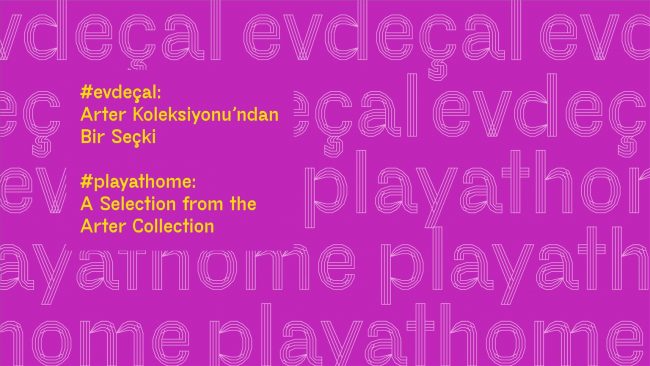
NOWs: #playathome. A Selection from the Arter Collection
#playathome. A Selection from the Arter Collectiononline video exhibition with Sophia Pompéry, Ayşe Erkmen et al.
Arter presents an online selection of video works from 15 April to 15 May 2020. Entitled #playathome, the selection features eight videos related to sound and/or music in various performative ways.
Selected from the Arter Collection to be played at home, these works explore the potential of sound to trespass physical boundaries and its ability to offer alternative ways to communicate, manifest, traverse and transgress.
Artists:
Nevin Aladağ
Ali Mahmut Demirel
Cevdet Erek
Ayşe Erkmen
Annika Kahrs
Mikhail Karikis & Uriel Orlow
Sophia Pompéry
Sarkis
Please click here to view the first edition of #playathome.
#playathome. A Selection from the Arter Collectiononline video exhibition with Sophia Pompéry, Ayşe Erkmen et al.
Arter presents an online selection of video works from 15 April to 15 May 2020. Entitled #playathome, the selection features eight videos related to sound and/or music in various performative ways.
Selected from the Arter Collection to be played at home, these works explore the potential of sound to trespass physical boundaries and its ability to offer alternative ways to communicate, manifest, traverse and transgress.
Artists:
Nevin Aladağ
Ali Mahmut Demirel
Cevdet Erek
Ayşe Erkmen
Annika Kahrs
Mikhail Karikis & Uriel Orlow
Sophia Pompéry
Sarkis
Please click here to view the first edition of #playathome.
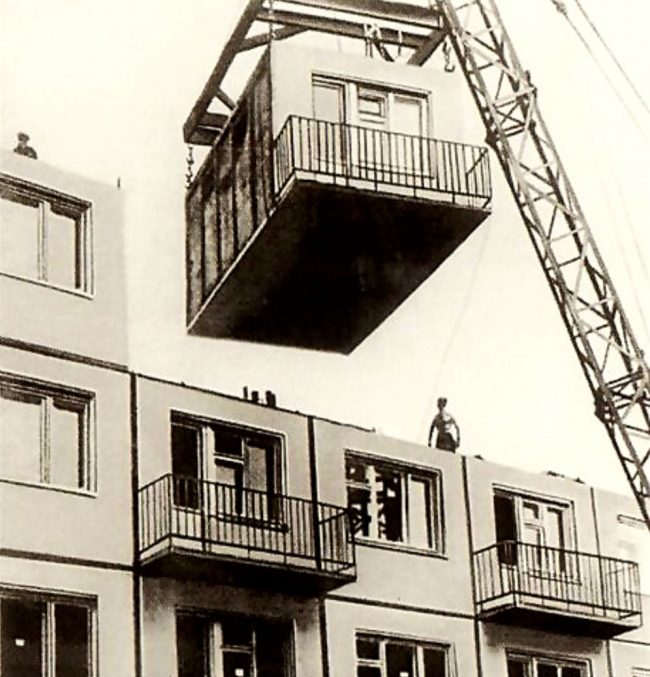
NOWs: Die Balkone
Die Balkone. Life, art, pandemic, proximity in windows & balconies
Initiated by Övül Ö. Durmusoglu and Joanna Warsza
12.-13. April 1 p.m. to 5 p.m. (Easter Sunday and Monday) + projections in the evening
#DieBalkone
If we behave like those on the other side, then we are the other side. Instead of changing the world, all we’ll achieve is a reflection of the one we want to destroy.
Jean Genet, The Balcony
We are at the very beginning of a new cycle that we cannot yet situate ourselves in. Its first palpable experiences are shifts in the relationship between inside and outside; in the distance between one day and another; between what is private, public, and political. At the same time, care, protection, and vulnerability are growing with new meanings.
Balconies serve as the public apertures of the private. They seem to be where the house ends, and yet not. In their political history, they have both been terraces of openness and hope, as well as platforms for authoritarianism and supremacy. Balconies today are the thresholds from which we can encounter the world during the confinement of the domestic: which is safe and sound for some, but not for others. They are emergency exits to take a breath of fresh air, catch a moment of sunshine or a smoke. While our freedom of mobility is on hold, they become unique sites of everyday performance or even civic mobilization. Every architecture school has its own way of designing balconies. Everyone has their own way of inhabiting them. Especially now.
In times of quarantine, so many of us cultural workers living in Berlin happen to all be here; not far from each other, and yet absent as usual. We are asked to commit to the digital space, without critically estimating the effects of for-profit information technologies.
Berlin has an important history of artist squats, takeovers, one-night exhibitions. In former East Germany, what was public, in a sense of non-intimidated or uncensored art and life, frequently happened in someone’s kitchen rather than out in the open. Specifically, Prenzlauer Berg is a place where home-made resistance against the GDR hit critical mass.
Die Balkone invites members of the artistic community living in Prenzlauer Berg to activate/inhabit their windows and balconies. With zero budget, no opening, and no crowds, the project proposes an intimate stroll (within current regulations) to search for signs of life, art, and points of kinship and connection. When some of us are cut off from our plans and our loved ones, we reach out to the balconies of the world, against isolation and individualization, not leaving everything in the hands of the virus and the fear it generates.
Please find documentation and press coverage here.
With: Salwa Aleryani and Matheus Rocha Pitta, Ulf Aminde, Rosa Barba and Jan St. Werner, Yael Bartana and Saskia Wendland, Elke Buhr and Tobi Müller, Matthias Daenschel, Jeremiah Day and Alisa Margolis, Christina Dimitriadis, Sam Durant and Ana Prvacki, Knut Eckstein, Theo Eshetu, Martin Frese and Eva Scharrer at Tina Löffelbein’s, Olaf Grawert, Jan Peter Hammer, Hannah Hurtzig, Stine Marie Jacobsen, Anne Duk Hee Jordan and Pauline Doutreluingne, Christoph Keller, Jessika Khazrik / Övül Ö. Durmusoglu, Matylda Krzykowski, Xavier le Roy and Scarlet Yu, Lage Egal, Antonia Low and Tommy Støckel, Lina Majdalanie and Rabih Mroué, Kamila Metwaly and Max Schneider, Markus Miessen and Lena Mahr, Tom McCarthy and Eva Stenram, Müller Dreimalklingeln and Sonja Lau, Olaf Nicolai, Andrea Pichl, Marta Popivoda and Ana Vujanović, David Rych and kids, Susanne Sachsse and Marc Siegel, Isabella Sedeka, Antje Stahl and Felix-Emeric Tota, Raul Walch, Joanna Warsza and Florian Malzacher, Christina Werner and others.
Die Balkone. Life, art, pandemic, proximity in windows & balconies
Fenster und Balkone im Prenzlauer Berg
12.-13. April,13:00-17:00 Uhr (Ostersonntag und -montag) + Projektionen am Abend
Initiated by Övül Ö. Durmusoglu and Joanna Warsza
#DieBalkone
Wenn wir uns wie die auf der anderen Seite verhalten, dann sind wir die andere Seite. Anstatt die Welt zu verändern, werden wir nur eine Spiegelung derer, die wir zerstören wollen, erlangen.
Jean Genet, Der Balkon
Wir stehen am Anfang eines neuen Zyklus, in dem wir uns noch nicht verorten können. Seine ersten greifbaren Erfahrungen sind Verschiebungen in der Beziehung zwischen Innen und Außen; in der Distanz zwischen einem Tag und dem nächsten; zwischen privat, öffentlich und politisch. Gleichzeitig wachsen Sorgfalt, Schutz und Verletzlichkeit und nehmen neue Bedeutungen an.
Balkone öffnen den privaten Raum nach außen. Sie befinden sich scheinbar da, wo das Haus endet, und doch wieder nicht. In ihrer politischen Geschichte stellten sie sowohl Terrassen der Offenheit und Hoffnung dar, als auch Plattformen für Autoritarismus und Vorherrschaft. Balkone sind heute die Schwellen, von denen aus wir der Welt in der Eingrenzung des Häuslichen begegnen können: Dieses Zuhause ist für einige selbstverständlich, für andere wiederum nicht. Sie sind Notausgänge, um frische Luft zu schnappen, einen Moment Sonnenschein oder eine Zigarette. Während unsere Mobilitätsfreiheit eingefroren ist, werden sie zu einzigartigen Orten täglicher Performance oder sogar bürgerlicher Mobilisierung. Jede Architekturschule hat ihre eigene Art, Balkone zu gestalten. Jeder hat seine eigene Art, sie zu bewohnen. Vor allem jetzt.
In Zeiten der Quarantäne sind so viele von uns Berliner Kulturschaffenden hier; nicht weit voneinander entfernt und doch wie immer abwesend. Wir werden gebeten, uns dem digitalen Raum zu widmen, ohne die Auswirkungen gewinnorientierter Informationstechnologien kritisch abzuschätzen.
Berlin birgt eine wichtige Geschichte von Hausbesetzungen, Übernahmen und One-Night-Ausstellungen. In der ehemaligen DDR passierte Öffentlichkeit – im Sinne einer nicht eingeschüchterten oder unzensierten Kunst und des Lebens – häufig in der Küche von Jemanden anstatt draußen im Freien. Insbesondere der Prenzlauer Berg ist ein Ort, an dem hausgemachter Widerstand gegen das DDR-Regime die kritische Masse erreichte.
Die Balkone lädt Mitglieder der im Prenzlauer Berg lebenden Künstler*innengemeinschaft ein, ihre Fenster und Balkone zu aktivieren / bewohnen. Ohne Budget, ohne Eröffnung und ohne Menschenmassen schlägt das Projekt einen intimen Spaziergang (im Rahmen der geltenden Vorschriften) vor, um nach Lebenszeichen, nach Kunst, Verwandtschafts- und Verbindungszeichen zu suchen. Zu Zeiten da einige von uns von ihren Plänen und ihren Lieben abgeschnitten sind, wenden wir uns den Balkonen der Welt zu, gegen Isolation und Individualisierung, und lassen nicht alles in den Händen des Virus und der Angst, die es erzeugt.
Dokumentation und Pressebericht finden sich hier.
Mit Salwa Aleryani and Matheus Rocha Pitta, Ulf Aminde, Rosa Barba and Jan St. Werner, Yael Bartana and Saskia Wendland, Elke Buhr and Tobi Müller, Matthias Daenschel, Jeremiah Day and Alisa Margolis, Christina Dimitriadis, Sam Durant and Ana Prvacki, Knut Eckstein, Theo Eshetu, Martin Frese and Eva Scharrer at Tina Löffelbein’s, Olaf Grawert, Jan Peter Hammer, Hannah Hurtzig, Stine Marie Jacobsen, Anne Duk Hee Jordan and Pauline Doutreluingne, Christoph Keller, Jessika Khazrik / Övül Ö. Durmusoglu, Matylda Krzykowski, Xavier le Roy and Scarlet Yu, Lage Egal, Antonia Low and Tommy Støckel, Lina Majdalanie and Rabih Mroué, Kamila Metwaly and Max Schneider, Markus Miessen and Lena Mahr, Tom McCarthy and Eva Stenram, Müller Dreimalklingeln and Sonja Lau, Olaf Nicolai, Andrea Pichl, Marta Popivoda and Ana Vujanović, David Rych and kids, Susanne Sachsse and Marc Siegel, Isabella Sedeka, Antje Stahl and Felix-Emeric Tota, Raul Walch, Joanna Warsza and Florian Malzacher, Christina Werner und anderen.
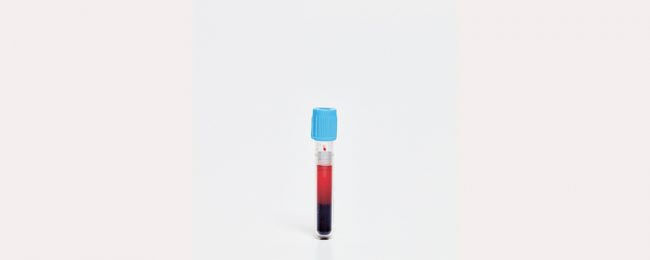
NOWs: DURST
DURSTgroup exhibition
Kunstraum Niederösterreich
Herrengasse 13
1014 Wien
Opening
31 March 2020
Artists: Inka ter Haar, Lauren Huret, Céline Manz, Alexandra Meyer, Sarah Rechberger, Katharina Swoboda, Cathrin Ulikowski
Guest Curator: Alice Wilke
Immortality, seduction, violence – the combination of these attributes associated with the figure of the vampire has laid the ground for popular sex & crime stories for centuries. The myth of the blood-sucking creature is firmly anchored in society’s collective desires, fears, and drives.
As is well known, Irishman Bram Stoker was not the first writer to focus on the figure of the vampire more closely – his famous novel “Dracula” (1897) was highly influenced by the work of his compatriot Joseph Sheridan Le Fanu and his female vampire “Carmilla” (1872). But it was Stoker’s Dracula character who became the quintessential vampire. His tale is not only a classic of Gothic literature; it has also been interpreted as a metaphor for the hypocrisy and prudery of the Victorian era. With his Count, he created the perfect anti-hero: superhumanly strong, supernatural, uninhibited.
Ever since, the vampire myth has adapted to societal contexts and conditions, along with a changing external appearance (from “Nosferatu” to “Twilight“). Secrets, power, sex, fetish, and anarchy are the political as well as aesthetic dimensions of the figure. The exhibition addresses the vampire and his/her enigmatic lifestyle as a fundamental sociocultural phenomenon: When vampirism is defined as the symbolic sucking of energy and resources from other living beings and our environment, the term can also be expanded to parasitic relations and toxic conditions – and doesn’t end with the fascinating character of a living blood-sucking undead. This exhibition stakes out the reception of the vampire myth in contemporary art, which is often conveyed through pop culture, and a broader semantic field that unfolds through the figure of the vampire.
Sarah Rechberger
*1983 in Vienna, lives and works in Vienna.
Sarah Rechberger’s artistic explorations are deeply rooted in a scientific investigative spirit. Her works often have a laboratory-like character and resemble precise, articulated experimental testbeds, which reflect fragile constellations of life and social processes and structures. In her project A-Symbiose (2012/2013) she created an in vitro biotope for the manual cultivation of orchids. The procedure developed for the industrial mass production of these plants served as a precedent: an artificial habitat sustained by nutrients and germ-free air and water.
The plants are isolated, only exposed to light from the outside, while needing to be protected from environmental influences like bacteria or mould. By contrast, in their natural habitat orchid seeds require a symbiotic fungus – mycorrhiza – that feeds the embryo for germination. This fungus infects the orchid seed, invades it, and provides it with all the necessary vital substances. Without this infection, the protocorm would die.
Upon human intervention, the orchids – which only grow in symbiosis with mycorrhizal fungi in nature – suddenly exist in “a-symbiosis”, a fundamental change of relations. When airborne mould spores enter this artificial habitat, a process of displacement commences. The spores land on the substrate, proliferate rapidly, and ultimately overgrow the orchids. The mould depletes the resources of the substrate and dominates the habitat forever.
Portrait Marion Ritzmann by Alexandra Meyer
DURSTGruppenausstellung
Kunstraum Niederösterreich
Herrengasse 13
1014 Wien
Opening
31 March 2020
Künstler_innen: Inka ter Haar, Lauren Huret, Céline Manz, Alexandra Meyer, Sarah Rechberger, Katharina Swoboda, Cathrin Ulikowski
Gastkuratorin: Alice Wilke
Unsterblichkeit, Verführung, Gewalt – die Kombination dieser Attribute der Figur des Vampirs liefert seit Jahrhunderten den Stoff für populäre “Sex & Crime”-Geschichten. Seit Anbeginn ist der Mythos der blutsaugenden Kreatur gesellschaftlich in kollektiven Sehnsüchten, Ängsten und Trieben verankert.
Der Ire Bram Stoker war bekanntlich nicht der erste Schriftsteller, der sich mit dem Roman “Dracula” der Figur des Vampirs ausführlicher widmete – seine berühmte Erzählung wurde wesentlich durch das Werk seines Landmannes Joseph Sheridan Le Fanu und dessen weiblicher Vampirfigur “Carmilla” (1872) geprägt. Doch Stokers Romanfigur “Dracula” (1897) wurde zum Inbegriff des Vampirs. Seine Erzählung ist nicht nur ein Klassiker der Schauerliteratur, sondern wurde auch als Metapher für die Doppelmoral und Prüderie des viktorianischen Zeitalters interpretiert. Er schuf mit seinem Grafen den perfekten Anti-Helden: übermenschlich stark, übersinnlich und tabulos.
Der Vampirmythos hat sich stets gesellschaftlichen Bedingungen und Verhältnissen angepasst, wobei sich das äußere Erscheinungsbild wandelte (von “Nosferatu” bis “Twilight”). Geheimnis, Macht, Sex, Fetisch und Anarchie sind die politischen und auch ästhetischen Dimensionen der Figur des Vampirs. Die Ausstellung begreift die Figur des Vampirs und seines mythischen Lebensstils als ein grundlegendes sozio-kulturelles Phänomen: Definieren wir Vampirismus als das sinnbildliche Absaugen von Energien und Ressourcen anderer Lebewesen und unserer Umwelt, so lässt sich der Begriff auf parasitäre Beziehungen und toxische Verhältnisse ausdehnen – und endet nicht bei der faszinierenden Figur des lebendigen, blutsaugenden Untoten. Die Ausstellung bewegt sich somit im Spannungsfeld der oft über die Popkultur vermittelten Rezeption des Vampirmythos in der Gegenwartskunst und eines breiteren semantischen Feldes, das die Figur des Vampirs eröffnet.
Sarah Rechberger
*1983 in Wien, lebt und arbeitet in Wien
Das künstlerische Interesse von Sarah Rechberger ist tief verbunden mit einem naturwissenschaftlichen Forscherinnengeist. Ihre Arbeiten besitzen einen Laborcharakter, gleichen präzise und ästhetisch gestalteten Versuchsanordnungen, die fragile Lebenszusammenhänge untersuchen und gesellschaftliche Prozesse und Strukturen reflektieren.
Mit ihrem Projekt „A-Symbiose“ (2012/2013) erschafft sie ein In-vitro-Biotop für die manuelle Aufzucht von Orchideen. Als Vorbild dient ihr das Verfahren, das für die industrielle Massenproduktion dieser Pflanzen entwickelt wurde: ein künstlicher Lebensraum mit Hilfe von Nährstoffen, keimfreier Luft und Wasser. Die Pflanzen sind abgeschirmt, dürfen nur Licht von außen aufnehmen, vor Umwelteinflüssen wie Bakterien oder Schimmelpilzen müssen sie geschützt werden. In ihrem natürlichen Lebensraum hingegen benötigen die Orchideensamen zur Keimung einen Symbiosepilz – Mykorrhiza –, der den Embryo ernährt. Dieser Pilz infiziert den Samen der Orchideen, dringt in ihn ein und versorgt ihn mit allen lebensnotwendigen Substanzen. Ohne diese Infektion würde das Protokorm absterben.
Die in der Natur ausschließlich in Symbiose mit Mykorrhizapilzen gedeihenden Orchideen existieren nach dem Eingreifen des Menschen plötzlich in A-Symbiose, eine fundamentale Veränderung der Beziehungen. Dringen dazu Schimmelpilzsporen aus der Luft in diesen künstlichen Lebensraum ein, beginnt ein Verdrängungsprozess. Die Sporen landen auf dem Nährboden, vermehren sich rasch und überwuchern schließlich die Orchideen. Der Pilz nimmt die Ressourcen des Nährbodens in sich auf und dominiert für immer den Lebensraum.
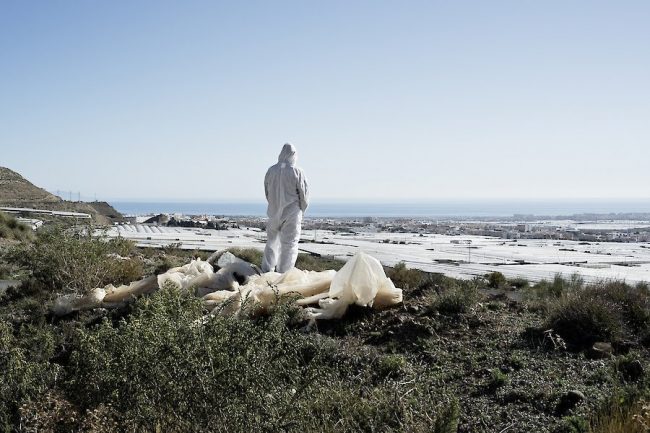
NOWs: Zero Waste
Zero Wastegroup exhibition with Andreas Greiner, Raul Walch et al.
Museum der bildenden Künste Leipzig
Katharinenstraße 10
04109 Leipzig
Opening
26 March, 6 pm
Waste is everywhere: in the Great Pacific garbage patch, as fine particular matter in the air, or as microplastics in the food chain. The group exhibition Zero Waste showcases international positions in contemporary art that point out the urgency to save resources, consume less, and live more sustainably. In diverse installations, videos, sculptural works, and photographs the artists investigate the global consequences of plastic packaging, tire abrasion, toxic chemicals, and the overproduction of consumer goods. Zero Waste will be realized by the German Environment Agency in cooperation with the MdbK and curated by Hannah Beck-Mannagetta and Lena Fließbach.
Every day shreds from the horticultural greenhouses in southern Spain, also known as “El Mar de Plástico”, drift into the sea – Raul Walch uses these remnants as material for his expansive kinetic objects. For their video work the artist duo Irwan Ahmett & Tita Salina transferred a small fish from a polluted water in Jakarta to a crystal-clear river. Erik Sturm scrapes fine dust from window sills along heavily trafficked streets for producing paint, whereas Swaantje Güntzel’s photographs and objects illustrate the effects microplastics have in cosmetics and on marine creatures. In his laboratory Dani Ploeger experiments with manufacturers’ intentional obsolescence of electronic devices, and Eliana Heredia’s installation works with disposable products and cleaning agents.
The exhibition takes a critical look at the current condition of our planet but also aims to imagine possible solutions, encourage alternative scopes of action, and propose visions for the future. While questioning the lifestyle of the international jet set as well as the lavish use of materials in the art world, the project follows self-imposed climate-friendly rules in an attempt to make its own carbon footprint transparent and to compensate it.
Exhibiting artists: Irwan Ahmett & Tita Salina, Michel de Broin, Nadine Fecht, Vibha Galhotra, Tue Greenfort, Andreas Greiner, Swaantje Güntzel, Eliana Heredia, Bianca Kennedy & The Swan Collective, Wolf von Kries, Christoph Medicus, Klara Meinhardt, Alexander Oelofse, Kadija de Paula & Chico Togni, Dani Ploeger, Mika Rottenberg, Erik Sturm, Raul Walch
Zero Waste will be accompanied by an extensive program of events, including interactive tours and performances, film talks, DIY workshops, and repair cafés. The program is supported by the Fonds Soziokultur e. V.
Irwan Ahmett & Tita Salina, Very Very Important Fish (Still), 2013, Credit to Logout Corps, Jakarta 32°, © Künstlerduo
Michel de Brain, Shared Propulsion Car, 2005, Stills aus der Videodokumentation New York 2015, © Künstler
Vibha Galhotra, Breath by Breath, 2016/17, Foto: Rajesh Kumar, © Künstlerin
Swaantje Güntzel, Mikroplastik II, 2016, Foto: Henriette Pogoda, © VG Bild-Kunst Bonn, 2020
Christoph Medicus, Miss calculations poetry is the working class heroin (Unterschlupf), 2016, Ausstellungsansicht Betakontext Berlin, 2016), © VG Bild-Kunst Bonn, 2020
Zero WasteGruppenausstellung mit Andreas Greiner, Raul Walch et al.
Museum der bildenden Künste Leipzig
Katharinenstraße 10
04109 Leipzig
Eröffnung
26. März, 18 h
Müll ist überall: als gigantischer Strudel im Pazifik, Feinstaub in der Luft und Mikroplastik in der Nahrungskette. Die Gruppenausstellung Zero Waste zeigt internationale Positionen zeitgenössischer Kunst, die auf die Dringlichkeit verweisen, Ressourcen zu schonen, weniger zu konsumieren und nachhaltiger zu leben. In Installationen, Videos, Skulpturen und Fotografien untersuchen die beteiligten KünstlerInnen globale Konsequenzen von Plastikverpackungen, Reifenabrieb, giftigen Chemikalien und Überproduktion. Zero Waste wird realisiert vom Umweltbundesamt in Kooperation mit dem MdbK und kuratiert von Hannah Beck-Mannagetta und Lena Fließbach.
Täglich verwehen Fetzen der als „mar de plástico“ bekannten Gemüseplantagen in Südspanien ins Meer. Raul Walch dienen sie als Material für sein raumgreifendes Mobile. Das Künstlerduo Irwan Ahmett und Tita Salina überführt für seine Videoarbeit einen kleinen Fisch von einem vermüllten Gewässer in Jakarta in einen kristallklaren Fluss. Während Erik Sturm Feinstaub von Fensterbänken stark befahrener Straßen kratzt, um daraus Farbe herzustellen, führt Swaantje Güntzel in ihren Fotografien und Objekten die Auswirkungen von Mikroplastik aus Kosmetikprodukten auf Meerestiere vor Augen. In seinem Labor experimentiert Dani Ploeger mit dem von Herstellern bewusst herbeigeführten Alterungsprozess elektronischer Geräte und Eliana Heredia arbeitet in ihrer Installation mit Wegwerfprodukten und Reinigungsmitteln.
Die Ausstellung möchte nicht nur einen kritischen Blick auf den aktuellen Zustand unserer Erde werfen, sondern Lösungsansätze diskutieren, zu alternativen Handlungsmöglichkeiten anregen und Visionen für die Zukunft entwerfen. Nicht zuletzt hinterfragt das Projekt auch den verschwenderischen Umgang mit Ressourcen in der Kunstwelt sowie den CO2-Fußabdruck der Ausstellung selbst.
Zero Waste wird von einem umfangreichen Veranstaltungsprogramm begleitet. Führungen und Filmgespräche mit Aktivist_innen und Wissenschaftler_innen sowie Performances wie das interaktive „Black-Cloud“-Drachenfliegen von Vibha Galhotra oder die Zero-Waste-Küche von Kadija de Paula und Chico Togni erweitern die Ausstellung ebenso wie DIY-Workshops und Repair Cafés mit lokalen Partner_innen für Kinder und Erwachsene. Das Programm wird ergänzend mit freundlicher Unterstützung des Fonds Soziokultur e.V. realisiert.
Zero Waste präsentiert Arbeiten von Irwan Ahmett & Tita Salina, Michel de Broin, Nadine Fecht, Vibha Galhotra, Tue Greenfort, Andreas Greiner, Swaantje Güntzel, Eliana Heredia, Bianca Kennedy & The Swan Collective, Wolf von Kries, Christoph Medicus, Klara Meinhardt, Alexander Oelofse, Kadija de Paula & Chico Togni, Dani Ploeger, Mika Rottenberg, Erik Sturm und Raul Walch.
Zero Waste realisiert das Umweltbundesamt innerhalb seiner Programmreihe „Kunst und Umwelt“. Wie können und wollen wir in Zukunft leben, ohne unsere Lebensgrundlage zu zerstören? Wie können wir lernen, neue Wege zu denken? Und wie kommen wir vom Wissen zum Handeln? Kunst und Kultur können einen wesentlichen Beitrag zum gesellschaftlichen Verständigungsprozess über Zukunftschancen und nachhaltige Entwicklung in unserer Gesellschaft leisten. Seit Mitte der achtziger Jahre pflegt das Umweltbundesamt, Deutschlands zentrale Umweltbehörde, deshalb mittels dieser Reihe den Dialog mit Kunstschaffenden.
Irwan Ahmett & Tita Salina, Very Very Important Fish (Still), 2013, Credit to Logout Corps, Jakarta 32°, © Künstlerduo
Michel de Brain, Shared Propulsion Car, 2005, Stills aus der Videodokumentation New York 2015, © Künstler
Vibha Galhotra, Breath by Breath, 2016/17, Foto: Rajesh Kumar, © Künstlerin
Swaantje Güntzel, Mikroplastik II, 2016, Foto: Henriette Pogoda, © VG Bild-Kunst Bonn, 2020
Christoph Medicus, Miss calculations poetry is the working class heroin (Unterschlupf), 2016, Ausstellungsansicht Betakontext Berlin, 2016), © VG Bild-Kunst Bonn, 2020
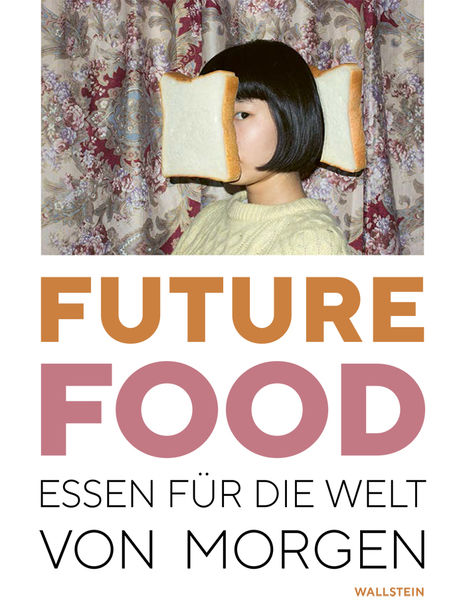
NOWs: Future Food
Michael Zee, Symmetry Breakfast / Fotografien, 2013 – 2019 © Michael Zee
Future Food. Essen für die Welt von morgenGroup exhibition with Andreas Greiner et al.
Deutsches Hygiene-Museum
Lingnerplatz 1
01069 Dresden
Stellen Sie sich einen Restaurantbesuch im Jahr 2050 vor. Was wird auf Ihrem Teller liegen – das gute alte Schnitzel, ein Gemüse-Burger oder Fleisch, das im Labor gezüchtet wurde? Oder wird Ihr Teller leer bleiben, weil eine auf zehn Milliarden Menschen angewachsene Weltbevölkerung schlicht nicht mehr satt zu bekommen ist?
Die Ausstellung Future Food. Essen für die Welt von morgen konfrontiert Sie mit einer der größten Herausforderungen unserer Zeit. In drei Kapiteln folgen Sie dem Weg unserer Lebensmittel vom Stall oder Feld bis auf den Tisch. Es geht um Themen wie globale Verteilungsgerechtigkeit, um vegetarische Ernährung oder die Macht der großen Lebensmittelkonzerne. Und natürlich geht es um das Essen als Erlebnis voller Genuss, das Identität und Gemeinschaft stiftet.
Die Ausstellung zeigt, dass die Zukunft der Welternährung von politischen Weichenstellungen, aber auch von persönlichen Entscheidungen abhängen wird. Neben musealen Exponaten präsentiert Future Food interaktive Medien, Videoinstallationen, wissenschaftliche Prototypen sowie künstlerische Positionen. Nützliches Faktenwissen vermittelt die Ausstellung in anschaulichen Wandgrafiken.
Historische Dokumente und Objekte erzählen von Ideen, die ihrer Zeit weit voraus waren, und von solchen, die an den Gesetzen des Markts und den Gewohnheiten der Konsument*innen scheiterten. Bei Ihrem Rundgang durch ein Gewächshaus, ein Logistikzentrum, einen Supermarkt und an einer Festtafel können Sie sich die Frage stellen: Werden WIR es künftig besser machen?
Beteiligte Künstler*innen und Designer*innen
Wojtek Doroszuk, Kasia Fudakowski, Andreas Greiner, Jinhyun Jeon, Ana Lira, NEFF & Reiko Kaneko, Laura López, Izumi Miyazaki, Neozoon, Haley Morris-Caf iero, Ingrid Pollard, Stephanie De Rouge, Carolin Schulze, Taryn Simon, Michael Zee
Kuratorin und Projektleiterin: Viktoria Krason
Begleitpublikation: Future Food. Essen für die Welt von morgen. Herausgegeben von Anna-Lisa Dieter und Viktoria Krason für das Deutsche Hygiene-Museum Dresden. Wallstein Verlag, Göttingen 2020, 176 Seiten, 19,90 €
Michael Zee, Symmetry Breakfast / Fotografien, 2013 – 2019 © Michael Zee
Future Food. Essen für die Welt von morgenGroup exhibition with Andreas Greiner et al.
Deutsches Hygiene-Museum
Lingnerplatz 1
01069 Dresden
Stellen Sie sich einen Restaurantbesuch im Jahr 2050 vor. Was wird auf Ihrem Teller liegen – das gute alte Schnitzel, ein Gemüse-Burger oder Fleisch, das im Labor gezüchtet wurde? Oder wird Ihr Teller leer bleiben, weil eine auf zehn Milliarden Menschen angewachsene Weltbevölkerung schlicht nicht mehr satt zu bekommen ist?
Die Ausstellung Future Food. Essen für die Welt von morgen konfrontiert Sie mit einer der größten Herausforderungen unserer Zeit. In drei Kapiteln folgen Sie dem Weg unserer Lebensmittel vom Stall oder Feld bis auf den Tisch. Es geht um Themen wie globale Verteilungsgerechtigkeit, um vegetarische Ernährung oder die Macht der großen Lebensmittelkonzerne. Und natürlich geht es um das Essen als Erlebnis voller Genuss, das Identität und Gemeinschaft stiftet.
Die Ausstellung zeigt, dass die Zukunft der Welternährung von politischen Weichenstellungen, aber auch von persönlichen Entscheidungen abhängen wird. Neben musealen Exponaten präsentiert Future Food interaktive Medien, Videoinstallationen, wissenschaftliche Prototypen sowie künstlerische Positionen. Nützliches Faktenwissen vermittelt die Ausstellung in anschaulichen Wandgrafiken.
Historische Dokumente und Objekte erzählen von Ideen, die ihrer Zeit weit voraus waren, und von solchen, die an den Gesetzen des Markts und den Gewohnheiten der Konsument*innen scheiterten. Bei Ihrem Rundgang durch ein Gewächshaus, ein Logistikzentrum, einen Supermarkt und an einer Festtafel können Sie sich die Frage stellen: Werden WIR es künftig besser machen?
Beteiligte Künstler*innen und Designer*innen
Wojtek Doroszuk, Kasia Fudakowski, Andreas Greiner, Jinhyun Jeon, Ana Lira, NEFF & Reiko Kaneko, Laura López, Izumi Miyazaki, Neozoon, Haley Morris-Caf iero, Ingrid Pollard, Stephanie De Rouge, Carolin Schulze, Taryn Simon, Michael Zee
Kuratorin und Projektleiterin: Viktoria Krason
Begleitpublikation: Future Food. Essen für die Welt von morgen. Herausgegeben von Anna-Lisa Dieter und Viktoria Krason für das Deutsche Hygiene-Museum Dresden. Wallstein Verlag, Göttingen 2020, 176 Seiten, 19,90 €
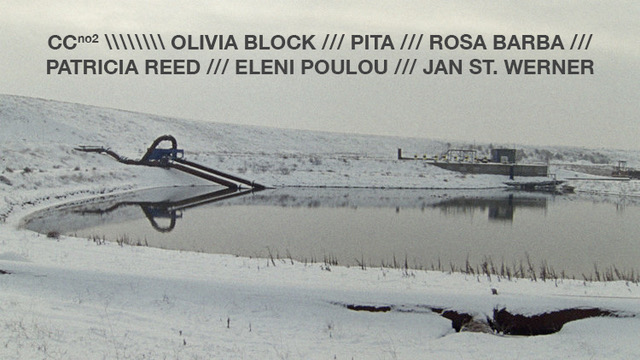
NOWs: Jan St. Werner + Guests at Ausland
Fiebplatter Catalogue: Jan St. Werner and Guestsconcert, salon, club night
AUSLAND
Lychener Str. 60
10437 Berlin
14 March 2020
Doors 7:30 pm, Start 8:30 pm | 9 EUR | @facebook
– tickets at the door | detailed timetable TBA in March –
CC No. 2 – Craving Coincidence
pt. 1
Premiere! For our new series CC No. 2 – Craving Coincidence, we’ve invited six musicians to curate one long ausland-night each, inbetween concert evening, salon and club night.
They’re weaving their own concert into a heterogenuos programme featuring contributions by further artists.
Tonight’s first edition was put together by Jan St. Werner (Microstoria, Mouse on Mars), who’ll bring Olivia Block, PITA, Rosa Barba, Patricia Reed and Eleni Poulou with him to ausland, and present the book “Decay Object” together with Rupert Smyth. The evening as such becomes part of St. Werner’s long-term project “Fiepblatter Catalogue”.
At project space Farbvision, the exhibition format Fiepblatter Short Decay Store follows the next weekend.
OLIVIA BLOCK live
– electronics –
www.oliviablock.net
PITA live
– electronics –
www.editionsmego.com/pita
JAN ST. WERNER live
– electronics –
www.thrilljockey.com/jan-st-werner
ROSA BARBA: “Somnium”
– film screening –
www.rosabarba.com/somnium-2011
PATRICIA REED: “Frames of Reference for the Inexistent”
– diagrammatic lecture –
www.aestheticmanagement.com
ELENI POULOU
DJ-Set
yiuu.bandcamp.com
JAN ST. WERNER + RUPERT SMYTH: “Decay Object”
– book presentation –
www.rupertsmyth.com
Cancelled: Sat /Sun March 21/22
FIEPBLATTER SHORT DECAY STORE at Farbvision
In connection to the CC No. 2-live programme at ausland, Farbvision presents an exhibition by Jan St. Werner referring to his long-term project Fieplatter Catalogue on the weekend of March 21/22 including graphics and artwork related to the series, special collectables and the complete Fiepblatter Catalogue-recordings.
Instead of the fiepblatter record store at farbvision, the new book is available at the fiepblatter catalogue bandcamp store:
fiepblatter.bandcamp.com
fiepblatter.bandcamp.com/merch/decay-object-fiepblatter-catalogue-7
Fiebplatter Catalogue: Jan St. Werner and Guestsconcert, salon, club night
AUSLAND
Lychener Str. 60
10437 Berlin
14. März 2020
Doors 19:30 Uhr, Start 20:30 Uhr | 9 EUR | @facebook
– tickets at the door | detailed timetable TBA in March –
CC No. 2 – Craving Coincidence
pt. 1
Premiere! Zur neuen ausland-Reihe CC No. 2 – Craving Coincidence sind sechs Musiker*innen eingeladen, je einen langen Abend frei zu gestalten:
Sie stellen ihren eigenen Auftritt in den Kontext eines heterogenen Programms zwischen Konzertabend, Salon und Clubnacht.
Den Auftakt heute macht Jan St. Werner (Microstoria, Mouse on Mars),
der Olivia Block, PITA, Rosa Barba, Patricia Reed und Eleni Poulou ins ausland mitbringt und zusammen mit Rupert Smyth das Buch “Decay Object” präsentieren wird. Der Abend wird selbst zu einem Teil von St. Werners Langzeitprojekt “Fiepblatter Catalogue”.
Am nächsten Wochenende folgt im Projektraum Farbvision das Ausstellungsformat Fiepblatter Short Decay Store.
OLIVIA BLOCK live
– electronics –
www.oliviablock.net
PITA live
– electronics –
www.editionsmego.com/pita
JAN ST. WERNER live
– electronics –
www.thrilljockey.com/jan-st-werner
ROSA BARBA: “Somnium”
– film screening –
www.rosabarba.com/somnium-2011
PATRICIA REED: “Frames of Reference for the Inexistent”
– diagrammatic lecture –
www.aestheticmanagement.com
ELENI POULOU
DJ-Set
yiuu.bandcamp.com
JAN ST. WERNER + RUPERT SMYTH: “Decay Object”
– book presentation –
www.rupertsmyth.com
Cancelled: Sat /Sun March 21/22
FIEPBLATTER SHORT DECAY STORE at Farbvision
In connection to the CC No. 2-live programme at ausland, Farbvision presents an exhibition by Jan St. Werner referring to his long-term project Fieplatter Catalogue on the weekend of March 21/22 including graphics and artwork related to the series, special collectables and the complete Fiepblatter Catalogue-recordings.
Instead of the fiepblatter record store at farbvision, the new book is available at the fiepblatter catalogue bandcamp store:
fiepblatter.bandcamp.com
fiepblatter.bandcamp.com/merch/decay-object-fiepblatter-catalogue-7
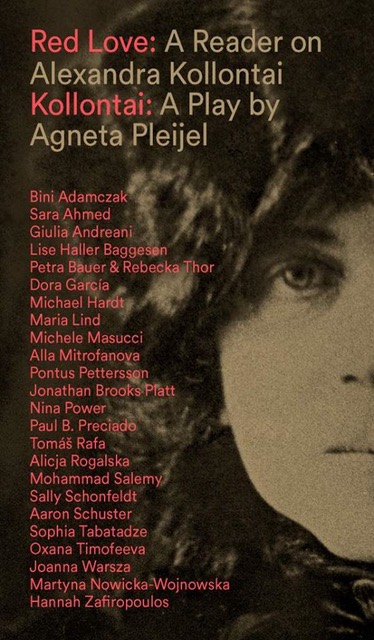
NOWs: Red Love. A Reader on Alexandra Kollontai – Discussion and Book Launch
Red Love: A Reader on Alexandra KollontaiDiscussion and Book Launch with Bini Adamczak, Maria Lind, Mechele Masucci, Aaron Schuster, Sophia Tabatadze, Oxana Timofeeva, Mohammad Salemy and Joanna Warsza
Cabinet
Ebersstrasse 3
10827 Berlin (careful: not Ebertstrasse)
12 March, 7 pm
On the occasion of the release of Red Love: A Reader on Alexandra Kollontai, please join us for an evening dedicated to exploring the legacy of the Soviet writer and revolutionary. Appointed the People’s Commissar of Social Welfare after the October Revolution, Kollontai worked to introduce a number introduction of crucial reforms for women’s liberation, including abortion rights, secularized marriage, and paid maternity leave. For her, “comradely love” was a fully political force.
The evening’s discussion featuring several of the contributors to the anthology—Bini Adamczak, Michele Masucci, Aaron Schuster, Sophia Tabatadze, Oxana Timofeeva, and Mohammad Salemy—will be moderated by two of the anthology’s editors, Maria Lind and Joanna Warsza. In addition to presenting this historical figure, we will ask how to read Kollontai’s vision of love today and how to relate it to current feminist struggles?
The anthology stems from research conducted by CuratorLab at Konstfack University in Stockholm and by Tensta konsthall in the context of an exhibition by Dora García in 2018.
Drinks and red borscht will be served.
Red Love: A Reader on Alexandra KollontaiDiscussion and Book Launch with Bini Adamczak, Maria Lind, Mechele Masucci, Aaron Schuster, Sophia Tabatadze, Oxana Timofeeva, Mohammad Salemy and Joanna Warsza
Cabinet
Ebersstrasse 3
10827 Berlin (careful: not Ebertstrasse)
12 March, 7 pm
On the occasion of the release of Red Love: A Reader on Alexandra Kollontai, please join us for an evening dedicated to exploring the legacy of the Soviet writer and revolutionary. Appointed the People’s Commissar of Social Welfare after the October Revolution, Kollontai worked to introduce a number introduction of crucial reforms for women’s liberation, including abortion rights, secularized marriage, and paid maternity leave. For her, “comradely love” was a fully political force.
The evening’s discussion featuring several of the contributors to the anthology—Bini Adamczak, Michele Masucci, Aaron Schuster, Sophia Tabatadze, Oxana Timofeeva, and Mohammad Salemy—will be moderated by two of the anthology’s editors, Maria Lind and Joanna Warsza. In addition to presenting this historical figure, we will ask how to read Kollontai’s vision of love today and how to relate it to current feminist struggles?
The anthology stems from research conducted by CuratorLab at Konstfack University in Stockholm and by Tensta konsthall in the context of an exhibition by Dora García in 2018.
Drinks and red borscht will be served.
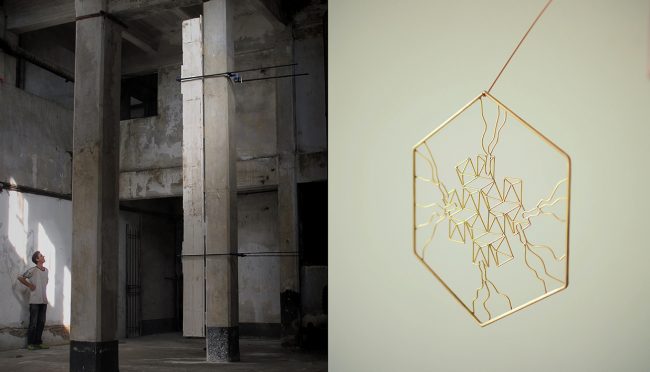
NOWs: Mindscapes by Elise Eeraerts and Claude Cattelain
Mindscapesexhibition by Elise Eeraerts and Claude Cattelain
Opening
8 March, 3 pm – 7 pm
Plagiarama
Rivoli Building C24
690 chaussée de Waterloo / Waterloosesteenweg
Brussels, Belgium
exhibition concept by Yuna Mathieu-Chovet
The works of Elise Eeraerts and Claude Cattelain rely upon strong ties that unite them to the materials they work with. They both work from simple raw material, with only light transformations. Transfers, movements and balances of materials are at the heart of their practices, with particular attention paid to prehistoric and early cultures.
Elise Eeraerts presents soil samples containing several centuries of geological history. She considers human traces on nature, as well as the scientific, mathematical and chemical representations of it, and she is interested in the geometry resulting from observations. Her most recent works on metals and their conductive qualities has led her to work with technological means.
Claude Cattelain challenges the environment through performance. The place of the body is central: a “ferryman”, the center of intention, is the one who relates human construction to nature. His works are commensurate to his own body. He is attached to ancestral gestures and rituals: leaving a trace in the clay, placing objects in balance or igniting an object. He expresses the body as a support that distributes energies.
The artists question their environment by showing a keen interest in the landscape, nature and the human impact on its biotope, both personally and collectively. By using the notion of landscape in relation to humans, the artists are returning to interiority, while including the human in its context. They highlight that access to outside is made through inside and invite us to observe our own mental landscape.
Mindscapesexhibition by Elise Eeraerts and Claude Cattelain
Opening
8 March, 3 pm – 7 pm
Plagiarama
Rivoli Building C24
690 chaussée de Waterloo / Waterloosesteenweg
Brussels, Belgium
exhibition concept by Yuna Mathieu-Chovet
The works of Elise Eeraerts and Claude Cattelain rely upon strong ties that unite them to the materials they work with. They both work from simple raw material, with only light transformations. Transfers, movements and balances of materials are at the heart of their practices, with particular attention paid to prehistoric and early cultures.
Elise Eeraerts presents soil samples containing several centuries of geological history. She considers human traces on nature, as well as the scientific, mathematical and chemical representations of it, and she is interested in the geometry resulting from observations. Her most recent works on metals and their conductive qualities has led her to work with technological means.
Claude Cattelain challenges the environment through performance. The place of the body is central: a “ferryman”, the center of intention, is the one who relates human construction to nature. His works are commensurate to his own body. He is attached to ancestral gestures and rituals: leaving a trace in the clay, placing objects in balance or igniting an object. He expresses the body as a support that distributes energies.
The artists question their environment by showing a keen interest in the landscape, nature and the human impact on its biotope, both personally and collectively. By using the notion of landscape in relation to humans, the artists are returning to interiority, while including the human in its context. They highlight that access to outside is made through inside and invite us to observe our own mental landscape.
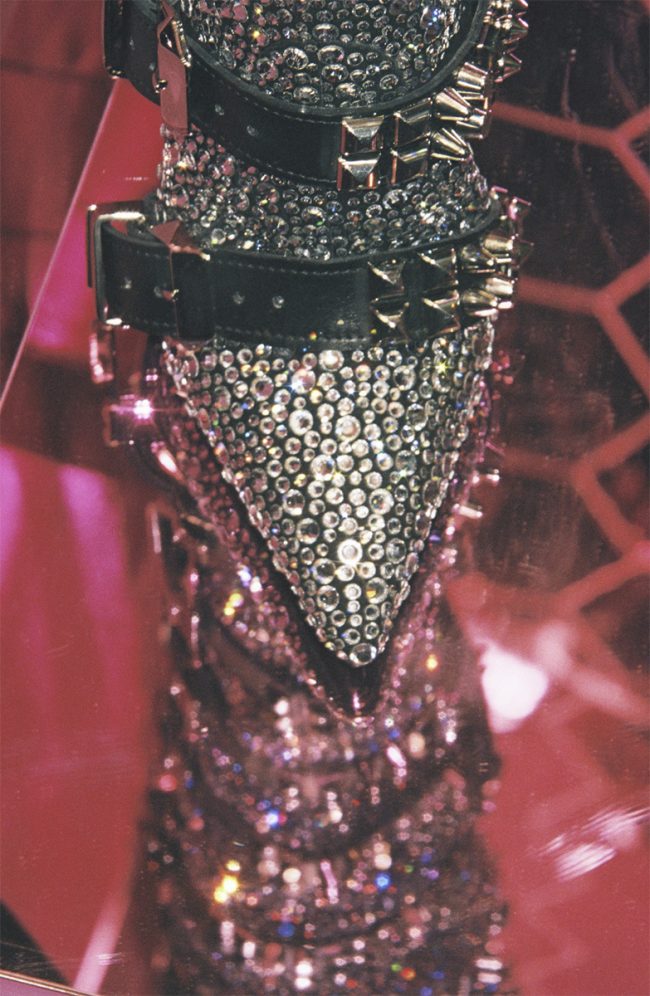
NOWs: Chic by Bruno Zhu
Chicsolo exhibition by Bruno Zhu
Opening
5 March, 7 pm
Fragile
Leipzigerstraße 63
10117 Berlin
Fragile is pleased to announce the collaboration with Bruno Zhu for his solo show Chic.
I kept returning to ‘whys’. Back then as I photographed: why the vertical format, why the raised, fallen figures? And now: why the recurring scenes, why bodies, events in arousal? Heat. Perhaps it never was about photographing ‘sex’, but about being driven by it, so a parallel between the camera lens and the phallus is drawn. Shooting, jerking, pressing. Constantly stunted by the shutter and the membrane.
Proverbs like ‘curiosity killed the cat’ or ‘Peeping Tom’ came to mind. They are folky warnings to not look beyond one’s means. But what if one does, what would one see? Peeping Tom went blind after spying Lady Godiva on her horse riding naked down the streets. And even though my work is not about Tom, it was poignant to remember cautionary tales where vision-knowledge-discovery are tied to human fatalism: when is an opportunity too risky, when is a cut too deep? Ah, according to folklore, Tom was a tailor!
About FRAGILE
FRAGILE fosters a program of conversation, antagonism, renegotiation, and celebration.
FRAGILE is a non-profit project for contemporary artistic practices located in Berlin. It encompasses an exhibition and a residency space.
FRAGILE is guided by curations etymology, the practice of caring and was founded on the warmest summerday of 2018 by Maurin Dietrich and Jonas Wendelin.
Chicsolo exhibition by Bruno Zhu
Opening
5 March, 7 pm
Fragile
Leipzigerstraße 63
10117 Berlin
Fragile is pleased to announce the collaboration with Bruno Zhu for his solo show Chic.
I kept returning to ‘whys’. Back then as I photographed: why the vertical format, why the raised, fallen figures? And now: why the recurring scenes, why bodies, events in arousal? Heat. Perhaps it never was about photographing ‘sex’, but about being driven by it, so a parallel between the camera lens and the phallus is drawn. Shooting, jerking, pressing. Constantly stunted by the shutter and the membrane.
Proverbs like ‘curiosity killed the cat’ or ‘Peeping Tom’ came to mind. They are folky warnings to not look beyond one’s means. But what if one does, what would one see? Peeping Tom went blind after spying Lady Godiva on her horse riding naked down the streets. And even though my work is not about Tom, it was poignant to remember cautionary tales where vision-knowledge-discovery are tied to human fatalism: when is an opportunity too risky, when is a cut too deep? Ah, according to folklore, Tom was a tailor!
About FRAGILE
FRAGILE fosters a program of conversation, antagonism, renegotiation, and celebration.
FRAGILE is a non-profit project for contemporary artistic practices located in Berlin. It encompasses an exhibition and a residency space.
FRAGILE is guided by curations etymology, the practice of caring and was founded on the warmest summerday of 2018 by Maurin Dietrich and Jonas Wendelin.
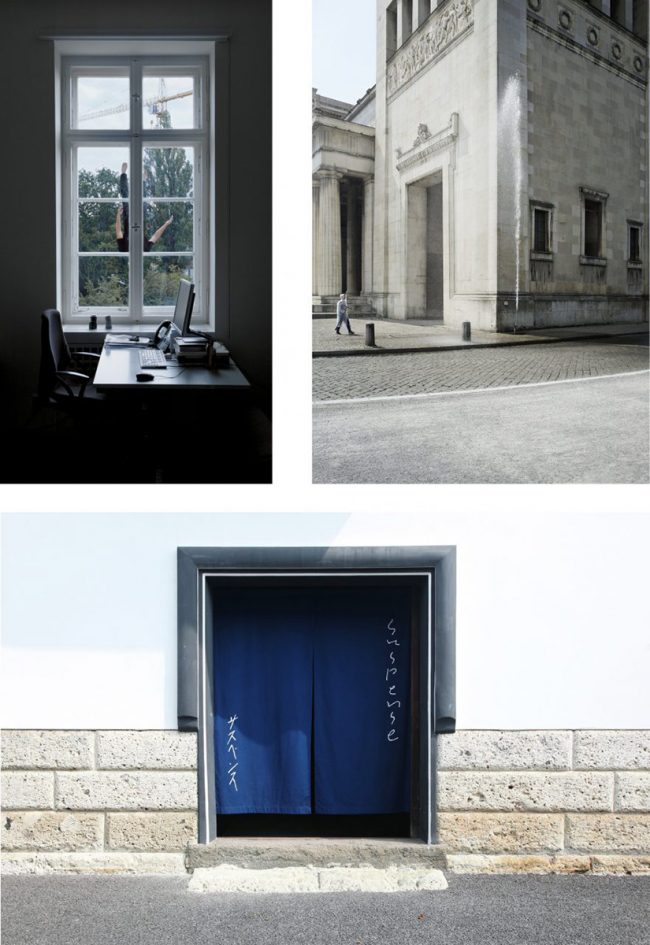
NOWs: suspense by Fabian Knecht, Yuichiro Tamura, Raul Walch
top left: Fabian Knecht, still from Genitiv, 2017;
top right: Raul Walch, Eureka (Königsplatz Munich), 2018;
bottom: Yuichiro Tamura, suspense, 2020
suspensegroup exhibition by Fabian Knecht, Yuichiro Tamura, Raul Walch
Yuka Tsuruno Gallery
1-33-10-3F
Higashi-Shinagawa
Shinagawa-ku
Tokyo, Japan
Yuka Tsuruno Gallery is pleased to present a three person show suspense with Fabian Knecht, Yuichiro Tamura, and Raul Walch, from March 7th to April 4th, 2020. The dialogue between these three artists, which emerged from their time together in 2013 at the Institut für Raumexperimente, Berlin University of the Arts led by Olafur Eliasson, has continued to present day as their paths cross globally. An examination of the common practices and aesthetic languages present in the three artists’ works allows for a renewed reading of their works.
Among Knecht, Tamura, and Walch, all three have developed their practices by engaging with diverse media such as photography, video, installation, public intervention, and performance. In this exhibition, the works on view elicit intangible relationships and de-stabilize the inherent norm by interrupting the contours of social codes, meanings, and histories associated to spaces, locations, things, and events, and assembling hypothetical, dissimilative circumstances.
The title suspense, like the genre, points to the psychological state of continued internal tension in the audience as the plot approaches its conclusion, but this can also allude to “the prolonged state of being suspended.” This “state of being suspended” appears in the work of the three artists as a trajectory of ephemeral exercise in the form of repetition without end, fixed vertical motion, and floating objects.
For example, in Genitiv (2017), a work by Fabian Knecht, who often presents work that dismantles the framework of “exhibitions,” a man plunging is seen through a window of the Hamburger Bahnhof – Museum für Gegenwart in Berlin; in Yuichiro Tamura’s C’s Ladder, N’s Ashbins (2020) and suspense (2020), a ladder and ashbins intended for falling, as well as a hanging curtain are displayed; in Raul Walch’s public intervention Eureka (2016/2018), the projectile water that should strike the ground and disappear is captured momentarily. These works which retain the process that confronts an event even while anticipating its ending, and concern the motion of hovering in space, induce the simultaneously physical and immaterial temporality and its recurrence. At the opening reception, there will be a performance of Raul Walch’s intervention Eureka Tokyo.
-
Fabian Knecht
Born 1980 in Magdeburg, Fabian Knecht studied at the Universität der Künste Berlin and at the California Institute of the Arts. In 2014 he completed his master’s degree with Olafur Eliasson, at whose Institut für Raumexperimente he studied from 2009 to 2014. In 2012 he assisted in the studio of Matthew Barney in New York. Fabian Knecht’s works have been shown in national and international institutions and exhibitions, among them the MSU Museum for Contemporary Art (Zagreb), the Moscow International Biennale for Young Art, the Neue Nationalgalerie (Berlin), Hamburger Bahnhof (Berlin), the Imperial War Museum (London), and the Staatliche Kunsthalle Baden-Baden.
Yuichiro Tamura
Born 1977 in Toyama, Yuichiro Tamura lives and works in Kyoto. He holds a doctoral degree from the Graduate School of Film and New Media, Tokyo University of the Arts. He was a guest researcher for the Institut für Raumexperimente at the Berlin University of the Arts. His recent solo exhibitions include Milky Mountain (Govett-Brewster Art Gallery, New Zealand, 2019) and Hell Scream (@KCUA, Kyoto, 2018), and group shows include Asian Art Biennial (National Taiwan Museum of Fine Arts, Taichung, 2019), Image Narratives: Literature in Japan (National Art Center, Tokyo, 2019), Roppongi Crossing 2019: Connexions (Mori Art Museum, Tokyo), Busan Biennale (Museum of Contemporary Art Busan, 2018), Nissan Art Award 2017 (BankART Studio NYK, Yokohama), and 2 or 3 Tigers (Haus der Kulturen der Welt, Berlin, 2017).
Raul Walch
Born in 1980, Raul Walch began studying sculpture at the Kunsthochschule Berlin-Weißensee, completed his studies Freien Kunst (free art) at the University of the Arts in Berlin with Olafur Eliasson and became a scholarship holder at Institut für Raumexperimente Berlin. His work has been exhibited at the Neue Nationalgalerie Berlin, Hamburger Bahnhof Berlin, Kunsthaus Dresden, and Kunstverein Arnsberg. Numerous artist-in-residence programs have made it possible to work internationally, such as Tokyo Arts and Space, the Nida Art Colony, and the Hessian Cultural Foundation. Walch currently teaches “Public Art and New Artistic Strategies” at the Bauhaus-University Weimar.
top left: Fabian Knecht, still from Genitiv, 2017; top right: Raul Walch, Eureka (Königsplatz Munich), 2018; bottom: Yuichiro Tamura, suspense, 2020
suspensegroup exhibition by Fabian Knecht, Yuichiro Tamura, Raul Walch
Yuka Tsuruno Gallery
1-33-10-3F
Higashi-Shinagawa
Shinagawa-ku
Tokyo, Japan
Yuka Tsuruno Gallery is pleased to present a three person show suspense with Fabian Knecht, Yuichiro Tamura, and Raul Walch, from March 7th to April 4th, 2020. The dialogue between these three artists, which emerged from their time together in 2013 at the Institut für Raumexperimente, Berlin University of the Arts led by Olafur Eliasson, has continued to present day as their paths cross globally. An examination of the common practices and aesthetic languages present in the three artists’ works allows for a renewed reading of their works.
Among Knecht, Tamura, and Walch, all three have developed their practices by engaging with diverse media such as photography, video, installation, public intervention, and performance. In this exhibition, the works on view elicit intangible relationships and de-stabilize the inherent norm by interrupting the contours of social codes, meanings, and histories associated to spaces, locations, things, and events, and assembling hypothetical, dissimilative circumstances.
The title suspense, like the genre, points to the psychological state of continued internal tension in the audience as the plot approaches its conclusion, but this can also allude to “the prolonged state of being suspended.” This “state of being suspended” appears in the work of the three artists as a trajectory of ephemeral exercise in the form of repetition without end, fixed vertical motion, and floating objects.
For example, in Genitiv (2017), a work by Fabian Knecht, who often presents work that dismantles the framework of “exhibitions,” a man plunging is seen through a window of the Hamburger Bahnhof – Museum für Gegenwart in Berlin; in Yuichiro Tamura’s C’s Ladder, N’s Ashbins (2020) and suspense (2020), a ladder and ashbins intended for falling, as well as a hanging curtain are displayed; in Raul Walch’s public intervention Eureka (2016/2018), the projectile water that should strike the ground and disappear is captured momentarily. These works which retain the process that confronts an event even while anticipating its ending, and concern the motion of hovering in space, induce the simultaneously physical and immaterial temporality and its recurrence. At the opening reception, there will be a performance of Raul Walch’s intervention Eureka Tokyo.
-
Fabian Knecht
Born 1980 in Magdeburg, Fabian Knecht studied at the Universität der Künste Berlin and at the California Institute of the Arts. In 2014 he completed his master’s degree with Olafur Eliasson, at whose Institut für Raumexperimente he studied from 2009 to 2014. In 2012 he assisted in the studio of Matthew Barney in New York. Fabian Knecht’s works have been shown in national and international institutions and exhibitions, among them the MSU Museum for Contemporary Art (Zagreb), the Moscow International Biennale for Young Art, the Neue Nationalgalerie (Berlin), Hamburger Bahnhof (Berlin), the Imperial War Museum (London), and the Staatliche Kunsthalle Baden-Baden.
Yuichiro Tamura
Born 1977 in Toyama, Yuichiro Tamura lives and works in Kyoto. He holds a doctoral degree from the Graduate School of Film and New Media, Tokyo University of the Arts. He was a guest researcher for the Institut für Raumexperimente at the Berlin University of the Arts. His recent solo exhibitions include Milky Mountain (Govett-Brewster Art Gallery, New Zealand, 2019) and Hell Scream (@KCUA, Kyoto, 2018), and group shows include Asian Art Biennial (National Taiwan Museum of Fine Arts, Taichung, 2019), Image Narratives: Literature in Japan (National Art Center, Tokyo, 2019), Roppongi Crossing 2019: Connexions (Mori Art Museum, Tokyo), Busan Biennale (Museum of Contemporary Art Busan, 2018), Nissan Art Award 2017 (BankART Studio NYK, Yokohama), and 2 or 3 Tigers (Haus der Kulturen der Welt, Berlin, 2017).
Raul Walch
Born in 1980, Raul Walch began studying sculpture at the Kunsthochschule Berlin-Weißensee, completed his studies Freien Kunst (free art) at the University of the Arts in Berlin with Olafur Eliasson and became a scholarship holder at Institut für Raumexperimente Berlin. His work has been exhibited at the Neue Nationalgalerie Berlin, Hamburger Bahnhof Berlin, Kunsthaus Dresden, and Kunstverein Arnsberg. Numerous artist-in-residence programs have made it possible to work internationally, such as Tokyo Arts and Space, the Nida Art Colony, and the Hessian Cultural Foundation. Walch currently teaches “Public Art and New Artistic Strategies” at the Bauhaus-University Weimar.
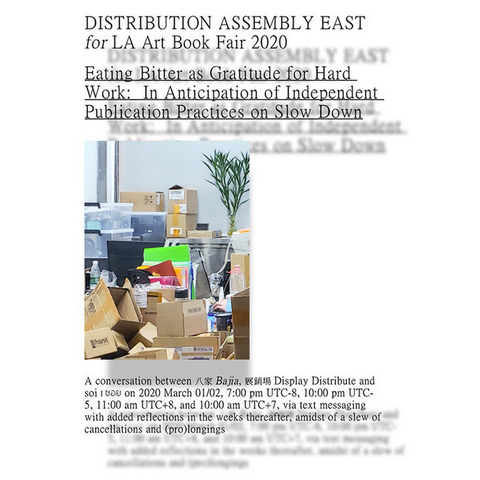
NOWs: Eating Bitter as Gratitude for Hard Work. In Anticipation of Independent Publication Practices on Slow Down
Eating Bitter as Gratitude for Hard Work. In Anticipation of Independent Publication Practices on Slow Down
A conversation between 八家 Bajia, 展銷場 Display Distribute and soi | ซอย on March 01/02, 7:00 UTC-8, 10:00 pm UTC-5, 11:00 am UTC+8, and 10:00 am UTC+7, via text messaging with added reflections in the weeks thereafter [amidst of a slew of cancellations and (pro)longings]
The PDF distributed dialogue with 張佳才 Zandie Brocket, 何穎雅 Elaine W. Ho, 凌明 Ming Lin and Judha Su concerns publishing in the shadows, possibilities for radical infrastructure, and new terms of fulfillment in lieu of Distribution Assembly East‘s participation in the 2020 LA Art Book Fair.
click here to download conversation as pdf
Eating Bitter as Gratitude for Hard Work. In Anticipation of Independent Publication Practices on Slow Down
A conversation between 八家 Bajia, 展銷場 Display Distribute and soi | ซอย on March 01/02, 7:00 UTC-8, 10:00 pm UTC-5, 11:00 am UTC+8, and 10:00 am UTC+7, via text messaging with added reflections in the weeks thereafter [amidst of a slew of cancellations and (pro)longings]
The PDF distributed dialogue with 張佳才 Zandie Brocket, 何穎雅 Elaine W. Ho, 凌明 Ming Lin and Judha Su concerns publishing in the shadows, possibilities for radical infrastructure, and new terms of fulfillment in lieu of Distribution Assembly East‘s participation in the 2020 LA Art Book Fair.
click here to download conversation as pdf
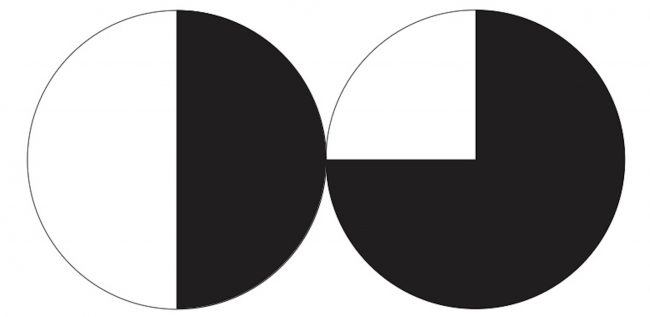
NOWs: DJ-Battle Lippok Bros. vs. Nicolai Bros.
DJ-Battle Lippok Bros. vs. Nicolai Bros.concert, performance
Hamburger Bahnhof – Museum für Gegenwart – Berlin
2 February, 9 pm – 12:30 am
Robert & Ronald Lippok, Carsten & Olaf Nicolai
4 Plattenspieler, 2 Mischpulte, 1 Dancefloor, 1 Jury, 1 Preis
Zur Feier von 20 Jahre “Musikwerke Bildender Künstler” treten die Brüderpaare Nicolai und Lippok erneut gegeneinander an: Wer legt besser auf, wer bringt die Leute mehr in Stimmung und Bewegung? Die Künstler unterziehen sich dabei dem strengen Urteil einer Jury.
Tickets: 10 €. Verkauf nur an der Abendkasse, geöffnet 1 Stunde vor Veranstaltungsbeginn.
Robert & Ronald Lippok, Carsten & Olaf Nicolai
4 Plattenspieler, 2 Mischpulte, 1 Dancefloor, 1 Jury, 1 Preis
Eine Koproduktion von Freunde Guter Musik Berlin e.V., Nationalgalerie im Hamburger Bahnhof – Museum für Gegenwart – Berlin, Staatliche Museen zu Berlin, und Ruhrtriennale. Gefördert durch die Kulturstiftung des Bundes, mit Unterstützung der SAHA Association.
Kuratorenteam:
Ingrid Buschmann / Freunde Guter Musik Berlin e.V.
Gabriele Knapstein / Nationalgalerie im Hamburger Bahnhof
Matthias Osterwold / Ruhrtriennale
Information:
www.freunde-guter-musik-berlin.de
www.musikwerke-bildender-kuenstler.de
www.smb.museum/hbf
www.facebook.com/hamburgerbahnhof
DJ-Battle Lippok Bros. vs. Nicolai Bros.concert, performance
Hamburger Bahnhof – Museum für Gegenwart – Berlin
2. Februar, 21 h – 00:30 h
Robert & Ronald Lippok, Carsten & Olaf Nicolai
4 Plattenspieler, 2 Mischpulte, 1 Dancefloor, 1 Jury, 1 Preis
Zur Feier von 20 Jahre “Musikwerke Bildender Künstler” treten die Brüderpaare Nicolai und Lippok erneut gegeneinander an: Wer legt besser auf, wer bringt die Leute mehr in Stimmung und Bewegung? Die Künstler unterziehen sich dabei dem strengen Urteil einer Jury.
Tickets: 10 €. Verkauf nur an der Abendkasse, geöffnet 1 Stunde vor Veranstaltungsbeginn.
Robert & Ronald Lippok, Carsten & Olaf Nicolai
4 Plattenspieler, 2 Mischpulte, 1 Dancefloor, 1 Jury, 1 Preis
Eine Koproduktion von Freunde Guter Musik Berlin e.V., Nationalgalerie im Hamburger Bahnhof – Museum für Gegenwart – Berlin, Staatliche Museen zu Berlin, und Ruhrtriennale. Gefördert durch die Kulturstiftung des Bundes, mit Unterstützung der SAHA Association.
Kuratorenteam:
Ingrid Buschmann / Freunde Guter Musik Berlin e.V.
Gabriele Knapstein / Nationalgalerie im Hamburger Bahnhof
Matthias Osterwold / Ruhrtriennale
Information:
www.freunde-guter-musik-berlin.de
www.musikwerke-bildender-kuenstler.de
www.smb.museum/hbf
www.facebook.com/hamburgerbahnhof
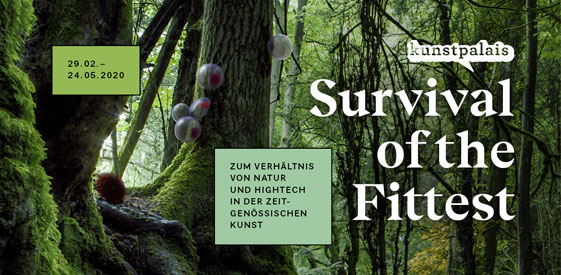
NOWs: Survival of the Fittest
Survival of the Fittestgroup exhibition with Andreas Greiner et al.
Opening
28 February
The current discourse on where humankind is heading is increasingly dominated by the danger that environmental destruction in general and climate change in particular pose for the survival of the species. Global political movements gave the issue a new level of urgency by emphasizing the need for an instant ecological paradigm shift at all levels of society. The role that technology can play in the future is being debated controversially.
From Artificial Intelligence (AI) to blockchain technology, big data and bioengineering – while optimists praise technological innovation as the key to preserving our habitat, skeptics warn about a naive hope that is fueled by an increased lack of understanding of technology. In a flood of contradictory information it becomes harder and harder to objectively evaluate the current state of the world. Caught in a doomsday atmosphere, feelings swing between euphoria and impotence, departure and demise, decadence and “Weltschmerz”.
The international group show features 10 artists that work on the boundaries between nature and high technology and approach their multifaceted relations through photography, computer simulation, video, installations and performances. The exhibition looks at our relation to planet earth and how to shape it in the future – from deconstructive critical perspectives to optimistic views towards the future or fantastic visions of the re-enchantment of nature.
Participating artists: Tega Brain (AU) & Julian Oliver (NZ) & Bengt Sjölen (SE), James Bridle (UK), Simon Denny (NZ), Anna Dumitriu (UK) & Alex May (UK), Futurefarmers (International), Alexandra Daisy Ginsberg (UK), Andreas Greiner (DE), Paul Seidler (DE) & Paul Kolling & Max Hampshire (UK), Jonas Staal (NL), und Pinar Yoldas (TR)
Survival of the FittestGruppenausstellung mit Andreas Greiner et al.
Eröffnung
28. Februar
Im aktuellen Diskurs um die Zukunft der Menschheit wird zunehmend die Gefahr ins Zentrum gerückt, die von Umweltzerstörung und insbesondere den Folgen des Klimawandels für das Überleben unserer Spezies ausgeht. Globale politische Bewegungen gaben dem Thema im letzten Jahr eine neue Dringlichkeit. Sie fordern einen sofortigen ökologischen Paradigmenwechsel auf allen Ebenen der Gesellschaft. Die Rolle, die Technologie dabei spielen kann und sollte, wird kontrovers diskutiert.
Ob Künstliche Intelligenz, Blockchain-Technologie, Big Data oder Bioengineering – Optimist*innen preisen technologische Innovationen als Schlüssel zur Rettung unserer Umwelt, während Kritiker*innen diese Hoffnung als naiv bezeichnen und auf einen zunehmenden Mangel an Verständnis neuester Technologien zurückführen. In einer Flut von widersprüchlichen Informationen über den Zustand der Welt und angesichts des rasanten technologischen Fortschritts wird es zunehmend schwieriger, den Status Quo zu evaluieren. In eine Endzeitstimmung ähnlich der Zeit vor hundert Jahren mischen sich Gefühle von Aufbruch und Untergang, Euphorie und Ohnmacht, Dekadenz und Weltschmerz.
Die internationale Gruppenausstellung im Kunstpalais zeigt 10 künstlerische Positionen, die sich in unterschiedlichen Medien dem komplexen Verhältnis von Natur und Hightech nähern. In Fotografie, Computersimulation, Video, Plastik, Installation und Performance wird das diskursive Feld weit gesteckt. Von dekonstruktiv-kritischen Positionen über optimistische Zukunftsperspektiven bis hin zu phantastischen Visionen einer Wiederverzauberung der Natur wird der Frage nachgegangen, wie sich unser Verhältnis zur Umwelt in Zukunft gestalten lässt. Die Ausstellung begegnet der wachsenden Komplexität des Themas mit ungewöhnlichen und kreativen Perspektiven, die die Grenzen des Erwartbaren verschieben.
Teilnehmende Künstlerinnen und Künstler: Christina Agapakis (US) & Alexandra Daisy Ginsberg (UK) & Sissel Tolaas (NO), Tega Brain (AU) & Julian Oliver (NZ) & Bengt Sjölen (SE), James Bridle (UK), Simon Denny (NZ), Anna Dumitriu (UK) & Alex May (UK), Futurefarmers (International), Páll Ragnar Pálsson (IS) & Andreas Greiner (DE), Paul Seidler (DE) & Paul Kolling (DE) & Max Hampshire (UK), Jonas Staal (NL), Pinar Yoldas (TR)
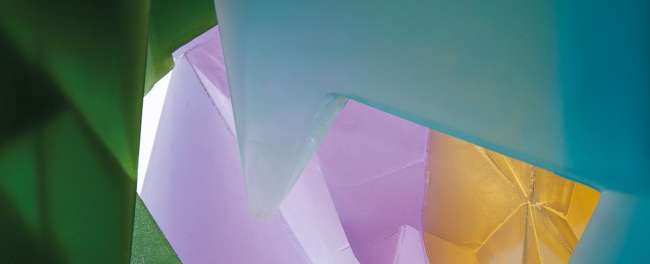
NOWs: Glass and Concrete. Manifestations of the Impossible
Glass and Concrete. Manifestations of the Impossiblegroup exhibition with Elín Hansdóttir et al.
Kai Schiemenz, Four-Colour Block (Detail), 2015, Glas, Betonsockel, 124 x 74 x 65 cm
Marta Herford
Goebenstraße 2–10
32052 Herford
Opening
28 February, 7:30 pm
Fragile delicacy or cool grandeur? Iridescent brilliance or brittle surface? Despite their apparent differences, glass and concrete are connected by a long history.
Like almost no other material they are associated with great architectural visions: from brightly illuminated church buildings to military fortifications, right up to functional domestic appliances. The artists in the exhibition react not only to the changed life in the metropolises of the world. Like in an alchemist’s laboratory, they explore the path of the material between flowing and setting, testing the limits of the possible to pose new questions about crumbling social concepts. Constructions of glass and concrete are staged elegantly and brutally while at the same time energetically shattering the apparent beauty of a hollowed-out metaphor.
In cooperation with Anne Schloen, Cologne
Artists:
Francis Alÿs, Peter Bialobrzeski, Oliver Boberg, Matti Braun, Andreas Bunte, Daniel Buren, Louisa Clement, Louis De Cordier, Alia Farid, Nina Fischer & Maroan el Sani, Thomas Florschuetz, Daniela Friebel, Vincent Ganivet, Jakub Geltner, Isa Genzken, Elín Hansdóttir, Mona Hatoum, Philipp Hennevogl, Stephan Huber, Thomas Huber, Aernoudt Jacobs, Jeffrey James, Isa Melsheimer, Jan Muche, Martin Mühlhoff & Christian Vossiek, Olaf Pernice, Túlio Pinto, Robin Rhode, Kilian Rüthemann, Kai Schiemenz, Wolfgang Schlegel, Adrien Tirtiaux, Tatiana Trouvé, Lena von Goedeke, Martin Walde (in cooperation with Bernd Weinmayer).
Glas und Beton. Manifestationen des UnmöglichenGruppenausstellung mit Elín Hansdóttir et al.
Kai Schiemenz, Four-Colour Block (Detail), 2015, Glas, Betonsockel, 124 x 74 x 65 cm
Marta Herford
Goebenstraße 2–10
32052 Herford
Eröffnung
28. Februar, 19:30 h
Fragile Zartheit oder kühle Erhabenheit? Schillernder Glanz oder spröde Oberfläche? Trotz ihrer augenscheinlichen Unterschiede besitzen Glas und Beton eine lange gemeinsame Geschichte.
Wie kaum ein anderes Material sind sie mit großen Architekturvisionen verbunden: von hell durchfluteten Kirchenbauten über militärische Festungen bis hin zu funktionalen Wohnmaschinen. Die Künstler*innen der Ausstellung reagieren nicht nur auf das veränderte Leben in den Metropolen dieser Welt. Wie in einem alchemistischen Labor erkunden sie selbst den Weg des Materials zwischen Fließen und Erstarren, testen die Grenzen des Möglichen aus, um brüchig gewordene Gesellschaftskonzepte neu zu befragen. Konstruktionen aus Glas und Beton werden elegant und brutal in Szene gesetzt, um zugleich den „schönen Schein“ einer ausgehöhlten Metaphorik energisch zu zerschmettern.
In Kooperation mit Anne Schloen, Köln
Künstler*innen:
Francis Alÿs, Peter Bialobrzeski, Oliver Boberg, Matti Braun, Andreas Bunte, Daniel Buren, Louisa Clement, Louis De Cordier, Alia Farid, Nina Fischer & Maroan el Sani, Thomas Florschuetz, Daniela Friebel, Vincent Ganivet, Jakub Geltner, Isa Genzken, Elín Hansdóttir, Mona Hatoum, Philipp Hennevogl, Stephan Huber, Thomas Huber, Aernoudt Jacobs, Jeffrey James, Isa Melsheimer, Jan Muche, Martin Mühlhoff & Christian Vossiek, Olaf Pernice, Túlio Pinto, Robin Rhode, Kilian Rüthemann, Kai Schiemenz, Wolfgang Schlegel, Adrien Tirtiaux, Tatiana Trouvé, Lena von Goedeke, Martin Walde (in cooperation with Bernd Weinmayer).
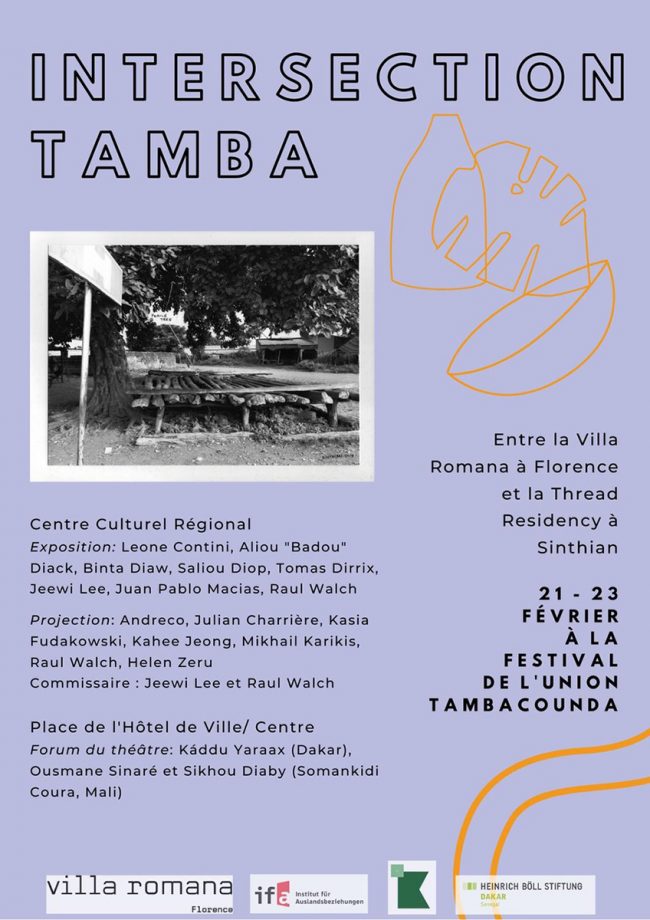
NOWs: Festival de l’Union, Tambacounda and The Rhythm of Giving and Taking, Dakar
Festival de l’Union, Tambacounda and The Rhythm of Giving and Taking, DakarGroup exhibition, lectures and talks
21 – 23 February
Festival de l’Union, Tambacounda
Centre Culturel Régional
Exhibition
With: Leone Contini, Aliou ‘Badou’ Diack, Binta Diaw, Saliou Diop, Thomas Dirrix, Jeewi Lee, Juan Pablo Macias, Raul Walch
Screening
With: Andreco, Julian Charriere, Kasia Fudakowski, Kahee Jeong, Mikhail Karikis, Raul Walch, Helen Zeru
Curated by Jeewi Lee and Raul Walch
Place de l’Hotel de Ville / city center
Theater Forum
With: Káddu Yaraax (Dakar), Ousmane Sinaré und Sikhou Diaby (Somankidi Coura, Mali)
28 February, 6 pm
Kër Thiossane, Dakar
Lectures and talks
With: Leone Contini, Binta Diaw, Jeewi Lee, Juan Pablo Macias, Negga Dou Tamba
Both collaborations in Tambacounda and Dakar mark the provisional conclusion of the artistic research and exhibition project SEEDS FOR FUTURE MEMORIES. Voicing the two ends of migration. In 2018, thirteen artists travelled to Sinthian, Senegal and Florence, Italy to confront the contemporary realities of colonialism, and to jointly develop an aesthetic and political dialogue. Hosts and partners were Villa Romana in Florence and the Thread Residency in Sinthian. In 2019, artistic works resulting from these researches were presented in three parallel exhibitions in Berlin and at Villa Romana in Florence followed by the symposium TRANSVERSE TRAJECTORIES.
Invited by the Senegalese acitivist, rapper and artist Negga Dou Tamba five artists – Leone Contini, Binta Diaw, Jeewi Lee, Juan Pablo Macias, Raul Walch – are now contributing to the Festival de l’Union in Tambacounda, joined by guests who were part of or whose paths have crossed with the project SEEDS in the past two years. This fifth edition of the festival is dedicated to the subject of environment, its preservation and its valuation. Negga Dou Tamba initiated the festival in 2016 as a big public event to praise the heritage, the common good and the power of imagination in Southeastern Senegal. Dozens of local, regional and international performers will participate in this joyful event.
Subsequently the artists Leone Contini, Binta Diaw, Jeewi Lee, Juan Pablo Macias and Negga Dou Tamba will reflect on the The Rhythm of Giving and Taking at Kër Thiossane in Dakar, a space for Art and Multimedia created in 2002. How do artists navigate in trans-cultural spaces contested with hierarchies of knowledge? What are the formats with which the artists respond to the site, to the issue of migration and to the festival’s major theme, ecology? The audience is invited to discuss collaborative artistic practices in a trans-continental context after a set of lectures and talks and to conclude the evening with a commonly created informal dinner.
www.ker-thiossane.org/
www.facebook.com/pg/festivaldelunion/
The Tambacounda region in Senegal is one of the major hubs of migration to Europe. Together with the Thread Residency in Sinthian, Senegal, the artist house Villa Romana started therefore a transcontinental exchange project in 2018. After exhibitions in Berlin and Florence and a symposium on rural art, the project returned to Tambacounda in February. At the invitation of the activist and rapper Negga Dou Tamba, the artists Binta Diaw, Leone Contini, Jeewi Lee, Juan Pablo Macias, Raul Walch participated in the 5th edition of the Festival de l’Union (21.-23.2.2020). Negga Dou Tamba initiated this hip-hop and cultural festival in 2016 as a major public event to praise the heritage, the common good and the imagination in Southeast Senegal. Curated by Agnes Stillger,”Intersection Tamba” included an exhibition, film screenings and theater. The project addressed the themes migration and ecology, but most importantly, participation was about building alternative relationships and giving international visibility to the region’s wealth and issues.
Festival de l’Union, Tambacounda and The Rhythm of Giving and Taking, DakarGroup exhibition, lectures and talks
21 – 23 February
Festival de l’Union, Tambacounda
Centre Culturel Régional
Exhibition
With: Leone Contini, Aliou ‘Badou’ Diack, Binta Diaw, Saliou Diop, Thomas Dirrix, Jeewi Lee, Juan Pablo Macias, Raul Walch
Screening
With: Andreco, Julian Charriere, Kasia Fudakowski, Kahee Jeong, Mikhail Karikis, Raul Walch, Helen Zeru
Curated by Jeewi Lee and Raul Walch
Place de l’Hotel de Ville / city center
Theater Forum
With: Káddu Yaraax (Dakar), Ousmane Sinaré und Sikhou Diaby (Somankidi Coura, Mali)
28 February, 6 pm
Kër Thiossane, Dakar
Lectures and talks
With: Leone Contini, Binta Diaw, Jeewi Lee, Juan Pablo Macias, Negga Dou Tamba
Both collaborations in Tambacounda and Dakar mark the provisional conclusion of the artistic research and exhibition project SEEDS FOR FUTURE MEMORIES. Voicing the two ends of migration. In 2018, thirteen artists travelled to Sinthian, Senegal and Florence, Italy to confront the contemporary realities of colonialism, and to jointly develop an aesthetic and political dialogue. Hosts and partners were Villa Romana in Florence and the Thread Residency in Sinthian. In 2019, artistic works resulting from these researches were presented in three parallel exhibitions in Berlin and at Villa Romana in Florence followed by the symposium TRANSVERSE TRAJECTORIES.
Invited by the Senegalese acitivist, rapper and artist Negga Dou Tamba five artists – Leone Contini, Binta Diaw, Jeewi Lee, Juan Pablo Macias, Raul Walch – are now contributing to the Festival de l’Union in Tambacounda, joined by guests who were part of or whose paths have crossed with the project SEEDS in the past two years. This fifth edition of the festival is dedicated to the subject of environment, its preservation and its valuation. Negga Dou Tamba initiated the festival in 2016 as a big public event to praise the heritage, the common good and the power of imagination in Southeastern Senegal. Dozens of local, regional and international performers will participate in this joyful event.
Subsequently the artists Leone Contini, Binta Diaw, Jeewi Lee, Juan Pablo Macias and Negga Dou Tamba will reflect on the The Rhythm of Giving and Taking at Kër Thiossane in Dakar, a space for Art and Multimedia created in 2002. How do artists navigate in trans-cultural spaces contested with hierarchies of knowledge? What are the formats with which the artists respond to the site, to the issue of migration and to the festival’s major theme, ecology? The audience is invited to discuss collaborative artistic practices in a trans-continental context after a set of lectures and talks and to conclude the evening with a commonly created informal dinner.
www.ker-thiossane.org/
www.facebook.com/pg/festivaldelunion/
The Tambacounda region in Senegal is one of the major hubs of migration to Europe. Together with the Thread Residency in Sinthian, Senegal, the artist house Villa Romana started therefore a transcontinental exchange project in 2018. After exhibitions in Berlin and Florence and a symposium on rural art, the project returned to Tambacounda in February. At the invitation of the activist and rapper Negga Dou Tamba, the artists Binta Diaw, Leone Contini, Jeewi Lee, Juan Pablo Macias, Raul Walch participated in the 5th edition of the Festival de l’Union (21.-23.2.2020). Negga Dou Tamba initiated this hip-hop and cultural festival in 2016 as a major public event to praise the heritage, the common good and the imagination in Southeast Senegal. Curated by Agnes Stillger,”Intersection Tamba” included an exhibition, film screenings and theater. The project addressed the themes migration and ecology, but most importantly, participation was about building alternative relationships and giving international visibility to the region’s wealth and issues.
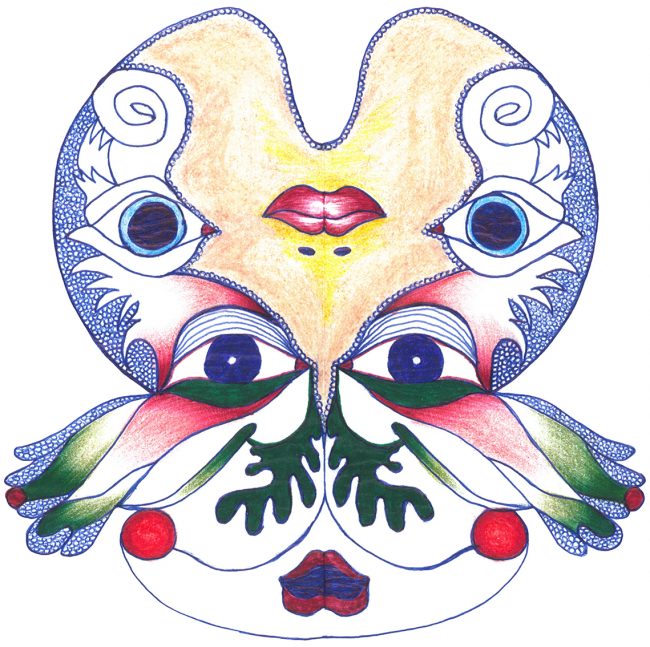
NOWs: I’m Meeting A Hybrid Of Past And Now
solo exhibition by Dardan Zhegrova
Opening
14 February 2020, 7 – 10 pm
For his first solo presentation I’m Meeting A Hybrid Of Past And Now in Germany at FRAGILE, Dardan Zhegrova (*1991, in Prishtina, Kosovo) conceived a new body of work, which consists of large-sized puppets based on dolls used in traditional shadow play and a newly recorded sound piece. The show derives from experiences reaching back to the artist’s childhood attending a famous puppet theatre in his home town Prishtina, which in the 1990s, during the wars in Yugoslavia, became an enclave for Albanian life and culture. The immersive installation follows the ongoing occupation of the artist with poetry, auto fiction as well the production of larger than life amorphous dolls. The specific blurry moment in the distinction of the self and the other – inherent in these works – through the notion of self-replication and role playing, is heavily influenced by the internet and reflects upon our contemporary conditions of life. The show reveals a personal encounter of the artist talking about childhood and imagination as a powerful tools in the process of self constitution.
About FRAGILE
FRAGILE fosters a program of conversation, antagonism, renegotiation, and celebration.
FRAGILE is a non-profit project for contemporary artistic practices located in Berlin. It encompasses an exhibition and a residency space.
FRAGILE is guided by curations etymology, the practice of caring and was founded on the warmest summerday of 2018 by Maurin Dietrich and Jonas Wendelin.
solo exhibition by Dardan Zhegrova
Opening
14 February 2020, 7 – 10 pm
For his first solo presentation I’m Meeting A Hybrid Of Past And Now in Germany at FRAGILE, Dardan Zhegrova (*1991, in Prishtina, Kosovo) conceived a new body of work, which consists of large-sized puppets based on dolls used in traditional shadow play and a newly recorded sound piece. The show derives from experiences reaching back to the artist’s childhood attending a famous puppet theatre in his home town Prishtina, which in the 1990s, during the wars in Yugoslavia, became an enclave for Albanian life and culture. The immersive installation follows the ongoing occupation of the artist with poetry, auto fiction as well the production of larger than life amorphous dolls. The specific blurry moment in the distinction of the self and the other – inherent in these works – through the notion of self-replication and role playing, is heavily influenced by the internet and reflects upon our contemporary conditions of life. The show reveals a personal encounter of the artist talking about childhood and imagination as a powerful tools in the process of self constitution.
About FRAGILE
FRAGILE fosters a program of conversation, antagonism, renegotiation, and celebration.
FRAGILE is a non-profit project for contemporary artistic practices located in Berlin. It encompasses an exhibition and a residency space.
FRAGILE is guided by curations etymology, the practice of caring and was founded on the warmest summerday of 2018 by Maurin Dietrich and Jonas Wendelin.
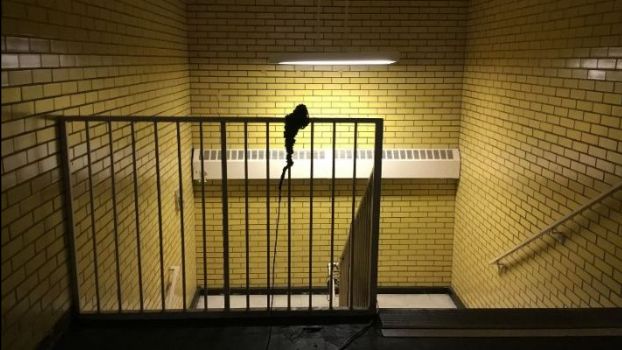
NOWs: Environment. A Future Retrospective
Environment: A Future Retrospectivesolo exhibition by Zorka Wollny
Overtone Hive - installation at Chicago Architecture Biennial 2019
Zorka Wollny
Environment: A Future Retrospective
curated by Joanna Warsza
TRAFO Center for Contemporary Art
Świętego Ducha st. 4, Szczecin
Opening
Saturday, February 15th, 14.00-20.00
exhibition runs until March 29thThe environment is typically a system of interpenetrating animate and inanimate elements. Zorka Wollny’s environment is acoustic, anthropogenic, artistic, degraded and animated. It comprises artworks, performances, and interactive installations, such as acoustic birds’ nests, sensory cushions made from buoys, and carpets of broken glass. The exhibition is mostly constructed from objects removed from their daily functions in Szczecin and surroundings, for example in a shipyard, paper mill, or cable factory. Some of these objects will be repaired and then restored to operation after the show closes.The works presented at the exhibition were created in collaboration with the following artists: Christine Schörkhuber, Kalle Enkellman, Jasmine Guffond, Małgorzata Mazur, Psychedelic Choir, Andrzej Wasilewski, N.U Unruh (Einstürzende Neubauten).
Commissioned by TRAFO Center for Contemporary Art in Szczecin in collaboration with CTM Festival 2020 Berlin, the Chicago Architecture Biennial, and the steirischer herbst festival, with support from Senat Berlin, Szczecin Shipyard and Habia Cable.
Jan Baszak preparing parts for the exhibition
OPENING SCHEDULE
Saturday / 15.02.2020
14.00-20.00 – Open Door
15.30 – Introduction Stanisław Ruksza, Joanna Warsza, Zorka Wollny and team
16.00 – Curatorial guided tour by Joanna Warsza (PL)
16.00-17.00 – Coffee table conversations with the team Ada Kusiak, Jędrzej Wijas, Andrzej Witczak about preapring the show
16.30-18.00 – Drum workshop/conversation with N.U. Unruh/Einstürzende Neubauten
16.30-18.00 – Coffee table conversations with Ewa Majewska about the planet, feminism and weak resistance
17.00-17.30 – Curatorial guided tour by Joanna Warsza (EN)
18.00 – Concert N.U. Unruh/Einstürzende Neubauten
19.00 – Concert Psychedelic Choir
at Stettin Shipyard with N.U Unruh
Environment: A Future Retrospectivesolo exhibition by Zorka Wollny
Overtone Hive - installation at Chicago Architecture Biennial 2019
Zorka Wollny
Environment: A Future Retrospective
curated by Joanna Warsza
TRAFO Center for Contemporary Art
Świętego Ducha st. 4, Szczecin
Opening
Saturday, February 15th, 14.00-20.00
exhibition runs until March 29thThe environment is typically a system of interpenetrating animate and inanimate elements. Zorka Wollny’s environment is acoustic, anthropogenic, artistic, degraded and animated. It comprises artworks, performances, and interactive installations, such as acoustic birds’ nests, sensory cushions made from buoys, and carpets of broken glass. The exhibition is mostly constructed from objects removed from their daily functions in Szczecin and surroundings, for example in a shipyard, paper mill, or cable factory. Some of these objects will be repaired and then restored to operation after the show closes.
The works presented at the exhibition were created in collaboration with the following artists: Christine Schörkhuber, Kalle Enkellman, Jasmine Guffond, Małgorzata Mazur, Psychedelic Choir, Andrzej Wasilewski, N.U Unruh (Einstürzende Neubauten).
Commissioned by TRAFO Center for Contemporary Art in Szczecin in collaboration with CTM Festival 2020 Berlin, the Chicago Architecture Biennial, and the steirischer herbst festival, with support from Senat Berlin, Szczecin Shipyard and Habia Cable.
Jan Baszak preparing parts for the exhibition
OPENING SCHEDULE
Saturday / 15.02.2020
14.00-20.00 – Open Door
15.30 – Introduction Stanisław Ruksza, Joanna Warsza, Zorka Wollny and team
16.00 – Curatorial guided tour by Joanna Warsza (PL)
16.00-17.00 – Coffee table conversations with the team Ada Kusiak, Jędrzej Wijas, Andrzej Witczak about preapring the show
16.30-18.00 – Drum workshop/conversation with N.U. Unruh/Einstürzende Neubauten
16.30-18.00 – Coffee table conversations with Ewa Majewska about the planet, feminism and weak resistance
17.00-17.30 – Curatorial guided tour by Joanna Warsza (EN)
18.00 – Concert N.U. Unruh/Einstürzende Neubauten
19.00 – Concert Psychedelic Choir
at Stettin Shipyard with N.U Unruh
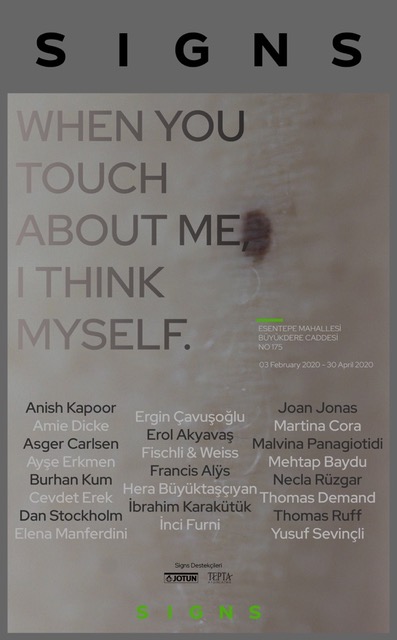
NOWs: When You Touch About Me, I Think Myself.
When You Touch About Me, I Think Myself.group show with Dan Stockholm et al.
With: Anish Kapoor, Amie Dicke, Asger Carlsen, Ayşe Erkmen, Burhan Kum, Cevdet Erek, Dan Stockholm, Elena Manferdini, Ergin Çavuşoğlu, Erol Akyavaş, Fischli & Weiss, Francis Alÿs, Hera Büyüktaşçıyan, Ibrahim Karakütük, Inci Furni, Joan Jonas, Malvina Panagiotidi, Martina Corà, Mehtap Baydu, Necla Rüzgar, Thomas Demand, Thomas Ruff and Yusuf Sevincli
SIGNS, Istanbul, a new platform for arts, is pleased to present its second group exhibition, titled When You Touch About Me, I Think Myself which can be seen between February 3-April 30, 2020.
In the exhibition, each of the works featured have been brought together inspired by thoughts on touch; the most primitive of all senses and at times most unclear to define the characteristics and the borders of. The palpable and tactile aspect of animate and inanimate beings and defined spaces assert one’s sense of self. The comfort of reaching out for a touch saves one from the eternal corridors of the void and the unending universe becomes altogether tangible, perceivable and equal to our physicality.
Skin, being that ubiquitous site of the act of touch, also becomes the undefined border between the self and the Other. It is undefined, since one can only touch another, by touching oneself first. Skin presents itself as a threshold defining an exterior and interior and it brings about questions on being the organ of touch or merely its medium. Passing along this thought, the exhibition moves on to discuss what that real organ of touch being situated farther inward could be, if any.
Tactility and thought, has been at odds since Antiquity with the hierarchical relation ascribed to them. While, touch is the most primal of senses possessed by all sentient beings, to think, is deemed as the highest faculty that belongs to solely the human. However, a causal relation attributed between the two have always made their connection significant.
The title of the exhibition suggesting an intermingling of touch and thought refers to the construction of an “I” within the realm of language and the Cartesian split of thought from the body. Philosopher Judith Butler’s unique consideration of how they are specifically separated through language has inspired the formation of the exhibition which doesn’t seek to offer a conclusion or a statement on their interconnectedness, but to open passageways on tact and thought through questions asked on their coexistence while communicating with the world, their lack, remnants, traces, results and relation to other sensory modalities.
The exhibition puts together works by Anish Kapoor, Amie Dicke, Asger Carlsen, Ayşe Erkmen, Burhan Kum, Cevdet Erek, Dan Stockholm, Elena Manferdini, Ergin Çavuşoğlu, Erol Akyavaş, Fischli & Weiss, Francis Alÿs, Hera Büyüktaşçıyan, Ibrahim Karakütük, Inci Furni, Joan Jonas, Malvina Panagiotidi, Martina Corà, Mehtap Baydu, Necla Rüzgar, Thomas Demand, Thomas Ruff and Yusuf Sevincli.
SIGNS wishes to thank Tepta and Jotun for their valuable contributions to the exhibition.
When You Touch About Me, I Think Myself.group show with Dan Stockholm et al.
With: Anish Kapoor, Amie Dicke, Asger Carlsen, Ayşe Erkmen, Burhan Kum, Cevdet Erek, Dan Stockholm, Elena Manferdini, Ergin Çavuşoğlu, Erol Akyavaş, Fischli & Weiss, Francis Alÿs, Hera Büyüktaşçıyan, Ibrahim Karakütük, Inci Furni, Joan Jonas, Malvina Panagiotidi, Martina Corà, Mehtap Baydu, Necla Rüzgar, Thomas Demand, Thomas Ruff and Yusuf Sevincli
SIGNS, Istanbul, a new platform for arts, is pleased to present its second group exhibition, titled When You Touch About Me, I Think Myself which can be seen between February 3-April 30, 2020.
In the exhibition, each of the works featured have been brought together inspired by thoughts on touch; the most primitive of all senses and at times most unclear to define the characteristics and the borders of. The palpable and tactile aspect of animate and inanimate beings and defined spaces assert one’s sense of self. The comfort of reaching out for a touch saves one from the eternal corridors of the void and the unending universe becomes altogether tangible, perceivable and equal to our physicality.
Skin, being that ubiquitous site of the act of touch, also becomes the undefined border between the self and the Other. It is undefined, since one can only touch another, by touching oneself first. Skin presents itself as a threshold defining an exterior and interior and it brings about questions on being the organ of touch or merely its medium. Passing along this thought, the exhibition moves on to discuss what that real organ of touch being situated farther inward could be, if any.
Tactility and thought, has been at odds since Antiquity with the hierarchical relation ascribed to them. While, touch is the most primal of senses possessed by all sentient beings, to think, is deemed as the highest faculty that belongs to solely the human. However, a causal relation attributed between the two have always made their connection significant.
The title of the exhibition suggesting an intermingling of touch and thought refers to the construction of an “I” within the realm of language and the Cartesian split of thought from the body. Philosopher Judith Butler’s unique consideration of how they are specifically separated through language has inspired the formation of the exhibition which doesn’t seek to offer a conclusion or a statement on their interconnectedness, but to open passageways on tact and thought through questions asked on their coexistence while communicating with the world, their lack, remnants, traces, results and relation to other sensory modalities.
The exhibition puts together works by Anish Kapoor, Amie Dicke, Asger Carlsen, Ayşe Erkmen, Burhan Kum, Cevdet Erek, Dan Stockholm, Elena Manferdini, Ergin Çavuşoğlu, Erol Akyavaş, Fischli & Weiss, Francis Alÿs, Hera Büyüktaşçıyan, Ibrahim Karakütük, Inci Furni, Joan Jonas, Malvina Panagiotidi, Martina Corà, Mehtap Baydu, Necla Rüzgar, Thomas Demand, Thomas Ruff and Yusuf Sevincli.
SIGNS wishes to thank Tepta and Jotun for their valuable contributions to the exhibition.
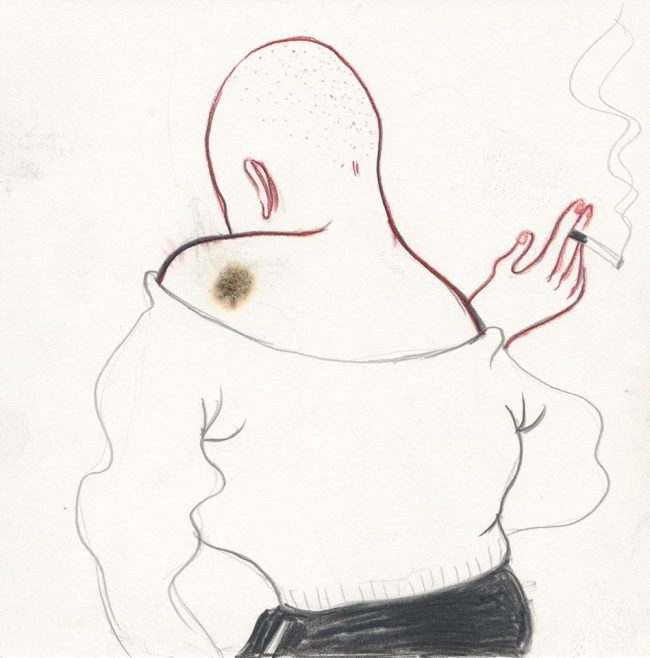
NOWs: Cruise Collection by Enver Hadzijaj
Cruise Collectionsolo exhibition by Enver Hadzijaj
Opening
31 JAN 2020, 7 – 10 pm
FRAGILE
Leipzigerstraße 63
10117 Berlin
I always loved watching my sister applying make-up in the morning, that calmness on her face while contouring her lips dark red like all the Yugo girls did. These were the early 90ies and St. Linda Evangelista was watching the scenery from a torn-out magazine page my sister had stuck to the wall. I tried to make her laugh but she was too focused and just poked me in the arm without looking away from the mirror. There was a petrol station near our house to which she would send me to buy red Gauloises for her and sweets for myself. In those mornings we would talk and wonder why things had turned out to be that difficult while she was smoking and drinking coffee from her metal Thermos jug until she left for work always in a hurry.
About FRAGILE
FRAGILE fosters a program of conversation, antagonism, renegotiation, and celebration.
FRAGILE is a non-profit project for contemporary artistic practices located in Berlin. It encompasses an exhibition and a residency space.
FRAGILE is guided by curations etymology, the practice of caring and was founded on the warmest summerday of 2018 by Maurin Dietrich and Jonas Wendelin.
Cruise Collectionsolo exhibition by Enver Hadzijaj
Opening
31 JAN 2020, 7 – 10 pm
FRAGILE
Leipzigerstraße 63
10117 Berlin
I always loved watching my sister applying make-up in the morning, that calmness on her face while contouring her lips dark red like all the Yugo girls did. These were the early 90ies and St. Linda Evangelista was watching the scenery from a torn-out magazine page my sister had stuck to the wall. I tried to make her laugh but she was too focused and just poked me in the arm without looking away from the mirror. There was a petrol station near our house to which she would send me to buy red Gauloises for her and sweets for myself. In those mornings we would talk and wonder why things had turned out to be that difficult while she was smoking and drinking coffee from her metal Thermos jug until she left for work always in a hurry.
About FRAGILE
FRAGILE fosters a program of conversation, antagonism, renegotiation, and celebration.
FRAGILE is a non-profit project for contemporary artistic practices located in Berlin. It encompasses an exhibition and a residency space.
FRAGILE is guided by curations etymology, the practice of caring and was founded on the warmest summerday of 2018 by Maurin Dietrich and Jonas Wendelin.
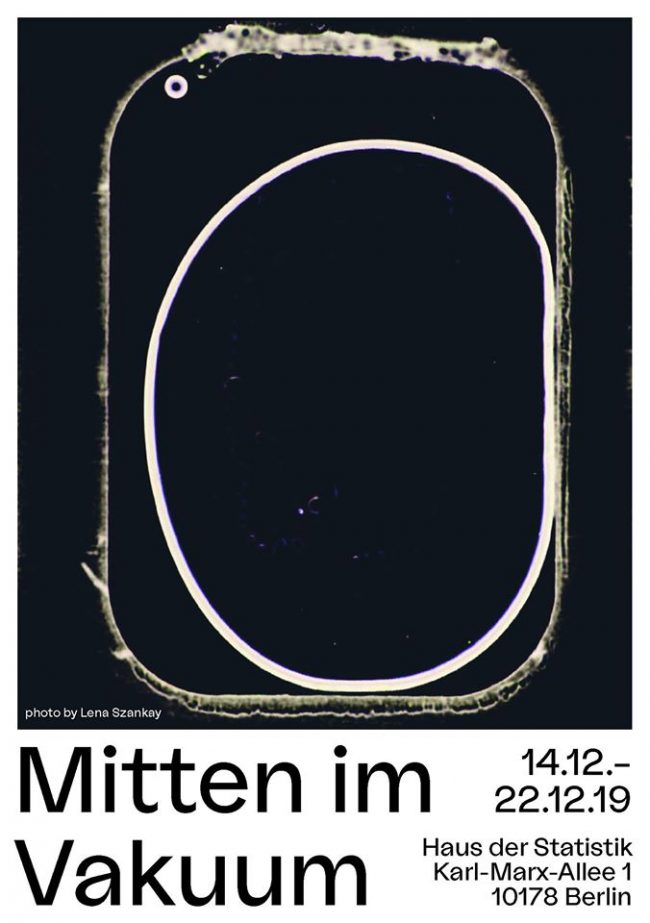
NOWs: Mitten im Vakuum
Mitten im VakuumGroup show
Haus der Statistik
Karl-Marx-Allee 1
10178 Berlin
Opening
14 December 2019, 4 pm
The exhibition title ‚Mitten im Vakuum’ (‚In the middle of a vacuum’) refers to empty spaces that open up in times of social upheaval. A vacuum that absorbs the individual aspiration for change; with the existential quest for impact. A stance that can likewise be found in our present culture and is negotiated within the framework of the exhibition through contemporary artistic positions.
Featuring:
AbBA
Daniele Ansidei
Malte Bartsch
Ekaterina Burlyga
Nadja Buttendorf
Sky M. J. Carranza
Monika Jagoda
Felix Kiessling
Philipp König
Manfred Pernice
David Polzin
Lena Szankay
Wermke/Leinkauf
Curated by Johanna Landscheidt & Benjamin Merten with the assistance of Gloria Holzer.
Gruppenausstellung
Haus der Statistik
Karl-Marx-Allee 1
10178 Berlin
Eröffnung
14. Dezember, 16 h
Der Titel der Ausstellung verweist auf leere Räume, die sich während gesellschaftlicher Umbrüche auftun. Ein Vakuum, das sich vollsaugt mit dem individuellen Bestreben nach Veränderung; mit dem existentiellen Kampf um Wirkung. Eine Haltung, die sich auch in unserer Gegenwartskultur finden lässt und im Rahmen der Ausstellung in zeitgenössischen künstlerischen Positionen verhandelt wird.
Mit den Künstler*innen:
AbBA
Daniele Ansidei
Malte Bartsch
Ekaterina Burlyga
Nadja Buttendorf
Sky M. J. Carranza
Monika Jagoda
Felix Kiessling
Philipp König
Manfred Pernice
David Polzin
Lena Szankay
Wermke/Leinkauf
Kuratiert von Johanna Landscheidt & Benjamin Merten unter Mitwirkung von Gloria Holzer.
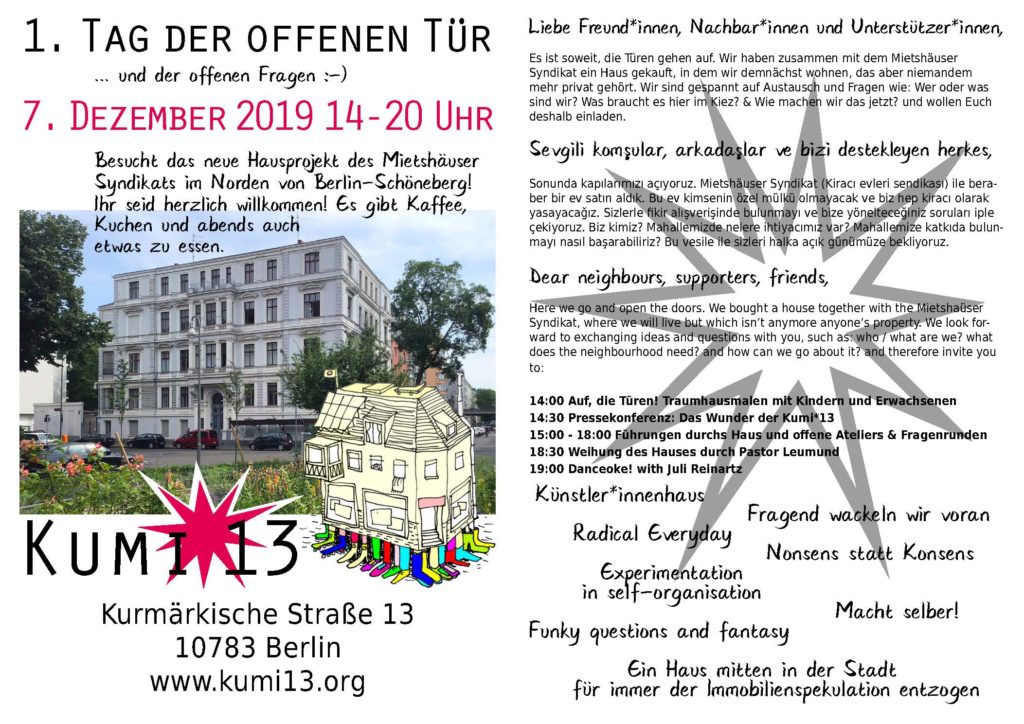
NOWs: 1st Open House at KUMI*13
1st Open House at KUMI*13anti speculative house project
kumi*13
Kurmärkische Straße 13
10783 Berlin
7 December, 2 – 8 pm
Dear neighbours, supporters, friends,
Here we go and open the doors. We bought a house together with the Mietshäuser Syndikat, where we will live but which isn’t anymore anyone’s property. We look forward to exchanging ideas and questions with you, such as: who / what are we? what does the neighbouhood need? and how can we go about it? and therefore invite you to:
14:00 Auf, die Türen! Traumhausmalen mit Kindern und Erwachsenen
14:30 Pressekonferenz: Das Wunder der Kumi*13
15:00 – 18:00 Führungen durchs Haus und offene Ateliers & Fragerunden
18:30 Weihung des Hauses durch Pastor Leumund
19:00 Danceoke! with Juli Reinartz
more info about the project here
1. Tag der offenen Tür im KUMI*13anti speculative house project
kumi*13
Kurmärkische Straße 13
10783 Berlin
7. December, 14 – 20 h
Liebe Freund*innen, Nachbar*innen und Unterstützer*innen,
Es ist soweit, die Türen gehen auf. Wir haben zusammen mit dem Mietshäuser Syndikat ein Haus gekauft, in dem wir demnächst wohnen, das aber niemendem mehr privat gehört. Wir sind gespannt auf Austausch und Fragen wie: Wer oder was sind wir? Was braucht es hier im Kiez? & Wie machen wir das jetzt? und wollen Euch deshalb einladen.
14:00 Auf, die Türen! Traumhausmalen mit Kindern und Erwachsenen
14:30 Pressekonferenz: Das Wunder der Kumi*13
15:00 – 18:00 Führungen durchs Haus und offene Ateliers & Fragerunden
18:30 Weihung des Hauses durch Pastor Leumund
19:00 Danceoke! with Juli Reinartz
Mehr Info über das Projekt hier
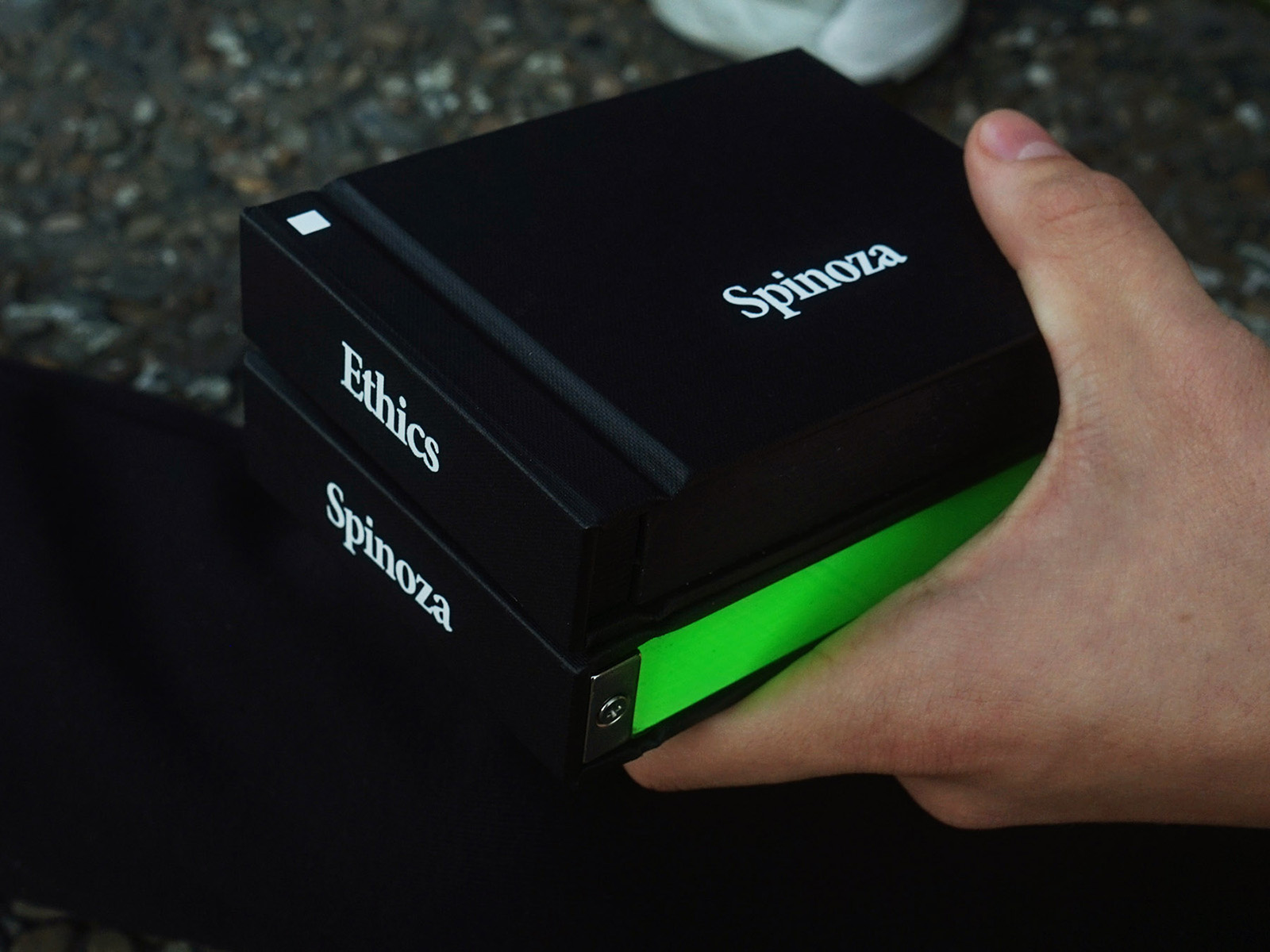
NOWs: Ethics Spinoza by Jorge Miñano
Ethics SpinozaArtist Book
Ethics Spinoza by Jorge Minano
378 pages, english
Linen hardcover, magnets
ISBN: 978-3-948519-00-1
published by Material Review
Collector’s signed edition of 25 + 5 AP
Order a copy here
The philosophical treatise “Ethics, Demonstrated in Geometrical Order” by Baruch Spinoza, first published in 1667 was an ambitious humanist attempt to apply the method of Euclid in philosophy. Several definitions and axioms derive into propositions about the possible meanings of reality, nature, and the human emotions. And yet, the more mathematical it is, the more extraordinarily concrete, like a geometrical portrait of life. Spinoza’s understanding of affect (Affectus) is based on the belief that someone’s force of being in the world is in a continuous variation determined by ideas. It’s what we call existing: No problem, no question; or in other words, actions might require passions.
The book is a collector’s hardcover reprint cut in half. The whole, now consisting of two parts, can be united again by the force of magnets. Jorge Minano’s gesture of making the book magnetic reflects on the monist philosophy of Spinoza towards the linkage of body and mind, and challenges with an operation his attempt to define human ethics based on mathematics. In the age, when human creativity is credited as the dominant, yet destructive, influence on the planetary environment, new ethical frameworks that question human bondage might rise.
Ethics SpinozaArtist Book
Ethics Spinoza by Jorge Minano
378 pages, english
Linen hardcover, magnets
ISBN: 978-3-948519-00-1
published by Material Review
Collector’s signed edition of 25 + 5 AP
Order a copy here
The philosophical treatise “Ethics, Demonstrated in Geometrical Order” by Baruch Spinoza, first published in 1667 was an ambitious humanist attempt to apply the method of Euclid in philosophy. Several definitions and axioms derive into propositions about the possible meanings of reality, nature, and the human emotions. And yet, the more mathematical it is, the more extraordinarily concrete, like a geometrical portrait of life. Spinoza’s understanding of affect (Affectus) is based on the belief that someone’s force of being in the world is in a continuous variation determined by ideas. It’s what we call existing: No problem, no question; or in other words, actions might require passions.
The book is a collector’s hardcover reprint cut in half. The whole, now consisting of two parts, can be united again by the force of magnets. Jorge Minano’s gesture of making the book magnetic reflects on the monist philosophy of Spinoza towards the linkage of body and mind, and challenges with an operation his attempt to define human ethics based on mathematics. In the age, when human creativity is credited as the dominant, yet destructive, influence on the planetary environment, new ethical frameworks that question human bondage might rise.
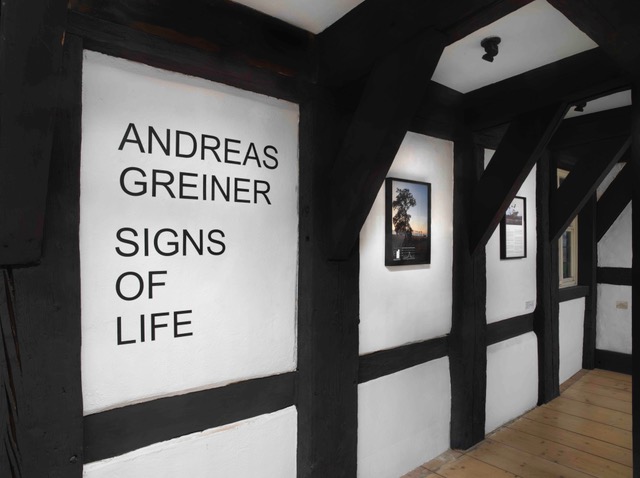
NOWs: Artist Talk with Andreas Greiner, Kaiserring Stipendiat 2019
Artist Talk with Andreas Greiner, Kaiserring Stipendiat 2019
Andreas Greiner: Signs of Life; exhibition room view. Mönchehaus Museum Goslar. Photo by Jens Ziehe, 2019
Mönchehaus Museum Goslar
Mönchestraße 1
38640 Goslar
24. November 2019
11:30 h
Am Sonntag, 24. November 2019 ist der diesjährige Kaiserringstipendiat Andreas Greiner zu Gast im Mönchehaus Museum.
Greiner gehört zu einer neuen Generation ökologisch denkender Künstler. In seinen Arbeiten verhandelt der 1979 geborene Künstler und Meisterschüler von Olafur Eliasson existentielle Zukunftsfragen der Menschheit. Globale Klimaveränderung, Wald- und Artensterben ebenso wie bedingungsloser wissenschaftlicher und wirtschaftlicher Fortschritt bieten den Hintergrund seines komplexen multimedialen Werks.
Für seine Ausstellung im Mönchehaus hat er zwei spektakuläre Installation geschaffen, in denen von einer künstlichen Intelligenz errechnete Waldbilder ebenso wie selbstleuchtende Algen zu finden sind.
Das Gespräch zwischen Andreas Greiner und Mönchehaus-Direktorin Dr. Bettina Ruhrberg beginnt um 11.30 Uhr.
Der Eintritt ist frei.
Andreas Greiner & Paul Rohlfs: Tree Planting. Kranich Museum, Hessenburg, 2019
Andreas Greiner & Paul Rohlfs: Adelheid. Mönchehaus Museum Goslar. Photo by Jens Ziehe, 2019
Andreas Greiner: 880. Mönchehaus Museum Goslar. Photo by Jens Ziehe, 2019
Artist Talk with Andreas Greiner, Kaiserring Stipendiat 2019
Andreas Greiner: Signs of Life; exhibition room view. Mönchehaus Museum Goslar. Photo by Jens Ziehe, 2019
Mönchehaus Museum Goslar
Mönchestraße 1
38640 Goslar
24. November 2019
11:30 h
Am Sonntag, 24. November 2019 ist der diesjährige Kaiserringstipendiat Andreas Greiner zu Gast im Mönchehaus Museum.
Greiner gehört zu einer neuen Generation ökologisch denkender Künstler. In seinen Arbeiten verhandelt der 1979 geborene Künstler und Meisterschüler von Olafur Eliasson existentielle Zukunftsfragen der Menschheit. Globale Klimaveränderung, Wald- und Artensterben ebenso wie bedingungsloser wissenschaftlicher und wirtschaftlicher Fortschritt bieten den Hintergrund seines komplexen multimedialen Werks.
Für seine Ausstellung im Mönchehaus hat er zwei spektakuläre Installation geschaffen, in denen von einer künstlichen Intelligenz errechnete Waldbilder ebenso wie selbstleuchtende Algen zu finden sind.
Das Gespräch zwischen Andreas Greiner und Mönchehaus-Direktorin Dr. Bettina Ruhrberg beginnt um 11.30 Uhr.
Der Eintritt ist frei.
Andreas Greiner & Paul Rohlfs: Tree Planting. Kranich Museum, Hessenburg, 2019
Andreas Greiner & Paul Rohlfs: Adelheid. Mönchehaus Museum Goslar. Photo by Jens Ziehe, 2019
Andreas Greiner: 880. Mönchehaus Museum Goslar. Photo by Jens Ziehe, 2019
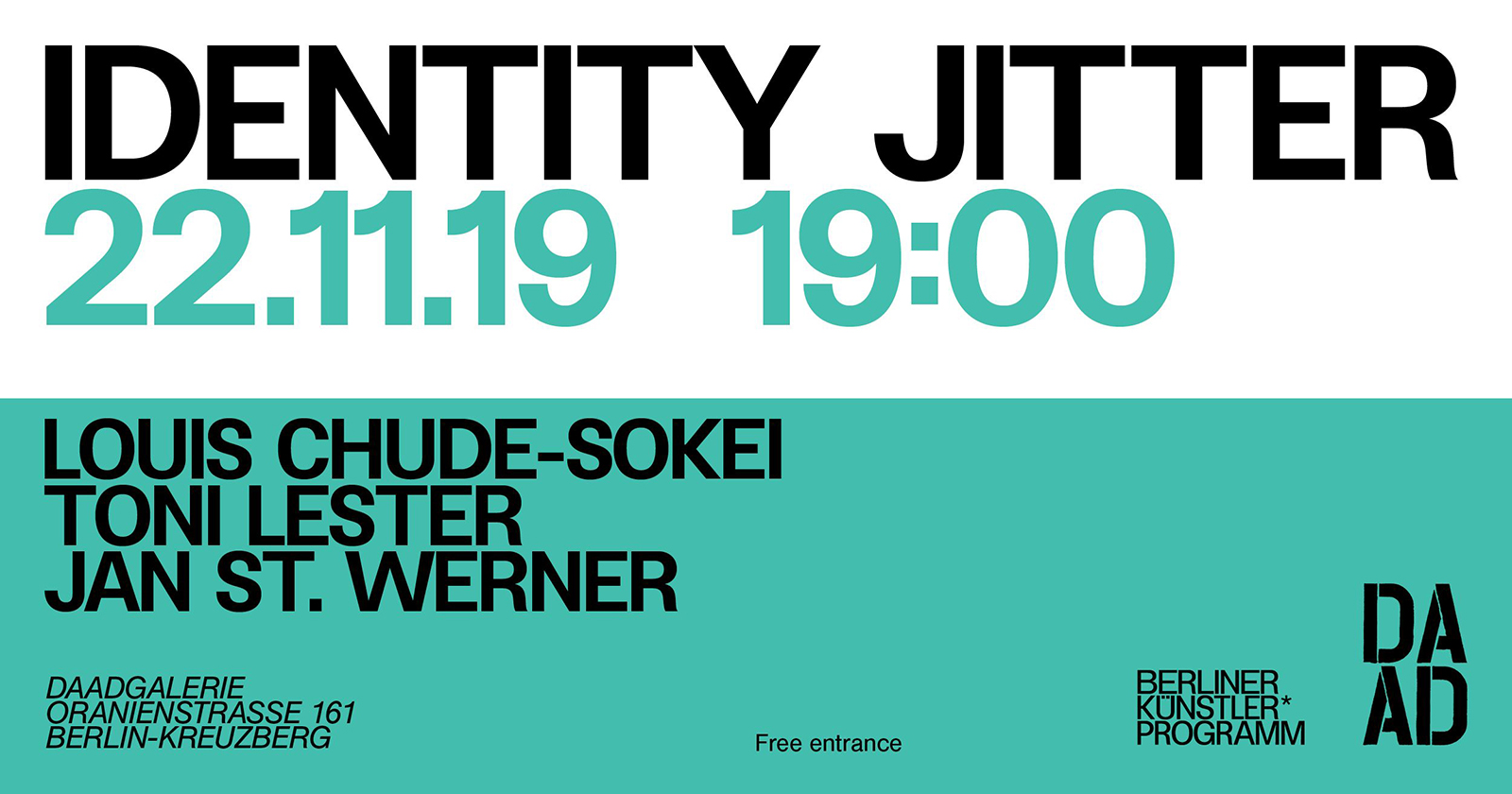
NOWs: Identity Jitter with Jan St. Werner, Toni Lester, Louis Chude-Sokei
Identity JitterConversation with Jan St. Werner, Toni Lester, Louis Chude-Sokei
daadgalerie
Oranienstraße 161
10969 Berlin
Conversation starts at 7pm (sharp)
Louis Chude-Sokei, Toni Lester, and Jan St. Werner will engage in a conversation about artificial intelligence in sound cultures. Starting with a presentation of an ongoing project by Mouse on Mars titled Anarchic Artificial Intelligence, the discussion will then move onto future scenarios, dangers, and utopias, traversing topics including authorship, identity politics, and ethics. How does the concept of identity change in the age of algorithms? How can sound and art in general not only reflect, but also influence socio-technological developments? How can we harness the potentials of instabilities and fragilities?
Louis Chude Sokei’s work includes the award-winning, The Last Darky: Bert Williams, Black on Black Minstrelsy and the African Diaspora (2006), The Sound of Culture: Diaspora and Black Technopoetics (2016) and the forthcoming, Dr. Satan’s Echo Chamber and Other Essays. He is the Editor in Chief of The Black Scholar, one of the oldest and currently leading journals of Black Studies in the United States, and a Professor of English and the Wein Chair and Director of African American Studies at Boston University. He is the founder of the Sonic Art/Archiving Project, Echolocution. Louis Chude-Sokei was invited to Berlin with an Arts & Media fellowship.
Toni Lester writes about arts and culture, innovation and creativity, human and civil rights, and privacy and intellectual property thru the lens of critical race, feminist, class and queer theory. She is particularly interested in examining how creative products and practices of marginalized people are produced and later appropriated without consent, attribution or compensation, and the ensuing legal, moral and ethical questions that arise therein. Lester was a member of the Scholar Advisory Group for the 2015 UN Office of Human Rights Special Rapporteur Report on Cultural Rights, Copyright Policy, and The Right To Science and Culture. Publications of note include: Questions of Trust, Betrayal and Authorial Control in the Avant Guard – The Case of Julius Eastman and John Cage (Marquette Intellectual Property Law Review, forthcoming, January 2020); Content-ID-Algorithmen und das Dilemma der falschen Treffer (i.e., Content Algorithms and False Positives in Innovative Music Creation) (with co-author Pachamanova), in: Lina Brion & Detlef Diederichsen (eds.), 100 Jahre Copyright (Matthes & Seitz – Culture Museum of Berlin (HDK) (2019, commemorating HDK’s 2018 One Hundred Years of Copyright Conference); and Blurred Lines – Where Copyright Ends and Cultural Appropriation Begins, Hastings Communication and Entertainment Law Journal (2014). Also a sound artist and award winning composer, Lester is a full professor at Babson College in the U.S. and currently a Visiting Scholar at the Kent University Centre for Sexuality, Race and Gender Justice in Canterbury, England.
Jan St. Werner is an artist and experimental music composer based in Berlin. Best known as one half of the innovative electronic duo Mouse on Mars, he has also pursued a solo career creating music under his own name. Starting in the mid-1990s, St. Werner released a steady stream of influential records both as a solo artist and with Mouse on Mars. He has been collaborating with Oval’s Markus Popp as Microstoria and writing music for installations and films by visual artist Rosa Barba. During the 2000s, he acted as the artistic director for Amsterdam’s Institute for Electronic Music (STEIM). As a solo artist as well as with Mouse on Mars Werner composed music for various ensembles including Musikfabrik, Chicago Symphony, Kaleidoskop or neoN. In 2013, St. Werner released Blaze Colour Burn, the first of a series of experimental recordings on Thrill Jockey Records, Chicago. Fiepblatter Catalogue #5 Spectric Acid was released in 2017. Werner has been a visiting lecturer at the Arts Culture and Technology department ACT of the Massachusetts Institute of Technology MIT and holds a position as a professor for Dynamic Acoustic Research (Dynamische Akustische Forschung) at the Academy of Fine Arts in Nuremberg, Germany.
Identity JitterConversation with Jan St. Werner, Toni Lester, Louis Chude-Sokei
daadgalerie
Oranienstraße 161
10969 Berlin
Conversation starts at 7pm (sharp)
Louis Chude-Sokei, Toni Lester, and Jan St. Werner will engage in a conversation about artificial intelligence in sound cultures. Starting with a presentation of an ongoing project by Mouse on Mars titled Anarchic Artificial Intelligence, the discussion will then move onto future scenarios, dangers, and utopias, traversing topics including authorship, identity politics, and ethics. How does the concept of identity change in the age of algorithms? How can sound and art in general not only reflect, but also influence socio-technological developments? How can we harness the potentials of instabilities and fragilities?
Louis Chude Sokei’s work includes the award-winning, The Last Darky: Bert Williams, Black on Black Minstrelsy and the African Diaspora (2006), The Sound of Culture: Diaspora and Black Technopoetics (2016) and the forthcoming, Dr. Satan’s Echo Chamber and Other Essays. He is the Editor in Chief of The Black Scholar, one of the oldest and currently leading journals of Black Studies in the United States, and a Professor of English and the Wein Chair and Director of African American Studies at Boston University. He is the founder of the Sonic Art/Archiving Project, Echolocution. Louis Chude-Sokei was invited to Berlin with an Arts & Media fellowship.
Toni Lester writes about arts and culture, innovation and creativity, human and civil rights, and privacy and intellectual property thru the lens of critical race, feminist, class and queer theory. She is particularly interested in examining how creative products and practices of marginalized people are produced and later appropriated without consent, attribution or compensation, and the ensuing legal, moral and ethical questions that arise therein. Lester was a member of the Scholar Advisory Group for the 2015 UN Office of Human Rights Special Rapporteur Report on Cultural Rights, Copyright Policy, and The Right To Science and Culture. Publications of note include: Questions of Trust, Betrayal and Authorial Control in the Avant Guard – The Case of Julius Eastman and John Cage (Marquette Intellectual Property Law Review, forthcoming, January 2020); Content-ID-Algorithmen und das Dilemma der falschen Treffer (i.e., Content Algorithms and False Positives in Innovative Music Creation) (with co-author Pachamanova), in: Lina Brion & Detlef Diederichsen (eds.), 100 Jahre Copyright (Matthes & Seitz – Culture Museum of Berlin (HDK) (2019, commemorating HDK’s 2018 One Hundred Years of Copyright Conference); and Blurred Lines – Where Copyright Ends and Cultural Appropriation Begins, Hastings Communication and Entertainment Law Journal (2014). Also a sound artist and award winning composer, Lester is a full professor at Babson College in the U.S. and currently a Visiting Scholar at the Kent University Centre for Sexuality, Race and Gender Justice in Canterbury, England.
Jan St. Werner is an artist and experimental music composer based in Berlin. Best known as one half of the innovative electronic duo Mouse on Mars, he has also pursued a solo career creating music under his own name. Starting in the mid-1990s, St. Werner released a steady stream of influential records both as a solo artist and with Mouse on Mars. He has been collaborating with Oval’s Markus Popp as Microstoria and writing music for installations and films by visual artist Rosa Barba. During the 2000s, he acted as the artistic director for Amsterdam’s Institute for Electronic Music (STEIM). As a solo artist as well as with Mouse on Mars Werner composed music for various ensembles including Musikfabrik, Chicago Symphony, Kaleidoskop or neoN. In 2013, St. Werner released Blaze Colour Burn, the first of a series of experimental recordings on Thrill Jockey Records, Chicago. Fiepblatter Catalogue #5 Spectric Acid was released in 2017. Werner has been a visiting lecturer at the Arts Culture and Technology department ACT of the Massachusetts Institute of Technology MIT and holds a position as a professor for Dynamic Acoustic Research (Dynamische Akustische Forschung) at the Academy of Fine Arts in Nuremberg, Germany.
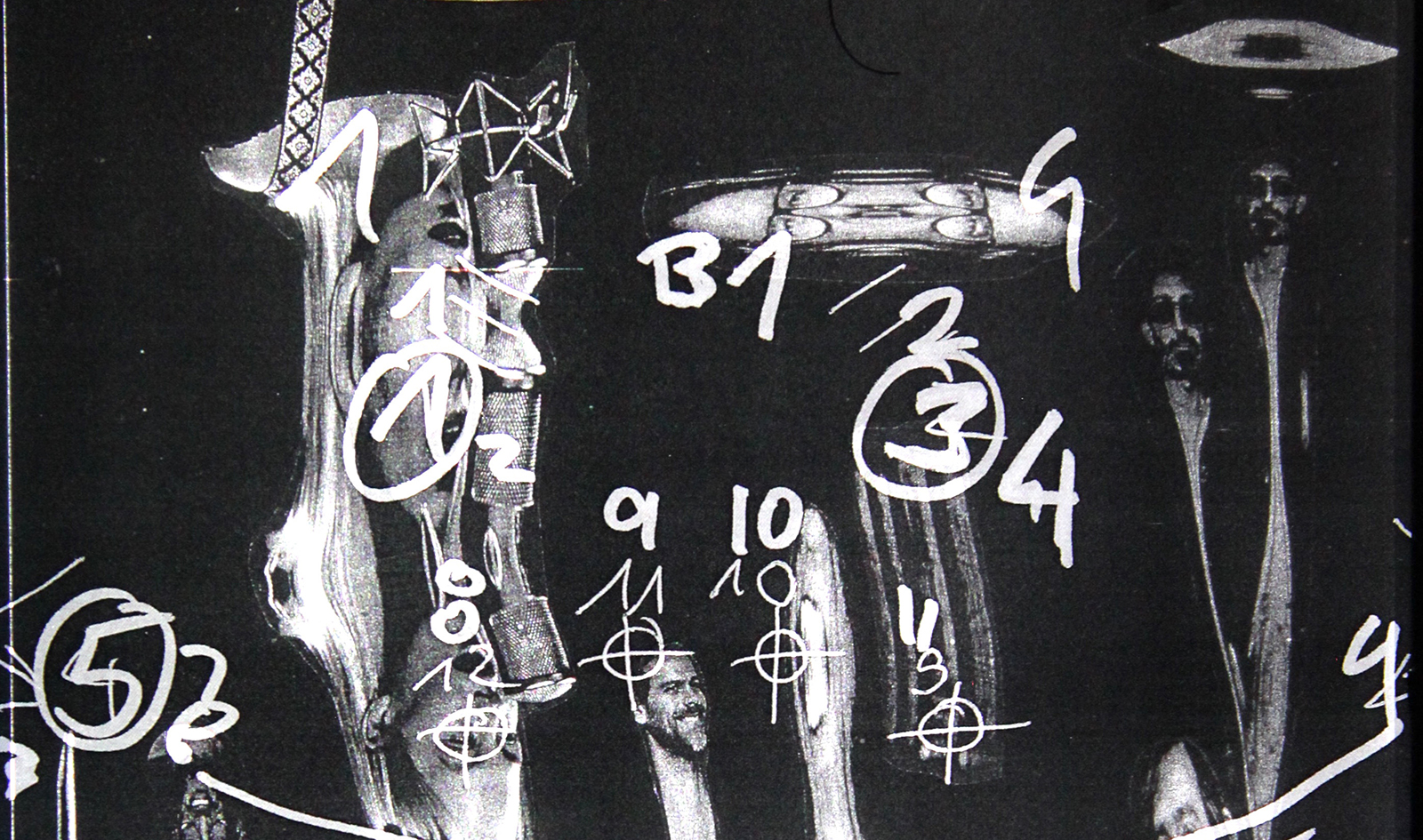
NOWs: The Spatio Sensory Soundcheck – Jan St. Werner & The National
Jan St. Werner & The National: The Spatio Sensory Soundcheckambient sound installation
Haus der Kulturen der Welt
John-Foster-Dulles-Allee 10
10557 Berlin
premiere
21 November, 6 pm
Sound becomes a spatial experience, band structures are deconstructed, a brand new sound technology celebrates its premiere in art: Last year, Jan St. Werner, part of the duo Mouse on Mars, listened to a festival sound check by the US indie rock band The National. Echoes, voices and acoustic artifacts overlapped, songs were begun and interrupted, harmonies were detuned and filtered. The picture of the perfect rock band was torn open, while at the same time the incompleteness of the action seemed to follow a method. The ambient sound installation The Spatio Sensory Soundcheck reconstructs this experience. The musician and composer disassembled a sound check recording as well as individual tracks of the current album I Am Easy to Find by The National, then electronically manipulated and reassembled them with his own elements. Mouse on Mars and The National had contributed music to each other’s most recent albums. Now Jan St. Werner goes a step further – the installation dissolves the categories of band and album and shifts the sounds in a continuous state of instability on a psychoacoustic stage: With a novel speaker system based on wave field synthesis, Jan St. Werner arranges the sounds independently of each other in the space; movements and perspectives of the listeners become part of the composition.
The installation employs a speaker system by Holoplot. The audio technology of the Berlin-based company creates fully digital 3D-beamforming of multiple audio beams based on its own wave field synthesis algorithms and real-time audio processing.
Duration: 70 minutes, beginning at
21 Nov: 6pm, 7.30pm, 9pm
22 Nov: 3pm, 4.30pm, 6pm, 7.30pm, 9pm, 10.30pm
23 Nov: 3pm, 4.30pm, 6pm, 7.30pm, 9pm, 10.30pm
24 Nov: 3pm, 4.30pm, 6pm, 7.30pm, 9pm
25 Nov: 3pm, 4.30pm, 6pm
27 Nov: 3pm, 4.30pm, 6pm
Jan Werner | Jan St. Werner & The National: The Spatio Sensory Soundcheck | © Promo
Jan St. Werner & The National: The Spatio Sensory SoundcheckRaumklanginstallation
Haus der Kulturen der Welt
John-Foster-Dulles-Allee 10
10557 Berlin
premiere
21. November, 18 h
Klang wird zum Erlebnisraum, Bandstrukturen werden dekonstruiert, eine völlig neue Raumklangtechnologie feiert Premiere in der Kunst: Im vergangenen Jahr hört Jan St. Werner, Teil des Duos Mouse on Mars, einem Festivalsoundcheck der US-Indie-Rock-Band The National zu. Echos, Stimmen und akustische Artefakte überlagern sich, Songs werden angestimmt und abgebrochen, Harmonien verstimmt und gefiltert. Das Bild der perfekten Rockband wird aufgerissen, gleichzeitig scheint die Unfertigkeit des Geschehens einer Methode zu folgen. Die Raumklanginstallation The Spatio Sensory Soundcheck rekonstruiert diese Erfahrung. Dazu hat der Musiker und Komponist einen Soundcheck-Mitschnitt sowie Einzelspuren des aktuellen Albums I Am Easy To Find von The National zerlegt, elektronisch manipuliert und mit eigenen Elementen neu zusammengesetzt. Bereits für ihre letzten Alben hatten Mouse on Mars und The National gegenseitig Musik beigesteuert. Nun geht Jan St. Werner einen Schritt weiter – die Installation löst die Kategorien von Band und Album auf und versetzt die Klänge in eine kontinuierliche Instabilität auf einer psychoakustischen Bühne: Mit einem neuartigen Lautsprechersystem, das auf Wellenfeldsysnthese basiert, arrangiert Jan St. Werner die Klänge unabhängig voneinander im Raum; Bewegung und Perspektive der Zuhörer*innen werden Teil der Komposition.
Die Installation verwendet ein Lautsprechersystem von Holoplot. Die Audiotechnik des Berliner Unternehmens realisiert volldigitale 3D-Strahlformung von mehreren Strahlen auf Basis eigener Wellenfeldsynthese-Algorithmen und Echtzeit-Audioverarbeitung.
Dauer: 70 Minuten, Beginn jeweils:
21.11.: 18h, 19.30h, 21h
22.11.: 15h, 16.30h, 18h, 19.30h, 21h, 22.30h
23.11.: 15h, 16.30h, 18h, 19.30h, 21h, 22.30h
24.11.: 15h, 16.30h, 18h, 19.30h, 21h
25.11.: 15h, 16.30h, 18h
27.11.: 15h, 16.30h, 18h
Jan Werner | Jan St. Werner & The National: The Spatio Sensory Soundcheck | © Promo
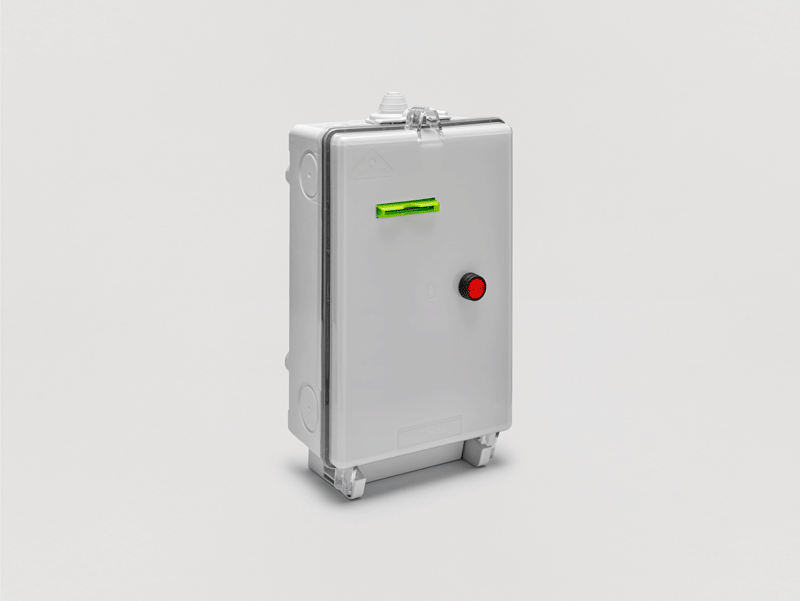
NOWs: Malte Bartsch, Bertrand Flanet, Igor Hosnedl, Signe Pierce and Raul Walch at EIGEN + ART Lab
image/video: Malte Bartsch, Time Machine, 2013 - ongoing
Malte Bartsch, Bertrand Flanet, Igor Hosnedl, Signe Pierce and Raul Walch at EIGEN + ART Labgroup exhibition
EIGEN + ART Lab
Torstraße 220
10115 Berlin
Opening: November 21, 2019, 5 – 7 pm
Exhibition: November 21, 2019 – December 19, 2019
Artists: Malte Bartsch, Bertrand Flanet, Igor Hosnedl, Signe Pierce and Raul Walch
image/video: Malte Bartsch, Time Machine, 2013 - ongoing
Malte Bartsch, Bertrand Flanet, Igor Hosnedl, Signe Pierce and Raul Walch at EIGEN + ART LabGruppenausstellung
EIGEN + ART Lab
Torstraße 220
10115 Berlin
Eröffnung: 21. November 2019, 17 – 21 Uhr
Aussellung: 21. November 2019 – 19. Dezember 2019
Künstler*innen: Malte Bartsch, Bertrand Flanet, Igor Hosnedl, Signe Pierce und Raul Walch
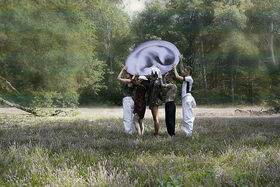
NOWs: Arcana Swarm by Kat Válastur / HAU
Kat Válastur / HAU: Arcana SwarmDance
HAU1
Stresemannstr. 29
10963 Berlin
What is joy when its ephemerality and fragility tend towards its own dissolution? In Kat Válastur’s new work the performers embody the emotional complexity of joy which constantly collapses. In a visually playful set where three human-sized sculptures are placed, the performers unfold a choreographic swing of joy that turns into horror. Arcana Swarm is a new HAU production for seven performers and the third part of the work cycle The Staggered Dances of Beauty, which deals with scenarios and varieties of our bodies exposed in a radically changing world. For this piece, Válastur works again with the technique of “morphing” as a transformative force. The body shows the affects and effects that derive from the tensions of the current technological, environmental and political conditions of a precarious and anthropocentric world.
After the event on November 22: Artist talk with Ana Vujanović (Berlin / Belgrade). Vujanović is a cultural worker focused on bringing together critical theory and contemporary art.
Cast
Concept, script & choreography: Kat Válastur / Performance: Juan Pablo Cámara, Ixchel Mendoza Hernandez, Gaetano Montecasino, Ogbitse Omagbemi, Tamar Sonn, Sarah Stanley, Tiran Willemse / Light design: Martin Beeretz / Sound desigh: Peter Breitenbach / Set design: Leon Eixenberger / Costume: Christina Nyffeler / Dramaturgical advice: Einav Katan-Schmid, Maja Zimmermann / Outside eye: Alexandra Balona / Assistance choreography: Kévin Quinaou / Production management: HAU Artist Office / Sabine Seifert / Touring & distribution: HAU Artist Office / Nicole Schuchardt
Wed 20.11.2019, 20:00 / HAU1 (Premiere)
Thu 21.11.2019, 19:00 / HAU1
Fri 22.11.2019, 19:00 / HAU1
Sat 23.11.2019, 19:00 / HAU1
Tickets available online
Credits
Production: Kat Válastur / HAU Hebbel am Ufer. Supported by: The Fondation d’entreprise Hermès as part of its New Settings Program.
Co-production: Théâtre de la Ville (Paris), PACT Zollverein (Essen), Theater Freiburg.
Funded by: Capital Cultural Fund (Berlin), Berlin Senate Department for Culture and Europe. Residency support: STUK Leuven, Tanzhaus Zürich, Centrale Fies / Live Works.
Kat Válastur / HAU: Arcana SwarmTanz
HAU1
Stresemannstr. 29
10963 Berlin
Was bedeutet Freude, die sich durch ihre Flüchtigkeit und Fragilität stets selbst auflöst? In Kat Válasturs neuer Arbeit verkörpern die Darsteller*innen die Komplexität dieser immer wieder in sich zusammenfallenden Emotion. Das verspielte Bühnenbild mit drei lebensgroßen Skulpturen lässt einen choreografischen Kippraum entstehen, in dem sich Freude in Grauen verwandelt. Die neue HAU-Produktion Arcana Swarm ist ein Stück für sieben Performer*innen und zugleich der dritte Teil des Werkzyklus The Staggered Dances of Beauty, in dem Válastur unterschiedliche Szenarien entwirft, die unseren Körper einer sich radikal verändernden Welt ausgesetzt zeigen. Einmal mehr setzt sie dabei die Technik des “Morphing” als transformative Kraft ein. Im Körper zeigen sich die Affekte und Effekte der heutigen technologischen, ökologischen und politischen Lage unserer gefährdeten und anthropozentrischen Welt.
Im Anschluss an die Vorstellung am 22.11.: Artist Talk mit Ana Vujanović (Berlin / Belgrad). Vujanović arbeitet im Kulturbereich mit Fokus auf das Zusammenbringen von Kritischer Theorie und zeitgenössischer Kunst.
Besetzung
Konzept, Skript & Choreografie: Kat Válastur / Performance: Juan Pablo Cámara, Ixchel Mendoza Hernandez, Gaetano Montecasino, Ogbitse Omagbemi, Tamar Sonn, Sarah Stanley, Tiran Willemse / Lichtdesign: Martin Beeretz / Sounddesign: Peter Breitenbach / Bühnenbild: Leon Eixenberger / Kostüm: Christina Nyffeler / Dramaturgische Beratung: Einav Katan-Schmid, Maja Zimmermann / Outside eye: Alexandra Balona / Assistenz Choreografie: Kévin Quinaou / Produktionsleitung: HAU Artist Office / Sabine Seifert / Touring & Distribution: HAU Artist Office / Nicole Schuchardt
Mi 20.11.2019, 20:00 / HAU1 (Premiere)
Do 21.11.2019, 19:00 / HAU1
Fr 22.11.2019, 19:00 / HAU1
Sa 23.11.2019, 19:00 / HAU1
Tickets online erhältlich
Förderung
Produktion: Kat Válastur / HAU Hebbel am Ufer. Unterstützt durch: Fondation d’entreprise Hermès im Rahmen des Programms “New Settings”. Koproduktion: Théâtre de la Ville (Paris), PACT Zollverein (Essen), Theater Freiburg. Gefördert durch: Hauptstadtkulturfonds, Berliner Senatsverwaltung für Kultur und Europa. Residenz-Unterstützung: STUK Leuven, Tanzhaus Zürich, Centrale Fies / Live Works.
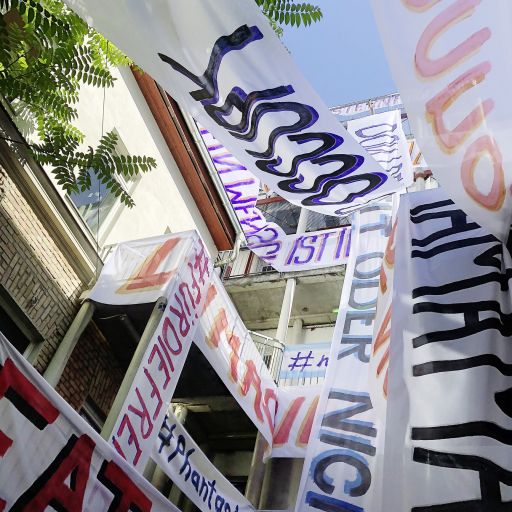
NOWs: Monologfestival 2019 – Die imaginäre Bewegung
Die imaginäre BewegungLive Performance zur Festivaleröffnung
THEATERDISCOUNTER
Klosterstraße 44
10179 Berlin
Installation täglich
Live Performance zur Festivaleröffnung 14. November 2019
ab 18.00 Uhr
Konzeptkünstler Raul Walch inszeniert aktuelle politische Positionen mit Fahnen, Bannern und Slogans in den öffentlichen Raum rund um den TD.
Die Installation fordert die Aufmerksamkeit der Passant*innen: Sie konfrontiert, indem komplexe Sachverhalte auf kurze Statements reduziert sind. Welche Vereinfachungen leuchten spontan ein, wo stolpern die Betrachter*innen in Widersprüche? Über diverse Aussagen formiert sich eine noch kaum greifbare Bewegung, die aus den aktuellen Krisen hervorgehen könnte. Welche Gestalt würde sie annehmen – und ist die Zeit reif dafür?
Da immer öfter politische Meinungen und Haltungen auf die Straße getragen werden stellt sich der Bildende Künstler Raul Walch der Herausforderung, die Betrachter jenseits des Kunstkontextes in eben diesem Raum und ganz direkt zu adressieren. Der aufgeladenen Stimmung, die sich über die Grenzen sozialer (Online-)Netzwerke im öffentlichen Raum breit macht, stellt er Die imaginäre Bewegung als Spielball, als Herausforderung zu einer eigenen, öffentlichen Positionierung gegenüber.
Idee / Umsetzung Raul Walch
Raul Walch überschreitet in seiner künstlerischen Praxis die Grenzen gängiger Kunst-Genres. Er arbeitet als Bildhauer und Konzeptkünstler, schlüpft in seinen Arbeiten aber ebenso natürlich in die Rolle des Performers oder Forschers. Im Mittelpunkt steht immer eine unkonventionelle, künstlerische Auseinandersetzung mit gesellschaftlicher Realität und nicht selten werden die Beobachter selbst zum Teil einer Performance. Die spielerischen Arbeiten und Aktionen von Walch beschränken sich nicht auf forschende Neugier oder teilnehmendes Beobachten, sondern sind oft ephemere und vor allem ortsspezifische Interventionen, die an den unterschiedlichsten Orten der Welt auf ihr Umfeld eingehen.
Monologfestival Konzeption & Kuration Janette Mickan / Michael Müller Raumkonzept Silke Bauer Presse björn & björn – Talea Schuré Produktionsleitung Imma Scarpato Grafik Christiane Patic / Christin Striegler Fotografie Dejan Patic Öffentlichkeitsarbeit Katarina Šakic Technische Leitung Anne Hübschmann / Stephan Mäusel Dokumentation Christopher Hewitt Produktion & Festivalteam Theaterdiscounter Gefördert durch Senatsverwaltung für Kultur und Europa Medienpartner taz – die tageszeitung / Theater heute / zitty
Die imaginäre BewegungLive Performance zur Festivaleröffnung
THEATERDISCOUNTER
Klosterstraße 44
10179 Berlin
Installation täglich
Live Performance zur Festivaleröffnung 14. November 2019
ab 18.00 Uhr
Konzeptkünstler Raul Walch inszeniert aktuelle politische Positionen mit Fahnen, Bannern und Slogans in den öffentlichen Raum rund um den TD.
Die Installation fordert die Aufmerksamkeit der Passant*innen: Sie konfrontiert, indem komplexe Sachverhalte auf kurze Statements reduziert sind. Welche Vereinfachungen leuchten spontan ein, wo stolpern die Betrachter*innen in Widersprüche? Über diverse Aussagen formiert sich eine noch kaum greifbare Bewegung, die aus den aktuellen Krisen hervorgehen könnte. Welche Gestalt würde sie annehmen – und ist die Zeit reif dafür?
Da immer öfter politische Meinungen und Haltungen auf die Straße getragen werden stellt sich der Bildende Künstler Raul Walch der Herausforderung, die Betrachter jenseits des Kunstkontextes in eben diesem Raum und ganz direkt zu adressieren. Der aufgeladenen Stimmung, die sich über die Grenzen sozialer (Online-)Netzwerke im öffentlichen Raum breit macht, stellt er Die imaginäre Bewegung als Spielball, als Herausforderung zu einer eigenen, öffentlichen Positionierung gegenüber.
Idee / Umsetzung Raul Walch
Raul Walch überschreitet in seiner künstlerischen Praxis die Grenzen gängiger Kunst-Genres. Er arbeitet als Bildhauer und Konzeptkünstler, schlüpft in seinen Arbeiten aber ebenso natürlich in die Rolle des Performers oder Forschers. Im Mittelpunkt steht immer eine unkonventionelle, künstlerische Auseinandersetzung mit gesellschaftlicher Realität und nicht selten werden die Beobachter selbst zum Teil einer Performance. Die spielerischen Arbeiten und Aktionen von Walch beschränken sich nicht auf forschende Neugier oder teilnehmendes Beobachten, sondern sind oft ephemere und vor allem ortsspezifische Interventionen, die an den unterschiedlichsten Orten der Welt auf ihr Umfeld eingehen.
Monologfestival Konzeption & Kuration Janette Mickan / Michael Müller Raumkonzept Silke Bauer Presse björn & björn – Talea Schuré Produktionsleitung Imma Scarpato Grafik Christiane Patic / Christin Striegler Fotografie Dejan Patic Öffentlichkeitsarbeit Katarina Šakic Technische Leitung Anne Hübschmann / Stephan Mäusel Dokumentation Christopher Hewitt Produktion & Festivalteam Theaterdiscounter Gefördert durch Senatsverwaltung für Kultur und Europa Medienpartner taz – die tageszeitung / Theater heute / zitty
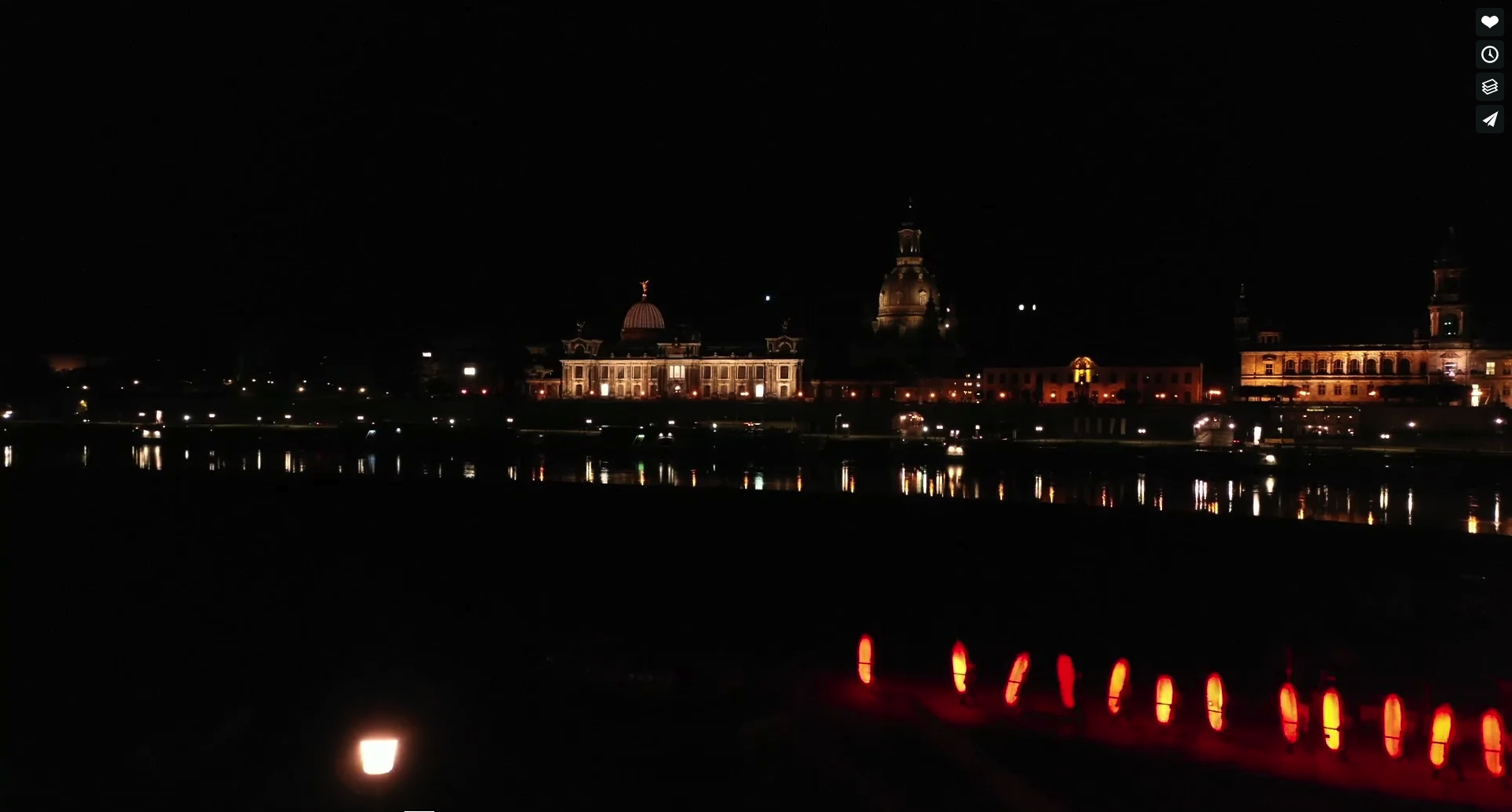
NOWS: Signals 3.0 – Call | Dresden | Goldener Reiter
Aufruf | Dresden | Goldener Reiter
9. November, 18 Uhr
Wir laden alle Dresdner*innen ein, am Samstag, den 9. November, um 18 Uhr am Goldenen Reiter zusammenzukommen, um gemeinsam Dresden zu erhellen. An der Elbe, im Herzen von Dresden wollen wir mit Dresdner*innen aus aller Welt und 80 Leuchtskulpturen die Stadt neu beleuchten. Unser Ziel ist es, an diesem historischen Datum im öffentlichen Raum von Dresden Präsenz zu zeigen und eine neue Form des kollektiven Gedenkens zu praktizieren in Erinnerung an die Resonanzräume des 9. November und seinen Dreiklang in der deutschen- und Weltgeschichte:
-am 9. November 1918 wurde die Republik ausgerufen;
-am 9. November 1938 fand die Reichspogromnacht statt;
-am 9. November 1989 öffneten sich die Grenzen der DDR.
Bitte bringt ein Licht mit – egal, ob Fahrradleuchte, Taschenlampe oder Handy. Kommt und leuchtet mit uns!
Tools for Action in Zusammenarbeit mit Tomás Espinosa, eine Koproduktion von Kunsthaus Dresden, HELLERAU – Europäisches Zentrum der Künste, Montagscafé/Staatsschauspiel Dresden
—
Signals 3.0 ist ein künstlerisches Projekt und eine Choreografie für Alle! von der Künstlergruppe Tools for Action in Zusammenarbeit mit Tomás Espinosa in einer Koproduktion von Kunsthaus Dresden, HELLERAU – Europäisches Zentrum der Künste und Montagscafé / Staatsschauspiel Dresden.
Mit Dank für die freundliche Zusammenarbeit an Vonovia Dresden.
Gefördert im Rahmen des Programms „Revolution und Demokratie” der Sächsischen Staatskanzlei. Dieses Projekt wird mitfinanziert mit Steuermitteln auf Grundlage des vom Sächsischen Landtag beschlossenen Haushaltes.
——
Credits:
Filmbilder: Tools for Action
Bilder von Dresden am 4. Oktober 1989 mit der freundlichen Unterstützung von dem Dresdner Künstler David Adam. Als Neunzehnjähriger fotografierte er den Gewaltausbruch am Dresdner Hauptbahnhof Nord, als Flüchtlingszüge mit DDR-Bürgern aus Tschechien kommend den Bahnhof im Transit durchfuhren in Richtung Westdeutschland.
Dokumentarische Fotos wikimedia Lizenzfrei.
Fackelzug des DDR-Jugendverbandes FDJ (Freie Deutsche Jugend) am Vorabend des 40. Jahrestages der DDR in Berlin Unter den Linden, aufgenommen am 6. Oktober 1989. (picture alliance/ZB/Peter Zimmermann)
Musik: Steev Lemercier | Barbudan remix
Schnitt: Artúr van Balen
Aufruf | Dresden | Goldener Reiter
9. November, 18 Uhr
Wir laden alle Dresdner*innen ein, am Samstag, den 9. November, um 18 Uhr am Goldenen Reiter zusammenzukommen, um gemeinsam Dresden zu erhellen. An der Elbe, im Herzen von Dresden wollen wir mit Dresdner*innen aus aller Welt und 80 Leuchtskulpturen die Stadt neu beleuchten. Unser Ziel ist es, an diesem historischen Datum im öffentlichen Raum von Dresden Präsenz zu zeigen und eine neue Form des kollektiven Gedenkens zu praktizieren in Erinnerung an die Resonanzräume des 9. November und seinen Dreiklang in der deutschen- und Weltgeschichte:
-am 9. November 1918 wurde die Republik ausgerufen;
-am 9. November 1938 fand die Reichspogromnacht statt;
-am 9. November 1989 öffneten sich die Grenzen der DDR.
Bitte bringt ein Licht mit – egal, ob Fahrradleuchte, Taschenlampe oder Handy. Kommt und leuchtet mit uns!
Tools for Action in Zusammenarbeit mit Tomás Espinosa, eine Koproduktion von Kunsthaus Dresden, HELLERAU – Europäisches Zentrum der Künste, Montagscafé/Staatsschauspiel Dresden
—
Signals 3.0 ist ein künstlerisches Projekt und eine Choreografie für Alle! von der Künstlergruppe Tools for Action in Zusammenarbeit mit Tomás Espinosa in einer Koproduktion von Kunsthaus Dresden, HELLERAU – Europäisches Zentrum der Künste und Montagscafé / Staatsschauspiel Dresden.
Mit Dank für die freundliche Zusammenarbeit an Vonovia Dresden.
Gefördert im Rahmen des Programms „Revolution und Demokratie” der Sächsischen Staatskanzlei. Dieses Projekt wird mitfinanziert mit Steuermitteln auf Grundlage des vom Sächsischen Landtag beschlossenen Haushaltes.
——
Credits:
Filmbilder: Tools for Action
Bilder von Dresden am 4. Oktober 1989 mit der freundlichen Unterstützung von dem Dresdner Künstler David Adam. Als Neunzehnjähriger fotografierte er den Gewaltausbruch am Dresdner Hauptbahnhof Nord, als Flüchtlingszüge mit DDR-Bürgern aus Tschechien kommend den Bahnhof im Transit durchfuhren in Richtung Westdeutschland.
Dokumentarische Fotos wikimedia Lizenzfrei.
Fackelzug des DDR-Jugendverbandes FDJ (Freie Deutsche Jugend) am Vorabend des 40. Jahrestages der DDR in Berlin Unter den Linden, aufgenommen am 6. Oktober 1989. (picture alliance/ZB/Peter Zimmermann)
Musik: Steev Lemercier | Barbudan remix
Schnitt: Artúr van Balen
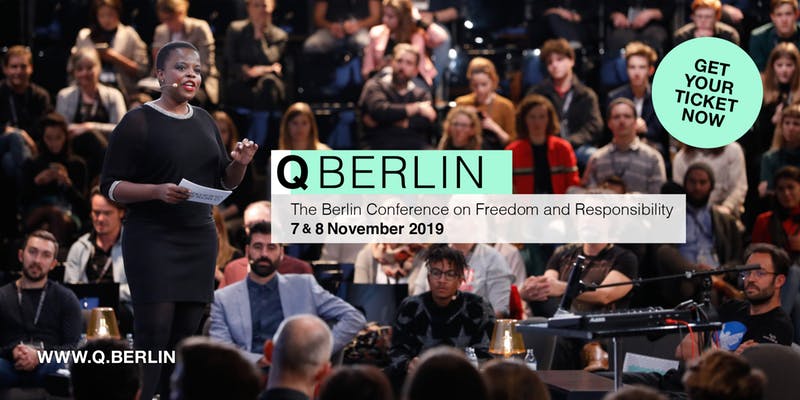
NOWs: Q Berlin – The Berlin Conference on Freedom and Responsibility
Q BerlinThe Berlin Conference on Freedom and Responsibility
Date And Time
Thu, 7 Nov 2019, 09:00 –
Fri, 8 Nov 2019, 20:00 CET
Location
STATION Berlin (7 Nov), Halls 4 & 5
Luckenwalder Straße 4-6
10963 Berlin
Berlin stands for freedom, courage and tolerance. We believe our dynamic city should act as a strong voice in tackling the most pressing issues of our time – revitalising our social values, and welcoming people from far and wide. Q BERLIN provides a space to share these global perspectives, disrupt, inspire, and tear down walls to shape the future we want to live in.
Q BERLIN invites you to hear and share perspectives on today’s most pressing issues. Spend a day full of inspirational talks, interviews and Q&A-sessions from and with international guests on the driving topics Civil Responsibility, Urban Life, New Work and Human Technologies.
In an increasingly globalised world: What values need to be renegotiated? What are opportunities and risks through artificial intelligence? What impact could life-long learning, basic income and volunteer work have on society? Sustainability and city planning for the future: What are the key factors?
Over the span of two days, Q BERLIN engages in an open dialogue on social values and the roles each of us plays shaping the future we want to live in.
DAY 1 Q CONFERENCE
STATION Berlin | 7 NOV 2019
Experts and unconventional minds share their perspectives on the fundamental questions driving Berlin, Europe and our contemporary world forward.
DAY 2 Q IMMERSIONS
MULTIPLE LOCATIONS | 8 NOV 2019Deep Dive into the conference topics. Select spaces, institutions and businesses where today’s fundamental questions are being negotiated open their doors.
Bundesministerium für Arbeit und Soziales
The Future of Work – will automation and AI make for a jobless future?
re:publica Berlin
ASAP („As Soon As Possible“) – transferring the immediacy of the digital to culture
Smart City | DB
Mobile working environments – How co-working at railway stations can improve our working lives
Infarm
Urban Farming – sustainable solutions for our growing cities
More info here
Q BerlinThe Berlin Conference on Freedom and Responsibility
Date And Time
Thu, 7 Nov 2019, 09:00 –
Fri, 8 Nov 2019, 20:00 CET
Location
STATION Berlin (7 Nov), Halls 4 & 5
Luckenwalder Straße 4-6
10963 Berlin
Berlin stands for freedom, courage and tolerance. We believe our dynamic city should act as a strong voice in tackling the most pressing issues of our time – revitalising our social values, and welcoming people from far and wide. Q BERLIN provides a space to share these global perspectives, disrupt, inspire, and tear down walls to shape the future we want to live in.
Q BERLIN invites you to hear and share perspectives on today’s most pressing issues. Spend a day full of inspirational talks, interviews and Q&A-sessions from and with international guests on the driving topics Civil Responsibility, Urban Life, New Work and Human Technologies.
In an increasingly globalised world: What values need to be renegotiated? What are opportunities and risks through artificial intelligence? What impact could life-long learning, basic income and volunteer work have on society? Sustainability and city planning for the future: What are the key factors?
Over the span of two days, Q BERLIN engages in an open dialogue on social values and the roles each of us plays shaping the future we want to live in.
DAY 1 Q CONFERENCE
STATION Berlin | 7 NOV 2019
Experts and unconventional minds share their perspectives on the fundamental questions driving Berlin, Europe and our contemporary world forward.
DAY 2 Q IMMERSIONS
MULTIPLE LOCATIONS | 8 NOV 2019Deep Dive into the conference topics. Select spaces, institutions and businesses where today’s fundamental questions are being negotiated open their doors.
Bundesministerium für Arbeit und Soziales
The Future of Work – will automation and AI make for a jobless future?
re:publica Berlin
ASAP („As Soon As Possible“) – transferring the immediacy of the digital to culture
Smart City | DB
Mobile working environments – How co-working at railway stations can improve our working lives
Infarm
Urban Farming – sustainable solutions for our growing cities
More info here
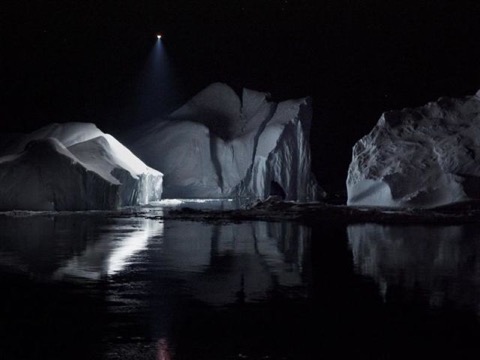
NOWs: Towards No Earthly Pole by Julian Charrière
Julian Charrière - Towards No Earthly Pole, 2019, © the Artist; VG Bild-Kunst, Bonn, Germany
Towards No Earthly Polesolo exhibition
MASI Lugano
LAC Lugano Arte e Cultura
Piazza Bernardino Luini 6
CH – 6901 Lugano
Switzerland
Opening
26 October 2019, 6 pm
Between 27 October 2019 and 15 March 2020 the Museo d’arte della Svizzera italiana will be presenting a large solo exhibition by Julian Charrière, one of the most innovative and promising young Swiss artists of his generation. Titled Towards No Earthly Pole, the exhibition has been developed around a new videowork of the same name, for which the artist explored remote places subject to extremely hostile weather. The exhibition will subsequently be presented in a modified version at the Aargauer Kunsthaus in Aarau and at the Dallas Museum of Art.
Julian Charrière immediately stood out on the contemporary art scene as a modern explorer on a conceptual artistic quest that combines different disciplines, including geology, archaeology, physics and history. Employing performance, sculpture, photography and video, his work offers new and unexpected perspectives on some of the essential issues of our era, and related to humanity in general. Charrière spends much time travelling, visiting regions of the planet that are both very remote and invested with a strong geopolitical identity for instance, volcanoes, glaciers, radioactive sites where, using unconventional methods and materials, he investigates the tensions and elemental link that exists between human civilisation and the landscapes it inhabits.
The idea of the Towards No Earthly Pole project arose in 2017 when Charrière was invited on board a ship of Russian researchers passing through the Drake Passage that runs between Cape Horn and the Southern Shetland Islands. The powerful impression made on him by the Antarctic landscape and his readings of early 20th-century exploration gave rise to the work, which subsequently took him to the Rodano and Aletsch glaciers in Switzerland, Mont Blanc, Iceland and Greenland.
The title of the show and project is taken from a verse that the English poet Alfred Tennyson dedicated to John Franklin who died along with his entire team during his famous polar expedition of 1845 and creates an immediate association with the world of exploration of the 19th and early 20th centuries. During that period, the Poles and glaciers were the last regions of the Earth to be conquered and mapped; the last frontiers, they were mysterious and gruelling to cross. Today they are considered fragile ecosystems that need to be protected and are fundamental symbols of the Anthropocene, yet they are also the planet’s most alien places where life is extremely difficult. Although only a minuscule fraction of the human population has ever visited them, the North and South Poles are a fixed feature of the collective imaginary with a power of fascination generated by photographs, historic accounts and literature.
The exhibition at MASI has been conceived as a diorama that visitors can enter. With a projection at its centre, Charrière has created an environmental installation that transforms the entire exhibition space into a setting associated with the central subjects and themes of the videowork. The aim of the artist is to intensify the visitor’s involvement by means of a sensory experience as well as the rapport between the observer and the landscape represented.
The Arctic and glaciers are extremely different from our everyday world. The sounds, light and matter experienced during exploratory journeys in these places are fundamental elements of the process of discovery. They form a set of sensations that imbue the landscape with an ancient force and mystery, partly beautiful but also partly threatening, that emphasise each place’s individual existence despite not being free of man’s presence, as though to remind us that human activities today rival the power of the forces of nature, skewing the relationship between culture and nature, and the romantic poetics associated with them.
Alongside reinterpretations of previous works in the environmental installation, there will be new works produced by the artist for the MASI exhibition, for which he has included in his research local subjects and natural resources, and on which he has worked with Ticinese craftsmen.
Through his research, Charrière recreates a dialogue with the landscape and endeavours to rediscover the feeling of astonishment that ancient man felt confronted by nature: in the same way that man acts upon nature, nature acts upon man, and the place where this occurs is the setting for the birth of a work of art.
Julian Charrière – Towards No Earthly Pole has been made possible by the museum’s primary partner, Credit Suisse, by its scientific partner the IBSA Foundation for scientific research, by the exhibition sponsor La Prairie, and by the support of Pro Helvetia, Göhner Stiftung, the Stanley Thompson Foundation, Fondation Coromandel and Erna und Curt Burgauer Stiftung.
Julian Charrière - Towards No Earthly Pole, 2019, © the Artist; VG Bild-Kunst, Bonn, Germany
Julian Charrière - Towards No Earthly Pole, 2019, © the Artist; VG Bild-Kunst, Bonn, Germany
Julian Charrière - Towards No Earthly Pole, 2019, © the Artist; VG Bild-Kunst, Bonn, Germany
Towards No Earthly Polesolo exhibition
MASI Lugano
LAC Lugano Arte e Cultura
Piazza Bernardino Luini 6
CH – 6901 Lugano
Switzerland
Eröffnung
26. October 2019, 18 h
Between 27 October 2019 and 15 March 2020 the Museo d’arte della Svizzera italiana will be presenting a large solo exhibition by Julian Charrière, one of the most innovative and promising young Swiss artists of his generation. Titled Towards No Earthly Pole, the exhibition has been developed around a new videowork of the same name, for which the artist explored remote places subject to extremely hostile weather. The exhibition will subsequently be presented in a modified version at the Aargauer Kunsthaus in Aarau and at the Dallas Museum of Art.
Julian Charrière immediately stood out on the contemporary art scene as a modern explorer on a conceptual artistic quest that combines different disciplines, including geology, archaeology, physics and history. Employing performance, sculpture, photography and video, his work offers new and unexpected perspectives on some of the essential issues of our era, and related to humanity in general. Charrière spends much time travelling, visiting regions of the planet that are both very remote and invested with a strong geopolitical identity for instance, volcanoes, glaciers, radioactive sites where, using unconventional methods and materials, he investigates the tensions and elemental link that exists between human civilisation and the landscapes it inhabits.
The idea of the Towards No Earthly Pole project arose in 2017 when Charrière was invited on board a ship of Russian researchers passing through the Drake Passage that runs between Cape Horn and the Southern Shetland Islands. The powerful impression made on him by the Antarctic landscape and his readings of early 20th-century exploration gave rise to the work, which subsequently took him to the Rodano and Aletsch glaciers in Switzerland, Mont Blanc, Iceland and Greenland.
The title of the show and project is taken from a verse that the English poet Alfred Tennyson dedicated to John Franklin who died along with his entire team during his famous polar expedition of 1845 and creates an immediate association with the world of exploration of the 19th and early 20th centuries. During that period, the Poles and glaciers were the last regions of the Earth to be conquered and mapped; the last frontiers, they were mysterious and gruelling to cross. Today they are considered fragile ecosystems that need to be protected and are fundamental symbols of the Anthropocene, yet they are also the planet’s most alien places where life is extremely difficult. Although only a minuscule fraction of the human population has ever visited them, the North and South Poles are a fixed feature of the collective imaginary with a power of fascination generated by photographs, historic accounts and literature.
The exhibition at MASI has been conceived as a diorama that visitors can enter. With a projection at its centre, Charrière has created an environmental installation that transforms the entire exhibition space into a setting associated with the central subjects and themes of the videowork. The aim of the artist is to intensify the visitor’s involvement by means of a sensory experience as well as the rapport between the observer and the landscape represented.
The Arctic and glaciers are extremely different from our everyday world. The sounds, light and matter experienced during exploratory journeys in these places are fundamental elements of the process of discovery. They form a set of sensations that imbue the landscape with an ancient force and mystery, partly beautiful but also partly threatening, that emphasise each place’s individual existence despite not being free of man’s presence, as though to remind us that human activities today rival the power of the forces of nature, skewing the relationship between culture and nature, and the romantic poetics associated with them.
Alongside reinterpretations of previous works in the environmental installation, there will be new works produced by the artist for the MASI exhibition, for which he has included in his research local subjects and natural resources, and on which he has worked with Ticinese craftsmen.
Through his research, Charrière recreates a dialogue with the landscape and endeavours to rediscover the feeling of astonishment that ancient man felt confronted by nature: in the same way that man acts upon nature, nature acts upon man, and the place where this occurs is the setting for the birth of a work of art.
Julian Charrière – Towards No Earthly Pole has been made possible by the museum’s primary partner, Credit Suisse, by its scientific partner the IBSA Foundation for scientific research, by the exhibition sponsor La Prairie, and by the support of Pro Helvetia, Göhner Stiftung, the Stanley Thompson Foundation, Fondation Coromandel and Erna und Curt Burgauer Stiftung.
Julian Charrière - Towards No Earthly Pole, 2019, © the Artist; VG Bild-Kunst, Bonn, Germany
Julian Charrière - Towards No Earthly Pole, 2019, © the Artist; VG Bild-Kunst, Bonn, Germany
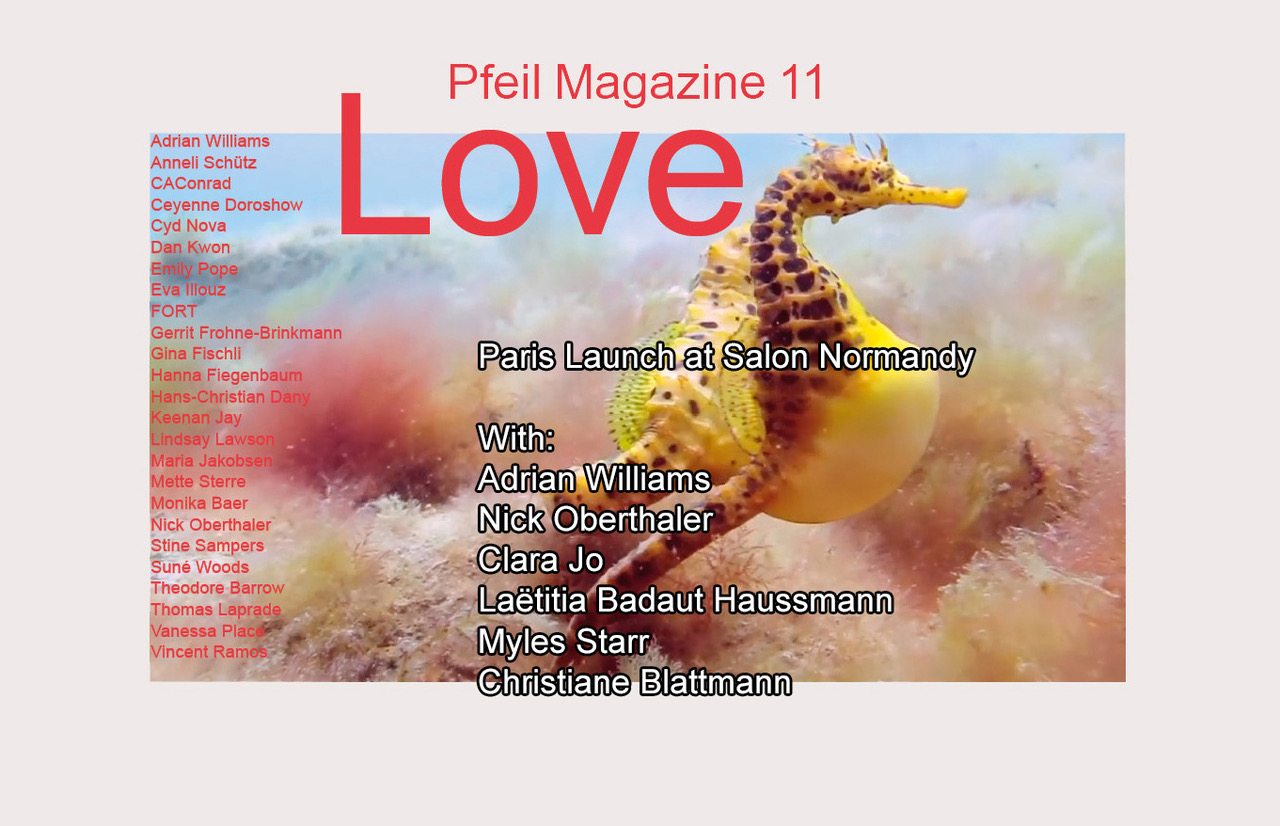
NOWs: Montez Press at Salon de Normandy
Sunday, 20 October, 4-5 pm
Salon de Normandy by The Community
Normandy Hôtel
7 Rue de l’Échelle
75001 Paris
Paris launch of the Pfeil Magazine LOVE issue at Salon de Normandy by The Community in collaboration with After 8 Books
with: Adrian Williams, Nick Oberthaler, Clara Jo, Laetitia Badaut Haussmann, Myles Starr, Christiane Blattmann
Sunday, 20 October, 4-5 pm
Salon de Normandy by The Community
Normandy Hôtel
7 Rue de l’Échelle
75001 Paris
Paris launch of the Pfeil Magazine LOVE issue at Salon de Normandy by The Community in collaboration with After 8 Books
with: Adrian Williams, Nick Oberthaler, Clara Jo, Laetitia Badaut Haussmann, Myles Starr, Christiane Blattmann
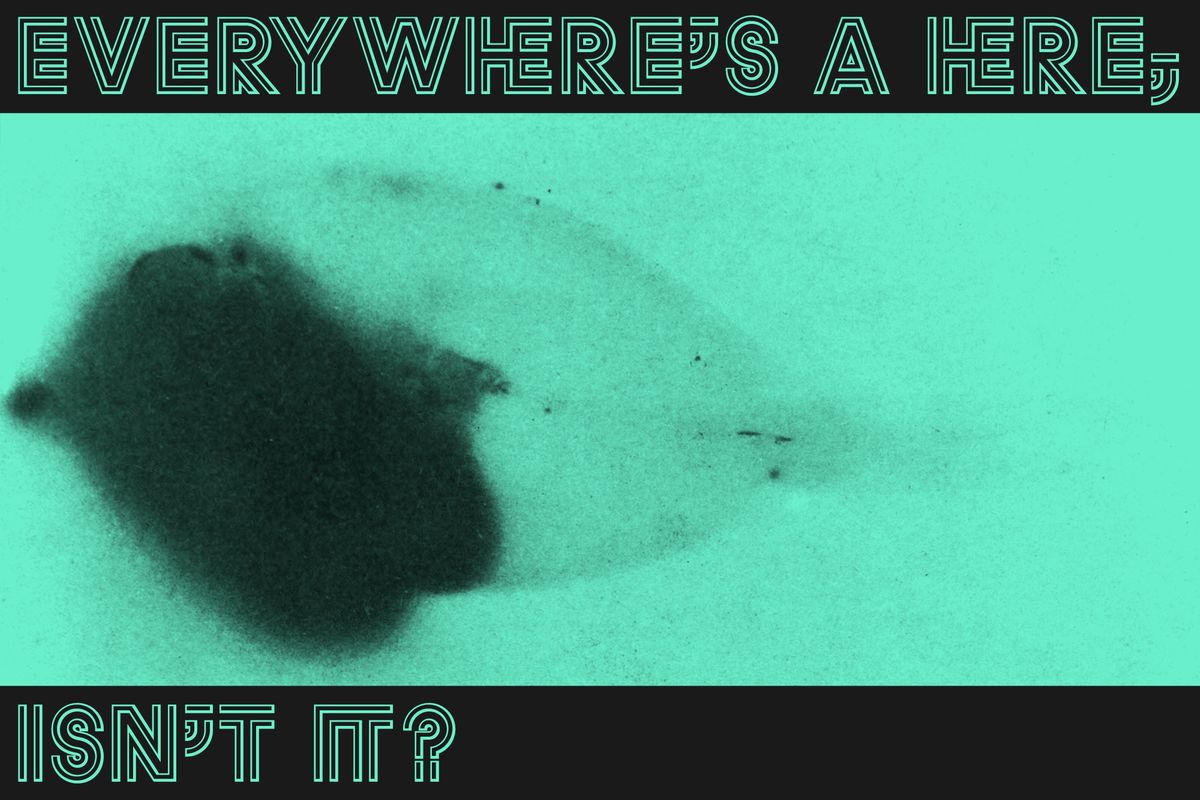
NOWs: The Long Term You Cannot Afford. On The Distribution Of The Toxic
The Long Term You Cannot Afford. On The Distribution Of The ToxicResearch, performance and exhibition Project
Exhibition
19.10.– 01.12.2019
Opening hours
Thurs–Sun 2 pm – 7 pm
SAVVY Contemporary
Plantagenstraße 31
13347 Berlin
Free entry – Donations welcome
With: Boris Anje, Julieta Aranda, Christian Danielewitz and Anu Ramdas, Anne Duk Hee Jordan and Pauline Doutreluingne, Assaf Gruber, He Xiangyu, Nona Inescu, Anja Kanngieser, Jessika Khazrik, Candice Lin, Natascha Sadr Haghighian and Ashkan Sepahvand, Neda Saeedi, Zina Saro-Wiwa, Jonas Staal in collaboration with Jonas Stuck, Stephan R. Thierbach and Nada Tshibuabua
Following our agropoetic endeavour around land struggle and agroecological resistance, this subsequent project examines a field closely connected: the complex notions and injustices surrounding the toxic and its ongoing power-plays, relations, and rhetorics that are deeply rooted in historical structures. Our aim is to open up a space for an artistic and critical registry that encourages us to pause and sense the toxic presences and textures otherwise, to acknowledge and mourn its ongoing victims, and to listen to the movement of its shadows. In so doing, we hope to shift sensibilities away from one of paranoid containment and fear to an outlook fueled by reflexivity and nuance, and to nurture the act of noticing how actions on the most intimate scale are closely tied to the global – as everywhere is ultimately a here.
The Long Term You Cannot Afford. On The Distribution Of The ToxicResearch, performance and exhibition Project
Exhibition
19.10.– 01.12.2019
Opening hours
Thurs–Sun 2 pm – 7 pm
SAVVY Contemporary
Plantagenstraße 31
13347 Berlin
Free entry – Donations welcome
With: Boris Anje, Julieta Aranda, Christian Danielewitz and Anu Ramdas, Anne Duk Hee Jordan and Pauline Doutreluingne, Assaf Gruber, He Xiangyu, Nona Inescu, Anja Kanngieser, Jessika Khazrik, Candice Lin, Natascha Sadr Haghighian and Ashkan Sepahvand, Neda Saeedi, Zina Saro-Wiwa, Jonas Staal in collaboration with Jonas Stuck, Stephan R. Thierbach and Nada Tshibuabua
Following our agropoetic endeavour around land struggle and agroecological resistance, this subsequent project examines a field closely connected: the complex notions and injustices surrounding the toxic and its ongoing power-plays, relations, and rhetorics that are deeply rooted in historical structures. Our aim is to open up a space for an artistic and critical registry that encourages us to pause and sense the toxic presences and textures otherwise, to acknowledge and mourn its ongoing victims, and to listen to the movement of its shadows. In so doing, we hope to shift sensibilities away from one of paranoid containment and fear to an outlook fueled by reflexivity and nuance, and to nurture the act of noticing how actions on the most intimate scale are closely tied to the global – as everywhere is ultimately a here.
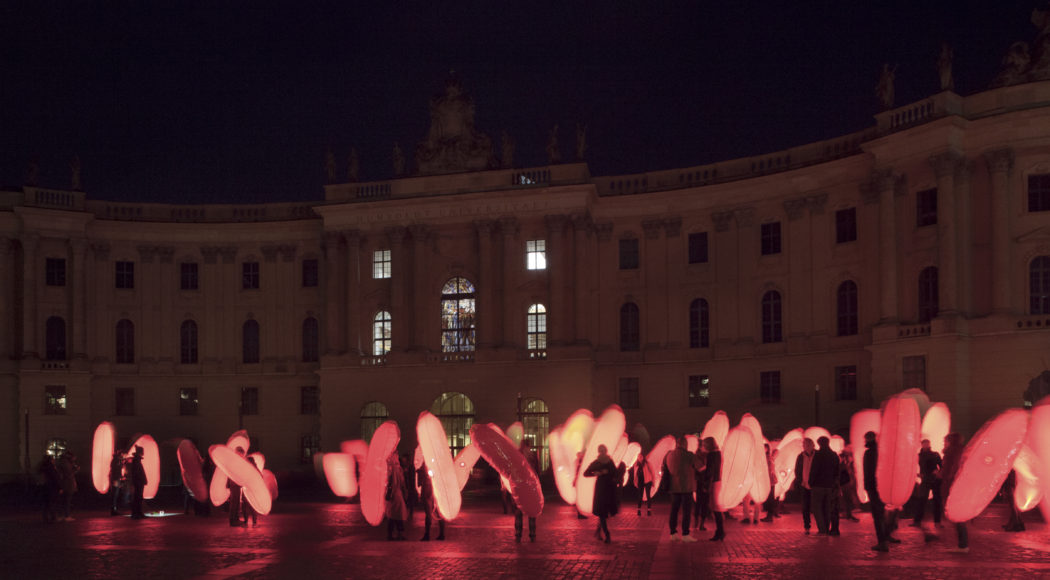
NOWs: Signals 3.0
Signals, Resonating Revolutions, Berlin 2018, Tools for Action Foundation in Kollaboration mit Tomas Espinosa und Kulturprojekte Berlin im Rahmen von 100 Jahre Revolution, Berlin 1918/19. Foto: Luca Giardini
Signals 3.0Eine Choreografie für Alle! im Dresdner Stadtraum
Open Call / Aufruf
und Eröffnung
15. Oktober 2019, 19 Uhr
Signals 3.0.!
Neuer Projektraum
Hauptstrasse 44
Nähe Albertplatz/ Jorge-Gomondai-Platz (neben dem Restaurant “Der Löwe”)
01097 Dresden
Wie sind Menschen und Orte mit Geschichte und Erinnerung verbunden? Welche Erinnerungen entstehen durch die gemeinsame Bewegung von Körpern im Raum? Wie könnte eine neue, lebendige Form des Gedenkens aussehen?
Als Choreografie für Alle! mit aufblasbaren Leuchtskulpturen für ca. 80 Performer*innen und aktiver Beteiligung vieler weiterer Menschen wird Signals 3.0 am Samstag, den 9. November im Herzen von Dresden neue Formen der Versammlung und der kollektiven Kommunikation erproben.
Der Impuls für das Experiment Signals 3.0 kommt durch den niederländisch-ungarischen Künstler Artúr van Balen und den kolumbianischen Künstler Tomas Espinosa sowie die Stiftung Tools for Action. Die Choreografie für Alle! am 9. November im Stadtraum von Dresden greift drei historische Ereignisse auf, die sich mit diesem Datum verbinden: Der Ausruf der ersten deutschen Republik 1918, die Novemberprogrome im Jahr 1938 und der Fall der Mauer 1989. Der Dreiklang dieser Ereignisse ruft auch in Dresden besondere Erinnerungen wach. Gemeinsam soll zu neuen Formen des Gedenkens und kollektiven Formen des Erzählens geforscht werden: Welche veränderte Rolle spielt das ‚Wir’ im Rückblick auf historische Ereignisse und welche neuen Formen des Austausches zwischen subjektiver Erfahrung von Gegenwart und Geschichte sind denkbar?
SIGNALS 3.0. Eröffnung am Dienstag, den 15. Oktober
Am kommenden Dienstag, den 15. Oktober eröffnet das Tools for Action-Studio in einem leerstehenden Ladenlokal auf der Hauptstraße. Das Studio fungiert als Begegnungsort, Werkstatt und als Ausstellungsraum für ein offenes gemeinsam erarbeitetes Archiv. Zu einer Reihe von Gesprächen und Workshops mit Zeitzeug*innen, Historiker*innen und Choreograf*innen laden Artúr van Balen und Tomas Espinosa hier gemeinsam mit dem Kunsthaus Dresden, HELLERAU –Europäisches Zentrum der Künste und dem Montagscafé/ Staatsschauspiel Dresden ein.Zur Eröffnung am kommenden Dienstag, den 15. Oktober um 19 Uhr laden wir Alle! im Tools for Action-Studio in der Hauptstrasse 44 nahe dem Albertplatz herzlich ein!
Mit Beiträgen von Artúr van Balen / Tools for Action und Tomas Espinosa zum Projekt Signals 3.0, dem Historiker Wolfgang Niess im Gespräch mit Dresdener Bürgerrechtler über die Resonanzräume des 9. November und der Choreografin Floor van Leeuwen über Kollektivität in ihrer Tanzpraxis.
OPEN CALL zum Offenen Archiv von 1918 bis 2019
Gern geben wir hiermit den Aufruf von Artúr van Balen und Tomas Espinosa weiter, zum offenen Archiv beizutragen. Bitte bringt Eure Erinnerungen in Form von Fotos, Filmen, Objekten oder Texten mit, die sich mit Jahreszahlen 1918, 1938, 1989 und 2019 verbinden!Nähere Informationen zu den folgenden Programmpunkten und Terminen im Projekt Signals 3.0 finden Sie unter www.kunsthausdresden.de.
Wir laden Sie ebenfalls herzlich ein, sich unter kunsthaus@museen-dresden.de oder bei Caro Gerlach, Produktionsleitung, unter carolingerlach@gmx.net oder Telefon 0351-20884833 zu melden. Gern vermitteln wir Ihnen Hinweise zu der aktiven Teilnahme an der öffentlichen Performance am 9. November!
Signals, Resonating Revolutions, Berlin 2018, Tools for Action Foundation in Kollaboration mit Tomas Espinosa und Kulturprojekte Berlin im Rahmen von 100 Jahre Revolution, Berlin 1918/19. Foto: Luca Giardini
Ein künstlerisches Projekt und eine Choreografie für Alle! in einer Koproduktion von Kunsthaus Dresden, HELLERAU – Europäisches Zentrum der Künste und Montagscafé/ Staatsschauspiel Dresden. Mit Dank für die freundliche Zusammenarbeit an Vonovia Dresden.
Gefördert im Rahmen des Programms “Revolution und Demokratie” der Sächsischen Staatskanzlei.
Diese Maßnahme wird mitfinanziert mit Steuermitteln auf Grundlage des vom Sächsischen Landtag beschlossenen Haushaltes.
Signals, Resonating Revolutions, Berlin 2018, Tools for Action Foundation in Kollaboration mit Tomas Espinosa und Kulturprojekte Berlin im Rahmen von 100 Jahre Revolution, Berlin 1918/19. Foto: Luca Giardini
Signals 3.0Eine Choreografie für Alle! im Dresdner Stadtraum
Open Call / Aufruf
und Eröffnung
15. Oktober 2019, 19 Uhr
Signals 3.0.!
Neuer Projektraum
Hauptstrasse 44
Nähe Albertplatz/ Jorge-Gomondai-Platz (neben dem Restaurant “Der Löwe”)
01097 Dresden
Wie sind Menschen und Orte mit Geschichte und Erinnerung verbunden? Welche Erinnerungen entstehen durch die gemeinsame Bewegung von Körpern im Raum? Wie könnte eine neue, lebendige Form des Gedenkens aussehen?
Als Choreografie für Alle! mit aufblasbaren Leuchtskulpturen für ca. 80 Performer*innen und aktiver Beteiligung vieler weiterer Menschen wird Signals 3.0 am Samstag, den 9. November im Herzen von Dresden neue Formen der Versammlung und der kollektiven Kommunikation erproben.
Der Impuls für das Experiment Signals 3.0 kommt durch den niederländisch-ungarischen Künstler Artúr van Balen und den kolumbianischen Künstler Tomas Espinosa sowie die Stiftung Tools for Action. Die Choreografie für Alle! am 9. November im Stadtraum von Dresden greift drei historische Ereignisse auf, die sich mit diesem Datum verbinden: Der Ausruf der ersten deutschen Republik 1918, die Novemberprogrome im Jahr 1938 und der Fall der Mauer 1989. Der Dreiklang dieser Ereignisse ruft auch in Dresden besondere Erinnerungen wach. Gemeinsam soll zu neuen Formen des Gedenkens und kollektiven Formen des Erzählens geforscht werden: Welche veränderte Rolle spielt das ‚Wir’ im Rückblick auf historische Ereignisse und welche neuen Formen des Austausches zwischen subjektiver Erfahrung von Gegenwart und Geschichte sind denkbar?
SIGNALS 3.0. Eröffnung am Dienstag, den 15. Oktober
Am kommenden Dienstag, den 15. Oktober eröffnet das Tools for Action-Studio in einem leerstehenden Ladenlokal auf der Hauptstraße. Das Studio fungiert als Begegnungsort, Werkstatt und als Ausstellungsraum für ein offenes gemeinsam erarbeitetes Archiv. Zu einer Reihe von Gesprächen und Workshops mit Zeitzeug*innen, Historiker*innen und Choreograf*innen laden Artúr van Balen und Tomas Espinosa hier gemeinsam mit dem Kunsthaus Dresden, HELLERAU –Europäisches Zentrum der Künste und dem Montagscafé/ Staatsschauspiel Dresden ein.Zur Eröffnung am kommenden Dienstag, den 15. Oktober um 19 Uhr laden wir Alle! im Tools for Action-Studio in der Hauptstrasse 44 nahe dem Albertplatz herzlich ein!
Mit Beiträgen von Artúr van Balen / Tools for Action und Tomas Espinosa zum Projekt Signals 3.0, dem Historiker Wolfgang Niess im Gespräch mit Dresdener Bürgerrechtler über die Resonanzräume des 9. November und der Choreografin Floor van Leeuwen über Kollektivität in ihrer Tanzpraxis.
OPEN CALL zum Offenen Archiv von 1918 bis 2019
Gern geben wir hiermit den Aufruf von Artúr van Balen und Tomas Espinosa weiter, zum offenen Archiv beizutragen. Bitte bringt Eure Erinnerungen in Form von Fotos, Filmen, Objekten oder Texten mit, die sich mit Jahreszahlen 1918, 1938, 1989 und 2019 verbinden!Nähere Informationen zu den folgenden Programmpunkten und Terminen im Projekt Signals 3.0 finden Sie unter www.kunsthausdresden.de.
Wir laden Sie ebenfalls herzlich ein, sich unter kunsthaus@museen-dresden.de oder bei Caro Gerlach, Produktionsleitung, unter carolingerlach@gmx.net oder Telefon 0351-20884833 zu melden. Gern vermitteln wir Ihnen Hinweise zu der aktiven Teilnahme an der öffentlichen Performance am 9. November!
Signals, Resonating Revolutions, Berlin 2018, Tools for Action Foundation in Kollaboration mit Tomas Espinosa und Kulturprojekte Berlin im Rahmen von 100 Jahre Revolution, Berlin 1918/19. Foto: Luca Giardini
Ein künstlerisches Projekt und eine Choreografie für Alle! in einer Koproduktion von Kunsthaus Dresden, HELLERAU – Europäisches Zentrum der Künste und Montagscafé/ Staatsschauspiel Dresden. Mit Dank für die freundliche Zusammenarbeit an Vonovia Dresden.
Gefördert im Rahmen des Programms “Revolution und Demokratie” der Sächsischen Staatskanzlei.
Diese Maßnahme wird mitfinanziert mit Steuermitteln auf Grundlage des vom Sächsischen Landtag beschlossenen Haushaltes.
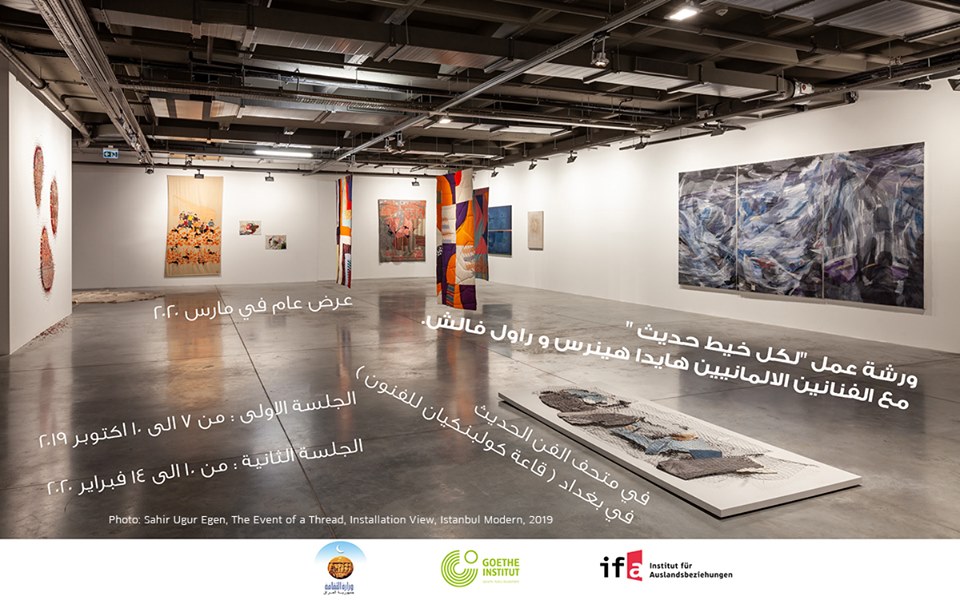
NOWs: The Event of a Thread
The Event of a ThreadWorkshop and exhibition with Raul Walch
Du bist Künstler aus Bagdad, interessiert dich für die Arbeit mit Stoffen und möchtest mit zwei deutschen KünstlerInnen zusammenarbeiten? Bewirb dich jetzt.
THE EVENT OF A THREAD – zwei 4-tägige Workshops mit dem deutschen Künstler Raul Walch und einer öffentlichen Präsentation innerhalb der gleichnamigen Ausstellung im März 2020.
Interventionen und neue künstlerische Initiativen im öffentlichen Raum und an früheren Kulturorten Bagdads.
Workshop 1: 07.10. – 10.10. von 10.00 bis 16.00 Uhr im Museum für Moderne Kunst (Gulbenkian Halle) in Bagdad
Der Workshop ist gerichtet an Künstler aus Bagdad zwischen 18 und 35 Jahren von unterschiedlichen Kunstsparten kommend.
Bewirb Dich hier: https://forms.gle/gtxGyLGJ7A7hWZWk8
Der zweiteilige Workshop greift Themen des Zusammenlebens in Bagdad auf. Wir suchen öffentliche Räume, unkonventionelle Orte und verwaiste Kulturstätten als Potentialfläche für künstlerischen Ausdruck und Initiativen unter Verwendung von Textilem. Das Experimentieren mit Textilen, die Verarbeitung, die Farben, Muster und Formen, das Schaffen von Volumen und Raum – all die vielseitigen Möglichkeiten mit Textilen zu arbeiten, über Kleidung zu Performances, Installationen oder Architektur wird unser gemeinsamer Arbeitsschwerpunkt in Bezug auf die von uns gefundenen Orte sein.
Zu unseren Aktivitäten werden Arbeitspräsentationen, Ausflüge und gemeinsame Essen zählen. Im zweiten Workshop vom 10.02. bis 14.02.2019 wirst Du die Gelegenheit haben, Dein Kunstwerk fertigzustellen.
Der Workshop ist Teil der ifa Wanderausstellung THE EVENT OF A THREAD. Global Narratives in Textiles, die vom 1. bis 30. März 2020 im Museum für Moderne Kunst (Gulbenkian Halle) in Bagdad gezeigt wird. Die Ausstellung wurde von ifa, dem Deutschen Institut für Auslandsbeziehungen konzipiert und produziert. Die präsentierten Arbeiten befassen sich mit dem Kontext von Textilien, ihren spezifischen Eigenschaften und ihrer Geschichte.
Der Workshop und die Ausstellung THE EVENT OF A THREAD ist eine Kooperation zwischen ifa, dem deutschen Institut für Auslandsbeziehungen, dem Goethe-Institut Irak und dem Ministerium für Kultur, Tourismus und Antiquitäten, Republik Irak.
Raul Walch überschreitet in seiner künstlerischen Praxis die Grenzen gängiger Kunst-Genres. Er arbeitet als Bildhauer und Konzeptkünstler, schlüpft in seinen Arbeiten aber ebenso in die Rolle des Performers oder Forschers. Im Mittelpunkt steht immer eine unkonventionelle, künstlerische Auseinandersetzung mit gesellschaftlicher Realität. Die Arbeiten und Aktionen von Walch sind vor allem ortsspezifische Interventionen, die auf ihr Umfeld eingehen.
أنت فنان من بغداد ، مهتم بالعمل مع المنسوجات مع فنانين ألمان؟ سجل الآن!
( لكل خيط حديث ) – دورتين تدريبيتين مدتهما اربعة ايام مع الفنان الالماني راوول فالش وعرض فني ضخم في مارس 2020
مبادرة و تفاعل فني في الوسط الثقافي العام و المواقع الثقافية السابقة .
الجلسه الاولى : 7- 10 / 10 اكتوبر / 2019 من الساعة العاشرة الى الساعة الرابعة في متحف الفن المعاصر ( قاعه كولبنكيان )
الورشه تستهدف فنانين من بغداد بأعمار 18 – 35 من جميع التخصصات .
سجل هنا : https://forms.gle/gtxGyLGJ7A7hWZWk8
ورشتي العمل ستظهر جوانب التعايش الاجتماعي في بغداد . سنقوم بالبحث عن اماكن مهمله غير تقليديه لخلق مضاهر فنيه باستخدام الانسجه . سنختبر استخدام الانسجه , الاعمال اليدويه , لالوان , القوالب و الاشكال , سنخلق حجوما و مساحات بكل الطرق المتنوعه للعمل مع المنسوجات , ملابس للاداء و التركيب , الهندسه المعماريه ستكون طريقة عملنا الاساسيه من خلال علاقة هذه الامور بالاماكن التي وجدناها .
فعالياتنا ستتضمن عرضا للاعمال , رحلات و وجبات طعام متعددة . الجزء الثاني من ورشة العمل من 10-14 / 2 فبراير /2020 سنركز على الشكل النهائي للاعمال الفنيه لتكون جاهزه للعرض العام .
ورشة العمل هذه هي جزء من معرض ايفا الجوال ( لكل خيط حديث ) . الروايات العالميه في المنسوجات , و التي ستقدم في بغداد في متحف الفن المعاصر ( قاعه كولبنكيان ) من 1- 30/ 3 مارس / 2020 . صمم و انتج المعرض من قبل ايفا , معهد العلاقات الخارجيه الثقافيه الالماني . الأعمال المقدمة تستهدف المنسوجات ، صفاتها المحددة وتاريخها .
كنتيجه لورشتي العمل في الاربعة ايام ستكون لديكم فرصه لتقديم عملك في معرض ( لكل خيط حديث ) في متحف الفن المعاصر ( قاعة كولبنكيان ) في مارس 2020 .
ورشة العمل و المعرض الفني ( لكل خيط حديث ) هو تعاون بين ايفا , معهد العلاقات الخارجيه الثقافيه الالماني و معهد غوتا العراق و وزارة الثقافه و السياحه و الاثار , جمهورية العراق .
في هذا التمرين الفني , الالماني راوول فالش يعبر الحدود التقليديه لأنواع الفن . هو يعمل كنحات و فنان مفاهيمي , و يعمل ايضا كفنان مؤدي او باحث .يركز دوما في الطرق غير التقليديه , الاختبارات الفنيه للواقع المجتمعي . ان عمل و افعال فالش بشكل اساسي تحاكي وتستهدف و تتفاعل مع بيئات المواقع التي يعمل فيها .
The Event of a ThreadWorkshop und Ausstellung mit Raul Walch
Du bist Künstler aus Bagdad, interessiert dich für die Arbeit mit Stoffen und möchtest mit zwei deutschen KünstlerInnen zusammenarbeiten? Bewirb dich jetzt.
THE EVENT OF A THREAD – zwei 4-tägige Workshops mit dem deutschen Künstler Raul Walch und einer öffentlichen Präsentation innerhalb der gleichnamigen Ausstellung im März 2020.
Interventionen und neue künstlerische Initiativen im öffentlichen Raum und an früheren Kulturorten Bagdads.
Workshop 1: 07.10. – 10.10. von 10.00 bis 16.00 Uhr im Museum für Moderne Kunst (Gulbenkian Halle) in Bagdad
Der Workshop ist gerichtet an Künstler aus Bagdad zwischen 18 und 35 Jahren von unterschiedlichen Kunstsparten kommend.
Bewirb Dich hier: https://forms.gle/gtxGyLGJ7A7hWZWk8
Der zweiteilige Workshop greift Themen des Zusammenlebens in Bagdad auf. Wir suchen öffentliche Räume, unkonventionelle Orte und verwaiste Kulturstätten als Potentialfläche für künstlerischen Ausdruck und Initiativen unter Verwendung von Textilem. Das Experimentieren mit Textilen, die Verarbeitung, die Farben, Muster und Formen, das Schaffen von Volumen und Raum – all die vielseitigen Möglichkeiten mit Textilen zu arbeiten, über Kleidung zu Performances, Installationen oder Architektur wird unser gemeinsamer Arbeitsschwerpunkt in Bezug auf die von uns gefundenen Orte sein.
Zu unseren Aktivitäten werden Arbeitspräsentationen, Ausflüge und gemeinsame Essen zählen. Im zweiten Workshop vom 10.02. bis 14.02.2019 wirst Du die Gelegenheit haben, Dein Kunstwerk fertigzustellen.
Der Workshop ist Teil der ifa Wanderausstellung THE EVENT OF A THREAD. Global Narratives in Textiles, die vom 1. bis 30. März 2020 im Museum für Moderne Kunst (Gulbenkian Halle) in Bagdad gezeigt wird. Die Ausstellung wurde von ifa, dem Deutschen Institut für Auslandsbeziehungen konzipiert und produziert. Die präsentierten Arbeiten befassen sich mit dem Kontext von Textilien, ihren spezifischen Eigenschaften und ihrer Geschichte.
Der Workshop und die Ausstellung THE EVENT OF A THREAD ist eine Kooperation zwischen ifa, dem deutschen Institut für Auslandsbeziehungen, dem Goethe-Institut Irak und dem Ministerium für Kultur, Tourismus und Antiquitäten, Republik Irak.
Raul Walch überschreitet in seiner künstlerischen Praxis die Grenzen gängiger Kunst-Genres. Er arbeitet als Bildhauer und Konzeptkünstler, schlüpft in seinen Arbeiten aber ebenso in die Rolle des Performers oder Forschers. Im Mittelpunkt steht immer eine unkonventionelle, künstlerische Auseinandersetzung mit gesellschaftlicher Realität. Die Arbeiten und Aktionen von Walch sind vor allem ortsspezifische Interventionen, die auf ihr Umfeld eingehen.
أنت فنان من بغداد ، مهتم بالعمل مع المنسوجات مع فنانين ألمان؟ سجل الآن!
( لكل خيط حديث ) – دورتين تدريبيتين مدتهما اربعة ايام مع الفنان الالماني راوول فالش وعرض فني ضخم في مارس 2020
مبادرة و تفاعل فني في الوسط الثقافي العام و المواقع الثقافية السابقة .
الجلسه الاولى : 7- 10 / 10 اكتوبر / 2019 من الساعة العاشرة الى الساعة الرابعة في متحف الفن المعاصر ( قاعه كولبنكيان )
الورشه تستهدف فنانين من بغداد بأعمار 18 – 35 من جميع التخصصات .
سجل هنا : https://forms.gle/gtxGyLGJ7A7hWZWk8
ورشتي العمل ستظهر جوانب التعايش الاجتماعي في بغداد . سنقوم بالبحث عن اماكن مهمله غير تقليديه لخلق مضاهر فنيه باستخدام الانسجه . سنختبر استخدام الانسجه , الاعمال اليدويه , لالوان , القوالب و الاشكال , سنخلق حجوما و مساحات بكل الطرق المتنوعه للعمل مع المنسوجات , ملابس للاداء و التركيب , الهندسه المعماريه ستكون طريقة عملنا الاساسيه من خلال علاقة هذه الامور بالاماكن التي وجدناها .
فعالياتنا ستتضمن عرضا للاعمال , رحلات و وجبات طعام متعددة . الجزء الثاني من ورشة العمل من 10-14 / 2 فبراير /2020 سنركز على الشكل النهائي للاعمال الفنيه لتكون جاهزه للعرض العام .
ورشة العمل هذه هي جزء من معرض ايفا الجوال ( لكل خيط حديث ) . الروايات العالميه في المنسوجات , و التي ستقدم في بغداد في متحف الفن المعاصر ( قاعه كولبنكيان ) من 1- 30/ 3 مارس / 2020 . صمم و انتج المعرض من قبل ايفا , معهد العلاقات الخارجيه الثقافيه الالماني . الأعمال المقدمة تستهدف المنسوجات ، صفاتها المحددة وتاريخها .
كنتيجه لورشتي العمل في الاربعة ايام ستكون لديكم فرصه لتقديم عملك في معرض ( لكل خيط حديث ) في متحف الفن المعاصر ( قاعة كولبنكيان ) في مارس 2020 .
ورشة العمل و المعرض الفني ( لكل خيط حديث ) هو تعاون بين ايفا , معهد العلاقات الخارجيه الثقافيه الالماني و معهد غوتا العراق و وزارة الثقافه و السياحه و الاثار , جمهورية العراق .
في هذا التمرين الفني , الالماني راوول فالش يعبر الحدود التقليديه لأنواع الفن . هو يعمل كنحات و فنان مفاهيمي , و يعمل ايضا كفنان مؤدي او باحث .يركز دوما في الطرق غير التقليديه , الاختبارات الفنيه للواقع المجتمعي . ان عمل و افعال فالش بشكل اساسي تحاكي وتستهدف و تتفاعل مع بيئات المواقع التي يعمل فيها .
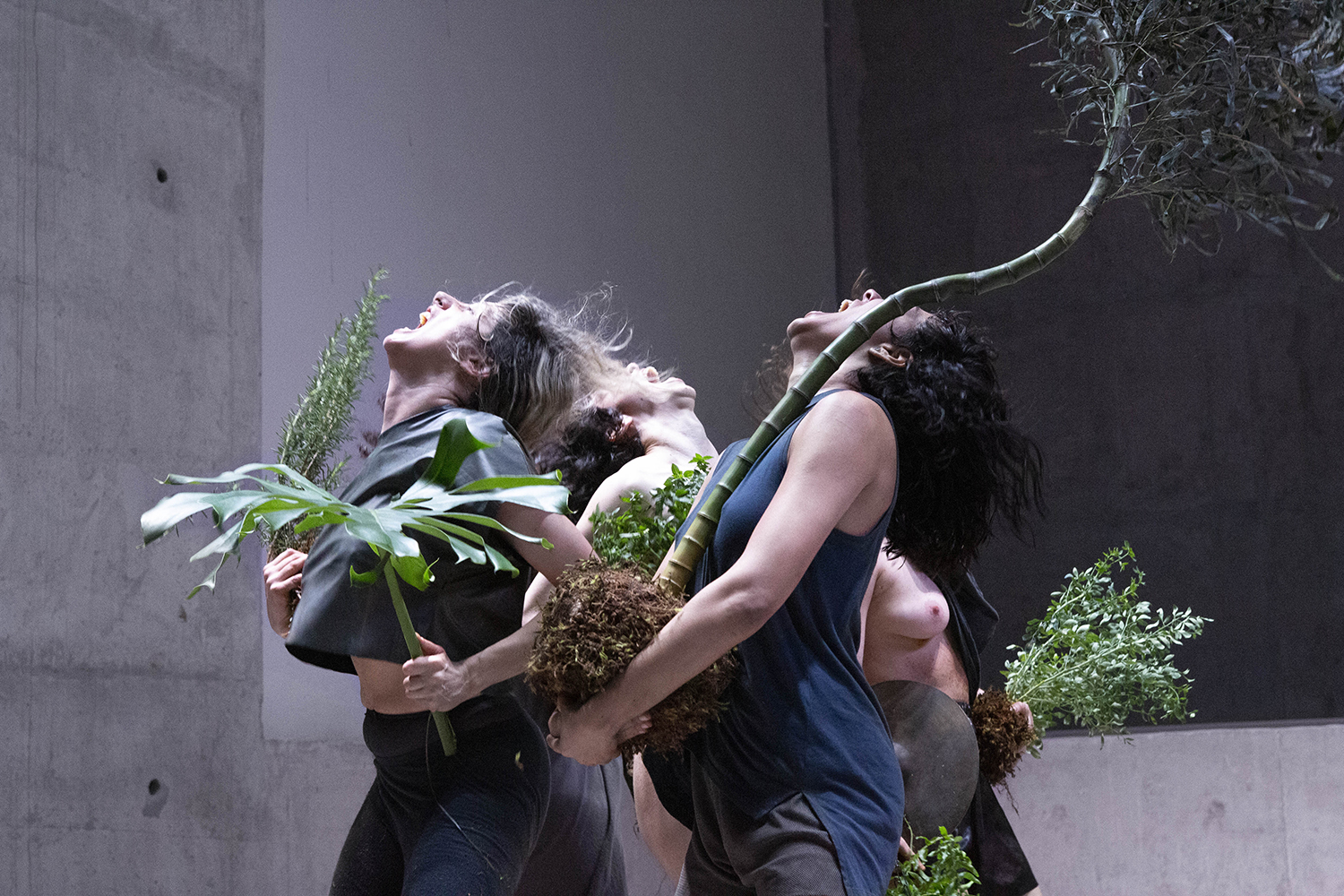
NOWs: Sensing Nature from Within
MONSTRA - performance by Elisabete Finger & Manuela Eichner, Photo: Debby Gram
Sensing Nature from WithinGroup Exhibition
Moderna Museet Malmö
Ola Billgrens plats 2-4
211 29 Malmö
The natural world, from which humanity has so thoroughly distanced itself, no longer exists, at least not in the same way or to the same extent it once did. This realization is starting to dawn on an increasing number of us, including many artists, and has resulted in a growing desire to reconsider old truths and seek out new ways of living and understanding the world. With the exhibition project Sensing Nature from Within, Moderna Museet Malmö wants to offer an artistic and philosophical sounding board for these existential explorations of our time.
In many places around the world today, texts are being written, lectures given, and exhibitions held that in a variety of ways explore man’s complex relationship with the environment in which we live. Criticism has hardened against the logic of a culture that leads to irrevocable destruction and the extinction of species. At the same time, there is a growing interest in more holistic world views and in the fascinating exercise of rethinking our relationships with the more-than-human world.
Moderna Museet Malmö wants to actively contribute to these important reflections and is therefore presenting Sensing Nature from Within during the fall of 2019 and spring of 2020. The project will combine an international art exhibition with an interdisciplinary program of lectures, discussions, and performances.
The seminar series that is part of the program is arranged in collaboration with Lund University Agenda 2030 Graduate School which is a global, cutting-edge research school and collaboration platform for issues related to societal challenges, sustainability and Agenda 2030.
Binary divisions, such as between nature and culture, and man and animal will be challenged in both the exhibition and the program. Intelligence, subjectivity, and emotional life will be explored within as well as beyond the human sphere. In this way, Sensing Nature from Within aims to awaken our sensibility towards the nature that surrounds us at the same time as it constitutes our own inner world.
Sensing Nature from Within is freely inspired by new and old insights into life and matter and reflects aspects of the growing search beyond our exploitative culture, for a new code of ethics.
Participating artists: Ursula Biemann & Paolo Tavares; Cecilia Edefalk; Elisabete Finger & Manuela Eichner; Hans Hammarskiöld; Ingela Ihrman, Anne Duk Hee Jordan; Tuija Lindström, Hanna Ljungh; Hilde Skancke Pedersen; The Otolith Group; Shimabuku; Christine Ödlund.
Curator: Joa Ljungberg
The Otolith Group: O Horizon, 2018 © Courtesy of The Otolith Group and LUX, London
Hilde Skancke Pedersen: Eana, 2018 © Courtesy the artist. Photo: Andreas Ausland
Ingela Ihrman: Giant clam, 2019, reading performance in Seved, Malmö © Courtesy the artist. Photo: Marte Edvarda Tidslevold Bildupphovsrätt 2019
Ursula Biemann & Paolo Tavares: Forest Law, 2014 © Courtesy the artists
MONSTRA - performance by Elisabete Finger & Manuela Eichner, Photo: Debby Gram
Sensing Nature from WithinGroup Exhibition
Moderna Museet Malmö
Ola Billgrens plats 2-4
211 29 Malmö
The natural world, from which humanity has so thoroughly distanced itself, no longer exists, at least not in the same way or to the same extent it once did. This realization is starting to dawn on an increasing number of us, including many artists, and has resulted in a growing desire to reconsider old truths and seek out new ways of living and understanding the world. With the exhibition project Sensing Nature from Within, Moderna Museet Malmö wants to offer an artistic and philosophical sounding board for these existential explorations of our time.
In many places around the world today, texts are being written, lectures given, and exhibitions held that in a variety of ways explore man’s complex relationship with the environment in which we live. Criticism has hardened against the logic of a culture that leads to irrevocable destruction and the extinction of species. At the same time, there is a growing interest in more holistic world views and in the fascinating exercise of rethinking our relationships with the more-than-human world.
Moderna Museet Malmö wants to actively contribute to these important reflections and is therefore presenting Sensing Nature from Within during the fall of 2019 and spring of 2020. The project will combine an international art exhibition with an interdisciplinary program of lectures, discussions, and performances.
The seminar series that is part of the program is arranged in collaboration with Lund University Agenda 2030 Graduate School which is a global, cutting-edge research school and collaboration platform for issues related to societal challenges, sustainability and Agenda 2030.
Binary divisions, such as between nature and culture, and man and animal will be challenged in both the exhibition and the program. Intelligence, subjectivity, and emotional life will be explored within as well as beyond the human sphere. In this way, Sensing Nature from Within aims to awaken our sensibility towards the nature that surrounds us at the same time as it constitutes our own inner world.
Sensing Nature from Within is freely inspired by new and old insights into life and matter and reflects aspects of the growing search beyond our exploitative culture, for a new code of ethics.
Participating artists: Ursula Biemann & Paolo Tavares; Cecilia Edefalk; Elisabete Finger & Manuela Eichner; Hans Hammarskiöld; Ingela Ihrman, Anne Duk Hee Jordan; Tuija Lindström, Hanna Ljungh; Hilde Skancke Pedersen; The Otolith Group; Shimabuku; Christine Ödlund.
Curator: Joa Ljungberg
The Otolith Group: O Horizon, 2018 © Courtesy of The Otolith Group and LUX, London
Hilde Skancke Pedersen: Eana, 2018 © Courtesy the artist. Photo: Andreas Ausland
Ingela Ihrman: Giant clam, 2019, reading performance in Seved, Malmö © Courtesy the artist. Photo: Marte Edvarda Tidslevold Bildupphovsrätt 2019
Ursula Biemann & Paolo Tavares: Forest Law, 2014 © Courtesy the artists
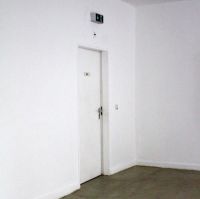
NOWs: back there
back theregroup exhibition
Galerie Nord – Kunstverein Tiergarten
Turmstraße 75
Berlin Moabit
Eröffnung:
27. September, 18 Uhr
Soundperformance von Anna Schimkat, 20 Uhr
back there
mit Arbeiten von Stefan Cantante, Birke Gorm, Rike Horb, YL Hsueh, Timo Kahlen, Nick Koppenhagen, Jeewi Lee, Jonas von Lenthe, Marina Naprushkina, Neue Nachbarschaft/Moabit, Stefan Riebel, Marion Ritzmann, Emmilou Rößling, Agnes Scherer + Paul DD Smith, Anna Schimkat, Gaby Taplick und Sung Tieu
Kuratiert von Ulrike Riebel und Christopher Weickenmeier
Im Rahmen des Ortstermin 2019 widmet sich die Ausstellung back there dem Offensichtlichen und dem weniger Offensichtlichem. Ist etwas offensichtlich, ist es genau so und nicht anders – offensichtlich, weil tatsächlich offen und einsichtig. So wirken die Räume der Galerie Nord | Kunstverein Tiergarten ebenfalls auf den ersten Blick überaus offen und einsichtig. Die physische Barriere zwischen Kunst- und Stadtraum besteht hier lediglich aus einer transparenten Glasscheibe, die sozialräumliche Distanz dagegen ist vielschichtiger. Die Ausstellung „back there“ nimmt dieses Paradox zum Anlass, die ansonsten unmerklichen räumlichen und gesellschaftlichen Bedingungen der Galerie Nord in den Vordergrund zu rücken. Verstärkt wird diese Auseinandersetzung durch eine speziell für die Ausstellung installierte Holzwand, die sich quer durch die Galerieräume zieht und als doppelte Rückseite die Grenze zwischen Vorder- und Hintergrund zusehends verwischt. Die versammelten Positionen bleiben auf der Oberfläche, beleuchten Hintergründe, machen sie unsichtbar und lassen Blicke ins Leere laufen.
Draußen, entlang der Turmstraße, setzt sich diese Arbeitsweise fort. Bewusst beiläufig, fast funktional präsentiert sich hier Kunst, dabei bewegt sie sich konsequent im Hintergrund. Sie versperrt sich gegenüber dem Buhlen um Aufmerksamkeit und nutzt schon vorhandene Medien und Strukturen, LED-Anzeigen in den Ladenfronten, Werbeaufsteller, Zäune oder Fahnenmasten. Sie konstituiert sich erst auf den zweiten oder dritten Blick und fordert so die Betrachter*innen auf innezuhalten, näherzutreten und sich der eigenen Perspektive und Position bewusst zu werden. Es gibt neben den individuellen auch historische und gesellschaftliche Gründe, warum genau das und nicht etwas anderes in diesem Augenblick ins Blickfeld rückt, offensichtlich ist, demnach vermeintlich wirklich und wichtig. Das scheinbar zufällige Treiben im städtischen Raum lässt sich anhand unterschiedlicher Kriterien analysieren. Eins davon ist Sichtbarkeit und als solche alles andere als neutral, sie ist umkämpft, ungleich verteilt und stets politisch. Ist der hier gewollt verunsicherte Blick nicht immer auch ein ästhetischer? Die Ausstellung „back there“ schafft Unschärfen und lädt dazu ein, an dem, was offensichtlich ist, absichtlich vorbeizuschauen, sich bewusst zu werden, wie der eigene Blick konstituiert, was sichtbar und bedeutsam ist, und somit vielleicht Verantwortung zu übernehmen für das, was offensichtlich übersehen wird.
Veranstaltungen/Events:Sa 28.9., 14 Uhr; Sa 12.10., 14 Uhr; Fr 25.10., 16 UhrNansen is missingPerformances von YL HsuehSo 29.9., 13 UhrKuratorenrundgang in englischer SpracheMi 9.10., 18 UhrKuratorenrundgang in deutscher SpracheSa 26.10., 19 UhrCascadePerformance von Emmilou RößlingMi 23.10., 20 Uhr, Neue Nachbarschaft/Moabit, Beusselstr. 26Unter Ausschluss der ÖffentlichkeitPerformative Lesung
back theregroup exhibition
Galerie Nord – Kunstverein Tiergarten
Turmstraße 75
Berlin Moabit
Opening
27 September, 6 pm
Soundperformance by Anna Schimkat, 8 pm
back there
with works by Stefan Cantante, Birke Gorm, Rike Horb, YL Hsueh, Timo Kahlen, Nick Koppenhagen, Jeewi Lee, Jonas von Lenthe, Marina Naprushkina, Neue Nachbarschaft/Moabit, Stefan Riebel, Marion Ritzmann, Emmilou Rößling, Agnes Scherer + Paul DD Smith, Anna Schimkat, Gaby Taplick und Sung Tieu
The group exhibition back there deals with the obvious. Something obvious is obviously so, and not something else. Something obvious is transparently so and so are the spaces of the Galerie Nord | Kunstverein Tiergarten. With its large glass front, the distance between the public space and the gallery space remains largely invisible. The actual social and economic distance is obviously much longer. The exhibition “back there“ takes this paradox as its starting point and works to bring the otherwise hidden conditions of the gallery to the surface. Specifically designed to split the gallery space into – what appears as – two backrooms, a wooden wall further undermines the distinction between surface and background. Outside along the Turmstraße, this work continues. The art appears here purposely incidental, borderline functional, always remaining in the background. Besides individual reasons, there are historical and social reasons that determine if something appears as obvious at a given moment and is thus considered real and important. Visibility is anything but politically neutral, it’s a contested resource that is distributed unequally. The exhibition “back there“ blurs the gaze and invites the visitors to look past the obvious. It’s an invitation to realize how the own gaze contributes to what appears as obvious and to take responsibility for what is obviously overlooked.
Veranstaltungen/Events:Sa 28.9., 14 Uhr; Sa 12.10., 14 Uhr; Fr 25.10., 16 UhrNansen is missingPerformances von YL HsuehSo 29.9., 13 UhrKuratorenrundgang in englischer SpracheMi 9.10., 18 UhrKuratorenrundgang in deutscher SpracheSa 26.10., 19 UhrCascadePerformance von Emmilou RößlingMi 23.10., 20 Uhr, Neue Nachbarschaft/Moabit, Beusselstr. 26Unter Ausschluss der ÖffentlichkeitPerformative Lesung
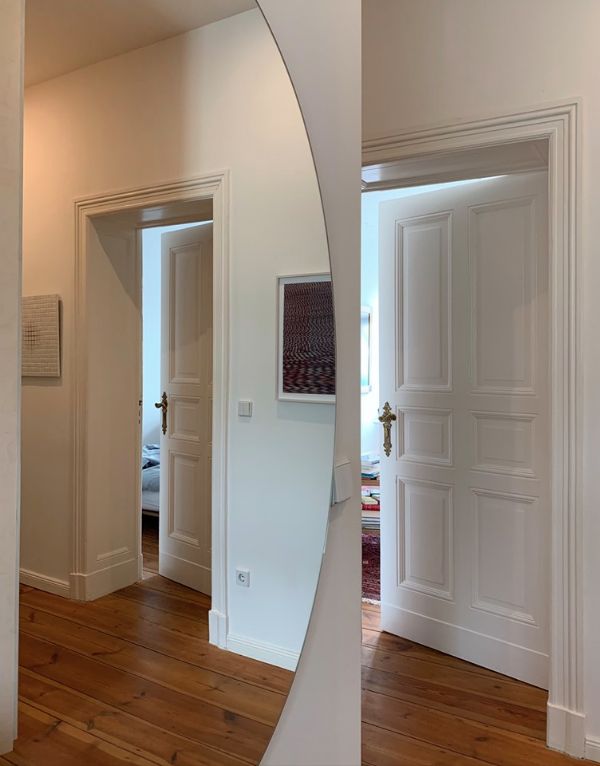
NOWs: Hausstellen
HausstellenGroup Exhibition at Pompéry Privat
Pompéry Privat
Bredowstr. 35a
10551 Berlin-Moabit
Opening
27 September, 6 -10 pm
Maria Anwander, Gabriel Blétel, Dachroth + Jeschonnek, Olafur Eliasson, Tom Früchtl, Miriam Jonas, Lajos Kassák, Caroline Kryzecki, Florian Lechner, Inge Mahn, Manfred Mohr, Vera Molnár, Pätzug / Hertweck, Sophia Pompéry, Sinta Werner, Lena von Goedeke
Physikalisch ist eine Fata Morgana als Luftspiegelung leicht erklärbar. Metaphorisch steht sie für Sinnestäuschung und bildet das Thema des diesjährigen Ortstermins, an dem rund 80 Ateliers und Ausstellungsräume Berlin-Moabits teilnehmen. „Die Fata Morgana bringt optische Zerrbilder der Realität oder gar Halluzinationen hervor. Als Vision unerreichbarer Orte scheint sie mit der Sehnsucht nach einer anderen Wirklichkeit verbunden zu sein, aber auch mit – womöglich nicht einlösbaren – Versprechungen. Das optische Flimmern könnte aber durchaus auch Visionen hervorbringen, die uns kein Trugbild vorgaukeln, sondern utopisches Potential in sich bergen“, so schreiben die Organisatoren des Moabiter Kunstfestivals.
Im Rahmen dieses Programmes wird die Künstlerin Sophia Pompéry ihr „Haus stellen“, um feinsinnige, doppelbödige Arbeiten zu zeigen, die ihren Ausgangspunkt in naturwissenschaftlichen Phänomenen finden. Die 16 teilnehmenden Künstler*Innen beschäftigen sich in ihren Malereien, Installationen, Papierarbeiten, Objekten und Fotographien eingehend mit Wahrnehmungsfragen. Subtil und scharfsinnig schlagen sie in ihren minimalistischen und schwerelos wirkenden Arbeiten eine Brücke zwischen Kunst, Philosophie und Physik.
Zusammen mit Alltagsgegenständen einer Wohnung verdichtet sich die Ausstellung zu einer Gesamtinszenierung: zum einen geht es darum die einzelnen Werke für sich gelten zu lassen, zum anderen sie in spannungsvolle Dialoge untereinander zu bringen, sie nach einer bestimmten Ordnung zu sortieren oder sie mit Alltagsgegenständen zu kombinieren.
Das Zusammenspiel von Luft und Licht, das zu einer Fata Morgana führt, verleitet uns zu einem Perspektivenwechsel, schafft Bewegungen und Spiegelungen, wie auch Brechungen in Raum und Zeit. Ist unsere Sehnsucht nach dem Authentischen eine Falle? Und wie wirkt sich das auf unsere Wahrnehmung und unseren Erkenntnisgewinn aus? Die ausgestellten Werke sind eigenständige Räume die nebeneinander bestehen und sich im Laufe der Ausstellung zueinander in Beziehung setzen. Hausstellen täuscht eine Wohnsituation vor, bleibt aber der flüchtige Moment einer trügerischen Privatheit.
Besuchszeiten
Freitag, den 27.9, Vernissage 18-22h
Samstag, den 28.9, 15-18h
Sonntag, den 29.9, 15-20h
Führungen werden zur halben Stunde (15:30, 16:30, usw.) angeboten.
Weitere Orte im Rahmen des Kunstfestivals Moabit:
https://ortstermin.kunstverein-tiergarten.de
HausstellenGroup Exhibition at Pompéry Privat
Pompéry Privat
Bredowstr. 35a
10551 Berlin-Moabit
Opening
27 September, 6 -10 pm
Maria Anwander, Gabriel Blétel, Dachroth + Jeschonnek, Olafur Eliasson, Tom Früchtl, Miriam Jonas, Lajos Kassák, Caroline Kryzecki, Florian Lechner, Inge Mahn, Manfred Mohr, Vera Molnár, Pätzug / Hertweck, Sophia Pompéry, Sinta Werner, Lena von Goedeke
Physikalisch ist eine Fata Morgana als Luftspiegelung leicht erklärbar. Metaphorisch steht sie für Sinnestäuschung und bildet das Thema des diesjährigen Ortstermins, an dem rund 80 Ateliers und Ausstellungsräume Berlin-Moabits teilnehmen. „Die Fata Morgana bringt optische Zerrbilder der Realität oder gar Halluzinationen hervor. Als Vision unerreichbarer Orte scheint sie mit der Sehnsucht nach einer anderen Wirklichkeit verbunden zu sein, aber auch mit – womöglich nicht einlösbaren – Versprechungen. Das optische Flimmern könnte aber durchaus auch Visionen hervorbringen, die uns kein Trugbild vorgaukeln, sondern utopisches Potential in sich bergen“, so schreiben die Organisatoren des Moabiter Kunstfestivals.
Im Rahmen dieses Programmes wird die Künstlerin Sophia Pompéry ihr „Haus stellen“, um feinsinnige, doppelbödige Arbeiten zu zeigen, die ihren Ausgangspunkt in naturwissenschaftlichen Phänomenen finden. Die 16 teilnehmenden Künstler*Innen beschäftigen sich in ihren Malereien, Installationen, Papierarbeiten, Objekten und Fotographien eingehend mit Wahrnehmungsfragen. Subtil und scharfsinnig schlagen sie in ihren minimalistischen und schwerelos wirkenden Arbeiten eine Brücke zwischen Kunst, Philosophie und Physik.
Zusammen mit Alltagsgegenständen einer Wohnung verdichtet sich die Ausstellung zu einer Gesamtinszenierung: zum einen geht es darum die einzelnen Werke für sich gelten zu lassen, zum anderen sie in spannungsvolle Dialoge untereinander zu bringen, sie nach einer bestimmten Ordnung zu sortieren oder sie mit Alltagsgegenständen zu kombinieren.
Das Zusammenspiel von Luft und Licht, das zu einer Fata Morgana führt, verleitet uns zu einem Perspektivenwechsel, schafft Bewegungen und Spiegelungen, wie auch Brechungen in Raum und Zeit. Ist unsere Sehnsucht nach dem Authentischen eine Falle? Und wie wirkt sich das auf unsere Wahrnehmung und unseren Erkenntnisgewinn aus? Die ausgestellten Werke sind eigenständige Räume die nebeneinander bestehen und sich im Laufe der Ausstellung zueinander in Beziehung setzen. Hausstellen täuscht eine Wohnsituation vor, bleibt aber der flüchtige Moment einer trügerischen Privatheit.
Besuchszeiten
Freitag, den 27.9, Vernissage 18-22h
Samstag, den 28.9, 15-18h
Sonntag, den 29.9, 15-20h
Führungen werden zur halben Stunde (15:30, 16:30, usw.) angeboten.
Weitere Orte im Rahmen des Kunstfestivals Moabit:
https://ortstermin.kunstverein-tiergarten.de
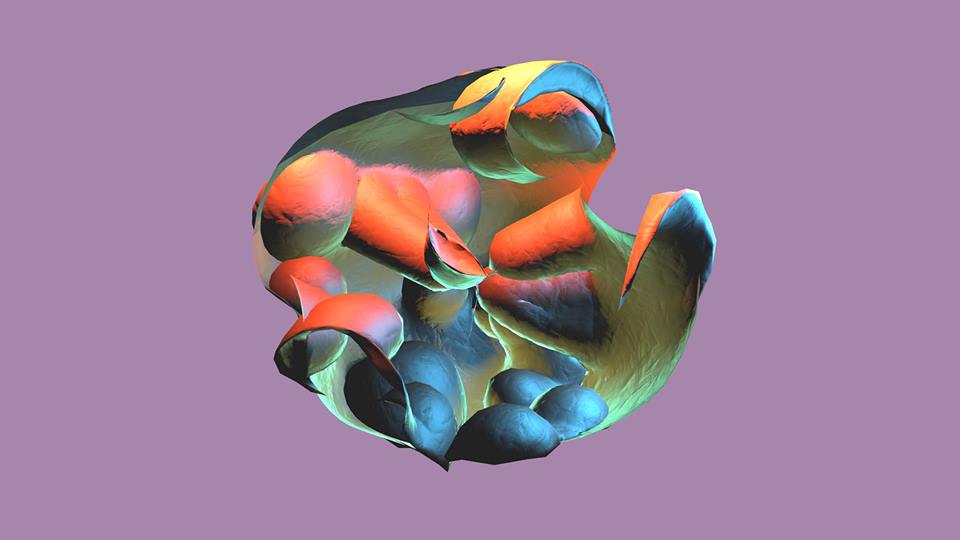
NOWs: The New Infinity – Applied Autonomy
The New Infinity: Applied Autonomyaudiovisual performance by Robert Lippok & Lucas Gutierrez
22 Sep 2019
8 pm
Mobile Dome on Mariannenplatz
10997 Berlin
The artwork Lucas Gutierrez designed for Robert Lippok 2018’s critically acclaimed full-length album Applied Autonomy (Raster Media) was based on a virtual object in motion. A few months later the two developed the video installation My Eyes, My Body based on this object and created an Applied Autonomy audiovisual concert. Lippok’s raw melodic approach and rhythmical abstraction build a unique force in connection with Gutierrez abstract quotes from 3D modeling for industrial design and the language of colorful, chaotic metaphysics. For the very first time Lucas Gutierrez and Robert Lippok will perform the full-dome audiovisual version of Applied Autonomy at The New Infinity.
Free admission. More information & ticket raffle coming soon.
The New Infinity: Applied Autonomyaudiovisuelle Performance von Robert Lippok & Lucas Gutierrez
22. Sep 2019
20 h
Mobile Dome auf dem Mariannenplatz
10997 Berlin
Für Robert Lippoks vielbeachtetes Soloalbum Applied Autonomy (Raster) von 2018 schuf Lucas Gutierrez ein Bild auf Basis eines virtuellen Objektes in Bewegung. Einige Monate danach erarbeiteten die beiden ausgehend von diesem Objekt ihre Videoinstallation My Eyes, My Body und eine Ton-Bild-Konzertfassung von Applied Autonomy. Lippoks ungekünstelt melodischer Ansatz und seine rhythmische Abstraktion entfalten ihre einzigartige Kraft in Verbindung mit Gutierrez‘ abstrakten Zitaten aus der 3D-Modellierung im Industriedesign und aus der Bildsprache der bunten Metaphysik des Chaos. Die audiovisuelle Fassung von Applied Autonomy für Fulldome werden Lucas Gutierrez und Robert Lippok zum ersten Mal bei The New Infinity aufführen.
Eintritt frei! Weitere Infos & Ticketverlosung in Kürze.
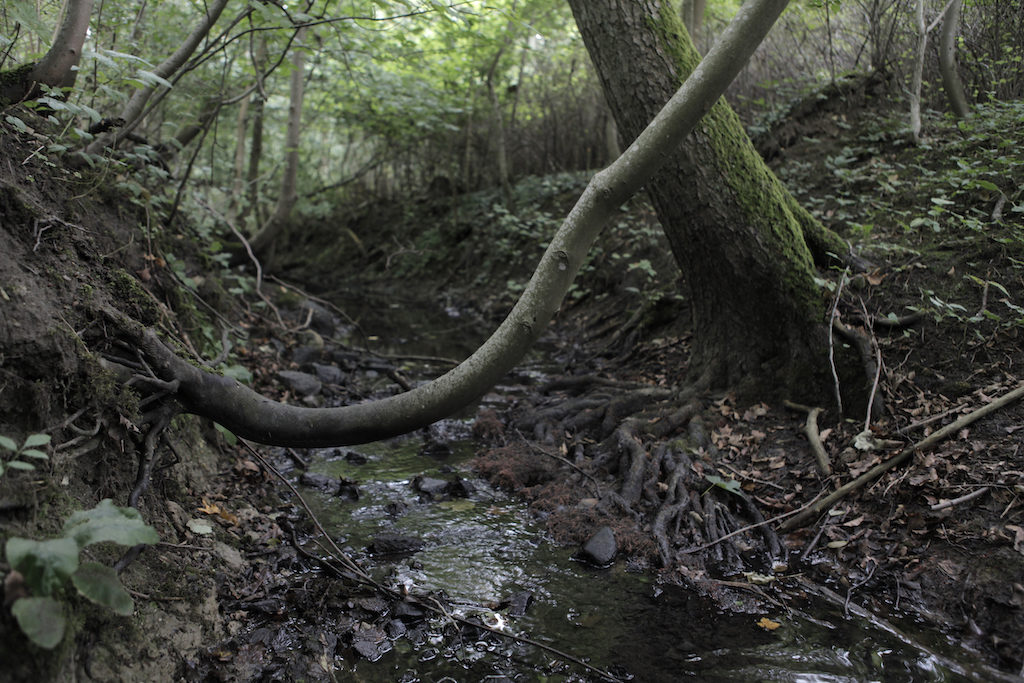
NOWs: The Trail or Time Between Trees
The Trail or Time Between Treessolo exhibition by Rune Bosse
OVERGADEN. Institut for Samtidskunst
Overgaden neden Vandet 17
DK-1414 København K
Opening
20 September 2019, 5 – 8 pm
What happens to an art institution when it has been abandoned by people and nature takes over the reins? In the interface between art and nature, Rune Bosse challenges the boundaries of what an art exhibition can be and how far an art institution is prepared to go in this, his first major solo exhibition.
For more info and a text by Rune Bosse click on the image above
Since he graduated from the Royal Danish Academy of Fine Arts in 2016, Rune Bosse has been working specifically with nature as both a liberating and poetic force, but also as a destructive and threatening space outside human control.
For the first time in Overgaden’s thirty-three years of existence, the art centre faces closure for a period of about six months in connection with an extensive and much-needed refurbishment. Rune Bosse has seized this unique situation and created an exhibition which, being the last one before the refurbishment, leaves Overgaden’s ground floor in ruins. The gallery spaces emerge with smashed windows, knocked-down walls, and overgrown floors and, due to the damaged electricity supply, the spaces will be enveloped in growing darkness during the exhibition period, as the period of daylight will gradually decrease. An apocalyptic wasteland where nature is allowed to take over Overgaden, so that the boundary between inside and outside, past and (possibly) future, is blurred.
For the exhibition, Rune Bosse leaves plant species to sprout and grow indoors, so that they penetrate the walls and erode significant parts of Overgaden’s interior. The artist has entered into a collaborative arrangement with the landowner August Hage at the manor Oremandsgaard Gods, who has more or less given him a free rein to use the forest belonging to the manor as both a laboratory and a materials store for the production and examination of organic links. All plants and greenery later to be transferred to Overgaden will grow organically and undisturbed throughout the exhibition period – beyond the control of the art centre.
The exhibition unfolds as a course of events where the awakening process of nature gradually intensifies. The audience steps into a laboratory which presents the artist’s examinations of organic material and plants over a period of time. Jam jars containing plants and work tables with studies of current and potential projects and processes appear side by side with tree roots and parts of plants, fungi, etc. From here, we move, via soil-covered passages, into the wood where a path leads us to the heart of the wood – where circular and ritual elements also form part of the encounter between man and nature.
With this uncompromising intervention at Overgaden, Rune Bosse offers visitors a radically different and unique exhibition experience and contact with nature, which is stimulating in view of a future where humans, potentially, no longer control nature or have been displaced by other species.
Rune Bosse (b.1987) graduated from the Royal Danish Academy of Fine Arts in 2016, combining this with studies at Olafur Eliasson’s experimental art school, Institut für Raumexperimente, Berlin. Bosse’s shows include the group show Festival For Future Nows at Hamburger Bahnhof, Berlin, in 2014, EXTRACT at the exhibition venue Kunstforeningen GL Strand, Copenhagen, in 2017, the ARoS Triennial The Garden also in 2017, and the exhibition Jordforbindelser (Down to Earth) at Fuglsang Kunstmuseum in 2018.
Installation view. Photo: Anders Sune Berg
Installation view. Photo: Anders Sune Berg
Installation view. Photo: Anders Sune Berg
Installation view. Photo: Anders Sune Berg
Installation view. Photo: Anders Sune Berg
Installation view. Photo: Anders Sune Berg
The Trail or Time Between Treessolo exhibition by Rune Bosse
OVERGADEN. Institut for Samtidskunst
Overgaden neden Vandet 17
DK-1414 København K
Eröffnung
20. September 2019, 17 – 20 h
What happens to an art institution when it has been abandoned by people and nature takes over the reins? In the interface between art and nature, Rune Bosse challenges the boundaries of what an art exhibition can be and how far an art institution is prepared to go in this, his first major solo exhibition.
For more info and a text by Rune Bosse click on the image above
Since he graduated from the Royal Danish Academy of Fine Arts in 2016, Rune Bosse has been working specifically with nature as both a liberating and poetic force, but also as a destructive and threatening space outside human control.
For the first time in Overgaden’s thirty-three years of existence, the art centre faces closure for a period of about six months in connection with an extensive and much-needed refurbishment. Rune Bosse has seized this unique situation and created an exhibition which, being the last one before the refurbishment, leaves Overgaden’s ground floor in ruins. The gallery spaces emerge with smashed windows, knocked-down walls, and overgrown floors and, due to the damaged electricity supply, the spaces will be enveloped in growing darkness during the exhibition period, as the period of daylight will gradually decrease. An apocalyptic wasteland where nature is allowed to take over Overgaden, so that the boundary between inside and outside, past and (possibly) future, is blurred.
For the exhibition, Rune Bosse leaves plant species to sprout and grow indoors, so that they penetrate the walls and erode significant parts of Overgaden’s interior. The artist has entered into a collaborative arrangement with the landowner August Hage at the manor Oremandsgaard Gods, who has more or less given him a free rein to use the forest belonging to the manor as both a laboratory and a materials store for the production and examination of organic links. All plants and greenery later to be transferred to Overgaden will grow organically and undisturbed throughout the exhibition period – beyond the control of the art centre.
The exhibition unfolds as a course of events where the awakening process of nature gradually intensifies. The audience steps into a laboratory which presents the artist’s examinations of organic material and plants over a period of time. Jam jars containing plants and work tables with studies of current and potential projects and processes appear side by side with tree roots and parts of plants, fungi, etc. From here, we move, via soil-covered passages, into the wood where a path leads us to the heart of the wood – where circular and ritual elements also form part of the encounter between man and nature.
With this uncompromising intervention at Overgaden, Rune Bosse offers visitors a radically different and unique exhibition experience and contact with nature, which is stimulating in view of a future where humans, potentially, no longer control nature or have been displaced by other species.
Rune Bosse (b.1987) graduated from the Royal Danish Academy of Fine Arts in 2016, combining this with studies at Olafur Eliasson’s experimental art school, Institut für Raumexperimente, Berlin. Bosse’s shows include the group show Festival For Future Nows at Hamburger Bahnhof, Berlin, in 2014, EXTRACT at the exhibition venue Kunstforeningen GL Strand, Copenhagen, in 2017, the ARoS Triennial The Garden also in 2017, and the exhibition Jordforbindelser (Down to Earth) at Fuglsang Kunstmuseum in 2018.
Installation view. Photo: Anders Sune Berg
Installation view. Photo: Anders Sune Berg
Installation view. Photo: Anders Sune Berg
Installation view. Photo: Anders Sune Berg
Installation view. Photo: Anders Sune Berg
Installation view. Photo: Anders Sune Berg
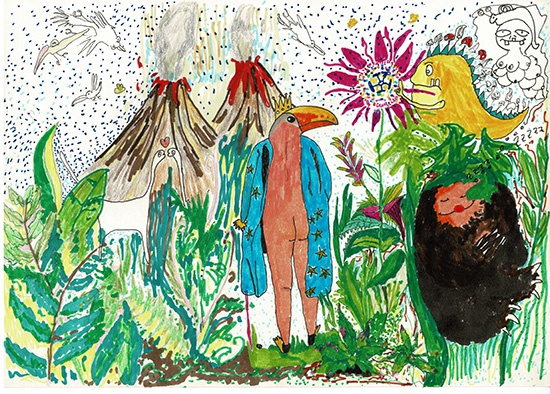
NOWs: Ziggy goes wild
Anne Duk Hee Jordan: bare bottom tucan, 2019. Crayons on paper
Ziggy goes wildsolo exhibition by Anne Duk Hee Jordan
Opening
20 September, 7 pm
Kunstverein Arnsberg
Königstraße 24 / Neumarkt
59821 Arnsberg
Nach Ziggy on the Land of Drunken Trees (Galerie Wedding, Berlin 2018) und Ziggy and the Starfish. How one becomes One with a Fish (Riga International Biennial of Contemporary Art 2018) kommt die Ausstellungstrilogie der Künstlerin Anne Duk Hee Jordan nun mit Ziggy goes wild im Kunstverein Arnsberg zu einem krönenden Abschluss.
Ziggy ist einer fiktiven Figur aus dem Werk David Bowies (Ziggy Stardust, 1972) entlehnt und verkörpert dort einen bisexuellen und promiskuitiven (Mars-?) Menschen, der mit apokalyptischen Gedanken über das Ende der Welt sinniert. Als Gegenstück zum Seestern (Starfish) steht der/die unsichtbar bleibende Ziggy bei Anne Duk Hee Jordan für Schönheit, Fremdartigkeit, Queerness und Exotik der Meeresbewohner, die angesichts des globalen Klimawandels diversen Mutationen und Veränderungen ihrer Sexualität unterliegen. In einem Rechercheprojekt mit der Kuratorin Pauline Doutreluingne realisierte die versierte Taucherin eine wandumspannende Multi-Media-Collage Changing Sex in Ecology (2016-2018). Jordan entwirft in ihrer dreiteiligen Filmgeschichte das Szenario eines post-anthropozentrischen Zeitalters, in dem der Mensch nicht mehr im Zentrum des Geschehens steht, statt dessen die Perspektive der (nicht nur) sie faszinierenden „Anderen“ eingenommen wird. Sie wählt keine katastrophalen Bilder, sondern eine durchaus wundervolle, fantastisch und verspielt anmutende Ästhetik, die Betrachterinnen und Betrachter in ihren Bann zu ziehen vermag.
Im Kunstverein Arnsberg zeigt Anne Duk Hee Jordan Zeichnungen, mehrere Filme, darunter Staying with the trouble und skulpturale, kinetische Objekte wie Homo Stupidus Goethe Robot, eine fliegende Seegurke und einen monumentalen Seestern, die alle ein Eigenleben zu führen scheinen und den Ausstellungsraum für sich beanspruchen.
Erst kürzlich konzipierte sie ein skulpturales Bühnenbild für das Donna Haraway entlehnte Stück des Künstlers Carlos Manuel in Berlin, betitelt Unruhig bleiben/Staying with the trouble (2019), eine spekulative Fabel über die Verbindung zwischen Mensch und Monarchfalter. Den Film zeigt sie nun erstmals im Kunstverein. Die Feministin und Wissenschaftstheoretikerin Haraway beschwört in ihrem gleichnamigen Buch für das Leben nach dem Anthropozän neue Formen der Verwandtschaft. Weder Technikeuphorie noch apokalyptische Endzeitstimmung seien die Lösung, stattdessen haben wir nur eine Chance, wenn wir unruhig bleiben, alte Hierarchien und Wertvorstellungen hinterfragen und als sogenannte ‘Symbionten‘ in der Zukunft weiterleben – Gedanken, die für das künstlerische Œuvre Jordans eine wichtige Rolle spielen. Dieses „Mit-Werden“ mit anderen Spezies beschreibt Haraway als ‘Sympoiesis‘ und richtet dabei den Blick auf die Bedrängten unseres Planeten, etwa die indigene Bevölkerung oder aussterbende Tierarten.
Kernstück der Ausstellung von Anne Duk Hee Jordan ist die raumgreifende Arbeit Into the Wild, eine soziale Food Sculpture, eine überbordende Tafel, die aus essbaren Kräutern, Wurzeln, verschiedenen Gemüsesorten und anderen, teils vergessenen Pflanzen besteht – umrahmt von einem klappernden Muschelchor (Clapping Clams, 2018). In einer konzeptuellen Performance werden die Besucherinnen und Besuchern diese miteinander verspeisen. Während der Laufzeit werden die Überreste zunehmend zerfallen, verrotten und schlussendlich kompostiert wieder als fruchtbarer Humus dem organischen Zyklus zugeführt. ‘Human‘ stamme nicht von ‘homo‘, sondern von ‘Humus‘, so Haraway in ihrer ökologischen Ethik, die mit der Strategie des Kompostierens eine Verwertung bisherigen, gebrauchten Materials anspricht, das zersetzt ein neues ‘Produkt‘ ergibt. Sind wir also letztendlich nichts weiter als Kompost, wie Haraway vermutet? „We are compost, not posthuman; we inhabit the humusities, not the humanities.“
Diese und vergleichbare Fragen stellt Anne Duk Hee Jordan in ihrem vielfältigen Werk und regt damit zu einer Reflektion unseres Verhältnisses zur Umwelt und ihren unterschiedlichen Erdbewohnern an, die eine Trennung zwischen Natur und Kultur längst obsolet werden lassen.
Anne Duk Hee Jordan: bare bottom tucan, 2019. Crayons on paper
Ziggy goes wildEinzelausstellung von Anne Duk Hee Jordan
Eröffnung
20. September, 19 h
Kunstverein Arnsberg
Königstraße 24 / Neumarkt
59821 Arnsberg
Nach Ziggy on the Land of Drunken Trees (Galerie Wedding, Berlin 2018) und Ziggy and the Starfish. How one becomes One with a Fish (Riga International Biennial of Contemporary Art 2018) kommt die Ausstellungstrilogie der Künstlerin Anne Duk Hee Jordan nun mit Ziggy goes wild im Kunstverein Arnsberg zu einem krönenden Abschluss.
Ziggy ist einer fiktiven Figur aus dem Werk David Bowies (Ziggy Stardust, 1972) entlehnt und verkörpert dort einen bisexuellen und promiskuitiven (Mars-?) Menschen, der mit apokalyptischen Gedanken über das Ende der Welt sinniert. Als Gegenstück zum Seestern (Starfish) steht der/die unsichtbar bleibende Ziggy bei Anne Duk Hee Jordan für Schönheit, Fremdartigkeit, Queerness und Exotik der Meeresbewohner, die angesichts des globalen Klimawandels diversen Mutationen und Veränderungen ihrer Sexualität unterliegen. In einem Rechercheprojekt mit der Kuratorin Pauline Doutreluingne realisierte die versierte Taucherin eine wandumspannende Multi-Media-Collage Changing Sex in Ecology (2016-2018). Jordan entwirft in ihrer dreiteiligen Filmgeschichte das Szenario eines post-anthropozentrischen Zeitalters, in dem der Mensch nicht mehr im Zentrum des Geschehens steht, statt dessen die Perspektive der (nicht nur) sie faszinierenden „Anderen“ eingenommen wird. Sie wählt keine katastrophalen Bilder, sondern eine durchaus wundervolle, fantastisch und verspielt anmutende Ästhetik, die Betrachterinnen und Betrachter in ihren Bann zu ziehen vermag.
Im Kunstverein Arnsberg zeigt Anne Duk Hee Jordan Zeichnungen, mehrere Filme, darunter Staying with the trouble und skulpturale, kinetische Objekte wie Homo Stupidus Goethe Robot, eine fliegende Seegurke und einen monumentalen Seestern, die alle ein Eigenleben zu führen scheinen und den Ausstellungsraum für sich beanspruchen.
Erst kürzlich konzipierte sie ein skulpturales Bühnenbild für das Donna Haraway entlehnte Stück des Künstlers Carlos Manuel in Berlin, betitelt Unruhig bleiben/Staying with the trouble (2019), eine spekulative Fabel über die Verbindung zwischen Mensch und Monarchfalter. Den Film zeigt sie nun erstmals im Kunstverein. Die Feministin und Wissenschaftstheoretikerin Haraway beschwört in ihrem gleichnamigen Buch für das Leben nach dem Anthropozän neue Formen der Verwandtschaft. Weder Technikeuphorie noch apokalyptische Endzeitstimmung seien die Lösung, stattdessen haben wir nur eine Chance, wenn wir unruhig bleiben, alte Hierarchien und Wertvorstellungen hinterfragen und als sogenannte ‘Symbionten‘ in der Zukunft weiterleben – Gedanken, die für das künstlerische Œuvre Jordans eine wichtige Rolle spielen. Dieses „Mit-Werden“ mit anderen Spezies beschreibt Haraway als ‘Sympoiesis‘ und richtet dabei den Blick auf die Bedrängten unseres Planeten, etwa die indigene Bevölkerung oder aussterbende Tierarten.
Kernstück der Ausstellung von Anne Duk Hee Jordan ist die raumgreifende Arbeit Into the Wild, eine soziale Food Sculpture, eine überbordende Tafel, die aus essbaren Kräutern, Wurzeln, verschiedenen Gemüsesorten und anderen, teils vergessenen Pflanzen besteht – umrahmt von einem klappernden Muschelchor (Clapping Clams, 2018). In einer konzeptuellen Performance werden die Besucherinnen und Besuchern diese miteinander verspeisen. Während der Laufzeit werden die Überreste zunehmend zerfallen, verrotten und schlussendlich kompostiert wieder als fruchtbarer Humus dem organischen Zyklus zugeführt. ‘Human‘ stamme nicht von ‘homo‘, sondern von ‘Humus‘, so Haraway in ihrer ökologischen Ethik, die mit der Strategie des Kompostierens eine Verwertung bisherigen, gebrauchten Materials anspricht, das zersetzt ein neues ‘Produkt‘ ergibt. Sind wir also letztendlich nichts weiter als Kompost, wie Haraway vermutet? „We are compost, not posthuman; we inhabit the humusities, not the humanities.“
Diese und vergleichbare Fragen stellt Anne Duk Hee Jordan in ihrem vielfältigen Werk und regt damit zu einer Reflektion unseres Verhältnisses zur Umwelt und ihren unterschiedlichen Erdbewohnern an, die eine Trennung zwischen Natur und Kultur längst obsolet werden lassen.

NOWs: I’ll be your mirror
documantary film by Johanna Faust
Die Künstlerin Johanna Faust will ihre Kinder verlassen, um sich endlich wieder ihrer Kunst zu widmen. Da kommt ihr eine vage Erinnerung hoch: Hat ihre Grossmutter nicht dasselbe getan, mit schlimmen Folgen? Das intime Road Movie erzählt von verlorenen Müttern und verlassenen Kindern, von den Verlockungen und dem Preis der Selbstverwirklichung, von den Abgründen des Mutterseins und von der tiefen Sehnsucht nach einem anderen Leben.
Johanna fühlt sich in ihrem Alltagsleben mit Partner und drei Kindern immer einsamer und unerfüllter. Sie sehnt sich danach, wieder voll und ganz in ihre künstlerische Arbeit abzutauchen. Da kommt die Einladung zum Masterstudium an einer Kunstschule in Oxford gerade recht. Aber soll sie ihre Kinder wirklich verlassen? Darf das eine Mutter? Ihr Partner würde sie unterstützen und zu den Kindern schauen, trotzdem kommen Johanna Zweifel. Dunkel erinnert sie sich, dass ihre Grossmutter in jungen Jahren ihre Familie ebenfalls verlassen hatte, um sich der Kunst zu widmen, mit schlimmen Folgen für Johannas Mutter. Aber wie war das damals genau? Darüber wurde in der Familie nie wirklich geredet. Johanna spürt, dass sie zuerst ihrer eigenen Familiengeschichte auf den Grund gehen muss, bevor sie sich für oder gegen Oxford entscheiden kann. Mit Mann und Kindern macht sie sich zu einer Reise tief in die Vergangenheit auf, die sie aus der Schweiz über die USA bis in die Wüste Mexikos führt. Schicht um Schicht legt sie die Geschichten von vier Generationen von Frauen frei, die alle mit ihrer Mutterrolle haderten, gegen gesellschaftliche Erwartungen verstiessen und dabei in einen schmerzhaften Konflikt zwischen den eigenen Wünschen und den Bedürfnissen ihrer Kinder gerieten.
I’ll be your mirror ist ein Road Movie, das auf sehr persönliche Weise ein Tabu hinterfragt. Mit schonungsloser Ehrlichkeit und berückenden Bildern erzählt der Film von generationsübergreifenden Erschütterungen, die unser Leben mitbestimmen, ohne dass wir es wissen.
Links:
www.soapfactory.ch/filme-mirror2.html
zff.com/de/archiv/24691/
Genre: DOK: Familie & Beziehung
Land, Jahr: Schweiz, 2019
Länge: 91 Min
Sprachen: Schweizerdeutsch, Englisch, Spanisch
Untertitel: Englisch
Regie: Johanna Faust
Drehbuch: Johanna Faust
Kamera: Ute Freund, Johanna Faust, Jeremias Holliger
Schnitt: Rune Schweitzer
Ton: Ulla Kösterke, Jeremias Holliger
Musik: Fred Frith
Produzent: Frank Matter
Produktionsfirma: soap factory GmbH
CH-Verleih: Cineworx Filmverleih GmbH
Dokumentarfilm von Johanna Faust
Die Künstlerin Johanna Faust will ihre Kinder verlassen, um sich endlich wieder ihrer Kunst zu widmen. Da kommt ihr eine vage Erinnerung hoch: Hat ihre Grossmutter nicht dasselbe getan, mit schlimmen Folgen? Das intime Road Movie erzählt von verlorenen Müttern und verlassenen Kindern, von den Verlockungen und dem Preis der Selbstverwirklichung, von den Abgründen des Mutterseins und von der tiefen Sehnsucht nach einem anderen Leben.
Johanna fühlt sich in ihrem Alltagsleben mit Partner und drei Kindern immer einsamer und unerfüllter. Sie sehnt sich danach, wieder voll und ganz in ihre künstlerische Arbeit abzutauchen. Da kommt die Einladung zum Masterstudium an einer Kunstschule in Oxford gerade recht. Aber soll sie ihre Kinder wirklich verlassen? Darf das eine Mutter? Ihr Partner würde sie unterstützen und zu den Kindern schauen, trotzdem kommen Johanna Zweifel. Dunkel erinnert sie sich, dass ihre Grossmutter in jungen Jahren ihre Familie ebenfalls verlassen hatte, um sich der Kunst zu widmen, mit schlimmen Folgen für Johannas Mutter. Aber wie war das damals genau? Darüber wurde in der Familie nie wirklich geredet. Johanna spürt, dass sie zuerst ihrer eigenen Familiengeschichte auf den Grund gehen muss, bevor sie sich für oder gegen Oxford entscheiden kann. Mit Mann und Kindern macht sie sich zu einer Reise tief in die Vergangenheit auf, die sie aus der Schweiz über die USA bis in die Wüste Mexikos führt. Schicht um Schicht legt sie die Geschichten von vier Generationen von Frauen frei, die alle mit ihrer Mutterrolle haderten, gegen gesellschaftliche Erwartungen verstiessen und dabei in einen schmerzhaften Konflikt zwischen den eigenen Wünschen und den Bedürfnissen ihrer Kinder gerieten.
I’ll be your mirror ist ein Road Movie, das auf sehr persönliche Weise ein Tabu hinterfragt. Mit schonungsloser Ehrlichkeit und berückenden Bildern erzählt der Film von generationsübergreifenden Erschütterungen, die unser Leben mitbestimmen, ohne dass wir es wissen.
Links:
www.soapfactory.ch/filme-mirror2.html
zff.com/de/archiv/24691/
Genre: DOK: Familie & Beziehung
Land, Jahr: Schweiz, 2019
Länge: 91 Min
Sprachen: Schweizerdeutsch, Englisch, Spanisch
Untertitel: Englisch
Regie: Johanna Faust
Drehbuch: Johanna Faust
Kamera: Ute Freund, Johanna Faust, Jeremias Holliger
Schnitt: Rune Schweitzer
Ton: Ulla Kösterke, Jeremias Holliger
Musik: Fred Frith
Produzent: Frank Matter
Produktionsfirma: soap factory GmbH
CH-Verleih: Cineworx Filmverleih GmbH
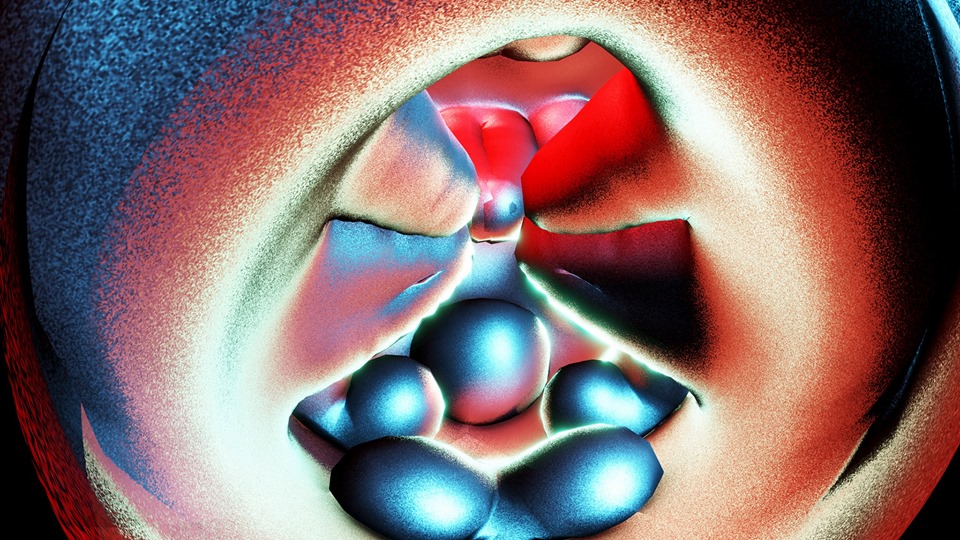
NOWs: The New Infinity – Non-face
The New Infinity: Non-faceArtist Talk with Robert Lippok, Lucas Gutierrez & Natalie Koerner
17 September, 2019
8 pm – 9:30 pm
Mobile Dome on Mariannenplatz
10997 Berlin
The New Infinity: Artist talk with Robert Lippok and Lucas Gutierres, moderated by Natalie Körner
Non-manifold geometries describe ‘fake-objects’ – items that may look realistic, but can in fact not exist in the physical world. They develop their sensual plausibility in the digital world. One famous example is the Penrose-triangle: Its three beams appear to be positioned at right angles to each other, and yet they are connected to form a triangle. In 3D-animation, such objects regularly surface through so-called mesh-mistakes. For their first joint Fulldome-piece, sound artist Robert Lippok and digital artist Lucas Gutierrez have identified these frequently occurring mistakes in their own artistic practice and develop data structures to explore these fantastic objects. Their work produces different dimensionalities and creates new topological relations. This might not determine the inside or the outside of these impossible objects, but it will render the sonic and visual boundaries of a three-dimensional space tangible. To this end, the composition uses simulated reflections in physical and virtual spaces. Various methods of traditional instrument building are used to transcribe the virtual geometries into musical patterns which, in turn, weave sequences of notes and real-time emulations of different sound sources into multi-layered textures.
Free admission
The New Infinity: Non-faceArtist Talk with Robert Lippok, Lucas Gutierrez & Natalie Koerner
17. September 2019
20 – 21:30 h
Mobile Dome auf dem Mariannenplatz
10997 Berlin
The New Infinity: Künstlergespräch mit Robert Lippok and Lucas Gutierres, Moderation Natalie Körner
Nicht-mannigfaltige Geometrien beschreiben ‘Fake-Objekte’ – Gegenstände, die zwar realistisch aussehen, aber in der physischen Welt unmöglich existieren können und die in der digitalen Realität ihre sinnliche Plausibilität entfalten. Ein berühmtes Beispiel hierfür ist etwa das Penrose-Dreieck, dessen drei Balken jeweils im rechten Winkel zueinander zu stehen scheinen und dennoch zu einem Dreieck verbunden sind. In der 3D-Animation treten solche Objekte regelmäßig durch sogenannte Mesh-Fehler in Erscheinung. Für ihre erste gemeinsame Fulldome-Arbeit identifizieren der Klangkünstler Robert Lippok und der Digitalkünstler Lucas Gutierrez diese häufig auftretenden Fehler in ihrer eigenen künstlerischen Praxis und entwickeln Datenstrukturen zur Erforschung dieser phantastischen Objekte. Ihre Arbeit erzeugt andersartige Dimensionalitäten und kreiert neue topologische Verbindungen. Ohne das Innere und Äußere dieser unmöglichen Objekte zu bestimmen, macht sie die akustischen und visuellen Grenzen des dreidimensionalen Raums erfahrbar. Dafür verwendet die Komposition simulierte Echos in physischen und virtuellen Räumen. Verschiedene Methoden des traditionellen Instrumentenbaus dienen zur Transkription der virtuellen Geometrien als musikalische Muster, die Notensequenzen und die Echtzeit-Emulationen verschiedener Klangquellen zu vielschichtigen Texturen verweben.
Freier Eintritt
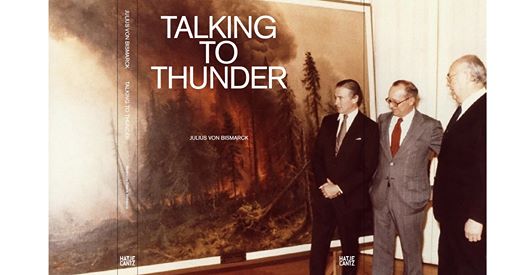
NOWs: Talking to Thunder by Julius von Bismarck
Talking to Thunderbook release
In a historical moment gripped by environmental catastrophes of our own making, Julius von Bismarck confronts the forces of nature at their unruly extremes. Deploying sculpture, photography, video and technological devices designed to harness the elements, Bismarck stills water droplets and fragments of exploding stone, shaping them into slow-motion disasters calibrated to the rate of human perception. Through performative encounters with lightning, wildfires, hurricanes and ocean waves, the artist stages a timely reckoning with the fate of age-old ideas of nature. Following a forward by museum director Susanne Pfleger, Talking to Thunder explores the implications of Bismarck’s latest work through essays by philosopher Dehlia Hannah and curator Nadim Samman, interviews with Wiwa shaman Taita, Jurgen Trittin of the German Green Party, and fire historian Stephen Pyne, and excerpts from Gaston Bachelard and Max Frisch.
Julius von Bismarck (*1983) grew up in Riad, Saudi Arabia, and Freiburg, Germany. He studied visual communications at the Berlin University of the Arts and at Hunter College in New York, and finished his graduate studies under Olafur Eliasson in 2013.
Julius von Bismarck
Talking to ThunderEd. Susanne Pfleger, Dehlia Hannah, graphic design by Karsten Heller, text(s) by Dehlia Hannah, Nadim Samman, contributions by Julius von Bismarck, Jürgen Trittin
English
2019. 176 pp., 80 ills.
softcover with a swiss binding
22.50 x 27.50 cm
Talking to Thunderbook release
In einem historischen Augenblick, der von vom Menschen ausgelösten Umweltkatastrophen geprägt ist, tritt Julius von Bismarck den Naturgewalten in ihren extremsten Formen entgegen. Er setzt Skulptur, Fotografie, Video und technische Hilfsmittel ein, um sich die Elemente zunutze zu machen und schafft Momentaufnahmen von Wassertropfen und Fragmenten explodierenden Gesteins, womit er sie zu Katastrophen in Zeitlupe formt, die der menschlichen Wahrnehmung angepasst sind. Durch performative Begegnungen mit Blitzen, Lauffeuern, Hurrikans und Meereswellen inszeniert der Künstler eine zeitgemäße Abrechnung mit dem Schicksal uralter Naturvorstellungen. Eingeleitet von einem Vorwort der Museumsdirektorin Susanne Pfleger erkundet Talking to Thunder mittels Essays von Philosophin Dehlia Hannah und Kurator Nadim Samman, Interviews mit Wiwa shaman Taita, dem deutschen Grünen-Politiker Jürgen Trittin, dem Feuerhistoriker Stephen Pyne und Auszügen aus dem Werk von Gaston Bachelard und Max Frisch die Auswirkungen von Bismarcks jüngsten Arbeiten.
Julius von Bismarck (*1983) wuchs in Riad (Saudi-Arabien) und Freiburg auf und studierte an der Universität der Künste Berlin und am Hunter College New York Visuelle Kommunikation. 2013 absolvierte er die Meisterklasse von Olafur Eliasson.
Julius von Bismarck
Talking to Thunder
Hrsg. Susanne Pfleger, Dehlia Hannah, Gestaltung von Karsten Heller, Text(e) von Dehlia Hannah, Nadim Samman, Beiträge von Julius von Bismarck, Jürgen Trittin
Englisch
2019. 176 Seiten, 80 Abb.
Schweizer Broschur
22,50 x 27,50 cm
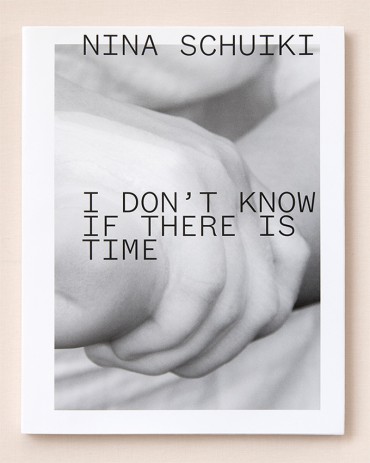
NOWs: I don’t know if there is time by Nina Schuiki
book release (Nina Schuiki) and performance (Rike Scheffler)
Reception
13 September 2019, 7 pm
with a guest reading by Rike Scheffler
FORUM STADTPARK
Stadtpark 1
8010 Graz
Berlin-based artist Nina Schuiki (b. 1983, Graz) focuses upon an engagement with spatial structures, temporal phenomena and historical context. Taking the form of installation, sculpture and mixed media work, her investigations open the parameters of perception, making visible the traces of hidden occurrence and that which is already inscribed but escapes attention.
As her first monograph, I don’t know if there is time presents the multiple layers of Schuiki’s artistic approach by opening dialogues between her work and a series of newly-written text contributions ranging from the theoretical to philosophical and poetic. In addition to conceptually underpinning her manner of working, the publication also includes a comprehensive documentation of her body of work.
The catalogue includes texts by Stefan Vicedom, Julia Katharina Thiemann, Rike Scheffler, Elaine W. Ho, Nico Anklam, Boat Zhang, zweintopf and Marion Meyer.
Design by Studio Daniel Rother, Berlin
I don’t know if there is time
Nina Schuiki
published by Forum Stadtpark, Graz
English, German
132 pages, 27.3 x 21.5 cm
softcover, envelope
ISBN: 9783901109591
Available at Forum Stadtpark, Graz, Motto, Berlin, Art and Culture Outreach, Hong Kong, and online
book release (Nina Schuiki) and performance (Rike Scheffler)
Buchpräsentation
13 September 2019, 19 h
mit Gastlesung von Rike Scheffler
FORUM STADTPARK
Stadtpark 1
8010 Graz
Die Beschäftigung mit räumlichen Strukturen, zeitlichen Phänomenen und historischen Kontexten zeigen sich als zentrale Momente für das Schaffen der in Berlin lebenden Künstlerin Nina Schuiki (* 1983, Graz). Anhand installativer, skulpturaler und intermedial angelegter Werke erprobt sie hierbei Prinzipien der Wahrnehmung und folgt gleichsam der Sichtbarmachung verborgener Begebenheiten und Einschreibungen.
Als erster monografischer Katalog legt das vorliegende Buch I don’t know if there is time die vielschichtigen Ebenen ihres künstlerischen Ansatzes dar, indem es einen offenen Dialog zwischen ihren Arbeiten und einer Reihe neu verfasster kunsttheoretischer, philosophischer und poetischer Textformen initiiert. Neben der inhaltlichen Verortung umfasst die Publikation ebenso eine umfassende Dokumentation ihres bisherigen Werkkörpers.
Der Katalog beinhaltet Textbeiträge von Stefan Vicedom, Julia Katharina Thiemann, Rike Scheffler, Elaine W. Ho, Nico Anklam, Boat Zhang, zweintopf und Marion Meyer.
Design: Studio Daniel Rother, Berlin
I don’t know if there is time
Nina Schuiki
Erschienen im Verlag Forum Stadtpark, Graz
Englisch, Deutsch
132 Seiten, 27.3 x 21.5 cm
Softcover, Umschlag
ISBN: 9783901109591
Erhältlich bei Forum Stadtpark, Graz, Motto, Berlin, Art and Culture Outreach, Hong Kong und online
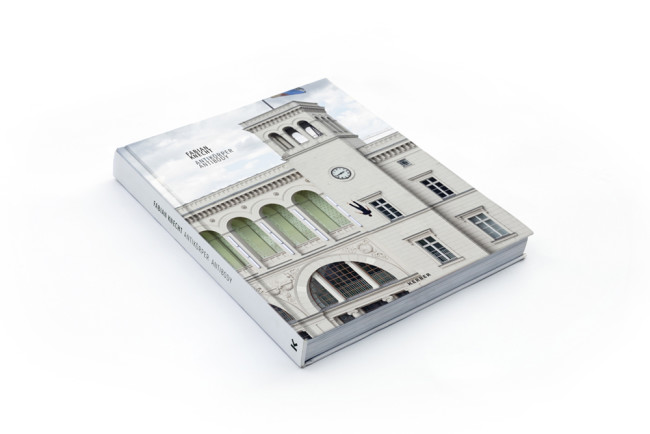
NOWs: Antibody by Fabian Knecht
NOWs
Fabian Knecht: AntibodyBook Release
Saturday, 22 September 2018, 7pm
Studio Fabian Knecht
Leipziger Straße 63
Next to McPaper
10117 Berlin
With his works, which often appear unexpectedly in public space, Fabian Knecht breaks out of the exhibition context and into everyday life. He changes patterns of perception and action, transgresses art concepts and power structures, and questions social relations and norms by countering them with strong and provocative images. The book Antibody, Knecht’s first monograph, includes works of the past ten years. A text by the art critic Raimar Stange provides an introduction to the works; a conversation between the philosopher Dehlia Hannah and the art historian and curator Nadim Samman as well as an poem by Lukas Töpfer open up numerous further perspectives on the artist’s multilayered work.
Editors: Alexander Levy / Isabelle Meiffert
Publisher: Kerber Verlag
Texts: Dehlia Hannah, Nadim Samman, Raimar Stange, Lukas Töpfer
Editorial staff: Lydia Ahrens, Isabelle Meiffert
Graphic Design: Detlev Pusch
ISBN 978-3-7356-0507-8
24,00 x 30,00 cm
204 pages
Hardcover
Languages: German, English
NOWs
Fabian Knecht: AntibodyBook Release
Samstag, 22. September 2018, 19 Uhr
Studio Fabian Knecht
Leipziger Straße 63
Neben McPaper
10117 Berlin
Mit seinen Arbeiten, die oft unvermittelt im öffentlichen Raum erscheinen, bricht Fabian Knecht aus dem Ausstellungskontext aus und in das Alltagsleben ein. Er verändert Wahrnehmungs- und Handlungsmuster, verletzt Kunstbegriffe und Machtstrukturen, stellt soziale Verhältnisse und Normen durch starke, provokante Gegenbilder infrage. Das Buch Antikörper, Knechts erste Monografie, umfasst Arbeiten der letzten zehn Jahre. Ein Text des Kunstkritikers Raimar Stange führt in die Arbeiten ein; ein Gespräch zwischen der Philosophin Dehlia Hannah und dem Kunsthistoriker und Kurator Nadim Samman sowie ein Gedicht von Lukas Töpfer eröffnen weitere Perspektiven auf das vielschichtige Schaffen des Künstlers.
Herausgeber: Alexander Levy / Isabelle Meiffert
Verlag: Kerber Verlag
Texte: Dehlia Hannah, Nadim Samman, Raimar Stange, Lukas Töpfer
Redaktion: Lydia Ahrens, Isabelle Meiffert
Gestaltung: Detlev Pusch
ISBN 978-3-7356-0507-8
24,00 x 30,00 cm
204 Seiten
Hardcover
Sprachen: Deutsch, Englisch
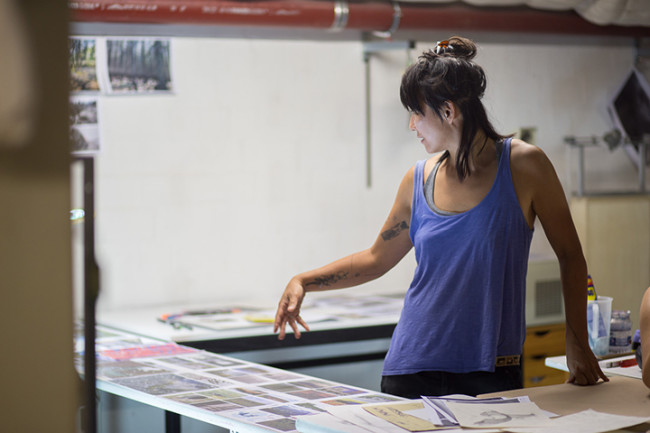
NOWs: Interview with Anne Duk Hee Jordan in Collectors Agenda
Collectors Agenda: In the StudioInterview with Anne Duk Hee Jordan
Jasmine Deporta
In the Studio
Anne Duk Hee Jordan
Berlin, Germany
Interview: Chrischa Oswald
Photos: Jasmine Deporta
Read the full article here
Jasmine Deporta
Jasmine Deporta
Jasmine Deporta
Jasmine Deporta
Collectors Agenda: In the StudioInterview with Anne Duk Hee Jordan
Jasmine Deporta
In the Studio
Anne Duk Hee Jordan
Berlin, Germany
Interview: Chrischa Oswald
Photos: Jasmine Deporta
Read the full article here
Jasmine Deporta
Jasmine Deporta
Jasmine Deporta
Jasmine Deporta
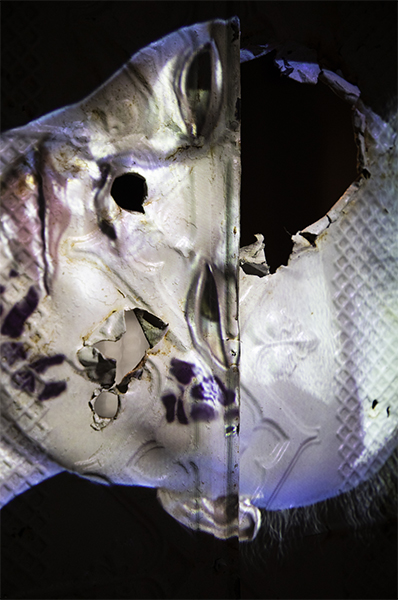
NOWs: Tribute Pallet
Tribute Palletmulti-media installation by Analisa Teachworth
Opening
11 SEP 2019, 7 – 10 pm
FRAGILE
Leipzigerstraße 63
10117 Berlin
FRAGILE is pleased to announce Tribute Pallet, a multi-media installation by Analisa Teachworth.
The artwork invites the audience into a shack-like scaffolding construction. The architectural qualities refer to structures built in rapidly changing circumstances with found materials typically determined by purpose, necessity, scarcity, and economic interdependencies. The work’s characteristics also tribute to earthier dwellings primarily emitted by society, yet occupying such a large part of our modern world. In seduce and repulse, the made artefact explores aesthetic qualities of sculpture that triumph and deconstruct the spectrum from shelter to contemporary urbanism erected in both opposition and sympathy to the utilitarian.
A table of glass jars holding sugar proposes the commodity in reference to what had been historically the highest traded product for roughly 350 years. Symbolically the sugarcane notes to the transatlantic slave trade at the peak of colonialism, while also illustrating a ceremony on how the global economy came to blossom. Even today sugars ritual to pleasure is unrivaled, holding novelties of memory, production, demand, and revealing an unawareness in the active individual participation within unavoidable global markets.
Abstractly the elements in this conversation express a mastery of economic process, a hunger to consume, a fetish for the exotic, a force of power, the exodus and decimation of millions of lives, and an uncountable amount of labor
Projections of hybrid siren creatures surround the inner space while a sound piece of language and hymn plays. The score speaks to the complexity of inert cultural systems while offering perspectives on progress, sorrow, and transformation. The renderings allegorically intertwine a narrative between current aesthetics, being products of digital labor, and space they exist within. Their anthropomorphised bodies celebrate and expose the gesture of collective hardship and sacrifice via choreography.
A perceived collapse of the systems we rely upon entirely is not a faraway apocalyptic future for many who remain anonymous.
Analisa Teachworth (b.1985 Detroit, Michigan) is a New York City—based interdisciplinary artist whose practice includes video, sculpture, sound, and performance. Teachworth’s work has been exhibited at institutions such as The Shed, MoMA PS1, Hamburger Bahnhof Staatliche Museen Berlin, Kunst-Werke Institute for Contemporary Art Berlin, and The New Museum.
www.analisateachworth.net
About FRAGILE
FRAGILE fosters a program of conversation, antagonism, renegotiation, and celebration.
FRAGILE is a non-profit project for contemporary artistic practices located in Berlin. It encompasses an exhibition and a residency space.
FRAGILE is guided by curations etymology, the practice of caring and was founded on the warmest summerday of 2018 by Maurin Dietrich and Jonas Wendelin.
Tribute PalletMultimedia-Installation von Analisa Teachworth
Eröffnung
11. September 2019, 19 – 22 h
FRAGILE
Leipzigerstraße 63
10117 Berlin
FRAGILE is pleased to announce Tribute Pallet, a multi-media installation by Analisa Teachworth.
The artwork invites the audience into a shack-like scaffolding construction. The architectural qualities refer to structures built in rapidly changing circumstances with found materials typically determined by purpose, necessity, scarcity, and economic interdependencies. The work’s characteristics also tribute to earthier dwellings primarily emitted by society, yet occupying such a large part of our modern world. In seduce and repulse, the made artefact explores aesthetic qualities of sculpture that triumph and deconstruct the spectrum from shelter to contemporary urbanism erected in both opposition and sympathy to the utilitarian.
A table of glass jars holding sugar proposes the commodity in reference to what had been historically the highest traded product for roughly 350 years. Symbolically the sugarcane notes to the transatlantic slave trade at the peak of colonialism, while also illustrating a ceremony on how the global economy came to blossom. Even today sugars ritual to pleasure is unrivaled, holding novelties of memory, production, demand, and revealing an unawareness in the active individual participation within unavoidable global markets.
Abstractly the elements in this conversation express a mastery of economic process, a hunger to consume, a fetish for the exotic, a force of power, the exodus and decimation of millions of lives, and an uncountable amount of labor
Projections of hybrid siren creatures surround the inner space while a sound piece of language and hymn plays. The score speaks to the complexity of inert cultural systems while offering perspectives on progress, sorrow, and transformation. The renderings allegorically intertwine a narrative between current aesthetics, being products of digital labor, and space they exist within. Their anthropomorphised bodies celebrate and expose the gesture of collective hardship and sacrifice via choreography.
A perceived collapse of the systems we rely upon entirely is not a faraway apocalyptic future for many who remain anonymous.
Analisa Teachworth (b.1985 Detroit, Michigan) is a New York City—based interdisciplinary artist whose practice includes video, sculpture, sound, and performance. Teachworth’s work has been exhibited at institutions such as The Shed, MoMA PS1, Hamburger Bahnhof Staatliche Museen Berlin, Kunst-Werke Institute for Contemporary Art Berlin, and The New Museum.
www.analisateachworth.net
About FRAGILE
FRAGILE fosters a program of conversation, antagonism, renegotiation, and celebration.
FRAGILE is a non-profit project for contemporary artistic practices located in Berlin. It encompasses an exhibition and a residency space.
FRAGILE is guided by curations etymology, the practice of caring and was founded on the warmest summerday of 2018 by Maurin Dietrich and Jonas Wendelin.
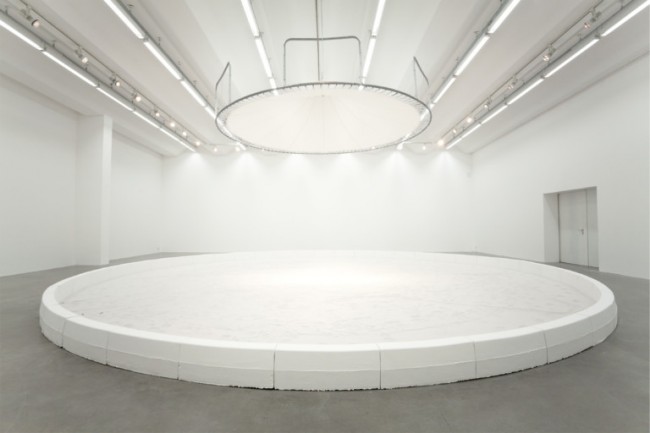
NOWs: SLEEK’s 7 emerging Berlin artists you need to know in 2019
EC. Courtesy of Malte Bartsch
7 emerging Berlin artists you need to know in 2019Article on Malte Bartsch, Jeewi Jee among others
Text by Isaac Moss
You don’t need us to tell you that Berlin is something of a Mecca when it comes to attracting emerging and underground artists. Every year, young artists flock to the city in their droves in search of bright studio spaces, rustic artist abodes, cheap beer and döner, and of course, a nightlife just ripe for exhibition opening tales of excess. And unlike its counterparts in London, Paris or New York, the art scene here is also relatively accessible due to state-funded galleries and a plethora of independent projects spaces that stud the city from Wedding to Weserstraße. As we start a new year, we take a look at some of the most promising artists making waves in the German capital — from those who are just shy of making their big breakthrough to those bubbling beneath the surface. Here are some of our favourites:
Feuerwerkautomat. Courtesy of Malte Bartsch
Malte Bartsch caught our attention because of the inclusive, interactive and social components to his practice. A student of Ólafur Eliasson, Bartsch became a name in Berlin last year with his piece, FEUERWERKAUTOMAT — an intervention at this year’s German reunification celebrations. Designed as an app where members of the public could purchase fireworks and create a display based on democratic polls, FEUERWERKAUTOMAT indicated the unpredictable nature of the voting process. In September at the Biesenthal, the multidisciplinary artist exhibited an old ATM reconfigured as a wood burning stove. Audiences were encouraged to burn their money, if they so wished.
Blinder Beifall, 2016. Courtesy of Jeewi Lee.
Originally from Seoul, Jeewi Lee has been based in Berlin since 2008. By using natural materials such as salt and rock, Jeewi investigates the trace left by human activity, reimagining it as a luminescent stamp. Her most arresting piece, Blinder Beifall (2016), consists of a circus ring composed of salt instead of sand, flanked with large white kerbstones. Jeewi then invited a variety of entertainers to perform in the salt — the final art work was the marks left in the substance.
Read full article here.
EC. Courtesy of Malte Bartsch
7 emerging Berlin artists you need to know in 2019Article on Malte Bartsch, Jeewi Jee among others
Text by Isaac Moss
You don’t need us to tell you that Berlin is something of a Mecca when it comes to attracting emerging and underground artists. Every year, young artists flock to the city in their droves in search of bright studio spaces, rustic artist abodes, cheap beer and döner, and of course, a nightlife just ripe for exhibition opening tales of excess. And unlike its counterparts in London, Paris or New York, the art scene here is also relatively accessible due to state-funded galleries and a plethora of independent projects spaces that stud the city from Wedding to Weserstraße. As we start a new year, we take a look at some of the most promising artists making waves in the German capital — from those who are just shy of making their big breakthrough to those bubbling beneath the surface. Here are some of our favourites:
Feuerwerkautomat. Courtesy of Malte Bartsch
Malte Bartsch caught our attention because of the inclusive, interactive and social components to his practice. A student of Ólafur Eliasson, Bartsch became a name in Berlin last year with his piece, FEUERWERKAUTOMAT — an intervention at this year’s German reunification celebrations. Designed as an app where members of the public could purchase fireworks and create a display based on democratic polls, FEUERWERKAUTOMAT indicated the unpredictable nature of the voting process. In September at the Biesenthal, the multidisciplinary artist exhibited an old ATM reconfigured as a wood burning stove. Audiences were encouraged to burn their money, if they so wished.
Blinder Beifall, 2016. Courtesy of Jeewi Lee.
Originally from Seoul, Jeewi Lee has been based in Berlin since 2008. By using natural materials such as salt and rock, Jeewi investigates the trace left by human activity, reimagining it as a luminescent stamp. Her most arresting piece, Blinder Beifall (2016), consists of a circus ring composed of salt instead of sand, flanked with large white kerbstones. Jeewi then invited a variety of entertainers to perform in the salt — the final art work was the marks left in the substance.
Read full article here.
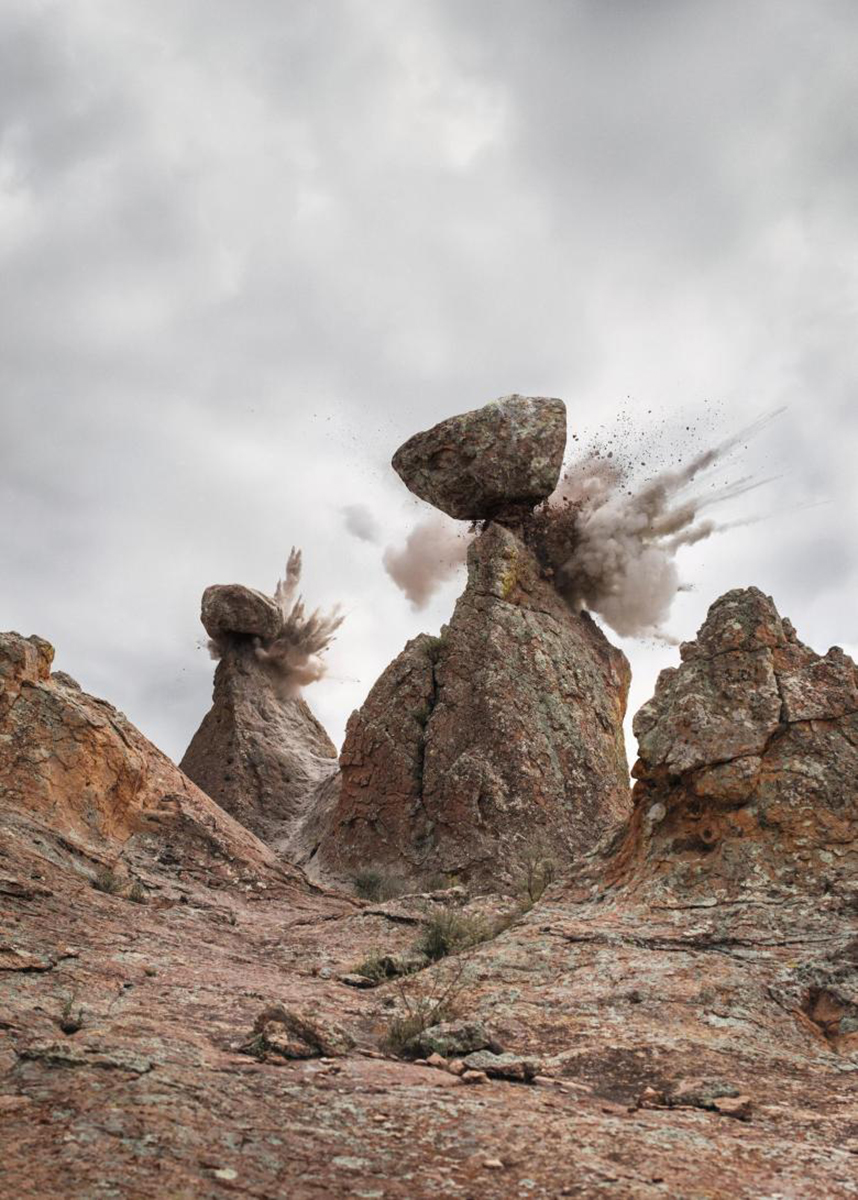
NOWs: Exploding Rock Videos – How Two Berlin Artists Fooled American Media
Exploding Rock Videos: How Two Berlin Artists Fooled American MediaArticle about art project by Julius von Bismarck and Julian Charrière in DIE WELT. By Swantje Karich
Two Berlin artists have produced videos of exploding rock arches and hoodoos in Utah – and fooled American media from CNN to FOX and even the FBI. Read the full article here.
Vermeintliche Anschläge in USA: Der große Bluff in der Ära der HalbwahrheitenArtikel über Kunstprojekt von Julius von Bismarck und Julian Charrière in DIE WELT. Von Swantje Karich
Zwei Berliner Künstler haben amerikanische Medien von CNN bis FOX mit Filmen über gesprengte Naturdenmäler getäuscht. Und auch das FBI. Lies den vollständigen Artikel hier.
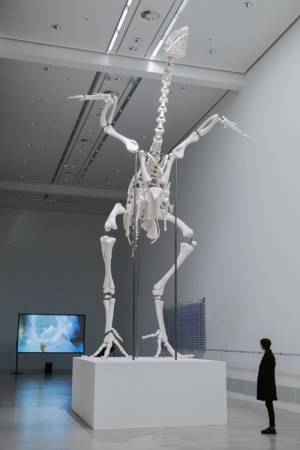
NOWs: Andreas Greiner – Recipient of Kaiserring Stipendium 2019
Monument for the 308.
Exhibition view Berlinische Galerie 2016
Andreas Greiner - Recipient of Kaiserring Stipendium 2019and solo exhibition at Mönchehaus Museum Goslar
Mönchehaus Museum
Mönchestraße 1
D–38640 Goslar
Signs of Life
8 September 2019 – 26 January 2020
Das seit 1984 vom Verein zur Förderung Moderner Kunst verliehene und seit 2014 von der AKB Stiftung in Einbeck geförderte Goslarer Kaiserringstipendium für junge Kunst geht in diesem Jahr an den Künstler Andreas Greiner.
Monument für die 308.
Installationsansicht Berlinische Galerie 2016
Andreas Greiner - Kaiserring Stipendiat 2019und Einzelausstellung im Mönchehaus Museum Goslar
Mönchehaus Museum
Mönchestraße 1
D–38640 Goslar
Signs of Life
8. September 2019 – 26. Januar 2020
Das seit 1984 vom Verein zur Förderung Moderner Kunst verliehene und seit 2014 von der AKB Stiftung in Einbeck geförderte Goslarer Kaiserringstipendium für junge Kunst geht in diesem Jahr an den Künstler Andreas Greiner.
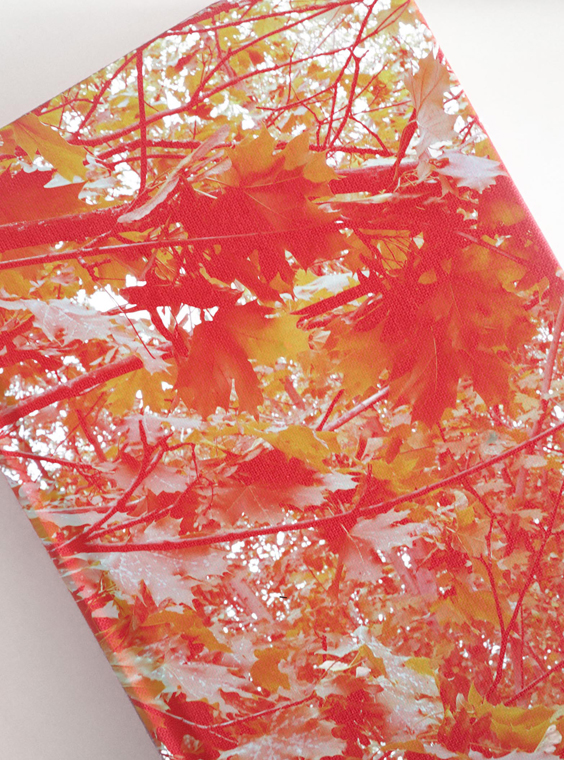
ICH LIEBE DICH! by Nina Schuiki & Leon Eixenberger
ICH LIEBE DICH!Nina Schuiki &Leon Eixenberger
The title is based upon a chance occurrence; these are the same three words which Miss Müller shouts towards her husband while saying “Write soon!”, which the author understands as a request for him to start writing his novel as soon as possible. The reader is thus confronted with a work-in-progress. During the journey, the work unfolds and the 66 interludes of the novel represent 66 railway stations.— from the afterword of „Ich liebe Dich! Ein Eisenbahnroman“ by Paul Scheerbart, Berlin 1897The exhibition of Eixenberger & Schuiki echoes the line of vision between the inoperative Siemensbahn and the housing estates by Hans Scharoun, whereby the artists read the axis as a metaphor of transience against Paul Scheerbart’s eponymous railway novel.Opening: Saturday, September 7th 2019, 6pm Exhibition: September 7th until October 27th 2019At “Tag des Offenen Denkmals” (Day of the Open Monument)September 7th + 8th 2019 open from 11.00 – 18.00 hOpening hours by appointment:info@scharaun.de or 0162-8289 332Scharaun | Jungfernheideweg 4 | 13629 Berlin-Siemensstadt U-Bhf Siemensdammhttp://www.scharaun.de/
ICH LIEBE DICH!Nina Schuiki &Leon Eixenberger
“Der Titelwahl liegt eine zufällige Begebenheit zugrunde: Es sind die gleichen drei Worte, die die Frau Müllers ihrem Mann beim Abschied, zusammen mit einem »Schreib’ bald!« zuruft, was der Erzähler als Aufforderung nimmt, den Roman bald zu schreiben. Dem Leser wird regelrecht ein work-in-progress vorgeführt, bei dem während der Fahrt das Werk entsteht und die 66 Intermezzos im Roman 66 Eisenbahnstationen gleichkommen.“Paul Scheerbart, Ich liebe Dich!, Ein Eisenbahnroman, Berlin 1897 Für die Ausstellung interpretieren Schuiki & Eixenberger die Blickachse zwischen stillgelegter Siemensbahn und der Siedlungsarchitektur Hans Scharouns und lesen diese als Vergänglichkeitsmetapher gegen Paul Scheerbarts epochalem Eisenbahnroman gleichen Titels. Eröffnung: Samstag, 7. September 2019, 18 UhrAusstellung: 7. September bis 27. Oktober 2019 Am Tag des Offenen Denkmals, 7. + 8. September 2019geöffnet von 11.00 – 18.00 UhrÖffnungszeiten nach Vereinbarung:info@scharaun.de oder 0162-8289 332 Scharaun | Jungfernheideweg 4 | 13629 Berlin-Siemensstadt
U-Bhf Siemensdamm http://www.scharaun.de/
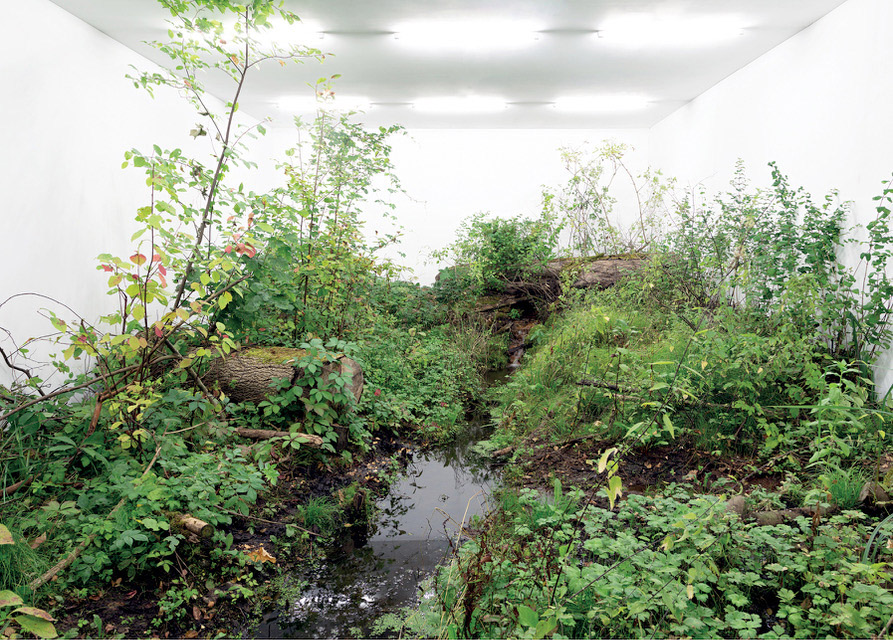
Isolation (52°33’44.1”N 14°03’12.8”E) by Fabian Knecht
FABIAN KNECHT
Isolation (52°33’44.1”N 14°03’12.8”E)
Eröffnung: 7.9.2019, 16-22 Uhr
Anmeldung Transfer vom / zum Bahnhof Müncheberg zur Eröffnung
(info@alexanderlevy.net)
Ausstellungsdauer: 7.9.-22.9.2019
Täglich 13-18 Uhr
Adresse:
Haus Erlengrund
Fischerberg 11
15377 Buckow (Märkische Schweiz)
kuratiert von Dehlia Hannah und Nadim Samman
Architektur von Marcel Schnabel, Ivy Lee Fiebig und Andre Simonow
Mit Unterstützung von alexander levy, Haus Erlengrund, Untere Naturschutzbehörde Märkisch-Oderland und Holz Possling
Forest of the Real
Dehlia Hannah | Nadim Samman
At 52°33’44.1”N 14°03’12.8”E, a precise Global Positioning System coordinate provided by Google Maps, the blindfold is removed. As you warily tread the muddy ground, your eyes adjust to bright white fluorescent light. A trickle of water catches your ear. You arrive, surrounded on all sides by windowless white walls, in a truncated thatch of forest. The smell of damp earth slows your pace as you navigate the terrain of fallen logs and low growing shrubs. Venturing beyond the first enclosure, a well-trampled corridor opens onto another white-walled room. The sound leads you along a stream fringed by greenery towards a small waterfall, whose pool offers a rippling reflection of the harsh ceiling lights. Every leaf is thrown into sharp relief against the saturated hues of the forest floor.
ISOLATION by Fabian Knecht is a series of artworks staged within a white-cube gallery space built up around specially selected sites. At first glance, the images appear to photos of galleries filled up with landscape installations. One thinks of Walter de Maria’s Earth Room (1977-present), or Olafur Eliasson’s Riverbed (2014-15), to which Knecht has previously referred in a visual essay about the origins of the series. But in fact, the large format photographs makes of actual ground a figure, like a sculpture in a room, inviting viewers to attend to it with heightened care. At each of the selected sites, a fluorescent lit white box is dropped atop a rectangular swatch of land—a fragment which, decontextualized from its surroundings, evokes its own set of associations, analogies, desires and anxieties. The boxed scenes vary and trick the eye. A luscious field of wildflowers recedes into infinity in perfect one-point perspective. In another circumstance, the flat ground is strewn with trash. A snow-covered stretch of a piled-up ice flow is clearly selected for its resemblance to Caspar David Friedrich’s iconic Eismeer (1823/24). One wonders how far the artist and his crew had to wander the Russian winter in search of that vantage point, how his eye had to squint, and how the camera had to be trained at just the right angle, height, and time of day, to catch the resemblance (without overemphasizing the identity between the scenes). This is not a matter of matching found landscapes to familiar scenes from paintings or historical photographs. In Isolation we are presented with the workings of a frame by means of the scenes that they enclose.
Indeed, beginning with an isolated fragment of a landscape, the logic of the frame echoes outwards—the structure built around it, the frame of the camera viewfinder, leading to a photograph of its interior; the frame of the photograph (with its own reflective glass surface), now hanging on the white wall of a gallery—whose form is repeated ad nauseum in the temporary architecture of the art world, from fairs and biennales to museum shows. But the mis en abyme runs inward too: in one work from the series, created at a grassy swamp outside Berlin, the box-frame’s fluorescent lights are reflected in the water below. Adding another dimension to the image, this mirror effect amplifies the logic of Isolation, with the swamp’s still water mimicking the photographic enterprise and the image-culture of the gallery world. In Water and Dreams (1942), Gaston Bachelard describes reveries afforded by ponds, lakes and rivers, in whose reflective surfaces the sky itself contemplates its own image. In Knecht’s transfiguration, the sky becomes a ceiling, the sun, rows of fluorescent bulbs; and the water, a photograph recording the self-reflexive narcissism of the gallery space.
Yet Knecht’s re-framing sequence does not end here. Previously, vitrines full of smaller photographs depicted the ‘making-of’ the studio architecture from a distance, so that its exterior walls were shown surrounded by a much larger landscape. Functionally, these behind-the-scenes images reversed the gestalt, rendering the terrain ground again, while turning the built object into a (diminished) figure. The cumulative effect of so many distancing mechanisms destabilizes the viewer’s relation to photographic truth-telling, transforming it into a problem. Or does it? Such destabilization might suggest that Knecht is provoking the viewer to doubt the veracity of everything they are seeing—in the work and the world. If the gallery isn’t real, perhaps neither is the interior landscape. Perhaps it is a digital confection, small-scale model, or terrarium. The specter of deep fakes, scripted reality, and ‘alternative facts’ casts a familiar chill here. It bears remembering that by its very nature the frame or “parergon is a form which has as its traditional determination not that it stands out but that it disappears, buries itself, effaces itself, melts away at the moment that it deploys its greatest energy.” However, in keeping with contemporary ungroundings of the reality principle at work in mass culture, the pleasing detail and smooth packaging of an Isolation print also swings the other way. It is compatible with an entirely different viewer relation: conveniently, what was once an unpalatable corner of a brownfield site, its rutted dirt and tufts of grass, is now ready to be swallowed in its photographic candy-coating. Which is to say, the viewer can take the apocryphal ‘red-pill’ of the virtual reality culture war, served on a clean white plate, and enjoy the colourful whatever-it-is (shunning the ‘blue pill’ of a harsh encounter reality). They key is that the image is consumable.
Problem/What problem? In setting up tension between a deeper question and, alternatively, its pleasing sublimation, Knecht’s series stages the conflict between Brechtian episches Theater and its rightward-leaning antagonist, the total illusion of the Wagnerian Gesamtkunswerk. In order to conserve the phenomena that resonate within its walls, the theater’s own architecture must resist exposure.
52°33’44.1”N 14°03’12.8”E
The box is also a shelter. Knecht opened Isolation to visitors for the first time at his solo show at Kunstverein Arnsberg (Radition, 2017), where the mossy remains of a dead tree took center stage. Subsequently, at Kunsthalle Baden-Baden’s “Exhibiting the Exhibition” (2018), rather than a sprawling landscape in miniature, visitors confronted with a single closely cropped tree trunk. With this ‘live’ iteration, landscapes are transformed into the Great Indoors. Knecht’s newest variation of Isolation—his largest yet, incorporating three connected galleries for a combined 180 sqm—is set within the Märkische Schweiz national park. Just across the lake is the Berthold Brecht house, whose one-time owner’s contribution to drama foregrounded the perspectival nature of audience experience, creating works that encouraged viewers not to suspend their disbelief in what they were seeing (as part of the episches Theater tendency). It is, one imagines, with him in mind that Knecht’s Buckow intstallation deploys its own Verfremdungseffekt. Until this moment, despite a critical edge, the series has mostly performed at a degree of distance from the audience. The landscape-figure remains fully isolated within three gallery walls and closed in by the fourth wall of photographic re-presentation. By virtue of their medium, even the supplementary ‘behind the scenes’ photos (which reverse the perceived enclosure) operated at a distance. In Buckow, Isolation categorically puts the viewer into the picture, both figuratively and literally. Ironically, through this embrace of epic ‘total installation’ (which completely surrounds the viewer), Knecht’s spectacular project stages an exit from Wagnerian gesamtkunstwerk and its 21st century counterpart, the filter bubble. Indeed, dramatic emphasis proceeds from the visitor literally taking leave of art(ifice)—moving through the artwork out into the world.
As mentioned, during the vernissage visitors are blindfolded and led into the constructed space—dropped into the architecturally framed landscape in media res, without having seen the structure or its surroundings from the outside. This is quite the opposite of a normal encounter with an artwork, where one approaches a proposed world and attempts, imaginatively, to penetrate its milieu. Here, after the blindfold is removed, the visitor explores the inside of a frame wherein everything is offered up for pleasure and contemplation, whether or not they are amendable as such in reality. (Perhaps mud is getting into your shoes; perhaps you oppressed by the white lights, or harassed by insects.) Now comes the crucial moment: however the teleported visitor relates to the situation, they must eventually emerge from it, into a beyond. The must leave the structure. In a reverse telescoping effect, it seems that Knecht’s box frames everything outside it too. Every tree and puddle surrounding the structure become benefactors of a heightened psychological investment in twigs, leaves, etc. How long will it take for this uncanny perspective on the world beyond the artwork to wear off?
It must be noted that Buckow is also known for guided, intensive experiences of terrain that are meant to be curative. Indeed, it is home to a number of paths designed in accordance with the naturopathic philosophy of the an eighteenth century monk Sebastian Kneipp, who espoused the virtues of bare-foot walking through ice cold water, dewy grass and mud. This type of practice of is less about the appreciation of nature or landscape (as an object of value) than it is about being physically and spiritually transformed by it. One might ask after the contraction of Kneipp and Brecht, how many steps can the visitor take away from the white box before they lose that special mode of attention proposed by Knecht’s cure?
Zum Artikel auf Berlin Art Link
FABIAN KNECHT
Isolation (52°33’44.1”N 14°03’12.8”E)
Eröffnung: 7.9.2019, 16-22 Uhr
Anmeldung Transfer vom / zum Bahnhof Müncheberg zur Eröffnung
(info@alexanderlevy.net)
Ausstellungsdauer: 7.9.-22.9.2019
Täglich 13-18 Uhr
Adresse:
Haus Erlengrund
Fischerberg 11
15377 Buckow (Märkische Schweiz)
kuratiert von Dehlia Hannah und Nadim Samman
Architektur von Marcel Schnabel, Ivy Lee Fiebig und Andre Simonow
Mit Unterstützung von alexander levy, Haus Erlengrund, Untere Naturschutzbehörde Märkisch-Oderland und Holz Possling
Forest of the Real
Dehlia Hannah | Nadim Samman
At 52°33’44.1”N 14°03’12.8”E, a precise Global Positioning System coordinate provided by Google Maps, the blindfold is removed. As you warily tread the muddy ground, your eyes adjust to bright white fluorescent light. A trickle of water catches your ear. You arrive, surrounded on all sides by windowless white walls, in a truncated thatch of forest. The smell of damp earth slows your pace as you navigate the terrain of fallen logs and low growing shrubs. Venturing beyond the first enclosure, a well-trampled corridor opens onto another white-walled room. The sound leads you along a stream fringed by greenery towards a small waterfall, whose pool offers a rippling reflection of the harsh ceiling lights. Every leaf is thrown into sharp relief against the saturated hues of the forest floor.
ISOLATION by Fabian Knecht is a series of artworks staged within a white-cube gallery space built up around specially selected sites. At first glance, the images appear to photos of galleries filled up with landscape installations. One thinks of Walter de Maria’s Earth Room (1977-present), or Olafur Eliasson’s Riverbed (2014-15), to which Knecht has previously referred in a visual essay about the origins of the series. But in fact, the large format photographs makes of actual ground a figure, like a sculpture in a room, inviting viewers to attend to it with heightened care. At each of the selected sites, a fluorescent lit white box is dropped atop a rectangular swatch of land—a fragment which, decontextualized from its surroundings, evokes its own set of associations, analogies, desires and anxieties. The boxed scenes vary and trick the eye. A luscious field of wildflowers recedes into infinity in perfect one-point perspective. In another circumstance, the flat ground is strewn with trash. A snow-covered stretch of a piled-up ice flow is clearly selected for its resemblance to Caspar David Friedrich’s iconic Eismeer (1823/24). One wonders how far the artist and his crew had to wander the Russian winter in search of that vantage point, how his eye had to squint, and how the camera had to be trained at just the right angle, height, and time of day, to catch the resemblance (without overemphasizing the identity between the scenes). This is not a matter of matching found landscapes to familiar scenes from paintings or historical photographs. In Isolation we are presented with the workings of a frame by means of the scenes that they enclose.
Indeed, beginning with an isolated fragment of a landscape, the logic of the frame echoes outwards—the structure built around it, the frame of the camera viewfinder, leading to a photograph of its interior; the frame of the photograph (with its own reflective glass surface), now hanging on the white wall of a gallery—whose form is repeated ad nauseum in the temporary architecture of the art world, from fairs and biennales to museum shows. But the mis en abyme runs inward too: in one work from the series, created at a grassy swamp outside Berlin, the box-frame’s fluorescent lights are reflected in the water below. Adding another dimension to the image, this mirror effect amplifies the logic of Isolation, with the swamp’s still water mimicking the photographic enterprise and the image-culture of the gallery world. In Water and Dreams (1942), Gaston Bachelard describes reveries afforded by ponds, lakes and rivers, in whose reflective surfaces the sky itself contemplates its own image. In Knecht’s transfiguration, the sky becomes a ceiling, the sun, rows of fluorescent bulbs; and the water, a photograph recording the self-reflexive narcissism of the gallery space.
Yet Knecht’s re-framing sequence does not end here. Previously, vitrines full of smaller photographs depicted the ‘making-of’ the studio architecture from a distance, so that its exterior walls were shown surrounded by a much larger landscape. Functionally, these behind-the-scenes images reversed the gestalt, rendering the terrain ground again, while turning the built object into a (diminished) figure. The cumulative effect of so many distancing mechanisms destabilizes the viewer’s relation to photographic truth-telling, transforming it into a problem. Or does it? Such destabilization might suggest that Knecht is provoking the viewer to doubt the veracity of everything they are seeing—in the work and the world. If the gallery isn’t real, perhaps neither is the interior landscape. Perhaps it is a digital confection, small-scale model, or terrarium. The specter of deep fakes, scripted reality, and ‘alternative facts’ casts a familiar chill here. It bears remembering that by its very nature the frame or “parergon is a form which has as its traditional determination not that it stands out but that it disappears, buries itself, effaces itself, melts away at the moment that it deploys its greatest energy.” However, in keeping with contemporary ungroundings of the reality principle at work in mass culture, the pleasing detail and smooth packaging of an Isolation print also swings the other way. It is compatible with an entirely different viewer relation: conveniently, what was once an unpalatable corner of a brownfield site, its rutted dirt and tufts of grass, is now ready to be swallowed in its photographic candy-coating. Which is to say, the viewer can take the apocryphal ‘red-pill’ of the virtual reality culture war, served on a clean white plate, and enjoy the colourful whatever-it-is (shunning the ‘blue pill’ of a harsh encounter reality). They key is that the image is consumable.
Problem/What problem? In setting up tension between a deeper question and, alternatively, its pleasing sublimation, Knecht’s series stages the conflict between Brechtian episches Theater and its rightward-leaning antagonist, the total illusion of the Wagnerian Gesamtkunswerk. In order to conserve the phenomena that resonate within its walls, the theater’s own architecture must resist exposure.
52°33’44.1”N 14°03’12.8”E
The box is also a shelter. Knecht opened Isolation to visitors for the first time at his solo show at Kunstverein Arnsberg (Radition, 2017), where the mossy remains of a dead tree took center stage. Subsequently, at Kunsthalle Baden-Baden’s “Exhibiting the Exhibition” (2018), rather than a sprawling landscape in miniature, visitors confronted with a single closely cropped tree trunk. With this ‘live’ iteration, landscapes are transformed into the Great Indoors. Knecht’s newest variation of Isolation—his largest yet, incorporating three connected galleries for a combined 180 sqm—is set within the Märkische Schweiz national park. Just across the lake is the Berthold Brecht house, whose one-time owner’s contribution to drama foregrounded the perspectival nature of audience experience, creating works that encouraged viewers not to suspend their disbelief in what they were seeing (as part of the episches Theater tendency). It is, one imagines, with him in mind that Knecht’s Buckow intstallation deploys its own Verfremdungseffekt. Until this moment, despite a critical edge, the series has mostly performed at a degree of distance from the audience. The landscape-figure remains fully isolated within three gallery walls and closed in by the fourth wall of photographic re-presentation. By virtue of their medium, even the supplementary ‘behind the scenes’ photos (which reverse the perceived enclosure) operated at a distance. In Buckow, Isolation categorically puts the viewer into the picture, both figuratively and literally. Ironically, through this embrace of epic ‘total installation’ (which completely surrounds the viewer), Knecht’s spectacular project stages an exit from Wagnerian gesamtkunstwerk and its 21st century counterpart, the filter bubble. Indeed, dramatic emphasis proceeds from the visitor literally taking leave of art(ifice)—moving through the artwork out into the world.
As mentioned, during the vernissage visitors are blindfolded and led into the constructed space—dropped into the architecturally framed landscape in media res, without having seen the structure or its surroundings from the outside. This is quite the opposite of a normal encounter with an artwork, where one approaches a proposed world and attempts, imaginatively, to penetrate its milieu. Here, after the blindfold is removed, the visitor explores the inside of a frame wherein everything is offered up for pleasure and contemplation, whether or not they are amendable as such in reality. (Perhaps mud is getting into your shoes; perhaps you oppressed by the white lights, or harassed by insects.) Now comes the crucial moment: however the teleported visitor relates to the situation, they must eventually emerge from it, into a beyond. The must leave the structure. In a reverse telescoping effect, it seems that Knecht’s box frames everything outside it too. Every tree and puddle surrounding the structure become benefactors of a heightened psychological investment in twigs, leaves, etc. How long will it take for this uncanny perspective on the world beyond the artwork to wear off?
It must be noted that Buckow is also known for guided, intensive experiences of terrain that are meant to be curative. Indeed, it is home to a number of paths designed in accordance with the naturopathic philosophy of the an eighteenth century monk Sebastian Kneipp, who espoused the virtues of bare-foot walking through ice cold water, dewy grass and mud. This type of practice of is less about the appreciation of nature or landscape (as an object of value) than it is about being physically and spiritually transformed by it. One might ask after the contraction of Kneipp and Brecht, how many steps can the visitor take away from the white box before they lose that special mode of attention proposed by Knecht’s cure?
Zum Artikel auf Berlin Art Link
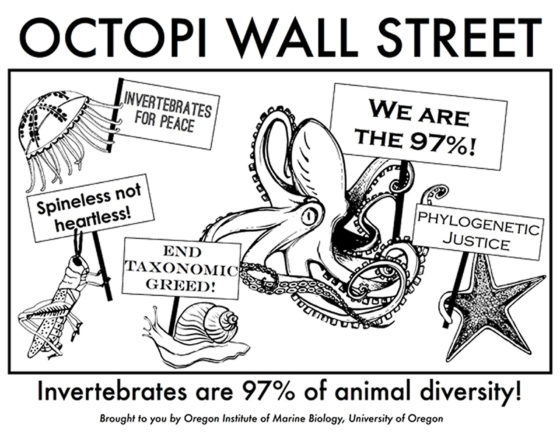
NOWs: Honorary Vertebrate Club
Sarah Browne: Report to an Academy, 2016. HD video, 28 minutes.
Honorary Vertebrate ClubGroup Exhibition
A Tale of a Tub
Justus van Effenstraat 44
3027 TK Rotterdam,
the Netherlands
An exhibition—with Bianca Baldi, Sarah Browne, Anne Duk Hee Jordan, Tuomas A. Laitinen, Sophie Mallett, Jean Painlevé & Geneviève Hamon, and Sarah Ancelle Schönfeld—that carries a part of its brain outside of its body.
Reality is an active verb, and the nouns all seem to be gerunds with more appendages than an octopus. Through their reaching into each other, through their “prehensions” or graspings, beings constitute each other and themselves. Beings do not preexist their relations. “Prehensions” have consequences. The world is a knot in motion.1
The exhibition Honorary Vertebrate Club addresses marine life and ecology in a time of unprecedented environmental change, the rapid depletion of life forms and loss of biodiversity. Focussing primarily on the octopus and other molluscan cephalopods, such as the squid, cuttlefish and the nautilus, the exhibition is centered around modes of survival and adaptation in aquatic climates where environmental backdrops have become increasingly unstable and subject to ecological breakdown, or have ceased to exist altogether. Introducing a number of templates and artistic practices concerned with marine life, the exhibition establishes analogies between human and non-human animals—the octopus often deemed as a radical form of otherness—in an aim to underline persistent anthropocentric tendencies and human exceptionalism. Instead of the human figure we follow the octopus as main protagonist: an inventive environmental engineer and expert tool-user with complex social behaviors, thriving together with the jellyfish in oceanic climates increasingly subject to manmade acidification, rising sea temperatures, and underwater colonialism through deep sea mining. What can we learn from the adaptive qualities of the octopus, its shape-changing capacities and internet of brains? Can we develop “tentacular thinking” as a way of learning to “stay with the trouble,” rather than keeping to engage in acts of business as usual?
The exhibition title is derived from an animal cruelty legislation act that was passed in The United Kingdom in 1986, regarding cephalopods as honorary vertebrates—extending to them protections not normally afforded to invertebrates, such as the octopus. This act was implemented more broadly with an EU directive in 2010, treating the octopus as a vertebrate— commonly possessing a more complex nervous systems than invertebrates—for legal protection in animal testing, as based on scientific evidence of their ability to experience pain, suffering, distress and lasting harm. Apart from the well-intentioned aims to protect cephalopods, the overarching discussion of human exceptionalism and our tendency to endow the human figure with the capacity to be at the basis of a judgement or reconstruction remains striking. In other words still, how many times haven’t humans dragged a non-human animal into its court—from the mimicry of the parrot, to the language of dolphins and the jazzsongs of whales—claiming that its being could be deemed intelligent, insofar as we consider ourselves the standard measure of intelligence.
Searching for new relational templates and approaches in inter-agentivity between humans and non-humans, the exhibition advocates a loosening of thought from the constraints of human phenomenality, as structures of being do not necessarily correspond with structures of lived experience.2 This resonates with the octopus’s bodily morphology and intelligence: of the octopus’s half a billion neurons—six times the number in a mouse—it is the only animal that has a segment of its brain located in its eight arms. Without a central nervous system, each arm “thinks” as well as “senses” the surrounding world with total autonomy, and yet, each arm is part of the animal.3 To further consider these decentralized actors forming a congruent whole it is relevant to cite philosopher Donna Haraway’s notion of “tentacular thinking”: The tentacular are not disembodied figures; they are cnidarians, spiders, fingery beings like humans and raccoons, squid, jellyfish, neural extravaganzas, fibrous entities, flagellated beings, myofibril braids, matted and felted microbial and fungal tangles, probing creepers, swelling roots, reaching and climbing tendrilled ones. The tentacular are also nets and networks, it critters, in and out of clouds. Tentacularity is about life lived along lines—and such a wealth of lines—not at points, not in spheres. “The inhabitants of the world, creatures of all kinds, human and non-human, are wayfarers”; generations are like “a series of interlaced trails.”4
For the exhibition Honorary Vertebrate Club we understand “tentacular thinking” as a mode of raising decentralized perception, as an expansive and generative practice of fragmentary knowledge production that unmakes self-organizing units and ties them together as part of collectives seeking for the possibilities of life in capitalist ruins. As cephalopod and jellyfish populations are proliferating in response to a changing climate, we may as well reach out to make kin with the aquatic overlords, engage in acts of learning through empathic nonunderstanding, towards devising ways of living together on a damaged planet.
Footnotes
1 Donna J. Haraway, The Companion Species Manifesto – Dogs, People, and Significant Otherness (Chicago: The University of Chicago Press), 6.
2 Anthropologist Tim Ingold has coined the term “interagentivity,” which he uses to highlight the constitutive quality of the “dwelt-in world” of hunter gatherers. Here, human beings engage intimately with one another as well as with non-human components in the environment. Ingold prefers to speak of “interagentivity” rather than of “intersubjectivity,” as we should not infer that every agent, with practical conscience, is subjectively determined, thoughtful and intellectual, with discursive, narrative awareness, as we commonly believe adult humans to be.
3 Chus Martinez, “The Octopus in Love,” e-flux journal 55 (May 2014): 1.
4 Donna J. Haraway, Staying with the Trouble – Making Kin in the Chthulucene (Durham and London: Duke University Press, 2016), 32.
This exhibition is made possible with the support of the City of Rotterdam and the Mondriaan Fund
Sarah Browne: Report to an Academy, 2016. HD video, 28 minutes.
Honorary Vertebrate ClubGroup Exhibition
A Tale of a Tub
Justus van Effenstraat 44
3027 TK Rotterdam,
the Netherlands
An exhibition—with Bianca Baldi, Sarah Browne, Anne Duk Hee Jordan, Tuomas A. Laitinen, Sophie Mallett, Jean Painlevé & Geneviève Hamon, and Sarah Ancelle Schönfeld—that carries a part of its brain outside of its body.
Reality is an active verb, and the nouns all seem to be gerunds with more appendages than an octopus. Through their reaching into each other, through their “prehensions” or graspings, beings constitute each other and themselves. Beings do not preexist their relations. “Prehensions” have consequences. The world is a knot in motion.1
The exhibition Honorary Vertebrate Club addresses marine life and ecology in a time of unprecedented environmental change, the rapid depletion of life forms and loss of biodiversity. Focussing primarily on the octopus and other molluscan cephalopods, such as the squid, cuttlefish and the nautilus, the exhibition is centered around modes of survival and adaptation in aquatic climates where environmental backdrops have become increasingly unstable and subject to ecological breakdown, or have ceased to exist altogether. Introducing a number of templates and artistic practices concerned with marine life, the exhibition establishes analogies between human and non-human animals—the octopus often deemed as a radical form of otherness—in an aim to underline persistent anthropocentric tendencies and human exceptionalism. Instead of the human figure we follow the octopus as main protagonist: an inventive environmental engineer and expert tool-user with complex social behaviors, thriving together with the jellyfish in oceanic climates increasingly subject to manmade acidification, rising sea temperatures, and underwater colonialism through deep sea mining. What can we learn from the adaptive qualities of the octopus, its shape-changing capacities and internet of brains? Can we develop “tentacular thinking” as a way of learning to “stay with the trouble,” rather than keeping to engage in acts of business as usual?
The exhibition title is derived from an animal cruelty legislation act that was passed in The United Kingdom in 1986, regarding cephalopods as honorary vertebrates—extending to them protections not normally afforded to invertebrates, such as the octopus. This act was implemented more broadly with an EU directive in 2010, treating the octopus as a vertebrate— commonly possessing a more complex nervous systems than invertebrates—for legal protection in animal testing, as based on scientific evidence of their ability to experience pain, suffering, distress and lasting harm. Apart from the well-intentioned aims to protect cephalopods, the overarching discussion of human exceptionalism and our tendency to endow the human figure with the capacity to be at the basis of a judgement or reconstruction remains striking. In other words still, how many times haven’t humans dragged a non-human animal into its court—from the mimicry of the parrot, to the language of dolphins and the jazzsongs of whales—claiming that its being could be deemed intelligent, insofar as we consider ourselves the standard measure of intelligence.
Searching for new relational templates and approaches in inter-agentivity between humans and non-humans, the exhibition advocates a loosening of thought from the constraints of human phenomenality, as structures of being do not necessarily correspond with structures of lived experience.2 This resonates with the octopus’s bodily morphology and intelligence: of the octopus’s half a billion neurons—six times the number in a mouse—it is the only animal that has a segment of its brain located in its eight arms. Without a central nervous system, each arm “thinks” as well as “senses” the surrounding world with total autonomy, and yet, each arm is part of the animal.3 To further consider these decentralized actors forming a congruent whole it is relevant to cite philosopher Donna Haraway’s notion of “tentacular thinking”: The tentacular are not disembodied figures; they are cnidarians, spiders, fingery beings like humans and raccoons, squid, jellyfish, neural extravaganzas, fibrous entities, flagellated beings, myofibril braids, matted and felted microbial and fungal tangles, probing creepers, swelling roots, reaching and climbing tendrilled ones. The tentacular are also nets and networks, it critters, in and out of clouds. Tentacularity is about life lived along lines—and such a wealth of lines—not at points, not in spheres. “The inhabitants of the world, creatures of all kinds, human and non-human, are wayfarers”; generations are like “a series of interlaced trails.”4
For the exhibition Honorary Vertebrate Club we understand “tentacular thinking” as a mode of raising decentralized perception, as an expansive and generative practice of fragmentary knowledge production that unmakes self-organizing units and ties them together as part of collectives seeking for the possibilities of life in capitalist ruins. As cephalopod and jellyfish populations are proliferating in response to a changing climate, we may as well reach out to make kin with the aquatic overlords, engage in acts of learning through empathic nonunderstanding, towards devising ways of living together on a damaged planet.
Footnotes
1 Donna J. Haraway, The Companion Species Manifesto – Dogs, People, and Significant Otherness (Chicago: The University of Chicago Press), 6.
2 Anthropologist Tim Ingold has coined the term “interagentivity,” which he uses to highlight the constitutive quality of the “dwelt-in world” of hunter gatherers. Here, human beings engage intimately with one another as well as with non-human components in the environment. Ingold prefers to speak of “interagentivity” rather than of “intersubjectivity,” as we should not infer that every agent, with practical conscience, is subjectively determined, thoughtful and intellectual, with discursive, narrative awareness, as we commonly believe adult humans to be.
3 Chus Martinez, “The Octopus in Love,” e-flux journal 55 (May 2014): 1.
4 Donna J. Haraway, Staying with the Trouble – Making Kin in the Chthulucene (Durham and London: Duke University Press, 2016), 32.
This exhibition is made possible with the support of the City of Rotterdam and the Mondriaan Fund
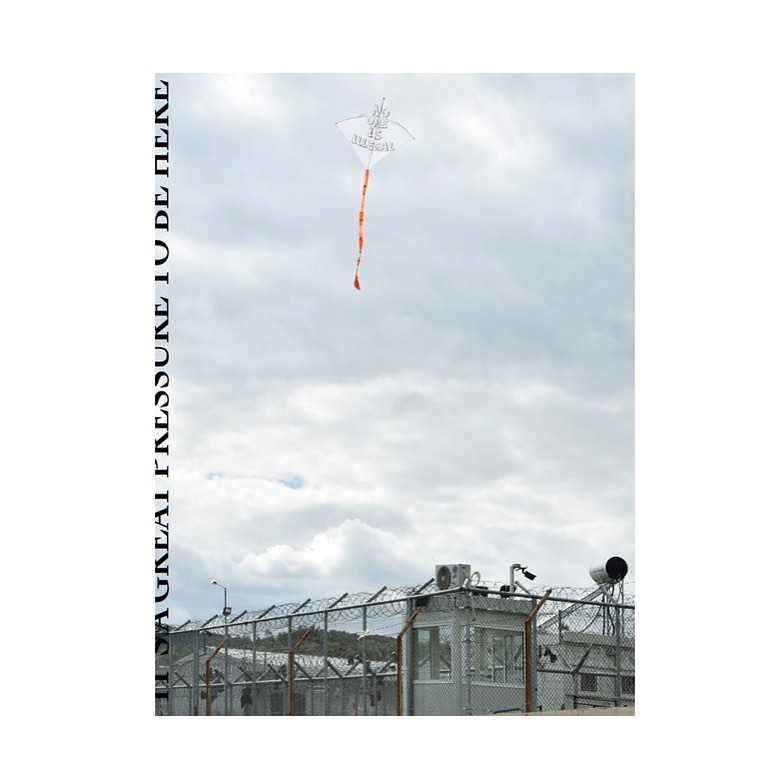
NOWs: IT’S A GREAT PRESSURE TO BE HERE by Raul Walch
Book Release
22 August 2019, 6 pm
book launch, artist talk,
drinks, snacks, and a brand-new edition
Eigen+Art Lab
Torstraße 220
10115 Berlin
Raul Walch is a sculptor and conceptual artist. Yet, in his site-specific interventions, he turns into a critical investigator, performer, and activist as well.
Aside from being a concise survey of his artistic practice, his new artist book IT’S A GREAT PRESSURE TO BE HERE, is a both wry and agitating comment on the globalized present, the human condition, and urgent contemporary societal issues.
A topical glossary of inspirations, ideas, people, and places, several scholarly essays, and an interview convey how artistic engagement can become instrumental in the examination and possible transformation of the given socio-political realities.
And in accordance with Raul Walch‘s multifaceted practice, the book itself has been designed with manifold perspectives and several, unusual ways to read it …
Raul Walch
IT’S A GREAT PRESSURE TO BE HERE
Hardcover, 27,5 × 20,5 cm
240 pp., num. col. ills.
Edited by Lukas Feireiss
Texts by Lukas Feireiss, Francesca Gavin, Fiona Shipwright
Designed by Korbinian Kainz / Basic09
English
Kerber
Bielefeld · Berlin 2019
ISBN 978-3-7356-0610-5
Book Release
22 August 2019, 6 pm
book launch, artist talk,
drinks, snacks, and a brand-new edition
Eigen+Art Lab
Torstraße 220
10115 Berlin
Raul Walch is a sculptor and conceptual artist. Yet, in his site-specific interventions, he turns into a critical investigator, performer, and activist as well.
Aside from being a concise survey of his artistic practice, his new artist book IT’S A GREAT PRESSURE TO BE HERE, is a both wry and agitating comment on the globalized present, the human condition, and urgent contemporary societal issues.
A topical glossary of inspirations, ideas, people, and places, several scholarly essays, and an interview convey how artistic engagement can become instrumental in the examination and possible transformation of the given socio-political realities.
And in accordance with Raul Walch‘s multifaceted practice, the book itself has been designed with manifold perspectives and several, unusual ways to read it …
Raul Walch
IT’S A GREAT PRESSURE TO BE HERE
Hardcover, 27,5 × 20,5 cm
240 pp., num. col. ills.
Edited by Lukas Feireiss
Texts by Lukas Feireiss, Francesca Gavin, Fiona Shipwright
Designed by Korbinian Kainz / Basic09
English
Kerber
Bielefeld · Berlin 2019
ISBN 978-3-7356-0610-5
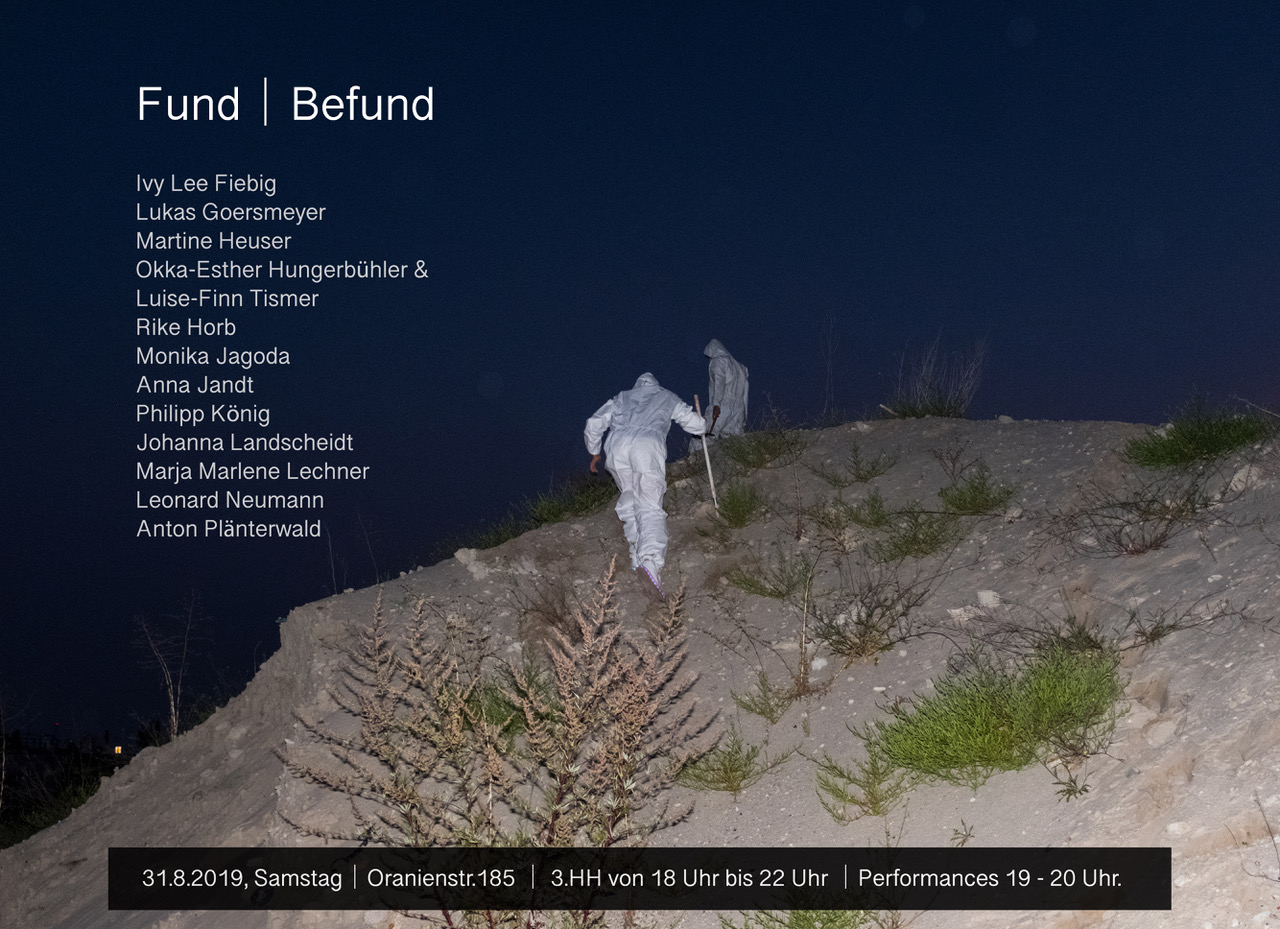
NOWs: Fund I Befund
Fund I Befundgroup exhibition
Oranienstr.185
10999 Berlin – Kreuzberg
3 HH
31 August 2019
6-10 pm
performances 7-8 pm
Artists:
Ivy Lee Fiebig
Lukas Goersmeyer
Martine Heuser
Okka-Esther Hungerbühler &
Luise-Finn Tismer
Rike Horb
Monika Jagoda
Anna Jandt
Philipp König
Johanna Landscheidt
Marja Marlene Lechner
Leonard Neumann
Anton Plänterwald
Fund I BefundGruppenausstellung
Oranienstr.185
10999 Berlin – Kreuzberg
3 HH
31. August 2019
18-22 Uhr
Performances 19-20 Uhr
Mit den Künstler*innen:
Ivy Lee Fiebig
Lukas Goersmeyer
Martine Heuser
Okka-Esther Hungerbühler &
Luise-Finn Tismer
Rike Horb
Monika Jagoda
Anna Jandt
Philipp König
Johanna Landscheidt
Marja Marlene Lechner
Leonard Neumann
Anton Plänterwald
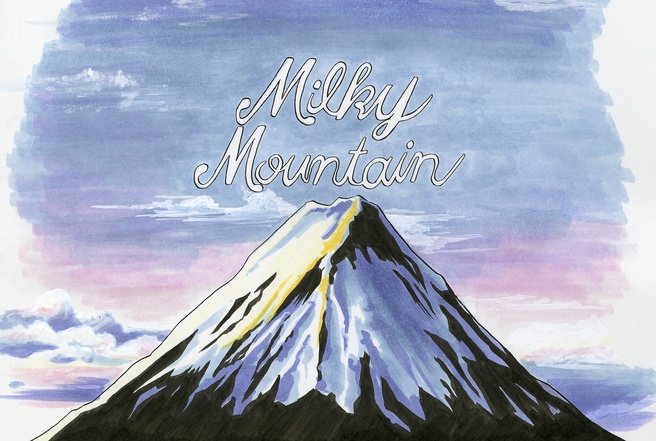
NOWs: Milky Mountain / 裏返りの山 by Yuichiro Tamura
Yuichiro Tamura KAIZO 2019, illustrated by Ryoga Seko. Courtesy the artist and Yuka Tsuruno Gallery, Tokyo
Milky Mountain / 裏返りの山Solo exhibition by Yuichiro Tamura
Govett-Brewster Art Gallery
42 Queen Street
New Plymouth, 4310
Aotearoa New ZealandArtist Talk with Yuichiro Tamura and curator Sarah Wall
11 am — 12 pm
Galleries 2-4
Milky Mountain / 裏返りの山 is the resulting work from Tamura’s time spent in New Plymouth, Aotearoa New Zealand as the 2018 Govett-Brewster Art Gallery International Artist in Residence.
Yuichiro Tamura’s new exhibition Milky Mountain / 裏返りの山 forges unexpected ties between New Plymouth, Aotearoa New Zealand, Mishima and Japan.
Curated by Sarah Wall
The work of Japanese artist Yuichiro Tamura is marked by his extensive ‘search’ into the histories and contexts of specific sites and places in which it is presented. Working in a variety of media, such as video, installation, photography and performance, Tamura builds new narratives out of seemingly unconnected fragments.
Tamura’s exhibition Milky Mountain / 裏返りの山, departs from a number of events that will be well known to the people of New Plymouth. Among them is the filming of The Last Samurai, a momentous occasion which saw Hollywood descend on the region over the summer of 2003. A second is the metamorphosis of a picture theatre into the Govett-Brewster Art Gallery. Fascination for the film and what’s fondly remembered as the ‘Samurai Summer’, along with the history of the former ‘bug house’, continues to endure amongst local residents to this day.
Presented across four galleries of the Govett-Brewster, Milky Mountain will include videos, archival materials, architectural excavation, original artwork from a comic book commissioned by Tamura for the exhibition, and artworks by Billy Apple from the Govett-Brewster Art Gallery Collection.
Join Govett-Brewster International Artist in Residence Yuichiro Tamura and curator Sarah Wall for a walk and talk through Tamura’s new exhibition Milky Mountain | 裏返りの山, followed by a film screening and discussion.
Yuichiro Tamura KAIZO 2019, illustrated by Ryoga Seko. Courtesy the artist and Yuka Tsuruno Gallery, Tokyo
Milky Mountain / 裏返りの山Solo exhibition by Yuichiro Tamura
Govett-Brewster Art Gallery
42 Queen Street
New Plymouth, 4310
Aotearoa New ZealandArtist Talk with Yuichiro Tamura and curator Sarah Wall
11 am — 12 pm
Galleries 2-4
Milky Mountain / 裏返りの山 is the resulting work from Tamura’s time spent in New Plymouth, Aotearoa New Zealand as the 2018 Govett-Brewster Art Gallery International Artist in Residence.
Yuichiro Tamura’s new exhibition Milky Mountain / 裏返りの山 forges unexpected ties between New Plymouth, Aotearoa New Zealand, Mishima and Japan.
Curated by Sarah Wall
The work of Japanese artist Yuichiro Tamura is marked by his extensive ‘search’ into the histories and contexts of specific sites and places in which it is presented. Working in a variety of media, such as video, installation, photography and performance, Tamura builds new narratives out of seemingly unconnected fragments.
Tamura’s exhibition Milky Mountain / 裏返りの山, departs from a number of events that will be well known to the people of New Plymouth. Among them is the filming of The Last Samurai, a momentous occasion which saw Hollywood descend on the region over the summer of 2003. A second is the metamorphosis of a picture theatre into the Govett-Brewster Art Gallery. Fascination for the film and what’s fondly remembered as the ‘Samurai Summer’, along with the history of the former ‘bug house’, continues to endure amongst local residents to this day.
Presented across four galleries of the Govett-Brewster, Milky Mountain will include videos, archival materials, architectural excavation, original artwork from a comic book commissioned by Tamura for the exhibition, and artworks by Billy Apple from the Govett-Brewster Art Gallery Collection.
Join Govett-Brewster International Artist in Residence Yuichiro Tamura and curator Sarah Wall for a walk and talk through Tamura’s new exhibition Milky Mountain | 裏返りの山, followed by a film screening and discussion.
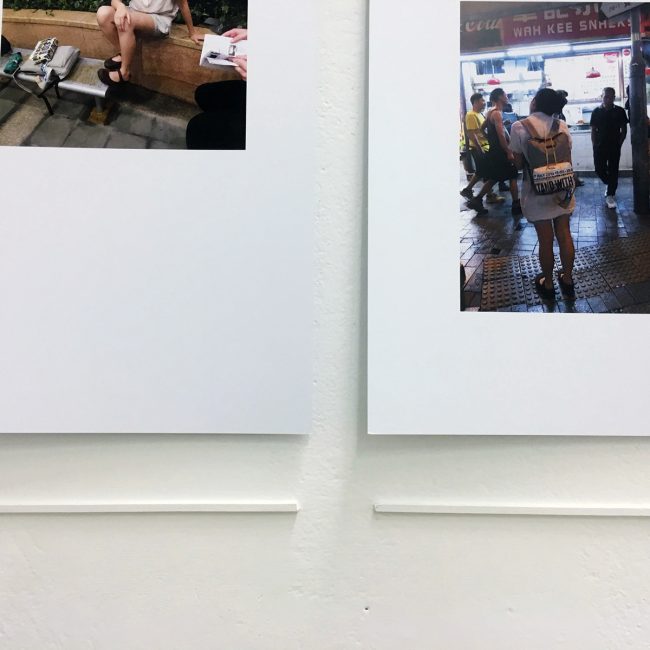
NOWs: Display Distribute presents Light Logistics
Display Distribute LIGHT LOGISTICIAN 何穎雅 Elaine W. Ho speaking with the panel "Publishing as Artistic Practice", part of the Publishing Maneuvers Symposium (2020) at Warehouse 421, Abu Dhabi; image courtesy of Warehouse421.
Publishing initiative Kayfa ta‘s series of books that “situate themselves in the space between the technical and the reflective, the everyday and the speculative, the instructional and the intuitive, the factual and the fictional” have now traversed into the realm of the exhibition, with a series of three of their “how to” model now seeping into art spaces in Beirut, Amman and Abu Dhabi.
For each iteration of the exhibition, itinerant research inquiry and artist hydra Display Distribute presented its LIGHT LOGISTICS project with the “SECOND(hand)MOUNTAIN(fortress)” imprint of bootleg books and their convoluted journeys to the Middle East. Dispatch HQL-304 and its documentation were presented in Beirut for “How to Reappear: Through the quivering leaves of independent publishing” at Beirut Art Center, then carried over as HQL-123 to Warehouse 421 in Abu Dhabi for “How to maneuver: Shape-shifting texts and other publishing tactics“. The third installment of the exhibition introduced LIGHT LOGISTICS dispatch HQL-350 with a new collaborative packaging collected from posters from Hong Kong’s anti-extradition bill movement, further protected with anti-RFID signal enabled tote bags made by artist collective nztt sewing co-op. Books and bags were hand carried from Hong Kong to Berlin, finally reaching the MMAG Foundation in Amman, where they will remain in relay until 23 April 2020. The “How to” series of publications and exhibitions exhibitions are curated by Maha MAAMOUN and Ala YOUNIS of Kayfa Ta.
–
Detail, installation view, LIGHT LOGISTICS: HQL-304, from "How to Reappear: Through the quivering leaves of independent publishing"; image courtesy of Beirut Art Center.
Display Distribute LIGHT LOGISTICIAN 何穎雅 Elaine W. Ho speaking with the panel "Publishing as Artistic Practice", part of the Publishing Maneuvers Symposium (2020) at Warehouse 421, Abu Dhabi; image courtesy of Warehouse421.
Publishing initiative Kayfa ta‘s series of books that “situate themselves in the space between the technical and the reflective, the everyday and the speculative, the instructional and the intuitive, the factual and the fictional” have now traversed into the realm of the exhibition, with a series of three of their “how to” model now seeping into art spaces in Beirut, Amman and Abu Dhabi.
For each iteration of the exhibition, itinerant research inquiry and artist hydra Display Distribute presented its LIGHT LOGISTICS project with the “SECOND(hand)MOUNTAIN(fortress)” imprint of bootleg books and their convoluted journeys to the Middle East. Dispatch HQL-304 and its documentation were presented in Beirut for “How to Reappear: Through the quivering leaves of independent publishing” at Beirut Art Center, then carried over as HQL-123 to Warehouse 421 in Abu Dhabi for “How to maneuver: Shape-shifting texts and other publishing tactics“. The third installment of the exhibition introduced LIGHT LOGISTICS dispatch HQL-350 with a new collaborative packaging collected from posters from Hong Kong’s anti-extradition bill movement, further protected with anti-RFID signal enabled tote bags made by artist collective nztt sewing co-op. Books and bags were hand carried from Hong Kong to Berlin, finally reaching the MMAG Foundation in Amman, where they will remain in relay until 23 April 2020. The “How to” series of publications and exhibitions exhibitions are curated by Maha MAAMOUN and Ala YOUNIS of Kayfa Ta.
–
Detail, installation view, LIGHT LOGISTICS: HQL-304, from "How to Reappear: Through the quivering leaves of independent publishing"; image courtesy of Beirut Art Center.
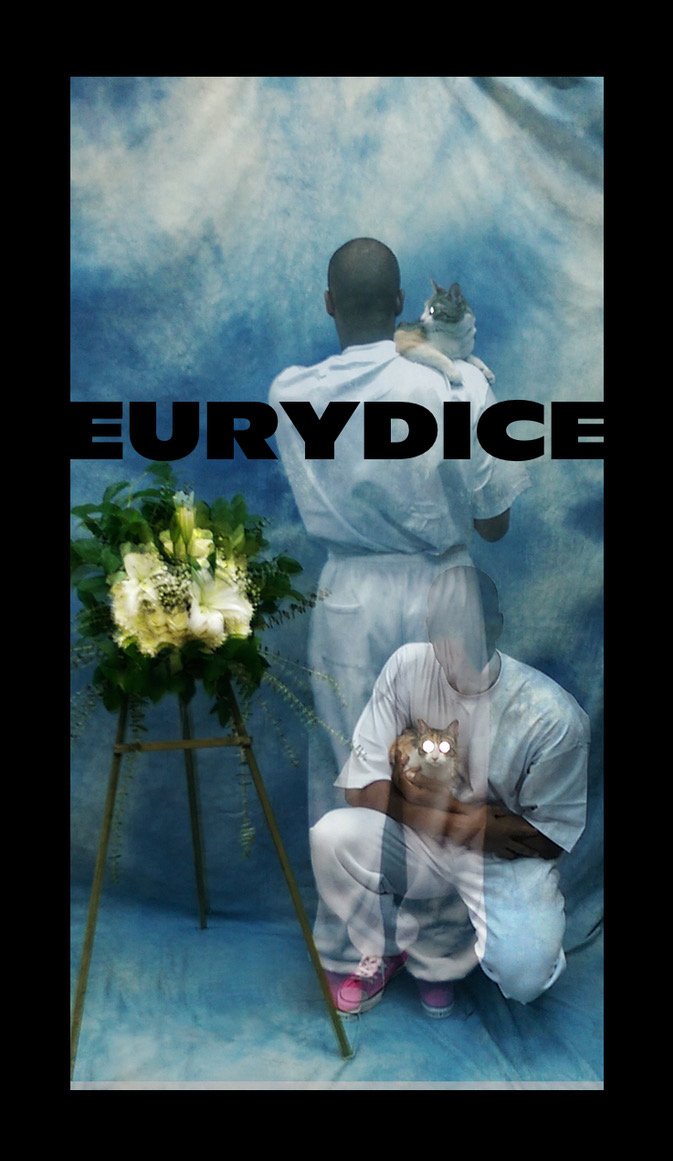
NOWs: Eurydice, Orpheus, And The Maenads
Eurydice, Orpheus, And The Maenadsperformance by Kandis Williams in dialog with Bracha L. Ettinger
13 July, 8 pm
Perfromance starts at 9pm
Spittelkolonnaden
Leipzigerstr. 49
10117 Berlin
Williams’ ongoing Eurydice project confronts the crisis of metaphorical entanglements around the aesthetic and political intersections of loss and inspiration, the ‘coming into being of artistic gestures’, echo, form, and mimesis as instances of the formal gathering of significant agential loss for the black subject. This full performance, stemming from a series of videos, collages, sculptures, and floral arrangements, makes porous the relationship between “black identity” and “mainstream culture.” The Greek myth of Eurydice is a vehicle for Williams’ inquiry into the subjects of a racialized imagination and its subsequent logics, by staging a structured engagement of blackness and spectacle within a mythic pre-Socratic configuration of the underworld. This installment will follow Orpheus from his loss of Eurydice into the hands of the Maenads.
The performance is developed in dialog with Bracha L. Ettinger, features movement by Josh Johnson and music by Patrick Belaga.
About FRAGILE
FRAGILE fosters a program of conversation, antagonism, renegotiation, and celebration.
FRAGILE is a non-profit project for contemporary artistic practices located in Berlin. It encompasses an exhibition and a residency space.
FRAGILE is guided by curations etymology, the practice of caring and was founded on the warmest summerday of 2018 by Maurin Dietrich and Jonas Wendelin.
Eurydice, Orpheus, And The Maenadsperformance by Kandis Williams in dialog with Bracha L. Ettinger
13 July, 8 pm
Perfromance starts at 9pm
Spittelkolonnaden
Leipzigerstr. 49
10117 Berlin
Williams’ ongoing Eurydice project confronts the crisis of metaphorical entanglements around the aesthetic and political intersections of loss and inspiration, the ‘coming into being of artistic gestures’, echo, form, and mimesis as instances of the formal gathering of significant agential loss for the black subject. This full performance, stemming from a series of videos, collages, sculptures, and floral arrangements, makes porous the relationship between “black identity” and “mainstream culture.” The Greek myth of Eurydice is a vehicle for Williams’ inquiry into the subjects of a racialized imagination and its subsequent logics, by staging a structured engagement of blackness and spectacle within a mythic pre-Socratic configuration of the underworld. This installment will follow Orpheus from his loss of Eurydice into the hands of the Maenads.
The performance is developed in dialog with Bracha L. Ettinger, features movement by Josh Johnson and music by Patrick Belaga.
About FRAGILE
FRAGILE fosters a program of conversation, antagonism, renegotiation, and celebration.
FRAGILE is a non-profit project for contemporary artistic practices located in Berlin. It encompasses an exhibition and a residency space.
FRAGILE is guided by curations etymology, the practice of caring and was founded on the warmest summerday of 2018 by Maurin Dietrich and Jonas Wendelin.
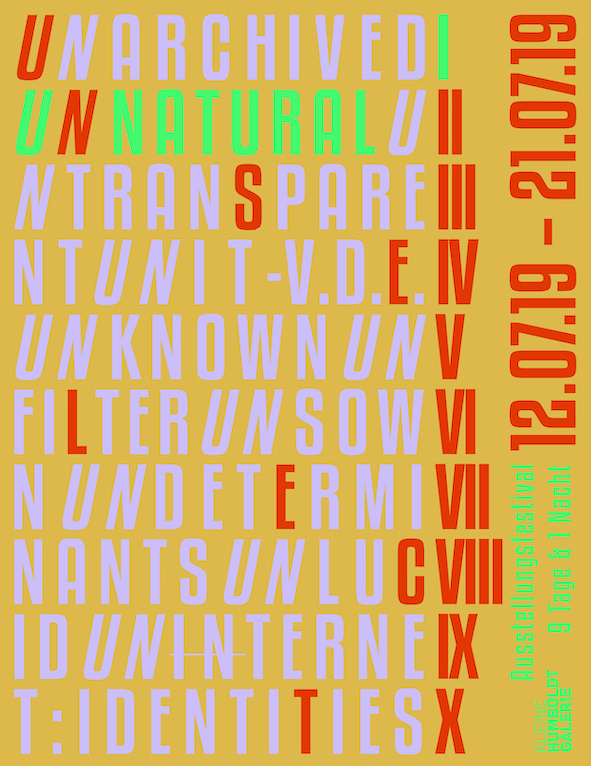
NOWs: UNnatural
graphic design © Charlotte Hansel: & color design © Susi Hinz unnatural
unnaturalgroup show with Mark Dion, Duy Hoàng, Saskia Krafft, Silvia Noronha, Nina Schuiki, Markus Wirthmann; curated by Julia Modes
Kleine Humboldt Galerie
Lichthof Ost
Unter den Linden 6
10117 Berlin
Opening
12 July, 6.30 to 9 pm
Programme
keynote lecture: July 12, 5.15 to 6.30 pm
Prof. Dr. Philipp Sarasin: Darwins natural selection
Lecture: August 7, 6.15 to 8 pm
Prof. Dr. Anke te Heesen: Kastenräume. Zur Geschichte eingefriedeter Pflanzen
unnatural is dedicated to the dichotomy of humans and nature, by exploring the human fascination with, as well as our influence on natural cycles and the consequences of this activity in the age of the Anthropocene.
The biologist Charles Darwin defined natural selection as the principle of survival and reproduction of any variation that provided advantageous, no matter how small. His evolutionary theory plainly explained the mechanisms of species’ variation in the plant and animal kingdoms. Humans were no longer the pride of creation but rather part of a protracted process in which they prevailed over other species.
However, within their culturally created social structures, humans are subjected to very different, everyday mechanisms of selection – and further, they themselves do the selecting. When humans attempt to comprehend the forces of nature, acquire them, and utilize them for their own needs, they make decisions based on their own value systems, which affect nature in turn. In this manner, human activity has become a crucial factor within the evolutionary process. Can the conscious selection by humans still be regarded as natural or does it have to be understood as unnatural?
The exhibition unnatural is dedicated to this dichotomy of humans and nature. Six contemporary artists will explore the human fascination with, as well as our influence on, natural cycles and the consequences of this activity in the age of the Anthropocene. Their works will discuss natural catastrophes caused by human action, attempts to imitate natural processes, and the practice of collecting organic materials in order to instigate a discourse on natural and unnatural selection mechanisms.
Celebrating the 10th anniversary of Kleine Humboldt Galerie’s curatorial practice at Lichthof Ost, the show will be on view until August 9!
Künstler*innen/ artists
Duy Hoàng (New York)
Saskia Krafft (New York)
Nina Schuiki (Berlin)
Silvia Noronha (Berlin)
Markus Wirthmann (Berlin)
Mark Dion (New York)
Kuratorin/ curator: Julia Modes
Kuratorische Assistenz / assistant: Lotte Wilhelm
graphic design © Charlotte Hansel: & color design © Susi Hinz unnatural
unnaturalGruppenausstellung mit Mark Dion, Duy Hoàng, Saskia Krafft, Silvia Noronha, Nina Schuiki, Markus Wirthmann; kuratiert von Julia Modes
Kleine Humboldt Galerie
Lichthof Ost
Unter den Linden 6
10117 Berlin
Eröffnung
12 July, 6.30 to 9 pm
Programm
Keynote Lecture: 12. Juli, 17:15 to 18.30 h
Prof. Dr. Philipp Sarasin: Darwins natural selection
Lecture: 7. August , 18.15 bis 20:00 h
Prof. Dr. Anke te Heesen: Kastenräume. Zur Geschichte eingefriedeter Pflanzen
unnatural widmet sich der Dichotomie von Mensch und Natur, indem die Ausstellung die menschliche Faszination für, wie auch seinen Einfluss auf natürliche Kreisläufe und deren Folgen im Zeitalter des Anthroprozäns thematisiert.
Der Naturforscher Charles Darwin definierte die natürliche Selektionals Prinzip der Erhaltung jeder kleinsten, sofern nützlichen Variation. Seine Evolutionstheorie erklärt auf einfache Weise den Mechanismus der Artenvariation im Pflanzen- und Tierreich, der den Menschen nicht als “Krone der Schöpfung”, sondern als Teil eines natürlichen Ausleseverfahrens beschreibt.
Doch der Mensch unterliegt in dem von ihm eigens hervorgebrachten sozialen Gefüge heute ganz anderen, alltäglichen Selektionsmechanismen – und mehr noch: er selbst selektiert. Während der Mensch zwar die Gesetze der Natur seit jeher zu durchdringen versucht, sie sich aneignet und für seine eigenen Zwecke nutzt, trifft er Entscheidungen auf der Grundlage eines eigens erfundenen Wertesystems, denen sich seine Umwelt beugen muss. So wurde er zu einem entscheidenden Selektionsfaktor der natürlichen Auslese. Kann jedoch das bewusste Selektieren des Menschen noch als ein natürliches oder muss es als ein unnatürliches verstanden werden?
Im Rahmen des Festivals unselect greifen in der Ausstellung unnatural Sechs Künstler*innen durch ihre Arbeiten die vom Menschen verursachten Naturkatastrophen, den Versuch, Prozesse der Natur nachzuahmen und das Prinzip des Sammelns organischer Materialien auf, um zum Nachdenken und Diskutieren über natürliche, wie unnatürliche Selektionsmechanismen anzuregen.
Die Ausstellung wird anlässlich der zehnjährigen Ausstellungspraxis der Kleinen Humboldt Galerie im Lichthof Ost bis zum 09. August zu sehen sein!
Künstler*innen/ artists
Duy Hoàng (New York)
Saskia Krafft (New York)
Nina Schuiki (Berlin)
Silvia Noronha (Berlin)
Markus Wirthmann (Berlin)
Mark Dion (New York)
Kuratorin/ curator: Julia Modes
Kuratorische Assistenz / assistant: Lotte Wilhelm
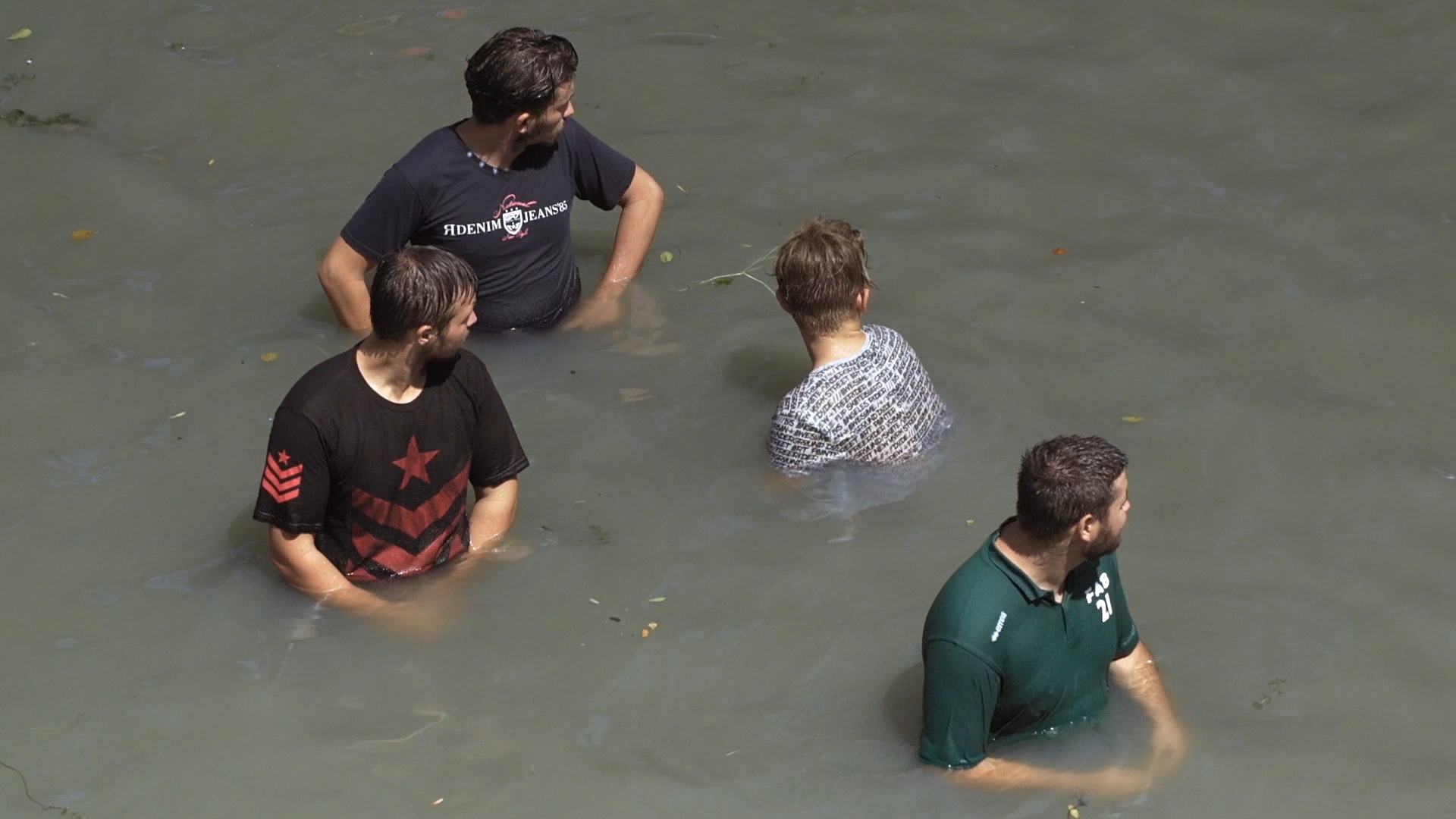
NOWs: Quissac by Yalda Afsah
Quissacsolo exhibition by Yalda Afsah
Still from Yaldah Afsah, Vidourle, 2019
Opening
6 JULY 2019, 5 – 9 pm
FRAGILE
Leipzigerstraße 63
10117 Berlin
FRAGILE is pleased to announce the solo exhibition Quissac by Yalda Afsah.
The exhibition brings together two films that were developed in relation to each other, their location both being a small town in the south of France where the narrative follows a bizarre sequence of bullfights.
The films “Vidourle” and “Tourneur” both portray and fictionalize the setting for expressions of supposed dominance between human and animal, gestures of provoked violence and performed masculinity. Between strategies of construction and reality scenes unfold in which man and animal, rage and performance collapse into one another.
Vidourle, 2019, 10 min
Tourneur, 2018, 14 min
About FRAGILE
FRAGILE fosters a program of conversation, antagonism, renegotiation, and celebration.
FRAGILE is a non-profit project for contemporary artistic practices located in Berlin. It encompasses an exhibition and a residency space.
FRAGILE is guided by curations etymology, the practice of caring and was founded on the warmest summerday of 2018 by Maurin Dietrich and Jonas Wendelin.
Quissacsolo exhibition by Yalda Afsah
Still from Yaldah Afsah, Vidourle, 2019
Opening
6 JULY 2019, 5 – 9 pm
FRAGILE
Leipzigerstraße 63
10117 Berlin
FRAGILE is pleased to announce the solo exhibition Quissac by Yalda Afsah.
The exhibition brings together two films that were developed in relation to each other, their location both being a small town in the south of France where the narrative follows a bizarre sequence of bullfights.
The films “Vidourle” and “Tourneur” both portray and fictionalize the setting for expressions of supposed dominance between human and animal, gestures of provoked violence and performed masculinity. Between strategies of construction and reality scenes unfold in which man and animal, rage and performance collapse into one another.
Vidourle, 2019, 10 min
Tourneur, 2018, 14 min
About FRAGILE
FRAGILE fosters a program of conversation, antagonism, renegotiation, and celebration.
FRAGILE is a non-profit project for contemporary artistic practices located in Berlin. It encompasses an exhibition and a residency space.
FRAGILE is guided by curations etymology, the practice of caring and was founded on the warmest summerday of 2018 by Maurin Dietrich and Jonas Wendelin.
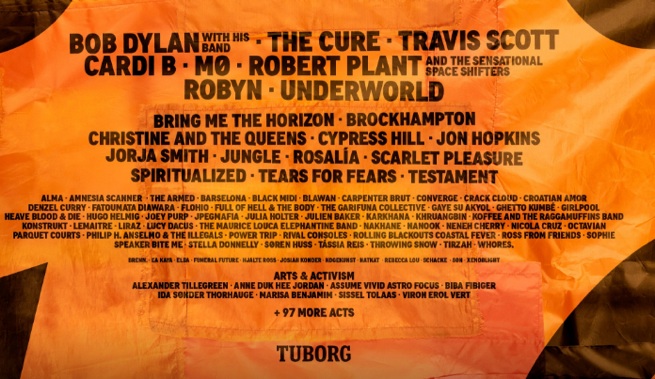
NOWs: Ziggy & The Starfish at Roskilde Festival
Ziggy & The Starfish at Roskilde FestivalSolo exhibition by Anne Duk Hee Jordan
See the world from a fish perspective in Anne Duk Hee Jordan’s Ziggy & The Starfish
Make yourself comfortable in the enormous bed covered by a blue fishnet curtain, which makes up Anne Duk Hee Jordan’s installation Ziggy & The Starfish. Here, you will see a vibrant and seductive performative mating dance taking place among sea slugs, octopuses and star fish, which are affected by climate change.
By zooming in on a microcosm that many people have forgotten, Ziggy & The Starfish examines how humans use and treat the environment and the ocean in particular, but also how sea animals have a fluid and diverse sexuality. Through a playful and humorous approach, Anne Duk Hee Jordan illustrates new perspectives on climate change and their tangible effects on the hormones of living organisms by allowing us to experience the world through the eyes of the sealife. The title also refers to the late David Bowie’s androgynous glam alter ego Ziggy Stardust in the early 70s.
The accessory large board ‘Changing Sex in Ecology’ next to the bed installation gives an overview of how animals and humans are adapting to climate change today. The work and research are created in collaboration with curator and writer Pauline Doutreluingne.
Ziggy & The Starfish and Changing Sex in Ecology are part of the exhibition Sensorium: A Laboratory for the Deceleration of the Body and for a New Politics of the Senses, curated by Solvej Helweg Ovesen and co-produced by the Riga International Biennale of Contemporary Art, 2018. Ziggy & the Starfish is created by Anne Hee Duk, and the bed is designed by her and Tilman Wendland.
Ziggy & The Starfish at Roskilde FestivalSolo exhibition by Anne Duk Hee Jordan
See the world from a fish perspective in Anne Duk Hee Jordan’s Ziggy & The Starfish
Make yourself comfortable in the enormous bed covered by a blue fishnet curtain, which makes up Anne Duk Hee Jordan’s installation Ziggy & The Starfish. Here, you will see a vibrant and seductive performative mating dance taking place among sea slugs, octopuses and star fish, which are affected by climate change.
By zooming in on a microcosm that many people have forgotten, Ziggy & The Starfish examines how humans use and treat the environment and the ocean in particular, but also how sea animals have a fluid and diverse sexuality. Through a playful and humorous approach, Anne Duk Hee Jordan illustrates new perspectives on climate change and their tangible effects on the hormones of living organisms by allowing us to experience the world through the eyes of the sealife. The title also refers to the late David Bowie’s androgynous glam alter ego Ziggy Stardust in the early 70s.
The accessory large board ‘Changing Sex in Ecology’ next to the bed installation gives an overview of how animals and humans are adapting to climate change today. The work and research are created in collaboration with curator and writer Pauline Doutreluingne.
Ziggy & The Starfish and Changing Sex in Ecology are part of the exhibition Sensorium: A Laboratory for the Deceleration of the Body and for a New Politics of the Senses, curated by Solvej Helweg Ovesen and co-produced by the Riga International Biennale of Contemporary Art, 2018. Ziggy & the Starfish is created by Anne Hee Duk, and the bed is designed by her and Tilman Wendland.
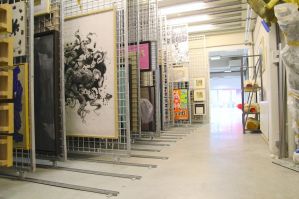
NOWs: 4/10 –A CRITICAL INVENTORY OF THE IKOB COLLECTION
4/10 –A CRITICAL INVENTORY OF THE IKOB COLLECTIONGroup exhibition
Opening: 30 June 2019, 5 pm
IKOB – Museum of Contemporary Art
Rotenberg 12
4700 Eupen
Belgien
With regard to the equal treatment of female and male artists, 2019 is apparently turning out to be a year of reappraisal at several art- and culture-institutions. For example, for twelve months starting this April the Tate Modern in London is exclusively featuring female artists from its own collection. Through a focus on works of art by women, which are exhibited percentage-wise far less frequently than those by men, female artists are to be more strongly represented and their contribution to art history is to be more appropriately acknowledged. There are also projects such as these outside the visual arts. Thus the Karlsruhe State Theatre is hiring only female directors for the 2018/19 season. The IKOB is likewise seeking to make its contribution to an endeavour that is actually long overdue. We engaged in a closer analysis of our collection and investigated the question as to how many works of art came from women and how many from men. It turned out that exactly 40% of the works in the collection were done by women. Four out of ten is not a bad ratio in comparison to other museums, whose percentage seems to be stuck at around 25%. In comparison, between 2009 and 2011 the share of works by female artists purchased by museums in North Rhine-Westphalia was no more than 28%, and only 22% of all solo exhibitions receiving financial support from that German state were by female artists. Why is this low percentage surprising? Because for decades the share of women at German art academies has been constantly over 60%; and with regard to the art prizes awarded by the state, there is at least an even distribution between women and men. But as soon as it is a matter of participation in exhibitions at galleries, museums and art associations, it is striking that women lag behind men with shocking regularity. If one then examines the list of the most commercially successful artists, it becomes evident that the number of top earners who are women continues to be infinitesimally small.
Since a reappraisal can only take place there where people are aware of this differentiation, the exhibition 4/10, A Critical Inventory of the IKOB Collection, constitutes the beginning of an endeavour to do justice to the female artists from our collection with regard to contents, and to support their contributions to the uniqueness of the (East-)Belgian art scene by bringing those creations to light. For that reason, the motto of the moment is ‘men into storage, women into the museum.
The exhibition is conceived as an invitation to communication: above all between the IKOB and the female artists represented in its collection, but also among visitors, both female and male, who have not seen many of these works of art for a long time or possibly never at all.
With: Marie-France Bonmariage, Ellen Brusselmans, Jeanne-Claude, Johanna Deiglmayr-Buchholz, Delphine Deguislage, Lili Dujourie, Margret Eicher, Karin Frank, Casaluce Geiger, Denise Gilles, Laurence Gonry, Maria Hasemeier-Eulenbruch, Vera Hilger, Irmel Kamp, Stefanie Klingemann, Marie-Claire Krell, Sophie Langohr, Andrea Lehnert, Barbara Leisgen, Esther Liégeois, Lilith Love, Sylvie Macías Díaz, Nora Mertes, Beatrice Minda, Karin Missy Paule, Tanja Mosblech, Yvonne Mostard, Sali Muller, Chloé Op de Beeck, Timea Anita Oravecz, Tinka Pittoors, Andrea Radermacher-Mennicken, Jana Rusch, Bärbel Schulte Kellinghaus, Alice Smeets, Merlin Spie, Catharina van Eetvelde, Marlies Vermeulen (Dear Hunter), Sophie Whettnall, Denyse Willem
4/10 –EINE KRITISCHE BESTANDSAUFNAHME DER IKOB SAMMLUNG
Eröffnung: 30.06.2019, 17 h
IKOB – Museum für Zeitgenössische Kunst
Rotenberg 12
4700 Eupen
Belgien
2019 ist in Sachen Gleichstellung von Künstlerinnen und Künstlern, in einigen Kunst- und Kulturinstitutionen, offensichtlich ein Jahr des Umdenkens. So zeigt die Tate Modern in London seit April für zwölf Monate ausschließlich Künstlerinnen aus der eigenen Sammlung. Durch den Fokus auf die prozentual viel seltener ausgestellten Kunstwerke von Frauen sollen diese stärker repräsentiert und ihr Beitrag zur Kunstgeschichte angemessen gewürdigt werden. Auch außerhalb der bildenden Kunst gibt es solche Projekte. So engagiert das Staatstheater Karlsruhe für die Spielzeit 2018/2019 nur Regisseurinnen. Zu diesen eigentlich längst überfälligen Handlungen will auch das IKOB seinen Beitrag leisten. So unterzogen wir unsere Sammlung einer genaueren Analyse und gingen der Frage nach wie viele Kunstwerke von Frauen und wie viele von Männern stammen. Es zeigte sich, dass genau 40% der Kunstwerke in der Sammlung von Künstlerinnen geschaffen wurden. Vier von zehn ist zwar kein schlechter Schnitt im Vergleich zu anderen Museen, deren Quote immer noch bei etwa 25% festgefahren zu sein scheint. Zum Vergleich lag zwischen 2009 und 2011 der Frauenanteil bei Kunsteinkäufen der Museen in Nordrhein-Westfalen gerade einmal bei 28% und nur 22% aller vom Land geförderten Einzelausstellungen waren Ausstellungen von Künstlerinnen. Warum diese niedrige Quote überrascht? Weil seit Jahrzehnten der Frauenanteil an den deutschen Kunstakademien bei konstant über 60% liegt und auch bei den staatlichen Kunstpreisen zumindest noch Gleichstand zwischen Männern und Frauen herrscht. Sobald es jedoch an die Teilnahme an Ausstellungen in Galerien, Museen und Kunstvereinen geht, fällt auf, dass Frauen mit auffälliger Konsequenz ins Hintertreffen geraten. Schaut man sich dann noch die Liste der kommerziell erfolgreichsten Künstlerinnen und Künstler an, so sieht man, dass die Anzahl der weiblichen Topverdienerinnen noch immer verschwindend gering ist.
Da ein Umdenken nur dort stattfinden kann, wo man sich dieser Differenzierung bewusst wird, ist die Ausstellung 4/10 – Eine kritische Bestandsaufnahme der IKOB Sammlung der Anfang den Künstlerinnen aus unserer Sammlung inhaltlich gerecht zu werden und ihren Beitrag an der Einzigartigkeit in der (Ost-)belgischen Kunstwelt durch ihre Sichtbarmachung zu fördern. Daher heißt es aktuell: Männer ins Depot, Frauen ins Museum. Die Ausstellung versteht sich als eine Einladung zur Kommunikation. In erster Linie zwischen dem IKOB und den in seiner Sammlung vertretenen Künstlerinnen, aber auch zwischen Besucherinnen und Besuchern, die viele der Kunstwerke seit längerer Zeit oder noch nie gesehen haben.
Mit: Marie-France Bonmariage, Ellen Brusselmans, Jeanne-Claude, Johanna Deiglmayr-Buchholz, Delphine Deguislage, Lili Dujourie, Margret Eicher, Karin Frank, Casaluce Geiger, Denise Gilles, Laurence Gonry, Maria Hasemeier-Eulenbruch, Vera Hilger, Irmel Kamp, Stefanie Klingemann, Marie-Claire Krell, Sophie Langohr, Andrea Lehnert, Barbara Leisgen, Esther Liégeois, Lilith Love, Sylvie Macías Díaz, Nora Mertes, Beatrice Minda, Karin Missy Paule, Tanja Mosblech, Yvonne Mostard, Sali Muller, Chloé Op de Beeck, Timea Anita Oravecz, Tinka Pittoors, Andrea Radermacher-Mennicken, Jana Rusch, Bärbel Schulte Kellinghaus, Alice Smeets, Merlin Spie, Catharina van Eetvelde, Marlies Vermeulen (Dear Hunter), Sophie Whettnall, Denyse Willem
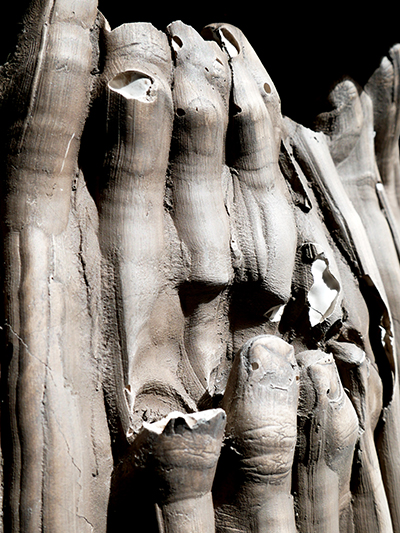
NOWs: The Dig by Dan Stockholm
The DigSolo exhibition
R E I T E R | Berlin prospect
Potsdamer Strasse 81B
10785 Berlin
opening
20 June 6 pm
In The Dig Dan Stockholm adopts the role of a creative archaeologist, utilizing methods of excavation, preservation and display in the creation of three new series of works. The Dig speculates on how we tend to view the entire story of history as though it’s a straight line that leads directly to us. In archaeology we dig to uncover ourselves, but is it us that we find, or were we someone else?
Read the article about the exhibition on artmirror
The DigEinzelausstellung
R E I T E R | Berlin prospect
Potsdamer Strasse 81B
10785 Berlin
Eröffnung
Donnerstag 20. Juni 18 h
Für The Dig wird Dan Stockholm zum kreativen Archäologen, indem er die Methoden von Ausgrabung, Konservierung und Präsentation zur Erschaffung neuer Kunstwerke nutzt. Daraus sind drei Werkreihen entstanden die die Ausstellung thematisiert. The Dig spekuliert über unsere Neigung, die gesamte Geschichte als gerade Linie zu betrachten, welche auf direktem Wege zu uns führt. In der Archäologie graben wir, um uns selbst zu entdecken. Aber sind wir es, die wir da wiederfinden? Oder müssen wir annehmen, dass wir Andere waren?
Artikel über die Ausstellung auf artmirror
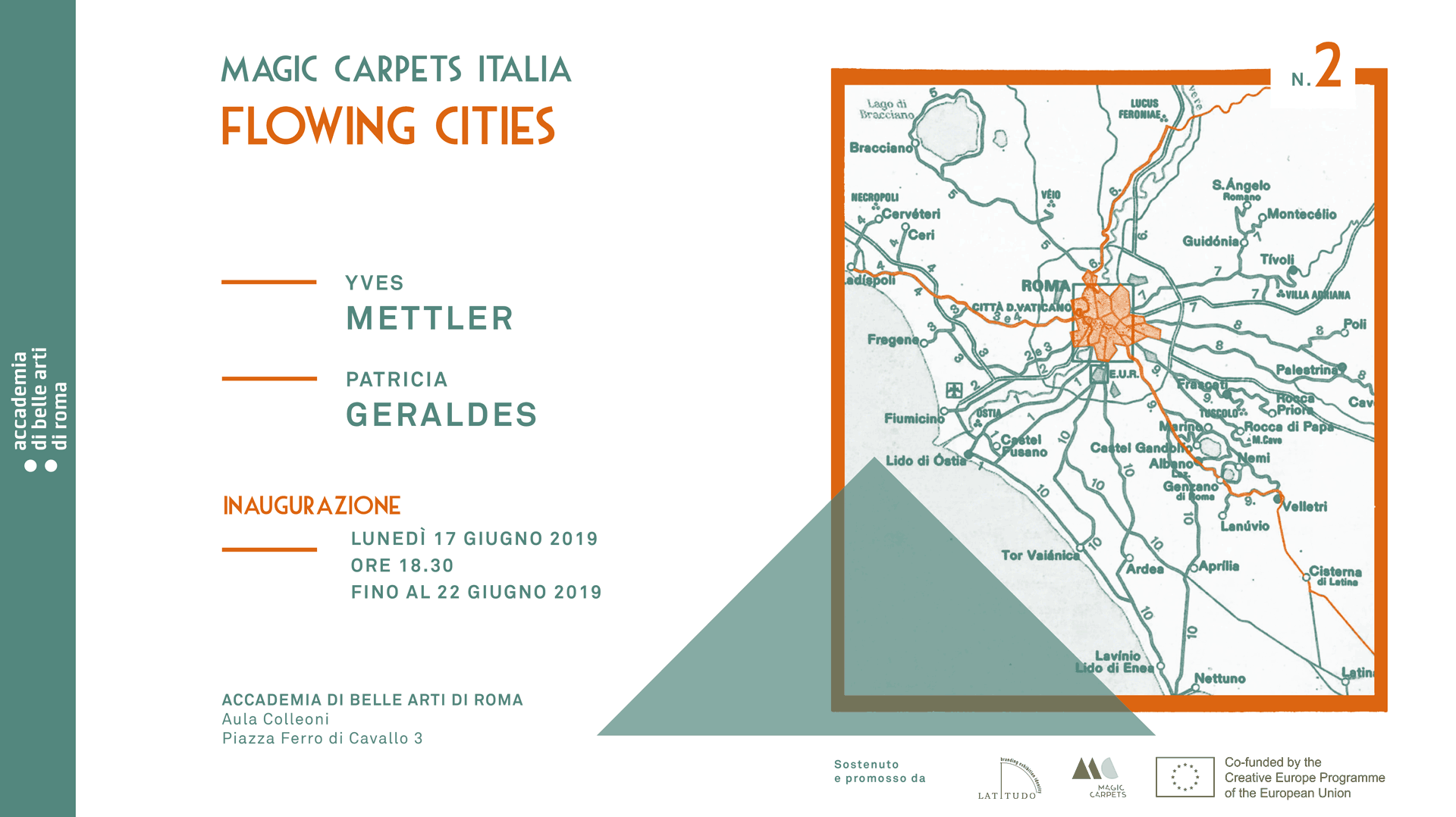
NOWs: Magic Carpets Italy – Flowing Cities
Flowing Citiesdouble solo show
Accademia di Belle Arti di Roma
Via di Ripetta, 222
00186 Roma
Opening
17 June 2019, 06.30 pm
Flowing Cities is an international artists’ residence project created by Benedetta Carpi De Resmini and curated with Giulia Pardini.
Latitudo-Art Projects and the Accademia di Belle Arti di Roma present the exhibition Flowing Cities, a double solo show dedicated to the artists Yves Mettler and Patricia Geraldes as part of the international platform Magic Carpets, now in its second edition, from 17 to 22 June 2019 in the Accademia’s exhibition spaces, where an installation by Patricia Geraldes will be on view until 27 June in Piazza Ferro di Cavallo.
For the exhibition, Yves Mettler will present a two-channel video work, projected in the Sala Colleoni, stemming from the artist’s research in Laurentino 38. On the walls of the room, a story that the artist prepared during his workshops with neighbourhood youth will be displayed: posters, photos and comics will compete to share the intricate world of the Laurentino.
Patricia Geraldes will present the diaries she created with the residents of the Corviale: photos, memories, collages and drawings will create varying and contrasting visions of the neighbourhood. In the central square, Piazza Ferro di Cavallo, the artist will present a sculpture based on the idea of restoring a virtuous balance between humans and their environment: the site specific work will be composed of branches carved with memories and emotions drawn from her work at the Corviale.
In the spaces adjacent to the Sala Colleoni, there will be a timeline, visual narration of the residences of these two artists, using photos of their time studying and working in Rome, taken by the photographer Luis Do Rosario. Alongside the project carried out in Italy, Magic Carpets sponsors the work of Italian artists abroad, with the idea of cultural exchange between European countries. For this second edition, the artists invited to develop a residence project linked to a place by starting a dialogue with the community were Elena Mazzi, selected by ZK/U di Berlin, and Virginia Zanetti, chosen by Ideias Emergentes in Porto. Along with Luis do Rosario’s photos, there are photographs realized by the Lithuanian journalists collective Nanook (Mindaugas Drigotas), who had followed the two Italian artists in their residencies. There are also shown documents and drawings made by the artists themselves.
Flowing Citiesdouble solo show
Accademia di Belle Arti di Roma
Via di Ripetta, 222
00186 Roma
Opening
17 June 2019, 06.30 pm
Flowing Cities is an international artists’ residence project created by Benedetta Carpi De Resmini and curated with Giulia Pardini.
Latitudo-Art Projects and the Accademia di Belle Arti di Roma present the exhibition Flowing Cities, a double solo show dedicated to the artists Yves Mettler and Patricia Geraldes as part of the international platform Magic Carpets, now in its second edition, from 17 to 22 June 2019 in the Accademia’s exhibition spaces, where an installation by Patricia Geraldes will be on view until 27 June in Piazza Ferro di Cavallo.
For the exhibition, Yves Mettler will present a two-channel video work, projected in the Sala Colleoni, stemming from the artist’s research in Laurentino 38. On the walls of the room, a story that the artist prepared during his workshops with neighbourhood youth will be displayed: posters, photos and comics will compete to share the intricate world of the Laurentino.
Patricia Geraldes will present the diaries she created with the residents of the Corviale: photos, memories, collages and drawings will create varying and contrasting visions of the neighbourhood. In the central square, Piazza Ferro di Cavallo, the artist will present a sculpture based on the idea of restoring a virtuous balance between humans and their environment: the site specific work will be composed of branches carved with memories and emotions drawn from her work at the Corviale.
In the spaces adjacent to the Sala Colleoni, there will be a timeline, visual narration of the residences of these two artists, using photos of their time studying and working in Rome, taken by the photographer Luis Do Rosario. Alongside the project carried out in Italy, Magic Carpets sponsors the work of Italian artists abroad, with the idea of cultural exchange between European countries. For this second edition, the artists invited to develop a residence project linked to a place by starting a dialogue with the community were Elena Mazzi, selected by ZK/U di Berlin, and Virginia Zanetti, chosen by Ideias Emergentes in Porto. Along with Luis do Rosario’s photos, there are photographs realized by the Lithuanian journalists collective Nanook (Mindaugas Drigotas), who had followed the two Italian artists in their residencies. There are also shown documents and drawings made by the artists themselves.
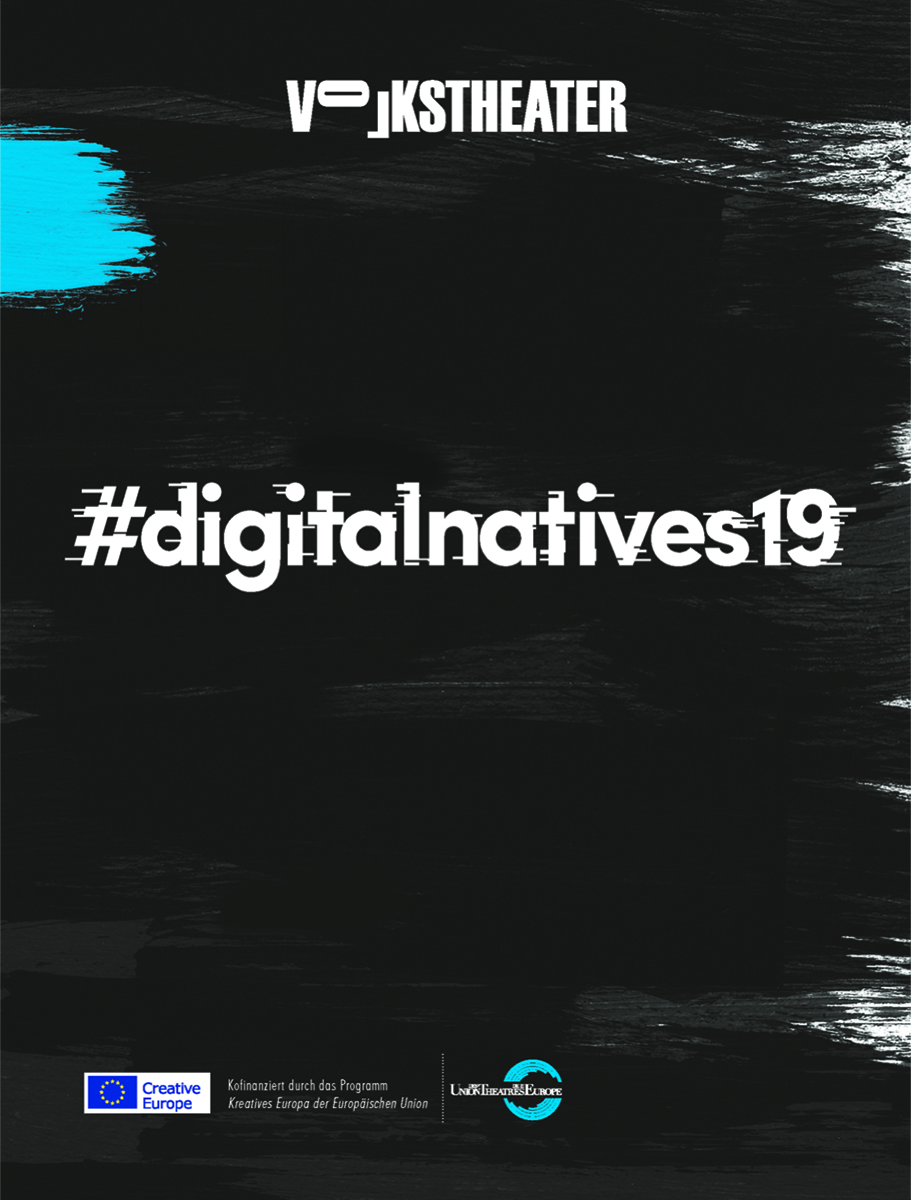
NOWs: The Data of the Heart by Sarah Rechberger
The Data of the HeartInstallation by Sarah Rechberger
Volkstheater, Weißer Salon
Neustiftgasse 1
1070 Vienna
The installation The Data of Heart makes the movements of audience members heart visible. Heart rate in beats per minute (bpm) is transmitted externally to the artwork by a sensor, facilitating a new form of communication and interaction.
This direct experience turns the physical body into a place where light, information, movement and space intersect. In the digital age, the transmission of light, or electricity and information plays a key role. This transmission is not linear: similar to our heartbeats, it takes a pulsing, wave-like form (alternating current, binary code).
In the installation, a straight beam of light is bent into a curve on all sides. The heart is not only an efficient mechanical pump. It is a location of empathy, emotional connection and direct communication. This living impulse connects us all – regardless of ethnic origin, gender, age or religion – including other forms of life such as animals. Even the planet earth has a heartbeat. Its magnetic field constantly pulsates to its own rhythm.
31 May 2019, 1pm, 2pm, 3pm
01 June 2019, 1pm, 2pm, 3pm
Free admission
The Data of the HeartInstallation von Sarah Rechberger
Volkstheater, Weißer Salon
Neustiftgasse 1
1070 Wien
Die Installation The Data of the Heart macht die Bewegungen der Herzen der Besucher/innen sichtbar. Die Herzfrequenz in bpm (beats per minute) wird durch einen Sensor nach außen auf das Kunstwerk übertragen und ermöglicht eine andere Form von Kommunikation und Interaktion. Diese unmittelbare Erfahrung macht den menschlichen Körper zu einer Schnittstelle zwischen Licht, Information, Bewegung und Raum.
Im digitalen Zeitalter spielt die Übertragung von Licht bzw. Strom und Information eine wichtige Rolle. Die Übertragung findet nicht linear, sondern ähnlich unserem Herzen, in einer pulsierenden und wellenartigen Form statt (Wechselstrom, 0/1 Binärcode). In der Installation wird die gerade Lichtlinie auf jeder Seite zu einer Kurve gekrümmt. Das Herz ist nicht nur eine effiziente mechanische Pumpe, sondern ein Ort der Empathie, der emotionalen Verbindung und der direkten Kommunikation. Dieser Lebensimpuls verbindet uns alle − unabhängig von ethnischer Herkunft, Geschlecht, Alter oder Religion – auch mit anderen Lebewesen wie den Tieren. Selbst die Erde hat einen „Herzschlag“. Ihr Magnetfeld pulsiert konstant im eigenen Rhythmus.
31. Mai 2019, 13h, 14h, 15h
01. Juni 2019, 13h, 14h, 15h
Freier Eintritt
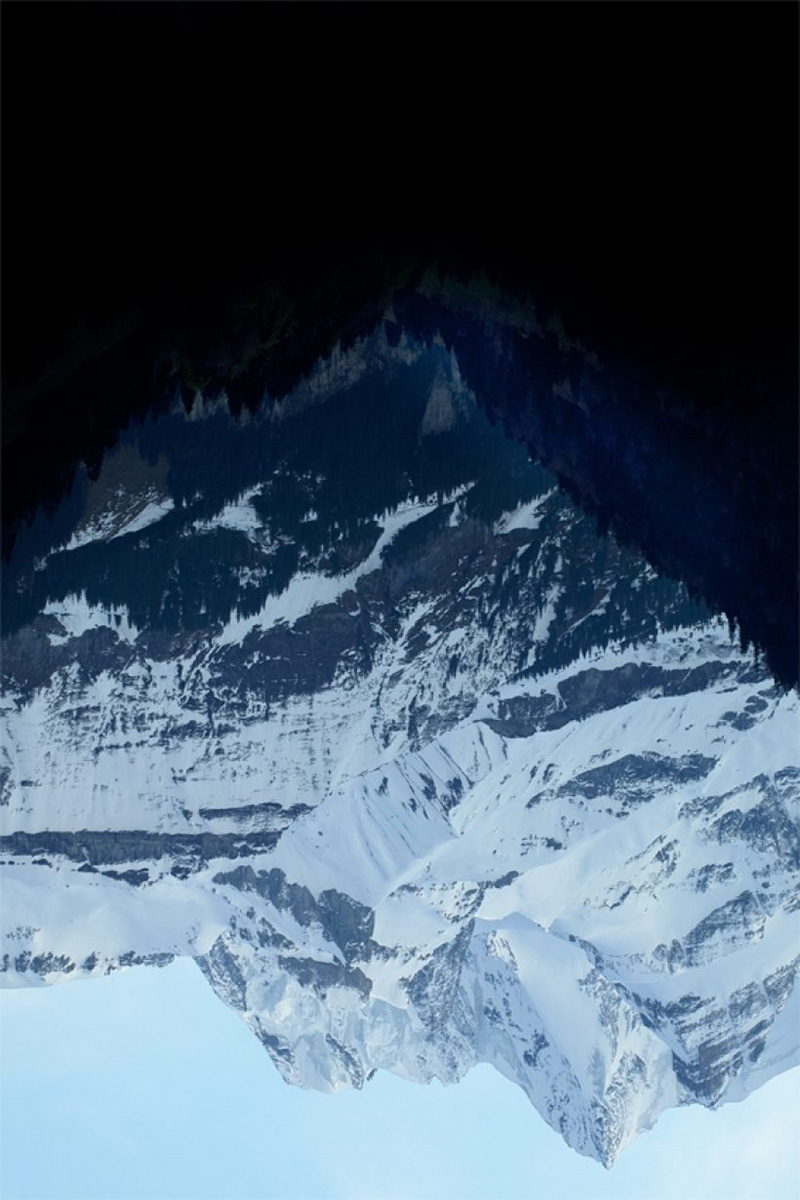
NOWs: Passpunkt
PasspunktSolo exhibition by Sophia Pompéry
Galerie WAGNER + PARTNER
Koppenplatz 5-6
10115 Berlin
Opening: 17 May, 7 pm
WAGNER + PARTNER is pleased to present Passpunkt (Control Point), the third solo exhibition by the Berlin artist Sophia Pompéry. Following on from previous projects, Pompéry continues her exploration of aesthetics at the intersection of art, physics and philosophy and with astonishing results.
Pompéry began this project during a residency in the Swiss mountains where she was inspired by the landscape. What sets a photograph of a mountain panorama apart from that of a valley? Are there objective “truths” for the answer or appraisal? Ultimately, we instinctively trust a camera’s objectivity.
The exhibition’s title alludes to the “control points” used in the surveying sector to clearly define an exact location – thus determining its meaning in an overriding sense. In the WAGNER + PARTNER exhibition, Sophia Pompéry explores this concept to absurdity and creates states of suspense through minimal artistic intervention. A photo of a mountain is also that of a valley, a negative becomes a positive, a yes becomes a no …
Sophia Pompéry (*1984 in Berlin) lives and works in Berlin. She graduated from the Kunsthochschule Berlin-Weissensee with a Masters degree and then participated in the UdK (Berlin University of the Arts) Institute for Spatial Experiments with Olafur Eliasson. Numerous prizes, residencies and international exhibitions testify to her artistic achievements.
PasspunktSolo exhibition by Sophia Pompéry
Galerie WAGNER + PARTNER
Koppenplatz 5-6
10115 Berlin
Eröffnung: 17. Mai, 19 h
Galerie WAGNER + PARTNER freut sich, mit „Passpunkt“ die dritte Einzelausstellung der Berliner Künstlerin Sophia Pompéry zu präsentieren. Wie in anderen Projekten auch, stellt Pompéry generelle ästhetische Fragen am Schnittpunkt von Kunst, Physik und Philosophie und überrascht mit deren Antworten.
Ausgangpunkt war ein Residence-Aufenthalt in den Schweizer Bergen, bei dem die Künstlerin sich fotografisch mit der Landschaft vor Ort auseinandergesetzt hat. Was unterscheidet das Foto eines Bergpanoramas von dem einer Talaufnahme? Gibt es objektive „Wahrheiten“ für die Antwort oder Bewertung? Schließlich vertrauen wir der Objektivität eines Fotoapperates instiktiv.
Im Vermessungswesen bedient man sich sogenannter – in Anspielung auf den Ausstellungstitel – Passpunkte, um eine räumliche Lage eindeutig zu bestimmen – und damit in einem übergeordneten Sinne auch seine Bedeutung. Sophia Pompéry hat in der Ausstellung bei WAGNER + PARTNER dieses Vorgehen ad absurdum geführt und durch minimale künstlerische Eingriffe die Bezüge in einen Schwebzustand gebracht. Ein Foto vom Berg ist zugleich ein Foto vom Tal, ein Negativ wird ein Positiv, ein Ja wird ein Nein…
Sophia Pompéry (*1984 in Berlin) lebt und arbeitet in Berlin. Sie hat ein Meisterschülerinnen-Studium an der Kunsthochschule Berlin-Weissensee absolviert und später am Institut für Raumexperimente bei Olafur Eliasson an der Universität der Künste teilgenommen. Zahlreiche Preise, Auslandsaufenthalte und internationale Ausstellungen zeugen von ihrem hohen künstlerischen Profil.
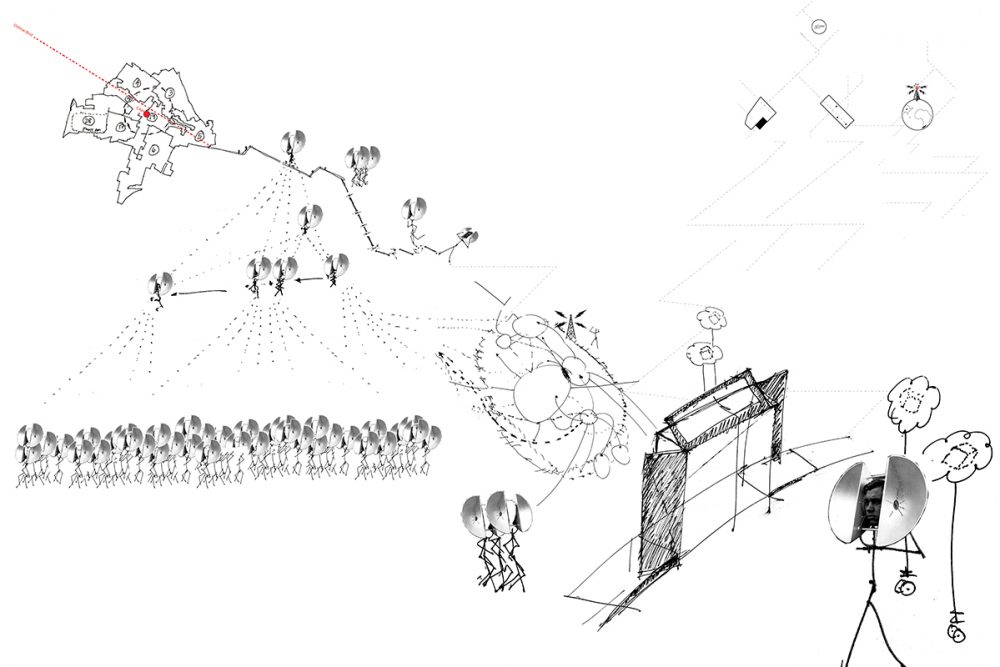
NOWs: Tool Shed with Eric Ellingsen
Sketch of Tool Shed. Courtesy the artist.
Tool ShedWalkshop series with Eric Ellingsen
Contemporary Art Museum St. Louis
3750 Washington Boulevard
St. Louis, MO 63108
Register here for the next walkshop on July 19th
During the summer of 2019, non-disciplinary artist Eric Ellingsen guides “walkshops” throughout the city. If, as urbanist and author Jane Jacobs asserts, we need eyes on the streets then we need ears on the streets, too. Participants in the first phase of the project—including members of the Samaritan United Methodist Church, Third Baptist Church, and other CAM neighbors—construct and wear hearing devices based on early 20th-century technologies to engage protocols of listening. Ellingsen and CAM staff guide walkshops to observe and collect sounds from the surrounding neighborhood, with musicians, poets, field scientists, and landscape architects. These field recordings are gathered, archived, and mixed into sound installations, creating aural portraits. Visitors can experience soundscapes of St. Louis neighborhoods in an acoustically designed tool shed in CAM’s courtyard throughout the summer.
Eric Ellingsen: Tool Shed is organized for the Contemporary Art Museum St. Louis by Wassan Al-Khudhairi, Chief Curator; Alex Almestad, Director of Learning and Engagement; and Misa Jeffereis, Assistant Curator.
The project is generously supported by the Divided City, an urban humanities initiative funded by the Andrew W. Mellon Foundation, a joint project of the Center for the Humanities and the Sam Fox School, College of Architecture and Urban Design at Washington University in St. Louis. Special thanks to project partners John Baugh, Neo Muyanga, and Casey O’Callaghan, and to KDHX.
First Walkshop. Photo by Virginia Harold
First Walkshop. Photo by Virginia Harold
Sketch of Tool Shed. Courtesy the artist.
Tool ShedWalkshop series with Eric Ellingsen
Contemporary Art Museum St. Louis
3750 Washington Boulevard
St. Louis, MO 63108
Register here for the next walkshop on July 19th
During the summer of 2019, non-disciplinary artist Eric Ellingsen guides “walkshops” throughout the city. If, as urbanist and author Jane Jacobs asserts, we need eyes on the streets then we need ears on the streets, too. Participants in the first phase of the project—including members of the Samaritan United Methodist Church, Third Baptist Church, and other CAM neighbors—construct and wear hearing devices based on early 20th-century technologies to engage protocols of listening. Ellingsen and CAM staff guide walkshops to observe and collect sounds from the surrounding neighborhood, with musicians, poets, field scientists, and landscape architects. These field recordings are gathered, archived, and mixed into sound installations, creating aural portraits. Visitors can experience soundscapes of St. Louis neighborhoods in an acoustically designed tool shed in CAM’s courtyard throughout the summer.
Eric Ellingsen: Tool Shed is organized for the Contemporary Art Museum St. Louis by Wassan Al-Khudhairi, Chief Curator; Alex Almestad, Director of Learning and Engagement; and Misa Jeffereis, Assistant Curator.
The project is generously supported by the Divided City, an urban humanities initiative funded by the Andrew W. Mellon Foundation, a joint project of the Center for the Humanities and the Sam Fox School, College of Architecture and Urban Design at Washington University in St. Louis. Special thanks to project partners John Baugh, Neo Muyanga, and Casey O’Callaghan, and to KDHX.
First Walkshop. Photo by Virginia Harold
First Walkshop. Photo by Virginia Harold
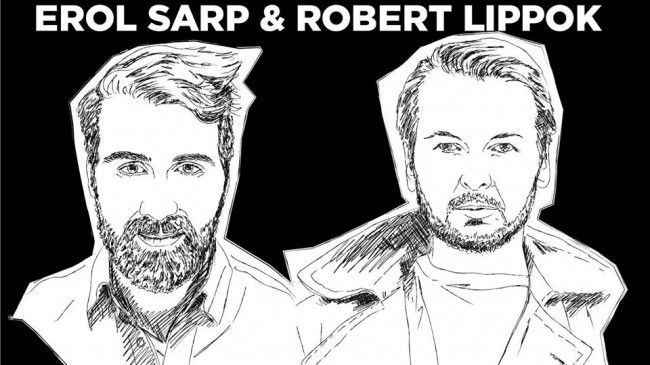
NOWs: Erol Sarp & Robert Lippok at XJAZZ Festival 2019
Erol Sarp & Robert Lippok at XJAZZ Festival 2019Concert
Emmauskirche
Lausitzer Platz 8a
10997 Berlin
Doors: 22:30
Stage: 23:00
As part of the dancefloor oriented electronic combo Grandbrothers Erol Sarp’s right to the heart piano chords move the masses on a regular basis and have led to international success. As an outstandingly gifted pianist who will explore the more experimental realms of electronic music with To Rococo Rot’s Robert Lippok who has already worked with numerous artists like Ludovico Einaudi and Barbara Morgenstern among many others.
Tickets and more here
Erol Sarp & Robert Lippok at XJAZZ Festival 2019Concert
Emmauskirche
Lausitzer Platz 8a
10997 Berlin
Doors: 22:30
Stage: 23:00
As part of the dancefloor oriented electronic combo Grandbrothers Erol Sarp’s right to the heart piano chords move the masses on a regular basis and have led to international success. As an outstandingly gifted pianist who will explore the more experimental realms of electronic music with To Rococo Rot’s Robert Lippok who has already worked with numerous artists like Ludovico Einaudi and Barbara Morgenstern among many others.
Tickets and more here
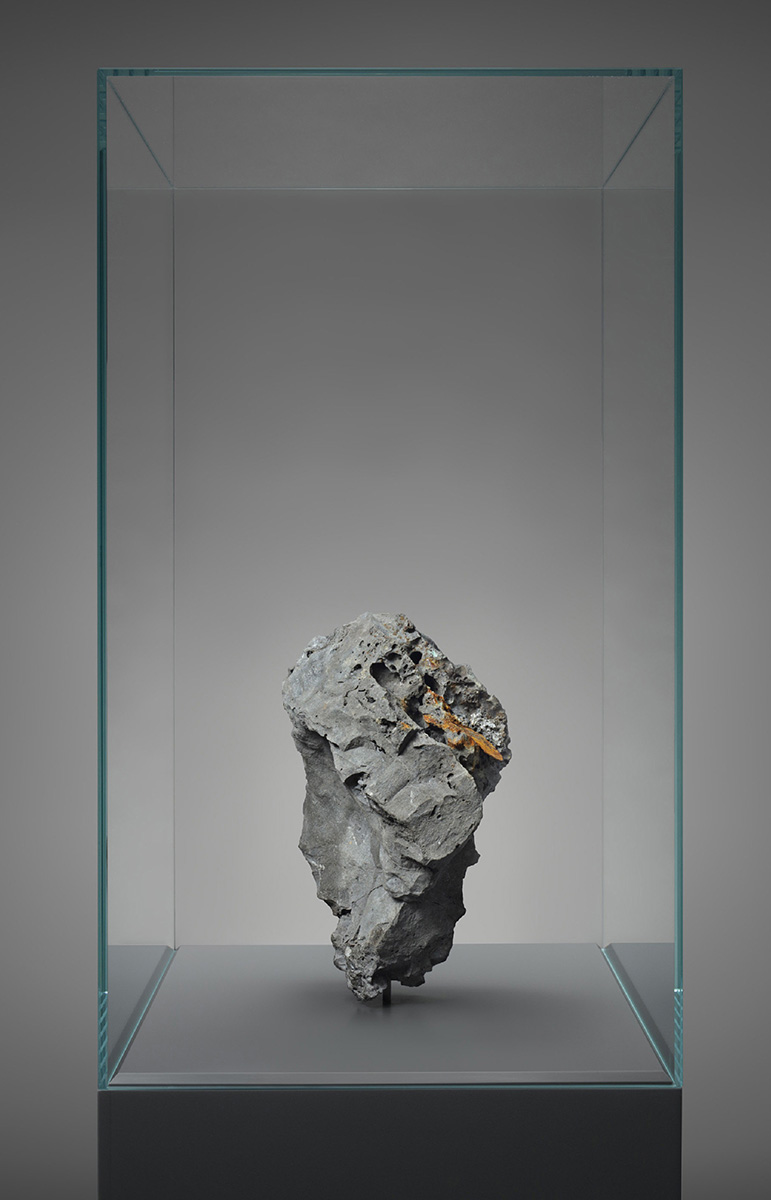
NOWs: Artists Need To Create On The Same Scale That Society Has The Capacity To Destroy: Mare Nostrum
Artists Need To Create On The Same Scale That Society Has The Capacity To Destroy: Mare NostrumGroup Exhibition with Julian Charrière et al
Chiesa delle Penitenti
Fondamenta Cannaregio 910
30121 Venezia
Italy
Opening
8 May 8, 5pm – 6pm
Poetry Reading with Milli Graffi, Luigi Ballerini, John Giorno, Vincent Katz, and Mónica de la Torre
8 May, 6pm – 8pm
Cooking Performance with Rirkrit Tiravanija and Tomas Vu
11 & 12 May, 5pm
A two-day discussion amongst scientists, artists, and philosophers on climate change and the Mediterranean, featuring Lauren Bon, Justin Brice Guariglia, Emanuele Coccia (Ecole des Hautes Etudes en Sciences Sociales, Paris), Jaroslav Mysiak (Euro-Mediterranean Center on Climate Changes, Venice), and Enrica De Cian (Director, Master of Research in Science and Management of Climate Change, Ca’ Foscari University, Venice), among others.
Inspired by Lauren Bon’s text-based neon work on view in the courtyard—from which it borrows its title—this exhibition, together with its accompanying public programming 1001 Stories for Survival, addresses the environmental crisis in the age of climate change, with a focus on the Mediterranean Sea. The show brings together 73 artists of different generations and cultural backgrounds whose selected works, in a wide range of media, invite critical awareness on the fragility of nature and human life while poetically invoking the regeneration of living systems. On view are works by Shoja Azari & Shahram Karimi, Lauren Bon, Julian Charrière, Newton Harrison, Wolfgang Laib, Maya Lin, Shirin Neshat, Amy Sillman, Kiki Smith, Rirkrit Tiravanija, Tomas Vu, Jack Witten, and Lisa Yuskavage, among many others that meditate on themes such as ephemerality, transformation, and interconnectedness. The exhibition and the programing are co-curated by Phong Bui and Francesca Pietropaolo.
Art as a Social Activity
Present with its staff during the course of the exhibition, the Brooklyn Rail—a radical and free publication based in New York City—recreates its Social Environment in Venice. The inspiration for our Social Environment comes from an understanding of our work as a creative act, which produces the monthly journal, public forums, and informal gatherings that are a platform for the diverse voices of our community. In Venice, we will produce our monthly issues in addition to a special issue of the River Rail, a publication documenting our exhibition and its interdisciplinary public programming bringing together artists, scientists, scholars, poets, writers, and musicians focusing on environment and climate change.
Artists Need To Create On The Same Scale That Society Has The Capacity To Destroy: Mare NostrumGroup Exhibition with Julian Charrière et al
Chiesa delle Penitenti
Fondamenta Cannaregio 910
30121 Venezia
Italy
Opening
8 May 8, 5pm – 6pm
Poetry Reading with Milli Graffi, Luigi Ballerini, John Giorno, Vincent Katz, and Mónica de la Torre
8 May, 6pm – 8pm
Cooking Performance with Rirkrit Tiravanija and Tomas Vu
11 & 12 May, 5pm
A two-day discussion amongst scientists, artists, and philosophers on climate change and the Mediterranean, featuring Lauren Bon, Justin Brice Guariglia, Emanuele Coccia (Ecole des Hautes Etudes en Sciences Sociales, Paris), Jaroslav Mysiak (Euro-Mediterranean Center on Climate Changes, Venice), and Enrica De Cian (Director, Master of Research in Science and Management of Climate Change, Ca’ Foscari University, Venice), among others.
Inspired by Lauren Bon’s text-based neon work on view in the courtyard—from which it borrows its title—this exhibition, together with its accompanying public programming 1001 Stories for Survival, addresses the environmental crisis in the age of climate change, with a focus on the Mediterranean Sea. The show brings together 73 artists of different generations and cultural backgrounds whose selected works, in a wide range of media, invite critical awareness on the fragility of nature and human life while poetically invoking the regeneration of living systems. On view are works by Shoja Azari & Shahram Karimi, Lauren Bon, Julian Charrière, Newton Harrison, Wolfgang Laib, Maya Lin, Shirin Neshat, Amy Sillman, Kiki Smith, Rirkrit Tiravanija, Tomas Vu, Jack Witten, and Lisa Yuskavage, among many others that meditate on themes such as ephemerality, transformation, and interconnectedness. The exhibition and the programing are co-curated by Phong Bui and Francesca Pietropaolo.
Art as a Social Activity
Present with its staff during the course of the exhibition, the Brooklyn Rail—a radical and free publication based in New York City—recreates its Social Environment in Venice. The inspiration for our Social Environment comes from an understanding of our work as a creative act, which produces the monthly journal, public forums, and informal gatherings that are a platform for the diverse voices of our community. In Venice, we will produce our monthly issues in addition to a special issue of the River Rail, a publication documenting our exhibition and its interdisciplinary public programming bringing together artists, scientists, scholars, poets, writers, and musicians focusing on environment and climate change.

NOWs: reprint. Change through Reproduction
reprint. Change through ReproductionGroup exhibition
Gesellschaft für zeitgenössische Kunst Osnabrück e. V.
Kunstraum hase29
Hasestr. 29/30
49074 Osnabrück
Opening: 9 May, 7 pm
With: Manfred Blieffert, Nick Ervinck, Jonas Fleckenstein, Kati Gausmann, Birgit Kannengießer, Lola Läufer, Jan Neukirchen, Sophia Pompéry, Hannah Regenberg, David Semper, Nasan Tur, Wiebke Wilms
Reproducing things not only means reproducing them, but also opens up the question of how the reproduced is changed by the process of reproduction? Does what is reproduced influence our old idea of a unique original? In today’s digital world, the originals no longer exist, but artificial artefacts, complex ideas and digital images that at best refer back to what has already been reproduced.
The change that has been introduced since the beginnings of reproduction processes (19th century: Photography; 20th century: Film / video; 21st century: 3-D printing) is likely to continue. The old idea of the original masterpiece will not dissolve, but will change fundamentally – reproductions are images that reproduce their own creation process in a refined and now highly technical way, thereby relativizing the earlier claim of art to produce unique originals. Reproduction means today: to take up old pictures and new procedures in order to transform them into new pictorial realities with applied reproduction techniques. Everything that can be repeated and, above all, digitalized today can be reproduced at will.
This exhibition presents works by artists who take a given “model” (a typographic detail, a mesh pattern, a napkin ornament, a stamp pad) as their starting point and create new variations. The result is always a result between a changed original pattern (original) and a newly documented form of reproduction, which gradually emerges through an ever-new reproduction.
reprint. Wandel durch ReproduktionGruppenausstellung
Gesellschaft für zeitgenössische Kunst Osnabrück e. V.
Kunstraum hase29
Hasestr. 29/30
49074 Osnabrück
Eröffnung: 9. Mai, 19 h
Mit: Manfred Blieffert, Nick Ervinck, Jonas Fleckenstein, Kati Gausmann, Birgit Kannengießer, Lola Läufer, Jan Neukirchen, Sophia Pompéry, Hannah Regenberg, David Semper, Nasan Tur, Wiebke Wilms
Dinge zu reproduzieren, bedeutet nicht nur, diese zu vervielfältigen, sondern eröffnet auch die Frage, wie das Reproduzierte durch den Vorgang der Reproduktion verändert wird? Beeinflusst das jeweils Reproduzierte unsere alte Vorstellung von einem einmaligen Original? In der heutigen digitalen Welt existieren längst nicht mehr die Originale, sondern künstliche Artefakte, komplexe Ideen und digitale Bilder, die bestenfalls auf bereits früher Reproduziertes zurückverweisen.
Der Wandel, der seit den Anfängen von Reproduktionsverfahren eingeleitet wurde (19. Jahrhundert: Fotografie; 20. Jahrhundert: Film / Video; 21. Jahrhundert: 3-D- Druck), wird sich wahrscheinlich noch fortsetzen. Die alte Idee des originalen Meisterwerks wird sich dabei nicht auflösen, aber doch grundlegend verändern – Reproduktionen sind Bilder, die auf raffinierte und inzwischen hochgradig technische Weise ihren eigenen Entstehungsprozess reproduzieren und dabei den früheren Anspruch der Kunst, einzigartige Originale zu produzieren, relativieren.
Reproduzieren heißt also heute: Alte Bilder und neue Verfahren aufzugreifen, um sie mit angewandten Reproduktionstechniken in neue Bildwirklichkeiten zu transformieren. Alles was wiederholbar und vor allem wie heute digitalisierbar ist, lässt sich beliebig vervielfältigen.
Diese Ausstellung präsentiert Werke von Künstlerinnen und Künstlern, die von einem gegebenen „Vorbild“ (einer typographischen Detail, einem Maschenmuster, einem Serviettenornament, einem Stempelkissen) ausgehen und neuartige Varianten erzeugen. Das Resultat ist jeweils ein Ergebnis zwischen einem veränderten Ursprungsmuster (Original) und einer jeweils neu dokumentierten Form von Reproduktion, die durch ein immer neues Reproduzieren allmählich entsteht.
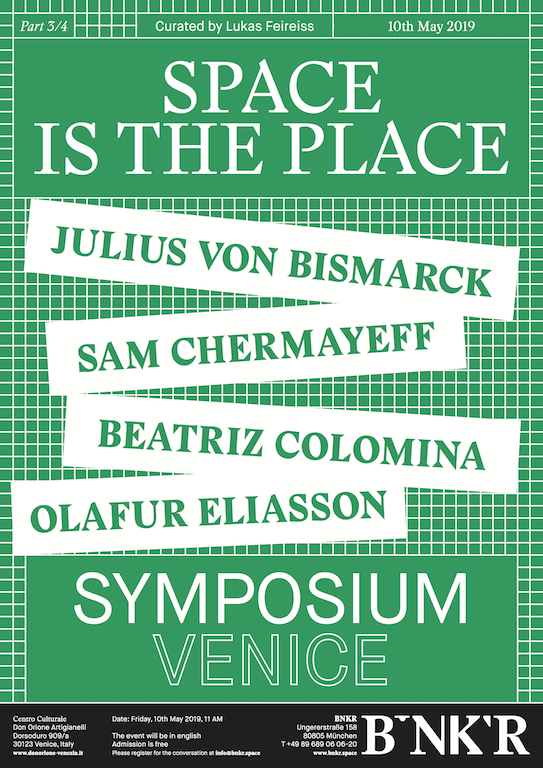
NOWs: SPACE IS THE PLACE (3/4)
Space is the Place (3/4)Symposium with Beatriz Colomina, Julius von Bismarck, Sam Chermayeff, Olafur Eliasson, Lukas Feireiss
Centro Culturale Don Orione Artigianelli
Dorsoduro 909/a
30123 Venice
Close to Ponte dell’Academia
10 May, 2019, 11am
Under the title SPACE IS THE PLACE the current exhibition cycle 2018 – 2019 at BNKR conceived by Berlin-based curator Lukas Feireiss is dedicated to the artistic exploration of space.
Another highlight of the 2018/2019 exhibition cycle is an international symposium of the same name during the opening days of the 58th Venice Art Biennale on 10th May 2019. Together with curator and architectural theorist Beatriz Colomina, artists Olafur Eliasson and Julius von Bismarck, as well as architect Sam Chermayeff, Lukas Feireiss explores the experience, design, reflection and imagination of space. Common to these positions is a multi-layered approach to space that addresses, questions and challenges the senses and sensations in very different ways.
Space is the Place (3/4)Symposium mit Beatriz Colomina, Julius von Bismarck, Sam Chermayeff, Olafur Eliasson, Lukas Feireiss
Centro Culturale Don Orione Artigianelli
Dorsoduro 909/a
30123 Venice
Nähe Ponte dell’Academia
10. Mai 2019, 11h
Im Rahmen des von Lukas Feireiss kuratierten BNKR-Ausstellungsturnus 2018/2019 SPACE IS THE PLACE widmen sich, neben Einzel- und Gruppenausstellungen, zahlreiche öffentliche Veranstaltungen der künstlerischen Wahrnehmung und Aneignung von Raum und Architektur. Unter Berücksichtigung theoretisch wie praktisch fundierter Disziplinen erfolgt dabei eine Art künstlerischer Spurensicherung durch welche sich der uns umgebende Raum als Gegenstand der Untersuchung auf vielfältige Weise erschließt.
Ein weiterer Höhepunkt des Ausstellungsturnus 2018/2019 ist ein gleichnamiges internationales Symposium während der Eröffnungstage der 58. Kunstbiennale Venedig im Mai 2019. Gemeinsam mit der Kuratorin und Architekturtheoretikerin Beatriz Colomina, den Künstlern Olafur Eliasson und Julius von Bismarck sowie dem Architekten Sam Chermayeff erforscht Lukas Feireiss das Erleben, Gestalten, Reflektieren und Imaginieren von Raum. Gemein ist den inhaltlichen Positionen ein vielschichtiger Zugang zum Raum, welcher die Sinne und Empfindungen auf ganz unterschiedliche Weise anspricht, hinterfragt und herausfordert. Das Symposium findet in englischer Sprache statt.
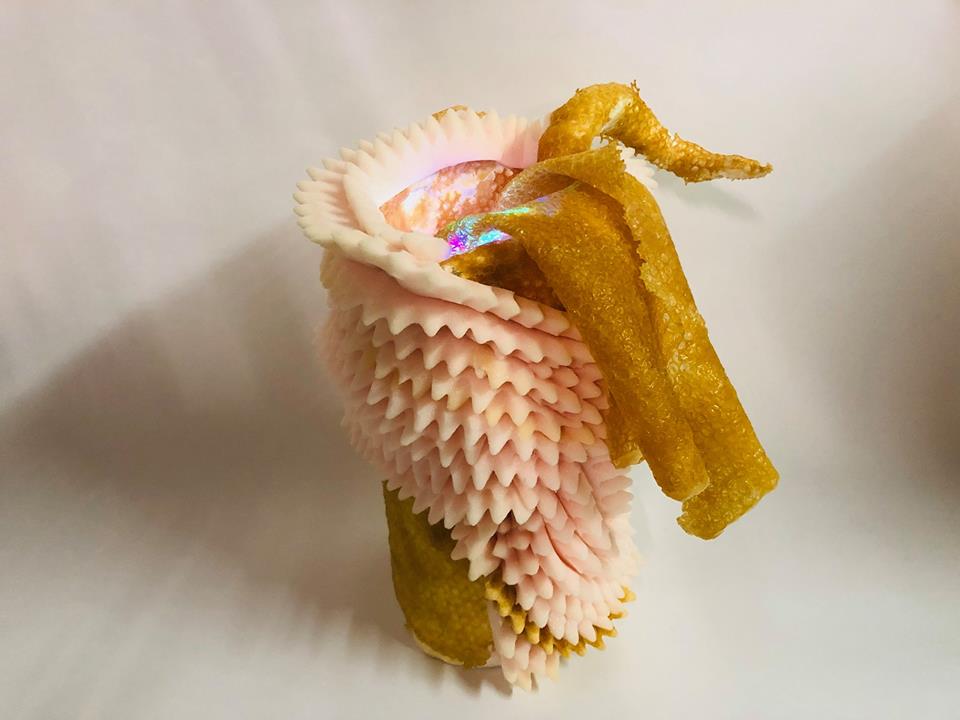
NOWs: Unruhig bleiben / Staying with the trouble
Theatre play by Donna Haraway
Zitadelle, Bastion Kronprinz
Am Juliusturm 64
13599 Berlin
Premiere 8 May, 7pm
How can we reshape living together on a damaged planet? From the early 21st century, the communities of “compostists” committed themselves to radically reducing the world’s human population and developing countless practices of cross-species environmental justice. STAYING WITH THE TROUBLE follows five generations of a symbiosis between the human child Camille and monarch butterflies between the year 2025 and 2425. Much unrest, much kinship, to carry on.
Directed by Carlos Manuel
Set design / Installation / Video: Anne Duk Hee Jordan
Sound Objects / Composition: Mathias Hinke
Costumes: Verena Hay
Performers: Fernanda Farah, Franziska Ritter, Helmut Geffke and Josep Caballero Garcia
14 years and older. Registration at: schreiner@jtw-spandau.de
Further performances:Do 09. Mai, 19:00Sa 18. Mai, 19:00So 19. Mai, 16:00Mo 20. Mai, 11:00Do 23. Mai, 19:00Fr 24. Mai, 19:00Sa 25. Mai, 19:00 (mit Audio-Deskription und Gebärden-Übersetzung (Bühnenführung um 18Uhr)Mo 27. Mai, 11:00Mi 29. Mai, 19:00 (im Rahmen des PAF, Performing Art Festival Berlin)
The installation by Anne Duk Hee Jordan is on view daily from 09 until 29 May (11am – 5pm)
Das Performing Arts Festival Berlin 2019 wird veranstaltet vom LAFT Berlin in Kooperation mit den Spielstätten Ballhaus Ost, Hau Hebbel am Ufer, Sophiensaele und Theaterdiscounter und wird gefördert durch das Land Berlin – Senatsverwaltung für Kultur und Europa.
Gefördert vom Senat Berlin
Eine Kooperation des Kulturamts Spandau und der JTW Spandau
Theatre play by Donna Haraway
Zitadelle, Bastion Kronprinz
Am Juliusturm 64
13599 Berlin
Premiere 8. Mai, 19:00
Wie können wir das Zusammenleben auf einem beschädigten Planeten neu gestalten?
Die Gemeinschaften der „Kompostisten“ bekannten sich ab dem frühen 21. Jahrhundert dazu,
die menschliche Weltbevölkerung radikal zu verringern und unzählige Praktiken artenübergreifender Umweltgerechtigkeit zu entwickeln. UNRUHIG BLEIBEN verfolgt fünf Generationen einer Symbiose zwischen dem Menschenkind Camille und Monarchfaltern und begleitet sie zwischen der Geburt von Camille 1 im Jahr 2025 und dem Tod von Camille 5 im Jahr 2425. Viel Unruhe, viel Verwandtschaft, um weiterzumachen.
Regie: Carlos Manuel
Rauminstallation / Bühnenbild: Anne Duk Hee Jordan
Musik: Mathias Hinke
Kostüme: Verena Hay
Darsteller*innen: Fernanda Farah, Franziska Ritter, Helmut Geffke und Josep Caballero Garcia
Ab 14 Jahren. Um Anmeldung wird gebeten: schreiner@jtw-spandau.de
Weitere Vorstellungen:Do 09. Mai, 19:00Sa 18. Mai, 19:00So 19. Mai, 16:00Mo 20. Mai, 11:00Do 23. Mai, 19:00Fr 24. Mai, 19:00Sa 25. Mai, 19:00 (mit Audio-Deskription und Gebärden-Übersetzung (Bühnenführung um 18Uhr)Mo 27. Mai, 11:00Mi 29. Mai, 19:00 (im Rahmen des PAF, Performing Art Festival Berlin)
Die Installation von Anne Duk Hee Jordan ist vom 09.05. bis 29.05. zwischen 11h und 17h zu sehen.
Das Performing Arts Festival Berlin 2019 wird veranstaltet vom LAFT Berlin in Kooperation mit den Spielstätten Ballhaus Ost, Hau Hebbel am Ufer, Sophiensaele und Theaterdiscounter und wird gefördert durch das Land Berlin – Senatsverwaltung für Kultur und Europa.
Gefördert vom Senat Berlin
Eine Kooperation des Kulturamts Spandau und der JTW Spandau
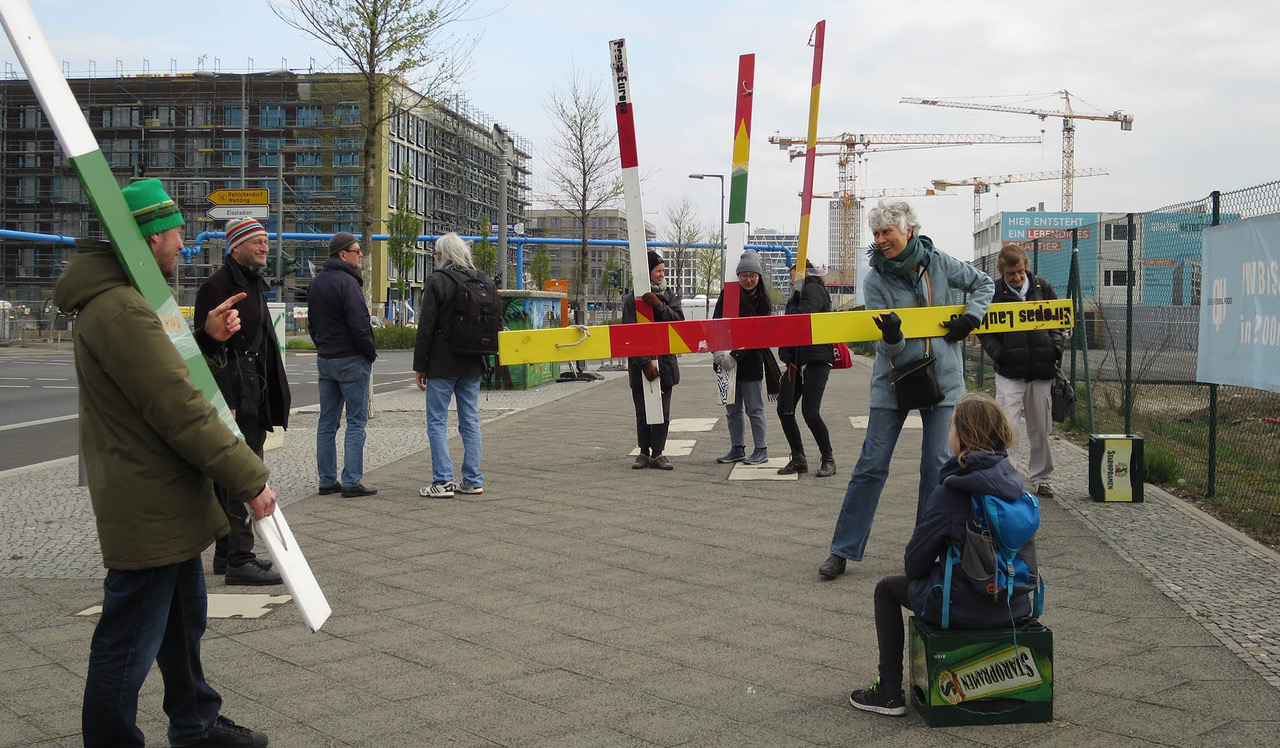
NOWs: Am Rand von EuropaCity
Am Rand von EuropaCityEine künstlerische Veranstaltungsreihe von Yves Mettler mit Alexis Hyman Wolff und Scriptings/Wedding
28. April, 15h
Tegelerstraße 6
Hinterhof
Aufgang B
Klingel Straub/Jackson
Liebe Nachbar*innen und Interessierte!
Wir hatten ein tolles Treffen mit der Gruppe Intervention und Spaziergang und freuen uns über die Entwicklungen. Im Anhang ein paar Bilder – Danke an Linda und Jürgen. Wir treffen uns erneut am 28. April um 15h in der Tegelerstrasse 6, Hinterhof, Aufgang B, Klingel Straub/Jackson. Bei diesem Treffen wollen wir den Parcours, die Stationen und unsere weiteren Aktionen festlegen.
Es wäre ideal für die Aktion am 26. Mai, wenn wir etwa 50 Leute zusammmen trommeln könnten. Wenn jede_r von Euch noch weitere Nachbar*innen und Freund*innen ansprechen könnte, wäre das toll – danke im Voraus.Treffpunkt am Sonntag, den 26. Mai ist 14h im Sellerpark.Die Abschlussveranstaltung wird mit kleiner Party ab 18 Uhr am Klara-Franke-Platz stattfinden.
Die Postergruppe wird sich noch einmal treffen, um die finale Auswahl der Poster zu machen.
Mit besten Grüßen !
Gilles Aubry, Alexis Hyman Wolff und Yves Mettler
Am Rand von EuropaCity : Eine künstlerische Veranstaltungsreihe zur Europacity Berlin ist ein Projekt von Yves Mettler mit Alexis Hyman Wolff und Scriptings/Wedding. Es wird von der Berliner Senatsverwaltung für Kultur und Europa gefördert.
Am Rand von EuropaCityEine künstlerische Veranstaltungsreihe von Yves Mettler mit Alexis Hyman Wolff und Scriptings/Wedding
28. April, 15h
Tegelerstraße 6
Hinterhof
Aufgang B
Klingel Straub/Jackson
Liebe Nachbar*innen und Interessierte!
Wir hatten ein tolles Treffen mit der Gruppe Intervention und Spaziergang und freuen uns über die Entwicklungen. Im Anhang ein paar Bilder – Danke an Linda und Jürgen. Wir treffen uns erneut am 28. April um 15h in der Tegelerstrasse 6, Hinterhof, Aufgang B, Klingel Straub/Jackson. Bei diesem Treffen wollen wir den Parcours, die Stationen und unsere weiteren Aktionen festlegen.
Es wäre ideal für die Aktion am 26. Mai, wenn wir etwa 50 Leute zusammmen trommeln könnten. Wenn jede_r von Euch noch weitere Nachbar*innen und Freund*innen ansprechen könnte, wäre das toll – danke im Voraus.Treffpunkt am Sonntag, den 26. Mai ist 14h im Sellerpark.Die Abschlussveranstaltung wird mit kleiner Party ab 18 Uhr am Klara-Franke-Platz stattfinden.
Die Postergruppe wird sich noch einmal treffen, um die finale Auswahl der Poster zu machen.
Mit besten Grüßen !
Gilles Aubry, Alexis Hyman Wolff und Yves Mettler
Am Rand von EuropaCity : Eine künstlerische Veranstaltungsreihe zur Europacity Berlin ist ein Projekt von Yves Mettler mit Alexis Hyman Wolff und Scriptings/Wedding. Es wird von der Berliner Senatsverwaltung für Kultur und Europa gefördert.
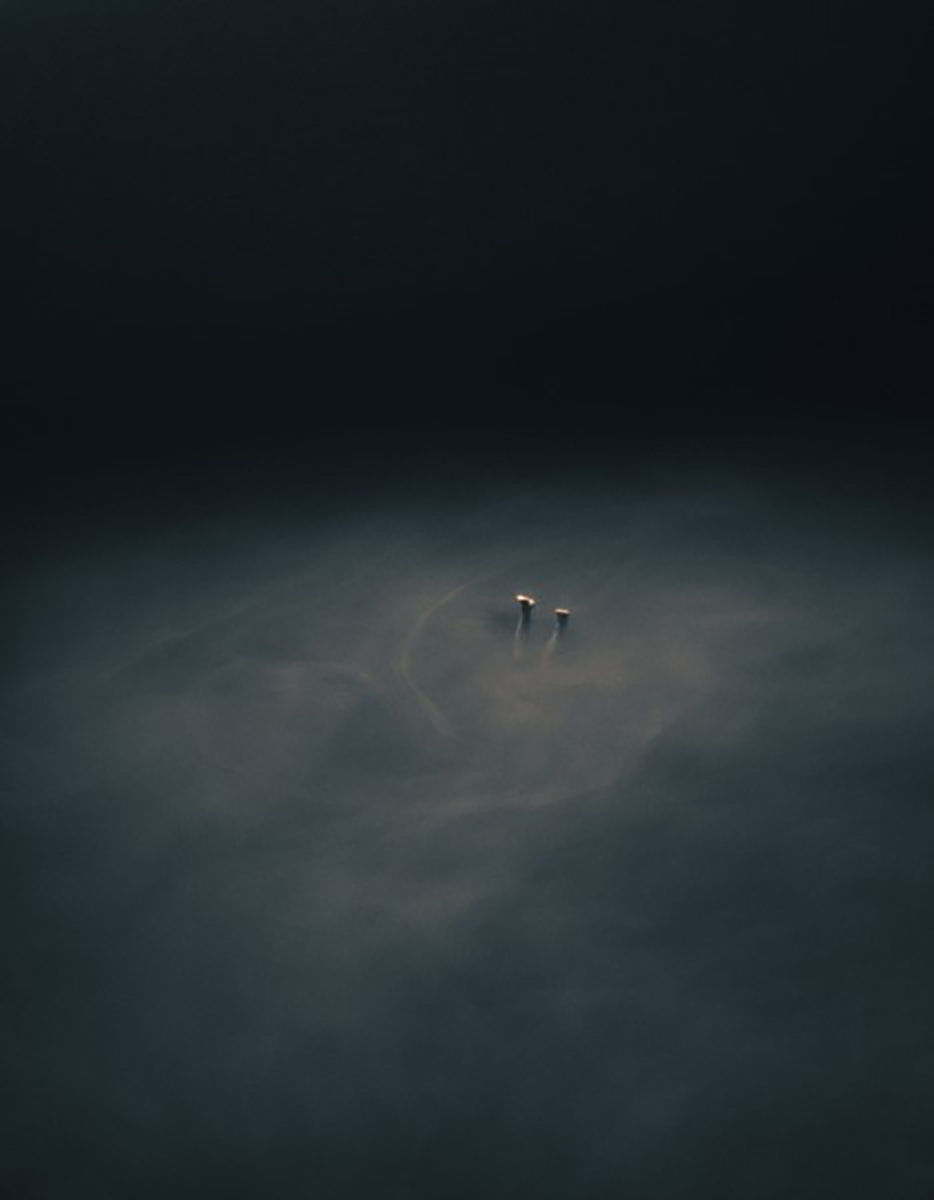
NOWs: Silent World by Julian Charrière
Silent WorldSolo exhibition
DITTRICH & SCHLECHTRIEM
Linienstraße 23
10178 Berlin
Opening: 26 April, 6pm
DITTRICH & SCHLECHTRIEM is pleased to present our fourth solo exhibition with Julian Charrière, titled Silent World opening during GALLERY WEEKEND BERLIN 2019. Charrière (b. 1987, Morges, Switzerland) is a Swiss-French artist based in Berlin whose work bridges the realms of environmental science and cultural history. Through performance, sculpture, photography and video, his projects often stem from fieldwork in remote locations with acute geophysical identities – such as volcanoes, ice-fields and radioactive sites.
Silent World is a meditation on the undersea realm as an oneiric atmosphere: a space that is central to our imagination precisely because of its unfamiliarity and indistinct aspects. Marshalling photography and video, the exhibition stages encounters between human outlines and their visible dissolution. The works include images of free-divers captured inside an aquatic cave in Mexico’s Cenotes, half of their bodies obscured as they penetrate what is known as a chemocline, entering an opaque layer of bottom water—a soup of sulfurous bacteria. Through the iconographic unconscious of these images, the divers’ descent into a literal abyss conjures up a sea of metaphorical allusion. Despite this profusion, however, it is a silent world—as no individual can comprehensively speak for it. Yet that does not stop us from trying. Charrière’s exhibition borrows its title from an early underwater film by Jacques Cousteau, the first of its kind to bring moving images from the ocean depths to screen. Since this important opening-up of the visual imaginary of the undersea realm, consolidated by today’s high-definition broadcast documentaries, it is tempting to think that we (including those who have never practiced scuba) know this place. The fact is, however, that the ocean is largely still mystery. As Charrière’s new work seems to suggest, deeper engagement with this space may yet reorder perceptions of who we are.
Silent World debuts a series of photographs of free divers disappearing into liquid obscurity. Naked and, in pictorial terms, dissolving, his figures physically enter another layer of the ocean imaginary. These are lakes and rivers within oceans; unique micro-biological universes. Contributing to a picture of the oceanic system that has grown significantly more complex in recent decades, such worlds within worlds are relatively recent discoveries. As we come to better understand the sea, domains from evolutionary theory through to climate science are being revolutionized. Sliding into this previously silent (unseen and unthought) realm, Charrière’s free-divers seem caught in some kind of dance; a graceful fall. From where—and to what?
Accompanying the photographs, a ceiling-mounted projector beams video onto a screen lying on the gallery floor, from which vapor emanates: footage of the sun’s rays breaking through the water’s surface, streaming down from above. During filming the camera was positioned looking skyward, towards the light. In terms of spatial orientation, the installation proposes an inverse scenario—whereby the sun occupies a submerged position, shining up from the deep. The conceptual gravity of the gesture is heightened by this reversal. As well as turning down into up, and up into down, fire appears to be present in water. Moreover, the apparently falling divers (in the photographs) may yet be ascending; and the audience, according to this logic, not upright but flipped. Everything has undergone a sea-change.
The ocean is an ancient well of metaphor that has served religious thought and philosophy from the beginning of recorded history. Commonly, it represents an ungraspable magnitude; an infinite. This mystical idea delivers colonial hubris—for how can one expropriate what is seemingly unlimited? How can depths, unfathomable in their vastness, be exhausted; and is there not always another fish in the sea? We are only now being disabused of such ideas. The ocean’s monsters are our own, not animals; and its atmospheres are ours, too. Charrière’s images complement the revelations being developed by the oceanographic and biological sciences. Proposing a deep dive into real things, his exhibition reminds us that this sea is the furthest thing from a metaphysical ideal.
The above is a press text from Nadim Samman. The exhibition catalogue published by the gallery features an essay from Samman titled The Diver, and will be available at the gallery in May.
Silent WorldEinzelausstellung
DITTRICH & SCHLECHTRIEM
Linienstraße 23
10178 Berlin
Eröffnung: 26. April, 18 h
DITTRICH & SCHLECHTRIEM freuen sich, die vierte Einzelausstellung des Künstlers Julian Charrière in unserer Galerie zu präsentieren. Sie trägt den Titel Silent World und eröffnet zum GALLERY WEEKEND BERLIN 2019. Der schweizerisch-französische Künstler Julian Charrière (geb. Morges, Schweiz, 1987), der in Berlin lebt und arbeitet, schafft Werke, die Brücken zwischen Umweltwissenschaft und Kulturgeschichte schlagen. Seine Performances, Skulpturen, Fotografien und Videos umfassenden Projekte entstehen oft aus Feldforschungen an entlegenen Schauplätzen mit besonderen geophysikalischen Profilen wie Vulkanen,
Eisfeldern und radioaktiv verseuchten Orten.
Silent World widmet sich der Unterwasserwelt als einem Reich der Träume: einem Raum, der in unserem Imaginären gerade deshalb einen herausgehobenen Platz einnimmt, weil er so fremdartig und nur schemenhaft erkennbar ist. Mittels Fotografie und Video inszeniert die Ausstellung Begegnungen zwischen den Umrissen menschlicher Körper und ihrer augenfälligen Auflösung. Mehrere Bilder zeigen Freitaucher in einer Cenote, einer mit Wasser gefüllten Höhle in Mexiko, in dem Moment, in dem sie eine sogenannte Chemokline durchdringen; ihre Körper verschwinden zur Hälfte in einer Suppe von Schwefelbakterien. In den Aufnahmen wird ein ikonografisches Unbewusstes wach, das den Tauchgang in einen wahrhaften Höllenschlund zu einem höchst anspielungsreichen Abenteuer werden lässt. Gleichzeitig ist die Welt, die sie zeigen, schweigend, denn über sie zu sprechen übersteigt das Vermögen jedes einzelnen Zeugen. Was nicht heißt, dass Menschen es nicht versucht hätten. Der Titel von Charrières Ausstellung ist einem frühen Unterwasserfilm von Jacques Cousteau entliehen, mit dem bewegte Bilder aus den Tiefen des Ozeans die Kinoleinwände erreichten. Damit war die Tür zur Tiefsee als Ort der Imagination aufgestoßen, die erste Bergung eines Schatzes, den heute Fernsehdokumentationen in hoher Auflösung vor uns ausbreiten, und so sind sogar Zuschauer, die noch nie auch nur einen Tauchkurs gemacht haben, versucht zu meinen, dieser Ort sei ihnen vertraut. In Wirklichkeit haben die Ozeane viele ihrer Geheimnisse bewahrt. Eine eingehendere Auseinandersetzung mit diesem Raum, so legen Charrières neue Arbeiten nahe, könnte auch unsere eigene Identität in ein ganz neues Licht rücken.
In Silent World präsentiert der Künstler eine neue fotografische Serie: Freitaucher, die sich im flüssigen Halbdunkel verlieren. Ihre nackten und, im Bildsinn gesprochen, verschwommenen Figuren dringen in eine neue Tiefenschicht der ozeanischen Vorstellungswelt vor – Seen und Flüsse innerhalb der Meere; einzigartige mikrobiologische Kosmen. Als Beitrag zum in den letzten Jahrzehnten komplexer gewordenen Gesamtbild des ozeanischen Systems sind solche Welten innerhalb von Welten eine recht neue Entdeckung. Unser wachsendes Wissen über die Ozeane hat eine Revolution in zahlreichen Feldern, von der Theorie der Evolution bis hin zur Klimaforschung, ausgelöst. An der Schwelle dieses bisher schweigenden (ungesehenen und ungedachten) Reichs verharren Charrières Taucher in beinahe tänzerischen Posen. Oder fangen die Bilder sie in einem anmutigen Sturz in die Tiefe ein? Woher kommen sie, wohin führt ihr Weg?
Begleitet werden die Fotografien von Videobildern, die ein Projektor unter der Decke auf einen Bildschirm wirft, von dem Dunst aufsteigt: die Strahlen der Sonne, die, durch die Wasseroberfläche gebrochen, in die Tiefe dringen. Für die Aufnahmen wurde die Kamera himmelwärts dem Licht entgegen gerichtet. In der Installation wird diese räumliche Orientierung genau umgekehrt – die Sonne, so scheint es, ist in der Tiefe versunken und leuchtet aus ihr hervor. Die Verkehrung unterstreicht den großen konzeptuellen Ernst der Geste. Unten wird oben, oben wird unten, ein Feuer scheint in der kalten Tiefe zu brennen. Und die scheinbar hinabstürzenden Taucher (in den Fotografien) steigen vielleicht in Wirklichkeit doch auf. Nach dieser Logik jedenfalls ist es am Ende womöglich der Betrachter selbst, der auf dem Kopf steht. Alles ist im Umbruch.
Das Meer ist eine uralte Quelle von Metaphern, deren sich religiöses und philosophisches Denken seit grauer Vorzeit bedient haben. Gemeinhin steht es für eine unfassliche Größe, ein Unendliches. Aus solcher Mystik erwächst koloniale Hybris – denn wie kann man sich aneignen, was endlos scheint? Wie können unermessliche und unergründliche Tiefen ausgeschöpft werden; und sind die Fische in der See nicht ohne Zahl? Wir beginnen zu begreifen, dass wir von dieser Vorstellung Abschied nehmen müssen. Die Monstren des Ozeans sind die unseren, nicht Tiere; auch seine Atmosphären bringen wir mit. Die neuen Einsichten der Ozeanografie und Biologie ergänzen Charrières Bilder, indem sie uns auf einen Tauchgang in die Tiefen der wahren Dinge mitnehmen, der uns daran erinnert, dass die See durchaus kein metaphysisches Ideal ist.
Der oben stehende Pressetext stammt von Nadia Samman. Ein Essay von Samman mit dem Titel Der Taucher wird in dem von der Galerie publizierten Ausstellungskatalog erscheinen, der ab Mai in der Galerie erhältlich sein wird.
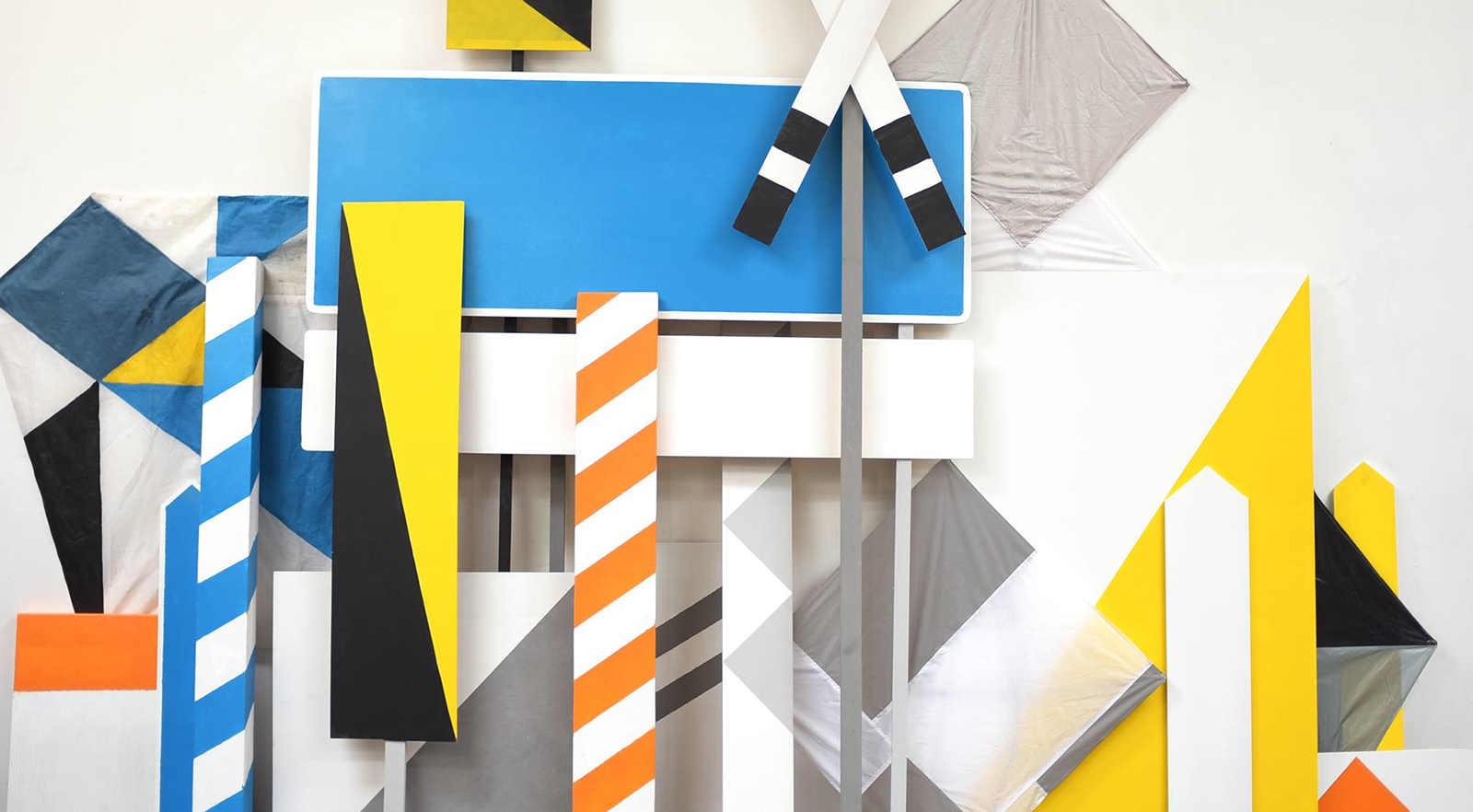
NOWs: Auf der Grenze
Auf der GrenzeSolo exhibition by Raul Walch
St.-Matthäus-Kirche
Matthäikirchplatz 1
10785 Berlin
Eröffnung: 25. April 2019, 19:00
Grenzen haben Konjunktur. Seit sich Europa mit einer steigenden Zahl von Schutzsuchenden konfrontiert sieht, werden die Rufe nach „sicheren Außengrenzen“ wieder lauter. Doch was bedeuten Außengrenzen für die europäische Idee? Und was bedeuten sie für Menschen, die eine Zukunft in Europa suchen? Der Berliner Künstler Raul Walch hat sich dreißig Jahre nach dem Berliner Mauerfall auf den Weg an die Ränder Europas gemacht, um an den Außengrenzen nach den Wurzeln Europas zu suchen. Im Kontext seiner künstlerischen Forschung entstanden Fotografien, Stoff- und Flugobjekte, die sich im Kirchenraum der St. Matthäus-Kirche zu einem raumgreifenden Mobile verdichten: Der Balanceakt Europa, die vielteilige Identität eines Kontinents als bewegliche Mindmap über den Köpfen der Kirchenbesucher. Der Kirchenraum, selbst Grenzort zwischen dem Sichtbaren und dem Unsichtbaren, dem Profanen und dem Heiligen, zwischen Kunst und Kirche, wird zum Dreh- und Angelpunkt der Frage nach einem Zusammenleben der Vielen im Gleichgewicht.
Begleitprogramm zur Ausstellung:
28.04., 12 Uhr | Matinée und Artist Talk am Gallery Weekend
24.05., 19 Uhr | Diskussion „Über Grenzen. Künstlerische Perspektiven auf Europa“ am „Tag der Nachbarn“ mit u.a. Lutz Henke, Kurator, Rebecca Harms, MdEP, dem Journalisten Dr. Paul Ingendaay und Raul Walch
Auf der GrenzeEinzelausstellung von Raul Walch
St.-Matthäus-Kirche
Matthäikirchplatz 1
10785 Berlin
Eröffnung: 25. April 2019, 19:00
Grenzen haben Konjunktur. Seit sich Europa mit einer steigenden Zahl von Schutzsuchenden konfrontiert sieht, werden die Rufe nach „sicheren Außengrenzen“ wieder lauter. Doch was bedeuten Außengrenzen für die europäische Idee? Und was bedeuten sie für Menschen, die eine Zukunft in Europa suchen? Der Berliner Künstler Raul Walch hat sich dreißig Jahre nach dem Berliner Mauerfall auf den Weg an die Ränder Europas gemacht, um an den Außengrenzen nach den Wurzeln Europas zu suchen. Im Kontext seiner künstlerischen Forschung entstanden Fotografien, Stoff- und Flugobjekte, die sich im Kirchenraum der St. Matthäus-Kirche zu einem raumgreifenden Mobile verdichten: Der Balanceakt Europa, die vielteilige Identität eines Kontinents als bewegliche Mindmap über den Köpfen der Kirchenbesucher. Der Kirchenraum, selbst Grenzort zwischen dem Sichtbaren und dem Unsichtbaren, dem Profanen und dem Heiligen, zwischen Kunst und Kirche, wird zum Dreh- und Angelpunkt der Frage nach einem Zusammenleben der Vielen im Gleichgewicht.
Begleitprogramm zur Ausstellung:
28.04., 12 Uhr | Matinée und Artist Talk am Gallery Weekend
24.05., 19 Uhr | Diskussion „Über Grenzen. Künstlerische Perspektiven auf Europa“ am „Tag der Nachbarn“ mit u.a. Lutz Henke, Kurator, Rebecca Harms, MdEP, dem Journalisten Dr. Paul Ingendaay und Raul Walch
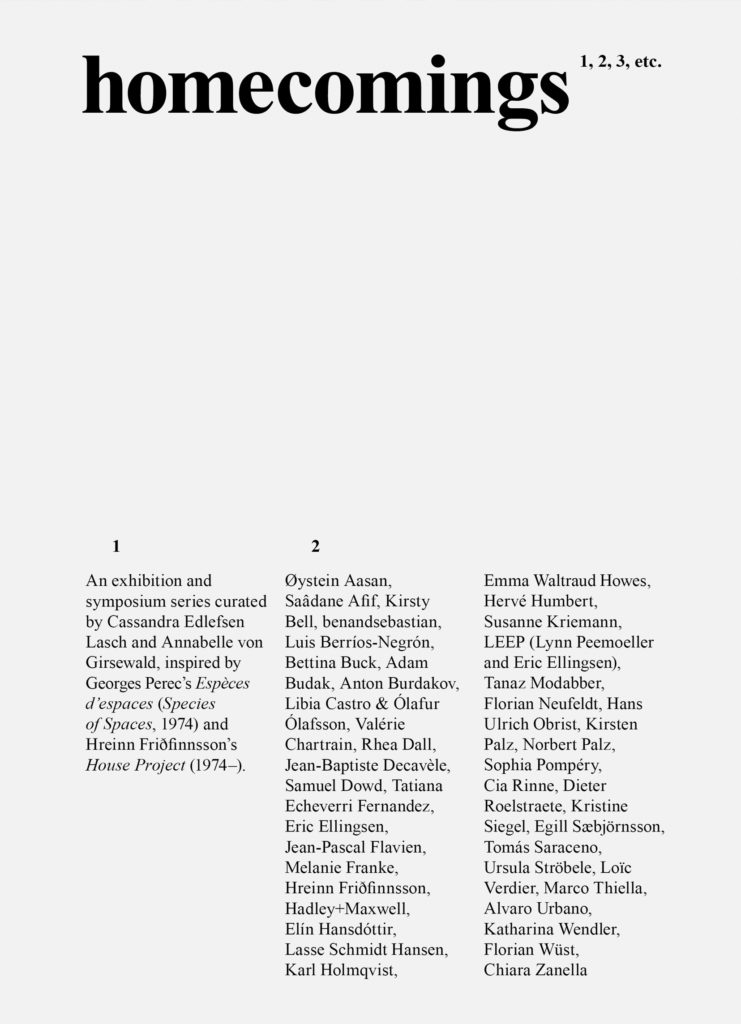
NOWs: homecomings 1, 2, 3, etc.
homecomings 1, 2, 3, etc.book launch
CHANGING ROOM
Lüderitzstr. 11
2nd yard
13351 Berlin
6 April, 6pm
Readings and performances will start at 6:30 pm
1
Inspired by Georges Perec’s Espèces d’espaces (Species of Spaces, 1974) and Hreinn Friðfinnsson’s House Project (1974–), homecomings 1, 2, 3, etc. revisits, through varying means of translation, spatial and conceptual loci of homecoming within artistic practice.
2
Published with Archive Books, Berlin and curated and edited by Cassandra Edlefsen Lasch and Annabelle von Girsewald, the publication features contributions by:
Øystein Aasan, Saâdane Afif, Kirsty Bell, benandsebastian, Luis Berríos-Negrón, Bettina Buck, Adam Budak, Anton Burdakov, Libia Castro & Ólafur Ólafsson, Valérie Chartrain, Rhea Dall, Jean-Baptiste Decavèle, Samuel Dowd, Tatiana Echeverri Fernandez, Eric Ellingsen, Jean-Pascal Flavien, Melanie Franke, Hreinn Friðfinnsson, Hadley+Maxwell, Elín Hansdóttir, Lasse Schmidt Hansen, Karl Holmqvist, Emma Waltraud Howes, Hervé Humbert, Susanne Kriemann, LEEP (Lynn Peemoeller and Eric Ellingsen), Tanaz Modabber, Florian Neufeldt, Hans Ulrich Obrist, Kirsten Palz, Norbert Palz, Sophia Pompéry, Cia Rinne, Dieter Roelstraete, Kristine Siegel, Egill Sæbjörnsson, Tomás Saraceno, Ursula Ströbele, Loïc Verdier, Marco Thiella, Alvaro Urbano, Katharina Wendler, Florian Wüst, Chiara Zanella
3
The book launch features a series of readings and performances by, among others:
Shane Anderson
Samuel Dowd
Tatiana Echeverri Fernandez
Susanne Kriemann & Cia Rinne
etc.
The exhibition and symposium series, homecomings, from which this publication stems, draws its principle inspiration from the architectural and linguistic returns and repetitions punctuating artist Hreinn Friðfinnsson’s House Project (1974–) and author Georges Perec’s Espèces d’espaces (Species of Spaces, 1974).
In 1974, through an ephemeral gesture, Friðfinnsson claimed the whole universe within the site of a small house, turned inside-out, in the middle of an Icelandic lava field. Encountered only through happenstance or hearsay, a timeless lore grew around the house. House Project became a resonating series of works, appearing in multiple iterations, inversions, and reductions in form. Also in 1974, Georges Perec set out to approach the topic of space, creating a telescopic “journal of a user of space” by layering deliberate and protracted observation with writing constraints and wordplay. Perec starts with the page and zooms outward to space itself, always mirroring and reflecting the influx of the everyday in his call to read and reread surrounding spaces.
Testing the concept of “homecomings” against a number of artistic practices, this volume grows out of an imperative to act according to the referentiality hallmarked in the conceptually rigorous works of Friðfinnsson and Perec. homecomings 1, 2, 3, etc. opens a flood of personal wellsprings, where no two connotations align perfectly. The collected contributions oscillate between self-referential modes—creating full-circle loops within singular practices—and far-reaching trajectories, gaining momentum and associations upon every rereading. Like Perec, many works call for an attuned presence, and in so doing, proffer a homecoming at the very site of reading.
Order the publication online here
*
CHANGING ROOM / Wedding: is a new project space focusing on sound art and performance. The programming consists of interdisciplinary projects based on sound art, speech/voice, and movement and offers talks, performances, and deep listening sessions on a regular basis. CHANGING ROOM is situated in a former horse stable on Lüderitzstraße in Berlin Wedding’s African Quarter, which will soon be renamed to Cornelius-Frederiks-Straße.
homecomings 1, 2, 3, etc.book launch
CHANGING ROOM
Lüderitzstr. 11
2nd yard
13351 Berlin
6 April, 6pm
Readings and performances will start at 6:30 pm
1
Inspired by Georges Perec’s Espèces d’espaces (Species of Spaces, 1974) and Hreinn Friðfinnsson’s House Project (1974–), homecomings 1, 2, 3, etc. revisits, through varying means of translation, spatial and conceptual loci of homecoming within artistic practice.
2
Published with Archive Books, Berlin and curated and edited by Cassandra Edlefsen Lasch and Annabelle von Girsewald, the publication features contributions by:
Øystein Aasan, Saâdane Afif, Kirsty Bell, benandsebastian, Luis Berríos-Negrón, Bettina Buck, Adam Budak, Anton Burdakov, Libia Castro & Ólafur Ólafsson, Valérie Chartrain, Rhea Dall, Jean-Baptiste Decavèle, Samuel Dowd, Tatiana Echeverri Fernandez, Eric Ellingsen, Jean-Pascal Flavien, Melanie Franke, Hreinn Friðfinnsson, Hadley+Maxwell, Elín Hansdóttir, Lasse Schmidt Hansen, Karl Holmqvist, Emma Waltraud Howes, Hervé Humbert, Susanne Kriemann, LEEP (Lynn Peemoeller and Eric Ellingsen), Tanaz Modabber, Florian Neufeldt, Hans Ulrich Obrist, Kirsten Palz, Norbert Palz, Sophia Pompéry, Cia Rinne, Dieter Roelstraete, Kristine Siegel, Egill Sæbjörnsson, Tomás Saraceno, Ursula Ströbele, Loïc Verdier, Marco Thiella, Alvaro Urbano, Katharina Wendler, Florian Wüst, Chiara Zanella
3
The book launch features a series of readings and performances by, among others:
Shane Anderson
Samuel Dowd
Tatiana Echeverri Fernandez
Susanne Kriemann & Cia Rinne
etc.
The exhibition and symposium series, homecomings, from which this publication stems, draws its principle inspiration from the architectural and linguistic returns and repetitions punctuating artist Hreinn Friðfinnsson’s House Project (1974–) and author Georges Perec’s Espèces d’espaces (Species of Spaces, 1974).
In 1974, through an ephemeral gesture, Friðfinnsson claimed the whole universe within the site of a small house, turned inside-out, in the middle of an Icelandic lava field. Encountered only through happenstance or hearsay, a timeless lore grew around the house. House Project became a resonating series of works, appearing in multiple iterations, inversions, and reductions in form. Also in 1974, Georges Perec set out to approach the topic of space, creating a telescopic “journal of a user of space” by layering deliberate and protracted observation with writing constraints and wordplay. Perec starts with the page and zooms outward to space itself, always mirroring and reflecting the influx of the everyday in his call to read and reread surrounding spaces.
Testing the concept of “homecomings” against a number of artistic practices, this volume grows out of an imperative to act according to the referentiality hallmarked in the conceptually rigorous works of Friðfinnsson and Perec. homecomings 1, 2, 3, etc. opens a flood of personal wellsprings, where no two connotations align perfectly. The collected contributions oscillate between self-referential modes—creating full-circle loops within singular practices—and far-reaching trajectories, gaining momentum and associations upon every rereading. Like Perec, many works call for an attuned presence, and in so doing, proffer a homecoming at the very site of reading.
Order the publication online here
*
CHANGING ROOM / Wedding: is a new project space focusing on sound art and performance. The programming consists of interdisciplinary projects based on sound art, speech/voice, and movement and offers talks, performances, and deep listening sessions on a regular basis. CHANGING ROOM is situated in a former horse stable on Lüderitzstraße in Berlin Wedding’s African Quarter, which will soon be renamed to Cornelius-Frederiks-Straße.
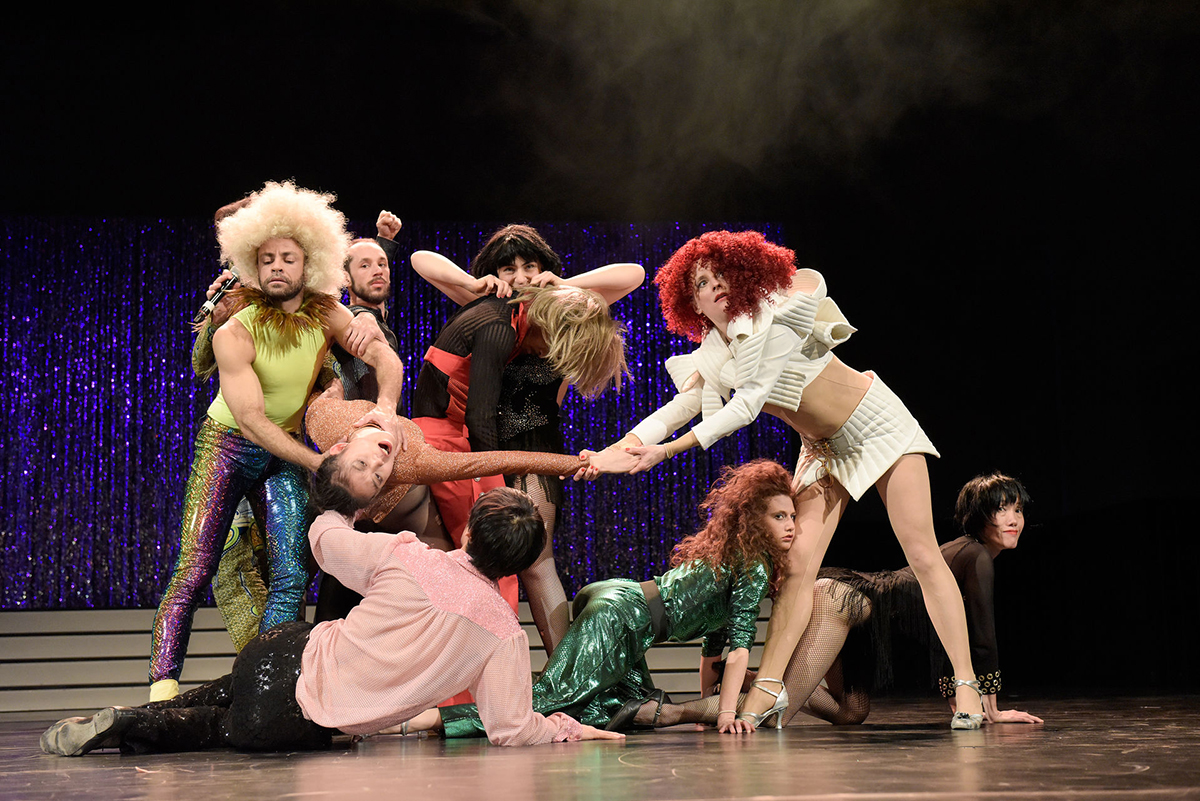
NOWs: Der Palast
Foto: Thomas Aurin
Der PalastTanztheater von Constanza Macras / DorkyPark
Volksbühne Berlin
Linienstraße 227
10178 Berlin
Premiere 4. April, 20:00
Mit sieben Tänzer*innen, drei Schauspieler*innen und drei Musiker*innen erarbeiten Constanza Macras und ihr Ensemble DorkyPark ein Stück, das sich unter dem Titel Der Palast mit der Stadt Berlin beschäftigt, die als „Global City“ (Saskia Sassen) besonders von den radikalen Veränderungen der Globalisierung betroffen ist.
Die Entwicklung der Mitte Berlins seit dem Mauerfall ist allseits bekannt: Leerstehende, zerrüttete Altbauten wurden von einer jungen Generation besetzt und bespielt. In den Folgejahren wurde Lebensraum knapp, die Wohn- und Lebenskosten stiegen massiv an, die einstigen Pioniere und ihre Nachfolger*innen wurden aus ihren Vierteln verdrängt. Was macht das mit der Kultur, wenn Viertel sich verändern, Geschäfte schließen und Menschen zwangsgeräumt werden?
Der Palast setzt sich mit dieser Problematik auseinander, indem es einerseits die Architektur in Berlins Mitte thematisiert, andererseits Geschichte, Gegenwart und Zukunftsvorstellungen der Stadt und ihrer Bewohner*innen behandelt. Ausgangspunkt sind Bilder des preisgekrönten englischen Fotografen Tom Hunter, der als Visual Artist der Produktion im Februar u.a. in Berlin-Weißensee, Rummelsburg, Kreuzberg und in der Volksbühne fotografiert hat. Bekannt geworden ist Tom Hunter mit Porträts, die gesellschaftliche Themen im Stil der Alten Meister inszenieren. So hat er sich in seiner Serie „Persons Unknown“ intensiv mit der britischen Hausbesetzer*innen-Szene auseinandergesetzt, indem er die von Zwangsräumungen betroffenen Menschen ins Bild gesetzt hat.
Seine Berliner Fotografien treffen in Der Palast auf eine ausufernde Bühnenbild-Architektur, die das globalisierte Format der Reality-TV-Shows mit Juroren und konkurrierenden Teilnehmer*innen widerspiegelt. In diesem Spannungsverhältnis möchte Der Palast neue Narrative zwischen Fiktion und Realität entwickeln. Der Soundtrack stammt von Robert Lippok und einer Live-Band.
Weitere Vorstellungen:
14. April, 20:00
16. Mai, 20:00
17. Mai, 20:00
Von und mit: Adaya Berkovich, Emil Bordás, Chia-Ying Chiang, Fernanda Farah, Yuya Fujinami, Luc Guiol, Ronni Maciel, Thulani Lord Mgidi, Anne Ratte-Polle, Miki Shoji
Live-Musik von und mit: Santiago Blaum, Kristina Lösche-Löwensen, Jacob Thein
Regie und Choreografie: Constanza Macras
Visual Artist: Tom Hunter
Komposition: Robert Lippok
Bühne: Alissa Kolbusch
Kostüme: Roman Handt
Lichtdesign: Sergio de Carvalho Pessanha
Ton: Stephan Wöhrmann
Dramaturgie: Carmen Mehnert
Produktionsmanagement: Alisa Golomzina, Xiao Yu, Keiko Tominaga
Regieassistenz: Helena Casas
Eine Produktion von Constanza Macras / DorkyPark in Koproduktion mit der Volksbühne Berlin.
Constanza Macras / DorkyPark wird gefördert von der Senatsverwaltung für Kultur und Europa.
Foto: Thomas Aurin
Der PalastTanztheater von Constanza Macras / DorkyPark
Volksbühne Berlin
Linienstraße 227
10178 Berlin
Premiere 4. April, 20:00
Mit sieben Tänzer*innen, drei Schauspieler*innen und drei Musiker*innen erarbeiten Constanza Macras und ihr Ensemble DorkyPark ein Stück, das sich unter dem Titel Der Palast mit der Stadt Berlin beschäftigt, die als „Global City“ (Saskia Sassen) besonders von den radikalen Veränderungen der Globalisierung betroffen ist.
Die Entwicklung der Mitte Berlins seit dem Mauerfall ist allseits bekannt: Leerstehende, zerrüttete Altbauten wurden von einer jungen Generation besetzt und bespielt. In den Folgejahren wurde Lebensraum knapp, die Wohn- und Lebenskosten stiegen massiv an, die einstigen Pioniere und ihre Nachfolger*innen wurden aus ihren Vierteln verdrängt. Was macht das mit der Kultur, wenn Viertel sich verändern, Geschäfte schließen und Menschen zwangsgeräumt werden?
Der Palast setzt sich mit dieser Problematik auseinander, indem es einerseits die Architektur in Berlins Mitte thematisiert, andererseits Geschichte, Gegenwart und Zukunftsvorstellungen der Stadt und ihrer Bewohner*innen behandelt. Ausgangspunkt sind Bilder des preisgekrönten englischen Fotografen Tom Hunter, der als Visual Artist der Produktion im Februar u.a. in Berlin-Weißensee, Rummelsburg, Kreuzberg und in der Volksbühne fotografiert hat. Bekannt geworden ist Tom Hunter mit Porträts, die gesellschaftliche Themen im Stil der Alten Meister inszenieren. So hat er sich in seiner Serie „Persons Unknown“ intensiv mit der britischen Hausbesetzer*innen-Szene auseinandergesetzt, indem er die von Zwangsräumungen betroffenen Menschen ins Bild gesetzt hat.
Seine Berliner Fotografien treffen in Der Palast auf eine ausufernde Bühnenbild-Architektur, die das globalisierte Format der Reality-TV-Shows mit Juroren und konkurrierenden Teilnehmer*innen widerspiegelt. In diesem Spannungsverhältnis möchte Der Palast neue Narrative zwischen Fiktion und Realität entwickeln. Der Soundtrack stammt von Robert Lippok und einer Live-Band.
Weitere Vorstellungen:
14. April, 20:00
16. Mai, 20:00
17. Mai, 20:00
Von und mit: Adaya Berkovich, Emil Bordás, Chia-Ying Chiang, Fernanda Farah, Yuya Fujinami, Luc Guiol, Ronni Maciel, Thulani Lord Mgidi, Anne Ratte-Polle, Miki Shoji
Live-Musik von und mit: Santiago Blaum, Kristina Lösche-Löwensen, Jacob Thein
Regie und Choreografie: Constanza Macras
Visual Artist: Tom Hunter
Komposition: Robert Lippok
Bühne: Alissa Kolbusch
Kostüme: Roman Handt
Lichtdesign: Sergio de Carvalho Pessanha
Ton: Stephan Wöhrmann
Dramaturgie: Carmen Mehnert
Produktionsmanagement: Alisa Golomzina, Xiao Yu, Keiko Tominaga
Regieassistenz: Helena Casas
Eine Produktion von Constanza Macras / DorkyPark in Koproduktion mit der Volksbühne Berlin.
Constanza Macras / DorkyPark wird gefördert von der Senatsverwaltung für Kultur und Europa.

NOWs: Auto Modus 1 by Malte Bartsch
Auto Modus 1Solo Exhibition
halle267 – städtische galerie braunschweig
Hamburger Straße 267
38114 Braunschweig
Eröffnung
28. März 2019, 19 h
Eröffnung: Dr. Anja Hesse (Dezernentin für Kultur und Wissenschaft der Stadt Braunschweig)
Grußwort: Dr. Susanne Pfleger (Direktorin der Städtischen Galerie Wolfsburg)
Einführung: Marcus Körper & Malte Bartsch im Dialog
Gemeinsam präsentieren die „Städtische Galerie Wolfsburg“ und die „halle267 – städtische galerie braunschweig“ die erste große institutionelle Einzelausstellung mit Werken des Künstlers Malte Bartsch. Der Fokus der Ausstellungen liegt auf dem Spannungsverhältnis zwischen Mensch und Technik, Zeit und Raum, künstlerischer Aktion und kunstschaffender Interaktion.
Malte Bartschs situative, kommunikative und spontane Art sind wichtiges Merkmal seiner künstlerischen Arbeit. Die Ergebnisse seiner Erkundungen sind weniger ausgestellte Kunstwerke als eher von Anfang an dialogische Vorgänge und Interventionen.
Malte Bartsch ist in Braunschweig geboren und aufgewachsen. Nach dem Studium der Humangeographie und Ökonomie begann er 2009 sein Studium der Freien Kunst an der HBK Braunschweig bei Boromir Eckes. 2012 wechselte er an das Institut für Raumexperimente in die Klasse von Olafur Eliasson an die UDK Berlin. Er erlangte dort 2014 den Absolvententitel bei Olafur Eliasson und 2015 den Meisterschülertitel bei Manfred Pernice.
Detaillierte Informationen zum Begleitprogramm hier.
Veranstalter:
Stadt Braunschweig, Dezernat für Kultur und Wissenschaft
Fachbereich Kultur und Wissenschaft – Kulturinstitut
Auto Modus 1Einzelausstellung
halle267 – städtische galerie braunschweig
Hamburger Straße 267
38114 Braunschweig
Eröffnung
28. März 2019, 19 h
Eröffnung: Dr. Anja Hesse (Dezernentin für Kultur und Wissenschaft der Stadt Braunschweig)
Grußwort: Dr. Susanne Pfleger (Direktorin der Städtischen Galerie Wolfsburg)
Einführung: Marcus Körper & Malte Bartsch im Dialog
Gemeinsam präsentieren die „Städtische Galerie Wolfsburg“ und die „halle267 – städtische galerie braunschweig“ die erste große institutionelle Einzelausstellung mit Werken des Künstlers Malte Bartsch. Der Fokus der Ausstellungen liegt auf dem Spannungsverhältnis zwischen Mensch und Technik, Zeit und Raum, künstlerischer Aktion und kunstschaffender Interaktion.
Malte Bartschs situative, kommunikative und spontane Art sind wichtiges Merkmal seiner künstlerischen Arbeit. Die Ergebnisse seiner Erkundungen sind weniger ausgestellte Kunstwerke als eher von Anfang an dialogische Vorgänge und Interventionen.
Malte Bartsch ist in Braunschweig geboren und aufgewachsen. Nach dem Studium der Humangeographie und Ökonomie begann er 2009 sein Studium der Freien Kunst an der HBK Braunschweig bei Boromir Eckes. 2012 wechselte er an das Institut für Raumexperimente in die Klasse von Olafur Eliasson an die UDK Berlin. Er erlangte dort 2014 den Absolvententitel bei Olafur Eliasson und 2015 den Meisterschülertitel bei Manfred Pernice.
Detaillierte Informationen zum Begleitprogramm hier.
Veranstalter:
Stadt Braunschweig, Dezernat für Kultur und Wissenschaft
Fachbereich Kultur und Wissenschaft – Kulturinstitut
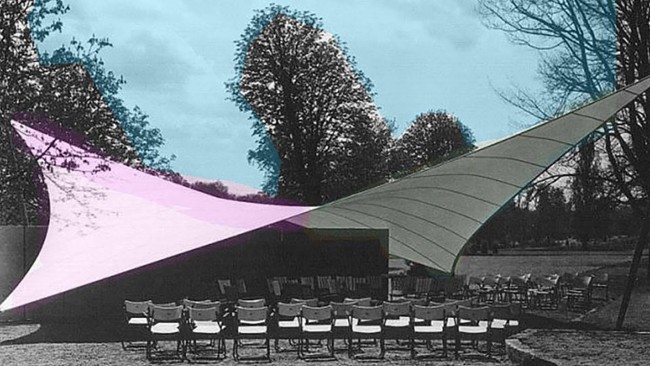
NOWs: New Dresden setzt Segel_Workshop mit Raul Walch
New Dresden setzt SegelWorkshop with Raul Walch
Montagscafé
Glacisstraße 28
01099 Dresden
Part III
25 March, 5 pm
Frei Otto erfand 1955 das Vierpunktzelt, das uns als Modell für eine neue Projektreihe stehen soll: Zusammen mit dem Berliner Künstler Raul Walch werden wir in mehreren Etappen bis zum Sommer einen eigenen Montagscafé-Pavillon entwerfen und realisieren. Bereits im letzten November haben wir mit Raul Walch diverse Fahnen fürs Montagscafé angefertigt, die wir an den jeweiligen Montagen ebenfalls fertigstellen wollen. Kommt, näht, plant und entwerft mit uns ein neues Objekt für den öffentlichen Raum!
Montagscafé – Refugees are welcome here
Ein offener Treffpunkt für Geflüchtete und Einheimische jeden Montag ab 15 Uhr im Kleinen Haus. Kommt vorbei!
New Dresden setzt SegelWorkshop mit Raul Walch
Montagscafé
Glacisstraße 28
01099 Dresden
Teil III
25. März, 17 h
Frei Otto erfand 1955 das Vierpunktzelt, das uns als Modell für eine neue Projektreihe stehen soll: Zusammen mit dem Berliner Künstler Raul Walch werden wir in mehreren Etappen bis zum Sommer einen eigenen Montagscafé-Pavillon entwerfen und realisieren. Bereits im letzten November haben wir mit Raul Walch diverse Fahnen fürs Montagscafé angefertigt, die wir an den jeweiligen Montagen ebenfalls fertigstellen wollen. Kommt, näht, plant und entwerft mit uns ein neues Objekt für den öffentlichen Raum!
Montagscafé – Refugees are welcome here
Ein offener Treffpunkt für Geflüchtete und Einheimische jeden Montag ab 15 Uhr im Kleinen Haus. Kommt vorbei!
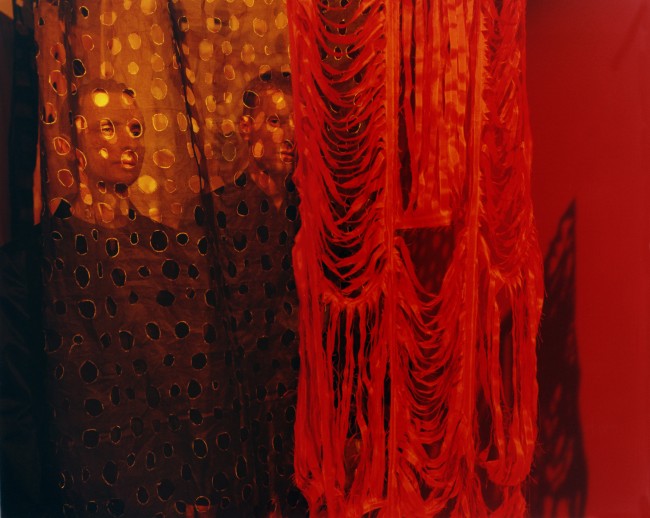
NOWs: These New Puritans and Hans-Henning Korb at the ICA London
These New Puritans and Hans-Henning Korb at the ICA LondonConcert and performance
These New Puritans premiere new work from their forthcoming album Inside the Rose alongside performance, music and installation by artists Soojin Chang, Freya Don and Graham Sutton.
Performing inside a specially-designed installation by textile artist Freya Don, the band present new music that couples powerful, progressive melodies with strings and brutal electronics.
Their performance is preceded by State of Possession, a live interactive presentation by Soojin Chang created to be experienced one-on-one with the artist, and a DJ set from producer Graham Sutton (of band Bark Psychosis and drum and bass project Boymerang).
The evening will also include the debut of recent These New Puritans video projects made in collaboration with photographer Harley Weir, filmmaker Daniel Askill and artist Hans-Henning Korb.
Founded by twin brothers Jack and George Barnett, These New Puritans are an English experimental music group whose music is not easily categorised. Their fourth album Inside the Rose will be released 22 March 2019.
Daniel Askill is a critically-acclaimed Australian filmmaker and long-time collaborator of These New Puritans. His unique sensibility spans a diverse body of work, which includes music videos, films, stage, commercials, photography and video installations. Askill’s recent projects include Take Flight (2015), a virtual reality film for The New York Times featuring Michael Fassbender, Benicio del Toro and Charlize Theron.
Soojin Chang’s artistic practice is led by an inquiry into political and individual trauma, particularly the way these are internalised and inherited in the body schema. Her performance and video works are driven by examinations into the agency and fertility of both humans and nonhumans. Her work seeks to deconstruct systems of oppression and power in order to rethink ecological destruction. She uses appropriation to challenge authorship and renegotiate representations, survival mechanisms, and immigration patterns of colonised cultures and diasporas. Selected exhibitions include MoMA PS1, New York; Institute of Contemporary Arts, London; Centre for Contemporary Arts, Glasgow; Microscope Gallery, New York; La Capela, Paris; and the Art/Life Institute, New York.
Freya Don is a London-based artist known for her dramatic, painterly use of textiles and collaborations with Harley Weir. Freya previously worked with the Barnett brothers on their music video for the single Inside the Rose and the subsequent album artwork.
Hans-Henning Korb is an artist based in Berlin. His practice combines sculpture, installation and performance, and often involves music, film, computer animation, virtual worlds, plants, and organic processes. Korb has exhibited internationally in venues including Hamburger Bahnhof, Berlin (2017); Empty Gallery, Hong Kong (2016); Neue Nationalgalerie, Berlin (2014); and Photo LA, Los Angeles (2012).
Graham Sutton is an English musician, songwriter, composer and record producer. He is best known for his role as the leader and key figure of seminal post-rock band Bark Psychosis, as well as his work as a producer for alternative rock bands since the late 1990s.
Harley Weir is London-born photographer and director known for creating intimate images and films in her personal, editorial and commercial work. Harley had her first solo exhibition in 2017 at Foam, Amsterdam, where her work is now in the permanent collection. She is a regular exhibitor at Photo London and Paris Photo. Her second solo exhibition Homes opened at the Brighton Biennial in September 2018.
With thanks to Media Partner Another Man
Tickets available here
These New Puritans and Hans-Henning Korb at the ICA LondonConcert and performance
These New Puritans premiere new work from their forthcoming album Inside the Rose alongside performance, music and installation by artists Soojin Chang, Freya Don and Graham Sutton.
Performing inside a specially-designed installation by textile artist Freya Don, the band present new music that couples powerful, progressive melodies with strings and brutal electronics.
Their performance is preceded by State of Possession, a live interactive presentation by Soojin Chang created to be experienced one-on-one with the artist, and a DJ set from producer Graham Sutton (of band Bark Psychosis and drum and bass project Boymerang).
The evening will also include the debut of recent These New Puritans video projects made in collaboration with photographer Harley Weir, filmmaker Daniel Askill and artist Hans-Henning Korb.
Founded by twin brothers Jack and George Barnett, These New Puritans are an English experimental music group whose music is not easily categorised. Their fourth album Inside the Rose will be released 22 March 2019.
Daniel Askill is a critically-acclaimed Australian filmmaker and long-time collaborator of These New Puritans. His unique sensibility spans a diverse body of work, which includes music videos, films, stage, commercials, photography and video installations. Askill’s recent projects include Take Flight (2015), a virtual reality film for The New York Times featuring Michael Fassbender, Benicio del Toro and Charlize Theron.
Soojin Chang’s artistic practice is led by an inquiry into political and individual trauma, particularly the way these are internalised and inherited in the body schema. Her performance and video works are driven by examinations into the agency and fertility of both humans and nonhumans. Her work seeks to deconstruct systems of oppression and power in order to rethink ecological destruction. She uses appropriation to challenge authorship and renegotiate representations, survival mechanisms, and immigration patterns of colonised cultures and diasporas. Selected exhibitions include MoMA PS1, New York; Institute of Contemporary Arts, London; Centre for Contemporary Arts, Glasgow; Microscope Gallery, New York; La Capela, Paris; and the Art/Life Institute, New York.
Freya Don is a London-based artist known for her dramatic, painterly use of textiles and collaborations with Harley Weir. Freya previously worked with the Barnett brothers on their music video for the single Inside the Rose and the subsequent album artwork.
Hans-Henning Korb is an artist based in Berlin. His practice combines sculpture, installation and performance, and often involves music, film, computer animation, virtual worlds, plants, and organic processes. Korb has exhibited internationally in venues including Hamburger Bahnhof, Berlin (2017); Empty Gallery, Hong Kong (2016); Neue Nationalgalerie, Berlin (2014); and Photo LA, Los Angeles (2012).
Graham Sutton is an English musician, songwriter, composer and record producer. He is best known for his role as the leader and key figure of seminal post-rock band Bark Psychosis, as well as his work as a producer for alternative rock bands since the late 1990s.
Harley Weir is London-born photographer and director known for creating intimate images and films in her personal, editorial and commercial work. Harley had her first solo exhibition in 2017 at Foam, Amsterdam, where her work is now in the permanent collection. She is a regular exhibitor at Photo London and Paris Photo. Her second solo exhibition Homes opened at the Brighton Biennial in September 2018.
With thanks to Media Partner Another Man
Tickets available here
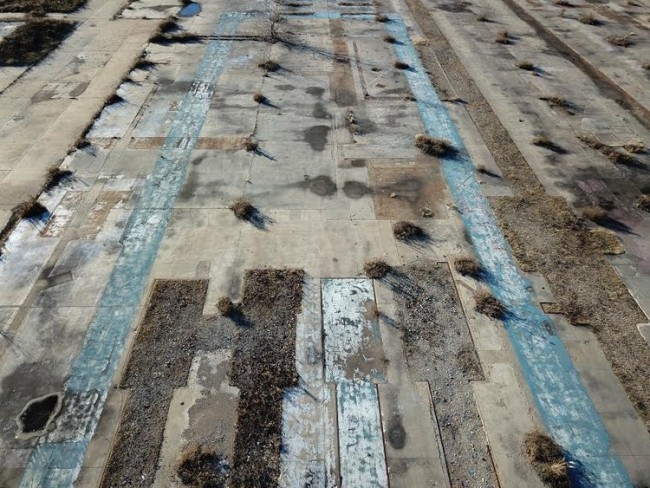
NOWs: Art + Landscape STL at Granite City Art and Design District
Art + Landscape STLshort-term laboratory
Granite City, Illinois, USA
Art + Landscape STL is an intensive, short-term laboratory for St. Louis-based artists and designers working at the intersection of art and landscape.
Emerging from an ongoing series of private discussions and excursions, the project is anchored by a public exhibition, Art + Landscape STL, installed throughout G-CADD’s campus and unfolding through five weekends of programs on-site—performances, talks, walks, and more.
Participants: Michael Allen, Betsy Brandt, Christopher Carl, Jennifer Colten, Sage Dawson, Eric Ellingsen, Meghan Grubb, Derek Hoeferlin, Shabez Jamal, Gavin Kroeber, Yowshien Kuo, Aaron Owens, Tim Portlock, Jenny Price, Katherine Simóne Reynolds, Allana Ross, Micah Stanek, Rory Thibault, Westhaven Ensemble, and Rachel Youn. The project is organized by Gavin Kroeber.
The exhibition will be open select days from Sunday 10 March to Saturday 6 April as follows:
Sunday 10 March
5-8pm Special Event: Mississippi. An Anthropocene River
Presented in partnership with HKW (Haus der Kulturen der Welt, Berlin) and the Max Planck Institute (Berlin) as part of their wider initiative Mississippi. An Anthropocene River.
5pm Exhibition opens
6pm Public Dialogue: Confluences with HKW and Art + Landscape STL
7pm How Not What: Power, Time & Landscape | Performance by Michael Allen
*HKW will additionally be organizing an 11am public program, Anthropocene. Archaeology of the Present at Cahokia Mounds World Heritage Site.
Saturday 16 March
6-10pm Opening Celebration + STNDRD reception
7pm Public Dialogue: Curating the Landscape with Gavin Kroeber, Michael Behle, Jessi Cerutti, Kristin Fleischmann Brewer, Charis Norell, Dana Turkovic
Ambient Performances by Betsy Brandt
Saturday 23 March
1-5pm
1pm Public Dialogue: Locating the Human. Contemporary Landscape as Eco Art with Ila Sheren
2pm Poetry Readings curated by Ted Mathys
With Eric Ellingsen, Jacqui Germain, David Alejandro Hernandez, Devin Johnston, Dana Levin, Aditi Machado, Ted Mathys
3pm Scaping Habitus | Workshop with Esther & Beth Neff (MARSH)
4pm Public Dialogue: Art + Landscape Roundtable
Ambient Performances by Betsy Brandt
Thursday 28 March
6-7:30 pm Special Off-Site Event: Cocktails & Conversation at Laumeier Sculpture Park
6pm Conversation with Art + Landscape STL participating artists Christopher Carl, Sage Dawson, Meghan Grubb, Yowshien Kuo, and Allana Ross
Saturday 30 March
1-5 pm
1pm Public Dialogue: Landscapes of Belonging
2pm the heartland landscape in the time of Rulers | Performance by Eric Ellingsen
3pm NNN Cook “Coordinates Checker (Traverse)” 2019 | Sound Performances
4pm Public Dialogue: Art + Landscape Roundtable
Saturday 6 April, Closing Day
1-5 pm
1pm Explorative Walk with Chris Carl & Jennifer Colten
2pm Performances:
The Homestead Project by Jenny Price
How Not What: Power, Time & Landscape by Michael Allen
Approaching Landscape City by Westhaven Ensemble
3pm Public Dialogue: Art + Landscape Closing Roundtable
Ambient Performances by Betsy Brandt
Art + Landscape STL Team:
Curatorial Assistant and Project Coordinator: Amela Parcic
AV Installations lead: Aaron Owens
Outdoor Installations lead: Allana Ross
Interns: Marshall Karchunas, Dongzhe Tao
Acknowledgements: Kranzberg Arts Foundation, Simiya Sudduth
Special Thanks to Mississippi. An Anthropocene River, a project by Haus der Kulturen der Welt (HKW), Berlin, and the Max Planck Institute for the History of Science (MPIWG), Berlin, in collaboration with numerous international partners, funded by the German Federal Foreign Office as part of the initiative #WunderbarTogether as well as by the Max Planck Society.
Art + Landscape STLshort-term laboratory
Granite City, Illinois, USA
Art + Landscape STL is an intensive, short-term laboratory for St. Louis-based artists and designers working at the intersection of art and landscape.
Emerging from an ongoing series of private discussions and excursions, the project is anchored by a public exhibition, Art + Landscape STL, installed throughout G-CADD’s campus and unfolding through five weekends of programs on-site—performances, talks, walks, and more.
Participants: Michael Allen, Betsy Brandt, Christopher Carl, Jennifer Colten, Sage Dawson, Eric Ellingsen, Meghan Grubb, Derek Hoeferlin, Shabez Jamal, Gavin Kroeber, Yowshien Kuo, Aaron Owens, Tim Portlock, Jenny Price, Katherine Simóne Reynolds, Allana Ross, Micah Stanek, Rory Thibault, Westhaven Ensemble, and Rachel Youn. The project is organized by Gavin Kroeber.
The exhibition will be open select days from Sunday 10 March to Saturday 6 April as follows:
Sunday 10 March
5-8pm Special Event: Mississippi. An Anthropocene River
Presented in partnership with HKW (Haus der Kulturen der Welt, Berlin) and the Max Planck Institute (Berlin) as part of their wider initiative Mississippi. An Anthropocene River.
5pm Exhibition opens
6pm Public Dialogue: Confluences with HKW and Art + Landscape STL
7pm How Not What: Power, Time & Landscape | Performance by Michael Allen
*HKW will additionally be organizing an 11am public program, Anthropocene. Archaeology of the Present at Cahokia Mounds World Heritage Site.
Saturday 16 March
6-10pm Opening Celebration + STNDRD reception
7pm Public Dialogue: Curating the Landscape with Gavin Kroeber, Michael Behle, Jessi Cerutti, Kristin Fleischmann Brewer, Charis Norell, Dana Turkovic
Ambient Performances by Betsy Brandt
Saturday 23 March
1-5pm
1pm Public Dialogue: Locating the Human. Contemporary Landscape as Eco Art with Ila Sheren
2pm Poetry Readings curated by Ted Mathys
With Eric Ellingsen, Jacqui Germain, David Alejandro Hernandez, Devin Johnston, Dana Levin, Aditi Machado, Ted Mathys
3pm Scaping Habitus | Workshop with Esther & Beth Neff (MARSH)
4pm Public Dialogue: Art + Landscape Roundtable
Ambient Performances by Betsy Brandt
Thursday 28 March
6-7:30 pm Special Off-Site Event: Cocktails & Conversation at Laumeier Sculpture Park
6pm Conversation with Art + Landscape STL participating artists Christopher Carl, Sage Dawson, Meghan Grubb, Yowshien Kuo, and Allana Ross
Saturday 30 March
1-5 pm
1pm Public Dialogue: Landscapes of Belonging
2pm the heartland landscape in the time of Rulers | Performance by Eric Ellingsen
3pm NNN Cook “Coordinates Checker (Traverse)” 2019 | Sound Performances
4pm Public Dialogue: Art + Landscape Roundtable
Saturday 6 April, Closing Day
1-5 pm
1pm Explorative Walk with Chris Carl & Jennifer Colten
2pm Performances:
The Homestead Project by Jenny Price
How Not What: Power, Time & Landscape by Michael Allen
Approaching Landscape City by Westhaven Ensemble
3pm Public Dialogue: Art + Landscape Closing Roundtable
Ambient Performances by Betsy Brandt
Art + Landscape STL Team:
Curatorial Assistant and Project Coordinator: Amela Parcic
AV Installations lead: Aaron Owens
Outdoor Installations lead: Allana Ross
Interns: Marshall Karchunas, Dongzhe Tao
Acknowledgements: Kranzberg Arts Foundation, Simiya Sudduth
Special Thanks to Mississippi. An Anthropocene River, a project by Haus der Kulturen der Welt (HKW), Berlin, and the Max Planck Institute for the History of Science (MPIWG), Berlin, in collaboration with numerous international partners, funded by the German Federal Foreign Office as part of the initiative #WunderbarTogether as well as by the Max Planck Society.
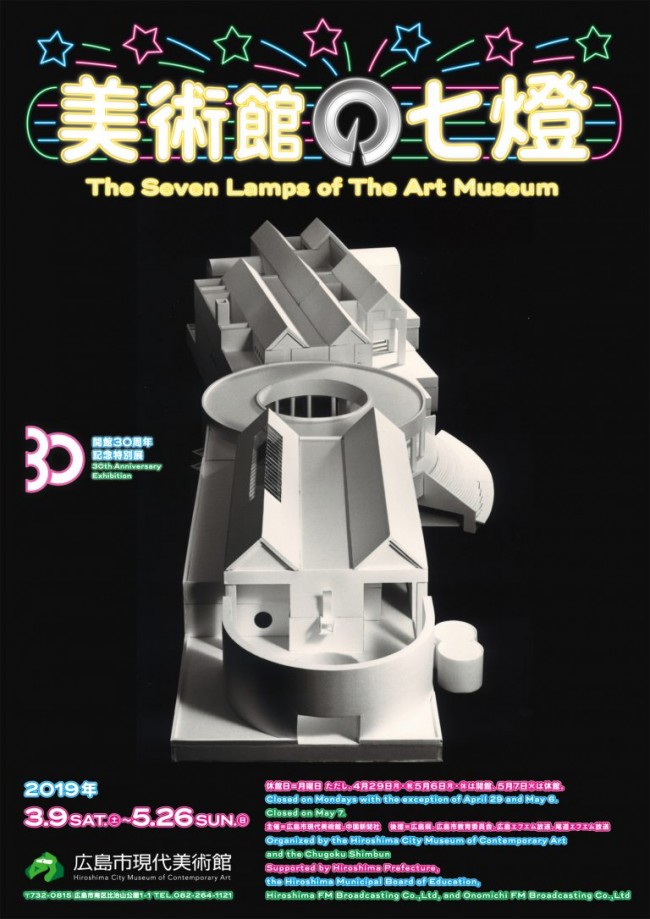
NOWs: The Seven Lamps of The Art Museum
30th Anniversary Exhibition: The Seven Lamps of The Art MuseumThings That the Museum Protects, and Things That Protect the Museum
1-1 Hijiyama koen Minami-ku Hiroshima-city
Japan
732-0815
The Hiroshima City Museum of Contemporary Art was opened in 1989 as the first public museum in Japan specializing in contemporary art. Commemorating the facility’s 30th anniversary, this exhibition focuses primarily on the trajectory of the museum’s activities and the architecture that has served as a foundation for them. Drawing on the collection, which has been amassed over the years, and documents related to the museum’s various programs along with some new works by participating artists and other materials, the exhibition will unfold throughout the entire facility. Based on a series of keywords such as viewer, architecture, place, conservation, history, deviation, and in-between, the exhibition looks back at these aspects and sets out to reexamine the museum’s appropriate role and various factors that support its activities.
Installation by Yuichiro Tamura: Re-Search: Exploration and Deviation?
Relying both on history and context, and imaginative leaps, the artist Yuichiro Tamura examines the background of places and things as he spins a fanciful story composed of various elements. These efforts will come to fruition in an installation work based on Tamura’s research of the museum’s architecture and the era in which the facility opened, and his own bold associations.
Section6. Referential Image by Yuichiro Tamura
1. The Viewer: Expressions Rooted in Participation
Needless to say, the museum could not survive without visitors. In this section, adorning the beginning of the exhibition, we present a group of works that are realized through visitors’ influence and participation, seemingly exemplifying the special features of the museum as a place.
2. Storage and Symbols: Museum Architecture and Outdoor Sculpture
The Hiroshima City Museum of Contemporary Art is in itself a work of architecture designed by Kisho Kurokawa, and the sculpture on permanent display combines with various design elements within the building to create a place for storing and viewing art. In this section, we examine the facility’s architectural appeal while showcasing the design of the furniture and sign system, and the sculptural works that are integrated into the architecture.
3. Here: Hiroshima and HIROSHIMA
The museum is inseparably linked to the place where it was built. Moreover, in order to emphasize the fact that Hiroshima is an atomic-bombed city, its name is often written in the katakana syllabary (in English, we have used all caps to convey the same meaning). At the museum, both Hiroshima and HIROSHIMA are important themes in our work.
4. Leaving Something Behind: The Current State of Restoration and Conservation
One of the museum’s most important functions is to collect and preserve artworks and documents. To achieve this, one of our primary tasks is to save works of contemporary art, which often make use of non-traditional materials and methods, and which are based on completely different concepts.
5. Accumulation: Recording Museum Activities through Documents and Related Works ? Art Direction by Mata Mata
While striving for continuity and accumulating data, the museum considers different approaches and directions according to each project. By combining related works and documents charting the museum’s course from the preparatory stage to the present, the locally-based design unit Mata Mata will oversee the art direction for this retrospective.
6. Re-Search: Exploration and Deviation ? A New Installation by Yuichiro Tamura
Relying both on history and context, and imaginative leaps, the artist Yuichiro Tamura examines the background of places and things as he spins a fanciful story composed of various elements. These efforts will come to fruition in an installation work based on Tamura’s research of the museum’s architecture and the era in which the facility opened, and his own bold associations.
7. In-Between, Openings, Etc.: Works That Make Use of Gaps in the Museum
In events such as the Open Call for Art Project Ideas, in which the public is invited to submit new practical plans for places in the museum that are not used for normal exhibitions, many artists have created displays by reinterpreting spaces in a creative manner. Perhaps these efforts indicate that certain expressions that cannot be conveyed using the traditional museum framework.
Exhibition Flyer
30th Anniversary Exhibition: The Seven Lamps of The Art MuseumThings That the Museum Protects, and Things That Protect the Museum
1-1 Hijiyama koen Minami-ku Hiroshima-city
Japan
732-0815
The Hiroshima City Museum of Contemporary Art was opened in 1989 as the first public museum in Japan specializing in contemporary art. Commemorating the facility’s 30th anniversary, this exhibition focuses primarily on the trajectory of the museum’s activities and the architecture that has served as a foundation for them. Drawing on the collection, which has been amassed over the years, and documents related to the museum’s various programs along with some new works by participating artists and other materials, the exhibition will unfold throughout the entire facility. Based on a series of keywords such as viewer, architecture, place, conservation, history, deviation, and in-between, the exhibition looks back at these aspects and sets out to reexamine the museum’s appropriate role and various factors that support its activities.
Installation by Yuichiro Tamura: Re-Search: Exploration and Deviation?
Relying both on history and context, and imaginative leaps, the artist Yuichiro Tamura examines the background of places and things as he spins a fanciful story composed of various elements. These efforts will come to fruition in an installation work based on Tamura’s research of the museum’s architecture and the era in which the facility opened, and his own bold associations.
Section6. Referential Image by Yuichiro Tamura
1. The Viewer: Expressions Rooted in Participation
Needless to say, the museum could not survive without visitors. In this section, adorning the beginning of the exhibition, we present a group of works that are realized through visitors’ influence and participation, seemingly exemplifying the special features of the museum as a place.
2. Storage and Symbols: Museum Architecture and Outdoor Sculpture
The Hiroshima City Museum of Contemporary Art is in itself a work of architecture designed by Kisho Kurokawa, and the sculpture on permanent display combines with various design elements within the building to create a place for storing and viewing art. In this section, we examine the facility’s architectural appeal while showcasing the design of the furniture and sign system, and the sculptural works that are integrated into the architecture.
3. Here: Hiroshima and HIROSHIMA
The museum is inseparably linked to the place where it was built. Moreover, in order to emphasize the fact that Hiroshima is an atomic-bombed city, its name is often written in the katakana syllabary (in English, we have used all caps to convey the same meaning). At the museum, both Hiroshima and HIROSHIMA are important themes in our work.
4. Leaving Something Behind: The Current State of Restoration and Conservation
One of the museum’s most important functions is to collect and preserve artworks and documents. To achieve this, one of our primary tasks is to save works of contemporary art, which often make use of non-traditional materials and methods, and which are based on completely different concepts.
5. Accumulation: Recording Museum Activities through Documents and Related Works ? Art Direction by Mata Mata
While striving for continuity and accumulating data, the museum considers different approaches and directions according to each project. By combining related works and documents charting the museum’s course from the preparatory stage to the present, the locally-based design unit Mata Mata will oversee the art direction for this retrospective.
6. Re-Search: Exploration and Deviation ? A New Installation by Yuichiro Tamura
Relying both on history and context, and imaginative leaps, the artist Yuichiro Tamura examines the background of places and things as he spins a fanciful story composed of various elements. These efforts will come to fruition in an installation work based on Tamura’s research of the museum’s architecture and the era in which the facility opened, and his own bold associations.
7. In-Between, Openings, Etc.: Works That Make Use of Gaps in the Museum
In events such as the Open Call for Art Project Ideas, in which the public is invited to submit new practical plans for places in the museum that are not used for normal exhibitions, many artists have created displays by reinterpreting spaces in a creative manner. Perhaps these efforts indicate that certain expressions that cannot be conveyed using the traditional museum framework.
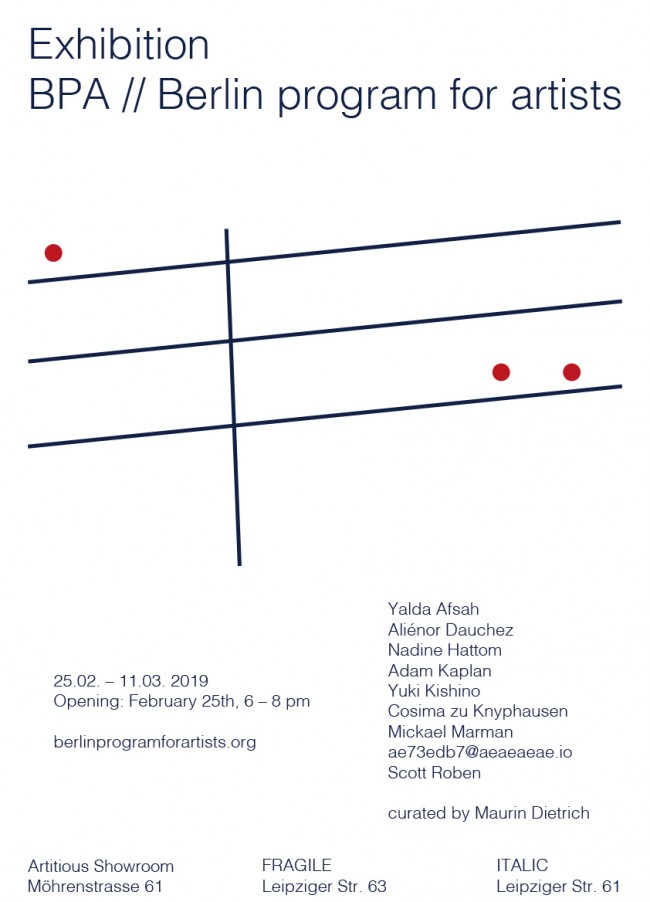
NOWs: BPA Exhibition BPA // Berlin program for artists
BPA Exhibitiongroup show
Artitious Showroom
Möhrenstrasse 61
10117 Berlin
FRAGILE
Leipziger Str. 63
10117 Berlin
ITALIC
Leipziger Str. 61
10117 Berlin
Opening
25 February, 6 pm
With: Yalda Afsah, Aliénor Dauchez, Nadine Hattom, Adam Kaplan, Yuki Kishino, Cosima zu Knyphausen, Mickael Marman, ae73edb7@aeaeaeae.io, Scott Roben
curated by Maurin Dietrich
The Berlin Program for Artists (BPA) is pleased to announce BPA Exhibition. Curated by Maurin Dietrich, the exhibition stretches over three locations and includes works by each of the program’s 2018 mentees.
A ritual that creates meaning through repetition requires that its results not be determined in advance. For BPA, a regular practice of studio visits becomes such an unforeseeable ritual, with a series of fortnightly conversations between two people in which themes emerge, questions are formulated, and meanings can be (re)created and described in each visit. The nine young artists that took part as participants in last year’s program will conclude their year with an exhibition at three neighboring spaces. There will be three artists in each of the three locations.
BPA ExhibitionGruppenausstellung
Artitious Showroom
Möhrenstrasse 61
10117 Berlin
FRAGILE
Leipziger Str. 63
10117 Berlin
ITALIC
Leipziger Str. 61
10117 Berlin
Eröffnung
25. Februar, 18 h
Mit: Yalda Afsah, Aliénor Dauchez, Nadine Hattom, Adam Kaplan, Yuki Kishino, Cosima zu Knyphausen, Mickael Marman, ae73edb7@aeaeaeae.io, Scott Roben
Kuratiert von Maurin Dietrich
Berlin Program for Artists (BPA) freut sich, seine dritte Abschluss Ausstellung anzukündigen. BPA Exhibition wird von Maurin Dietrich kuratiert und zeigt an drei Orten die Arbeiten der Mentees des letzten Jahres.
Ein Ritual, das seine Bedeutung bei jeder Wiederholung neu herstellt bedarf dem produktiven Fehlen eines vorbestimmten Resultates. Für BPA (re-)manifestiert sich dieses Ritual ein Jahr lang in der Struktur jedes zweiten Montags; im Gespräch zweier Personen in dem sich Thematiken herausbilden, Fragen formuliert werden und sich Bedeutungen jedes mal neu her- und darstellen lassen. Neun KünstlerInnen umfasst das vorherige Berlin Program for Artists Jahr und findet seinen Abschluss in einer an drei Orten stattfindenden Ausstellung. In diesen drei Ausstellungsräumen, fußläufig zueinander positioniert, finden sich Arbeiten von jeweils drei KünstlerInnen die zueinander in Bezug gesetzt werden.
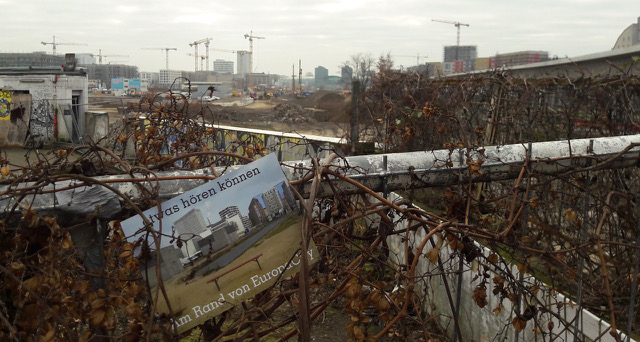
NOWs: Am Rand von EuropaCity
Am Rand von EuropaCityEine künstlerische Veranstaltungsreihe von Yves Mettler mit Alexis Hyman Wolff und Scriptings/Wedding
Café MOAB
Lehrter Str. 36
10557 Berlin
Liebe Nachbar*innen und Interessierte!
Am kommenden Sonntag, dem 24.2. von 15-17 Uhr findet der erste Workshop zum Spazieren und Intervenieren im Stadtraum im Cafe MOAB in der Lehrter Str. 36, 10557 Berlin, statt.
Wir werden am Sonntag uns darüber austauschen, was eine Intervention im öffentlichen Raum bewirken kann und soll und anhand unserer bisherigen Erfahrungen und Wünsche, wollen wir die ersten Ideen für eine Aktion am 26. Mai spinnen, sowie unsere nächste Schritte am Rand von EuropaCity und über ihre Grenzen hinaus, vorbereiten.
Bitte meldet Euch kurz zurück um Eure Teilnahme zu bestätigen:
info@amrandvoneuropa.city
Am Rand von EuropaCity: Eine künstlerische Veranstaltungsreihe zur Europacity Berlin ist ein Projekt von Yves Mettler mit Alexis Hyman Wolff und Scriptings/Wedding. Es wird von der Berliner Senatsverwaltung für Kultur und Europa gefördert.
Am Rand von EuropaCityEine künstlerische Veranstaltungsreihe von Yves Mettler mit Alexis Hyman Wolff und Scriptings/Wedding
Café MOAB
Lehrter Str. 36
10557 Berlin
Liebe Nachbar*innen und Interessierte!
Am kommenden Sonntag, dem 24.2. von 15-17 Uhr findet der erste Workshop zum Spazieren und Intervenieren im Stadtraum im Cafe MOAB in der Lehrter Str. 36, 10557 Berlin, statt.
Wir werden am Sonntag uns darüber austauschen, was eine Intervention im öffentlichen Raum bewirken kann und soll und anhand unserer bisherigen Erfahrungen und Wünsche, wollen wir die ersten Ideen für eine Aktion am 26. Mai spinnen, sowie unsere nächste Schritte am Rand von EuropaCity und über ihre Grenzen hinaus, vorbereiten.
Bitte meldet Euch kurz zurück um Eure Teilnahme zu bestätigen:
info@amrandvoneuropa.city
Am Rand von EuropaCity: Eine künstlerische Veranstaltungsreihe zur Europacity Berlin ist ein Projekt von Yves Mettler mit Alexis Hyman Wolff und Scriptings/Wedding. Es wird von der Berliner Senatsverwaltung für Kultur und Europa gefördert.
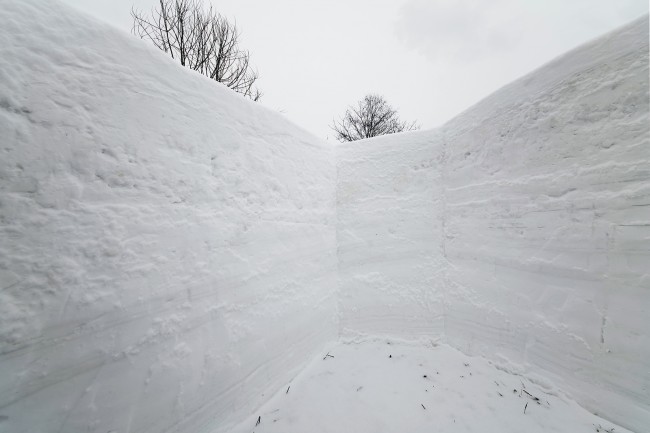
NOWs: s(k)now – snow + know
s(k)now - snow + knowElise Eeraerts at Sapporo Tenjinyama Art Studio
Sapporo Tenjinyama Art Studio
62-0932
Hokkaido, Sapporo
Opening 23 February, 5 pm
s(k)now - snow + knowElise Eeraerts at Sapporo Tenjinyama Art Studio
Sapporo Tenjinyama Art Studio
62-0932
Hokkaido, Sapporo
Opening 23 February, 5 pm
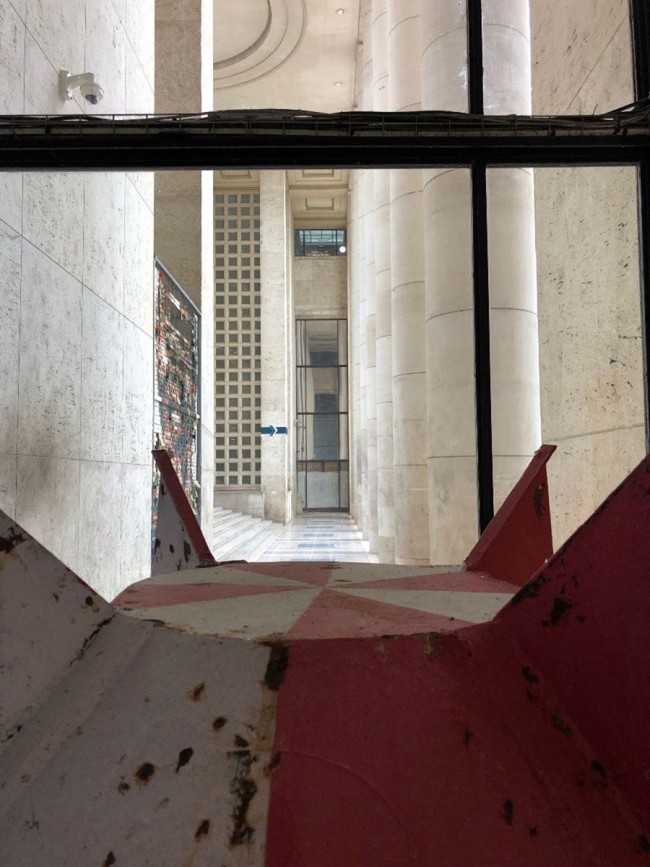
NOWs: Julius von Bismarck at Palais de Tokyo
Die Mimik der TethysJulius von Bismarck at Palais de Tokyo
Palais de Tokyo
13 Avenue du Président Wilson
75116 Paris
Opening
18 February, 9pm
Inspired by the figure of Tethys – a sea goddess in Greek mythology, the daughter of the sky (Ouranos) and of the earth (Gaia) – Julius von Bismarck has conceived the original project Die Mimik der Tethys (the expressions of Tethys), for which he has moved the oceans. That is at least the sensation produced by the presence of a buoy hung over the Palais de Tokyo’s Palier d’honneur, corroded by sea salt and covered by dry seaweed. In perpetual motion, the buoy reproduces the movements of its original setting, off the Atlantic coast. It is in this way that the visitors find themselves metaphorically under the ocean, and can directly perceive the sway of its waves, which can be either gentle, or wild.
The artist works on the human perception of natural phenomena, either by using highly technical approaches, or by simple site specific gestures. As he puts it: “it’s about the perfect image we have of nature. In reality, it doesn’t look like we imagine it does in a Caspar David Friedrich pastoral painting.” The astonishing sensation created by his moving buoy does indeed depict a misappropriated or modified vision of nature, transforming the building into a submarine world, paced by a giant pendulum that obeys only itself.
Die Mimik der Tethys works like a barometer of nature’s moods. As a random alternation of moments of calm and violence, this hypnotic installation plunges the visitors into the heart of an immersive relationship with nature. Far from being idealised, it takes over the Palais de Tokyo and is unveiled in an extremely unstable way, a tireless heaving that reminds us of the tender osmosis that links us, just like our vain desire to control our environment, with the risk of utterly destroying it.
Curated by Anna Morettini & Daria de Beauvais
Interview with Julius von Bismarck in Monopol here
Die Mimik der TethysJulius von Bismarck at Palais de Tokyo
Palais de Tokyo
13 Avenue du Président Wilson
75116 Paris
Eröffnung
18. Februar, 21 h
Inspired by the figure of Tethys – a sea goddess in Greek mythology, the daughter of the sky (Ouranos) and of the earth (Gaia) – Julius von Bismarck has conceived the original project Die Mimik der Tethys (the expressions of Tethys), for which he has moved the oceans. That is at least the sensation produced by the presence of a buoy hung over the Palais de Tokyo’s Palier d’honneur, corroded by sea salt and covered by dry seaweed. In perpetual motion, the buoy reproduces the movements of its original setting, off the Atlantic coast. It is in this way that the visitors find themselves metaphorically under the ocean, and can directly perceive the sway of its waves, which can be either gentle, or wild.
The artist works on the human perception of natural phenomena, either by using highly technical approaches, or by simple site specific gestures. As he puts it: “it’s about the perfect image we have of nature. In reality, it doesn’t look like we imagine it does in a Caspar David Friedrich pastoral painting.” The astonishing sensation created by his moving buoy does indeed depict a misappropriated or modified vision of nature, transforming the building into a submarine world, paced by a giant pendulum that obeys only itself.
Die Mimik der Tethys works like a barometer of nature’s moods. As a random alternation of moments of calm and violence, this hypnotic installation plunges the visitors into the heart of an immersive relationship with nature. Far from being idealised, it takes over the Palais de Tokyo and is unveiled in an extremely unstable way, a tireless heaving that reminds us of the tender osmosis that links us, just like our vain desire to control our environment, with the risk of utterly destroying it.
Curated by Anna Morettini & Daria de Beauvais
Interview mit Julius von Bismarck in Monopol hier
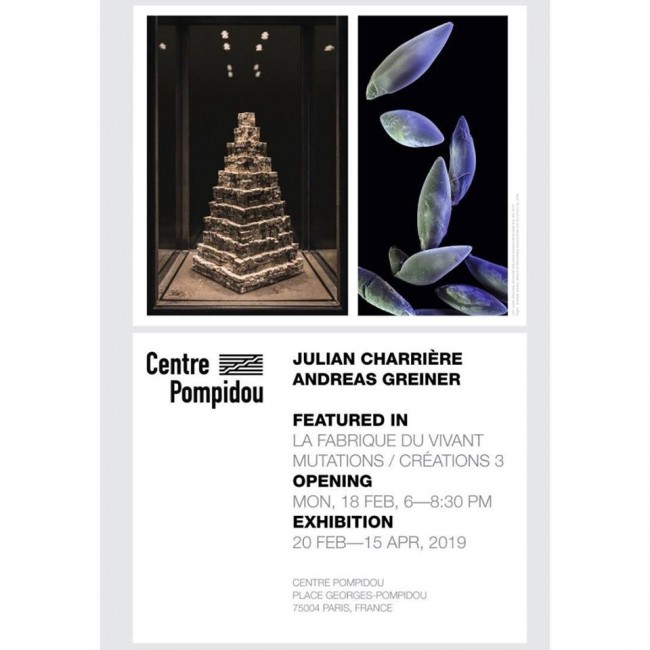
NOWs: La Fabrique du Vivant – Designing the Living
La Fabrique du Vivant - Mutations / Créations 3Group exhibition with Andreas Greiner, Julian Charrière et al.
Galerie 4 – Centre Georges Pompidou
Places Georges Pompidou
75004 Paris
Discover an archaeology of living things and artificial life in an exhibition that presents, in a forward-looking manner, the recent works of fifty creators along with the research coming from scientific laboratories. The very material of the exhibition is evolving, certain works being involved in a process of growth or degeneration. One hundred projects are exhibited, several of which have been designed for the occasion.
Mutations/Créations, the annual creation and innovation laboratory at the Centre Pompidou questions the links between the arts, science, engineering and innovation. The cycle brings together artists, engineers, scientists and entrepreneurs, all the protagonists of the sensory and the intelligible, who affect and transgress our present. For its third edition, the event brings together the visual and digital arts, design and speech, in the course of a collective exhibition: “Designing the Living [La Fabrique du Vivant]”, the first personal and monographic exhibition in Europe of the Brazilian artist Erika Verzutti, and the third edition of the Vertigo forum, conducted by the Ircam.
Mutations / Créations 3 summons up design, visual and digital art, through a group exhibition, Designing the Living [La Fabrique du vivant], the first European monographic exhibition of Brazilian artist Erika Verzutti, and the third edition of the «Vertigo» forum, organised by Ircam.
In this digital era, a new interaction between creation and life sciences is in motion. The notion of ‘life’ is presented today in an artificial form where matter itself is explored. Biotechnologies are now a medium used by artists, designers and architects. If digital simulation tools allow us to recreate the living, we must ask ourselves the question: how do we programme the living?
In partnership with Ircam, Designing the Living [La Fabrique du vivant] examines the changes in the concept of nature linked to technological production. The exhibition retraces an archaeology of the living and artificial life. Decidedly forward-looking, it presents the most significant creations and innovations in the field of art, design and architecture through works by some fifty designers. Its matter is changeable; certain works are undergoing a process of growth or deterioration. Among the hundred or so works on exhibit, some have been created especially for this event. Ircam presents Biotope, an installation by the composer Jean-Luc Hervé, which interacts along the visitor’s path, like a living organism.
Between biology and genetics, design takes a cross-disciplinary approach, like a biotechnological artefact where living matter dictates the form. Design now makes use of ‘bio-manufacturing’ and of new ‘disruptive technologies’ around living matter. Bio-materials, produced from biological organisms (fungus mycelium and bacteria, etc.) have generated innovative objects, such as the Half Life Lamp (2010), a bioluminescent lamp formed from genetically modified material by the Dutch designer Joris Laarman. Sustainable objects by designers Jonas Edvard and Maurizio Montalti (Officina Corpuscoli) explore the potential of fungus mycelium, or the biodegradable objects by Eric Klarenbeek produced from microalgae are among many others. To create an architectural sculpture in situ, specially designed for the exhibition, the American artist David Benjamin (The Living) uses a new building method based on bricks which grow together and are assembled by bio-welding.
Micro-organisms thus become an architectural medium and building material. The architects implement models based on the self-generating processes of matter, simulating the evolving systems of developing life. They produce new composites, made from both living and synthetic materials (the Aguahoja project by Neri Oxman with her laboratory at the MIT Media Lab) to develop environmental projects (energy efficiency, pollution-removing materials and bio-photovoltaics, etc.). The future of architecture lies in genetic engineering and synthetic biology, in order to produce new forms of nature between the ‘digital ecosystem’ and life systems. The installations on an architectural scale presented here are authentic biotechnological ecosystems. The London-based architects from EcologicStudio have built a structure through 3D printing, a sort of ‘cyber-garden’ integrating photosynthetic micro-algae. Marcos Cruz and his BiotA Lab at University College London present panels in bio-receptive concrete, designed to foster the growth of micro-organisms, moss and lichen in an urban environment. The French agency X-TU is leading research around organically-inspired architecture, in the firm belief that living organisms are the bio-technological revolution of the future.
The congruence of living matter and technologies took hold in the field of artistic creation towards the mid-1990s. In 1998, Eduardo Kac advocated transgenic art, transforming natural organisms by inoculating them with synthetic genes or by transferring the genetic material of one organism to another in an effort to create new forms of life. In Australia in the early 2000s, The Tissue Culture & Art Project (Oron Catts & Ionat Zurr) explored life technologies as an artistic medium through the implementation of a new object/subject, a sort of ‘semi-living’. In this wake followed Amy Congdon’s research in cell regeneration, or the work of the designer Hongjie Yang, who created the Semi-Human Vase (2015) from human cells, thus crossing over a new boundary. Between nature and technology, a new ‘half-living’ artefact emerged, the result of automated manufacture and life-simulating software. Artists explored the hybridisation of human and plant cells (Spela Petric, Elaine Whittaker) using new technologies, or created self-generating works with endlessly developing forms (Hicham Berrada). Alexandra Daisy Ginsberg, Christina Agapakis and Sissel Tolaas recreated the scent of plants which had disappeared in the 19th century. The emblematic Crystal Works (2008-2012) by the Japanese artist and designer Tokujin Yoshioka constitute a highlight of the exhibition. He developed a unique production procedure which enables the development of organic forms through a crystallisation process, resulting in objects such the Venus Chair.
A timeline retraces an archaeology of the living and artificial life, including naturalist photos dating from the 1930s by Jean Painlevé or Laure Albin Guillot and a video by Karl Sims. The German artist Andreas Greiner presents photos which capture life by electronic microscopy. Lastly, projects from the field of scientific and medical research are also featured.
With
Shamees Aden; Laure Albin Guillot; François Azambourg; Heather Barnett; Sonja Bäumel and Manuel Selg; BCL (Georg Tremmel + Shiho Fukuhara); Hicham Berrada; Burton Nitta (Michael Burton and Michiko Nitta); Julian Charrière; Natsai Audrey Chieza; Carole Collet; Amy Congdon; Marcos Cruz and Brenda Parker (Bio-ID, UCL); The Disease Biophysics Group from Harvard University; Alexandre Echasseriau; Jonas Edvard; Alexandra Daisy Ginsberg, Christina Agapakis and Sissel Tolaas; Lia Giraud; Guillian Graves (Big Bang Project); Andreas Greiner; Ernst Haeckel; Perry Hall; Jean-Luc Hervé; Marlène Huissoud; Eduardo Kac; Amy Karle; Allison Kudla; Joris Laarman; The Living (David Benjamin); Julia Lohmann; Julian Melchiorri; MIT Media Lab (Cindy Hsin-Liu Kao) in collaboration with Microsoft Research; Mogu; Isaac Monté; Gabriela Munguia; Officina Corpuscoli; Neri Oxman & The Mediated Matter Group, MIT; Jean Painlevé; Claudia Pasquero and Marco Poletto (EcoLogicStudio); Institut Pasteur; Špela Petric; PILI (Marie-Sarah Adenis); Pamela Rosenkranz; Daan Roosegaarde; Karl Sims; Studio Formafantasma (Andrea Trimarchi and Simone Farresin); Studio Nienke Hoogvliet (Nienke Hoogvliet); Studio Klarenbeek & Dros; Studio Libertiny (Tomas Libertiny); The Tissue Culture & Art Project (Oron Catts & Ionat Zurr) in collaboration with Robert Foster; Samuel Tomatis; Urban Morphogenesis Lab (The Bartlett UCL); Tim van Cromvoirt; Teresa van Dongen; Elaine Whittaker; Worcester Polytechnic Institute; Wyss Institute from Harvard University; XTU Architects (Anouk Legendre and Nicolas Desmazières); Hongjie Yang; Tokujin Yoshioka
Curated by Marie-Ange Brayer and Olivier Zeitoun
La Fabrique du Vivant - Mutations / Créations 3Group exhibition with Andreas Greiner, Julian Charrière et al.
Galerie 4 – Centre Georges Pompidou
Places Georges Pompidou
75004 Paris
Discover an archaeology of living things and artificial life in an exhibition that presents, in a forward-looking manner, the recent works of fifty creators along with the research coming from scientific laboratories. The very material of the exhibition is evolving, certain works being involved in a process of growth or degeneration. One hundred projects are exhibited, several of which have been designed for the occasion.
Mutations/Créations, the annual creation and innovation laboratory at the Centre Pompidou questions the links between the arts, science, engineering and innovation. The cycle brings together artists, engineers, scientists and entrepreneurs, all the protagonists of the sensory and the intelligible, who affect and transgress our present. For its third edition, the event brings together the visual and digital arts, design and speech, in the course of a collective exhibition: “Designing the Living [La Fabrique du Vivant]”, the first personal and monographic exhibition in Europe of the Brazilian artist Erika Verzutti, and the third edition of the Vertigo forum, conducted by the Ircam.
Mutations / Créations 3 summons up design, visual and digital art, through a group exhibition, Designing the Living [La Fabrique du vivant], the first European monographic exhibition of Brazilian artist Erika Verzutti, and the third edition of the «Vertigo» forum, organised by Ircam.
In this digital era, a new interaction between creation and life sciences is in motion. The notion of ‘life’ is presented today in an artificial form where matter itself is explored. Biotechnologies are now a medium used by artists, designers and architects. If digital simulation tools allow us to recreate the living, we must ask ourselves the question: how do we programme the living?
In partnership with Ircam, Designing the Living [La Fabrique du vivant] examines the changes in the concept of nature linked to technological production. The exhibition retraces an archaeology of the living and artificial life. Decidedly forward-looking, it presents the most significant creations and innovations in the field of art, design and architecture through works by some fifty designers. Its matter is changeable; certain works are undergoing a process of growth or deterioration. Among the hundred or so works on exhibit, some have been created especially for this event. Ircam presents Biotope, an installation by the composer Jean-Luc Hervé, which interacts along the visitor’s path, like a living organism.
Between biology and genetics, design takes a cross-disciplinary approach, like a biotechnological artefact where living matter dictates the form. Design now makes use of ‘bio-manufacturing’ and of new ‘disruptive technologies’ around living matter. Bio-materials, produced from biological organisms (fungus mycelium and bacteria, etc.) have generated innovative objects, such as the Half Life Lamp (2010), a bioluminescent lamp formed from genetically modified material by the Dutch designer Joris Laarman. Sustainable objects by designers Jonas Edvard and Maurizio Montalti (Officina Corpuscoli) explore the potential of fungus mycelium, or the biodegradable objects by Eric Klarenbeek produced from microalgae are among many others. To create an architectural sculpture in situ, specially designed for the exhibition, the American artist David Benjamin (The Living) uses a new building method based on bricks which grow together and are assembled by bio-welding.
Micro-organisms thus become an architectural medium and building material. The architects implement models based on the self-generating processes of matter, simulating the evolving systems of developing life. They produce new composites, made from both living and synthetic materials (the Aguahoja project by Neri Oxman with her laboratory at the MIT Media Lab) to develop environmental projects (energy efficiency, pollution-removing materials and bio-photovoltaics, etc.). The future of architecture lies in genetic engineering and synthetic biology, in order to produce new forms of nature between the ‘digital ecosystem’ and life systems. The installations on an architectural scale presented here are authentic biotechnological ecosystems. The London-based architects from EcologicStudio have built a structure through 3D printing, a sort of ‘cyber-garden’ integrating photosynthetic micro-algae. Marcos Cruz and his BiotA Lab at University College London present panels in bio-receptive concrete, designed to foster the growth of micro-organisms, moss and lichen in an urban environment. The French agency X-TU is leading research around organically-inspired architecture, in the firm belief that living organisms are the bio-technological revolution of the future.
The congruence of living matter and technologies took hold in the field of artistic creation towards the mid-1990s. In 1998, Eduardo Kac advocated transgenic art, transforming natural organisms by inoculating them with synthetic genes or by transferring the genetic material of one organism to another in an effort to create new forms of life. In Australia in the early 2000s, The Tissue Culture & Art Project (Oron Catts & Ionat Zurr) explored life technologies as an artistic medium through the implementation of a new object/subject, a sort of ‘semi-living’. In this wake followed Amy Congdon’s research in cell regeneration, or the work of the designer Hongjie Yang, who created the Semi-Human Vase (2015) from human cells, thus crossing over a new boundary. Between nature and technology, a new ‘half-living’ artefact emerged, the result of automated manufacture and life-simulating software. Artists explored the hybridisation of human and plant cells (Spela Petric, Elaine Whittaker) using new technologies, or created self-generating works with endlessly developing forms (Hicham Berrada). Alexandra Daisy Ginsberg, Christina Agapakis and Sissel Tolaas recreated the scent of plants which had disappeared in the 19th century. The emblematic Crystal Works (2008-2012) by the Japanese artist and designer Tokujin Yoshioka constitute a highlight of the exhibition. He developed a unique production procedure which enables the development of organic forms through a crystallisation process, resulting in objects such the Venus Chair.
A timeline retraces an archaeology of the living and artificial life, including naturalist photos dating from the 1930s by Jean Painlevé or Laure Albin Guillot and a video by Karl Sims. The German artist Andreas Greiner presents photos which capture life by electronic microscopy. Lastly, projects from the field of scientific and medical research are also featured.
With
Shamees Aden; Laure Albin Guillot; François Azambourg; Heather Barnett; Sonja Bäumel and Manuel Selg; BCL (Georg Tremmel + Shiho Fukuhara); Hicham Berrada; Burton Nitta (Michael Burton and Michiko Nitta); Julian Charrière; Natsai Audrey Chieza; Carole Collet; Amy Congdon; Marcos Cruz and Brenda Parker (Bio-ID, UCL); The Disease Biophysics Group from Harvard University; Alexandre Echasseriau; Jonas Edvard; Alexandra Daisy Ginsberg, Christina Agapakis and Sissel Tolaas; Lia Giraud; Guillian Graves (Big Bang Project); Andreas Greiner; Ernst Haeckel; Perry Hall; Jean-Luc Hervé; Marlène Huissoud; Eduardo Kac; Amy Karle; Allison Kudla; Joris Laarman; The Living (David Benjamin); Julia Lohmann; Julian Melchiorri; MIT Media Lab (Cindy Hsin-Liu Kao) in collaboration with Microsoft Research; Mogu; Isaac Monté; Gabriela Munguia; Officina Corpuscoli; Neri Oxman & The Mediated Matter Group, MIT; Jean Painlevé; Claudia Pasquero and Marco Poletto (EcoLogicStudio); Institut Pasteur; Špela Petric; PILI (Marie-Sarah Adenis); Pamela Rosenkranz; Daan Roosegaarde; Karl Sims; Studio Formafantasma (Andrea Trimarchi and Simone Farresin); Studio Nienke Hoogvliet (Nienke Hoogvliet); Studio Klarenbeek & Dros; Studio Libertiny (Tomas Libertiny); The Tissue Culture & Art Project (Oron Catts & Ionat Zurr) in collaboration with Robert Foster; Samuel Tomatis; Urban Morphogenesis Lab (The Bartlett UCL); Tim van Cromvoirt; Teresa van Dongen; Elaine Whittaker; Worcester Polytechnic Institute; Wyss Institute from Harvard University; XTU Architects (Anouk Legendre and Nicolas Desmazières); Hongjie Yang; Tokujin Yoshioka
Curated by Marie-Ange Brayer and Olivier Zeitoun
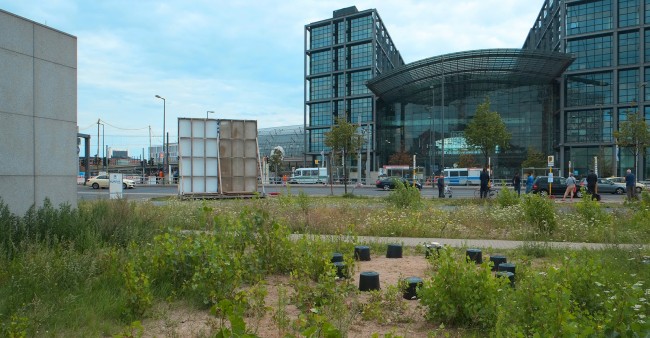
NOWs: Am Rand von EuropaCity
Parzellengrenzgang am Nordhafen, 30.9.18
Am Rand von EuropaCityEine künstlerische Veranstaltungsreihe von Alexis Hyman Wolff und Yves Mettler
Liebe Nachbar*innen und Interessierte,
wir hoffen, Ihr seid alle gut ins neue Jahr angekommen. Die zweite Phase des Projekts Am Rand von EuropaCity nimmt nun, dank Eurer Mitarbeit, weiter Form an, und wir freuen uns, folgende Möglichkeiten zur weiteren Zusammenarbeit in 2019 vorzustellen.
Das Wochenende der Europaparlamentswahlen (25./26. Mai 2019) bleibt ein wichtiges symbolisches Datum, um Fragen um die Verbindung zwischen lokalen und globalen „Entwicklungen“ anhand der EuropaCity öffentlich zu thematisieren. Wir arbeiten darauf hin sowohl eine PLAKATKAMPAGNE als auch eine INTERVENTION IM ÖFFENTLICHEN RAUM am 26. Mai zu realisieren. Beide Aktionen wollen wir gerne gemeinsam mit Euch und weiteren Nachbar*innen und Interessierten entwickeln. Ebenso werden die “KLANG-FORSCHUNG” des Projekts durch eine Workshopreihe mit Gilles Aubry weitergeführt.
Beim Workshop am 1. Dezember haben einige schon Interesse an einer Teilnahme angekündigt und sich in Arbeitsgruppen eingetragen. Bitte schaut Euch unten die kurzen Beschreibungen der drei Gruppen an, die die Vorhaben und den damit verbundenen Zeitaufwand beschreiben. Meldet euch bitte per Email so bald wie möglich, aber spätestens bis zum 10.Februar zurück und für die jeweiligen Gruppen an.
PLAKATKAMPAGNE (2 Treffen/Workshops)
Erstes Treffen: 17. Februar, 15-18 Uhr, Treffpunkt wird noch bekannt gegeben
Auf dem Hintergrund des “Zuhörens” als radikales politisches Akt, möchte das Projekt Am Rand von EuropaCity als Sprachrohr und Verstärker für Stimmen der Bürger*innen angesichts städtebaulicher Entscheidungen und gesellschaftlicher Entwicklungen in ihrem unmittelbaren Wohnraum dienen. Die Plakat-Gruppe wird sich mit dem Medium Plakat auseinandersetzen. Es werden Plakate gemeinsam realisiert, die sowohl im öffentlichen Raum aufgehängt werden, als auch Teil eines Spaziergangs/Umzugs im Mai verwendet werden sollen. Als Material werden u.a die im Dezember-Workshop entstanden Mitschriften weiterverarbeitet.
INTERVENTION IM STADTRAUM (3-4 Treffen/Workshops/Spaziergänge)
Erstes Treffen: Sonntag 27. Januar, 15-17h, Treffpunkt wird noch bekannt gegeben
Wir wollen Draussen was MACHEN! Der Anspruch auf öffentlichen Raum, kulturellen Räume, Räume zum Zusammenkommen wollen wir in einer kreativen und unerwarteten INTERVENTION stellen. Eine Idee wäre, mit den unterschiedlichen “Erden” aus den Nachbarschaften Moabit, Wedding und Mitte, am Rand der EuropaCity eine Sitzbank zu bauen. Hier kommt die „Spaziergang“-Gruppe zusammen mit all den Nachbarschafts-Interessierten, die mit künstlerisch-aktivistischen Mitteln etwas im Stadtraum verändern wollen.
KLANG-FORSCHUNG (3-4 Terminen zwischen April und Juni 2019)
Erstes Treffen am Wochenende 20. oder 21. April bei Scriptings/Wedding
Im Anschluss an unserem Workshop zum kollektiven Zuhören im Dezember, unternimmt die „Klang-Gruppe” weitere sonische Erkundungen der Europacity und ihrer Ränder. Im Rahmen von vier Nachmittags-Treffen, werden neue Stimmen der Nachbarschaft identifiziert, aufgenommen und zusammenmontiert. Diese Stimmen können die der Bewohner*innen der Europacity sein, ungehörte Stimmen von spezifischen Communities, atmosphärische und nicht-menschliche Stimmen, als auch die Stimmen der EuropaCity-Gruppe selber. Die daraus entstehende Komposition soll die vorgesehene Print-Publikation ergänzen und über Cashmere Radio Berlin gesendet werden.
Mit herzlichen Grüßen
Alexis Hyman Wolff, Gilles Aubry, Achim Lengerer, Yves Mettler
Temporäre Sitzegelegenheit am Europaplatz, Sommer 2015
Parzellengrenzgang am Nordhafen, 30.9.18
Am Rand von EuropaCityEine künstlerische Veranstaltungsreihe von Alexis Hyman Wolff und Yves Mettler
Liebe Nachbar*innen und Interessierte,
wir hoffen, Ihr seid alle gut ins neue Jahr angekommen. Die zweite Phase des Projekts Am Rand von EuropaCity nimmt nun, dank Eurer Mitarbeit, weiter Form an, und wir freuen uns, folgende Möglichkeiten zur weiteren Zusammenarbeit in 2019 vorzustellen.
Das Wochenende der Europaparlamentswahlen (25./26. Mai 2019) bleibt ein wichtiges symbolisches Datum, um Fragen um die Verbindung zwischen lokalen und globalen „Entwicklungen“ anhand der EuropaCity öffentlich zu thematisieren. Wir arbeiten darauf hin sowohl eine PLAKATKAMPAGNE als auch eine INTERVENTION IM ÖFFENTLICHEN RAUM am 26. Mai zu realisieren. Beide Aktionen wollen wir gerne gemeinsam mit Euch und weiteren Nachbar*innen und Interessierten entwickeln. Ebenso werden die “KLANG-FORSCHUNG” des Projekts durch eine Workshopreihe mit Gilles Aubry weitergeführt.
Beim Workshop am 1. Dezember haben einige schon Interesse an einer Teilnahme angekündigt und sich in Arbeitsgruppen eingetragen. Bitte schaut Euch unten die kurzen Beschreibungen der drei Gruppen an, die die Vorhaben und den damit verbundenen Zeitaufwand beschreiben. Meldet euch bitte per Email so bald wie möglich, aber spätestens bis zum 10.Februar zurück und für die jeweiligen Gruppen an.
PLAKATKAMPAGNE (2 Treffen/Workshops)
Erstes Treffen: 17. Februar, 15-18 Uhr, Treffpunkt wird noch bekannt gegeben
Auf dem Hintergrund des “Zuhörens” als radikales politisches Akt, möchte das Projekt Am Rand von EuropaCity als Sprachrohr und Verstärker für Stimmen der Bürger*innen angesichts städtebaulicher Entscheidungen und gesellschaftlicher Entwicklungen in ihrem unmittelbaren Wohnraum dienen. Die Plakat-Gruppe wird sich mit dem Medium Plakat auseinandersetzen. Es werden Plakate gemeinsam realisiert, die sowohl im öffentlichen Raum aufgehängt werden, als auch Teil eines Spaziergangs/Umzugs im Mai verwendet werden sollen. Als Material werden u.a die im Dezember-Workshop entstanden Mitschriften weiterverarbeitet.
INTERVENTION IM STADTRAUM (3-4 Treffen/Workshops/Spaziergänge)
Erstes Treffen: Sonntag 27. Januar, 15-17h, Treffpunkt wird noch bekannt gegeben
Wir wollen Draussen was MACHEN! Der Anspruch auf öffentlichen Raum, kulturellen Räume, Räume zum Zusammenkommen wollen wir in einer kreativen und unerwarteten INTERVENTION stellen. Eine Idee wäre, mit den unterschiedlichen “Erden” aus den Nachbarschaften Moabit, Wedding und Mitte, am Rand der EuropaCity eine Sitzbank zu bauen. Hier kommt die „Spaziergang“-Gruppe zusammen mit all den Nachbarschafts-Interessierten, die mit künstlerisch-aktivistischen Mitteln etwas im Stadtraum verändern wollen.
KLANG-FORSCHUNG (3-4 Terminen zwischen April und Juni 2019)
Erstes Treffen am Wochenende 20. oder 21. April bei Scriptings/Wedding
Im Anschluss an unserem Workshop zum kollektiven Zuhören im Dezember, unternimmt die „Klang-Gruppe” weitere sonische Erkundungen der Europacity und ihrer Ränder. Im Rahmen von vier Nachmittags-Treffen, werden neue Stimmen der Nachbarschaft identifiziert, aufgenommen und zusammenmontiert. Diese Stimmen können die der Bewohner*innen der Europacity sein, ungehörte Stimmen von spezifischen Communities, atmosphärische und nicht-menschliche Stimmen, als auch die Stimmen der EuropaCity-Gruppe selber. Die daraus entstehende Komposition soll die vorgesehene Print-Publikation ergänzen und über Cashmere Radio Berlin gesendet werden.
Mit herzlichen Grüßen
Alexis Hyman Wolff, Gilles Aubry, Achim Lengerer, Yves Mettler
Temporäre Sitzegelegenheit am Europaplatz, Sommer 2015
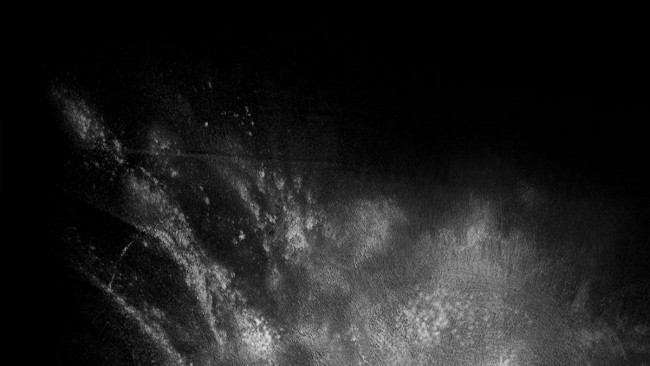
NOWs: Luv und Lee by Sophia Pompéry and Lena von Goedeke
Luv und LeeInstallation
hase29, Kunstverein Osnabrück
Hasestr. 29/30
49074 Osnabrück
Opening
15 February, 7pm
Welcome: Volker Bajus, leader of the Green parliamentary group on behalf of the Lord Mayor of Osnabrück
Introduction: Elisabeth Lumme & Michael Kröger, curators
Lena von Goedeke und Sophia Pompéry realisieren für den Osnabrücker Kunstverein hase29 unter dem Titel Luv und Lee eine raumspezifische Installation, die den gemaserten Fußboden des Ausstellungsortes in besonderer Weise inszeniert: Mit einem Gebläse verteilen sich vier Tonnen Sand, sodass Wirbel entstehen, Verwehungen Spuren bestimmen, Luftstöße den Boden frei fegen oder wieder unter weichem Sand verbergen. In diesem Strömungsfeld werden unterschiedliche Störkörper eingefügt, die den Sand stellenweise zurück halten, sodass Zeichen auf dem Boden je nach Verwehung sichtbar werden, oder im Sand verschwinden.
Luv und LeeInstallation
hase29, Kunstverein Osnabrück
Hasestr. 29/30
49074 Osnabrück
Eröffnung
15. Februar, 19h
Begrüßung: Volker Bajus, Fraktionsvorsitzender der Grünen in Vertretung für den Oberbürgermeister der Stadt Osnabrück
Einführung: Elisabeth Lumme & Michael Kröger, Kuratoren
Lena von Goedeke und Sophia Pompéry realisieren für den Osnabrücker Kunstverein hase29 unter dem Titel Luv und Lee eine raumspezifische Installation, die den gemaserten Fußboden des Ausstellungsortes in besonderer Weise inszeniert: Mit einem Gebläse verteilen sich vier Tonnen Sand, sodass Wirbel entstehen, Verwehungen Spuren bestimmen, Luftstöße den Boden frei fegen oder wieder unter weichem Sand verbergen. In diesem Strömungsfeld werden unterschiedliche Störkörper eingefügt, die den Sand stellenweise zurück halten, sodass Zeichen auf dem Boden je nach Verwehung sichtbar werden, oder im Sand verschwinden.
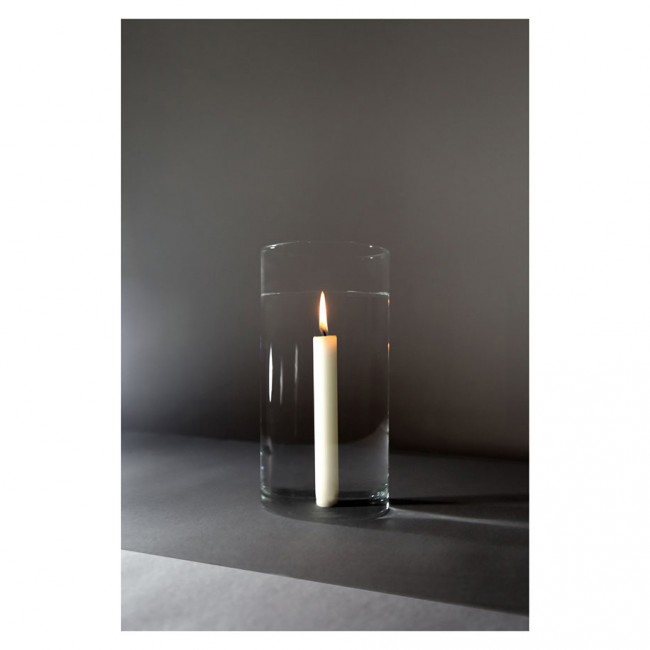
NOWs: unbuntpunkt
Sophia Pompéry, Schein, 2015, C-Print, 54 x 36 cm, Ed. 5 + 2 AP, © Sophia Pompéry / VG-Bildkunst Bonn, 2015
unbuntpunktGroup Exhibition
Galerie Britta von Rettberg
Gabelsbergerstraße 51
80333 München
Opening: 7 February, 6pm
With: Tom Früchtl, Simone Lanzenstiel, Florian Lechner, Sophia Pompéry
Die Gruppenausstellung unbuntpunkt (08.02.-22.03.2019) bringt vier künstlerische Positionen zusammen, die besonders das Interesse für Illusion, Licht und Raum vereint: Tom Früchtl, Simone Lanzenstiel, Florian Lechner und Sophia Pompéry. In Installationen und Skulpturen, Fotografien und malerischen Arbeiten legen die vier Künstlerinnen und Künstler ihr Augenmerk auf die Frage, wie sich die Wirkung alltäglicher Materialien und Situationen durch künstlerische Aneignung verändert. Die meist konzeptuellen, in ihrer Farbigkeit stark reduzierten Arbeiten überwinden kompositorische Bildgrenzen und hinterfragen alltägliche Sehgewohnheiten. Dafür nutzt jede Künstlerin und jeder Künstler seine eigene Strategie: Tom Früchtl hebt in seinen Arbeiten die Grenze zwischen Gegenstand und Abbild auf, Simone Lanzenstiel kreiert aus zerbrechlichen Materialien sensible Bildlandschaften, Florian Lechner komponiert Skulpturen und Installationen aus Licht und Schatten und Sophia Pompéry bringt in ihrer Kunst physikalische Gesetze ins Wanken.
Die Ausstellung wurde von den Künstlerinnen und Künstlern selbst in Zusammenarbeit mit der Galerie Rettberg kuratiert. Der Titel der Ausstellung unbuntpunkt bezieht sich auf den Weißpunkt, der beim Messen von Licht- und Farbwerten als Referenzpunkt verwendet wird. Auch im Verlauf des Schaffensprozesses und in der finalen Bildauswahl stimmten sich die Künstler aufeinander ab, wodurch ihre Arbeiten zu gegenseitigen Bezugspunkten wurden. Es entwickelte sich ein Gesamtkonzept, das sowohl thematisch als auch in ihrer künstlerischen Herangehensweise ineinandergreift.
Sophia Pompéry, Schein, 2015, C-Print, 54 x 36 cm, Ed. 5 + 2 AP, © Sophia Pompéry / VG-Bildkunst Bonn, 2015
unbuntpunktGroup Exhibition
Galerie Britta von Rettberg
Gabelsbergerstraße 51
80333 München
Eröffnung: 7. Februar, 18h
Mit: Tom Früchtl, Simone Lanzenstiel, Florian Lechner, Sophia Pompéry
Die Gruppenausstellung unbuntpunkt (08.02.-22.03.2019) bringt vier künstlerische Positionen zusammen, die besonders das Interesse für Illusion, Licht und Raum vereint: Tom Früchtl, Simone Lanzenstiel, Florian Lechner und Sophia Pompéry. In Installationen und Skulpturen, Fotografien und malerischen Arbeiten legen die vier Künstlerinnen und Künstler ihr Augenmerk auf die Frage, wie sich die Wirkung alltäglicher Materialien und Situationen durch künstlerische Aneignung verändert. Die meist konzeptuellen, in ihrer Farbigkeit stark reduzierten Arbeiten überwinden kompositorische Bildgrenzen und hinterfragen alltägliche Sehgewohnheiten. Dafür nutzt jede Künstlerin und jeder Künstler seine eigene Strategie: Tom Früchtl hebt in seinen Arbeiten die Grenze zwischen Gegenstand und Abbild auf, Simone Lanzenstiel kreiert aus zerbrechlichen Materialien sensible Bildlandschaften, Florian Lechner komponiert Skulpturen und Installationen aus Licht und Schatten und Sophia Pompéry bringt in ihrer Kunst physikalische Gesetze ins Wanken.
Die Ausstellung wurde von den Künstlerinnen und Künstlern selbst in Zusammenarbeit mit der Galerie Rettberg kuratiert. Der Titel der Ausstellung unbuntpunkt bezieht sich auf den Weißpunkt, der beim Messen von Licht- und Farbwerten als Referenzpunkt verwendet wird. Auch im Verlauf des Schaffensprozesses und in der finalen Bildauswahl stimmten sich die Künstler aufeinander ab, wodurch ihre Arbeiten zu gegenseitigen Bezugspunkten wurden. Es entwickelte sich ein Gesamtkonzept, das sowohl thematisch als auch in ihrer künstlerischen Herangehensweise ineinandergreift.
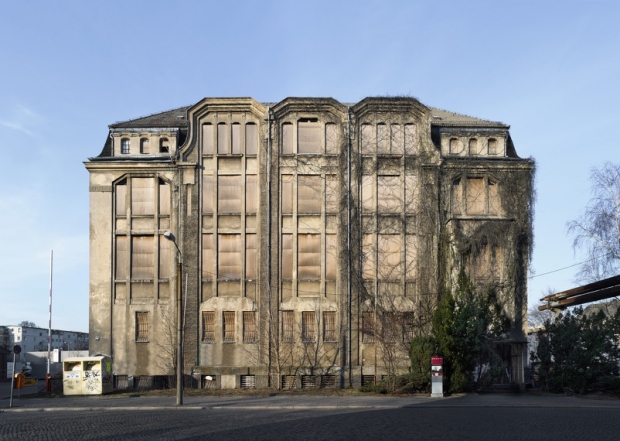
NOWs: Villa Heike & Other Stories
Photo: Eric Duch
Villa Heike & Other StoriesGroup Exhibition
Villa Heike
Freienwalder Str. 17
13055 Berlin
Alt-Hohenschönhausen
Opening
16 February, 6pm
With: Bram Braam, Pierre Granoux, Vanessa Henn, Valérie Leray, Wiebke Loeper, Jens Lüstraeten, Arwed Messmer, Manfred Pernice, Sophia Pompéry, Peter Ruehle, Torsten Ruehle, Michael Schäfer, Sonya Schönberger, Nina E. Schönefeld, Christof Zwiener
Die Ausstellung zeigt eine Auseinandersetzung mit den Transformationsprozessen einer Stadt und eines vergangenen Staates, dessen Gebäude und Architektur untrennbar mit seiner Geschichte verbunden sind. Der Ingenieur Richard Heike gründete 1903 eine Fabrik für Fleischereimaschinen und nutzte die dreistöckige preußische Villa Heike als Verwaltungs- und Wohngebäude. Ende des zweiten Weltkriegs marschierten die Sowjets ein und erschossen den Fabrikanten Heike vor der seiner Tür. 1951 übergaben sie das Gebiet an die Stasi, die in der Villa ihr geheimes NS-Archiv lagerte. Die Villa Heike wurde somit Teil eines sogenannten „Sperrgebietes” welches auf DDR-Straßenkarten nur als weißer Fleck existierte. Mit der deutschen Wiedervereinigung wurden die NS-Akten dem Bundesarchiv übergeben.
Im Jahr 2016 übernahm der Künstler Michael Schäfer mit vier Künstlerkollegen die Villa Heike, um Künstlerateliers einzurichten. Nach der Renovierung öffnet die Villa erstmals Anfang 2019 ihre Pforten für die Ausstellung VILLA & OTHER STORIES*, 30 Jahre nach dem Mauerfall.
Foto: Eric Duch
Villa Heike & Other StoriesGroup Exhibition
Villa Heike
Freienwalder Str. 17
13055 Berlin
Alt-Hohenschönhausen
Eröffnung
16. Februar, 18h
Mit: Bram Braam, Pierre Granoux, Vanessa Henn, Valérie Leray, Wiebke Loeper, Jens Lüstraeten, Arwed Messmer, Manfred Pernice, Sophia Pompéry, Peter Ruehle, Torsten Ruehle, Michael Schäfer, Sonya Schönberger, Nina E. Schönefeld, Christof Zwiener
Die Ausstellung zeigt eine Auseinandersetzung mit den Transformationsprozessen einer Stadt und eines vergangenen Staates, dessen Gebäude und Architektur untrennbar mit seiner Geschichte verbunden sind. Der Ingenieur Richard Heike gründete 1903 eine Fabrik für Fleischereimaschinen und nutzte die dreistöckige preußische Villa Heike als Verwaltungs- und Wohngebäude. Ende des zweiten Weltkriegs marschierten die Sowjets ein und erschossen den Fabrikanten Heike vor der seiner Tür. 1951 übergaben sie das Gebiet an die Stasi, die in der Villa ihr geheimes NS-Archiv lagerte. Die Villa Heike wurde somit Teil eines sogenannten „Sperrgebietes” welches auf DDR-Straßenkarten nur als weißer Fleck existierte. Mit der deutschen Wiedervereinigung wurden die NS-Akten dem Bundesarchiv übergeben.
Im Jahr 2016 übernahm der Künstler Michael Schäfer mit vier Künstlerkollegen die Villa Heike, um Künstlerateliers einzurichten. Nach der Renovierung öffnet die Villa erstmals Anfang 2019 ihre Pforten für die Ausstellung VILLA & OTHER STORIES*, 30 Jahre nach dem Mauerfall.
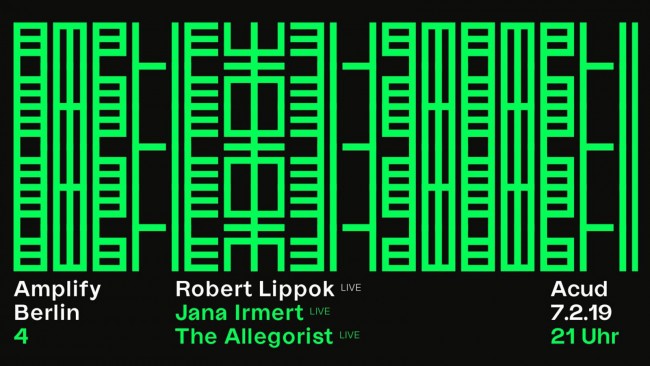
NOWs: Amplify Berlin 4
Amplify Berlin 4Concert with Robert Lippok, Jana Irmert, The Allegorist
Acud Macht Neu
Veteranenstraße 21
10119 Berlin
7 February
9pm
Acud Macht Neu presents: the fourth edition of the creative development program Amplify Berlin features live sets from mentees Jana Irmert and The Allegorist followed by a live set from their mentor Robert Lippok.
LINE-UP
Jana Irmert
… is a sound and media artist based in Berlin. Her practice involves audiovisual installations and performances, electroacoustic multichannel compositions, experimental film work and sound design and music for film. Being interested in less tangible aspects of existence like temporality and impermanence, she creates atmospheric audiovisual or sonic spaces ‘that work with dis/harmony in such a way as to mirror our imperfect world at the moment.’ (TJ Norris, Toneshift)
Her first album End of Absence was released in 2016 on Fabrique Records, followed by her second album FLOOD in 2018. Both received critical praise from various music blogs and magazines and have been internationally broadcast on RAI 3, Resonance FM and BBC Radio 3.
http://janairmert.com
The Allegorist
… aka Anna Jordan uses the pseudonym “Anna Jordan Project” for her visual artworks since 2004. In 2015 she took up another artistic name “The Allegorist” to express her auditive visions. The Allegorist stands for an imaginative journey through all ages, for a better future. It mixes all styles and genres and sets no limitations. Every great idea is welcomed and included into the mindset of a diverse unity. The Allegorist sings in the fictional and majestic Mondoneoh language, to connect all nations and honour all our ancestors. In 2016 her debut album „Botanical Utopia“ was released by „Kraak Records“. In 2017 Anna Jordan began working simultaneously on music and video production, which resulted in her latest audio-visual works for her second album „Hybrid Dimension I.“
http://www.theallegoristmusic.com
Robert Lippok [Raster-Noton]
Avant-garde German visual artist and composer Robert Lippok has been an influential player in Berlin’s thriving experimental music scene from a very early age. In 1983, he co-founded dissident punk band Ornament und Verbrechen with his brother Ronald, inspired by industrial trailblazers Throbbing Gristle. An open platform to explore jazz, electronic, and industrial concepts with like-minded collaborators of the East German underground persuasion, the group remained active until the mid-1990s, at which point it was overtaken by the brothers’ next and most well-known collaboration, the palindromic To Rococo Rot. The Krautrockish band ushered in a new generation of electronic acts committed to acoustic investigations and improvisation of all stripes. Known for his expansive imagination, inventive rhythmic reflexes, and layers of fuzzy tones, Lippok’s solo work is just as wide-ranging – from funky, glitch-y, twisted techno to stage design for operas, gallery exhibitions, and a variety of notable collaborations.
https://soundcloud.com/robert-lippok
DJ set by NE before, between and after the live sets
ABOUT AMPLIFY BERLIN
Amplify Berlin is a creative development program at ACUD Kunsthaus. Each month, Berlin-based emerging musicians have the chance to be mentored in composition, production and live performance by established musicians.
During each one-month residency, two emerging artists receive feedback and advice from their mentor, work in a private music studio, develop their live set in the ACUD Clubs concert space, as well as present an online radio show. Each residency will culminate in a live set performed by the mentees at a showcase event, on a lineup alongside their mentor.
Amplify Berlin is co-financed by the Europäischer Fonds für regionale Entwicklung (EFRE) and Musicboard Berlin.
More Info:
https://bit.ly/2CVAc2D
http://www.amplify-berlin.de
Admission: 10€ presales (plus fees), 10€ door
Amplify Berlin 4Concert with Robert Lippok, Jana Irmert, The Allegorist
Acud Macht Neu
Veteranenstraße 21
10119 Berlin
07. Februar
21 h
Acud Macht Neu presents: the fourth edition of the creative development program Amplify Berlin features live sets from mentees Jana Irmert and The Allegorist followed by a live set from their mentor Robert Lippok.
LINE-UP
Jana Irmert
… is a sound and media artist based in Berlin. Her practice involves audiovisual installations and performances, electroacoustic multichannel compositions, experimental film work and sound design and music for film. Being interested in less tangible aspects of existence like temporality and impermanence, she creates atmospheric audiovisual or sonic spaces ‘that work with dis/harmony in such a way as to mirror our imperfect world at the moment.’ (TJ Norris, Toneshift)
Her first album End of Absence was released in 2016 on Fabrique Records, followed by her second album FLOOD in 2018. Both received critical praise from various music blogs and magazines and have been internationally broadcast on RAI 3, Resonance FM and BBC Radio 3.
http://janairmert.com
The Allegorist
… aka Anna Jordan uses the pseudonym “Anna Jordan Project” for her visual artworks since 2004. In 2015 she took up another artistic name “The Allegorist” to express her auditive visions. The Allegorist stands for an imaginative journey through all ages, for a better future. It mixes all styles and genres and sets no limitations. Every great idea is welcomed and included into the mindset of a diverse unity. The Allegorist sings in the fictional and majestic Mondoneoh language, to connect all nations and honour all our ancestors. In 2016 her debut album „Botanical Utopia“ was released by „Kraak Records“. In 2017 Anna Jordan began working simultaneously on music and video production, which resulted in her latest audio-visual works for her second album „Hybrid Dimension I.“
http://www.theallegoristmusic.com
Robert Lippok [Raster-Noton]
Avant-garde German visual artist and composer Robert Lippok has been an influential player in Berlin’s thriving experimental music scene from a very early age. In 1983, he co-founded dissident punk band Ornament und Verbrechen with his brother Ronald, inspired by industrial trailblazers Throbbing Gristle. An open platform to explore jazz, electronic, and industrial concepts with like-minded collaborators of the East German underground persuasion, the group remained active until the mid-1990s, at which point it was overtaken by the brothers’ next and most well-known collaboration, the palindromic To Rococo Rot. The Krautrockish band ushered in a new generation of electronic acts committed to acoustic investigations and improvisation of all stripes. Known for his expansive imagination, inventive rhythmic reflexes, and layers of fuzzy tones, Lippok’s solo work is just as wide-ranging – from funky, glitch-y, twisted techno to stage design for operas, gallery exhibitions, and a variety of notable collaborations.
https://soundcloud.com/robert-lippok
DJ set by NE before, between and after the live sets
ABOUT AMPLIFY BERLIN
Amplify Berlin is a creative development program at ACUD Kunsthaus. Each month, Berlin-based emerging musicians have the chance to be mentored in composition, production and live performance by established musicians.
During each one-month residency, two emerging artists receive feedback and advice from their mentor, work in a private music studio, develop their live set in the ACUD Clubs concert space, as well as present an online radio show. Each residency will culminate in a live set performed by the mentees at a showcase event, on a lineup alongside their mentor.
Amplify Berlin is co-financed by the Europäischer Fonds für regionale Entwicklung (EFRE) and Musicboard Berlin.
More Info:
https://bit.ly/2CVAc2D
http://www.amplify-berlin.de
Admission: 10€ presales (plus fees), 10€ door

NOWs: New Dresden setzt Segel_Workshop mit Raul Walch
New Dresden setzt SegelWorkshop with Raul Walch
Montagscafé
Glacisstraße 28
01099 Dresden
Part II
4 February, 5 pm
Part III
25 March, 5 pm
Frei Otto erfand 1955 das Vierpunktzelt, das uns als Modell für eine neue Projektreihe stehen soll: Zusammen mit dem Berliner Künstler Raul Walch werden wir in mehreren Etappen bis zum Sommer einen eigenen Montagscafé-Pavillon entwerfen und realisieren. Bereits im letzten November haben wir mit Raul Walch diverse Fahnen fürs Montagscafé angefertigt, die wir an den jeweiligen Montagen ebenfalls fertigstellen wollen. Kommt, näht, plant und entwerft mit uns ein neues Objekt für den öffentlichen Raum!
Montagscafé – Refugees are welcome here
Ein offener Treffpunkt für Geflüchtete und Einheimische jeden Montag ab 15 Uhr im Kleinen Haus. Kommt vorbei!
New Dresden setzt SegelWorkshop mit Raul Walch
Montagscafé
Glacisstraße 28
01099 Dresden
Teil II
4. Februar, 17 h
Teil III
25. März, 17 h
Frei Otto erfand 1955 das Vierpunktzelt, das uns als Modell für eine neue Projektreihe stehen soll: Zusammen mit dem Berliner Künstler Raul Walch werden wir in mehreren Etappen bis zum Sommer einen eigenen Montagscafé-Pavillon entwerfen und realisieren. Bereits im letzten November haben wir mit Raul Walch diverse Fahnen fürs Montagscafé angefertigt, die wir an den jeweiligen Montagen ebenfalls fertigstellen wollen. Kommt, näht, plant und entwerft mit uns ein neues Objekt für den öffentlichen Raum!
Montagscafé – Refugees are welcome here
Ein offener Treffpunkt für Geflüchtete und Einheimische jeden Montag ab 15 Uhr im Kleinen Haus. Kommt vorbei!
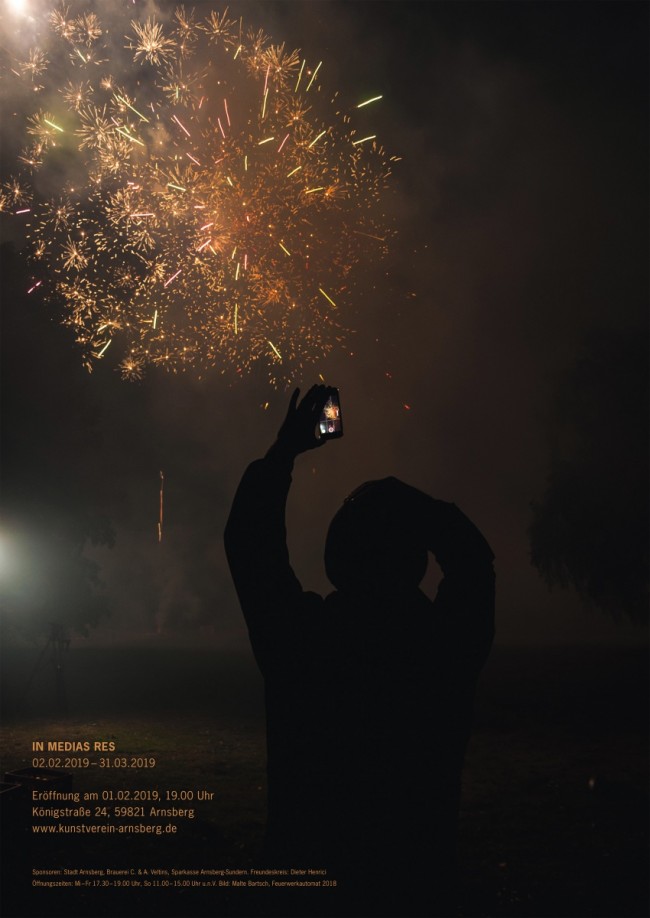
NOWs: In Medias Res
Malte Bartsch, Feuerwerkautomat 2018
In Medias ResGroup exhibition
Kunstverein Arnsberg
Königstraße 24
59821 Arnsberg
Opening
1 February 2019, 7 pm
With: Morehshin Allahyari & Daniel Rourke, Banz & Bowinkel, Malte Bartsch, Mariechen Danz, Angela Fette, Hans Haacke, Konsortium (Lars Breuer, Sebastian Freytag, Guido Münch), Reiner Maria Matysik, Theresa Schubert, Anja Schwörer
curated by Ursula Ströbele
Kommen wir gleich zur Sache und gehen ohne Umschweife ‘mitten in die Dinge‘. Die lateinische Redewendung IN MEDIAS RES stammt aus der Ars Poetica des römischen Dichters Horaz und versteht sich als lobende Äußerung gegenüber seinem griechischen Kollegen Homer. Dieser führe in seiner epochalen Illias Zuhörer*innen und Leser*innen von Beginn an in die Handlung ein, ohne sich lange in einführenden und atmosphärischen Schilderungen (ab ovo = vom Ei an) zu verlieren. An dieses lyrische Ideal anknüpfend, liegt in der Gruppenausstellung IN MEDIAS RES im Kunstverein Arnsberg das Augenmerk auf den hier versammelten Werken selbst und ihren unterschiedlichen Kontexten.
„Kunst ist die Weise, wie wir zu einer bestimmten Zeit die Realität betrachten.“
In einem Interview (1969) erläutert Hans Haacke dieses Zitat des Schriftstellers Oscar Wilde am Beispiel der Impressionisten, die im 19. Jahrhundert dazu beitrugen, dass seitdem eine neue Sensibilität für die Wahrnehmung von Licht- und Farbwerten existiert.
Doch wie hat sich heute im Zeitalter der Digitalisierung unser Blick auf die Realität geändert und wie reagieren die Künste darauf? Hybride, interagierende Realitätsformen bestimmen unseren Alltag, vom physischen Raum, natürlicher oder urbaner Umgebung bis zu virtuellen Welten, Netzwerkverknüpfungen, Synapsen- und Molekülstrukturen ungeahnter Komplexität, die sich in systemischen Verbänden ausbreiten.
Selbst das Bild, das wir von der Natur haben, entsteht heute im Computer. Wie ist die wechselseitige Bedingtheit von Parallel-Realitäten sogenannter erster, zweiter und dritter Natur zu beschreiben, bzw. welche Auswege in Paralleluniversen malen wir uns aus? Nicht nur die Naturwahrnehmung hat sich heute von der ‘unmittelbaren‘ Wahrnehmung durch unsere Sinnesorgane zur Wahrnehmung mittels vorgeschalteter Sehapparate wie Teleskop, Mikroskop, Smartphone- und Drohnenkameras oder Head Mounted Displays verschoben, sondern ist zunehmend durch Computerberechnungen geprägt.
Besitzt Kunst also das Potential einer Orientierungshilfe bzw. Kommentarfunktion, indem sie multiple, ko-existente, sich teils überlagernde Realitätsformen und -entwicklungen evident macht, dabei etwaige Realitätsverluste problematisiert und ein Bewusstsein für Zeitstrukturen schafft?
IN MEDIAS RES – aus den Dingen bzw. Werken heraus lassen sich in der individuellen Rezeption Fragen formulieren und Antworten über die eigene Position finden.
Malte Bartsch, Feuerwerkautomat 2018
In Medias ResGroup exhibition
Kunstverein Arnsberg
Königstraße 24
59821 Arnsberg
Eröffnung
01. Februar 2019, 19h
Mit: Morehshin Allahyari & Daniel Rourke, Banz & Bowinkel, Malte Bartsch, Mariechen Danz, Angela Fette, Hans Haacke, Konsortium (Lars Breuer, Sebastian Freytag, Guido Münch), Reiner Maria Matysik, Theresa Schubert, Anja Schwörer
kuratiert von Ursula Ströbele
Kommen wir gleich zur Sache und gehen ohne Umschweife ‘mitten in die Dinge‘. Die lateinische Redewendung IN MEDIAS RES stammt aus der Ars Poetica des römischen Dichters Horaz und versteht sich als lobende Äußerung gegenüber seinem griechischen Kollegen Homer. Dieser führe in seiner epochalen Illias Zuhörer*innen und Leser*innen von Beginn an in die Handlung ein, ohne sich lange in einführenden und atmosphärischen Schilderungen (ab ovo = vom Ei an) zu verlieren. An dieses lyrische Ideal anknüpfend, liegt in der Gruppenausstellung IN MEDIAS RES im Kunstverein Arnsberg das Augenmerk auf den hier versammelten Werken selbst und ihren unterschiedlichen Kontexten.
„Kunst ist die Weise, wie wir zu einer bestimmten Zeit die Realität betrachten.“
In einem Interview (1969) erläutert Hans Haacke dieses Zitat des Schriftstellers Oscar Wilde am Beispiel der Impressionisten, die im 19. Jahrhundert dazu beitrugen, dass seitdem eine neue Sensibilität für die Wahrnehmung von Licht- und Farbwerten existiert.
Doch wie hat sich heute im Zeitalter der Digitalisierung unser Blick auf die Realität geändert und wie reagieren die Künste darauf? Hybride, interagierende Realitätsformen bestimmen unseren Alltag, vom physischen Raum, natürlicher oder urbaner Umgebung bis zu virtuellen Welten, Netzwerkverknüpfungen, Synapsen- und Molekülstrukturen ungeahnter Komplexität, die sich in systemischen Verbänden ausbreiten.
Selbst das Bild, das wir von der Natur haben, entsteht heute im Computer. Wie ist die wechselseitige Bedingtheit von Parallel-Realitäten sogenannter erster, zweiter und dritter Natur zu beschreiben, bzw. welche Auswege in Paralleluniversen malen wir uns aus? Nicht nur die Naturwahrnehmung hat sich heute von der ‘unmittelbaren‘ Wahrnehmung durch unsere Sinnesorgane zur Wahrnehmung mittels vorgeschalteter Sehapparate wie Teleskop, Mikroskop, Smartphone- und Drohnenkameras oder Head Mounted Displays verschoben, sondern ist zunehmend durch Computerberechnungen geprägt.
Besitzt Kunst also das Potential einer Orientierungshilfe bzw. Kommentarfunktion, indem sie multiple, ko-existente, sich teils überlagernde Realitätsformen und -entwicklungen evident macht, dabei etwaige Realitätsverluste problematisiert und ein Bewusstsein für Zeitstrukturen schafft?
IN MEDIAS RES – aus den Dingen bzw. Werken heraus lassen sich in der individuellen Rezeption Fragen formulieren und Antworten über die eigene Position finden.
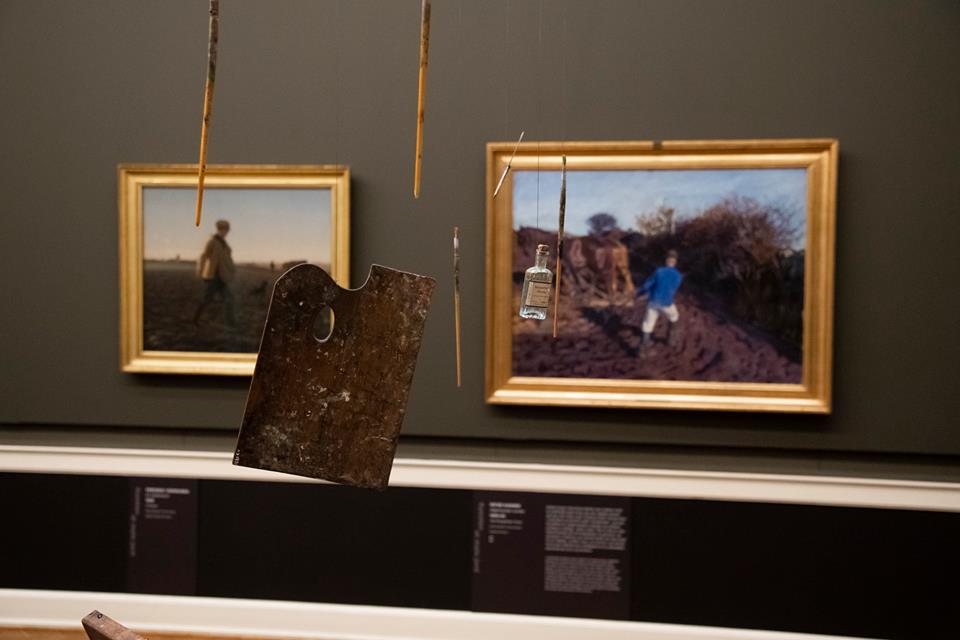
NOWs: Rune Bosse at The Hirschsprung Collection
Down to earth.Danish painting 1780-1920 and landscapes of the anthropocene
The Hirschsprung Collection
Stockholmsgade 20
2100 København Ø
Down to Earth is a visionary exhibition, which brings art and the natural sciences together to discuss one of the most urgent questions of our times. In the exhibition, the question of what we are doing to our planet is asked through a historical reflection of how we got to this precarious moment.
The landscape, nature, and our surroundings have changed dramatically in the last 200 years. We live in the Anthropocene Epoch, in which humanity’s impact on nature has run so deep as to have left its own geological traces. Down to Earth shows us how, as early as the nineteenth century, landscape painting and the natural sciences were already working together to document and interpret the landscape’s profound transformation.
The two renowned contemporary artists Rune Bosse and Camilla Berner add a current dimension to the subject with new works that are locally anchored and site-specific.
This exhibition is a collaboration between Faaborg Museum, Fuglsang Kunstmuseum, the Ribe Art Museum and The Hirschsprung Collection, Copenhagen. The exhibition is curated by Gry Hedin (Faaborg Museum), Gertrud Oelsner (The Hirschsprung Collection), and Thor J. Mednick (University of Toledo).
Down to earth.Danish painting 1780-1920 and landscapes of the anthropocene
The Hirschsprung Collection
Stockholmsgade 20
2100 København Ø
Down to Earth is a visionary exhibition, which brings art and the natural sciences together to discuss one of the most urgent questions of our times. In the exhibition, the question of what we are doing to our planet is asked through a historical reflection of how we got to this precarious moment.
The landscape, nature, and our surroundings have changed dramatically in the last 200 years. We live in the Anthropocene Epoch, in which humanity’s impact on nature has run so deep as to have left its own geological traces. Down to Earth shows us how, as early as the nineteenth century, landscape painting and the natural sciences were already working together to document and interpret the landscape’s profound transformation.
The two renowned contemporary artists Rune Bosse and Camilla Berner add a current dimension to the subject with new works that are locally anchored and site-specific.
This exhibition is a collaboration between Faaborg Museum, Fuglsang Kunstmuseum, the Ribe Art Museum and The Hirschsprung Collection, Copenhagen. The exhibition is curated by Gry Hedin (Faaborg Museum), Gertrud Oelsner (The Hirschsprung Collection), and Thor J. Mednick (University of Toledo).
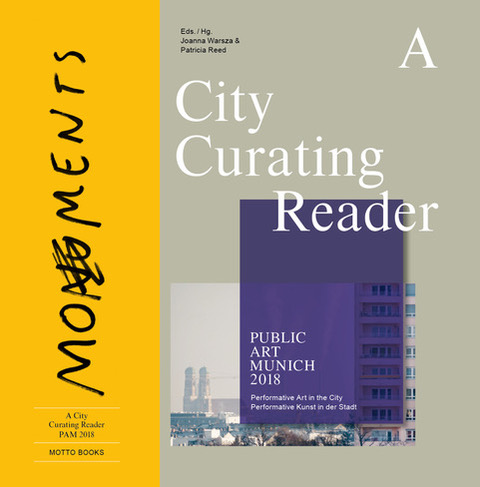
NOWs: A City Curating Reader by Joanna Warsza & Patricia Reed
A City Curating Reader. Public Art Munich 2018Book release
Spike
Rosa-Luxemburg-Straße 45
10178 Berlin
Wednesday, 30 January, 7.30 pm
Statements & Discussion: Cana Bilir-Meier, Maria Lind, Alexander Koch, Patricia Reed and Joanna Warsza
Artists / Künstler*Innen: Aleksandra Wasilkowska, Alexander Kluge & Sarah Morris, Alexandra Pirici, Anders Eiebakke, Anna McCarthy & Gabi Blum, Ari Benjamin Meyers, Cana Bilir-Meier, Dan Perjovschi, Flaka Haliti & Markus Miessen, Franz Wanner, Jonas Lund, Lawrence Abu Hamdan, Leon Eixenberger, Mariam Ghani, Massimo Furlan, Michaela Melián, Olaf Nicolai, Rudolf Herz & Julia Wahren, Students of the Academy of Fine Arts in Munich, The 9th Futurological Congress/Julieta Aranda & Mareike Dittmer
Contributors / Beitragende: Alexander Koch, Bassam El Baroni, Behzad Khosravi Noori, Bellevue di Monaco: Achim Waseem Seger, Kissi Baumann, Marvis Gabriel & You have to be as cool as Alain Delon; Chantal Mouffe, Chris Fitzpatrick, Cordula Schütz, Daniela Stöppel, Emilie Houdent, Ewa Majewska, Gürsoy Doğtaş, Harry Thorne, Jens Maier-Rothe, Joanna Warsza, Jovana Reisinger, Katja Kobolt, Klasse Florian Matzner & Ann-Jasmin Ullrich, María Inés Plaza Lazo, Maria Lind, Maria Muhle, Mathieu Wellner, Mirela Baciak, Moritz Hollinger, Patricia Reed, Stefanie Peter, Sven Beckstette, Sven Lütticken, Thomas Girst, Thomas Meinecke
What is public in public art? What are the contingencies of working outside of the protection of the institutional walls? What makes city curating? This reader takes Munich as a case study, and documents the projects of PUBLIC ART MUNICH 2018 dealing with political, ideological and economical shifts, spanning from the founding of the Bavarian Soviet Republic in 1919 to the arrival of refugees at the Hauptbahnhof in 2015. It contextualizes art within the broader questions of the grammar of the public sphere and of what constitutes publicness today. It also reflects on the concept of context-specific city curating, performativity and art conceived in minutes rather than square meters. Art projects, conversations and essays plot a narrative of how art can cultivate encounters with the unpredictable, negotiate the uncommonness, and provoke the counter-publics to come.
A City Curating Reader. Public Art Munich 2018Book release
Spike
Rosa-Luxemburg-Straße 45
10178 Berlin
Wednesday, 30 January, 7.30 pm
Statements & Discussion: Cana Bilir-Meier, Maria Lind, Alexander Koch, Patricia Reed and Joanna Warsza
Artists / Künstler*Innen: Aleksandra Wasilkowska, Alexander Kluge & Sarah Morris, Alexandra Pirici, Anders Eiebakke, Anna McCarthy & Gabi Blum, Ari Benjamin Meyers, Cana Bilir-Meier, Dan Perjovschi, Flaka Haliti & Markus Miessen, Franz Wanner, Jonas Lund, Lawrence Abu Hamdan, Leon Eixenberger, Mariam Ghani, Massimo Furlan, Michaela Melián, Olaf Nicolai, Rudolf Herz & Julia Wahren, Students of the Academy of Fine Arts in Munich, The 9th Futurological Congress/Julieta Aranda & Mareike Dittmer
Contributors / Beitragende: Alexander Koch, Bassam El Baroni, Behzad Khosravi Noori, Bellevue di Monaco: Achim Waseem Seger, Kissi Baumann, Marvis Gabriel & You have to be as cool as Alain Delon; Chantal Mouffe, Chris Fitzpatrick, Cordula Schütz, Daniela Stöppel, Emilie Houdent, Ewa Majewska, Gürsoy Doğtaş, Harry Thorne, Jens Maier-Rothe, Joanna Warsza, Jovana Reisinger, Katja Kobolt, Klasse Florian Matzner & Ann-Jasmin Ullrich, María Inés Plaza Lazo, Maria Lind, Maria Muhle, Mathieu Wellner, Mirela Baciak, Moritz Hollinger, Patricia Reed, Stefanie Peter, Sven Beckstette, Sven Lütticken, Thomas Girst, Thomas Meinecke
What is public in public art? What are the contingencies of working outside of the protection of the institutional walls? What makes city curating? This reader takes Munich as a case study, and documents the projects of PUBLIC ART MUNICH 2018 dealing with political, ideological and economical shifts, spanning from the founding of the Bavarian Soviet Republic in 1919 to the arrival of refugees at the Hauptbahnhof in 2015. It contextualizes art within the broader questions of the grammar of the public sphere and of what constitutes publicness today. It also reflects on the concept of context-specific city curating, performativity and art conceived in minutes rather than square meters. Art projects, conversations and essays plot a narrative of how art can cultivate encounters with the unpredictable, negotiate the uncommonness, and provoke the counter-publics to come.
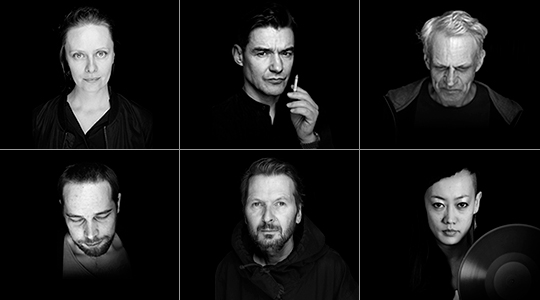
NOWs: Raster. Labor at CTM Festival
Raster.Labor at CTM FestivalWith works by: Byetone + Mieko Suzuki, Dasha Rush, Frank Bretschneider, Grischa Lichtenberger, Robert Lippok
nGbK
Oranienstr. 25
10999 Berlin-Kreuzberg
Opening
25 January 2019, 18:00
Runs
26 January – 3 February 2019, 12:00 – 22:00
With the premiere of Labor, CTM and seminal electronic imprint Raster celebrate a collaboration almost as old as the festival itself. Byetone + Mieko Suzuki, Dasha Rush, Frank Bretschneider, Grischa Lichtenberger, and Robert Lippok will take part in the inaugural edition of the piece, utilizing sparse hardware setups to craft perpetual, regenerating compositions.
Active since 1996, Raster is the influential German label that has released music from Ryoji Ikeda, Kyoka, Atom ™, William Basinski, Kangding Ray, and Belief Defect, among others. Conceived by Olaf Bender, David Letellier, and Frank Bretschneider, Labor is created in close collaboration with Raster artists.
With Labor, Raster explore artistic processes, and how they diverge and develop from the same starting point or set of conditions. Five tables with minimal Eurorack setups and a handful of studio monitors form the basis of the piece. The analogue hardware generates and manipulates control voltages, forming a framework in which the artists can complete, connect, and interact with the modules. As the setup does not contain any sound producing components, participating artists will select sound sources themselves, which could range from minuscule to gargantuan sonic objects. They may choose to mechanically generate sound, or to integrate microphones and amplify sound.
Generative composition, whether through regulating sonic events or strategic compositional decisions, has been a key part of electronic music’s history. Labor references both academic and DIY histories of analogue synthesis, exploring open and dynamic fields of hardware experimentation. The intention of the setup is to enable interested audience members to directly observe cause and effect, so digital software will be avoided.
Berlin’s neue Gesellschaft für bildende Kunst (nGbK) will host the inaugural iteration of the piece. Active since 1969, nGbK is one of Germany’s foremost art societies – they are invested in exhibitions, artistic interventions, research projects, interdisciplinary projects, publications, and more. nGbK is built on a unique structure that allows members to be directly involved in its activities; they understand art as a form of action that directly impacts social processes.
Raster.Labor at CTM FestivalWith works by: Byetone + Mieko Suzuki, Dasha Rush, Frank Bretschneider, Grischa Lichtenberger, Robert Lippok
nGbK
Oranienstr. 25
10999 Berlin-Kreuzberg
Opening
25 January 2019, 18:00
Runs
26 January – 3 February 2019, 12:00 – 22:00
With the premiere of Labor, CTM and seminal electronic imprint Raster celebrate a collaboration almost as old as the festival itself. Byetone + Mieko Suzuki, Dasha Rush, Frank Bretschneider, Grischa Lichtenberger, and Robert Lippok will take part in the inaugural edition of the piece, utilizing sparse hardware setups to craft perpetual, regenerating compositions.
Active since 1996, Raster is the influential German label that has released music from Ryoji Ikeda, Kyoka, Atom ™, William Basinski, Kangding Ray, and Belief Defect, among others. Conceived by Olaf Bender, David Letellier, and Frank Bretschneider, Labor is created in close collaboration with Raster artists.
With Labor, Raster explore artistic processes, and how they diverge and develop from the same starting point or set of conditions. Five tables with minimal Eurorack setups and a handful of studio monitors form the basis of the piece. The analogue hardware generates and manipulates control voltages, forming a framework in which the artists can complete, connect, and interact with the modules. As the setup does not contain any sound producing components, participating artists will select sound sources themselves, which could range from minuscule to gargantuan sonic objects. They may choose to mechanically generate sound, or to integrate microphones and amplify sound.
Generative composition, whether through regulating sonic events or strategic compositional decisions, has been a key part of electronic music’s history. Labor references both academic and DIY histories of analogue synthesis, exploring open and dynamic fields of hardware experimentation. The intention of the setup is to enable interested audience members to directly observe cause and effect, so digital software will be avoided.
Berlin’s neue Gesellschaft für bildende Kunst (nGbK) will host the inaugural iteration of the piece. Active since 1969, nGbK is one of Germany’s foremost art societies – they are invested in exhibitions, artistic interventions, research projects, interdisciplinary projects, publications, and more. nGbK is built on a unique structure that allows members to be directly involved in its activities; they understand art as a form of action that directly impacts social processes.
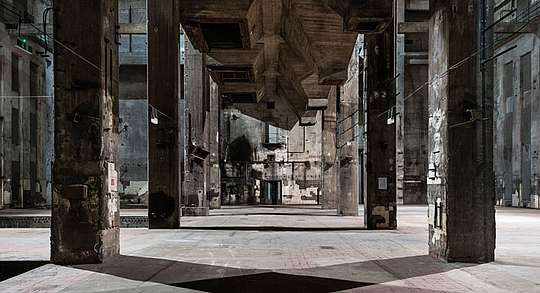
NOWs: Eishalle at CTM Festival
Photo by Stefan Lucks
EishalleAdventurous Music—Now on Ice!
Eishalle
Halle am Berghain II
am Wriezener Bahnhof
10243 Berlin-Friedrichshain
29 January 2019, 4pm
With Kyoka, Grischa Lichtenberger, Mieko Suzuki, Robert Lippok
Full Program
An ice skating rink arrives at the gargantuan Halle am Berghain, soundtracked by an array of adventurous artists. Bring your skates (or rent a pair) and practice your ice dancing skills to eclectic and free-roaming DJ sets.
Skatebård is the Norwegian producer, DJ, and Berghain regular. His sound weaves across emotional techno, neo-italo, futuristic electro, and a “Scando-cosmic” reinterpretation of classic Detroit sounds. In a continuation of CTM’s collaboration with Raster, renowned artists Kyoka, Robert Lippok, Grischa Lichtenberger, and Mieko Suzuki appear. The latter will also be repping female:pressure together with Mo Loschelder, a driving force behind Berlin’s club scene. Freak de l’Afrique are a German Afro-house group known for hosting parties such as the Afro House Experience, Bantu’s Diary, and Black Paper. Room 4 Resistance resident DJ Occult spins ghettotech and booty bass; celebrated music journalist Joe Muggsdelivers an ambient set; passionate dancer, attentive listener, and Rinse France resident Marylou appears; and Morphine label boss Rabih Beaini can be relied on to deliver a confounding set chock-full of gems.
More music is still to come! Warm up with a hot drink and watch the spectacle under a dazzling kinetic light array courtesy of Berlin’s premier light artist Christopher Bauder.
Photo by Stefan Lucks
EishalleAdventurous Music—Now on Ice!
Eishalle
Halle am Berghain II
am Wriezener Bahnhof
10243 Berlin-Friedrichshain
29. Januar 2019, 16:00
With Kyoka, Grischa Lichtenberger, Mieko Suzuki, Robert Lippok
Full Program
An ice skating rink arrives at the gargantuan Halle am Berghain, soundtracked by an array of adventurous artists. Bring your skates (or rent a pair) and practice your ice dancing skills to eclectic and free-roaming DJ sets.
Skatebård is the Norwegian producer, DJ, and Berghain regular. His sound weaves across emotional techno, neo-italo, futuristic electro, and a “Scando-cosmic” reinterpretation of classic Detroit sounds. In a continuation of CTM’s collaboration with Raster, renowned artists Kyoka, Robert Lippok, Grischa Lichtenberger, and Mieko Suzuki appear. The latter will also be repping female:pressure together with Mo Loschelder, a driving force behind Berlin’s club scene. Freak de l’Afrique are a German Afro-house group known for hosting parties such as the Afro House Experience, Bantu’s Diary, and Black Paper. Room 4 Resistance resident DJ Occult spins ghettotech and booty bass; celebrated music journalist Joe Muggsdelivers an ambient set; passionate dancer, attentive listener, and Rinse France resident Marylou appears; and Morphine label boss Rabih Beaini can be relied on to deliver a confounding set chock-full of gems.
More music is still to come! Warm up with a hot drink and watch the spectacle under a dazzling kinetic light array courtesy of Berlin’s premier light artist Christopher Bauder.
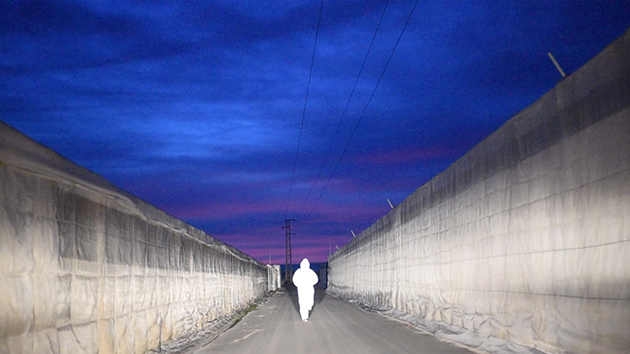
NOWs: Raul Walch – The Sceptical Chemist
Raul Walch: The Sceptical Chemist, 2018, Inkjet-Print auf Hahnemühle Photo Rag, 34 x 48 cm
The Sceptical ChemistSolo exhibition by Raul Walch
EIGEN + ART Lab
Torstraße 220
10115 Berlin
Opening
18 January 2019, 5 – 9 pm
The Sceptical Chymist wanders through life undocumented. The figure is both one of a reactionary nature and ghost of life. It observes from a vantage point that others never decide to tread. The Sceptical Chymist is not an agent in the network but the Gardner of the Rhizome.
Raul Walch is both the Sceptical Chymist, the Artist, the Viewer and the Ethnographer. His installations mark a world of his own viewing and that of his own making. This can be seen both as the Imaginarium and the Archive. In his new works, he guides the viewer into infinite drifting angles of clandestine territories, criss-cross woven textile sheets make up the body of this new border. These monotone Spanish plastic architectures discreetly hide the mass-manufactured winter vegetable urban fuel line from Spain to Germany. An epic bed of white plastic crusts the southern tip of Spain. Covert yet visible via Google Earth, not a human in sight. Only the words Death King „Earth Warriors“ are found by Walch as he conducts his pilgrimage into another world, a deeper web of the unseen polyethylene lies beyond the gateway we now know as our life.
Text excerpt by Penny Rafferty
Raul Walch: The Sceptical Chemist, 2018, Inkjet-Print auf Hahnemühle Photo Rag, 34 x 48 cm
The Sceptical ChemistSolo exhibition by Raul Walch
EIGEN + ART Lab
Torstraße 220
10115 Berlin
Eröffnung
18. Januar 2019, 17 – 21 h
Der skeptische Chemiker* führt sein Leben undokumentiert. Die Figur ist beides: Reaktionär vom Wesen her und Lebensgeist. Sie beobachtet aus einem Blickwinkel, den andere niemals von sich aus einnehmen würden. Der skeptische Chemiker ist kein Rädchen im Getriebe, sondern der Gärtner des Rhizoms.
Raul Walch ist der skeptische Chemiker, er ist aber auch Künstler, Betrachter und Ethnograf. Seine Installationen künden von seiner ureigensten Sicht auf eine von ihm selbst geschaffene Welt. Man kann sie ebenso als Traumwelt wie als Archiv betrachten. In seinen neuen Werken eröffnet er dem/der Betrachter*in endlos fließende Perspektiven auf geheime Regionen, kreuz und quer verflochtene Stofftücher sind der wesentliche Bestandteil dieses neuen Grenzbereichs. Die eintönigen spanischen Plastikkonstruktionen verbergen diskret die urbane Pipeline von Spanien nach Deutschland für das massenproduzierte Wintergemüse. Ein monumentales Feld aus weißem Plastik überzieht die Südspitze Spaniens. Versteckt, aber mittels Google Earth trotzdem erkennbar. Kein Mensch ist in Sicht. Walch findet auf seiner Pilgerreise in eine andere Welt nur die Worte Death King „Earth Warriors“. Jenseits des Tors zu dem, was wir heute als unser Leben kennen, liegt ein tiefer gehendes Netz aus unbemerktem Polyäthylen.
*Anmerkung des Übersetzers: Robert Boyle, The Sceptical Chymist, London 1661. Gekürzt auf Deutsch erschienen als Der skeptische Chemiker, Leipzig, Akademische Verlagsgesellschaft, 1929.
Textauszug von Penny Rafferty
Übersetzung von Frank Süßdorf
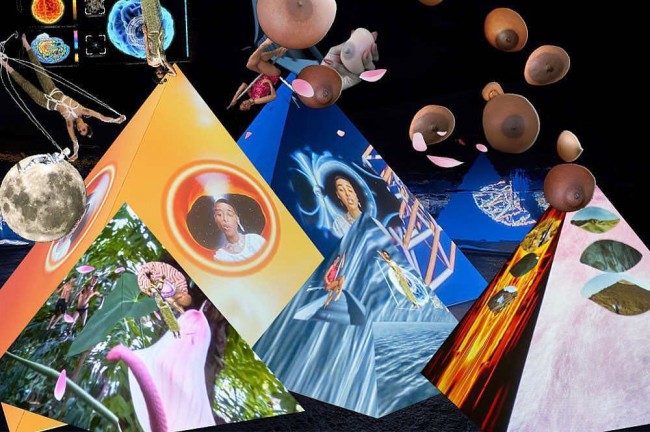
NOWs: Ecologies of Darkness. Building Grounds on Shifting Sands
Tabita Rezaire: Riding Infinity, 2018
Ecologies of Darkness. Building Grounds on Shifting SandsGroup Exhibition
Savvy Contemporary
Plantagenstraße 31
13347 Berlin
Opening
10 January 2019, 7 pm
Artists: Hera Chan & Xiaoshi Vivian Vivian Qin, Mandy El-Sayegh, Nilbar Güreş, Natasha Mendonca, Markues, Beatriz Santiago Muñoz, Pallavi Paul, Luiza Prado de O. Martins, Tabita Rezaire, Bahia Shehab, Sheida Soleimani, Ana Vaz, Helen Zeru, Pamela Z
Colonial Neighbours will be in conversation with Sepideh Rahaa
Curated by Elena Agudio, Nathalie Mba Bikoro and Federica Bueti
Tabita Rezaire: Riding Infinity, 2018
Ecologies of Darkness. Building Grounds on Shifting SandsGroup Exhibition
Savvy Contemporary
Plantagenstraße 31
13347 Berlin
Opening
10 January 2019, 7 pm
Artists: Hera Chan & Xiaoshi Vivian Vivian Qin, Mandy El-Sayegh, Nilbar Güreş, Natasha Mendonca, Markues, Beatriz Santiago Muñoz, Pallavi Paul, Luiza Prado de O. Martins, Tabita Rezaire, Bahia Shehab, Sheida Soleimani, Ana Vaz, Helen Zeru, Pamela Z
Colonial Neighbours will be in conversation with Sepideh Rahaa
Curated by Elena Agudio, Nathalie Mba Bikoro and Federica Bueti
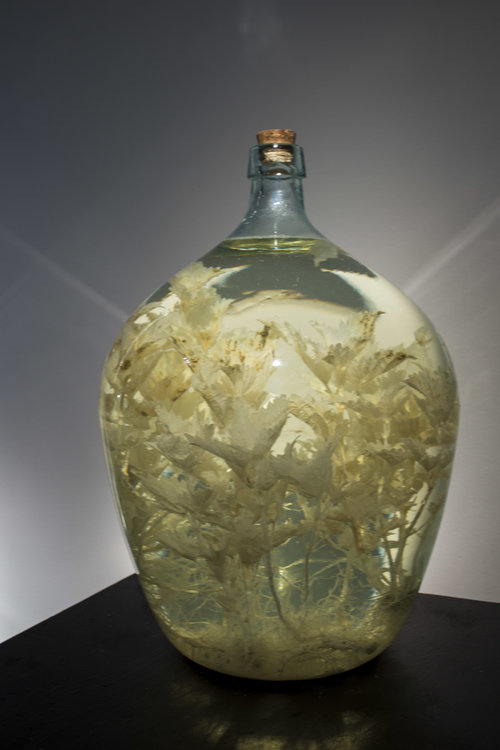
NOWs: UR- by Rune Bosse
UR -Solo exhibition by Rune Bosse
Galleri Jacob Bjørn
Thorvaldsensgade 33a
DK-8000 Aarhus C
We proudly present the first solo exhibition by danish artist Rune Bosse at the gallery. This much awaited solo comprise new works themed over Johan Wolfgang von Goethes (1749-1832) Ur-Phänomen theories the artist has been using as catalyst for this new body of works. Along side Bosses cardinal photo works of chlorine exposed plants this exhibition will also be showcasing his dried ‘Ur-pflanze’ series where various sorts of plants are mounted together as one plant (or tree) symbolizing the whole flora of nature as one unified element.
Link for 3d exhibition view here
UR -Solo exhibition by Rune Bosse
Galleri Jacob Bjørn
Thorvaldsensgade 33a
DK-8000 Aarhus C
We proudly present the first solo exhibition by danish artist Rune Bosse at the gallery. This much awaited solo comprise new works themed over Johan Wolfgang von Goethes (1749-1832) Ur-Phänomen theories the artist has been using as catalyst for this new body of works. Along side Bosses cardinal photo works of chlorine exposed plants this exhibition will also be showcasing his dried ‘Ur-pflanze’ series where various sorts of plants are mounted together as one plant (or tree) symbolizing the whole flora of nature as one unified element.
Link for 3d exhibition view here
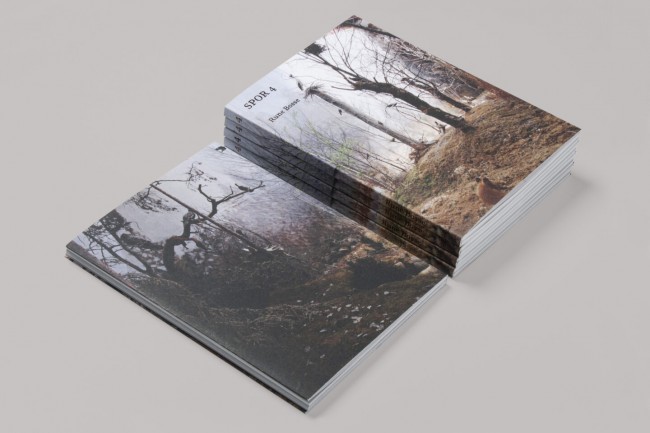
NOWs: SPOR 4 by Rune Bosse
SPOR 4Book release
SPOR 4 Rune Bosse
Text in Danish and English
Richly illustrated
100 pages
In the book series TRACKS, each publication becomes the mouthpiece of a young Danish artist, who is at the beginning of his or her career. In an interview, the artist talks about his or her work and the thoughts they have about their own artistic practice. TRACKS 4 invites Rune Bosse in conversation with art critic Louise Steiwer.
The book series TRACKS is supported by 15. Juni Fonden and Solar Fonden.
Get a copy online at rouletterusse
SPOR 4Book release
SPOR 4 Rune Bosse
Text in Danish and English
Richly illustrated
100 pages
In the book series TRACKS, each publication becomes the mouthpiece of a young Danish artist, who is at the beginning of his or her career. In an interview, the artist talks about his or her work and the thoughts they have about their own artistic practice. TRACKS 4 invites Rune Bosse in conversation with art critic Louise Steiwer.
The book series TRACKS is supported by 15. Juni Fonden and Solar Fonden.
Get a copy online at rouletterusse
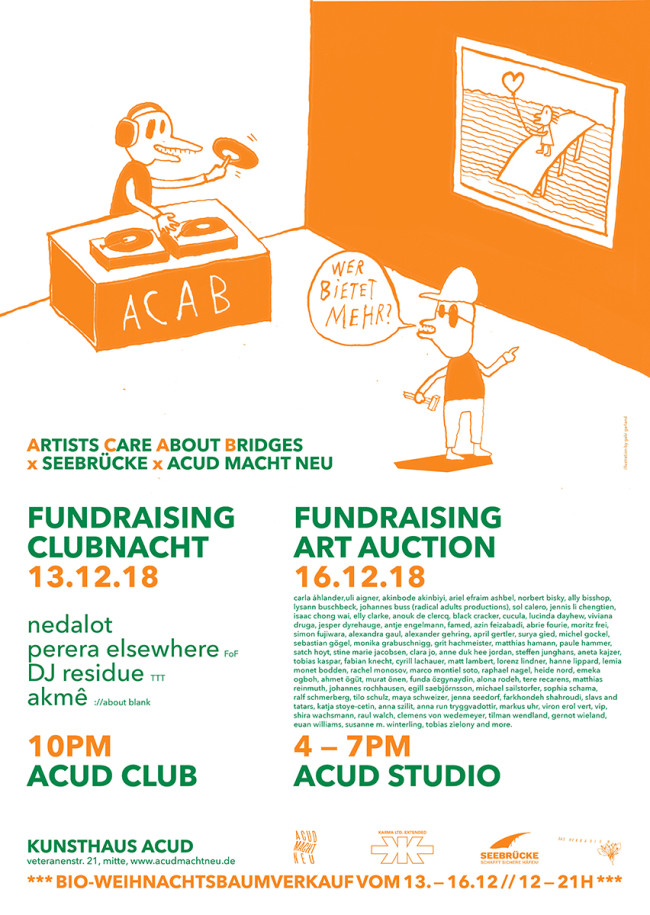
NOWs: Artists Care About Bridges
FUNDRAISING initiated by Artists Care About Bridges at Acud Macht NeuIn support of the international movement SEEBRÜCKE
13.12.2018
from 10pm to open end at Acud Club
FUNDRAISING CLUB NIGHT
16.12.2018
from 4-7pm at Acud Studio
FUNDRAISING ART AUCTION
13.12 – 16.12.2018
from 12 – 9pm at Acud Courtyard
FUNDRAISING CHRISTMAS TREE SALE
Acud Macht Neu
Veteranenstrasse 21
10119 Berlin
Under the current social and political climate, in which the rise of ever more global nationalism and political backwardness is strengthened daily, we as artists, curators, activists and people need literal and metaphorical bridges to stand united and to take action together. Bridges are meeting places, they allow for possibility and for discourse. The collaboration Artists Care About Bridges is hosting a series of fundraising events on the third weekend in Advent at Acud Macht Neu; including a club night, an art auction as well as the sale of Christmas trees from organic farming. These profits go to the organization SEEBRÜCKE. SEEBRÜCKE is an international movement that receives support from the community as well as several civil society alliances and whose mission is to create safe harbors. SEEBRÜCKE will not accept Policy Makers and Governments who let people drown in the Mediterranean Sea to further seal off Europe and win political points. Artists Care About Bridges agrees that this is unbearable and against any humanitarian values. Migration is and has always been part of our society! Instead of closing borders, we need to provide more bridges, to encourage a Europe that is open, and support cities that show solidarity and provide harbors that are safe and humane. We declare our solidarity with societies who are forced to flee their homes. From German and European policy makers, we demand the establishment of safe routes for refugees, to stop the criminalization of sea rescue and to receive them in a human way whilst respecting their rights.
Artists Care About Bridges is a collaboration of activists that was conceived by cultural producer Kathrin Pohlmann and artist Anne Duk Hee Jordan, joined by the curators Pauline Doutreluingne and Petra Poelzl (Karma Ltd. Extended) and supported by Bioland Herbarium Leipzig and Acud Macht Neu. Build a bridge by extending your hand and joining us in creating an open, inclusive and progressive Europe.
FUNDRAISING CLUB NIGHT
13.12.2018
10pm – open end
at Acud Club
To launch the collaboration Artists Care About Bridges, we organize a kick off fundraising club night with a pumping line up featuring Nedalot, Perera Elsewhere, DJ Residue (TTT) and Akmê (://about blank).
Nedalot
NEDALOT aka Neda Sanai is a Berlin based DJ & and producer that moves in the queer underground scene of Europe. With their skillful mixing of different club genres, including rap, R&B, bass music, Jersey club, 2 step, all mixed up in an ocean of twisted pop Acapella, the vibe is always intense-warped-sexy. https://soundcloud.com/nedalot
Perera Elsewhere (FoF) – Dj Set
Sasha Perera, aka Perera Elsewhere, is a polyglot, if there ever were one. Her music proclivities are not resigned only to her output under that name on Los Angeles imprint Friends of Friends or to her previous work she did as a member of Berlin-based globalist club project Jahcoozi. Perera also DJs and when she does, it’s all about bass music. Rooted in her love of UK sounds, she delivers a banquet selection of contemporary club sounds from all over the world to keep the bodies popping and people hungry. https://soundcloud.com/bordermovement-2/mother-perera-border-movement
DJ Residue (TTT)
Techno Excursions
Akmê (://about blank)
Akmê’s sets are known for their diversity. They are profound improvisational odysseys, which explore deep planes of emotions. Simply put: Techno with groove.
https://soundcloud.com/lostakme
FUNDRAISING ART AUCTION
16.12.2018
4 – 7pm
at Acud Studio
In the spirit of the necessity of “building bridges and not borders”, Artist Care About Bridges curates an art auction. There is a growing list of reputable artists, supporting joint social action by donating an art work for the auction.
Carla Åhlander, Uli Aigner, Akinbode Akinbiyi, Ariel Efraim Ashbel, Norbert Bisky, Ally Bisshop, Monika Bonvicini, Lysann Buschbeck, Johannes Buss (Radical Adults Productions), Sol Calero, Jennis Li Chengtien, Anouk De Clercq, Isaac Chong Wai, Elly Clarke, Cucula, Lucinda Dayhew, Viviana Druga, Jesper Dyrehauge, Antje Engelmann, FAMED, Azin Feizabadi, Abrie Fourie, Moritz Frei, Simon Fujiwara, Alexandra Gaul, Alexander Gehring, April Gertler, Surya Gied, Michel Gockel, Sebastian Gögel, Monika Grabuschnigg, Roman Graneist, Grit Hachmeister, Matthias Hamann, Paule Hammer, Stine Marie Jacobsen, Clara Jo, Anne Duk Hee Jordan, Steffen Junghans, Aneta Kajzer, Tobias Kaspar, Susanne Keichel, Fabian Knecht, Cyrill Lachauer, Matt Lambert, Lorenz Lindner, Hanne Lippard, Lemia Monet Bodden, Rachel Monosov, Marco Montiel Soto, Raphael Nagel, Henrike Naumann, Heide Nord, Emeka Ogboh, Ahmet Ögüt, Murat Önen, Funda Özgynaydin, Peaches and Black Cracker, Alona Rodeh, Tere Recarens, Matthias Reinmuth, Johannes Rochhausen, Egill Saebjörnsson, Michael Sailstorfer, Sophia Schama, Ralf Schmerberg, Tilo Schulz, Maya Schweizer, Jenna Seedorf, Farkhondeh Shahroudi, Slavs and Tatars, Katja Stoye-Cetin, Anna Szilit, Anna Run Tryggvadottir, Markus Uhr, Viron Erol Vert, VIP, Shira Wachsmann, Raul Walch, Clemens von Wedemeyer, Tilman Wendland, Gernot Wieland, Euan Williams, Susanne M. Winterling, Tobias Zielony and more.
The auction catalogue will be online via www.revoluzy.org on December 6th.
Auktionator: Fares Al-Hassan
www.fly-auctions.com
Furthermore, there will be the chance to buy artist books as an additional opportunity to donate into the Seebrücke Movement.
FUNDRAISING CHRISTMAS TREE SALE
13.12 – 16.12.2018
12 – 9pm
at Acud Courtyard
Christmas Trees for Sale by Bioland Herbarium Leipzig
Herbarium Leipzig promotes and practices organic farming and develops it further through interdisciplinary collaborations. The Christmas trees for sale are from organic slow growing fields in the area around Leipzig.
Follow Artists Care About Bridges on Instagram
artistscareaboutbridges
FUNDRAISING initiated by Artists Care About Bridges at Acud Macht NeuIn support of the international movement SEEBRÜCKE
Artists Care About Bridges veranstaltet eine Reihe von Fundraising Events im Acud Macht Neu. Alle Einnahmen werden direkt der international agierenden Bewegung SEEBRÜCKE gespendet.
13.12.2018
ab 22:00 Uhr im Acud Club
FUNDRAISING CLUBNACHT
16.12.2018
16:00-19:00 Uhr
Acud Studio
FUNDRAISING ART AUCTION
13.12. – 16.12.2018
12:00-21:00 Uhr
Acud Innenhof
FUNDRAISING CHRISTMAS TREE SALE
Acud Macht Neu
Veteranenstrasse 21
10119 Berlin
Im gegenwärtigen sozialen und politischen Klima, in welchem Abschottungspolitik und globaler Nationalismus ins Unermessliche zu wachsen drohen, brauchen wir als KünstlerInnen, KuratorInnen, AktivistInnen und Menschen buchstäblich Brücken, um gemeinsam zu agieren und unseren Handlungsspielraum erweitern zu können. Aus diesem Grund veranstaltet die aktivistische Kollaboration Artists Care About Bridges am dritten Adventswochenende eine Reihe von Fundraising Aktionen am Acud Macht Neu um metaphorisch eine Brücke zu bauen und einen Ort der Begegnung zu schaffen. Eine Clubnacht, eine Kunstauktion, sowie der Verkauf von nachhaltigen Weihnachtsbäumen dienen zur Unterstützung der international agierenden Bewegung SEEBRÜCKE ist eine dezentral organisierte, zivilgesellschaftliche Bewegung, die sich gegen die europäische Abschottungspolitik sowie gegen die Kriminalisierung von Seenotrettung im Mittelmeer richtet. Artists Care About Bridges stehen vollumfänglich hinter der Forderung der SEEBRÜCKE, europaweit sichere Fluchtwege, eine menschenwürdige Aufnahme von Geflüchteten und eine Entkriminalisierung der Seenotrettung zu sichern. Migration ist der Motor, der Kultur und Gesellschaft schon immer bereichert hat. Anstatt Grenzen zu schließen, müssen wir Brücken schaffen und für ein offenes Europa eintreten.
Artists Care About Bridges ist eine aktivistische Kollaboration, welche von der Kulturproduzentin Kathrin Pohlmann und der Künstlerin Anne Duk Hee Jordan initiiert, von den Kuratorinnen Pauline Doutreluingne und Petra Poelzl (Karma Ltd. Extended) mitkonzipiert und durch Bioland Herbarium Leipzig und Acud Macht Neu unterstützt wird.
FUNDRAISING CLUBNACHT
13.12.2018
ab 22:00 Uhr
Acud Club
Zum Launch von Artists Care About Bridges gibt es eine Clubnacht mit einem pumpenden Line-Up featuring Nedalot, Perera Elsewhere, DJ Residue (TTT) und Akmê (://aboutblank).
Nedalot
NEDALOT ist eine in Berlin ansässige Hip-Hop und R’n‘B-DJ, die sich im queeren Untergrund bewegt. Mit ihren kunstvollen Mixen aus klassischem Hip-Hop gepaart mit neuer beatbasierter Bassmusik hat sie sich schon einen Namen als Support für Künstlerinnen und Künstler wie Diplo, A.G. Cook und Zebra Katz gemacht.
https://soundcloud.com/nedalot
Perera Elsewhere (FoF) – DJ Set
Als Kind sri-lankischer Eltern in London geboren und aufgewachsen, sozialisiert von Dub und Notting Hill Carnival, ist Sasha Perera im Jahr 2000 in Berlin gestrandet und hat von dort aus als Sängerin der Band Jahcoozi nachhaltig die Club-Kultur beeinflusst. Anderswo verorten möchte sich Perera allerdings mit ihrem Solo-Projekt Perera Elsewhere, dessen verwaschener Sound, politische Texte und postdigitale Ästhetik seit ihrem Debütalbum „Everlast“ international Wogen schlägt. Auf Reisen sammelt Perera klangliche Inspirationen und vermengt diese mit einer Prise Trip Hop zu grenzübergreifender Popmusik. Im Zuge der Fundraising Clubnacht wird Perera Elsewhere uns mit einem DJ-Set beehren.
https://soundcloud.com/bordermovement-2/mother-perera-border-movement
DJ Residue (TTT)
Techno Excursions
Akmê (://about blank)
Akmê’s DJ-Sets sind profunde improvisierte Odysseen, die in die Gefilde tiefer Emotionen eindringen. Einfach gesagt: Techno mit Groove.
FUNDRAISING ART AUCTION
16.12.2018
16:00-19:00 Uhr
Acud Studio
Unter dem Leitsatz ‘Baut Brücken und keine Grenzen‘ veranstaltet Artist Care About Bridges eine Kunstauktion. Für diese Auktion haben zahlreiche in Berlin lebende Künstlerinnen und Künstler spontan Arbeiten gespendet, welche im Zuge dieser Auktion ersteigert werden können. Die Liste der beteiligten Künstlerinnen und Künstler wächst stetig.
Carla Åhlander, Uli Aigner, Akinbode Akinbiyi, Ariel Efraim Ashbel, Norbert Bisky, Ally Bisshop, Monika Bonvicini, Lysann Buschbeck, Johannes Buss (Radical Adults Productions), Sol Calero, Jennis Li Chengtien, Anouk De Clercq, Isaac Chong Wai, Elly Clarke, Cucula, Lucinda Dayhew, Viviana Druga, Jesper Dyrehauge, Antje Engelmann, FAMED, Azin Feizabadi, Abrie Fourie, Moritz Frei, Simon Fujiwara, Alexandra Gaul, Alexander Gehring, April Gertler, Surya Gied, Michel Gockel, Sebastian Gögel, Monika Grabuschnigg, Roman Graneist, Grit Hachmeister, Matthias Hamann, Paule Hammer, Stine Marie Jacobsen, Clara Jo, Anne Duk Hee Jordan, Steffen Junghans, Aneta Kajzer, Tobias Kaspar, Susanne Keichel, Fabian Knecht, Cyrill Lachauer, Matt Lambert, Lorenz Lindner, Hanne Lippard, Lemia Monet Bodden, Rachel Monosov, Marco Montiel Soto, Raphael Nagel, Henrike Naumann, Heide Nord, Emeka Ogboh, Ahmet Ögüt, Murat Önen, Funda Özgynaydin, Peaches and Black Cracker, Alona Rodeh, Tere Recarens, Matthias Reinmuth, Johannes Rochhausen, Egill Saebjörnsson, Michael Sailstorfer, Sophia Schama, Ralf Schmerberg, Tilo Schulz, Maya Schweizer, Jenna Seedorf, Farkhondeh Shahroudi, Slavs and Tatars, Katja Stoye-Cetin, Anna Szilit, Anna Run Tryggvadottir, Markus Uhr, Viron Erol Vert, VIP, Shira Wachsmann, Raul Walch, Clemens von Wedemeyer, Tilman Wendland, Gernot Wieland, Euan Williams, Susanne M. Winterling, Tobias Zielony.
Der Auktionskatalog ist ab 06.12.2018 via http://www.revoluzy.org einsehbar.
Auktionator: Fares Al-Hassan
www.fly-auctions.com
Ebenso wird es die Möglichkeit geben, Bücher von Künstlerinnen und Künstlern bei der Auktion zu erstehen. Der Ertrag des Büchertisches geht ebenso an SEEBRÜCKE.
FUNDRAISING CHRISTMAS TREE SALE
13.12 – 16.12.2018
von 12:00-21:00 Uhr
Acud Courtyard
Verkauf von Weihnachtsbäumen aus kontrolliert biologischem Anbau Vom 13. Bis 16.12. schlägt das Bioland Herbarium Leipzig im Innenhof des Acud Macht Neu seine Zelte auf und bietet Weihnachtsbäume aus kontrolliert biologischem Anbau aus Leipzig zum Verkauf an. Herbarium Leipzig fördert und praktiziert ökologischen Landbau und lässt sein Wissen um diesen immer wieder in eine Vielzahl von interdisziplinären künstlerischen Kooperationen einfließen.
Folgt uns auf Instagram
artistscareaboutbridges
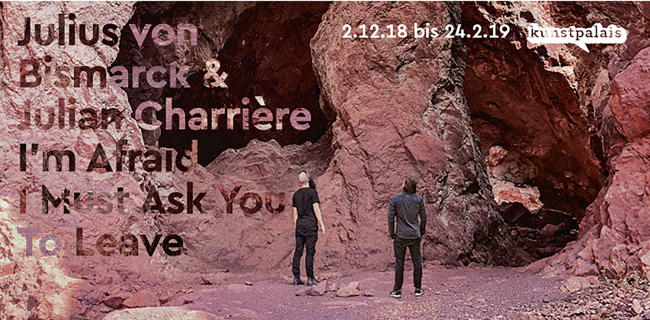
NOWs: I’m afraid I must ask you to leave
I’m afraid I must ask you to leaveJulius von Bismarck and Julian Charrière
Kunstpalais Erlangen
Palais Stutterheim
Marktplatz 1
91054 Erlangen
Opening: Dec 01, 2018
Julian Charrière and Julius von Bismarck are each outstanding artists. They are best friends. And sometimes they are partners in their artistic work. The first major exhibition of these two as a duo will take place at the end of 2018 in the Kunstpalais. Despite the diversity and autonomy of their works, they are united in their claim to initiate an intensive reflection about our relationship to nature and our place in society through their art. Both work at the interface of art and science.
Julian Charrière (* 1987 in Morges, Switzerland) is fascinated by geology and archeology. These however, are not perceived as backward-looking by him: with his works he analyzes the present – and dives deep into the earth. For his large installation at the Venice Biennale 2017 he extracted sediments from the Bolivian salt desert Salar de Uyuni and thus creating a salt-pinned landscape. With these excavations in the salt desert Charrière anticipates excavations at the same site of much greater extent, given that the salt desert is also the world’s largest lithium deposit. And lithium is becoming gradually the most important resource in the digital world. Therefore Charrières Future Fossil Spaces are future archaeologies.
Julius von Bismarck (* 1983 in Breisach am Rhein), who like Julian Charrière was a student of Olafur Eliasson, describes himself as a wannabe physicist. Movement, especially in circles, characterizes many of his works. For the Art Basel Unlimited 2015 for example he created an Egocentric system: he set himself up on a parabolic turntable with a mattress, a desk, a laptop and food and spent the entire duration of the fair in this room in constant motion under the influence of gravity and centrifugal force.
With other works, such as the video Irma To Come In Earnest on the hurricane in Florida, he discusses our dealings with nature and climate change. As an artist, Bismarck regards it as his social responsibility to raise awareness of current topics and problems. In his work series Punishment he did this, for example, by personally whipping legendary places such as the Alps.
When both artists work together, artworks emerge that are equally scientific, sensual, curious, auratic, sophisticated, humorous, and, in the best sense of the word, megalomaniacal.
I’m afraid I must ask you to leaveJulius von Bismarck and Julian Charrière
Kunstpalais Erlangen
Palais Stutterheim
Marktplatz 1
91054 Erlangen
Eröffnung: 1. Dez. 2018
Julius von Bismarck (*1983 in Breisach am Rhein) und Julian Charrière (*1987 in Morges, Schweiz) vereint eine besondere Herangehensweise an das Kunstschaffen: mit Forschungsreisen bis ans Ende der Welt und quasi-naturwissenschaftlichen Experimenten nähern sie sich dem Thema ihres Interesses, um ihren eigenen Hypothesen dazu schließlich in Skulptur, Video oder Fotografie Ausdruck zu geben – humorvoll und bildgewaltig.
Beide arbeiten mit unterschiedlichen Schwerpunkten an der Schnittstelle von Kunst und Wissenschaft. Seit sich Charrière und von Bismarck bei ihrem Studium bei Olafur Eliasson an der Universität der Künste in Berlin kennen lernten, teilen sie sich ein Atelier und sind beste Freunde. Für ausgewählte Projekte finden sie auch in ihrer Arbeit zusammen.
Für ihr Werk Some Pigeons Are More Equal Than Others entwickelten Charrière und von Bismarck eine Maschine, in der Tauben auf öffentlichen Plätzen eingefangen, mit natürlichen Farbstoffen eingefärbt und dann wieder in die Umwelt entlassen wurden. Die Taube, oft als schmutziges oder im besten Fall unscheinbares Tier missachtet, erfährt so nicht nur im wörtlichen Sinne neues Ansehen.
In Ägypten, Deutschland, Island, Mexiko und der Schweiz beschrifteten sie für die Serie Kunst seit 2012 mit einer Art überdimensionalem Graffiti natürliche Orte. Unter anderem die koloniale Geste des Beanspruchens und Benennens von Natur wird implizit thematisiert, wenn Mountain den Berg, Jungle das Blätterdickicht in riesigen Lettern bezeichnet.
Während sie sich in diesen beiden Arbeiten mit menschlichen Eingriffen in die Natur und deren Wirkungen und Aussagen beschäftigen, dreht es sich in ihrer neuesten Arbeit um die symbolische Aufladung einzelner Naturmonumente und die Fetischisierung der Natur: Thounds And Thounds Of Years And Only Now Things Happen entstand anlässlich der Ausstellung im Kunstpalais und ist hier erstmals zu sehen.
Mit ihrem gemeinsamen Œuvre stoßen Julian Charrière und Julius von Bismarck eine intensive Reflexion über unser Verhältnis zur Natur an. Arbeiten beide zusammen, entstehen Werke, die gleichermaßen wissenschaftlich, sinnlich, kurios, auratisch, gelehrt, hintergründig und – im allerbesten Sinne – größenwahnsinnig sind. I’m Afraid I Must Ask You To Leave ist ihre erste große Ausstellung als Duo.
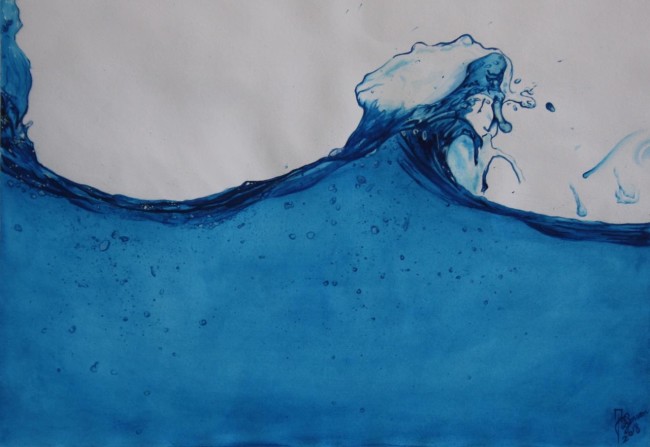
NOWs: Towards a Sentimental Cartography of Water
Towards a Sentimental Cartography of WaterGroup show with Nina Schuiki and Das Numen et. al.
Greatmore Artists Studios
47-49 Greatmore Street Woodstock
Western Cape 7925
South Africa
opening: 28 November 2018, 6pm
Curated by Stefan Vicedom
With Madeleine Bazil // Lizette Chirrime // Das Numen // Denver Jansen // Io Makandal // Koleka Putuma // Nina Schuiki // Dennis Siering
Greatmore Art Studios are glad to invite you to the upcoming group exhibition Towards a Sentimental Cartography of Water.
The effects of the latest water crisis still shape the social, economical and environmental life of Cape Town and the Western Cape. What once was thought to be a finite state of emergency thus more and more becomes a new form of normality. But which attributes define and characterise this labile situation of a new normal? How has the crisis modified the personal and public relation to water? And to what extent can the crisis even serve as a catalyst for change that transforms the negative implications into a positive outlook?
The exhibition Towards a Sentimental Cartography of Water explores these issues through a range of photographic images, drawings, installations and media works by artists based in South Africa and Europe. In an associative way they provide first coordinates for an yet unwritten cartography that describes our far-reaching connectedness with water.
The exhibition is organised by Berlin-based curator Stefan Vicedom who currently participates in the Greatmore Art Studios’ residency programme.
Towards a Sentimental Cartography of WaterGroup show with Nina Schuiki and Das Numen et. al.
Greatmore Artists Studios
47-49 Greatmore Street Woodstock
Western Cape 7925
South Africa
opening: 28 November 2018, 6pm
Curated by Stefan Vicedom
With Madeleine Bazil // Lizette Chirrime // Das Numen // Denver Jansen // Io Makandal // Koleka Putuma // Nina Schuiki // Dennis Siering
Greatmore Art Studios are glad to invite you to the upcoming group exhibition Towards a Sentimental Cartography of Water.
The effects of the latest water crisis still shape the social, economical and environmental life of Cape Town and the Western Cape. What once was thought to be a finite state of emergency thus more and more becomes a new form of normality. But which attributes define and characterise this labile situation of a new normal? How has the crisis modified the personal and public relation to water? And to what extent can the crisis even serve as a catalyst for change that transforms the negative implications into a positive outlook?
The exhibition Towards a Sentimental Cartography of Water explores these issues through a range of photographic images, drawings, installations and media works by artists based in South Africa and Europe. In an associative way they provide first coordinates for an yet unwritten cartography that describes our far-reaching connectedness with water.
The exhibition is organised by Berlin-based curator Stefan Vicedom who currently participates in the Greatmore Art Studios’ residency programme.
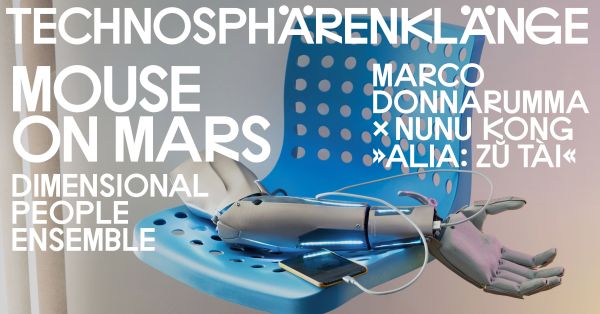
NOWs: Technosphärenklänge #6
Foto: David Vintiner, Design: NODE Berlin Oslo
Technosphärenklänge #6 - Concert and Performancewith Mouse on Mars, Marco Donnarumma & Nunu Kong
23 November 2018, 8 pm
Haus der Kulturen der Welt
John-Foster-Dulles-Allee 10
10557 Berlin
Tickets
8 pm: Marco Donnarumma & Nunu Kong: Alia: Zǔ tài
9.30 pm: Mouse on Mars Dimensional People Ensemble
Intelligent technologies are changing the foundations of human life through software, sensors, interfaces, and robots. These developments not only affect our way of thinking and doing, but also our relationships with each other. The sixth edition of Technosphärenklänge illuminates these new realities and explores the interfaces between humans and machines.
Marco Donnarumma and Nunu Kong | © Promo
Marco Donnarumma & Nunu Kong: Alia: Zǔ tài
The world premiere of the performance Alia: Zǔ tài: In the powerful sound choreography by Marco Donnarumma and Nunu Kong, an artificial intelligence connects three dancers equipped with sensors interacting with robotic prostheses to sound and light to create a kinetic feedback loop.
Mouse on Mars Dimensional People Ensemble | © Daniel Dittus
Mouse on Mars Dimensional People Ensemble
On their album Dimensional People, Mouse on Mars use old and new sound technologies to explore the process of music making as a model for a networked, polyphonic society. Technology acts both as an independent voice and as a mediator and translator for human encounters. The Mouse on Mars Dimensional People Ensemble puts guest musicians such as Andrea Belfi, Zach Condon from the band Beirut, Benjamin Lanz from The National, Moritz Simon Geist, and Dodo NKishi along with sound and light machines on the stage.
Jan Werner – Live Electronics
Andi Toma – Live Electronics, Guitar
Andrea Belfi – Drums
Zach Condon – Voice, Piano
Moritz Simon Geist – Sonic Robots
Benjamin Lanz – Trombone
Dodo NKishi – Percussion, Drums, Guitar
Matthias Singer – Light
Max Koerich – Sound
Mouse on Mars | © Guillaume Bog
Foto: David Vintiner, Design: NODE Berlin Oslo
Technosphärenklänge #6 - Concert and Performancewith Mouse on Mars, Marco Donnarumma & Nunu Kong
23. November 2018, 20 Uhr
Haus der Kulturen der Welt
John-Foster-Dulles-Allee 10
10557 Berlin
Tickets
20h: Marco Donnarumma & Nunu Kong: Alia: Zǔ tài
21.30h: Mouse on Mars Dimensional People Ensemble
Intelligente Technologien verändern die Grundlagen menschlichen Lebens durch Software, Sensoren, Interfaces oder Roboter. Diese Entwicklungen wirken sich nicht nur auf das Denken und Handeln aus, sondern auch menschliche Beziehungen verändern sich. Die sechste Ausgabe der Technosphärenklänge beleuchtet diese neuen Realitäten und lotet die Schnittstelle zwischen Mensch und Maschine aus.
Marco Donnarumma and Nunu Kong | © Promo
Marco Donnarumma & Nunu Kong: Alia: Zǔ tài
Die Performance Alia: Zǔ tài feiert Weltpremiere: In der klanggewaltigen Choreografie von Marco Donnarumma und Nunu Kong, schließt eine künstliche Intelligenz drei mit Sensoren ausgestattete Tänzer*innen, die mit robotischen Prothesen interagieren, zusammen mit Sound und Licht zu einem kinetischen Feedbackloop.
Mouse on Mars Dimensional People Ensemble | © Daniel Dittus
Mouse on Mars Dimensional People Ensemble
Mit ihrem Album Dimensional People erproben Mouse on Mars mit alten und neuen Klangtechnologien den Prozess des Musikmachens als Modell einer vernetzten und vielstimmigen Gesellschaft. Technologie ist hier sowohl eigenständige Stimme als auch Bindeglied und Übersetzerin menschlicher Begegnungen. Das Mouse on Mars Dimensional People Ensemble bringt neben Gastmusiker*innen wie Andrea Belfi, Zach Condon von der Band Beirut, Benjamin Lanz von The National, Moritz Simon Geist und Dodo NKishi auch Klang- und Lichtmaschinen auf die Bühne.
Jan Werner – Live Elektronik
Andi Toma – Live Elektronik, Gitarre
Andrea Belfi – Schlagzeug
Zach Condon – Stimme, Klavier
Moritz Simon Geist – Sonic Robots
Benjamin Lanz – Posaune
Dodo NKishi – Perkussion, Schlagzeug, Gitarre
Michael Rauter – Cello
Matthias Singer – Licht
Max Koerich – Sound
Mouse on Mars | © Guillaume Bog
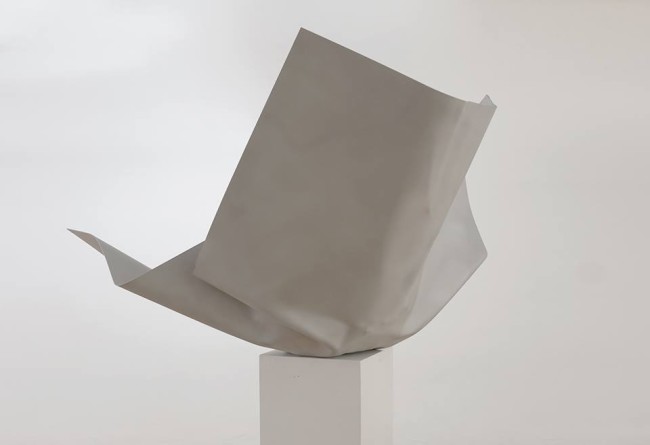
NOWs: IMPACT
IMPACTGroupshow with Julius von Bismarck, Dorian Gaudin, Felix Kiessling, Minyoung Paik, Anne Pfeifer, Laure Prouvost und Johanna Schelle. Curated by Anna Deilmann
Kunst- und Gewerbeverein Regensburg
Ludwigstraße 6
93047 Regensburg
Opening: 23 November 2018
Die Ausstellung IMPACT gibt einen ersten Einblick in das Schaffen von sieben ausgewählten Künstlerlnnen, deren Arbeiten im Rahmen des von Anna Deilmann kuratierten Projektes Quartier am Kunstpark in Zukunft den öffentlichen Raum der Stadt Regensburg bereichern werden. Dabei steht die Wirkkraft von Kunst im Vordergrund. Wo verläuft die Grenze zwischen Werk und Betrachter? Welchen Einfluss hat Kunst auf die Gesellschaft? Welche Botschaften kann sie überbringen?
Der Titel leitet sich aus der beinahe gleichnamigen und eigens für Regensburg realisierten Werkserie Impakt von Felix Kiessling ab. Der Künstler, der am Institut für Raumexperimente in Berlin bei Olafur Eliasson studierte, widmet sich dem flüchtigen Moment von Meteoroideneinschlägen und versucht, ihn greifbar zu machen: die Kollision zweier Körper, den damit einhergehenden physikalischen Ausnahmezustand sowie die kaum zu fassende, kurze Zeitspanne, in der sich enorme Kräfte entfalten. In der Ausstellung zeugen mehrere verformte Aluminiumplatten vom Aufprall eines bis zu einer Tonne schweren, vom Künstler gefertigten ‚Meteoroids‘. Die verbliebene Negativform des Einschlags kann von allen Seiten betrachtet werden. Die Skulpturen rufen die Unberechenbarkeit und Macht der Natur in Erinnerung: So waren es wahrscheinlich Meteoroiden, die das Leben auf der Erde entstehen ließen und es, wie beim Untergang der Dinosaurier, auch wieder auslöschten.
Mit Naturgewalten setzt sich auch Julius von Bismarck, der ebenfalls bei Olafur Eliasson studierte, auseinander. Das achtstündige Video Baumanalyse (2013) zeigt wie der Künstler mit der rechten Hand am Stamm einer Eiche entlang streicht. Die tastende Geste entpuppt sich als allmähliche Verletzung der Natur, denn von Bismarck hält ein Taschenmesser in der Hand und trägt einen Jahresring nach dem anderen ab. Seine gleichmäßige Bewegung hinterlässt einen ringförmigen Pfad am Boden und rückt die Eiche noch deutlicher ins Bildzentrum. Der stundenlange Zweikampf zwischen Mensch und Natur scheint unentschieden. Erst am Ende der täglichen Ausstellungsöffnungszeit gibt der Baum nach und fällt. Der Kreis wird zum Sinnbild für den ewigen Lauf von Werden und Vergehen. Metaphorisch kappt der Künstler sowohl ein deutsches Nationalsymbol, als auch seine eigene Ahnengeschichte, denn die Eiche ist traditionell mit dem Wappen der Familie von Bismarck verbunden. Der Künstler bringt also im wörtlichen Sinne seinen Stammbaum zu Fall.
Während sich Kiessling und von Bismarck dem Verhältnis von Mensch und Natur widmen, konzentriert sich Dorian Gaudin auf das Verhältnis von Mensch und Maschine. Der Künstler, der an der École nationale supérieure des Arts Décoratifs in Paris studierte und als Sohn von professionellen Tänzern und Choreografen aufwuchs, überträgt sein geschultes Bewusstsein für Körper und Bewegung auf technikbasierte Installationen und Objekte. Gaudin schafft Maschinen, die menschliche Züge annehmen und sich autonom bewegen. Der Anschein von unantastbarer und perfekter Technik wird im Laufe ihrer Performance jedoch gebrochen: Sie verletzen sich, die Oberflächen erhalten Kratzer und Verschleißspuren. Wie Narben am menschlichen Körper zeugen sie von der Lebzeit der Objekte und vom Prozess ihrer Entstehung. Oft werden sie vom Künstler farbig hervorgehoben. Gaudins Werke bewegen sich schließlich zwischen Technophilie und Technophobie: Die Liebe des Künstlers zu Maschinen und technischer Perfektion wird immer wieder durch deren Zerstörung gebrochen. Das Eigenleben seiner Arbeiten wirkt dabei rührend und beängstigend zugleich. In der Regensburger Ausstellung sind Objekte aus der Werkschau Rites and Aftermath zu sehen, die im Palais de Tokyo in Paris gezeigt wurde. Darauf aufbauend entwickelt Gaudin für das Quartier am Kunstpark das Projekt Knot: einen Knoten aus Aluminiumbändern, der den Endpunkt einer Bewegung materialisiert.
Auch die monochromen Objekte und Skulpturen von Anne Pfeifer, die an der Akademie der Künste in München bei Jorinde Voigt studierte, bergen ein technisches Innenleben und werden zu lebendigen Maschinen. Im Gegensatz zu Gaudin konzentriert sich die Künstlerin jedoch nicht auf die Bewegung, sondern vor allem auf den Ton. So lässt jedes Objekt eine bestimmte Komposition erklingen, die sich ebenso wie die Proportionen der Arbeit auf den Menschen, auf seine Organe und sein emotionales Innenleben beziehen. Zu hören sind beispielsweise Sounds, die auf den Herzschlag oder Wut, Trauer und Freude referieren. Der Betrachter wird zum elementaren Bestandteil ihrer Arbeiten: In der Spiegelung erkennt er sich selbst, setzt sich in Beziehung zum Kunstwerk, fühlt sich persönlich angesprochen oder wird, wie bei Please sit down (2016) oder der für den Außenraum geplanten Skulptur Cavea, zur Interaktion mit dem Kunstwerk angehalten.
Die ‚Landschaften des Inneren‘ untersucht auch Johanna Schelle, die ebenfalls an der Akademie der Bildenden Künste in München bei unter anderem Hermann Pitz studierte. Schelle arbeitet im klassischen Sinne als Bildhauerin: Die bis zu lebensgroßen und aus Lindenholz geschnitzten Figuren sind das Ergebnis gründlicher Studien auf Papier. Modelle in Ton und Gips bereiten das Arbeiten an den finalen Holzskulpturen vor, die abschließend in Pastelltönen bemalt werden. Die Haltung der Figuren deutet Handlungen an, ihre Mimik gibt kaum Aufschluss über ihre Gemütslage. Sie scheinen auf seltsame Weise entrückt, im Moment gefangen und eingefroren. Als emphatisches Wesen, ist der Mensch versucht das Gegenüber, das hier ebenfalls beinahe menschlich erscheint, zu lesen und zu verstehen. Der Betrachter setzt sich in Beziehung zum Objekt. Der Moment des Innehaltens und Betrachtens von Kunst wird vom Werk selbst gespiegelt. Das Ende des Dialogs ist dabei nicht festgeschrieben. Skulptur und Betrachter befinden sich auf der gleichen Bühne, jedoch ohne Skript.
Diesen Dialog zwischen Mensch und Kunstwerk treibt Minyoung Paik weiter: So nähert sich die Künstlerin, die ebenfalls an der Akademie der Bildenden Künste in München bei Gregor Schneider studierte, unter anderem gesellschaftlichen und politischen Fragestellungen und schafft einen spielerischen Zugang zu Themen, die gewöhnlich mit großer Ernsthaftigkeit behandelt werden. Die Arbeit Map of Korea 2018 zeigt ein Satellitenbild der koreanischen Halbinsel. In der Landschaftsaufnahme sind die anhaltenden Spannungen zwischen Nord- und Südkorea nicht sichtbar. Nur wenige rote Markierungen deuten auf die Grenze hin. Paiks Blick auf ihr eigenes Land paart sich hier mit einem persönlichen Erlebnis der Künstlerin: Der Verlust von Kunstwerken bei einem Transport – die Arbeiten waren für ein Jahr verschollen – gab Anlass zu dieser Installation. Das gerahmte Werk liegt auf dem Boden in einer Transportkiste. Ein Aufkleber weist auf die fragile Fracht hin, doch das Glas ist dennoch gebrochen. Der Riss verläuft dabei nicht zufällig entlang der Demarkationslinie. In Zukunft werden die gesamtkoreanischen Landesgrenzen auch im Außenraum zu sehen sein, dann jedoch in Form einer Tischtennisplatte.
Kunst eröffnet schließlich die Möglichkeit, sich zwischen Realität und Fiktion zu bewegen. Eben diesen Freiraum nutzt Laure Prouvost, die in London am Central Saint Martins College of Arts und der Goldsmiths University studierte. 2013 gewann sie mit Wantee den Turner-Preis. Die Videoarbeit nimmt den Betrachter mit auf die Suche nach ihrem Großvater und einem ‚High Tea‘-Treffen zwischen ihm und seinem Künstlerfreund Kurt Schwitters. Die fiktive Reise in die Vergangenheit ist eng mit der Installation in Regensburg verknüpft. Im Kühlschrank sind Teetassen zu entdecken, die bereits im Video zu sehen waren. Die Keramiken dienen als Modelle für die Skulptur, die auch im Außenraum realisiert werden soll. Zudem lädt die Künstlerin mit Schrifttafeln wie Ideally This Sign Would Make You Sink In Some Warm Tea immer wieder dazu ein, ihr auf der weiteren fiktiven Reise zu folgen.
Das Projekt Quartier am Kunstpark wurde von Anna Deilmann für das Immobilien Zentrum Regensburg entwickelt. Als Gründerin von Anna Deilmann Art Concepts widmet sie sich der Schnittstelle von Architektur, Stadt und Kunst mit dem Fokus auf die Konzeption von Kunst-am-Bau-Projekten. Die Ausstellung IMPACT wurde durch den Kunst- und Gewerbeverein Regensburg und die freundliche Unterstützung des Immobilien Zentrums Regensburg ermöglicht.
Text: Lydia Korndörfer
IMPACTGroupshow with Julius von Bismarck, Dorian Gaudin, Felix Kiessling, Minyoung Paik, Anne Pfeifer, Laure Prouvost und Johanna Schelle. Curated by Anna Deilmann
Kunst- und Gewerbeverein Regensburg
Ludwigstraße 6
93047 Regensburg
Eröffnung: 23. November 2018
Die Ausstellung IMPACT gibt einen ersten Einblick in das Schaffen von sieben ausgewählten Künstlerlnnen, deren Arbeiten im Rahmen des von Anna Deilmann kuratierten Projektes Quartier am Kunstpark in Zukunft den öffentlichen Raum der Stadt Regensburg bereichern werden. Dabei steht die Wirkkraft von Kunst im Vordergrund. Wo verläuft die Grenze zwischen Werk und Betrachter? Welchen Einfluss hat Kunst auf die Gesellschaft? Welche Botschaften kann sie überbringen?
Der Titel leitet sich aus der beinahe gleichnamigen und eigens für Regensburg realisierten Werkserie Impakt von Felix Kiessling ab. Der Künstler, der am Institut für Raumexperimente in Berlin bei Olafur Eliasson studierte, widmet sich dem flüchtigen Moment von Meteoroideneinschlägen und versucht, ihn greifbar zu machen: die Kollision zweier Körper, den damit einhergehenden physikalischen Ausnahmezustand sowie die kaum zu fassende, kurze Zeitspanne, in der sich enorme Kräfte entfalten. In der Ausstellung zeugen mehrere verformte Aluminiumplatten vom Aufprall eines bis zu einer Tonne schweren, vom Künstler gefertigten ‚Meteoroids‘. Die verbliebene Negativform des Einschlags kann von allen Seiten betrachtet werden. Die Skulpturen rufen die Unberechenbarkeit und Macht der Natur in Erinnerung: So waren es wahrscheinlich Meteoroiden, die das Leben auf der Erde entstehen ließen und es, wie beim Untergang der Dinosaurier, auch wieder auslöschten.
Mit Naturgewalten setzt sich auch Julius von Bismarck, der ebenfalls bei Olafur Eliasson studierte, auseinander. Das achtstündige Video Baumanalyse (2013) zeigt wie der Künstler mit der rechten Hand am Stamm einer Eiche entlang streicht. Die tastende Geste entpuppt sich als allmähliche Verletzung der Natur, denn von Bismarck hält ein Taschenmesser in der Hand und trägt einen Jahresring nach dem anderen ab. Seine gleichmäßige Bewegung hinterlässt einen ringförmigen Pfad am Boden und rückt die Eiche noch deutlicher ins Bildzentrum. Der stundenlange Zweikampf zwischen Mensch und Natur scheint unentschieden. Erst am Ende der täglichen Ausstellungsöffnungszeit gibt der Baum nach und fällt. Der Kreis wird zum Sinnbild für den ewigen Lauf von Werden und Vergehen. Metaphorisch kappt der Künstler sowohl ein deutsches Nationalsymbol, als auch seine eigene Ahnengeschichte, denn die Eiche ist traditionell mit dem Wappen der Familie von Bismarck verbunden. Der Künstler bringt also im wörtlichen Sinne seinen Stammbaum zu Fall.
Während sich Kiessling und von Bismarck dem Verhältnis von Mensch und Natur widmen, konzentriert sich Dorian Gaudin auf das Verhältnis von Mensch und Maschine. Der Künstler, der an der École nationale supérieure des Arts Décoratifs in Paris studierte und als Sohn von professionellen Tänzern und Choreografen aufwuchs, überträgt sein geschultes Bewusstsein für Körper und Bewegung auf technikbasierte Installationen und Objekte. Gaudin schafft Maschinen, die menschliche Züge annehmen und sich autonom bewegen. Der Anschein von unantastbarer und perfekter Technik wird im Laufe ihrer Performance jedoch gebrochen: Sie verletzen sich, die Oberflächen erhalten Kratzer und Verschleißspuren. Wie Narben am menschlichen Körper zeugen sie von der Lebzeit der Objekte und vom Prozess ihrer Entstehung. Oft werden sie vom Künstler farbig hervorgehoben. Gaudins Werke bewegen sich schließlich zwischen Technophilie und Technophobie: Die Liebe des Künstlers zu Maschinen und technischer Perfektion wird immer wieder durch deren Zerstörung gebrochen. Das Eigenleben seiner Arbeiten wirkt dabei rührend und beängstigend zugleich. In der Regensburger Ausstellung sind Objekte aus der Werkschau Rites and Aftermath zu sehen, die im Palais de Tokyo in Paris gezeigt wurde. Darauf aufbauend entwickelt Gaudin für das Quartier am Kunstpark das Projekt Knot: einen Knoten aus Aluminiumbändern, der den Endpunkt einer Bewegung materialisiert.
Auch die monochromen Objekte und Skulpturen von Anne Pfeifer, die an der Akademie der Künste in München bei Jorinde Voigt studierte, bergen ein technisches Innenleben und werden zu lebendigen Maschinen. Im Gegensatz zu Gaudin konzentriert sich die Künstlerin jedoch nicht auf die Bewegung, sondern vor allem auf den Ton. So lässt jedes Objekt eine bestimmte Komposition erklingen, die sich ebenso wie die Proportionen der Arbeit auf den Menschen, auf seine Organe und sein emotionales Innenleben beziehen. Zu hören sind beispielsweise Sounds, die auf den Herzschlag oder Wut, Trauer und Freude referieren. Der Betrachter wird zum elementaren Bestandteil ihrer Arbeiten: In der Spiegelung erkennt er sich selbst, setzt sich in Beziehung zum Kunstwerk, fühlt sich persönlich angesprochen oder wird, wie bei Please sit down (2016) oder der für den Außenraum geplanten Skulptur Cavea, zur Interaktion mit dem Kunstwerk angehalten.
Die ‚Landschaften des Inneren‘ untersucht auch Johanna Schelle, die ebenfalls an der Akademie der Bildenden Künste in München bei unter anderem Hermann Pitz studierte. Schelle arbeitet im klassischen Sinne als Bildhauerin: Die bis zu lebensgroßen und aus Lindenholz geschnitzten Figuren sind das Ergebnis gründlicher Studien auf Papier. Modelle in Ton und Gips bereiten das Arbeiten an den finalen Holzskulpturen vor, die abschließend in Pastelltönen bemalt werden. Die Haltung der Figuren deutet Handlungen an, ihre Mimik gibt kaum Aufschluss über ihre Gemütslage. Sie scheinen auf seltsame Weise entrückt, im Moment gefangen und eingefroren. Als emphatisches Wesen, ist der Mensch versucht das Gegenüber, das hier ebenfalls beinahe menschlich erscheint, zu lesen und zu verstehen. Der Betrachter setzt sich in Beziehung zum Objekt. Der Moment des Innehaltens und Betrachtens von Kunst wird vom Werk selbst gespiegelt. Das Ende des Dialogs ist dabei nicht festgeschrieben. Skulptur und Betrachter befinden sich auf der gleichen Bühne, jedoch ohne Skript.
Diesen Dialog zwischen Mensch und Kunstwerk treibt Minyoung Paik weiter: So nähert sich die Künstlerin, die ebenfalls an der Akademie der Bildenden Künste in München bei Gregor Schneider studierte, unter anderem gesellschaftlichen und politischen Fragestellungen und schafft einen spielerischen Zugang zu Themen, die gewöhnlich mit großer Ernsthaftigkeit behandelt werden. Die Arbeit Map of Korea 2018 zeigt ein Satellitenbild der koreanischen Halbinsel. In der Landschaftsaufnahme sind die anhaltenden Spannungen zwischen Nord- und Südkorea nicht sichtbar. Nur wenige rote Markierungen deuten auf die Grenze hin. Paiks Blick auf ihr eigenes Land paart sich hier mit einem persönlichen Erlebnis der Künstlerin: Der Verlust von Kunstwerken bei einem Transport – die Arbeiten waren für ein Jahr verschollen – gab Anlass zu dieser Installation. Das gerahmte Werk liegt auf dem Boden in einer Transportkiste. Ein Aufkleber weist auf die fragile Fracht hin, doch das Glas ist dennoch gebrochen. Der Riss verläuft dabei nicht zufällig entlang der Demarkationslinie. In Zukunft werden die gesamtkoreanischen Landesgrenzen auch im Außenraum zu sehen sein, dann jedoch in Form einer Tischtennisplatte.
Kunst eröffnet schließlich die Möglichkeit, sich zwischen Realität und Fiktion zu bewegen. Eben diesen Freiraum nutzt Laure Prouvost, die in London am Central Saint Martins College of Arts und der Goldsmiths University studierte. 2013 gewann sie mit Wantee den Turner-Preis. Die Videoarbeit nimmt den Betrachter mit auf die Suche nach ihrem Großvater und einem ‚High Tea‘-Treffen zwischen ihm und seinem Künstlerfreund Kurt Schwitters. Die fiktive Reise in die Vergangenheit ist eng mit der Installation in Regensburg verknüpft. Im Kühlschrank sind Teetassen zu entdecken, die bereits im Video zu sehen waren. Die Keramiken dienen als Modelle für die Skulptur, die auch im Außenraum realisiert werden soll. Zudem lädt die Künstlerin mit Schrifttafeln wie Ideally This Sign Would Make You Sink In Some Warm Tea immer wieder dazu ein, ihr auf der weiteren fiktiven Reise zu folgen.
Das Projekt Quartier am Kunstpark wurde von Anna Deilmann für das Immobilien Zentrum Regensburg entwickelt. Als Gründerin von Anna Deilmann Art Concepts widmet sie sich der Schnittstelle von Architektur, Stadt und Kunst mit dem Fokus auf die Konzeption von Kunst-am-Bau-Projekten. Die Ausstellung IMPACT wurde durch den Kunst- und Gewerbeverein Regensburg und die freundliche Unterstützung des Immobilien Zentrums Regensburg ermöglicht.
Text: Lydia Korndörfer
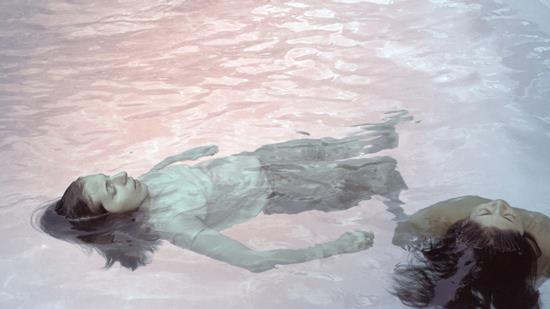
NOWs: Stellar Fauna by Kat Válastur
Stellar Fauna by Kat VálasturProduced by HAU Hebbel am Ufer
After a showcase and the premiere of Rasp Your Soul in 2017, HAU Hebbel am Ufer presents the new premiere by choreographer and performer Kat Válastur. Divided into two parts, a video installation and a performance, in Stellar Fauna – similarly to her last work – two dancers gradually embody mutant and digital attributes in a poetic way. They repeat a mysterious mantra: “We are waiting for the flood to be free although that would be the end of us.” In a set suggesting an untamed ecosystem, the boundaries between their private and social behaviour are suspended. Stellar Fauna is the creation of an uncanny world made by our world. A discourse about bodies in the wilderness of our time.
Due to capacity limitations two performances will take place each day.
Wed 21 Nov 2018
7pm / HAU3
8pm / HAU3
Thu 22 Nov 2018
7pm / HAU3
8pm / HAU3
Fri 23 Nov 2018
7pm / HAU3
8pm / HAU3
Sat 24 Nov 2018
7pm / HAU3
8pm / HAU3
English (language no problem)
approx. 45 min
Trailer Stellar Fauna
Concept & choreography: Kat Válastur
Performance: Maria Zimpel, Harumi Terayama
Light design: Martin Beeretz
Sound design & music: Constantin Engelmann, Tobias Purfürst
Set design: Leon Eixenberger
Additional set design: Filippos Kavakas
Costume design: Kat Válastur
Costume assistance: Suzan Çamlik
Video installation: film directed by Kat Válastur
Camera & editing: Clara Jo
Production management: HAU Artist Office / Sabine Seifert
Touring & distribution: HAU Artist Office / Nicole Schuchardt
Premiere 21 November 2018
Production: Kat Válastur / HAU Hebbel am Ufer.
Co-production: Fondation d’entreprise Hermès, Théâtre de la Ville (Paris), Theater Freiburg, Fonds Transfabrik – deutsch-französischer Fonds für darstellende Künste.
Funded by: Senate Department for Culture and Europe.
Stellar Fauna by Kat VálasturProduziert von HAU Hebbel am Ufer
Nach einer Werkschau und der Premiere von Rasp Your Soul 2017 präsentiert das HAU Hebbel am Ufer nun die Uraufführung der neuen Arbeit von Kat Válastur. Gegliedert in zwei Teile, eine Video-Installation und eine Performance, baut Stellar Fauna auf Ideen auf, die von der Choreografin und Performerin für die vergangene Arbeit entwickelt wurden. Die zwei Tänzerinnen verkörpern sich nach und nach verändernde und übertrieben digitale Attribute. Sie wiederholen ein furchterregendes Mantra: “We are waiting for the flood to be free although that would be the end of us” (Wir warten auf das Einsetzen der Flut, auch wenn das unser Ende wäre). In einer Umgebung, die ein ungezähmtes Ökosystem suggeriert, werden die Grenzen zwischen ihrem privaten und sozialen Verhalten aufgehoben. Stellar Fauna ist die Schöpfung einer unheimlichen Welt, die von unserer Welt erschaffen wurde. Ein Diskurs über Körper in der Wildnis unserer Zeit.
Aufgrund der begrenzten Kapazität finden pro Abend zwei Vorstellungen statt.
Mi 21.11.2018
19:00 / HAU3
20:00 / HAU3
Do 22.11.2018
19:00 / HAU3
20:00 / HAU3
Fr 23.11.2018
19:00 / HAU3
20:00 / HAU3
Sa 24.11.2018
19:00 / HAU3
20:00 / HAU3
Englisch (Sprache kein Problem)
ca. 45 min
Trailer Stellar Fauna
Konzept & Choreografie: Kat Válastur
Performance: Maria Zimpel, Harumi Terayama
Lichtdesign: Martin Beeretz
Sounddesign & Musik: Constantin Engelmann, Tobias Purfürst
Bühnenbild: Leon Eixenberger
Zusätzliches Bühnenbild: Filippos Kavakas
Kostüme: Kat Válastur
Kostümassistenz: Suzan Çamlik
Videoinstallation: Film von Kat Válastur
Kamera & Schnitt: Clara Jo
Produktionsleitung: HAU Artist Office / Sabine Seifert
Touring & Distribution: HAU Artist Office / Nicole Schuchardt
Premiere am 21.11.2018
Produktion: Kat Válastur / HAU Hebbel am Ufer.
Koproduktion: Fondation d’entreprise Hermès, Théâtre de la Ville (Paris), Theater Freiburg, Fonds Transfabrik – deutsch-französischer Fonds für darstellende Künste.
Gefördert durch: Berliner Senatsverwaltung für Kultur und Europa.
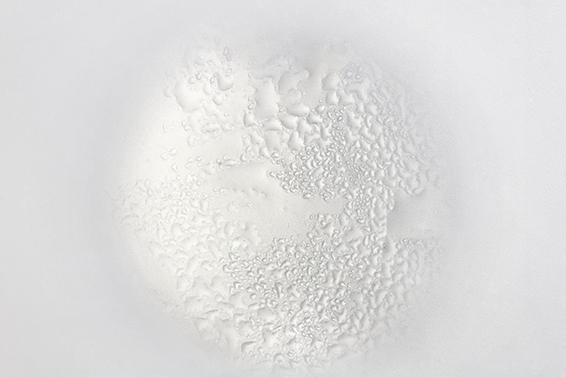
NOWs: any other where by Nina Schuiki
Nina Schuiki, I still see you in everything, 2018. teardrop, glass object, air sealed (slide projection)
any other wheresolo show
Kunstverein Wilhelmshöhe
curated by Julia Katharina Thiemann
opening: 26 October 2018, 7pm
In any other where, Nina Schuiki (born 1983, Graz) presents site-conditioned works that use ephemeral gestures to rediscover the environment and spaces of the Kunstverein Wilhelmshöhe. Space is inseparable from the dimensions of temporality inscribed in it, and Schuiki’s interventions find form to these relations, bringing viewers to question acts of visualisation and the subtle gesture of poetic displacement.
The exhibition will be accompanied by a new publication documenting the installation, featuring an introduction by exhibition curator Julia Katharina Thiemann and foreword written by Mona Leidig, leading chairperson of Kunstverein Wilhelmshöhe. Both any other where and the exhibition publication have been realized with the kind support of Stadtwerke Ettlingen GmbH, Freundeskreis Kunstverein Wilhelmshöhe and the Austrian Cultural Forum Berlin.
Kunstverein Wilhelmshöhe e.V.
Schöllbronner Straße 87
76275 Ettlingen
Opening hours: Wed-Sat 3 – 6pm, Sun 11am – 6pm
Nina Schuiki, I still see you in everything, 2018. teardrop, glass object, air sealed (slide projection)
any other wheresolo show
Kunstverein Wilhelmshöhe
curated by Julia Katharina Thiemann
opening: 26 October 2018, 7pm
In any other where, Nina Schuiki (born 1983, Graz) presents site-conditioned works that use ephemeral gestures to rediscover the environment and spaces of the Kunstverein Wilhelmshöhe. Space is inseparable from the dimensions of temporality inscribed in it, and Schuiki’s interventions find form to these relations, bringing viewers to question acts of visualisation and the subtle gesture of poetic displacement.
The exhibition will be accompanied by a new publication documenting the installation, featuring an introduction by exhibition curator Julia Katharina Thiemann and foreword written by Mona Leidig, leading chairperson of Kunstverein Wilhelmshöhe. Both any other where and the exhibition publication have been realized with the kind support of Stadtwerke Ettlingen GmbH, Freundeskreis Kunstverein Wilhelmshöhe and the Austrian Cultural Forum Berlin.
Kunstverein Wilhelmshöhe e.V.
Schöllbronner Straße 87
76275 Ettlingen
Opening hours: Wed-Sat 3 – 6pm, Sun 11am – 6pm
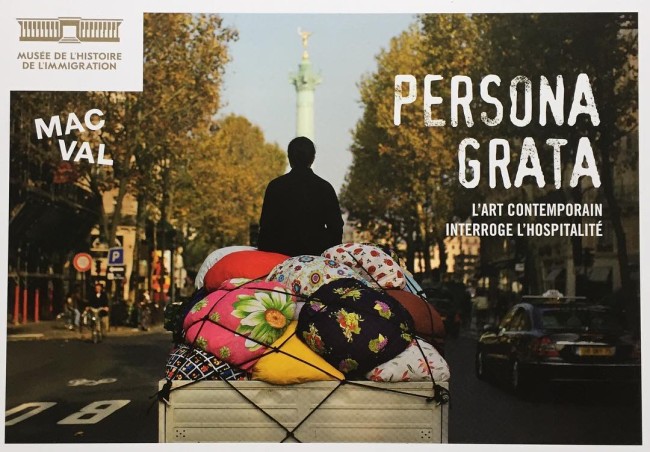
NOWs: Persona grata
Persona grataGroup exhibition with Dan Stockholm, Anri Sala et. al
Musée national de l’histoire de l’immigration
293, avenue Daumesnil
75012 Paris
16 October 2018 – 20 January 2019
Co-curated by Anne-Laure Flacelière, MAC VAL collection Study and Development Officer and Isabelle Renard, Collections and Exhibitions Director at the Musée national de l’histoire de l’immigration
With works by Bertille Bak, Dominique Blais, Alina Bliumis, Jeff Bliumis, Halida Boughriet, Kyungwoo Chun, Philippe Cognée, Pascale Consigny, Hamid Debarrah, Latifa Echakhch, Eléonore False, Claire Fontaine, Laura Henno, Pierre Huyghe, Bertrand Lamarche, Xie Lei, Lahouari Mohammed Bakir, Moataz Nasr, Eva Nielsen, Gina Pane, Laure Prouvost, Enrique Ramirez, Judit Reigl, Anri Sala, Sarkis, Zineb Sedira, Bruno Serralongue, Chiharu Shiota, Société Réaliste, Dan Stockholm, Barthélémy Toguo…
MAC VAL – Musée d’art contemporain du Val-de-Marne
Place de la Libération
94400 Vitry-sur-Seine
16 October 2018 – 24 February 2019
Curated by Ingrid Jurzak, MAC VAL Collection Study and Management Officer
With works by Eduardo Arroyo, Kader Attia, Marcos Avila Forero, Laëtitia Badaut Haussmann, Bertille Bak, Richard Baquié, Taysir Batniji, Ben, Bruno Boudjelal, David Brognon & Stéphanie Rollin, Mark Brusse, Pierre Buraglio, Mircea Cantor, Étienne Chambaud, Kyungwoo Chun, Clément Cogitore, Philippe Cognée, Delphine Coindet, Matali Crasset, Julien Discrit, Thierry Fontaine, Jochen Gerz, Ghazel, Marie-Ange Guilleminot, Mona Hatoum, Eric Hattan, Laura Henno, Pierre Huyghe, Emily Jacir, Yeondoo Jung, Bouchra Khalili, Kimsooja, Claude Lévêque, M/M, Lahouari Mohammed Bakir, Jean-Christophe Norman, Lucy Orta, Bernard Pagès, Philippe Parreno, Yan Pei-Ming, Cécile Paris, Mathieu Pernot, Jacqueline Salmon, Bruno Serralongue, Esther Shalev-Gerz, Société Réaliste, Djamel Tatah, Barthélémy Toguo, Patrick Tosani, Sabine Weiss…
Welcome ! Festival
6 October – 11 November 2018
Programming: Stéphane Malfettes
The Musée national de l’histoire de l’immigration and the MAC VAL – Musée d’art contemporain du Val-de-Marne are collaborating to present a project questioning the notion of hospitality through the prism of contemporary creation.
Together, the two institutions- a social museum that value contemporary creation and a contemporary art museum that tackles social issues- are happy to present Persona grata, an exhibition organized over the two locations with a rich cultural programming: an occasion for artists to explore all the dimensions of what constitutes or corrodes the notions of hospitality and alterity through their own vision and sensitivity.
The acceleration of migratory flows and the growing place these issues occupy in the public debate increasingly question the foundations of our societies. On one hand, camps and walls mushroom and confirm the irreversible setback of our hospitality duty, while on the other, citizen involvement grows to help, support and welcome migrants. Is the answer of today’s harsh society to bring emergency assistance rather than implement long-term and effective hospitality policies?
In this context and from the collections of both museums, this artistic partnership aims at highlighting a contemporary creation that reflects today’s world as well as tackling these issues from the point of view of the many artists who have explored the theme of hospitality over the last years.
The exhibition will provide a platform for artists to share their analyses, critics and feelings toward national fold, behaviors of rejection and revolt. These artistic testimonies will help us think these questions through and look at ourselves yet without any moralistic judgment. Through this unique and engaged partnership project, the Musée national de l’histoire de l’immigration and the MAC VAL look to raise awareness, foster reflection and debate, and call our certitudes into question. Although central, the issues related to migratory flows do not cross out other neglected –and little known- forms of hospitality toward helpless and weakened populations. The exhibition will bring forth proposals around community life, care for others, the necessity of nursing homes, public health-care and hospitality centers held in a spirit of attentiveness, kindness and sharing we should rehabilitate.
Under the eyes of philosophers Fabienne Brugère and Guillaume Le Blanc, authors of La fin de l’hospitalité, this two-fold exhibition will be complemented by a cultural programming: Welcome! at the Musée national de l’histoire de l’immigration (6 October-11 November 2018) and Attention fragile at the MAC VAL (30 November, 1 and 2 December 2018).
Persona grataGroup exhibition with Dan Stockholm, Anri Sala et. al.
Musée national de l’histoire de l’immigration
293, avenue Daumesnil
75012 Paris
16 October 2018 – 20 January 2019
Co-curated by Anne-Laure Flacelière, MAC VAL collection Study and Development Officer and Isabelle Renard, Collections and Exhibitions Director at the Musée national de l’histoire de l’immigration
With works by Bertille Bak, Dominique Blais, Alina Bliumis, Jeff Bliumis, Halida Boughriet, Kyungwoo Chun, Philippe Cognée, Pascale Consigny, Hamid Debarrah, Latifa Echakhch, Eléonore False, Claire Fontaine, Laura Henno, Pierre Huyghe, Bertrand Lamarche, Xie Lei, Lahouari Mohammed Bakir, Moataz Nasr, Eva Nielsen, Gina Pane, Laure Prouvost, Enrique Ramirez, Judit Reigl, Anri Sala, Sarkis, Zineb Sedira, Bruno Serralongue, Chiharu Shiota, Société Réaliste, Dan Stockholm, Barthélémy Toguo…
MAC VAL – Musée d’art contemporain du Val-de-Marne
Place de la Libération
94400 Vitry-sur-Seine
16 October 2018 – 24 February 2019
Curated by Ingrid Jurzak, MAC VAL Collection Study and Management Officer
With works by Eduardo Arroyo, Kader Attia, Marcos Avila Forero, Laëtitia Badaut Haussmann, Bertille Bak, Richard Baquié, Taysir Batniji, Ben, Bruno Boudjelal, David Brognon & Stéphanie Rollin, Mark Brusse, Pierre Buraglio, Mircea Cantor, Étienne Chambaud, Kyungwoo Chun, Clément Cogitore, Philippe Cognée, Delphine Coindet, Matali Crasset, Julien Discrit, Thierry Fontaine, Jochen Gerz, Ghazel, Marie-Ange Guilleminot, Mona Hatoum, Eric Hattan, Laura Henno, Pierre Huyghe, Emily Jacir, Yeondoo Jung, Bouchra Khalili, Kimsooja, Claude Lévêque, M/M, Lahouari Mohammed Bakir, Jean-Christophe Norman, Lucy Orta, Bernard Pagès, Philippe Parreno, Yan Pei-Ming, Cécile Paris, Mathieu Pernot, Jacqueline Salmon, Bruno Serralongue, Esther Shalev-Gerz, Société Réaliste, Djamel Tatah, Barthélémy Toguo, Patrick Tosani, Sabine Weiss…
Welcome ! Festival
6 October – 11 November 2018
Programming: Stéphane Malfettes
The Musée national de l’histoire de l’immigration and the MAC VAL – Musée d’art contemporain du Val-de-Marne are collaborating to present a project questioning the notion of hospitality through the prism of contemporary creation.
Together, the two institutions- a social museum that value contemporary creation and a contemporary art museum that tackles social issues- are happy to present Persona grata, an exhibition organized over the two locations with a rich cultural programming: an occasion for artists to explore all the dimensions of what constitutes or corrodes the notions of hospitality and alterity through their own vision and sensitivity.
The acceleration of migratory flows and the growing place these issues occupy in the public debate increasingly question the foundations of our societies. On one hand, camps and walls mushroom and confirm the irreversible setback of our hospitality duty, while on the other, citizen involvement grows to help, support and welcome migrants. Is the answer of today’s harsh society to bring emergency assistance rather than implement long-term and effective hospitality policies?
In this context and from the collections of both museums, this artistic partnership aims at highlighting a contemporary creation that reflects today’s world as well as tackling these issues from the point of view of the many artists who have explored the theme of hospitality over the last years.
The exhibition will provide a platform for artists to share their analyses, critics and feelings toward national fold, behaviors of rejection and revolt. These artistic testimonies will help us think these questions through and look at ourselves yet without any moralistic judgment. Through this unique and engaged partnership project, the Musée national de l’histoire de l’immigration and the MAC VAL look to raise awareness, foster reflection and debate, and call our certitudes into question. Although central, the issues related to migratory flows do not cross out other neglected –and little known- forms of hospitality toward helpless and weakened populations. The exhibition will bring forth proposals around community life, care for others, the necessity of nursing homes, public health-care and hospitality centers held in a spirit of attentiveness, kindness and sharing we should rehabilitate.
Under the eyes of philosophers Fabienne Brugère and Guillaume Le Blanc, authors of La fin de l’hospitalité, this two-fold exhibition will be complemented by a cultural programming: Welcome! at the Musée national de l’histoire de l’immigration (6 October-11 November 2018) and Attention fragile at the MAC VAL (30 November, 1 and 2 December 2018).
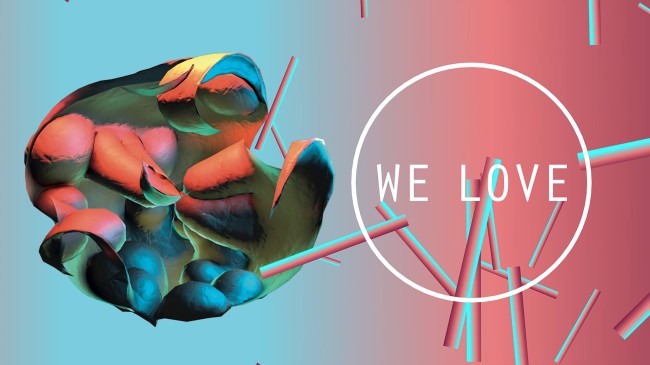
NOWs: Svetlana Maraš and Robert Lippok at arkaoda Berlin
Svetlana Maraš and Robert Lippok at arkaoda Berlinlive concert
arkaoda Berlin
Karl-Marx Platz 16
12043 Berlin
Doors: 8 pm
Svetlana Maraš: 9 pm
Robert Lippok: 10 pm
presented by arkaoda and Palais Wittgenstein
supported by Musicboard Berlin
This will be a very special night, Svetlana Maraš will share the stage with Robert Lippok. Maraš will present brand new material, premiered in September @ ARS ELECTRONICA.
Svetlana Maraš (1985) is a composer and sound artist from Serbia. She works at the intersection of experimental music and sound art. Maraš’ work is highly experimental and as such, rejects definite classification. She composes for ensembles, makes works for radio, creates interactive sound and media installations and performs live electronic music.
Her works have been presented internationally, at venues and festivals such as CTM (Berlin), Espace Multimedia Gantner (Bourogne), International Music Institute (Darmstadt), Onassis Cultural Centre (Athens), Museum of Contemporary Art (Belgrade), A38 (Budapest), Ausland (Berlin), ORF Kunstradio-Radiokunst, Radio Belgrade, RTE Nova, ICMC (New York), UCSD (San Diego), ISEA (Dubai), Orpheus Institute (Ghent) among many other places.
Maraš is a head of Radio Belgrade’s Electronic Studio.
—————————————————
The great Robert Lippok (raster) returns with his first solo album in seven years, Applied Autonomy for Olaf Bender’s Raster. A survey of what he’s been up to, as much as a statement of intent for here and now, Applied Autonomy reprises the fine balance of tuff-edged minimalism, spatial illusion and melodic delicacy that emerged with Redsuperstructure [2011], but ratcheting its effect with a renewed vigour for a frankly epic impact.
As the title makes explicit, Robert’s 3rd solo album is concerned with autonomy, which feels like an apt subject for the age of automation, when humans are increasingly negotiating their role in context of the machine and AI, and vice-versa. The systems Robert set up for Redsuperstructure now come into deeper relief, as he applies a greater understanding of their workings in order to eke out, sculpt their possibilities in his own image.
Much of the material came from improvisation and sketches made in preparation for his live shows. This quickfire process amassed a range of material which was then more considerately cut to shapes and layerd not applied Autonomy, which ranges from almost Rian Treanor-esque stutter drums mixed with dense yet wide atmospheres in his title track, and twisted across the album, from frenetic acid dancehall mutations in Varieties of Impact, to the meter-messing trance of Scene 3 which sounds like something Vladimir Ivkovic might play, and thru to the necessary, hoped for dose of emotive lushness with brimming optimism of All Objects Are Moving.
But he really saves some of the best for last in Samtal, a 14 minute piece recorded in duo – but not together – with Klara Lewis at EMS Stockholm, where we effectively hear two autonomous minds at work, making for a smart contrast with the singularity of the preceding tracks.
Svetlana Maraš and Robert Lippok at arkaoda Berlinlive concert
arkaoda Berlin
Karl-Marx Platz 16
12043 Berlin
Doors: 8 pm
Svetlana Maraš: 9 pm
Robert Lippok: 10 pm
presented by arkaoda and Palais Wittgenstein
supported by Musicboard Berlin
This will be a very special night, Svetlana Maraš will share the stage with Robert Lippok. Maraš will present brand new material, premiered in September @ ARS ELECTRONICA.
Svetlana Maraš (1985) is a composer and sound artist from Serbia. She works at the intersection of experimental music and sound art. Maraš’ work is highly experimental and as such, rejects definite classification. She composes for ensembles, makes works for radio, creates interactive sound and media installations and performs live electronic music.
Her works have been presented internationally, at venues and festivals such as CTM (Berlin), Espace Multimedia Gantner (Bourogne), International Music Institute (Darmstadt), Onassis Cultural Centre (Athens), Museum of Contemporary Art (Belgrade), A38 (Budapest), Ausland (Berlin), ORF Kunstradio-Radiokunst, Radio Belgrade, RTE Nova, ICMC (New York), UCSD (San Diego), ISEA (Dubai), Orpheus Institute (Ghent) among many other places.
Maraš is a head of Radio Belgrade’s Electronic Studio.
—————————————————
The great Robert Lippok (raster) returns with his first solo album in seven years, Applied Autonomy for Olaf Bender’s Raster. A survey of what he’s been up to, as much as a statement of intent for here and now, Applied Autonomy reprises the fine balance of tuff-edged minimalism, spatial illusion and melodic delicacy that emerged with Redsuperstructure [2011], but ratcheting its effect with a renewed vigour for a frankly epic impact.
As the title makes explicit, Robert’s 3rd solo album is concerned with autonomy, which feels like an apt subject for the age of automation, when humans are increasingly negotiating their role in context of the machine and AI, and vice-versa. The systems Robert set up for Redsuperstructure now come into deeper relief, as he applies a greater understanding of their workings in order to eke out, sculpt their possibilities in his own image.
Much of the material came from improvisation and sketches made in preparation for his live shows. This quickfire process amassed a range of material which was then more considerately cut to shapes and layerd not applied Autonomy, which ranges from almost Rian Treanor-esque stutter drums mixed with dense yet wide atmospheres in his title track, and twisted across the album, from frenetic acid dancehall mutations in Varieties of Impact, to the meter-messing trance of Scene 3 which sounds like something Vladimir Ivkovic might play, and thru to the necessary, hoped for dose of emotive lushness with brimming optimism of All Objects Are Moving.
But he really saves some of the best for last in Samtal, a 14 minute piece recorded in duo – but not together – with Klara Lewis at EMS Stockholm, where we effectively hear two autonomous minds at work, making for a smart contrast with the singularity of the preceding tracks.
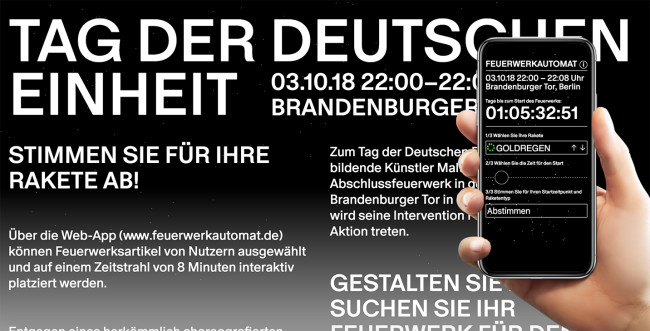
NOWs: FEUERWERKAUTOMAT – Tag der Deutschen Einheit
FEUERWERKAUTOMAT - zum Tag der Deutschen Einheita collective and participative artwork by Malte Batsch
STIMMEN SIE FÜR IHRE RAKETE AB!
Zum Tag der Deutschen Einheit gestaltet der bildende Künstler Malte Bartsch das Abschlussfeuerwerk in der Nähe des Brandenburger Tors in Berlin. Von 22:00 bis 22:08 wird seine Intervention FEUERWERKAUTOMAT in Aktion treten. Über die Web-App (www.feuerwerkautomat.de) können Feuerwerksartikel von Nutzern ausgewählt und auf einem Zeitstrahl von 8 Minuten interaktiv platziert werden.
GESTALTEN SIE MIT! SUCHEN SIE IHR FEUERWERK FÜR DEN TAG DER DEUTSCHEN EINHEIT AUS.
Entgegen eines herkömmlich choreografierten Feuerwerkes entsteht so ein kollektives und partizipativ gestaltetes Kunstwerk. Der FEUERWERKAUTOMAT ist Instrument eines unvorhersehbaren Abstimmungsprozesses. Die Dramaturgie der Farbexplosionen liegt in den Händen der Teilnehmer. Wer eine Rakete wählt, teilt sie mit allen anderen. Es entsteht ein gemeinsam erlebter Moment.
Malte Bartsch realisierte seine Installation FEUERWERKAUTOMAT erstmalig 2017 während des Festival of Future Nows im Hamburger Bahnhof – Museum für Gegenwart – Berlin. Er studierte bei Olafur Eliasson am Institut für Raumexperimente und bei Manfred Pernice an der Universität der Künste Berlin. Malte Bartsch lebt und arbeitet in Berlin und unterhält ein Atelier in der Alten Münze. Weitere Infos über den Künstler sind seiner Webpräsenz www.maltebartsch.de zu entnehmen.
Künstler: Malte Bartsch
Design, Code: Liebermann Kiepe, Jonas Sieben
Typeface: Gaisyr by Dinamo
Kontakt (Presse): Studio Malte Bartsch
Am Krögel 2
10179 Berlin
E-Mail: info@feuerwerkautomat.de
Telefon: +491781984446
Instagram: #FEUERWERKAUTOMAT
FEUERWERKAUTOMAT - zum Tag der Deutschen Einheita collective and participative artwork by Malte Batsch
STIMMEN SIE FÜR IHRE RAKETE AB!
Zum Tag der Deutschen Einheit gestaltet der bildende Künstler Malte Bartsch das Abschlussfeuerwerk in der Nähe des Brandenburger Tors in Berlin. Von 22:00 bis 22:08 wird seine Intervention FEUERWERKAUTOMAT in Aktion treten. Über die Web-App (www.feuerwerkautomat.de) können Feuerwerksartikel von Nutzern ausgewählt und auf einem Zeitstrahl von 8 Minuten interaktiv platziert werden.
GESTALTEN SIE MIT! SUCHEN SIE IHR FEUERWERK FÜR DEN TAG DER DEUTSCHEN EINHEIT AUS.
Entgegen eines herkömmlich choreografierten Feuerwerkes entsteht so ein kollektives und partizipativ gestaltetes Kunstwerk. Der FEUERWERKAUTOMAT ist Instrument eines unvorhersehbaren Abstimmungsprozesses. Die Dramaturgie der Farbexplosionen liegt in den Händen der Teilnehmer. Wer eine Rakete wählt, teilt sie mit allen anderen. Es entsteht ein gemeinsam erlebter Moment.
Malte Bartsch realisierte seine Installation FEUERWERKAUTOMAT erstmalig 2017 während des Festival of Future Nows im Hamburger Bahnhof – Museum für Gegenwart – Berlin. Er studierte bei Olafur Eliasson am Institut für Raumexperimente und bei Manfred Pernice an der Universität der Künste Berlin. Malte Bartsch lebt und arbeitet in Berlin und unterhält ein Atelier in der Alten Münze. Weitere Infos über den Künstler sind seiner Webpräsenz www.maltebartsch.de zu entnehmen.
Künstler: Malte Bartsch
Design, Code: Liebermann Kiepe, Jonas Sieben
Typeface: Gaisyr by Dinamo
Kontakt (Presse): Studio Malte Bartsch
Am Krögel 2
10179 Berlin
E-Mail: info@feuerwerkautomat.de
Telefon: +491781984446
Instagram: #FEUERWERKAUTOMAT
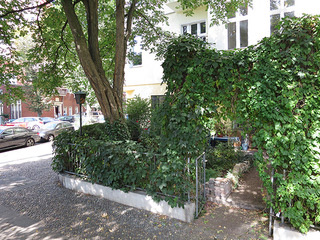
NOWs: Am Rand von EuropaCity
Am Rand von EuropaCityEine künstlerische Veranstaltungsreihe von Alexis Hyman Wolff und Yves Mettler
3rd Walk
30 September 2018, 2 pm
Studio Uwe Bressem
Nordufer 14
13353 Berlin
Duration: 3 hours (incl. discussion at Café Moab)
Auf diesem dritten und letzten Spaziergang unserer ersten Arbeitsphase, besuchen wir die vergangene und die aktuelle kulturelle Landschaft und eröffnen einen spekulativen Raum bezüglich des zukünftigen Lebens am Rand am Rand der Europacity. Wir werden uns in den kulturellen Zwischenräumen des Stadtteils Wedding/Moabit bewegen, immer entlang der Frage nach den Kräften der neoliberalen, aber eben auch der lokalen Transformationsprozesse vor Ort.
Zusammen mit dem Weddinger Künstler Uwe Bressem und den Lehrter-Kiezaktivist*innen Susanne und Jürgen vom B-Laden, werden wir einige der spezifischen Veränderungen in der physischen und geistigen Landschaft des Sprengel- und Lehrterkiezes erkunden und somit einer Vielfalt an kulturelle Institutionen und Community-Organisationen begegnen. Wie sind diese Räume entstanden? Was hat sie ermöglicht und welchen Einfluss haben sie auf das öffentliche und tägliche Leben des Bezirks? Dies sind einige der Fragen, denen wir nachgehen wollen. Für die Abschlussdiskussion wird Café Moab seine Türen öffnen und Kaffee und Tee anbieten. Hier werden zu unserer Diskussion auch Vertreter*innen und Gründer*innen der Kulturfabrik Moabit und des Gemeinschaftsgartens in der Lehrter Strasse dazustoßen.
Die drei ersten kollektiven Audio-Spaziergänge von „Am Rand der Europacity“ sind ein zentraler Bestandteil eines Feldforschungsprozesses mit kulturellen Akteuren und Interessierten aus Berlin-Mitte, Wedding und Moabit zu den vielfältigen lokalen und politischen Fragen, die sich aus der Konstruktion der Europacity ergeben. Die Audio-Aufnahmen der Spaziergänge dienen als Grundlage für einen Workshop am Samstag, den 1. Dezember 2018 zum „kollektiven Zuhören“ und zur Analyse des während der Spaziergängen Gehörten und Erfahrenen. Während des Workshops sollen Möglichkeiten erarbeitet werden, wie und auf welche Weise die existierende Kiezstruktur am Rand der EuropaCity beschützt werden kann und gleichzeitig Interaktionen mit und in der EuropaCity sowie deren Bewohner*innen möglich und wünschenswert wären.
Praktisches: Gute Stadtschuhe, ggf. Jacke, Regenschirm und was man braucht, um in der Stadt zu wandern.
Kontakt bei Fragen oder Interesse: kontakt@amrandvoneuropa.city
Am Rand von EuropaCityEine künstlerische Veranstaltungsreihe von Alexis Hyman Wolff und Yves Mettler
3. Spaziergang
30. September 2018, 14 Uhr
Studio Uwe Bressem
Nordufer 14
13353 Berlin
Dauer: 3 Stunden (inklusive Schlussdiskussion im Café Moab
Auf diesem dritten und letzten Spaziergang unserer ersten Arbeitsphase, besuchen wir die vergangene und die aktuelle kulturelle Landschaft und eröffnen einen spekulativen Raum bezüglich des zukünftigen Lebens am Rand am Rand der Europacity. Wir werden uns in den kulturellen Zwischenräumen des Stadtteils Wedding/Moabit bewegen, immer entlang der Frage nach den Kräften der neoliberalen, aber eben auch der lokalen Transformationsprozesse vor Ort.
Zusammen mit dem Weddinger Künstler Uwe Bressem und den Lehrter-Kiezaktivist*innen Susanne und Jürgen vom B-Laden, werden wir einige der spezifischen Veränderungen in der physischen und geistigen Landschaft des Sprengel- und Lehrterkiezes erkunden und somit einer Vielfalt an kulturelle Institutionen und Community-Organisationen begegnen. Wie sind diese Räume entstanden? Was hat sie ermöglicht und welchen Einfluss haben sie auf das öffentliche und tägliche Leben des Bezirks? Dies sind einige der Fragen, denen wir nachgehen wollen. Für die Abschlussdiskussion wird Café Moab seine Türen öffnen und Kaffee und Tee anbieten. Hier werden zu unserer Diskussion auch Vertreter*innen und Gründer*innen der Kulturfabrik Moabit und des Gemeinschaftsgartens in der Lehrter Strasse dazustoßen.
Die drei ersten kollektiven Audio-Spaziergänge von „Am Rand der Europacity“ sind ein zentraler Bestandteil eines Feldforschungsprozesses mit kulturellen Akteuren und Interessierten aus Berlin-Mitte, Wedding und Moabit zu den vielfältigen lokalen und politischen Fragen, die sich aus der Konstruktion der Europacity ergeben. Die Audio-Aufnahmen der Spaziergänge dienen als Grundlage für einen Workshop am Samstag, den 1. Dezember 2018 zum „kollektiven Zuhören“ und zur Analyse des während der Spaziergängen Gehörten und Erfahrenen. Während des Workshops sollen Möglichkeiten erarbeitet werden, wie und auf welche Weise die existierende Kiezstruktur am Rand der EuropaCity beschützt werden kann und gleichzeitig Interaktionen mit und in der EuropaCity sowie deren Bewohner*innen möglich und wünschenswert wären.
Praktisches: Gute Stadtschuhe, ggf. Jacke, Regenschirm und was man braucht, um in der Stadt zu wandern.
Kontakt bei Fragen oder Interesse: kontakt@amrandvoneuropa.city
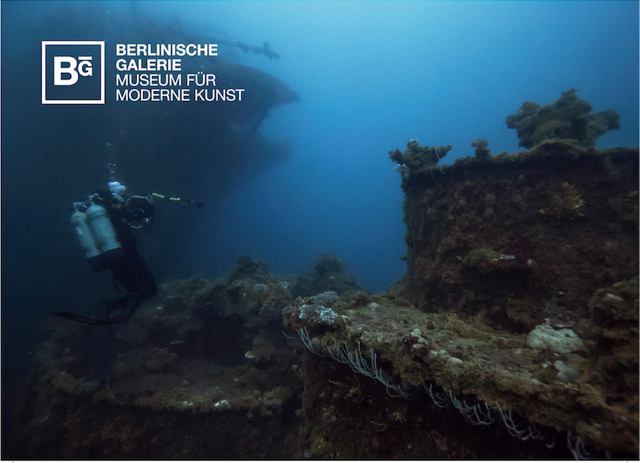
NOWs: As We Used to Float by Julian Charrière
Julian Charrière: As We Used To FloatSolo Exhibition
Opening: 26 September 2018, 7 pm
Berlinische Galerie
Alte Jakobstraße 124-128
10969 Berlin
As the recipient of the GASAG Art Prize 2018, Julian Charrière will create a multimedia spatial installation for the Berlinische Galerie that takes visitors underwater in the Pacific Ocean.
Seventy years after the United States began testing thermonuclear weapons at Bikini Atoll, the artist set off on an expedition to an area rendered permanently uninhabitable for human life as a result of the environmental contamination. As we used to float is a physical, three-dimensional experience that reveals the legacy of those atomic tests both above and below sea level. These unintentional monuments symbolise the interaction between anthropogenic and natural transformations. For Julian Charrière, they also mark the point in history when humans became one of the biggest factors influencing biological, geological and atmospheric processes on Earth.
Julian Charrière was born in Morges in French-speaking Switzerland in 1987. He began studying art in Switzerland in 2006, and in 2007 transferred to the University of the Arts in Berlin, where he finished his studies in 2013 under Olafur Eliasson at the Institut für Raumexperimente. His work has been shown in many countries, including at the main exhibition of the Venice Biennale in 2017. This event at the Berlinische Galerie will be his first solo show at an institution in Berlin.
Opening party: video performance and record release of An Invitation To Disappear by Julian Charrière & Inland
Berghain
26 September 2018, 11 pm
Am Wriezener Bahnhof
10243 Berlin
Julian Charrière: As We Used To FloatSolo Exhibition
Eröffnung: 26. September 2018, 19:00
Berlinische Galerie
Alte Jakobstraße 124-128
10969 Berlin
Im Rahmen des GASAG Kunstpreises 2018 zeigt Julian Charrière in der Berlinischen Galerie eine multimediale Rauminstallation, die das Publikum unter die Wasseroberfläche des Pazifischen Ozeans führt.
70 Jahre nach den ersten US-amerikanischen Kernwaffentests auf dem Bikini-Atoll hat sich der Künstler auf Expedition in ein geographisches Gebiet begeben, das durch die verursachten Umweltschäden für den Menschen dauerhaft unbewohnbar gemacht wurde. “As We Used to Float” zeigt die Hinterlassenschaften der Bombentests oberhalb wie unterhalb des Meeresspiegels und macht sie als Raumerfahrung physisch erlebbar. Als ungewollte Denkmäler stehen sie für das Spannungsverhältnis zwischen menschengemachten und natürlichen Transformationsprozessen. Für Julian Charrière markieren sie zugleich den Zeitpunkt, an dem der Mensch zu einem der wichtigsten Einflussfaktoren für die biologischen, geologischen und atmosphärischen Prozesse auf der Erde geworden ist.
Julian Charrière ist 1987 in Morges in der französischen Schweiz geboren. 2006 begann er ein Kunststudium in der Schweiz und wechselte 2007 an die Universität der Künste Berlin, wo er 2013 sein Studium bei Olafur Eliasson am Institut für Raumexperimente abschloss. Seine Arbeiten waren bereits in zahlreichen internationalen Ausstellungen vertreten, unter anderem 2017 in der Hauptausstellung der Biennale in Venedig. Die Ausstellung in der Berlinischen Galerie ist seine erste institutionelle Einzelausstellung in Berlin.
Opening Party: Video Performance und Record Release An Invitation To Disappear von Julian Charrière & Inland
Berghain
26 September 2018, 23:00
Am Wriezener Bahnhof
10243 Berlin
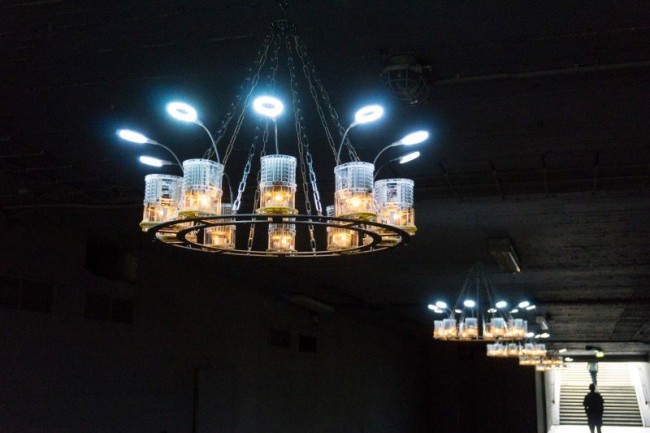
NOWs: MIETE STROM INSTAGRAM
Aram Bartholl: 3V, 2017
Aluminium, acrylic glass, thermoelectric generator, electronics, LEDs, tea candles, steel chain
MIETE STROM INSTAGRAMCurated by Raul Walch and Eric Winkler
Opening Reception
25 September 2018, 5 pm
Am Moritzplatz
Oranienstr. 58
10969 Berlin
Miete Strom Instagram (Rent Electricity Instagram) by Walch&Winkler is an event designed to reflect the work and living conditions prevalent among artists in Berlin. Rather than an invitation to passively view a commercial exhibition and market processes, the works presented here reflect the art scene’s current sense of identity, which emerges from a desire to independently analyse and participate in the fast-growing financial interest in contemporary visual art. The aim of this project is to nurture artistic empowerment.
Beyond their artistic and geographic context, the works on show share a common functionality, reflecting the circumstances of their production. This is evident in their manifestation in the form of lamps, shoes and clothes, the objects highlight the artist’s need to create alternative means of income. The objects assembled in Miete Strom Instagram reveal a host of strategies and work methods that have arisen out of necessity among the artistic community.
The event is being launched by two Berlin-based artists, Raul Walch and Eric Winkler. In their independent artistic practice, both are known to explore the re-contextualisation of made objects by continuously challenging the genre limitations of sculpture, conceptual art and performance.
Walch and Winkler see Miete, Strom, Instagram as a platform for introducing a range of business initiatives and a space to share and discuss experiences. Alongside talks and presentations, the event includes a dining element, with a variety of chefs initiating a reinterpretation of the 1970s New York artists’ restaurant FOOD.
Miete Strom Instagram runs an own daily shuttle service between the Art Berlin Fair and the exhibition space.
With works by:
Aram Bartholl, Peter Behrbohm, Dirk Bell, Broken Dimanche Press, Jan Bünnig, Ekaterina Burlyga, Nadja Buttendorf, Maurizio Cattelan, Zuzanna Czebatul, Mariechen Danz, Charlotte Dualé, Ólafur Elíasson, Hans Peter Feldmann, Jeschkelanger (Marie Jeschke, Anja Langer), Anne Duk Hee Jordan, Kevin Kemter, Lilli Kuschel, Julius Lehniger, Dennis Loesch, Simon Mullan, Laure Prouvost, R&D (Maru Mushtrieva & Emilia Kurylowicz), Robben&Winkler (Eric Winkler), Natalia Rolón, Anna Lucia Nissen, Clemence Seilles, Seriennummer (Vincent Grunwald), Anna Szaflarski, Ugemfo, Und. Studio, Rosemarie Trockel, Urara Tsuchiya, Franz West, Marie Rømer Westh, Philip Wiegard, et al.
Urara Tsuchiya: Just close your eyes and imagine I haven’t evolved, 2017 Glazed earthenware and stoneware
Dirk Bell:
Concretest poem, 2018 Black mdf
Nadja Buttendorf:
Charging, 2016
Data & beauty cable, bling jewellery, smartphone USB charging & data cable, USB power plug gold-plated, d = 33,00 cm
Clemence Seilles:
DKMX, 2018
Hand painted metal, wood, ropes
Robben&Winkler (Eric Winkler): LKW-Couture, 2018 Performance with Eva Vuillemin Shoes, Robben & Wientjes truck
Anna Lucia Nissen:
Cigarucci with NIL cigarette, 2018 Glazed ceramic, cigarette, felt
Aram Bartholl: 3V, 2017
Aluminium, acrylic glass, thermoelectric generator, electronics, LEDs, tea candles, steel chain
MIETE STROM INSTAGRAMCurated by Raul Walch and Eric Winkler
Eröffnung
25.09.2018, 17 Uhr
Am Moritzplatz
Oranienstr. 58
10969 Berlin
Die Aktion Miete Strom Instagram von Walch&Winkler ist eine Reflexion der in Berlin herrschenden Arbeits- und Lebensverhältnisse von bildenden Künstler*innen. Statt dem ohnmächtigen Betrachten kommerzialisierter Ausstellungs- und Marktprozesse sind die in dieser Ausstellung versammelten Werke Ausdruck des Selbstverständnisses einer Künstlerschaft, die vom Gedanken getragen ist, das kommerziell stark gestiegene Interesse an zeitgenössischer, bildender Kunst eigenständig zu analysieren und Wege zu schaffen, an diesem Prozess teilzuhaben. Der Fokus dieser Untersuchung liegt dabei im Herausarbeiten einer künstlerischen Selbstermächtigung.
Die hier gezeigten Arbeiten eint mehr noch als ihr künstlerischer und geographischer Kontext die ihrer Produktionsumstände „geschuldete“ Funktionalität. Neben der offensichtlichen Erscheinung in Form von Lampen, Schuhen und Kleidung sind die Objekte Ausdruck einer Notwendigkeit der Schaffung alternativer Einkommensmodelle. Walch&Winkler zeigen im Nebeneinander der Objekte die Mannigfaltigkeit der hierbei entwickelten Strategien und Arbeitsweisen.
Initiiert ist die Aktion von den in Berlin lebenden Künstlern Raul Walch & Eric Winkler. Beide setzen sich in ihrer jeweils autarken künstlerischen Praxis mit der De- sowie Rekontextualisierung der von ihnen geschaffenen Objekte auseinander, in denen sie stets die Genre-Grenzen von Bildhauerei, Konzeptkunst und Performance ausloten.
Die Aktion Miete Strom Instagram wird von ihren Initiatoren als Plattform gesehen, um verschiedenste Geschäftsinitiativen vorzustellen und Erfahrungen im Umgang mit diesen zu teilen und zu diskutieren. Die Ausstellung begleiten wird, neben Talks und Präsentationen, eine von wechselnden Küchenchefs initiierte Neuinterpretation des New Yorker Künstler-Restaurants FOOD.
Miete Strom Instagram ist von der Art Berlin Fair mit einem täglichen Shuttle-Service zu erreichen.
Mit Arbeiten von:
Aram Bartholl, Peter Behrbohm, Dirk Bell, Broken Dimanche Press, Jan Bünnig, Ekaterina Burlyga, Nadja Buttendorf, Maurizio Cattelan, Zuzanna Czebatul, Mariechen Danz, Charlotte Dualé, Ólafur Elíasson, Hans Peter Feldmann, Jeschkelanger (Marie Jeschke, Anja Langer), Anne Duk Hee Jordan, Kevin Kemter, Lilli Kuschel, Julius Lehniger, Dennis Loesch, Simon Mullan, Laure Prouvost, R&D (Maru Mushtrieva & Emilia Kurylowicz), Robben&Winkler (Eric Winkler), Natalia Rolón, Anna Lucia Nissen, Clemence Seilles, Seriennummer (Vincent Grunwald), Anna Szaflarski, Ugemfo, Und. Studio, Urara Tsuchiya, Rosemarie Trockel, Franz West, Marie Rømer Westh, Philip Wiegard, u.a.
Urara Tsuchiya:
Just close your eyes and imagine I haven’t evolved, 2017 Glazed earthenware and stoneware
Dirk Bell:
Concretest poem, 2018 Black mdf
Nadja Buttendorf:
Charging, 2016
Data & beauty cable, bling jewellery, smartphone USB charging & data cable, USB power plug gold-plated, d = 33,00 cm
Clemence Seilles:
DKMX, 2018
Hand painted metal, wood, ropes
Robben&Winkler (Eric Winkler): LKW-Couture, 2018 Performance with Eva Vuillemin Shoes, Robben & Wientjes truck
Anna Lucia Nissen:
Cigarucci with NIL cigarette, 2018 Glazed ceramic, cigarette, felt
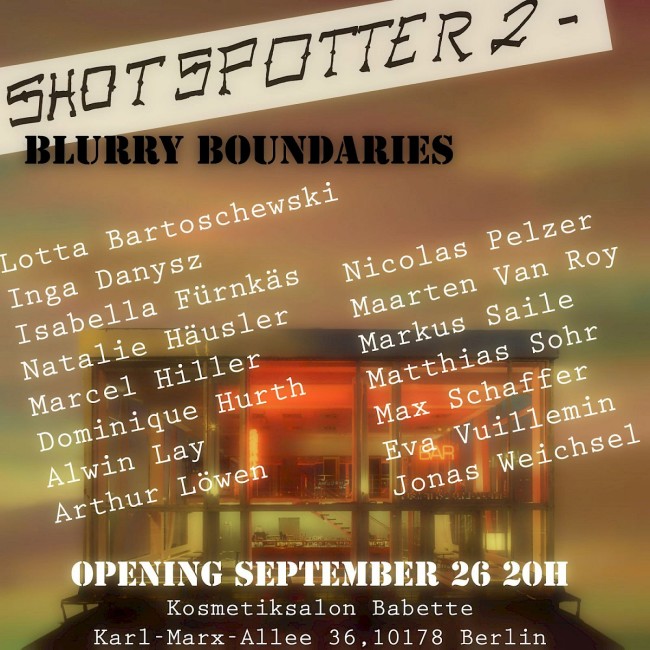
NOWs: Shotspotter 2 – Blurry Boundaries
Shotspotter 2 - Blurry BoundariesGroup show by Marcel Hiller, Markus Saile, Arthur Löwen
Opening
26 September 2018, 8 pm
Bar Babette
Karl-Marx-Allee 36
10178 Berlin
with: Isabella Fürnkäs, Alwin Lay, Max Schaffer, Dominique Hurth, Matthias Sohr, Inga Danysz, Maarten Van Roy, Natalie Häusler, Lotta Bartoschewski, Nicolas Pelzer, Eva Vuillemin, Jonas Weichsel
Shotspotter 2 - Blurry BoundariesGroup show by Marcel Hiller, Markus Saile, Arthur Löwen
Opening
26 September 2018, 8 pm
Bar Babette
Karl-Marx-Allee 36
10178 Berlin
with: Isabella Fürnkäs, Alwin Lay, Max Schaffer, Dominique Hurth, Matthias Sohr, Inga Danysz, Maarten Van Roy, Natalie Häusler, Lotta Bartoschewski, Nicolas Pelzer, Eva Vuillemin, Jonas Weichsel
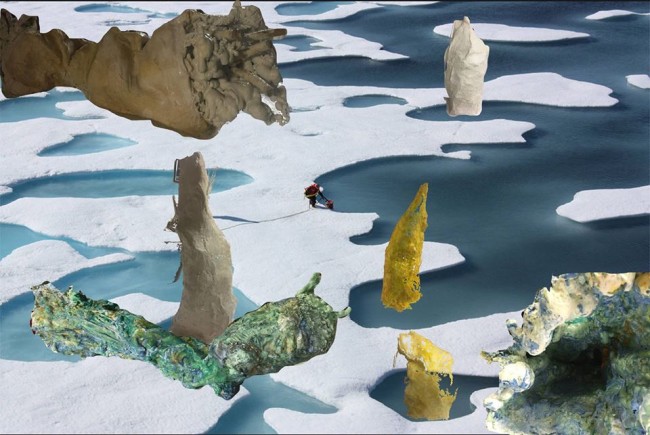
NOWs: Ziggy on the Land of Drunken Trees by Anne Duk Hee Jordan
Ziggy on the Land of Drunken TreesAn exhibition by Anne Duk Hee Jordan
Opening: 13 September, 7 pm
Sonic intervention during the opening by Mikatsiu
Within the frame of UP (Unsustainable Privileges)
Curated by Solvej Helweg Ovesen and Bonaventure Soh Bejeng Ndikung
Galerie Wedding
Raum für zeitgenössische Kunst
Müllerstrasse 146/147
13353 Berlin
Within the frame of UP (Unsustainable Privileges)
Curated by Solvej Helweg Ovesen and Bonaventure Soh Bejeng Ndikung
Ziggy on the Land of Drunken Trees takes us into a post-human era after the Anthropocene, a world in which non-humans assume the central position of mankind. The exhibition asks: What kind of animal mutations will happen in the near future, what species will be efficient in the context of the worldwide changing ecology? Where will humans go? Will they colonise space or even the sea? Galerie Wedding transforms into an immersive landscape consisting of amorphous organic and mechanic sculptures that move within the space: a choir of sea-shells, a landscape of drunken tree roots, a singing saw, a viewing tower, fossils reflecting on the methane holes appearing in the Siberian Tundra, and a film collage about changing sex in ecology. With this exhibition Anne Duk Hee Jordan aims to illuminate new perspectives and the tangible effects of climate change on sea and land. Jordan, who has a professional background in marine ecology, sustainable cooking and art, presents a humourous and well researched perspective on processes of adaptation that go beyond human time.
Tour through the exhibition on 27 September 2018 at 4.30 pm with artist Anne Duk Hee Jordan and curator Solvej Helweg Ovesen.
Ziggy on the Land of Drunken TreesAn exhibition by Anne Duk Hee Jordan
Eröffnung: 13. September, 19:00
Sonic intervention during the opening by Mikatsiu
Within the frame of UP (Unsustainable Privileges)
Curated by Solvej Helweg Ovesen and Bonaventure Soh Bejeng Ndikung
Galerie Wedding
Raum für zeitgenössische Kunst
Müllerstrasse 146/147
13353 Berlin
Ziggy on the Land of Drunken Trees takes us into a post-human era after the Anthropocene, a world in which non-humans assume the central position of mankind. The exhibition asks: What kind of animal mutations will happen in the near future, what species will be efficient in the context of the worldwide changing ecology? Where will humans go? Will they colonise space or even the sea? Galerie Wedding transforms into an immersive landscape consisting of amorphous organic and mechanic sculptures that move within the space: a choir of sea-shells, a landscape of drunken tree roots, a singing saw, a viewing tower, fossils reflecting on the methane holes appearing in the Siberian Tundra, and a film collage about changing sex in ecology. With this exhibition Anne Duk Hee Jordan aims to illuminate new perspectives and the tangible effects of climate change on sea and land. Jordan, who has a professional background in marine ecology, sustainable cooking and art, presents a humourous and well researched perspective on processes of adaptation that go beyond human time.
Tour through the exhibition on 27 September 2018 at 4.30 pm with artist Anne Duk Hee Jordan and curator Solvej Helweg Ovesen.
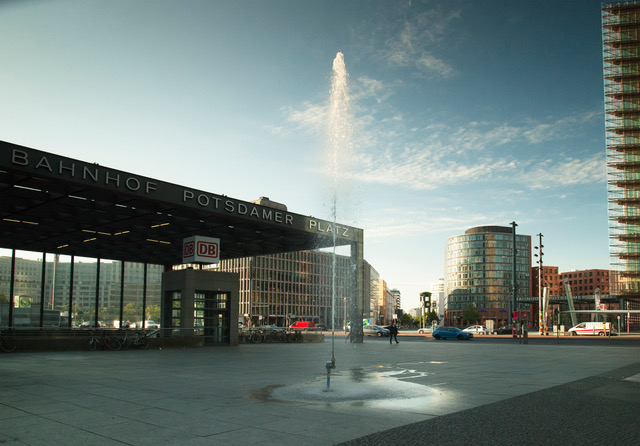
NOWs: SPACE IS THE PLACE (1/4): Thresholds. Limits of Space
SPACE IS THE PLACE (1/4): Thresholds. Limits of SpaceGroup exhibition with Bruce Nauman, Andrea Fraser, Jeewi Lee, Raul Walch, Wermke / Leinkauf
Opening
Thursday, 13 September 2018, 7 pm
BNKR – current reflections on art and architecture
Ungererstraße 158
80805 München
Under the title SPACE IS THE PLACE the upcoming BNKR-exhibition cycle 2018-2019 conceived by Berlin-based curator Lukas Feireiss is dedicated to the artistic exploration of space. Through a numerous events, solo and group exhibitions as well as an international symposium, SPACE IS THE PLACE investigates the experience, imagination and design of space in theory and practice together with artists, architects, musicians and dancers but also philosophers and scientists.
The upcoming exhibition cycle SPACE IS THE PLACE starts with the group exhibition Thresholds. Limits of Space. Based on Bruce Nauman’s seminal work Body Pressure (1974) which provides a set of typed out instructions for merging their bodies with an architectural surface, the exhibition explores the corporal-spatial unit of critically experiencing space through the works of different generations of artists. In her ingenious single channel video performance entitled Little Frank and His Carp (2001), the American artist Andrea Fraser is for example seen walking around the atrium of the Guggenheim Museum Bilbao listening to the institution’s official audio guide, which culminates in an almost erotic encounter between the artist and the architecture. In a newly conceived site-specific work Korean-artist Jeewi Lee makes the invisible visible in the exhibition space, whilst German artist duo Wermke / Leinkauf investigate the surmounting of architectures in Berlin’s former border area in a mixed-media installation and Berlin-based artist Raul Walch transforms city hydrants in the surrounding urban environment into ephemeral fountains.
Participating artists
Bruce Nauman (1941) is widely regarded as among the most important living American artists and as a catalyst for the recent shift in international artistic practice toward conceptual and performative uses of language and the body. His practice spans a broad range of media including sculpture, photography, neon, video, drawing, printmaking and performance.
Andrea Fraser (1965) is a performance artist, mainly known for her work in the area of institutional critique. Fraser is based in New York and Los Angeles and is currently a new genres professor of the Art Department faculty at the University of California, Los Angeles.
Jeewi Lee (1987) works with performative and daily occurrences in her site-specific room installations, actions and image series, which come into view as traces and serve Lee as painterly element. For Lee traces concurrently indicate movement (in urban as well as in exhibition spaces) as well as the reflection of the production process itself. In her work Lee looks into and highlights social and historical events that have been burnt into various materials.
Wermke / Leinkauf The Berlin based artist duo consisting of Matthias Wermke (1978) and Mischa Leinkauf (1977) works on actions, performances and installations dealing with the hidden possibilities of a city. Using artistic strategies they create temporary irritations, that allow new perspectives on everyday situations. They explore the boundaries of the public sphere to question common standards and constraints. They “open” the city by using not only their bodies but the material and the tools of urban spaces. Moreover, their works often relate to the Genius Loci and the history of a space.
Raul Walch (1980) crosses the boundaries of artistic genres in his broad and inventive practise. He works as a sculptor and conceptual artist but also slips easily into the roll of an investigator or becomes part of a performance. His focus is on creating an unconventional approach to social reality, often unexpectedly including observers in the process. Walch’s playful works and actions are not limited to questioning or participation. Instead, he creates ephemeral and largely site-specific interventions that respond to different environments around the world.
Curator
Lukas Feireiss (1977) works as curator, writer and art director in the international mediation of contemporary cultural reflexivity beyond disciplinary boundaries. He is author and editor of numerous books and curator of manifold exhibitions in the field of art, architecture, design and theory. He has lectured and taught at various universities worldwide, and is head of the new Master of Fine Art and Design Program Radical Cut-Up at Sandberg Instituut, Amsterdam.
SPACE IS THE PLACE (1/4): Thresholds. Limits of SpaceGroup exhibition with Bruce Nauman, Andrea Fraser, Jeewi Lee, Raul Walch, Wermke / Leinkauf
Eröffnung
Donnerstag, 13. September 2018, 19 Uhr
BNKR – current reflections on art and architecture
Ungererstraße 158
80805 München
BNKR, Plattform für Reflektionen in Kunst und Architektur, geht im Herbst in den neuen Ausstellungsturnus. Der Kurator, Künstler und Autor Lukas Feireiss widmet sich 2018/2019 unter dem Titel SPACE IS THE PLACE der künstlerischen Wahrnehmung von Raum. Gemeinsam mit Künstlern, Architekten, Musikern und Tänzern aber auch Philosophen und Wissenschaftlern wird in Form von zahlreichen Veranstaltungen, Einzel- und Gruppenausstellungen sowie einem internationalen Symposium die leiblich-räumliche Einheit des Erlebens, Imaginierens und Gestaltens von Raum erforscht. Gemein ist den unterschiedlichen Positionen ein vieldimensionaler Zugang zum Raum, welcher die Sinne und Empfindungen der BesucherInnen ganz direkt ansprechen, hinterfragen und herausfordern wird. Unter Berücksichtigung theoretisch wie praktisch fundierter Disziplinen erfolgt dabei eine Art künstlerischer Spurensicherung durch welche sich der Raum als Gegenstand der Untersuchung auf vielfältige Weise erschließt.
SPACE IS THE PLACE wird durch die Gruppenausstellung Thresholds. Limits of Space eingeleitet. Ausgehend von der Arbeit Body Pressure (1974) des amerikanischen Konzeptkünstlers Bruce Nauman, welche aus einer Handlungsanweisung zur leiblich-räumlichen Erforschung des Ausstellungsortes besteht, präsentiert die Ausstellung unterschiedliche, körperliche Aneignungs- und räumliche Grenzüberschreitungspraktiken von Architektur und gebauter Umwelt in der zeitgenössischen Kunst. Die mit versteckter Kamera im Guggenheim-Museum in Bilbao gedrehte Videoperformance Little Frank and His Carp (2001) von Andrea Fraser kulminiert in einer geradezu erotischen Begegnung mit der Architektur. So entwickelt Jeewi Lee, deren Arbeiten sich immer wieder durch das Sichtbarmachen von unbeachteten Spuren in Räumen auszeichnen, eine neue, ortsspezifische Arbeit in den Räumen des BNKR. Wermke / Leinkaufwidmen sich mit ihrer Arbeit Überwindungsübungen, dem körperlichen Bezwingen von Architekturen im einstigen Berliner Grenzgebiet, während Raul Walch mit Eureka städtische Hydranten zu Wasserfontänen umfunktioniert und damit die Auseinandersetzung in den umliegenden Stadtraum führt.
Teilnehmende Künstler
Bruce Nauman (1941) zählt zu den bedeutendsten amerikanischen Künstlern der Gegenwart. Seit Mitte der 1960er Jahre arbeitet er mit unterschiedlichen Medien; sein umfangreiches Œuvre umfasst Skulpturen, Filme und Videos, Fotografien, Neonarbeiten, Grafiken, Installationen und Spracharbeiten. Immer wieder beschäftigt er sich dabei mit Fragen der menschlichen Sinneswahrnehmung und konfrontiert den Betrachter oft mit irritierenden bis schockierenden Erfahrungen.
Andrea Fraser (1965) ist eine amerikanische Künstlerin, die sich vor allem mit Institutionen kritisch auseinandersetzt. In ihrer künstlerischen Praxis arbeitet sie in den Bereichen Performance und Installation. Sie ist Professorin an der University of California, Los Angeles.
Jeewi Lee (1987) arbeitet in ihren ortsspezifischen Rauminstallationen, Aktionen und Bildserien mit performativen oder alltäglichen Ereignissen, die im Werk nur als Spur sichtbar werden und ihr als malerisches Element dienen. Die Spur zeugt von Bewegungen (in urbanen Räumen wie in Ausstellungsräumen) und reflektiert zugleich ihren eigenen Produktionsprozess. Ihre Arbeiten machen soziale und historische Ereignisse sichtbar, die sich in unterschiedlichste Materialien eingebrannt haben.
Wermke / Leinkauf Das Künstlerduo Matthias Wermke (1978) und Mischa Leinkauf (1977) schaffen Bilder und Vorstellungswelten, die städtische Räume, deren Bedeutung und Nutzungsmöglichkeiten, überhaupt erst sichtbar machen. In prozessorientierten Interventionen loten sie Grenzen aus und stellen gängige Verhaltensweisen in Frage. Sie erweitern den künstlerischen Handlungsspielraum hinein in einen zeitgenössischen, urbanen Raum und verweisen immer auch auf historische und kulturelle Kontexte um einen gesellschaftlichen Diskurs anzuregen. Meist entstehen Videoinstallationen die weltweit auf Filmfestivals, Museen, Galerien und Ausstellungshäusern gezeigt werden.
Raul Walch (1980) überschreitet in seiner künstlerischen Praxis die Grenzen gängiger Kunst-Genres. Er arbeitet als Bildhauer und Konzeptkünstler, schlüpft in seinen Arbeiten aber ebenso natürlich in die Rolle des Performers oder Forschers. Im Mittelpunkt steht immer eine unkonventionelle, künstlerische Auseinandersetzung mit gesellschaftlicher Realität und nicht selten werden die Beobachter selbst zum Teil einer Performance. Die spielerischen Arbeiten und Aktionen von Walch beschränken sich also nicht auf forschende Neugier oder teilnehmendes Beobachten, sondern sind oft ephemere und vor allem ortsspezifische Interventionen, die an den unterschiedlichsten Orten der Welt auf ihr Umfeld eingehen.
Kurator
Lukas Feireiss (1977) arbeitet als Kurator, Künstler und Autor in der internationalen Vermittlung von Kunst, Kultur und zeitgenössischer Reflexivität jenseits disziplinärer Grenzen. Er ist Herausgeber und Kurator zahlreicher Bücher und Ausstellungen im Bereich Kunst, Design und Architektur. Lehrbeauftragter an verschiedenen Universitäten im In- und Ausland und Leiter des Masterstudiengangs Radical Cut-Up am Sandberg Instituut, Amsterdam.
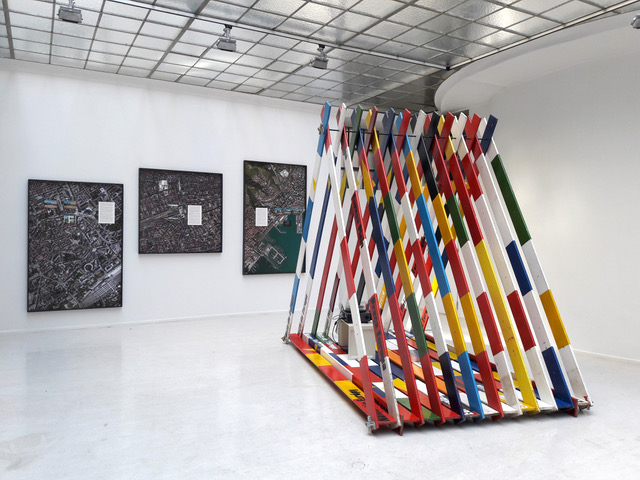
NOWs: VIENNA TRANSIT with Yves Mettler et al.
VIENNA TRANSIT with Yves Mettler et al.Group show
Opening
13 September 2018, 6 – 9 pm
Galerie Georg Kargl Fine Arts
Schleifmühlgasse 5
A-1040 Vienna
Die Ausstellung Vienna Transit soll in verschiedenen Momentaufnahmen daran erinnern, dass eine Kunststadt wie Wien ihre Relevanz weniger daraus bezieht, sich als machtvolle Mitte zu definieren, als vielmehr als Ort des Transfers. Gezeigt werden ältere und neuere Arbeiten von Künstlerinnen und Künstlern, deren Lebenswege sich auf verschiedenste Weise mit Wien kreuzten.
Auch der Standort der Galerie selbst wird in der Ausstellung reflektiert. Gerwald Rockenschaubs Logo für das Freihausviertel aus dem Jahr 1998 und Christian Philip Müllers Eine Welt für sich, ein sozial-historisches Forschungs- und Ausstellungsprojekt rund um das Freihaus, stellen sich an den Beginn des Veränderungsprozesses des Viertels. Ein Motor und Initiator der Neubelebung war Georg Kargl. Seitdem hat sich die Gegend zu einem dichten Soziotop rund um die Schleifmühlgasse entwickelt, in der Lokale, Galerien und Shops eine Art urbanes Wohnzimmer für die Wiener Szene bilden. 2018 feiert der Verein Freihausviertel und Georg Kargl Fine Arts sein 20-jähriges Jubiläum.
Die Ausstellung findet im Rahmen des Galerienfestivals curated by_ statt. In der zehnten Ausgabe des Festivals steht die Stadt Wien und deren Spezifika im Fokus.
VIENNA TRANSIT with Yves Mettler et al.Group show
Eröffnung
13. September 2018, 18 – 21 Uhr
Galerie Georg Kargl Fine Arts
Schleifmühlgasse 5
A-1040 Vienna
Die Ausstellung Vienna Transit soll in verschiedenen Momentaufnahmen daran erinnern, dass eine Kunststadt wie Wien ihre Relevanz weniger daraus bezieht, sich als machtvolle Mitte zu definieren, als vielmehr als Ort des Transfers. Gezeigt werden ältere und neuere Arbeiten von Künstlerinnen und Künstlern, deren Lebenswege sich auf verschiedenste Weise mit Wien kreuzten.
Auch der Standort der Galerie selbst wird in der Ausstellung reflektiert. Gerwald Rockenschaubs Logo für das Freihausviertel aus dem Jahr 1998 und Christian Philip Müllers Eine Welt für sich, ein sozial-historisches Forschungs- und Ausstellungsprojekt rund um das Freihaus, stellen sich an den Beginn des Veränderungsprozesses des Viertels. Ein Motor und Initiator der Neubelebung war Georg Kargl. Seitdem hat sich die Gegend zu einem dichten Soziotop rund um die Schleifmühlgasse entwickelt, in der Lokale, Galerien und Shops eine Art urbanes Wohnzimmer für die Wiener Szene bilden. 2018 feiert der Verein Freihausviertel und Georg Kargl Fine Arts sein 20-jähriges Jubiläum.
Die Ausstellung findet im Rahmen des Galerienfestivals curated by_ statt. In der zehnten Ausgabe des Festivals steht die Stadt Wien und deren Spezifika im Fokus.
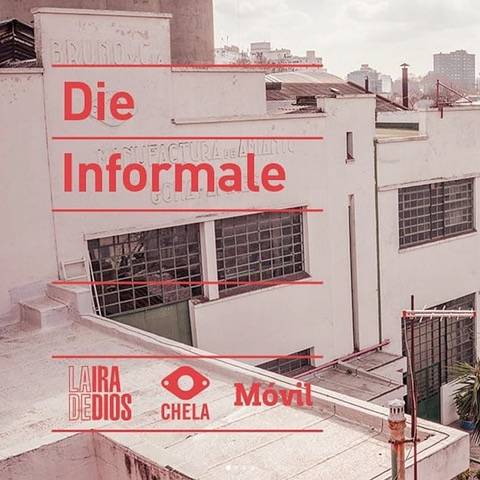
NOWs: Felix Kiessling – Durchstechung BA/B at “Die Informale” opening at La Ira de Dios for Art Basel Cities Buenors Aires
Durchstechung BA/B at "Die Informale" opening at La Ira de Dios for Art Basel Cities Buenors Airesopen-studio-reception
Opening
Monday, 10 September 2018, 3–6pm
cheLA
Iguazú 451
Buenos Aires
Argentina
As part of the Art Basel Cities Buenos Aires La Ira de Dios and Móvil open cheLA doors to the public and join forces with Die Informale.
The combined kick-off and open-studio-reception feature an installation by Felix Kiessling establishing an imaginary connection between Buenos Aires and Berlin, a screening and video-objects by Uros Djurovic as well as works by the participants of the current Kitchen in Process residency program curated by Tainá Azeredo, Director of Casa Tomada (São Paulo, Brazil). And Berlin mixologist Herr Lindemann will serve specifically conceived drinks to introduce the idea of a social food sculpture by Anne Duk Hee Jordan.
Durchstechung BA/B at "Die Informale" opening at La Ira de Dios for Art Basel Cities Buenors Airesopen-studio-reception
Eröffnung
Montag, 10. September 2018, 15 – 18 Uhr
cheLA
Iguazú 451
Buenos Aires
Argentina
As part of the Art Basel Cities Buenos Aires La Ira de Dios and Móvil open cheLA doors to the public and join forces with Die Informale.
The combined kick-off and open-studio-reception feature an installation by Felix Kiessling establishing an imaginary connection between Buenos Aires and Berlin, a screening and video-objects by Uros Djurovic as well as works by the participants of the current Kitchen in Process residency program curated by Tainá Azeredo, Director of Casa Tomada (São Paulo, Brazil). And Berlin mixologist Herr Lindemann will serve specifically conceived drinks to introduce the idea of a social food sculpture by Anne Duk Hee Jordan.
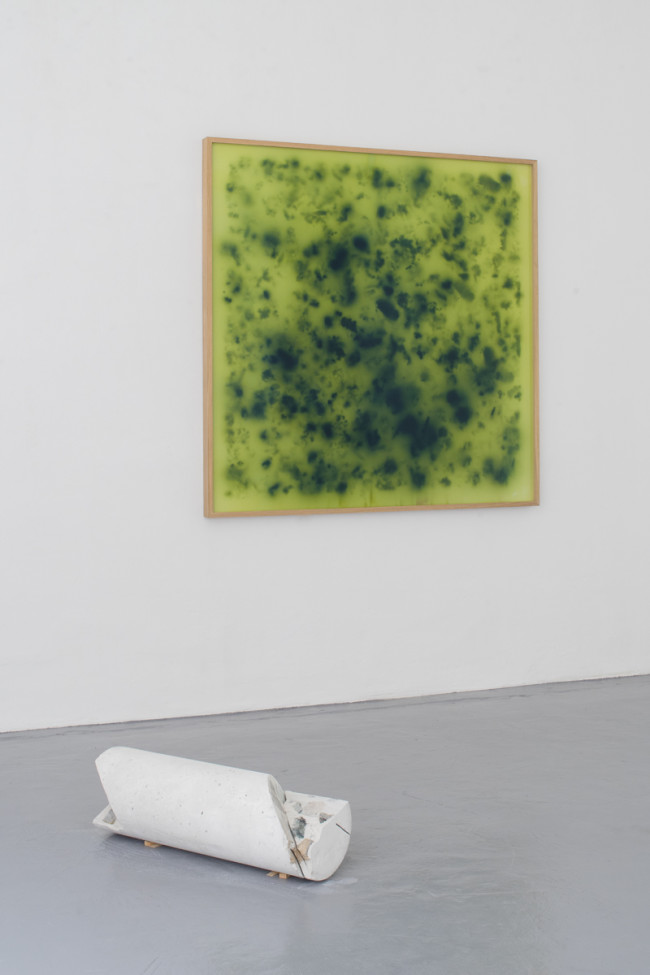
NOWs: Nuclear Sanctuary by Markus Hoffmann
Nuclear SanctuarySolo Show
Kunstverein Wilhelmshöhe
Schöllbronner Str. 86
76275 Ettlingen
Opening:
Friday, 7 September, 7 pm
Mit seiner ersten institutionellen Einzelausstellung in Deutschland hinterfragt Markus Hoffmann (*geboren 1982 in Passau) das ästhetische Potential von radioaktiver Strahlung und ihrer sozio-politischen wie auch persönlichen Implikationen mit seinen recherche-basierten Arbeiten.
Markus Hoffmann fokussiert sich dabei auf die Fähigkeiten und Grenzen des Betrachters, sich mit seiner Umgebung in Bezug zu setzen und entwickelt seine ästhetischen Setzungen oftmals anhand von Randphänomenen der Wahrnehmungsfähigkeit. Hierbei stellt die natürliche sowie von Menschen forcierte Radioaktivität ein besonders faszinierendes, und doch kulturell stark mit Ängsten und Vorurteilen besetztes (Natur-) Phänomen dar, das Markus Hoffmann eindrücklich visualisiert und für unterschiedliche Sinne erlebbar macht. Dabei ist Radioaktivität für Hoffmann zugleich Material seiner künstlerischen Setzungen, reflektierter Inhalt, wie auch Konzept der ästhetischen Formfindungen. Das für menschliche Wahrnehmungsrezeptoren schwer fassbare Element wird in vielschichtigen und hintergründigen Objekten, Installationen, Filmen und Radiographien thematisiert und wahrnehmbar gemacht.
Die Ausstellung „nuclear sanctuary“ bietet einen Überblick über unterschiedliche Werkreihen und Themengebiete Hoffmanns, die sich mit der Transformation von Materialitäten und der Sichtbarmachung ungreifbarer Stofflichkeiten, wie Radioaktivität, beschäftigen. Seine transdisziplinäre Arbeitsweise und sein großes Interesse an Hintergrundwissen und der Geschichte des menschlichen Umgangs mit Radioaktivität fokussieren dabei auf das nicht bewusst wahrnehmbare Potential radioaktiver Strahlung, aber auch der uns umgebenden Welt mit ihren Ressourcen und ihrer Verwundbarkeit. Thematiken wie Vergänglichkeit und Zeitdimensionen – beim Verfall radioaktiver Teilchen eine kaum real fassbare Dimension – prägen eine weitere Ebene seiner künstlerischen Arbeiten.
Insgesamt weckt Markus Hoffmann bereits in jungen Jahren mit seiner sehr eigenen Ästhetik auf tiefgründigen Ebenen eine weitergehende Reflektion unserer Wahrnehmung und unseres Verhältnisses zu der uns umgebenden Welt auf eine Weise an, die noch eine weitreichende künstlerische Karriere erahnen lässt.
Markus Hoffmann studierte Bildende Kunst an der Universität der Künste Berlin an dem von Prof. Olafur Eliasson gegründeten Institut für Raumexperimente, sowie Medizin an der Charité in Berlin. Seine Arbeiten werden international ausgestellt und wurden bereits durch mehrere Stipendien unterstützt, unter anderem in einer Residency der Stiftung Bauhaus in Dessau. Hoffmann wurde 2015 der Meisterschülerpreis des Präsidenten der Universität der Künste in Berlin verliehen.
Kuratiert von Julia Katharina Thiemann
Nuclear SanctuarySolo Show
Kunstverein Wilhelmshöhe
Schöllbronner Str. 86
76275 Ettlingen
Eröffnung:
Freitag, den 7. September, 19 Uhr
Mit seiner ersten institutionellen Einzelausstellung in Deutschland hinterfragt Markus Hoffmann (*geboren 1982 in Passau) das ästhetische Potential von radioaktiver Strahlung und ihrer sozio-politischen wie auch persönlichen Implikationen mit seinen recherche-basierten Arbeiten.
Markus Hoffmann fokussiert sich dabei auf die Fähigkeiten und Grenzen des Betrachters, sich mit seiner Umgebung in Bezug zu setzen und entwickelt seine ästhetischen Setzungen oftmals anhand von Randphänomenen der Wahrnehmungsfähigkeit. Hierbei stellt die natürliche sowie von Menschen forcierte Radioaktivität ein besonders faszinierendes, und doch kulturell stark mit Ängsten und Vorurteilen besetztes (Natur-) Phänomen dar, das Markus Hoffmann eindrücklich visualisiert und für unterschiedliche Sinne erlebbar macht. Dabei ist Radioaktivität für Hoffmann zugleich Material seiner künstlerischen Setzungen, reflektierter Inhalt, wie auch Konzept der ästhetischen Formfindungen. Das für menschliche Wahrnehmungsrezeptoren schwer fassbare Element wird in vielschichtigen und hintergründigen Objekten, Installationen, Filmen und Radiographien thematisiert und wahrnehmbar gemacht.
Die Ausstellung „nuclear sanctuary“ bietet einen Überblick über unterschiedliche Werkreihen und Themengebiete Hoffmanns, die sich mit der Transformation von Materialitäten und der Sichtbarmachung ungreifbarer Stofflichkeiten, wie Radioaktivität, beschäftigen. Seine transdisziplinäre Arbeitsweise und sein großes Interesse an Hintergrundwissen und der Geschichte des menschlichen Umgangs mit Radioaktivität fokussieren dabei auf das nicht bewusst wahrnehmbare Potential radioaktiver Strahlung, aber auch der uns umgebenden Welt mit ihren Ressourcen und ihrer Verwundbarkeit. Thematiken wie Vergänglichkeit und Zeitdimensionen – beim Verfall radioaktiver Teilchen eine kaum real fassbare Dimension – prägen eine weitere Ebene seiner künstlerischen Arbeiten.
Insgesamt weckt Markus Hoffmann bereits in jungen Jahren mit seiner sehr eigenen Ästhetik auf tiefgründigen Ebenen eine weitergehende Reflektion unserer Wahrnehmung und unseres Verhältnisses zu der uns umgebenden Welt auf eine Weise an, die noch eine weitreichende künstlerische Karriere erahnen lässt.
Markus Hoffmann studierte Bildende Kunst an der Universität der Künste Berlin an dem von Prof. Olafur Eliasson gegründeten Institut für Raumexperimente, sowie Medizin an der Charité in Berlin. Seine Arbeiten werden international ausgestellt und wurden bereits durch mehrere Stipendien unterstützt, unter anderem in einer Residency der Stiftung Bauhaus in Dessau. Hoffmann wurde 2015 der Meisterschülerpreis des Präsidenten der Universität der Künste in Berlin verliehen.
Kuratiert von Julia Katharina Thiemann
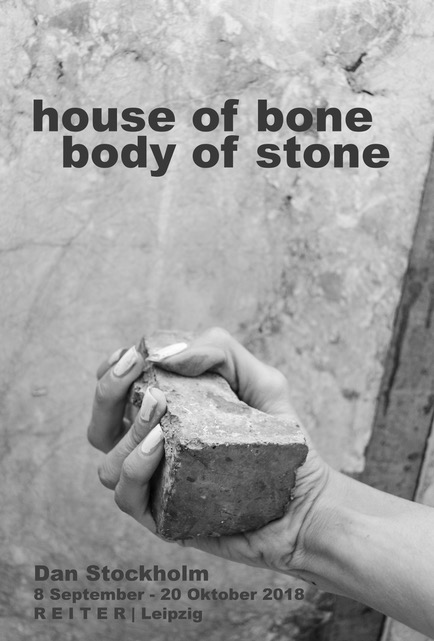
NOWs: house of bone body of stone by Dan Stockholm
house of bone body of stoneSolo Show
Opening
08 September 2018
Reiter Galleries Leipzig
Spinnereistraße 7 / Halle 6
04179 Leipzig
REITER galleries is proud to present House of bone body of stone a solo show by Dan
Stockholm.
Fascinated by places and architecture with an innate historical significance and narrative
tension, Dan Stockholm practices a “creative archaeology”, which includes field research
and work with various findings. His recent work evolves from what he calls “performative
process,” a method that turns the finished piece into a vessel which carries the story of its
own making.
Stockholm uses sculpture as an interface, link, or passage through which places and
bodies – across temporal as well as spatial distances – are set in relation to each other.
Architecture is a frequent reference point of his work, as he centers on on the conceptual
fields of present and past, presence and absence, fleeting and enduring. Thus, objects
which emerge in different temporal moments are concentrated. They begin to embody the
analogy of the inscription of light traces in the photographic negative that maintain an
indexical relationship to the past. It serves as sculptural containers fixing a presence like
an imprint and so transposing the sculptural object into the present even when it is only a
fleeting glimpse that materializes so enduringly in this way. Stockholm’s understanding of
sculpture as a medium of storage and transmission, driven from his archaeological
interest, is clarified in his work HOUSE.
The process for HOUSE began in 2013 only days after his father’s death, when the artist
in a three-day performative and almost ritual fashion methodically touched the exterior of
his father’s entire house centimeter by centimeter. The process ends with Stockholm
translating this act of touching into object form by producing a number of negative plaster
casts of his hands. The casts are fixed by metal rods, which simultaneously offer protective
anchorage and oppressive restriction. Metal scaffolding connects the floor and ceiling of
the exhibition space and serve as displays for his organic plaster sculptures.
HOUSE is supplemented by the film Don’t think about death a filmed performative
interaction where inhabitants of Damascus use a collection of architectural fragments of
their city as tools to create drawings directly on the ground. Don’t think about death is
made in collaboration with Syrian artist Nourhan Sondok. In spite of the dangers faced in
Syria, Nourhan has been collecting architectural fragments from all over Damascus. The
fragments are compiled from a wide spectrum of constructions: from 4000-year-old
columns; to newly constructed buildings destroyed in the Syrian conflict. Stockholm and
Sondok met on social media, and from behind their screens in Copenhagen and in
Damascus, their correspondence also led to the work Untitled (Fragments, Damascus
2017) a photo series and archive of images showing Nourhan’s hands handling the
fragments used in Don’t think about death.
Also on view in the show is the interactive site specific glass work: Level (Blue Mare,
Königsblau). Trapped between two panes of glass, colored ink changes its form and
concentration according to the tilt of the exhibition space and the movement of the
audience who are invited to walk on the glass.
house of bone body of stoneSolo Show
Opening
08 September 2018
Reiter Galleries Leipzig
Spinnereistraße 7 / Halle 6
04179 Leipzig
REITER galleries is proud to present House of bone body of stone a solo show by Dan
Stockholm.
Fascinated by places and architecture with an innate historical significance and narrative
tension, Dan Stockholm practices a “creative archaeology”, which includes field research
and work with various findings. His recent work evolves from what he calls “performative
process,” a method that turns the finished piece into a vessel which carries the story of its
own making.
Stockholm uses sculpture as an interface, link, or passage through which places and
bodies – across temporal as well as spatial distances – are set in relation to each other.
Architecture is a frequent reference point of his work, as he centers on on the conceptual
fields of present and past, presence and absence, fleeting and enduring. Thus, objects
which emerge in different temporal moments are concentrated. They begin to embody the
analogy of the inscription of light traces in the photographic negative that maintain an
indexical relationship to the past. It serves as sculptural containers fixing a presence like
an imprint and so transposing the sculptural object into the present even when it is only a
fleeting glimpse that materializes so enduringly in this way. Stockholm’s understanding of
sculpture as a medium of storage and transmission, driven from his archaeological
interest, is clarified in his work HOUSE.
The process for HOUSE began in 2013 only days after his father’s death, when the artist
in a three-day performative and almost ritual fashion methodically touched the exterior of
his father’s entire house centimeter by centimeter. The process ends with Stockholm
translating this act of touching into object form by producing a number of negative plaster
casts of his hands. The casts are fixed by metal rods, which simultaneously offer protective
anchorage and oppressive restriction. Metal scaffolding connects the floor and ceiling of
the exhibition space and serve as displays for his organic plaster sculptures.
HOUSE is supplemented by the film Don’t think about death a filmed performative
interaction where inhabitants of Damascus use a collection of architectural fragments of
their city as tools to create drawings directly on the ground. Don’t think about death is
made in collaboration with Syrian artist Nourhan Sondok. In spite of the dangers faced in
Syria, Nourhan has been collecting architectural fragments from all over Damascus. The
fragments are compiled from a wide spectrum of constructions: from 4000-year-old
columns; to newly constructed buildings destroyed in the Syrian conflict. Stockholm and
Sondok met on social media, and from behind their screens in Copenhagen and in
Damascus, their correspondence also led to the work Untitled (Fragments, Damascus
2017) a photo series and archive of images showing Nourhan’s hands handling the
fragments used in Don’t think about death.
Also on view in the show is the interactive site specific glass work: Level (Blue Mare,
Königsblau). Trapped between two panes of glass, colored ink changes its form and
concentration according to the tilt of the exhibition space and the movement of the
audience who are invited to walk on the glass.
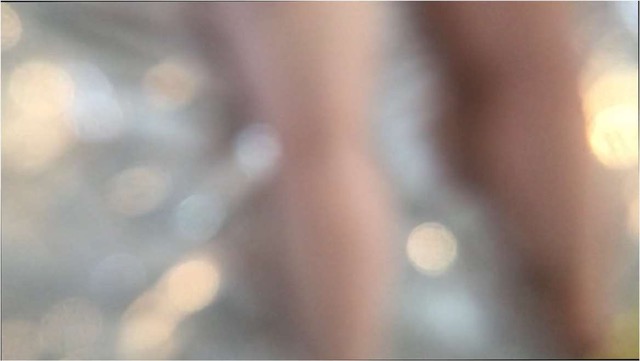
NOWs: Variété – ein Konzertspektakel
Varieté - ein KonzertspektakelEnsemble Garage covers Mauricio Kagel
Dress rehearsal 6 September 2018, 1 pm
Performance 7 September 2018, 7:40 pm
MAKESOMENEUES / 10 Jahre ON – Neue Musik Köln
Alte Feuerwache
Melchiorstrasse 3
50670 Köln
Hereinspaziert! Willkommen im Variété des Alltags!
Hier werden Sie unterhalten. Dazu sind wir hier. Dafür sind Sie gekommen. Es gibt nichts Besonderes zu sehen.Oder doch? Wir alle sind mittendrin in unserer selbstgeschaffenen Welt des Konsums, des Internets, der Zerstreuung, der Selbstoptimierung. Was macht das mit uns? Was lassen wir zu? Welche Doktrinen beherrschen uns? Passiert da etwas mit uns, ohne dass wir es merken oder geben wir uns dem Spektakel des Alltags lustvoll und sehenden Auges hin? Sind wir schon losgelöst von uns selbst, unseren wahren Bedürfnissen? Was ist dieses “ unser Selbst“. Und wer ist der/die Andere? Die, die neben mir steht oder der am Ende des Raumes? Eine traurige Clownin, ein Divus? Eine konsumkonforme Presswurst? Oder ein Unicum, das man heimlich bestaunen kann? Wir sind alle unsere eigenenDarsteller in diesem riesigen Variété. Auf der Suche nach dem Glück!?- Und über uns wacht milde und grausam eine Göttin.
Nicola Gründel – Konzept/Regie/Choreographie
Norgard Kröger – Konzept/Bühne/Kostüm
Sabine Akiko Ahrendt, Douglas Bateman, Margot Gödrös, Nicola Gründel,Thomas Hupfer, Soo-Yeon Kim, Norgard Kröger – Performance und choreographische Mitarbeit
Feng Li – Bühnenbildassistenz
Bibi Abel – Video
Mariano Chiacchiarini – Musikalische Leitung
Ensemble Garage
Blake Weston – Klarinette
Till Künkler – Tenorposaune
Jan-Filip Tupa – Violoncello
Sergej Tchirkov – Akkordeon
Malgorzata Walentynowicz – Klavier / elektronische Orgel
Yuka Ohta – Perkussion
Brigitta Muntendorf – Künstlerische Leitung Ensemble Garage
Varieté - ein KonzertspektakelEnsemble Garage covers Mauricio Kagel
Hauptprobe am 06. September 2018, 13:00
Aufführung am 07. September 2018, 19:40
MAKESOMENEUES / 10 Jahre ON – Neue Musik Köln
Alte Feuerwache
Melchiorstrasse 3
50670 Köln
Hereinspaziert! Willkommen im Variété des Alltags!
Hier werden Sie unterhalten. Dazu sind wir hier. Dafür sind Sie gekommen. Es gibt nichts Besonderes zu sehen.Oder doch? Wir alle sind mittendrin in unserer selbstgeschaffenen Welt des Konsums, des Internets, der Zerstreuung, der Selbstoptimierung. Was macht das mit uns? Was lassen wir zu? Welche Doktrinen beherrschen uns? Passiert da etwas mit uns, ohne dass wir es merken oder geben wir uns dem Spektakel des Alltags lustvoll und sehenden Auges hin? Sind wir schon losgelöst von uns selbst, unseren wahren Bedürfnissen? Was ist dieses “ unser Selbst“. Und wer ist der/die Andere? Die, die neben mir steht oder der am Ende des Raumes? Eine traurige Clownin, ein Divus? Eine konsumkonforme Presswurst? Oder ein Unicum, das man heimlich bestaunen kann? Wir sind alle unsere eigenenDarsteller in diesem riesigen Variété. Auf der Suche nach dem Glück!?- Und über uns wacht milde und grausam eine Göttin.
Nicola Gründel – Konzept/Regie/Choreographie
Norgard Kröger – Konzept/Bühne/Kostüm
Sabine Akiko Ahrendt, Douglas Bateman, Margot Gödrös, Nicola Gründel,Thomas Hupfer, Soo-Yeon Kim, Norgard Kröger – Performance und choreographische Mitarbeit
Feng Li – Bühnenbildassistenz
Bibi Abel – Video
Mariano Chiacchiarini – Musikalische Leitung
Ensemble Garage
Blake Weston – Klarinette
Till Künkler – Tenorposaune
Jan-Filip Tupa – Violoncello
Sergej Tchirkov – Akkordeon
Malgorzata Walentynowicz – Klavier / elektronische Orgel
Yuka Ohta – Perkussion
Brigitta Muntendorf – Künstlerische Leitung Ensemble Garage
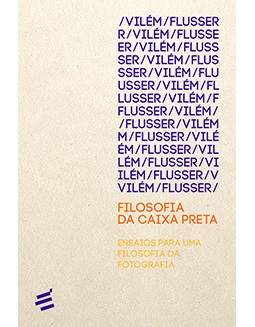
NOWs: Biblioteca Vilém Flusser
Vilém Flusser: Filosofia da Caixa Preta and Da DúvidaEdited by Rodrigo Maltez Novaes and Rodrigo Petronio
Filosofia da Caixa Preta
(Black Box Philosophy)
AUTHOR: Flusser, Vilém
EDITORS: Novaes, Rodrigo Maltez and Petronio, Rodrigo
Publisher: É Realizações
Genre: Philosophy
Subgenre: Philosophy
Format: 14 x 21 cm
Number of Pages: 144
Finishing: Brochure
ISBN: 978-85-8033-334-3
Year: 2018
Belongs to the collection: Biblioteca Vilém Flusser
Da Dúvida
(On Doubt)
AUTHOR: Flusser, Vilém
EDITORS: Novaes, Rodrigo Maltez and Petronio, Rodrigo
Publisher: É Realizações
Genre: Philosophy
Subgenre: Philosophy
Format: 14 x 21 cm
Number of Pages: 200
Finishing: Brochure
ISBN: 978-85-8033-341-1
Year: 2018
Belongs to the collection: Biblioteca Vilém Flusser
Vilém Flusser: Filosofia da Caixa Preta and Da DúvidaEdited by Rodrigo Maltez Novaes and Rodrigo Petronio
Filosofia da Caixa Preta
(Black Box Philosophy)
AUTHOR: Flusser, Vilém
EDITORS: Novaes, Rodrigo Maltez and Petronio, Rodrigo
Publisher: É Realizações
Genre: Philosophy
Subgenre: Philosophy
Format: 14 x 21 cm
Number of Pages: 144
Finishing: Brochure
ISBN: 978-85-8033-334-3
Year: 2018
Belongs to the collection: Biblioteca Vilém Flusser
Da Dúvida
(On Doubt)
AUTHOR: Flusser, Vilém
EDITORS: Novaes, Rodrigo Maltez and Petronio, Rodrigo
Publisher: É Realizações
Genre: Philosophy
Subgenre: Philosophy
Format: 14 x 21 cm
Number of Pages: 200
Finishing: Brochure
ISBN: 978-85-8033-341-1
Year: 2018
Belongs to the collection: Biblioteca Vilém Flusser
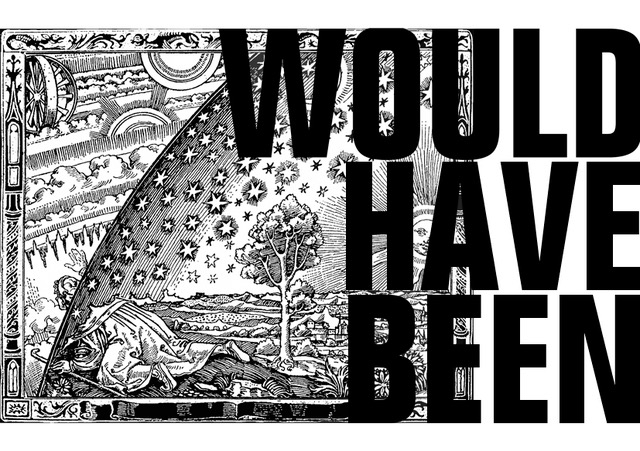
NOWs: Would Have Been
NOWs
Villa Romana Fellows 2018 - Open Studiosperformances, sound art, films, photography, painting and installations
Villa Romana
Via Senese, 68
50124 Firenze FI
Opening: 1 September 2018, 5pm
Under the title Would Have Been Open Studios 2018 brings together performances, sound art, films, photography, painting and installations that are dedicated to the speculative, alternative and invisible as imaginative counterworlds.
For the Villa Romana Fellows 2018 – Jeewi Lee, Christophe Ndabananiye, Lerato Shadi and Viron Erol Vert – Would Have Been stands for various possibilities and world views of the conditional future in the past. Why is it only possible to conceive the future in slogans of static protection and demarcation today?
The speculation in Would Have Been allows for transgression of spatial and temporal boundaries, to introduce the past into the present via the medium of a trace that can put the future in motion. Hybrid and transcultural perspectives draw the focus towards parallel realities.
Everyone constantly constructs his or her own reality, there are trillions of parallel microuniverses. The world is made up of the ideas of the world. The imagination has many sources and techniques at its disposal.
Open Studios 2018 is a collaborative venture: the group exhibition of the Villa Romana Fellows uses forgotten local postitions, the olive grove is the site of a video jungle, concerts and performances are streamed in real time, imagined spaces question given architectures and hierarchies.
This edition of Open Studios is dedicated to our Sinti and Roma neighbours in Florence, in Italy, all over the world.
Villa Romana Fellows 2018:
Jeewi Lee, Christophe Ndabananiye, Lerato Shadi, Viron Erol Vert + guests:
Federico Cavallini, Giovanni Cioni, Sophie-Therese Trenka-Dalton, Korhan Erel, Piero Gambassi, Anne Duk Hee Jordan, Jacob Kirkegaard, Fabian Knecht, Franziska Lantz, Bjørn Melhus, Ana Lessing Menjibar, Radio Papesse, Maria Pecchioli, Bassel Al Saadi, Hard Ton, Wermke / Leinkauf, Giacomo Zaganelli, Virginia Zanetti
NOWs
Villa Romana Fellows 2018 - Open Studiosperformances, sound art, films, photography, painting and installations
Villa Romana
Via Senese, 68
50124 Firenze FI
Opening: 1 September 2018, 5pm
Under the title Would Have Been Open Studios 2018 brings together performances, sound art, films, photography, painting and installations that are dedicated to the speculative, alternative and invisible as imaginative counterworlds.
For the Villa Romana Fellows 2018 – Jeewi Lee, Christophe Ndabananiye, Lerato Shadi and Viron Erol Vert – Would Have Been stands for various possibilities and world views of the conditional future in the past. Why is it only possible to conceive the future in slogans of static protection and demarcation today?
The speculation in Would Have Been allows for transgression of spatial and temporal boundaries, to introduce the past into the present via the medium of a trace that can put the future in motion. Hybrid and transcultural perspectives draw the focus towards parallel realities.
Everyone constantly constructs his or her own reality, there are trillions of parallel microuniverses. The world is made up of the ideas of the world. The imagination has many sources and techniques at its disposal.
Open Studios 2018 is a collaborative venture: the group exhibition of the Villa Romana Fellows uses forgotten local postitions, the olive grove is the site of a video jungle, concerts and performances are streamed in real time, imagined spaces question given architectures and hierarchies.
This edition of Open Studios is dedicated to our Sinti and Roma neighbours in Florence, in Italy, all over the world.
Villa Romana Fellows 2018:
Jeewi Lee, Christophe Ndabananiye, Lerato Shadi, Viron Erol Vert + guests:
Federico Cavallini, Giovanni Cioni, Sophie-Therese Trenka-Dalton, Korhan Erel, Piero Gambassi, Anne Duk Hee Jordan, Jacob Kirkegaard, Fabian Knecht, Franziska Lantz, Bjørn Melhus, Ana Lessing Menjibar, Radio Papesse, Maria Pecchioli, Bassel Al Saadi, Hard Ton, Wermke / Leinkauf, Giacomo Zaganelli, Virginia Zanetti
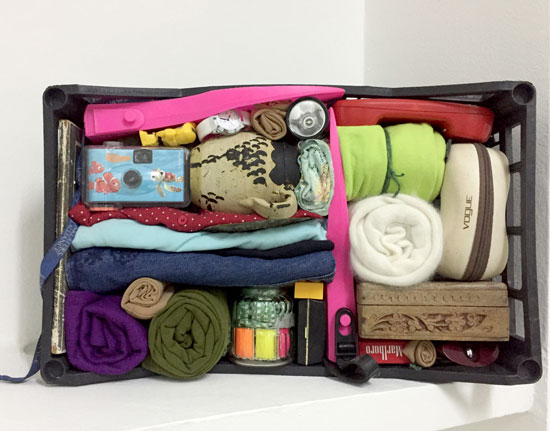
NOWs: Noss Noss – stories, traces, passages
Noss Noss - stories, traces, passagesGroup Show
Opening: Saturday, 1 September 2018, 6 pm
Goethe-Institut Marseille
La Friche La Belle de Mai, La Salle des Machines
41 Rue Jobin
13003 Marseille
Participants: Badr el Hammami, Timea Anita Oravecz, Mohammed Laouli, Katrin Ströbel, Filipe Lippe
Marseille, Hamburg and Tangier are three transit areas with a long history of migration. Thousands of displacement experiences have their origin or their outcome in these three cities which, facing the sea, are interfaces between worlds.
The exhibition NOSS NOSS invites contemporary artists working in Tangiers, Marseille and Hamburg who approach this subject in a poetic and political way to enter into dialogue. How does the migration experience fit into historical, public or personal objects, documents or stories? This is one of the central questions dealt with in the exhibition.
A first version of the exhibition – curated by Katrin Ströbel – was presented in 2017 at the Mahal Art Space in Tangier. The exhibition in Marseille is the continuation of this project. Besides the works of Badr El Hammami and Timea Anita Oravecz – artists invited to Tangier – those of Mohammed Laouli & Katrin Ströbel and Filipe Lippe are presented at the Friche la Belle de Mai.
Timea Anita Oravecz: Noss Noss - stories, traces, passagesGruppenausstellung
Eröffnung: Samstag, 1. September 2018, 18:00
Goethe-Institut Marseille
La Friche La Belle de Mai, La Salle des Machines
41 Rue Jobin
13003 Marseille
Participants: Badr el Hammami, Timea Anita Oravecz, Mohammed Laouli, Katrin Ströbel, Filipe Lippe
Marseille, Hamburg and Tangier are three transit areas with a long history of migration. Thousands of displacement experiences have their origin or their outcome in these three cities which, facing the sea, are interfaces between worlds.
The exhibition NOSS NOSS invites contemporary artists working in Tangiers, Marseille and Hamburg who approach this subject in a poetic and political way to enter into dialogue. How does the migration experience fit into historical, public or personal objects, documents or stories? This is one of the central questions dealt with in the exhibition.
A first version of the exhibition – curated by Katrin Ströbel – was presented in 2017 at the Mahal Art Space in Tangier. The exhibition in Marseille is the continuation of this project. Besides the works of Badr El Hammami and Timea Anita Oravecz – artists invited to Tangier – those of Mohammed Laouli & Katrin Ströbel and Filipe Lippe are presented at the Friche la Belle de Mai.
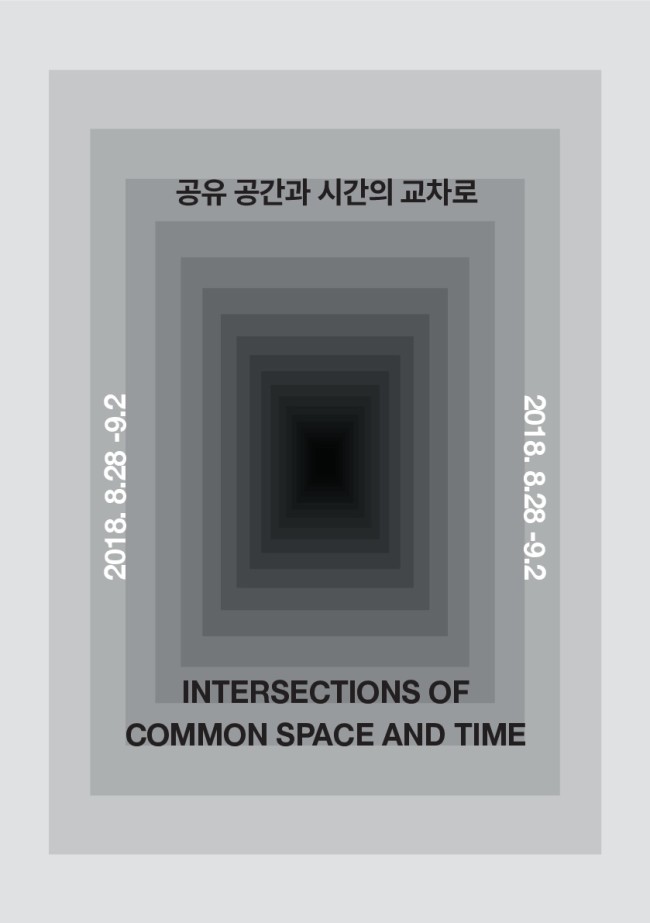
NOWs: Intersections of Common Space and Time
Intersections of Common Space and Timewith Raul Walch et al.
Intersections of Common Space and Time is a collaborative approach in addressing where and what public space is in contemporary urban settings in megacities of Asia. As urbanization, urban population and density continue to grow and privatization becomes a norm, shared space and time for public shrinks in all aspects. As we define public space as ‘shared time’ and ‘common space’, this project surveys how the notion of public space organically developed in Asia into temporal pockets of micro-communities coexisting and moving adjacent to ‘regeneration’ and gentrification. With multiple elements intersecting concurrently, the project attempts to activate and immerse into ‘common spaces’.
This second collaboration further rethinks and reimagines public spaces from small in-between spaces of temporal and mobile coincidences to larger open stationary spaces and all the way to online spaces of manipulated encounters. These spaces reflect and cohabit with coincidences, manipulation, stationary and mobile forms constantly breaking boundaries between private and public in its urban landscape. The basis for this project are micro-surveys implemented in Haebangchon, Intersections of Common Space and Time extends its discourse with artists, architects, filmmakers and local communities in forms of lectures and panel talk, Fragmentation of Common Space: Looking at Artistic and Architectural Interventions and Immersions; participatory workshops, Reimagining the Future of Common Space with Micro-Communities and various activations of public spaces from public screening Indecisive Cinema II; rooftop video installation, in, around and beyond a gaze; mobile video installation and performance, Ten Second Glance.
Program I
28 August 2018, 7 – 9:30 pm, Goethe-Institut Seoul
Lectures & Panel Talk – Fragmentation of Common Space: Looking at Artistic and Architectural Interventions and Immersions
Lectures by Inyoung Yeo, Raul Walch, BARE (Jinhong Jeon, Yunhee Choi)
30 August, 7 – 9 pm, Goethe-Institut Seoul
Workshop – Reimagining the Future of Common Space with Micro-Communities
Workshop by Inyoung Yeo
31 August 2018, 5 – 9 pm, Haebangchon Sinheung Market
Workshop – Reimagining the Future of Common Space with Micro-Communities
Workshop by Raul Walch (5 – 7 pm), in collaboration with Haebangchon Bibimbap (7 – 9 pm)
Program II
1 September 2018, 7 – 9 pm, Haebangchon Sinheung Market
Indecisive Cinema II by STEAKFILM
1 and 2 September 2018, 5 – 9 pm, Space One Rooftop
in, around and beyond a gaze by Space One (Inyoung Yeo und Youmee Hwang)
2 September 2018, 7 – 8 pm, mobile Truck-Installation
Ten Second Glance by Space One (Inyoung Yeo & Youmee Hwang), Eunkyum Bang
Intersections of Common Space and Timemit Raul Walch et al.
Was ist öffentlicher Raum in den großen Metropolen Asiens, und wo befindet er sich dort überhaupt? Das zum zweiten Mal stattfindende kollaborative Projekt Intersections of Common Space and Time soll den Teilnehmerinnen und Teilnehmern einen gemeinsamen Ansatzpunkt bieten, um sich mit dieser wichtigen Frage auseinanderzusetzen.
Gängige Definitionen und Vorstellungsbilder des öffentlichen Raums werden dabei zur Diskussion gestellt. Öffentlicher Raum – das sind längst nicht mehr nur kleine gesellschaftliche Zwischenräume, die sich zufälligerweise hier und dort auftun. Zum öffentlichen Raum zählen heutzutage große, feststehende Orte genauso wie virtuelle Räume im Internet. Grundlage für das Projekt Intersections of Common Space and Time sind kleine Umfragen aus dem traditionsreichen Stadtviertel Haebangchon in Seouls zentral gelegenem Stadtteil Yongsan.
Mit einer Vielzahl an verschiedenen Veranstaltungen möchte das Projekt Intersections of Common Space and Time Künstler, Architekten, Filmemacher und die Anwohner in den Diskurs um den öffentlichen Raum mit einbinden. Unter den angebotenen Veranstaltungen befinden sich ein Vortrag und ein Podiumsgespräch im Goethe-Institut Seoul, Fragmentation of Common Space: Looking at Artistic and Architectural Interventions and Immersions. Außerdem werden zwei Workshops zum Thema Reimagining the Future of Common Space with Micro-Communities angeboten, von denen ebenfalls einer in den Räumlichkeiten des Goethe-Instituts stattfinden wird. Öffentlicher Raum wird zudem an verschiedenen Stellen „aktiviert“, und zwar in Form der öffentlichen Filmvorführung Indecisive Cinema II, der roof-top Video-Installation in, around and beyond a gaze, und der mobilen Video-Installation und Performance Ten Second Glance. Für die Programme, die im Goethe-Institut Seoul stattfinden, wird um Anmeldung gebeten.
Programm Teil 1
28. August 2018, 19:00 – 21:30, Goethe-Institut Seoul
Vorträge und Podiumsdiskussion – Fragmentation of Common Space: Looking at Artistic and Architectural Interventions and Immersions
Vortragende: Inyoung Yeo, Raul Walch, BARE (Jinhong Jeon, Yunhee Choi)
30. August, 19:00 – 21:00, Goethe-Institut Seoul
Workshop – Reimagining the Future of Common Space with Micro-Communities
Leitung: Inyoung Yeo
31. August, 17:00 – 21:00, Haebangchon Sinheung Market
Workshop – Reimagining the Future of Common Space with Micro-Communities
Leiter: Raul Walch (17:00‒19:00), in Zusammenarbeit mit Haebangchon Bibimbap (19:00‒21:00)
Programm Teil 2
1. September, 19:00 – 21:00, Haebangchon Sinheung Market
Indecisive Cinema II von STEAKFILM
1. und 2. September, 17:00 – 21:00, Space One Rooftop
in, around and beyond a gaze von Space One (Inyoung Yeo und Youmee Hwang)
2. September, 19:00 – 20:00, mobile Truck-Installation
Ten Second Glance von Space One (Inyoung Yeo & Youmee Hwang), Eunkyum Bang
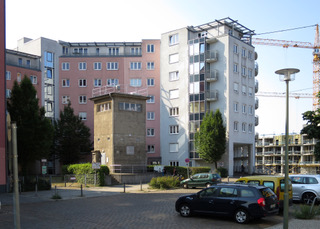
NOWs: Am Rand von EuropaCity
Am Rand von EuropaCityEine künstlerische Veranstaltungsreihe von Alexis Hyman Wolff und Yves Mettler
2nd Walk
25 August 2018, 2 pm
Gedenkstätte Günter Litfin
Duration: 2 hours
Zum zweiten Spaziergang wird der Begriff “Europa” in den Fokus gerückt. Wie lässt sich “Europa” am Rand der EuropaCity nachspüren? Wie werden die physischen, politischen und ideologischen Grenzen “Europas” in der Entstehung des neuen Stadtteils definiert und verstärkt? Auch von der ehemaligen deutsch-deutschen Grenze ist unser Feld markiert und das wirft weitere Fragen auf: was konnte in diesen städtischen Lücken nach dem 2. Weltkrieg und dem Mauerfall entstehen?
Treffpunkt ist vor der Gedenkstätte des ehem. ostdeutschen Wachturms am Schifffahrtskanal von wo aus gemeinsam eine Reihe von Brücken und Grenzen zwischen öffentlichem und privatem Raum begangen werden.
Kontakt bei Fragen oder Interesse: kontakt@amrandvoneuropa.city
Am Rand von EuropaCityEine künstlerische Veranstaltungsreihe von Alexis Hyman Wolff und Yves Mettler
2. Spaziergang
25. August 2018, 14:00
Gedenkstätte Günter Litfin
Dauer: 2 Stunden
Zum zweiten Spaziergang wird der Begriff “Europa” in den Fokus gerückt. Wie lässt sich “Europa” am Rand der EuropaCity nachspüren? Wie werden die physischen, politischen und ideologischen Grenzen “Europas” in der Entstehung des neuen Stadtteils definiert und verstärkt? Auch von der ehemaligen deutsch-deutschen Grenze ist unser Feld markiert und das wirft weitere Fragen auf: was konnte in diesen städtischen Lücken nach dem 2. Weltkrieg und dem Mauerfall entstehen?
Treffpunkt ist vor der Gedenkstätte des ehem. ostdeutschen Wachturms am Schifffahrtskanal von wo aus gemeinsam eine Reihe von Brücken und Grenzen zwischen öffentlichem und privatem Raum begangen werden.
Kontakt bei Fragen oder Interesse: kontakt@amrandvoneuropa.city
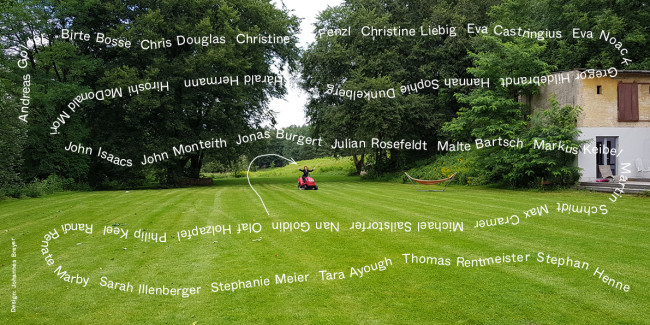
NOWs: Art Biesenthal 2018
Art Biesenthal 2018Group Show
Wehrmühle Biesenthal
Wehrmühlenweg 8
16359 Biesenthal
www.biesenthal.org
Andrej Golder
Birte Bosse
Christine Fenzl
Christine Liebich
Eva Castringius
Eva Noack
Gregor Hildebrandt
Harald Hermann
Isa Melsheimer
John Isaacs
John Monteight
Jonas Burgert
Julian Rosefeldt
Kris Douglas
Malte Bartsch
Markus Keibel
Martin Schmidt
Max Cramer
Michael Sailstorfer
Nan Goldin
Olaf Holzapfel
Philipp Keel
Randi Renate
Sarah Illenberger
Stephanie Maier
Stephan Henne
Hannah Sophie Dunkelberg
Hiroshi McDonald Mori
Tara Ayough
Thomas Rentmeister
Curated by Ayla Hecken
Art Biesenthal 2018Gruppenausstellung
Wehrmühle Biesenthal
Wehrmühlenweg 8
16359 Biesenthal
www.biesenthal.org
Andrej Golder
Birte Bosse
Christine Fenzl
Christine Liebich
Eva Castringius
Eva Noack
Gregor Hildebrandt
Harald Hermann
Isa Melsheimer
John Isaacs
John Monteight
Jonas Burgert
Julian Rosefeldt
Kris Douglas
Malte Bartsch
Markus Keibel
Martin Schmidt
Max Cramer
Michael Sailstorfer
Nan Goldin
Olaf Holzapfel
Philipp Keel
Randi Renate
Sarah Illenberger
Stephanie Maier
Stephan Henne
Hannah Sophie Dunkelberg
Hiroshi McDonald Mori
Tara Ayough
Thomas Rentmeister
Curated by Ayla Hecken
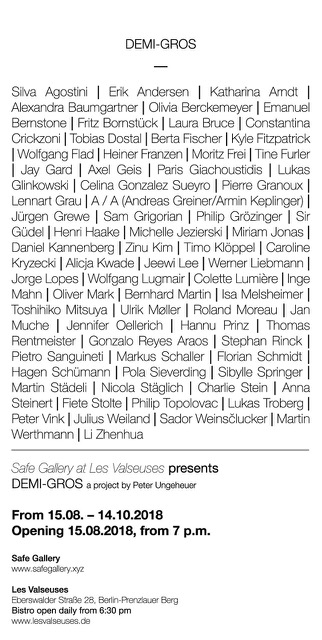
NOWs: Demi-Gros
Demi-GrosGroup Show
Opening: 15 August 2018, 7pm
Safe Gallery, Les Valseuses
Eberswalderstraße 28
10437 Berlin
The Safe Gallery, probably Berlin‘s smallest exhibition space, will host a group show of 72 Berlin artists.
The title of the show, Demi-Gros, refers both to a traditional unit of measure in foodstuffs (a gross, or a dozen dozen), and to middlemen who connect wholesale and retail in commerce.
All the artworks are presented in a wooden box of not even the size of a shoebox in a wall safe.
The (uncurated) show reflects the breadth of the Berlin art scene with artists of 17 nationalities, aged between 27 and 74 (the average being 44), working in an unusual format.
Exploring the exhibition requires the collaboration of the visitor. The box has to be extracted from the safe (the French word trésor also means treasure) and is accompanied by an explanatory booklet and white gloves on a table. And it can be quite difficult to reinsert the artworks in the box…
Peter Ungeheuer, Berlin, July 2018
Demi-GrosGroup Show
Opening: 15 August 2018, 7pm
Safe Gallery, Les Valseuses
Eberswalderstraße 28
10437 Berlin
The Safe Gallery, probably Berlin‘s smallest exhibition space, will host a group show of 72 Berlin artists.
The title of the show, Demi-Gros, refers both to a traditional unit of measure in foodstuffs (a gross, or a dozen dozen), and to middlemen who connect wholesale and retail in commerce.
All the artworks are presented in a wooden box of not even the size of a shoebox in a wall safe.
The (uncurated) show reflects the breadth of the Berlin art scene with artists of 17 nationalities, aged between 27 and 74 (the average being 44), working in an unusual format.
Exploring the exhibition requires the collaboration of the visitor. The box has to be extracted from the safe (the French word trésor also means treasure) and is accompanied by an explanatory booklet and white gloves on a table. And it can be quite difficult to reinsert the artworks in the box…
Peter Ungeheuer, Berlin, July 2018
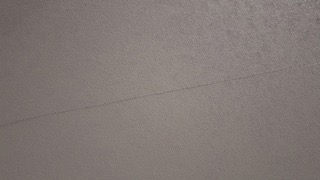
NOWs: Signs and symbols: artists & allies
Signs and symbols: artists & alliesGroup Show
Screening: August 21 2018, all day
August 7 – September 7 2018
Signs and symbols
102 Forsyth Street
New York
10002 NY
For the month of August, signs and symbols presents a dynamic program of time-based work, screenings and performances. Conceived as an experimental glimpse for our upcoming season, a selection of work will be on view of artists with forthcoming solo exhibitions. Allies of the gallery will also contribute work and discourse. A weekly screening and/or performance will take place every Thursday evening at 7pm. Sound art will make an appearance in a live act, politics will be explored in a standup comedy night, movement and dance workshops will be followed by a sci-fi rap concert. Devised with the intent for dialogue, overlap and exchange, our summer program is not a singular position, but a multifaceted, open-ended alternative to a summer group show.
Participating artists include:
Michelle Handelman | Tony Orrico | Jen DeNike | Drew Conrad | Rachel Libeskind | Wermke/Leinkauf | Amy Khoshbin | Stephen Barker| KIWA | Jeewi Lee | Annabel Daou | Robert Wilson | Aaron Kary | Mike Clemow | Melissa Godoy Nieto | INNER COURSE | Meta Grgurevic | Jovana Djuric | Matty Davis
and others…
Signs and symbols: artists & alliesGroup Show
Screening: August 21 2018, all day
August 7 – September 7 2018
Signs and symbols
102 Forsyth Street
New York
10002 NY
For the month of August, signs and symbols presents a dynamic program of time-based work, screenings and performances. Conceived as an experimental glimpse for our upcoming season, a selection of work will be on view of artists with forthcoming solo exhibitions. Allies of the gallery will also contribute work and discourse. A weekly screening and/or performance will take place every Thursday evening at 7pm. Sound art will make an appearance in a live act, politics will be explored in a standup comedy night, movement and dance workshops will be followed by a sci-fi rap concert. Devised with the intent for dialogue, overlap and exchange, our summer program is not a singular position, but a multifaceted, open-ended alternative to a summer group show.
Participating artists include:
Michelle Handelman | Tony Orrico | Jen DeNike | Drew Conrad | Rachel Libeskind | Wermke/Leinkauf | Amy Khoshbin | Stephen Barker| KIWA | Jeewi Lee | Annabel Daou | Robert Wilson | Aaron Kary | Mike Clemow | Melissa Godoy Nieto | INNER COURSE | Meta Grgurevic | Jovana Djuric | Matty Davis
and others…
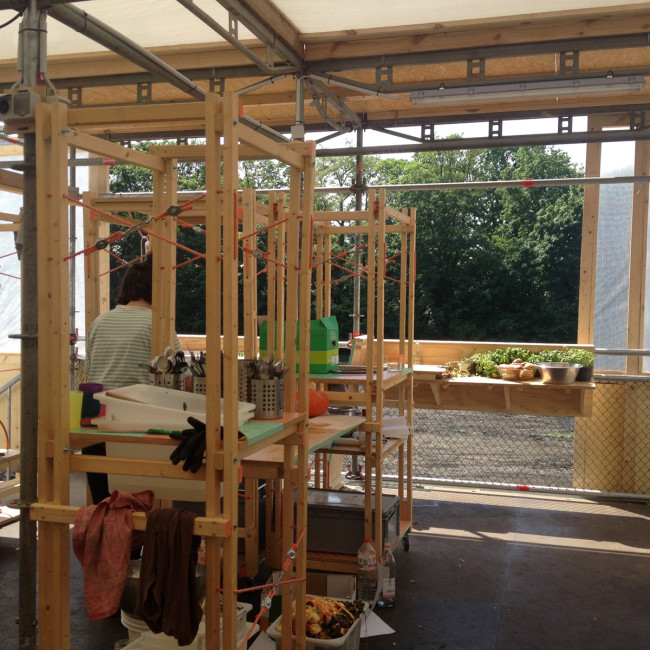
NOWs: Floating University – The future of the kitchen
Floating UniversityThe future of the kitchen
SOE Kitchen team and Institut für Raumexperimente are invited by Markus Baader and Anna Kokalanova to join project presenations and discussion on Space Production Studio – Floating University Berlin: Designing around the kitchen table.
–
From May to September 2018 raumlaborberlin creates a visionary inner city offshore laboratory for collective, experimental learning. With numerous partners they experiment with knowledge transfers and the formation of transdisciplinary networks to challenge routines and habits of urban practices – Floating University Berlin.
The site is an almost forgotten place in the center of Berlin: An old, concrete rainwater basin right next to the Tempelhof airfield. A third landscape on the verge of disapearance. Here raumlaborberlin builds a generic structure, a drilling platform for a scarce urban resource: sensitivity for decision-making.
Students and scientists from more than twenty international universities come together with artists from all over the world, local experts, architects, musicians, and dancers. Together, they research and investigate the daily routines and practices of urban living and formulate visions and ideas for a better future city In the territory around the rainwater basin Floating University is looking for contemporary, resilient forms of urban practice with a visionary focus on an unknown future.
In April, students and their teachers from Berlin, Europe and elsewhere collaborate on building the campus: learning spaces, workshops, an auditorium, a performative laboratory tower for experimental water filtration systems, a discursive kitchen, a bar as a protest generator and a fast food greenhouse. Spaces are created for exchanging knowledge within experimental, educational formats. A place where transdisciplinary research teams and diverse positions come together to tackle the complex questions of urban practices.
During three ‘Open Weeks’ in May, July and September we invite the local and international public to explore the rainwater basin and the campus, as well as to participate in workshops, lectures, seminars, hot tub talks, concerts and performances.
Project proposals. Photo: Christina Werner
Discussions around the kitchen table. Photo: Christina Werner
The kitchen at the Floating University. Photo: Christina Werner
Floating UniversityThe future of the kitchen
SOE Kitchen team and Institut für Raumexperimente sind von Markus Baader and Anna Kokalanova eingeladen an den Projektpräsentation und Diskussionen zu
Studio Raumproduktion – Floating University Berlin: Entwerfen als Praxis am Küchentisch teilzunehmen.
–
Von Mai bis September 2018 startet raumlaborberlin ein innerstädtisches Offshore-Labor für Visionen urbaner Praxis. Mit zahlreichen Partner_innen verfolgen wir ein Experiment zum gemeinsamen Lernen und Vernetzen. Ein Versuchsaufbau zum Hinterfragen städtischer Routinen – die Floating University Berlin.
In einem generischen Bauwerk im fast vergessenen Regenrückhaltebecken neben dem ehemaligen Flughafen Tempelhof kommen Studierende und Wissenschaftlerinnen von mehr als 20 internationalen Universitäten, Künstler aus der ganzen Welt, lokale Experten, Architektinnen, Musikerinnen und Tänzer zusammen, um das alltägliche urbane Leben zu untersuchen und Vorschläge zur Neuorganisation zu formulieren. Auf dem Territorium rund um das Becken sucht die Floating University nach einem visionären Blick in eine ungewisse Zukunft.
Studierende und Lehrende aus Berlin, Europa und anderswo bauen gemeinsam ihren Campus: Lernräume und Werkstätten, ein Auditorium und einen Laborturm mit einem performativen Wasserfiltrationssystem, eine diskursive Küche, eine Bar als Protestgenerator und eine Fastfoodplantage. Wir schaffen einen Ort, um neue Unterrichtsformen auszuprobieren, wo transdisziplinäre Teams und unterschiedliche Positionen zusammenkommen, um die richtigen Fragen an die Stadt zu stellen.
Während drei öffentlicher Wochen im Mai, Juli und September, den so genannten Open Weeks, laden wir die interessierte Öffentlichkeit ein, das Becken und den Campus der Floating University kennenzulernen und an Workshops, Vorträgen, Seminaren, Gesprächen, Konzerten und Performances teilzunehmen.
Projektproposals. Photo: Christina Werner
Diskussionen am Küchentisch. Photo: Christina Werner
Die Küche der Floating University. Photo: Christina Werner

NOWs: Leon Eixenberger at PAM
Game Changers
Public Art Munich
Leon Eixenberger: Streets of GiantsX Shared Spaces
19 – 22 July 2018
X Shared Spaces I Route III
Dachauer Str. 29
80335 München
21 July 2018 19:00 h
Artist Talk:
Leon Eixenberger & Thomas Girst
Corneliusstraße 2
80469 München
This project, in a form of a ride through Munich, focuses on the ideology of driving and the shift that it is currently experiencing. From the idea of I drive, associated with individualism, capitalism, and the idea of freedom represented by the automobile, to I am being driven, which embodies the mindset of Silicon Valley as it seeks to outsource numerous daily tasks in order to make life easier and smarter. Whereas we previously surrendered to our egos, we now surrender directly to cognitive networks controlled by a handful of corporations. Our passivity stands in opposition to the necessary democratization of new technological systems – a constructive, slow, and continuous process.
Concept: Leon Eixenberger | Composition: S. McKenna & Leon Eixenberger
Text: Leon Eixenberger | Voice: Zeynep Bombay
A production by Münchner Kammerspiele in cooperation with Public Art Munich.
PAM 2018 is curated by Joanna Warsza and commissioned by the City of Munich.
X Shared Spaces is funded by the The German Federal Cultural Foundation.
19€ per ticket, bookable under www.muenchner-kammerspiele.de
For further PAM events, please visit the calendar.
Game Changers
Public Art Munich
Leon Eixenberger: Eine Fahrt einfädelnX Shared Spaces
19. – 22. Juli 2018
X Shared Spaces I Route III
Dachauer Str. 29
80335 München
21 July 2018 19:00 h
Artist Talk:
Leon Eixenberger & Thomas Girst
Corneliusstraße 2
80469 München
Das Projekt hat die Form einer Autofahrt durch München. Der Fokus liegt auf der Ideologie des Fahrens und ihrer derzeitigen Veränderung: Von der Vorstellung des “Ich fahre”, die mit Individualismus, Kapitalismus und dem Gefühl der Freiheit korreliert und im Produkt Auto seine Verkörperung findet, bewegen wir uns in Richtung “Ich lasse mich fahren”, was der Denkart von Silicon Valley entspricht, in der wir tägliche Aufgaben outsourcen, um das Leben einfacher und intelligenter zu machen. Damit ordnen wir uns kognitiven Netzwerken unter, die von einigen wenigen Großunternehmen kontrolliert werden. Unsere Passivität steht im Gegensatz zur notwendigen Demokratisierung technologischerSysteme – ein Demokratisierungsprozess, der konstruktiv und langsam wie gleichermaßen kontinuierlich fortschreitet.
Konzeption: Leon Eixenberger | Komposition: S. McKenna & Leon Eixenberger
Text: Leon Eixenberger | Stimme: Zeynep Bombay
Eine Produktion der Münchner Kammerspiele in Kooperation mit Public Art Munich.
PAM 2018 ist kurtiert von Joanna Warsza und gefördert von der Landeshauptstadt München.
X Shared Spaces wird gefördert von der Kulturstiftung des Bundes.
Tickets à 19€, buchbar unter www.muenchner-kammerspiele.de
Weitere PAM Veranstaltungen sind im Kalender verzeichnet.
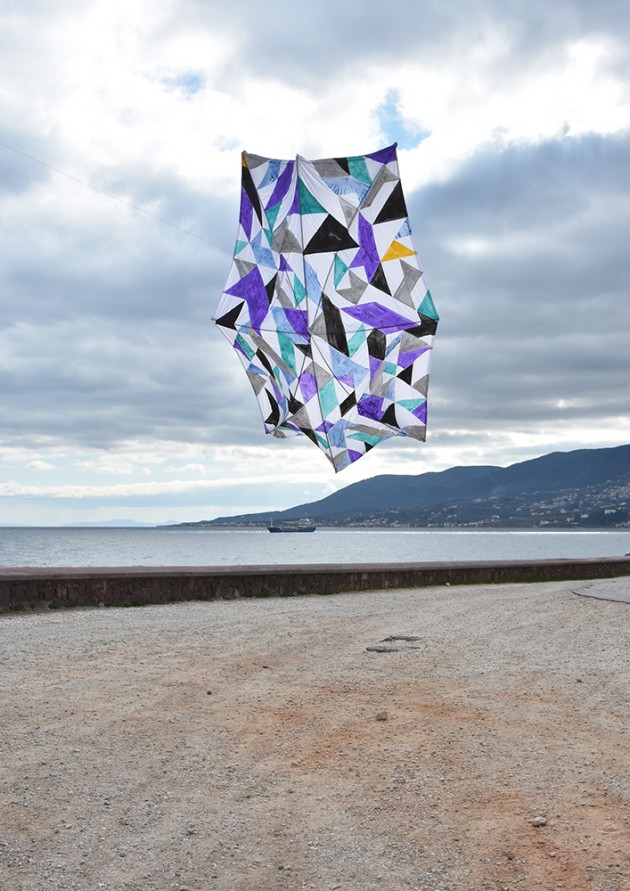
NOWs: offen Vol. 2 / Galerie EIGEN + ART Berlin
offen Vol. 2 // Galerie EIGEN + ART BerlinGroup Show
Galerie EIGEN + ART
Auguststraße 26
10117 Berlin
Opening
11 Juli 2018, 5 – 8 pm
In den Sommermonaten zeigt sich die Galerie über die Grenzen des Galerie-Programms hinaus offen. Wir präsentieren in der Ausstellung sowohl jüngere als auch bereits etablierte Positionen von Künstlerinnen und Künstlern, die uns in den letzten Monaten beeindruckt und auch begleitet haben und die über den Sommer im Galerieraum in Dialog miteinander treten:
Yang-Tsung Fan (*1982, TW) war 2018 mit seinen Arbeiten bei der AKI Gallery aus Taiwan zu sehen, unserer Gastgalerie auf der Leipziger Baumwollspinnerei. Die Arbeiten seiner „Swimming-pool“-Serie überführen konzeptuelle Farbfelder, geometrische Abstraktion und gestische Malerei in absurde sommerliche Schwimmbadszenarien.
Marion Fink (*1987, DE) hat bei Andreas Slominski in Hamburg studiert und erforscht anhand bühnenartiger Szenarien mit Figuren und Objekten, Wörtern und Textfragmenten den Möglichkeitsraum einer immer fragwürdig bleibenden Realität.
Zora Janković (*1978, SL) war bereits 2016 Teil der ersten „Offen“ Ausstellung in der Galerie. Ihre Skulpturen, geometrische Körper aus Beton und Stahl, spielen mit Elementen brutalistischer Architektur, greifen in den Raum ein und erschaffen neue Räume.
Ulrike Theusner (*1982, DE) hat bereits im EIGEN + ART Lab ausgestellt. Die Radierungen aus der „Sweet Birds of Youth” Serie versinnbildlichen eine Gesellschaft zwischen Erstarrung, Desillusionierung und Aufbruchstimmung.
Raul Walch (*1980, DE) hat am Institut für Raumexperimente der Universität der Künste studiert. Im Mittelpunkt seiner Arbeit steht immer eine unkonventionelle, künstlerische Auseinandersetzung mit gesellschaftlicher Realität. Die kinetische Skulptur in der Ausstellung ist auch als Sonnenreflektor zur Orientierung, als Markierung durch die Küstenwache und für die Verortung und Rettung von Schiffbrüchigen entstanden.
Justin Mortimer (*1970, GB) wurde bereits 2004 von Gerd Harry Lybke und Neo Rauch, damals Juroren, mit dem East Award bei der East International in Norwich ausgezeichnet. Seitdem hat er sich zu einem der profiliertesten Britischen Maler entwickelt. Wir zeigen neue Arbeiten aus seiner HOAX Serie.
Andreas Mühe (*1979, DE) unterwandert seine eigenen Bilder. Mit dem präzisen Einsatz von Licht, dem Herausarbeiten einer speziellen Farbigkeit und seinem Gespür für den Bildaufbau, der sich mit dem Spiel des Pathos beschäftigt, schafft er verführerisch-schöne Bilder. In der 24-teiligen Foto-Serie „Mühe-Köpfe“ zeigt er die verschiedenen Stadien des physischen Verfalls seiner eigenen in Stein geschlagenen Büste.
Alexander Wolff (*1976, DE) studierte an der Städelschule Frankfurt und an der Akademie der Bildenden Künste in Wien. Er beschränkt sich in seiner Malerei nicht auf den begrenzten Bildraum der Leinwand und benutzt für seine Bilder Textilfarbe, Staub, verschiedene Stoffe und Licht.
offen Vol. 2 // Galerie EIGEN + ART BerlinGroup Show
Galerie EIGEN + ART
Auguststraße 26
10117 Berlin
Eröffnung
11. Juli 2018, 17 – 20 Uhr
In den Sommermonaten zeigt sich die Galerie über die Grenzen des Galerie-Programms hinaus offen. Wir präsentieren in der Ausstellung sowohl jüngere als auch bereits etablierte Positionen von Künstlerinnen und Künstlern, die uns in den letzten Monaten beeindruckt und auch begleitet haben und die über den Sommer im Galerieraum in Dialog miteinander treten:
Yang-Tsung Fan (*1982, TW) war 2018 mit seinen Arbeiten bei der AKI Gallery aus Taiwan zu sehen, unserer Gastgalerie auf der Leipziger Baumwollspinnerei. Die Arbeiten seiner „Swimming-pool“-Serie überführen konzeptuelle Farbfelder, geometrische Abstraktion und gestische Malerei in absurde sommerliche Schwimmbadszenarien.
Marion Fink (*1987, DE) hat bei Andreas Slominski in Hamburg studiert und erforscht anhand bühnenartiger Szenarien mit Figuren und Objekten, Wörtern und Textfragmenten den Möglichkeitsraum einer immer fragwürdig bleibenden Realität.
Zora Janković (*1978, SL) war bereits 2016 Teil der ersten „Offen“ Ausstellung in der Galerie. Ihre Skulpturen, geometrische Körper aus Beton und Stahl, spielen mit Elementen brutalistischer Architektur, greifen in den Raum ein und erschaffen neue Räume.
Ulrike Theusner (*1982, DE) hat bereits im EIGEN + ART Lab ausgestellt. Die Radierungen aus der „Sweet Birds of Youth” Serie versinnbildlichen eine Gesellschaft zwischen Erstarrung, Desillusionierung und Aufbruchstimmung.
Raul Walch (*1980, DE) hat am Institut für Raumexperimente der Universität der Künste studiert. Im Mittelpunkt seiner Arbeit steht immer eine unkonventionelle, künstlerische Auseinandersetzung mit gesellschaftlicher Realität. Die kinetische Skulptur in der Ausstellung ist auch als Sonnenreflektor zur Orientierung, als Markierung durch die Küstenwache und für die Verortung und Rettung von Schiffbrüchigen entstanden.
Justin Mortimer (*1970, GB) wurde bereits 2004 von Gerd Harry Lybke und Neo Rauch, damals Juroren, mit dem East Award bei der East International in Norwich ausgezeichnet. Seitdem hat er sich zu einem der profiliertesten Britischen Maler entwickelt. Wir zeigen neue Arbeiten aus seiner HOAX Serie.
Andreas Mühe (*1979, DE) unterwandert seine eigenen Bilder. Mit dem präzisen Einsatz von Licht, dem Herausarbeiten einer speziellen Farbigkeit und seinem Gespür für den Bildaufbau, der sich mit dem Spiel des Pathos beschäftigt, schafft er verführerisch-schöne Bilder. In der 24-teiligen Foto-Serie „Mühe-Köpfe“ zeigt er die verschiedenen Stadien des physischen Verfalls seiner eigenen in Stein geschlagenen Büste.
Alexander Wolff (*1976, DE) studierte an der Städelschule Frankfurt und an der Akademie der Bildenden Künste in Wien. Er beschränkt sich in seiner Malerei nicht auf den begrenzten Bildraum der Leinwand und benutzt für seine Bilder Textilfarbe, Staub, verschiedene Stoffe und Licht.
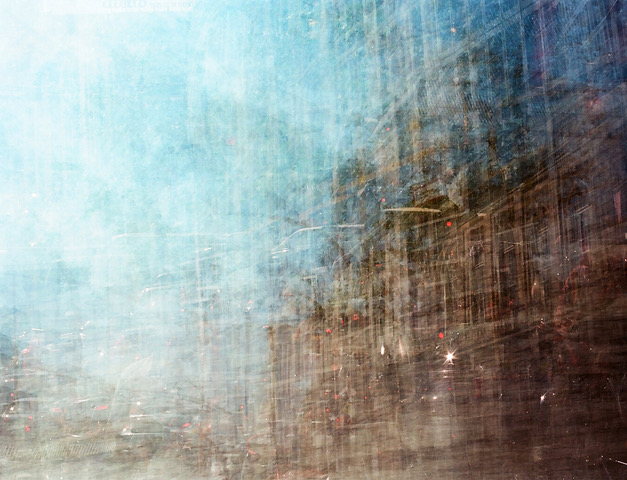
NOWs: Camera Urbana
Camera UrbanaFotografische Perspektiven auf Landschaften in Berlin
Opening
6 July 2018, 6 pm
DOMÄNE DAHLEM
Museum im Herrenhaus
Königin-Luise-Straße 49
14195 Berlin
Ausstellungsreihe KUNST IM HERRENHAUS (2)
Im Museum im Herrenhaus präsentieren wir Ihnen 2018 als dreiteilige Ausstellungsreihe KUNST IM HERRENHAUS. Die Künstlerinnen und Künstler setzen sich mittels unterschiedlicher Techniken und Materialien mit den Themen Natur, Ökologie und Urbanität auseinander. Dabei geht es insbesondere um die heutige Beziehung zwischen Mensch und (Nutz-) Tier und das Spannungsverhältnis zwischen Stadt und Land. Die gezeigten Malereien, Grafiken, Fotografien, Videos und Installationen sind zum Teil poetische und sehr persönliche Werke, die uns auf eine visuelle Suche mitnehmen und dabei die Sehnsucht nach Alternativen und Orten der Freiheit wecken.
Die zweite Ausstellung der Reihe – CAMERA URBANA – befasst sich mit Problemen der Gentrifizierung, zeigt Stadtlandschaften im stetigen Wandel und lotet die Möglichkeiten der Fotografie als Darstellungsmittel aus.
Die mysteriös wirkenden Nachtabbildungen von architektonischen Stadträumen in Tim van den Oudenhovens Arbeiten zeigen menschenleere Orte und vermitteln Gefühle von Entfremdung und Hoffnungslosigkeit. Die durch Mehrfachbelichtung entstandenen analogen Fotografien von Euan Williams aus der Serie Collapse vermitteln hingegen atmosphärische Blicke auf Berlin, die poetische Nachbilder einer Stadt zeigen. Alexander Steffen schließlich dokumentiert in seinem Projekt Vanishing Berlin brachliegende Orte der Metropole, die inzwischen teilweise von der Natur zurückerobert wurden oder dem Baumboom der letzten Jahre zum Opfer gefallen sind.
Kuratorin: Dr. Lily Fürstenow
Camera UrbanaFotografische Perspektiven auf Landschaften in Berlin
Eröffnung
6. July 2018, 18 Uhr
DOMÄNE DAHLEM
Museum im Herrenhaus
Königin-Luise-Straße 49
14195 Berlin
Ausstellungsreihe KUNST IM HERRENHAUS (2)
Im Museum im Herrenhaus präsentieren wir Ihnen 2018 als dreiteilige Ausstellungsreihe KUNST IM HERRENHAUS. Die Künstlerinnen und Künstler setzen sich mittels unterschiedlicher Techniken und Materialien mit den Themen Natur, Ökologie und Urbanität auseinander. Dabei geht es insbesondere um die heutige Beziehung zwischen Mensch und (Nutz-) Tier und das Spannungsverhältnis zwischen Stadt und Land. Die gezeigten Malereien, Grafiken, Fotografien, Videos und Installationen sind zum Teil poetische und sehr persönliche Werke, die uns auf eine visuelle Suche mitnehmen und dabei die Sehnsucht nach Alternativen und Orten der Freiheit wecken.
Die zweite Ausstellung der Reihe – CAMERA URBANA – befasst sich mit Problemen der Gentrifizierung, zeigt Stadtlandschaften im stetigen Wandel und lotet die Möglichkeiten der Fotografie als Darstellungsmittel aus.
Die mysteriös wirkenden Nachtabbildungen von architektonischen Stadträumen in Tim van den Oudenhovens Arbeiten zeigen menschenleere Orte und vermitteln Gefühle von Entfremdung und Hoffnungslosigkeit. Die durch Mehrfachbelichtung entstandenen analogen Fotografien von Euan Williams aus der Serie Collapse vermitteln hingegen atmosphärische Blicke auf Berlin, die poetische Nachbilder einer Stadt zeigen. Alexander Steffen schließlich dokumentiert in seinem Projekt Vanishing Berlin brachliegende Orte der Metropole, die inzwischen teilweise von der Natur zurückerobert wurden oder dem Baumboom der letzten Jahre zum Opfer gefallen sind.
Kuratorin: Dr. Lily Fürstenow
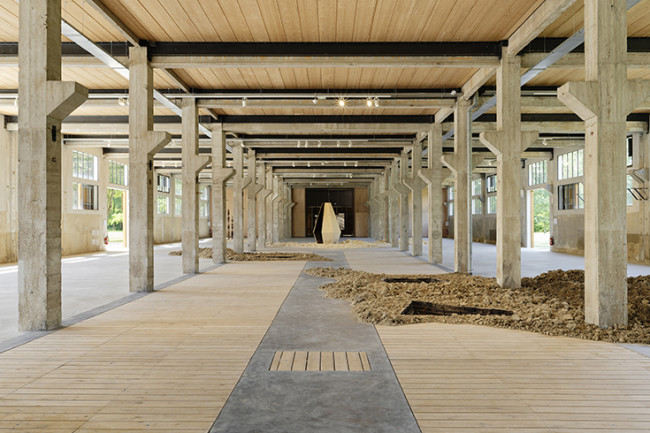
NOWs: Ritual Reality by Elise Eeraerts
Ritual RealitySolo exhibition by Elise Eeraerts
Opening 07 July 2018, 5 pm
Les Tanneries
Grande Halle
234 Rue des Ponts
45200 Amilly
Le temps de la résidence a débuté le 16 mai dernier aux Tanneries. Dans la démesure et la résonance de la Grande halle, Elise Eeraerts, artiste belge, poursuit un travail de recherche qui la mène de par le monde, pour mieux se nourrir des lieux et des paysages qui l’accueillent, pour s’inscrire dans leurs temporalités singulières et pour y prolonger – éprouver pourrait-on dire – son geste artistique.
Ce geste est travaillé, modelé par chacune des expériences déployées, et il fait ainsi figure de continuité. Il est une forme d’état de permanence, que portent en elles ses sculptures, par leurs lignes épurées, dans un jeu d’apparence archétypale, hors d’âge, appartenant à un imaginaire commun et universel.
L’artiste convoque l’idée de «recursive volume» pour évoquer ce continuum et donner titre à un des ensembles qui sera présenté dans la Grande halle. Dans un emboîtement de formes cuites, si les formes se réitèrent, elles se répètent sans se redire. L’artiste joue ici du processus de construction à celui de l’édification et de la production sérielle. Cette récursivité renvoie à ces états de permanence que l’on trouve tout autant dans l’approche des langages, en linguistique et en biologie, dans l’univers des formes produites, se répétant et se répartissant au gré du biomorphisme.
Aux Tanneries, Elise Eeraerts a initié une nouvelle fabrication de modules en terre à partir des cuves de tannage, y trouvant un écho à ses récentes recherches sculpturales de formes en négatif, c’est-à-dire essentiellement déterminées par leurs contours. En plongeant ses modules de céramique dans les cuves, elle innove ici, pour la première fois, une sculpture sans bords ; qui se confond avec son environnement et dont seul l’espace en creux est perceptible, formant un immense cratère.
De ces modules imposants par leur volume, nous ne percevons donc plus qu’une seule dimension. Les seuils de visibilité de l’objet, notre façon de lui assigner une signification ou une fonction, sont toujours questionnés par Elise Eeraerts. À travers cette technique lente de cuisson et de modelage, elle interroge également ce qu’il reste de pratiques ancestrales, primitives ou vernaculaires et de leurs économies de production. Nécessairement intuitif et empirique, ce type de fabrication, quasiment disparu aujourd’hui, devient la marque d’une épistémé débordée par l’émergence d’autres mondes où le geste se redéfini, encore, avant d’être remis au travail.
Telle une colonne sans fin, figure porteuse par excellence de cette continuité des formes et du geste travaillé.
Une continuité qui trouve – à son échelle – un écho fort dans le principe d’un temps de résidence cumulé, d’abord initié à l’Atelier Calder, à Saché, puis, dans les ajouts des gestes prolongés, aux Tanneries.
La collaboration de ces deux lieux de création, qui s’est établie aux confins d’une économie de production travaillée de l’un à l’autre et dans le temps composite d’un geste artistique, en a réellement accompagné le déploiement. L’invitation d’Elise Eerearts aux Tanneries poursuit un programme d’expositions orienté sur la notion de geste et de «faire artistique», qui trouvera de nouveaux prolongements dans le cadre de la saison 3, avec le cycle d’expositions intitulé «Scripts, scraps and tracks», en octobre 2018.
Ritual RealitySolo exhibition by Elise Eeraerts
Eröffnung am 07. Juli 2018, 17 Uhr
Les Tanneries
Grande Halle
234 Rue des Ponts
45200 Amilly
Le temps de la résidence a débuté le 16 mai dernier aux Tanneries. Dans la démesure et la résonance de la Grande halle, Elise Eeraerts, artiste belge, poursuit un travail de recherche qui la mène de par le monde, pour mieux se nourrir des lieux et des paysages qui l’accueillent, pour s’inscrire dans leurs temporalités singulières et pour y prolonger – éprouver pourrait-on dire – son geste artistique.
Ce geste est travaillé, modelé par chacune des expériences déployées, et il fait ainsi figure de continuité. Il est une forme d’état de permanence, que portent en elles ses sculptures, par leurs lignes épurées, dans un jeu d’apparence archétypale, hors d’âge, appartenant à un imaginaire commun et universel.
L’artiste convoque l’idée de «recursive volume» pour évoquer ce continuum et donner titre à un des ensembles qui sera présenté dans la Grande halle. Dans un emboîtement de formes cuites, si les formes se réitèrent, elles se répètent sans se redire. L’artiste joue ici du processus de construction à celui de l’édification et de la production sérielle. Cette récursivité renvoie à ces états de permanence que l’on trouve tout autant dans l’approche des langages, en linguistique et en biologie, dans l’univers des formes produites, se répétant et se répartissant au gré du biomorphisme.
Aux Tanneries, Elise Eeraerts a initié une nouvelle fabrication de modules en terre à partir des cuves de tannage, y trouvant un écho à ses récentes recherches sculpturales de formes en négatif, c’est-à-dire essentiellement déterminées par leurs contours. En plongeant ses modules de céramique dans les cuves, elle innove ici, pour la première fois, une sculpture sans bords ; qui se confond avec son environnement et dont seul l’espace en creux est perceptible, formant un immense cratère.
De ces modules imposants par leur volume, nous ne percevons donc plus qu’une seule dimension. Les seuils de visibilité de l’objet, notre façon de lui assigner une signification ou une fonction, sont toujours questionnés par Elise Eeraerts. À travers cette technique lente de cuisson et de modelage, elle interroge également ce qu’il reste de pratiques ancestrales, primitives ou vernaculaires et de leurs économies de production. Nécessairement intuitif et empirique, ce type de fabrication, quasiment disparu aujourd’hui, devient la marque d’une épistémé débordée par l’émergence d’autres mondes où le geste se redéfini, encore, avant d’être remis au travail.
Telle une colonne sans fin, figure porteuse par excellence de cette continuité des formes et du geste travaillé.
Une continuité qui trouve – à son échelle – un écho fort dans le principe d’un temps de résidence cumulé, d’abord initié à l’Atelier Calder, à Saché, puis, dans les ajouts des gestes prolongés, aux Tanneries.
La collaboration de ces deux lieux de création, qui s’est établie aux confins d’une économie de production travaillée de l’un à l’autre et dans le temps composite d’un geste artistique, en a réellement accompagné le déploiement. L’invitation d’Elise Eerearts aux Tanneries poursuit un programme d’expositions orienté sur la notion de geste et de «faire artistique», qui trouvera de nouveaux prolongements dans le cadre de la saison 3, avec le cycle d’expositions intitulé «Scripts, scraps and tracks», en octobre 2018.
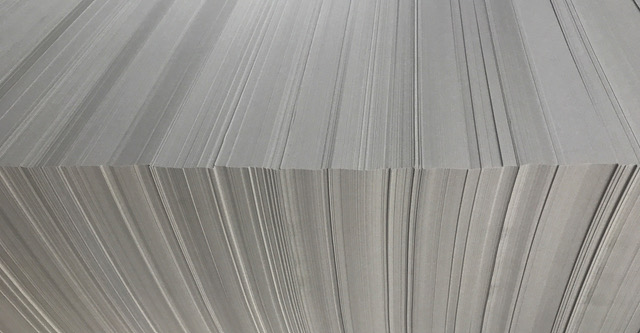
NOWs: Spiele mit der Ewigkeit
Spiele mit der EwigkeitGroup Show
Grimmuseum
Opening
6 July 2018, 7 pm
Carla Cabanas, Andrés Galeano, Ka Hee Jeong, Nam Hoon Kim, Shinae Kim, Yuni Kim, Jenny Michel, Oh Jong, Sophia Pompéry, Euan Williams, Seok Hyun Han, Thomas Zipp.
The group exhibition Spiele mit der Ewigkeit (Plays with eternity) brings together twelve artists from Berlin and Seoul whose work engages with time and its infinity, with space and its boundaries, with forces of reality and the freedom of the unreal. Since prehistoric times people have dealt with the question of eternity, addressing the phenomena of time and eternal life. This search is present in the exhibition. The works ask for what could be and what could happen, even besides our limits of perception. Their artistic strategies are based on everyday observations, on collecting scientific data, on traditions and rituals. The exponates revolve around visibility and invisibility, flirting with the ephemeral, and strive for eternal art, following their playful impulse: towards infinity and eternity.
The exhibition opens with the performance Pathologies of the Image by Andrés Galeano. As in a requiem, two sopranos (Vannessa Lanch & Anastasia Nikolova) rhyme and sing about physical dangers that artworks are exposed to, about pollutants, pests or climatic conditions. The song deals with the mortality of artworks, at the same time emphasizing their immateriality and plays with the ephemeral in art, which seems to be transient in every moment and yet claims its eternity.
Curated by Keumhwa Kim
Spiele mit der EwigkeitGroup Show
Grimmuseum
Eröffnung
6. Juli 2018, 19 Uhr
Carla Cabanas, Andrés Galeano, Ka Hee Jeong, Nam Hoon Kim, Shinae Kim, Yuni Kim, Jenny Michel, Oh Jong, Sophia Pompéry, Euan Williams, Seok Hyun Han, Thomas Zipp.
The group exhibition Spiele mit der Ewigkeit (Plays with eternity) brings together twelve artists from Berlin and Seoul whose work engages with time and its infinity, with space and its boundaries, with forces of reality and the freedom of the unreal. Since prehistoric times people have dealt with the question of eternity, addressing the phenomena of time and eternal life. This search is present in the exhibition. The works ask for what could be and what could happen, even besides our limits of perception. Their artistic strategies are based on everyday observations, on collecting scientific data, on traditions and rituals. The exponates revolve around visibility and invisibility, flirting with the ephemeral, and strive for eternal art, following their playful impulse: towards infinity and eternity.
The exhibition opens with the performance Pathologies of the Image by Andrés Galeano. As in a requiem, two sopranos (Vannessa Lanch & Anastasia Nikolova) rhyme and sing about physical dangers that artworks are exposed to, about pollutants, pests or climatic conditions. The song deals with the mortality of artworks, at the same time emphasizing their immateriality and plays with the ephemeral in art, which seems to be transient in every moment and yet claims its eternity.
Curated by Keumhwa Kim
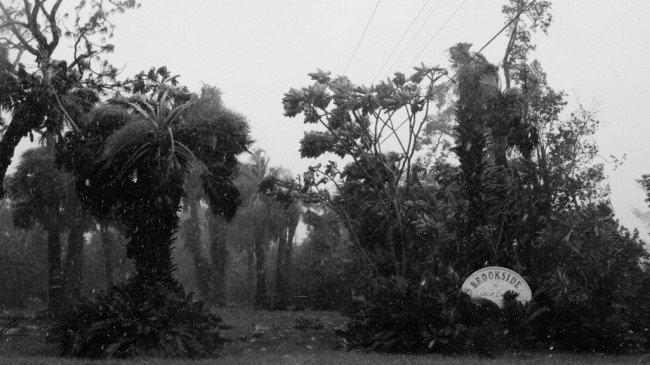
NOWs: Nature Unleashed
Filmstill: Irma To Come In Earnest, 2017
Nature UnleashedThe Image of Catastrophe since 1600
Hamburger Kunsthalle
Opening
28 June 2018, 7 pm
In a large-scale exhibition spanning several epochs, the Hamburger Kunsthalle traces based on important works how artists working in different media picture natural catastrophes while also shedding light on humanity’s failure to come to terms with nature due, among other things, of our faith in technology. Nature Unleashed: The Image of Catastrophe since 1600 features approximately 200 exhibits, including paintings, drawings, prints, sculptures, photographs, films and videos. As viewers make their way past blazing fires, earthquakes, floods, volcanic eruptions and sinking ships, they will take note of pictorial constants in the expression of such disasters but will also become aware of the differences in depiction from one era to the next. The show’s special appeal lies in the close juxtaposition of artworks created centuries apart. The trajectory of exhibited works spans an arc from the years around 1600 to the present day. Contemporary works serve to anchor the theme in the here and now and underline its topicality.
Catastrophes are omnipresent. The media constantly reports on natural disasters, acts of war, political upheavals and other crisis scenarios, characterising them all with the common term »catastrophe«. Catastrophes don’t just happen, they are made. It is only in our perception, in our active engagement with such drastic events that they take on distinctive contours and reveal their typical face. Every age makes its own catastrophes and redefines the criteria by which certain events are labelled as such. These fundamental observations form the basis for the exhibition project.
Featured artists include Wenzel Hollar (1607–1677), Jan Asselijn (1610–1652), Johann Wolfgang von Goethe (1749–1832), Caspar David Friedrich (1774–1840), Théodore Géricault (1791–1824), John Martin (1789–1854), Martin Kippenberger (1953–1997), Christian Jankowski (b. 1968) and Julius von Bismarck (b. 1983).
Filmstill: Irma To Come In Earnest, 2017
Entfesselte NaturDas Bild der Katastrophe seit 1600
Hamburger Kunsthalle
Eröffnung
Donnerstag, 28. Juni 2018, um 19 Uhr
Mit einer großen epochen- und medienübergreifenden Ausstellung geht die Hamburger Kunsthalle mit bedeutenden Kunstwerken dem Thema der bildlich-künstle-rischen Aufbereitung von Naturkatastrophen nach und beleuchtet dabei auch das Scheitern des Menschen an der Natur, etwa in Folge seiner Technikgläubigkeit. Entfesselte Natur. Das Bild der Katastrophe seit 1600 zeigt über 200 Exponate, darunter Gemälde, Zeichnungen, Graphiken, Skulpturen, Fotografien, Filme und Videoarbeiten. Mit Feuersbrünsten, Erdbeben, Überschwemmungen, Vulkanausbrüchen und Schiffsuntergängen entfaltet sich in den Ausstellungsräumen ein thematischer Parcours, der den Besucher_innen einerseits die bildnerischen Konstanten in der Aufbereitung derartiger Katastrophen vor Augen führt, andererseits aber auch die epochenspezifischen Unterschiede vermittelt. Der besondere Reiz der Schau besteht in der räumlichen Zusammenführung von Exponaten, die in ihrer jeweiligen Entstehungszeit Jahrhunderte voneinander getrennt sind. Dabei spannt sich der Bogen der ausgestellten Werke von den Jahren um 1600 bis in die unmittelbare Gegenwart. Die zeitgenössischen Positionen sorgen für eine Verortung des Themas in der Jetztzeit und unterstreichen dessen Aktualität.
Katastrophen sind allgegenwärtig. Pausenlos berichten die Medien über Naturereignisse, politische Umbrüche oder anderweitige Krisenszenarien und greifen für deren Charakterisierung auf den Begriff der Katastrophe zurück: Katastrophen geschehen nicht einfach, sie werden gemacht. Erst in der Rezeption, in der aktiven Auseinandersetzung mit derart einschneidenden Begebenheiten erhalten sie ihre Kontur und offenbaren ihr charakteristisches Gesicht. Jedes Zeitalter macht sich seine Katastrophen und definiert diejenigen Kriterien neu, nach denen bestimmte Ereignisse erst als solche etikettiert werden können. Diese grundlegenden Bestimmungen bilden die Basis des Ausstellungsprojekts.
Zu sehen sind unter anderem Werke von Wenzel Hollar (1607–1677), Jan Asselijn (1610–1652), Johann Wolfgang von Goethe (1749–1832), Caspar David Friedrich (1774–1840), Théodore Géricault (1791–1824), John Martin (1789–1854), Martin Kippenberger (1953–1997), Christian Jankowski (*1968) und Julius von Bismarck (*1983).
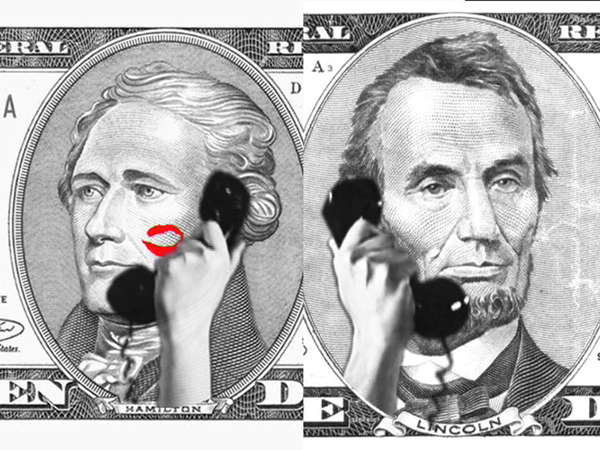
NOWs: BANK, BLANK – about new authority
BANK, BLANK - about new authoritycurated by Ece Pazarbaşı and Stephan Klee within the frame of 20th anniversary of 48 Hours Neukölln
Alte Sparkasse
Karl-Marx-Str. 107
12043 Berlin
There is an empty bank at Karl Marx Straße, it still stands as the relict of the financial vision of the past centuries. Now the employers have left the building, the vaults are open and the cash machines are dismantled. This institution of faith in cash, trust in money and illusion of prosperity for the many not for the few has moved out. Within this empty shell, one cannot help asking, what else is substantial nowadays, what else is echt?
In a world interspersed with spectacle, illusions, hollow visions and unfulfilled dreams, it does not get only harder to authenticate a thing, but also exchanges its meaning dynamically. Using the bank as a collective laboratory of visions and statements regarding the meaning of realness today in our society, the exhibition brings together 32 works from 25 artists and groups around the sub themes of matter, body and authenticity.
Participating artists:
A/A, Halil Altindere, Carsten Becker, Ekaterina Burlyga, Catch a Falling Knife Collective, Yvon Chabrowski & Nicolás Rupcich, Mark Clare, Merve Çanakçı, Ali M. Demirel, Maurice Doherty, Mona El Gammal, Ingo Gerken, Ivana Franke, Caroline Kryzecki, Pierre-Etiene Morelle, Özgür Erkök Moroder & Steffi Weismann, Barbara Müller, Sladjan Nedeljkovic, Jakob Roepke, The Swan Collective, Pilvi Takala, Philip Topolovac & Markus Proschek, Chompunuch Vanichayanguranon & Theerawat Klangjareonchai, Ulrich Vogl and Maria Viftrup
BANK, BLANK - about new authoritycurated by Ece Pazarbaşı and Stephan Klee within the frame of 20th anniversary of 48 Hours Neukölln
Alte Sparkasse
Karl-Marx-Str. 107
12043 Berlin
There is an empty bank at Karl Marx Straße, it still stands as the relict of the financial vision of the past centuries. Now the employers have left the building, the vaults are open and the cash machines are dismantled. This institution of faith in cash, trust in money and illusion of prosperity for the many not for the few has moved out. Within this empty shell, one cannot help asking, what else is substantial nowadays, what else is echt?
In a world interspersed with spectacle, illusions, hollow visions and unfulfilled dreams, it does not get only harder to authenticate a thing, but also exchanges its meaning dynamically. Using the bank as a collective laboratory of visions and statements regarding the meaning of realness today in our society, the exhibition brings together 32 works from 25 artists and groups around the sub themes of matter, body and authenticity.
Participating artists:
A/A, Halil Altindere, Carsten Becker, Ekaterina Burlyga, Catch a Falling Knife Collective, Yvon Chabrowski & Nicolás Rupcich, Mark Clare, Merve Çanakçı, Ali M. Demirel, Maurice Doherty, Mona El Gammal, Ingo Gerken, Ivana Franke, Caroline Kryzecki, Pierre-Etiene Morelle, Özgür Erkök Moroder & Steffi Weismann, Barbara Müller, Sladjan Nedeljkovic, Jakob Roepke, The Swan Collective, Pilvi Takala, Philip Topolovac & Markus Proschek, Chompunuch Vanichayanguranon & Theerawat Klangjareonchai, Ulrich Vogl and Maria Viftrup
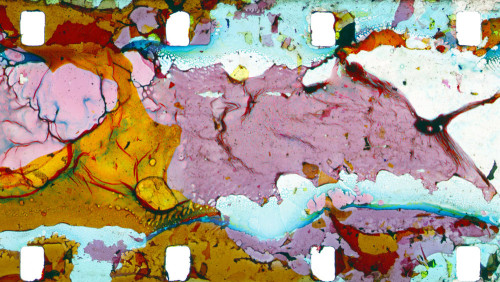
NOWs: WASTELAND – Robert Lippok & Pedro Maia
WASTELANDlive at modular + space, Berlin
Live music – Robert Lippok
Live 16mm projection – Pedro Maia
WASTELAND – 4 x 16mm projectors live manipulation Pedro Maia, live music by Robert Lippok (Raster), documentation by Clara Jo.
–
http://www.pedromaia.net/installations/wasteland/
http://www.raster-media.net/artists/robert-lippok
https://vimeo.com/clarajo
–
Wasteland refers to a place of ambiguity and indeterminacy between life and death in which narrative and temporal logic are suspended. Built from the waste material produced by an analogue film lab, this installation aims to re-materialize leftovers created by the film development process. This degraded film material contains within it the seeds of its own destruction. Degraded film being degraded.
WASTELANDlive at modular + space, Berlin
Live music – Robert Lippok
Live 16mm projection – Pedro Maia
WASTELAND – 4 x 16mm projectors live manipulation Pedro Maia, live music by Robert Lippok (Raster), documentation by Clara Jo.
–
http://www.pedromaia.net/installations/wasteland/
http://www.raster-media.net/artists/robert-lippok
https://vimeo.com/clarajo
–
Wasteland refers to a place of ambiguity and indeterminacy between life and death in which narrative and temporal logic are suspended. Built from the waste material produced by an analogue film lab, this installation aims to re-materialize leftovers created by the film development process. This degraded film material contains within it the seeds of its own destruction. Degraded film being degraded.
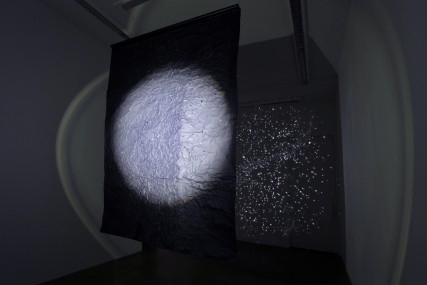
NOWs: Møenlight Sonata
Sophia Pompéry: Atlas, 2017; installation
NOWs:
Møenlight Sonata – A homage to the starry sky of Møn
KUNSTHALL 44MOEN, DENMARK
Nevin Aladağ | Darren Almond | Rosa Barba | KP Brehmer | Olga Chernysheva | Dorothee Diebold | Maria Eichhorn | Ayşe Erkmen | Ceal Floyer | Pravdoliub Ivanov | Till Junkel | Jarosław Kozłowski | Imi Knoebel | Daniel Knorr | David Krippendorff | Alicja Kwade | Simon Lewis | Sine Lewis | Bjørn Nørgaard| Navid Nuur | Alexandra Paperno | Nam June Paik | Dan Perjovschi | Sigmar Polke | Sophia Pompéry | Ursula Reuter | Superflex | Mariana Vassileva | Els Vos | Lawrence Weiner | Mariaa Wirkkala
Curated by René Block
To celebrate its tenth anniversary, Kunsthal 44Møen will put together a special constellation of stars under the lyric name “Møenlight Sonata”, alluding to Beethoven’s 14th sonata for piano, which he also referred to “quasi una fantasia”. The show will present a cross-section of the Kunsthal’s program so far, as well as newly commissioned works by artists from Bulgaria, Finland, Germany, Great Britain and Turkey that are still new to the island. What connects the works of these individual artists is the specific use of light, as subject and material. Light (or the absence of it) is not only one of the oldest topics in art history, but also a special condition on Møn – during the day, but also at night.The 10 year anniversary of Kunsthal 44Møen is conceived to be a summer festival, an invitation to all groups of local residents and visiting guests to celebrate the sky over Møn.
Sophia Pompéry: Atlas, 2017; installation
NOWs:
Møenlight Sonata – A homage to the starry sky of Møn
KUNSTHALL 44MOEN, DENMARK
Nevin Aladağ | Darren Almond | Rosa Barba | KP Brehmer | Olga Chernysheva | Dorothee Diebold | Maria Eichhorn | Ayşe Erkmen | Ceal Floyer | Pravdoliub Ivanov | Till Junkel | Jarosław Kozłowski | Imi Knoebel | Daniel Knorr | David Krippendorff | Alicja Kwade | Simon Lewis | Sine Lewis | Bjørn Nørgaard| Navid Nuur | Alexandra Paperno | Nam June Paik | Dan Perjovschi | Sigmar Polke | Sophia Pompéry | Ursula Reuter | Superflex | Mariana Vassileva | Els Vos | Lawrence Weiner | Mariaa Wirkkala
Curated by René Block
To celebrate its tenth anniversary, Kunsthal 44Møen will put together a special constellation of stars under the lyric name “Møenlight Sonata”, alluding to Beethoven’s 14th sonata for piano, which he also referred to “quasi una fantasia”. The show will present a cross-section of the Kunsthal’s program so far, as well as newly commissioned works by artists from Bulgaria, Finland, Germany, Great Britain and Turkey that are still new to the island. What connects the works of these individual artists is the specific use of light, as subject and material. Light (or the absence of it) is not only one of the oldest topics in art history, but also a special condition on Møn – during the day, but also at night.The 10 year anniversary of Kunsthal 44Møen is conceived to be a summer festival, an invitation to all groups of local residents and visiting guests to celebrate the sky over Møn.
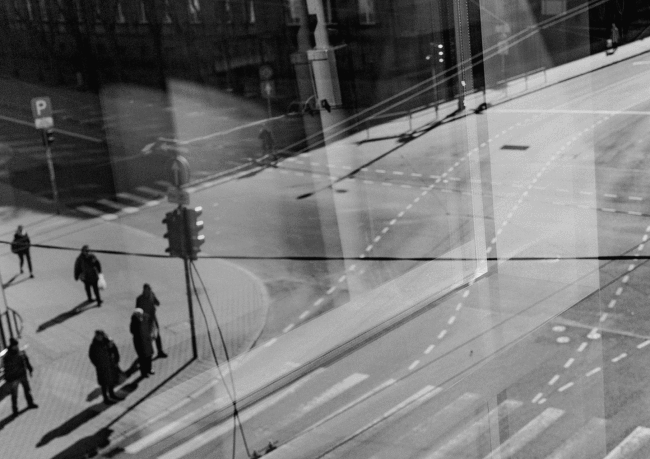
NOWs: 1st Riga International Biennial of Contemporary Art (RIBOCA)
NOWs:
Riga International Biennial of Contemporary Art (RIBOCA)EVERYTHING WAS FOREVER UNTIL IT WAS NO MORE
RIBOCA1 opens to the public: Saturday 2 June 2018
Press Preview and Vernissage: Wednesday 31 May – Saturday 2 June 2018
The 1st Riga International Biennial of Contemporary Art (RIBOCA1) is pleased to announce the artists who will participate in the first edition. A total of 99 artists including 10 collectives will be participating in the biennial. During the biennial 113 works – including 49 new commissions – will be shown in nine different venues across Riga. There will also be 10 public sculptures and site-specific interventions in various locations around the city. Many of the participating artists will present more than one work, appearing in several of the venues, thus providing an opportunity for visitors to gain a more in-depth insight into their practice.
The artists participating in the public program and making performances will be announced at later date.
Chief curator of the 1st Riga Biennial (RIBOCA1) is Katerina Gregos, curators of its public programme is Kolektivs (Zane Zajančkauska & Ilze Kalnbērziņa Praz), and associate curator is Solvej Helweg Ovesen.
Participating artists: Agency of Singular Investigations* (Stanislav Shuripa, Anna Titova), Russia (founded 2014) · Alexis Blake, USA/Netherlands (b.1981) · Alexis Destoop, Belgium/Australia (b.1971) · Adrián Villar Rojas, Argentina (b.1980) · Andrejs Strokins*, Latvia (b.1984) · Andris Eglītis*, Latvia (b.1981) · Annaïk-Lou Pitteloud, Switzerland/Belgium (b.1980) · Anne Duk Hee Jordan, Korea/Germany (b.1978) · Ariane Loze*, Belgium (b.1988) · Aslan Gaisumov, Chechnya, Russia (b.1991) · Augustas Serapinas*, Lithuania (b.1990) · Clemens von Wedemeyer*, Germany (b.1974) · Danilo Correale, Italy/USA (b.1982) · Diana Lelonek, Poland (b.1988) · Diāna Tamane*, Latvia/Belgium (b.1986) · Eli Cortiñas, Spain/Germany (b.1979) · Emilija Škarnulytė, Lithuania/Germany (b.1987) · Erik Kessels*, Netherlands (b.1966) · Ēriks Apaļais, Latvia (b.1981) · Eve Kiiler, Estonia (b.1960) · Femke Herregraven*, Netherlands (b.1982) · Fernando Sánchez Castillo, Spain (b.1970) · Han Hoogerbrugge, Netherlands (b.1963) · Hannah Anbert*, Denmark (b.1984) · Hans Rosenström*, Finland (b.1978) · Henrike Naumann*, Germany (b.1984) · IC-98, Finland (founded 1998) · Ieva Balode, Latvia (b.1987) · Ieva Epnere*, Latvia (b.1977) · Indrė Šerpytytė*, Lithuania/UK (b.1983) · Ivar Veermäe, Estonia/Germany (b.1982) · Jacob Kirkegaard, Denmark (b.1975) · James Beckett, Zimbabwe/Netherlands (b.1977) · Jani Ruscica, Finland (b.1978) · Johanna Gustafsson-Fürst, Sweden (b.1973) · Johannes Heldén, Sweden (b.1978) & Håkan Jonson, Sweden (b.1978) · Jonas Mekas, Lithuania/USA (b.1922) · Julian Charrière, Switzerland/ Germany (b.1987) · Julian Rosefeldt, Germany (b.1965) · Julijonas Urbonas, Lithuania (b.1981) · Karel Koplimets*, Estonia (b.1986) · Katarzyna Przezwańska, Poland (b.1984) · Katrīna Neiburga*, Latvia (b.1978) · Kerstin Hamilton*, Sweden (b.1978) · Kristaps Epners*, Latvia (b.1976) · Kustaa Saksi, Netherlands (b.1975) · Liina Siib*, Estonia (b.1963) · Lynn Hershman-Leeson, USA (b.1941) · Maarten Vanden Eynde*, Belgium (b.1977) · Marco Montiel-Soto, Venezuela/Germany (b.1976) · Marge Monko*, Estonia (b.1976) · Maria Kapajeva, Estonia (b.1976) · Marina Pinsky*, Russia/Belgium (b.1986) · Marisa Benjamim, Portugal/Germany (b.1981) · Mark Dion*, USA (b.1961) · Maryam Jafri, Pakistan/USA (b.1972) · Melanie Bonajo, Netherlands, (b.1978) · Michael Landy*, UK (b.1963) · Michael Sailstorfer*, Germany (b.1979) · Minna Rainio & Mark Roberts, Finland/UK (b.1974, b.1970) · Nabil Boutros, Egypt/France (1954) · Nedko Solakov*, Bulgaria (b.1957) · Nicolas Kozakis, Greece/Belgium (b.1967) & Raoul Vaneigem, Belgium (b.1934) · Nikos Navridis*, Greece (b.1958) · Oswaldo Maciá*, Colombia/UK (b.1960) · Orbita, Latvia (founded 1999) · Paulis Liepa*, Latvia (b.1978) · Petra Bauer, Sweden (b.1970) & Rebecka Katz-Thor*, Sweden (b.1982) · Robert Kuśmirowski*, Poland (b.1973) · Sandra Kosorotova*, Estonia (b.1984) · Sasha Huber, Switzerland/Finland (b.1975) & Petri Saarikko*, Finland (b.1973) · Saskia Holmkvist*, Sweden (b.1971) · Sissel Tolaas*, Norway/Germany (b.1963) · Sputnik photos*, Poland/Slovakia/Belarus (founded 2006 in Poland) · Stelios Faitakis*, Greece (b.1976) · Stine-Marie Jacobsen*, Denmark (b. 1977) · Sven Johne, Germany (b.1976) · Taus Makhacheva*, Dagestan, Russia (b.1983) · Teemu Korpela*, Finland (b.1980) · Tilman Wendland*, Germany (b.1969) · Tobias Zielony*, Germany (b.1973) · Trevor Paglen, USA (b.1974) · Valio Tchenkov*, Bulgaria/Germany (b.1966) · Vladimir Svetlov, Latvia (b.1973) · Viron Erol Vert*, Turkey/Germany (b.1975) · Jevgeni Zolotko*, Estonia (b.1983) · Žilvinas Landzbergas*, Lithuania (b.1979)
*An asterisk denotes a new commission
The Riga International Biennial of Contemporary Art (RIBOCA) announced nine main venues, which will host the inaugural edition of the biennial and its related public programme and events. The majority of these spaces are within 20 minutes walking distance of each other, creating a sustainable parcours and allowing visitors the time to experience the exhibition and the artists, as well as to discover the city.
The selected venues reflect Riga’s diverse cultural and architectural history: from medieval and 19th century traditional wooden buildings and pre-war Art Nouveau; to Soviet modernism and impressive industrial architecture. The spaces not only serve as an aesthetically captivating frame for the concept of the biennial and its artworks but are also an integral part of the broader cultural and historical narrative of the city of Riga and the wider Baltic region.
NOWs:
Riga International Biennial of Contemporary Art (RIBOCA)EVERYTHING WAS FOREVER UNTIL IT WAS NO MORE
RIBOCA1 opens to the public: Saturday 2 June 2018
Press Preview and Vernissage: Wednesday 31 May – Saturday 2 June 2018
The 1st Riga International Biennial of Contemporary Art (RIBOCA1) is pleased to announce the artists who will participate in the first edition. A total of 99 artists including 10 collectives will be participating in the biennial. During the biennial 113 works – including 49 new commissions – will be shown in nine different venues across Riga. There will also be 10 public sculptures and site-specific interventions in various locations around the city. Many of the participating artists will present more than one work, appearing in several of the venues, thus providing an opportunity for visitors to gain a more in-depth insight into their practice.
The artists participating in the public program and making performances will be announced at later date.
Chief curator of the 1st Riga Biennial (RIBOCA1) is Katerina Gregos, curators of its public programme is Kolektivs (Zane Zajančkauska & Ilze Kalnbērziņa Praz), and associate curator is Solvej Helweg Ovesen.
Participating artists: Agency of Singular Investigations* (Stanislav Shuripa, Anna Titova), Russia (founded 2014) · Alexis Blake, USA/Netherlands (b.1981) · Alexis Destoop, Belgium/Australia (b.1971) · Adrián Villar Rojas, Argentina (b.1980) · Andrejs Strokins*, Latvia (b.1984) · Andris Eglītis*, Latvia (b.1981) · Annaïk-Lou Pitteloud, Switzerland/Belgium (b.1980) · Anne Duk Hee Jordan, Korea/Germany (b.1978) · Ariane Loze*, Belgium (b.1988) · Aslan Gaisumov, Chechnya, Russia (b.1991) · Augustas Serapinas*, Lithuania (b.1990) · Clemens von Wedemeyer*, Germany (b.1974) · Danilo Correale, Italy/USA (b.1982) · Diana Lelonek, Poland (b.1988) · Diāna Tamane*, Latvia/Belgium (b.1986) · Eli Cortiñas, Spain/Germany (b.1979) · Emilija Škarnulytė, Lithuania/Germany (b.1987) · Erik Kessels*, Netherlands (b.1966) · Ēriks Apaļais, Latvia (b.1981) · Eve Kiiler, Estonia (b.1960) · Femke Herregraven*, Netherlands (b.1982) · Fernando Sánchez Castillo, Spain (b.1970) · Han Hoogerbrugge, Netherlands (b.1963) · Hannah Anbert*, Denmark (b.1984) · Hans Rosenström*, Finland (b.1978) · Henrike Naumann*, Germany (b.1984) · IC-98, Finland (founded 1998) · Ieva Balode, Latvia (b.1987) · Ieva Epnere*, Latvia (b.1977) · Indrė Šerpytytė*, Lithuania/UK (b.1983) · Ivar Veermäe, Estonia/Germany (b.1982) · Jacob Kirkegaard, Denmark (b.1975) · James Beckett, Zimbabwe/Netherlands (b.1977) · Jani Ruscica, Finland (b.1978) · Johanna Gustafsson-Fürst, Sweden (b.1973) · Johannes Heldén, Sweden (b.1978) & Håkan Jonson, Sweden (b.1978) · Jonas Mekas, Lithuania/USA (b.1922) · Julian Charrière, Switzerland/ Germany (b.1987) · Julian Rosefeldt, Germany (b.1965) · Julijonas Urbonas, Lithuania (b.1981) · Karel Koplimets*, Estonia (b.1986) · Katarzyna Przezwańska, Poland (b.1984) · Katrīna Neiburga*, Latvia (b.1978) · Kerstin Hamilton*, Sweden (b.1978) · Kristaps Epners*, Latvia (b.1976) · Kustaa Saksi, Netherlands (b.1975) · Liina Siib*, Estonia (b.1963) · Lynn Hershman-Leeson, USA (b.1941) · Maarten Vanden Eynde*, Belgium (b.1977) · Marco Montiel-Soto, Venezuela/Germany (b.1976) · Marge Monko*, Estonia (b.1976) · Maria Kapajeva, Estonia (b.1976) · Marina Pinsky*, Russia/Belgium (b.1986) · Marisa Benjamim, Portugal/Germany (b.1981) · Mark Dion*, USA (b.1961) · Maryam Jafri, Pakistan/USA (b.1972) · Melanie Bonajo, Netherlands, (b.1978) · Michael Landy*, UK (b.1963) · Michael Sailstorfer*, Germany (b.1979) · Minna Rainio & Mark Roberts, Finland/UK (b.1974, b.1970) · Nabil Boutros, Egypt/France (1954) · Nedko Solakov*, Bulgaria (b.1957) · Nicolas Kozakis, Greece/Belgium (b.1967) & Raoul Vaneigem, Belgium (b.1934) · Nikos Navridis*, Greece (b.1958) · Oswaldo Maciá*, Colombia/UK (b.1960) · Orbita, Latvia (founded 1999) · Paulis Liepa*, Latvia (b.1978) · Petra Bauer, Sweden (b.1970) & Rebecka Katz-Thor*, Sweden (b.1982) · Robert Kuśmirowski*, Poland (b.1973) · Sandra Kosorotova*, Estonia (b.1984) · Sasha Huber, Switzerland/Finland (b.1975) & Petri Saarikko*, Finland (b.1973) · Saskia Holmkvist*, Sweden (b.1971) · Sissel Tolaas*, Norway/Germany (b.1963) · Sputnik photos*, Poland/Slovakia/Belarus (founded 2006 in Poland) · Stelios Faitakis*, Greece (b.1976) · Stine-Marie Jacobsen*, Denmark (b. 1977) · Sven Johne, Germany (b.1976) · Taus Makhacheva*, Dagestan, Russia (b.1983) · Teemu Korpela*, Finland (b.1980) · Tilman Wendland*, Germany (b.1969) · Tobias Zielony*, Germany (b.1973) · Trevor Paglen, USA (b.1974) · Valio Tchenkov*, Bulgaria/Germany (b.1966) · Vladimir Svetlov, Latvia (b.1973) · Viron Erol Vert*, Turkey/Germany (b.1975) · Jevgeni Zolotko*, Estonia (b.1983) · Žilvinas Landzbergas*, Lithuania (b.1979)
*An asterisk denotes a new commission
The Riga International Biennial of Contemporary Art (RIBOCA) announced nine main venues, which will host the inaugural edition of the biennial and its related public programme and events. The majority of these spaces are within 20 minutes walking distance of each other, creating a sustainable parcours and allowing visitors the time to experience the exhibition and the artists, as well as to discover the city.
The selected venues reflect Riga’s diverse cultural and architectural history: from medieval and 19th century traditional wooden buildings and pre-war Art Nouveau; to Soviet modernism and impressive industrial architecture. The spaces not only serve as an aesthetically captivating frame for the concept of the biennial and its artworks but are also an integral part of the broader cultural and historical narrative of the city of Riga and the wider Baltic region.
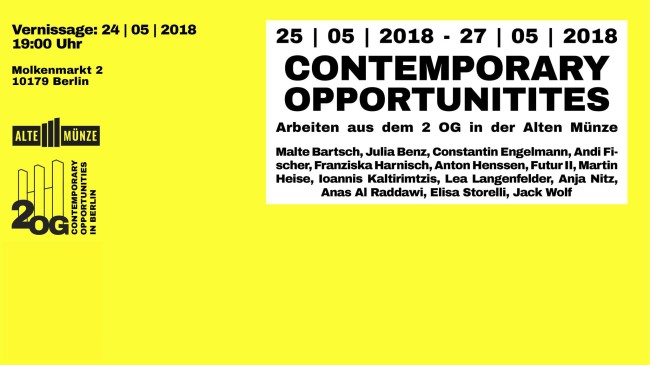
NOWs: Contemporary Opportunities
NOWs:
CONTEMPORARY OPPORTUNITIES - Arbeiten aus dem 2 OG
Opening: 24 | 05 | 2018 – 19:00 h
Alte Münze, Molkenmarkt 2, 10179 Berlin
2 OG is an experimental hub located in Berlin-Mitte, that provides creative work space for artists and scientists and creates a public program at its exhibition space at the area of the ancient ‘Alte Münze’. By doing this, 2 OG is the center of independent cultural production at Molkenmarkt 2 and always interested in developing the area and its diverse facilities as well as opening it for the public.
CONTEMPORARY OPPORTUNITIES shows an overview of the works from the artists residing at 2 OG in the fields of painting, sculpture, performance, media art, photography and research.
Participants: Malte Bartsch, Julia Benz, Constantin Engelmann, Andi Fischer, Franziska Harnisch, Anton Henssen, Futur II, Martin Heise, Ioannis Kaltirimtzis, Lea Langenfelder, Anja Nitz, Anas Al Raddawi, Elisa Storelli, Jack Wolf.
NOWs:
CONTEMPORARY OPPORTUNITIES - Arbeiten aus dem 2 OG
Opening: 24 | 05 | 2018 – 19:00 h
Alte Münze, Molkenmarkt 2, 10179 Berlin
2 OG is an experimental hub located in Berlin-Mitte, that provides creative work space for artists and scientists and creates a public program at its exhibition space at the area of the ancient ‘Alte Münze’. By doing this, 2 OG is the center of independent cultural production at Molkenmarkt 2 and always interested in developing the area and its diverse facilities as well as opening it for the public.
CONTEMPORARY OPPORTUNITIES shows an overview of the works from the artists residing at 2 OG in the fields of painting, sculpture, performance, media art, photography and research.
Participants: Malte Bartsch, Julia Benz, Constantin Engelmann, Andi Fischer, Franziska Harnisch, Anton Henssen, Futur II, Martin Heise, Ioannis Kaltirimtzis, Lea Langenfelder, Anja Nitz, Anas Al Raddawi, Elisa Storelli, Jack Wolf.
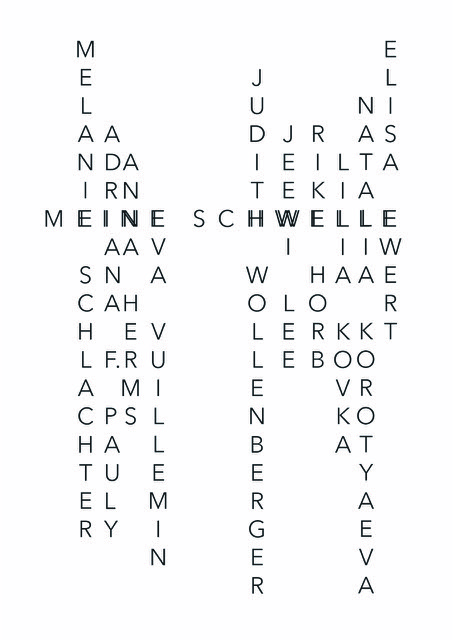
NOWs: Meine Schwelle
Meine SchwelleGroup Show
Schau Fenster – Raum für Kunst
Lobeckstr. 30-35
10969 Berlin
Opening
25 May 2018, 7 pm
Participating artists: Anna Herms, Elisa Ewert, Eva Vuillemin, Jeewi Lee, Judith Wollenberger, Lilia Kovka, Melanie Schlachter, Nathalia Korotyaeva, Rike Horb zusammengestellt von Elisa Ewert, Natalia Korotyaeva & Adriana F. Pauly
Read the essay on the exhibition by Adriana F. Pauly here
Meine SchwelleGroup Show
Schau Fenster – Raum für Kunst
Lobeckstr. 30-35
10969 Berlin
Eröffnung
25. Mai 2018, 19 Uhr
Participating artists: Anna Herms, Elisa Ewert, Eva Vuillemin, Jeewi Lee, Judith Wollenberger, Lilia Kovka, Melanie Schlachter, Nathalia Korotyaeva, Rike Horb zusammengestellt von Elisa Ewert, Natalia Korotyaeva & Adriana F. Pauly
Kurzessay zur Ausstellung von Adriana F. Pauly
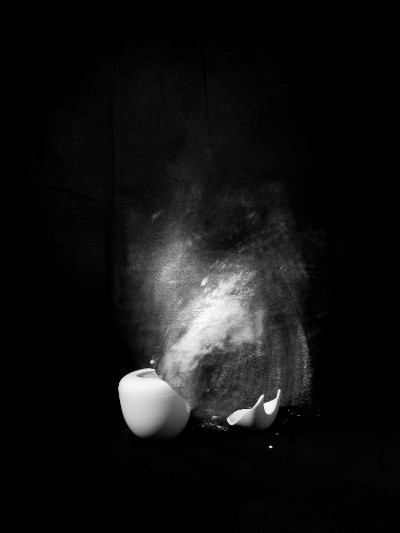
NOWs: Aufschlagen by Sophia Pompéry
NOWs:
SOPHIA POMPÉRY: AUFSCHLAGENBÄCKEREI, BERLIN
OPENING, Thursday, 17. May 2018 at 19h
Sophia Pompéry schlägt in der Bäckerei auf und konzipiert eine Ausstellung für die vorgefundene ehemalige Backstube, Wohnräume und Verkaufsflächen eines Bäckers.
Man kann Sahne aufschlagen, aber auch Wände. Man kann ein Buch aufschlagen, aber auch etwas hart zerschellen lassen, man kann an einem bestimmten Ort zu einerbestimmten Zeit aufschlagen, aber auch den Preis. Wie ein Konditor beispielsweise die Oberfläche einer Torte mit Schlagsahne oder Buttercreme überzieht und daraus Ornamente formt oder wie er die Oberfläche der Torte mit Formstücken aus Zucker oder Baisermasse dekoriert, so werden in der Architektur unter dem Begriff Zuckerbäckerstil analoge Verzierungen aus Stuck oder steinerne Dekor-Elemente auf der Fassade betrachtet. Sophia Pompérys Fotos und ortsspezifische Rauminstallationen sind genau das Gegenteil.
NOWs:
SOPHIA POMPÉRY: AUFSCHLAGENBÄCKEREI, BERLIN
OPENING, Thursday, 17. May 2018 at 19h
Sophia Pompéry schlägt in der Bäckerei auf und konzipiert eine Ausstellung für die vorgefundene ehemalige Backstube, Wohnräume und Verkaufsflächen eines Bäckers.
Man kann Sahne aufschlagen, aber auch Wände. Man kann ein Buch aufschlagen, aber auch etwas hart zerschellen lassen, man kann an einem bestimmten Ort zu einerbestimmten Zeit aufschlagen, aber auch den Preis. Wie ein Konditor beispielsweise die Oberfläche einer Torte mit Schlagsahne oder Buttercreme überzieht und daraus Ornamente formt oder wie er die Oberfläche der Torte mit Formstücken aus Zucker oder Baisermasse dekoriert, so werden in der Architektur unter dem Begriff Zuckerbäckerstil analoge Verzierungen aus Stuck oder steinerne Dekor-Elemente auf der Fassade betrachtet. Sophia Pompérys Fotos und ortsspezifische Rauminstallationen sind genau das Gegenteil.
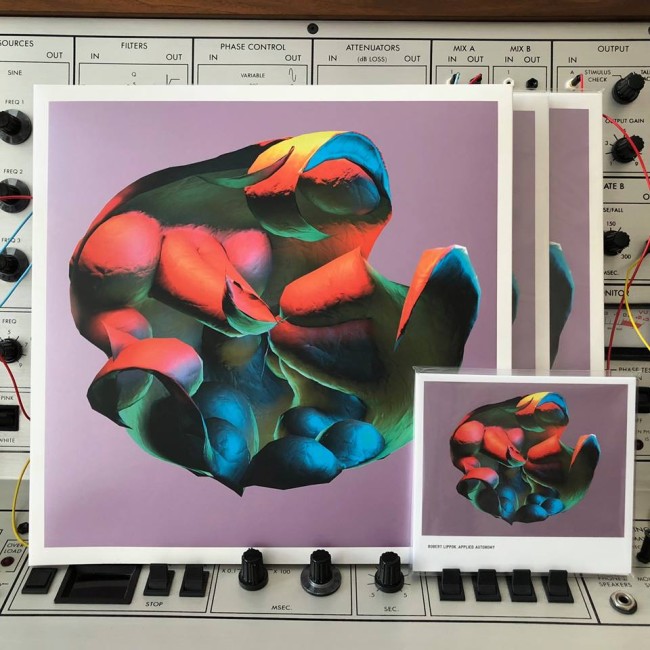
NOWs: Applied Autonomy by Robert Lippok
Applied AutonomyRecord Release
With »Redsuperstructure«, Robert Lippok created a new foundation for his musical endeavors. Now – 7 years later – this system properly comes to life on »Applied Autonomy«. The title of the new album is a clear indicator as to what the Berlin-based producer has been up to during the last couple of years, both on a conceptual level as well as how he molds his ideas into tracks.
»Applied Autonomy« orchestrates a certain state of frantic standstill, which occurs once a structure is set. Has this state been reached, the artist is free to focus on other equally important aspects, balancing the various shades, pushing ideas even further to really make them shine and blossom in their self-declared autonomy. The more light one lets in, the more layers become visible.
Layers are key when it comes to understanding »Applied Autonomy«. Big chunks of the material with which the album has been produced derive from sketches specifically made for a club performance. Rather than meticulously devising each and every detail, Lippok focussed instead on recording as many fragments as possible in a short period of time, elements which he could later combine and layer on stage. Based on this material and his experience experimenting with it in a live environment, the album slowly began to shape. An album culminating in a collaboration with Klara Lewis, with whom Lippok spent 2 days at the EMS studios in Stockholm, approaching the idea of autonomy from yet another angle. During the session, both musicians played and performed simultaneously, yet not explicitly together, lost in their own thoughts and ideas, only subconsciously taking in what the other one was coming up with. The result is »Aamtal«, 14 minutes of a constantly evolving state of poise, magically connecting all the dots Lippok had already defined as »Applied Autonomy«.
The artwork for »Applied Autonomy« has been created by the Berlin-based Argentinian artist Lucas Gutierrez. Over the last couple of years, he has made a name for himself with his spectacular AV performances.
Order online at Raster Media
Applied AutonomyRecord Release
With »Redsuperstructure«, Robert Lippok created a new foundation for his musical endeavors. Now – 7 years later – this system properly comes to life on »Applied Autonomy«. The title of the new album is a clear indicator as to what the Berlin-based producer has been up to during the last couple of years, both on a conceptual level as well as how he molds his ideas into tracks.
»Applied Autonomy« orchestrates a certain state of frantic standstill, which occurs once a structure is set. Has this state been reached, the artist is free to focus on other equally important aspects, balancing the various shades, pushing ideas even further to really make them shine and blossom in their self-declared autonomy. The more light one lets in, the more layers become visible.
Layers are key when it comes to understanding »Applied Autonomy«. Big chunks of the material with which the album has been produced derive from sketches specifically made for a club performance. Rather than meticulously devising each and every detail, Lippok focussed instead on recording as many fragments as possible in a short period of time, elements which he could later combine and layer on stage. Based on this material and his experience experimenting with it in a live environment, the album slowly began to shape. An album culminating in a collaboration with Klara Lewis, with whom Lippok spent 2 days at the EMS studios in Stockholm, approaching the idea of autonomy from yet another angle. During the session, both musicians played and performed simultaneously, yet not explicitly together, lost in their own thoughts and ideas, only subconsciously taking in what the other one was coming up with. The result is »Aamtal«, 14 minutes of a constantly evolving state of poise, magically connecting all the dots Lippok had already defined as »Applied Autonomy«.
The artwork for »Applied Autonomy« has been created by the Berlin-based Argentinian artist Lucas Gutierrez. Over the last couple of years, he has made a name for himself with his spectacular AV performances.
Order online at Raster Media
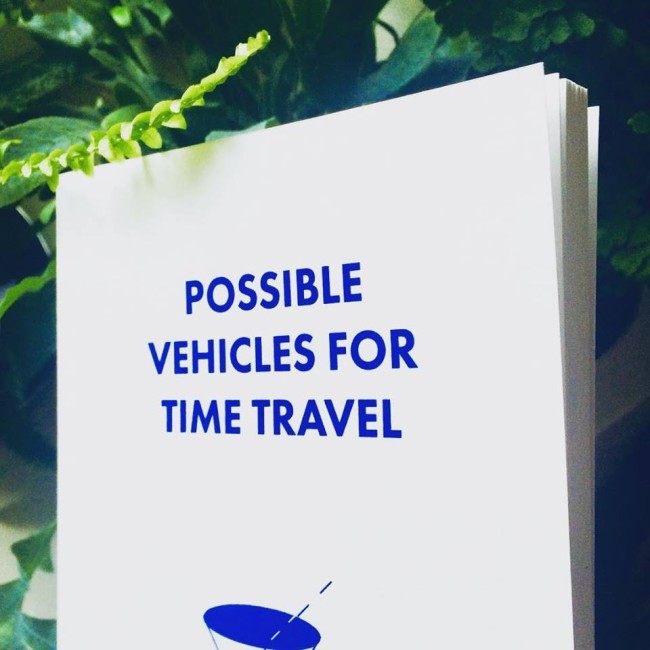
NOWs: Possible Vehicles For Time Travel by Ally Bisshop
NOWs:
Ally Bisshop: Possible Vehicles For Time Travel
Publication by Ally Bisshop
126 pages
Printed on a Risograph RZ2017
We make it
Berlin. Germany
NOWs:
Ally Bisshop: Possible Vehicles For Time Travel
Publication by Ally Bisshop
126 pages
Printed on a Risograph RZ2017
We make it
Berlin. Germany
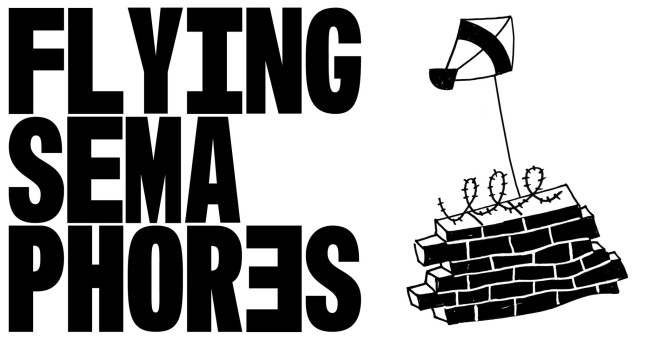
NOWs: Flying Semaphores & Floating Bridges by Raul Walch
NOWs:
Raul Walch: Flying Semaphores & Floating BridgesFloating University / Raumlaborberlin
Since 2015 Raul Walch has developed various flying objects together with refugees, during numerous visits in the area of the Greek borders: kites that fly across borders, or floating lighthouses, that reflect the sunlight to attract the attention of the coast guards and serve as an orientation mark. This workshop and action series will be continued this this year in Berlin.
Raul Walch invites the participants of Floating University as well as the inhabitants of the refugee shelter on the Tempelhof airfield and others interested, for his workshop and collective flying experiments. The polymorphic flying objects will float above the fences of the airfield and expand the floating university into the sky.
May 18 – 20, 11 am – 5 pm
Raul Walch continuously visited the Greek border areas where he developed various flying objects together with refugees.
Find more information at http://www.floatinguniversity.org/…/raul-walch-flying-sema…/
Please register at info@floatinguniversity.org
NOWs:
Raul Walch: Flying Semaphores & Floating BridgesFloating University / Raumlaborberlin
Since 2015 Raul Walch has developed various flying objects together with refugees, during numerous visits in the area of the Greek borders: kites that fly across borders, or floating lighthouses, that reflect the sunlight to attract the attention of the coast guards and serve as an orientation mark. This workshop and action series will be continued this this year in Berlin.
Raul Walch invites the participants of Floating University as well as the inhabitants of the refugee shelter on the Tempelhof airfield and others interested, for his workshop and collective flying experiments. The polymorphic flying objects will float above the fences of the airfield and expand the floating university into the sky.
May 18 – 20, 11 am – 5 pm
Raul Walch continuously visited the Greek border areas where he developed various flying objects together with refugees.
Find more information at http://www.floatinguniversity.org/…/raul-walch-flying-sema…/
Please register at info@floatinguniversity.org
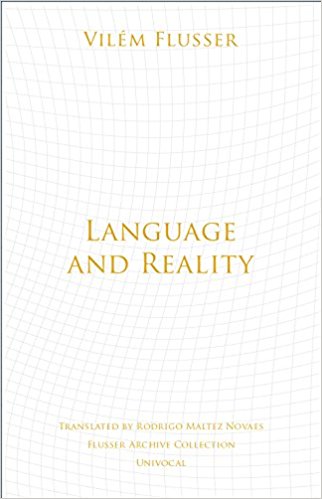
NOWs: Language and Reality by Vilém Flusser, translation by Rodrigo Maltez Novaes
NOWs:
Language and Reality by Vilém Flusser, translation by Rodrigo Maltez Novaes
In Language and Reality, originally published in São Paulo, Brazil, in 1963, Vilém Flusser continues his philosophical and theoretical exploration into language. He begins to postulate that language is not simply a map of the world but also the driving force for projecting worlds and enters then into a feedback with what is projected.
Flusser’s thesis leads him to claim, in a seemingly missed encounter of a dialogue with Wittgenstein, that language is not limited to its ontological and epistemological aspects but rather is at the service of its aesthetic. Traversing a diverse area of research and ruminations on cybernetics to poetry, music, the visual arts, religion, and mysticism, Language and Reality can be viewed as a vital transitional work in Flusser’s emerging thought that will eventually lead to his works in the 1970s and 1980s concerning what we would later consider media theory, design, and digital culture.
INTRODUCTION
1. LANGUAGE IS REALITY
1.1. Language Perceived From Without
1.2. Language Perceived From Within
1.3. The Multiplicity of Languages
1.4. On Translation
1.5. Current Distribution of Languages
1.6. Universal Languages
1.7. The limits of Translation
Conclusion
2. LANGUAGE SHAPES REALITY
2.1. Time
2.2. Activity and Passivity (Subjectivity and Objectivity)
2.3. Substance
2.4. Unity and Multiplicity
2.5. Causality
2.6. Being
2.7. Potentiality
2.8. Es
2.9. Portuguese as an Investigation Tool
Conclusion
3. LANGUAGE CREATES REALITY
3.1. Conversation and Small Talk
3.2. Poetry and Word Salad
3.3. Oration and Babbling
3.4. Amplified Language
3.4.1. Music
3.4.2. Visual Arts
3.5. Civilization
4. LANGUAGE PROPAGATES REALITY
4.1. History, Nature, Civilization
5. CONCLUSION: The Greater Conversation
NOWs:
Language and Reality by Vilém Flusser, translation by Rodrigo Maltez Novaes
In Language and Reality, originally published in São Paulo, Brazil, in 1963, Vilém Flusser continues his philosophical and theoretical exploration into language. He begins to postulate that language is not simply a map of the world but also the driving force for projecting worlds and enters then into a feedback with what is projected.
Flusser’s thesis leads him to claim, in a seemingly missed encounter of a dialogue with Wittgenstein, that language is not limited to its ontological and epistemological aspects but rather is at the service of its aesthetic. Traversing a diverse area of research and ruminations on cybernetics to poetry, music, the visual arts, religion, and mysticism, Language and Reality can be viewed as a vital transitional work in Flusser’s emerging thought that will eventually lead to his works in the 1970s and 1980s concerning what we would later consider media theory, design, and digital culture.
INTRODUCTION
1. LANGUAGE IS REALITY
1.1. Language Perceived From Without
1.2. Language Perceived From Within
1.3. The Multiplicity of Languages
1.4. On Translation
1.5. Current Distribution of Languages
1.6. Universal Languages
1.7. The limits of Translation
Conclusion
2. LANGUAGE SHAPES REALITY
2.1. Time
2.2. Activity and Passivity (Subjectivity and Objectivity)
2.3. Substance
2.4. Unity and Multiplicity
2.5. Causality
2.6. Being
2.7. Potentiality
2.8. Es
2.9. Portuguese as an Investigation Tool
Conclusion
3. LANGUAGE CREATES REALITY
3.1. Conversation and Small Talk
3.2. Poetry and Word Salad
3.3. Oration and Babbling
3.4. Amplified Language
3.4.1. Music
3.4.2. Visual Arts
3.5. Civilization
4. LANGUAGE PROPAGATES REALITY
4.1. History, Nature, Civilization
5. CONCLUSION: The Greater Conversation

NOWs: It matters what moves by Ally Bisshop
Image: Ally Bisshop, {~}, 2017, inkjet print on fibre rag, tete Berlin
NOWs:
Ally Bisshop: It matters what movesAD Space at UNSW Art & Design, Paddington, Australia
Finissage Party, Friday 04 May 2018, 6PM – 8PM
This exhibition by Ally Bisshop explores art’s potential to reinfect matter with memory, and to create openings to the ‘more-than-human’ movements active within an ecology of experience. It engages process philosopher Henri Bergson’s ideas about duration, matter, perception, intuition and fabulation as propositions for an artistic experimentation with matter’s movements. Active within and through the works are a suite of artistic ‘thresholding techniques’ for creating affective intervals of relation to more-than-human material intensities.
The Finissage Party will feature a performance by Jasmine Guffond, who will perform a new work that responds and plays with the exhibition. Carefully working with the resonant frequencies inherent to the architecture and objects within the space, Jasmine will explore the properties of sound as a vibrational force and consequently remind us that every object and every being, contains resonant frequencies that can be activated through sound.
–
Ally Bisshop’s research and practice seeks to activate the porous thresholds between matter, movement and temporality, where a certain kind of material sensitivity might be articulated. Working across the fields of expanded sculpture and experimental writing, her interest is less in crafting finished art forms than in staging encounters with open processes, threshold events, and zones of material indeterminacy. Born in Australia, Ally has lived and worked across Sydney and in Berlin since 2010. She studied at the Institut für Räumexperimente, UDK Berlin under Olafur Eliasson from 2010-2011, and will finalise her PhD in visual arts at UNSW Art & Design in 2018.
Image: Ally Bisshop, {~}, 2017, inkjet print on fibre rag, tete Berlin
NOWs:
Ally Bisshop: It matters what movesAD Space at UNSW Art & Design, Paddington, Australia
Finissage Party, Friday 04 May 2018, 6PM – 8PM
This exhibition by Ally Bisshop explores art’s potential to reinfect matter with memory, and to create openings to the ‘more-than-human’ movements active within an ecology of experience. It engages process philosopher Henri Bergson’s ideas about duration, matter, perception, intuition and fabulation as propositions for an artistic experimentation with matter’s movements. Active within and through the works are a suite of artistic ‘thresholding techniques’ for creating affective intervals of relation to more-than-human material intensities.
The Finissage Party will feature a performance by Jasmine Guffond, who will perform a new work that responds and plays with the exhibition. Carefully working with the resonant frequencies inherent to the architecture and objects within the space, Jasmine will explore the properties of sound as a vibrational force and consequently remind us that every object and every being, contains resonant frequencies that can be activated through sound.
–
Ally Bisshop’s research and practice seeks to activate the porous thresholds between matter, movement and temporality, where a certain kind of material sensitivity might be articulated. Working across the fields of expanded sculpture and experimental writing, her interest is less in crafting finished art forms than in staging encounters with open processes, threshold events, and zones of material indeterminacy. Born in Australia, Ally has lived and worked across Sydney and in Berlin since 2010. She studied at the Institut für Räumexperimente, UDK Berlin under Olafur Eliasson from 2010-2011, and will finalise her PhD in visual arts at UNSW Art & Design in 2018.
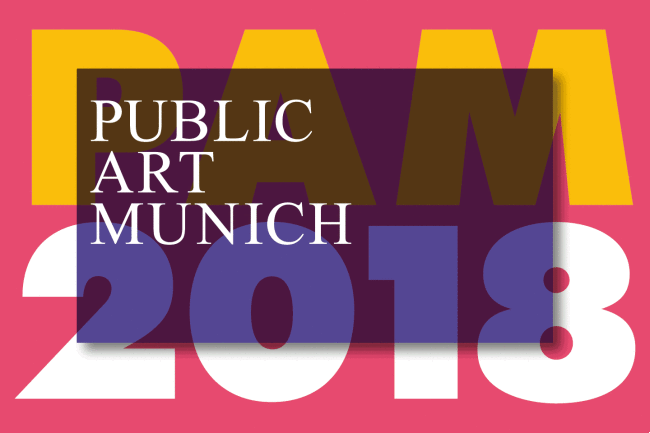
NOWs: PAM 2018 | PUBLIC ART MUNICH
Munich Olympic Stadium. Photo: Anders Eiebakke
NOWs:
PUBLIC ART MUNICH 2018: Game Changers
Opening: April 30
Munich Olympic Stadium
PAM 2018 (Public Art Munich) will launch with a grand opening on April 30 at the Munich Olympic Stadium and presents twenty time-based, performative commissions staged every weekend in multiple locations around the city through the end of July.
PAM 2018 is curated by Joanna Warsza and commissioned by the City of Munich.
Commissioned artists
Lawrence Abu HamdanCana Bilir-Meier, Anders Eiebakke, Leon Eixenberger, Massimo Furlan, Mariam Ghani, Flaka Haliti & Markus Miessen, Rudolf Herz & Julia Wahren, Alexander Kluge, Michaela Melián, Ari Benjamin Meyers, Dan Perjovschi, Alexandra Pirici & Jonas Lund, Olaf Nicolai, The 9th Futurological Congress/Julieta Aranda & Mareike Dittmer, Franz Wanner, Aleksandra Wasilkowska
Game changers
PAM 2018 addresses the mechanisms of change and the fundamental shifts taking place today from the vantage point of Munich—a city that has experienced tremendous ideological, sociopolitical, and symbolic turns of events. The commissioned art projects span this complex history, from the Bavarian Soviet Republic, postwar denazification, Radio Free Europe, May 1968, the optimism and tolerance of the Olympic Stadium, 1989, to the welcoming of refugees at Munich’s central station in 2015, to the impacts of digitalization, artificial intelligence, and the #MeToo movement. The question is not whether to take part but rather how to do so and on what terms. What should change and what shouldn’t?
PAM 2018 - An introduction by the curator Joanna Warsza
Opening week
On April 30, PAM 2018 commences at the Munich Olympic Stadium with Swiss performance artist Massimo Furlan’s re-enactment of the legendary 1974 football match between East and West Germany that ended with a score 1:0. The game will be performed by only two participants, one as Sepp Maier and one as Jürgen Sparwasser. Two original radio commentaries will accompany the match, returning football—this time as art—to the Olympic arena.
The opening day also features Warsaw-based architect Aleksandra Wasilkowska’s installation of a levitating ceiling entitled Gold for Natascha, Silver for Timofei. The exiled Russian hermit Timofei and his wife Natascha—both refugees in Munich after WWII—illegally constructed a joint Eastern Orthodox/Catholic church on the grounds of the future Olympic park. According to legend, it inspired the construction of the stadium’s floating roof and changed its top-down planning.
On May 1, the program continues with live drawing sessions by Dan Perjovschi at the MaximiliansForum; the presentations of Jonas Lund’s Facebook piece Hi Munich: This One is For You! with personalized messages that reach every city inhabitant and problematize the use of social media as a presumed public sphere; as well as the inauguration of the PAM Pavilion designed by Flaka Haliti and Markus Miessen and the discursive program curated by Gürsoy Doğtaş.
On May 4–5, the opening week concludes with the 24h concert-installation Music from a Frontier Town by Michaela Melián at Munich Amerikahaus—the first such institution in postwar Germany.
PAM 2018 unfolds in time, each weekend presenting commissioned, time-based, performative projects along with an accompanying discursive program. PAM 2018 is less interested in art in public space as a physical location, but rather seeks to address broader concepts of publicity, public opinion, common good, or public speech. PAM 2018 is interested in economizing attention on behalf of public interest rather than for monetary gain. PAM 2018 valorizes art that aspires to change the game by recontextualizing our points of view and, as a result, our actions.
PAM 2018 Pre-events
March 15, 11am: Press Conference, Munich
March 16, 7:30pm: Talk with Jonas Lund, Joanna Warsza and other guests at Spike Berlin
March 20, 8pm: Kasper König in conversation with Joanna Warsza, Münchner Kammerspiele
Please subscribe to our newsletter at pam2018.de
—
Joanna Warsza, born in 1976 in Warsaw is a curator working in the public realm, rather than museums. She is the head of CuratorLab at Konstfack University in Stockholm and has curated, among others, the Georgian pavilion at the 55th Venice Biennale and the public program of Manifesta 10 in St. Petersburg. Recently she has edited: I Can’t Work Like This: A Reader on Recent Boycotts and Contemporary Art (2017) and Empty Stages, Crowded Flats: Performativity as Curatorial Strategy (2017). Joanna Warsza lives and works in Berlin.
PAM, commissioned by the City of Munich, is Munich’s biggest public art program. It was launched in 2013 with A Space Called Public / Hoffentlich Öffentlich, curated by Elmgreen & Dragset
Munich Olympic Stadium. Photo: Anders Eiebakke
NOWs:
PUBLIC ART MUNICH 2018: Game Changers
Opening: April 30
Munich Olympic Stadium
PAM 2018 (Public Art Munich) will launch with a grand opening on April 30 at the Munich Olympic Stadium and presents twenty time-based, performative commissions staged every weekend in multiple locations around the city through the end of July.
PAM 2018 is curated by Joanna Warsza and commissioned by the City of Munich.
Commissioned artists
Lawrence Abu HamdanCana Bilir-Meier, Anders Eiebakke, Leon Eixenberger, Massimo Furlan, Mariam Ghani, Flaka Haliti & Markus Miessen, Rudolf Herz & Julia Wahren, Alexander Kluge, Michaela Melián, Ari Benjamin Meyers, Dan Perjovschi, Alexandra Pirici & Jonas Lund, Olaf Nicolai, The 9th Futurological Congress/Julieta Aranda & Mareike Dittmer, Franz Wanner, Aleksandra Wasilkowska
Game changers
PAM 2018 addresses the mechanisms of change and the fundamental shifts taking place today from the vantage point of Munich—a city that has experienced tremendous ideological, sociopolitical, and symbolic turns of events. The commissioned art projects span this complex history, from the Bavarian Soviet Republic, postwar denazification, Radio Free Europe, May 1968, the optimism and tolerance of the Olympic Stadium, 1989, to the welcoming of refugees at Munich’s central station in 2015, to the impacts of digitalization, artificial intelligence, and the #MeToo movement. The question is not whether to take part but rather how to do so and on what terms. What should change and what shouldn’t?
PAM 2018 - An introduction by the curator Joanna Warsza
Opening week
On April 30, PAM 2018 commences at the Munich Olympic Stadium with Swiss performance artist Massimo Furlan’s re-enactment of the legendary 1974 football match between East and West Germany that ended with a score 1:0. The game will be performed by only two participants, one as Sepp Maier and one as Jürgen Sparwasser. Two original radio commentaries will accompany the match, returning football—this time as art—to the Olympic arena.
The opening day also features Warsaw-based architect Aleksandra Wasilkowska’s installation of a levitating ceiling entitled Gold for Natascha, Silver for Timofei. The exiled Russian hermit Timofei and his wife Natascha—both refugees in Munich after WWII—illegally constructed a joint Eastern Orthodox/Catholic church on the grounds of the future Olympic park. According to legend, it inspired the construction of the stadium’s floating roof and changed its top-down planning.
On May 1, the program continues with live drawing sessions by Dan Perjovschi at the MaximiliansForum; the presentations of Jonas Lund’s Facebook piece Hi Munich: This One is For You! with personalized messages that reach every city inhabitant and problematize the use of social media as a presumed public sphere; as well as the inauguration of the PAM Pavilion designed by Flaka Haliti and Markus Miessen and the discursive program curated by Gürsoy Doğtaş.
On May 4–5, the opening week concludes with the 24h concert-installation Music from a Frontier Town by Michaela Melián at Munich Amerikahaus—the first such institution in postwar Germany.
PAM 2018 unfolds in time, each weekend presenting commissioned, time-based, performative projects along with an accompanying discursive program. PAM 2018 is less interested in art in public space as a physical location, but rather seeks to address broader concepts of publicity, public opinion, common good, or public speech. PAM 2018 is interested in economizing attention on behalf of public interest rather than for monetary gain. PAM 2018 valorizes art that aspires to change the game by recontextualizing our points of view and, as a result, our actions.
PAM 2018 Pre-events
March 15, 11am: Press Conference, Munich
March 16, 7:30pm: Talk with Jonas Lund, Joanna Warsza and other guests at Spike Berlin
March 20, 8pm: Kasper König in conversation with Joanna Warsza, Münchner Kammerspiele
Please subscribe to our newsletter at pam2018.de
—
Joanna Warsza, born in 1976 in Warsaw is a curator working in the public realm, rather than museums. She is the head of CuratorLab at Konstfack University in Stockholm and has curated, among others, the Georgian pavilion at the 55th Venice Biennale and the public program of Manifesta 10 in St. Petersburg. Recently she has edited: I Can’t Work Like This: A Reader on Recent Boycotts and Contemporary Art (2017) and Empty Stages, Crowded Flats: Performativity as Curatorial Strategy (2017). Joanna Warsza lives and works in Berlin.
PAM, commissioned by the City of Munich, is Munich’s biggest public art program. It was launched in 2013 with A Space Called Public / Hoffentlich Öffentlich, curated by Elmgreen & Dragset
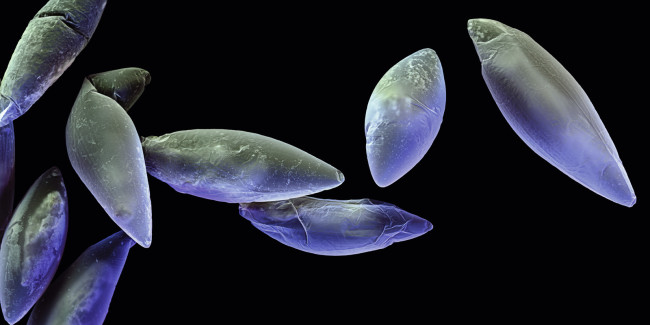
NOWs: Hybrid Matter by Andreas Greiner
NOWs:
Andreas Greiner: Hybrid Matterat DITTRICH & SCHLECHTRIEM
OPENING: FRIDAY, 27 APR, 6–9PM
For Gallery Weekend Berlin, Andreas Greiner has produced new works that reflect on how humans manipulate and redesign nature through genetic engineering, speculating on the future of mankind’s own genetic code. Characterizing Andreas Greiner’s work is his in-depth examination of the dissolving boarders between nature and technology. What is the meaning of nature in an age of digitalization and synthetic biology? The way in which we experience nature is defined by our prior knowledge and socialization, however what we experience in nature is changing rapidly. Human manipulation of evolutionary processes are posing ethically, socially, and ecologically critical questions which demand answers.
On entering the exhibition space one is welcomed by (insert title of artwork) a nickel-silver sculpture depicting cell division—a reproductive act and conceptual starting point of the exhibition. Sharing the same space, the work Edit Yourself KIT, a DIY Crisper Genome Engineering KIT which will allow one to manipulate their own genetics. The centrepiece of Greiner‘s exhibition is the sound installation The Molecular Ordering of Computational Plants, produced in collaboration with Tyler Friedman who authored the piece’s text and music. This science fiction audioplay reverberates within the main room of the gallery, composed of a luminicent aquarium and pulsating watertubes synchronised with the soundscape. Along the walls Greiner presents a new series of photographs showing miscroscopic images of algeas, titled Billions of Heart Beats Slowed Down into Synchronicity, as well as tumor cells, titled Hybrid Matter Studies and Panorama of a Landscape, realised with the scientist S. Diller.
“The works at the center of Andreas Greiner’s solo exhibition ‘Hybrid Matter’ constitute an epistemological conundrum. How sure are we of our fundamental convictions of life and death, right and wrong? Hanging in the dimmed exhibition space of Dittrich & Schlechtriem gallery are images of microscopic cellular clusters, magnified between a thousand and ten thousand times: clumps of human intestinal cancer tumor cells and spherical aggregates of Mycoplasma mycoides, the JCVI-syn3.0 strain of a synthetic bacteria created in the J. Craig Venter Institute. Greiner considers these pictures as portraits, like larger-than-life, celebratory depictions of individuals that have had an outsized impact on the public sphere. At work in these images, and troubled by them, are the moral and existential implications of portraiture. To represent an individual is to fix their likeness to a moment. From that point on, the individual carries out parallel lives: one propelled into continuous change, the other frozen; one guided by subjectivity, the other by the narrative interpretation of others.”
The excerpt above by Carson Chan will be featured in the exhibition catalogue that will be available in the gallery.
Andreas Greiner (b. Aachen, DE / 1979) currently lives and works in Berlin. Greiner studied medicine and later art at Universität der Bildenden Künste Dresden, then attended Universität der Künste Berlin in the class of Rebecca Horn and completed in 2013 with the class of Olafur Eliasson. Greiner studied with Eliasson at the Institut für Raumexperimente Berlin (2009). The artist’s works have been presented in numerous solo and group exhibitions in national and international institutions. In 2016 he was awarded with the GASAG Art Prize of the Berlinische Galerie, Berlin (Agency of the Exponent), and is thus included in the musuem‘s collection. This April 2018 the Kunstverein Heilbronn presents a solo exhibition with new a soundpiece and photographic work. Greiner‘s third monograph will be published later this year.
NOWs:
Andreas Greiner: Hybrid Matterat DITTRICH & SCHLECHTRIEM
ERÖFFNUNG: FREITAG, 27. APRIL, 18–21 UHR
Zum Gallery Weekend Berlin realisiert der in Berlin lebende Künstler Andreas Greiner neue Arbeiten, die Manipulation und Gestaltung von Natur durch gezielte Genveränderung thematisieren und einen spekulativen Blick in die Zukunft erlauben. Charakteristisch für Andreas Greiner ist die Auseinandersetzung mit der zunehmenden Auflösung der Grenzen zwischen Natur – Kultur/Technik. Was verstehen wir heute im Zeitalter der Digitalisierung und synthetischer Biologie unter Natur? Wie wir Natur erleben, hängt von unserem Vorwissen, unserer Kultivierung und Sozialisierung ab, aber auch was wir als Natur erleben, befindet sich in einem rasanten Umbruch. Menschliche Eingriffe in evolutionäre Zusammenhänge werfen ethische, sozialgesellschaftliche und ökologiekritische Fragen auf.
Die Treppe zum Ausstellungsraum herunterkommend steht eine in Neusilber gegossene Skulptur, die eine Zellteilung darstellt. Dieses Denkmal für den Reproduktionsakt bildet den Ausgangspunkt der Ausstellung. Im selben Raum hängt die Arbeit Edit Yourself KIT, ein DIY Crisper Genome Engineering KIT, mit dem man in der Lage sein soll, seine eigene Genetik zu manipulieren.
Das Hauptwerk der Ausstellung ist die in Zusammenarbeit mit dem Komponisten Tyler Friedman (Text und Musik) entstandene Soundinstallation The Molecular Ordering of Computational Plants, welche den sich verdunkelnden Hauptausstellungsraum der Galerie zum Resonanzkörper eines Sience-Fiction-Hörspiels macht, in dessen Einklang ein luminizierndes Aquarium und Wasserröhren pulsieren. Neue Serien von Fotografien an den Wänden zeigen Mikroskopaufnahmen von Algen (Billions of Heart Beats Slowed Down into Synchronicity) und Tumorzellen (Hybrid Matter Studies und Panorama of a Landscape), die mit Hilfe des Wissenschaftlers S. Diller realisiert worden sind.
„Die Arbeiten im Mittelpunkt von Andreas Greiners Einzelausstellung „Hybrid Matter“ geben ein Rätsel auf. Wie überzeugt sind wir von unseren grundlegenden Vorstellungen von Leben und Tod, von Richtig und Falsch? In der abgedunkelten Galerie hängen Bilder von mikroskopischen Zellen in 1.000 bis 10.000-facher Vergrößerung: Klumpen menschlicher Darmtumorzellen und kugelförmiger Ansammlungen von Mycoplasma mycoides, dem Stamm eines synthetischen Bakteriums aus dem J. Craig Venter Institute mit dem Namen JCVI-syn3.0. Greiner versteht diese Bilder als Porträts. Für ihn besteht kein grundlegender Unterschied zwischen ihnen und den überlebensgroßen Bildnissen, mit denen herausragende Individuen des öffentlichen Lebens gewürdigt werden. Diese Werke nutzen und problematisieren die ethischen und existenziellen Implikationen des Porträts als Gattung. Eine Person zu porträtieren heißt immer, ihr Abbild in einem Moment zu fixieren. Von nun an führt sie parallele Leben: Eines ist in unaufhaltsamem Wandel begriffen, das andere wie erstarrt; das eine durch Subjektivität bestimmt, das andere durch die Erzählungen, mit denen Dritte es deuten.“
Der oben stehende Textauszug stammt aus dem Essay von Carson Chan, welcher in dem begleitenden Katalog veröffentlicht wird.
Andeas Greiner (geb. Aachen, DE / 1979) lebt und arbeitet in Berlin. Nach anfänglichem Studium der Medizin studierte er an der Hochschule für Bildende Künste in Dresden und schließlich an der Universität der Künste Berlin bei Rebecca Horn und von 2012 -2013 als Meisterschüler im Institut für Raumexperimente bei Olafur Eliasson. Seine Arbeit wurde in zahlreichen Einzel- und Gruppenausstellungen in sowohl nationalen als auch internationalen Institutionen gezeigt. 2016 wurde Greiner mit dem GASAG Kunstpreis der Berlinischen Galerie ausgezeichnet, in deren Sammlung er ebenfalls vertreten ist. Diesen April eröffnete der Kunstverein Heilbronn eine Einzelausstellung mit Andreas Greiner, die eine neue Soundinstallation und Fotoarbeiten präsentiert. Ende des Jahres wird die dritte Künstlermonografie zu Greiners Werk publiziert.
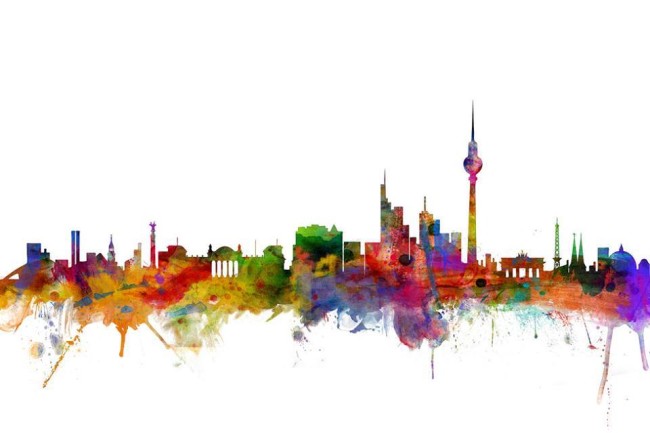
NOWs: Re-Imagining Berlin with Yves Mettler a.o.
NOWs:
Re-Imagining Berlin
Noize Fabrik
Elsenstr. 52, 12059 Berlin
Saturday, 28.4.2018, 7 – 11 pm
Doors open at 7 pm
Show starts at 7.30 pm
–
“I was not born of city, but I will most certainly die in its arms. It is the least I can do, after it has moulded and cuddled me all these torrid years”.
Berlin is more than concrete, it is a revolving and evolving cut and pasted being. As we shift and shuffle along its many pathways we imprint upon it our own mark, but let it not be underestimated the extent to which it itself imprints upon our souls.
–
‘Re-imagining Berlin’ will showcase the work of some amazingly talented artists. These include spoken word dancers, comedians, dancers, photographers and visual artists. In their own unique language they collaborate to explore the importance and necessity of re-imagining Berlin.
–
The “Re-imagining” series is an effort to explore different perspectives and to un-box and de-box our approaches to key societal issues. It seeks to underscore the importance of unpacking polarisations and cyclical patterns and radically re-think how we address, tackle and perceive these all-important challenges.
–
Performers:
Alexis Smith
Angela Fegers
Cedric Till
Elena Francalanci
Katie Kelly
Michael Priebe
Robin Czerny
Soar
Yusuf Rieger
Yves Mettler
This will be a BYOB event. There is a Späti located at the entrance to the venue. The bar at the venue will only be serving non-alcoholic beverages.
Tickets 7 Euros at the door before 7.30 pm,
10 Euros thereafter
NOWs:
Re-Imagining Berlin
Noize Fabrik
Elsenstr. 52, 12059 Berlin
Saturday, 28.4.2018, 7 – 11 pm
Doors open at 7 pm
Show starts at 7.30 pm
–
“I was not born of city, but I will most certainly die in its arms. It is the least I can do, after it has moulded and cuddled me all these torrid years”.
Berlin is more than concrete, it is a revolving and evolving cut and pasted being. As we shift and shuffle along its many pathways we imprint upon it our own mark, but let it not be underestimated the extent to which it itself imprints upon our souls.
–
‘Re-imagining Berlin’ will showcase the work of some amazingly talented artists. These include spoken word dancers, comedians, dancers, photographers and visual artists. In their own unique language they collaborate to explore the importance and necessity of re-imagining Berlin.
–
The “Re-imagining” series is an effort to explore different perspectives and to un-box and de-box our approaches to key societal issues. It seeks to underscore the importance of unpacking polarisations and cyclical patterns and radically re-think how we address, tackle and perceive these all-important challenges.
–
Performers:
Alexis Smith
Angela Fegers
Cedric Till
Elena Francalanci
Katie Kelly
Michael Priebe
Robin Czerny
Soar
Yusuf Rieger
Yves Mettler
This will be a BYOB event. There is a Späti located at the entrance to the venue. The bar at the venue will only be serving non-alcoholic beverages.
Tickets 7 Euros at the door before 7.30 pm,
10 Euros thereafter
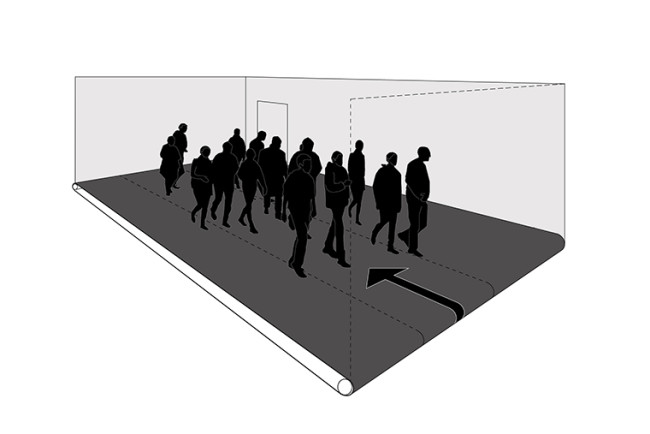
NOWs: Immer noch der Lauf der Dinge by Julius von Bismarck
Julius von Bismarck, Tiere sind Engel mit Fell, 2018, video still
NOWs:
Julius von Bismarck: Immer noch der Lauf der Dingealexander levy
Opening: Friday, Apr 27, 2018 | 6–9 pm
Opening hours during Gallery Weekend Berlin:
Saturday, Apr 28 + Sunday, Apr 29 | 11 am – 7 pm
During the Gallery Weekend Berlin, Julius von Bismarck invites gallery visitors to become part of his artistic research process. One Solution Revolution: the entire floor of the gallery is being converted into a treadmill – it will be impossible to view the works at a standstill because the virtual standstill can only be achieved by uniform movement. Visitors are encouraged to experience the endless movement, albeit not alone, but collectively at the same pace.
The never-ending movement is already familiar in von Bismarck’s work. But in the performance Ecocentric System (2015) it was the artist himself who spent nearly a week sitting on a concrete wheel that turned so fast around his own axis, that for him the outside world was barely recognizable. The artist, surrounded by people, could hardly perceive the world outside his system and inevitably everything began to revolve around himself. Now there is a change of perspective and von Bismarck takes the audience into view. It creates a whole new viewing situation that does not tolerate passivity. Additionally Julius von Bismarck’s new video series Tiere sind Engel mit Fell is on view.
Julius von Bismarck, Tiere sind Engel mit Fell, 2018, video still
NOWs:
Julius von Bismarck: Immer noch der Lauf der Dingealexander levy
Opening: Friday, Apr 27, 2018 | 6–9 pm
Opening hours during Gallery Weekend Berlin:
Saturday, Apr 28 + Sunday, Apr 29 | 11 am – 7 pm
During the Gallery Weekend Berlin, Julius von Bismarck invites gallery visitors to become part of his artistic research process. One Solution Revolution: the entire floor of the gallery is being converted into a treadmill – it will be impossible to view the works at a standstill because the virtual standstill can only be achieved by uniform movement. Visitors are encouraged to experience the endless movement, albeit not alone, but collectively at the same pace.
The never-ending movement is already familiar in von Bismarck’s work. But in the performance Ecocentric System (2015) it was the artist himself who spent nearly a week sitting on a concrete wheel that turned so fast around his own axis, that for him the outside world was barely recognizable. The artist, surrounded by people, could hardly perceive the world outside his system and inevitably everything began to revolve around himself. Now there is a change of perspective and von Bismarck takes the audience into view. It creates a whole new viewing situation that does not tolerate passivity. Additionally Julius von Bismarck’s new video series Tiere sind Engel mit Fell is on view.
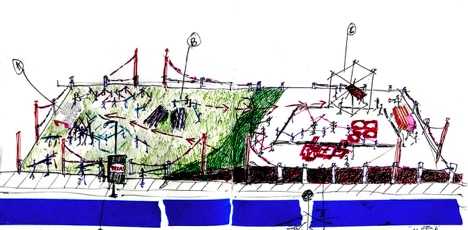
NOWs: Dwell in Other Futures
NOWs:
Dwell in Other Futuresat the Pulitzer Arts Foundation, St. Louis, USA
Dwell in Other Futures is a two-day festival of art and ideas exploring the collisions of race, urbanism, and futurism, providing a platform for alternate visions of the St. Louis to come. Launching Friday, April 27 at the Kranzberg Art Foundation’s .ZACK arts facility, Dwell in Other Futures will continue at the Pulitzer Arts Foundation on Saturday, April 28.
–
Eric Ellingsen and Species of Space:The earth is blue like an orange greenway
Public performance: April 28, 1-2pm at the Pulitzer Foundation, PXSTL site (field across from the Pulitzer Foundation)
The earth is blue like an orange greenway is (1) a social engagement design experiment (2) a communication process for citizen based co-design agency (3) a ceremony welcoming the coming of the St Louis Chouteau Greenway.
Landscape design is an art form that co-produces knowledge, memories and stories through performance, perception and participation. When the design of our public spaces is inclusive, it becomes democracy in action. Civic values are spatialized and can be negotiated as a material dialogue articulated through critically oriented play.
You are invited to co-materialize a spatial design ritual welcoming the St. Louis Chouteau Greenway.
ALL SPECIES ARE WELCOME. MAY GET MESSEY.
Invitation to make statements
Two ‘speakers platforms’ will be set up as social infrastructure in the PXSTL site across from the Pulitzer Foundation. Each platform will be provided with a bullhorn. Everyone is invited to make statements up to 3 minutes in length. The statements should be oriented around the topic of LAND, LANDSCAPE, or LANGUAGE. This can be playful, political, philosophic or poetic.
Statement Examples: back-yard stories, bird encounters, nature play-grounds, gardens, forging, food recipes, landfills and lead, memories of Mill Creek Valley, trampoline beings, basketball courts, fishing holes, prairies burns, scientific studies, utility markings, milkweed and monarchs, monarchs, mounds, leaves of grass, SOS’s, future speculations on storm water and trickles, anything to do with the Commons.
You are invited to make a statement.
Please bring poems, songs, something to read, something prepared, something improvised.
All ages welcome.
All species welcome.
If you would like to make a statement and don’t feel like there is time to prepare a statement, poems and lyrical fragments will be provided.
NOWs:
Dwell in Other Futuresat the Pulitzer Arts Foundation, St. Louis, USA
Dwell in Other Futures is a two-day festival of art and ideas exploring the collisions of race, urbanism, and futurism, providing a platform for alternate visions of the St. Louis to come. Launching Friday, April 27 at the Kranzberg Art Foundation’s .ZACK arts facility, Dwell in Other Futures will continue at the Pulitzer Arts Foundation on Saturday, April 28.
–
Eric Ellingsen and Species of Space:The earth is blue like an orange greenway
Public performance: April 28, 1-2pm at the Pulitzer Foundation, PXSTL site (field across from the Pulitzer Foundation)
The earth is blue like an orange greenway is (1) a social engagement design experiment (2) a communication process for citizen based co-design agency (3) a ceremony welcoming the coming of the St Louis Chouteau Greenway.
Landscape design is an art form that co-produces knowledge, memories and stories through performance, perception and participation. When the design of our public spaces is inclusive, it becomes democracy in action. Civic values are spatialized and can be negotiated as a material dialogue articulated through critically oriented play.
You are invited to co-materialize a spatial design ritual welcoming the St. Louis Chouteau Greenway.
ALL SPECIES ARE WELCOME. MAY GET MESSEY.
Invitation to make statements
Two ‘speakers platforms’ will be set up as social infrastructure in the PXSTL site across from the Pulitzer Foundation. Each platform will be provided with a bullhorn. Everyone is invited to make statements up to 3 minutes in length. The statements should be oriented around the topic of LAND, LANDSCAPE, or LANGUAGE. This can be playful, political, philosophic or poetic.
Statement Examples: back-yard stories, bird encounters, nature play-grounds, gardens, forging, food recipes, landfills and lead, memories of Mill Creek Valley, trampoline beings, basketball courts, fishing holes, prairies burns, scientific studies, utility markings, milkweed and monarchs, monarchs, mounds, leaves of grass, SOS’s, future speculations on storm water and trickles, anything to do with the Commons.
You are invited to make a statement.
Please bring poems, songs, something to read, something prepared, something improvised.
All ages welcome.
All species welcome.
If you would like to make a statement and don’t feel like there is time to prepare a statement, poems and lyrical fragments will be provided.
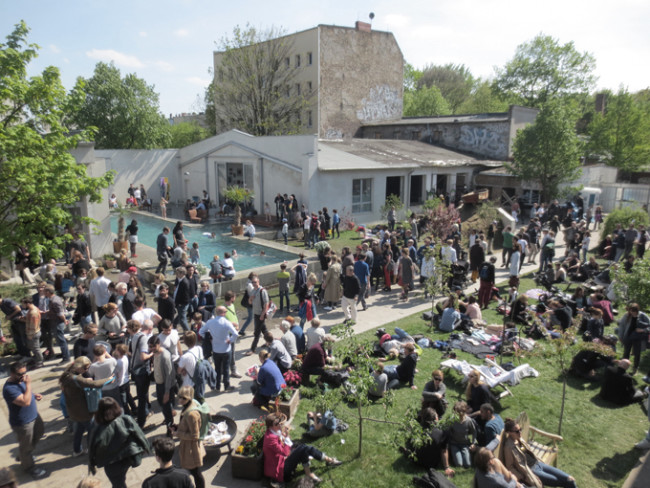
NOWs: NGORO NGORO II
N G O R O N G O R . A r t i s t We e k e n d B e r l i n 2 0 1 5 © Artist Weekend 2015
NOWs:
NGORO NGORO IIArtist Weekend, Berlin
Lehderstrasse 34 / Berlin
EXHIBITION OPENING
Thursday 26 April 2018 / 10 am – midnight
EXHIBITION OPENING HOURS
Thursday 26 April, Friday 27 April, Saturday 28 April, Sunday 29 April 2018 / 10 am – midnight
A 4 day exhibition, which this year hosts over 150 artists, including:
Christian Achenbach, Etel Adnan, Johannes Albers, Roger Ballen, Maxime Ballesteros, Ali Banisadr, Georg Baselitz, Marcus Bastel, Marius Bercea, Stefan Berchtold, Bienert & von Gumppenberg, Matthias Bitzer, Andreas Blank, Simon Blume, John Bock, Katia Bourdarel, Nick Brandt, GL Brierley, Jonas Burgert, Cambodia 10th c. unknow, James Capper, Carmen Catuti, Carla Chan, Jake & Dinos Chapman, Mat Collishaw, George Condo, Jigger Cruz, Marina Cruz, Johannes Daniel, Birgit Dieker, Nathalie Djurberg, Uros Djurovic, Tjorg Douglas Beer, Peter Duka, Marlene Dumas, Zhivago Duncan, Kerstin Dzewior, Martin Eder, Tim Eitel, Ida Ekblad, Elmgreen & Dragset, Thomas Feuerstein, Amira Fritz, Ingo Fröhlich, Christopher Füllemann, Gilbert & George, Andrej Golder, Monika Grabuschnigg, Cecilia Granara, Philip Grözinger, Katharina Grosse, F.C. Gundlach, Stefanie Gutheil, Hannah Hallermann, Blalla W. Hallmann, Stella Hamberg, Siobhán Hapaska, Jens Hausmann, Aaron Hawks, Axel Heil, Uwe Henneken, Anton Henning, Nathanaëlle Herbelin, Gregor Hildebrandt, Stefanie Hillich, Petra Höcker, Ull Hohn, Christian Hoosen, Andy Hope 1930, Rachel Howard, John Isaacs, Michael Joo, Daniel Josefsohn, Jürgen Klauke, Jean Yves Klein, Wilhelm Klotzek, Yulia Kosulnikova, Alicja Kwade, Cyrill Lachauer, James Lavelle, Gonzalo Lebrija, Jeewi Lee, Antoine Le Grand, Daniel Lergon, Klara Lidén, Marin Majić, Mark Manders, Kylie Manning, Teresa Margolles, Paul McCarthy, Dominic McGill, Dirk Meinzer, Bjørn Melhus, Isa Melsheimer, Ryan Mendoza, Marilyn Minter, Polly Morgan, Andreas Mühe, Konrad Mühe, Maria Naidyonova, NASA / Edgar Mitchell, Bruce Nauman, Sebastian Nebe, Shirin Neshat, David Nicholson, Tim Noble & Sue Webster, David Ostrowski, SeungMo Park, Manfred Pernice, Danielle de Picciotto & Alexander Hacke, Sophia Pompéry, Fritz Poppenberg, Sven Potschien, Hannu Prinz, Thomas Rentmeister, Anselm Reyle, Robin Rhode, Stefan Rinck, Julian Röder, Madeleine Roger-Lacan, Julian Rosefeldt, Michael Sailstorfer, Anri Sala, Michael Samuels, Fette Sans, Lawrence Schiller, Moritz Schleime, Oskar Schmidt, Andreas Schmitten, Kerstin Schröder, Taras Sereda, Viveek Sharma, Florian Slotawa, Paul Sochacki, Aleen Solari, Jan-Peter E.R. Sonntag, Andrea Stappert, Jonny Star, John Stark, Peter Stauss, Marie Steinmann, Eva Teppe, The Silk Road Symphony, Orchestra / Jan Moritz Onken, P E Thomas, Betty Tompkins, Philip Topolovac, Peter Torp, Nasan Tur, Timm Ulrichs, Ludwig Vandevelde, Sandra Vásquez de la Horra, Bill Viola, Herbert Volkmann, Von Spar, Wiebke Maria Wachmann, Reijiro Wada, Anna Wagner, Nick Waplington, Wermke / Leinkauf, Pete Wheeler, James White, Patrick Will & Caspar Wülfing, Sislej Xhafa, He Xiangyu, Thomas Zipp, Zon.
For the period of Berlin gallery weekend 2018 and the second time in its history, the 6000 square meter studio spaces of Lehderstrasse 34 will host an incredibly diverse exhibition of paintings, sculpture, multimedia, installation, film and photography. Artists invite other artists to exhibit in the context of this studio environment, thus returning the viewer to the very place of art’s genesis.
N G O R O N G O R . A r t i s t We e k e n d B e r l i n 2 0 1 5 © Artist Weekend 2015
NOWs:
NGORO NGORO IIArtist Weekend, Berlin
Lehderstrasse 34 / Berlin
EXHIBITION OPENING
Thursday 26 April 2018 / 10 am – midnight
EXHIBITION OPENING HOURS
Thursday 26 April, Friday 27 April, Saturday 28 April, Sunday 29 April 2018 / 10 am – midnight
A 4 day exhibition, which this year hosts over 150 artists, including:
Christian Achenbach, Etel Adnan, Johannes Albers, Roger Ballen, Maxime Ballesteros, Ali Banisadr, Georg Baselitz, Marcus Bastel, Marius Bercea, Stefan Berchtold, Bienert & von Gumppenberg, Matthias Bitzer, Andreas Blank, Simon Blume, John Bock, Katia Bourdarel, Nick Brandt, GL Brierley, Jonas Burgert, Cambodia 10th c. unknow, James Capper, Carmen Catuti, Carla Chan, Jake & Dinos Chapman, Mat Collishaw, George Condo, Jigger Cruz, Marina Cruz, Johannes Daniel, Birgit Dieker, Nathalie Djurberg, Uros Djurovic, Tjorg Douglas Beer, Peter Duka, Marlene Dumas, Zhivago Duncan, Kerstin Dzewior, Martin Eder, Tim Eitel, Ida Ekblad, Elmgreen & Dragset, Thomas Feuerstein, Amira Fritz, Ingo Fröhlich, Christopher Füllemann, Gilbert & George, Andrej Golder, Monika Grabuschnigg, Cecilia Granara, Philip Grözinger, Katharina Grosse, F.C. Gundlach, Stefanie Gutheil, Hannah Hallermann, Blalla W. Hallmann, Stella Hamberg, Siobhán Hapaska, Jens Hausmann, Aaron Hawks, Axel Heil, Uwe Henneken, Anton Henning, Nathanaëlle Herbelin, Gregor Hildebrandt, Stefanie Hillich, Petra Höcker, Ull Hohn, Christian Hoosen, Andy Hope 1930, Rachel Howard, John Isaacs, Michael Joo, Daniel Josefsohn, Jürgen Klauke, Jean Yves Klein, Wilhelm Klotzek, Yulia Kosulnikova, Alicja Kwade, Cyrill Lachauer, James Lavelle, Gonzalo Lebrija, Jeewi Lee, Antoine Le Grand, Daniel Lergon, Klara Lidén, Marin Majić, Mark Manders, Kylie Manning, Teresa Margolles, Paul McCarthy, Dominic McGill, Dirk Meinzer, Bjørn Melhus, Isa Melsheimer, Ryan Mendoza, Marilyn Minter, Polly Morgan, Andreas Mühe, Konrad Mühe, Maria Naidyonova, NASA / Edgar Mitchell, Bruce Nauman, Sebastian Nebe, Shirin Neshat, David Nicholson, Tim Noble & Sue Webster, David Ostrowski, SeungMo Park, Manfred Pernice, Danielle de Picciotto & Alexander Hacke, Sophia Pompéry, Fritz Poppenberg, Sven Potschien, Hannu Prinz, Thomas Rentmeister, Anselm Reyle, Robin Rhode, Stefan Rinck, Julian Röder, Madeleine Roger-Lacan, Julian Rosefeldt, Michael Sailstorfer, Anri Sala, Michael Samuels, Fette Sans, Lawrence Schiller, Moritz Schleime, Oskar Schmidt, Andreas Schmitten, Kerstin Schröder, Taras Sereda, Viveek Sharma, Florian Slotawa, Paul Sochacki, Aleen Solari, Jan-Peter E.R. Sonntag, Andrea Stappert, Jonny Star, John Stark, Peter Stauss, Marie Steinmann, Eva Teppe, The Silk Road Symphony, Orchestra / Jan Moritz Onken, P E Thomas, Betty Tompkins, Philip Topolovac, Peter Torp, Nasan Tur, Timm Ulrichs, Ludwig Vandevelde, Sandra Vásquez de la Horra, Bill Viola, Herbert Volkmann, Von Spar, Wiebke Maria Wachmann, Reijiro Wada, Anna Wagner, Nick Waplington, Wermke / Leinkauf, Pete Wheeler, James White, Patrick Will & Caspar Wülfing, Sislej Xhafa, He Xiangyu, Thomas Zipp, Zon.
For the period of Berlin gallery weekend 2018 and the second time in its history, the 6000 square meter studio spaces of Lehderstrasse 34 will host an incredibly diverse exhibition of paintings, sculpture, multimedia, installation, film and photography. Artists invite other artists to exhibit in the context of this studio environment, thus returning the viewer to the very place of art’s genesis.
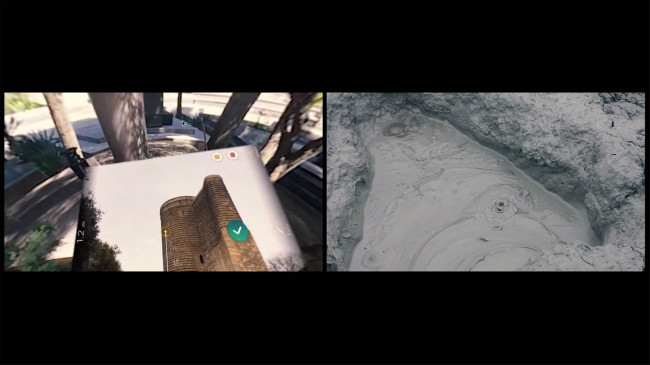
NOWs: Unthought Known at YARAT Contemporary Art Space
Clara Jo: Temporal Shifts, 2018 (stilll)
NOWs:
Unthought Known with works by Hiba Farhat, Clara Jo and Ehtiram Jabiat YARAT Contemporary Art Space, ARTIM Project Space Old City, Baku, Azerbaijan
YARAT Contemporary Art Space is pleased to announce the exhibition “Unthought Known” with works by YARAT residents Hiba Farhat (USA/Lebanon), Clara Jo (USA/ Germany) and Ehtiram Jabi (Azerbaijan).
The term “Unthought Known” refers to a psychological concept of knowledge that the individual person is not actively aware of. The “unthought” stands for early-learned schemata of interpreting the objective world; it can be shaped by early experiences, traumas or dreams that unconsciously determine our perception and actions. In the exhibition the works approach subjects that deconstruct repetitive structures such as memory, history, language questioning concepts of perception, knowledge and reality.
Clara Jo’s short film “Temporal Shifts” excavates the layers of history embedded within various mnemonic and architectural landscapes in and around Baku. Behind these ancient and modern facades, narratives are derived and accumulated via the natural and artificial materials that make up the city. Contrasting grand architectural gestures against the prosaic, the film interrogates how the modern production of spaces preserves identity, yet also has the capacity to generate cultural amnesia.
–
Address
ARTIM Project Space Old City (Icherisheher) Boyuk Gala Street 30, Baku, Azerbaijan
Working hours: Tuesday – Sunday, 12 pm – 8 pm
Admission is free
For more information: +994125051414
–
Clara Jo: Temporal Shifts, 2018 (installation view)
Clara Jo: Temporal Shifts, 2018 (stilll)
NOWs:
Unthought Known with works by Hiba Farhat, Clara Jo and Ehtiram Jabiat YARAT Contemporary Art Space, ARTIM Project Space Old City, Baku, Azerbaijan
YARAT Contemporary Art Space is pleased to announce the exhibition “Unthought Known” with works by YARAT residents Hiba Farhat (USA/Lebanon), Clara Jo (USA/ Germany) and Ehtiram Jabi (Azerbaijan).
The term “Unthought Known” refers to a psychological concept of knowledge that the individual person is not actively aware of. The “unthought” stands for early-learned schemata of interpreting the objective world; it can be shaped by early experiences, traumas or dreams that unconsciously determine our perception and actions. In the exhibition the works approach subjects that deconstruct repetitive structures such as memory, history, language questioning concepts of perception, knowledge and reality.
Clara Jo’s short film “Temporal Shifts” excavates the layers of history embedded within various mnemonic and architectural landscapes in and around Baku. Behind these ancient and modern facades, narratives are derived and accumulated via the natural and artificial materials that make up the city. Contrasting grand architectural gestures against the prosaic, the film interrogates how the modern production of spaces preserves identity, yet also has the capacity to generate cultural amnesia.
–
Address
ARTIM Project Space Old City (Icherisheher) Boyuk Gala Street 30, Baku, Azerbaijan
Working hours: Tuesday – Sunday, 12 pm – 8 pm
Admission is free
For more information: +994125051414
–
Clara Jo: Temporal Shifts, 2018 (installation view)
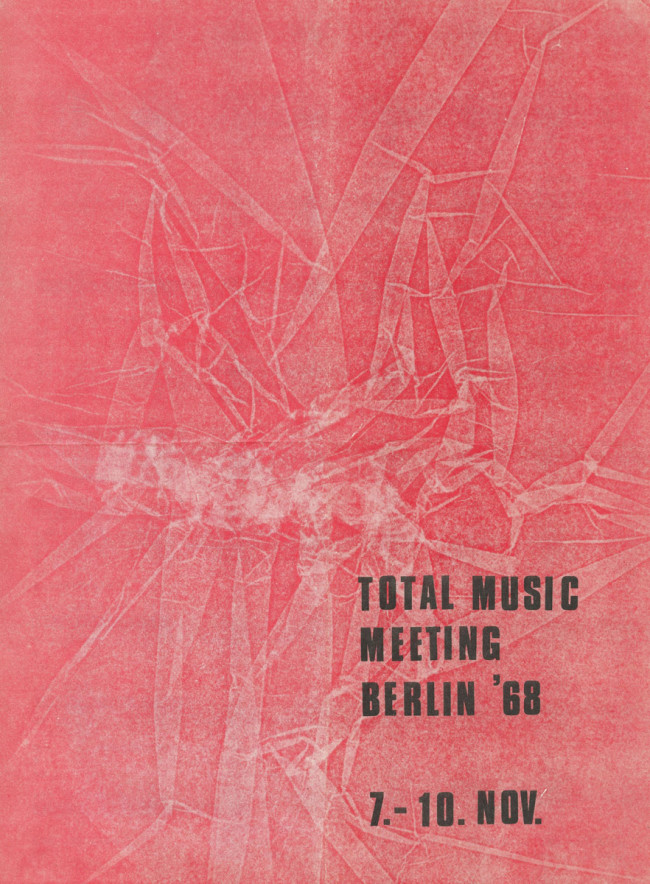
NOWs: Ornament & Verbrechen – Concert
Audience at the workshop Freie Musik (Free Music), Akademie der Künste/Berlin, 1970 Photo: Werner Bethsold © Werner Bethsold/FMP-Publishing
NOWs:
Underground und Improvisation. Alternative music and art after 1968
Akademie der Künste
Hanseatenweg 10
10557 Berlin
Opening
Wednesday, 14 March 2018, 7 pm
with Jeanine Meerapfel, Nele Hertling, Markus Müller and Jarosław Suchan. In German and English
Exhibitions, Concerts, Discourse
15 March – 6 May 2018
Find full program here.
—
Tuesday, 24 April 2018
6 pm
DISCOURSE: Books ReBoostert
Performance Lecture: Arnold Dreyblatt, Jan Faktor
In German
8 pm
CONCERT: Ornament & Verbrechen
Robert Lippok, Ronald Lippok
Ticket € 13/7
Founded by brothers Robert and Ronald Lippok in East Germany the 1980s, Ornament & Verbrechen never saw themselves as a conventional band that followed only one artistic concept. Instead, they opted for openness, for different styles – such as jazz, industrial or electronic – or even different, partly multimedia implementations of their projects, as is reflected in the band’s ever-changing line-up and its many different pseudonyms. Using basic equipment and partly self-built instruments, sounds were created – a conscious counter-concept to the contemporary mainstream.
—
Two exhibitions on the themes of underground and improvisation, held from 15 March to 6 May 2018 in the Akademie building on Hanseatenweg, will focus on the alternative music and art movements in East and West, from the student revolts of the Prague Spring to the period after the fall of the Iron Curtain in Berlin and eastern Europe. The extensive supporting programme consists of a series of concerts, film showings, panel discussions and an interdisciplinary symposium.
The exhibition “Notes from the Underground – Alternative Art and Music in Eastern Europe 1968–1994” commemorates a generation of artists that occupied the interface between performance art, video art and experimental music, deliberately eschewing official culture. Censorship and scarcity produced richly imaginative and frequently ironic types of work. The exhibition presents a selection of contemporary testimonies, some for the first time, including musical instruments fashioned by the artists themselves, Super 8 films, Samizdat magazines and documentary recordings of performances.
The exhibition “Free Music Production / FMP: The Living Music” traces the history of Free Music Production (1968–2010), the Berlin platform for the production, presentation and documentation of free music, which was founded by artists. Legendary FMP concerts and events were held at the Akademie der Künste, entering the annals of international history as one of West Berlin’s most important cultural contributions. This exhibition and concert programme returns the story to its birthplace, forging new bonds with the contemporary music scene. The music programme is curated by Louis Rastig, Sergej Newski und Markus Müller.
The programme of discussions accompanying the exhibition is presented in corporation with the Federal Agency for Civic Education/bpb.
“Notes from the Underground – Alternative Art and Music in Eastern Europe 1968 – 1994” is a programme by the Akademie der Künste, Berlin, in cooperation with Muzeum Sztuki, Łódź, curated by David Crowley and Daniel Muzyczuk with the support of Angela Lammert.
“Free Music Production / FMP: The Living Music” is an exhibition by Haus der Kunst, Munich, in cooperation with the Akademie der Künste, Berlin, and curated by Markus Müller. Funded by the German Federal Cultural Foundation and the Goethe Institute.
—
Poster Total Music Meeting 1968. Design: Jost Gebers © FMP-Publishing
Publikum beim Workshop Freie Musik, Akademie der Künste/Berlin, 1970 Photo: Werner Bethsold © Werner Bethsold/FMP-Publishing
NOWs:
Underground und Improvisation. Alternative Musik und Kunst nach 1968
Akademie der Künste
Hanseatenweg 10
10557 Berlin
Eröffnung
Mittwoch, 14. März 2018, 19 Uhr
mit Jeanine Meerapfel, Nele Hertling, Markus Müller und Jarosław Suchan
Ausstellungen, Konzerte, Diskurse
15. März – 6. Mai 2018
Siehe vollständiges Veranstaltungsprogramm.
—
Dienstag, 24. April 2018
18 Uhr
DISKURS: Books ReBoostert
Performance Lecture: Arnold Dreyblatt, Jan Faktor
In deutscher Sprache
20 Uhr
KONZERT: Ornament & Verbrechen
Robert Lippok, Ronald Lippok
Ticket € 13/7
Von den Brüdern Robert und Ronald Lippok in den 1980er Jahren in der DDR gegründet, verstand sich Ornament & Verbrechen nie als konventionelle Band, die nur einem künstlerischen Konzept folgt, sie entschied sich vielmehr für Offenheit: für unterschiedliche Stile – wie Jazz, Industrial oder Electronics – oder auch verschiedene, zum Teil multimediale Umsetzungen ihrer Projekte, was sich in den ständig wechselnden Besetzungen und den vielen verschiedenen Pseudonymen der Band widerspiegelte. Mit einfacher Ausstattung und zum Teil selbstgebauten Instrumenten wurden Geräusche erzeugt – ein bewusster Gegenentwurf zum zeitgenössischen Mainstream.
—
Zwei Ausstellungen zu den Themen Underground und Improvisation widmen sich vom 15. März bis 6. Mai 2018 im Akademie-Gebäude am Hanseatenweg alternativen Musik- und Kunstbewegungen in Ost und West, vom Jahr der Studentenrevolte und des Prager Frühlings bis zur Nachwendezeit in Berlin und Osteuropa. Das umfangreiche Begleitprogramm besteht aus einer Konzertreihe, Filmaufführungen, Podiumsdiskussionen und einem interdisziplinären Symposium.
Die Ausstellung „Notes from the Underground – Art and Alternative Music in Eastern Europe 1968 – 1994“ ist einer Generation von Künstlerinnen und Künstlern gewidmet, die in Abgrenzung zur offiziellen Kultur an der Schnittstelle von bildender Kunst, Videokunst und experimenteller Musik agierte. Zensur und Mangel führten zu einfallsreichen und oftmals ironischen Arten des Arbeitens. Gezeigt wird eine Auswahl mitunter noch nie ausgestellter Zeitzeugnisse, darunter von Künstlern selbst kreierte Musikinstrumente, Super-8-Filme, Samizdat-Zeitschriften und dokumentarische Aufzeichnungen von Aufführungen.
Die Ausstellung „Free Music Production / FMP: The Living Music“ präsentiert die Geschichte der Free Music Production (1968 – 2010), einer von Künstlern initiierten Berliner Plattform für die Produktion, Präsentation und Dokumentation „freier Musik“. In der Akademie der Künste fanden legendäre FMP-Konzerte und Veranstaltungen statt; sie schrieben international Geschichte als eine der wichtigsten kulturhistorischen Leistungen Westberlins. Mit dieser Ausstellung und einem Konzertprogramm wird die Geschichte wieder an ihren Ausgangsort zurückgeführt und auf die zeitgenössische Musik-Szene treffen.
Das Musikprogramm wurde kuratiert von Louis Rastig, Sergej Newski und Markus Müller.
Das diskursive Programm zur Ausstellung wird präsentiert in Kooperation mit der Bundeszentrale für politische Bildung/bpb.
„Notes from the Underground – Art and Alternative Music in Eastern Europe 1968 – 1994“ ist ein Programm der Akademie der Künste, Berlin, in Kooperation mit dem Muzeum Sztuki, Łódź, kuratiert von David Crowley und Daniel Muzyczuk in Zusammenarbeit mit Angela Lammert.
„Free Music Production / FMP: The Living Music“ ist eine Ausstellung des Haus der Kunst, München, in Kooperation mit der Akademie der Künste, Berlin, kuratiert von Markus Müller. Gefördert durch die Kulturstiftung des Bundes und das Goethe-Institut.
—
Poster Total Music Meeting 1968. Design: Jost Gebers © FMP-Publishing
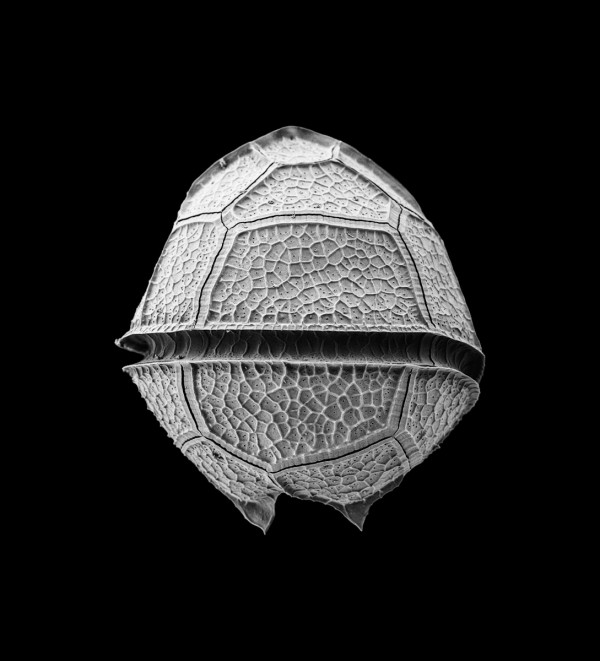
NOWs: Andreas Greiner
Andreas Greiner: Eye of the Hotaru Ika squid, still from Studies of an Alien Skin, 2016, photo by Paul Rohlfs
NOWs:
Andreas GreinerKunstverein Heilbronn
Algae light up in blue when touched; high-yield-varieties of chicken from fattening farms are bred with short, absurdly thick legs to support their heavy bodies; a squid in Japan glows at a depth of 300 meters to find a mate: these are the living organisms that make up the material in Andreas Greiner’s Living Sculptures. Instead of movements in the ocean, the algae react to the sounds of an automatic piano, as in the installation “From String to Dinosaurs” (2014), or they become, like the glowing squid, the protagonist of his video “Studies of an Alien Skin” (2016), where the artist shows the colorfully vibrant skin of the animal in near microscopic magnification. The music for the video composed by Tyler Friedman is an acoustic reproduction of the visible movements on the surface of the skin. For this work, they were both awarded the 2015 Conlon Music Prize for Disklavier Plus.
It is these wonderful, sometimes magical phenomena of nature in all their intriguing facets that Andreas Greiner first captures scientifically, and then translates into an artistic language to thus make them accessible to the viewer and, yes sometimes, to even celebrate them, as in the images of the squid.
Within the framework of scientific test arrangements, Andreas Greiner examines certain characteristics of living beings and transfers them into the context of art. Nature as the point of departure for his work and the scientific methodology as his artistic approach are combined in his works with a clear aesthetic position that does actually suggest the notion of a living sculpture.
As might be expected, there is in his work a concern for the living being itself, for the animal as part of our world. For “Studie (Porträt), Zur Singularität des Tieres” (2015), Andreas Greiner received the IBB Prize for Photography. In this work, he portrays four chickens: Heinrich, who is photographed in traditional semi-profile; Karl, with an X-ray of the skeleton; Elisabeth, who is represented by a DNA analysis, and Margarete, where he presents a histological section of her breast tissue. In allowing the animals to leave the anonymized field of living beings by naming them and applying traditional portrait formats, Andreas Greiner also criticizes the anthropocentric view that the value of nature results from its usefulness for humans, while clearly refusing his consent.
In “Monument für die 308”, he presents a skeleton of a chicken eight meters in height (the hybrid chicken Ross 308, created after 308 crossbreeding experiments). It serves to preserve the memory of the tortured creature, optimized by continuous breeding for faster and larger meat growth and for the living conditions in factory farming. The transfer of the skeleton to a monumental scale using a 3D printer is an artistic act. To the viewer, its result might hardly be recognizable as a chicken, but rather be identified as a dinosaur such as in a Natural History Museum. In its November 18 issue, the FAZ newspaper interviews the American writer Jonathan Franzen about his penchant for birds, and he substantiates his love for these animals with the eternal wonder that they are among the oldest creatures on Earth. It is, he says, as if I am looking at a flying dinosaur. From dinosaurs to high-performance chicken: Andreas Greiner’s work constitutes an aesthetic, moral and scientific examination. Last but not least, it is also about the question of the creation of life – as an artist and also as a scientist.
Andreas Greiner, born 1979 in Aachen, initially studied medicine and, after his Physikum, he switched to the field of art. He concluded his studies in 2013 as a master student of Olafur Eliasson. He lives and works in Berlin and, in 2016, was awarded the GASAG Art Prize, combined with an exhibition at Berlinische Galerie. In addition to his own work, he works in the artist collective “Das Numen”. Andreas Greiner has realized a new work for this exhibition. A film about cell growth combines with a composition by Icelandic composer Páll Ragner Pálsson to form an installation, which will be premiered on the evening of the opening preview with Tui Hirv (vocals), Nanna Koch (violin) and Tinna Thorsteinsdottir (piano).
Andreas Greiner: Monument for A Contemporary Dinosaurs (Ross 308), 2016. High definition CT-scan of a dead-found broiler chicken, 3D print, Installation view.
Andreas Greiner: Eye of the Hotaru Ika squid, still from Studies of an Alien Skin, 2016, photo by Paul Rohlfs
NOWs:
Andreas GreinerKunstverein Heilbronn
Algen leuchten bei Berührung blau; Hochleistungshühner aus Mastbetrieben werden mit kurzen, absurd dicken Beinen gezüchtet, um ihren schweren Körper zu halten; ein Tintenfisch in Japan leuchtet in 300 Metern Tiefe, um einen Partner zu finden: Das sind die lebenden Organismen, die das Material von Andreas Greiners Living Sculptures bilden. Statt auf Bewegungen im Meer reagieren dann die Algen auf die Klänge eines automatischen Klaviers, wie in der Installation „From String to Dinosaurs“ (2014), oder sind, wie der leuchtende Tintenfisch, Protagonist des Videos „Studies of an Alien Skin“ (2016), wobei der Künstler die farbenprächtig pulsierende Haut des Tiers in beinahe mikroskopisch anmutender Vergrößerung zeigt. Die eigens für das Video komponierte Musik von Tyler Friedman gibt die sichtbaren Bewegungen auf der Hautoberfläche in akustischer Form wieder.
Es sind diese wunderbaren, zum Teil märchenhaft anmutenden Phänomene der Natur in all ihren faszinierenden Facetten, die Andreas Greiner wissenschaftlich erfasst, in eine künstlerische Sprache übersetzt und so dem Auge des Betrachters zugänglich macht, ja sie mitunter, siehe die Aufnahmen des Tintenfisches, feiert.
Im Rahmen wissenschaftlicher Versuchsanordnungen untersucht Andreas Greiner bestimmte Eigenschaften von Lebewesen und transferiert sie in den Kunstkontext. Die Natur als Ausgangspunkt seiner Arbeit und die naturwissenschaftliche Methodik als seine künstlerische Herangehensweise verbindet sich in den Arbeiten mit einem klaren ästhetischen Anspruch, der tatsächlich die Frage nach einer lebendigen Skulptur nahelegt.
Natürlich vermittelt sich in seiner Arbeit auch die Sorge um das Lebewesen selbst, um das Tier als Teil unserer Welt. Für die „Studie (Porträt), Zur Singularität des Tieres“ (2015) bekam Andreas Greiner den IBB-Preis für Photographie. In dieser Arbeit porträtiert er vier Hühner: den Masthahn Heinrich, der klassisch im Halbprofil fotografiert wird, Karl, von dem es eine Röntgenaufnahme des Skeletts gibt, Elisabeth, die mit einer DNA-Analyse vertreten ist und Margarete, von der er die Aufnahme eines histologischen Schnitts des Brustgewebes zeigt. Dadurch dass die Tiere das anonymisierte Feld der Lebewesen durch die Namensgebung und das klassische Porträtiertwerden verlassen, kritisiert Andreas Greiner hiermit auch die anthropozentrische Sicht, nach der sich der Wert der Natur aus ihrem Nutzen für den Menschen ergibt und verweigert ihr seine Zustimmung.
Im „Monument für die 308“ präsentiert er ein acht Meter hohes Skelett eines Huhns (des Hybridhuhns Ross 308, entstanden nach 308 Kreuzungsversuchen). Die gequälte Kreatur, durch fortwährende Züchtung für ein schnelleres und größeres Fleischwachstum und die Lebensbedingungen in der Massentierhaltung optimiert, bekommt hier ein eindrucksvolles Denkmal gesetzt. Die Übertragung des Skeletts ins Monumentale durch den 3D-Drucker ist ein künstlerischer Akt, dessen Ergebnis vom Betrachter kaum mehr als Huhn erkannt wird, sondern vielmehr wie ein Dinosaurier im Naturkundemuseum identifiziert wird. In ihrer Ausgabe vom 18. November befragt die FAZ den amerikanische Schriftsteller Jonathan Franzen nach seiner Vorliebe für Vögel, und er begründet seine Liebe zu diesen Tieren mit dem ewigen Staunen darüber, dass diese zu den ältesten Lebewesen der Erde gehörten. Ihm sei es nachgerade so, sagt er, als sähe man einem fliegenden Dinosaurier zu. Vom Dinosaurier bis zum Hochleistungshuhn: Andreas Greiner führt in seiner Arbeit eine ästhetische, moralische und wissenschaftliche Auseinandersetzung. Nicht zuletzt geht es dabei auch um die Frage der Erschaffung von Leben – als Künstler oder auch als Wissenschaftler.
Andreas Greiner, geboren 1979 in Aachen, studierte zunächst Medizin und wechselte nach dem Physikum in den Bereich der Kunst, beendete 2013 sein Studium als Meisterschüler von Olafur Eliasson. Er lebt und arbeitet in Berlin und wurde 2016 mit dem GASAG Kunstpreis, verbunden mit einer Ausstellung in der Berlinischen Galerie, ausgezeichnet. 2015 erhielt er den IBB Preis für Photographie. Neben seinem eigenen Werk arbeitet er mit im Künstler-Kollektiv „Das Numen“.
Andreas Greiner: Monument for A Contemporary Dinosaurs (Ross 308), 2016. High definition CT-scan of a dead-found broiler chicken, 3D print, Installation view.
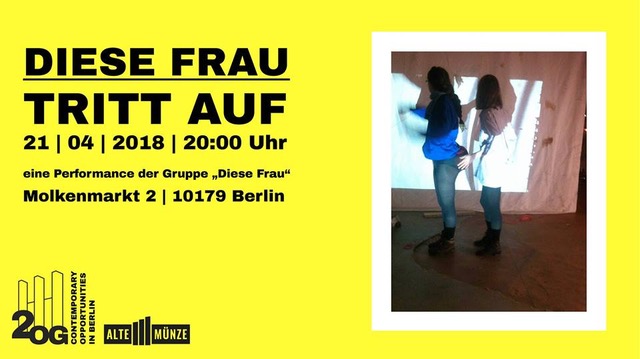
NOWs: Diese Frau „tritt auf“
NOWs:
Diese Frau „tritt auf“Alte Münze, Molkenmarkt 2 10179, Berlin
21.04.2018, 20:00 Uhr
„Diese Frau „tritt auf“ ist ein Schattenspiel. Die Säge feilt am höchsten Hacken. Stampft der Fuß durchs Licht. Diese Frau, ein Pfau im Schein der Baustrahler. Aufbruch der Körper in Flächen, projizierte Pfade in Schwarz Weiss. Non-rational. Non-verbal. Non-problemal. Vielleicht ein Foto und zwei Worte, Charité und Great Wall. Sie entwirft eine Erinnerung. Und lädt zum Tanz in die Alte Münze.“
Diese Frau: Diese Frau – ein offenes Kollektiv aus Berlin- ist eine künstlerische Form, die aus einer kollektiven Struktur heraus kommuniziert. Hierbei ist sie bestrebt, die immer wieder aufflammende Qualtitätsdebatte von Kunst von Frauen unter Rückgriff auf ihre geschlechtsspezifische sozialisierte Kreativität zu beleben.
Individuelle Beiträge und Diskussionen über die Rolle von Frauen in der zeitgenössischen Kunst befragen die Verkettung von Weiblichkeitsbildern und künstlerischen Möglichkeitsräumen. Das künstlerische Projekt Diese Frau bildet dazu aus divergenten Perspektiven soziale und politische Interventionen.
Ein Wesen ihrer kollektiven Kunstproduktion ist das Prozesshafte zu zeigen, entsprechend dazu arbeitet sie mit verschiedenen Medien. Die Auseinandesetzung mit Sprache und Gesten, Körper und Videopraxis bilden eine Konstante in den Arbeiten. Diese Frau sieht künstlerische Identitätsexperimente an den Schnittstellen von Alltag, Medien und Geschlecht als eine Erweiterung der kulturellen Spielräume von Frauen. Herrschende Kunstnormen, die mit Männlichkeit assoziiert sind, lassen sich nicht mit einer weiblich assoziierten Gegennorm aus den Angeln heben. Auf diese Weise würde die ungleiche Herausbildung sozialer und kultuereller Geschlechterbilder genau in das biologische Raster hineingezwungen, welches die Diskriminierung von Frauen hervorbringt. Diese Frau fordert eine grundlegende Revision geltender Qualitätskriterien.
NOWs:
Diese Frau „tritt auf“Alte Münze, Molkenmarkt 2 10179, Berlin
21.04.2018, 20:00 Uhr
„Diese Frau „tritt auf“ ist ein Schattenspiel. Die Säge feilt am höchsten Hacken. Stampft der Fuß durchs Licht. Diese Frau, ein Pfau im Schein der Baustrahler. Aufbruch der Körper in Flächen, projizierte Pfade in Schwarz Weiss. Non-rational. Non-verbal. Non-problemal. Vielleicht ein Foto und zwei Worte, Charité und Great Wall. Sie entwirft eine Erinnerung. Und lädt zum Tanz in die Alte Münze.“
Diese Frau: Diese Frau – ein offenes Kollektiv aus Berlin- ist eine künstlerische Form, die aus einer kollektiven Struktur heraus kommuniziert. Hierbei ist sie bestrebt, die immer wieder aufflammende Qualtitätsdebatte von Kunst von Frauen unter Rückgriff auf ihre geschlechtsspezifische sozialisierte Kreativität zu beleben.
Individuelle Beiträge und Diskussionen über die Rolle von Frauen in der zeitgenössischen Kunst befragen die Verkettung von Weiblichkeitsbildern und künstlerischen Möglichkeitsräumen. Das künstlerische Projekt Diese Frau bildet dazu aus divergenten Perspektiven soziale und politische Interventionen.
Ein Wesen ihrer kollektiven Kunstproduktion ist das Prozesshafte zu zeigen, entsprechend dazu arbeitet sie mit verschiedenen Medien. Die Auseinandesetzung mit Sprache und Gesten, Körper und Videopraxis bilden eine Konstante in den Arbeiten. Diese Frau sieht künstlerische Identitätsexperimente an den Schnittstellen von Alltag, Medien und Geschlecht als eine Erweiterung der kulturellen Spielräume von Frauen. Herrschende Kunstnormen, die mit Männlichkeit assoziiert sind, lassen sich nicht mit einer weiblich assoziierten Gegennorm aus den Angeln heben. Auf diese Weise würde die ungleiche Herausbildung sozialer und kultuereller Geschlechterbilder genau in das biologische Raster hineingezwungen, welches die Diskriminierung von Frauen hervorbringt. Diese Frau fordert eine grundlegende Revision geltender Qualitätskriterien.
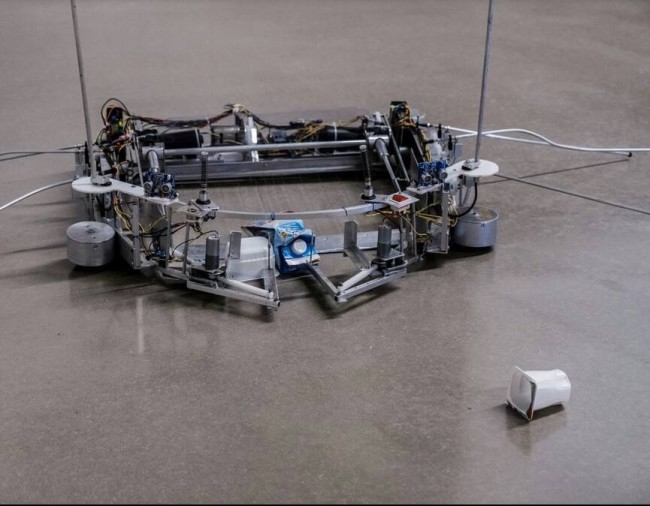
NOWs: Ziggy and the Starfish by Anne Duk Hee Jordan
NOWs:
Capitalo, Chthulu, and a Much Hotter Compost Pile. About Human-Environment-Relationships
Kunstraum Kreuzberg/Bethanien, Berlin
Opening: Friday, April 13, from 7 pm
Capitalo, Chthulu, and a Much Hotter Compost Pile. About Human-Environment-Relationships includes the sculptural installation Ziggy and the Starfish by Anne Duk Hee Jordan.
Ziggy and the Starfish consists of a mechanical waste processing crab, a film exploring the diversity of sexuality in the ocean, scientific interviews and moving singing stones dating back millions of years.
„What we call the beginning is often the end. And to make an end is to make a beginning. The end is where we start from“. T. S. Eliot
The exibitions incluces works by Ana Alenso, Madison Bycroft, Liza Dieckwisch, Jelena Fuzinato, Geovanna Gonzalez, Ben Greber and Bram Kuypers, Tue Greenfort, Anne Duk Hee Jordan, Femke Herregraven, Marta Leite, Regina de Miguel, Zoe Claire Miller, Nucbeade, Naufus Ramirez-Figueroa , Anais Senli, Michael E. Smith.
Special program with contributions by Shelley Etkin, Sonia Fernández-Pan, Herbert Lohner, Reading Club “Between Us and Nature”, Henry Wilde und Neo Hülcker.
Curated Lorena Juan, Lena Johanna Reisner and Anaïs Senli.
Anne Duk Hee Jordan: Ziggy and the Starfish. A documentary. 2017
NOWs:
Capitalo, Chthulu, and a Much Hotter Compost Pile. About Human-Environment-Relationships
Kunstraum Kreuzberg/Bethanien, Berlin
Opening: Friday, April 13, from 7 pm
Capitalo, Chthulu, and a Much Hotter Compost Pile. About Human-Environment-Relationships includes the sculptural installation Ziggy and the Starfish by Anne Duk Hee Jordan.
Ziggy and the Starfish consists of a mechanical waste processing crab, a film exploring the diversity of sexuality in the ocean, scientific interviews and moving singing stones dating back millions of years.
„What we call the beginning is often the end. And to make an end is to make a beginning. The end is where we start from“. T. S. Eliot
The exibitions incluces works by Ana Alenso, Madison Bycroft, Liza Dieckwisch, Jelena Fuzinato, Geovanna Gonzalez, Ben Greber and Bram Kuypers, Tue Greenfort, Anne Duk Hee Jordan, Femke Herregraven, Marta Leite, Regina de Miguel, Zoe Claire Miller, Nucbeade, Naufus Ramirez-Figueroa , Anais Senli, Michael E. Smith.
Special program with contributions by Shelley Etkin, Sonia Fernández-Pan, Herbert Lohner, Reading Club “Between Us and Nature”, Henry Wilde und Neo Hülcker.
Curated Lorena Juan, Lena Johanna Reisner and Anaïs Senli.
Anne Duk Hee Jordan: Ziggy and the Starfish. A documentary. 2017
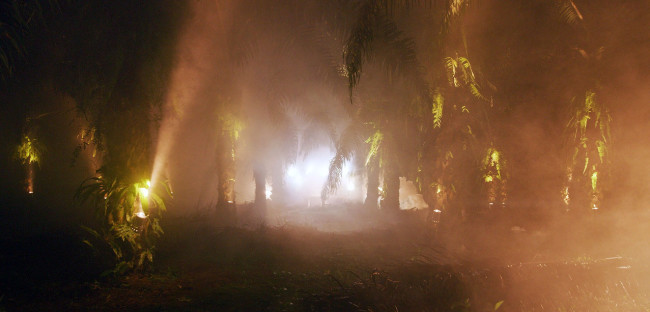
NOWs: An Invitation to Disappear by Julian Charrière
Julian Charrière, An Invitation to Disappear, 2018, Film still, Foto: Norbert Miguletz, © Julian Charrière; VG Bild-Kunst, Bonn, Germany.
NOWs:
Julian Charrière: An Invitation to Disappear
Kunsthalle Mainz
Opening: April 13, 7–11 pm
Tambora, which literally means “an invitation to disappear,” is a volcano on the Indonesian island of Sumbawa. In 1815 it became clear just how appropriate and fateful the choice of name would prove to be, for that was when Tambora became active, triggering what was—and still is—the largest volcanic eruption in recorded human history. Not only the island’s inhabitants fell victim to the explosion, for the cloud of ash spread across the globe and led to temperatures falling as far away as Europe and North America. 1816 went down in history as the “year without a summer.” The volcanic winter, which persisted until 1819, caused failed harvests, floods and famines. But it produced other colours, too. The sunsets changed due to the countless aerosols in the atmosphere. The works created by J.M.W. Turner and Caspar David Friedrich during this period exhibit a remarkable spectrum of colours. It has been argued that both painters, as chroniclers of their time, consciously chose to depict the differences in sunlight.
A warm, bright red, oscillating between an orangeyyellow and autumnal brown—this is the colour of palm oil. It is extracted from the fruit of the oil palm, forming a raw material that is nowadays present in nearly half of all supermarket products. From margarine to chocolate, from lipstick to skin cream, from candles to washing powder, the fruit of the oil palm forms the basis of them all. Although the material has almost universal applications, far less is known about how and where it is extracted, or about the consequences associated with the harvesting process. The growth in oil palm plantations has resulted in monocultural farming, ground poisoned by pesticides, and rainforests cleared to make more land available for agriculture. Entire swathes of land—primarily in Malaysia and Indonesia—are changing in appearance. Thanks to the fixed grid pattern used for planting palms, a completely unique visual rhythm is in the process of being created. What from the air looks like a seemingly infinite mesh of lines is actually the star-shaped crowns of domesticated palm trees, all thronging together. Paths cross and connect the land area. Under the treetops extends a barren landscape, strewn with fallen palm fronds and partially covered with grasses and ground cover plants.
In Das Hungerjahr, Heinrich Bechtolsheimer describes the appearance of the sky in the Rheinhessen region in October 1816: “The glowing sunset lit up the western sky like an expansive luminous conflagration; yellow, violet and red lights flickered here and there.”[1] Coloured lighting illuminates the dark night in a crowded palm field. An infinite loop of hard, electronic rhythms cuts through the infinite peace and quiet of the field full of trees. A palm oil plantation shudders, shaken by light and sound. The scenery fluctuates between tempting and threatening. We are in the exhibition An Invitation to Disappear by Swiss artist Julian Charrière. The eponymous series of works extends over the three horizontal spaces of Kunsthalle Mainz, following a set choreography. Step for step, room for room, the visitors approach a rave. They follow the rhythms and sounds of electronic music, becoming ever more submerged in a setting veiled by wafting mist until they reach the heart of the exhibition: a film shot in a palm-oil plantation in the Far East. It is a film that persuasively presents the excessive, exploitative decimation of nature to visitors who are intoxicated by music. The ubiquity of palm oil as a material is analogous to our total lack of interest in how it is produced; the physical absence of people changes abruptly into the omnipresence of their actions. Image and sound are consolidated into metaphors not only for people’s belief in progress but also for their short-lived interests—and for the enormous consequences that these have. At the same time, they conjure up collective trance-like states and experiencing the transcendence of time.
On the occasion of the exhibition a publication will be released.
Curated by Stefanie Böttcher
Related Programme (selection)
May 9, 7pm
Artist talk and film screening: Julian Charrière and Julius von Bismarck in conversation with Stefanie Böttcher
June 27, 7pm
Lecture by Prof. Dr. Helmuth Trischler, Deutsches Museum, Munich and Director of the Rachel Carson Center
Fade into You: a series of film screenings
April 25, 7pm
Nicholas Mangan, Nauro – Notes from a Cretaceous World, 2010
Cyprien Gaillard, Pruitt Igoe Falls, 2009
Julian Charrière, Tambora, 2018. Photo: Norbert Miguletz, © Julian Charrière; VG Bild-Kunst, Bonn, Germany.
Julian Charrière, To Observe Is to Influence, 2018. Photo: Norbert Miguletz, © Julian Charrière; VG Bild-Kunst, Bonn, Germany.
Julian Charrière, Ever Since We Crawled Out, 2018. Photo: Norbert Miguletz, © Julian Charrière; VG Bild-Kunst, Bonn, Germany.
Julian Charrière, The Other Side of Eden, 2018. Photo: Norbert Miguletz, © Julian Charrière; VG Bild-Kunst, Bonn, Germany.
Julian Charrière, It Was Hard Not to Be Preoccupied by the Fire and the Nightfall, 2018. Photo: Norbert Miguletz, © Julian Charrière; VG Bild-Kunst, Bonn, Germany.
Julian Charrière, An Invitation to Disappear, 2018, Film still. Poto: Norbert Miguletz, © Julian Charrière; VG Bild-Kunst, Bonn, Germany.
NOWs:
Julian Charrière: An Invitation to Disappear
Kunsthalle Mainz
Eröffnung: 13. April, 19–23 h
“Tambora” – “An invitation to disappear” so lautet die wörtliche Übersetzung des gleichnamigen Vulkans auf der indonesischen Insel Sumbawa. 1815 sollte sich unter Beweis stellen, wie treffend und schicksalhaft diese Benennung gewählt wurde. In diesem Jahr brach der Tambora aus und die bis heute größte verzeichnete Eruption der Menschheitsgeschichte ereignete sich. Nicht nur die Menschen der Insel selbst fielen dem Ausbruch zum Opfer, sondern die Aschewolke verteilte sich rund um den Globus und ließ die Temperatur bis Europa und Nordamerika sinken. Das Jahr 1816 ging als das “Jahr ohne Sommer” in die Geschichtsschreibung ein. Der vulkanische Winter, der noch bis ins Jahr 1819 andauern sollte, rief Ernteeinbrüche, Überschwemmungen und Hungersnöte hervor. Aber er brachte auch andere Farben: Die Sonnenuntergänge veränderten sich aufgrund der zahllosen Aerosole in der Atmosphäre. Die Werke William Turners oder Caspar David Friedrichs, die während dieser Jahre entstanden, weisen ein beachtliches Farbspektrum auf. Und so lautet eine These, dass die beiden Maler als Chronisten ihrer Zeit auch die veränderte Sonnenstrahlung eingefangen haben.
Ein warmes, brillantes Rot, das von Orangegelb bis Braunrot changiert, ist die Farbe von Palmöl. Palmöl wird aus dem Fruchtfleisch der Ölpalme gewonnen und bildet einen Rohstoff, der mittlerweile in fast jedem zweiten Supermarktprodukt steckt. Von Margarine bis Schokolade, von Lippenstift bis Hautcreme, von Kerzen bis Waschpulver liefern die Früchte der Ölpalme die Basis dieser Güter. Obwohl dieser Stoff nahezu überall Verwendung findet, ist weit weniger bekannt, wie und wo er gewonnen wird, welche Folgen mit seinem Abbau verbunden sind. Der Anbau in Monokultur, die Vergiftung des Bodens aufgrund von Schädlingsmitteln und die Rodung der Regenwälder zur Vergrößerung der Anbauflächen gehen mit dem Wachsen von Palmölplantagen einher. Ganze Landstriche – vorrangig in Malaysia und Indonesien – wechseln ihr Erscheinungsbild: Durch das starre Raster, in dem die Palmen gepflanzt werden, entsteht eine ganz eigene visuelle Rhythmik. Aus der Luft gleitet der Blick über ein schier endloses Liniengeflecht hinweg, das aus den gezähmten, dicht an dicht gesetzten sternförmigen Kronen der Palmen besteht. Wege durchkreuzen und verbinden die Flächen. Unter den Baumwipfeln erstreckt sich eine Landschaft aus kargem Boden mit herabgefallenen Palmwedeln, teils von Gräsern und Bodendeckern überzogen.
“Wie eine weithin leuchtende Feuersbrunst stand das Abendrot am westlichen Himmel; gelbe, violette und rote Lichter zuckten dort hin und her” so beschreibt Heinrich Bechtolsheimer den rheinhessischen Oktoberhimmel des Jahres 1816 in Das Hungerjahr [1]. Farbige Blitze erhellen die dunkle Nacht in einem dicht bestellten Palmacker. Harte, elektronische Rhythmen in Endlosschleife durchschneiden die endlose Ruhe des Baumfeldes. Eine Palmölplantage erbebt von Licht und Klang geschüttelt. Die Szenerie schwankt zwischen verheißungsvoll und bedrohlich. Wir befinden uns in der Ausstellung An Invitation to Disappear des Schweizer Künstlers Julian Charrière. Die gleichnamige Werkreihe erstreckt sich über die drei horizontalen Hallen der Kunsthalle Mainz und folgt einer Choreografie. Schritt für Schritt, Raum für Raum nähern sich die Besucher einem Rave. Sie folgen den Rhythmen und Klängen der elektronischen Musik, tauchen immer tiefer ein in eine von Nebelschwaden verschleierte Szenerie bis sie in das Herzstück der Ausstellung vordringen: Ein Film, der auf einer Palmölplantage in Fernost gedreht wurde. Ein Film, der einem durch Musik verursachten Rauschzustand den exzesshaften Raubbau an der Natur zur Seite stellt. Die Allgegenwärtigkeit des Stoffes Palmöl findet ihre Analogie in der Abwesenheit unseres Interesses an dessen Gewinnung; die physische Absenz des Menschen schlägt in eine Omnipräsenz seiner Handlungen um. Bild und Sound verdichten sich zu Metaphern für den menschlichen Fortschrittglauben, kurzlebige Interessen und deren massive Folgen. Gleichzeitig beschwören sie kollektive Trancezustände und Erfahrungen der Überzeitlichkeit herauf.
Kuratiert von Stefanie Böttcher
Veranstaltungsprogramm (Auswahl)
9. Mai, 19 h
Künstlergespräch und Film: Julian Charrière und Julius von Bismarck im Gespräch mit Stefanie Böttcher
27. Juni, 19 h
Vortrag von Prof. Dr. Helmuth Trischler, Deutsches Museum, München und Direktor des Rachel Carson Center
Fade into You: a series of film screenings
25 April, 19 h
Nicholas Mangan, Nauro – Notes from a Cretaceous World, 2010
Cyprien Gaillard, Pruitt Igoe Falls, 2009
Julian Charrière, Tambora, 2018. Photo: Norbert Miguletz, © Julian Charrière; VG Bild-Kunst, Bonn, Germany.
Julian Charrière, To Observe Is to Influence, 2018. Photo: Norbert Miguletz, © Julian Charrière; VG Bild-Kunst, Bonn, Germany.
Julian Charrière, Ever Since We Crawled Out, 2018. Photo: Norbert Miguletz, © Julian Charrière; VG Bild-Kunst, Bonn, Germany.
Julian Charrière, The Other Side of Eden, 2018. Photo: Norbert Miguletz, © Julian Charrière; VG Bild-Kunst, Bonn, Germany.
Julian Charrière, It Was Hard Not to Be Preoccupied by the Fire and the Nightfall, 2018. Photo: Norbert Miguletz, © Julian Charrière; VG Bild-Kunst, Bonn, Germany.
Julian Charrière, We Are All Astronauts, 2013. Photo: Norbert Miguletz, © Julian Charrière; VG Bild-Kunst, Bonn, Germany.
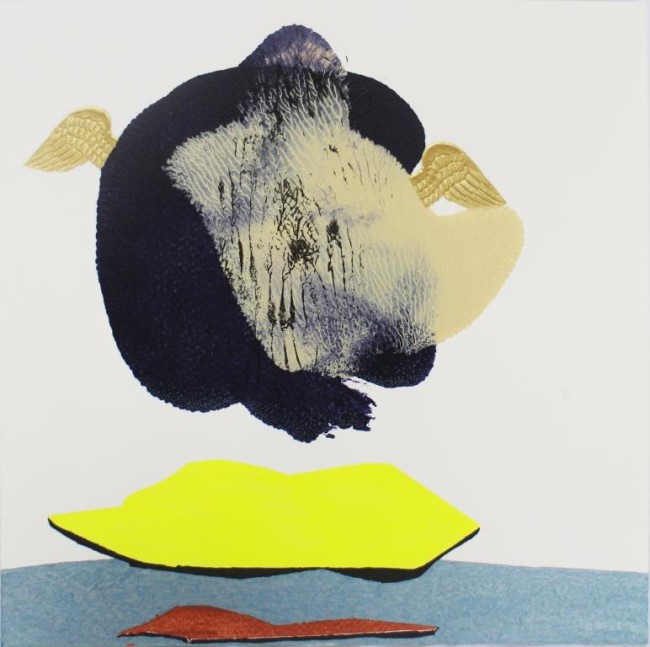
NOWs: Robel Temesgen at Modern Art Museum: Gebre Kristos Desta Center
NOWs:
Robel Temesgen & Henok MelkamzerThe Modern Art Museum: Gebre Kristos Desta Center, Addis Ababa
Opening: Thursday 12 April 2018
5:00 – 8:00 pm
The Modern Art Museum: Gebre Kristos Desta Center of Addis Ababa University is pleased to invite you to the exhibition ምን ነበረ? With an intriguing representation of the vernacular of Ethiopian intellectual thought, “ምን ነበረ?” presents an alternative approach to how Ethiopian visual studies should be based and reviewed. Looking into the claims of the past, Henok Melkamzer and Robel Temesgen examine ways in which the institutions, memories and complications of ‘tradition’ shape the historical present.The exhibition runs in two consecutive sessions. Works of Henok Melkamzer on “Telsem” have been on display from 20 March to 03 April, 2018. The second session opens with Robel Temesgen’s works on “Adbar” on Thursday 12 April at 5:00 p.m. Robel’s works will be open to the public until 26 April 2018.
Adbar is an Amharic term that refers to spiritual places where ritualistic performances take place and offerings are made. These spiritual places also serve as communal and public spaces, also for secular community gatherings. The project investigates the embodiment of protective spirits within various elements of the natural landscape. Growing up in Dessie, northern Ethiopia, Robel Temesgen witnessed the fading of this long-established tradition and the subsequent development of new rituals, in tune with contemporary lifestyles. The Adbar series navigates through the physical and metaphysical elements of a landscape using recollections, lived experiences and fantasies of the space and people of sacred places.
–
About Robel Temesgen
Born in 1987 in Ethiopia, Robel Temesgen received an MFA from Tromsø Academy of Contemporary Art, University of Tromsø, Norway in 2015, and a BFA in Fine Art (Painting) from Addis Ababa University in 2010. He recently took part in the Junge Akademie Program of the Akademie der Künste, Berlin, and was a resident artist at IASPIS, Stockholm, the Swedish Art Grants Committee’s International Programme for Visual and Applied Arts. Temesgen’s work has been exhibited at the Hamburger Bahnhof, Berlin (2017), Marabohparken, Stockholm (2017), Akademie der Künste, Berlin (2016), Kurant Visningsrom, Tromsø (2015), Addis International Video Art Festival, Addis Ababa (2015), Art Future/Future Signs, Riga (2015), RomeAfrica Film Festival, Rome (2015), Lumen Festival, New York (2015), Neue Nationalgalerie, Berlin (2014) and Modern Art Museum/Gebre Kristos Desta Center, Addis Ababa (2013). He currently lives and works in Addis Ababa, Ethiopia.
NOWs:
Robel Temesgen & Henok MelkamzerThe Modern Art Museum: Gebre Kristos Desta Center, Addis Ababa
Opening: Thursday 12 April 2018
5:00 – 8:00 pm
The Modern Art Museum: Gebre Kristos Desta Center of Addis Ababa University is pleased to invite you to the exhibition ምን ነበረ? With an intriguing representation of the vernacular of Ethiopian intellectual thought, “ምን ነበረ?” presents an alternative approach to how Ethiopian visual studies should be based and reviewed. Looking into the claims of the past, Henok Melkamzer and Robel Temesgen examine ways in which the institutions, memories and complications of ‘tradition’ shape the historical present.The exhibition runs in two consecutive sessions. Works of Henok Melkamzer on “Telsem” have been on display from 20 March to 03 April, 2018. The second session opens with Robel Temesgen’s works on “Adbar” on Thursday 12 April at 5:00 p.m. Robel’s works will be open to the public until 26 April 2018.
Adbar is an Amharic term that refers to spiritual places where ritualistic performances take place and offerings are made. These spiritual places also serve as communal and public spaces, also for secular community gatherings. The project investigates the embodiment of protective spirits within various elements of the natural landscape. Growing up in Dessie, northern Ethiopia, Robel Temesgen witnessed the fading of this long-established tradition and the subsequent development of new rituals, in tune with contemporary lifestyles. The Adbar series navigates through the physical and metaphysical elements of a landscape using recollections, lived experiences and fantasies of the space and people of sacred places.
–
About Robel Temesgen
Born in 1987 in Ethiopia, Robel Temesgen received an MFA from Tromsø Academy of Contemporary Art, University of Tromsø, Norway in 2015, and a BFA in Fine Art (Painting) from Addis Ababa University in 2010. He recently took part in the Junge Akademie Program of the Akademie der Künste, Berlin, and was a resident artist at IASPIS, Stockholm, the Swedish Art Grants Committee’s International Programme for Visual and Applied Arts. Temesgen’s work has been exhibited at the Hamburger Bahnhof, Berlin (2017), Marabohparken, Stockholm (2017), Akademie der Künste, Berlin (2016), Kurant Visningsrom, Tromsø (2015), Addis International Video Art Festival, Addis Ababa (2015), Art Future/Future Signs, Riga (2015), RomeAfrica Film Festival, Rome (2015), Lumen Festival, New York (2015), Neue Nationalgalerie, Berlin (2014) and Modern Art Museum/Gebre Kristos Desta Center, Addis Ababa (2013). He currently lives and works in Addis Ababa, Ethiopia.
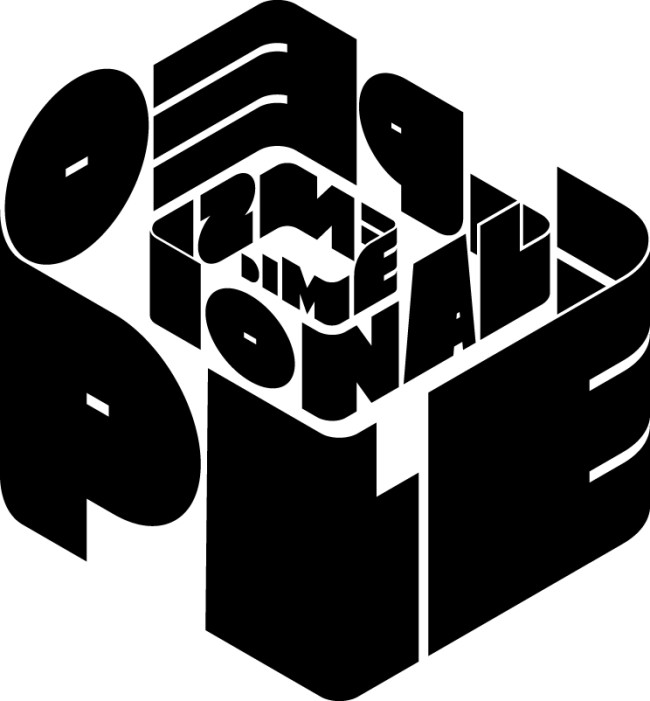
NOWs: Mouse on Mars: Dimensional People
NOWs:
Mouse on Mars: Dimensional PeopleNew Album out now on Thrill Jockey
Mouse on Mars – Andi Toma and Jan St. Werner – return with their most inventive album to date, Dimensional People. The new album finds the Berlin-based duo reunited with Thrill Jockey, a powerful aesthetic partnership marked by such seminal albums as Radical Connector (2004), Idiology (2001), and Niun Niggung (2000). After a series of notorious dance floor releases, Dimensional People reveals them working deep within their own vernacular, digging into fertile terrain of their inexhaustible vault of digital and acoustic experimentation, and charismatically making elemental components new again. This album makes clear how their craft is of discovery, of finding new contexts for places, sounds, memories, sensations, ambiences, technologies, relationships, and of course, people.
A number of prolific guests joined the production: Justin Vernon (Bon Iver), Zach Condon (Beirut), Spank Rock, Aaron and Bryce Dessner (The National), Swamp Dogg, Eric D. Clark, Lisa Hannigan, Amanda Blank, Sam Amidon, Ensemble Musikfabrik, and about 20 more musical collaborators. The cast of characters are as unique as they are vast, clearly a rich quarry for the prodigious duo.
Dimensional People, initially titled new konstruktivist socialism, gives each participating guest a platform to imprint the album as whoever or whatever they want to be: a narrator, a perfect moment, a jam, an ensemble member, an abstract sound, a multiple persona, a mood, a soloist. Originally premiering as a spatial composition using object-based mixing technology playing with the possibilities of sonic design and collective musicianship, the recording expands upon these ideas. Dimensional People expresses itself as a dynamic 50-piece orchestra, telling a story in sound. Each player is a multifaceted character, the recording an imagined stage, and the production is direction, lighting, and setting changes. Mouse on Mars offer sound as a means to encourage open-minded societies, aided by cutting-edge technology including their own MoMinstruments music software or a spatial mixing technique called object based mixing, with which a spatial version of the work was created. It is a conceptual puzzle composed around one harmonic spectrum within one rhythmic scheme, mostly in the tempo of 145bpm (inspired by Chicago footwork, so the dance floor is not entirely absent). Looking ahead, Dimensional People will also be realized through installation, presenting the work as an immersive listening experience, as well as performance.
LP version pressed on virgin vinyl packaged with 8 page full color 11” x 11” booklet and free download. CD version in mini-LP style gatefold package. See here.
SAVE THE DATE: People Festival, Funkhaus, Berlin. 18-19 August 2018
NOWs:
Mouse on Mars: Dimensional PeopleNew Album out now on Thrill Jockey
Mouse on Mars – Andi Toma and Jan St. Werner – return with their most inventive album to date, Dimensional People. The new album finds the Berlin-based duo reunited with Thrill Jockey, a powerful aesthetic partnership marked by such seminal albums as Radical Connector (2004), Idiology (2001), and Niun Niggung (2000). After a series of notorious dance floor releases, Dimensional People reveals them working deep within their own vernacular, digging into fertile terrain of their inexhaustible vault of digital and acoustic experimentation, and charismatically making elemental components new again. This album makes clear how their craft is of discovery, of finding new contexts for places, sounds, memories, sensations, ambiences, technologies, relationships, and of course, people.
A number of prolific guests joined the production: Justin Vernon (Bon Iver), Zach Condon (Beirut), Spank Rock, Aaron and Bryce Dessner (The National), Swamp Dogg, Eric D. Clark, Lisa Hannigan, Amanda Blank, Sam Amidon, Ensemble Musikfabrik, and about 20 more musical collaborators. The cast of characters are as unique as they are vast, clearly a rich quarry for the prodigious duo.
Dimensional People, initially titled new konstruktivist socialism, gives each participating guest a platform to imprint the album as whoever or whatever they want to be: a narrator, a perfect moment, a jam, an ensemble member, an abstract sound, a multiple persona, a mood, a soloist. Originally premiering as a spatial composition using object-based mixing technology playing with the possibilities of sonic design and collective musicianship, the recording expands upon these ideas. Dimensional People expresses itself as a dynamic 50-piece orchestra, telling a story in sound. Each player is a multifaceted character, the recording an imagined stage, and the production is direction, lighting, and setting changes. Mouse on Mars offer sound as a means to encourage open-minded societies, aided by cutting-edge technology including their own MoMinstruments music software or a spatial mixing technique called object based mixing, with which a spatial version of the work was created. It is a conceptual puzzle composed around one harmonic spectrum within one rhythmic scheme, mostly in the tempo of 145bpm (inspired by Chicago footwork, so the dance floor is not entirely absent). Looking ahead, Dimensional People will also be realized through installation, presenting the work as an immersive listening experience, as well as performance.
LP version pressed on virgin vinyl packaged with 8 page full color 11” x 11” booklet and free download. CD version in mini-LP style gatefold package. See here.
SAVE THE DATE: People Festival, Funkhaus, Berlin. 18-19 August 2018
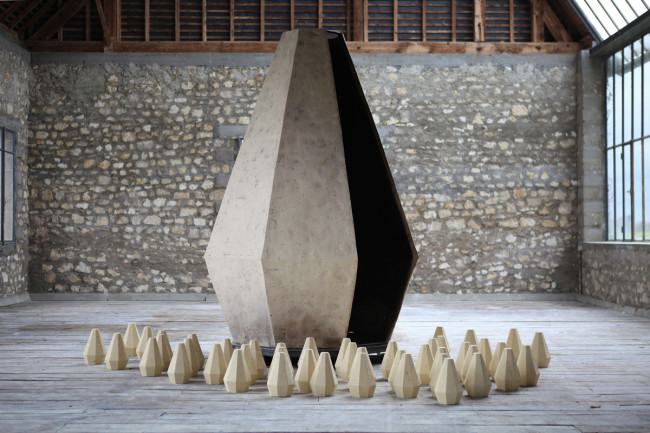
NOWs: Recursive Volumes by Elise Eeraerts
Elise Eeraerts: Recursive Volumes, 2018. Photo: GuillaumeBlanc
NOWs:
Elise Eeraerts: Recursive VolumesProject Presentation
L’Atelier Calder, France
Saturday, 7 April 2018. 3 pm
Elise Eeraerts: Recursive Volumes, 2018. Video still: the artist
Elise Eeraerts: Recursive Volumes, 2018. Video still: the artist
Elise Eeraerts: Recursive Volumes, 2018. Video still: the artist
Elise Eeraerts: Recursive Volumes, 2018. Video still: the artist
Elise Eeraerts: Recursive Volumes, 2018. Photo: the artist
For further information, please click image
Elise Eeraerts: Recursive Volumes, 2018. Photo: GuillaumeBlanc
NOWs:
Elise Eeraerts: Recursive VolumesProject Presentation
L’Atelier Calder, France
Saturday, 7 April 2018. 3 pm
Elise Eeraerts: Recursive Volumes, 2018. Video still: the artist
Elise Eeraerts: Recursive Volumes, 2018. Video still: the artist
Elise Eeraerts: Recursive Volumes, 2018. Video still: the artist
Elise Eeraerts: Recursive Volumes, 2018. Video still: the artist
Elise Eeraerts: Recursive Volumes, 2018. Photo: the artist
For further information, please click image
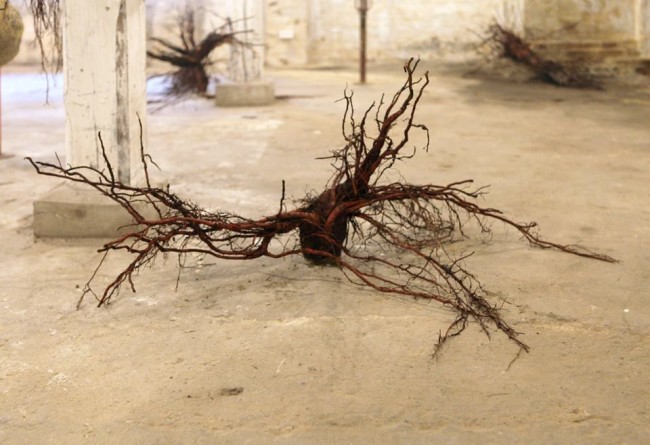
NOWs: Abyss by Rune Bosse of Anna Bak
NOWs:
Rune Bosse and Anna Bak: ABYSSD7, Copenhagen, Denmark
Abyss, – an infinite or unthinkable space – chaos immediately before creation. D7 is an artist-driven exhibition center in a 110 sqm basement on Østerbro. The exhibition room itself is characterized by the basement’s condition, with moist walled ceilings, low ceilings, rustic uneven concrete floors with sparse sunlight from two tiled windows. The entrance to the room goes through a narrow little twisted staircase. In other words, when you enter the room, you really get the feeling of being underground, in another world. For the exhibition ABYSS, Rune Bosse and Anna Bak have created an installation in which their individual works and practices interact with each other and with the room. Below the surface of what is visible to us, a lot of processes are at work. There is fungi, bacteria, roots and spores in everything, they interfere and all about everything, but maybe these elements also help to keep up with it all and without these intrusive forces it would all fall apart. The artists’ common interests for nature and the essential forces that affect us have created an installation that serves as a physical experience in the basement’s atmosphere. A world where organic forces work both to intervene in space and keep the room up, a processual transformation on the verge between total decay and a stage immediately before rebuilding.
The sound in the room is an enhanced version of the Schumann resonance. Schumann resonance (SR) is several peaks in the extreme low-frequency (ELF) part of the Earth’s electromagnetic spectrum. The Schumann resonances are a worldwide electromagnetic resonance, which is estimated by lightning discharges in the cavity formed by the earth’s surface – especially the sea surface – and the ionosphere.
NOWs:
Rune Bosse and Anna Bak: ABYSSD7, Copenhagen, Denmark
Abyss, – an infinite or unthinkable space – chaos immediately before creation. D7 is an artist-driven exhibition center in a 110 sqm basement on Østerbro. The exhibition room itself is characterized by the basement’s condition, with moist walled ceilings, low ceilings, rustic uneven concrete floors with sparse sunlight from two tiled windows. The entrance to the room goes through a narrow little twisted staircase. In other words, when you enter the room, you really get the feeling of being underground, in another world. For the exhibition ABYSS, Rune Bosse and Anna Bak have created an installation in which their individual works and practices interact with each other and with the room. Below the surface of what is visible to us, a lot of processes are at work. There is fungi, bacteria, roots and spores in everything, they interfere and all about everything, but maybe these elements also help to keep up with it all and without these intrusive forces it would all fall apart. The artists’ common interests for nature and the essential forces that affect us have created an installation that serves as a physical experience in the basement’s atmosphere. A world where organic forces work both to intervene in space and keep the room up, a processual transformation on the verge between total decay and a stage immediately before rebuilding.
The sound in the room is an enhanced version of the Schumann resonance. Schumann resonance (SR) is several peaks in the extreme low-frequency (ELF) part of the Earth’s electromagnetic spectrum. The Schumann resonances are a worldwide electromagnetic resonance, which is estimated by lightning discharges in the cavity formed by the earth’s surface – especially the sea surface – and the ionosphere.
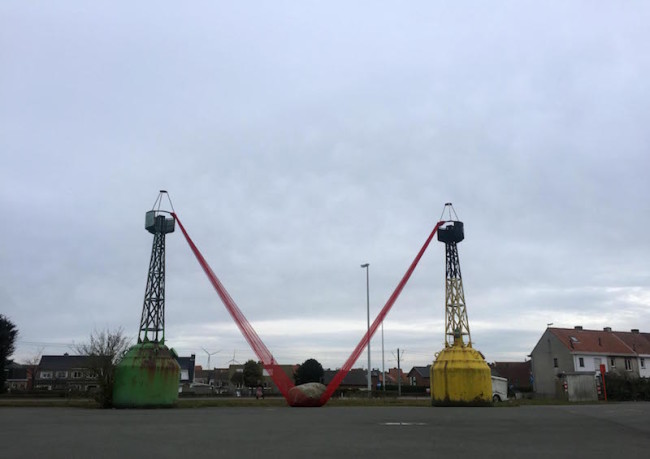
NOWs: I travelled 1.8 million years to be with you by Anne Duk Hee Jordan
Anne Duk Hee Jordan: I traveled 1.8 Million Years To Be With You. Specific installation with stone and a fishing net between existing buoys
NOWs:
I traveled 1.8 Million Years To Be With Youby Anne Duk Hee Jordan
at
Beaufort Art Triennial by the Sea, Zeebrugge Seafront, Belgium
Anne Duk Hee Jordan uses a large glacial erraticcstone in her installation (150 x 200 x150 cm). Glacial erratic stone are not native to our region. During the last ice age, the Saale Ice Age, around 200,000 B.C., Scandinavian stones were brought here in the ice caps that stretched from Scandinavia to the Netherlands. Later as well, foreign stones ended up in Bruges when the city was part of the Hanseatic route, a maritime trading route from Estonia to France. They were used in monuments, churches and cemeteries.
The stone hangs between two buoys and it appears as if it were being held up by a net. These sorts of buoys are used to guide ships navigate to their destination. It thus appears as if the stone, after endless roaming, has at last reached its destination. The illogical structure, contrasting the blackness of the stone and the lightness of the net, creates a tension between perception and reality. This also leads to the question of how the stone ended up in this spot. Was it by means of natural migration or via recent transport by humans? As a result of its unusual position, the stone seems to have its own personality. The stone is an itinerant witness that observes human activity. It reminds us of the transience of human life, while the stone itself is immortal.
Find location here.
—
Beaufort is a triennial art project that extends along the entire Belgian coastline. It is a project, launched in 2003, in which the sea often plays the main role. In Beaufort 2018, the sea will be illuminated as a place that is both uncontrollable but at the same time links us to the rest of the world. Every participating artist comes from a country that borders on the sea. An underlying theme of this edition is the role of permanent monuments.
Attia (FR) – Nina Beier (DK) – Guillaume Bijl (BE) – Simon Dybbroe Møller (DK) – Jos De Gruyter & Harald Thys (BE) – Edith Dekyndt (BE) – Stief DeSmet (BE) – Jason Dodge ( USA) – Jean-François Fourtou (FR) – Ryan Gander (GB) – Iman Issa (EC) – Anne Duk Hee Jordan (DE / KR) – Basim Magdy (EC) – Katja Novitskova (EST) – Rotor (BE) – Frederik Van Simaey (BE) – Leon Vranken (BE) – Xu Zhen (Produced By MadeIn Company) (CN)
I traveled 1.8 Million Years To Be With Youby Anne Duk Hee Jordan
at
Beaufort Art Triennial by the Sea, Zeebrugge Seafront, Belgium
Anne Duk Hee Jordan uses a large glacial erraticcstone in her installation (150 x 200 x150 cm). Glacial erratic stone are not native to our region. During the last ice age, the Saale Ice Age, around 200,000 B.C., Scandinavian stones were brought here in the ice caps that stretched from Scandinavia to the Netherlands. Later as well, foreign stones ended up in Bruges when the city was part of the Hanseatic route, a maritime trading route from Estonia to France. They were used in monuments, churches and cemeteries.
The stone hangs between two buoys and it appears as if it were being held up by a net. These sorts of buoys are used to guide ships navigate to their destination. It thus appears as if the stone, after endless roaming, has at last reached its destination. The illogical structure, contrasting the blackness of the stone and the lightness of the net, creates a tension between perception and reality. This also leads to the question of how the stone ended up in this spot. Was it by means of natural migration or via recent transport by humans? As a result of its unusual position, the stone seems to have its own personality. The stone is an itinerant witness that observes human activity. It reminds us of the transience of human life, while the stone itself is immortal.
Find location here.
—
Beaufort is a triennial art project that extends along the entire Belgian coastline. It is a project, launched in 2003, in which the sea often plays the main role. In Beaufort 2018, the sea will be illuminated as a place that is both uncontrollable but at the same time links us to the rest of the world. Every participating artist comes from a country that borders on the sea. An underlying theme of this edition is the role of permanent monuments.
Attia (FR) – Nina Beier (DK) – Guillaume Bijl (BE) – Simon Dybbroe Møller (DK) – Jos De Gruyter & Harald Thys (BE) – Edith Dekyndt (BE) – Stief DeSmet (BE) – Jason Dodge ( USA) – Jean-François Fourtou (FR) – Ryan Gander (GB) – Iman Issa (EC) – Anne Duk Hee Jordan (DE / KR) – Basim Magdy (EC) – Katja Novitskova (EST) – Rotor (BE) – Frederik Van Simaey (BE) – Leon Vranken (BE) – Xu Zhen (Produced By MadeIn Company) (CN)
Anne Duk Hee Jordan: I traveled 1.8 Million Years To Be With You. Specific installation with stone and a fishing net between existing buoys
NOWs:
I traveled 1.8 Million Years To Be With Youby Anne Duk Hee Jordan
at
Beaufort Art Triennial by the Sea, Zeebrugge Seafront, Belgium
Anne Duk Hee Jordan uses a large glacial erraticcstone in her installation (150 x 200 x150 cm). Glacial erratic stone are not native to our region. During the last ice age, the Saale Ice Age, around 200,000 B.C., Scandinavian stones were brought here in the ice caps that stretched from Scandinavia to the Netherlands. Later as well, foreign stones ended up in Bruges when the city was part of the Hanseatic route, a maritime trading route from Estonia to France. They were used in monuments, churches and cemeteries.
The stone hangs between two buoys and it appears as if it were being held up by a net. These sorts of buoys are used to guide ships navigate to their destination. It thus appears as if the stone, after endless roaming, has at last reached its destination. The illogical structure, contrasting the blackness of the stone and the lightness of the net, creates a tension between perception and reality. This also leads to the question of how the stone ended up in this spot. Was it by means of natural migration or via recent transport by humans? As a result of its unusual position, the stone seems to have its own personality. The stone is an itinerant witness that observes human activity. It reminds us of the transience of human life, while the stone itself is immortal.
Find location here.
—
Beaufort is a triennial art project that extends along the entire Belgian coastline. It is a project, launched in 2003, in which the sea often plays the main role. In Beaufort 2018, the sea will be illuminated as a place that is both uncontrollable but at the same time links us to the rest of the world. Every participating artist comes from a country that borders on the sea. An underlying theme of this edition is the role of permanent monuments.
Attia (FR) – Nina Beier (DK) – Guillaume Bijl (BE) – Simon Dybbroe Møller (DK) – Jos De Gruyter & Harald Thys (BE) – Edith Dekyndt (BE) – Stief DeSmet (BE) – Jason Dodge ( USA) – Jean-François Fourtou (FR) – Ryan Gander (GB) – Iman Issa (EC) – Anne Duk Hee Jordan (DE / KR) – Basim Magdy (EC) – Katja Novitskova (EST) – Rotor (BE) – Frederik Van Simaey (BE) – Leon Vranken (BE) – Xu Zhen (Produced By MadeIn Company) (CN)
I traveled 1.8 Million Years To Be With Youby Anne Duk Hee Jordan
at
Beaufort Art Triennial by the Sea, Zeebrugge Seafront, Belgium
Anne Duk Hee Jordan uses a large glacial erraticcstone in her installation (150 x 200 x150 cm). Glacial erratic stone are not native to our region. During the last ice age, the Saale Ice Age, around 200,000 B.C., Scandinavian stones were brought here in the ice caps that stretched from Scandinavia to the Netherlands. Later as well, foreign stones ended up in Bruges when the city was part of the Hanseatic route, a maritime trading route from Estonia to France. They were used in monuments, churches and cemeteries.
The stone hangs between two buoys and it appears as if it were being held up by a net. These sorts of buoys are used to guide ships navigate to their destination. It thus appears as if the stone, after endless roaming, has at last reached its destination. The illogical structure, contrasting the blackness of the stone and the lightness of the net, creates a tension between perception and reality. This also leads to the question of how the stone ended up in this spot. Was it by means of natural migration or via recent transport by humans? As a result of its unusual position, the stone seems to have its own personality. The stone is an itinerant witness that observes human activity. It reminds us of the transience of human life, while the stone itself is immortal.
Find location here.
—
Beaufort is a triennial art project that extends along the entire Belgian coastline. It is a project, launched in 2003, in which the sea often plays the main role. In Beaufort 2018, the sea will be illuminated as a place that is both uncontrollable but at the same time links us to the rest of the world. Every participating artist comes from a country that borders on the sea. An underlying theme of this edition is the role of permanent monuments.
Attia (FR) – Nina Beier (DK) – Guillaume Bijl (BE) – Simon Dybbroe Møller (DK) – Jos De Gruyter & Harald Thys (BE) – Edith Dekyndt (BE) – Stief DeSmet (BE) – Jason Dodge ( USA) – Jean-François Fourtou (FR) – Ryan Gander (GB) – Iman Issa (EC) – Anne Duk Hee Jordan (DE / KR) – Basim Magdy (EC) – Katja Novitskova (EST) – Rotor (BE) – Frederik Van Simaey (BE) – Leon Vranken (BE) – Xu Zhen (Produced By MadeIn Company) (CN)
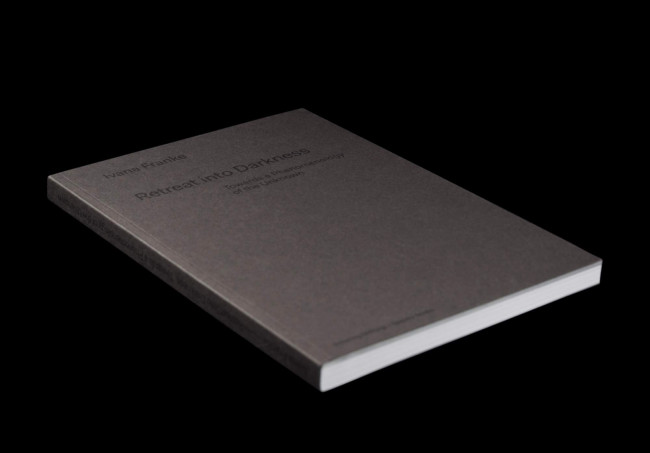
NOWs: Retreat into Darkness by Ivana Franke
Ivana Franke: Retreat into DarknessTowards a Phenomenology of the Unknown
Human perception and the exploration of the unknown have been the subject of artistic investigation for centuries. The artist Ivana Franke combines these two aspects in her project Retreat into Darkness: Towards a Phenomenology of the Unknown. She examines our perceptual processes when we confront something phenomenologically unknown. This book presents all the elements of a “retreat into darkness”: Franke’s installation at the Ernst Schering Foundation—in which the reflections of light in a completely dark space afford new visual experiences—the experiments of cognitive psychologist Bilge Sayim, and the observations of internationally renowned scientists and humanists like Elena Agudio, Jimena Canales, Pierre Gallais, Sylvia C. Pont, and Anil K. Seth., all of whom share an awareness that darkness opens our view to the poetry of the unknown.
Texts by Elena Agudio, Jimena Canales, Ivana Franke, Pierre Gallais, Heike Catherina Mertens, Katja Naie, Sylvia C. Pont, Bilge Sayim, Anil K. Seth.
–
Spector Books
Leipzig March, 2018
ISBN: 9783959052122
Width: 16.5 cm
Length: 24 cm
176 pp.with 50 black-white and 24 colour illustrations, thread-sewn softcover
Language(s): German, English
–
Ivana Franke: Retreat into DarknessTowards a Phenomenology of the Unknown
Human perception and the exploration of the unknown have been the subject of artistic investigation for centuries. The artist Ivana Franke combines these two aspects in her project Retreat into Darkness: Towards a Phenomenology of the Unknown. She examines our perceptual processes when we confront something phenomenologically unknown. This book presents all the elements of a “retreat into darkness”: Franke’s installation at the Ernst Schering Foundation—in which the reflections of light in a completely dark space afford new visual experiences—the experiments of cognitive psychologist Bilge Sayim, and the observations of internationally renowned scientists and humanists like Elena Agudio, Jimena Canales, Pierre Gallais, Sylvia C. Pont, and Anil K. Seth., all of whom share an awareness that darkness opens our view to the poetry of the unknown.
Texts by Elena Agudio, Jimena Canales, Ivana Franke, Pierre Gallais, Heike Catherina Mertens, Katja Naie, Sylvia C. Pont, Bilge Sayim, Anil K. Seth.
–
Spector Books
Leipzig March, 2018
ISBN: 9783959052122
Width: 16.5 cm
Length: 24 cm
176 pp.with 50 black-white and 24 colour illustrations, thread-sewn softcover
Language(s): German, English
–
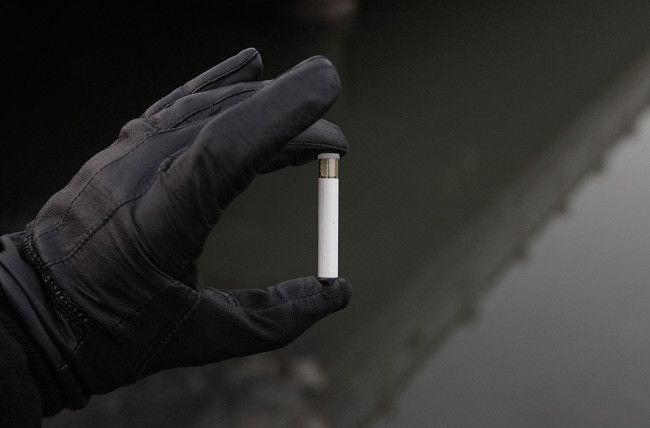
NOWs: Seven Exhibitions at Brandenburgischer Kunstverein
Felix Kiessling, Weisses Arsen
NOWs
Seven ExhibitionsBrandenburgischer Kunstverein, Potsdam
Ausstellungsort: Freundschaftsinsel
Künstler und Künstlerinnen: Donald Bernshouse, Geta Brătescu, Nina Canell, Daniel Gustav Cramer, Haris Epaminonda, Markus Hoffmann, Johanna Jaeger, Felix Kiessling, Antje Majewski, Michael Müller, Das Numen, Katie Paterson. Kurator: Lukas Töpfer
„Sieben Ausstellungen“ wirft auf siebenfache Weise Fragen über das Verhältnis von Idee und Ausführung, Konzept und Formwerdung auf: Was macht eigentlich eine Ausstellung aus? Was ist die Mindestvoraussetzung, unter der wir eine Ausstellung für eine Ausstellung halten? Muss sie um uns werben wie ein Schaufenster um ungeduldige Passanten? Muss sie es uns leicht machen, darf sie schwierig sein? Gibt es eine rote Linie, bei deren Überschreitung die Ausstellung keine Ausstellung mehr ist, weil sie mehr verbirgt als zeigt? Die „Konzeptkunst“ wird zum Systembaukasten, mit dem wir uns unsere Ausstellung beim Betrachten selber bauen.
Die „Sieben Ausstellungen“ teilen eine einflussreiche Tradition: die „Conceptual Art“. Das Verhältnis von Idee und Umsetzung, Konzept und Formfindung steht im Zentrum.
Felix Kiessling, Weisses Arsen
NOWs
Seven ExhibitionsBrandenburgischer Kunstverein, Potsdam
Ausstellungsort: Freundschaftsinsel
Künstler und Künstlerinnen: Donald Bernshouse, Geta Brătescu, Nina Canell, Daniel Gustav Cramer, Haris Epaminonda, Markus Hoffmann, Johanna Jaeger, Felix Kiessling, Antje Majewski, Michael Müller, Das Numen, Katie Paterson. Kurator: Lukas Töpfer
„Sieben Ausstellungen“ wirft auf siebenfache Weise Fragen über das Verhältnis von Idee und Ausführung, Konzept und Formwerdung auf: Was macht eigentlich eine Ausstellung aus? Was ist die Mindestvoraussetzung, unter der wir eine Ausstellung für eine Ausstellung halten? Muss sie um uns werben wie ein Schaufenster um ungeduldige Passanten? Muss sie es uns leicht machen, darf sie schwierig sein? Gibt es eine rote Linie, bei deren Überschreitung die Ausstellung keine Ausstellung mehr ist, weil sie mehr verbirgt als zeigt? Die „Konzeptkunst“ wird zum Systembaukasten, mit dem wir uns unsere Ausstellung beim Betrachten selber bauen.
Die „Sieben Ausstellungen“ teilen eine einflussreiche Tradition: die „Conceptual Art“. Das Verhältnis von Idee und Umsetzung, Konzept und Formfindung steht im Zentrum.
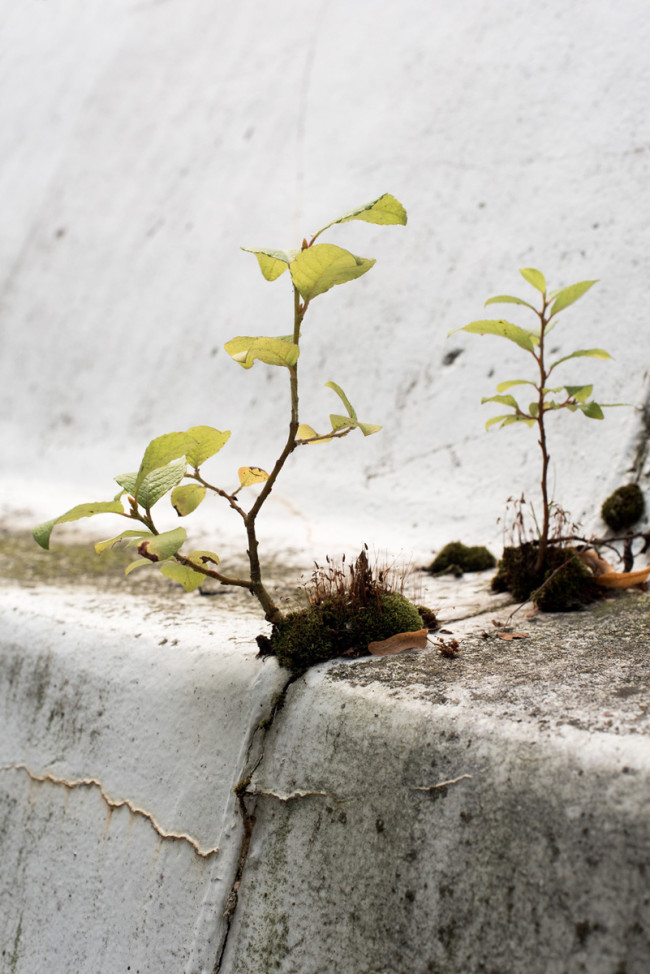
NOWs: Habitat by Miriam Jonas und Andreas Greiner
NOWs:
© Tobias Willmann
Miriam Jonas and Andreas Greiner: HABITATWithin the frame of »Architectures of Segregation«
Curated by Nadia Pilchowski und Marie-Christin Lender
Opening reception on 23rd March 2018, 7pm
Bärenzwinger
Im Köllnischen Park
10179 Berlin
Paradigmatic for zoo architecture the structure of the Bärenzwinger (bear pit) provides a rigid separation between human and animal areas. As the first exhibition within the thematic frame of »Architectures of Segregation«, »Habitat« seeks to undermine these boundaries by means of two different artistic strategies that create new space for interpretation and experience.
Miriam Jonas, whose works often move between the poles of perfect surfaces and their immanent, covered uncanny effects, overlays the bear cages with a new layer of material. Hybrid visual references form a scenario in which an anthropomorphisation is taken literally and the formal species-neutrality of the prison architecture becomes tangible. What is the effect of an optimisation of the conditions within the cages while maintaining functionality?
The examination of growth, identity and transformation of living beings are central to Andreas Greiner’s artistic practice. Inside the Bärenzwinger, bioluminescent algae find their habitat within the architectural limitations of a sculpture. Their glow in a dark room mentally leads us back to the origins of all life. In the outdoor enclosures, a biotope for algae is forming – a project with architect Ivy Lee Fiebig, who, living on-site, enters into a symbiosis with the algal bloom in the creation of a biological cycle. While algae already provide new solutions within the fields of industry and research, Fiebig herself is working on modular designs for living architecture
NOWs:
© Tobias Willmann
Miriam Jonas und Andreas Greiner: HABITATEine Ausstellung von im Rahmen von »Architekturen der Segregation«
Kuratiert von Nadia Pilchowski und Marie-Christin Lender
Eröffnung: 23. März 2018 um 19 Uhr
Bärenzwinger
Im Köllnischen Park
10179 Berlin
Paradigmatisch für Zooarchitekturen gibt die Bauweise des Bärenzwingers eine starre Trennung zwischen menschlichen und tierischen Aufenthaltsbereichen vor. Als erste Ausstellung im Themenschwerpunkt »Architekturen der Segregation« sucht »Habitat« mittels zweier unterschiedlicher künstlerischer Strategien diese Grenzen aufzuweichen und neue Interpretations-‐ und Erfahrungsräume zu schaffen.
Miriam Jonas, deren Arbeiten sich oftmals im Spannungsfeld von perfekter Oberfläche und dem davon überspielten Unheimlichen bewegen, überlagert die Bärenkäfige mit einer neuen Materialschicht. Hybride visuelle Referenzen schaffen ein Szenario, in dem eine Vermenschlichung der Tiere wortwörtlich genommen und die formale Speziesneutralität der Gefängnisarchitektur erfahrbar wird. Welchen Effekt hat die Optimierung der Bedingungen in den Zellen bei Erhaltung der Funktionalität?
Die Auseinandersetzung mit Wachstum, Identität und Transformation von Lebewesen ist zentrales Thema in Andreas Greiners künstlerischem Werk. Im Bärenzwinger finden biolumineszierende Algen ihren Lebensraum in den architektonischen Begrenzungen einer Skulptur. Ihr Leuchten im dunklen Raum führt gedanklich zurück zum Ursprung allen Lebens. In den Außengehegen entsteht ein Biotop für Algen – ein Projekt mit der Architektin Ivy Lee Fiebig, die vor Ort eine Symbiose mit dem Algenflor eingeht und einen biologischen Kreislauf schafft. In Industrie und Forschung liefern Algen bereits vielfach neue Lösungsansätze, Fiebig selbst arbeitet an modularen Entwürfen für lebendige Architektur.
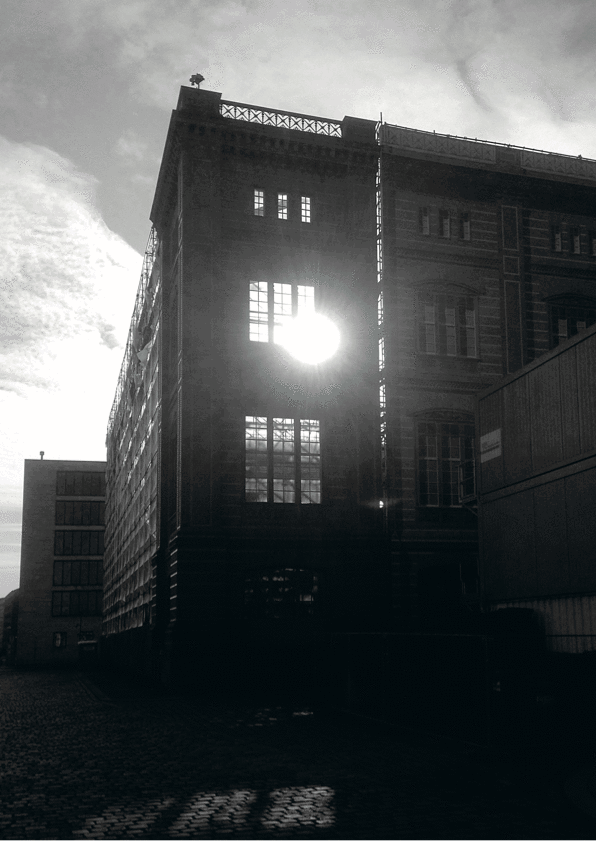
NOWs: Muster Raum. Façade – Face – Fake – Fakt
NOWs
Muster RaumFaçade – Face – Fake – Fakt
Opening
Saturday, 24 March 2018, 6 – 11 pm
24 – 25 March 2018
Sat 6 pm – 11 pm
Sun 12 am – 8 pm
Panel Talk
Sunday, 25 March 2018, 3 – 4 pm
Dr. Marc Wellmann, Anette Ahme, Dr. Ing. Helmut Maier, Stephan Klee
Moderation by Jan Kage
frontviews temporary at
Schinkelsche Bauakademie
Schinkelplatz
10117 Berlin
With Christl Mudrak, Johanna Jaeger, Karl Ludwig Lange, Kathrin Köster, Markus Wüste, Nina Fischer & Maroan el Sani, Ole Meergans, Philip Topolovac, Raul Walch, Sandra Krause Gomez, Sinta Werner. Arranged und produced by Stephan Klee and Branislav Mihajlović.
Historicising? Progressive? Intrepid? How do we want our city to be viewed? Berlin is changing rapidly and we have to ask ourselves in which direction we are heading. Twelve artists will follow up on this question and move into the “Roter Saal” of the former Bauakademie at Berlin Mitte’s Schinkelplatz. On 24th and 25th of March their room interventions and conceptual works will create a space for discourse that is completed by a panel discussion on Sunday, 25th at 3:00 pm. Just like the face of a person belongs inseparably to his or her identity, the face of a city offers deep insights into it’s very own character. However, it’s surface doesn’t only record the ravages of time, but it does also become a document of human’s active interventions. Thus, as soon as places are endowed with meaning and buildings are capitalised to embody certain visions of the future, decisions have to be taken. Whether a ruin is left untouched or being demolished, whether reconstruction seems reasonable or rather the composition of an entire new building: Either way a new factuality is set up. It’s effectiveness lies in it’s power to create a city’s future identity, rather than portraying an already consisting one.
So what kind of Berlin is developing there right before our eyes? The exhibition »Muster Raum« doesn’t take this question to an historically neutral environment. It operates in a place that is shaping the city’s form and character decisively. The “Roter Saal” itself emerged as a product of a changeful history, that the artists will be dealing with via spatial interventions and conceptual works. It is an exact copy of the so called “Musterraum” (model room), that was located in Karl Friedrich Schinkel’s Bauakademie. Opening it’s doors in 1836, it got burned out during the last blows of WWII and was completely demolished as the GDR government decided to build their foreign office just at the spot in 1962. After Germany’s reunification the communist reminiscence had to yield and the areal was being left empty for several years. Only a scaffold was placed there to hint at the ground’s history, holding a tarpaulin that carries an imprint of the former Bauakademie’s appearance. This simulation of it’s façade surrounds the only room that has been reconstructed in it’s original form so far: the “Rote Saal”.
But the aim is to rebuild the whole Bauakademie. Considering the massive critique that the adjacent Humboldtforum had to face, there are questions arising: Do we want to take up Schinkel’s architectural heritage and go in for a radically new way of thinking about buildings? If yes, would this mean to stick to a reconstruction true to the original or would this require a contemporary interpretation? And what kind of events shall be installed there, which contents have to be conveyed? Commonly, those thoughts are being discussed in architectural offices, museums or in ministries, but not within the specific premises at the centre of discussion. The exhibition »Muster Raum« is up to inhibit this. We want a debate that is closely linked to the place where it belongs.
Lisa Schmidt-Herzog
—
This project is made possible by Bezirks Kulturfonds Berlin and Karl Hofer Gesellschaft
NOWs
Muster RaumFaçade – Face – Fake – Fakt
Opening
Saturday, 24 March 2018, 6 – 11 pm
24 – 25 March 2018
Sat 6 pm – 11 pm
Sun 12 am – 8 pm
Panel Talk
Sunday, 25 March 2018, 3 – 4 pm
Dr. Marc Wellmann, Anette Ahme, Dr. Ing. Helmut Maier, Stephan Klee
Moderation by Jan Kage
frontviews temporary at
Schinkelsche Bauakademie
Schinkelplatz
10117 Berlin
With Christl Mudrak, Johanna Jaeger, Karl Ludwig Lange, Kathrin Köster, Markus Wüste, Nina Fischer & Maroan el Sani, Ole Meergans, Philip Topolovac, Raul Walch, Sandra Krause Gomez, Sinta Werner. Arranged und produced by Stephan Klee and Branislav Mihajlović.
Historicising? Progressive? Intrepid? How do we want our city to be viewed? Berlin is changing rapidly and we have to ask ourselves in which direction we are heading. Twelve artists will follow up on this question and move into the “Roter Saal” of the former Bauakademie at Berlin Mitte’s Schinkelplatz. On 24th and 25th of March their room interventions and conceptual works will create a space for discourse that is completed by a panel discussion on Sunday, 25th at 3:00 pm. Just like the face of a person belongs inseparably to his or her identity, the face of a city offers deep insights into it’s very own character. However, it’s surface doesn’t only record the ravages of time, but it does also become a document of human’s active interventions. Thus, as soon as places are endowed with meaning and buildings are capitalised to embody certain visions of the future, decisions have to be taken. Whether a ruin is left untouched or being demolished, whether reconstruction seems reasonable or rather the composition of an entire new building: Either way a new factuality is set up. It’s effectiveness lies in it’s power to create a city’s future identity, rather than portraying an already consisting one.
So what kind of Berlin is developing there right before our eyes? The exhibition »Muster Raum« doesn’t take this question to an historically neutral environment. It operates in a place that is shaping the city’s form and character decisively. The “Roter Saal” itself emerged as a product of a changeful history, that the artists will be dealing with via spatial interventions and conceptual works. It is an exact copy of the so called “Musterraum” (model room), that was located in Karl Friedrich Schinkel’s Bauakademie. Opening it’s doors in 1836, it got burned out during the last blows of WWII and was completely demolished as the GDR government decided to build their foreign office just at the spot in 1962. After Germany’s reunification the communist reminiscence had to yield and the areal was being left empty for several years. Only a scaffold was placed there to hint at the ground’s history, holding a tarpaulin that carries an imprint of the former Bauakademie’s appearance. This simulation of it’s façade surrounds the only room that has been reconstructed in it’s original form so far: the “Rote Saal”.
But the aim is to rebuild the whole Bauakademie. Considering the massive critique that the adjacent Humboldtforum had to face, there are questions arising: Do we want to take up Schinkel’s architectural heritage and go in for a radically new way of thinking about buildings? If yes, would this mean to stick to a reconstruction true to the original or would this require a contemporary interpretation? And what kind of events shall be installed there, which contents have to be conveyed? Commonly, those thoughts are being discussed in architectural offices, museums or in ministries, but not within the specific premises at the centre of discussion. The exhibition »Muster Raum« is up to inhibit this. We want a debate that is closely linked to the place where it belongs.
Lisa Schmidt-Herzog
—
This project is made possible by Bezirks Kulturfonds Berlin and Karl Hofer Gesellschaft
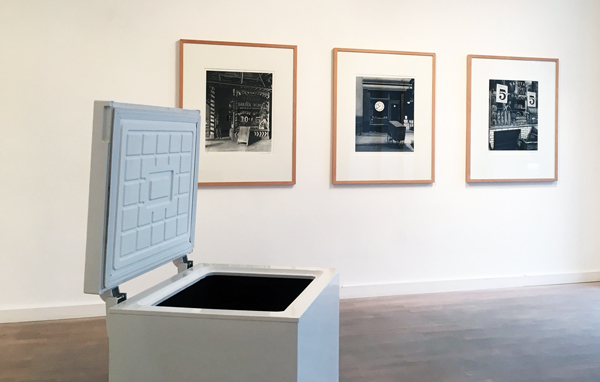
NOWs: Der Schnee von gestern by Sophia Pompéry
NOWs
The Endurance of the Moment
Galerie Wagner + Partner
With works by Berenice Abbott, Bertram Hasenauer, André Kertész, Erwin Olaf, Sophia Pompéry, Roman Signer and Thomas Wrede
Wagner + Partner is pleased to announce the opening of its new premises with the launch of the thematic exhibition, Die Dauer des Moments (The Moment’s Duration). As a crack in time, the “moment”, possesses unique qualities – it is exciting, unbearable, poetic, unpredictable … and? it can also be instantaneously brief.
Since its inception, photography has harnessed not only light but also the technical skills to capture one moment in time. Consequently, the exhibition looks to the 20th-century photographers André Kertész and Berenice Abbott, who address this fact in an exemplary manner with the bygone scenes they once captured from everyday life. These are complemented by the work of the renowned photographer Erwin Olaf, whose series Waiting addresses the insufferableness of waiting. Olaf also addresses the tremendous upheaval in Chinese society in his current series, Shanghai, which is exhibited for the first time in Germany.
Magic Feelings (1997) is an unusual series of black and white portraits by the German photographic artist Thomas Wrede, which catch the enraptured, almost indefinable facial expressions of people in the breathtaking moment of the steep descent of a rollercoaster ride.
The photographs in this exhibition celebrate the instantaneous and are juxtaposed by the quietly poetic works of Bertram Hasenauer and Sophia Pompéry. Hasenauer’s portrait paintings hint at the fleeting nature of an encounter, the maybe of a liaison. Sophia Pompéry’s installation, Der Schnee von gestern (Yesterday’s Snow) explores the impossible act of capturing the moment by exhibiting snow from 2006, and in doing so, the work becomes an imaginative play on this parable. Pompéry has a humorous knack of presenting unusual and banal connections in perceptible ways and these surprises are a common element of her practice.
These works can be read as social commentary on our exceedingly digitised and efficient times, which leave less room for the useless, boring or unpredictable. The exhibition marks the beginning of a series of thematic group exhibitions, which will become a focus for Wagner + Partner in the new Mitte location.
NOWs
Die Dauer des Moments
Galerie Wagner + Partner
Berenice Abbott, Bertram Hasenauer, André Kertész, Erwin Olaf, Sophia Pompéry, Roman Signer and Thomas Wrede
Galerie Wagner + Partner freut sich, mit der thematischen Ausstellung „Die Dauer des Moments“ ihre neuen Räumlichkeiten am Koppenplatz in Berlin Mitte zu eröffnen. Der „Moment“ als ein Riss im Fluss der Zeit besitzt besondere Qualitäten – aufregend, unerträglich, poetisch, unkalkulierbar kann ein einziger Augenblick sein.
Seit ihrer Erfindung verbindet sich mit der Fotografie nicht nur das Licht, sondern auch die (technische) Fertigkeit, einen einzigartigen Moment des Lebens festzuhalten. Von daher greift die Ausstellung beispielhaft auf historische Fotokünstler zurück – André Kertész, Berenice Abbott -, die in ihren Werken längst vergangene Alltagsszenen eingefangen haben. Sie werden ergänzt durch Aufnahmen des renommierten Fotografen Erwin Olaf, der die Unerträglichkeit des Wartens in der Serie „Waiting“ thematisiert, aber auch über den gewaltigen Umbruch der chinesischen Gesellschaft in seiner neusten Serie „Shanghai“ erzählt, von der erstmals eine Arbeit in Deutschland gezeigt wird. Der deutsche Fotokünstler Thomas Wrede präsentiert mit „Magic Feelings“ (1997) eine ungewöhnliche Serie von Schwarzweiß-Portraits. Sie halten den entrückten, bisweilen fast undefinierbaren Gesichtsausdruck von Menschen in jenem atemberaubenden Augenblick einer Achterbahnfahrt fest, wenn es steil hinabgeht.
Der Darstellung des Augenblickhaften in den Fotografien werden die poetisch-stillen Werke Bertram Hasenauers und Sophia Pompérys in der Ausstellung gegenübergestellt. Der Maler Bertram Hasenauer suggeriert in den ausgestellten Portraits die Flüchtigkeit einer Begegnung, das Vielleicht eines Kontaktes. Als Parabel auf den Wunsch nach der Unmöglichkeit des Festhalten eines Moment greift Sophia Pompéry mit ihrer Installation „Der Schnee von gestern“ das Thema auf fantasievolle Weise auf, indem sie Schnee aus dem Jahr 2006 in den Räumen der Galerie präsentiert. Wie häufig in ihrem Werk überrascht Pompéry mit der Gabe, auf humorvolle Art, abseitige und banale Zusammenhänge sinnlich darzustellen.
All diese Arbeiten kann man als Kommentar auf unsere Gegenwart lesen, die durch Digitalisierung und Effizienz den Momenten des Unnützen, des Langweiligen oder des Unberechenbaren stetig weniger Raum lässt. Die Ausstellung ist auch Auftakt einer Reihe thematisch orientierter Gruppenausstellungen, die Galerie Wagner + Partner am neuen Standort in Mitte verstärkt präsentieren möchte.
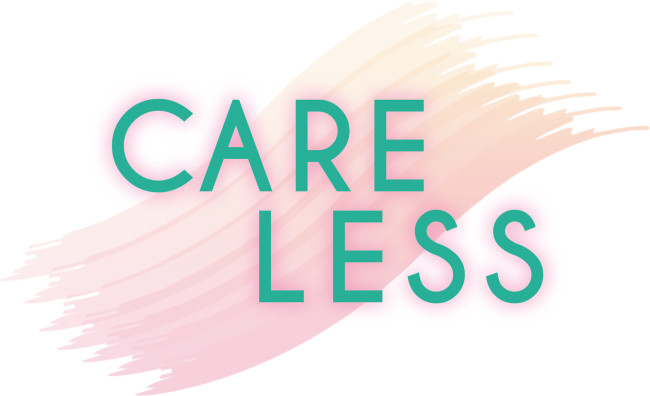
NOWs: „CARE LESSw !“
CARE LESS, 2017. Photo: Lara Ohl
NOWs:
CARE LESS
Städtische Galerie Wolfsburg
Liebe ehemalige und zukünftige Teilnehmer*innen am CARE LESS Programm,
hier kommt die nächste Gelegenheit einmalig oder mehrfach mit uns zu forschen und zu entdecken – herzlich Willkommen!
Vom 16. – 18. März findet in der Städtischen Galerie Wolfsburg unser Auftakt-Event zum neuen Ausbildungsprogramm CARE LESSw statt.
Diesmal bieten wir explizit keine Dienstleistung an sondern nehmen uns richtig viel Zeit um mit Ihnen und Euch neu zu entdecken wie CARE LESS funktioniert. Um auch ein bißchen herum zu trödeln und um nichts zu verpassen. Um endlich mal… – ja was möchten denn Sie sich diesmal vornehmen? Und was möchtest Du endlich mal mit CARE LESS erleben?
Kommen Sie dazu, schließt euch uns an – wir freuen uns auf Sie und sind sehr gespannt auf euch!
Bei Fragen und Anregungen und/oder individuellen Wünschen vorab bitte gern wie immer eine E-mail an: carelessmethode@gmail.com
Wir erwarten Sie und euch im Schloß – Herzlich Willkommen!
Mit CARE LESSigen Grüßen,
Norgard Kröger und Paula Mierzowsky
Für das CARE LESS Team
Weitere Informationen im pdf:
CARE LESS, 2017. Photo: Lara Ohl
NOWs:
CARE LESS
Städtische Galerie Wolfsburg
Liebe ehemalige und zukünftige Teilnehmer*innen am CARE LESS Programm,
hier kommt die nächste Gelegenheit einmalig oder mehrfach mit uns zu forschen und zu entdecken – herzlich Willkommen!
Vom 16. – 18. März findet in der Städtischen Galerie Wolfsburg unser Auftakt-Event zum neuen Ausbildungsprogramm CARE LESSw statt.
Diesmal bieten wir explizit keine Dienstleistung an sondern nehmen uns richtig viel Zeit um mit Ihnen und Euch neu zu entdecken wie CARE LESS funktioniert. Um auch ein bißchen herum zu trödeln und um nichts zu verpassen. Um endlich mal… – ja was möchten denn Sie sich diesmal vornehmen? Und was möchtest Du endlich mal mit CARE LESS erleben?
Kommen Sie dazu, schließt euch uns an – wir freuen uns auf Sie und sind sehr gespannt auf euch!
Bei Fragen und Anregungen und/oder individuellen Wünschen vorab bitte gern wie immer eine E-mail an: carelessmethode@gmail.com
Wir erwarten Sie und euch im Schloß – Herzlich Willkommen!
Mit CARE LESSigen Grüßen,
Norgard Kröger und Paula Mierzowsky
Für das CARE LESS Team
Weitere Informationen im pdf:
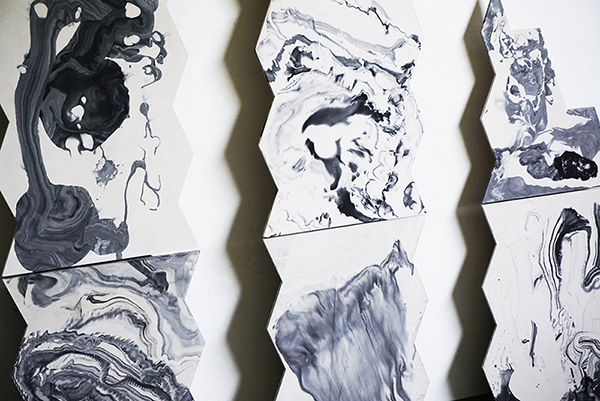
NOWs: Itinerance by Elise Eeraerts
Photo: Elise Eeraerts
NOWs:
Elise Eeraerts: ItineranceManoir de la Touche at Musée Dobrée, Nantes, France
The exhibition Itinerancia brings together, in the walls of Manoir de la Touche of the Dobrée Museum, the works of the resident artists of Casa de Velázquez in Madrid in 2016-2017: Anaïs BOUDOT, Nathalie BOURDREUX, Ernesto CASERO , Anne-Sophie DUCA, Elise EERAERTS, Ana Maria GOMES, Nino LAISNÉ, Alejandro RAMIREZ ARIZA, Baktash SARANG, Giorgio SILVESTRINI, Keen SOUHLAL, Benjamin TESTA, Marianne WASOWSKA .
Photo: Elise Eeraerts
NOWs:
Elise Eeraerts: ItineranceManoir de la Touche
at
Musée Dobrée, Nantes, France
The exhibition Itinerancia brings together, in the walls of Manoir de la Touche of the Dobrée Museum, the works of the resident artists of Casa de Velázquez in Madrid in 2016-2017: Anaïs BOUDOT, Nathalie BOURDREUX, Ernesto CASERO , Anne-Sophie DUCA, Elise EERAERTS, Ana Maria GOMES, Nino LAISNÉ, Alejandro RAMIREZ ARIZA, Baktash SARANG, Giorgio SILVESTRINI, Keen SOUHLAL, Benjamin TESTA, Marianne WASOWSKA .
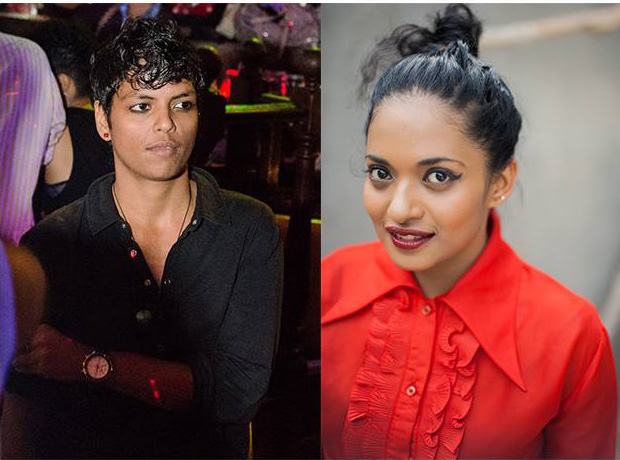
NOWs: The Black Mamba feat. Natasha Mendonca & Suman Sridhar
NOWs:
Bangalore Queer Film Festival (BQFF)
Bangalore Queer Film Festival (BQFF) is an annual event full of queer films from the world over, photo exhibitions, art exhibitions, performances and panel discussions. Over the years, BQFF has become an entrenched part of the cultural landscape of Bangalore. The festival serves as a space for LGBT (Lesbian, Gay, Bisexual, Transgender) concerns to be voiced through the medium of moving image. See program.
The Black Mamba celebrates International Women’s Day with a live-electro music show (Afro-Indian / Neo-Soul) featuring Natasha Mendonca & Suman Sridhar. The multi-lingual performance comprises slam poetry, electronic music sampling, live beats and cascading vocals, celebrating inclusive expressions of gender. The duo invokes themes of women’s empowerment, public safety and ecofeminism. Named after the most poisonous snake on the planet, The Black Mamba transmutes poison into medicine through an urban contemporary sound.
Recent highlights:
UK premiere of feature film Ajeeb Aashiq // Strange Love and world preview of original music album The Black Mamba at the Tate Modern Museum (London 2017); Audio – Visual music performance at the inauguration of the 20th Contemporary Art Festival Sesc_VideoBrasil (Sao Paulo 2017); Live Music performance at the inauguration of the Kochi-Muziris Biennale (India 2016); Ziro Music Festival Headliner Act (Arunachal Pradesh 2016) etc.
Suman Sridhar is an acclaimed singer-songwriter, producer and the voice behind Bollywood hits such as Muskaane Jhooti Hain (Talaash film), Hawa Hawaii (Shaitan film), Fifi (Bombay Velvet film) etc. She bridges the worlds of soul, electronica, Indian classical, opera, cabaret, afrobeat and hip-hop. She grew up with Indian Classical music and holds a degree in Western Classical Music and Women’s & Gender Studies from Rutgers University, USA. Suman Sridhar’s noted shows include Coke Studio (MTV India), Southbank Centre (UK), dOCUMENTA (13) (Germany) etc.
Natasha Mendonca is an award-winning filmmaker and electronic musician from Mumbai, India. She holds a Masters in Film, Video & Sound from the California Institute of the Arts. She is best known for her films Jan Villa and Strange Love // Ajeeb Aashiq. She co-founded Larzish, India’s first international film and video film festival on sexuality and gender in Mumbai, India. Her works have shown at the Museum of Modern Art PS1 (USA), Centre Pompidou (France), 2012 London Olympics & Cultural Festival (Tate Modern, UK) etc.
NOWs:
Bangalore Queer Film Festival (BQFF)
Bangalore Queer Film Festival (BQFF) is an annual event full of queer films from the world over, photo exhibitions, art exhibitions, performances and panel discussions. Over the years, BQFF has become an entrenched part of the cultural landscape of Bangalore. The festival serves as a space for LGBT (Lesbian, Gay, Bisexual, Transgender) concerns to be voiced through the medium of moving image. See program.
The Black Mamba celebrates International Women’s Day with a live-electro music show (Afro-Indian / Neo-Soul) featuring Natasha Mendonca & Suman Sridhar. The multi-lingual performance comprises slam poetry, electronic music sampling, live beats and cascading vocals, celebrating inclusive expressions of gender. The duo invokes themes of women’s empowerment, public safety and ecofeminism. Named after the most poisonous snake on the planet, The Black Mamba transmutes poison into medicine through an urban contemporary sound.
Recent highlights:
UK premiere of feature film Ajeeb Aashiq // Strange Love and world preview of original music album The Black Mamba at the Tate Modern Museum (London 2017); Audio – Visual music performance at the inauguration of the 20th Contemporary Art Festival Sesc_VideoBrasil (Sao Paulo 2017); Live Music performance at the inauguration of the Kochi-Muziris Biennale (India 2016); Ziro Music Festival Headliner Act (Arunachal Pradesh 2016) etc.
Suman Sridhar is an acclaimed singer-songwriter, producer and the voice behind Bollywood hits such as Muskaane Jhooti Hain (Talaash film), Hawa Hawaii (Shaitan film), Fifi (Bombay Velvet film) etc. She bridges the worlds of soul, electronica, Indian classical, opera, cabaret, afrobeat and hip-hop. She grew up with Indian Classical music and holds a degree in Western Classical Music and Women’s & Gender Studies from Rutgers University, USA. Suman Sridhar’s noted shows include Coke Studio (MTV India), Southbank Centre (UK), dOCUMENTA (13) (Germany) etc.
Natasha Mendonca is an award-winning filmmaker and electronic musician from Mumbai, India. She holds a Masters in Film, Video & Sound from the California Institute of the Arts. She is best known for her films Jan Villa and Strange Love // Ajeeb Aashiq. She co-founded Larzish, India’s first international film and video film festival on sexuality and gender in Mumbai, India. Her works have shown at the Museum of Modern Art PS1 (USA), Centre Pompidou (France), 2012 London Olympics & Cultural Festival (Tate Modern, UK) etc.
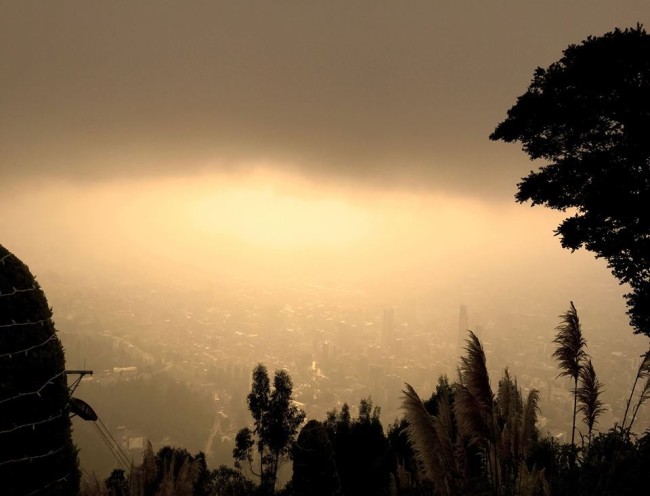
NOWs: Paradise Lost by Timea Oravecz
NOWs:
Timea Oravecz: Paradise Lost
Opening: 6 March 2018, 18.30 h
at
Ex Elettrofonica, Vicolo di Sant’Onofrio 10-11, Rome
6 March marks the opening of Tímea Oravecz’s first solo show in Italy, entitled Paradise Lost, at Ex Elettrofonica. The exhibit came from reflections during a trip to Colombia last autumn, which the artist puts in relation with the classic, but still current, themes in John Milton’s Paradise Lost.
The Hungarian artist, raised in Budapest during the years of socialism, combines her own background with a wide variety of social and cultural aspects she has found in the several Western nations she has lived in over the last twenty years. What emerges is poetics rooted in the dichotomy between culture of origin and need for integration. Each work is closely connected to the socio-cultural situation where it was created, so Paradise Lost is presented as a reflection on the reinterpretation of marxist-leninist ideology by Bolivarianism and communist guerrillas in South America, in a context that is different and far from what the artist knew first-hand during her childhood in Hungary.
Colombia is a diverse country, recovering from fifty years of civil war. On paper, it is a rich nation both naturally and from a humane point of view: the hospitality and general good mood of Colombians make this country seem like a real earthly paradise. Actually, a less superficial analysis, which takes into account the games of power, war, the internal struggles between the government and the guerrillas, reveals all the violence and poverty that affect this territory and make is a real hell. This situation drew the artist’s attention. In Colombia, she collected direct testimony from people who wanted to share their stories with her.
In this exhibit, Tímea Oravecz wants to compare Paradise Lost, where John Milton veiled the civil wars that shook the last years of the English Republic, with Colombian internal struggle. Specifically, the Hungarian artist takes inspiration from the second book, dedicated to the Inferno, where Milton describes conflicts between various military and political factions, combining them with the fifty-year war fought in the Latin American country and only formally concluded.
In the artist’s work, Milton’s poetic reality and the raw Colombian reality merge and are compared, developing a flow of thought and a concrete reflection shown in the exhibited works.
The interest in the socio-political mechanisms of the situations examined for her artistic research, as well as the active participation and attention to the cultural facets of the places experienced in person, intertwine with that need for nomadism so closely interconnected to daily life, which becomes, for her, raw material and inspiration, as well as a real way to approach life and what surrounds her.
Photos by Andrea Veneri
—
Timea Anita Oravecz, born in Budapest, graduated at 2007 BFA, Accademia di Belle Arti, Department of Sculpture, Venice and Master Student by Professor Olafur Eliasson, Institut für Raumexperimente (2009-2011), Examination at 2011 February. She has won several grants eg.: Finalist for Mostyn Open Award, Mostyn Gallery, Wales (2015), Fellowship Residency Program Kamov supported by Department of Culture, City of Rijeka, Croatia (2014), Fellowship Goldrausch Künstlerinnenprojekt art IT, Berliner Senat, Berlin (2011-2012), New York Prize at the Triangle Arts Association, New York (2010), DAAD Fellowship Awarded Artist, UDK Berlin (2008-2009) and Hans Purrmann Prize (2009), Scholarship involving the use of an Artist Studio (2005-2006) and The First Prize, Bevilacqua La Masa Foundation, Venice (2004).She has won several grants e.g.: Finalist for Mostyn Open Award, Mostyn Gallery, Wales (2015), Fellowship Residency Program Kamov supported by the Department of Culture, City of Rijeka, Croatia (2014), Goldrausch Künstlerinnenprojekt Fellowship art IT, Berliner Senat, Berlin (2011-2012), New York Prize at the Triangle Arts Association, New York (2010), DAAD Fellowship Awarded Artist, UDK Berlin (2008-2009) and Hans Purrmann Prize (2009), Scholarship involving the use of an Artist Studio (2005-2006) and The First Prize, Bevilacqua La Masa Foundation, Venice (2004).
She has presented her works at solo shows in Berlin, Helsinki, and more than fifty group exhibitions: BIENALSUR, the 1st Art Biennial of South America, Cúcuta, Colombia (2017), Goethe Institut, Tanger, Morocco (2017), Hamburger Bahnhof – Museum of Contemporary Art, Berlin (2017 ), KUMU art Museum, Tallin (2017), Ikob – Museum of Contemporary Art in Eupen, Belgium (2017), 17th Art Biennial Serbia (2016), The Zacheta National Gallery of Art, Warsaw (2016), 1st OFF Biennale, Budapest (2015), Mostyn Gallery, Wales (2015), Neue Nationalgalerie, Berlin (2014), Haus der Kulturen der Welt, Berlin (2013), NGBK and Kunstraum Kreuzberg/Bethanien, Berlin (2012), Bunkier Sztuki Contemporary, Krakow (2011), Hungarian Nationalgalerie, Budapest (2011), Triangle Arts Association, New York (2010), Secession, Vienna (2010), Zeppelin Museum, Friedrichshafen (2010), Eastside Projects, Birmingham (2009), Manifesta 7, Rovereto (2008) and Final Show of XII. Antonio Ratti Foundation Visual Arts Course, Fabbrica del Vapore, Milan (2006), Bevilacqua La Masa Foundation, Exhibition space in San Marco Square, Venice (2004)
Timea Anita Oravecz lives and works in Berlin.
NOWs:
Timea Oravecz: Paradise Lost
Opening: 6 March 2018, 18.30 h
at
Ex Elettrofonica, Vicolo di Sant’Onofrio 10-11, Rome
6 March marks the opening of Tímea Oravecz’s first solo show in Italy, entitled Paradise Lost, at Ex Elettrofonica. The exhibit came from reflections during a trip to Colombia last autumn, which the artist puts in relation with the classic, but still current, themes in John Milton’s Paradise Lost.
The Hungarian artist, raised in Budapest during the years of socialism, combines her own background with a wide variety of social and cultural aspects she has found in the several Western nations she has lived in over the last twenty years. What emerges is poetics rooted in the dichotomy between culture of origin and need for integration. Each work is closely connected to the socio-cultural situation where it was created, so Paradise Lost is presented as a reflection on the reinterpretation of marxist-leninist ideology by Bolivarianism and communist guerrillas in South America, in a context that is different and far from what the artist knew first-hand during her childhood in Hungary.
Colombia is a diverse country, recovering from fifty years of civil war. On paper, it is a rich nation both naturally and from a humane point of view: the hospitality and general good mood of Colombians make this country seem like a real earthly paradise. Actually, a less superficial analysis, which takes into account the games of power, war, the internal struggles between the government and the guerrillas, reveals all the violence and poverty that affect this territory and make is a real hell. This situation drew the artist’s attention. In Colombia, she collected direct testimony from people who wanted to share their stories with her.
In this exhibit, Tímea Oravecz wants to compare Paradise Lost, where John Milton veiled the civil wars that shook the last years of the English Republic, with Colombian internal struggle. Specifically, the Hungarian artist takes inspiration from the second book, dedicated to the Inferno, where Milton describes conflicts between various military and political factions, combining them with the fifty-year war fought in the Latin American country and only formally concluded.
In the artist’s work, Milton’s poetic reality and the raw Colombian reality merge and are compared, developing a flow of thought and a concrete reflection shown in the exhibited works.
The interest in the socio-political mechanisms of the situations examined for her artistic research, as well as the active participation and attention to the cultural facets of the places experienced in person, intertwine with that need for nomadism so closely interconnected to daily life, which becomes, for her, raw material and inspiration, as well as a real way to approach life and what surrounds her.
Photos by Andrea Veneri
—
Timea Anita Oravecz, born in Budapest, graduated at 2007 BFA, Accademia di Belle Arti, Department of Sculpture, Venice and Master Student by Professor Olafur Eliasson, Institut für Raumexperimente (2009-2011), Examination at 2011 February. She has won several grants eg.: Finalist for Mostyn Open Award, Mostyn Gallery, Wales (2015), Fellowship Residency Program Kamov supported by Department of Culture, City of Rijeka, Croatia (2014), Fellowship Goldrausch Künstlerinnenprojekt art IT, Berliner Senat, Berlin (2011-2012), New York Prize at the Triangle Arts Association, New York (2010), DAAD Fellowship Awarded Artist, UDK Berlin (2008-2009) and Hans Purrmann Prize (2009), Scholarship involving the use of an Artist Studio (2005-2006) and The First Prize, Bevilacqua La Masa Foundation, Venice (2004).She has won several grants e.g.: Finalist for Mostyn Open Award, Mostyn Gallery, Wales (2015), Fellowship Residency Program Kamov supported by the Department of Culture, City of Rijeka, Croatia (2014), Goldrausch Künstlerinnenprojekt Fellowship art IT, Berliner Senat, Berlin (2011-2012), New York Prize at the Triangle Arts Association, New York (2010), DAAD Fellowship Awarded Artist, UDK Berlin (2008-2009) and Hans Purrmann Prize (2009), Scholarship involving the use of an Artist Studio (2005-2006) and The First Prize, Bevilacqua La Masa Foundation, Venice (2004).
She has presented her works at solo shows in Berlin, Helsinki, and more than fifty group exhibitions: BIENALSUR, the 1st Art Biennial of South America, Cúcuta, Colombia (2017), Goethe Institut, Tanger, Morocco (2017), Hamburger Bahnhof – Museum of Contemporary Art, Berlin (2017 ), KUMU art Museum, Tallin (2017), Ikob – Museum of Contemporary Art in Eupen, Belgium (2017), 17th Art Biennial Serbia (2016), The Zacheta National Gallery of Art, Warsaw (2016), 1st OFF Biennale, Budapest (2015), Mostyn Gallery, Wales (2015), Neue Nationalgalerie, Berlin (2014), Haus der Kulturen der Welt, Berlin (2013), NGBK and Kunstraum Kreuzberg/Bethanien, Berlin (2012), Bunkier Sztuki Contemporary, Krakow (2011), Hungarian Nationalgalerie, Budapest (2011), Triangle Arts Association, New York (2010), Secession, Vienna (2010), Zeppelin Museum, Friedrichshafen (2010), Eastside Projects, Birmingham (2009), Manifesta 7, Rovereto (2008) and Final Show of XII. Antonio Ratti Foundation Visual Arts Course, Fabbrica del Vapore, Milan (2006), Bevilacqua La Masa Foundation, Exhibition space in San Marco Square, Venice (2004)
Timea Anita Oravecz lives and works in Berlin.
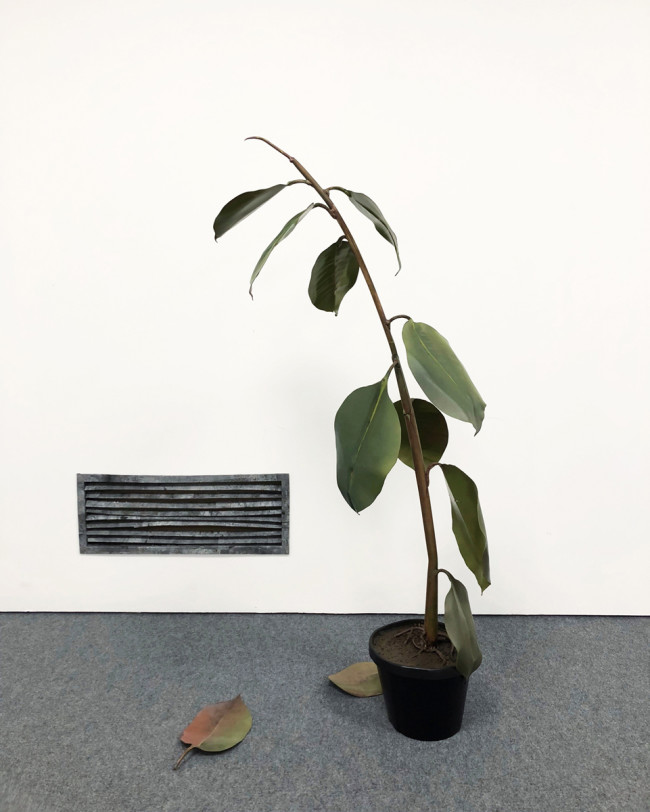
NOWs: Welcome to the Jungle
Alvaro Urbano: Office (detail), 2017-18
NOWs:
Welcome to the JungleKunsthalle Düsseldorf
Opening: 2 March 2018, 8 pm
Works by Jonathas de Andrade, Kristina Buch, Oto Hudec, Laura Lima, Cinthia Marcelle, Mario Pfeifer, Liu Shiyuan, Kota Takeuchi, Alvaro Urbano
Under the title Welcome to the Jungle, the Kunsthalle Düsseldorf will bring together a selection of international works that critically, reflectively, and often humorously, yet without moralistic finger-pointing, refer to those conditions and paradoxes in which we become entangled while attempting to do the right thing. For instance, there is a tendency today to revolt against circumstances in which, through our decisions, we implicitly allow entrepreneurial, social, and resource-related practices to take place which we would reject in specific cases when, for example, human beings and nature suffer as a result. This manifests itself in the form of conscious consumer choices in food, clothing, and travel, or the simple question of which topics and voices we lend our time and attention to. From carbon footprints to sustainable financial investments, from corporate social responsibility to the environmental impact of the production chain—in practice, the density of information is taking on jungle-like proportions. Yet it is often not clear what fits best with our own beliefs or which path would theoretically be the right one. It is an attempt to orient ourselves amid the noise and thickets of the jungle and to discern the big picture from the local perspective. Collective movements emerge and condense. Investigative journalism and viral narratives share the bandwidth with professional image campaigns and digital smokescreens. Quality seals for fair trade or organic production increasingly work like brands, and ways of life devoted to sustainability can be adapted from magazines in the visual language of the fashion and lifestyle industry. Thus, the jungle is also a symbol of disorientation and overload, a place where no one direction looks more promising than any other. Each new position appears like an arbitrary selection of those already available. Every new narrative is already part of a larger narrative in which fiction and enlightenment merge.
Whether on a broad scale and on the macroeconomic level the individual question “How do I want to live?” will lead to a critical potential and, as a consequence, solutions for the social and ecological problems of mankind can be found is certainly one of the exciting questions with which we are faced. Yet for the individual, the dilemma remains: Do I measure myself against a hypothetical success of my decisions and results (and am I on a constant search for new insights, since this morning’s information is already outdated), or can attitude, intention, and integrity within my individual life circumstances remain valid standards? The visual arts also address questions that explicitly deal with these topics. The focus of the exhibition is on such artistic practices that concentrate on the aesthetic dimension of art in order to sharpen our awareness of these states and processes, paradoxes and contradictions in the everyday jungle of information, wisdom, half-truths, prejudices, and rules. The selected works do not so much specify a concrete path or paint an apocalyptic picture, but instead seriously and wholeheartedly examine the realities of the jungle and ultimately encourage the viewer to pursue stimulating questions and explore new approaches or poetic and absurd paths in an encouraging and humorous atmosphere.
The artists who were invited to participate in the exhibition are distinguished by the fact that they use their own specific approach to media to create captivating pictures and stories that are persuasive due to their choice of themes and their aesthetics. Many of the selected works deal with concrete situations and developments that they observe and in which they (aesthetically) intervene. Beyond a purely documentary approach and attitude of enlightenment, the works deal with the strategies of the documentary and ultimately also the unattainability of the one sole truth or the one right path. For instance, some of the artists work with documentary practices, but continually undermine them by reversing the role of the observer and the observed, punctuating it with the aesthetics of music videos, or making the visibility of a subject possible by staging a documentary setting. Even those artistic practices that approach these themes through specific cultural subjects ultimately create a universal validity by means of their aesthetics. Another approach that connects the individual positions is the recourse to physical and performative elements through which abstract processes become visible and tangible in a particular way. The exhibition brings together video installations, performances, large-scale productions, and site-specific works by international artists. They are mainly the works and perspectives of a younger generation.
Curated by Jasmina Merz and Anna Lena Seiser
Alvaro Urbano: Office (detail), 2017-18
NOWs:
Welcome to the JungleKunsthalle Düsseldorf
Eröffnung: 2 März 2018, 8 pm
Mit Arbeiten von Jonathas de Andrade, Kristina Buch, Oto Hudec, Laura Lima, Cinthia Marcelle, Mario Pfeifer, Liu Shiyuan, Kota Takeuchi, Alvaro Urbano
Unter dem Titel „Welcome to the Jungle“ versammelt die Kunsthalle Düsseldorf eine Auswahl internationaler Werke, die kritisch, reflektiert und oft mit Humor, aber ohne moralischen Fingerzeig auf jene Zustände und Paradoxien verweisen, in die wir uns verstricken, während wir versuchen, das Richtige zu tun. Im Zeitgeist liegt zum Beispiel das Aufbegehren gegen Verhältnisse, in denen wir durch unsere Entscheidungen implizit auch solche unternehmerischen, sozialen und ressourcenbezogenen Praktiken gewähren lassen, die wir im konkreten Fall ablehnen würden, wenn z.B. Mensch und Natur darunter leiden. Greifbar wird dies durch bewusstere Konsumentscheidungen bei Ernährung, Kleidung und Reisen oder bei der einfachen Frage, welchen Themen und Stimmen wir unsere Zeit und Aufmerksamkeit schenken. Vom Carbon Footprint bis zur nachhaltigen Finanzanlage, von Corporate Social Responsibility bis zur Ökobilanz der Verarbeitungskette – in der Praxis nimmt die Informationsdichte dschungelartige Ausmaße an, wobei oft nicht klar ist, welche Ausrichtung den eigenen Überzeugungen am ehesten entspricht oder welcher Weg rein theoretisch der richtige wäre. Es ist der Versuch im Lärm und Dickicht des Dschungels Orientierung zu gewinnen und aus der lokalen Perspektive das Große-Ganze zu erkennen. Kollektive Bewegungen entstehen und verdichten sich. Investigativer Journalismus und virale Erzählungen teilen sich die Bandbreite mit professionellen Imagekampagnen und digitalen Nebelkerzen.
Gütesiegel für Fair Trade oder ökologische Herstellung funktionieren zunehmend wie Brands, und der Nachhaltigkeit verschriebene Lebensentwürfe können aus Magazinen in der Bildsprache von Mode- und Lifestyleindustrie entlehnt werden. Der Dschungel ist somit auch Sinnbild für Orientierungslosigkeit und Überforderung, ein Ort, an dem keine Richtung vielversprechender aussieht als die Andere. Jede neue Position scheint eine beliebige aus den bereits verfügbaren. Jede neue Erzählung ist bereits Teil einer größeren Erzählung, in der Fiktion und Aufklärung verschmelzen. Ob in der Breite und auf makroökonomischer Ebene mit der individuellen Frage „Wie will ich leben?“ ein kritisches Potential entwickelt und so auch Lösungen für die sozialen und ökologischen Probleme der Allgemeinheit gefunden werden, ist mit Sicherheit eine der spannenden Fragen. Für den Einzelnen bleibt aber das Dilemma: Messe ich mich an einem hypothetischen Erfolg meiner Entscheidungen und Ergebnisse (und bin auf der permanenten Suche nach neuen Erkenntnissen, da die Informationen von Heute Morgen keine Gültigkeit mehr haben) oder können Haltung, Intention und Integrität innerhalb meiner individuellen Lebensumstände weiterhin gültige Maßstäbe sein?Auch in der bildenden Kunst werden Fragestellungen verhandelt, die sich explizit mit diesen Themen beschäftigen. Im Fokus der Ausstellung stehen jene künstlerischen Praktiken, die die ästhetische Dimension der Kunst in den Vordergrund rücken um damit das Bewusstsein für jene Zustände und Prozesse, Paradoxien und Widersprüche im alltäglichen Dschungel von Informationen, Weisheiten, Halbwahrheiten, Vorurteilen und Vorschriften zu schärfen. Die ausgewählten Arbeiten geben weniger einen konkreten Weg vor oder zeichnen ein apokalyptisches Bild, als dass sie vielmehr die Realitäten des Dschungels ernsthaft und mit Hingabe erkunden und den Betrachter letztlich in einer ermutigenden und humorvollen Atmosphäre animieren Fragen zu vertiefen und neue Zugänge oder poetische wie absurde Wege zu erproben.
Die für die Ausstellung eingeladenen Künstler*innen zeichnet aus, dass sie mit einem jeweils spezifischen medialen Ansatz einnehmende Bilder und Geschichten schaffen, die zum einen durch die Wahl ihrer Themen und zum anderen durch ihre Ästhetik überzeugen. Viele der ausgewählten Arbeiten beschäftigen sich mit konkreten Situationen und Entwicklungen, die sie beobachten und in die sie (ästhetisch) eingreifen. Jenseits eines reinen Dokumentarismus und Aufklärungshabitus verhandeln die Arbeiten Strategien des Dokumentarischen und letztlich auch die Unerreichbarkeit der einen Wahrheit oder des richtigen Wegs. So arbeiten einige der Künstler*innen mit dokumentarischen Praktiken, unterlaufen diese aber immer wieder, indem sie z.B. die Rolle des Beobachters und des Beobachteten umkehren, diese mit der Ästhetik von Musikvideos durchbrechen oder mit der Inszenierung eines dokumentarischen Settings die Sichtbarkeit eines Sujets erst ermöglichen. Auch jene künstlerischen Praktiken deren Zugang über spezifisch kulturelle Sujets erfolgt, schaffen letztlich durch ihre Ästhetik eine universelle Gültigkeit. Ein weiterer Ansatz, der einzelne Position verbindet, ist der Rückgriff auf körperlich-performative Elemente, durch die abstrakte Prozesse in besonderer Art sichtbar und erfahrbar werden. Die Ausstellung versammelt Videoinstallationen, Performances, raumgreifende Inszenierungen und ortsspezifische Arbeiten von internationalen Künstler*innen.
Kuratiert von Jasmina Merz und Anna Lena Seiser
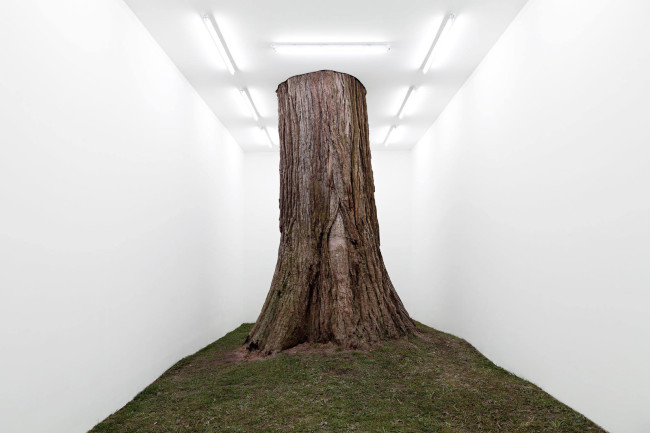
NOWs: Fabian Knecht at Kunsthalle Baden-Baden
Fabian Knecht: ISOLATION (Stamm), 2018
NOWs:
Exhibiting the ExhibitionFrom the Cabinet of Curiosities to the Curatorial Situation
at
Kunsthalle Baden-Baden
“Exhibiting the Exhibition” takes a look into the past, at the present, and also gives us a glimpse of the future of the exhibition. Precursors of modern museums will mark the starting point of the exhibition and it ends with the curatorial situations we’re currently witnessing. The show brings together several hundred works, which show, for example, how objects used to be presented in early cabinets of curiosities, which forms of display emerged in the 20th century, and how art is presented today.
A historical section in the main galleries of the Kunsthalle will form the prelude to the exhibition itself. It includes two of the earliest known examples of photographs documenting an exhibition. Even earlier forms of exhibition will be illustrated by means of floor plans, hanging plans, images of galleries, and tools of display, such as historical showcases and pedestals from the 17th and 18th centuries. Another focus, also shown at the Kunsthalle, will be the art of the exhibition in the 20th century: this was a time when new approaches to displaying were experimented with, often by the artists themselves. Some of these were so extreme as to have remained revolutionary to this day. One example is the ‘Cabinet of the Abstract’, which El Lissitzky set up at the Provinzialmuseum in Hanover in 1927. This is presented as a digital reconstruction and re-interpreted by Polish artist Goshka Macuga. Reflections on the “infrastructure” of the exhibition are another topos of contemporary art. For example, museum carpets and benches have been playfully reworked into elaborate choreographic objects. This can be seen in the works of Nevin Aladağ and Jeppe Hein.
In addition, the exhibition can be experienced outside the premises of the Kunsthalle itself. Current works attest to the fact that almost any site can be transformed into a temporary exhibition space by the mere creation of a curatorial situation. It is in this sense that the exhibition will conquer the urban space of Baden-Baden: shop windows, a bridge which crosses the river Oos, even the trees of the famous Lichtentaler Allee will be turned into exhibition spaces.
Amid all the changes in the centuries-long history of the exhibition, there has been one constant: an exhibition is not an exhibition without its audience.
With works by Nevin Aladağ, John Bock, Mariana Castillo Deball, Tacita Dean, Christian Eisenberger, Andrea Fraser, Lasse Schmidt Hansen, Friedemann Heckel, Jeppe Hein, Julian Irlinger, Fabian Knecht, Louise Lawler, Allan McCollum, Maria Miottke, Simon Dybbroe Møller, Ivan Moudov, Philipp Modersohn, Walid Raad, Karin Sander, Evamaria Schaller, Kamen Stoyanov, Sebastian Thewes, Lukas Töpfer, Claudia de la Torre, Kaari Upson, Pae White, Fred Wilso, a.o.
Fabian Knecht: ISOLATION (Stamm), 2018
NOWs:
Exhibiting the ExhibitionFrom the Cabinet of Curiosities to the Curatorial Situation
at
Kunsthalle Baden-Baden
“Exhibiting the Exhibition” takes a look into the past, at the present, and also gives us a glimpse of the future of the exhibition. Precursors of modern museums will mark the starting point of the exhibition and it ends with the curatorial situations we’re currently witnessing. The show brings together several hundred works, which show, for example, how objects used to be presented in early cabinets of curiosities, which forms of display emerged in the 20th century, and how art is presented today.
A historical section in the main galleries of the Kunsthalle will form the prelude to the exhibition itself. It includes two of the earliest known examples of photographs documenting an exhibition. Even earlier forms of exhibition will be illustrated by means of floor plans, hanging plans, images of galleries, and tools of display, such as historical showcases and pedestals from the 17th and 18th centuries. Another focus, also shown at the Kunsthalle, will be the art of the exhibition in the 20th century: this was a time when new approaches to displaying were experimented with, often by the artists themselves. Some of these were so extreme as to have remained revolutionary to this day. One example is the ‘Cabinet of the Abstract’, which El Lissitzky set up at the Provinzialmuseum in Hanover in 1927. This is presented as a digital reconstruction and re-interpreted by Polish artist Goshka Macuga. Reflections on the “infrastructure” of the exhibition are another topos of contemporary art. For example, museum carpets and benches have been playfully reworked into elaborate choreographic objects. This can be seen in the works of Nevin Aladağ and Jeppe Hein.
In addition, the exhibition can be experienced outside the premises of the Kunsthalle itself. Current works attest to the fact that almost any site can be transformed into a temporary exhibition space by the mere creation of a curatorial situation. It is in this sense that the exhibition will conquer the urban space of Baden-Baden: shop windows, a bridge which crosses the river Oos, even the trees of the famous Lichtentaler Allee will be turned into exhibition spaces.
Amid all the changes in the centuries-long history of the exhibition, there has been one constant: an exhibition is not an exhibition without its audience.
With works by Nevin Aladağ, John Bock, Mariana Castillo Deball, Tacita Dean, Christian Eisenberger, Andrea Fraser, Lasse Schmidt Hansen, Friedemann Heckel, Jeppe Hein, Julian Irlinger, Fabian Knecht, Louise Lawler, Allan McCollum, Maria Miottke, Simon Dybbroe Møller, Ivan Moudov, Philipp Modersohn, Walid Raad, Karin Sander, Evamaria Schaller, Kamen Stoyanov, Sebastian Thewes, Lukas Töpfer, Claudia de la Torre, Kaari Upson, Pae White, Fred Wilso, a.o.
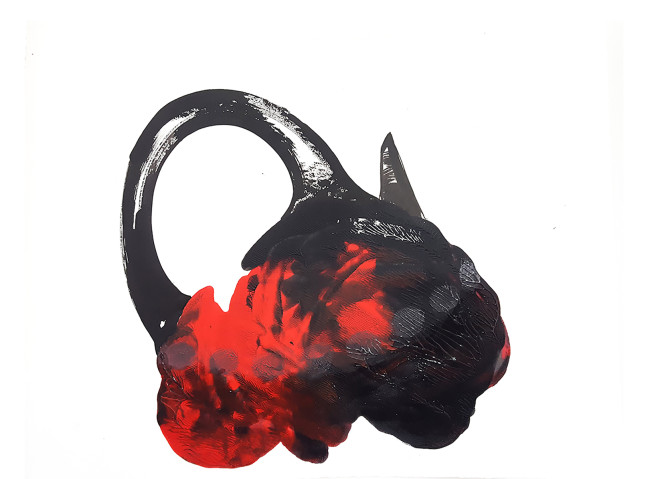
NOWS: የሮቤል ተመስገን ተንሳፋፊ ጀበናዎች by Robel Temesgen
NOWs:
Robel Temesgen | የሮቤል ተመስገን ተንሳፋፊ ጀበናዎችNu Bunna Tetu
at
Fendika Cultural Centre, Addis Ababa
Opening: Thursday 22 February 2018
6:00 – 9:00 pm
Fendika Cultural Centre presents “የሮቤል ተመስገን ተንሳፋፊ ጀበናዎች”, a solo exhibition by Robel Temesgen. In this Exhibition, Temesgen walks us through the “Nu Bunna Tetu”; the highly proliferating small scale coffee drinking spots and their emergence as alternative public spaces. In the fast changing character of Addis Ababa, the coffee spots have become an integral part of everyday life in areas ranging from the fancy multipurpose malls to the demolished as well as new construction sites in the city. Using the painting approach the artist developed over the years, Temesgen elevates the Jebenas/coffee pots beyond the customary. Owing to their compelling presence, “የሮቤል ተመስገን ተንሳፋፊ ጀበናዎች” looks into coffee pots as floating to survive, to make it through the hustle and bustle and continue to offer a platform that affords customers a shared place for conversations as they sip on their cup of coffee. Imagining sites of “Nu Bunna Tetu” as spots that somehow connect ‘strangers’ constitutes part of his continued interest in the socio-political dynamics of the social, sociality, and sociability and spaces at which this manifest. After years of exhibiting abroad, this Exhibition is Temesgen’s first Solo show in Addis Ababa.
Robel Temesgen: Untitled, 2017, Acrylic, ink, sticker, permanent marker on paper
About Robel Temesgen
Born in 1987 in Ethiopia, Robel Temesgen received an MFA from Tromsø Academy of Contemporary Art, University of Tromsø, Norway in 2015, and a BFA in Fine Art (Painting) from Addis Ababa University in 2010. He recently took part in the Junge Akademie Program of the Akademie der Künste, Berlin, and was a resident artist at IASPIS, Stockholm, the Swedish Art Grants Committee’s International Programme for Visual and Applied Arts. Temesgen’s work has been exhibited at the Hamburger Bahnhof, Berlin (2017), Marabohparken, Stockholm (2017), Akademie der Künste, Berlin (2016), Kurant Visningsrom, Tromsø (2015), Addis International Video Art Festival, Addis Ababa (2015), Art Future/Future Signs, Riga (2015), RomeAfrica Film Festival, Rome (2015), Lumen Festival, New York (2015), Neue Nationalgalerie, Berlin (2014) and Modern Art Museum/Gebre Kristos Desta Center, Addis Ababa (2013). He currently lives and works in Addis Ababa, Ethiopia.
NOWs:
Robel Temesgen | የሮቤል ተመስገን ተንሳፋፊ ጀበናዎችNu Bunna Tetu
at
Fendika Cultural Centre, Addis Ababa
Opening: Thursday 22 February 2018
6:00 – 9:00 pm
Fendika Cultural Centre presents “የሮቤል ተመስገን ተንሳፋፊ ጀበናዎች”, a solo exhibition by Robel Temesgen. In this Exhibition, Temesgen walks us through the “Nu Bunna Tetu”; the highly proliferating small scale coffee drinking spots and their emergence as alternative public spaces. In the fast changing character of Addis Ababa, the coffee spots have become an integral part of everyday life in areas ranging from the fancy multipurpose malls to the demolished as well as new construction sites in the city. Using the painting approach the artist developed over the years, Temesgen elevates the Jebenas/coffee pots beyond the customary. Owing to their compelling presence, “የሮቤል ተመስገን ተንሳፋፊ ጀበናዎች” looks into coffee pots as floating to survive, to make it through the hustle and bustle and continue to offer a platform that affords customers a shared place for conversations as they sip on their cup of coffee. Imagining sites of “Nu Bunna Tetu” as spots that somehow connect ‘strangers’ constitutes part of his continued interest in the socio-political dynamics of the social, sociality, and sociability and spaces at which this manifest. After years of exhibiting abroad, this Exhibition is Temesgen’s first Solo show in Addis Ababa.
Robel Temesgen: Untitled, 2017, Acrylic, ink, sticker, permanent marker on paper
About Robel Temesgen
Born in 1987 in Ethiopia, Robel Temesgen received an MFA from Tromsø Academy of Contemporary Art, University of Tromsø, Norway in 2015, and a BFA in Fine Art (Painting) from Addis Ababa University in 2010. He recently took part in the Junge Akademie Program of the Akademie der Künste, Berlin, and was a resident artist at IASPIS, Stockholm, the Swedish Art Grants Committee’s International Programme for Visual and Applied Arts. Temesgen’s work has been exhibited at the Hamburger Bahnhof, Berlin (2017), Marabohparken, Stockholm (2017), Akademie der Künste, Berlin (2016), Kurant Visningsrom, Tromsø (2015), Addis International Video Art Festival, Addis Ababa (2015), Art Future/Future Signs, Riga (2015), RomeAfrica Film Festival, Rome (2015), Lumen Festival, New York (2015), Neue Nationalgalerie, Berlin (2014) and Modern Art Museum/Gebre Kristos Desta Center, Addis Ababa (2013). He currently lives and works in Addis Ababa, Ethiopia.
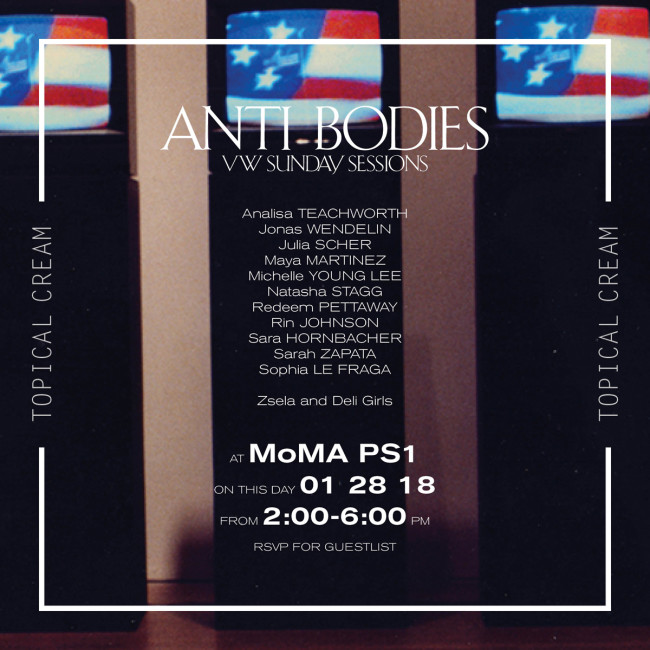
NOWs: Anti Bodies at MoMA PS1
NOWs:
Anti Bodies
at
MoMA PS1
Sunday, January 28, 2:00–6:00 p.m
Anti Bodies is an afternoon of performance, readings and installations organized with Topical Cream, a platform for female-identifying and gender non-conforming persons working at the intersection of contemporary art and technology. Focusing on artists whose practices explore methods of self-preservation, the featured work demonstrates how gestures of resistance can be choreographed through performance and communal action. The program includes a performance by Analisa Teachworth, in collaboration with Jonas Wendelin; video screenings presented by Jacksonville-based artist Redeem Pettaway; an exploration of surveillance, control, and seduction by Julia Scher; and live concerts from Zsela and Deli Girls. The program is complemented by additional programming presented throughout the museum, including an ongoing performance by Michelle Young Lee examining the labor of care, a video installation by Sara Hornbacher, and a recital situated within an environment created by Sarah Zapata with poetry and readings from Zapata, Maya Martinez, Rin Johnson, Sophia Le Fraga, and Natasha Stagg.
Topical Cream, founded by Lyndsy Welgos, Whitney Mallett, and Ara Anjargolian, takes an active part in New York City’s contemporary artistic and digital community through critical feminist interventions.
Tickets: $15 (MoMA Members $13)
Programming throughout the building free with museum admission
NOWs:
Anti Bodies
at
MoMA PS1
Sunday, January 28, 2:00–6:00 p.m
Anti Bodies is an afternoon of performance, readings and installations organized with Topical Cream, a platform for female-identifying and gender non-conforming persons working at the intersection of contemporary art and technology. Focusing on artists whose practices explore methods of self-preservation, the featured work demonstrates how gestures of resistance can be choreographed through performance and communal action. The program includes a performance by Analisa Teachworth, in collaboration with Jonas Wendelin; video screenings presented by Jacksonville-based artist Redeem Pettaway; an exploration of surveillance, control, and seduction by Julia Scher; and live concerts from Zsela and Deli Girls. The program is complemented by additional programming presented throughout the museum, including an ongoing performance by Michelle Young Lee examining the labor of care, a video installation by Sara Hornbacher, and a recital situated within an environment created by Sarah Zapata with poetry and readings from Zapata, Maya Martinez, Rin Johnson, Sophia Le Fraga, and Natasha Stagg.
Topical Cream, founded by Lyndsy Welgos, Whitney Mallett, and Ara Anjargolian, takes an active part in New York City’s contemporary artistic and digital community through critical feminist interventions.
Tickets: $15 (MoMA Members $13)
Programming throughout the building free with museum admission
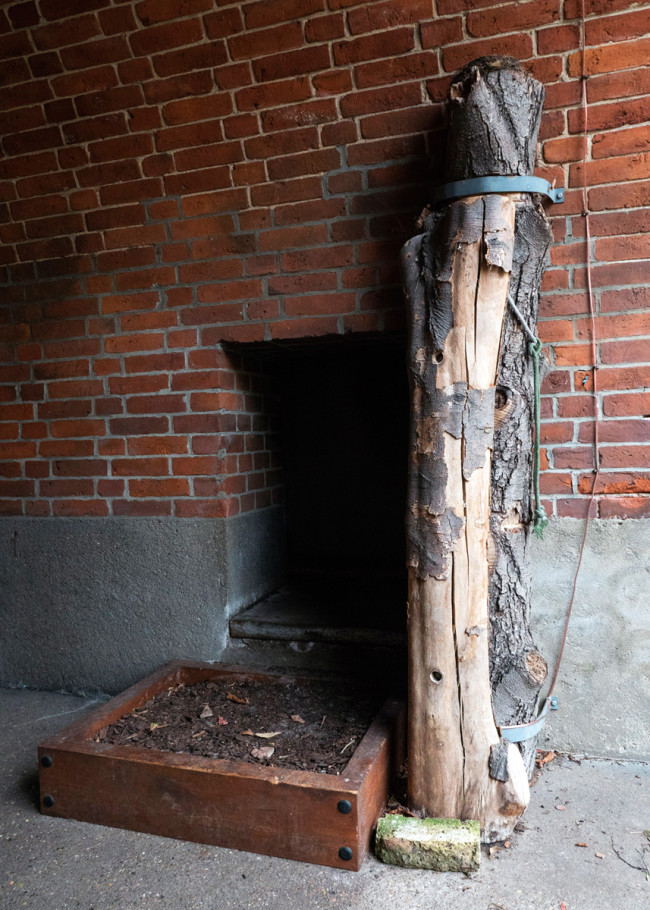
NOWs: Hibernation – Linda Kuhn & Alvaro Urbano
Bärenzwinger, Berlin. Foto: Robert Eckstein
NOWs:
HibernationLinda Kuhn & Alvaro Urbano
at
Bärenzwinger, Berlin
Exhibition: 20.01. – 10.03.2018
Opening: Friday, 19.01.2018 | 7–10 pm
Welcome: Sabine Weißler, District Councillor for Continuing Education, Culture, Environment, Nature, Street and Green Areas
About the exhibition: Julia Heunemann and Nadia Pilchowski
During hibernation, the Berlin city bears were rarely seen in their outdoor enclosures. They mostly slept, were fed only inside the bear pit out of public view, and freed from their representative role. Periods of rest in which physiological processes shut down, mental tension subsides and where consciousness shifts between vague perception and purposeless actions, are disharmonious with neoliberal performance orientation. “Hibernation” presents artistic positions which examine those conditions and effects of temporary withdrawal.
In her previous works, Linda Kuhn has addressed the withdrawal from goal-orientated action. In the outdoor enclosures of the bear pit, which align physical distance with comprehensive visibility, the Berlin-based artist obstructs the visitors’ views. With protective cladding for sculptures, she creates retreats for the elements found within the enclosures, and in the process, ascribes to them new plastic qualities.
By means of architectural interventions that circumvent habitual perceptual patterns, Alvaro Urbano deconstructs relations between inside and outside, dream and reality. Considering hibernation, he suspends the bear cages from their intended use and focuses on the imaginary potential of their immured and barred architecture. The question then of what bears dream about ultimately reflects hibernation itself as a space of the imaginary.
Curated by Julia Heunemann and Nadia Pilchowski
Alvaro Urbano: Verde que te quiero verde. Courtesy the artist and ChertLüdde, Berlin
Linda Kuhn: Gerade Nicht. Courtesy the artist
Fotos: Katharina Rose
Bärenzwinger, Berlin. Foto: Robert Eckstein
NOWs:
HibernationLinda Kuhn & Alvaro Urbano
at
Bärenzwinger, Berlin
Ausstellung: 20.01. bis 10.03.2018
Eröffnung am Freitag, 19.01.2018 | 19 – 22 Uhr
Begrüßung: Sabine Weißler, Bezirksstadträtin für Weiterbildung, Kultur, Umwelt, Natur, Straßen und Grünflächen
Zur Ausstellung: Julia Heunemann und Nadia Pilchowski
Während der Winterruhe ließen sich die Berliner Stadtbären selten in ihren Außengehegen blicken. Sie schliefen viel, wurden nur noch im Zwingergebäude abseits der Öffentlichkeit gefüttert und waren ihrer repräsentativen Funktion entbunden. Ruhephasen, in denen physiologische Prozesse heruntergefahren werden, geistige Anspannung nachlässt und das Bewusstsein zwischen diffuser Wahrnehmung und intentionsfreiem Handeln changiert, stehen neoliberalem Leistungsdenken entgegen. »Hibernation« präsentiert künstlerische Positionen, die sich mit derartigen Bedingungen und Effekten von temporärem Rückzug auseinandersetzen.
Mit dem Austreten aus zielgerichteten Leistungszusammenhängen hat sich Linda Kuhn bereits in früheren Arbeiten befasst. In den Außengehegen des Bärenzwingers, die auf räumliche Distanz bei umfassender Einsehbarkeit hin ausgerichtet sind, verstellt die Berliner Künstlerin nun die Blicke der Betrachter*innen. Mit Schutzverkleidungen für Skulpturen entwirft sie Rückzugsräume für Elemente, die sie in den Gehegen vorgefunden hat und schreibt ihnen damit zugleich neue plastische Qualitäten zu.
Durch architektonische Eingriffe, die gewohnte Wahrnehmungsmuster unterlaufen, dekonstruiert Alvaro Urbano Verhältnisse von Innen und Außen, Traum und Wirklichkeit. Die Winterruhe in den Blick nehmend, enthebt er die Bärenkäfige von den ihnen einst zugewiesenen Bestimmungen und fokussiert die imaginären Potenziale der ummauerten und vergitterten Architekturen. Die Frage danach, wovon Bären wohl träumen, reflektiert schließlich den Winterschlaf selbst als Raum des Imaginären.
Kuratiert von Julia Heunemann und Nadia Pilchowski
Alvaro Urbano: Verde que te quiero verde. Courtesy the artist and ChertLüdde, Berlin
Linda Kuhn: Gerade Nicht. Courtesy the artist
Fotos: Katharina Rose
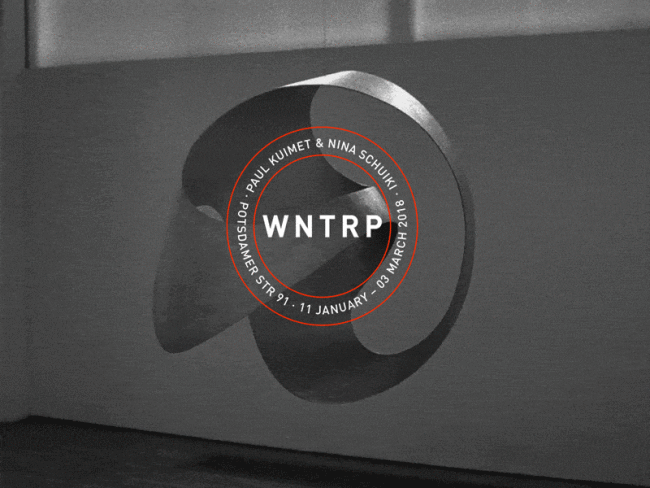
NOWs: Space Coordinates by Paul Kuimet / Nina Schuiki
NOWs:
Paul Kuimet / Nina Schuiki: Space Coordinates
WNTRP
Opening: 11 January 2018, 5 – 8 pm
Exhibition: 12 January – 03 March 2018
Space Coordinates presents works by Nina Schuiki and Paul Kuimet that condense as sequences of photography or sculpture in space. These serial results often remain arrested in the form of an infinite loop or seem to circle infinitely onward. Both artists share an interest in these issues: they encounter one another for the first time in the exhibition Space Coordinates.
In endless candle (2017), Nina Schuiki’s gesture robs a candle of its light-giving function and stretches the material so that it melts to form a circle. In this way, a bright, semi-transparent ring is created made of wax with a visible wick, where the candle is shifted as a light source and instrument for measuring time in the form of a loop. In a chain of wood over twelve meters long entitled Everything is not lost (2016), Schuiki reorganizes found tables and chairs from the streets of Shanghai into a regular arrangement of points in space. Here as well, beginning and end are linked to one another and the resulting endless loop recalls popular prayer beads. The new series Hand (2017) consists of abstract photographs that Schuiki prints directly onto glass: the motifs turn out to be chance shots taken with cameras on mobile phones showing the inside surfaces of hands. The portal of the touch screen, constructed for tactile permeability, is reversed to a blocked view and gains an unexpected power as a photograph. Schuiki’s work recalls the “accidental pictures” that Peter Geimer describes in his book with the same title. The things represented dissolve in close up and instead the “medium of representation itself comes to appear.” By way of the abstract palm, the screen is not so much transparent, but rather becomes palpable—physically and conceptually—as a glass object.
In Paul Kuimet’s slide projection Untitled Transparencies from 2017, the images remain stuck in their medium. In an endless loop, Kuimet shows blinded windows on façades of traditional wooden homes in Estonia. The window as a light source for the architectural interior is repeated in analog slide frames as a mediating window through which the light falls to produce an image. Kuimet casts the light image back onto a wall and this results in images of blinded windows, additional windows in the exhibition space. The window as a window as a window thus remains in the projector box while the slide carousel continues turning.
The work 2060 (2014), developed as a black and white film, takes this as a point of departure and shows a sculpture from 1968 by Estonian artist Edgar Viies. The Möbius strip of filmed sculpture is reflected upon and expanded both in the endless circling of the filmed object as well as in the looped filmstrip that inexorably runs through the projector. In Communist Estonia, Viies’ original sculpture seemed formally associated with the sculpture of Western abstraction. Kuimet’s film 2060 preserves it in this state of self-referential, constant reorientation on a screen viewable from both sides. The viewers walk around the filmed object on the screen. Kuimet is thus referring not least to Michael Fried’s infamous critique of modern sculpture formulated in his 1967 essay “Art and Objecthood,” written a year a before Edgar Viies created his object.
With Nina Schuiki’s and Paul Kuimet’s works, Space Coordinates tries to show an affinity to the materials and discourses of architectural postwar modernism and the transformations in photographic media and the resulting reorientation of sculpture. At the same time, both artists do not view these periods in a nostalgic way. Instead, they cast a contemporary view of art of the 1960s and 1970s that is programmatically expressed in the title of an earlier work by Schuiki: Condensation Modernism.
Curated by Nico Anklam
Paul Kuimet (born 1984 in Tallinn) studied photography at the University of Art and Design Helsinki and at the Estonian Academy of Arts in Tallinn. In 2017 Kuimet participated in the exhibition The Archeology of the Screen at the BOZAR Centre for Fine Arts in Brussels and 2016 he was part of The Baltic Pavillion of the The 15th Venice Biennial of Architecture. Paul Kuimet has had solo and group exhibitions in institutions such as Contemporary Art Museum of Estonia (EKKM), Tallinn; Tallinn City Gallery, Tallinn; Kumu Art Museum, Tallinn; Tallinn Art Hall Gallery, Tallinn; Tartu Art Museum, Tartu; KIM Contemporary Art Centre, Riga. In 2018 Paul Kuimet will have a residence at WIELS Contemporary Art Centre in Brussels. Works of Kuimet are in the collection of the Espace Photographique Contretype, Brussels and the Carousel Colletion, as well in many private collections in Estonia.
Nina Schuiki (born 1983 in Graz) studied art at the Institut für Raumexperimente under Olafur Eliasson in Berlin and photography at the University for Applied Arts under Gabriele Rothemann in Vienna. In 2017 she was part of the exhibition Festival of Future Nows at Hamburger Bahnhof in Berlin. Nina Schuiki has had solo and group exhibitions in institutions such as Neue Nationalgalerie, Berlin; Museum für Fotografie, Berlin; Mumok, Vienna; Villa Romana in Florence, Gotische Halle, Graz; Künstlerhaus Friese, Hamburg; Paul-Clemens-Museum, Bonn; Fotogalerie Wien, Vienna; Space Station, Bejing; Ohla Art Space, Shanghai; 1933 Contemporary, Shanghai; Modern Art Museum, Addis Ababa; NAC Foundation, Rotterdam. In 2016 Nina Schuiki received the work and research scholarship of the federal state government of Berlin and the project scholarship of the chancellery of Austria.
Nico Anklam is an art historian and curator. He was lecturer for Art Theory at the University of the Arts Berlin and conceived exhibitions at Kunsthal 44 Møen, the Rietveld Pavilion Amsterdam and YEARS Copenhagen, amongst others. Most recently he realized a traveling exhibition and performance program around the Fluxus composer Henning Christiansen between Denmark and Norway. Currently he works as a research fellow at the University of Greifswald on art and image production of the 19th century in Northern Europe and its colonies.
On the occasion of the exhibition the Estonian Embassy in Berlin invites you to a conversation between Paul Kuimet, Nina Schuiki and Nico Anklam at their premises in Berlin-Tiergarten: Friday, January 12, at 7 pm.
The embassy is located at Hildebrandstraße 5, 10785 Berlin – about 10 minutes walking distance from WNTRP. The conversation will be held in English.
Sponsored by the Cultural Endowment of Estonia and the Estonian Embassy in Berlin.
Nina Schuiki: Endless Candle, 2017, wax, wick (118 cm diameter)
Paul Kuimet, 2060, 16 mm film projection on dual-sided screen, black and white, continuous loop, 2014; installation view, BOZAR Centre for Fine Arts, Brussels, 2017
NOWs:
Paul Kuimet / Nina Schuiki: Space Coordinates
WNTRP
Eröffnung: 11. Januar 2018, 17 – 20 Uhr
Ausstellung: 12. Januar – 03. März 2018
Space Coordinates zeigt Werke von Nina Schuiki und Paul Kuimet, die sich als fotografische oder bildhauerische Abfolgen im Raum verdichten. Diese seriellen Resultate verbleiben oft in einer Form von Endlosschleife arretiert oder scheinen sich unendlich zyklisch fortzusetzen. Beiden Künstlern ist ein Interesse an diesen Themen gemein – sie treffen für die Ausstellung Space Coordinates erstmals aufeinander.
Nina Schuiki enthebt in endless candle (2017) eine Kerze ihrer Licht spendenden Funktion und streckt sie soweit, dass sie zu einem Kreis verschmilzt. So entsteht ein heller, semitransparenter Ring aus Wachs mit sichtbarem Docht, in dem die Kerze als Lichtquelle und Zeitmesserin in die Form des Loops verschoben wird. In einer über 12 Meter langen Holzkette, Everything is not lost (2016), reorganisiert Schuiki gefundene Tische und Stühle von den Straßen Shanghais zu einer normierten Aneinanderreihung von Punkten im Raum. Auch hier sind Anfang und Ende miteinander verbunden und das sich dadurch ergebende endlose Band erinnert an die populäre Gebetskette. Die neue Serie Hand (2017) besteht aus abstrakten Fotografien, die Schuiki direkt auf Glas druckt und deren Motive sich als Zufallsbilder von Handykameras herausstellen, die Handinnenflächen zeigen. Das auf taktile Durchlässigkeit konstruierte Portal des Touchscreens verkehrt sich hier zur versperrten Aussicht und gewinnt als fotografische Erscheinung eine ungeahnte Kraft. Schuikis Arbeit erinnert an jene „Bilder aus Versehen”, die Peter Geimer in seinem gleichnamigen Band beschreibt. Die dargestellten Dinge lösen sich in Nahaufnahme auf und stattdessen kommt „das Medium der Darstellung selbst zum Vorschein.” Durch die abstrakte Handinnenfläche ist der Bildschirm weniger durchsichtig, als vielmehr selbst als Glasobjekt (be-)greifbar.
In Paul Kuimets Dia-Projektion Untitled Transparencies von 2017 bleiben die Bilder ebenfalls in ihrem Medium stecken. In Endlosschleife zeigt Kuimet verblendete Fenster an Fassaden der traditionellen Holzhäuser Estlands. Das Fenster als Lichtquelle für den architektonischen Innenraum wiederholt sich im analogen Diapositivrahmen als mediales Fenster, durch den das Licht fällt um ein Bild zu produzieren. Kuimet wirft das Lichtbild neuerlich auf eine Wand und so entstehen Bilder von verblendeten Fenstern als weitere Fenster im Ausstellungsraum. Das Fenster als Fenster als Fenster verharrt so in der Projektorkiste während das Dia-Karussell unaufhörlich weiter im Kreis läuft.
Die als 16-mm schwarzweiß Film entwickelte Arbeit 2060 (2014) schließt hier thematisch an und zeigt eine Plastik des estnischen Künstlers Edgar Viies von 1968. Das Möbiusband der gefilmten Skulptur wird sowohl in dem unendlichen Umkreisen des gefilmten Objekts, als auch im geloopten Filmstreifen, der unaufhörlich durch den Projektor rauscht, reflektiert und erweitert. Die ursprüngliche Plastik von Viies schien im sozialistischen Estland formal auch der Bildhauerei der westlichen Abstraktion verbunden zu sein. Kuimets Film 2060 konserviert sie in diesem Zustand um sich selbst kreisender, konstanter Neuausrichtung auf einer beidseitig einsehbaren Leinwand. Die Betrachter*innen umkreisen das gefilmte Objekt auf der Leinwand. Kuimet verweist hier nicht zuletzt auf die berüchtigte Kritik von Michael Fried an der modernen Skulptur, die er ein Jahr vor Edgar Viies’ Objekt im Jahr 1967 als „Art and Objecthood” formulierte.
Space Coordinates versucht in Nina Schuikis und Paul Kuimets Werken eine Affinität zu den Materialien und Diskursen der architektonischen Nachkriegsmoderne und den Umbrüchen durch fotografische Medien und der damit einhergehenden Neuausrichtung von Skulptur aufzuzeigen. Gleichwohl begegnen beide Künstler diesen Epochen nicht nostalgisch. Vielmehr entwerfen sie einen zeitgenössischen Blick auf die Kunst der 60er und 70er Jahre des vergangenen Jahrhunderts, der programmatisch im Titel eines früheren Werk Schuikis Ausdruck findet: Condensation Modernism.
Kuratiert von Nico Anklam
Paul Kuimet (geb. 1984 in Tallinn) hat Fotografie an der University of Art and Design Helsinki und Kunst an der Estnischen Akademie der Künste in Tallinn studiert. 2017 war er war Teil der Ausstellung Archeology of the Screen am BOZAR Centre for Fine Arts in Brüssel und 2016 Teil des baltischen Pavillons der Architekturbiennale in Venedig. Paul Kuimet hatte Einzel- und Gruppenausstellungen in Institutionen wie dem Contemporary Art Museum of Estonia, Tallinn; Tallinn City Gallery, Tallinn; Kumu Art Museum, Tallinn; Tallinn Art Hall Gallery, Tallinn; Tartu Art Museum, Tartu; Contemporary Art Centre, Riga. 2018 hat Paul Kuimet eine Residenz am WIELS Contemporary Art Centre in Brüssel. Arbeiten von Paul Kuimet sind in Sammlungen wie der Espace Photographique Contretype, Brüssel oder Carousel Colletion, sowie in vielen Privatsammlungen in Estland.
Nina Schuiki (geb. 1983 in Graz) hat Bildende Kunst am Institut für Raumexperimente bei Olafur Eliasson in Berlin und Fotografie an der Universität für Angewandte Kunst bei Gabriele Rothemann in Wien studiert. 2017 war sie Teil der Ausstellung Festival of Future Nows im Hamburger Bahnhof. Nina Schuiki hatte Einzel- und Gruppenausstellungen in Institutionen wie der Neuen Nationalgalerie, Berlin; Museum für Fotografie, Berlin; Villa Romana in Florenz, Mumok, Wien; Gotische Halle, Graz; Künstlerhaus Friese, Hamburg; Paul-Clemens-Museum, Bonn; Fotogalerie Wien, Wien; Space Station, Bejing; Ohla Art Space, Shanghai; 1933 Contemporary, Sanghai; Modern Art Museum, Addis Ababa; NAC Foundation, Rotterdam. 2016 erhielt Nina Schuiki das Recherchestipendium des Senats Berlin und das Projektstipendium des österreichischen Kanzleramts.
Nico Anklam ist Kunsthistoriker und Kurator. Er war Lehrbeauftragter für Kunsttheorie an der Universität der Künste Berlin und hat Ausstellungen u.a. an der Kunsthal 44 Møen, dem Rietveld Pavilion Amsterdam und YEARS Kopenhagen realisiert. Zuletzt entwarf er ein Ausstellungs- und Performanceprogramm um den Fluxus-Komponisten Henning Christiansen, das in Dänemark und Norwegen gezeigt wurde. Aktuell arbeitet er als Fellow einer Forschungsgruppe der Universität Greifswald zur Kunst- und Bildproduktion des 19. Jahrhunderts in Nordeuropa und dessen Kolonien.
Im Rahmen der Ausstellung findet ein öffentliches Gespräch zwischen Paul Kuimet, Nina Schuiki und Nico Anklam statt. Die Botschaft der Republik Estland lädt dazu in ihren Sitz in Berlin-Tiergarten ein, am Freitag, den 12. Januar, um 19 Uhr.
Die Botschaft befindet sich in der Hildebrandstraße 5, 10785 Berlin – etwa 10 Minuten Fußweg von WNTRP. Das Gespräch findet auf Englisch statt.
Mit freundlicher Unterstützung des Cultural Endowment of Estonia und der estnischen Botschaft in Berlin.
Nina Schuiki: Endless Candle, 2017, wax, wick (118 cm diameter)
Paul Kuimet, 2060, 16 mm film projection on dual-sided screen, black and white, continuous loop, 2014; installation view, BOZAR Centre for Fine Arts, Brussels, 2017
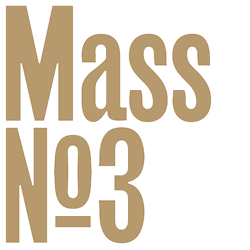
NOWs: The Performance Agency at Archivio Conz
NOWs:
Supportico Lopez presents The Performance Agency
at
Archivio Conz
Lise-Meitner-Str. 39, 10589 Berlin
S + U Jungfernheide
Friday, 2 February 2018, 7pm
Activated and inspired by the performance anarchist Robert Delford Brown.
A colleague of artists like Jim Dine, Claes Oldenburg and Nam June Paik, Robert Delford Brown was a central figure in the anarchic New York art scene of the early 1960s, a participant in — and instigator of — events-as-art known as “happenings.” He saw the potential for aesthetic pronouncement in virtually everything. His métier was willful preposterousness, and his work contained both anger and insouciance.
He was inventing a creation myth, he said later, and indeed, his appearance in “Originale” led him to create his own religion, The First National Church of the Exquisite Panic, Inc. The church was jokey, but not a joke. It had a deity, called Who, to answer the mysterious questions of the universe. (What does the future hold? Who knows.) It had a philosophy, known as Pharblongence, an Anglicized skewing of the Yiddish word farblonjet, meaning “confused.” Robert Delford Brown died in the US in 2009.
NOWs:
Supportico Lopez presents The Performance Agency
at
Archivio Conz
Lise-Meitner-Str. 39, 10589 Berlin
S + U Jungfernheide
Friday, 2 February 2018, 7pm
Activated and inspired by the performance anarchist Robert Delford Brown.
A colleague of artists like Jim Dine, Claes Oldenburg and Nam June Paik, Robert Delford Brown was a central figure in the anarchic New York art scene of the early 1960s, a participant in — and instigator of — events-as-art known as “happenings.” He saw the potential for aesthetic pronouncement in virtually everything. His métier was willful preposterousness, and his work contained both anger and insouciance.
He was inventing a creation myth, he said later, and indeed, his appearance in “Originale” led him to create his own religion, The First National Church of the Exquisite Panic, Inc. The church was jokey, but not a joke. It had a deity, called Who, to answer the mysterious questions of the universe. (What does the future hold? Who knows.) It had a philosophy, known as Pharblongence, an Anglicized skewing of the Yiddish word farblonjet, meaning “confused.” Robert Delford Brown died in the US in 2009.

NOWs: CARE LESS at EXAMEN, Kassel
NOWs:
CARE LESS präsentiert sich im Rahmen von EXAMEN 2017
Ausstellungseröffnung & Vergabe des Förderpreises:
Donnerstag, 14.12.: 19:00 Uhr
Öffnungszeiten:
Freitag, 15.12.: 13:00-20:00 Uhr
Samstag und Sonntag, 16./17.12.: 11:00-20:00 Uh
Ort
documenta-Halle
Du-Ry-Straße 1
34117 Kassel
Eintritt frei
Während der Ausstellung EXAMEN ist CARE LESS mit mobiler Station CLUTCH (CareLessUtilityTeamtrainingsCenterHome) und tagesaktuelle Events präsent: Termine und mehr Information jederzeit unter carelessmethode@gmail.com
Die Leitung und Assistent*innen sind in der Ausbildung und stellen sich gemeinsam mit Kunstskeptiker*innen und Interessierten verschiedensten Situationen rund um das Thema Kunst.
„Weiterbildungsmaßnahmen werden oft als Hilfsmittel zur Selbstoptimierung oder Statussteigerung gesehen. Mit CARE LESS begibt man sich in das Spannungsfeld von Dienstleistung und tiefenwirksamer Selbsterfahrung.“
– Paula Mierzowsky, CARE LESS Gründerin
–
Auszug aus:
CARE LESS
Ein Zwischenbericht
Seite 119_ II IV_UNTERRICHTSLEITFADEN:
1. Abschnitt
Allgemeines Dienstverhältnis des/r CARE LESS Assistent*in
Nur praktisch ausgebildete, unbescholtene, zuverlässige und körperlich den Anstrengungen des performativen Betreuungsdienst gewachsene Kunstbetreuer*innen dürfen zu der freiwilligen Kunstbetrachtungsassistenz zugelassen werden. Die Auswahl derselben ist dem CARE LESS-Team vorbehalten.
Allgemeine Dienstverhältnisse und Ausbildung
§1 das Betreuungspersonal für Kunstbetrachtende findet Verwendung
a) bei der physischen Begegnung mit Kunst, betrachtend bis interagierend
b) bei Gesprächen mit Kunstschaffenden das Betreuungspersonal für Künstler
c) bei internen Schulungen
d) im Außenraum, bei Performances und anderen Interventionen
(…)
Die vollständige, 168-seitige Publikation mit theoretischen Texten, Interviews, Grafiken, Abbildungen, Methodenkatalog usw usw… können Sie gern in der Ausstellung kaufen oder über carelessmethode@gmail.com bestellen.
—
Fotos von Kerstin Rupprecht, Mihan Torabi und Karo Achilles
NOWs:
CARE LESS präsentiert sich im Rahmen von EXAMEN 2017
Ausstellungseröffnung & Vergabe des Förderpreises:
Donnerstag, 14.12.: 19:00 Uhr
Öffnungszeiten:
Freitag, 15.12.: 13:00-20:00 Uhr
Samstag und Sonntag, 16./17.12.: 11:00-20:00 Uh
Ort
documenta-Halle
Du-Ry-Straße 1
34117 Kassel
Eintritt frei
Während der Ausstellung EXAMEN ist CARE LESS mit mobiler Station CLUTCH (CareLessUtilityTeamtrainingsCenterHome) und tagesaktuelle Events präsent: Termine und mehr Information jederzeit unter carelessmethode@gmail.com
Die Leitung und Assistent*innen sind in der Ausbildung und stellen sich gemeinsam mit Kunstskeptiker*innen und Interessierten verschiedensten Situationen rund um das Thema Kunst.
„Weiterbildungsmaßnahmen werden oft als Hilfsmittel zur Selbstoptimierung oder Statussteigerung gesehen. Mit CARE LESS begibt man sich in das Spannungsfeld von Dienstleistung und tiefenwirksamer Selbsterfahrung.“
– Paula Mierzowsky, CARE LESS Gründerin
–
Auszug aus:
CARE LESS
Ein Zwischenbericht
Seite 119_ II IV_UNTERRICHTSLEITFADEN:
1. Abschnitt
Allgemeines Dienstverhältnis des/r CARE LESS Assistent*in
Nur praktisch ausgebildete, unbescholtene, zuverlässige und körperlich den Anstrengungen des performativen Betreuungsdienst gewachsene Kunstbetreuer*innen dürfen zu der freiwilligen Kunstbetrachtungsassistenz zugelassen werden. Die Auswahl derselben ist dem CARE LESS-Team vorbehalten.
Allgemeine Dienstverhältnisse und Ausbildung
§1 das Betreuungspersonal für Kunstbetrachtende findet Verwendung
a) bei der physischen Begegnung mit Kunst, betrachtend bis interagierend
b) bei Gesprächen mit Kunstschaffenden das Betreuungspersonal für Künstler
c) bei internen Schulungen
d) im Außenraum, bei Performances und anderen Interventionen
(…)
Die vollständige, 168-seitige Publikation mit theoretischen Texten, Interviews, Grafiken, Abbildungen, Methodenkatalog usw usw… können Sie gern in der Ausstellung kaufen oder über carelessmethode@gmail.com bestellen.
—
Fotos von Kerstin Rupprecht, Mihan Torabi und Karo Achilles
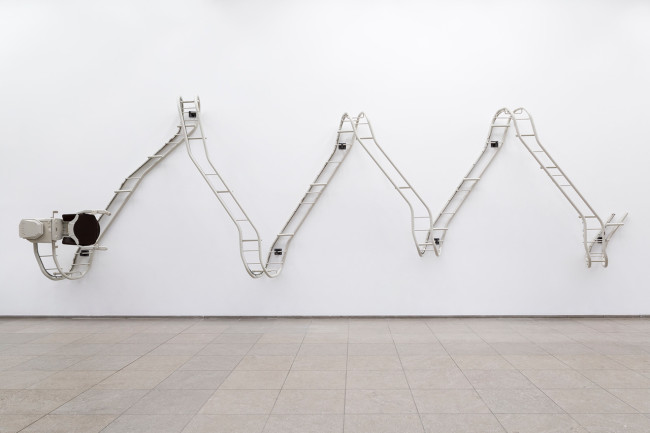
NOWs: Beobachtung // Observation
Matthias Sohr, Strut, 2017. Photo: Eric Bell, Courtesy the Artist
NOWs:
BEOBACHTUNG
MALTE BARTSCH / JULIAN CHARRIÈRE / ANDREAS GREINER / CLARA JO / FELIX KIESSLING / SOPHIA POMPÉRY / MACARENA RUIZ-TAGLE / NINA SCHUIKI / DAN STOCKHOLM / MATTHIAS SOHR / ALVARO URBANO / JONAS WENDELIN / JULIUS VON BISMARCK
OPENING: FRIDAY, DEC 15, 6–8 PM
at
DITTRICH & SCHLECHTRIEM
The group exhibition reflects on the notion of observation from an influential group of young artists who participated in the INSTITUT FÜR RAUMEXPERIMENTE led by Olafur Eliasson from 2009 to 2014. This is the second instalment of artworks complimenting the projects premiere presentation at Art Düsseldorf 2017.
The dream of grasping phenomena in their own language has long animated scientific endeavors, offering an irresistible provocation to the arts. A spatial experiment itself, the open-format exhibition showcases work by Malte Bartsch, Julius von Bismarck, Julian Charrière, Andreas Greiner, Clara Jo, Felix Kiessling, Sophia Pompéry, Macarena Ruiz-Tagle, Nina Schuiki, Matthias Sohr, Dan Stockholm, Alvaro Urbano, and Jonas Wendelin. Observation and experiment are typically treated as diametrical poles of experience. In contrast to the passive innocence and receptivity of observation, experiment carries the connotation of action, intervention and manipulation. And yet experiments are frequently contrived for the precise purpose of rendering phenomena observable that would otherwise fall outside of the range of our sensory perception or technological detection. Particles are scattered, model organisms are bred, dyes are released in bloodstreams and waterways in order to reveal latent images and trigger our capacity to notice possible configurations of the world.
Consistent with Eliasson’s demonstrative insistence that experience is in each case yours and yours alone, alumni of the institute exhibit an exquisite sensitivity to the way that experiments at once rely on and cultivate distinctive observational dispositions. Stockholm’s performative process of palpating the architectural surface of memory preserves a deeply intuitive sense of touch, while Greiner’s bottomless empathy serves to infuse non-human beings with outsized stature and significance. In Charrière’s and Ruiz-Tagle’s work, the calibration and choreography of bodies, devices, and environments is amplified, stressing the affective agencies active in observation. Such an attentiveness to time frames, measuring devices, and social configurations discloses strange affordances to Kiessling’s, Sohr’s, Wendelin’s, and Bartsch’s eyes, while von Bismarck consistently embraces within his own body the violence of provoking the world with his penetrating gaze. In the work of Urbano and Schuiki, shadows, gusts of wind, and rays of light are arrested in their path as if noticed by the peripheral vision of the walls themselves. Activating perspectival alternatives to the manner in which spaces and objects may perform for the camera, Jo proliferates politics of observation and calls them into dialogue. In this group’s relentless play with grounding and ungrounding practices of observation, Pompéry’s images and apparatuses seem to invite viewers to question whether they can believe their own eyes. Caught in the act of observing and being observed ourselves, our capacity to distinguish between reality an illusion is tested—and with it our desire to touch a world beyond that of our own making. At once a retrospective and a promise of interventions to yet to come, BEOBACHTUNG presents a powerful set of afterimages of the Institut für Raumexperimente.
The above text excerpt is contributed by Dehlia Hannah. A full exhibition catalog for BEOBACHTUNG with an additional essay from Hannah will be available at the gallery in December 2017.
Matthias Sohr, Strut, 2017. Photo: Eric Bell, Courtesy the Artist
NOWs:
BEOBACHTUNG
MALTE BARTSCH / JULIAN CHARRIÈRE / ANDREAS GREINER / CLARA JO / FELIX KIESSLING / SOPHIA POMPÉRY / MACARENA RUIZ-TAGLE / NINA SCHUIKI / DAN STOCKHOLM / MATTHIAS SOHR / ALVARO URBANO / JONAS WENDELIN / JULIUS VON BISMARCK
ERÖFFNUNG: FREITAG, 15. DEZ, 18–20 UHR
DITTRICH & SCHLECHTRIEM
Die Gruppenausstellung präsentiert junger Künstler und Künstlerinnen, die an dem von Olafur Eliasson initiierten INSTITUT FÜR RAUMEXPERIMENTE von 2009 bis 2014 studierten. Die erstmals auf der Art Düsseldorf präsentierten Werke, werden nun in den Berliner Galerieräumen als Folgeausstellung gezeigt.
Der Traum, Phänomene zu begreifen, indem man sie ihre eigene Sprache sprechen lässt, treibt die Naturwissenschaften seit langem an, eine Herausforderung, der auch die Künste nicht widerstehen können. Die als ergebnisoffenes räumliches Experiment angelegte Ausstellung zeigt Arbeiten von Malte Bartsch, Julius von Bismarck, Julian Charrière, Andreas Greiner, Clara Jo, Felix Kiessling, Sophia Pompéry, Macarena Ruiz-Tagle, Nina Schuiki, Matthias Sohr, Dan Stockholm, Alvaro Urbano und Jonas Wendelin. Beobachtung und Experiment gelten normalerweise als entgegengesetzte Pole der Erfahrung. Wo Beobachtung passiv, arglos, empfänglich ist, verbindet man mit dem Experiment aktives Eingreifen, gar Manipulation. Und doch werden Experimente oft gerade angestellt, um Phänomene beobachtbar zu machen, die sich sonst der sinnlichen Wahrnehmung oder technischen Erfassung entziehen würden. Partikel werden zerstreut, Modellorganismen gezüchtet, Kontrastmittel in Blutbahnen und Wasserstraßen eingeleitet, um verborgene Bilder sichtbar zu machen und unserer Fähigkeit Nahrung zu geben, mögliche Konfigurationen der Welt wahrzunehmen.
Im Einklang mit Eliassons nachdrücklichem Beharren darauf, dass jede Erfahrung ganz persönlich ist, demonstrieren die Alumni seines Instituts eine aufs Äußerste geschärfte Aufmerksamkeit dafür, wie Experimente auf der je eigenen Einstellung des Beobachters aufbauen und sie zugleich ausbilden. In Stockholms performativem Prozess einer Abtastung der architektonischen Oberfläche der Erinnerung bewahrt sich ein zutiefst intuitiver Fühlsinn, während Greiners unerschöpfliche Empathie nichtmenschlichen Wesen übergroße Statur und Bedeutung verleiht. Charrières und Ruiz-Tagles Arbeiten stellen die Justierung und Choreographie von Körpern, Apparaten und Umwelten heraus und unterstreichen so die affektiven Energien, die in Beobachtung am Werk sind. Solche Achtsamkeit für Zeitrahmen, Messvorrichtungen und Konfigurationen des Sozialen eröffnet bei Kiessling, Sohr, Wendelin und Bartsch seltsame Freiheiten, während von Bismarck konsequent die Gewaltsamkeit, mit der sein provozierender Blick der Welt begegnet, in seinen eigenen Körper einlässt. In den Arbeiten von Urbano und Schuiki werden Schatten, Windstöße und Lichtstrahlen auf ihrem Weg festgehalten, als streiften sie das Blickfeld der Wände selbst. Durch Aktivierung perspektivischer Alternativen in der Selbstdarstellung von Räumen und Objekten vor der Kamera vervielfältigt Jo Politiken der Beobachtung und versammelt sie zu einem Dialog. Inmitten des unablässigen Spiels mit den Grundlagen und der Grundlosigkeit von Observationspraktiken, das die Gruppe veranstaltet, scheinen Pompérys Bilder und Apparate die Betrachter aufzufordern, sich zu fragen, ob sie ihren eigenen Augen trauen können. Beim Beobachten ertappt und unsererseits beobachtet, sehen wir unsere Fähigkeit zur Unterscheidung zwischen Wirklichkeit und Illusion auf die Probe gestellt – und damit auch unser Begehren danach, mit einer Welt, die wir nicht selbst geschaffen haben, in Berührung zu kommen. Als Retrospektive und zugleich Ausblick auf zukünftige Interventionen präsentiert BEOBACHTUNG eindrückliche Nachbilder des Instituts für Raumexperimente.
Der oben stehende Textbeitrag ist von der Autorin Dehlia Hannah. Der Ausstellungskatalog zu dem Projekt BEOBACHTUNG, mit einem umfassenden Essay von Hannah, ist ab Dezember in der Galerie erhältlich.
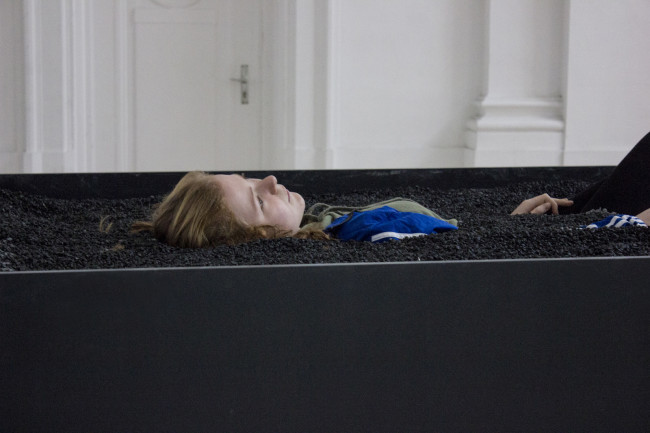
NOWs: Rafael Ibarra at Meisterschülerpreis
Rafael Ibarra: Ophelia, 2017
NOWs:
Meisterschüler Award of the President of the UdK Berlin
Opening: 30 November, 7 pm
at
Haus am Lützowplatz
The winners of this year’s Meisterschüler Award, given by the President of the Berlin University of the Arts (UdK Berlin), are Lisa Peters, Gary Schlingheider and Rafael Ibarra. On 30 November, they will be showing their works in a joint exhibition in the Haus am Lützowplatz.
Lisa Peters, born in 1989, studied sculpture with Christiane Möbus and, most recently, with Ina Weber, with whom she also did her Meisterschüler studies. In addition to the photographic work “Superwoman”, which was created together with Lisa Drost, Peters is also showing two video installations, for the purpose of which she put friends and strangers in front of the camera. The two works, “how you’re doing” and “Solo”, allow the viewer to gain access to the lives and personalities of the protagonists.
Gary Schlingheider, born in 1983, studied painting with Pia Fries and Gregory Cumins and did his Meisterschüler studies with Christine Streuli. Schlingheider’s sculptural works are like abstract drawings that have left behind their pictorial background in order to achieve a palpable presence as three-dimensional objects in space. Engagement with everyday objects plays a fundamental role in this process. Despite their sculptural nature, the objects also thematise essential issues of painting, such as the treatment of colour, form, structure and framing.
Rafael Ibarra, born in 1986, studied with Ólafur Elíasson and sculpture with Gregor Schneider and Tilman Wendland. He also did his Meisterschüler studies with Wendland. Among other works, Ibarra is showing his ephemeral piece “Ophelia”, which is inspired by childhood memories and Shakespeare plays and which frees itself from the rigid schema of immovable sculpture thanks to the material he has used: sand. Ibarra develops the procedural character in the form of performance, which he will show at the opening of the exhibition. He writes in his artist statement: “Human bodies and organic matter are the main elements of the new sculptural actions that I developed for the exhibition. Their ephemeral existence is based on childhood memories, physical feelings and Shakespearean plays to find resonances in the body of the visitors.”
Since 1997, the Meisterschüler Award of the President of the UdK Berlin has been awarded annually to three outstanding Meisterschüler at the College of Fine Arts. The goal is to create a bridge between the university and the art world. A joint exhibition and one’s own catalogue are included in the prize. Since 2016, the Haus am Lützowplatz has been the institutional partner for this exhibition format.
The 2017 jury was composed of:
Prof. Martin Rennert, President of the UdK Berlin, Prof. Ina Weber, UdK Berlin, College of Fine Arts, Dr. Marc Wellmann, Artistic Director, Haus am Lützowplatz, Dr. Julia Wallner, Director, Georg Kolbe Museum, Ms. Joanna Kiliszek, Cultural Historian
–
Rafael Ibarra: Ophelia 2017; Installation; Woman, soil, 1 hour. A woman was buried in the floor of a kitchen in her hometown, she remained still for an hour.
Rafael Ibarra: Untitled 2017; Installation; Woman, rope, 20 min. A woman was tied to a tree in her hometown. Throughout the duration of the piece she remains silent contemplating the landscape.
Rafael Ibarra: Ophelia, 2017
NOWs:
Meisterschülerpreis des Präsidenten der UdK Berlin 2017
Ausstellungseröffnung: 30. November, 19 Uhr
Haus am Lützowplatz
Die Meisterschülerinnen und Meisterschüler der UdK Berlin Lisa Peters, Gary Schlingheider und Rafael Ibarra haben in diesem Jahr den Meisterschülerpreis des Präsidenten der UdK Berlin gewonnen. Ab dem 30. November zeigen sie ihre Arbeiten in einer gemeinsamen Ausstellung im Haus am Lützowplatz.
Lisa Peters, Jahrgang 1989, studierte Bildhauerei bei Christiane Möbus und zuletzt bei Ina Weber, bei der sie auch ihr Meisterschülerstudium absolvierte. Peters zeigt neben der fotografischen Arbeit „Superwoman”, die in Zusammenarbeit mit Lisa Drost entstand, zwei Videoinstallationen, für die sie Freunde und Fremde vor die Kamera holte. Die beiden Arbeiten „wie es dir geht“ und „Solo” vermögen es, dem Betrachter Zugang zum Leben, zur Personalität der Protagonisten zu verschaffen.
Gary Schlingheider, Jahrgang 1983, studierte Malerei bei Pia Fries und Gregory Cumins, absolvierte sein Meisterschülerstudium bei Christine Streuli. Schlingheiders plastische Arbeiten sind wie abstrakte Zeichnungen, die ihren Bildgrund verlassen haben, um als dreidimensionale Objekte eine erfahrbare Präsenz im Raum zu erlangen. Grundlegend für diesen Prozess ist die Auseinandersetzung mit alltäglichen Dingen. Trotz ihres skulpturalen Charakters thematisieren die Objekte auch wesentliche Fragen der Malerei, wie z. B. den Umgang mit Farbe, Form, Struktur und Rahmung.
Rafael Ibarra, Jahrgang 1986, hat bei Ólafur Elíasson und Bildhauerei bei Gregor Schneider und Tilman Wendland studiert. Bei Wendland schloss er zudem sein Meisterschülerstudium ab. Ibarra zeigt u.a. seine von Kindheitserinnerungen und Shakespeare-Stücken inspirierte, ephemere Arbeit „Ophelia“, die sich durch das von ihm eingesetzte Material Sand vom festen Schema der unbeweglichen Skulptur befreit. Ihren prozessualen Charakter entfaltet Ibarra in Form einer Performance, die er zur Ausstellungseröffnung zeigt. Er sagt über seinen Arbeiten: “Menschliche Körper und organische Materie sind die Hauptelemente der neuen skulpturellen Handlungen, die ich für die Ausstellung entwickelt habe. Ihre ephemere Existenz stütz sich auf Kindheitserinnerungen, Körperliche Gefühle und Shakespeares Theaterstücke um Resonanzen in den Körper der Besuchern zu finden.”
Der Meisterschülerpreis des Präsidenten der UdK Berlin wird seit 1997 jährlich an jeweils drei herausragende Meisterschülerinnen und Meisterschüler der Fakultät Bildende Kunst verliehen. Ziel ist es, eine Brücke zwischen der Universität und dem Kunstbetrieb zu schlagen. Mit dem Preis ist eine gemeinsame Ausstellung und ein eigener Katalog verbunden. Das Haus am Lützowplatz ist seit 2016 der institutionelle Partner dieses Ausstellungsformates.
Der Jury 2017 gehörten an:
Herr Prof. Martin Rennert, Präsident der UdK Berlin, Prof. Ina Weber, UdK Berlin, Fakultät Bildende Kunst, Herr Dr. Marc Wellmann, Künstlerischer Leiter, Haus am Lützowplatz, Frau Dr. Julia Wallner, Direktorin, Georg Kolbe Museum, Frau Joanna Kiliszek, Kunsthistorikerin
–
Rafael Ibarra: Ophelia 2017; Installation; Woman, soil, 1 hour. A woman was buried in the floor of a kitchen in her hometown, she remained still for an hour.
Rafael Ibarra: Untitled 2017; Installation; Woman, rope, 20 min. A woman was tied to a tree in her hometown. Throughout the duration of the piece she remains silent contemplating the landscape.
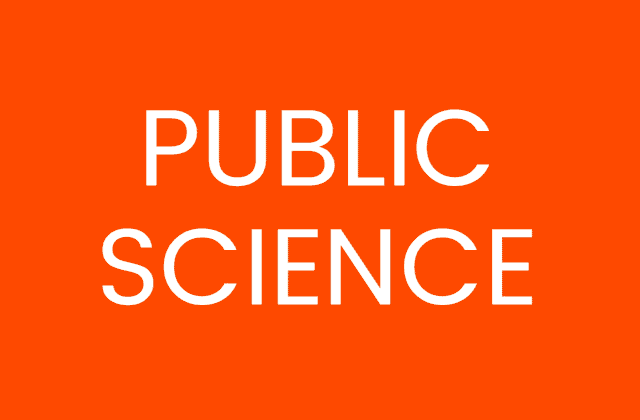
NOWs: Matthias Sohr – Public Science
NOWs:
Matthias Sohr: Public Science
at
Tunnel Tunnel
Place du Tunnel
1005 Lausanne
Email | FB
In the context of the festival Les Urbaines, Tunnel Tunnel is pleased to present the solo exhibition Public Science by Matthias Sohr.
With Public Science, Matthias Sohr gives an account of things we encounter in our cities on an everyday basis without us paying attention to them, and yet they are in constant dialogue with our bodies. His sculptures – whether incorporating armrests, bathroom structures or floor markings – endorse shapes and reliefs that are as much a part of art history as they are of the street, thus integrating our everyday life at the price of an almost unconscious assimilation. Matthias Sohr re-enacts these forms and materials in the exhibition space and re-sensitizes the viewer’s visual and visceral attention through his works.
Matthias Sohr was born in 1980 in Düsseldorf. He lives and works in Lausanne.
This event is supported by AktiFlex, Sunrise Medical Switzerland and REC Bauelemente.
NOWs:
Matthias Sohr: Public Science
at
Tunnel Tunnel
Place du Tunnel
1005 Lausanne
Email | FB
In the context of the festival Les Urbaines, Tunnel Tunnel is pleased to present the solo exhibition Public Science by Matthias Sohr.
With Public Science, Matthias Sohr gives an account of things we encounter in our cities on an everyday basis without us paying attention to them, and yet they are in constant dialogue with our bodies. His sculptures – whether incorporating armrests, bathroom structures or floor markings – endorse shapes and reliefs that are as much a part of art history as they are of the street, thus integrating our everyday life at the price of an almost unconscious assimilation. Matthias Sohr re-enacts these forms and materials in the exhibition space and re-sensitizes the viewer’s visual and visceral attention through his works.
Matthias Sohr was born in 1980 in Düsseldorf. He lives and works in Lausanne.
This event is supported by AktiFlex, Sunrise Medical Switzerland and REC Bauelemente.
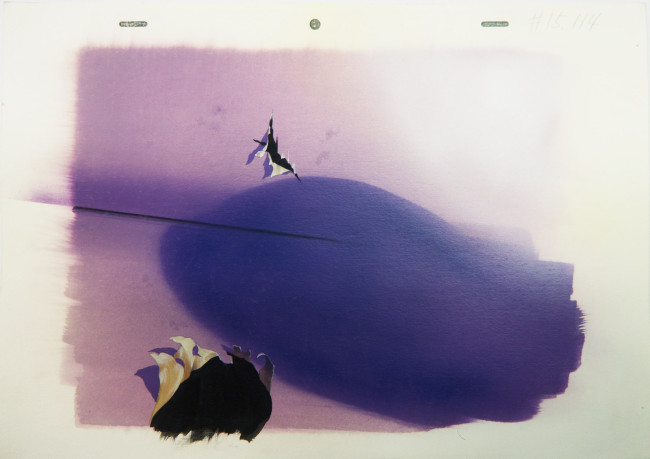
NOWs: Altbau by Alvaro Urbano
NOWs:
Alvaro Urbano:Altbau
at
ChertLüdde
Ritterstr 2A
10969, Berlin
Opening reception:
Friday, 24 November 2017
6:00 – 9:00 pm
Alvaro Urbano’s installation evokes and distorts deceivingly generic spaces that ultimately escape into inaccessibility, unfamiliarity and abandonment. The exhibition completely appropriates the three stories of the gallery, inviting the visitors to step into the everything-is-possible realm and to fall in and out of this artist’s fiction.
Alvaro Urbano’s installation Altbau evokes and distorts deceivingly generic spaces that ultimately escape into inaccessibility, unfamiliarity and abandonment. The exhibition completely appropriates the three stories of the gallery. On the basement level, metallic cigarette butts and withered leaves linger on the floor next to an invented infrastructure made up of paper pipes and paper ventilation shafts. One story up, paper and cardboard boxes—made out of metal like the letters—are scattered across a grey carpet, underneath the suspended paper ceiling. A corridor guides the viewer past shut office doors. Upstairs in the attic, unaddressed letters pile up below the mail slot in the entrance door. On the walls, Urbano’s collection of anime cellophane backgrounds from the 80s, on watercolour paper. They are exhibited in diorama-esque frames that curve inwards to create a trompe-l’œil of depth. Their bent flatness and their generic papery presence resembles the spaces downstairs, they too are backgrounds for unidentified protagonists.
All the artefacts and infrastructure on show were made by Urbano, using paper with printed textures and hand-painted metal. The effect of this camouflage is a mixture of stepping into the everything-is-possible realm of a rendering window where texture-tiles are seamlessly plastered onto cylinders, spheres and squares, and touching the actual fragility of a physical sketch model.
An office space feels real to most of us, although the generic office itself, much like the mythical non-place, is a powerful illusion. It is meta-fiction composed of a grey carpet that fits but not perfectly, a suspended ceiling with light and acoustic panels, cardboard boxes that have contained office supplies and documents, stacks of loose paper that fed a bulky photocopy machine—I think of office gossip and bored interns. Urbano’s office could be anywhere and anytime. It entices with pretend-familiarity: Haven’t we all walked past rows of shut doors, disoriented? Haven’t we all waited downstairs, by the vents, next to an impatient woman with lipstick and a nervous man with a moustache, pacing and smoking Parisienne Rouge?
And yet, Altbau is weirdly dreamlike, it is other and it is inverted. In Urbano’s universe, the camouflaged materiality takes on a fictional existence and the viewer hovers somewhere between the representation of a space and the evasive idea that makes something feel real. The installation invites the viewer to step in for an absent protagonist-inhabitant of this abandoned office and its locked rooms, and it simultaneously prevents any interaction. The installation excludes and frustrates on a material level: if you were to look for traces or information in one of the sealed letters, its metal edges would resist viciously. Paper is metal and infrastructure is paper: the art work’s materiality creates its own fictional temporality that exists right here and elsewhere—somewhere you can’t quite picture: the backdrop of a painted story, a cartoon or anime universe that we can watch but never enter. Urbano’s Altbau promises and withholds our entry into that space on paper, behind the screen, within sealed metal and beyond paper doors. This is what it feels like to fall in and out of fiction.
Text by Natalie P. Koerner
Alvaro Urbano: Office, 2017; 25 elements: three boxes, two vents, 18 sheets, one pen, one pencil, ceiling, carpet; cardboard, paper, glue, foam, plexiglas, metal, paint, artificial light; overall variable
Alvaro Urbano: Pipes, 2017, (detail); 29 elements: two pipes, 18 leaves, 9 cigarettes; Cardboard, paper, glue, metal, paint
All images by Trevor Lloyd; Courtesy the Artist and ChertLüdde, Berlin
NOWs:
Alvaro Urbano:Altbau
at
ChertLüdde
Ritterstr 2A
10969, Berlin
Opening reception:
Friday, 24 November 2017
6:00 – 9:00 pm
Alvaro Urbano’s installation evokes and distorts deceivingly generic spaces that ultimately escape into inaccessibility, unfamiliarity and abandonment. The exhibition completely appropriates the three stories of the gallery, inviting the visitors to step into the everything-is-possible realm and to fall in and out of this artist’s fiction.
Alvaro Urbano’s installation Altbau evokes and distorts deceivingly generic spaces that ultimately escape into inaccessibility, unfamiliarity and abandonment. The exhibition completely appropriates the three stories of the gallery. On the basement level, metallic cigarette butts and withered leaves linger on the floor next to an invented infrastructure made up of paper pipes and paper ventilation shafts. One story up, paper and cardboard boxes—made out of metal like the letters—are scattered across a grey carpet, underneath the suspended paper ceiling. A corridor guides the viewer past shut office doors. Upstairs in the attic, unaddressed letters pile up below the mail slot in the entrance door. On the walls, Urbano’s collection of anime cellophane backgrounds from the 80s, on watercolour paper. They are exhibited in diorama-esque frames that curve inwards to create a trompe-l’œil of depth. Their bent flatness and their generic papery presence resembles the spaces downstairs, they too are backgrounds for unidentified protagonists.
All the artefacts and infrastructure on show were made by Urbano, using paper with printed textures and hand-painted metal. The effect of this camouflage is a mixture of stepping into the everything-is-possible realm of a rendering window where texture-tiles are seamlessly plastered onto cylinders, spheres and squares, and touching the actual fragility of a physical sketch model.
An office space feels real to most of us, although the generic office itself, much like the mythical non-place, is a powerful illusion. It is meta-fiction composed of a grey carpet that fits but not perfectly, a suspended ceiling with light and acoustic panels, cardboard boxes that have contained office supplies and documents, stacks of loose paper that fed a bulky photocopy machine—I think of office gossip and bored interns. Urbano’s office could be anywhere and anytime. It entices with pretend-familiarity: Haven’t we all walked past rows of shut doors, disoriented? Haven’t we all waited downstairs, by the vents, next to an impatient woman with lipstick and a nervous man with a moustache, pacing and smoking Parisienne Rouge?
And yet, Altbau is weirdly dreamlike, it is other and it is inverted. In Urbano’s universe, the camouflaged materiality takes on a fictional existence and the viewer hovers somewhere between the representation of a space and the evasive idea that makes something feel real. The installation invites the viewer to step in for an absent protagonist-inhabitant of this abandoned office and its locked rooms, and it simultaneously prevents any interaction. The installation excludes and frustrates on a material level: if you were to look for traces or information in one of the sealed letters, its metal edges would resist viciously. Paper is metal and infrastructure is paper: the art work’s materiality creates its own fictional temporality that exists right here and elsewhere—somewhere you can’t quite picture: the backdrop of a painted story, a cartoon or anime universe that we can watch but never enter. Urbano’s Altbau promises and withholds our entry into that space on paper, behind the screen, within sealed metal and beyond paper doors. This is what it feels like to fall in and out of fiction.
Text by Natalie P. Koerner
Alvaro Urbano: Office, 2017; 25 elements: three boxes, two vents, 18 sheets, one pen, one pencil, ceiling, carpet; cardboard, paper, glue, foam, plexiglas, metal, paint, artificial light; overall variable
Alvaro Urbano: Pipes, 2017, (detail); 29 elements: two pipes, 18 leaves, 9 cigarettes; Cardboard, paper, glue, metal, paint
All images by Trevor Lloyd; Courtesy the Artist and ChertLüdde, Berlin
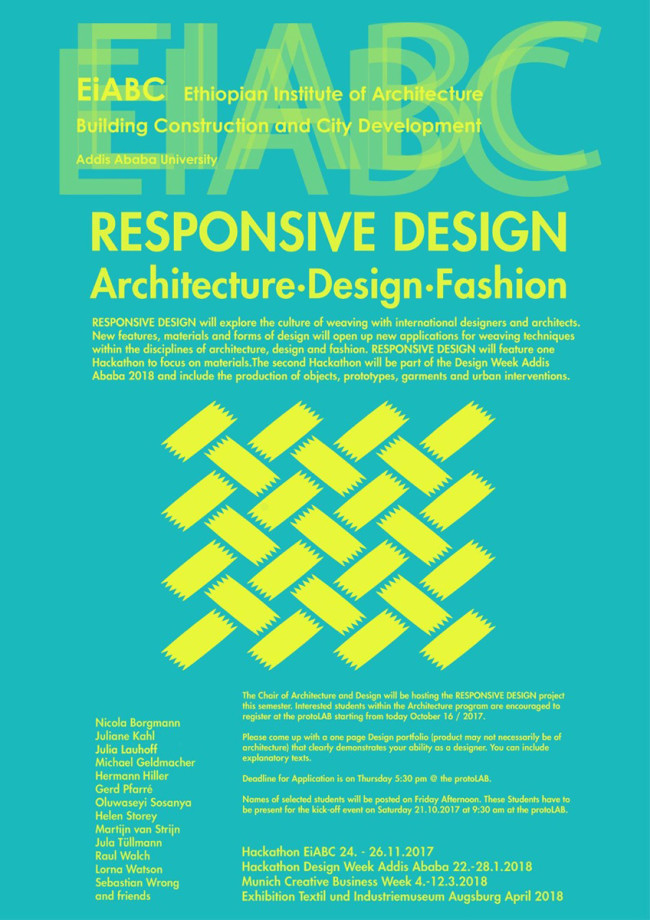
NOWs: Responsive Design
NOWs:
EiABC – The Ethiopian Institute of Architecture, Building Construction and City Development; Addis Ababa University
Hackathon with Nicoal Borgmann, Juliane Kahl, Julia Lauhoff, Michael Geldmacher, Hermann Hiller, Gerd Pfarré, Oluwaseyi Sosanya, Helen Storey, Martijn van Strijn, Jula Tüllmann, Raul Walch, Lorna Watson, Sebasting Wrong, and friends.
NOWs:
EiABC – The Ethiopian Institute of Architecture, Building Construction and City Development; Addis Ababa University
Hackathon with Nicoal Borgmann, Juliane Kahl, Julia Lauhoff, Michael Geldmacher, Hermann Hiller, Gerd Pfarré, Oluwaseyi Sosanya, Helen Storey, Martijn van Strijn, Jula Tüllmann, Raul Walch, Lorna Watson, Sebasting Wrong, and friends.

NOWs: Robert Lippok / Raster-Index @ Berghain
NOWs:
Berghain | Raster-Index:
Belief Defect (live) | Byetone (live) | Grischa Lichtenberger (live) | Island People (live) | Jesse Osborne-Lanthier (live) | kyoka (live) | Robert Lippok (live) | Mieko Suzuki (dj)
17. November 2017 | Einlass & Beginn: 23:00 h / Doors & Start: 11 pm | Abendkasse / Pay on the door
Running Order
23:00 h – 00:30 h Mieko Suzuki
00:30 h – 01:15 h Jesse Osborne-Lanthier LIVE
01:15 h – 02:00 h Byetone LIVE
02:00 h – 02:45 h Belief Defect LIVE
02:45 h – 03:30 h Robert Lippok LIVE
03:30 h – 04:15 h Grischa Lichtenberger LIVE
04:15 h – 05:00 h Kyoka LIVE
05:00 h – 05:45 h Island People LIVE
05:45 h – End Mieko Suzuki
–
Info:
http://berghain.berlin/event/2177
https://www.residentadvisor.net/events/1024371
NOWs:
Berghain | Raster-Index:
Belief Defect (live) | Byetone (live) | Grischa Lichtenberger (live) | Island People (live) | Jesse Osborne-Lanthier (live) | kyoka (live) | Robert Lippok (live) | Mieko Suzuki (dj)
17. November 2017 | Einlass & Beginn: 23:00 h / Doors & Start: 11 pm | Abendkasse / Pay on the door
Running Order
23:00 h – 00:30 h Mieko Suzuki
00:30 h – 01:15 h Jesse Osborne-Lanthier LIVE
01:15 h – 02:00 h Byetone LIVE
02:00 h – 02:45 h Belief Defect LIVE
02:45 h – 03:30 h Robert Lippok LIVE
03:30 h – 04:15 h Grischa Lichtenberger LIVE
04:15 h – 05:00 h Kyoka LIVE
05:00 h – 05:45 h Island People LIVE
05:45 h – End Mieko Suzuki
–
Info:
http://berghain.berlin/event/2177
https://www.residentadvisor.net/events/1024371
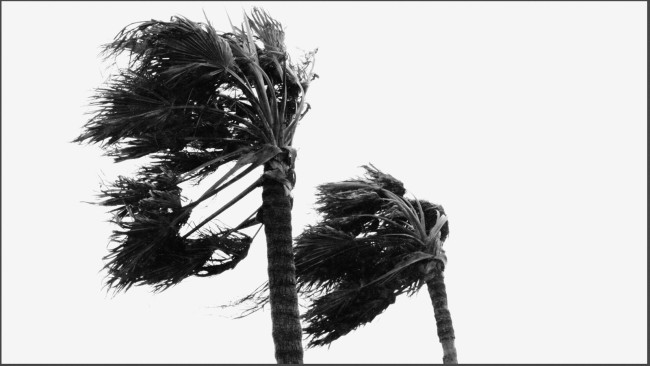
NOWs: Gewaltenteilung by Julius von Bismarck
NOWs:
Julius von Bismarck: Irma To Come In Earnest, 2017 (Videostill), HD Video, 44 min. © Julius von Bismarck, Courtesy alexander levy, Berlin und Sies + Höke, Düsseldorf
Julius von Bismarck: Gewaltenteilung
Städtische Galerie Wolfsburg
Der Wolfsburger Kunstpreis „Junge Stadt sieht Junge Kunst“ wird am 11. November 2017 dem Berliner Künstler Julius von Bismarck im Schloss Wolfsburg überreicht. Begleitend dazu wird unter dem Titel “Gewaltenteilung” bis zum 3. Juni 2018 eine Einzelausstellung des Künstlers im Schloss Wolfsburg präsentiert. Zusätzlich gibt es einen Ankauf für die Sammlung der Städtischen Galerie Wolfsburg.
In ihrer Begründung schreibt die Jury: „Julius von Bismarck versteht es in seinen Arbeiten, auf hohem intellektuellem und ästhetischem Niveau, künstlerische und politische Themen miteinander zu verknüpfen. Aus der gesamten Vielfalt der Medien schöpfend, entwickelt er dabei künstlerisch wie technisch innovative Arbeiten, welche der kritischen Reflexion drängender Fragen unserer Zeit mit großer Erfindungsgabe einen höchst eigenständigen Ausdruck geben.“
Die Arbeiten von Julius von Bismarck (*1983) sind als künstlerische Forschung zu verstehen, als Versuch und Methode zugleich, die im Allgemeinen als getrennt begriffenen Systeme der Kunst und der Wissenschaft zu verbinden. „Ich ziehe meine Inspiration aus der Wissenschaft und arbeite künstlerisch“, sagt er selbst. Mit seinen Installationen, Videoarbeiten und Performances untersucht Julius von Bismarck den menschlichen Wahrnehmungsapparat und fordert unsere perzeptiven Gewohnheiten heraus. Sein interdisziplinärer Ansatz ist eine schöpferische Befragung der Welt und der Natur, die der Mensch zunehmend verwandelt. Bekannt geworden mit einer Performance-Reihe, in der von Bismarck Naturelemente aber auch Monumente auspeitscht, beschäftigt er sich in aktuelleren Arbeiten und Projekten mit dem Naturphänomen Blitzschlag oder erforscht bei der Antarktis-Biennale mit einem Süßwasserfisch im U-Boot das antarktische Gewässer.
Julius von Bismarck: Irma To Come In Earnest, 2017, HD Video, 44 min. © Julius von Bismarck, Courtesy alexander levy, Berlin und Sies + Höke, Düsseldorf
Julius von Bismarck: Apocalypsoid, 2017, Granit Edelstahl, Acrylfarbe, digitale Prints variable Größen (Ausstellungsansicht Städtische Galerie Wolfsburg) © Julius von Bismarck, Courtesy alexander levy, Berlin und Sies + Höke, Düsseldorf; Foto: Frank Sperling
Julius von Bismarck: Apocalypsoid, 2017 (Detail), Granit Edelstahl, Acrylfarbe, digitale Prints, variable Größen
© Julius von Bismarck, Courtesy alexander levy, Berlin und Sies + Höke, Düsseldorf; Foto: Frank Sperling
NOWs:
Julius von Bismarck: Irma To Come In Earnest, 2017 (Videostill), HD Video, 44 min. © Julius von Bismarck, Courtesy alexander levy, Berlin und Sies + Höke, Düsseldorf
Julius von Bismarck: Gewaltenteilung
Städtische Galerie Wolfsburg
Der Wolfsburger Kunstpreis „Junge Stadt sieht Junge Kunst“ wird am 11. November 2017 dem Berliner Künstler Julius von Bismarck im Schloss Wolfsburg überreicht. Begleitend dazu wird unter dem Titel “Gewaltenteilung” bis zum 3. Juni 2018 eine Einzelausstellung des Künstlers im Schloss Wolfsburg präsentiert. Zusätzlich gibt es einen Ankauf für die Sammlung der Städtischen Galerie Wolfsburg.
In ihrer Begründung schreibt die Jury: „Julius von Bismarck versteht es in seinen Arbeiten, auf hohem intellektuellem und ästhetischem Niveau, künstlerische und politische Themen miteinander zu verknüpfen. Aus der gesamten Vielfalt der Medien schöpfend, entwickelt er dabei künstlerisch wie technisch innovative Arbeiten, welche der kritischen Reflexion drängender Fragen unserer Zeit mit großer Erfindungsgabe einen höchst eigenständigen Ausdruck geben.“
Die Arbeiten von Julius von Bismarck (*1983) sind als künstlerische Forschung zu verstehen, als Versuch und Methode zugleich, die im Allgemeinen als getrennt begriffenen Systeme der Kunst und der Wissenschaft zu verbinden. „Ich ziehe meine Inspiration aus der Wissenschaft und arbeite künstlerisch“, sagt er selbst. Mit seinen Installationen, Videoarbeiten und Performances untersucht Julius von Bismarck den menschlichen Wahrnehmungsapparat und fordert unsere perzeptiven Gewohnheiten heraus. Sein interdisziplinärer Ansatz ist eine schöpferische Befragung der Welt und der Natur, die der Mensch zunehmend verwandelt. Bekannt geworden mit einer Performance-Reihe, in der von Bismarck Naturelemente aber auch Monumente auspeitscht, beschäftigt er sich in aktuelleren Arbeiten und Projekten mit dem Naturphänomen Blitzschlag oder erforscht bei der Antarktis-Biennale mit einem Süßwasserfisch im U-Boot das antarktische Gewässer.
Julius von Bismarck: Irma To Come In Earnest, 2017, HD Video, 44 min. © Julius von Bismarck, Courtesy alexander levy, Berlin und Sies + Höke, Düsseldorf
Julius von Bismarck: Apocalypsoid, 2017, Granit Edelstahl, Acrylfarbe, digitale Prints variable Größen (Ausstellungsansicht Städtische Galerie Wolfsburg) © Julius von Bismarck, Courtesy alexander levy, Berlin und Sies + Höke, Düsseldorf; Foto: Frank Sperling
Julius von Bismarck: Apocalypsoid, 2017 (Detail), Granit Edelstahl, Acrylfarbe, digitale Prints, variable Größen
© Julius von Bismarck, Courtesy alexander levy, Berlin und Sies + Höke, Düsseldorf; Foto: Frank Sperling
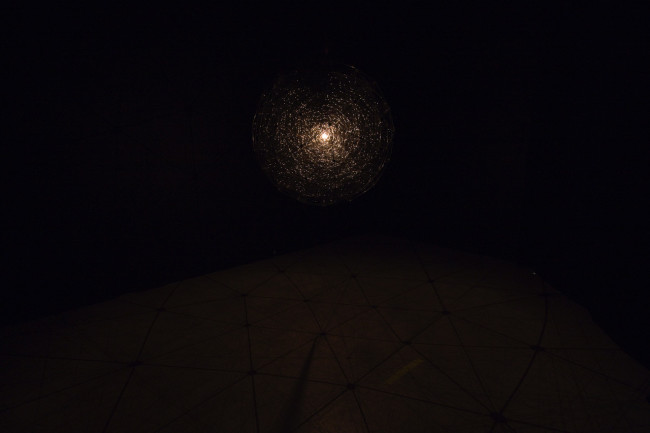
NOWs: Animated Sphere by Ivana Franke
Ivana Franke: Animated Sphere
NOWs:
Yet Incomputable. Indetermination in the Age of Hypervisibility and Algorithmic Control
at
Deichtorhallen Hamburg/Sammlung Falckenberg
Phoenix Fabrikhallen
Wilstorfer Straße 71
21073 Hamburg – Harburg
Ausstellung mit Moritz Ahlert | Eva Castringius | Ivana Franke | Joachim Glaser | Louis Henderson | Agnieska Kurant | Joke Janssen | Elsa M’bale aka AMET | Hanny Oldendorf | Trevor Paglen | Benjamin Sprick | ANna Tautfest.
Die Gruppenausstellung, kuratiert von der Kunsthistorikerin und Autorin Elena Agudio, befragt hierzu das subversive Vermögen der Kunst in einer Ära von Sichtbarkeitsregimen und der Kontrolle durch Algorithmen. Dabei geht es um Zwischenräume, die gegenwärtig eine künstlerisch-forschende Praxis freilegen kann. „yet incomputable. Indetermination in the Age of Hypervisibility and Algorithmic Control“ versteht sich als eine kollektive Befragung des subversiven Vermögens der Kunst in einer post-kybernetischen Ära der Kontrolle, Zensur, Datenmanipulation und Informationskommerzialisierung. Sie ist konzipiert als eine Reflektion über epistemische, epistemologische und semiotische Veränderbarkeiten nach der eingetretenen digitalen Wende. Daher werden künstlerische Strategien und Entwürfe präsentiert, die der Kontrolle etwas entgegensetzen und den Klassifikationsschemata die Subjekte entziehen.
Weit davon entfernt einen düsteren Horizont zu entwerfen, werden die progressiven Dimensionen künstlerischer, gestalterischer oder queerer Strategien und Praktiken der Unübersichtlichkeit, Verunklärung und Dunkelheit in den Vordergrund gestellt. Dabei wird auch das Hacking oder die Sabotage als eine Virtualität des Empowerments und der Emanzipation gegenüber neo-kolonialer und autoritärer algorithmischer Regierungsweisen beschwört.
Was bedeutet es somit in einer Zeit von Sichtbarkeitsregimen und totaler Datentransparenz einen Fokus auf Opazität und Dunkelheit zu legen? In welcher Beziehung steht Unbestimmtheit zum Wissen? Danach fragt „yet incomputable.
Die Abschlussausstellung des Graduiertenkollegs der HFBK wird in Kooperation mit den Deichtorhallen Hamburg/Sammlung Falckenberg veranstaltet. Kuratiert von Dr. Elena Agudio | Künstlerische Direktorin der Association of Neuroesthetics, Co-Direktorin von SAVVY Contemporary Berlin sowie Gastprofessorin an der HFBK Hamburg im Wintersemester 2017/18.
Ivana Franke: Animated Sphere, 2008
Ivana Franke: Animated Sphere
NOWs:
Yet Incomputable. Indetermination in the Age of Hypervisibility and Algorithmic Control
at
Deichtorhallen Hamburg/Sammlung Falckenberg
Phoenix Fabrikhallen
Wilstorfer Straße 71
21073 Hamburg – Harburg
Ausstellung mit Moritz Ahlert | Eva Castringius | Ivana Franke | Joachim Glaser | Louis Henderson | Agnieska Kurant | Joke Janssen | Elsa M’bale aka AMET | Hanny Oldendorf | Trevor Paglen | Benjamin Sprick | ANna Tautfest.
Die Gruppenausstellung, kuratiert von der Kunsthistorikerin und Autorin Elena Agudio, befragt hierzu das subversive Vermögen der Kunst in einer Ära von Sichtbarkeitsregimen und der Kontrolle durch Algorithmen. Dabei geht es um Zwischenräume, die gegenwärtig eine künstlerisch-forschende Praxis freilegen kann. „yet incomputable. Indetermination in the Age of Hypervisibility and Algorithmic Control“ versteht sich als eine kollektive Befragung des subversiven Vermögens der Kunst in einer post-kybernetischen Ära der Kontrolle, Zensur, Datenmanipulation und Informationskommerzialisierung. Sie ist konzipiert als eine Reflektion über epistemische, epistemologische und semiotische Veränderbarkeiten nach der eingetretenen digitalen Wende. Daher werden künstlerische Strategien und Entwürfe präsentiert, die der Kontrolle etwas entgegensetzen und den Klassifikationsschemata die Subjekte entziehen.
Weit davon entfernt einen düsteren Horizont zu entwerfen, werden die progressiven Dimensionen künstlerischer, gestalterischer oder queerer Strategien und Praktiken der Unübersichtlichkeit, Verunklärung und Dunkelheit in den Vordergrund gestellt. Dabei wird auch das Hacking oder die Sabotage als eine Virtualität des Empowerments und der Emanzipation gegenüber neo-kolonialer und autoritärer algorithmischer Regierungsweisen beschwört.
Was bedeutet es somit in einer Zeit von Sichtbarkeitsregimen und totaler Datentransparenz einen Fokus auf Opazität und Dunkelheit zu legen? In welcher Beziehung steht Unbestimmtheit zum Wissen? Danach fragt „yet incomputable.
Die Abschlussausstellung des Graduiertenkollegs der HFBK wird in Kooperation mit den Deichtorhallen Hamburg/Sammlung Falckenberg veranstaltet. Kuratiert von Dr. Elena Agudio | Künstlerische Direktorin der Association of Neuroesthetics, Co-Direktorin von SAVVY Contemporary Berlin sowie Gastprofessorin an der HFBK Hamburg im Wintersemester 2017/18.
Ivana Franke: Animated Sphere, 2008
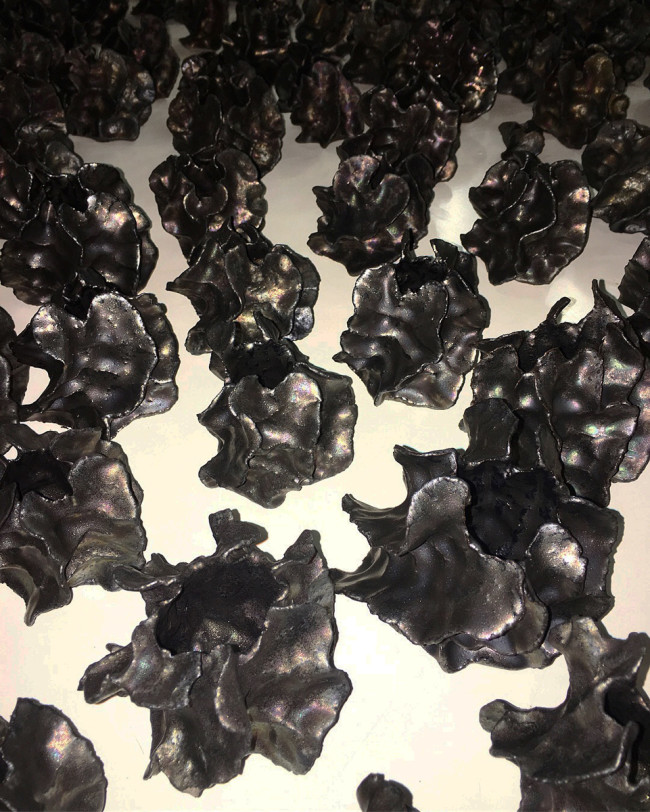
NOWs: A Toast to my Consent by Jonas Wendelin
NOWs:
Jonas Wendelin
A Toast to my Consent
Feel warmly invited to give your consent at Bob’s Pogo Bar on Thursday, September 28th, 9 pm, and celebrate our choices inflicted upon us with a toast to the collective. Let’s enjoy our mutual reflections served to us out of ceramic vessels by the Bob’s Pogo Bar team in the performance “A Toast To My Consent“.
Free entrance for KW Lovers* and KW Friends. Otherwise the entrance is 5€.
Due to limited capacity, please RSVP to
bobspogobar@kw-berlin.de
Jonas Wendelin KW Instagram takeover https://www.instagram.com/kwinstitutefcontemporaryart/
Bobs Pogo Bar program is curated by Maurin Dietrich & Cathrin Mayer
NOWs:
Jonas Wendelin
A Toast to my Consent
Feel warmly invited to give your consent at Bob’s Pogo Bar on Thursday, September 28th, 9 pm, and celebrate our choices inflicted upon us with a toast to the collective. Let’s enjoy our mutual reflections served to us out of ceramic vessels by the Bob’s Pogo Bar team in the performance “A Toast To My Consent“.
Free entrance for KW Lovers* and KW Friends. Otherwise the entrance is 5€.
Due to limited capacity, please RSVP to
bobspogobar@kw-berlin.de
Jonas Wendelin KW Instagram takeover https://www.instagram.com/kwinstitutefcontemporaryart/
Bobs Pogo Bar program is curated by Maurin Dietrich & Cathrin Mayer
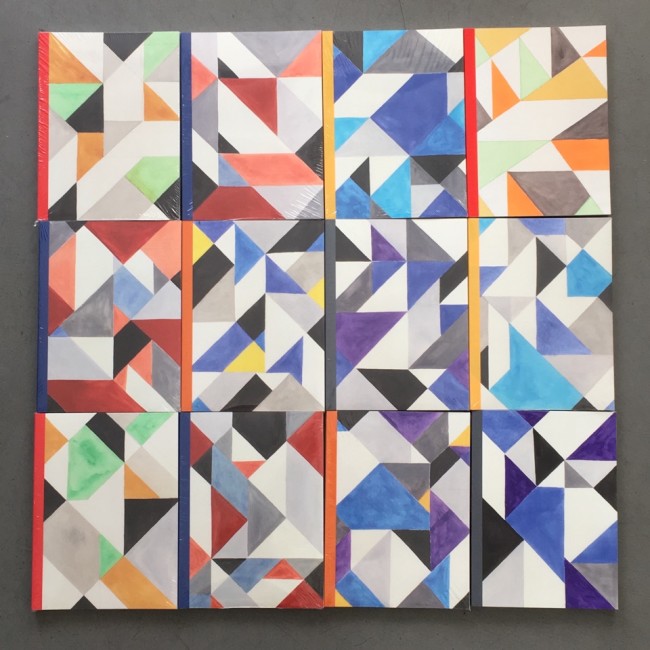
NOWs: Azimut Book Launch – Raul Walch
NOWs:
Raul Walch: Azimut Book Launch
Double Take:
Printed Matter’s New York Art Book Fair at PS1 and Unseen Photo Fair, Amsterdam
5:00pm, O12
Launch of Azimut by Raul Walch. Presented by Drittel Booksn at Printed Matter’s New York Art Book Fair at PS1.
NY Art Book Fair
MoMA PS1
Booth O12 (together with Kris Graves Projects)
September 22–24
www.nyartbookfair.com
Unseen Amsterdam
Westergasfabriek
Book Market – Booth 28
September 22–24
www.unseenamsterdam.com
NOWs:
Raul Walch: Azimut Book Launch
Double Take:
Printed Matter’s New York Art Book Fair at PS1 and Unseen Photo Fair, Amsterdam
5:00pm, O12
Launch of Azimut by Raul Walch. Presented by Drittel Booksn at Printed Matter’s New York Art Book Fair at PS1.
NY Art Book Fair
MoMA PS1
Booth O12 (together with Kris Graves Projects)
September 22–24
www.nyartbookfair.com
Unseen Amsterdam
Westergasfabriek
Book Market – Booth 28
September 22–24
www.unseenamsterdam.com
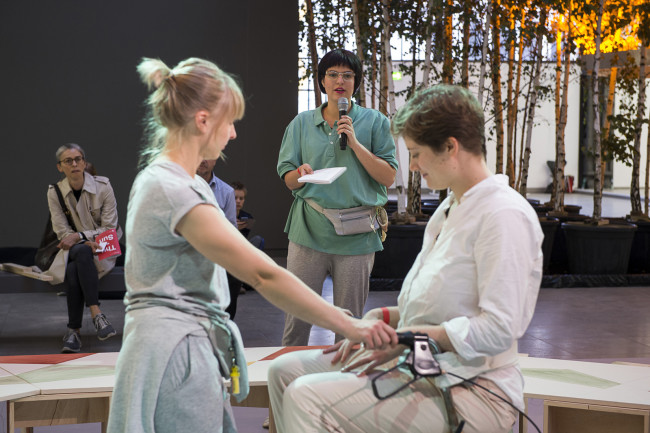
NOWs: CARE LESS – Schulungsprogramm für betreute Kunstbetrachtung
Trailer: CARE LESS
NOWs:
CARE LESS – Schulungsprogramm für betreute KunstbetrachtungVolkswagen Fellows 2017 in Wolfsburg
Der Förderverein der Städtischen Galerie Wolfsburg, jugend in der galerie e.V., und der Volkswagen Konzern haben 2017 erstmals ein Stipendium für Kunstvermittlerinnen und Kunstvermittler ausgeschrieben. Innovative Ansätze für die Vermittlung zeitgenössischer Kunst stehen im Mittelpunkt des Projektes Volkswagen Fellowship, das jeweils für 1 Jahr vergeben und ist mit 20.000 Euro dotiert ist.
Norgard Kröger & Paula Mierzowsky aus Kassel/Freiburg sind mit ihrem „Schulungsprogramm für betreute Kunstbetrachtung – CARE LESS” die ersten Fellows.
Die Jury überzeugte bei CARE LESS der Ansatz, Kunst und Vermittlung gänzlich zu verschmelzen. Die Preisträgerinnen schlagen nicht nur ein außergewöhnliches Vorgehen im Rahmen der Vermittlung vor, sondern überführen die Handlungen gleichzeitig in eine partizipative Performance. „Durch die Form der Durchführung generiert sich aus der Betrachtung in der Regel eine Verschiebung, sodass der Betrachtende oder die Betrachtende selbst Kunst/-Werkcharakter annimmt.“ Mit dem Stipendium soll „CARE LESS“ die Möglichkeit gegeben werden, ihre Methode über einen längeren Zeitraum zu verfolgen und weiterzuentwickeln.
–
CARE LESS im Rahmen des Festival of Future Nows 2017 → ∞, Hamburger Bahnhof, Foto: Jan Windszus
CARE LESS im Rahmen des Festival of Future Nows 2017 → ∞, Hamburger Bahnhof, Foto: David von Becker
Trailer: CARE LESS
NOWs:
CARE LESS – Schulungsprogramm für betreute KunstbetrachtungVolkswagen Fellows 2017 in Wolfsburg
Der Förderverein der Städtischen Galerie Wolfsburg, jugend in der galerie e.V., und der Volkswagen Konzern haben 2017 erstmals ein Stipendium für Kunstvermittlerinnen und Kunstvermittler ausgeschrieben. Innovative Ansätze für die Vermittlung zeitgenössischer Kunst stehen im Mittelpunkt des Projektes Volkswagen Fellowship, das jeweils für 1 Jahr vergeben und ist mit 20.000 Euro dotiert ist.
Norgard Kröger & Paula Mierzowsky aus Kassel/Freiburg sind mit ihrem „Schulungsprogramm für betreute Kunstbetrachtung – CARE LESS” die ersten Fellows.
Die Jury überzeugte bei CARE LESS der Ansatz, Kunst und Vermittlung gänzlich zu verschmelzen. Die Preisträgerinnen schlagen nicht nur ein außergewöhnliches Vorgehen im Rahmen der Vermittlung vor, sondern überführen die Handlungen gleichzeitig in eine partizipative Performance. „Durch die Form der Durchführung generiert sich aus der Betrachtung in der Regel eine Verschiebung, sodass der Betrachtende oder die Betrachtende selbst Kunst/-Werkcharakter annimmt.“ Mit dem Stipendium soll „CARE LESS“ die Möglichkeit gegeben werden, ihre Methode über einen längeren Zeitraum zu verfolgen und weiterzuentwickeln.
–
CARE LESS im Rahmen des Festival of Future Nows 2017 → ∞, Hamburger Bahnhof, Foto: Jan Windszus
CARE LESS im Rahmen des Festival of Future Nows 2017 → ∞, Hamburger Bahnhof, Foto: David von Becker
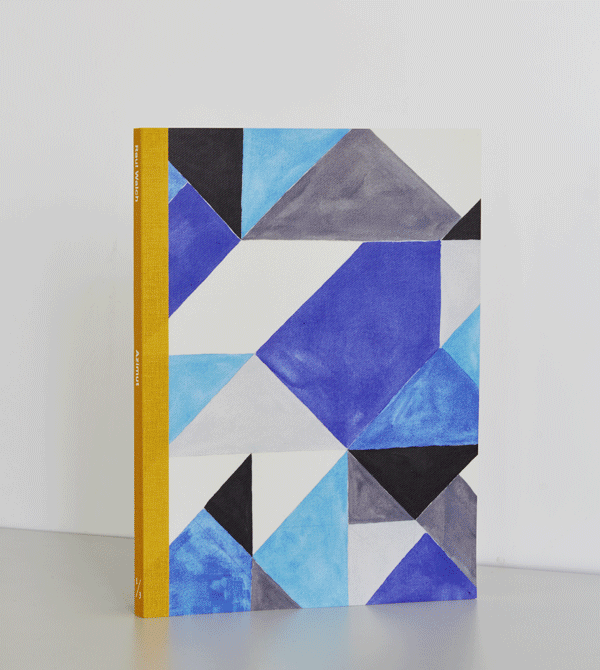
NOWs: Azimut – publication by Raul Walch
NOWs:
Raul Walch: Azimut
Publication
Published by Drittel Books, Berlin, the publication by Raul Walch features his series Azimut.
Many paths lead to Europe. The most dangerous is the sea route. In Azimut, Raul Walch travelled to Europe’s southern periphery to the heart of the greatest humanitarian catastrophe of our age. Azimut is an attempt to rethink artistic contemporaneity. It’s a presence that neither comments nor judges, but rather expands perspectives, participates and produces. Azimut is political; it is narrative and full of poetry. It doesn’t talk about people, it listens to them.
In the Winter of 2015, Raul Walch travelled to Lesbos. This, the first of several visits, marks the beginning of Azimut. In nautical terms the Arabic word refers to the intended course, or azimuth, of a journey from beginning to end. In navigational terms the north is a reference point. For those who have chosen the route across the sea, the north encompasses both hope and horror. Time and again Walch has explored global migration flows – investigating and deconstructing their materiality.
As Olafur Eliasson’s student at the Institut für Raumexperimente (Institute for Spatial Experimentation), Walch adopted a broad approach to artistic practice. The question as to whether an artistic idea can become a product remains pertinent throughout his work. In Azimut he takes it one step further: can an artistic idea save lives? From discarded tarpaulin he fashioned colourful kites. The temporary architectures of Arrival Cities have long become symbols of instability and uprootedness; in Azimut they are structures of freedom and empowerment. Where there are kites there is humanity. The next step is to turn them into Rescue Kites; lighthouses flying above the water to direct the ships; fluorescent mosaics in the wind that oppose the politics of nationalism.
The book contains texts by Paul Feigelfeld and Alexander Karschnia as well as a conversation with Olafur Eliasson and drawings by the artist. It appears in an edition of 500 copies and has 12 differently designed covers.
Additional Edition: 3 prints, edition of 20 (inkjet-print / Hahnemühle photo rag, 30 x 38 cm) and framed photos, edition of 5, (inkjet-print auf Hahnemühle photo rag, 30 x 40)
– Artist name: Raul Walch
– Title: Azimut
– Publisher: Drittel Books
– Release Year: 2017
– Country of release: Germany
– Price: 38 €
-Auflage: 500
NOWs:
Raul Walch: Azimut
Publikation
Anfang August erscheint im Verlag Drittel Books, Berlin die Publikation von Raul Walch zu seiner Werkserie Azimut.
Die Arbeit hat sich fortlaufend seit Winter 2015/16 in Griechenland und Deutschland unter anderem mit Geflüchteten und unabhängigen Helfern entwickelt. Es sind Aktionen, Photographien und Objekten entstanden, die in diesem Künstlerbuch zusammengefasst werden.
Das 136-seitige Buch enthält Texte von Paul Feigelfeld und Alexander Karschnia sowie ein Gespräch mit Olafur Eliasson und Zeichnungen des Künstlers. Es erscheint in einer Auflage von 500 Exemplaren und hat 12 unterschiedlich gestaltete Cover.
Zum Buch sind zwei Edition entstanden.
Zum einen drei Prints, Auflage 20 Stück (Inkjet-print auf Hahnemühle Photo rag, 30 x 38 cm) und zum anderen gerahmten Photographien, Auflage 5 Stück, aus der Serie Azimut (Inkjet-print auf Hahnemühle Photo rag, 30 x 40, kaschiert und weißgrau gerahmt)
– Artist name: Raul Walch
– Title: Azimut
– Publisher: Drittel Books
– Release Year: 2017
– Country of release: Germany
– Price: 38 €
-Auflage: 500
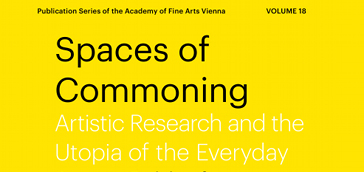
NOWs: Spaces of Commoning – a book launch
NOWs:
Casco & The Academy of Fine Arts Vienna
Book launch: Spaces of Commoning: Artistic Research and the Utopia of the Everydayat
Casco
Lange Nieuwstraat 7, 3512 PA Utrecht
19:30 – 21:30 h
No reservation required. Free entrance.
With Stefan Gruber, Moira Hille, Annette Krauss and Julia Wieger
Spaces of Commoning: Artistic Research and the Utopia of the Everyday is the outcome of a research project pursued by a group of artists, architects, and social theorists, who, in the face of exhilarating politics of accumulation and dispossession, explore commoning as the subject as well as the means of their collective study. The power of the commons, this book suggests, does not reside in the promise of a coming together free of friction. As different dimensions of power organize the terrain of the social, social movements are often caught between competing agendas, and in the gap between aims and everyday life. It is precisely the sites of these struggles that the book calls spaces of commoning. As such, this study is part of a much wider recognition of the necessity to rethink and undo the methodological premises of Western sciences, arts, and architecture, and to raise unsettling questions on research ethos, accountability, and the entanglement of power and knowledge.
Edited by Anette Baldauf, Stefan Gruber, Moira Hille, Annette Krauss, Vladimir Miller, Mara Verlič, Hong-Kai Wang, Julia Wieger.
With contributions by Berhanu Ashagrie Deribew, Anette Baldauf, Tesfaye Bekele Beri, Aluminé Cabrera, Silvia Federici, Elizabeth Giorgis, Stefan Gruber, Stefano Harney, Moira Hille, Mihret Kebede, Annette Krauss, Lisa Lowe, Maria Mesner, Vladimir Miller, Stavros Stavrides, Pelin Tan, Team at Casco—Office for Art, Design and Theory, Brook Teklehaimanot, Ultra-red, Mara Verlič, Hong-Kai Wang, Julia Wieger.
Spaces of Commoning: Artistic Research and the Utopia of the Everyday
Publication Series of the Academy of Fine Arts Vienna, vol. 18
Design by Surface
December 2016, English
16.5 x 22 cm, 20 b/w and 13 color ill., softcover
ISBN 978-3-95679-266-3
NOWs:
Casco & The Academy of Fine Arts Vienna
Book launch: Spaces of Commoning: Artistic Research and the Utopia of the Everyday
at
Casco
Lange Nieuwstraat 7, 3512 PA Utrecht
19:30 – 21:30 h
No reservation required. Free entrance.
With Stefan Gruber, Moira Hille, Annette Krauss and Julia Wieger
Spaces of Commoning: Artistic Research and the Utopia of the Everyday is the outcome of a research project pursued by a group of artists, architects, and social theorists, who, in the face of exhilarating politics of accumulation and dispossession, explore commoning as the subject as well as the means of their collective study. The power of the commons, this book suggests, does not reside in the promise of a coming together free of friction. As different dimensions of power organize the terrain of the social, social movements are often caught between competing agendas, and in the gap between aims and everyday life. It is precisely the sites of these struggles that the book calls spaces of commoning. As such, this study is part of a much wider recognition of the necessity to rethink and undo the methodological premises of Western sciences, arts, and architecture, and to raise unsettling questions on research ethos, accountability, and the entanglement of power and knowledge.
Edited by Anette Baldauf, Stefan Gruber, Moira Hille, Annette Krauss, Vladimir Miller, Mara Verlič, Hong-Kai Wang, Julia Wieger.
With contributions by Berhanu Ashagrie Deribew, Anette Baldauf, Tesfaye Bekele Beri, Aluminé Cabrera, Silvia Federici, Elizabeth Giorgis, Stefan Gruber, Stefano Harney, Moira Hille, Mihret Kebede, Annette Krauss, Lisa Lowe, Maria Mesner, Vladimir Miller, Stavros Stavrides, Pelin Tan, Team at Casco—Office for Art, Design and Theory, Brook Teklehaimanot, Ultra-red, Mara Verlič, Hong-Kai Wang, Julia Wieger.
Spaces of Commoning: Artistic Research and the Utopia of the Everyday
Publication Series of the Academy of Fine Arts Vienna, vol. 18
Design by Surface
December 2016, English
16.5 x 22 cm, 20 b/w and 13 color ill., softcover
ISBN 978-3-95679-266-3

NOWs: Display Distribute at Miss Read
NOWs:
Display Distribute at
Miss Read Art Book Festival, Haus der Kulturen der Welt, 14-16 July 2017
Display Distribute is a thematic inquiry, exhibition space, distribution service and ‘sometimes shop’ based in Kowloon, Hong Kong. Woven together by a serially enlisted cast of agents, the project engages in a wider discussion of globally enabled and dismantled forms of exchange amidst a late-capitalist networked production. Among them, the distribution and production of independent publications acts as a loosely organised confluence—dialogue and exchange on critical, self-organised practices across Asia/SE Asia.
To facilitate small-scale distribution, transport of our books, zines and perodicals is carried out by LIGHT LOGISTICS, a person-to-person network enabled by the surplus carrying power of couriers engaging a mobile space for intimate and flexible forms of reading. For the duration of Miss Read Festival, a corporeal reading unit and mobile distribution node will present Display Distribute’s “SECOND(hand)MOUNTAIN(fortress)” series of print-on-demand editions.
For this launch, publications have been specially dedicated to readers courtesy of practitioners such as ZHANG Hanlu, Jong PAIREZ, Susanne BOSCH, Franz SCHUBERT, KUNCI Cultural Studies Center, DANWARAREN, Renan LARU-AN, Elaine W. Ho, Ming LIN, Zikri RAHMAN, HomeShop, et al.
Display Distribute and LIGHT LOGISTICS have initiated a series of events and other experiments of reading and writing at various hosting institutions, including: BANK (Shanghai), Irregular Rhythm Asylum (Tokyo) and Gasworks (London).
NOWs:
Display Distribute at
Miss Read Art Book Festival, Haus der Kulturen der Welt, 14-16 July 2017
Display Distribute is a thematic inquiry, exhibition space, distribution service and ‘sometimes shop’ based in Kowloon, Hong Kong. Woven together by a serially enlisted cast of agents, the project engages in a wider discussion of globally enabled and dismantled forms of exchange amidst a late-capitalist networked production. Among them, the distribution and production of independent publications acts as a loosely organised confluence—dialogue and exchange on critical, self-organised practices across Asia/SE Asia.
To facilitate small-scale distribution, transport of our books, zines and perodicals is carried out by LIGHT LOGISTICS, a person-to-person network enabled by the surplus carrying power of couriers engaging a mobile space for intimate and flexible forms of reading. For the duration of Miss Read Festival, a corporeal reading unit and mobile distribution node will present Display Distribute’s “SECOND(hand)MOUNTAIN(fortress)” series of print-on-demand editions.
For this launch, publications have been specially dedicated to readers courtesy of practitioners such as ZHANG Hanlu, Jong PAIREZ, Susanne BOSCH, Franz SCHUBERT, KUNCI Cultural Studies Center, DANWARAREN, Renan LARU-AN, Elaine W. Ho, Ming LIN, Zikri RAHMAN, HomeShop, et al.
Display Distribute and LIGHT LOGISTICS have initiated a series of events and other experiments of reading and writing at various hosting institutions, including: BANK (Shanghai), Irregular Rhythm Asylum (Tokyo) and Gasworks (London).
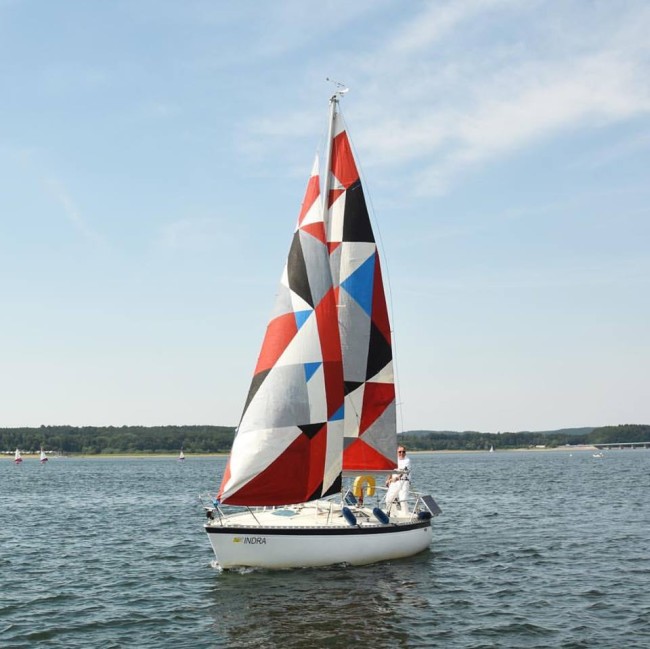
NOWs: Odyssee, Möhnesee
Raul Walch: Semaphore, Möhnesee, 2017
NOWs:
OdysseeMöhnesee
Opening on the Möhnesee lake: 20th July, 7pm
Opening at Kunstverein Arnsberg: 28th July, 7pm
With Øystein Aasan, Aram Bartholl, Kerstin Brätsch, Julian Breuer, Marco Bruzzone, Nine Budde, Burghard, Eric Ellingsen, Andreas Greiner, Knut Henrik Henriksen, Theresa Kampmeier, Daewha Kang, Fabian Knecht, Daniel Knorr, Tanaz Modabber, Swantje La Moutte, Ulrike Mohr, Reto Pulfer, Anton Quiring, Yorgos Sapountzis, Mirjam Thomann, Raul Walch, Tilman Wendland, Ella Ziegler
The exhibition ‘Odyssee’ takes place in water. All artworks have been conceived for the water, and visitors are invited to swim, row or sail between the works.
Instead of the usual foundational elements of walls, ceiling and floor, in this exhibition the artists have to deal with water, weather and wildlife. Even the water is not entirely reliable, with the water level varying depending on rainfall and industry. In the absence of the kind of certainties they are used to, the artists had to rethink their methods of artistic production and presentation in order to develop new works especially for the exhibition. The dynamics of the surrounding area and the spontaneity of the visitors open up the exhibition for further developments beyond the artists’ intentions.
The Möhnesee is the largest lake in North-Rhine Westphalia, located between Kassel and Münster. Visitors to documenta and Sculpture Projects Münster can complete their triathlon at Möhnesee. The exhibition can best be reached from Körbecke, on the north side of the lake – in the wild lakeside area between the pedestrian bridge and the Westphalia Yacht club. The second part of the exhibition takes place from 28th July until 10th September 2017 at Kunstverein Arnsberg, and in August on the river Ruhr. The project will be further expanded by workshops on location with students. There will be a comprehensive education programme with guided tours from the lakeside and on the water. Entry, tours and performances are free.
‘Odyssee’ is a Project by Kunstverein Arnsberg, realised with the generous support of Kunststiftung NRW, the Ministry for Family, Children, Youth and Sport of North-Rhine Westphalia, C. & A. Veltins Brewery, Sparkasse Soest, the district parish of Möhnesee, the city of Arnsberg and Yachtclub Westfalia Arnsberg.
Contact:
info@odyssey.to
Vlado Velkov / Juliane Rogge
Kunstverein Arnsberg e.V.
Königstraße 24, 59821 Arnsberg
www.kunstverein-arnsberg.de
Raul Walch: Semaphore, Möhnesee 2017
NOWs:
OdysseeMöhnesee
Ausstellungseröffnung: Donnerstag, 20. Juli, 19 Uhr, Möhnesee
Performances & Konzert: Freitag, 21. Juli, 19 Uhr, Möhnesee
Eröffnung & Sommerfest: 28. Juli, 19 Uhr, Kunstverein Arnsberg
Mit Beiträgen von Øystein Aasan, Aram Bartholl, Kerstin Brätsch, Julian Breuer, Marco Bruzzone, Nine Budde, Burghard, Eric Ellingsen, Andreas Greiner, Knut Henrik Henriksen, Theresa Kampmeier, Daewha Kang, Fabian Knecht, Daniel Knorr, Tanaz Modabber, Swantje La Moutte, Ulrike Mohr, Reto Pulfer, Anton Quiring, Yorgos Sapountzis, Mirjam Thomann, Raul Walch, Tilman Wendland, Ella Ziegler
Die Ausstellung „Odyssee“ findet im Wasser statt. Alle Kunstwerke werden für das Wasser konzipiert, so dass die Besucher eingeladen sind, von Werk zu Werk zu schwimmen, zu rudern oder zu segeln.
Der Ausstellung fehlen Grundelemente wie Wände, Decke und Boden; stattdessen haben die Künstler mit Wasser, Wetter und Tieren zu tun. Sie können sich auch auf das Wasser nicht verlassen, da der Wasserspiegel je nach Regenfall und Industriebedarf variiert. Diese Unsicherheit fordert, dass die Künstler ihre Methoden und Techniken überdenken und für das Projekt ausschließlich neue Werke produzieren. Die Dynamik des Umfelds und Spontanität der Besucher öffnen die Ausstellung für weitere Entwicklungen jenseits des künstlerischen Vorhabens.
Der Möhnesee ist der größte See in NRW und liegt zwischen Kassel und Münster. Besucher der documenta und der Skulptur Projekte Münster können am Möhnesee ihren Triathlon abschließen. Die Ausstellung ist am besten vom Nordufer in der Gemeinde Körbecke zu erreichen, im wilden Uferbereich westlich der Fußgängerbrücke. Der zweite Teil der Ausstellung findet in Arnsberg statt: vom 28. Juli bis zum 10. September 2017 im Kunstverein Arnsberg, sowie im August auf der Ruhr. Workshops mit Studierenden vor Ort werden das Projekt zusätzlich erweitern. Es wird ein umfangreiches Vermittlungsprogramm mit Führungen am Ufer und im Wasser angeboten. Eintritt, Führungen und Performances sind frei.
„Odyssee“ ist ein Projekt des Kunstvereins Arnsberg, realisiert mit der freundlichen Unterstützung der Kunststiftung NRW, des Ministeriums für Familie, Kinder, Jugend, Kultur und Sport des Landes Nordrhein-Westfalen, der Brauerei C. & A. Veltins, der Sparkasse Soest, der Gemeinde Möhnesee, der Stadt Arnsberg, des Hochsauerlandkreises und des Yachtclubs Westfalia Arnsberg.
Kontakt:
info@odyssey.to
Vlado Velkov / Juliane Rogge
Kunstverein Arnsberg e.V.
Königstraße 24, 59821 Arnsberg
www.kunstverein-arnsberg.de
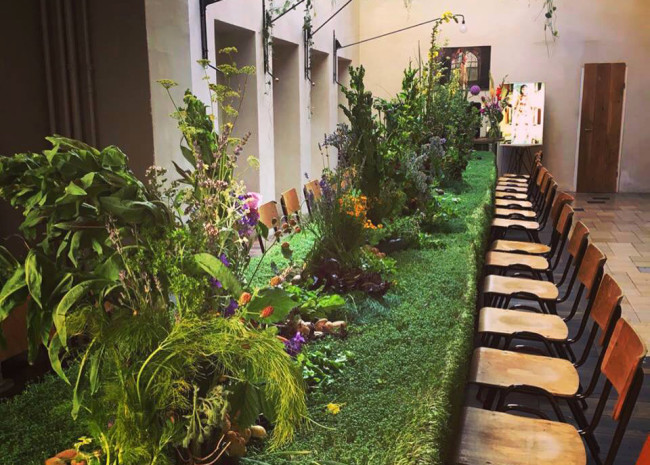
NOWs: Into The Wild by Anne Duk Hee Jordan
NOWs:
Into The Wild by Anne Duk Hee Jordan
Into The Wild is a conceptual dinner by Anne Duk Hee Jordan in collaboration with the “Herbarium Leipzig”, in the framework of the Berlin Food Art Week.
Into The Wild presents a table of long forgotten herbs, edible fragrance flowers, and ancient root knots. The visitors are invited to take part in an enjoyable adventure of their own perception and to consume in direct access to the presented fruits. The dinner table becomes a lavish heterotopy. It refers to crops which were formerly offered in the local markets, and have almost disappeared. Gradually, the “old” returns. Such as The Night Candle, originating from North America, used to be one of the most important medicinal plants. In the 16th century, it was brought to Europe as an ornamental plant and cultivated in gardens. One quickly learned to use the potential of the plant as a vegetable.
Into The Wild will be a sensual taste experience, going back to the basics, eating with our own hands, no plates, no forks, no knives: a tête a tête with the family of nettles and watercress species, tubers are prepared as ragout and we will get to know trees surprisingly different.
Hallesches Haus
Tempelhofer-Ufer 1
10961 Berlin
Sunday, 7 pm
5 courses menu
45,00 Euro / person
limited seats available
Book your ticket.
NOWs:
Into The Wild by Anne Duk Hee Jordan
Into The Wild ist ein konzeptuelles Dinner von Anne Duk Hee Jordan das in Kollaboration mit dem „Herbarium Leipzig“, im Rahmen der Berliner Food Art Week stattfindet.
Into The Wild beschreibt eine Tafel längst vergessener Kräuter, essbare Duftblumen und alte Wurzelknollen. Die Besucher sind eingeladen sich auf eine genussvolle Abenteuerreise der eigenen Wahrnehmung zu begeheben und den direkten Zugang der dargebotenen Früchte zu verzehren.
Die Tafel stellte eine lukullische Heterotopie dar. Sie weist auf Nutzpflanzen auf die früher auf den einheimischen Märkten angeboten wurden und zwischendurch wieder fast verschwunden sind. Nach und nach kehren die „Alten“ wieder zurück. Die Nachtkerze stammt ursprünglich aus Nordamerika und war eine der wichtigsten Heilpflanzen. Im 16.Jh wurde sie als Zierpflanze nach Europa gebracht und in Gärten kultiviert. Man lernte schnell das Potenzial der Pflanze als Gemüse zu nutzen.
Into The Wild wird ein sinnlicher Geschmacksspaziergang werden. Die Besucher gehen zurück zum Basalen und essen mit ihren eigenen Händen, keine Teller, keine Gabeln, keine Messer: ein Tete a Tete mit der Familie der Brennnesseln und Kresse-Arten, alte Knollen zubereitet als Ragout und Bäume einmal anders kennengelernt.
Hallesches Haus
Tempelhofer-Ufer 1
10961 Berlin
Sonntag, 19 h
5 Gänge-Menü
45,00 Euro/ Person
begrenzte Teilnehmerzahl
Ticket buchen.
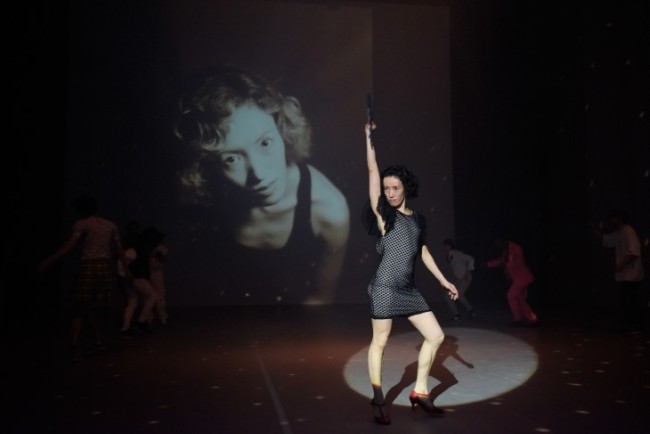
NOWs: Constanza Macras | DorkyPark: The Pose |Music by Robert Lippok
NOWs:
Constanza Macras | DorkyPark: The Pose
Performance
Premier: 9 July 2017, 7 pm
Further performances on 12, 13, 14, 15, 16 and 17 July.
–
Akademie der Künste
Hanseatenweg 10
10557 Berlin
–
How do the narratives of self-presentation change through the abundance of careless images? Constanza Macras and her Company DorkyPark take up a diachronic perspective from the past and present to look at self-representation, spanning from classical portrait painting to historical photo documents to digital selfies taken with mobile phones.
THE POSE deals with memory in relationship to the physical architectural space and the collective memories it carries. It is a 4-hour performance course where the exercise and mechanisms of memory and its faultiness are part of the audience´s experience.
Viewers move through Werner Düttmann’s building, from station to station, through various atmospheres and levels of memory. In this peripatetic walk through the parallel performances, much like “the art of memory” from the pre-Socratic period, in which walking and thinking are reconciled, the spectators experience the collective memories of the historical architecture of the Akademie der Künste at Hanseatenweg in the intimate spaces and through monumental stage pictures.
Director & Choreography: Constanza Macras
Music: Robert Lippok
Dramaturgy: Carmen Mehnert
By & with: Emil Bordás, Diane Gemsch, Luc Guiol, Fernanda Farah, Nile Koetting, Thulani Lord Mgidi, Ana Mondini, Daisy Philips, Felix Saalmann, Miki Shoji & Momo Akkouch
Lights: Catalina Fernandez
Sound: Fabrice Moinet
Stage: Laura Gamberg, Veronica Wüst & Chika Takabayashi
Costumes: Constanza Macras & Daphna Munz
Director’s Assistant: Helena Casas
Buy ticket
A production by Constanza Macras | DorkyPark in collaboration with Robert Lippok. In cooperation with Akademie der Künste, Berlin. Funded by HKF – Hauptstadtkulturfonds.
NOWs:
Constanza Macras | DorkyPark: The Pose
Performance
Premiere: 9 Juli 2017, 19 h
Weitere Vorstellungen am 12.7., 13.7., 14.7., 15.7., 16.7. und 17.7.
–
Akademie der Künste
Hanseatenweg 10
10557 Berlin
–
Wie verändern sich die Narrative der Selbstinszenierung durch die Fülle achtlos erstellter Bilder? Constanza Macras nimmt mit ihrer Company DorkyPark eine diachrone Perspektive ein und untersucht Selbstinszenierungen von gestern und heute, von der klassischen Porträtmalerei über historische Fotodokumente bis zu digitalen Selfies mittels Mobiltelefon.
„The Pose“ beschäftigt sich mit dem Gedächtnis in Beziehung zum architektonischen Raum und den kollektiven Erinnerungen, die er trägt. Während der vierstündigen Performance werden die Übung und die Mechanismen, aber auch die Fehlerhaftigkeit des Gedächtnisses Teil des Publikumserlebnisses.
Die Zuschauer spazieren in der Architektur von Werner Düttmann von Station zu Station durch verschiedene Atmosphären und Schichten von Erinnerung. In diesem peripatetischen Spaziergang durch die parallel stattfindenden Performances, in dem Gehen und Denken in Einklang gebracht werden, erleben die Zuschauer und Zuschauerinnen in intimen Räumen und groß angelegten Bühnenarrangements die kollektiven Erinnerungen der historischen Architektur der Akademie der Künste am Hanseatenweg.
Regie & Choreographie: Constanza Macras
Musik: Robert Lippok
Dramaturgie: Carmen Mehnert
Von und mit: Emil Bordás, Diane Gemsch, Luc Guiol, Fernanda Farah, Nile Koetting, Thulani Lord Mgidi, Ana Mondini, Daisy Philips, Felix Saalmann, Miki Shoji & Momo Akkouch
Licht: Catalina Fernandez
Ton: Fabrice Moinet
Bühne: Laura Gamberg, Veronica Wüst & Chika Takabayashi
Kostüm: Constanza Macras & Daphna Munz
Regieassistenz: Helena Casas
Ticket kaufen
Eine Produktion von Constanza Macras | DorkyPark in Zusammenarbeit mit Robert Lippok. In Kooperation mit der Akademie der Künste, Berlin. Gefördert aus Mitteln des HKF – Hauptstadtkulturfonds.
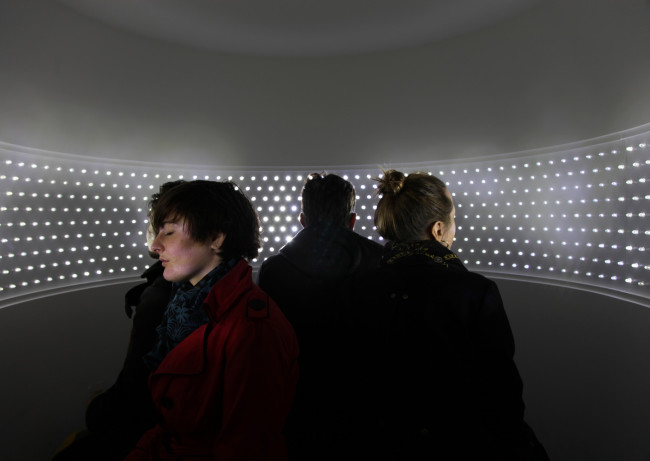
NOWs: We Close our Eyes and See a Flock of Birds by Ivana Franke
Ivana Franke: We Close our Eyes and See a Flock of Birds, 2013. Courtesy of the artist
NOWs:
Ivana Franke, Tommi Grцnlund and Petteri Nisunen
:
Perceptual Drift (Galaxies in Mind) / GREY AREA
at
Museum of Contemporary Art Zagreb,
Croatia
The works of Ivana Franke, Tommi Grönlund, and Petteri Nisunen share an explorative approach which unites artistic methodology with natural sciences and architecture. The permeation of graphics, sculptures, architecture, movement, and sounds with mathematics, optics, physics, and neuroscience in their work leads us to experience sensations that seem to be outside of our sensory limitations. Furthermore, they approach their art as mechanisms that simultaneously produce and uncover limits of perception. The interdisciplinary nature of the exhibition connects to the history of the Museum of Contemporary Art: the neo-avantgarde movement New Tendencies, to which a part of the permanent setup of the museum is dedicated. In a search for a new artistic expression during a time of intensive penetration of technology into the everyday life of the 1960s and the 1970s, artists strived to create an “open work,” which incorporates the audience into its’ own creation, and which is a result of both artistic and scientific discoveries.
The exhibition Perceptual Drift (Galaxies in Mind) by Ivana Franke takes visitors on a journey through various levels of artistic exploration by analysing our visual and spatial perceptual thresholds. Starting with a complete visual relocation in a series of installations in dark spaces, leaning on bodily sensations in intentionally unstable optical conditions, it continues on to a series of objects and prints—models meant to exercise visual comprehension and awareness of invisible structures that comprise the image of the world, revealed through quasy-hallucinatory visual experiences in the observers minds. After the initiation path that starts as a complete dizziness, we move on to rational constructs and spatial speculations, and ultimately towards a conscious experience of vast unknown areas permeating our minds and the phenomenal reality.
In their synesthetic installations, Tommi Grönlund and Petteri Nisunen use forces invisible to the human eye, which create the world around us, reifying it through the materialisation of natural phenomena as like radioactivity, (electro) magnetism, gravity, standing wave patterns and randomness, among others. They use them as a scenario for the construction of impressive audio, kinetic, and optical installations, which take on the particularities of the exhibition spaces, thereby opening the possibility of endless site-specific adaptations. The works by Grönlund and Nisunen, as well as with space, enter a dialogue with the visitors of the exhibition—through sight, hearing, touch, and motion. Every sensation is open to personal perception, reflection, and, finally, randomness in terms of completely personal experience that leaves behind the limitations of everyday cognition.
Ivana Franke is a visual artist based in Berlin. In her works, she investigates the interface between perception, cognition and the environment, focusing on perceptual thresholds. Her most recent exhibition, Retreat into Darkness. Towards a Phenomenology of the Unknown, is currently on view at the Ernst Schering Foundation in Berlin. Other projects include Disorientation Station (11th Shanghai Biennale) and Seeing with Eyes Closed (Peggy Guggenheim, Venice, Deutsche Guggenheim, Berlin). She represented Croatia at the 52nd Venice Biennial with the solo exhibition Latency, and at the 9th Venice Architecture Biennial. Other exhibitions include Manifesta 7, and MoMa P.S.1.
Grönlund and Nisunen first met when studying architecture in the same university in late 80´s and they have worked together since early 90´s. Recently, they presented a mid-career retrospective of their collaborative work at the exhibition GREY AREA in Helsinki Kunsthalle, and had solo shows at the Galerie Anhava in Helsinki and the Esther Schipper Gallery in Berlin. Some of their most important group exhibitions include MUDAM Luxembourg, 5th Marrakech Biennale,Laboratorio Arte Alameda, 3rd Moscow Biennale, Yokohama Triennial and Manifesta 1. They represented Nordic countries at the 49th Venice Biennial and participated with a solo show at the 27th Sao Paolo Biennial.
—
Ivana Franke: We Close our Eyes and See a Flock of Birds, 2013. Wooden construction, polystyrene panels, white LED-lights, micro-controller, bench. 203 x 206 x 206 cm. Frequency range of flickering lights: 10–33 Hz. Each flash duration 6 mins. Duration of the sequence 6 mins 24 secs. Courtesy of the artist.
Ivana Franke: We Close our Eyes and See a Flock of Birds, 2013. Courtesy of the artist
NOWs:
Ivana Franke, Tommi Grцnlund and Petteri Nisunen
:
Perceptual Drift (Galaxies in Mind) / GREY AREA
at
Museum of Contemporary Art Zagreb,
Croatia
The works of Ivana Franke, Tommi Grönlund, and Petteri Nisunen share an explorative approach which unites artistic methodology with natural sciences and architecture. The permeation of graphics, sculptures, architecture, movement, and sounds with mathematics, optics, physics, and neuroscience in their work leads us to experience sensations that seem to be outside of our sensory limitations. Furthermore, they approach their art as mechanisms that simultaneously produce and uncover limits of perception. The interdisciplinary nature of the exhibition connects to the history of the Museum of Contemporary Art: the neo-avantgarde movement New Tendencies, to which a part of the permanent setup of the museum is dedicated. In a search for a new artistic expression during a time of intensive penetration of technology into the everyday life of the 1960s and the 1970s, artists strived to create an “open work,” which incorporates the audience into its’ own creation, and which is a result of both artistic and scientific discoveries.
The exhibition Perceptual Drift (Galaxies in Mind) by Ivana Franke takes visitors on a journey through various levels of artistic exploration by analysing our visual and spatial perceptual thresholds. Starting with a complete visual relocation in a series of installations in dark spaces, leaning on bodily sensations in intentionally unstable optical conditions, it continues on to a series of objects and prints—models meant to exercise visual comprehension and awareness of invisible structures that comprise the image of the world, revealed through quasy-hallucinatory visual experiences in the observers minds. After the initiation path that starts as a complete dizziness, we move on to rational constructs and spatial speculations, and ultimately towards a conscious experience of vast unknown areas permeating our minds and the phenomenal reality.
In their synesthetic installations, Tommi Grönlund and Petteri Nisunen use forces invisible to the human eye, which create the world around us, reifying it through the materialisation of natural phenomena as like radioactivity, (electro) magnetism, gravity, standing wave patterns and randomness, among others. They use them as a scenario for the construction of impressive audio, kinetic, and optical installations, which take on the particularities of the exhibition spaces, thereby opening the possibility of endless site-specific adaptations. The works by Grönlund and Nisunen, as well as with space, enter a dialogue with the visitors of the exhibition—through sight, hearing, touch, and motion. Every sensation is open to personal perception, reflection, and, finally, randomness in terms of completely personal experience that leaves behind the limitations of everyday cognition.
Ivana Franke is a visual artist based in Berlin. In her works, she investigates the interface between perception, cognition and the environment, focusing on perceptual thresholds. Her most recent exhibition, Retreat into Darkness. Towards a Phenomenology of the Unknown, is currently on view at the Ernst Schering Foundation in Berlin. Other projects include Disorientation Station (11th Shanghai Biennale) and Seeing with Eyes Closed (Peggy Guggenheim, Venice, Deutsche Guggenheim, Berlin). She represented Croatia at the 52nd Venice Biennial with the solo exhibition Latency, and at the 9th Venice Architecture Biennial. Other exhibitions include Manifesta 7, and MoMa P.S.1.
Grönlund and Nisunen first met when studying architecture in the same university in late 80´s and they have worked together since early 90´s. Recently, they presented a mid-career retrospective of their collaborative work at the exhibition GREY AREA in Helsinki Kunsthalle, and had solo shows at the Galerie Anhava in Helsinki and the Esther Schipper Gallery in Berlin. Some of their most important group exhibitions include MUDAM Luxembourg, 5th Marrakech Biennale,Laboratorio Arte Alameda, 3rd Moscow Biennale, Yokohama Triennial and Manifesta 1. They represented Nordic countries at the 49th Venice Biennial and participated with a solo show at the 27th Sao Paolo Biennial.
—
Ivana Franke: We Close our Eyes and See a Flock of Birds, 2013. Wooden construction, polystyrene panels, white LED-lights, micro-controller, bench. 203 x 206 x 206 cm. Frequency range of flickering lights: 10–33 Hz. Each flash duration 6 mins. Duration of the sequence 6 mins 24 secs. Courtesy of the artist.
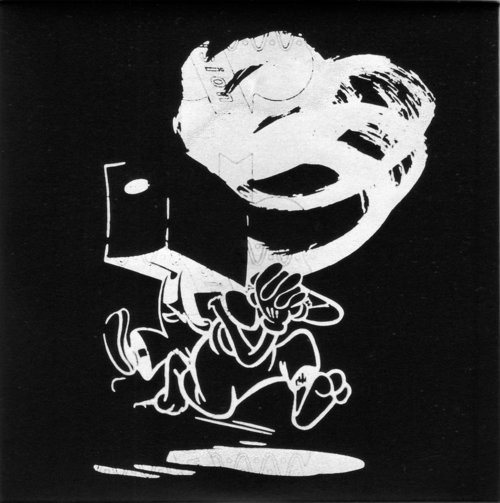
NOWs: Glottal Wolpertinger by Jan St. Werner and Dessner brothers
NOWs:
Glottal Wolpertinger by Jan St. Werner and Dessner brothers
Music performance
6.7.2017; 9:30 pm
Romantso, Anaxagora 3–5, Athens
Multi-fragmented composition, 2017
Eight microtonally tuned feedback channels are broadcast over the documenta 14 Radio Program for a period of ten weeks. On July 6, 2017 the feedback channels converge with each other during an installative performance in Athens. The eight composition fragments each consist of a continuously modulated feedback channel based on a harmony. The feedback channels resonate at the tuning frequencies of 44 Hz, 133 Hz, 339 Hz, 527 Hz, 826 Hz, 1014 Hz, 1552 Hz, 1889 Hz, 2.3 kHz, 4.6 kHz, 7.15 kHz, 10.14 kHz, 14.873 kHz, and 29.45 kHz. This results in oscillations, binaural pulses, and sound artifacts. Traditional techniques of orientation in music are pushed beyond the limits of comprehension. Glottal Wolpertinger deconstructs the principle of the musical drone, the timelessly dense, continuously spreading mass of sound, and uses idiosyncratic, abrupt movements to break with the traditional object character of music. The piece culminates in a live performance before an audience at Romantso in the city center of Athens and then breaks down.
Next broadcasts: June 21, 2017, 24:00 (UTC+2) and July 1, 2017, 24:00 (UTC+2)
Posted in public radio as part of documenta14 listening space.
A stereo version of Glottal Wolpertinger as a white CD-R with stamped date, white screen-printed cover on black card sleeve and printed insert is available via farbvision.
NOWs:
Glottal Wolpertinger by Jan St. Werner and Dessner brothers
Music performance
6.7.2017; 9:30 pm
Romantso, Anaxagora 3–5, Athens
Multi-fragmented composition, 2017
Eight microtonally tuned feedback channels are broadcast over the documenta 14 Radio Program for a period of ten weeks. On July 6, 2017 the feedback channels converge with each other during an installative performance in Athens. The eight composition fragments each consist of a continuously modulated feedback channel based on a harmony. The feedback channels resonate at the tuning frequencies of 44 Hz, 133 Hz, 339 Hz, 527 Hz, 826 Hz, 1014 Hz, 1552 Hz, 1889 Hz, 2.3 kHz, 4.6 kHz, 7.15 kHz, 10.14 kHz, 14.873 kHz, and 29.45 kHz. This results in oscillations, binaural pulses, and sound artifacts. Traditional techniques of orientation in music are pushed beyond the limits of comprehension. Glottal Wolpertinger deconstructs the principle of the musical drone, the timelessly dense, continuously spreading mass of sound, and uses idiosyncratic, abrupt movements to break with the traditional object character of music. The piece culminates in a live performance before an audience at Romantso in the city center of Athens and then breaks down.
Next broadcasts: June 21, 2017, 24:00 (UTC+2) and July 1, 2017, 24:00 (UTC+2)
Posted in public radio as part of documenta14 listening space.
A stereo version of Glottal Wolpertinger as a white CD-R with stamped date, white screen-printed cover on black card sleeve and printed insert is available via farbvision.
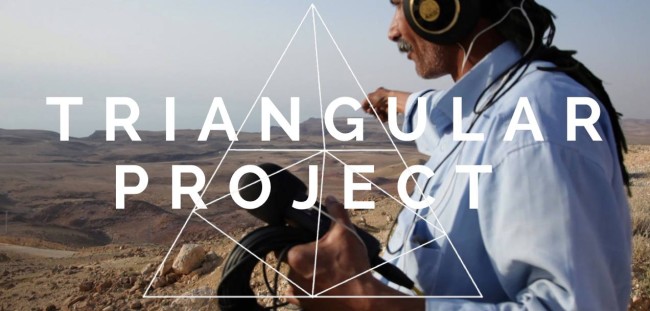
NOWs: Triangular Project
NOWs:
EXPLORING SPATIAL AWARENESS
JUNE 26th – JULY 2nd, 2017
A 7 days Master Class exploring spatial awareness at the Ionion Center for the Arts and Culture, Kefalonia Island, Greece, led by TRIANGULAR PROJECT
–
OPEN CALL
The master class aims to explore spatial awareness (perception of psychological / mental space, consciousness of the limits of our body in space, perception of optical / perceptual space, and aural spatial awareness) through various artistic techniques. Participants will acquire artistic tools and methods to investigate spatial awareness and technical support will be provided in sound and video recording, painting, action / performance, installation, and sculpture. Participants will develop and exhibit a personal project. They will also be encouraged to reflect on their personal artistic practice and that of their fellow artists. It is open to all disciplines in the arts and other areas of knowledge
We are looking forward to welcome participants interested in space and perception.
DEADLINES FOR SUBMISSION : April 20th, 2017
There are grants related to the SEA forum, connected as well with the master class. All the info at www.ionionartscenter.gr and www.triangularproject.net
For questions please address Sophie at info@ionionartscenter.gr and or us at triangular.project@gmail.com
–
TRIANGULAR PROJECT is a collective of visual artists working with the theme of space. The artistic practises of Florine Leoni (Switzerland), Macarena Ruiz-Tagle (Chile) and Sandra Volny (Canada) draw a TRIANGLE – a three-sided shape based on three kinds of perception: perception of psychological/mental space, perception of optical/perceptual space, and aural & spatial awareness.
Working in situ, their interests and actions intertwine with the local community’s culture, history and geography. Experimentation is their main tool in approaching the environment. They consider the process as important as the final work of art. Collective work, side by side with invited participants, unfolds into a shared creation of knowledge.
NOWs:
EXPLORING SPATIAL AWARENESS
JUNE 26th – JULY 2nd, 2017
A 7 days Master Class exploring spatial awareness at the Ionion Center for the Arts and Culture, Kefalonia Island, Greece, led by TRIANGULAR PROJECT
–
OPEN CALL
The master class aims to explore spatial awareness (perception of psychological / mental space, consciousness of the limits of our body in space, perception of optical / perceptual space, and aural spatial awareness) through various artistic techniques. Participants will acquire artistic tools and methods to investigate spatial awareness and technical support will be provided in sound and video recording, painting, action / performance, installation, and sculpture. Participants will develop and exhibit a personal project. They will also be encouraged to reflect on their personal artistic practice and that of their fellow artists. It is open to all disciplines in the arts and other areas of knowledge
We are looking forward to welcome participants interested in space and perception.
DEADLINES FOR SUBMISSION : April 20th, 2017
There are grants related to the SEA forum, connected as well with the master class. All the info at www.ionionartscenter.gr and www.triangularproject.net
For questions please address Sophie at info@ionionartscenter.gr and or us at triangular.project@gmail.com
–
TRIANGULAR PROJECT is a collective of visual artists working with the theme of space. The artistic practises of Florine Leoni (Switzerland), Macarena Ruiz-Tagle (Chile) and Sandra Volny (Canada) draw a TRIANGLE – a three-sided shape based on three kinds of perception: perception of psychological/mental space, perception of optical/perceptual space, and aural & spatial awareness.
Working in situ, their interests and actions intertwine with the local community’s culture, history and geography. Experimentation is their main tool in approaching the environment. They consider the process as important as the final work of art. Collective work, side by side with invited participants, unfolds into a shared creation of knowledge.
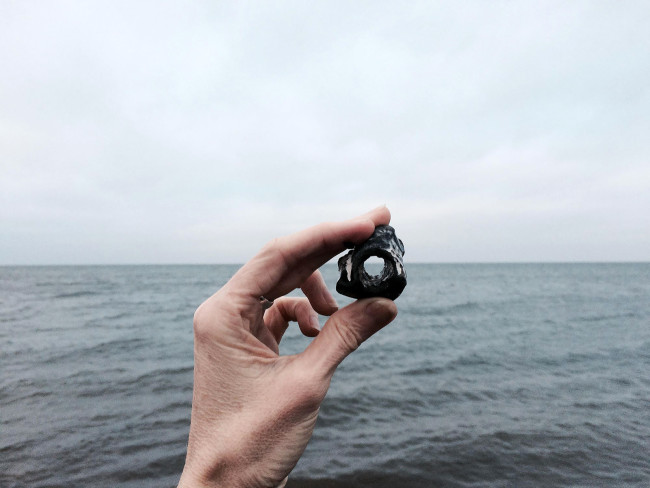
NOWs: The Seekers
NOWs:
THE SEEKERS
at tête, Berlin
An exhibition of artists who through meditative means, altered mind states or ritual acts have created objects, encounters or sensations for visitors to the show. Each artist works in their own manner to reach subconscious mind states, specific feelings and new ways for creative exploration. The outcome of this activity is an unexpected mix of work that crosses subjects including feminism, Buddhist philosophy, architecture, olfactory senses, yoga, botany and running.
Participating artists: Joey Asal, Ally Bisshop, Jennifer Danos, Adam Geremia, Deborah Ligorio, Jai McKenzie, Shannon May Powell, Elsa Salonen, and Maria Torres.
NOWs:
THE SEEKERS
at tête, Berlin
An exhibition of artists who through meditative means, altered mind states or ritual acts have created objects, encounters or sensations for visitors to the show. Each artist works in their own manner to reach subconscious mind states, specific feelings and new ways for creative exploration. The outcome of this activity is an unexpected mix of work that crosses subjects including feminism, Buddhist philosophy, architecture, olfactory senses, yoga, botany and running.
Participating artists: Joey Asal, Ally Bisshop, Jennifer Danos, Adam Geremia, Deborah Ligorio, Jai McKenzie, Shannon May Powell, Elsa Salonen, and Maria Torres.
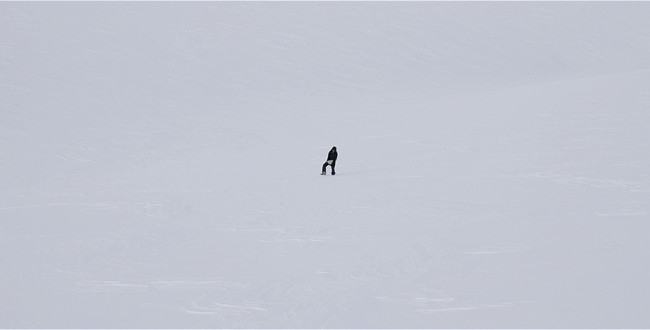
NOWs: Produktion. Made in Germany Drei
Felix Kiessling: Your map is not correct anymore. (video still), 5.30min, Nordkyn, 2017
NOWs:
Produktion. Made in Germany Drei
Kestner Gesellschaft, Kunstverein Hannover, Sprengel Museum Hannover
Exhibition opening: June 2nd, 2017, 5.00 pm
17.00 pm – Sprengel Museum Hannover
19.00 pm – Kestner Gesellschaft
20.15 pm – Kunstverein Hannover
22.00 pm – IMPURE FICTION, Perfomance – Kunstverein Hannover/Literaturhaus
The third edition of Made in Germany, which is collectively curated on a five-year-cycle by the three institutions, focuses on the conditions of producing art in Germany. The group exhibition pursues the questions of how geographical, political, and institutional structures as well as new technologies are creating important conditions for the production of art in the course of the digital turn. In an art landscape that, by international standards, continues to have a unique concentration of institutions (art academies and colleges, art associations, and museums), the German scene is a major international site for the production of and discourse on contemporary art.
The exhibition focuses on artistic positions that address production processes and examines the sites at which it is produced and presented. Besides processual approaches, by way of examples it investigates forms of production that direct the spotlight on network concepts. This becomes palpable based on collective approaches and time-based presentations in which the body and the social attain altered visibilities.
As participating institutions, the Schauspiel Hannover, the Festival Theaterformen, and the KunstFestSpiele are contributing the first time, supplementing the question of production and site with additional projects and thus highlighting the changing production conditions of theater and performance not only in spaces of visual art.
Artists
Ketuta Alexi-Meskhishvili | Olga Balema | Julius von Bismarck | Juliette Blightman | Katinka Bock | BPA. Berlin Program for Artists (Maria Anna Bierwirth, Sofia Duchovny, Richard Frater, Mia Goyette, Sylvester Hegner, Johanna Klingler, Nile Koetting, Grayson Revoir, Miriam Yammad) | Carina Brandes | Henning Fehr & Philipp Rühr | Kasia Fudakowski | Sascha Hahn | Lena Henke | Calla Henkel & Max Pitegoff | IMPURE FICTION | Daniel Knorr | Schirin Kretschmann | Veit Laurent Kurz | Oliver Laric | Amy Lien & Enzo Camacho | Lotte Lindner & Till Steinbrenner | lonelyfingers | Das NUMEN (Julian Charrière, Andreas Greiner, Markus Hoffmann, Felix Kiessling)| Peles Empire | Willem de Rooij | Thomas Ruff | Yorgos Sapountzis | Timur Si-Quin | Hito Steyerl | Studio for Propositional Cinema | Raphaela Vogel
Markus Hoffmann, Inverted Invisible Imprint / Domarring, 2016
Felix Kiessling: Your map is not correct anymore. (video still), 5.30min, Nordkyn, 2017
NOWs:
Produktion. Made in Germany Drei
Kestner Gesellschaft, Kunstverein Hannover, Sprengel Museum Hannover
Ausstellungseröffnung: Freitag, 2. Juni 2017
17.00 Uhr – Sprengel Museum Hannover
19.00 Uhr – Kestner Gesellschaft
20.15 Uhr – Kunstverein Hannover
22.00 Uhr – IMPURE FICTION, Perfomance – Kunstverein Hannover/Literaturhaus
Im Fokus der dritten Ausstellung »Made in Germany«, die im fünfjährigen Turnus von den drei Institutionen gemeinsam kuratiert wird, liegen die Produktions- bedingungen von Kunst in Deutschland. Die Gruppenausstellung geht der Frage nach, wie geografische, politische und institutionelle Strukturen sowie neue Technologien im Zuge der digitalen Wende entscheidende Voraussetzungen für die Herstellung von Kunst schaffen. In einer Kunstlandschaft mit einer nach wie vor international einzigartigen Dichte an Institutionen (Kunsthochschulen, Kunstvereine und Museen) ist die deutsche Szene ein wichtiger internationaler Produktions- und Diskursort der zeitgenössischen Kunst.
Im Zentrum der Ausstellung stehen künstlerische Positionen, die Produktions-prozesse thematisieren und sich mit Orten der Herstellung als auch mit Orten der Präsentation auseinandersetzen. Neben prozessualen Arbeitsweisen werden exemplarisch Produktionsformen untersucht, die den Netzwerkgedanken in den Mittelpunkt rücken. Dieser wird anhand kollektiver Arbeitsweisen und zeitbasierter Aufführungen erfahrbar, in denen der Körper und das Soziale veränderte Sichtbarkeiten erlangen.
Das Schauspiel Hannover, das Festival Theaterformen und die KunstFestSpiele Herrenhausen wirken dieses Jahr erstmalig als beteiligte Institutionen mit, um die Frage nach Produktion und Standort mit weiteren Projekten zu ergänzen. Die sich wandelnden Produktionsbedingungen von Darstellung und Performance werden somit nicht nur in Räumen der Bildenden Kunst hinterfragt.
Künstlerinnen und Künstler
Ketuta Alexi-Meskhishvili | Olga Balema | Julius von Bismarck | Juliette Blightman | Katinka Bock | BPA. Berlin Program for Artists (Maria Anna Bierwirth, Sofia Duchovny, Richard Frater, Mia Goyette, Sylvester Hegner, Johanna Klingler, Nile Koetting, Grayson Revoir, Miriam Yammad) | Carina Brandes | Henning Fehr & Philipp Rühr | Kasia Fudakowski | Sascha Hahn | Lena Henke | Calla Henkel & Max Pitegoff | IMPURE FICTION | Daniel Knorr | Schirin Kretschmann | Veit Laurent Kurz | Oliver Laric | Amy Lien & Enzo Camacho | Lotte Lindner & Till Steinbrenner | lonelyfingers | Das NUMEN (Julian Charrière, Andreas Greiner, Markus Hoffmann, Felix Kiessling)| Peles Empire | Willem de Rooij | Thomas Ruff | Yorgos Sapountzis | Timur Si-Quin | Hito Steyerl | Studio for Propositional Cinema | Raphaela Vogel
Markus Hoffmann, Inverted Invisible Imprint / Domarring, 2016
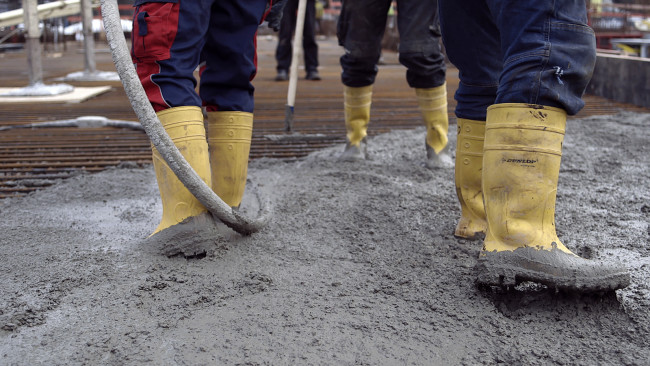
NOWs: 24h Dahlem by Clara Jo in collaboration with Robert Lippok
Clara Jo: 24h Dahlem, 2016 (film still)
NOWs:
Clara Jo: 24 h Dahlem
presented at the Architecture Film Festival London at the Institute of Contemporary Arts (ICA) & Bargehouse OXO Tower Wharf
24h Dahlem, 2016 (17 min) examines the motivations behind, and consequences of, the planned relocation (2019) of the ethnographic collections from the Dahlem State Museums—the Ethnological Museum and Museum for Asian Art—on the periphery of Berlin to the future site of the Humboldt Forum in BerlinMitte. The film moves through the different layers of the museum, revealing that which is otherwise unseen. The soundtrack is created by Robert Lippok.
24 h Dahlem will be shown at the ICA during a Ticketed Screening and Shortlisted Films on June 11.
Additionally Clara Jo’s experimental film Tilt will be presented at the Bargehouse for the Festival Selection on June 7 & 8.
Tilt, 2016 (13 min) creates a contemporary parallel of an Enlightenment World, employing current museological digital imaging technologies as devices to penetrate the surface of scientific and artistic objects. The film uncovers how new 3D imaging techniques utilized by museum conservation departments bypass the need to directly incise into material culture, instead providing a surrogate and abstracted experience of objects for public consumption. The film draws from the Royal Academy of Arts Collections and Archives, folding in material from other London institutions such as the Burlington Courtyard Learned Societies and the Imaging and Analysis Centre at the Natural History Museum.
Clara Jo: 24h Dahlem, 2016 (film still)
NOWs:
Clara Jo: 24 h Dahlem
presented at the Architecture Film Festival London at the Institute of Contemporary Arts (ICA) & Bargehouse OXO Tower Wharf
24h Dahlem, 2016 (17 min) examines the motivations behind, and consequences of, the planned relocation (2019) of the ethnographic collections from the Dahlem State Museums—the Ethnological Museum and Museum for Asian Art—on the periphery of Berlin to the future site of the Humboldt Forum in BerlinMitte. The film moves through the different layers of the museum, revealing that which is otherwise unseen. The soundtrack is created by Robert Lippok.
24 h Dahlem will be shown at the ICA during a Ticketed Screening and Shortlisted Films on June 11.
Additionally Clara Jo’s experimental film Tilt will be presented at the Bargehouse for the Festival Selection on June 7 & 8.
Tilt, 2016 (13 min) creates a contemporary parallel of an Enlightenment World, employing current museological digital imaging technologies as devices to penetrate the surface of scientific and artistic objects. The film uncovers how new 3D imaging techniques utilized by museum conservation departments bypass the need to directly incise into material culture, instead providing a surrogate and abstracted experience of objects for public consumption. The film draws from the Royal Academy of Arts Collections and Archives, folding in material from other London institutions such as the Burlington Courtyard Learned Societies and the Imaging and Analysis Centre at the Natural History Museum.
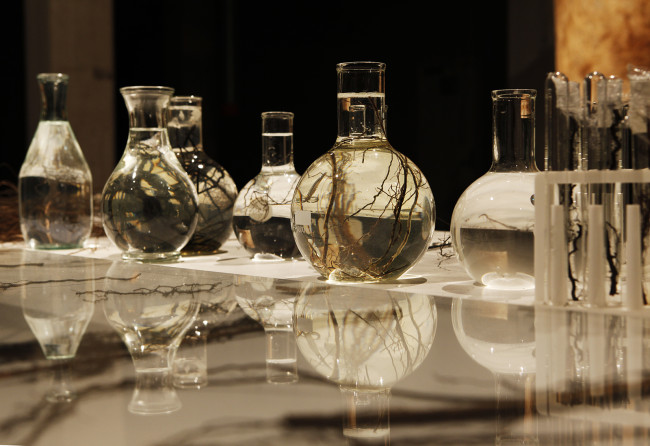
NOWs: Tempus circularis. Fagus sylvatica. By Rune Bosse
Rune Bosse: Tempus circularis. Fagus sylvatica, 2016. Photo: Anders Sune Berg
NOWs:
Rune Bosse:
Tempus circularis. Fagus sylvatica, 2016
at
ARoS Triennalen, Denmark: The Garden
–
Rune Bosse: Tempus circularis. Fagus sylvatica, 2016. Photo: Anders Sune Berg
NOWs:
Rune Bosse:
Tempus circularis. Fagus sylvatica, 2016
ARoS Triennale, Dänemark: The Garden
–
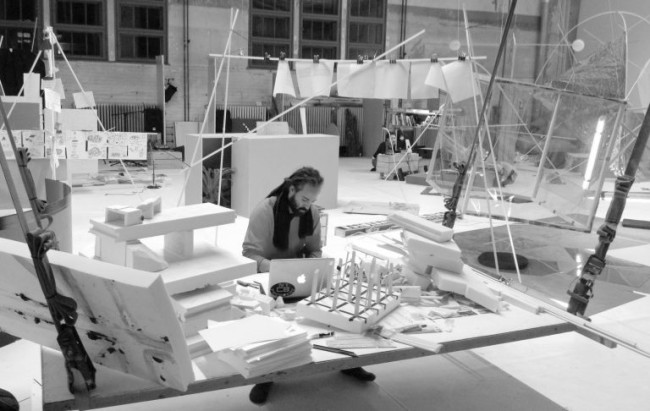
NOWs: SETTLEMENT (11) with Vladimir Miller
Vladimir Miller: Settlement 7 BW
NOWs:
Vladimir Miller: SETTLEMENT (11)
artistic research environment – a workshop
at
a.pass, Brussels
Opening dinner on Monday, May 22nd, 18h
–
SETTLEMENT is an open shared practice environment which uses fragility as a building principle to establish a fluid sociality of collaboration. During the days of May 22nd – June 4th 2017 a.pass will come together and host an open workspace called SETTLEMENT with Vladimir Miller. In the course of these 14 days we will share our current work processes within an open collaborative workspace. We aim to create a poly-central gathering that is self-structured, self-organized and open to contributions from anyone. You are cordially invited to join this process by establishing your own space in the a.pass SETTLEMENT and sharing some of your ideas, practices or works with others. The materials and structures available at a.pass will be a common resource for all who join to create whatever is needed to facilitate this process. The schedule for these two week will be developed on site by its participants and shared online on the a.pass website.
Here are some key ideas which have informed similar spaces before:
encountering processes
The potential of this setup is that it allows us to encounter each others processes instead of products of our artistic work. Processes are much more difficult to make visible and to see as they require a different mode of attention and participation. The attempt to witness a process requires a change in the temporal mode and in the mode of being-together in the collective space.
no spectators
The space we are trying to facilitate is open, but it is not an exhibition. There is no „spectator mode“, and no institutionalized responsibility for hosting. However any participant (including possible newcomers) is welcome to invite and host anybody according to the logic of her/his work process. Anybody is welcome to joint the collective space for any time span, respectful of the fact that Settlement is a predominately a workspace. The (growing/changing) group will try to provide enough information at the entrance, so that everyone feels welcome and knows how to join and share. Although the time frame is short, we hope to create a space that would be engaging to the students, faculty and visitors of the Academy.
gifts
Everyone is welcome to visit or join the space. If someone wants to stay and work (this includes us) s/he should bring a “gift” to the space in terms of sharing a work process, presenting a work, or facilitating a discussion or any other imaginable contribution to the shared space.
productive instability
We will collect most of the materials for the space from the academy’s storage and re-accommodate them towards our purposes. This strategy produces a space that is fragile, self-made, and constantly changing. We believe that such a space influences the sociability within it towards similar qualities – towards a more fluid social contract. In asking for a hands-on construction and deconstruction of its makeshift set-ups, such a space allows for a quicker change of settings and a decentralized mode of (self)organization. For this reason, we suggest to refrain from using usual furniture (tables and chairs) and improvise new set ups for „work-stations“ and collective moments out of what we can scavenge from around the academy.
–
SETTLEMENT
Settlement is spatial proposal that tries to sustain its architectural fragility hoping in this way to initiate a temporary social, organizational and ideological one. Simply put it is a collective workspace, a camp and a hangout, open to all who stop by and would like to contribute to it. Like many other such meetings it is a place of informal exchange and presentation. It is a space for practices instead of products, a place where our individual ideas and processes have not yet achieved a solid state and can flow into each other.
Settlement starts with a haphazard collection of materials in an otherwise empty space Everything one might need for one’s work has be be built and (re)invented there. There are no tables, no chairs, and the materials and objects resist easy categorization and usability. They have to be mis-used, adapted, they have a will on their own. The built environment has to be negotiated (with) on the level of the object. There is potential in a thing being one thing one day, and a totally different thing the day after. There is also potential in that thing changing hands. (You will be surprised how quickly ownership is established from communal beginnings: you just have to take one thing and put is somewhere.)
Settlement is a space that tries very hard not to settle. Its instability works against the establishing of clear boundaries between „your space“ and „my space“, what hopefully follows from that is that it is very difficult to establish boundaries between „your work“ and “my work”. Miller believes that practice is bound by space, and if space gets shaky, unstable, shareable, so does the practice.
By starting from scratch Settlement invites a re-negotiation of the specific conditions of each practice. In the course of the three weeks Settlement lets your particular method of production and sharing find its own intrinsic spatial conditions, free from the encoded behaviors of ready-made spaces such as “table”, “studio”, “meeting”, “gallery”, “venue”, “library”, etc.
The politics of practice in terms of co-habitation and co-working, of claiming one’s own space, inviting or excluding the outside, communication of ideas, inviting change and influence are all there to be questioned within this setup. As a practice is (in some ways) „re-built“ during Settlement, one can come to question its very construction.
Settlement is a collective project Vladimir Miller facilitated over several years on different occasions. The project takes the form of a workshop and creates and inhabits a space full of fragile and precarious structures. Since Settlement starts from a space devoid of habitual work setups, with all materials present considered a common resource,all the structures are built from the necessities of the individual and collective practices of its participants. A kind of a re-start on the physical level and an attempted re-start on the level of the habitual and institutional structures governing our spaces of production. The title is used as a provocation, as Settlement is a space which, over the course of several weeks, tries very hard not to settle.
Settlement puts a spatial perspective on practice, identifying modes of institutionalization and habit which keep the spaces of artistic production and education from becoming spaces of commoning. These modes of ‘settling’ are embedded in many things: they are there in the ways the spaces are designed and organized towards stability (supporting habit and the given hierarchy of organization), they are there in the institutionalized processes of access and exclusion, and they are there in our social habits (which structure the most empty and open space imaginable). Looking at how the spaces of our practice prioritize the habitual, Settlement introduces architectural fragility as a mode of destabilizing practice and the social agreements between the participants. The spaces created within Settlement are make-shift and precarious and therefore never suited to support a certain social constellation or a process indefinitely. That introduces another timing into the space, rendering all structures inherently temporary and unreliable. The habit of regarding products of work as property becomes destabilized, as all structures in the space are short-lived and can become ‘material’ again very quickly. These and other changes occur through fragility of the built environment and work effectively against the habitual ‘settling down’. The transition of a structure back to the common resource through collapse or re-appropriation is always a possibility, producing the common as a constant perspective onto the emerging territories, constellations and rules in the Settlement space.
Check schedule.
–
Vladimir Miller: Settlement 7 BW
NOWs:
Vladimir Miller: SETTLEMENT (11)
artistic research environment – a workshop
at
a.pass, Brussels
Opening dinner on Monday, May 22nd, 18h
–
SETTLEMENT is an open shared practice environment which uses fragility as a building principle to establish a fluid sociality of collaboration. During the days of May 22nd – June 4th 2017 a.pass will come together and host an open workspace called SETTLEMENT with Vladimir Miller. In the course of these 14 days we will share our current work processes within an open collaborative workspace. We aim to create a poly-central gathering that is self-structured, self-organized and open to contributions from anyone. You are cordially invited to join this process by establishing your own space in the a.pass SETTLEMENT and sharing some of your ideas, practices or works with others. The materials and structures available at a.pass will be a common resource for all who join to create whatever is needed to facilitate this process. The schedule for these two week will be developed on site by its participants and shared online on the a.pass website.
Here are some key ideas which have informed similar spaces before:
encountering processes
The potential of this setup is that it allows us to encounter each others processes instead of products of our artistic work. Processes are much more difficult to make visible and to see as they require a different mode of attention and participation. The attempt to witness a process requires a change in the temporal mode and in the mode of being-together in the collective space.
no spectators
The space we are trying to facilitate is open, but it is not an exhibition. There is no „spectator mode“, and no institutionalized responsibility for hosting. However any participant (including possible newcomers) is welcome to invite and host anybody according to the logic of her/his work process. Anybody is welcome to joint the collective space for any time span, respectful of the fact that Settlement is a predominately a workspace. The (growing/changing) group will try to provide enough information at the entrance, so that everyone feels welcome and knows how to join and share. Although the time frame is short, we hope to create a space that would be engaging to the students, faculty and visitors of the Academy.
gifts
Everyone is welcome to visit or join the space. If someone wants to stay and work (this includes us) s/he should bring a “gift” to the space in terms of sharing a work process, presenting a work, or facilitating a discussion or any other imaginable contribution to the shared space.
productive instability
We will collect most of the materials for the space from the academy’s storage and re-accommodate them towards our purposes. This strategy produces a space that is fragile, self-made, and constantly changing. We believe that such a space influences the sociability within it towards similar qualities – towards a more fluid social contract. In asking for a hands-on construction and deconstruction of its makeshift set-ups, such a space allows for a quicker change of settings and a decentralized mode of (self)organization. For this reason, we suggest to refrain from using usual furniture (tables and chairs) and improvise new set ups for „work-stations“ and collective moments out of what we can scavenge from around the academy.
–
SETTLEMENT
Settlement is spatial proposal that tries to sustain its architectural fragility hoping in this way to initiate a temporary social, organizational and ideological one. Simply put it is a collective workspace, a camp and a hangout, open to all who stop by and would like to contribute to it. Like many other such meetings it is a place of informal exchange and presentation. It is a space for practices instead of products, a place where our individual ideas and processes have not yet achieved a solid state and can flow into each other.
Settlement starts with a haphazard collection of materials in an otherwise empty space Everything one might need for one’s work has be be built and (re)invented there. There are no tables, no chairs, and the materials and objects resist easy categorization and usability. They have to be mis-used, adapted, they have a will on their own. The built environment has to be negotiated (with) on the level of the object. There is potential in a thing being one thing one day, and a totally different thing the day after. There is also potential in that thing changing hands. (You will be surprised how quickly ownership is established from communal beginnings: you just have to take one thing and put is somewhere.)
Settlement is a space that tries very hard not to settle. Its instability works against the establishing of clear boundaries between „your space“ and „my space“, what hopefully follows from that is that it is very difficult to establish boundaries between „your work“ and “my work”. Miller believes that practice is bound by space, and if space gets shaky, unstable, shareable, so does the practice.
By starting from scratch Settlement invites a re-negotiation of the specific conditions of each practice. In the course of the three weeks Settlement lets your particular method of production and sharing find its own intrinsic spatial conditions, free from the encoded behaviors of ready-made spaces such as “table”, “studio”, “meeting”, “gallery”, “venue”, “library”, etc.
The politics of practice in terms of co-habitation and co-working, of claiming one’s own space, inviting or excluding the outside, communication of ideas, inviting change and influence are all there to be questioned within this setup. As a practice is (in some ways) „re-built“ during Settlement, one can come to question its very construction.
Settlement is a collective project Vladimir Miller facilitated over several years on different occasions. The project takes the form of a workshop and creates and inhabits a space full of fragile and precarious structures. Since Settlement starts from a space devoid of habitual work setups, with all materials present considered a common resource,all the structures are built from the necessities of the individual and collective practices of its participants. A kind of a re-start on the physical level and an attempted re-start on the level of the habitual and institutional structures governing our spaces of production. The title is used as a provocation, as Settlement is a space which, over the course of several weeks, tries very hard not to settle.
Settlement puts a spatial perspective on practice, identifying modes of institutionalization and habit which keep the spaces of artistic production and education from becoming spaces of commoning. These modes of ‘settling’ are embedded in many things: they are there in the ways the spaces are designed and organized towards stability (supporting habit and the given hierarchy of organization), they are there in the institutionalized processes of access and exclusion, and they are there in our social habits (which structure the most empty and open space imaginable). Looking at how the spaces of our practice prioritize the habitual, Settlement introduces architectural fragility as a mode of destabilizing practice and the social agreements between the participants. The spaces created within Settlement are make-shift and precarious and therefore never suited to support a certain social constellation or a process indefinitely. That introduces another timing into the space, rendering all structures inherently temporary and unreliable. The habit of regarding products of work as property becomes destabilized, as all structures in the space are short-lived and can become ‘material’ again very quickly. These and other changes occur through fragility of the built environment and work effectively against the habitual ‘settling down’. The transition of a structure back to the common resource through collapse or re-appropriation is always a possibility, producing the common as a constant perspective onto the emerging territories, constellations and rules in the Settlement space.
Check schedule.
–
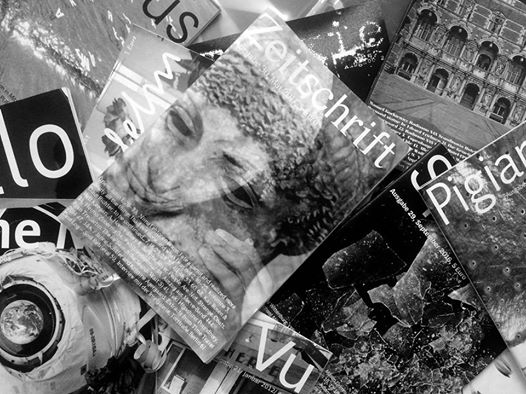
NOWs: #30-called Zeitschrift Release Party
NOWs:
Magazine Issue #30-called Zeitschrift
Jubilee-Releaseparty
at
Anagram Books, Lausitzer Str.35, Berlin
Saturday 27. May, 8pm
feat, works by Özlem Altin and Niina Lehtonen Braun,
videos by Mariah Garnett
a text piece sound by Sabrina Soyer
and records played by Peter Machen.
Zeitschrift
Ausgabe 30, May 2017, 5 Euro
With contributions by:
Özlem Altin, Niina Lehtonen Braun, Claus Richter, Christian Egger, Kay Rosen & Matt Keegan, Sabrina Soyer, Heimo Zobernig, Ryan Trecartin, Yuki Higashino, J&K / Janne Schäfer and Kristine Agergaard and an interview with the Inselgalerie, formerly on Torstraße, Berlin.
Editors: Christian Egger, Christian Kosmas Mayer, Yves Mettler, Magda Tothova, Ruth Weismann, Alexander Wolff.
–
Anagram Books is a new distributor for contemporary art books, based between Berlin & London, with a project space in our Berlin offices where we promote events around publishing.
NOWs:
Magazine Issue #30-called Zeitschrift
Jubilee-Releaseparty
at
Anagram Books, Lausitzer Str.35, Berlin
Saturday 27. May, 8pm
feat, works by Özlem Altin and Niina Lehtonen Braun,
videos by Mariah Garnett
a text piece sound by Sabrina Soyer
and records played by Peter Machen.
Zeitschrift
Ausgabe 30, May 2017, 5 Euro
With contributions by:
Özlem Altin, Niina Lehtonen Braun, Claus Richter, Christian Egger, Kay Rosen & Matt Keegan, Sabrina Soyer, Heimo Zobernig, Ryan Trecartin, Yuki Higashino, J&K / Janne Schäfer and Kristine Agergaard and an interview with the Inselgalerie, formerly on Torstraße, Berlin.
Editors: Christian Egger, Christian Kosmas Mayer, Yves Mettler, Magda Tothova, Ruth Weismann, Alexander Wolff.
–
Anagram Books is a new distributor for contemporary art books, based between Berlin & London, with a project space in our Berlin offices where we promote events around publishing.

NOWs: Marbel by Ally Bisshop
NOWs:
88vier – CoLaboRadio
21:00 bis 22:00 h
«elements»
Kate Donovan explores the elements through sound, literature and music.
Crystals and rocks: this month she’ll be joined in the studio by Catherine Evans, to talk about her piece Irrstern, which will be shown in the upcoming exhibition The presence of absence and Ally Bisshop who will talk about her contribution to the Lost Rocks publication series, ‘marble’, which will be published in September.
Lost Rocks is an ambitious, slow-publishing artwork – a library of forty books, four books published twice yearly for the next five years. That’s forty single traces, ten dynamic seams, or one spectacular forty-rock Lost Rocks Library. Brought to life by Australian artists Justy Phillips and Margaret Woodward (A Published Event) and composed by forty contemporary artists from around the world, Lost Rocks is an accumulative event of mineralogical, metaphysical and metallurgical telling.
NOWs:
88vier – CoLaboRadio
21:00 bis 22:00 h
«elements»
Kate Donovan explores the elements through sound, literature and music.
Crystals and rocks: this month she’ll be joined in the studio by Catherine Evans, to talk about her piece Irrstern, which will be shown in the upcoming exhibition The presence of absence and Ally Bisshop who will talk about her contribution to the Lost Rocks publication series, ‘marble’, which will be published in September.
Lost Rocks is an ambitious, slow-publishing artwork – a library of forty books, four books published twice yearly for the next five years. That’s forty single traces, ten dynamic seams, or one spectacular forty-rock Lost Rocks Library. Brought to life by Australian artists Justy Phillips and Margaret Woodward (A Published Event) and composed by forty contemporary artists from around the world, Lost Rocks is an accumulative event of mineralogical, metaphysical and metallurgical telling.
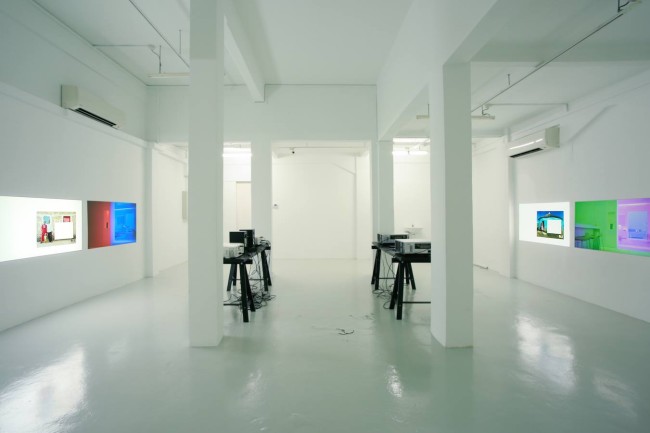
NOWs: Talk by Matthias Sohr
Matthias Sohr, No Doubt You’ll Think, four-channel video installation, two posters, and sound, dimensions variable, 2017. Residencies OPEN, Thursday, 27 April 2017, Residencies Studios. Courtesy the artist.
NOWs:
Artist Talk by Matthias Sohr
at
NTU Centre for Contemporary Art Singapore
Blk 43 Malan Road, Gillman Barracks, Singapur 109443
19:30 – 21:00 UTC+08
In the context of Matthias Sohr’s Studio Session, pianist Christina CL Tan and collaborators perform “Quiet”, a song taken from Leonard Bernstein’s operetta Candide (1956), based on Voltaire’s eponymous novel and character. The story of Candide’s wandering the world and confronting its paradoxes can be read as an allegory of contemporary artistic research. Departing from “Quiet”, featured in his 4-channel-video installation No Doubt You’ll Think (2017) presented on occasion of Residencies OPEN last April, Sohr will discuss the place he is speaking from in regards to his sculptural work and related research. Tan’s remarks on the formal aspects of “Quiet” will stimulate discussion on the ways form and content relate to each other.
The talk will take place in the artist’s studio.
BIOGRAPHIES
Matthias Sohr obtained a Master of Visual Arts from the University of Art and Design Lausanne, Switzerland. He has been a visiting lecturer at the University of Arts and Industrial Design Linz, Austria; Berlin University of the Arts, Institute of Spatial Experiments, Germany. His work has been exhibited at Museum of Contemporary Art Tokyo (MOT), Japan and Neue Nationalgalerie, Berlin, Germany, among others.
Christina Tan Cheng Lian is a pianist, lecturer, and composer. She holds a Doctor of Musical Arts in Piano Performance, Theory minor from the University of Cincinnati College Conservatory of Music. She has served on the music faculty of several universities in the USA. Currently, she lectures at the Nanyang Academy of Fine Arts, LaSalle College of the Arts, School of Contemporary Music, School of the Arts Singapore, and teaches masterclasses and workshops both in Asia and in the United States.
Matthias Sohr, No Doubt You’ll Think, four-channel video installation, two posters, and sound, dimensions variable, 2017. Residencies OPEN, Thursday, 27 April 2017, Residencies Studios. Courtesy the artist.
NOWs:
Artist Talk by Matthias Sohr
at
NTU Centre for Contemporary Art Singapore
Blk 43 Malan Road, Gillman Barracks, Singapur 109443
19:30 – 21:00 UTC+08
In the context of Matthias Sohr’s Studio Session, pianist Christina CL Tan and collaborators perform “Quiet”, a song taken from Leonard Bernstein’s operetta Candide (1956), based on Voltaire’s eponymous novel and character. The story of Candide’s wandering the world and confronting its paradoxes can be read as an allegory of contemporary artistic research. Departing from “Quiet”, featured in his 4-channel-video installation No Doubt You’ll Think (2017) presented on occasion of Residencies OPEN last April, Sohr will discuss the place he is speaking from in regards to his sculptural work and related research. Tan’s remarks on the formal aspects of “Quiet” will stimulate discussion on the ways form and content relate to each other.
The talk will take place in the artist’s studio.
BIOGRAPHIES
Matthias Sohr obtained a Master of Visual Arts from the University of Art and Design Lausanne, Switzerland. He has been a visiting lecturer at the University of Arts and Industrial Design Linz, Austria; Berlin University of the Arts, Institute of Spatial Experiments, Germany. His work has been exhibited at Museum of Contemporary Art Tokyo (MOT), Japan and Neue Nationalgalerie, Berlin, Germany, among others.
Christina Tan Cheng Lian is a pianist, lecturer, and composer. She holds a Doctor of Musical Arts in Piano Performance, Theory minor from the University of Cincinnati College Conservatory of Music. She has served on the music faculty of several universities in the USA. Currently, she lectures at the Nanyang Academy of Fine Arts, LaSalle College of the Arts, School of Contemporary Music, School of the Arts Singapore, and teaches masterclasses and workshops both in Asia and in the United States.
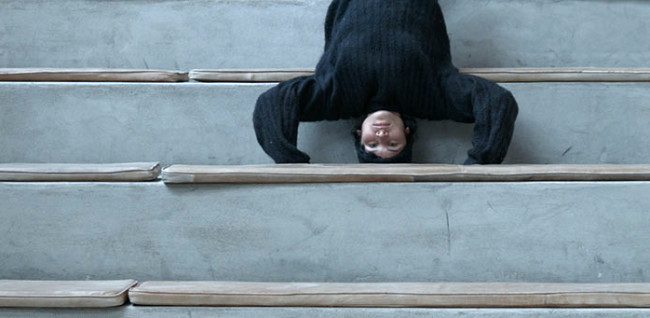
NOWs: Within the Horizon by Quynh Vantu
NOWs:
Film preview. Quynh Vantu: Within the Horizon, 2017.
Quynh Vantu:
WITHIN THE HORIZON
Choreographing Sverre Fehn’s Hedmark Museum
Anno museum Domkirkeodden
Strandvegen 100
2315 Hamar, Norway
Exhibition | 20-28 May 2017, Tue-Sun 10am-4pm
Opening | 20 May 2017, 8pm
Artist Talk: In Conversation | 27 May 2017, 2pm
Set within the site of Sverre Fehn’s Hedmark Museum (1967-79) in Hamar, Norway, the project Within the Horizon takes place as an intervention and collaboration with Fehn’s architecture. Constructed on the site of a former Bishop’s castle, the museum is a series of ramps, stairs and walkways that lead the visitor around, through and under the ruins of this archeological site. Fehn’s design utilizes circulation as a means to experience the spaces and his architecture acts as a guide to the museum visitor’s experience, ushering us to the various sights and locations throughout the historic site. Through Fehn’s careful choreography, Within the Horizon investigates the choreography of the space through the performance of dance.
Within the Horizon is a multi-channel video installation incorporating a collaborative performance with contemporary dancers and the architecture of the Hedmark Museum. In addition to the video installation, durational performances will take place during the exhibition period from May 20-28, 2017 that will engage the video installation, architecture and public audience. These performance will occur within the functional spaces of the museum and provide a varied viewer experience dissolving and blurring the boundaries between audience and performer.
In addition, there will be an artist talk: In Conversation with Quynh Vantu and curator Susanne Ewerlöf on Saturday 27 May, 2pm.
A full schedule of performances and talks will be listed on the website.
NOWs:
Film preview. Quynh Vantu: Within the Horizon, 2017.
Quynh Vantu:
WITHIN THE HORIZON
Choreographing Sverre Fehn’s Hedmark Museum
Anno museum Domkirkeodden
Strandvegen 100
2315 Hamar, Norway
Exhibition | 20-28 May 2017, Tue-Sun 10am-4pm
Opening | 20 May 2017, 8pm
Artist Talk: In Conversation | 27 May 2017, 2pm
Set within the site of Sverre Fehn’s Hedmark Museum (1967-79) in Hamar, Norway, the project Within the Horizon takes place as an intervention and collaboration with Fehn’s architecture. Constructed on the site of a former Bishop’s castle, the museum is a series of ramps, stairs and walkways that lead the visitor around, through and under the ruins of this archeological site. Fehn’s design utilizes circulation as a means to experience the spaces and his architecture acts as a guide to the museum visitor’s experience, ushering us to the various sights and locations throughout the historic site. Through Fehn’s careful choreography, Within the Horizon investigates the choreography of the space through the performance of dance.
Within the Horizon is a multi-channel video installation incorporating a collaborative performance with contemporary dancers and the architecture of the Hedmark Museum. In addition to the video installation, durational performances will take place during the exhibition period from May 20-28, 2017 that will engage the video installation, architecture and public audience. These performance will occur within the functional spaces of the museum and provide a varied viewer experience dissolving and blurring the boundaries between audience and performer.
In addition, there will be an artist talk: In Conversation with Quynh Vantu and curator Susanne Ewerlöf on Saturday 27 May, 2pm.
A full schedule of performances and talks will be listed on the website.
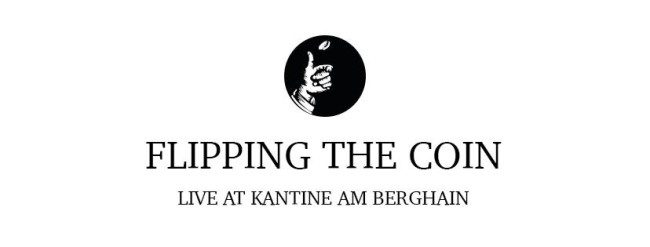
NOWs: Flipping the Coin
NOWs:
FLIPPING THE COIN
live at Kantine am Berghain
8 pm
presents
Martin Eder
Antje Engelmann feat. Esel durch Wiederholung
Wilhelm Klotzek & Brei
Andreas Greiner & Tyler Friedman
Moritz Stumm with Ace Mahbaz and Elisa Jule Braun
…
Record releases
Martin Backes – I am sitting in a machine;
Martin Eder – Touch the Sun
Andreas Greiner & Tyler Friedman – Studies of an Alien Skin
…
Sound selection by Çaykh (Circuit Diagram)
Der Fokus des Berliner Labels Flipping the Coin liegt auf Sammler-Editionen von Bildenden Künstlern. Experimentelle Sound- und Musikprojekte werden ausschließlich in einer Auflage von 30 Stück auf ephemeren Dubplates veröffentlicht und finden keinerlei digitale Verbreitung.
Um diese Projekte vorzustellen und ihnen einen Rahmen zugeben, ist Flipping the Coin zum zweiten mal Gast in der Kantine am Berghain und lädt Künstler des Labels ein die Veröffentlichungen Live zu präsentieren.
Am 20.05 2017 zeigen verschiedene Künstler des Labels, Martin Eder, Antje Engelmann feat. Esel durch Wiederholung, Wilhelm Klotzeck & Brei, Andreas Greiner und Tyler Friedman sowie Moritz Stumm mit Ace Mahbaz und Elisa Jule Braun einen Querschnitt des letzten und einen Ausblick auf dieses Jahr. Außerdem weden die drei neuesten Releases von Martin Backes, Martin Eder und Andreas Greiner & Tyler Friedman gefeiert!
http://www.martineder.com/
http://www.martinbackes.com/
http://www.eseldurchwiederholung.de/
http://www.antjeengelmann.net/
http://www.wilhelmklotzek.de/
http://www.andreasgreiner.com/works/studies-of-an-alien-skin
https://soundcloud.com/tyler-friedman
http://www.moritzstumm.de/
http://www.acemahbaz.com/
http://www.elisabraun.de/
https://soundcloud.com/caykh
NOWs:
FLIPPING THE COIN
live at Kantine am Berghain
8 pm
presents
Martin Eder
Antje Engelmann feat. Esel durch Wiederholung
Wilhelm Klotzek & Brei
Andreas Greiner & Tyler Friedman
Moritz Stumm with Ace Mahbaz and Elisa Jule Braun
…
Record releases
Martin Backes – I am sitting in a machine;
Martin Eder – Touch the Sun
Andreas Greiner & Tyler Friedman – Studies of an Alien Skin
…
Sound selection by Çaykh (Circuit Diagram)
Der Fokus des Berliner Labels Flipping the Coin liegt auf Sammler-Editionen von Bildenden Künstlern. Experimentelle Sound- und Musikprojekte werden ausschließlich in einer Auflage von 30 Stück auf ephemeren Dubplates veröffentlicht und finden keinerlei digitale Verbreitung.
Um diese Projekte vorzustellen und ihnen einen Rahmen zugeben, ist Flipping the Coin zum zweiten mal Gast in der Kantine am Berghain und lädt Künstler des Labels ein die Veröffentlichungen Live zu präsentieren.
Am 20.05 2017 zeigen verschiedene Künstler des Labels, Martin Eder, Antje Engelmann feat. Esel durch Wiederholung, Wilhelm Klotzeck & Brei, Andreas Greiner und Tyler Friedman sowie Moritz Stumm mit Ace Mahbaz und Elisa Jule Braun einen Querschnitt des letzten und einen Ausblick auf dieses Jahr. Außerdem weden die drei neuesten Releases von Martin Backes, Martin Eder und Andreas Greiner & Tyler Friedman gefeiert!
http://www.martineder.com/
http://www.martinbackes.com/
http://www.eseldurchwiederholung.de/
http://www.antjeengelmann.net/
http://www.wilhelmklotzek.de/
http://www.andreasgreiner.com/works/studies-of-an-alien-skin
https://soundcloud.com/tyler-friedman
http://www.moritzstumm.de/
http://www.acemahbaz.com/
http://www.elisabraun.de/
https://soundcloud.com/caykh
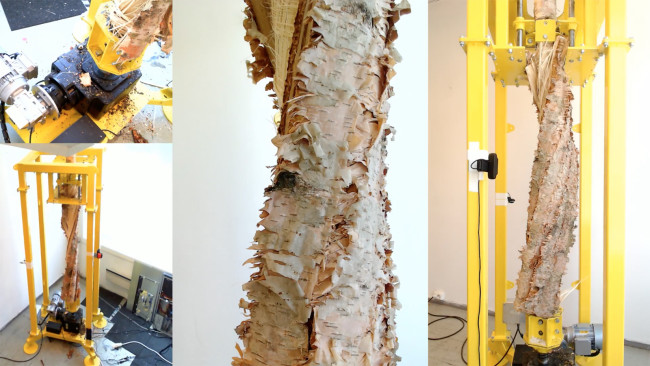
NOWs: Ludological by S.K.Ruud &AE
NOWs:
S.K.Ruud &AE: Ludological
Live stream from PODIUM in Oslo
Finissage on Thursday, 8.06., with arist talk and discussion
Ludological is a code-machine-complex, scoping out the promise of a next-tech increment, where manufacturing is autonomous and the web immutable. From a patchwork of open-source and mechatronics it stages a value-chain stuck in the perpetual production of a terminal-spectacle.
The digital layer hosts a bot-net of go-gaming AIs mutually constrained by a forced consensus and a self-certifying smart-contract. Sustained by a private chain under the motto autonomous and “code that can’t shut down”, the network generates a stream of surplus results that trickles down to become a binary decision model animating the material termination of some piece of wood.
As a manufacturing operation Ludological will be live-streamed from the office spaces Podium Oslo.
What is it about?
pachi-go, docker, android, nodejs, solidity, ethereum, ipfs, linux, python, modbus rtu, master/slave, smart contracts, manifold hypothesis, local optimal, gradient decent, terminal transformations, structural indifference, illicit manufacturing, nemocentrism, hyper-optimisation, entrenched cognitive-maps, inhumane infrastructure, bot-nets, deep industry, carbon cycles, P2P economies, alternative intelligence, material traumas, brute force mechatronics, value-chain ecologies, web 3.0, industry 4.0, “lights-out” operation, machine-2-machine, disposable matter.
What does it entail?
• An integrated whole of autonomous operations, each concerned with their own local optimal, each responsible for a shared data-flux.
• A perpetual production of spectacle, commodified through datafication and addressing.
• Systemic fabrication of an immutable history, chaining object, process and event.
• A decentralised mode of production, such that anywhere can be a factory.
• A peer-against-peer design pattern, playing machiavellian others against themselves.
• A governance by 200 lines of “smart”-contract code.
• The obsolescence of human readable syntax.
• A live-stream of aggregated tension.
• Destructive value creation.
–
S.K.Ruud &AE is an artist contingency of Stian Korntved Ruud and Simen Musæus (&AE), aquianted since youth, thier collaboration as unfolded via CAD drawings, video-conferences and hardware research exchanged in the cloudspace between Oslo and Berlin
–
NOWs:
S.K.Ruud &AE: Ludological
Live stream from PODIUM in Oslo
Finissage on Thursday, 8.06., with arist talk and discussion
Ludological is a code-machine-complex, scoping out the promise of a next-tech increment, where manufacturing is autonomous and the web immutable. From a patchwork of open-source and mechatronics it stages a value-chain stuck in the perpetual production of a terminal-spectacle.
The digital layer hosts a bot-net of go-gaming AIs mutually constrained by a forced consensus and a self-certifying smart-contract. Sustained by a private chain under the motto autonomous and “code that can’t shut down”, the network generates a stream of surplus results that trickles down to become a binary decision model animating the material termination of some piece of wood.
As a manufacturing operation Ludological will be live-streamed from the office spaces Podium Oslo.
What is it about?
pachi-go, docker, android, nodejs, solidity, ethereum, ipfs, linux, python, modbus rtu, master/slave, smart contracts, manifold hypothesis, local optimal, gradient decent, terminal transformations, structural indifference, illicit manufacturing, nemocentrism, hyper-optimisation, entrenched cognitive-maps, inhumane infrastructure, bot-nets, deep industry, carbon cycles, P2P economies, alternative intelligence, material traumas, brute force mechatronics, value-chain ecologies, web 3.0, industry 4.0, “lights-out” operation, machine-2-machine, disposable matter.
What does it entail?
• An integrated whole of autonomous operations, each concerned with their own local optimal, each responsible for a shared data-flux.
• A perpetual production of spectacle, commodified through datafication and addressing.
• Systemic fabrication of an immutable history, chaining object, process and event.
• A decentralised mode of production, such that anywhere can be a factory.
• A peer-against-peer design pattern, playing machiavellian others against themselves.
• A governance by 200 lines of “smart”-contract code.
• The obsolescence of human readable syntax.
• A live-stream of aggregated tension.
• Destructive value creation.
–
S.K.Ruud &AE is an artist contingency of Stian Korntved Ruud and Simen Musæus (&AE), aquianted since youth, thier collaboration as unfolded via CAD drawings, video-conferences and hardware research exchanged in the cloudspace between Oslo and Berlin
–
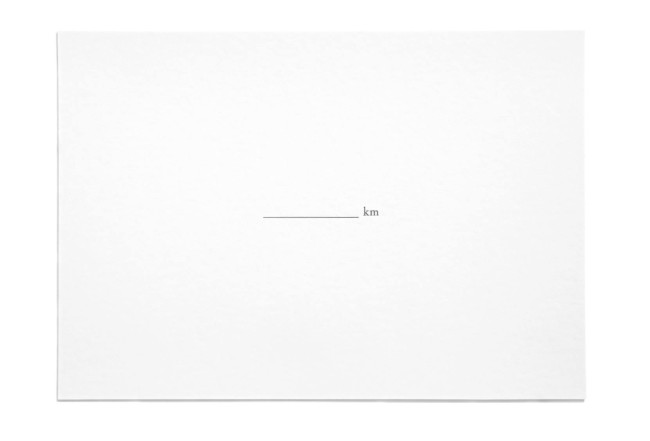
NOWs: far, nearer by Ina Arzensek and Nina Schuiki
NOWs
Ina Arzensek, Nina Schuiki:
far,
nearer
at
Frise Künstlerhaus
Eröffnung 19.05.2017, 20 Uhr
Ausstellung 20.-21.05.2017, 16-18 Uhr
NOWs
Ina Arzensek, Nina Schuiki:
far,
nearer
at
Frise Künstlerhaus
Eröffnung 19.05.2017, 20 Uhr
Ausstellung 20.-21.05.2017, 16-18 Uhr
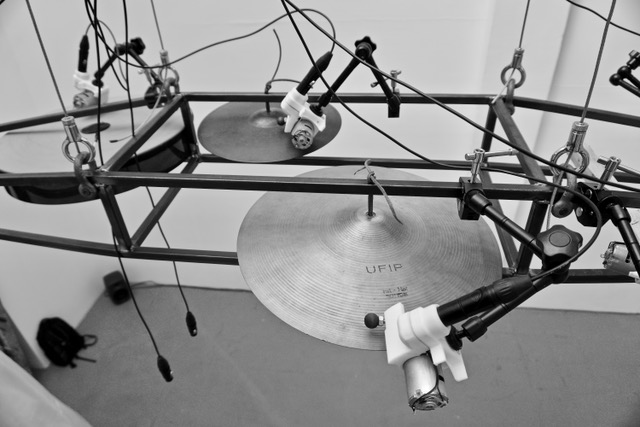
NOWs: »What is Dance?« by Robert Lippok
Foto: Robert Lippok
NOWs:
Robert Lippok
»What is Dance?« – Sound Installation
Live performance and artist talk with Robert Lippok
Friday, 19.5.2017, 8 pm
SINGUHR – PROJEKTE presents
Berlin based artist and musician Robert Lippok is primarily known as a protagonist of electronic music (“Ornament und Verbrechen”, “To Rococo Rot”). But his pieces also include sound-based installations in which he brings together elements from art, music, theatre, radio and film, as well as stage sets and objects. As early as 1989 he arranged self-made musical mechanisms, audiotape loops, electric motors and a piano keyboard into a playable installation. A few years ago, Lippok became acquainted with the oeuvre of American sound artist Joe Jones, whose “Music Machines” have continued to influence him, including while creating the instruments for his new sound installation “What is Dance?”. The installation consists of an arrangement of various sound objects (pieces of wood, cymbals, rotating plastic film) in the space, which are played mechanically in a predefined choreography, thus interpretating three dances of Henry Purcell’s opera »The Fairy Queen«.
Meinblau Projektraum
Christinenstraße 18/19
D-10119 Berlin
Opening hours
13.-28.5.2017
Tue-Sun 2 – 17 pm
free entrance
–
Organized by singuhr e.v. Supported by Bezirksamt Pankow von Berlin (Amt für Weiterbildung und Kultur, Fachbereich Kunst und Kultur) and Initiative Neue Musik Berlin e.V. Konzert des Deutschen Musikrates. With the kind support of Meinblau e.V.
Foto: Robert Lippok
NOWs:
Robert Lippok
»What is Dance?« – Soundinstallation
Live-Performance und Künstlergespräch mit Robert Lippok
Freitag, 19.5.2017 um 20 Uhr
SINGUHR – PROJEKTE präsentiert
Der Berliner Künstler und Musiker Robert Lippok ist vor allem als Protagonist elektronischer Musik bekannt geworden ( Ornament und Verbrechen, To Rococo Rot ). Zu seinen Werken gehören aber ebenso Installationen, in denen er Elemente aus dem Kunst-, Musik- und Theaterkontext zusammenführt, wie Bühnenbilder und Objekte. Vor einigen Jahren lernte Lippok das Werk des amerikanischen Klangkünstlers Joe Jones kennen, dessen ?Music Machines” seither einen wichtigen Einfluss darstellen, auch für die Entwicklung des Instrumentariums für ?What is Dance?”. Die Installation, die aus einem Arrangement mechanisch bespielter Klangobjekte und einem Lautsprechersystem im Raum besteht, interpretiert drei Tänze des englischen Komponisten Henry Purcell aus dessen Oper “The Fairy Queen”. Die Installation besteht aus einem Arrangement unterschiedlichster Klangobjekte im Raum, die mechanisch bespielt werden. Ergänzt durch ein Lautsprechersystem interpretieren die mit Sensortechnik und Elektromotoren ausgestatteten Hölzer, Becken und Folien, die an einem raumgreifenden Gerüst von der Decke hängen, drei Tänze aus Henry Purcells Oper »The Fairy Queen«.
Meinblau Projektraum
Christinenstraße 18/19
D-10119 Berlin
Öffnungszeiten
13.-28.5.2017
Dienstag-Sonntag 14 – 19 Uhr
Eintritt frei
–
Gefördert durch das Bezirksamt Pankow von Berlin (Amt für Weiterbildung und Kultur, Fachbereich Kunst und Kultur) und die initiative neue musk berlin e.V. Konzert des Deutschen Musikrates. Mit freundlicher Unterstützung von Meinblau e.V.
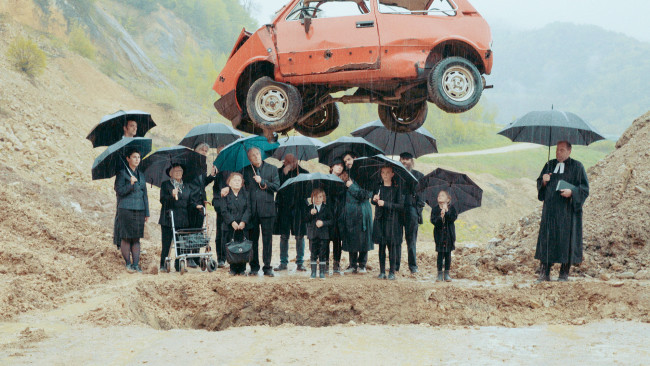
NOWs: GLÜCKs Autokino
NOWs:
GLÜCKs Autokino geht auf CH-Tour! Erster Halt: Hardturmbrache in Zürich – ehemals Fussballstadion, jetzt eine Brache mit wachsender Flora & Fauna. Bevor sich Fuchs und Hase gute Nacht sagen, zeigen wir in Zusammenarbeit mit dem Theater Gessnerallee unseren Dokumentarfilm >Jäger & Sammler< !
11./12./13. Mai 2017
Einlass ab 20:00 Uhr
Anfahrt:
Stadionbrache Hardturm
Hardturmstrasse 269, 8005 Zürich
Eingang über Förrlibuckstrasse
Tickets hier.
Für das absolute Glückserlebnis sollten Sie zwischen 20 Uhr und 20.30 Uhr mit dem eigenen Auto auf der Hardturmbrache vorfahren. Das Autokino findet draussen und bei jeder Witterung statt. Bei schönem Wetter gibt es auch Plätze für Fussgänger und Velofahrerinnen. Vergessen Sie nicht ihr eigenes UKW-fähiges Radio.
Weitere Info`s inkl. Trailer zum Film:
Autokino
«Ein bisschen unnötig Autofahren, ist ein bisschen Freiheit», sagte schon der Luzerner Strassenphilosoph Emil Manser. Bevor alles hybrid und elektrisch wird, bietet Glück all denjenigen eine Plattform, die ihr Herz an Benzin, Gummi und Pferdestärken verloren haben. Dafür verlässt die Gruppe Glück den Theaterraum und veranstaltet ein Autokino – das letzte Kino ohne Rauchverbot. Gezeigt wird der eigens produzierte Dokfilm «Jäger & Sammler»: Ganz in Roadmovie-Manier handelt der Film von Autos, ihren Besitzern, wahrer Liebe zu grossen Motoren und von solchen, die ihr Schicksal selber in die Hand nehmen wollen.
Glück möchte der eigenartigen Symbiose zwischen Mensch und Auto auf die Schliche kommen. Immer mit der Frage im Nacken: Wie weit gehen Menschen für Motoren?
Wie sehen die Roadmovies der Zukunft aus, wenn Roboter das Steuer übernehmen? Bevor Duracell Häschen in Google-Autos durch die Gegend piepsen und uns GPS Satelliten die Orientierung verlieren lassen, zeigen wir die letzten echten Autofreaks und geben ihnen unsere Bühne. Ganz in Roadmovie-Manier handelt der Film von Autos, ihren Besitzern, wahrer Liebe zu grossen Motoren und von solchen die ihr Schicksal selber in die Hand nehmen wollen. In kleinen Episoden tritt die flammende Leidenschaft hervor. Autoliebhaber und überzeugte Fahrradfahrer reichen sich die Klinke in die Hand und die ganz grossen Gefühle werden aufgefahren – ganz nach dem Motto: «Wer nicht spinnt ist nicht normal!» (Pesche, Protagonist «Jäger & Sammler»).
Glück – bestehend aus den Basler Künstlern, Musikern und Theaterschaffenden Gregor Brändli, Jeremias Holliger, Lukas Kubik, Benjamin Matthis und Victor Moser – entstand aus dem Bedürfnis, Arbeiten zu machen, die kollektiv entstehen und dem hierarchischen Theaterprinzip entsagen.
NOWs:
GLÜCKs Autokino geht auf CH-Tour! Erster Halt: Hardturmbrache in Zürich – ehemals Fussballstadion, jetzt eine Brache mit wachsender Flora & Fauna. Bevor sich Fuchs und Hase gute Nacht sagen, zeigen wir in Zusammenarbeit mit dem Theater Gessnerallee unseren Dokumentarfilm >Jäger & Sammler< !
11./12./13. Mai 2017
Einlass ab 20:00 Uhr
Anfahrt:
Stadionbrache Hardturm
Hardturmstrasse 269, 8005 Zürich
Eingang über Förrlibuckstrasse
Tickets hier.
Für das absolute Glückserlebnis sollten Sie zwischen 20 Uhr und 20.30 Uhr mit dem eigenen Auto auf der Hardturmbrache vorfahren. Das Autokino findet draussen und bei jeder Witterung statt. Bei schönem Wetter gibt es auch Plätze für Fussgänger und Velofahrerinnen. Vergessen Sie nicht ihr eigenes UKW-fähiges Radio.
Weitere Info`s inkl. Trailer zum Film:
Autokino
«Ein bisschen unnötig Autofahren, ist ein bisschen Freiheit», sagte schon der Luzerner Strassenphilosoph Emil Manser. Bevor alles hybrid und elektrisch wird, bietet Glück all denjenigen eine Plattform, die ihr Herz an Benzin, Gummi und Pferdestärken verloren haben. Dafür verlässt die Gruppe Glück den Theaterraum und veranstaltet ein Autokino – das letzte Kino ohne Rauchverbot. Gezeigt wird der eigens produzierte Dokfilm «Jäger & Sammler»: Ganz in Roadmovie-Manier handelt der Film von Autos, ihren Besitzern, wahrer Liebe zu grossen Motoren und von solchen, die ihr Schicksal selber in die Hand nehmen wollen.
Glück möchte der eigenartigen Symbiose zwischen Mensch und Auto auf die Schliche kommen. Immer mit der Frage im Nacken: Wie weit gehen Menschen für Motoren?
Wie sehen die Roadmovies der Zukunft aus, wenn Roboter das Steuer übernehmen? Bevor Duracell Häschen in Google-Autos durch die Gegend piepsen und uns GPS Satelliten die Orientierung verlieren lassen, zeigen wir die letzten echten Autofreaks und geben ihnen unsere Bühne. Ganz in Roadmovie-Manier handelt der Film von Autos, ihren Besitzern, wahrer Liebe zu grossen Motoren und von solchen die ihr Schicksal selber in die Hand nehmen wollen. In kleinen Episoden tritt die flammende Leidenschaft hervor. Autoliebhaber und überzeugte Fahrradfahrer reichen sich die Klinke in die Hand und die ganz grossen Gefühle werden aufgefahren – ganz nach dem Motto: «Wer nicht spinnt ist nicht normal!» (Pesche, Protagonist «Jäger & Sammler»).
Glück – bestehend aus den Basler Künstlern, Musikern und Theaterschaffenden Gregor Brändli, Jeremias Holliger, Lukas Kubik, Benjamin Matthis und Victor Moser – entstand aus dem Bedürfnis, Arbeiten zu machen, die kollektiv entstehen und dem hierarchischen Theaterprinzip entsagen.
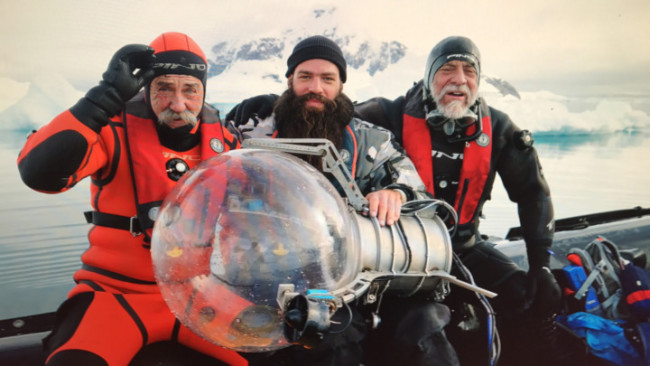
NOWs: The Antarctic Pavilion
NOWs:
The Antarctic Pavillion
First Antarctic Biennale during the 57th Venice Biennale of Art 2017
Palazzo Molin a San Basegio
Fondamenta Zattere Al Ponte Longo 1412, Venice, Italy
Selected artworks created in Antarctica, along with photo and video documentation of the voyage, will debut at The Antarctic Pavilion during the 57th Venice Biennale of Art 2017. This group exhibition will include works by the expedition’s participants and projects from the finalists of the Antarctic Biennale Open Call for young artists.
In March 2017 an international group of artists, scientists, architects and philosophers left the port of Ushuaia (Tierra del Fuego, Argentina) bound for the Antarctic Circle – onboard the scientific research vessel Akademik Sergei Vavilov. They would make landfall at numerous sites on the world’s southernmost continent throughout the next two weeks. At each location, artworks, exhibitions and performances were realized. Mobility, site-specificity and ecological compatibility were key touchstones. Nothing was left behind and no audience was present, except the participants themselves and – of course – Antarctica’s native species. Actions included a landscape photography exhibition for penguins (they didn’t seem to get much out of it) and an underwater installation for whales.
In addition to onshore interventions, throughout the expedition, the vessel itself served as a floating studio, exhibition, installation and performance space; a photo lab, and conference facility. Onboard activities included symposia, debates, and a daily screening program featuring commissioned videos by international artists. Throughout, the focus was on the question ‘What potential does the Antarctic Imaginary hold?’– for exiting polarized identity politics, and ecological insensitivity in public culture. Also, on dialogues leading to future cross-disciplinary collaborations. For the project’s Commissioner, Alexander Ponomarev and the Organizing Committee, the enterprise was ventured in the belief that this remote region must be made more proximate; that the last continent is a fertile site for new beginnings.
This year, The Antarctic Pavilion presents documentation of this 1st Antarctic Biennale – a paradigm-shifting phenomenon in biennale culture: A hot-house in a frozen realm, without mobile phones, internet, ready audience, or escape to another cocktail party, throughout this biennale everyone was in the same boat. While its expedition is complete, its collaborative outcomes are just beginning.
In addition to documentation of the 1st Antarctic Biennale, this year’s Antarctic Pavilion debuts a series of newly commissioned works exploring the aesthetic, conceptual and mythic paramaters of the Antarctic Imaginary.
In “Space Fish” (Raumfisch), Julius von Bismarck for instance realizes a site-specific performance by letting a tropical freshwater fish swim through the cold waters of the Antarctic Sea, facilitated by a custom swimsuit. The work’s thematic background revolves around human exploration. The swimsuit resembles a spacesuit, echoing man’s drive to explore and the romantic connotations of discovering new worlds. Referencing man’s first Antarctic expeditions, the fish reimagines the subject of the adventurer. The performance also emphasizes the role of tourism; travel for pleasure. It is also the theory and practice of touring, the business of attracting, accommodating, and entertaining tourists. Usually, the comfort of tourism is the preserve of humanity alone. In Space Fish, von Bismarck dives into the business of attracting the fish, offering a chance to experience the human luxury of movement to anywhere in world.
ARTISTS-PARTICIPANTS (1ST ANTARCTIC BIENNALE):
Abdullah Al Saadi (UAE). ‘Antarctic Alphabets’, Expedition Diaries
Alexander Ponomarev (Russia). ‘Alchemy of Antarctic Albedo (Or Washing Pale Moons)’. Underwater installations
Alexis Anastasiou (Brazil). ‘It ́s Cold out There’. Large scale projection
Andrey Kuzkin (Russia). ‘The Phenomenon of Nature or 99 Landscapes with a Tree’. Series of performances
Eulalia Valldosera (Spain). ‘Penelope’s voice: communicating with animals’. Audio intervention on the ship that travels to Antarctica
Gustav Dusing (Germany). ‘The solid state of matter’. Tent made of frozen cotton
Joaquin Fargas (Argentina). ‘Glaciator’. Robotic & Solar, mixed techniques
Julian Charrière (France/Switzerland). ‘Silence’, Performance
Juliana Cerqueira Leite (Brazil). ‘Vestibule’. Video Installation
Julius von Bismarck (Germany). ‘Space Fish (Raumfisch)’. Performance
Lou Sheppard (Canada). ‘Requiem for the Antarctic Coast’, Sound installation
Paul Rosero Contreras (Ecuador). ‘Arriba!’ site-specific intervention, film, photographs
Shama Rahman (Bangladesh/UK). ‘Truth be told’, Performance with sitar on ice
Sho Hasegawa (Japan). ‘Winter Landscape (Antarctica Version)’
Tomas Saraceno (Argentina/Germany). ‘Aerocene’ Performance
Yasuaki Igarashi (Japan). ‘Bundling Time’, Performance
Yto Barrada (Morocco). ‘Abstract Geology’
Zhang Enli (China). ‘Egg’
NOWs:
First Antarctic Biennale during the 57th Venice Biennale of Art 2017
Palazzo Molin a San Basegio
Fondamenta Zattere Al Ponte Longo 1412, Venice, Italy
Selected artworks created in Antarctica, along with photo and video documentation of the voyage, will debut at The Antarctic Pavilion during the 57th Venice Biennale of Art 2017. This group exhibition will include works by the expedition’s participants and projects from the finalists of the Antarctic Biennale Open Call for young artists.
In March 2017 an international group of artists, scientists, architects and philosophers left the port of Ushuaia (Tierra del Fuego, Argentina) bound for the Antarctic Circle – onboard the scientific research vessel Akademik Sergei Vavilov. They would make landfall at numerous sites on the world’s southernmost continent throughout the next two weeks. At each location, artworks, exhibitions and performances were realized. Mobility, site-specificity and ecological compatibility were key touchstones. Nothing was left behind and no audience was present, except the participants themselves and – of course – Antarctica’s native species. Actions included a landscape photography exhibition for penguins (they didn’t seem to get much out of it) and an underwater installation for whales.
In addition to onshore interventions, throughout the expedition, the vessel itself served as a floating studio, exhibition, installation and performance space; a photo lab, and conference facility. Onboard activities included symposia, debates, and a daily screening program featuring commissioned videos by international artists. Throughout, the focus was on the question ‘What potential does the Antarctic Imaginary hold?’– for exiting polarized identity politics, and ecological insensitivity in public culture. Also, on dialogues leading to future cross-disciplinary collaborations. For the project’s Commissioner, Alexander Ponomarev and the Organizing Committee, the enterprise was ventured in the belief that this remote region must be made more proximate; that the last continent is a fertile site for new beginnings.
This year, The Antarctic Pavilion presents documentation of this 1st Antarctic Biennale – a paradigm-shifting phenomenon in biennale culture: A hot-house in a frozen realm, without mobile phones, internet, ready audience, or escape to another cocktail party, throughout this biennale everyone was in the same boat. While its expedition is complete, its collaborative outcomes are just beginning.
In addition to documentation of the 1st Antarctic Biennale, this year’s Antarctic Pavilion debuts a series of newly commissioned works exploring the aesthetic, conceptual and mythic paramaters of the Antarctic Imaginary.
In “Space Fish” (Raumfisch), Julius von Bismarck for instance realizes a site-specific performance by letting a tropical freshwater fish swim through the cold waters of the Antarctic Sea, facilitated by a custom swimsuit. The work’s thematic background revolves around human exploration. The swimsuit resembles a spacesuit, echoing man’s drive to explore and the romantic connotations of discovering new worlds. Referencing man’s first Antarctic expeditions, the fish reimagines the subject of the adventurer. The performance also emphasizes the role of tourism; travel for pleasure. It is also the theory and practice of touring, the business of attracting, accommodating, and entertaining tourists. Usually, the comfort of tourism is the preserve of humanity alone. In Space Fish, von Bismarck dives into the business of attracting the fish, offering a chance to experience the human luxury of movement to anywhere in world.
ARTISTS-PARTICIPANTS (1ST ANTARCTIC BIENNALE):
Abdullah Al Saadi (UAE). ‘Antarctic Alphabets’, Expedition Diaries
Alexander Ponomarev (Russia). ‘Alchemy of Antarctic Albedo (Or Washing Pale Moons)’. Underwater installations
Alexis Anastasiou (Brazil). ‘It ́s Cold out There’. Large scale projection
Andrey Kuzkin (Russia). ‘The Phenomenon of Nature or 99 Landscapes with a Tree’. Series of performances
Eulalia Valldosera (Spain). ‘Penelope’s voice: communicating with animals’. Audio intervention on the ship that travels to Antarctica
Gustav Dusing (Germany). ‘The solid state of matter’. Tent made of frozen cotton
Joaquin Fargas (Argentina). ‘Glaciator’. Robotic & Solar, mixed techniques
Julian Charrière (France/Switzerland). ‘Silence’, Performance
Juliana Cerqueira Leite (Brazil). ‘Vestibule’. Video Installation
Julius von Bismarck (Germany). ‘Space Fish (Raumfisch)’. Performance
Lou Sheppard (Canada). ‘Requiem for the Antarctic Coast’, Sound installation
Paul Rosero Contreras (Ecuador). ‘Arriba!’ site-specific intervention, film, photographs
Shama Rahman (Bangladesh/UK). ‘Truth be told’, Performance with sitar on ice
Sho Hasegawa (Japan). ‘Winter Landscape (Antarctica Version)’
Tomas Saraceno (Argentina/Germany). ‘Aerocene’ Performance
Yasuaki Igarashi (Japan). ‘Bundling Time’, Performance
Yto Barrada (Morocco). ‘Abstract Geology’
Zhang Enli (China). ‘Egg’
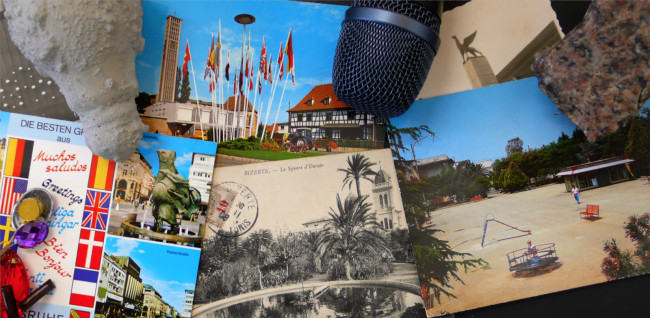
NOWs: Europaplatz (Karlsruhe) by Yves Mettler
NOWs:
Yves Mettler: Europaplatz (Karlsruhe)
Die Stiftung CCFA Karlsruhe lädt Sie herzlich ein zur Eröffnung der Ausstellung / La fondation Centre Culturel Franco Allemand Karlsruhe vous convie au vernissage de l’exposition
Eröffnung am 5. Mai um 18h / Vernissage le 5 mai à 18h
Stiftung Centre Culturel Franco-Allemand Karlsruhe
Karlstrasse 16b
Postgalerie, 3. Etage
76133 Karlsruhe
Tel.: 0721/ 16038 0
info@ccfa-ka.de
Öffnungszeiten: Montag-Do 10-18h, Fr 10-12h / Horaires d’ouverture: Lu-Je 10-18h, Ve 10-12h.
Yves Mettlers künstlerisches Projekt Europaplatz (Karlsruhe) ist der Auftakt einer programmatischen Neuausrichtung der Stiftung CCFA Karlsruhe. Gemäß ihrer Gründungsintention will die Stiftung grenzüberschreitende Diskurse, deutsch-französischen Wissenstransfer sowie für Europa relevante, kulturelle Praxis fördern. Die Frage nach Europas Zukunft stellt sich heute erneut in aller Dringlichkeit. Mettlers speziell für Karlsruhe konzipierte Installation vereint künstlerische, zivilgesellschaftliche, politische und architektonische Reflexionen zu diesem Thema anhand des Vorhandenseins eines „Europaplatzes“ in Bizerte (Tunesien), Sava (Italien), Rhinau (Frankreich) und Karlsruhe.
Le projet Europaplatz (Karlsruhe), imaginé par l‘artiste Yves Mettler, inaugure un nouveau chapitre au sein de la Fondation CCFA Karlsruhe: la rapprochant davantage de sa mission d’origine, il s’agit de promouvoir les discours, pratiques et savoirs culturels européens partagés entre la France et l’Allemagne. Notre première proposition pose la question de l’Europe à l’heure actuelle. À la fois proche et lointaine, abstraite pour certains et surtout loin d’être acquise, l’Europe devient ici source de refléxion artistique, politique, citoyenne et urbanistique en partant de la présence d’une “Place de l’Europe” dans les villes de Bizerte en Tunisie, de Sava en Italie, de Rhinau en France, et de Karlsruhe.
Eröffnung in Anwesenheit von / Vernissage en Présence de:
Wolfram Jäger Erster Bürgermeister der Stadt Karlsruhe / Maire adjoint de la Ville de Karlsruhe
Nicolas Eybalin Französischer Generalkonsul in Stuttgart / Consul général de France à Stuttgart
Hans-Peter Willi Konsul des Schweizerischen Generalkonsulats in Stuttgart / Consul au Consulat général de Suisse à Stuttgart
Dr. Susanne Asche Leiterin des Kulturamts der Stadt Karlsruhe / Directrice des Affaires Culturelles de la Ville de Karlsruhe
Performance des Künstlers um 19h anschließend Aperitiv / Performance de l‘artiste à 19h suivie d‘un apéritif
Avec le soutien de Pro Helvetia et de la Stiftung Landesbank Baden-Würtemberg
NOWs:
Yves Mettler: Europaplatz (Karlsruhe)
Die Stiftung CCFA Karlsruhe lädt Sie herzlich ein zur Eröffnung der Ausstellung / La fondation Centre Culturel Franco Allemand Karlsruhe vous convie au vernissage de l’exposition
Eröffnung am 5. Mai um 18h / Vernissage le 5 mai à 18h
Stiftung Centre Culturel Franco-Allemand Karlsruhe
Karlstrasse 16b
Postgalerie, 3. Etage
76133 Karlsruhe
Tel.: 0721/ 16038 0
info@ccfa-ka.de
Öffnungszeiten: Montag-Do 10-18h, Fr 10-12h / Horaires d’ouverture: Lu-Je 10-18h, Ve 10-12h.
Yves Mettlers künstlerisches Projekt Europaplatz (Karlsruhe) ist der Auftakt einer programmatischen Neuausrichtung der Stiftung CCFA Karlsruhe. Gemäß ihrer Gründungsintention will die Stiftung grenzüberschreitende Diskurse, deutsch-französischen Wissenstransfer sowie für Europa relevante, kulturelle Praxis fördern. Die Frage nach Europas Zukunft stellt sich heute erneut in aller Dringlichkeit. Mettlers speziell für Karlsruhe konzipierte Installation vereint künstlerische, zivilgesellschaftliche, politische und architektonische Reflexionen zu diesem Thema anhand des Vorhandenseins eines „Europaplatzes“ in Bizerte (Tunesien), Sava (Italien), Rhinau (Frankreich) und Karlsruhe.
Le projet Europaplatz (Karlsruhe), imaginé par l‘artiste Yves Mettler, inaugure un nouveau chapitre au sein de la Fondation CCFA Karlsruhe: la rapprochant davantage de sa mission d’origine, il s’agit de promouvoir les discours, pratiques et savoirs culturels européens partagés entre la France et l’Allemagne. Notre première proposition pose la question de l’Europe à l’heure actuelle. À la fois proche et lointaine, abstraite pour certains et surtout loin d’être acquise, l’Europe devient ici source de refléxion artistique, politique, citoyenne et urbanistique en partant de la présence d’une “Place de l’Europe” dans les villes de Bizerte en Tunisie, de Sava en Italie, de Rhinau en France, et de Karlsruhe.
Eröffnung in Anwesenheit von / Vernissage en Présence de:
Wolfram Jäger Erster Bürgermeister der Stadt Karlsruhe / Maire adjoint de la Ville de Karlsruhe
Nicolas Eybalin Französischer Generalkonsul in Stuttgart / Consul général de France à Stuttgart
Hans-Peter Willi Konsul des Schweizerischen Generalkonsulats in Stuttgart / Consul au Consulat général de Suisse à Stuttgart
Dr. Susanne Asche Leiterin des Kulturamts der Stadt Karlsruhe / Directrice des Affaires Culturelles de la Ville de Karlsruhe
Performance des Künstlers um 19h anschließend Aperitiv / Performance de l‘artiste à 19h suivie d‘un apéritif
Avec le soutien de Pro Helvetia et de la Stiftung Landesbank Baden-Würtemberg
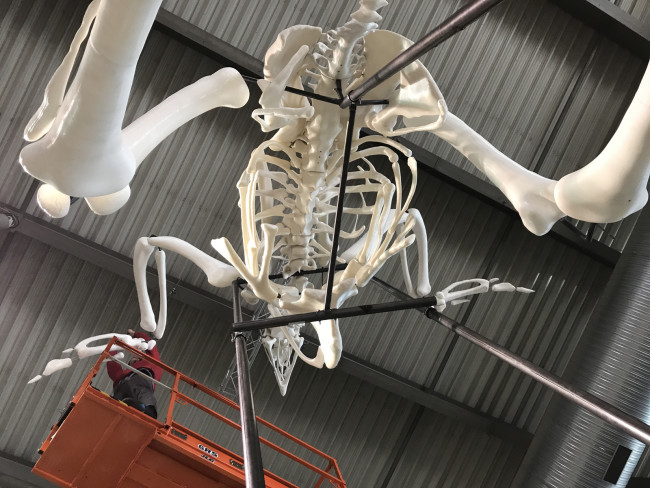
NOWs: Monument for the 308 by Andreas Greiner
Andreas Greiner: Monument for the 308, 2016, Berlinische Galerie. Photo: Theo Bitzer
NOWs:
Andreas Greiner: Monument for the 308
Seeds & Chips, The Global Food Innovation Summit
Milano, Italy – Fiera Milano, RH
For the annual food innovation summit Seeds & Chips the foundation 999contemporary presents Andreas Greiner’s sculpture Monument for the 308: A reflection on industrialised meat production and breeding techniques, which are characteristic of our contemporary relationship to our environment. A 7,5m meter skeleton stands towering over the conference like an ancient dinosaur.
The work carries the same name like a specific man-made breed of broiler chicken: Ross 308. Like its ancestor the Archeopteryx, this species of broiler will become extinct: Unable to pass on their hybrid DNA, they will die out as soon as humans stop artificially breeding them.
The Berlin-based artist thus speculates upon a possible archeology of the future: If dinosaurs are a relict of the mesozoic era, genetically altered chicken would in future be a relict of the Anthropocene.
The work was originally exhibited on occasion of Andreas Greiner’s 2016 solo exhibition “Agency of the Exponent” in the Berlinische Galerie, a contemporary and modern art museum in Berlin. It is a 7,5 m tall replica of a broiler chicken skeleton (found dead in an industrial fattened chicken farm in Brandenburg), which the artist then froze for stability and conservation. Afterwards its body was scanned at the Charité in Berlin using cone beam computed tomography (CBCT) to create a 3-dimensional digital reproduction of the bones. This rendering was enlarged 20 times (20:1) and the data transferred to a 3D printer to produce the single bones.
Ross 308 has nourished billions of people with cheap and abundant protein. “Monument to the 308” honours this pillar of society and imagines a future in which we will grant nature the same ‘human’ rights, as we grant ourselves. The future of food is undoubtedly a political question. One which must be answered with a resounding ‘yes’ to a sustainable agriculture and radically reduced meat consumption – in order to safeguard the earth that shelters us and our children and express gratitude to the food it provides us with.
Andreas Greiner: Monument for the 308, 2016, Milano (during installation). Photo: 999contemporary
Andreas Greiner: Monument für die 308, 2016, Berlinische Galerie. Photo: Theo Bitzer
NOWs:
Andreas Greiner: Monument für die 308
Seeds & Chips, The Global Food Innovation Summit
Milano, Italy – Fiera Milano, RH
Für die diesjährige Lebensmitteltechnologie Messe Seeds & Chips hat die Stiftung 999contemporary den Berliner Künstler Andreas Greiner eingeladen seine Skulptur Monument für die 308 auszustellen. Das Werk thematisiert massenhafte Fleischproduktion und Tierzucht, die charakteristisch für das menschliche Verhältnis zur Umwelt sind. Das Werk trägt den Namen einer spezifischen Art hybrid gezüchteten Masthuhns: Ross 308. 7,5m hoch thront das Skelett des Tieres über dem Messeraum, wie ein Dinosaurier in einem Naturkundemuseum.
Wie sein Vorfahre, der Archeopteryx, wird auch diese Spezies aussterben: Jede Generation muss neu gekreuzt werden, da Masthühner ihre hybride DNA nicht weitergeben können. Somit hängt das weitere Bestehen dieser Art von der immer neuen künstlichen Befruchtung der Nahrungsmittelindustrie ab.
Der Künstler spekuliert über eine Archäologie der Zukunft: Wenn Dinosaurier ein Relikt längst vergangener Zeiten sind, so sind Masthühner ein Relikt der Jetztzeit.Bis Februar diesen Jahres stand das Monument in Andreas Greiner’s Einzelausstellung in der Berlinischen Galerie, einem Museum für zeitgenössische und moderne Kunst. Um eine genaue Nachbildung des Hühnerskeletts zu erstellen musste der totgefundene Körper erst gefroren werden und anschließend in der Berliner Charité mittels einer digitalen Volumentomographie (DVT) in eine 3-dimensionale Reproduktion der Hühnerknochen übersetzt werden. Das so gewonnene digitale Modell wurde 20-fach vergrößert (20:1) und die Daten mittels 3D Drucker als einzelne Knochen gedruckt.
Die weltweit steigende Nachfrage nach günstigem Eiweiß wird durch das effiziente Muskelwachstum der Ross 308 Hühner bedient. “Monument für die 308” würdigt diese Säule der Gesellschaft und entwirft eine Zukunft in der wir der Natur mit Respekt begegnen und ihr dieselben Menschenrechte wie uns zugestehen. Denn die Zukunft unserer Ernährung ist zweifellos eine politische Frage, eine, die mit einem klaren ‘Ja’ zur nachhaltigen Landwirtschaft und zum ethisch vertretbaren Fleischkonsum beantwortet werden muss – um unsere natürliche Umwelt und die Nahrung, die sie bietet, zu schützen.
Andreas Greiner: Monument für die 308, 2016, Mailand (während der Installation). Photo: 999contemporary
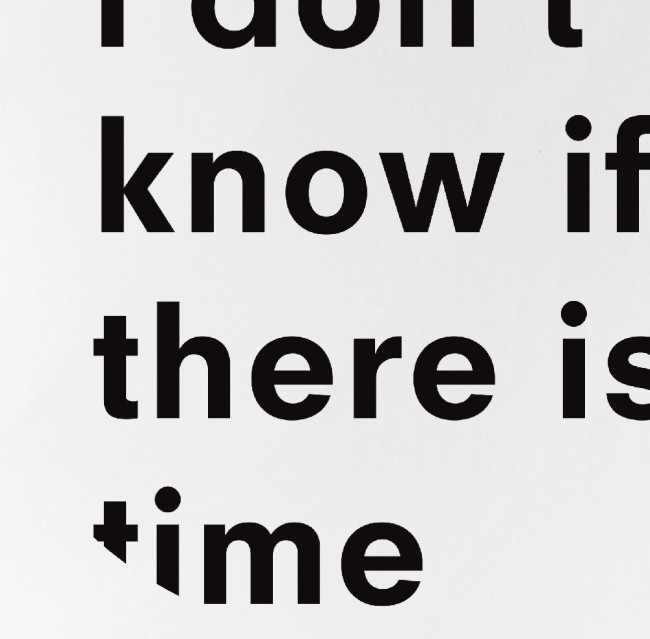
NOWs: Faulenzer by Nina Schuiki
Nina Schuiki: Faulenzer, 2017 (Inner Sleeve Cover). Track A: ha - ha (I don t want my future like this), loop: 1.8 seconds
NOWs:
Nina Schuiki: Faulenzer
three loops
(triple 12″ vinyl)
Record Release Party:
5.5.2017
starts 7pm
in collaboration with ada – artistic dynamic association, Vienna
Wattgasse 16/6 – 1160 Wien
„Nina Schuiki’s work is characterised by a unique negotiation of space and situation, taking the form of subtle interventions, installations and objects. By engaging in the spatio-temporality and history of each context in which her work emerges, the referencing and exploration of detailed traces brings to light something that was already inscribed into the structure but ordinarily escapes attention. Schuiki applies her interest and artistic conceptualisation toward an inquiry on form-finding and the materiality of art, on the act of visualisation and perception.
A fundamental constant of her work is the discourse upon the parameters of perception, which she adopts by way of site-conditioned gestures that change or irritate a concrete situation. Walter Benjamin spoke of a “Wolkenwandelbarkeit der Dinge” —— the changeable perception of things —— which can metaphorically as well as literally be applied to many of Nina Schuiki’s pieces. However, her aesthetic gestures also always remain as concrete actions in time and space, rooted in the visible cause and effect principle of the here and now. The remarkable enchantment in the encounter of the created perspective lies exactly in the simple precision of a gesture that can unfold with tremendous impact. With her minimal, aesthetic interventions into given situations and conditions, Schuiki attempts an astonishingly tangible dematerialisation of art that surprises us by this very paradox.“
Julia Thiemann, Curator
Nina Schuiki: Faulenzer, 2017 (Inner Sleeve Cover); Track A: ha - ha (I don t want my future like this), loop: 1.8 seconds
NOWs:
Nina Schuiki: Faulenzer
three loops
(triple 12″ vinyl)
Record Release Party:
5.5.2017
starts 7pm
in collaboration with ada – artistic dynamic association, Vienna
Wattgasse 16/6 – 1160 Wien
„Nina Schuiki’s work is characterised by a unique negotiation of space and situation, taking the form of subtle interventions, installations and objects. By engaging in the spatio-temporality and history of each context in which her work emerges, the referencing and exploration of detailed traces brings to light something that was already inscribed into the structure but ordinarily escapes attention. Schuiki applies her interest and artistic conceptualisation toward an inquiry on form-finding and the materiality of art, on the act of visualisation and perception.
A fundamental constant of her work is the discourse upon the parameters of perception, which she adopts by way of site-conditioned gestures that change or irritate a concrete situation. Walter Benjamin spoke of a “Wolkenwandelbarkeit der Dinge” —— the changeable perception of things —— which can metaphorically as well as literally be applied to many of Nina Schuiki’s pieces. However, her aesthetic gestures also always remain as concrete actions in time and space, rooted in the visible cause and effect principle of the here and now. The remarkable enchantment in the encounter of the created perspective lies exactly in the simple precision of a gesture that can unfold with tremendous impact. With her minimal, aesthetic interventions into given situations and conditions, Schuiki attempts an astonishingly tangible dematerialisation of art that surprises us by this very paradox.“
Julia Thiemann, Curator
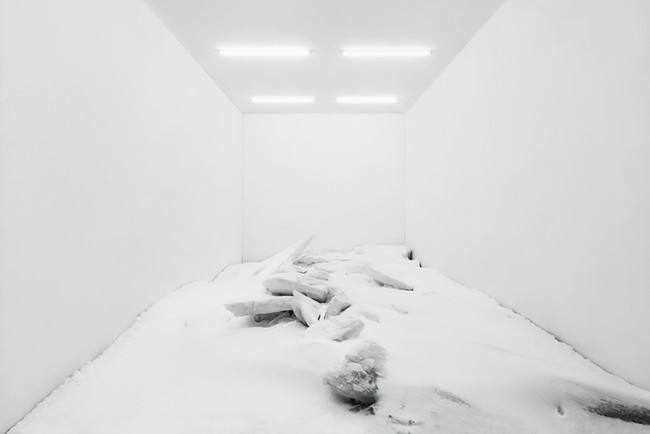
NOWs: Isolation by Fabian Knecht
NOWs:
Fabian Knecht
ISOLATION
Opening: April 28, 2017, 5-10 pm
at
alexander levy, Berlin
ISOLATION features photographs of conventional exhibition rooms (“white cubes”), which Knecht installed at various different locations in nature. Rather than transposing a ready-made or a representation of “reality” onto the exhibition space, Knecht brings the exhibition space into reality, isolates a segment with the help of the “white cube”: a riverbed and a base of a vanished monument in Ukraine, a frozen sea in Vladivostok, waste ground in Berlin and a section of forest in North-Rhine Westphalia. Nature in all its complexity elevated to the status of an artwork and exhibited in situ, without intervening in existing forms and forms of life. Occasionally, almost in passing, canonical artworks are referenced: from Caspar David Friedrich’s “Eismeer” (The Sea of Ice; 1823-4) through to Robert Smithson’s “Dead Tree” (1969). Consequently, ISOLATION both comments on and inverts not only the classic concept of the ready-made, but also the traditional relationship between art and nature, natura naturans and natura naturata (creating nature and created nature). “For truly art is contained in nature, and the person who succeeds in extracting it out, has it …”, writes Albrecht Dürer. And anyone who leaves it in place, surrounds and exhibits it – has it too.
The exhibition space becomes a medium, and consequently morphs from a background to a work (that is equally non-locational and location-based, and conveyed by photo is almost unreal) – before subsequently once again being made into a background: a work at the divide and fracture between space, nature and photography. The photos hang in an exhibition space. And the exhibition spaces in nature have been removed. But nature – spoiled and unspoiled – remains where it was before: beyond the frame.
The project ISOLATION was realized in cooperation with the architect Ivy Lee Fiebig. Special thanks to Markus Schütte, André Simonoff, and the Zarya Center for Contemporary Art in Vladivostok, who made the realization of the project possible.
NOWs:
Fabian Knecht
ISOLATION
Eröffnung: 28 April 2017, 17-22 h
alexander levy, Berlin
ISOLATION zeigt Fotografien von konventionellen Ausstellungsräumen (»White Cubes«), die Knecht an unterschiedlichen Orten in der Natur installiert hat. Statt ein Readymade oder eine Repräsentation der ›Wirklichkeit‹ in den Ausstellungsraum zu überführen, bringt Knecht den Ausstellungsraum in die Wirklichkeit, isoliert ein Segment mithilfe des »White Cubes«: ein Flussbett und ein Sockel eines verschwundenen Denkmals in der Ukraine, ein zugefrorenes Meer in Wladiwostok, eine Brache in Berlin und ein Waldstück in Nordrhein-Westfalen. Die Natur wird in ihrer Komplexität zum Werk erhoben und ausgestellt, in situ, ohne in vorgefundene Formen und Lebensformen einzugreifen. Mitunter werden – wie beiläufig – kanonische Kunstwerke ins Bewusstsein gerufen: von Caspar David Friedrichs »Eismeer« (1823/24) bis zu Robert Smithsons »Dead Tree« (1969). ISOLATION kommentiert – invertiert – so nicht nur das klassische Konzept des Readymades, sondern auch das traditionelle Verhältnis von Kunst und Natur, natura naturans und natura naturata (schaffender und geschaffener Natur). »Dann wahrhaftig steckt die Kunst in der Natur, wer sie heraus kann reißen, der hat sie…«, schreibt Albrecht Dürer. Wer sie an Ort und Stelle belässt, umgrenzt und zeigt – der hat sie auch.
Der Ausstellungsraum wird zum Medium und damit vom Hintergrund zum Werk (gleichermaßen ungebunden wie ortsbezogen und fotografisch vermittelt, beinahe unwirklich) – um dann vom Foto im nächsten Schritt erneut zum Hintergrund gemacht zu werden: ein Werk an der Naht- und Bruchstelle zwischen Raum, Natur und Fotografie. Die Fotos hängen im Ausstellungsraum. Die Ausstellungsräume sind abgebaut. Die Natur – berührt und unberührt – bleibt dort, wo sie war: jenseits des Rahmens.
Das Projekt ISOLATION wurde realisiert in der Zusammenarbeit mit der Architektin Ivy Lee Fiebig. Besonderen Dank gilt Markus Schütte, Andere Simonoff, und dem Zarya Center for Contemporary Art in Vladivostok, ohne deren Hilfe das Projekt nicht hätte realisiert werden können
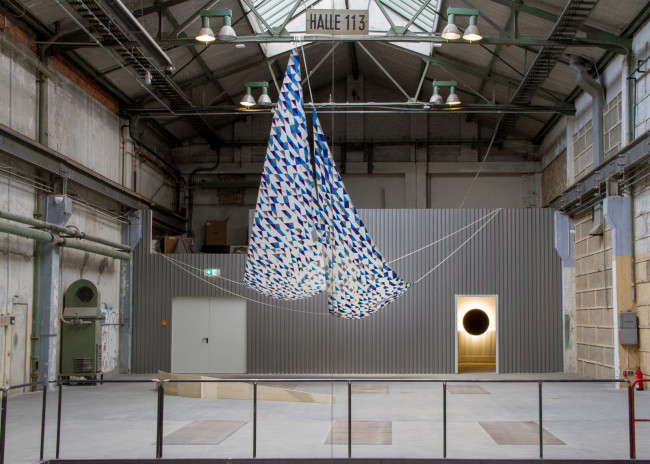
NOWs: Social Geometrism
NOWs:
Social Geometrism
at
Reinbeckhallen, Reinbeckstrasse 9, 12459 Berlin
Friday, April 28, 2017
19:00 Opening of the show
20:30 Party
Music-DJ Set odsounds
Free Admission
Kunst Am Spreeknie is pleased to announce ‘’Social Geometrism’’. The exhibition will take place from April 28 to May 7 at Reinbeckhallen, a renovated former transformer plant in the heart of Schöneweide.
The theme of this year’s festival came as an extension of “Social Geometry”, a term, which was introduced by the American sociologist Donald Black in an effort to measure social morphology, as it had been developed within the postmodern society.
Black’s model was a cluster, composed by geometrical lines and shapes, which was intended to symbolize and interpret social phenomena. The multidimensional geometric amalgams that arose were designed to convey the real space where people live, while also stand as a new type of geography.
In a time where social patterns are evolving in unprecedented ways, ‘’Social Geometrism’’ aims to explore and highlight aspects of those new spatiotemporal formations. This exhibition brings together lines, solids, surfaces and more complex polyhedral figures that present themselves as sociological models. Through the display of international Berlin-based artists, dealing with a different approach to materiality, and by their placement in a common space, a multidimensional environment emerges and confronts the viewer with new problematics that are present at our time.
Participating artists: Sophie Erlund, Felix Kiessling, Ignacio Uriarte, Raul Walch, Stephen Kent, Vanessa Enriquez, Ossian Fraser, Gonzalo Reyes Araos, Jennifer Oellerich, Florian Schmidt, Nadine Fecht, Francisco Rozas, Juan Varela, Panagiotis Margaritis
Raul Walch: Circular Semaphore, 2017, textile colour on sailcloth, Reinbeckhallen, Berlin, 2017 (installation view)
Felix Kiessling: Antisonne, 2017. Reinbeckhallen, Berlin (installation view)
Sophie Erlund: A gentle monumentalism, 2017. Reinbeckhallen, Berlin (installation view). Photo: Ariel Reichman
Sophie Erlund: A gentle monumentalism, 2017. Reinbeckhallen, Berlin (detail). Photo: Ariel Reichman
NOWs:
Social Geometrism
at
Reinbeckhallen, Reinbeckstrasse 9, 12459 Berlin
Friday, April 28, 2017
19:00 Opening of the show
20:30 Party
Music-DJ Set odsounds
Free Admission
Kunst Am Spreeknie is pleased to announce ‘’Social Geometrism’’. The exhibition will take place from April 28 to May 7 at Reinbeckhallen, a renovated former transformer plant in the heart of Schöneweide.
The theme of this year’s festival came as an extension of “Social Geometry”, a term, which was introduced by the American sociologist Donald Black in an effort to measure social morphology, as it had been developed within the postmodern society.
Black’s model was a cluster, composed by geometrical lines and shapes, which was intended to symbolize and interpret social phenomena. The multidimensional geometric amalgams that arose were designed to convey the real space where people live, while also stand as a new type of geography.
In a time where social patterns are evolving in unprecedented ways, ‘’Social Geometrism’’ aims to explore and highlight aspects of those new spatiotemporal formations. This exhibition brings together lines, solids, surfaces and more complex polyhedral figures that present themselves as sociological models. Through the display of international Berlin-based artists, dealing with a different approach to materiality, and by their placement in a common space, a multidimensional environment emerges and confronts the viewer with new problematics that are present at our time.
Participating artists: Sophie Erlund, Felix Kiessling, Ignacio Uriarte, Raul Walch, Stephen Kent, Vanessa Enriquez, Ossian Fraser, Gonzalo Reyes Araos, Jennifer Oellerich, Florian Schmidt, Nadine Fecht, Francisco Rozas, Juan Varela, Panagiotis Margaritis
Raul Walch: Circular Semaphore, 2017, textile colour on sailcloth, Reinbeckhallen, Berlin, 2017 (installation view)
Felix Kiessling: Antisonne, 2017. Reinbeckhallen, Berlin (installation view)
Sophie Erlund: A gentle monumentalism, 2017. Reinbeckhallen, Berlin (installation view). Photo: Ariel Reichman
Sophie Erlund: A gentle monumentalism, 2017. Reinbeckhallen, Berlin (detail). Photo: Ariel Reichman
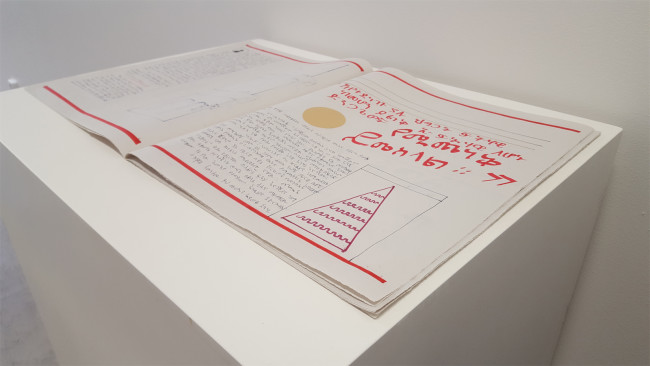
NOWs: AGORA ARTES
Robel Temesgen: Another Old News, 2017
NOWs:
JUNGE AKADEMIE: AGORA ARTES / Interplay of the Arts
at
Akademie der Künste
Hanseatenweg 10, (Halle 3)
10557 Berlin-Tiergarten
JUNGE AKADEMIE (YOUNG ACADEMY) brings together 25 international artists from all areas in a series of diverse dialogues. The Programme Night on 29 April 2017 marks the start of AGORA ARTES, the presentation of works by last year’s Akademie Fellows. The AGORA ARTES / Interplay of the Arts exhibition is shown in a two-week hall installation at Hanseatenweg until mid-May. In video, sound and room installations, María Korol and Robel Temesgen (Visual Arts), Martina Schlusnus (Architecture), Elena Rykova and Niklas Seidl (Music), Kaan Koç and Sergey Lebedev (Literature), Jason Danino Holt and Rima Pipoyan (Performing Arts), Elena Zieser and Rafael Jové (Film and Media Arts) as well as Paulette Penje (Saarland Fellowship) present the results of their teamwork.
In addition to solo works in this year’s final presentations by artist fellows from all the sections of the Akademie der Künste, the JUNGE AKADEMIE is once again showing numerous new productions developed on the basis of collaborative teamwork between the arts. These include transdisciplinary experimental set-ups and also stimulating “laboratory” situations, in which something new can be delved into and explored. Such works are first able to effectively unfold in dialogue between differing views on art. The artists often actively involve their audiences, frequently leading to unexpected perceptions, thoughts and innovations that can open our senses to the unconventional, to surprising perspectives, and to unexpected approaches to finding solutions.
Robel Temesgen: Another Old News, 2017
NOWs:
JUNGE AKADEMIE: AGORA ARTES / Wechselspiel aller Künste
Akademie der Künste
Hanseatenweg 10, (Halle 3)
10557 Berlin-Tiergarten
Die JUNGE AKADEMIE führt im April und Mai 25 internationale Künstlerinnen und Künstler aller Kunstrichtungen in vielfältigen Dialogen zusammen. Mit der Programm-Nacht am 29.4.2017 startet AGORA ARTES, die Werkpräsentation der Stipendiaten des vergangenen Jahres. Die Ausstellung AGORA ARTES 2017 / Wechselspiel aller Künste zeigt die Abschlusspräsentation der Arbeitsergebnisse der Vorjahrsstipendiaten und ist bis Mitte Mai in einer zweiwöchigen Halleninstallation im Akademie-Gebäude am Hanseatenweg zu sehen. María Korol und Robel Temesgen (Bildende Kunst), Martina Schlusnus (Baukunst), Elena Rykova und Niklas Seidl (Musik), Kaan Koç und Sergey Lebedev (Literatur), Jason Danino Holt und Rima Pipoyan (Darstellende Kunst), Elena Zieser und Rafael Jové (Film- und Medienkunst) sowie Paulette Penje (Saarland-Stipendium) zeigen in Video-, Klang- und Rauminstallationen sowie verschiedenen Performances die Ergebnisse ihrer Zusammenarbeit.
Dieses Jahr zeigt die JUNGE AKADEMIE neben eigenständigen Werken auch wieder neue, auf Basis zahlreich sich ergebender Teamarbeiten zwischen den Künsten entwickelte Produktionen. Darunter sind vor allem transdisziplinäre Versuchsanordnungen und auch spannende Laborsituationen, in denen Neues ausgelotet und erkundet wird. Solche Werke können sich erst im Dialog zwischen verschiedenen Kunstauffassungen wirksam auftun. Dabei wird oft das Publikum von den Künstlern aktiv miteinbezogen. Meist führt das zu unerwarteten Wahrnehmungen, Gedanken und Erfindungen, die die Sinne öffnen für unkonventionelle Wege, überraschende Perspektiven, ungeahnte Lösungsansätze und zuweilen auch neue Anregungen.
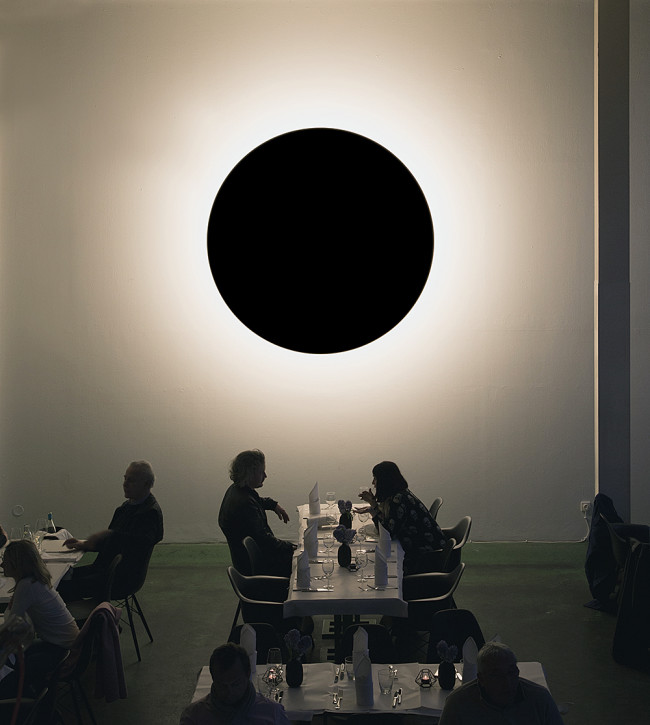
NOWs: Antisonne by Felix Kiessling
Felix Kiessling: Antisonne. Reinbeckhallen, Berlin, 2017 (installation view)
NOWs:
Felix Kiessling: Antisonne
Felix Kiessling hat ein tiefes schwarzes Loch in den Raum installiert: Die Antisonne. Visuell nicht erfassbar, irritiert sie unsere gewohnte Wahrnehmung. Sie bildet einen blinden Fleck im Raum, einen kleinen Ausschnitt ins Nichts, ein Fenster zu einem Raum den wir zwar fühlen, aber nicht ergründen können – die Antisonne absorbiert uns in ihre schier unendliche, immaterielle Tiefe.
Um dem Betrachter in Zeiten von Definition, Logik, Erklärung und Funktion einen undefinierten, unsinnigen, unlogischen Raum zu öffnen, ihm einen kleinen Ausschnitt in die Irrationalität zu ermöglichen, versucht Kiessling sich gegenüber dem Ort und seiner Struktur unkritisch zu verhalten: ‘Die Arbeit soll erreichbar sein. Sie soll als ein integriertes Objekt wirken, in einem Restaurant hängen, den prosaischen Raum eines Durchgangs kolonisieren. Sie soll im Alltag integriert über dem Tisch stattfinden, dem Tisch an dem du isst und liebst und stirbst, sonst wird dieser kleine Ausschnitt nicht gesehen und erfahren und als ein unzugängliches, exklusives Konzept strukturell einflusslos bleiben.’
On view:
Social Geometrism
Reinbeckhallen
Reinbeckstrasse 9
12459 Berlin
until 7 May 2017 every day from 11:00 to 18:00.
and
Pane E Tulipane
(Kunsthaus Jesteburg / Oel-Früh)
Klosterwall 23
20095 Hamburg
Felix Kiessling: Antisonne. Pane E Tulipani (Kunstverein Jesteburg/Öl-Früh), Hamburg, 2017. Foto: Amelie Zadeh
Felix Kiessling: Antisonne. Reinbeckhallen, Berlin, 2017 (installation view)
NOWs:
Felix Kiessling: Antisonne
Felix Kiessling hat ein tiefes schwarzes Loch in den Raum installiert: Die Antisonne. Visuell nicht erfassbar, irritiert sie unsere gewohnte Wahrnehmung. Sie bildet einen blinden Fleck im Raum, einen kleinen Ausschnitt ins Nichts, ein Fenster zu einem Raum den wir zwar fühlen, aber nicht ergründen können – die Antisonne absorbiert uns in ihre schier unendliche, immaterielle Tiefe.
Um dem Betrachter in Zeiten von Definition, Logik, Erklärung und Funktion einen undefinierten, unsinnigen, unlogischen Raum zu öffnen, ihm einen kleinen Ausschnitt in die Irrationalität zu ermöglichen, versucht Kiessling sich gegenüber dem Ort und seiner Struktur unkritisch zu verhalten: ‘Die Arbeit soll erreichbar sein. Sie soll als ein integriertes Objekt wirken, in einem Restaurant hängen, den prosaischen Raum eines Durchgangs kolonisieren. Sie soll im Alltag integriert über dem Tisch stattfinden, dem Tisch an dem du isst und liebst und stirbst, sonst wird dieser kleine Ausschnitt nicht gesehen und erfahren und als ein unzugängliches, exklusives Konzept strukturell einflusslos bleiben.’
On view:
Social Geometrism
Reinbeckhallen
Reinbeckstrasse 9
12459 Berlin
until 7 May 2017 every day from 11:00 to 18:00.
and
Pane E Tulipane
(Kunsthaus Jesteburg / Oel-Früh)
Klosterwall 23
20095 Hamburg
Felix Kiessling: Antisonne. Pane E Tulipani (Kunstverein Jesteburg/Öl-Früh), Hamburg, 2017. Foto: Amelie Zadeh
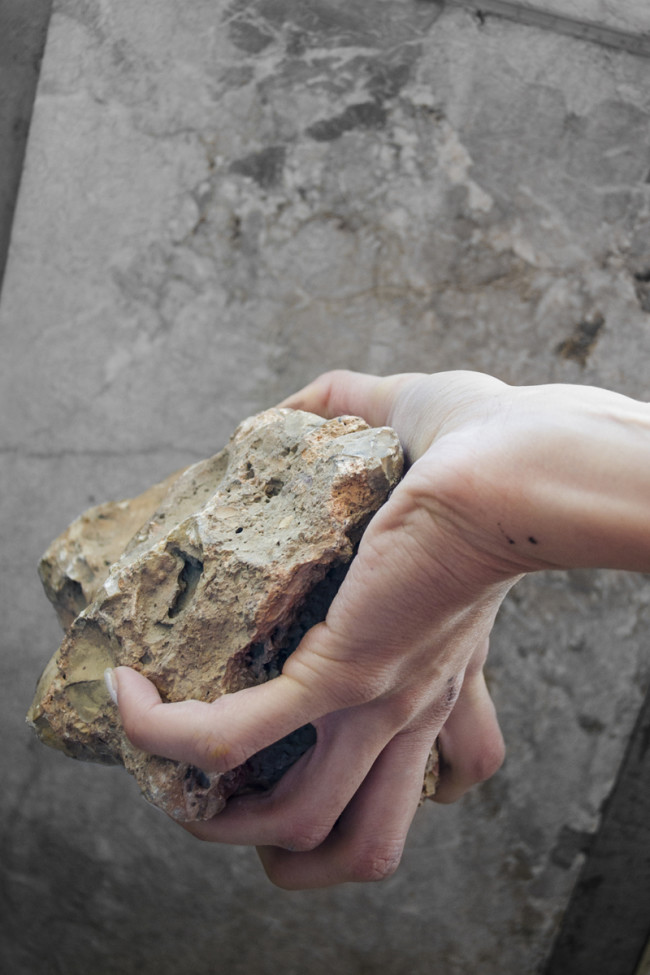
NOWs: Don‘t think about death by Dan Stockholm
NOWs:
Dan Stockholm: Nourhan Sondok 2017, 20 x 30 cm, courtesy artist
Dan Stockholm: Don‘t think about death
at
REITER Berlin prospect
Opening reception: 27 April 2017, 6- 9 pm
Artist Talk: 29 June 2017, 7 pm
The concept of Danish artist Dan Stockholm’s solo show »Don’t think about death« started from the friendship formed between himself and Syrian artist, Nourhan Sondok. The two met on social media, and from behind their screens in Copenhagen and in Damascus, their correspondence has led to several new works specifically made for the exhibition spaces at R E I T E R | Berlin prospect.
In spite of the dangers faced in Syria, Nourhan has been collecting building fragments from all over Damascus. The fragments are compiled from a wide spectrum of constructions: from 4000-year-old columns; to newly constructed buildings destroyed in the Syrian conflict. The collection of fragments portrays Damascus, which is considered to be among the oldest continually inhabited cities in the world. The collection is part of a filmed performance where inhabitants of Damascus use the fragments of their city as tools to create drawings directly on the ground.
While Nourhan was collecting fragments in Damascus, Dan Stockholm has also been collecting building fragments throughout Berlin. The fragments will be used in the courtyard of the gallery during the opening of the exhibition, where inhabitants of Berlin will be invited to draw using the fragments of their city.
Other new works in the show include an archive of images printed on glass showing Nourhan’s hands whilst handling the fragments; and ‘Body~Build’, a series of new pre formative sculptures presented on scaffolding displays that merge the body and construction into one.
In »Don’t think about death« Stockholm examines ‘the fragment and the fragmented’ a recurring theme in his work. To Stockholm ‘the fragment’ inspires us to envision lost entities, but at the same time it encourages us to think about new beginnings. The fragment is a catalyst for imagining both the past and the future. Architecture is a frequent reference point in his work, as he concentrates on the conceptual fields of present and past, presence and absence, fleeting and enduring. Stockholm practices a “creative archaeology”, which includes field research and working with various findings. His recent work evolves from what he calls the “performative process,” a method that turns the finished piece into a vessel which carries the story of its own making. Stockholm uses sculpture as a storage medium, an interface, a link, or a passage through which environments and bodies – across temporal as well as spatial distances – are placed in relation to one another.
Dan Stockholm: Nourhan Sondok 2017, courtesy artist
NOWs:
Dan Stockholm: Nourhan Sondok 2017, courtesy artist
Dan Stockholm: Don‘t think about death
REITER Berlin prospect
Eröffnung: 27. April 2017, 18-21 h
Artist Talk: 29. June 2017, 19 h
Das Konzept der Einzelausstellung des dänischen Künstlers Dan Stockholm »Don’t think about death«, wurde inspiriert durch eine Freundschaft zwischen ihm und der Syrischen Künstlerin Nourhan Sondok, die er über ein soziales Medium kennenlernte. Die Korrespondenz hinter ihren Bildschirmen in Kopenhagen und Damaskus führte Stockholm zu mehreren neuen Werken, die er speziell für die Ausstellung bei R E I T E R | Berlin prospect konzipiert hat. Trotz der Gefahren in Syrien sammelte Nourhan Gebäudefragmente aus ganz Damaskus. Die Bruchstücke stammen aus einem breiten Spektrum von Architekturen: von 4000 Jahre alten Säulen bis zu neu errichteten Bauten, die im syrischen Konflikt zerstört wurden. Die Sammlung von Fragmenten ist eine Art Substrat von Damaskus, einer Stadt, die als eine der ältesten ständig bewohnten der Welt gilt. In einer gefilmten Performance verwenden Einwohner diese Relikte und Bruchstücke ihrer Stadt, um wie mit Kreide direkt auf die Straße zu zeichnen.
Zur Eröffnung der Ausstellung wird es im Stadtraum vor der Galerie in Berlin eine ähnliche Aktion geben, wobei Bruchstücke aus hiesiger Architektur benutzt werden. Stockholm schlägt somit eine ideelle Brücke zwischen beiden Städten. Diese wird flankiert durch eine Serie neuer Fotoarbeiten, welche die Ruinenstücke der syrischen Metropole in Nourhans Händen zeigen. Ein weiterer Schwerpunkt der Schau sind neue „Body-Built“ Skulpturen, die Körper und Konstruktion verbinden und auf speziellen Gerüstdisplays präsentiert werden.
Dan Stockholm: Nourhan Sondok 2017, courtesy artist
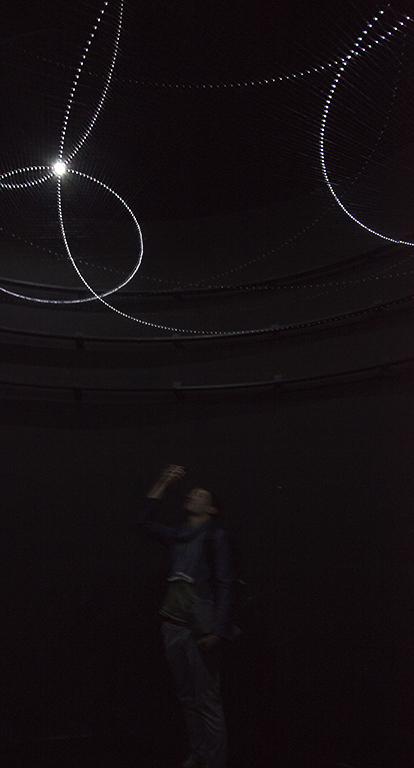
NOWs: Retreat into Darkness by Ivana Franke
Image: © Ivana Franke
NOWs:
Ivana Franke:
Retreat into Darkness. Towards a Phenomenology of the Unknown
Exhibition opening:
Wednesday, April 26, 2017, 6–9 p.m.
Hours: Thursday through Monday, 1–7 p.m.
except: June 24: 1–5 p.m.
Free admission
Schering Stiftung
Unter den Linden 32–34 | 10117 Berlin
Symposium “Towards a Phenomenology of the Unknown” in cooperation with SAVVY Contemporary
June 27, 2017, 11 a.m.–6 p.m.
Schering Stiftung/silent green Kuppelhalle
On June 27, 2017, the Ernst Schering Foundation organizes in cooperation with SAVVY Contemporary e.V. the symposium “Towards a Phenomenology of the Unknown” at the Kuppelhalle in Berlin. The symposium aims to explore the experience of seeing the “unknown” on a phenomenological level, while also shedding light on its transformative potential. The symposium is part of the project “Retreat into Darkness. Towards a Phenomenlogy of the Unknown” by the Berlin-based artist Ivana Franke. With Ivana Franke, vision scientist Bilge Sayim, curator and art historian Elena Agudio, artist and author Patricia Reed, science historian Jimena Canales, and Sylvia Pont, leader of the Perceptual Intelligence Lab in Delft.
How do we perceive and experience entities and events that we cannot properly categorize – how does the unknown as a subjective experience come about? What is the relationship between the unknown and the known within visual perceptual experiences, between the visible and the legible? What is the significance of the experience of the unknown in our lives, and what is its function in society?
These and other questions will be discussed by the speakers out of their various backgrounds. The symposium will provide a glimpse into this fascinating, little investigated aspect of human experience, while letting the audience engage in a scientific and artistic voyage into the mysteries of perception and the human mind – into how we fundamentally encounter and shape the world around us.
Registration
Please register by June 19 at anmeldung@scheringstiftung.de
Find the programm here.
Please note whether you will join the exhibition tour and the talks or the talks only.
–
The project Retreat into Darkness. Towards a Phenomenology of the Unknown by Ivana Franke investigates the limits of our perception.
“The peculiar property of the pure spirit is seeing, not knowing.” (Justinus Kerner)
Do we only see what we know? What can dislocate us from our comfortable, predefinded point of view and challenge our gaze on the world? With her new installation, Ivana Franke takes us into a visual and bodily experience able to break our preconceived idea of reality, lending it other dimensions that are decidedly fictive, imaginary, and cosmic. Creating “epistemological ruptures”, those experiences give us the capacity to imagine, to challenge existing common modes of knowledge, and to create room for different possible futures.
The project includes an exhibition curated by Elena Agudio, a symposium, and a publication, along with a series of experiments on the experience of seeing the unknown, conducted by the artist in collaboration with the vision scientist Bilge Sayim.
Further events:
Lange Nacht der Wissenschaften
June 24, 2017, 5–12 p.m.
Schering Stiftung
Lectures, artist talk, guided exhibition tours
With: Elena Agudio, Ivana Franke, Anil Seth, Philipp Sterzer, Melanie Wilke et al.
Tickets: www.langenachtderwissenschaften.de
Ivana Franke, Retreat into Darkness. Towards a Phenomenology of the Unknown, 2017. Schering Stiftung, Berlin. Film Mario Furicic
Image: © Ivana Franke
NOWs:
Ivana Franke:
Retreat into Darkness. Towards a Phenomenology of the Unknown
Ausstellungseröffnung:
Mittwoch, 26. April 2017, 18–21 Uhr
Öffnungszeiten: Donnerstag bis Montag, 13–19 Uhr
außer: 24.06.: 13–17 Uhr
Eintritt frei.
Schering Stiftung
Unter den Linden 32–34 | 10117 Berlin
Symposium “Towards a Phenomenology of the Unknown” in cooperation with SAVVY Contemporary
June 27, 2017, 11 a.m.–6 p.m.
Schering Stiftung/silent green Kuppelhalle
Am 27. Juni 2017 veranstaltet die Schering Stiftung in Kooperation mit SAVVY Contemporary e.V. das Symposium „Towards a Phenomenology of the Unknown“ in der Kuppelhalle in Berlin. Ziel des Symposiums ist es, die Seherfahrung des „Unbekannten“ auf phänomenologischer Ebene auszuloten und gleichzeitig ihr transformatives Potenzial zu beleuchten. Das Symposium ist Teil des Projekts „Retreat into Darkness. Towards a Phenomenlogy of the Unknown“ (Rückzug in die Dunkelheit. Annäherung an eine Phänomenologie des Unbekannten) der in Berlin lebenden Künstlerin Ivana Franke. Mit Ivana Franke, Bilge Sayim (Forschungsprofessur Vision Science), Elena Agudio (Kuratorin und Kunsthistorikern), Patricia Reed (Künstlerin und Autorin), Jimena Canales (Wissenschaftshistorikerin) und Sylvia Pont (Leiterin des Perceptual Intelligence Lab in Delft).
Wie ist unsere Wahrnehmung und Erfahrung von Dingen und Ereignissen, die wir nicht richtig einordnen können – wie entsteht das Unbekannte als subjektive Erfahrung? Wie verhalten sich Unbekanntes und Bekanntes, Sicht- und Lesbares innerhalb visueller Wahrnehmungserfahrungen? Welche Bedeutung hat die Erfahrung des Unbekannten in unserem Leben, und worin besteht ihre gesellschaftliche Funktion?
Diese und andere Fragen werden von den Referenten aus ihren jeweiligen Perspektiven diskutiert. Das Symposium liefert Einblicke in diesen faszinierenden, aber wenig erkundeten Aspekt der menschlichen Erfahrung und nimmt das Publikum mit auf eine wissenschaftliche und künstlerische Reise in die Rätsel der Wahrnehmung und des menschlichen Geistes – in die Art und Weise, wie wir der Welt um uns herum begegnen und sie gestalten.
Anmeldung
Um Anmeldung bis 19. Juni wird gebeten unter anmeldung@scheringstiftung.de
Find the programm here.
Bitte geben Sie an, ob Sie an der Ausstellungsführung und den Vorträgen oder nur an den Vorträgen teilnehmen werden.
–
Das Projekt Retreat into Darkness. Towards a Phenomenology of the Unknown (Rückzug in die Dunkelheit. Annäherung an eine Phänomenologie des Unbekannten) der Künstlerin Ivana Franke untersucht die Grenzen unserer Wahrnehmung.
„Die Eigenschaft des reinen Geistes ist das Schauen und nicht das Wissen.“ (Justinus Kerner)
Sehen wir nur, was wir wissen? Wie können wir uns von unseren bequemen und vorgefertigten Sehgewohnheiten lösen und unseren Blick auf die Welt hinterfragen?
In ihrer neuen Installation bietet Ivana Franke dem Betrachter eine visuelle und körperliche Erfahrung, mit der sich unsere vorgefasste Sicht auf die Realität durchbrechen lässt und ihr damit andere, entschieden fiktive, imaginäre und kosmische Dimensionen verleiht. Indem diese Erfahrungen „epistemologische Brüche“ kreieren, regen sie unser Vorstellungsvermögen an und ermöglichen es uns, bestehende Wissensmodi infragezustellen und alternative Zukunftsentwürfe zu entwickeln.
Das Projekt umfasst neben der von Elena Agudio kuratierten Ausstellung ein Symposium und eine Publikation sowie eine Reihe von Experimenten zur visuellen Wahrnehmung des Unbekannten, die von der Künstlerin in Zusammenarbeit mit dem Wissenschaftler Bilge Sayim durchgeführt werden.
Weitere Veranstaltungen:
Symposium “Towards a Phenomenology of the Unknown” in Kooperation mit SAVVY Contemporary
27.6.17, 11–18 Uhr
Schering Stiftung/silent green Kuppelhalle
Anmeldung unter anmeldung@scheringstiftung.de.
Die Schering Stiftung ist Partner der Langen Nacht der Wissenschaften 2017.
Lange Nacht der Wissenschaften
24.6.17, 17–24 Uhr
Schering Stiftung
Vorträge, Künstlergespräch, Ausstellungsführungen
Mit: Elena Agudio, Ivana Franke, Anil Seth, Philipp Sterzer, Melanie Wilke u. a.
Tickets: www.langenachtderwissenschaften.de
Ivana Franke, Retreat into Darkness. Towards a Phenomenology of the Unknown, 2017. Schering Stiftung, Berlin. Film Mario Furicic
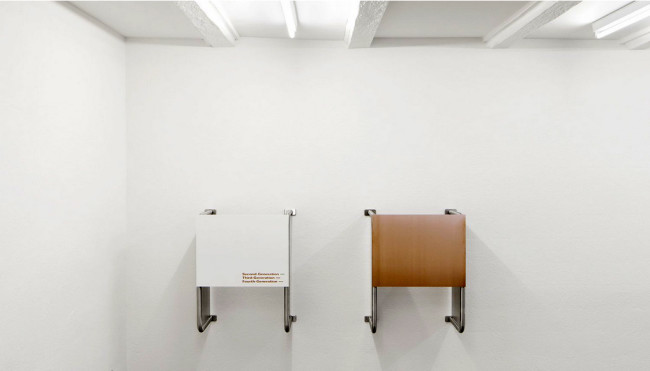
NOWs: Matthias Sohr. Residencies OPEN
Matthias Sohr: untitled (Bilateral Relations), 2016. (Detail). Courtesy the artist.
NOWs:
Matthias Sohr
at Residencies OPEN
NTU Centre for Contemporary Arts Singapore
Residencies OPEN offers a rare insight into the often introverted spaces of the artists’ studios. Through showcasing discussions, performances, research, and works-in-progress, Residencies OPEN profiles the diversity of contemporary art practice and the divergent ways artists conceive artwork with the studio as a constant space for experimentation and research.
Premised upon the methodologies of ethnographic fieldwork, the artistic practice of Matthias Sohr results in sculptures and installations that draw from technology and social sciences to reflect a wide range of research interests. During his three-month residency, Sohr will gradually transform his studio into a temporary space for the production of sculptures and installations that refine existing strands of research and explore new possible developments. Taking advantage of Singapore’s position as a science and technology hub, Sohr will dedicate his residency to refine existing strands of work and explore new ones. He aims to advance his research on the history, materials, and aesthetics of Printed Circuit Board (PCB) and, also, to pursue his investigation into the accessibility of art spaces for the disabled. During the residency, Sohr will gradually transform his studio into a temporary space for the production of new sculptures and installations.
MATTHIAS SOHR (b. 1980, Germany/Switzerland) obtained a Master of Visual Arts from the University of Art and Design Lausanne, Switzerland in 2013. He has been a visiting lecturer at the University of Arts and Industrial Design Linz, Austria (2011–2012); Berlin University of the Arts, Institute of Spatial Experiments, Germany (2010). His work has been exhibited at Museum of Contemporary Art Tokyo (MOT), Japan (2011) and Neue Nationalgalerie, Berlin, Germany (2014), among others.
Matthias Sohr: untitled (Bilateral Relations), 2016. (Detail). Courtesy the artist.
This edition of Residencies OPEN takes place on the occasion of the Singapore Art Book Fair 2017 and features Chris Chong Chan Fui (Malaysia), Choy Ka Fai (Singapore), Lucy Davis (Uganda/France) Hu Yun (China), Geraldine Kang (Singapore), Souliya Phoumivong (Laos), and Matthias Sohr (Germany/Switzerland).
BIOGRAPHIES:
Chris Chong Chan Fui (b. 1982, Malaysia) questions and redirects the processes and methodologies within varying fields such as migration, economics, natural sciences through moving images, projections, printmaking, photography, and installations. Chong has exhibited his works at Palais de Tokyo, Paris, France (2015); Hirshhorn Museum & Sculpture Garden, Smithsonian Institute, Washington D.C., United States (2010). He has also premiered at prestigious film festivals such as the Directors’ Fortnight, Cannes, France (2009).
Choy Ka Fai (b. 1979, Singapore) is an artist and performance maker inspired by histories and theorizations that explore the uncertainties of the future. His research springs from a desire to understand the conditioning of the human body, its intangible memories, and the forces shaping its expressions. His projects have been presented in major festival worldwide, including Sadler’s Wells London, United Kingdom (2016), and ImPulsTanz Festival, Vienna, Austria (2015).
Lucy Davis (b. 1970, Uganda/France) encircles nature in art, visual culture, materiality, and memory in Southeast Asia. In 2010, she founded The Migrant Ecologies Project to lead inquiries into questions of culture and nature in Southeast Asia. Her work has been featured in numerous institutions internationally. Her writings have been published in several catalogues and anthologies. She was Founding Editor of the Singapore critical publication series FOCAS Forum on Contemporary Art & Society (2000 – 2007).
Geraldine Kang (b. 1988, Singapore) uses photography as a means of introspection and as a tool to negotiate identities within physical and psychological spaces. Combining photography with objects she creates installations that address a range of topics from family, community, and mental illness to site-explorations of the undercurrents and ambivalences of familiar places. She currently focuses on issues related to migrant labour in Singapore. Her works have been presented at ifa Gallery in Berlin, Germany (2015) and ONSITE Artfest, Taipei, Taiwan (2016).
The work of Hu Yun (b. 1986, China) ranges from drawing and watercolours to performance, video, and installation. Delving into personal and historical narratives, Hu is interested in modernities and the way in which they are mobilised and reinterpreted in different local contexts. His works have been exhibited at the 11th Gwangju Biennale, The Eight Climate (What Does Art Do?) (2016); Power Station of Art, Shanghai, China (2015); and National History Museum, London, United Kingdom (2010).
Souliya Phoumivong (b. 1983, Laos) is a media artist working with film, video art, photography, and clay animation. He is currently lecturer at National Institute of Fine Arts, Vientiane, Laos. His work embraces the ever-changing landscape of media and digital equipment in Laos, and the adaptation of a younger generation to a fast paced life. Most recently he participated in the exhibition Missing Links, Jim Thompson Art Center, Bangkok, Thailand (2015).
Matthias Sohr: untitled (Bilateral Relations), 2016. (Detail). Courtesy the artist.
NOWs:
Matthias Sohr
at Residencies OPEN
NTU Centre for Contemporary Arts Singapore
Residencies OPEN offers a rare insight into the often introverted spaces of the artists’ studios. Through showcasing discussions, performances, research, and works-in-progress, Residencies OPEN profiles the diversity of contemporary art practice and the divergent ways artists conceive artwork with the studio as a constant space for experimentation and research.
Premised upon the methodologies of ethnographic fieldwork, the artistic practice of Matthias Sohr results in sculptures and installations that draw from technology and social sciences to reflect a wide range of research interests. During his three-month residency, Sohr will gradually transform his studio into a temporary space for the production of sculptures and installations that refine existing strands of research and explore new possible developments. Taking advantage of Singapore’s position as a science and technology hub, Sohr will dedicate his residency to refine existing strands of work and explore new ones. He aims to advance his research on the history, materials, and aesthetics of Printed Circuit Board (PCB) and, also, to pursue his investigation into the accessibility of art spaces for the disabled. During the residency, Sohr will gradually transform his studio into a temporary space for the production of new sculptures and installations.
MATTHIAS SOHR (b. 1980, Germany/Switzerland) obtained a Master of Visual Arts from the University of Art and Design Lausanne, Switzerland in 2013. He has been a visiting lecturer at the University of Arts and Industrial Design Linz, Austria (2011–2012); Berlin University of the Arts, Institute of Spatial Experiments, Germany (2010). His work has been exhibited at Museum of Contemporary Art Tokyo (MOT), Japan (2011) and Neue Nationalgalerie, Berlin, Germany (2014), among others.
Matthias Sohr: untitled (Bilateral Relations), 2016. (Detail). Courtesy the artist.
This edition of Residencies OPEN takes place on the occasion of the Singapore Art Book Fair 2017 and features Chris Chong Chan Fui (Malaysia), Choy Ka Fai (Singapore), Lucy Davis (Uganda/France) Hu Yun (China), Geraldine Kang (Singapore), Souliya Phoumivong (Laos), and Matthias Sohr (Germany/Switzerland).
BIOGRAPHIES:
Chris Chong Chan Fui (b. 1982, Malaysia) questions and redirects the processes and methodologies within varying fields such as migration, economics, natural sciences through moving images, projections, printmaking, photography, and installations. Chong has exhibited his works at Palais de Tokyo, Paris, France (2015); Hirshhorn Museum & Sculpture Garden, Smithsonian Institute, Washington D.C., United States (2010). He has also premiered at prestigious film festivals such as the Directors’ Fortnight, Cannes, France (2009).
Choy Ka Fai (b. 1979, Singapore) is an artist and performance maker inspired by histories and theorizations that explore the uncertainties of the future. His research springs from a desire to understand the conditioning of the human body, its intangible memories, and the forces shaping its expressions. His projects have been presented in major festival worldwide, including Sadler’s Wells London, United Kingdom (2016), and ImPulsTanz Festival, Vienna, Austria (2015).
Lucy Davis (b. 1970, Uganda/France) encircles nature in art, visual culture, materiality, and memory in Southeast Asia. In 2010, she founded The Migrant Ecologies Project to lead inquiries into questions of culture and nature in Southeast Asia. Her work has been featured in numerous institutions internationally. Her writings have been published in several catalogues and anthologies. She was Founding Editor of the Singapore critical publication series FOCAS Forum on Contemporary Art & Society (2000 – 2007).
Geraldine Kang (b. 1988, Singapore) uses photography as a means of introspection and as a tool to negotiate identities within physical and psychological spaces. Combining photography with objects she creates installations that address a range of topics from family, community, and mental illness to site-explorations of the undercurrents and ambivalences of familiar places. She currently focuses on issues related to migrant labour in Singapore. Her works have been presented at ifa Gallery in Berlin, Germany (2015) and ONSITE Artfest, Taipei, Taiwan (2016).
The work of Hu Yun (b. 1986, China) ranges from drawing and watercolours to performance, video, and installation. Delving into personal and historical narratives, Hu is interested in modernities and the way in which they are mobilised and reinterpreted in different local contexts. His works have been exhibited at the 11th Gwangju Biennale, The Eight Climate (What Does Art Do?) (2016); Power Station of Art, Shanghai, China (2015); and National History Museum, London, United Kingdom (2010).
Souliya Phoumivong (b. 1983, Laos) is a media artist working with film, video art, photography, and clay animation. He is currently lecturer at National Institute of Fine Arts, Vientiane, Laos. His work embraces the ever-changing landscape of media and digital equipment in Laos, and the adaptation of a younger generation to a fast paced life. Most recently he participated in the exhibition Missing Links, Jim Thompson Art Center, Bangkok, Thailand (2015).
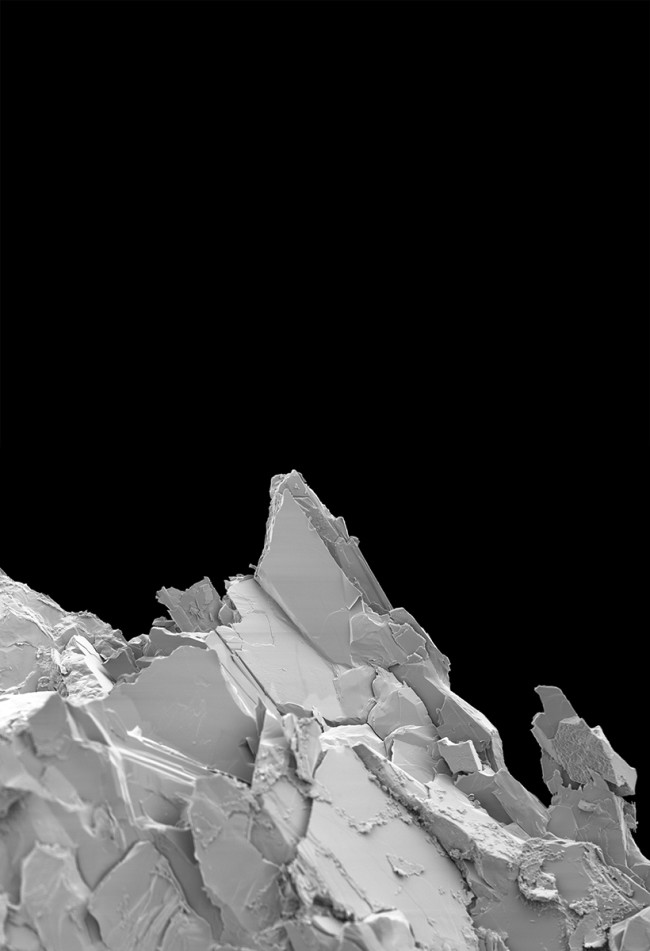
NOWs: Endpunkt Europa by Felix Kiessling
NOWs:
Felix Kiessling: Endpunkt Europa, 2017
Felix Kiessling
Meere und Ozeane
ENDPUNKT EUROPA
MS Wissenschaft
24.4. – 31.12. 2017
Bonn, Brassertufer
Die Mikroskopaufnahmen zeigen den nördlichsten Punkt des europäischen Festlandes, Kinnarodden in Norwegen, und den südlichsten Punkt in Tarifa, Spanien. Der Künstler legt den äußersten Punkt der Küste fest, entnimmt dort eine Bruchstück des nördlichstes und südlichstes Ende Europas. Die Suche nach dem Ende geht weiter: Ein sandkorngroßes Gesteinsstück wird mit einem Elektronenmikroskop untersucht. In der Kleinheit seiner Struktur nähern wir uns seinem äußersten Endpunkt weiter an. Felix Kiessling ermöglicht es dem Betrachter einen Punkt zu bereisen, den es eigentlich nicht gibt.
Der Film ENDPUNKT EUROPA (2017) dokumentiert die Reise des Künstlers, der sich für seine Arbeit auf die Suche nach den äußersten Punkten Europas begibt.
ENDPUNKT EUROPA (2017) von Felix Kiessling
Produktion: Marietta Auras
DoP: Cedric Retzmann
Schnitt: Philipp Müller
Finanzierung: MS Wissenschaft / Wissenschaft im Dialog / Bundesministerium für Bildung und Forschung
‘WIR SIND UMGEBEN VON GRENZEN UND KARTOGRAPHIE. FELIX KIESSLING ERMÖGLICHT ES DEM BETRACHTER, EINEN PUNKT ZU BEREISEN, DEN ES EIGENTLICH NICHT GIBT. EINEN PUNKT, DER FÜR UNSERE KARTOGRAPHIE ZU KLEIN IST, FÜR DEN UNSERE KARTOGRAPHIE ZU GROB IST. EIN PUNKT, DER MIT NOCH DETAILLIERTERER, NOCH PRÄZISERER BEOBACHTUNG EIGENTLICH EIN ANDERER WÄRE. EIN PUNKT, DER UNGREIFBAR BLEIBT. EIN PUNKT, DER NICHT KARTOGRAPHIERT WERDEN KANN. EIN PUNKT, DER SOMIT KEINE GRENZE MARKIEREN KANN, DER STÄNDIG IN BEWEGUNG BLEIBT, DESSEN GENAUE VERORTUNG, LÄNGE UND FORM SICH STETIG VERÄNDERT UND VON UNS ALS BETRACHTENDE ABHÄNGIG IST.’
Lydia Ahrens, 2016
NOWs:
Felix Kiessling: Endpunkt Europa, 2017
Felix Kiessling
Meere und Ozeane
ENDPUNKT EUROPA
MS Wissenschaft
24.4. – 31.12. 2017
Bonn, Brassertufer
Die Mikroskopaufnahmen zeigen den nördlichsten Punkt des europäischen Festlandes, Kinnarodden in Norwegen, und den südlichsten Punkt in Tarifa, Spanien. Der Künstler legt den äußersten Punkt der Küste fest, entnimmt dort eine Bruchstück des nördlichstes und südlichstes Ende Europas. Die Suche nach dem Ende geht weiter: Ein sandkorngroßes Gesteinsstück wird mit einem Elektronenmikroskop untersucht. In der Kleinheit seiner Struktur nähern wir uns seinem äußersten Endpunkt weiter an. Felix Kiessling ermöglicht es dem Betrachter einen Punkt zu bereisen, den es eigentlich nicht gibt.
Der Film ENDPUNKT EUROPA (2017) dokumentiert die Reise des Künstlers, der sich für seine Arbeit auf die Suche nach den äußersten Punkten Europas begibt.
ENDPUNKT EUROPA (2017) von Felix Kiessling
Produktion: Marietta Auras
DoP: Cedric Retzmann
Schnitt: Philipp Müller
Finanzierung: MS Wissenschaft / Wissenschaft im Dialog / Bundesministerium für Bildung und Forschung
‘WIR SIND UMGEBEN VON GRENZEN UND KARTOGRAPHIE. FELIX KIESSLING ERMÖGLICHT ES DEM BETRACHTER, EINEN PUNKT ZU BEREISEN, DEN ES EIGENTLICH NICHT GIBT. EINEN PUNKT, DER FÜR UNSERE KARTOGRAPHIE ZU KLEIN IST, FÜR DEN UNSERE KARTOGRAPHIE ZU GROB IST. EIN PUNKT, DER MIT NOCH DETAILLIERTERER, NOCH PRÄZISERER BEOBACHTUNG EIGENTLICH EIN ANDERER WÄRE. EIN PUNKT, DER UNGREIFBAR BLEIBT. EIN PUNKT, DER NICHT KARTOGRAPHIERT WERDEN KANN. EIN PUNKT, DER SOMIT KEINE GRENZE MARKIEREN KANN, DER STÄNDIG IN BEWEGUNG BLEIBT, DESSEN GENAUE VERORTUNG, LÄNGE UND FORM SICH STETIG VERÄNDERT UND VON UNS ALS BETRACHTENDE ABHÄNGIG IST.’
Lydia Ahrens, 2016
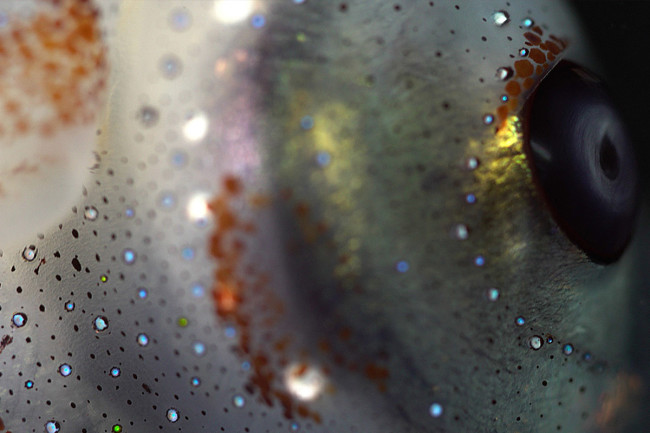
NOWs: Andreas Greiner and Raul Walch at Tokyo Wonder Site (TWS)
NOWs:
7 trans-phonies
Exhibition and Opening Talk
Date |Sat., 22 April 2017, 15:00-17:00
Venue |Tokyo Wonder Site, Shibuya
Participants|Andreas Greiner, Mirna Bamieh, Ligyung, Raul Walch, Erik Schmidt, Hou I-Ting
The exhibition “7 trans-phonies” presents works by 7 creators who stayed at the TWS Residency from 2015 to 2016. The borderless city of Tokyo produces diverse harmonies and dissonances through the gathering and overlapping of individual voices. And what we hear as single sounds actually contain multiple sine waves. Creators who come to Tokyo from overseas hear the voices of foreign cultures, of their neighbors in this foreign country, of the artists they meet in Tokyo, and combine them with their own voices to create a new kind of voice/sound “trans-phony” which transcends cultural differences. Come and experience the 7 trans-phonies produced by these 7 creators.
In 2006, Tokyo Wonder Site (TWS) launched the “Creator-in-Residence” program, which offers residence/production opportunities to creators from around the world. People of various nationalities and creative fields, such as art, film, music and architecture, reside and carry out their work in Tokyo and residency sites overseas.
====================================
More information, see Flyer.
Raul Walch: Fabric & Space from 2015, Tokyo (see fabric&space). The works were realized during a residency at Tokyo Wonder Site in Japan, 2015.TW
Andreas Greiner: Eye of the Hotaru Ika squid, still from Studies of an Alien Skin, 2016, photo by Paul Rohlfs
Andreas Greiner: Still from Studies of an Alien Skin, 2016, photo by Paul Rohlfs
NOWs:
7 trans-phonies
Exhibition and Opening Talk
Date |Sat., 22 April 2017, 15:00-17:00
Venue |Tokyo Wonder Site, Shibuya
Participants|Andreas Greiner, Mirna Bamieh, Ligyung, Raul Walch, Erik Schmidt, Hou I-Ting
The exhibition “7 trans-phonies” presents works by 7 creators who stayed at the TWS Residency from 2015 to 2016. The borderless city of Tokyo produces diverse harmonies and dissonances through the gathering and overlapping of individual voices. And what we hear as single sounds actually contain multiple sine waves. Creators who come to Tokyo from overseas hear the voices of foreign cultures, of their neighbors in this foreign country, of the artists they meet in Tokyo, and combine them with their own voices to create a new kind of voice/sound “trans-phony” which transcends cultural differences. Come and experience the 7 trans-phonies produced by these 7 creators.
In 2006, Tokyo Wonder Site (TWS) launched the “Creator-in-Residence” program, which offers residence/production opportunities to creators from around the world. People of various nationalities and creative fields, such as art, film, music and architecture, reside and carry out their work in Tokyo and residency sites overseas.
====================================
More information, see Flyer.
Raul Walch: Fabric & Space from 2015, Tokyo (see fabric&space). The works were realized during a residency at Tokyo Wonder Site in Japan, 2015.TW
Andreas Greiner: Eye of the Hotaru Ika squid, still from Studies of an Alien Skin, 2016, photo by Paul Rohlfs
Andreas Greiner: Still from Studies of an Alien Skin, 2016, photo by Paul Rohlfs
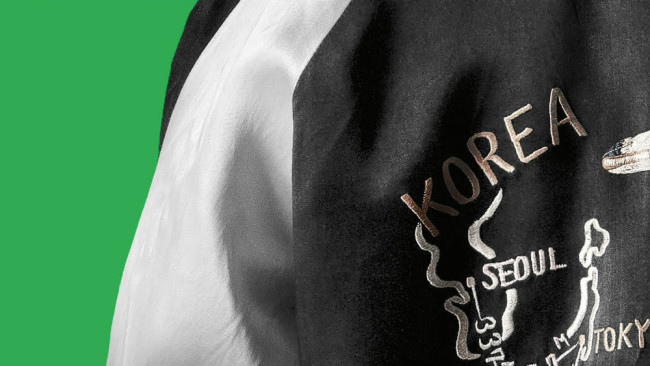
NOWs: 2 or 3 Tigers
NOWs:
2 or 3 Tigers
at
Haus der Kulturen der Welt
Berlin, Germany
Opening: April 20, 8pm
Opening program: April 20–23, 2017
Wherever humans have lived in a shared habitat with the tiger, mythology reflects the animal’s status as a liminal figure, closely related to the community, and yet marking its beyond. As a creature of mountains and borderlands, the tiger occupies a transitory zone separating civilization from wilderness, the living from the ancestor-spirit world.
As co-species and mythical symbol, the tiger plays an important role as a medium at the limits of society, carrying an imprint of how contemporary cultures have been shaped by encounters with otherness. The emblematic image of the tiger opens deep historical insights into the rapid remaking of human society since the dawn of colonial modernity.
At the same time as tigers were driven to near extinction, they leap into the imaginary of national modernity as a recurring ghost, and as symbols of national power, military might, and economic development they bind the hypermodern present to the colonial and pre-colonial past.
The works in the exhibition approach collective memories by questioning the historical nature of mediation, including its means of representation. They reflect on the changing nature of mass media and search for complex images that serve as sites for shared experiences of history. 2 or 3 Tigers derives its title from the work of artist, filmmaker and theater creator Ho Tzu Nyen, who explores the shifting shapes of tigers and weretigers in the ancient and modern mythology of Malaysia and Singapore.
Contributions from Park Chan-kyong, Jane Jin Kaisen and Guston Sondin-Kung reflect on histories of suppression, militarization, and exploitation in Cold War era Japan and Korea that haunt the geopolitics of the Pacific to this day. While installations by Yuichiro Tamura and IM Heung-soon present the tiger as an iconic medium of Asian military nationalism, a film by James T. Hong investigates the cultural dimensions of the tensions unfolding around several disputed East Asian islands to the present day. Photographs by Lieko Shiga made in the aftermath of the 2011 Tsunami in Japan; a digital 3D matrix by Chia-Wei Hsu of a Chinese deity displaced by the Cultural Revolution; and a large installation featuring a filmed performance along Seoul’s Han River paired with a ritualistic ensemble of sculptures transfiguring a broadcast station by Minouk Lim: all explore rapidly changing cosmologies and reverberations of animism and its forms of mediation across different political and technological registers.
Works by Ho Tzu Nyen, James T. Hong, Hsu Chia-wei, IM Heung-Soon, Jane Jin Kaisen & Guston Sondin-Kung, Minouk Lim, Park Chan-Kyong, Lieko Shiga, Tamura Yuichiro.
Curated by Anselm Franke and Hyunjin Kim
The exhibition is based in parts on the group exhibition Interrupted Survey, curated by Anselm Franke for ACC Gwangju and on view there until August 2017.
Part of 100 Years of Now
Poster image: Yuichiro Tamura: Hey Daddy, Hey Brother, 2017 (detail).
NOWs:
2 or 3 Tigers
at
Haus der Kulturen der Welt
Berlin, Germany
Opening: April 20, 8pm
Opening program: April 20–23, 2017
Wherever humans have lived in a shared habitat with the tiger, mythology reflects the animal’s status as a liminal figure, closely related to the community, and yet marking its beyond. As a creature of mountains and borderlands, the tiger occupies a transitory zone separating civilization from wilderness, the living from the ancestor-spirit world.
As co-species and mythical symbol, the tiger plays an important role as a medium at the limits of society, carrying an imprint of how contemporary cultures have been shaped by encounters with otherness. The emblematic image of the tiger opens deep historical insights into the rapid remaking of human society since the dawn of colonial modernity.
At the same time as tigers were driven to near extinction, they leap into the imaginary of national modernity as a recurring ghost, and as symbols of national power, military might, and economic development they bind the hypermodern present to the colonial and pre-colonial past.
The works in the exhibition approach collective memories by questioning the historical nature of mediation, including its means of representation. They reflect on the changing nature of mass media and search for complex images that serve as sites for shared experiences of history. 2 or 3 Tigers derives its title from the work of artist, filmmaker and theater creator Ho Tzu Nyen, who explores the shifting shapes of tigers and weretigers in the ancient and modern mythology of Malaysia and Singapore.
Contributions from Park Chan-kyong, Jane Jin Kaisen and Guston Sondin-Kung reflect on histories of suppression, militarization, and exploitation in Cold War era Japan and Korea that haunt the geopolitics of the Pacific to this day. While installations by Yuichiro Tamura and IM Heung-soon present the tiger as an iconic medium of Asian military nationalism, a film by James T. Hong investigates the cultural dimensions of the tensions unfolding around several disputed East Asian islands to the present day. Photographs by Lieko Shiga made in the aftermath of the 2011 Tsunami in Japan; a digital 3D matrix by Chia-Wei Hsu of a Chinese deity displaced by the Cultural Revolution; and a large installation featuring a filmed performance along Seoul’s Han River paired with a ritualistic ensemble of sculptures transfiguring a broadcast station by Minouk Lim: all explore rapidly changing cosmologies and reverberations of animism and its forms of mediation across different political and technological registers.
Works by Ho Tzu Nyen, James T. Hong, Hsu Chia-wei, IM Heung-Soon, Jane Jin Kaisen & Guston Sondin-Kung, Minouk Lim, Park Chan-Kyong, Lieko Shiga, Tamura Yuichiro.
Curated by Anselm Franke and Hyunjin Kim
The exhibition is based in parts on the group exhibition Interrupted Survey, curated by Anselm Franke for ACC Gwangju and on view there until August 2017.
Part of 100 Years of Now
Poster image: Yuichiro Tamura: Hey Daddy, Hey Brother, 2017 (detail).
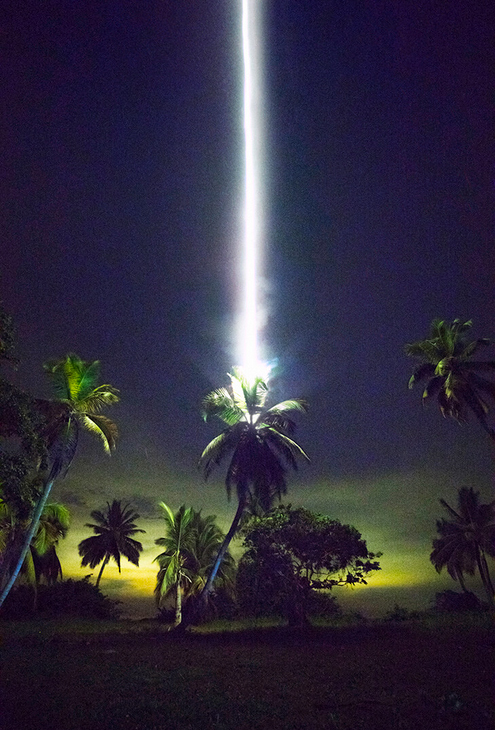
NOWs: Good Weather by Julius von Bismarck
NOWs:
Julius von Bismarck: Good Weather
Marlborough Contemporary, New York
Marlborough Contemporary presents the second solo exhibition by Julius von Bismarck. Although based in Berlin, this globetrotting artist rarely sits still and has visited four continents, including Antarctica, in the past four months alone. Emerging from recent trips to Colombia, Venezuela and Mexico, this body of work continues von Bismarck’s explorations of the intersection of human beings and the relentless forces of nature. The sculptures, photographs and video included here investigate the territory between our Victorian inclination toward a taming taxonomy and a cruel and chaotic reality. The exhibition as a whole acts as a highly distilled and museologically ordered document of extreme power and violence.
Situating the jungle as both a potent symbol of Western fear and a romanticized rainforest ecosystem, von Bismarck creates a visceral tension for his audience. The video entitled Talking to Thunder depicts the artist’s attempts at taming a bolt of lightning. By firing an aluminum rocket (equipped with a grounding wire of braided Kevlar, copper and silver) into a raging storm he is able to complete a circuit of tremendous power between the sky and the ground. The result, captured on video and in still photographs, appears to literally straighten the lightning bolt in its path to the ground. Designed as eventual sculptures, the rockets themselves are included here, lightning-struck relics, loaded with the history of this communion. Like a Colonial scientist, von Bismarck has collected plant species from jungle. Rather than pressing tiny flowers in a notebook, the artist has pressed large plants and entire palm trees into flattened specimens. Heated to a precise 250 degrees in an enormous custom-built oven and a 50-ton hydraulic press, the plants are completely dehydrated without losing their verdant coloration, and squashed astonishingly flat. They are then backed with thin stainless steel to maintain their shape for presentation.
NOWs:
Julius von Bismarck: Good Weather
Marlborough Contemporary, New York
Marlborough Contemporary presents the second solo exhibition by Julius von Bismarck. Although based in Berlin, this globetrotting artist rarely sits still and has visited four continents, including Antarctica, in the past four months alone. Emerging from recent trips to Colombia, Venezuela and Mexico, this body of work continues von Bismarck’s explorations of the intersection of human beings and the relentless forces of nature. The sculptures, photographs and video included here investigate the territory between our Victorian inclination toward a taming taxonomy and a cruel and chaotic reality. The exhibition as a whole acts as a highly distilled and museologically ordered document of extreme power and violence.
Situating the jungle as both a potent symbol of Western fear and a romanticized rainforest ecosystem, von Bismarck creates a visceral tension for his audience. The video entitled Talking to Thunder depicts the artist’s attempts at taming a bolt of lightning. By firing an aluminum rocket (equipped with a grounding wire of braided Kevlar, copper and silver) into a raging storm he is able to complete a circuit of tremendous power between the sky and the ground. The result, captured on video and in still photographs, appears to literally straighten the lightning bolt in its path to the ground. Designed as eventual sculptures, the rockets themselves are included here, lightning-struck relics, loaded with the history of this communion. Like a Colonial scientist, von Bismarck has collected plant species from jungle. Rather than pressing tiny flowers in a notebook, the artist has pressed large plants and entire palm trees into flattened specimens. Heated to a precise 250 degrees in an enormous custom-built oven and a 50-ton hydraulic press, the plants are completely dehydrated without losing their verdant coloration, and squashed astonishingly flat. They are then backed with thin stainless steel to maintain their shape for presentation.
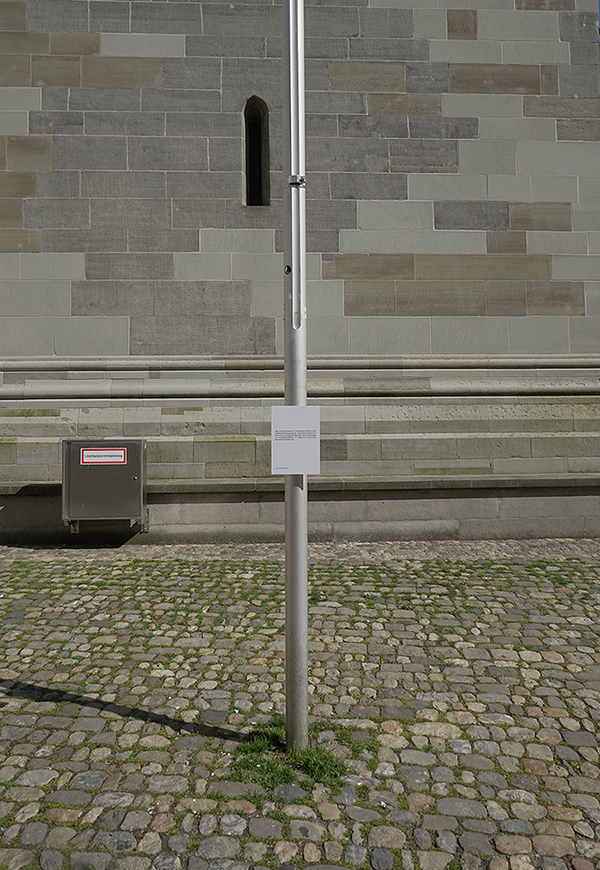
NOWs: Weltwasserspiegelsenkung by Felix Kiessling
Felix Kiessling: Weltwasserspiegelsenkung Konstanz, Entnahme, 2016
NOWs:
Felix Kiessling: Weltwasserspiegelsenkung Konstanz
Im Rahmen der
Kunstnacht Konstanz Kreuzlingen
Konstanz, Germany
8.4.2017 ab 18 Uhr
Felix Kiessling: Weltwasserspiegelsenkung Konstanz, 2016
Felix Kiessling: Weltwasserspiegelsenkung Konstanz, Entnahme, 2016
NOWs:
Felix Kiessling: Weltwasserspiegelsenkung Konstanz
Im Rahmen der
Kunstnacht Konstanz Kreuzlingen
Konstanz, Germany
8.4.2017 ab 18 Uhr
Felix Kiessling: Weltwasserspiegelsenkung Konstanz, 2016
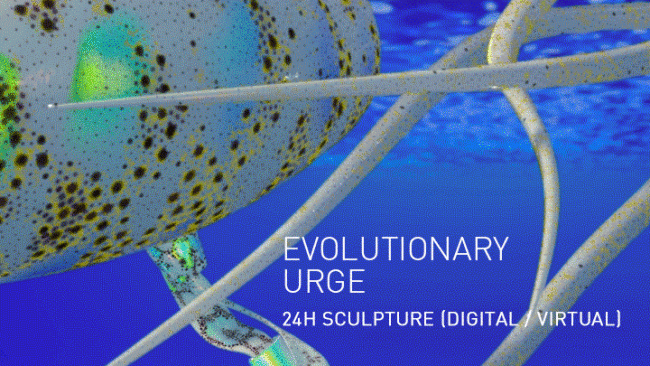
NOWs: Evolutionary Urge by Andreas Greiner & Ursula Ströbele
NOWs:
24 h exhibition at NAVEL, hosted by Jonas Wendelin
Evolutionary Urge. 24h Sculpture (Digital / Virtual). brings together artists that work in the field of digital, virtual and immaterial phenomena of sculpture. These sculptural boundaries question the traditional qualities of statue-like properties, its durability, haptique and its anthropomorphic ambitions, which are being scrutinized in favor of temporal, performative and interactive concepts. Alreaday in the 1960s, Herbert W. Franke, one of the most influential pioneers of computer graphics and digital art, sought to expand the boundaries of sculpture towards the virtual space: “Could the computer lead us also in new areas of sculptures? A way to find an answer is to ignore the mentioned conditions for physical realization and try to design not realizable 3D- forms.”
The exhibition focuses on works, that align themselves less with tradition but rather with new scientific findings and digital technology, e.g. virtual reality, artificial intelligence, digital image processes, and 3D printing. Evolutionary Urge. 24h Sculpture (Digital / Virtual). shows, how young artists today have further developed the idea of sculpture with these new sculptural tools and how they address contemporary phenomena, such as limited natural resources, the exponential growth of data traffic, which becomes currency itself, and the digitalization of human communication. This also changes the relevant discourse of sculpture.
NOWs:
24 h exhibition at NAVEL, hosted by Jonas Wendelin
Evolutionary Urge. 24h Sculpture (Digital / Virtual). brings together artists that work in the field of digital, virtual and immaterial phenomena of sculpture. These sculptural boundaries question the traditional qualities of statue-like properties, its durability, haptique and its anthropomorphic ambitions, which are being scrutinized in favor of temporal, performative and interactive concepts. Alreaday in the 1960s, Herbert W. Franke, one of the most influential pioneers of computer graphics and digital art, sought to expand the boundaries of sculpture towards the virtual space: “Could the computer lead us also in new areas of sculptures? A way to find an answer is to ignore the mentioned conditions for physical realization and try to design not realizable 3D- forms.”
The exhibition focuses on works, that align themselves less with tradition but rather with new scientific findings and digital technology, e.g. virtual reality, artificial intelligence, digital image processes, and 3D printing. Evolutionary Urge. 24h Sculpture (Digital / Virtual). shows, how young artists today have further developed the idea of sculpture with these new sculptural tools and how they address contemporary phenomena, such as limited natural resources, the exponential growth of data traffic, which becomes currency itself, and the digitalization of human communication. This also changes the relevant discourse of sculpture.
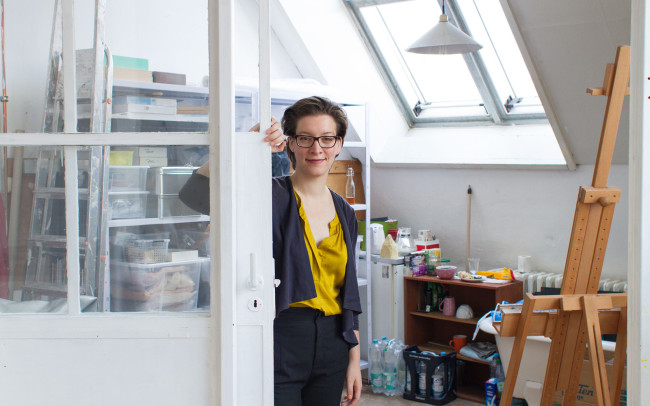
NOWs: In the Studio with Sophia Pompéry
NOWs:
Foto: Florian Langhammer
Collectors Agenda features:
Interview with Sophia Pompéry
»To Play a Trick on the Everyday«
Sophia Pompéry is an observer. In quiet concentration she draws poetic truths from the seemingly mundane. Her conceptual art works utilize everyday things and their underlying physics, inviting us to examine and get to know these presumed already known articles anew. In greeting us at her Berlin studio Sophia ignited a candle, suspended from the ceiling, with a wick at each end, which is known from her video Lighting Up, Burning Down. Burning from each end towards the center, the double-candle sets the duration of our conversation, similarly to an hourglass. Read MORE
NOWs:
Foto: Florian Langhammer
Collectors Agenda features:
Interview with Sophia Pompéry:
»To Play a Trick on the Everyday
Sophia Pompéry is an observer. In quiet concentration she draws poetic truths from the seemingly mundane. Her conceptual art works utilize everyday things and their underlying physics, inviting us to examine and get to know these presumed already known articles anew. In greeting us at her Berlin studio Sophia ignited a candle, suspended from the ceiling, with a wick at each end, which is known from her video Lighting Up, Burning Down. Burning from each end towards the center, the double-candle sets the duration of our conversation, similarly to an hourglass. Read MORE
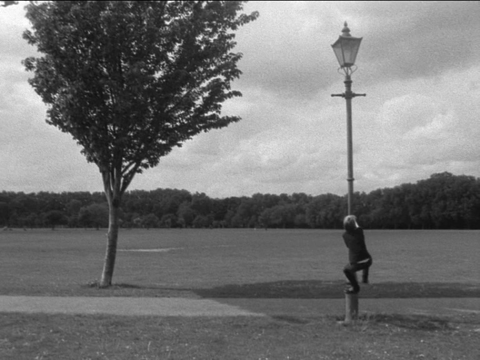
NOWs: Muscle Memory curated by Ece Pazarbaşı
NOWs:
MUSCLE MEMORY
Opening Fri 31 March at 7 pm
at
Kunstraum Kreuzberg/Bethanien
Artists: Adel Abidin, Jenny Baines, Maja Bajevic, Marcio Carvalho, Cevdet Erek, Ingo Gerken, Gözde İlkin, Marisa Maza, Ahmet Öğüt, Sophia Pompery, Svenja Schüffler and Vahit Tuna. Curator: Ece Pazarbaşı
For public programme, see: www.fieldkitchen-academy.org
The exhibition “Muscle Memory” is a multi-layered investigation into the notion of muscle memory, which is defined in neuroscience as a type of movement that becomes familiar to the muscles through repetition over time. It gives a metaphorical approach to how structures of power create and manipulate the memories of individuals through the biological mechanisms of their very own bodies. In doing so, the exhibition revisits the historical background of the Bethanien Hospital building as the ‘body’ of the project, incorporating the building and its vicinity into the exhibition as an embodiment of the muscle memory.
FIELD KITCHEN ACADEMY PROGRAMME
Doctors, Nurses and Artists – Artists talk with the participation of Adel Abidin, Jenny Baines, Marcio Carvalho, Ingo Gerken, Göde İlkin, Marisa Maza, Ahmet Öğüt, Sophia Pompery, Svenja Schüffler and Vahit Tuna.
Moderation: Ece Pazarbaşı
Sat 1 April at 7 pm
LOCATION: FORMER OPERATION WING (KUNSTRAUM KREUZBERG/ BETHANIEN)
—
Muscle Testing Workshop — an Introduction to Kinesiology by Heike Brunner, Alternative Medicine Practitioner
Wed 5 April at 7 pm
LOCATION: FORMER WASHHOUSE
—
Talk: Medical Neighborhoods — Healing Architecture by Álvaro Valera Sosa, Architect
Tue 18 April at 7 pm
LOCATION: FORMER OPERATION WING (KUNSTRAUM KREUZBERG/ BETHANIEN)
—
Talk: Fractals in Action: From procedural memory to motor hierarchies by Mauricio Dias Martins, MD PhD, Berlin School of Mind and Brain, Humboldt University zu Berlin/ Max Planck Institute for Human Cognitive and Brain Sciences
Thu 20 April at 7 pm
LOCATION: FORMER OPERATION WING (KUNSTRAUM KREUZBERG/ BETHANIEN)
—
Bethanien Parkour Workshop by Franz Schönberger, Headcoach at ParkourONE Berlin
Sun 7 May at 11.30 am
LOCATION: FORMER THE VICINITY OF THE BETHANIEN BUILDING
—
Symbol Body Workshop by Tugce Tuna, mover, body reader, choreographer, interdisciplinary performance and contemporary dance artist and academician.
Sun 21 May at 11:30 am
LOCATION: FORMER MORGUE
—
Releasing Repetition in Mind, Body and Soul Workshop by Sun Woo + Ji Woo, Zen Masters
Sun 4 June at 11:30 am
LOCATION: FORMER INFECTION UNIT
—
Guided Exhibition Tours with the Curator Ece Pazarbaşı
Sat 8 April at 12 pm; Sat 20 May at 12 pm; Sat 10 June at 12 pm
LOCATION: OPERATION WING (KUNSTRAUM KREUZBERG/ BETHANIEN)
—
Klein Technique™ Workshops by Hanna Hegenscheidt
Every week from Monday to Friday, 9.30–11.15 AM
Studio 142, 1st Floor, Kunstquartier Bethanien
—
Movement Training for Performers by Mime Centrum
Every week from Monday to Friday, 10–11.30 AM
Studio 2, Mime centrum, Kunstquartier Bethanien
* Meeting Point for all events: Kunstraum Kreuzberg/Bethanien. All events will be in English.
Der Kunstraum Kreuzberg/Bethanien ist eine Einrichtung des Stipendium. Unterstützt wird das Projekt durch das Institut für Auslandsbeziehungen IFA und dem Kulturinstitut Finnlands.
NOWs:
MUSCLE MEMORY
Opening Fri 31 March at 7 pm
at
Kunstraum Kreuzberg/Bethanien
Artists: Adel Abidin, Jenny Baines, Maja Bajevic, Marcio Carvalho, Cevdet Erek, Ingo Gerken, Gözde İlkin, Marisa Maza, Ahmet Öğüt, Sophia Pompery, Svenja Schüffler and Vahit Tuna. Curator: Ece Pazarbaşı
For public programme, see: www.fieldkitchen-academy.org
The exhibition “Muscle Memory” is a multi-layered investigation into the notion of muscle memory, which is defined in neuroscience as a type of movement that becomes familiar to the muscles through repetition over time. It gives a metaphorical approach to how structures of power create and manipulate the memories of individuals through the biological mechanisms of their very own bodies. In doing so, the exhibition revisits the historical background of the Bethanien Hospital building as the ‘body’ of the project, incorporating the building and its vicinity into the exhibition as an embodiment of the muscle memory.
FIELD KITCHEN ACADEMY PROGRAMME
Doctors, Nurses and Artists – Artists talk with the participation of Adel Abidin, Jenny Baines, Marcio Carvalho, Ingo Gerken, Göde İlkin, Marisa Maza, Ahmet Öğüt, Sophia Pompery, Svenja Schüffler and Vahit Tuna.
Moderation: Ece Pazarbaşı
Sat 1 April at 7 pm
LOCATION: FORMER OPERATION WING (KUNSTRAUM KREUZBERG/ BETHANIEN)
—
Muscle Testing Workshop — an Introduction to Kinesiology by Heike Brunner, Alternative Medicine Practitioner
Wed 5 April at 7 pm
LOCATION: FORMER WASHHOUSE
—
Talk: Medical Neighborhoods — Healing Architecture by Álvaro Valera Sosa, Architect
Tue 18 April at 7 pm
LOCATION: FORMER OPERATION WING (KUNSTRAUM KREUZBERG/ BETHANIEN)
—
Talk: Fractals in Action: From procedural memory to motor hierarchies by Mauricio Dias Martins, MD PhD, Berlin School of Mind and Brain, Humboldt University zu Berlin/ Max Planck Institute for Human Cognitive and Brain Sciences
Thu 20 April at 7 pm
LOCATION: FORMER OPERATION WING (KUNSTRAUM KREUZBERG/ BETHANIEN)
—
Bethanien Parkour Workshop by Franz Schönberger, Headcoach at ParkourONE Berlin
Sun 7 May at 11.30 am
LOCATION: FORMER THE VICINITY OF THE BETHANIEN BUILDING
—
Symbol Body Workshop by Tugce Tuna, mover, body reader, choreographer, interdisciplinary performance and contemporary dance artist and academician.
Sun 21 May at 11:30 am
LOCATION: FORMER MORGUE
—
Releasing Repetition in Mind, Body and Soul Workshop by Sun Woo + Ji Woo, Zen Masters
Sun 4 June at 11:30 am
LOCATION: FORMER INFECTION UNIT
—
Guided Exhibition Tours with the Curator Ece Pazarbaşı
Sat 8 April at 12 pm; Sat 20 May at 12 pm; Sat 10 June at 12 pm
LOCATION: OPERATION WING (KUNSTRAUM KREUZBERG/ BETHANIEN)
—
Klein Technique™ Workshops by Hanna Hegenscheidt
Every week from Monday to Friday, 9.30–11.15 AM
Studio 142, 1st Floor, Kunstquartier Bethanien
—
Movement Training for Performers by Mime Centrum
Every week from Monday to Friday, 10–11.30 AM
Studio 2, Mime centrum, Kunstquartier Bethanien
* Meeting Point for all events: Kunstraum Kreuzberg/Bethanien. All events will be in English.
Der Kunstraum Kreuzberg/Bethanien ist eine Einrichtung des Stipendium. Unterstützt wird das Projekt durch das Institut für Auslandsbeziehungen IFA und dem Kulturinstitut Finnlands.
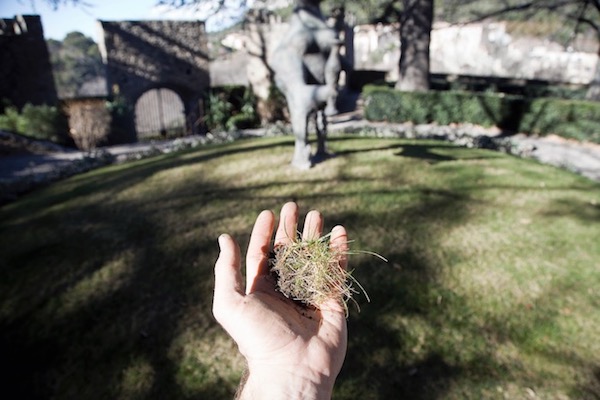
NOWs: RADITION by Fabian Knecht
Fabian Knecht, ZERSETZUNG, 2016
NOWs:
Fabian Knecht: RADITION
im
Kunstverein Arnsberg
Eröffnung: Freitag, 31. März 2017, 19 Uhr
Der Kunstverein Arnsberg zeigt die Einzelausstellung »RADITION« des Künstlers Fabian Knecht. Neben vier Werken, die in den Räumen des Kunstvereins zu sehen sind, wird die Arbeit »ISOLATION (Dead Tree)« zur Eröffnung am 31.3. von 18 bis 21 Uhr in einem Waldstück bei Arnsberg öffentlich zugänglich sein.
RADITION
Der Titel der Ausstellung »RADITION« variiert das fachsprachliche Verb »radizieren« – von lat. radix, Wurzel –, das in der Mathematik das Ziehen einer Wurzel bezeichnet. Metaphorisch verwendet, bezeichnet der Neologismus die Auseinandersetzung mit den Themen ›Entwurzelung‹ und Neuverortung, die in unterschiedlichen Formen und Facetten die Ausstellung strukturieren. Im Zentrum stehen Variationen des mittlerweile klassischen Konzepts des Readymades, das von Knecht invertiert, gedeutet und ebenso vielfältig wie ungewohnt in Stellung gebracht wird. Expand...
»ISOLATION (Dead Tree)« besteht aus einem Ausstellungsraum – einem ›White Cube‹ –, der für einen Abend um einen entwurzelten Baum in einem Waldstück bei Arnsberg gebaut wird. Das Werk invertiert und verändert allgemein das Konzept des Readymades. Fabian Knecht bringt nicht ein Stück ›Wirklichkeit‹ in den Ausstellungsraum, sondern baut einen klassischen Ausstellungsraum in die Wirklichkeit, um sie herum. Das Waldstück wird mit den schlichten und klaren Formen des White Cubes isoliert, in seiner Komplexität zum Werk erhoben und ›an Ort und Stelle‹ von Neuem sichtbar gemacht. »ISOLATION (Dead Tree)« bildet die derzeit fünfte Konstruktion eines Ausstellungsraums, mit dem Knecht ein Segment der Wirklichkeit – vom Eismeer bis zur Brache – einrahmt und exponiert. Bislang wurden die Räume fotografisch dokumentiert. In Arnsberg wird nun erstmals ein Raum für die Öffentlichkeit zu betreten sein.
Für »ZERSETZUNG« brach Fabian Knecht in das Schloss Vauvenargues bei Aix-en-Provence ein, in dem Picasso in den letzten Jahren seines Lebens gewohnt und gearbeitet hat. Im Zentrum der dortigen Parkanlage befindet sich die Grabstätte Picassos. Die Skulptur »La Femme au Vase«, die zur Weltausstellung 1937 zusammen mit »Guernica« ausgestellt wurde, markiert die letzte Ruhestätte. Im Zuge des Einbruches stahl Knecht ein Grasstück von der Oberfläche des Grabes, in dem sich Picasso – begraben im Mahagonisarg, von hohen Mauern umgeben – physisch aufgelöst hat. »Dann wahrhaftig steckt die Kunst in der Natur, wer sie heraus kann reißen, der hat sie…« (Albrecht Dürer in seiner Proportionslehre) »Down he goes, into the world of giants.« (T. J. Clark in Picasso and Truth)
(Sind da Picassos Atome im getrockneten, gerahmten und ausgestellten gestohlenen Gras und im kleinen, kriechenden Wurm, der für die Arbeit »ZEICHNUNG« mit dem Gras gefüttert und gefilmt wurde? In Sepia getaucht, zieht er dunkle, schmierige Linien über ein Blatt Papier. Ein Kommentar. Ein Kreislauf.)
»VERFORMUNG (Das Glückliche Objekt)« besteht aus einer skulptural verformten Leitplanke, die Knecht dem Alltag entnommen und von der Autobahn in den Ausstellungsraum überführt hat. Das Objekt – durch einen Unfall verformt, bei dem es Todesfälle verhindern konnte – hat seine Aufgabe erfüllt, seiner Bestimmung entsprochen und getan, wofür es geschaffen wurde: ein glückliches Objekt.
»ENTFERNUNG (Mast)« zeigt ein weiteres, hier politisch entwurzeltes Readymade: den von Knecht demontierten Fahnenmast der alten amerikanischen Botschaft in Berlin. Der ehemals aufragende Mast liegt einsam und verloren auf den Dielen des Ausstellungsraums. Das phallisch-machtvolle Hoheitszeichen wird auf den Boden der Tatsachen zurückgeholt. Der Flagge beraubt, wird der Mast zur Markierung, zur Linie, zur Grenze, zum Vektor im Raum. Der ›Bedeutungsträger‹ wird frei gelegt. Ein bloßes Ding. Ein stummes Zeichen.
Text: Lukas Töpfer
Fabian Knecht: ISOLATION (Dead Tree), 2017, Arnsberg Forest
Fabian Knecht, ZERSETZUNG, 2016
NOWs:
Fabian Knecht: RADITION
im
Kunstverein Arnsberg
Eröffnung: Freitag, 31. März 2017, 19 Uhr
Der Kunstverein Arnsberg zeigt die Einzelausstellung »RADITION« des Künstlers Fabian Knecht. Neben vier Werken, die in den Räumen des Kunstvereins zu sehen sind, wird die Arbeit »ISOLATION (Dead Tree)« zur Eröffnung am 31.3. von 18 bis 21 Uhr in einem Waldstück bei Arnsberg öffentlich zugänglich sein.
RADITION
Der Titel der Ausstellung »RADITION« variiert das fachsprachliche Verb »radizieren« – von lat. radix, Wurzel –, das in der Mathematik das Ziehen einer Wurzel bezeichnet. Metaphorisch verwendet, bezeichnet der Neologismus die Auseinandersetzung mit den Themen ›Entwurzelung‹ und Neuverortung, die in unterschiedlichen Formen und Facetten die Ausstellung strukturieren. Im Zentrum stehen Variationen des mittlerweile klassischen Konzepts des Readymades, das von Knecht invertiert, gedeutet und ebenso vielfältig wie ungewohnt in Stellung gebracht wird. Expand...
»ISOLATION (Dead Tree)« besteht aus einem Ausstellungsraum – einem ›White Cube‹ –, der für einen Abend um einen entwurzelten Baum in einem Waldstück bei Arnsberg gebaut wird. Das Werk invertiert und verändert allgemein das Konzept des Readymades. Fabian Knecht bringt nicht ein Stück ›Wirklichkeit‹ in den Ausstellungsraum, sondern baut einen klassischen Ausstellungsraum in die Wirklichkeit, um sie herum. Das Waldstück wird mit den schlichten und klaren Formen des White Cubes isoliert, in seiner Komplexität zum Werk erhoben und ›an Ort und Stelle‹ von Neuem sichtbar gemacht. »ISOLATION (Dead Tree)« bildet die derzeit fünfte Konstruktion eines Ausstellungsraums, mit dem Knecht ein Segment der Wirklichkeit – vom Eismeer bis zur Brache – einrahmt und exponiert. Bislang wurden die Räume fotografisch dokumentiert. In Arnsberg wird nun erstmals ein Raum für die Öffentlichkeit zu betreten sein.
Für »ZERSETZUNG« brach Fabian Knecht in das Schloss Vauvenargues bei Aix-en-Provence ein, in dem Picasso in den letzten Jahren seines Lebens gewohnt und gearbeitet hat. Im Zentrum der dortigen Parkanlage befindet sich die Grabstätte Picassos. Die Skulptur »La Femme au Vase«, die zur Weltausstellung 1937 zusammen mit »Guernica« ausgestellt wurde, markiert die letzte Ruhestätte. Im Zuge des Einbruches stahl Knecht ein Grasstück von der Oberfläche des Grabes, in dem sich Picasso – begraben im Mahagonisarg, von hohen Mauern umgeben – physisch aufgelöst hat. »Dann wahrhaftig steckt die Kunst in der Natur, wer sie heraus kann reißen, der hat sie…« (Albrecht Dürer in seiner Proportionslehre) »Down he goes, into the world of giants.« (T. J. Clark in Picasso and Truth)
(Sind da Picassos Atome im getrockneten, gerahmten und ausgestellten gestohlenen Gras und im kleinen, kriechenden Wurm, der für die Arbeit »ZEICHNUNG« mit dem Gras gefüttert und gefilmt wurde? In Sepia getaucht, zieht er dunkle, schmierige Linien über ein Blatt Papier. Ein Kommentar. Ein Kreislauf.)
»VERFORMUNG (Das Glückliche Objekt)« besteht aus einer skulptural verformten Leitplanke, die Knecht dem Alltag entnommen und von der Autobahn in den Ausstellungsraum überführt hat. Das Objekt – durch einen Unfall verformt, bei dem es Todesfälle verhindern konnte – hat seine Aufgabe erfüllt, seiner Bestimmung entsprochen und getan, wofür es geschaffen wurde: ein glückliches Objekt.
»ENTFERNUNG (Mast)« zeigt ein weiteres, hier politisch entwurzeltes Readymade: den von Knecht demontierten Fahnenmast der alten amerikanischen Botschaft in Berlin. Der ehemals aufragende Mast liegt einsam und verloren auf den Dielen des Ausstellungsraums. Das phallisch-machtvolle Hoheitszeichen wird auf den Boden der Tatsachen zurückgeholt. Der Flagge beraubt, wird der Mast zur Markierung, zur Linie, zur Grenze, zum Vektor im Raum. Der ›Bedeutungsträger‹ wird frei gelegt. Ein bloßes Ding. Ein stummes Zeichen.
Text: Lukas Töpfer
Fabian Knecht: ISOLATION (Dead Tree), 2017, Arnsberg Forest
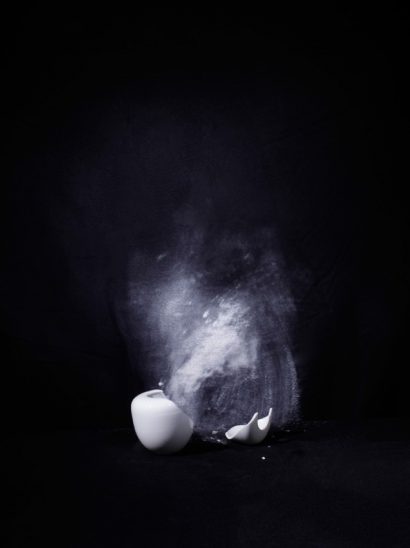
NOWs: Gravity is just a Habit by Sophia Pompéry
NOWs:
Sophia Pompéry: Gravity is just a Habit
at
WAGNER + PARTNER
Opening 10 March 2017, 19 h
With Gravity is just a Habit, Sophia Pompéry presents her second solo exhibition with the gallery. Installation, photography and sculpture are employed by Pompéry to address the exhibition’s concept of “visual projections”, in which everyday objects such as maps and vases are transformed into parables. These impartial works enjoy various levels of interpretation and evoke associations of current political events such as migration or the destruction of cultural heritage. Consequently, Sophia Pompéry almost incidentally examines philosophical questions regarding the nature of spatial and temporal perception.
The joy of the physical experiment, including the illusion of common ways of seeing is what characterises Pompéry’s oeuvre. The exhibition title’s proposition, of gravity being a habit, targets precisely our unquestioning lethargy of accepting the familiar and given, instead of changing things.
One room in the gallery is devoted to the notion of borders and restrictions and has the title, Worlds. Here the visitor encounters a universe of school-like blackboard maps. Presented processionally, all these maps depict different parts of the world and are covered in blackboard paint. Measurements, political borders and cities disappear. The visitor is invited to draw their own version of a map – also an inner map – and thus a sponge and chalk become tools to create our own vision of the world, with the blackboards becoming a metaphor in which to comprehend space. Worlds questions the use of space, geopolitical power structures, ownership, migration and the state of the environment. If the visible becomes invisible and demarcations disappear, then all that remains is imagination. Worlds invites us to liberate our thoughts. Usually, these are caught in our everyday and it is seldom that we reflect upon our time and space and indeed who its custodians are.
A large work that covers an entire wall also presents us with questions of borders and visual projections – and suggests the infinity of outer space. The distance between stars is deceptive for the human eye and we often have difficulty in perceiving what these distances may be and instead see the sky as a sprinkled expanse. On maps, stars are also depicted across a single surface area. In the exhibition, this surface area can be viewed from both sides. The rear view of the Milky Way is infinity x 2.
Whereas Worlds invites us to use chalk and explore the volatility of fixed definitions, the photographic series Éloge du vide (praise emptiness) presents the reverse: a fleeting moment of exploding chalk, cemented in time, not unlike a still-life flower arrangement. Beyond this, it also questions our perception: the black and white photos of exploding vases, shrouded in a peculiar white smoke cloud, indeed have nothing in common with the usual, falling porcelain vessel, which has been affected by gravity. As if the explosion had set off a magical energy, we nonetheless underestimate these innocent, white vessels in our daily lives. Similarly, they arouse strong associations with the bombed and destroyed cultural assets in war zones, which serve to erase the cultural memory of a place.
NOWs:
Sophia Pompéry: Gravity is just a Habit
bei
WAGNER + PARTNER
Eröffnung, 10. März 2017, 19 Uhr
Mit Gravity is just a Habit präsentiert Sophia Pompéry die zweite Einzelausstellung in der Galerie. Dem Thema der Ausstellung – Visuelle Projektionen – nähert sie sich in verschiedenen Medien: Installationen, Fotografie und Skulptur. Dabei transformiert Pompéry Gegenstände des Alltags, z. B. Landkarten und Vasen, in Parabeln, wobei die Offenheit ihrer Werke stets mehrere Interpretationsebenen beinhaltet. So lassen ihre Werke Assoziationen auf aktuelle politische Geschehnisse wie Migration oder Zerstörung von Kulturgut zu. Fast beiläufig wirft Sophia Pompéry dabei philosophische Fragen nach der Beschaffenheit von räumlicher und zeitlicher Wahrnehmung auf.
Die Freude am physikalischen Experiment sowie an der Irreführung der üblichen Sehgewohnheiten zeichnet Pompérys künstlerische Arbeiten aus. Die in dem Ausstellungstitel formulierte These, dass Schwerkraft nur eine Gewohnheit ist, zielt auf genau diese unsere Trägheit ab, Gewohntes und Vorgefundenes unhinterfragt als gegeben und unveränderlich hinzunehmen statt Dinge zu ändern.
Ein Ausstellungsraum der Galerie ist unter dem Titel Worlds dem Begriff von Grenzen bzw. Begrenzungen gewidmet. Hier betritt der Besucher ein Universum aus schultafelähnlichen Landkarten, die ihm in einer Art Prozession entgegentreten. All diese Karten, die verschiedene Teile der Welt darstellen, sind mit Tafelfarbe überzogen. Maßstäbe, politische Grenzen und Städte verschwinden dadurch. Der Betrachter ist dazu eingeladen, auf diesen Karten seine eigene Version einer (auch inneren) Landkarte zu einzuzeichnen – Schwamm und Kreidestift werden so Werkzeuge, um unsere eigene Visionen der Welt zu entwerfen. Die Tafeln aus der Installation Worlds werden zu einer Metapher für das Verstehen von Raum. Worlds stellt die Nutzung von Raum, geopolitische Machtkonstellationen, Besitz, Migration und ökologischen Zustand in Frage. Wenn das Sichtbare unsichtbar wird und Grenzziehungen verschwinden, wird Imagination zum zentralen Element. Worlds ist eine Einladung, unsere Gedanken freizusetzen. Normalerweise sind diese in unserem Alltag befangen und selten denken wir darüber nach, wie Zeit und Raum über uns hinaus beschaffen sind.
Ebenfalls eine Frage nach Grenzen und visuellen Projektionen stellt eine wandfüllende Arbeit, die dem Betrachter einen Blick in die Unendlichkeit des Weltalls suggeriert. Beim Betrachten der Sterne blendet das menschliche Auge die Tiefe zwischen einzelnen Sternen aus. Wir haben kein Gefühl für die Distanz zwischen zwei Sternen und nehmen den Himmel als gesprenkelte Fläche war. Auf der Karte werden Sterne ebenfalls flächig dargestellt. Diese Projektionsfläche kann im Ausstellungsraum von beiden Seiten betrachtet werden. Die Perspektive auf die Rückseite der Milchstraße ist Unendlichkeit x 2.
Wohingegen Worlds einlädt, Kreide aufzutragen und statische Definitionen flüchtig werden zu lassen, stellt die Fotoserie Éloge du vide einen gegenteiligen Prozess dar: Sie sprengt Kreide und zementiert einen flüchtigen Moment, wie ein Blumenstilleben. Darüber hinaus greift auch sie Fragen nach unserer Wahrnehmung auf: Die Schwarzweiß-Fotos explodierender Vasen, die eine merkwürdige weiße Staubwolke freisetzen, haben so gar nichts mit einem üblichen herunterfallenden, von der Schwerkraft angezogenen Porzellangegenstand gemeinsam. Als würde die Explosion eine magische Energie freisetzen, scheinen wir diese unschuldigen weißen Gefäße in unserem Alltag zu unterschätzen. Gleichzeitig wecken sie starke Assoziationen an die durch Bombardierungen zersprengten Kulturgüter in Kriegsgebieten, die vor Ort der Auslöschung des kulturellen Gedächtnisses dienen sollen.
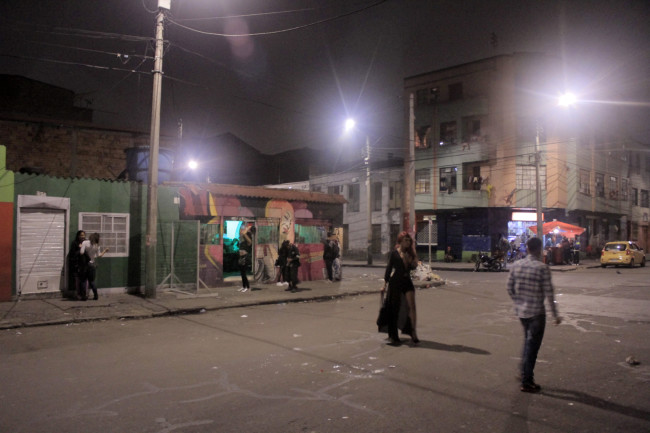
NOWs: Relaciones de Barrio by Tomas Espinosa
NOWs:
Tomas Espinosa: Relaciones de Barrio
at
FUNDACIÓN CASA ESTUDIO 74, Bogotá, Colombia
Tomas Espinosa presents his works “Glory Hole” and “Nachbarschaftsbeziehungen” (Neighborhood Relations), which are interventions made in the public space in Berlin and Bogota between the 2015 and 2017.
Using a subtle artistic language, Espinosa locates objects in public space to generate encounters, refelxions, reflect realities and document situations or encounters that are mostly ephemeral. What we see at first sight is not all we see. In the work of Tomas Espinosa we always have to observe with attention.
NOWs:
Tomas Espinosa: Relaciones de Barrio
at
FUNDACIÓN CASA ESTUDIO 74, Bogotá, Colombia
Tomas Espinosa presents his works “Glory Hole” and “Nachbarschaftsbeziehungen” (Neighborhood Relations), which are interventions made in the public space in Berlin and Bogota between the 2015 and 2017.
Using a subtle artistic language, Espinosa locates objects in public space to generate encounters, refelxions, reflect realities and document situations or encounters that are mostly ephemeral. What we see at first sight is not all we see. In the work of Tomas Espinosa we always have to observe with attention.
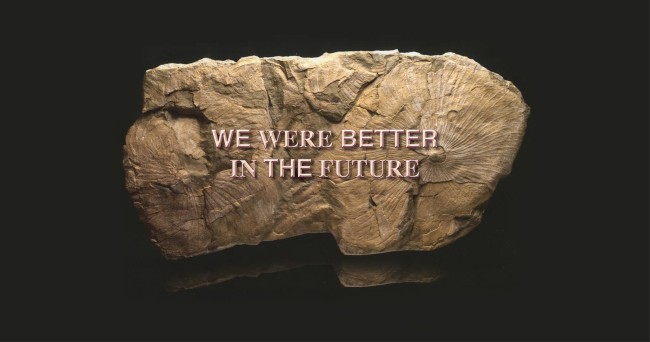
NOWs: We are better in the future by Kat Válastur
NOWs:
Kat Válastur: WE WERE BETTER IN THE FUTURE – A RETROSPECTIVE
at
HAU HEBBEL AM UFER
A retrospective “ WE WERE BETTER IN THE FUTURE” at HAU Hebbel am Ufer will encompass a series of works that the artist created between 2008-2016, with emphasis to the trilogy the marginal sculptures of newtopia that includes the works Gland, Ah! Oh! A contemporary ritual and OILinity. Along with the retrospective there will be actions and installations that will integrate with the works like a parallel universe. The latter is the outcome of an artistic dialogue with Leon Eixenberger.
Tickets here.
Kat Valástur: OILinity. Trailer
—
NOWs:
Kat Válastur: WE WERE BETTER IN THE FUTURE – A RETROSPECTIVE
at
HAU HEBBEL AM UFER
A retrospective “ WE WERE BETTER IN THE FUTURE” at HAU Hebbel am Ufer will encompass a series of works that the artist created between 2008-2016, with emphasis to the trilogy the marginal sculptures of newtopia that includes the works Gland, Ah! Oh! A contemporary ritual and OILinity. Along with the retrospective there will be actions and installations that will integrate with the works like a parallel universe. The latter is the outcome of an artistic dialogue with Leon Eixenberger.
Tickets here.
Kat Valástur: OILinity. Trailer
—
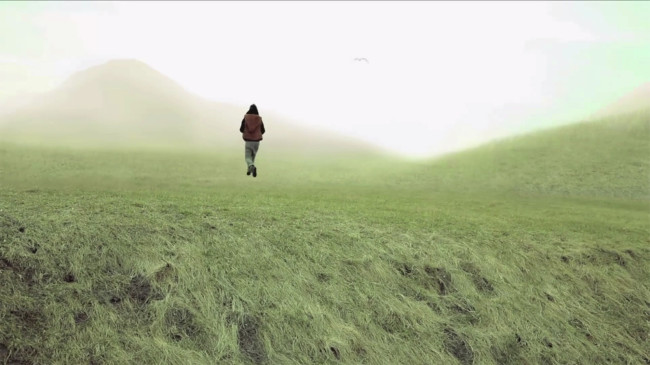
NOWs: The Lost Princess of Mongolia by Anne Duk Hee Jordan
NOWs:
Anne Duk Hee Jordan: The Lost Princess of Mongolia, 2009 - ongoing, 1. trailer
Anne Duk Hee Jordan:
The Lost Princess of Mongolia
March 24, 7 pm
at Entretempo Kitchen Gallery
The performance of Anne Duk Hee Jordan is based on her video installation “The Lost Princess of Mongolia”. The Lost Princess of Mongolia is a semi-autobiographical filmic work that combines real and fictional elements of Anne Duk Hee Jordan’s life. Her own personal background and history is a continual red line, which runs through her artistic research. The main conflict that the Princess confronts mirrors her own struggle with not belonging to a single culture or nation. The process of searching and exploring becomes then a life-long journey, in which wandering is a main theme. This atypical documentary is conceived as a series of trailers. The film deals with Jordan’s search for identity as a Korean, who grew up in Germany. The artist and at the same time the protagonist of her film travels from Berlin via Mongolia and Korea to the USA, where her biological mother lives. On this road trip, reality and fiction mixe up. This atypical documentary is conceived as a series of trailers.
In “The Lost Princess of Mongolia” food such as potatoes, kimchi and spices play an important role of the story, while romanticizing and alienating the plot. In her performance Anne Duk Hee Jordan presents her new cooking recipe, “Gamja Guk”, a German, Korean soup. The ingredients from Korea and Germany, such as potato, algae and kimchi, cross each other, and visitors are invited to taste different senses of homelands.
A project by Korea Foundation
NOWs:
Anne Duk Hee Jordan: The Lost Princess of Mongolia, 2009 - ongoing, 1. trailer
Anne Duk Hee Jordan:
The Lost Princess of Mongolia
March 24, 7 pm
at Entretempo Kitchen Gallery
The performance of Anne Duk Hee Jordan is based on her video installation “The Lost Princess of Mongolia”. The Lost Princess of Mongolia is a semi-autobiographical filmic work that combines real and fictional elements of Anne Duk Hee Jordan’s life. Her own personal background and history is a continual red line, which runs through her artistic research. The main conflict that the Princess confronts mirrors her own struggle with not belonging to a single culture or nation. The process of searching and exploring becomes then a life-long journey, in which wandering is a main theme. This atypical documentary is conceived as a series of trailers. The film deals with Jordan’s search for identity as a Korean, who grew up in Germany. The artist and at the same time the protagonist of her film travels from Berlin via Mongolia and Korea to the USA, where her biological mother lives. On this road trip, reality and fiction mixe up. This atypical documentary is conceived as a series of trailers.
In “The Lost Princess of Mongolia” food such as potatoes, kimchi and spices play an important role of the story, while romanticizing and alienating the plot. In her performance Anne Duk Hee Jordan presents her new cooking recipe, “Gamja Guk”, a German, Korean soup. The ingredients from Korea and Germany, such as potato, algae and kimchi, cross each other, and visitors are invited to taste different senses of homelands.
A project by Korea Foundation
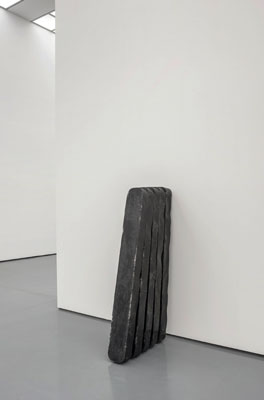
NOWs: Quatra Jagoniak by Leon Eixenberger
NOWs:
Quatra Jagoniak
An exhibition by Philipp Röcker, Maximilian Helk & Leon Eixenberger
curated by Leon Eixenberger
at
Galerie Werkschau
Schwanthalerstraße 141
80339 Munich
Opening: March 24, 18h; with a performance at 18:15h
„Quatra Jagoniak“ unveils a vision, a field of experiences.
The three artists present works that come from distinctly
different approaches on making art. The exhibition
manifests itself like a prism that extends as a speculative
glimpse into a global condition of raw material, a
monstrous map of an unconscious unstoppable dynamic
and an animated fragment of poetry send out against the
horizon. It is the limb of a hybrid world vibrating like the
deepest of colors, we want to taste!
Fr. 31.3. 18-21h
Sa. 1.4. 12-20h
So. 2.4. 12-19h
and by appointment
(T: 089 – 50 56 10)
NOWs:
Quatra Jagoniak
An exhibition by Philipp Röcker, Maximilian Helk & Leon Eixenberger
curated by Leon Eixenberger
at
Galerie Werkschau
Schwanthalerstraße 141
80339 Munich
Opening: March 24, 18h; with a performance at 18:15h
„Quatra Jagoniak“ unveils a vision, a field of experiences.
The three artists present works that come from distinctly
different approaches on making art. The exhibition
manifests itself like a prism that extends as a speculative
glimpse into a global condition of raw material, a
monstrous map of an unconscious unstoppable dynamic
and an animated fragment of poetry send out against the
horizon. It is the limb of a hybrid world vibrating like the
deepest of colors, we want to taste!
Fr. 31.3. 18-21h
Sa. 1.4. 12-20h
So. 2.4. 12-19h
and by appointment
(T: 089 – 50 56 10)
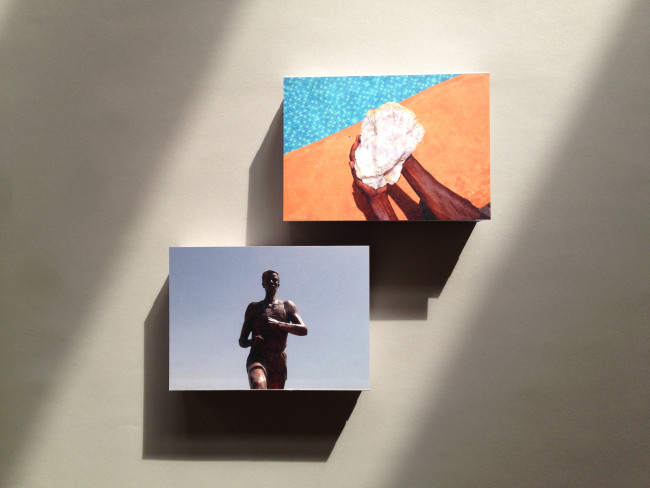
NOWs: Marking Triangles Publication by Tamura Yuichiro & Raul Walch
NOWs:
Publikation
Tamura Yuichiro & Raul Walch: Marking Triangles
Herausgeber: Japanischen Kulturinstitut / The Japan Foundation, Köln im Rahmen der deutsch-japanischen Dialogausstellung Marking Triangles
Gestaltung: Alexandra Bruns
Text: Christina Werner
Sprachen: Deutsch / Japanisch
Umfang 160 Seiten
„Marking Triangles“ – Eine Reiseerzählung
Drei Punkte auf einer Fläche zu markieren und zu definieren, ermöglicht sie in Beziehung zueinander zu setzen. Yuichiro Tamura und Raul Walch stellen in „Marking Triangles“ Bezüge rund um den Globus her. Für diese Ausstellung verbinden sie – nur auf den ersten Blick willkürlich ausgewählte – Orte entlang ihrer Reiserouten durch Europa, Asien und Afrika. Es sind weitgespannte Dreieckskonstellationen, die sich über drei Kontinente auffächern und in verschiedenster Weise miteinander verbinden lassen: Tamuras Untersuchungen führen von Köln (Deutschland) nach Antsiranana (Madagaskar) und Tanegashima (Japan); während Walch Addis Abeba (Äthiopien), Tokio (Japan) und Marathon (Griechenland) aufsucht. Expand...
Drei Punkte auf einer Fläche zu markieren und zu definieren, ermöglicht sie in Beziehung zueinander zu setzen. Yuichiro Tamura und Raul Walch stellen in „Marking Triangles“ Bezüge rund um den Globus her. Für diese Ausstellung verbinden sie – nur auf den ersten Blick willkürlich ausgewählte – Orte entlang ihrer Reiserouten durch Europa, Asien und Afrika. Es sind weitgespannte Dreieckskonstellationen, die sich über drei Kontinente auffächern und in verschiedenster Weise miteinander verbinden lassen: Tamuras Untersuchungen führen von Köln (Deutschland) nach Antsiranana (Madagaskar) und Tanegashima (Japan); während Walch Addis Abeba (Äthiopien), Tokio (Japan) und Marathon (Griechenland) aufsucht. „Marking Triangles“ steht auch in Zusammenhang mit dem klassischen Verfahren der Dreiecksmessung, der Triangulation, einer Messtechnik, die vor allem der Landvermessung und der Kartographie dient. Sie ermöglicht es, auch unbekannte oder unzugängliche Orte durch genaue Winkelmessung innerhalb von Dreiecken zu errechnen. Yuichiro Tamura und Raul Walch interessieren sich für ihnen noch unbekannte Orte, abseits ihrer üblichen Bezugssysteme. (...)
Raul Walch und Yuichiro Tamura halten auf ihren Reisen ganz bewusst Ausschau nach Bedeutungsträgern und Fundstücken, die über Knotenpunkte verschiedener Geschichten Zeugnis ablegen. Wenn sie uns Objekte, Bilder oder Videos mitbringen und uns die Geschichten anderer Orte vorstellen, verweben sie ganz aktiv diese Geschichtsfäden. Sie bedienen sich mitunter einer Art „Show and Tell“-Methode. „Show and Tell“ ist eine didaktische Übung und Grundlage für Vortragstechniken und das Erzählen, deren Ausgangspunkt stets das Zeigen von Objekten ist, anhand derer sich die Geschichte entspinnt. In variierender Anlehnung an diese Technik lädt Yuichiro Tamura das Publikum mit einer „Show and Smell“-Übung ein, in eine Geschichte einzutauchen, in der er Köln als Ort dieser Ausstellung in Dreiecksbeziehung zu Portugal und Japan setzt.
Köln, Deutschland
Like a Smell of Teen Spirit (2017) ist der Titel Tamuras Arbeit, die subtil Kräuter- und Zitrusaromen im Ausstellungsraum verbreitet. Zwei unterschiedliche Flakons des Echt Kölnisch Wasser laden zur Duftprobe ein. Bekannt als 4711, wird das Parfum ursprünglich nach der Konskriptionsnummer (einer Hausnummer, die nicht immer Rückschlüsse auf die örtliche Lage eines Gebäudes zulässt, sondern vorrangig nach anderen, häufig verwaltungs-dienlichen Kriterien vergeben wurde) des Stammhauses in der Glockengasse in Köln benannt. Das Original Eau de Cologne wird auch in Japan vertrieben, doch es riecht anders. Tamura lässt diesen Eindruck durch ein japanisches Labor überprüfen und bestätigen. Der Duft für den japanischen Markt wurde in Deutschland entwickelt und hergestellt und führt zusätzlich die Bezeichnung „Portugal“ auf dem Etikett. Was den Künstler fasziniert, ist die Frage, warum ein deutsches Team eine andere Duftnote für die japanischen olfaktorischen Gewohnheiten komponiert. Was veranlasst sie zu bestimmen, was in Japan als angenehmerer Duft empfunden wird? Welche Vorstellung von „dem anderem“ liegen zugrunde und welche Konditionierungen dessen, was als „exotisch“ wahrgenommen wird? Eine Ortsbestimmung in umgekehrte Richtung: Deutsche Entwickler, die sich gedanklich nach Japan versetzen, um sich eine Vorstellung von „dem anderem“ zu machen: Wir können nur annehmen, dass der japanische Produktname „Portugal“ den Geruch entfernter Länder, eine Note von Orangen und Mandarinen, und die Vorstellung von Reisen über die Weiten des Ozeans heraufbeschwören soll.
Und wieder sind wir bei der Geschichte der Entdeckungsreisen angelangt und damit bei der Geschichte der großen Seefahrernationen, in diesem Falle der Portugiesen. Es war Diogo Dias, der angeblich als erster Europäer 1500 seinen Fuß auf madagassischen Boden setzt, als sein Schiff auf der Gewürzhandelsroute nach Indien vom Kurs abgerät, und sein Landsmann Diégo Suarez, der 1543 in Madagaskar anläuft und nach dem die dortige Hafenstadt benannt wird, obwohl die Insel letztendlich nicht portugiesisch kolonialisiert wird. Doch die Geschichte endet nicht hier. (...)
Addis Abeba, Äthiopien
Und wieder brechen wir – dieses Mal mit Raul Walch – von Berlin aus auf: Er reist 2016 erneut nach Addis Abeba, Äthiopien. Dort stößt er auf eine weitere Dreiecksbeziehung, angestoßen durch ein verlassenes Denkmal: Es ist die Statue des äthiopischen Marathonläufers Abebe Bikila auf dem St.-Joseph-Friedhof der äthiopischen Hauptstadt. Bikila gewinnt am 12. September 1960 bei den Olympischen Spielen in Rom als erster schwarzafrikanischer Olympiasieger die Goldmedaille und legt die Strecke mit 2:15:16 Stunden in neuer Weltbestzeit als einziger Athlet barfuß zurück. Sein Sieg wird zum Triumph für einen ganzen Kontinent und es gelingt ihm 1964 seinen Olympiatriumph in Tokio zu wiederholen.
Als die Statue des Athleten auf dem Friedhof in Addis Abeba 2007 von Unbekannten mutwillig beschädigt wird, sind es ein japanischer Sportfotograf und der Direktor der japanischen Bildagentur Agence Shot in Tokio, die eine Fundraising-Kampagne organisierten. Drei Jahre nach der Beschädigung wird die restaurierte Statue wieder enthüllt. Heute jedoch ist der Friedhof neuen urbanen Strukturprojekten zum Opfer gefallen. Nur die Skulptur von Abebe Bikila trotzt den Veränderungen, unbeirrt scheint er seine Strecken zurückzulegen. Ebenso wie die Läufer in Raul Walchs Film In The Loneliness of the Long-Distance Runner (2017), die inmitten der Stadt auf dem Meskel Square – dem zentralen öffentlichen Platz in Addis Abeba – auf den Stufen trainieren, unberührt vom Verkehr, dem Bau der neuen Hochbahn und dem alltäglichen Betrieb rund um den Platz.
Tokio, Japan, und Marathon, Griechenland
Walch verschränkt im Film und der gleichnamigen Installation Bilder aus Addis Abeba mit Aufnahmen aus Tokio, rund um die besagte Olympia-Strecke. Und er reist zurück an den Ursprungsort der läuferischen Disziplin – nach Marathon in Griechenland. Er vermisst Distanzen, die im Sport physisch zurückgelegt werden filmisch, folgt Bewegungen der Menschen, dem Verkehrsfluss in den jeweiligen Städten. Das Überbringen von Nachrichten, das dem Mythos des Marathons zugrunde liegt, löst sich in der Durchkreuzung von Zeit und Raumachsen auf, wenn der Künstler visuell Eindrücke städtischer Strukturen in Addis Abeba, Tokio und Marathon verwebt, die sich ähneln und überlagern. Erkennen und Vergleichen wird zu einer Meditation über das Verbindende zwischen weit entfernten Orten. (...)
Textauszug
NOWs:
Publikation
Tamura Yuichiro & Raul Walch: Marking Triangles
Herausgeber: Japanischen Kulturinstitut / The Japan Foundation, Köln im Rahmen der deutsch-japanischen Dialogausstellung Marking Triangles
Gestaltung: Alexandra Bruns
Text: Christina Werner
Sprachen: Deutsch / Japanisch
Umfang 160 Seiten
„Marking Triangles“ – Eine Reiseerzählung
Drei Punkte auf einer Fläche zu markieren und zu definieren, ermöglicht sie in Beziehung zueinander zu setzen. Yuichiro Tamura und Raul Walch stellen in „Marking Triangles“ Bezüge rund um den Globus her. Für diese Ausstellung verbinden sie – nur auf den ersten Blick willkürlich ausgewählte – Orte entlang ihrer Reiserouten durch Europa, Asien und Afrika. Es sind weitgespannte Dreieckskonstellationen, die sich über drei Kontinente auffächern und in verschiedenster Weise miteinander verbinden lassen: Tamuras Untersuchungen führen von Köln (Deutschland) nach Antsiranana (Madagaskar) und Tanegashima (Japan); während Walch Addis Abeba (Äthiopien), Tokio (Japan) und Marathon (Griechenland) aufsucht. Expand...
Drei Punkte auf einer Fläche zu markieren und zu definieren, ermöglicht sie in Beziehung zueinander zu setzen. Yuichiro Tamura und Raul Walch stellen in „Marking Triangles“ Bezüge rund um den Globus her. Für diese Ausstellung verbinden sie – nur auf den ersten Blick willkürlich ausgewählte – Orte entlang ihrer Reiserouten durch Europa, Asien und Afrika. Es sind weitgespannte Dreieckskonstellationen, die sich über drei Kontinente auffächern und in verschiedenster Weise miteinander verbinden lassen: Tamuras Untersuchungen führen von Köln (Deutschland) nach Antsiranana (Madagaskar) und Tanegashima (Japan); während Walch Addis Abeba (Äthiopien), Tokio (Japan) und Marathon (Griechenland) aufsucht. „Marking Triangles“ steht auch in Zusammenhang mit dem klassischen Verfahren der Dreiecksmessung, der Triangulation, einer Messtechnik, die vor allem der Landvermessung und der Kartographie dient. Sie ermöglicht es, auch unbekannte oder unzugängliche Orte durch genaue Winkelmessung innerhalb von Dreiecken zu errechnen. Yuichiro Tamura und Raul Walch interessieren sich für ihnen noch unbekannte Orte, abseits ihrer üblichen Bezugssysteme. (...)
Raul Walch und Yuichiro Tamura halten auf ihren Reisen ganz bewusst Ausschau nach Bedeutungsträgern und Fundstücken, die über Knotenpunkte verschiedener Geschichten Zeugnis ablegen. Wenn sie uns Objekte, Bilder oder Videos mitbringen und uns die Geschichten anderer Orte vorstellen, verweben sie ganz aktiv diese Geschichtsfäden. Sie bedienen sich mitunter einer Art „Show and Tell“-Methode. „Show and Tell“ ist eine didaktische Übung und Grundlage für Vortragstechniken und das Erzählen, deren Ausgangspunkt stets das Zeigen von Objekten ist, anhand derer sich die Geschichte entspinnt. In variierender Anlehnung an diese Technik lädt Yuichiro Tamura das Publikum mit einer „Show and Smell“-Übung ein, in eine Geschichte einzutauchen, in der er Köln als Ort dieser Ausstellung in Dreiecksbeziehung zu Portugal und Japan setzt.
Köln, Deutschland
Like a Smell of Teen Spirit (2017) ist der Titel Tamuras Arbeit, die subtil Kräuter- und Zitrusaromen im Ausstellungsraum verbreitet. Zwei unterschiedliche Flakons des Echt Kölnisch Wasser laden zur Duftprobe ein. Bekannt als 4711, wird das Parfum ursprünglich nach der Konskriptionsnummer (einer Hausnummer, die nicht immer Rückschlüsse auf die örtliche Lage eines Gebäudes zulässt, sondern vorrangig nach anderen, häufig verwaltungs-dienlichen Kriterien vergeben wurde) des Stammhauses in der Glockengasse in Köln benannt. Das Original Eau de Cologne wird auch in Japan vertrieben, doch es riecht anders. Tamura lässt diesen Eindruck durch ein japanisches Labor überprüfen und bestätigen. Der Duft für den japanischen Markt wurde in Deutschland entwickelt und hergestellt und führt zusätzlich die Bezeichnung „Portugal“ auf dem Etikett. Was den Künstler fasziniert, ist die Frage, warum ein deutsches Team eine andere Duftnote für die japanischen olfaktorischen Gewohnheiten komponiert. Was veranlasst sie zu bestimmen, was in Japan als angenehmerer Duft empfunden wird? Welche Vorstellung von „dem anderem“ liegen zugrunde und welche Konditionierungen dessen, was als „exotisch“ wahrgenommen wird? Eine Ortsbestimmung in umgekehrte Richtung: Deutsche Entwickler, die sich gedanklich nach Japan versetzen, um sich eine Vorstellung von „dem anderem“ zu machen: Wir können nur annehmen, dass der japanische Produktname „Portugal“ den Geruch entfernter Länder, eine Note von Orangen und Mandarinen, und die Vorstellung von Reisen über die Weiten des Ozeans heraufbeschwören soll.
Und wieder sind wir bei der Geschichte der Entdeckungsreisen angelangt und damit bei der Geschichte der großen Seefahrernationen, in diesem Falle der Portugiesen. Es war Diogo Dias, der angeblich als erster Europäer 1500 seinen Fuß auf madagassischen Boden setzt, als sein Schiff auf der Gewürzhandelsroute nach Indien vom Kurs abgerät, und sein Landsmann Diégo Suarez, der 1543 in Madagaskar anläuft und nach dem die dortige Hafenstadt benannt wird, obwohl die Insel letztendlich nicht portugiesisch kolonialisiert wird. Doch die Geschichte endet nicht hier. (...)
Addis Abeba, Äthiopien
Und wieder brechen wir – dieses Mal mit Raul Walch – von Berlin aus auf: Er reist 2016 erneut nach Addis Abeba, Äthiopien. Dort stößt er auf eine weitere Dreiecksbeziehung, angestoßen durch ein verlassenes Denkmal: Es ist die Statue des äthiopischen Marathonläufers Abebe Bikila auf dem St.-Joseph-Friedhof der äthiopischen Hauptstadt. Bikila gewinnt am 12. September 1960 bei den Olympischen Spielen in Rom als erster schwarzafrikanischer Olympiasieger die Goldmedaille und legt die Strecke mit 2:15:16 Stunden in neuer Weltbestzeit als einziger Athlet barfuß zurück. Sein Sieg wird zum Triumph für einen ganzen Kontinent und es gelingt ihm 1964 seinen Olympiatriumph in Tokio zu wiederholen.
Als die Statue des Athleten auf dem Friedhof in Addis Abeba 2007 von Unbekannten mutwillig beschädigt wird, sind es ein japanischer Sportfotograf und der Direktor der japanischen Bildagentur Agence Shot in Tokio, die eine Fundraising-Kampagne organisierten. Drei Jahre nach der Beschädigung wird die restaurierte Statue wieder enthüllt. Heute jedoch ist der Friedhof neuen urbanen Strukturprojekten zum Opfer gefallen. Nur die Skulptur von Abebe Bikila trotzt den Veränderungen, unbeirrt scheint er seine Strecken zurückzulegen. Ebenso wie die Läufer in Raul Walchs Film In The Loneliness of the Long-Distance Runner (2017), die inmitten der Stadt auf dem Meskel Square – dem zentralen öffentlichen Platz in Addis Abeba – auf den Stufen trainieren, unberührt vom Verkehr, dem Bau der neuen Hochbahn und dem alltäglichen Betrieb rund um den Platz.
Tokio, Japan, und Marathon, Griechenland
Walch verschränkt im Film und der gleichnamigen Installation Bilder aus Addis Abeba mit Aufnahmen aus Tokio, rund um die besagte Olympia-Strecke. Und er reist zurück an den Ursprungsort der läuferischen Disziplin – nach Marathon in Griechenland. Er vermisst Distanzen, die im Sport physisch zurückgelegt werden filmisch, folgt Bewegungen der Menschen, dem Verkehrsfluss in den jeweiligen Städten. Das Überbringen von Nachrichten, das dem Mythos des Marathons zugrunde liegt, löst sich in der Durchkreuzung von Zeit und Raumachsen auf, wenn der Künstler visuell Eindrücke städtischer Strukturen in Addis Abeba, Tokio und Marathon verwebt, die sich ähneln und überlagern. Erkennen und Vergleichen wird zu einer Meditation über das Verbindende zwischen weit entfernten Orten. (...)
Textauszug
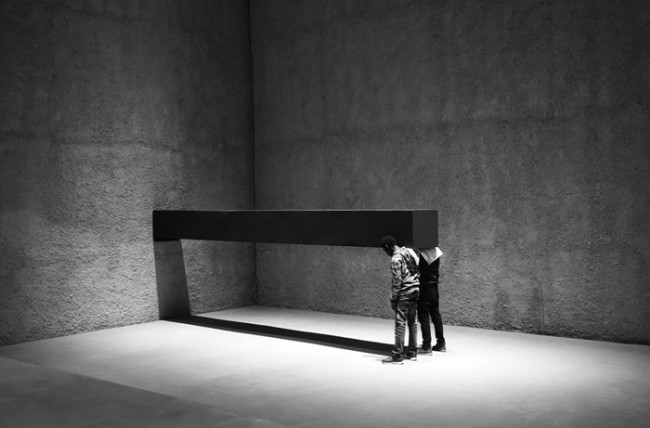
NOWs: Mea Culpa by Santiago Sierra
NOWs:
SANTIAGO SIERRA: MEA CULPA
OPENING AND PERFORMANCE (BY INVITATION)
28th March 2017, 7:00-9:00 p.m.
at
PAC Padiglione d’Arte Contemporanea Milan
PAC Padiglione d’Arte Contemporanea, Milan, presents MEA CULPA, the first extended Italian anthology dedicated to conceptual artist Santiago Sierra, born in 1966 in Madrid. The exhibition offers a comprehensive overview of the artist‘s most iconic political works from the 1990s to date. It also features newly produced works and reactivations of past installations and actions. Promoted by the Municipality of Milan and produced by the PAC with Silvana Editoriale, the exhibition is curated by Lutz Henke and Diego Sileo and will open Milano Art Week 2017.
INFO
www.pacmilano.it T. +39 02 88446359
SOCIAL
@pacmilano #santiagoserra #meaculpa
Mea Culpa? There is no absolution for Art
I confess ..., that things do not look bright in early 2017. We witness the proliferation of autocratic systems, rising nationalism and populism, walled in nation states, and unfettered capitalism in daily disbelief. With the world seemingly falling apart to the tune of barking hate speech and fake news there are manifold suggestions who or what is to blame for the distress. Yet salvation is not in sight. ... Text by Lutz Henke - Expand...
I confess ..., that things do not look bright in early 2017. We witness the proliferation of autocratic systems, rising nationalism and populism, walled in nation states, and unfettered capitalism in daily disbelief. With the world seemingly falling apart to the tune of barking hate speech and fake news there are manifold suggestions who or what is to blame for the distress. Yet salvation is not in sight. Just now, in times of uncertainty, the idea of a higher power granting absolution to the faithful appears all the more seductive. With the Confiteor of the Catholic Church this belief has been collectively practiced during the Sacrament of Penance and Reconciliation for centuries. If nowadays - as frequently elaborated - art is indeed our new religion, can quasi-messianic artists save their followers or bear the sins of our world? Certainly not. Could, however, the idea of penance and confession of guilt as expressed in „Mea Culpa“ apply to artists, such as Santiago Sierra, thus striving for absolution by conceding to have „greatly sinned“ in thoughts, words and deeds? Unthinkable! It would reduce his works to absurdity. If we expect art to assume a rather social than ornamental function in our societies it is indispensable that artistic practice is pure and occasionally transgressive. With his conceptual pieces, many of them actions and interventions which directly engage with our reality, Sierra has exercised this idea for almost three decades. He exposed and criticized the social and political conditions of modern society along with their respective power structures, be it nation states and border-regimes, globalized capitalism, the art world itself or the institution of the church. Interventions like the projection of a gigantic „NO“ above the pope during a pontifical mass in Madrid dispel any suspicion of religiosity. Yet, the topos of imposed guilt, for the victim an „internalized form of punishment“ (Interviews, Martinez, 2003, p.66), appears frequently in Sierra‘s oeuvre who at the same time adopts and criticizes its religious origin: It can be found in the use of the capirote (the pointed conical hat used by religious brotherhoods to publicly expose criminals confessing their sins) in pieces such as „The Anarchists“, who were paid to listen to the pope‘s Christmas address, as well as in various performances of - in Sierra‘s understanding - workers like veterans or prostitutes silently facing the corners or walls of exhibition spaces. In these intense and ambiguous performances, Sierra exploits the hired unemployed, prostitutes or immigrants carrying out pointless work, while at the same time revealing their situation and giving them a voice to be heard. Their visual language, their complex and powerful symbolism as well as the anchoring in peoples reality provides them with a rare emotional impact. Sierra bluntly unveils a system we cannot escape, a system which he self-evidently forms part of. His performances can be understood as an inherent call for action or for civil disobedience, but they are also the works he - as the bearer of bad news - has been most criticized for. As the messenger of the bleak truth of our times Sierra frequently has been accused of cynicism. He is right to recognize a certain hypocrisy of the elitist art world in this accusation as he explains: „To me it seems much more ethical, much clearer, to reveal your own participation in a work, what your role is, than to hide it. I could have called „250 cm Line Tattooed on 6 Paid People“ „Boys from Havana“. That would have been cynical, indeed.“ (Interviews, p. 234) Consequently, the titles of Sierra‘s pieces are highly descriptive and carefully avoid any misinterpretation or poetic ambition, providing merely the most prosaic and necessary information on the actions: „Container in Space“, „300 Tons“, „The Punished“, „3.000 holes of 180 x 50 x 50 cm each“, „Black Flag“ and so on. It therefore was a curatorial decision and joined effort to convince Sierra to name the exhibition „Mea Culpa“ which in many ways contradicts his artistic practice. Nevertheless, this provocation has proven to be fruitful, to rise critical disbelief and foster discussions before the show even opened. It picks one of the many possible perspectives on Sierra‘s practice, expands the view on it beyond the obvious, and delivers first questions approaching his works: Why do the veterans deserve to be standing facing a corner if they are only small cogs in the big machinery of wars and why did they agree to participate in the first place? Are junkies and prostitutes to be condemned for their situation? Can we distinguish between our personal guilt as individuals and the guilt of the power-structures we cannot escape? Does the Catholic Church still define our moral values and the definition of guilt? Is Sierra to be blamed to benefit from our capitalist reality or to be hailed to make it comprehensible? Is our world ruled by means of imposing guilt through punishment and work? Should art be allowed to cause inconvenient irritations in public life such as causing a traffic jam on a highway in Mexico City by blocking it with a truck‘s trailer? Obviously, there are no easy or quick answers to these questions. The topic of guilt is as complex as Sierra‘s whole oeuvre. Therefore the exhibition encourages different readings rather than giving definite answers. It offers a dialogue instead of an imposed teaching ex cathedra. Hence, this catalogue attempts to personalize some of the pieces instead of reproducing analytical texts. It contains excerpts from interviews given by Sierra within the last fifteen years as well as specifically conducted conversations with protagonists involved or confronted with his works. Exemplarily, they add various individual perspectives on the artist‘s practice. This approach equally can be found in the exhibition itself in the form of Sierra‘s video „20 workers in a ship‘s hold“: It features a participant of said action commenting on it meandering between accusation and contentment to emerge from invisibility. We catch one glimpse of a multi-perspective reality which is far from being exhaustive. It is fundamental that Sierra does not confine himself to only criticize or observe power structures. On the contrary: He interferes with these systems beyond the role of a mere spectator and renders them visible for us to not only theoretically understand but to comprehend their ramifications and our own role therein. There aren‘t many artworks to be found in today‘s museums which bear the immediate potential to leave the spectator quivering with emotion. This rare quality of Sierra‘s pieces arises from their ability to systematically overcome the protected art space engaging with a less predictable reality. Subsequently, he employs a broad range of artistic strategies and techniques to capture fractions of these actions in order to transfer them to the exhibition space: they emerge in a broad variety of media from photo and video to sculpture, installation and performance oscillating between the utmost minimalist form and the most graphic depiction. It therefore is crucial to be aware that the exhibition gathers reflections or relics of the original happenings rather than objects which deliberately have been conceived to compose an artwork. They capture unadorned fragments without striving for perfection. Yet, they all share the potential to unfold and point to the profound conversation Sierra has with the world. The currentness and foresight of Sierra‘s work from the past three decades is almost disturbing, thus makes it more relevant than ever. None of the early actions which will be reactivated in the course of „Mea Culpa“ has lost its relevance or original potential. At the same time the exhibition took advantage of its rather tight planning schedule. It could be compiled taking into account recent political issues and events. After first considerations to focus exclusively on the less known, more subtle and minimalist - but nonetheless powerful - pieces in Sierra‘s oeuvre it quickly became clear that in times of political turmoil and „alternative facts“, the opposite would be desirable. The exhibition therefore evolved towards bringing together works such as „Los Encargados“, which aims at the role - maybe guilt - of political leaders and is described by Sierra as an attempt „to strike back at the propaganda machinery that we’ve been enduring as long as we can remember. It’s a rematch; it’s counter-propaganda.“ (Interviews, Jarque, 2013, 243) After all the exhibition „Mea Culpa“ forms a comprehensive overview of Sierra‘s work and his pieces which unveil the social and political conditions of our modern society. They stimulate their contemplation and foster a discourse. By no means are they finger-pointing accusations nor confessions of guilt. Instead they point beyond the art world to a complex reality. Through their ambiguity between a seemingly simple appearance and a complex symbolism Sierra‘s works invite a dialogue. They embody his conversation with the world. Moreover, they teach us that nobody can escape the system of exploitation. So, yes, Sierra is just as guilty as each and everyone of us. We, „the world of culture, are on the winning team, we are, surprise, the exploiters.“, as Sierra states. Art might help us to internalize this thought, maybe even take action. There is no need to confess the outspoken and there is no reason for art to strive for absolution. Text by Lutz Henke
NOWs:
SANTIAGO SIERRA: MEA CULPA
OPENING AND PERFORMANCE (BY INVITATION)
28th March 2017, 7:00-9:00 p.m.
at
PAC Padiglione d’Arte Contemporanea Milan
PAC Padiglione d’Arte Contemporanea, Milan, presents MEA CULPA, the first extended Italian anthology dedicated to conceptual artist Santiago Sierra, born in 1966 in Madrid. The exhibition offers a comprehensive overview of the artist‘s most iconic political works from the 1990s to date. It also features newly produced works and reactivations of past installations and actions. Promoted by the Municipality of Milan and produced by the PAC with Silvana Editoriale, the exhibition is curated by Lutz Henke and Diego Sileo and will open Milano Art Week 2017.
INFO
www.pacmilano.it T. +39 02 88446359
SOCIAL
@pacmilano #santiagoserra #meaculpa
Mea Culpa? There is no absolution for Art
I confess ..., that things do not look bright in early 2017. We witness the proliferation of autocratic systems, rising nationalism and populism, walled in nation states, and unfettered capitalism in daily disbelief. With the world seemingly falling apart to the tune of barking hate speech and fake news there are manifold suggestions who or what is to blame for the distress. Yet salvation is not in sight. ... Text by Lutz Henke - Expand...
I confess ..., that things do not look bright in early 2017. We witness the proliferation of autocratic systems, rising nationalism and populism, walled in nation states, and unfettered capitalism in daily disbelief. With the world seemingly falling apart to the tune of barking hate speech and fake news there are manifold suggestions who or what is to blame for the distress. Yet salvation is not in sight. Just now, in times of uncertainty, the idea of a higher power granting absolution to the faithful appears all the more seductive. With the Confiteor of the Catholic Church this belief has been collectively practiced during the Sacrament of Penance and Reconciliation for centuries. If nowadays - as frequently elaborated - art is indeed our new religion, can quasi-messianic artists save their followers or bear the sins of our world? Certainly not. Could, however, the idea of penance and confession of guilt as expressed in „Mea Culpa“ apply to artists, such as Santiago Sierra, thus striving for absolution by conceding to have „greatly sinned“ in thoughts, words and deeds? Unthinkable! It would reduce his works to absurdity. If we expect art to assume a rather social than ornamental function in our societies it is indispensable that artistic practice is pure and occasionally transgressive. With his conceptual pieces, many of them actions and interventions which directly engage with our reality, Sierra has exercised this idea for almost three decades. He exposed and criticized the social and political conditions of modern society along with their respective power structures, be it nation states and border-regimes, globalized capitalism, the art world itself or the institution of the church. Interventions like the projection of a gigantic „NO“ above the pope during a pontifical mass in Madrid dispel any suspicion of religiosity. Yet, the topos of imposed guilt, for the victim an „internalized form of punishment“ (Interviews, Martinez, 2003, p.66), appears frequently in Sierra‘s oeuvre who at the same time adopts and criticizes its religious origin: It can be found in the use of the capirote (the pointed conical hat used by religious brotherhoods to publicly expose criminals confessing their sins) in pieces such as „The Anarchists“, who were paid to listen to the pope‘s Christmas address, as well as in various performances of - in Sierra‘s understanding - workers like veterans or prostitutes silently facing the corners or walls of exhibition spaces. In these intense and ambiguous performances, Sierra exploits the hired unemployed, prostitutes or immigrants carrying out pointless work, while at the same time revealing their situation and giving them a voice to be heard. Their visual language, their complex and powerful symbolism as well as the anchoring in peoples reality provides them with a rare emotional impact. Sierra bluntly unveils a system we cannot escape, a system which he self-evidently forms part of. His performances can be understood as an inherent call for action or for civil disobedience, but they are also the works he - as the bearer of bad news - has been most criticized for. As the messenger of the bleak truth of our times Sierra frequently has been accused of cynicism. He is right to recognize a certain hypocrisy of the elitist art world in this accusation as he explains: „To me it seems much more ethical, much clearer, to reveal your own participation in a work, what your role is, than to hide it. I could have called „250 cm Line Tattooed on 6 Paid People“ „Boys from Havana“. That would have been cynical, indeed.“ (Interviews, p. 234) Consequently, the titles of Sierra‘s pieces are highly descriptive and carefully avoid any misinterpretation or poetic ambition, providing merely the most prosaic and necessary information on the actions: „Container in Space“, „300 Tons“, „The Punished“, „3.000 holes of 180 x 50 x 50 cm each“, „Black Flag“ and so on. It therefore was a curatorial decision and joined effort to convince Sierra to name the exhibition „Mea Culpa“ which in many ways contradicts his artistic practice. Nevertheless, this provocation has proven to be fruitful, to rise critical disbelief and foster discussions before the show even opened. It picks one of the many possible perspectives on Sierra‘s practice, expands the view on it beyond the obvious, and delivers first questions approaching his works: Why do the veterans deserve to be standing facing a corner if they are only small cogs in the big machinery of wars and why did they agree to participate in the first place? Are junkies and prostitutes to be condemned for their situation? Can we distinguish between our personal guilt as individuals and the guilt of the power-structures we cannot escape? Does the Catholic Church still define our moral values and the definition of guilt? Is Sierra to be blamed to benefit from our capitalist reality or to be hailed to make it comprehensible? Is our world ruled by means of imposing guilt through punishment and work? Should art be allowed to cause inconvenient irritations in public life such as causing a traffic jam on a highway in Mexico City by blocking it with a truck‘s trailer? Obviously, there are no easy or quick answers to these questions. The topic of guilt is as complex as Sierra‘s whole oeuvre. Therefore the exhibition encourages different readings rather than giving definite answers. It offers a dialogue instead of an imposed teaching ex cathedra. Hence, this catalogue attempts to personalize some of the pieces instead of reproducing analytical texts. It contains excerpts from interviews given by Sierra within the last fifteen years as well as specifically conducted conversations with protagonists involved or confronted with his works. Exemplarily, they add various individual perspectives on the artist‘s practice. This approach equally can be found in the exhibition itself in the form of Sierra‘s video „20 workers in a ship‘s hold“: It features a participant of said action commenting on it meandering between accusation and contentment to emerge from invisibility. We catch one glimpse of a multi-perspective reality which is far from being exhaustive. It is fundamental that Sierra does not confine himself to only criticize or observe power structures. On the contrary: He interferes with these systems beyond the role of a mere spectator and renders them visible for us to not only theoretically understand but to comprehend their ramifications and our own role therein. There aren‘t many artworks to be found in today‘s museums which bear the immediate potential to leave the spectator quivering with emotion. This rare quality of Sierra‘s pieces arises from their ability to systematically overcome the protected art space engaging with a less predictable reality. Subsequently, he employs a broad range of artistic strategies and techniques to capture fractions of these actions in order to transfer them to the exhibition space: they emerge in a broad variety of media from photo and video to sculpture, installation and performance oscillating between the utmost minimalist form and the most graphic depiction. It therefore is crucial to be aware that the exhibition gathers reflections or relics of the original happenings rather than objects which deliberately have been conceived to compose an artwork. They capture unadorned fragments without striving for perfection. Yet, they all share the potential to unfold and point to the profound conversation Sierra has with the world. The currentness and foresight of Sierra‘s work from the past three decades is almost disturbing, thus makes it more relevant than ever. None of the early actions which will be reactivated in the course of „Mea Culpa“ has lost its relevance or original potential. At the same time the exhibition took advantage of its rather tight planning schedule. It could be compiled taking into account recent political issues and events. After first considerations to focus exclusively on the less known, more subtle and minimalist - but nonetheless powerful - pieces in Sierra‘s oeuvre it quickly became clear that in times of political turmoil and „alternative facts“, the opposite would be desirable. The exhibition therefore evolved towards bringing together works such as „Los Encargados“, which aims at the role - maybe guilt - of political leaders and is described by Sierra as an attempt „to strike back at the propaganda machinery that we’ve been enduring as long as we can remember. It’s a rematch; it’s counter-propaganda.“ (Interviews, Jarque, 2013, 243) After all the exhibition „Mea Culpa“ forms a comprehensive overview of Sierra‘s work and his pieces which unveil the social and political conditions of our modern society. They stimulate their contemplation and foster a discourse. By no means are they finger-pointing accusations nor confessions of guilt. Instead they point beyond the art world to a complex reality. Through their ambiguity between a seemingly simple appearance and a complex symbolism Sierra‘s works invite a dialogue. They embody his conversation with the world. Moreover, they teach us that nobody can escape the system of exploitation. So, yes, Sierra is just as guilty as each and everyone of us. We, „the world of culture, are on the winning team, we are, surprise, the exploiters.“, as Sierra states. Art might help us to internalize this thought, maybe even take action. There is no need to confess the outspoken and there is no reason for art to strive for absolution. Text by Lutz Henke
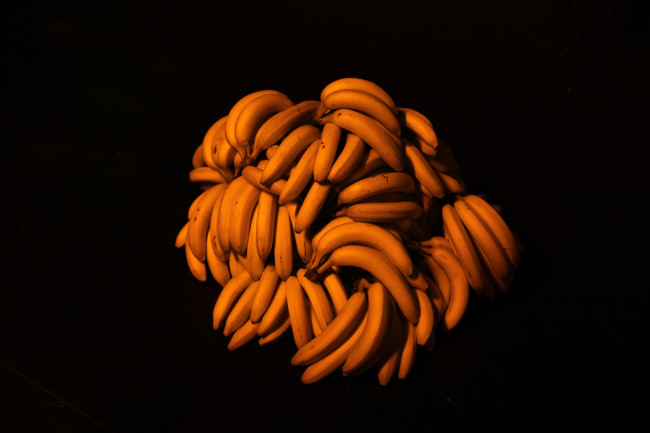
NOWs: Samsa, Samsa, Samsa by Leon Eixenberger & Kat Válastur
NOWs:
Samsa, Samsa, Samsa
by Leon Eixenberger & Kat Válastur
at
HAU HEBBEL AM UFER
Opening: 29.3. from 19h – 20h, HAU 2 (second floor)
Opening hours: 29.3., 31.3, 1.4. & 2.4.
19h – 20h & 21h – 22h
The installation is as part of Kat Válatur’s retrospective „We were better in the future“. The installation is accessible for free, tickets to the performances are available here.
The traveler revisits a deconstructed landscape and faces the bones of the past in a new ground and time. Natural elements and objects are reassembled in new ways forming a new use. Material and bodies are exposed to dimensions and dimensions are elevated to deeper and more complex systems of cosmologies. Structures are used to stimulate the traveler´s cocoon like a charger of transformative power. The meaning of the clock falls into an abstract assemblage of annual growth rings, exceptional fossils are detached from the soil and the food becomes monolithic.
Leon Eixenberger & Kat Válastur
—
NOWs:
Samsa, Samsa, Samsa
by Leon Eixenberger & Kat Válastur
at
HAU HEBBEL AM UFER
Opening: 29.3. from 19h – 20h, HAU 2 (second floor)
Opening hours: 29.3., 31.3, 1.4. & 2.4.
19h – 20h & 21h – 22h
The installation is as part of Kat Válatur’s retrospective „We were better in the future“. The installation is accessible for free, tickets to the performances are available here.
The traveler revisits a deconstructed landscape and faces the bones of the past in a new ground and time. Natural elements and objects are reassembled in new ways forming a new use. Material and bodies are exposed to dimensions and dimensions are elevated to deeper and more complex systems of cosmologies. Structures are used to stimulate the traveler´s cocoon like a charger of transformative power. The meaning of the clock falls into an abstract assemblage of annual growth rings, exceptional fossils are detached from the soil and the food becomes monolithic.
Leon Eixenberger & Kat Válastur
—
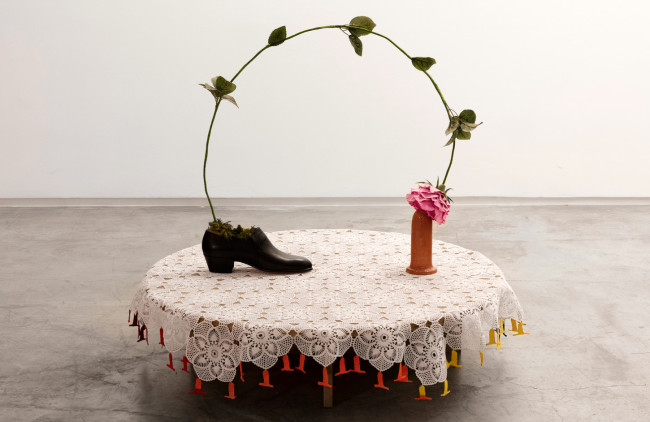
NOWs: ğ – queer forms migrate
NOWs:
Nilbar Güreş, Rose of Sapatão, 2015. Courtesy of the artist, RAMPA Istanbul, and Martin Janda. Photo: CHROMA Istanbul.
ğ – queer forms migrate
Opening: March 2, 7pm
Schwules Museum* Berlin
ğ is a group exhibition bringing together works that follow artistic migration in various directions but specifically explore the transcultural exchange of LGBTIQ+ people between Turkey and Germany; Berlin and Istanbul. This movement is felt as a unique sensibility—a turning, shifting, changing state of mind, whose presence we will accommodate in a prolific metaphor: the letter ğ (soft g).
ğ is a Turkish letter and its birth moment in 1928 marks the adoption of the Latin alphabet through the state sanctioned Turkish language reforms. Correctional linguists, working to modernize and westernize the Turkish language predicted the loss of the Arabic letter ghayn, which had no equivalent in the Latin alphabet but was commonly used in the Ottoman Turkish language. They came up with an unprecedented hybrid form: ğ. This letter serves no other purpose than to lengthen the preceding vowel; it cannot be the initial letter of a word and it is never capitalized. Therefore, it is the queerest of the Turkish alphabet. ğ is an oriental sound-letter that migrated to a western body of sorts and consequently we sense in it a curious early twentieth century story of a transitioning body.
What if ğ left Turkey to migrate to Germany? What if it seeped through into the German alphabet, escaping from the suitcase of a guest worker from Turkey, one of the hundreds of thousands of laborers who came under the 1961 recruitment agreement? What if it returned to the Motherland after living in Germany for so long to contribute to a new language, in solidarity? Since ğ is an oddity in Germany for most people, every time our names are mispronounced it reminds us of this future language, able to communicate the queer and the power of all things transgressive.
We feel queer possibilities in ğ and will present these through diverse media, including painting, performance, photography, sculpture, sound and video. As an expanded exhibition format ğ will seek to focus on initiating new companionships as well as honouring those whose love and work has let our queer souls thrive in Germany, Turkey and beyond.
With contributions by Yeşim Akdeniz, Hasan Aksaygın, Mehtap Baydu, Taner Ceylan, Ayşe Erkmen, Masist Gül presented by Banu Cennetoğlu and Philippine Hoegen, Cihangir Gümüştürkmen, Nilbar Güreş, Aykan Safoğlu, Erinç Seymen, Viron Erol Vert, Ming Wong.
Curated by Emre Busse and Aykan Safoğlu
Exhibition Design: Philip Wiegard
The exhibition will be accompanied by an extensive programme of events including lectures, conversations and readings as well as performances, workshops and film screenings with Gülây Akın, Yener Bayramoğlu, Maria Binder, Demet Demir, Elmgreen & Dragset, Ebru Kırancı, ‘Emine’ Sevgi Özdamar, Sabuha Salaam and Salih Alexander Wolter.
ğ – soft g – queer forms migrate is supported by the Governing Mayor of Berlin – Senatskanzlei – Kulturelle Angelegenheiten.
NOWs:
Nilbar Güreş, Rose of Sapatão, 2015. Courtesy of the artist, RAMPA Istanbul, and Martin Janda. Photo: CHROMA Istanbul.
ğ – queere Formen migrieren
Vernissage: 2. März 2017, 19:00 Uhr
Schwules Museum* Berlin
Die Gruppenausstellung „ğ – das weiche g“ im Schwulen Museum* versammelt zum ersten Mal in Deutschland Arbeiten, die den transkulturellen Austausch von LSBTIQ*-Menschen zwischen der Türkei und Deutschland, zwischen Berlin und Istanbul zum Inhalt haben und der künstlerischen Migration in allen Richtungen nachgehen. Sie spürt einem für Berlin typischen, queer-migrantischen Gemütszustand nach, den Emre Busse und Aykan Safoğlu im türkischen Buchstaben ğ veranschaulichen – auf Deutsch etwa „das weiche g“. Busse und Safoğlu stammen aus Istanbul und beschäftigen sich in ihrer künstlerischen und kuratorischen Praxis mit queerer Migration, mit marginalisierten sexuellen Identitäten und Körperpolitiken.
Der Buchstabe ğ wurde 1928 mit der Schriftreform ins türkische Alphabet aufgenommen, von der an Türkisch mit dem lateinischen Alphabet geschrieben wurde. ğ sollte den im Osmanischen häufig vorkommenden arabischen Laut „Ghain“ wiedergeben, für den es im lateinischen Alphabet keine Entsprechung gibt. Es entstand eine im Türkischen beispiellose hybride Form, deren einzige Funktion ist, den vorherigen Vokal zu dehnen – analog dem Dehnungs-h im Deutschen. Der Buchstabe steht nie am Wortanfang und wird nie großgeschrieben. „ğ ist ein östlicher Laut, der in eine westliche Form schlüpft“, so die Kuratoren. Und was, wenn ğ derweil die Türkei verlassen hat und nach Deutschland migriert ist? Sagen wir, es hätte sich in den Koffer einer Person geschlichen, die wie hunderttausende andere im Nachgang des Anwerbeabkommens von 1961 nach Deutschland gezogen ist, und wäre von dort geflüchtet und hätte sich ins deutsche Alphabet gemengt. Denn ğ ist auch das, was den Zungen der Mehrheitsgesellschaft in Deutschland widerstrebt, ğ ist der am häufigsten falsch ausgesprochene Buchstabe in Deutschland. Nun scheint ğ den Kuratoren dieser Ausstellung eine queere Möglichkeit vorwegzunehmen – und der Wanderung dieser Möglichkeit an ihren Schnittpunkten zwischen Deutschland und der Türkei wollen sie sich schwerpunktmäßig widmen. Denn jede falsche Aussprache von türkischen Namen in Deutschland erinnert an die therapeutische Schönheit des Widerstandes; „ğ – das weiche g“ ist der künstlerische Versuch, dieses Potential im Schwulen Museum* erstmals zu zelebrieren.
„ğ – das weiche g“ wird begleitet durch ein umfangreiches Rahmenprogramm aus Vorträgen, Gesprächen und Lesungen sowie Performances, Workshops und Filmvorführungen mit Demet Demir, Gülay Akın, Ebru Kırancı, Elmgreen & Dragset, ‘Emine’ Sevgi Özdamar, Maria Binder, Sabuha Salaam, Salih Wolter und Yener Bayramoğlu.
Mit Arbeiten von: Aykan Safoğlu, Ayşe Erkmen, Cihangir Gümüştürkmen, Erinç Seymen, Hasan Aksaygın, Masist Gül präsentiert von Banu Cennetoğlu und Philippine Hoegen, Mehtap Baydu, Ming Wong, Nilbar Güreş, Taner Ceylan, Viron Erol Vert, Yeşim Akdeniz
kuratiert von Emre Busse und Aykan Safoğlu
Ausstellungsdesign: Philip Wiegard
„ğ – das weiche g“ wird unterstützt vom Regierenden Bürgermeister von Berlin –Senatskanzlei – Kulturelle Angelegenheiten.
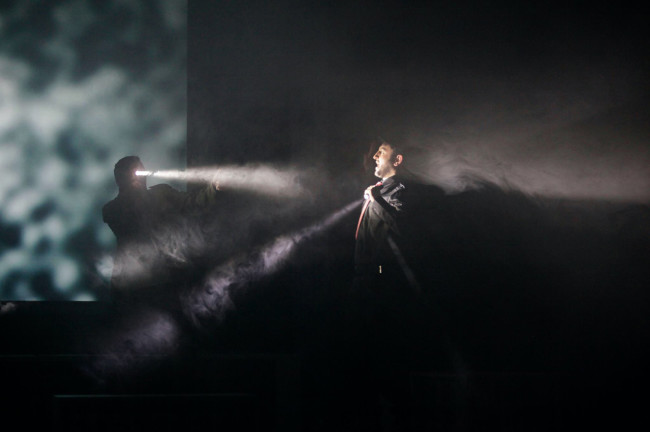
NOWs: Dickicht. Stage design by Robert Lippok
NOWs:
© Ute Langkafel MAIFOTO
Dickicht
at
Maxim Gorki Theater
Chaos in the megalopolis of Chicago: Malaysian lumber dealer Shlink enters a public library and wants to buy the opinion of its clerk, George Garga. His refusal starts a battle without rules, without morality, without motive, in which both opponents put everything on the line. Garga loses his workplace because of Shlink, who then forces Garga’s girlfriend and sister into prostitution and sends him to jail. In doing so, he not only ruins Garga’s family financially, but also destroys its cohesion. Garga denounces Shlink for the rape of his sister and begins a campaign to lynch him. It is a battle of life and death, a fight in the jungle in which people only seem to achieve closeness through struggle.
Opening night: 11.3.2017
30.3., 19.30 h / 22.4., 19.30 h
Adapted from
Bertolt Brecht
Director
Sebastian Baumgarten
Stage design
Robert Lippok
Costumes
Jana Findeklee, Joki Tewes
Music
Stefan Schneider
Video
Hannah Dörr
Dramaturgy
Ludwig Haugk
TICKETs here.
Photos © Ute Langkafel MAIFOTO
NOWs:
© Ute Langkafel MAIFOTO
Dickicht
am
Maxim Gorki Theater
Chaos in der Riesenstadt Chicago: Der malaiische Holzhändler Shlink tritt in eine Leihbibliothek und will die Meinung des Angestellten George Garga über Bücher abkaufen. Es beginnt ein Kampf ohne Regeln, ohne Moral, ohne Motiv, bei dem die beiden Gegner alles aufs Spiel setzen was sie haben. Shlink nimmt Garga den Arbeitsplatz, zwingt seine Freundin und Schwester zur Prostitution und bringt ihn ins Gefängnis. Damit ruiniert er Gargas Familie nicht nur finanziell, sondern zerstört auch ihren Zusammenhalt. Garga zeigt Shlink wegen der Vergewaltigung seiner Schwester an und initiiert eine Lynchaktion. Es ist eine Schlacht auf Leben und Tod, ein Ringen im Dschungel, in dem man sich scheinbar nur im Kampf nah sein kann.
Premiere: 11.3.2017
30.3., 19.30 Uhr / 22.4., 19.30 Uhr
Nach
Bertolt Brecht
Regie
Sebastian Baumgarten
Bühne
Robert Lippok
Kostüme
Jana Findeklee, Joki Tewes
Musik
Stefan Schneider
Video
Hannah Dörr
Dramaturgie
Ludwig Haugk
TICKETs hier.
Fotos © Ute Langkafel MAIFOTO
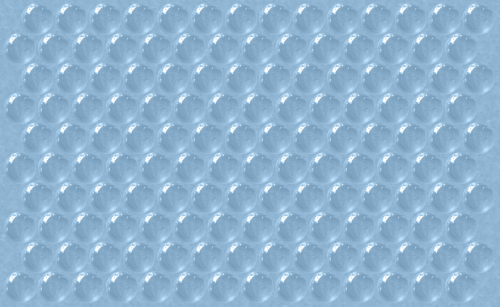
NOWs: vg stipendium 2017
NOWs:
vg stipendium 2017
Kestner Gesellschaft
Eröffnung 10. März 2017, 19 Uhr
Es sprechen:
Dr. Arta Valstar-Verhoff,
Stiftung Vordemberge-Gildewart
Christina Végh,
Direktorin Kestner Gesellschaft
Elmas Senol,
Kuratorin Kestner Gesellschaft
Künstlerinnen und Künstler sind anwesend.
Künstlerinnen und Künstler:
Katja Aufleger | Malte Bartsch | Feminist Land Art Retreat | Geritt Frohne-Brinkmann | Toulu Hassani | Verena Issel | Delia Jürgens | Annika Kahrs | Lucas Odahara | Claudia Piepenbrock | Max Schaffer | Timur Yüksel
In den unteren Räumen der Kestner Gesellschaft bringt die Gruppenausstellung “VG Stipendium 2017” zwölf junge künstlerische Positionen aus den Bereichen Malerei, Fotografie, Installation, Performance und Videokunst zusammen und bietet einen breitgefächerten Überblick über aktuellen norddeutschen Kunstszene. Aus den zwölf Nominierten wählt die Stiftungsjury einen Preisträger aus. Die Jury besteht aus einem internationalen Team an Kuratoren, Kunsthistorikern, Künstlern und Galeristen. Das VG Stipendium ist mit 60.000 CHF eine der höchstdotierten Auszeichnungen für europäische Nachwuchsförderung.
NOWs:
vg stipendium 2017
Kestner Gesellschaft
Eröffnung 10. März 2017, 19 Uhr
Es sprechen:
Dr. Arta Valstar-Verhoff,
Stiftung Vordemberge-Gildewart
Christina Végh,
Direktorin Kestner Gesellschaft
Elmas Senol,
Kuratorin Kestner Gesellschaft
Künstlerinnen und Künstler sind anwesend.
Künstlerinnen und Künstler:
Katja Aufleger | Malte Bartsch | Feminist Land Art Retreat | Geritt Frohne-Brinkmann | Toulu Hassani | Verena Issel | Delia Jürgens | Annika Kahrs | Lucas Odahara | Claudia Piepenbrock | Max Schaffer | Timur Yüksel
In den unteren Räumen der Kestner Gesellschaft bringt die Gruppenausstellung “VG Stipendium 2017” zwölf junge künstlerische Positionen aus den Bereichen Malerei, Fotografie, Installation, Performance und Videokunst zusammen und bietet einen breitgefächerten Überblick über aktuellen norddeutschen Kunstszene. Aus den zwölf Nominierten wählt die Stiftungsjury einen Preisträger aus. Die Jury besteht aus einem internationalen Team an Kuratoren, Kunsthistorikern, Künstlern und Galeristen. Das VG Stipendium ist mit 60.000 CHF eine der höchstdotierten Auszeichnungen für europäische Nachwuchsförderung.
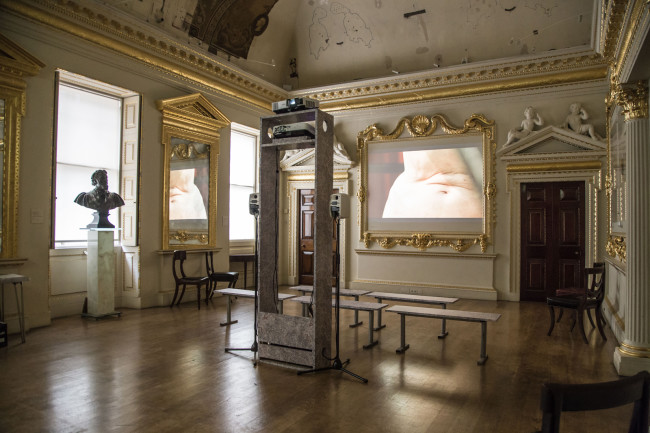
NOWs: Tilt by Clara Jo
Excerpt: Tilt. A film installation by Clara Jo. 2016
NOWs:
Clara Jo
presents TILT at
Film | Making | Space : Making Space Series, an evening of short screenings, performances and discussion to explore how filmmaking can open up new ways of thinking about architecture at the The Royal Academy of Arts, London.
Speakers include:
Dr Penelope Haralambidou – architect, researcher and lecturer at the Bartlett School of Architecture, UCL
Dr Richard Martin – public programmer at Tate and a teaching fellow at King’s College London
Clara Jo – Berlin and London based filmmaker and artist, previous Starr Fellow at the Royal Academy of Arts
Kreider & O’Leary – a poet and an architect who collaborate to make performance, installation and time-based media work
Liam Young – a speculative architect who operates across design, fiction and futures
—
Excerpt: Tilt. A film installation by Clara Jo. 2016
NOWs:
Clara Jo
presents TILT at
Film | Making | Space : Making Space Series, an evening of short screenings, performances and discussion to explore how filmmaking can open up new ways of thinking about architecture at the The Royal Academy of Arts, London.
Speakers include:
Dr Penelope Haralambidou – architect, researcher and lecturer at the Bartlett School of Architecture, UCL
Dr Richard Martin – public programmer at Tate and a teaching fellow at King’s College London
Clara Jo – Berlin and London based filmmaker and artist, previous Starr Fellow at the Royal Academy of Arts
Kreider & O’Leary – a poet and an architect who collaborate to make performance, installation and time-based media work
Liam Young – a speculative architect who operates across design, fiction and futures
—
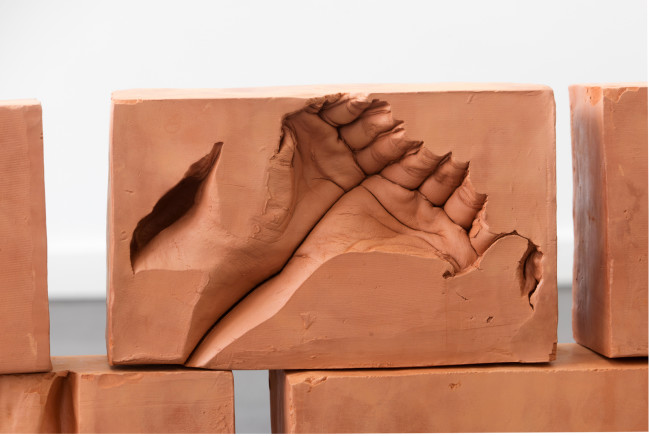
NOWs: In a hundred years all will be forgotten by Dan Stockholm
NOWs:
Dan Stockholm: By hand, 2016. Red clay (detail)
Dan Stockholm
In a hundred years all will be forgotten
im
Kunstverein Wolfsburg
Der Umwandlung von Alltäglichem in Kultur und von Gefundenem in Kunst begegnet man im Werk von Dan Stockholm auffallend häufig. Der dänische Künstler ist fasziniert von Orten und Architekturen, denen wie z. B. in der skulpturalen Arbeit „Ewige Flamme“ eine historische Bedeutung und eine narrative Spannung innewohnen, Nicht selten praktiziert er eine künstlerische Form von Archäologie, die intensive Recherchen und die Arbeit mit Objets Trouvés miteinschließt. Dinge, die ihm auffallen, erfahren einen ungewöhnlichen Transformationsprozess. Aus Feuersteinen werden Malwerkzeuge, aus nachleuchtenden Wandteilen in Kriegsbunkern werden monochrome Gemälde und aus dem Boden der Hinrichtungsstätte von dänischen Nazi-Kollaborateuren wird eine glänzende Bodenskulptur.
In jüngster Zeit beschäftigte sich Dan Stockholm mit dem Haus seines verstorbenen Vaters, dem Ort, an dem er aufgewachsen ist. Um sich auf adäquate Weise von diesem Ort zu verabschieden, führte er eine künstlerische Handlung im doppelten Sinn durch. Wenige Tage nach dem Tod seines Vaters begann er, dessen Haus in einer dreitägigen Aktion von außen methodisch, Zentimeter für Zentimeter, abzutasten. Er berührte dabei alle Stellen der Außenwand des Hauses mit seiner Hand und kreierte daraus die vielteilige Installation „HOUSE“, die die Struktur des Gebäudes aufgreift und in einen Ausstellungsraum überträgt.
In der Geschichte der bildenden Kunst war es erstmals das Ready-Made, das die unmittelbare Transformation von Alltagsgegenstand in einen kulturellen Zusammenhang markierte. Der Künstler nahm von nun an für sich in Anspruch, allein durch Proklamation und Kontextverschiebung ein Kunstwerk zu kreieren – eine Handlung von nahezu mythischem Charakter, die an alte Künstlerlegenden und Sagen (z. B. Pygmalion) erinnert. Die Qualität von Dan Stockholms Umwandlungen liegt in der Originalität und dem besonderen ästhetischen Reiz der Produkte des Kulturalisierungsprozesses.
Dan Stockholm: By hand, 2016. Red clay.
Dan Stockholm: The Phantoms.Phantom ridge (mountain ridge, Tokyo, Japan) 220x20x21
NOWs:
Dan Stockholm: By hand, 2016. Red clay (detail)
Dan Stockholm
In a hundred years all will be forgotten
im
Kunstverein Wolfsburg
Der Umwandlung von Alltäglichem in Kultur und von Gefundenem in Kunst begegnet man im Werk von Dan Stockholm auffallend häufig. Der dänische Künstler ist fasziniert von Orten und Architekturen, denen wie z. B. in der skulpturalen Arbeit „Ewige Flamme“ eine historische Bedeutung und eine narrative Spannung innewohnen, Nicht selten praktiziert er eine künstlerische Form von Archäologie, die intensive Recherchen und die Arbeit mit Objets Trouvés miteinschließt. Dinge, die ihm auffallen, erfahren einen ungewöhnlichen Transformationsprozess. Aus Feuersteinen werden Malwerkzeuge, aus nachleuchtenden Wandteilen in Kriegsbunkern werden monochrome Gemälde und aus dem Boden der Hinrichtungsstätte von dänischen Nazi-Kollaborateuren wird eine glänzende Bodenskulptur.
In jüngster Zeit beschäftigte sich Dan Stockholm mit dem Haus seines verstorbenen Vaters, dem Ort, an dem er aufgewachsen ist. Um sich auf adäquate Weise von diesem Ort zu verabschieden, führte er eine künstlerische Handlung im doppelten Sinn durch. Wenige Tage nach dem Tod seines Vaters begann er, dessen Haus in einer dreitägigen Aktion von außen methodisch, Zentimeter für Zentimeter, abzutasten. Er berührte dabei alle Stellen der Außenwand des Hauses mit seiner Hand und kreierte daraus die vielteilige Installation „HOUSE“, die die Struktur des Gebäudes aufgreift und in einen Ausstellungsraum überträgt.
In der Geschichte der bildenden Kunst war es erstmals das Ready-Made, das die unmittelbare Transformation von Alltagsgegenstand in einen kulturellen Zusammenhang markierte. Der Künstler nahm von nun an für sich in Anspruch, allein durch Proklamation und Kontextverschiebung ein Kunstwerk zu kreieren – eine Handlung von nahezu mythischem Charakter, die an alte Künstlerlegenden und Sagen (z. B. Pygmalion) erinnert. Die Qualität von Dan Stockholms Umwandlungen liegt in der Originalität und dem besonderen ästhetischen Reiz der Produkte des Kulturalisierungsprozesses.
Dan Stockholm: By hand, 2016. Red clay.
Dan Stockholm: The Phantoms.Phantom ridge (mountain ridge, Tokyo, Japan) 220x20x21
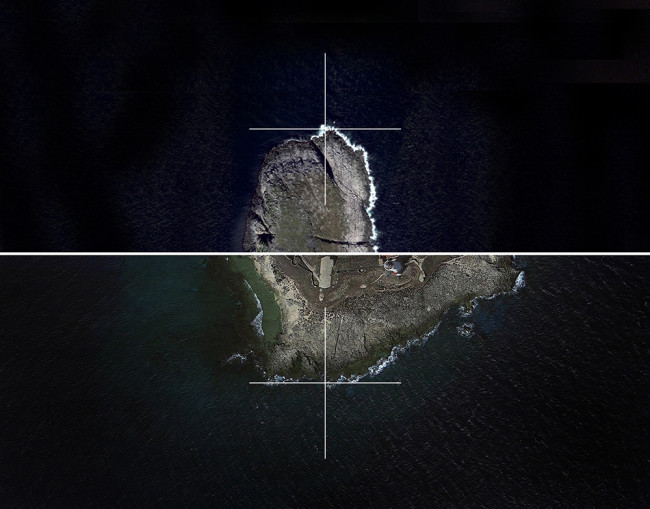
NOWs: Endpunkt Europa by Felix Kiessling
Felix Kiessling: Endpunkt Europa – Visualisierung.
NOWs:
Felix Kiessling: Endpunkt Europa
Seas and Oceans, Art and Science grant,
MS Wissenschaft, German Federal Ministry of Education and Research
Felix Kiessling is the winner of the art competition Seas and Oceans, bearing a prize of 6000 Euro. The five-person jury selected “Endpunkt Europa” (Europe’s outermost edge) by Felix Kiessling.
“What exactly is a coastline?” asks Felix Kiessling in his work. As the boundary between land and water, it is both of these at the same time – the exact border between the two is hard to define. Whether you are defining a location or measuring a distance, the results you come up with always depend on the accuracy of your measurement. A more accurate measurement will make a coastline look longer, because more details will be taken into account. In this work the artist is looking for the outer limits of Europe. He will choose a point on the coast and take one grain of sand, defining it as the northernmost or southernmost point of Europe. And his search for extremities doesn’t stop there: he will examine the grain of sand with an electron microscope. In its tiny structure we come even closer to Europe’s furthest extremity. Felix Kiessling invites the viewer to travel to a point that doesn’t really exist.
The visualisation shows the nothernmost point of mainland Europe, Kinnarodden in Norway, as well as the southernmost in Tarifa, Spain.
The jury selected Felix Kiessling’s concept for its outstanding artistic quality. The artist investigates the limits of human experience. The exact borders of Europe are called into question, along with the political, scientific and artistic methods we use to define boundaries. By exploring how we define limits, the artwork plays with the concept of scientific precision. Through its use of electron microscopy it brings art science and technology into exchange. The title evokes current politics, where Europe is seen as a place of refuge by the persecuted, but doesn’t always live up to its promise. On a personal level the artwork awakes the viewer’s longing to travel and discover new places. This brings us full circle to the topic “Seas and Oceans” which are always connected with expeditions into the unknown.
From April to October 2017 the MS Wissenschaft will visit over 40 cities and towns in Germany and Austria. Starting in Bonn the ship will travel up the Rhine to Koblenz. Other stops will include Saarbrücken, Karlsruhe, Stuttgart, Frankfurt am Main, Würzburg, Passau und Linz (Austria). Felix Kiessling’s artwork will complement around 30 hands on science exhibits and provide an artistic view of the exhibition’s theme “Seas and Oceans”.
Further information and the full itinerary for the MS Wissenschaft (available end of February) can be found on the website www.ms-wissenschaft.de
—
Felix Kiessling (*1980) lives and works in Berlin. He completed his studies at the Institut für Raumexperimente at Berlin University of the Arts as a Meisterschüler under Olafur Eliasson in 2014. The artist explores the parameters and boundaries of human perception in his conceptual and often scientific works. Precision and scale are fundamental to all Felix Kiessling’s works.
—
Science Year 2016*17 – Seas and Oceans
Marine Research is the topic of the Science Year 2016*17. 71 percent of our planet are covered with seas and oceans. They are important for climate, for nutrition, for economy – and they offer a habitat for many plants and animals. Scientists have been researching the seas for centuries; and still there are largely unexplored areas. The Science Year 2016*17 “Seas and Oceans” is about exploring waters, protecting them and using them sustainably. The Science Years are initiated by the Federal Ministry of Education and Research together with Wissenschaft im Dialog (Science in Dialogue). As an important instrument of science communication they bring research to the public. The German Marine Research Consortium (KDM) is the expert partner supporting the Science Year 2016*17. www.wissenschaftsjahr.de
Wissenschaft im Dialog
Wissenschaft im Dialog (WiD) aims to arouse and strengthen interest in science among people of every age and background. We aim to achieve this by organising discussions, education projects for schools, exhibitions and competitions – all focused on science and research. We develop new formats for science communication and run events across Germany to reach diverse target groups. Our goal is for as many people as possible to be involved in discussions about research, including its controversial aspects. WiD is a non-profit organisation founded in 1999 by the major German science organisations on the initiative of the ‘Stifterverband für die Deutsche Wissenschaft’. WiD also has several foundations as partners and receives significant support from the German Federal Ministry of Education and Research. www.wissenschaft-im-dialog.de
—
Felix Kiessling: Endpunkt Europa – Visualisierung.
NOWs:
Felix Kiessling: Endpunkt Europa
Meere und Ozeane, Kunst- und Wissenschaftswettbewerb,
MS Wissenschaft, Bundesministerium für Bildung und Forschung
Felix Kiessling ist Gewinner des mit 6000.- Euro dotierten Kunst- und Wissenschaftswettbewerb Meere und Ozeane. Seine Arbeit Endpunkt Europa wurde im Wettbewerbs von 5-köpfigen Jury ausgewählt.
In seiner Arbeit beschäftigt sich Felix Kiessling mit der Frage, was genau eine Küste ist. Als Schnittstelle zwischen Land und Meer ist sie beides zugleich, eine exakte Grenze ist nicht sichtbar. Die Bestimmung eines Punktes oder einer Länge ist immer abhängig von der Feinheit der Messung. Eine feinere Messung führt zu einer größeren Küstenlänge, weil mehr Details in Betracht gezogen werden. Der Künstler begibt sich in seiner Arbeit auf die Suche nach den äußersten Punkten Europas. Er legt einen Zipfel Küste fest, entnimmt ein Sandkorn und definiert es als vermeintlich nördlichstes und südlichstes Ende Europas. Die Suche nach dem Ende geht weiter: Das Sandkorn wird mit einem Elektronenmikroskop untersucht. In der Kleinheit seiner Struktur nähern wir uns seinem äußersten Endpunkt weiter an. Felix Kiessling ermöglicht es dem Betrachter einen Punkt zu bereisen, den es eigentlich nicht gibt.
Die Visualisierung zeigt den nördlichsten Punkt des europäischen Festlandes, Kinnarodden in Norwegen, und den südlichsten Punkt in Tarifa, Spanien.
Die Jury wählte den Entwurf von Felix Kiessling wegen seiner herausragenden künstlerischen Qualität. Der Künstler hinterfragt auf vielschichtige Weise die Illusion menschlicher Wahrnehmung. Die exakte Vermessung Europas wird ebenso in Frage gestellt wie politische, wissenschaftliche und künstlerische Methoden, Grenzen zu definieren. Mit der Bestimmung der Endpunkte nimmt die Arbeit spielerisch Bezug auf naturwissenschaftliche Exaktheit. Die Nutzung der Elektronenmikroskopie stellt zudem einen Transfer aus dem Technologie-Bereich dar, so dass in Kiesslings Entwurf Kunst, Wissenschaft und Technik miteinander in Austausch treten. Im Titel schwingen politische Aspekte von Europa als Zufluchtsort vieler Verfolgter mit, der sich nicht immer als solcher bewahrheitet. Nicht zuletzt berührt die Arbeit die Gefühle der Betrachter über das Reisen und der mit ihr verbundenen Sehnsucht, neue Orte zu entdecken. Hier schließt sich der Kreis zur Erforschung von Meeren und Ozeanen, die immer mit Expeditionen ins Unbekannte verbunden sind.
Endpunkt Europa wird auf dem Ausstellungsschiff MS Wissenschaft „Meere und Ozeane“ gezeigt werden. Das Schiff ist voraussichtlich ab Ende April bis maximal Ende des Jahres 2017 unterwegs. Die Arbeit ergänzt die rund 30 wissenschaftlichen Mitmach-Exponate um einen künstlerischen Blick auf das Ausstellungsthema.
Mehr Informationen und den kompletten Tourplan der MS Wissenschaft (online ab Ende Februar) gibt es auf der Webseite www.ms-wissenschaft.de
—
Felix Kiessling (*1980) lebt und arbeitet in Berlin. 2014 hat er als Meisterschüler bei Olafur Eliasson am Institut für Raumexperimente und der Universität der Künste Berlin sein Studium abgeschlossen. In seinen konzeptuellen, oft wissenschaftlichen Arbeiten, hinterfragt der Künstler die Grenzen und Parameter der menschlichen Wahrnehmung. Präzision und Skalierung sind grundlegend für die Arbeiten von Felix Kiessling.
ENDPUNKT EUROPA
1967 STELLTE DER MATHEMATIKER BENOIT MANDELBROT DIE FRAGE: WIE LANG IST DIE KÜSTE GROSSBRITANNIENS? WEGEN IHRER UNREGELMÄSSIGEN FORM HÄNGT DIE ERMITTELTE LÄNGE EINER KÜSTE VON DER FEINHEIT DER MESSUNG AB. WAS GENAU IST EINE KÜSTE? SIE IST SCHNITTSTELLE ZWISCHEN LAND UND MEER. SIE IST BEIDES ZUGLEICH. VIELERORTS STELLT SIE EINE POLITISCHE GRENZE DAR. ABER WO GENAU VERLÄUFT DIESE TRENNLINIE ZWISCHEN LAND UND MEER? Expand...
ENDPUNKT EUROPA 1967 STELLTE DER MATHEMATIKER BENOIT MANDELBROT DIE FRAGE: WIE LANG IST DIE KÜSTE GROSSBRITANNIENS? WEGEN IHRER UNREGELMÄSSIGEN FORM HÄNGT DIE ERMITTELTE LÄNGE EINER KÜSTE VON DER FEINHEIT DER MESSUNG AB. EINE FEINERE MESSUNG FÜHRT ZU EINER GRÖSSEREN KÜSTENLÄNGE WEIL MEHR EINBUCHTUNGEN MEHR DETAILS DABEI IN BETRACHT GEZOGEN WERDEN. MANDELBROTS FRAGE SPIELTE AUF UNSERE UNFÄHIGKEIT AN EINE UNIVERSELLE OBJEKTIVE AUSSAGE MACHEN ZU KÖNNEN. BEOBACHTUNGEN SIND NICHT ALLGEMEINGÜLTIG, SIE SIND IMMER ABHÄNGIG VOM BETRACHTER.
WAS GENAU IST EINE KÜSTE? SIE IST SCHNITTSTELLE ZWISCHEN LAND UND MEER. SIE IST BEIDES ZUGLEICH. VIELERORTS STELLT SIE EINE POLITISCHE GRENZE DAR. ABER WO GENAU VERLÄUFT DIESE TRENNLINIE ZWISCHEN LAND UND MEER?
SEIT 2013 BEGEBE ICH MICH AUF DIE SUCHE NACH ENDPUNKTEN VON LANDMASSEN, LÄNDERN, INSELN UND FELSFORMATIONEN. DER JEWEILIGEN KÜSTENREGION ENTNEHME ICH AM VERMEINTLICH NÖRDLICHSTEN PUNKT, DER GRENZE ZWISCHEN LAND UND MEER, ETWAS MATERIAL – EIN SANDKORN, EINEN ZIPFEL KÜSTE, UM DIESE ANSCHLIESSEND IN ZUSAMMENARBEIT MIT DEM HEINRICH PETTE INSTITUT IN HAMBURG MIT HILFE EINES ELEKTRONENMIKROSKOPES ZU VERGRÖSSERN.
SO VERSUCHTE ICH DEN ABSOLUT NÖRDLICHSTEN NORDEN VON DÄNEMARK ZU FINDEN, IN DEM ICH DAS NÖDRLICHSTE SANDKORN VON SKAGEN (DER ORT, AN DEM SICH NORD- UND OSTSEE BEGEGNEN) EINSAMMELTE, UM DIESES WIEDERUM MIT DEM MIKROSKOP AN SEINEM NÖRDLICHSTEN ENDE ZU BEREISEN.
—
Wissenschaftsjahr 2016*17 – Meere und Ozeane
Die Meeresforschung ist Thema des Wissenschaftsjahres 2016*17. Meere und Ozeane bedecken zu rund 70 Prozent unseren Planeten. Sie sind Klimamaschine, Nahrungsquelle, Wirtschaftsraum – und sie bieten für viele Pflanzen und Tiere Platz zum Leben. Wissenschaftlerinnen und Wissenschaftler untersuchen die Ozeane seit langem; und doch sind sie noch immer geheimnisvoll und in weiten Teilen unerforscht. Im Wissenschaftsjahr 2016*17 geht es um die Entdeckung der Meere und Ozeane, ihren Schutz und eine nachhaltige Nutzung. Die Wissenschaftsjahre sind eine Initiative des Bundesministeriums für Bildung und Forschung (BMBF) gemeinsam mit Wissenschaft im Dialog (WiD). Sie tragen als zentrales Instrument der Wissenschaftskommunikation Forschung in die Öffentlichkeit und unterstützen den Dialog zwischen Forschung und Gesellschaft. Das Wissenschaftsjahr 2016*17 wird vom Konsortium Deutsche Meeresforschung (KDM) als fachlichem Partner begleitet. www.wissenschaftsjahr.de
Wissenschaft im Dialog – die Initiative der deutschen Wissenschaft
Wissenschaft im Dialog (WiD) möchte bei Menschen aller Altersgruppen und jedes Bildungsstandes Interesse an Forschungsthemenwecken und stärken. Dafür organisiert WiD Diskussionen, Schulprojekte, Ausstellungen und Wettbewerberund um Forschung und Wissenschaft – für alle Zielgruppen und in ganz Deutschland. Ziel dabei ist, dass sichmöglichst viele Menschen auch mit kontroversen Themen der Forschung auseinandersetzen und an aktuellen Diskussionenbeteiligen. Die gemeinnützige Organisation wurde 1999 auf Initiative des Stifterverbandes für die Deutsche Wissenschaftvon den großen deutschen Wissenschaftsorganisationen gegründet. Als Partner kamen Stiftungen hinzu. Maßgeblichunterstützt wird WiD vom BMBF. www.wissenschaft-im-dialog.de
—
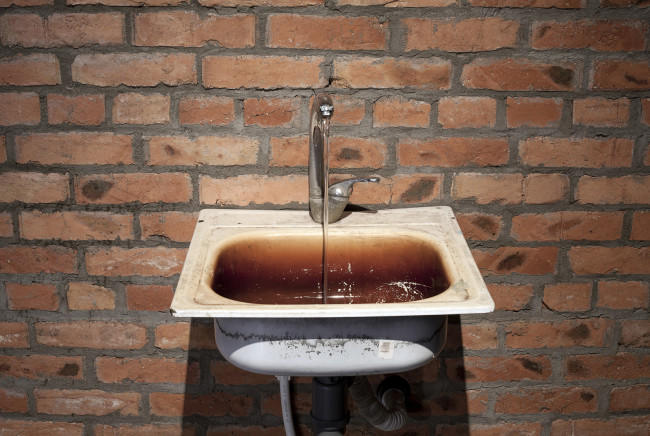
NOWs: Zerbrechung by Fabian Knecht
NOWs:
Fabian Knecht:
Zerbrechung
at
CCA ZARYA, Vladivostok
This exhibition marks German artist Fabian Knecht’s first solo show in Russia. One of the most prominent figures of Berlin’s contemporary art scene, Knecht works with temporal and spatial installations, performances and actions. This exhibition brings together works from different times, based on a critical understanding of reality and art systems on the microlevel of personal experience and everyday observations of particular enviromental and social conditions.
This exhibition is built around the notion of a lasting thing. The artist “animates” objects through intervening into daily life with situations that break from the conventional order of things, giving rise to new meanings and values within both object-oriented and social established and normalized relationship. At the same time, the exhibition attempts to undermine the power of museums and galleries as the primary sites for the production and distribution of art and thus places that effectively control the creation of new ideas.
The title of the exhibition – ZERBRECHUNG – has been lifted from one of the artist’s own works. It is a neologism Knecht generated by taking the verb zerbrechen (“to break, to destroy, to crack”), which describes the effect of the action, and transforming it into a noun through the addition of the suffix –UNG. The artist applies this method for naming his works that reflects one of the key principles of his practice: the objectification of actions, or the transformation of action within the work of art.
Simple in form, uncompromising and unmediated, Knecht’s works presented in this exhibition purposefully stir up feelings of discomfort and anxiety in the viewer. Sometimes outsider-intruders, non-functional within their immediate enviroment, these objects and actions are positioned beyond the bounds of empirical fact, forging a site of communication between the world of the artist and the world of the viewer, between art and reality.
The lifespan of such works is always inherently limited and part of its existence is the speed of its forgetting. Deconstruction, disappearance, evanescence – these are the units of measurements within Fabian Knecht works. As the artist himself puts it, playing off the famous Mark Twain adage: they knew that it was a lost cause, and that’s why they did it.
CURATED BY ANASTASIA MARUKHINA
NOWs:
Fabian Knecht:
Zerbrechung
at
CCA ZARYA, Vladivostok
This exhibition marks German artist Fabian Knecht’s first solo show in Russia. One of the most prominent figures of Berlin’s contemporary art scene, Knecht works with temporal and spatial installations, performances and actions. This exhibition brings together works from different times, based on a critical understanding of reality and art systems on the microlevel of personal experience and everyday observations of particular enviromental and social conditions.
This exhibition is built around the notion of a lasting thing. The artist “animates” objects through intervening into daily life with situations that break from the conventional order of things, giving rise to new meanings and values within both object-oriented and social established and normalized relationship. At the same time, the exhibition attempts to undermine the power of museums and galleries as the primary sites for the production and distribution of art and thus places that effectively control the creation of new ideas.
The title of the exhibition – ZERBRECHUNG – has been lifted from one of the artist’s own works. It is a neologism Knecht generated by taking the verb zerbrechen (“to break, to destroy, to crack”), which describes the effect of the action, and transforming it into a noun through the addition of the suffix –UNG. The artist applies this method for naming his works that reflects one of the key principles of his practice: the objectification of actions, or the transformation of action within the work of art.
Simple in form, uncompromising and unmediated, Knecht’s works presented in this exhibition purposefully stir up feelings of discomfort and anxiety in the viewer. Sometimes outsider-intruders, non-functional within their immediate enviroment, these objects and actions are positioned beyond the bounds of empirical fact, forging a site of communication between the world of the artist and the world of the viewer, between art and reality.
The lifespan of such works is always inherently limited and part of its existence is the speed of its forgetting. Deconstruction, disappearance, evanescence – these are the units of measurements within Fabian Knecht works. As the artist himself puts it, playing off the famous Mark Twain adage: they knew that it was a lost cause, and that’s why they did it.
CURATED BY ANASTASIA MARUKHINA
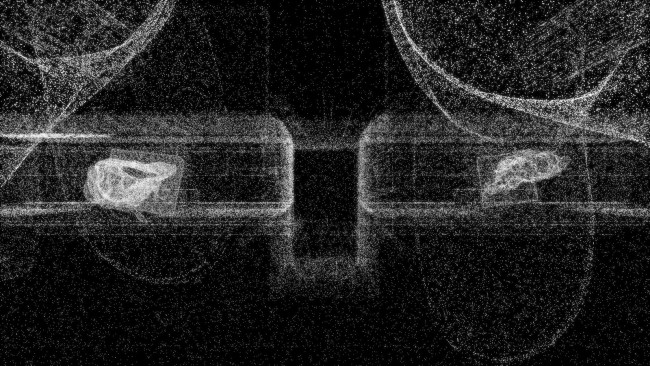
NOWs: SPACE A&T Workshop with Clara Jo
NOWs:
(in)versions
Generating Narratives Through Virtual Transcription
A workshop with artist Clara Jo exploring the potential of user experience with objects transcribed into virtual reality at SPACE, London.
This workshop invites participants to co-narrate new stories around objects – both as agents and surrogates – by translating them into imagined VR situations. The proposition here is that an understanding of how culture is spatialized, constructed, and mediated through human interaction might guide us to approach space as a narrative generating force. Conversely, fragmenting and disorienting audience perception with these tools could be harnessed to discover new ways of storytelling to sensorially engage with and re-imagine objects within the archive.
The aim is to reveal latent narratives within object-based archives, and to further stretch the affective potentials of VR to purposefully re-inscribe these material and immaterial spaces. Participants will be invited to use recording equipment and VR headsets during the co-inquiry to explore new methods for developing immersive experiences in connection with linear, narrative filmmaking.
Clara Jo’s recent film and sculptural installations work in conversation with sites implicated in revisionist histories. Her residency with SPACE takes place at The White Building, London’s centre for art, technology and sustainability. As an extension of her current practice, Jo is pursuing a new trajectory of research in interactive, virtual reality interfaces geared towards exhibition in public space. Her work has been featured in exhibitions and screenings at the Royal Academy of Arts (London), Akademie der Künste (Berlin), Staatliche Museen zu Berlin, White Columns (New York), the Swiss Institute (New York), and the Alliance Ethio-Française d’Addis-Abeba
With contributions by Harry Brenton, Director, BespokeVR and George Oates, Co-founder and CEO, Museum in a Box. Supported by The Goethe Institute London.
Interview with Clara Jo.
—
NOWs:
(in)versions
Generating Narratives Through Virtual Transcription
A workshop with artist Clara Jo exploring the potential of user experience with objects transcribed into virtual reality at SPACE, London.
This workshop invites participants to co-narrate new stories around objects – both as agents and surrogates – by translating them into imagined VR situations. The proposition here is that an understanding of how culture is spatialized, constructed, and mediated through human interaction might guide us to approach space as a narrative generating force. Conversely, fragmenting and disorienting audience perception with these tools could be harnessed to discover new ways of storytelling to sensorially engage with and re-imagine objects within the archive.
The aim is to reveal latent narratives within object-based archives, and to further stretch the affective potentials of VR to purposefully re-inscribe these material and immaterial spaces. Participants will be invited to use recording equipment and VR headsets during the co-inquiry to explore new methods for developing immersive experiences in connection with linear, narrative filmmaking.
Clara Jo’s recent film and sculptural installations work in conversation with sites implicated in revisionist histories. Her residency with SPACE takes place at The White Building, London’s centre for art, technology and sustainability. As an extension of her current practice, Jo is pursuing a new trajectory of research in interactive, virtual reality interfaces geared towards exhibition in public space. Her work has been featured in exhibitions and screenings at the Royal Academy of Arts (London), Akademie der Künste (Berlin), Staatliche Museen zu Berlin, White Columns (New York), the Swiss Institute (New York), and the Alliance Ethio-Française d’Addis-Abeba
With contributions by Harry Brenton, Director, BespokeVR and George Oates, Co-founder and CEO, Museum in a Box. Supported by The Goethe Institute London.
Interview with Clara Jo.
—
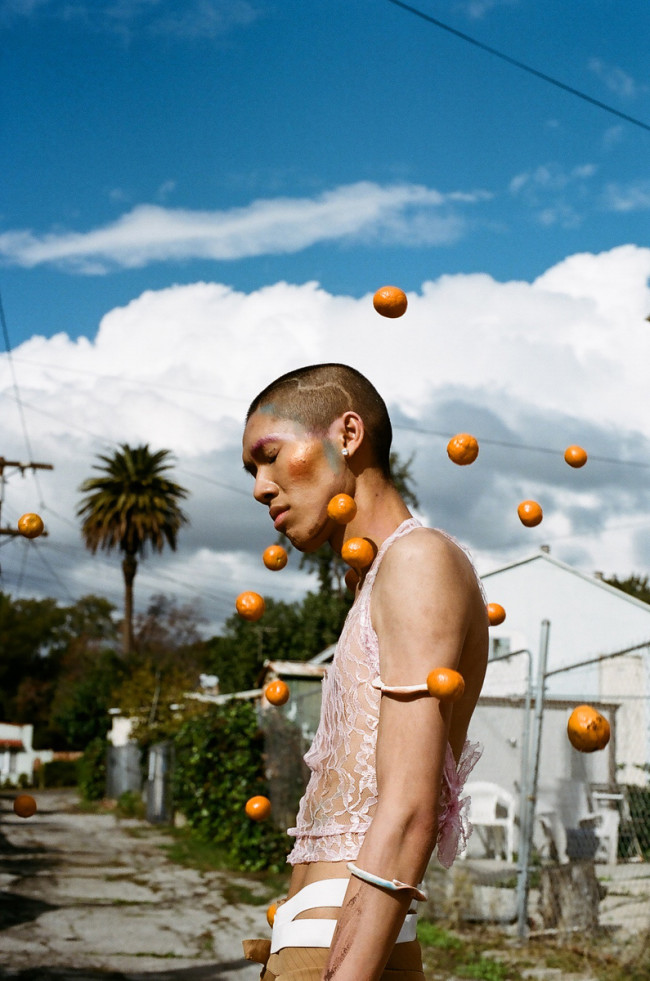
NOWs: Shell She’ll Crack by Jonas Wendelin & Luki von der Gracht
NOWs:
SHELL SHE’LL CRACK
by
Jonas Wendelin & Luki von der Gracht
King Georg
Sudermanstraße 2, 50670 Köln
February 1, 2017
Doors open 7pm
FASHION SHOW 8pm
Photography by Dicko Chan
Clothes customized by J.Sims
with
Marc Elsner
Misa Chu
Dennis Wintermeyer
and a concert by
ASIAN HOUSEWIFES
NOWs:
SHELL SHE’LL CRACK
by
Jonas Wendelin & Luki von der Gracht
King Georg
Sudermanstraße 2, 50670 Köln
February 1, 2017
Doors open 7pm
FASHION SHOW 8pm
Photography by Dicko Chan
Clothes customized by J.Sims
with
Marc Elsner
Misa Chu
Dennis Wintermeyer
and a concert by
ASIAN HOUSEWIFES
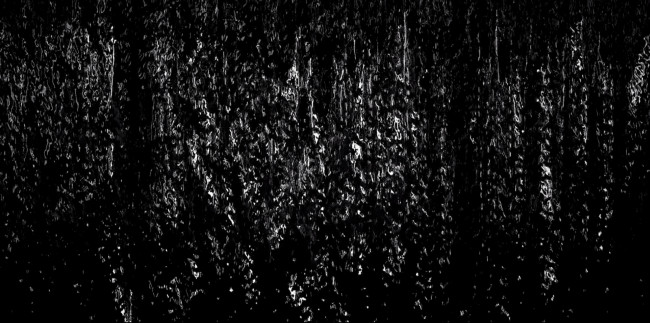
NOWs: A / A – Golden Gates by Andreas Greiner & Armin Keplinger
NOWs:
A / A – GOLDEN GATES
Andreas Greiner and Armin Keplinger
Opening: Saturday 28th January 2017, 7-10 pm
Andreas Greiner and Armin Keplinger present GOLDEN GATES – their first solo exhibition as the artists duo A/A at Gallery KWADRAT. For the exhibition they have focussed on progressive methods and technology, assembling them and thus instating them as gateways of the future. Nonetheless, the visual appearance eclipses its technical context and the beauty of the forward-looking science takes centre stage: floating water, fluid metal, a waterfall frozen into immobility and countless condensation trails visualise the aesthetics of progress. The works are seductive, but Greiner and Keplinger do not fail to uncover the ambivalence of technological innovation: Hiding behind the shiny facade of new materials and techniques, progress’ destructive power waits to be unleashed.
The path of progress is paved, the gateways to the future stand open, but what lies ahead cannot be known and is shrouded in darkness. Only nuances distinguish utopias from dystopias and surmise the question if all that glitters is really gold.
Curated by Lydia Korndörfer
—
NOWs:
A / A – GOLDEN GATES
Andreas Greiner und Armin Keplinger
Eröffnung: Samstag, 28. Januar 2017, 19-22 Uhr
Andreas Greiner und Armin Keplinger zeigen mit GOLDEN GATES ihre erste Einzelschau als Künstlerduo A / A in der Galerie KWADRAT. In der Ausstellung haben sich die Künstler fortschrittsverheißenden Techniken und Materialien gewidmet, die als symbolische Pforten zur Zukunft versammelt werden. Der technische Kontext tritt hinter der visuellen Erscheinung zurück. In den Vordergrund rücken Zukunftsglaube und der poetische Charakter der Wissenschaft: Schwebendes Wasser, flüssiges Metall, eingefrorene Wasserfälle und Kondensstreifenschauer führen die Schönheit des Fortschritts vor Augen. Die Kunstwerke verführen und doch denken Greiner und Keplinger die Ambivalenz der Entwicklungen mit: Hinter der glänzenden Fassade der neuen Techniken und Materialien verbirgt sich oftmals ihre zerstörerische Potenz.
Die Weichen für den Fortschritt sind gestellt, die Tore zur Zukunft geöffnet, doch die kommenden Ereignisse und Welten bleiben ungewiss und liegen im Dunkeln. Nuancen unterscheiden Utopien von Dystopien und es bleibt fraglich, ob alles was glänzt, tatsächlich Gold ist.
Kuratiert von Lydia Korndörfer
—
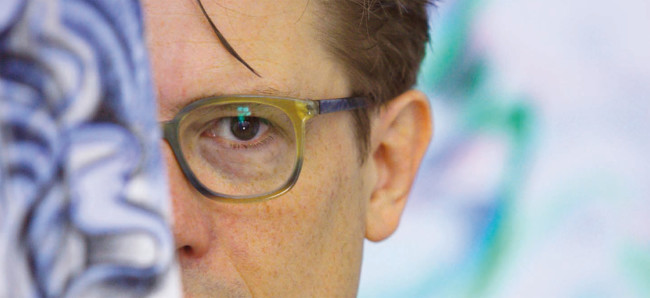
NOWs: Jan St. Werner in Concert
Jan St. Werner, 2016, Foto: Jens Ziehe
NOWs:
Jan St. Werner
Concert at n.b.k.
Sunday, January 29, 2017, 8 pm
Free entrance
Jan St. Werner (b. 1969 in Nuremberg) is an artist and musician. He became internationally known in 1993 as the co-founder of the innovative and groundbreaking electro-duo Mouse on Mars, who until today have released more than a dozen albums and gave concerts worldwide. Additionally, in 1995, Werner joined Markus Popp for the project Microstoria and performed as a solo artist under his own name as well as under the pseudonyms of Lithops, Noisemashinetapes and Neuter River. Numerous other influential releases sprang from this. In the mid-2000s, Jan St. Werner was the artistic director of the Amsterdam Studio for Electro-Instrumental Music (STEIM), which is dedicated to the research and development of new instruments for electronic music and digital art. Werner’s activities also extend into the visual arts, in that he creates installations and produces music for them, as well as for the works of other artists, such as Rosa Barba. In 2013, Jan St. Werner released Blaze Color Burn, which was the beginning of a series of experimental sound recordings entitled Fiepblatter Catalogue (released by Thrill Jockey Records, Chicago), followed by three further conceptual albums until 2016. At Neuer Berliner Kunstverein, Jan St. Werner presents selected material from this series.
Werner is currently a guest lecturer at the Department of Art, Culture and Technology (ACT) at the Massachusetts Institute of Technology (MIT) and teaches a class in the new field of study “Experiments in the Future of Record Producing” for the New York University Tisch School of the Arts in Berlin.
Rosa Barba’s installation The Color Out of Space with sound by Jan St. Werner is running from 7pm to 9pm in the gallery on the 1st floor.
—
Jan St. Werner, 2016, Foto: Jens Ziehe
NOWs:
Jan St. Werner
Konzert in der n.b.k.
Sonntag, 29. Januar 2017, 20 Uhr
Eintritt frei
Jan St. Werner (*1969 in Nürnberg) ist Künstler und Musiker. Er wurde 1993 als Mitbegründer des innovativen wie Maßstäbe setzenden Elektro-Duos Mouse on Mars international bekannt, das bis heute mehr als ein Dutzend Alben veröffentlichte und weltweit Konzerte gab.
Daneben tat Werner sich 1995 mit Markus Popp für das Projekt Microstoria zusammen und trat unter seinem eigenen Namen sowie den Pseudonymen Lithops, Noisemashinetapes und Neuter River als Solokünstler auf; es entstanden zahlreiche weitere einflussreiche Veröffentlichungen. Mitte der 2000er Jahre war Jan St. Werner künstlerischer Leiter des Amsterdamer Studio for Electro-Instrumental Music (STEIM), das sich der Erforschung und Entwicklung neuer Instrumente für elektronische Musik und digitale Kunst widmet. Werners Aktivitäten erstrecken sich auch insofern in die Bildende Kunst, als dass er Installationen schafft und Musik für diese, wie auch die Arbeiten von anderen KünstlerInnen produziert, etwa für Rosa Barba. 2013 brachte Jan St. Werner Blaze Colour Burn heraus, das den Auftakt einer Serie von experimentellen Sound-Aufnahmen mit dem Titel Fiepblatter Catalogue bildete (erschienen bei Thrill Jockey Records, Chicago), bis 2016 folgten drei weitere konzeptuelle Alben. Im Neuen Berliner Kunstverein präsentiert Jan St. Werner ausgewähltes Material aus dieser Werkreihe.
Zur Zeit ist Werner Gastdozent am Department für Art, Culture and Technology (ACT) des Massachusetts Institute of Technology (MIT) und leitet eine Klasse mit dem neuen Studienfeld „Experiments in the Future of Record Producing“ der New York University Tisch School of the Arts in Berlin.
Rosa Barba’s Installation The Color Out of Space mit Sound von Jan St. Werner ist von 19 bis 21 Uhr in den Galerieräumen im 1. Stock zu sehen.
—
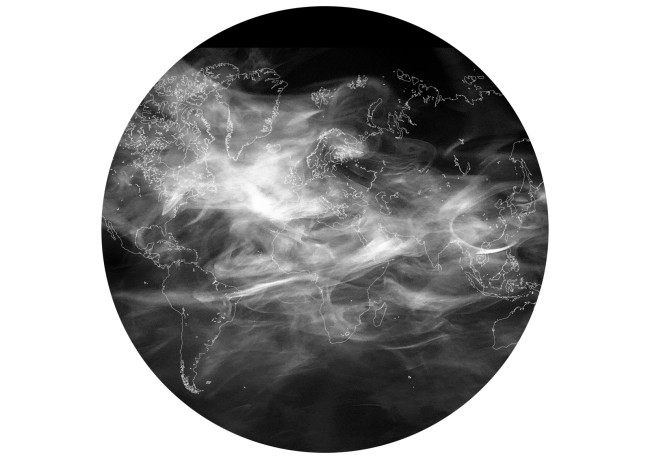
NOWs: Das Numen – Meatus
Das Numen Meatus, 2016, courtesy Das Numen and DITTRICH & SCHLECHTRIEM, Berlin
NOWs:
Das Numen – Meatus
Opening 27th January 2017, 18 – 21 h
Galerie DITTRICH & SCHLECHTRIEM
Something intangible and ephemeral fills the gallery’s rooms: sounds emerge from the downstairs area, produced by six flue pipes and one reed pipe, all between 13.8 and 15.7 feet long, that are suspended in a horizontal position. Das Numen feed readings—wind velocities and directions—from twenty weather stations into a computer program that converts the data into impulses. The latter in turn control valves that allow compressed air—wind, in organ-maker parlance—to pass through the pipes, which begin to sound. For the visitor in the lower gallery, the instrument readings recorded synchronously at various locations around the world and transferred into sounds make for a curious aesthetic experience. Scientific data that, due to its enormous quantity, often goes unused is transformed into sensual sounds.
Another important component of the installation Das Numen Meatus is the space around it: there is no sound without a resonance chamber; without air there is no resonance, no wind, no climate. And life as we know would not exist without the atmosphere.
Das Numen is Julian Charrière, Andreas Greiner, Markus Hoffmann, and Felix Kiessling—all four studied at Olafur Eliasson’s Institut für Raumexperimente, which was affiliated with the Berlin University of the Arts (UdK) and premised on the methodological primacy of experimentation. In this spirit, the four artists work both individually and in temporary collaborations under the label Das Numen. Engagement with the surroundings as well as with the present moment would seem to be a defining feature of their art, which addresses social issues as well as natural realities. Earlier projects by the group were implemented at the KW Institute for Contemporary Art, the Deutsches Architekturzentrum Berlin, and the Schinkel Pavillon, among other venues. The artists often draw on the expertise of specialists and scientists in their efforts to produce vivid objective representations of complex processes in works that frequently recall experimental setups. Displacing the phenomena under consideration into the art context, their art raises important questions.
A publication in English and German with an essay by Boris Pofalla will be released in conjunction with the exhibition.
The gallery is about to move to a more spacious venue—the new gallery at Linienstraße 23, right behind the Volksbühne, will be inaugurated with the installation Das Numen Meatus.
—
Das Numen Meatus, 2016, courtesy Das Numen and DITTRICH & SCHLECHTRIEM, Berlin
NOWs:
Das Numen – Meatus
Eröffnung 27. Januar 2017, 18 – 21 Uhr
Galerie DITTRICH & SCHLECHTRIEM
Etwas nicht Greifbares, ephemeres füllt die Räume der Galerie: Töne kommen aus dem unteren Teil, erzeugt durch sechs Labialpfeifen sowie eine Zungenpfeife, alle zwischen 4,20 und 4,80 Meter lang, waagerecht in der Luft hängend. Von zwanzig Wetterstationen live erhobenen Windgeschwindigkeiten und –richtungen werden von Das Numen genutzt und mittels einer Software in Impulse umgewandelt. Diese wiederum steuern Ventile, die komprimierte Luft – im Orgelbau Wind genannt – durch die Pfeifen strömen lassen und zum Klingen bringen. Der Besucher der Galerie befindet sich in dem tieferliegenden Ausstellungsraum, erlebt aber gleichzeitig durch die Messdaten, die an verschiedenen Punkten der Erde zeitgleich aufgezeichnet und in Töne transferiert werden, eine ästhetische Erfahrung. Wissenschaftliche Daten, die in ihrer schieren Menge oft ungenutzt bleiben, werden in sinnliche Töne gewandelt. Eine weitere wichtige Komponente der Installation Das Numen Meatus ist der sie umgebende Raum: ohne Resonanzraum entsteht kein Klang, ohne Luft gibt es keine Resonanz, keinen Wind, kein Klima. Ohne Atmosphäre gibt es auch kein Leben, wie wir es kennen.
Das Numen besteht aus Julian Charrière, Andreas Greiner, Markus Hoffmann und Felix Kiessling, alle haben bei Olafur Eliassons Institut für Raumexperimente studiert. Das an die
Universität der Künste angeschlossene Institut folgte der Prämisse Experimentieren als Methode. Diesen Geist folgend, arbeiten die vier Künstler sowohl alleine, als auch temporär miteinander als Das Numen. Ihre Kunst scheint grundsätzlich mit ihrer Umgebung verbunden, und mit der Gegenwart, greift gesellschaftliche Themen auf und Naturgegebenheiten. Frühere Projekte realisierte die Gruppe unter anderem im KW Institute for Contemporary Art, im Deutschen Architekturzentrum Berlin oder dem Schinkel Pavillon. Oftmals greifen die Künstler auf die Expertise von Spezialisten und Wissenschaftlern zurück, um komplizierte Prozesse in ihren – oftmals an Experimente erinnernden – Werken zu verdinglichen, und diese in den Kunstkontext zu rücken, erlebbar zu machen und Fragen aufzuwerfen.
Ausstellungsbegleitend wird eine Publikation in englischer und deutscher Sprache erscheinen mit einem Text von Boris Pofalla.
Die Galerie DITTRICH &SCHLECHTRIEM zieht um und vergrößert sich – eingeweiht werden die neuen Räume in der Linienstraße 23, direkt hinter der Volksbühne, mit der Installation Das Numen Meatus.
—
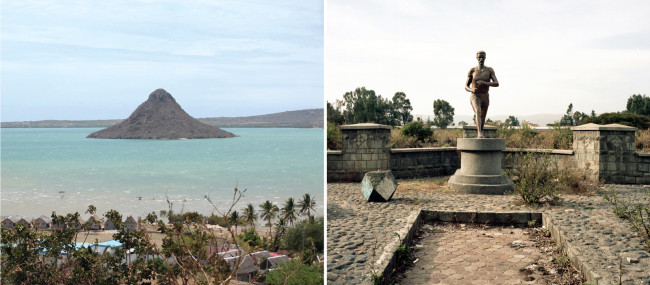
NOWs: Marking Triangles by Yuichiro Tamura & Raul Walch
NOWs:
“Marking Triangles”
Dialogausstellung von Tamura Yuichiro & Raul Walch
im Japanischen Kulturinstitut, Köln (The Japan Foundation)
Yuichiro Tamura: Über das Mutmaßen
Es mag genau ein Jahr her sein, dass mich ein Bekannter kontaktierte und fragte, ob ich einen Stein nach Afrika zurückbringen könne. Auf meine Nachfrage erzählte er, dass der Stein, der vor fünf Jahren aus einer bestimmten Höhle in Afrika mitgebracht worden sei... Expand...
Es mag genau ein Jahr her sein, dass mich ein Bekannter kontaktierte und fragte, ob ich einen Stein nach Afrika zurückbringen könne. Auf meine Nachfrage erzählte er, dass der Stein, der vor fuünf Jahren aus einer bestimmten Höhle in Afrika mitgebracht worden sei, Unglück über die Familie bringe. Die Person, die den Stein mitgebracht hatte, ist ein Bekannter meines Bekannten, den ich selber aber nie getroffen habe. Es sei dahingestellt, warum er gerade mich fragte, aber ich übernahm die Aufgabe, weil die Aussicht, für die Rückgabe des Steins in das mir unbekannte Afrika zu reisen, reizvoll und auch irgendwie witzig war.
Von Tokyo Narita aus ging der Flug über Bangkok. Es dauerte einen ganzen Tag, bis ich in der Hauptstadt von Madagaskar ankam. In Begleitung eines lokalen Guides bin ich vom Flughafen aus in einem Mitsubishi mit Vierradantrieb zwei Tage und Nächte unterwegs gewesen, bis wir endlich in der Nähe der Höhle ankamen. Wir stiegen aus dem Wagen und marschierten etwa drei Stunden durch den Dschungel, bis sich vor uns der Eingang einer großen, stockfinsteren Höhle auftat. Im Inneren der Höhle gab es kein Licht, allein unsere Taschenlampen erhellten sie diffus. Dem Guide zufolge wurde diese Höhle anscheinend schon seit uralter Zeit von Menschen genutzt und tatsächlich waren hier und dort verstreut Anzeichen von menschlichen Knochen auszumachen. In einer Ecke im hintersten Bereich der Höhle, wo die Luft durch hohe Feuchtigkeit und Temperatur besonders bedrückend war, lag unser Zielort. Der Guide gab mir ein Zeichen, dass ich ihm den Stein anreichen solle. Nach der Übergabe hob er den Stein über seinen Kopf und platzierte ihn an einer von der Decke hervorstehenden Stelle. Der Stein passte genau.
Am nächsten Tag bin ich in eine Hafenstadt im Norden von Madagaskar gefahren. Beim Gang durch die Stadt habe ich von Einheimischen erfahren, dass es dort ein Denkmal für Japaner gebe. Bei der Recherche, warum es gerade an diesem weit entfernten Ort steht, fand ich heraus, dass Madagaskar, das während der Zeit des Zweiten Weltkriegs eigentlich französische Kolonie war, infolge der deutschen Besatzung Frankreichs unter deutscher Regierungsgewalt stand. Die Aliierten, die das nicht guthießen, wollten den Hafen von Madagaskar unter ihre Kontrolle bringen. Um dies zu verhindern, wandte sich Deutschland mit der Bitte um Unterstützung an Japan. So wurden die britischen Kriegsschiffe, die im Hafen vor Anker gegangen waren, durch Torpedos von U-Booten aus dem fernen Japan versenkt. Später gingen die japanischen Besatzungsmitglieder der U-Boote an Land, wo sie im Kampf mit den englischen Soldaten den Tod fanden. Ich hatte nicht erwartet, an einem solchen Ort eine solche Geschichte zu hören. Letzten Endes hat Japan aufgrund der weiten Entfernung das Interesse an diesem Land verloren. Diese Tatsachen wurden von vielen Japanern vergessen. Es heißt, dass anfangs die Existenz von Madagaskar, das Marco Polo in seinem Reisebericht Il Milione – Die Wunder der Welt beschrieben hatte, angezweifelt wurde. Doch am 10. August 1500 wurde die Insel von dem Portugiesen Diogo Dias „entdeckt“. Später hat Portugal versucht, Madagaskar zu kolonialisieren, was jedoch erfolglos blieb.
Der Plan von Portugal, Madagaskar in koloniale Abhängigkeit zu bringen, endete mit einem Misserfolg. Die Ruder der portugiesischen Schiffe wurden nun in Richtung Japan im Fernen Osten gerichtet. Schließlich landeten die Portugiesen im Jahr 1543 in Japan, und zwar auf der Insel Tanegashima, was großen Einfluss auf das spätere Japan ausüben sollte. So haben die Portugiesen Gewehre nach Japan eingeführt, wodurch sich die Kampfmethoden der Samurai veränderten. Der Sand von Tanegashima hat einen hohen Eisengehalt und wurde als Rohstoff für Gewehrkugeln als nützlich angesehen, sogar so sehr, dass es eine Küste mit dem Namen Kanehamakaigan (wörtlich „Eisenstrandküste“) gibt. Auf dem Schlachtfeld kamen die Samurai durch die aus diesem Küstensand gefertigten Gewerkugeln ums Leben und die Geister der Verstorbenen zerstreuten sich in die Welt. Dank dem Regisseur Kurosawa Akira sind diese auch heute noch als Schatten in aller Stille hier und da in der Welt präsent.
Und nun zu einer anderen Geschichte. Sie handelt von dem berühmten Kölner Parfüm 4711, das auch in Japan verkauft wird. Doch dort ist der Duft ein anderer, wie die japanische Verkaufsstelle auf Nachfrage bestätigt. Der Duft für den japanischen Markt wird in Deutschland produziert, und obwohl die Japaner an der Komposition der Duftnote nicht beteiligt sind, wird noch etwas hinzugefügt. Anders ausgedrückt stellen die Deutschen einen Duft her, von dem sie meinen, dass er den japanischen Geschmack trifft. Auf dem Etikett des 4711-Flakons für den japanischen Markt ist der Produktname Portugal aufgedruckt. Vielleicht haben Sie Lust, die beiden Varianten von 4711 aus Köln und Japan zu testen. Auf diese Weise wird die wertvolle Handlung, sich eine „Vorstellung“ des Gegenüber zu machen - und zugleich die Schwierigkeit dessen – mit dem Geruch erfahrbar.
—
Raul Walch: In The Loneliness of the Long-Distance Runner, 2017. Installation
Man sagte mir, das dies Abebe Bikila sei, der erste afrikanische Goldmedaillengewinner. Auch in Japan hatte er 1964 Gold gewonnen. Entlang der Marathonstrecke in Tokyo finde ich verblassende Erinnerungen Expand...
Ein bekanntes Buch in Äthiopien hat den Titel „How Japan did develop“. Mir wurde gesagt, dass es erklärt, wie aus Japan ein Industrieland wurde und es sich aus der feudalen Gesellschaft hin zu einer kapitalistischen entwickelte. Das solle Vorbild sein. Ich fragte Helen, ob sie mir den Titel genau übersetzen kann, da ich annahm, sie hätte mir das Buch geschenkt. Doch kannte sie das Buch gar nicht. Sie hatte mir ein anderes geschenkt, mit einem Titel, der soviel heißt wie „Slumber & Age“. Wenn man es überhaupt übersetzen kann? Ich erinnere mich, dass ich auf der Suche nach Abebe Bikila einen Friedhof fand, der komplett zerstört war (next to St. Joseph Church, sagte man mir). Ich hatte das Helen erzählt und sie sagt mir, sie hätte dort mal ein Video gedreht. Alles dort hätte einem Infrastrukturprojekt weichen müssen und die Gebeine der Toten hätten von Verwandten ausgegraben werden müssen. Dort fand ich dieses statische Monument des Läufers. Man sagte mir, das dies Abebe Bikila sei, der erste afrikanische Goldmedaillengewinner. Auch in Japan hatte er 1964 Gold gewonnen. Entlang der Marathonstrecke in Tokyo finde ich verblassende Erinnerungen. Ein abgerissenes Stadion, ein Relief auf einer Brücke und eine Stadt, die sich ständig erneuert und wächst, so wie Addis Abeba.
Raul Walch: Fabric & Space, 2015. Installation
Es gibt ein Raumkonzept, welches besagt, dass Architektur textilen Ursprungs ist. Der deutsche Architekt Gottfried Semper schreibt in seiner Publikation Textile Kunst (1860)*, dass vor den Wänden bereits die Vorhänge existierten und dass Fries und Ornamente in weiche und organische Materialien gewebt waren. Expand...
Es gibt ein Raumkonzept, welches besagt, dass Architektur textilen Ursprungs ist. Der deutsche Architekt Gottfried Semper schreibt in seiner Publikation Textile Kunst (1860), dass vor den Wänden bereits die Vorhänge existierten und dass Fries und Ornamente in weiche und organische Materialien gewebt waren. Es scheint so, als wären Städte lange vor unserer Zeit ephemer gewesen, aus Stoff gemacht und daher imstande, vielseitig gewandelt zu werden. Schließlich bezeichnet Stoff ja auch Materie oder materielle Entitäten im Allgemeinen (im Gegensatz zu immateriellen Entitäten wie Energie). Die gewebte Materie kann als Netz betrachtet werden, das die Welt zusammenhält. Außerdem gibt es eine direkte sprachliche Verbindung zwischen den Wörtern Wand und Gewand. Wenn Textilien als zweite Haut unserer Körper angesehen werden können, kann eine Struktur wie ein Haus eine dritte bilden?
In Walchs Arbeit werden Textilien als raumschaffendes Material erkundet. Da sich Städte, insbesondere Tokyo, schnell und drastisch ändern, könnte man über urbane temporäre und provisorische Strukturen nachdenken, ohne diese abzureißen. Sie könnten aus weichen und umwandelbaren Formen sein, welche von konventionellen Architekturkonzepten befreit sind. In einem riesigen Zelt wird die Stadt zu einem vorübergehenden Theater. Die Verwendung von Noren (Türvorhang) in japanischen Türen und Fluren erlaubt es, die Häuser durch vorhangartigen Stoff zu betreten, was an einen Theaterauftritt erinnert. Für den japanischen Architekten Toyo Ito ist die europäische Architektur wie ein Museum, in dem Dinge
platziert werden. Japanische Architektur hingegen vergleicht er mit einem Theater, welches normalerweise ein leerer Verschlag ist. Erst wenn etwas aufgeführt wird und sich Menschen versammeln, wird es mit verschiedenen Dingen ausgestattet. Japanische Architektur scheint sehr weich und flexibel zu sein wie die Formen des Furoshiki. Europäische und japanische
Architektur unterscheiden sich wie eine Handtasche und Furoshiki. Während eine Handtasche eine bestimmte Form und Volumen hat, bildet Furoshiki nur eine Form, wenn es etwas umwickelt und ändert so stets seine Form.
Die Installation der Ausstellung steht in direkter Verbindung mit diesen Ideen und Konzepten und soll als mögliches Modell für eine zukünftige urbane Umgebung gesehen werden. Die Muster der Stoffe sind angelehnt an Fliesendesigns, die Walch in Tokyo entdeckt hat und die in ganz Japan zu entdecken sind. Die Gemälde sind eine Abstraktion der ästhetischen Realitäten der Stadt. Die Simplizität der Textilien bricht die symmetrischen, glatten und perfekten Oberflächen der Stadt auf. Sie verleiht ihr eine Unregelmäßigkeit – frei, nicht gebunden an Konventionen, leicht und im Wind flatternd.
Verweis: *Gottfried Semper, Der Stil in den technischen und tektonischen Künsten oder Praktische Ästhetik. Frankfurt am Main & München 1860–1863, Band 1
—
NOWs:
“Marking Triangles”
Dialogausstellung von Tamura Yuichiro & Raul Walch
im Japanischen Kulturinstitut, Köln (The Japan Foundation)
Yuichiro Tamura: Über das Mutmaßen
Es mag genau ein Jahr her sein, dass mich ein Bekannter kontaktierte und fragte, ob ich einen Stein nach Afrika zurückbringen könne. Auf meine Nachfrage erzählte er, dass der Stein, der vor fünf Jahren aus einer bestimmten Höhle in Afrika mitgebracht worden sei... Expand...
Es mag genau ein Jahr her sein, dass mich ein Bekannter kontaktierte und fragte, ob ich einen Stein nach Afrika zurückbringen könne. Auf meine Nachfrage erzählte er, dass der Stein, der vor fuünf Jahren aus einer bestimmten Höhle in Afrika mitgebracht worden sei, Unglück über die Familie bringe. Die Person, die den Stein mitgebracht hatte, ist ein Bekannter meines Bekannten, den ich selber aber nie getroffen habe. Es sei dahingestellt, warum er gerade mich fragte, aber ich übernahm die Aufgabe, weil die Aussicht, für die Rückgabe des Steins in das mir unbekannte Afrika zu reisen, reizvoll und auch irgendwie witzig war.
Von Tokyo Narita aus ging der Flug über Bangkok. Es dauerte einen ganzen Tag, bis ich in der Hauptstadt von Madagaskar ankam. In Begleitung eines lokalen Guides bin ich vom Flughafen aus in einem Mitsubishi mit Vierradantrieb zwei Tage und Nächte unterwegs gewesen, bis wir endlich in der Nähe der Höhle ankamen. Wir stiegen aus dem Wagen und marschierten etwa drei Stunden durch den Dschungel, bis sich vor uns der Eingang einer großen, stockfinsteren Höhle auftat. Im Inneren der Höhle gab es kein Licht, allein unsere Taschenlampen erhellten sie diffus. Dem Guide zufolge wurde diese Höhle anscheinend schon seit uralter Zeit von Menschen genutzt und tatsächlich waren hier und dort verstreut Anzeichen von menschlichen Knochen auszumachen. In einer Ecke im hintersten Bereich der Höhle, wo die Luft durch hohe Feuchtigkeit und Temperatur besonders bedrückend war, lag unser Zielort. Der Guide gab mir ein Zeichen, dass ich ihm den Stein anreichen solle. Nach der Übergabe hob er den Stein über seinen Kopf und platzierte ihn an einer von der Decke hervorstehenden Stelle. Der Stein passte genau.
Am nächsten Tag bin ich in eine Hafenstadt im Norden von Madagaskar gefahren. Beim Gang durch die Stadt habe ich von Einheimischen erfahren, dass es dort ein Denkmal für Japaner gebe. Bei der Recherche, warum es gerade an diesem weit entfernten Ort steht, fand ich heraus, dass Madagaskar, das während der Zeit des Zweiten Weltkriegs eigentlich französische Kolonie war, infolge der deutschen Besatzung Frankreichs unter deutscher Regierungsgewalt stand. Die Aliierten, die das nicht guthießen, wollten den Hafen von Madagaskar unter ihre Kontrolle bringen. Um dies zu verhindern, wandte sich Deutschland mit der Bitte um Unterstützung an Japan. So wurden die britischen Kriegsschiffe, die im Hafen vor Anker gegangen waren, durch Torpedos von U-Booten aus dem fernen Japan versenkt. Später gingen die japanischen Besatzungsmitglieder der U-Boote an Land, wo sie im Kampf mit den englischen Soldaten den Tod fanden. Ich hatte nicht erwartet, an einem solchen Ort eine solche Geschichte zu hören. Letzten Endes hat Japan aufgrund der weiten Entfernung das Interesse an diesem Land verloren. Diese Tatsachen wurden von vielen Japanern vergessen. Es heißt, dass anfangs die Existenz von Madagaskar, das Marco Polo in seinem Reisebericht Il Milione – Die Wunder der Welt beschrieben hatte, angezweifelt wurde. Doch am 10. August 1500 wurde die Insel von dem Portugiesen Diogo Dias „entdeckt“. Später hat Portugal versucht, Madagaskar zu kolonialisieren, was jedoch erfolglos blieb.
Der Plan von Portugal, Madagaskar in koloniale Abhängigkeit zu bringen, endete mit einem Misserfolg. Die Ruder der portugiesischen Schiffe wurden nun in Richtung Japan im Fernen Osten gerichtet. Schließlich landeten die Portugiesen im Jahr 1543 in Japan, und zwar auf der Insel Tanegashima, was großen Einfluss auf das spätere Japan ausüben sollte. So haben die Portugiesen Gewehre nach Japan eingeführt, wodurch sich die Kampfmethoden der Samurai veränderten. Der Sand von Tanegashima hat einen hohen Eisengehalt und wurde als Rohstoff für Gewehrkugeln als nützlich angesehen, sogar so sehr, dass es eine Küste mit dem Namen Kanehamakaigan (wörtlich „Eisenstrandküste“) gibt. Auf dem Schlachtfeld kamen die Samurai durch die aus diesem Küstensand gefertigten Gewerkugeln ums Leben und die Geister der Verstorbenen zerstreuten sich in die Welt. Dank dem Regisseur Kurosawa Akira sind diese auch heute noch als Schatten in aller Stille hier und da in der Welt präsent.
Und nun zu einer anderen Geschichte. Sie handelt von dem berühmten Kölner Parfüm 4711, das auch in Japan verkauft wird. Doch dort ist der Duft ein anderer, wie die japanische Verkaufsstelle auf Nachfrage bestätigt. Der Duft für den japanischen Markt wird in Deutschland produziert, und obwohl die Japaner an der Komposition der Duftnote nicht beteiligt sind, wird noch etwas hinzugefügt. Anders ausgedrückt stellen die Deutschen einen Duft her, von dem sie meinen, dass er den japanischen Geschmack trifft. Auf dem Etikett des 4711-Flakons für den japanischen Markt ist der Produktname Portugal aufgedruckt. Vielleicht haben Sie Lust, die beiden Varianten von 4711 aus Köln und Japan zu testen. Auf diese Weise wird die wertvolle Handlung, sich eine „Vorstellung“ des Gegenüber zu machen - und zugleich die Schwierigkeit dessen – mit dem Geruch erfahrbar.
—
Raul Walch: In The Loneliness of the Long-Distance Runner, 2017. Installation
Man sagte mir, das dies Abebe Bikila sei, der erste afrikanische Goldmedaillengewinner. Auch in Japan hatte er 1964 Gold gewonnen. Entlang der Marathonstrecke in Tokyo finde ich verblassende Erinnerungen Expand...
Ein bekanntes Buch in Äthiopien hat den Titel „How Japan did develop“. Mir wurde gesagt, dass es erklärt, wie aus Japan ein Industrieland wurde und es sich aus der feudalen Gesellschaft hin zu einer kapitalistischen entwickelte. Das solle Vorbild sein. Ich fragte Helen, ob sie mir den Titel genau übersetzen kann, da ich annahm, sie hätte mir das Buch geschenkt. Doch kannte sie das Buch gar nicht. Sie hatte mir ein anderes geschenkt, mit einem Titel, der soviel heißt wie „Slumber & Age“. Wenn man es überhaupt übersetzen kann? Ich erinnere mich, dass ich auf der Suche nach Abebe Bikila einen Friedhof fand, der komplett zerstört war (next to St. Joseph Church, sagte man mir). Ich hatte das Helen erzählt und sie sagt mir, sie hätte dort mal ein Video gedreht. Alles dort hätte einem Infrastrukturprojekt weichen müssen und die Gebeine der Toten hätten von Verwandten ausgegraben werden müssen. Dort fand ich dieses statische Monument des Läufers. Man sagte mir, das dies Abebe Bikila sei, der erste afrikanische Goldmedaillengewinner. Auch in Japan hatte er 1964 Gold gewonnen. Entlang der Marathonstrecke in Tokyo finde ich verblassende Erinnerungen. Ein abgerissenes Stadion, ein Relief auf einer Brücke und eine Stadt, die sich ständig erneuert und wächst, so wie Addis Abeba.
Raul Walch: Fabric & Space, 2015. Installation
Es gibt ein Raumkonzept, welches besagt, dass Architektur textilen Ursprungs ist. Der deutsche Architekt Gottfried Semper schreibt in seiner Publikation Textile Kunst (1860)*, dass vor den Wänden bereits die Vorhänge existierten und dass Fries und Ornamente in weiche und organische Materialien gewebt waren. Expand...
Es gibt ein Raumkonzept, welches besagt, dass Architektur textilen Ursprungs ist. Der deutsche Architekt Gottfried Semper schreibt in seiner Publikation Textile Kunst (1860), dass vor den Wänden bereits die Vorhänge existierten und dass Fries und Ornamente in weiche und organische Materialien gewebt waren. Es scheint so, als wären Städte lange vor unserer Zeit ephemer gewesen, aus Stoff gemacht und daher imstande, vielseitig gewandelt zu werden. Schließlich bezeichnet Stoff ja auch Materie oder materielle Entitäten im Allgemeinen (im Gegensatz zu immateriellen Entitäten wie Energie). Die gewebte Materie kann als Netz betrachtet werden, das die Welt zusammenhält. Außerdem gibt es eine direkte sprachliche Verbindung zwischen den Wörtern Wand und Gewand. Wenn Textilien als zweite Haut unserer Körper angesehen werden können, kann eine Struktur wie ein Haus eine dritte bilden?
In Walchs Arbeit werden Textilien als raumschaffendes Material erkundet. Da sich Städte, insbesondere Tokyo, schnell und drastisch ändern, könnte man über urbane temporäre und provisorische Strukturen nachdenken, ohne diese abzureißen. Sie könnten aus weichen und umwandelbaren Formen sein, welche von konventionellen Architekturkonzepten befreit sind. In einem riesigen Zelt wird die Stadt zu einem vorübergehenden Theater. Die Verwendung von Noren (Türvorhang) in japanischen Türen und Fluren erlaubt es, die Häuser durch vorhangartigen Stoff zu betreten, was an einen Theaterauftritt erinnert. Für den japanischen Architekten Toyo Ito ist die europäische Architektur wie ein Museum, in dem Dinge
platziert werden. Japanische Architektur hingegen vergleicht er mit einem Theater, welches normalerweise ein leerer Verschlag ist. Erst wenn etwas aufgeführt wird und sich Menschen versammeln, wird es mit verschiedenen Dingen ausgestattet. Japanische Architektur scheint sehr weich und flexibel zu sein wie die Formen des Furoshiki. Europäische und japanische
Architektur unterscheiden sich wie eine Handtasche und Furoshiki. Während eine Handtasche eine bestimmte Form und Volumen hat, bildet Furoshiki nur eine Form, wenn es etwas umwickelt und ändert so stets seine Form.
Die Installation der Ausstellung steht in direkter Verbindung mit diesen Ideen und Konzepten und soll als mögliches Modell für eine zukünftige urbane Umgebung gesehen werden. Die Muster der Stoffe sind angelehnt an Fliesendesigns, die Walch in Tokyo entdeckt hat und die in ganz Japan zu entdecken sind. Die Gemälde sind eine Abstraktion der ästhetischen Realitäten der Stadt. Die Simplizität der Textilien bricht die symmetrischen, glatten und perfekten Oberflächen der Stadt auf. Sie verleiht ihr eine Unregelmäßigkeit – frei, nicht gebunden an Konventionen, leicht und im Wind flatternd.
Verweis: *Gottfried Semper, Der Stil in den technischen und tektonischen Künsten oder Praktische Ästhetik. Frankfurt am Main & München 1860–1863, Band 1
—
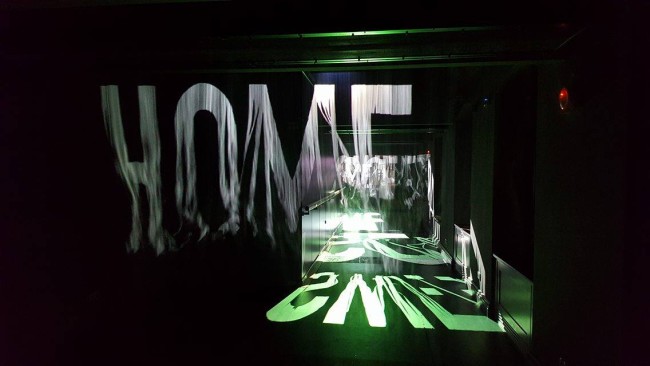
NOWs: Texture by Sophia Pompéry
NOWs:
Sophia Pompéry: Texture, 2016
at
The Pan Tadeusz Museum
ILLEGIBILITY.PALIMPSESTS
Opening: Friday, 16 December 2016, 6 PM
The phenomenon of illegibility and the accumulation of layers of script is the subject of the new temporary exhibition at the Pan Tadeusz Museum. The exhibition includes works e.g. by Andrzej Bednarczyk, Irma Blank, Zbigniew Libera, Sophia Pompéry and Andrzej Szewczyk.
Most of us have experienced writing down a note which is later illegible, even to ourselves; it has occurred to almost everyone that we failed to decipher someone else’s scribbling, or have come across a system of signs that we couldn’t understand. How do we feel then: irritated, helpless, powerless? Or perhaps, in those conditions, when the desire for meaning evades us so blatantly, do we discover perception of different kind, where the script becomes a material phenomenon in itself, a fascinating ornament, a code without information? We see scripts which are visible, but not legible.
The notion of a palimpsest appears to be closely related to illegibility. This term describes a manuscript written on previously used material. A palimpsest involves layers of overwritten script, in which the old layers eventually begin to reappear from below the new, making the writing less legible, if at all.
I would certainly describe the exhibition at the Pan Tadeusz Museum in Wrocław as a palimpsest in itself, because it was developed on the basis of the first “layer”, namely the exhibition “Illegibility. The Contexts of Script”, which took place at the Art Stations Foundation by Grażyna Kulczyk in Poznań (February – May 2016). Yet the nature of a palimpsest involves a continuous process, hence the exhibition in Wrocław carries a different title and includes an expanded set of works.
The works collected at the Illegibility – Palimpsests exhibition are located not only in the temporary exhibition space, but also seamlessly infiltrate the rooms of the permanent exhibition at the Pan Tadeusz Museum.
The opening of the exhibition, on Friday 16 December at 6 PM, includes a performance by Ewa Partum from her Active Poetry series (free entry).
***
Artists: Andrzej Bednarczyk, Jan Berdyszak, Marcin Berdyszak, Irma Blank, Witosław Czerwonka, Małgorzata Dawidek, Irmina Felińska, Katarzyna Giełżyńska, Krzysztof Gliszczyński, Roma Hałat, Jakub Jasiukiewicz, Sasaguchi Kazz, Hacer Kıroğlu, Piotr Korzeniowski, Andrzej Leśnik, Zbigniew Libera, Navid Nuur, Franciszek Orłowski, Michał Martychowiec, Ewa Partum, Ireneusz Pierzgalski, Sophia Pompéry, Ketty La Rocca, Antoni Starczewski, Tamás St. Auby, Zbigniew Sałaj, Andrzej Szewczyk, Jan Tarasin, Endre Tót, Marian Warzecha, Marek Wasilewski, Bogdan Wojtasiak
Curator: Dr hab. Marta Smolińska, professor at the University of Arts in Poznań
NOWs:
Sophia Pompéry: Texture, 2016
at
The Pan Tadeusz Museum
ILLEGIBILITY.PALIMPSESTS
Opening: Friday, 16 December 2016, 6 PM
The phenomenon of illegibility and the accumulation of layers of script is the subject of the new temporary exhibition at the Pan Tadeusz Museum. The exhibition includes works e.g. by Andrzej Bednarczyk, Irma Blank, Zbigniew Libera, Sophia Pompéry and Andrzej Szewczyk.
Most of us have experienced writing down a note which is later illegible, even to ourselves; it has occurred to almost everyone that we failed to decipher someone else’s scribbling, or have come across a system of signs that we couldn’t understand. How do we feel then: irritated, helpless, powerless? Or perhaps, in those conditions, when the desire for meaning evades us so blatantly, do we discover perception of different kind, where the script becomes a material phenomenon in itself, a fascinating ornament, a code without information? We see scripts which are visible, but not legible.
The notion of a palimpsest appears to be closely related to illegibility. This term describes a manuscript written on previously used material. A palimpsest involves layers of overwritten script, in which the old layers eventually begin to reappear from below the new, making the writing less legible, if at all.
I would certainly describe the exhibition at the Pan Tadeusz Museum in Wrocław as a palimpsest in itself, because it was developed on the basis of the first “layer”, namely the exhibition “Illegibility. The Contexts of Script”, which took place at the Art Stations Foundation by Grażyna Kulczyk in Poznań (February – May 2016). Yet the nature of a palimpsest involves a continuous process, hence the exhibition in Wrocław carries a different title and includes an expanded set of works.
The works collected at the Illegibility – Palimpsests exhibition are located not only in the temporary exhibition space, but also seamlessly infiltrate the rooms of the permanent exhibition at the Pan Tadeusz Museum.
The opening of the exhibition, on Friday 16 December at 6 PM, includes a performance by Ewa Partum from her Active Poetry series (free entry).
***
Artists: Andrzej Bednarczyk, Jan Berdyszak, Marcin Berdyszak, Irma Blank, Witosław Czerwonka, Małgorzata Dawidek, Irmina Felińska, Katarzyna Giełżyńska, Krzysztof Gliszczyński, Roma Hałat, Jakub Jasiukiewicz, Sasaguchi Kazz, Hacer Kıroğlu, Piotr Korzeniowski, Andrzej Leśnik, Zbigniew Libera, Navid Nuur, Franciszek Orłowski, Michał Martychowiec, Ewa Partum, Ireneusz Pierzgalski, Sophia Pompéry, Ketty La Rocca, Antoni Starczewski, Tamás St. Auby, Zbigniew Sałaj, Andrzej Szewczyk, Jan Tarasin, Endre Tót, Marian Warzecha, Marek Wasilewski, Bogdan Wojtasiak
Curator: Dr hab. Marta Smolińska, professor at the University of Arts in Poznań
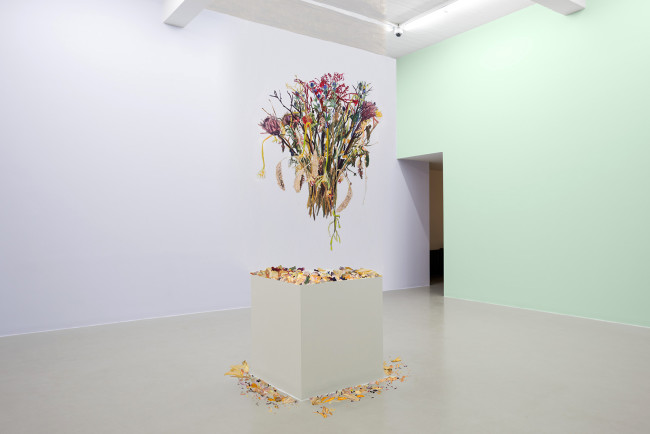
NOWs: Simulacra by Elín Hansdóttir
NOWs:
Elín Hansdóttir, Simulacra 9, 2016. Photograph, 80 x 120 cm. Courtesy of the artist and i8 Gallery, Reykjavik
Elín Hansdóttir: Simulacra
i8 Gallery | Tryggvagata 16 | 101 Reykjavik | Iceland
In Simulacra, artist Elín Hansdóttir radically alters the gallery space and then returns it to its original state with only photographs serving as evidence. When viewers enter the gallery they see nine nearly identical photographs depicting a prosaic scene – a bouquet of flowers. Upon closer inspection, however, the scene becomes strange, as the flowers are depicted hovering in the center of the gallery where the building’s support column is located, literally defying gravity and logic. And as viewers scan one photograph after another the flowers seem to devolve from a state of bloom to death, as if the deterioration within a Dutch still painting has been divided into cells for a stopmotion animation film.
To create this illusion Hansdóttir used techniques derived from the early years of Hollywood cinema, which she innovated for her own purposes. In this installation she photographed a bouquet of flowers over a period of one month and from these images painted glass mattes, which she installed around the gallery’s column. The artist then photographed the column, which, courtesy of the matte paintings around it, seemed to disappear. The glass mattes were then removed. Upon entering the gallery viewers will anxiously look from the photographs on the wall to the site they depict, finding only a support column in the gallery but expecting more. Whether miracle or a trick, these photographs at i8 depict an event that interrupts the scene of normality, and such events, as Alain Badiou notes, reveal the multiplicity that lies at the foundation of reality, shaking our sense of continuity.
As in prior installations by this artist the viewer serves as a catalyst. In Trace (2010), for example, viewers scan the wall like a film projector, piecing together still images into a coherent narrative. Similarly, in Path (2008) viewers walk down a corridor as they attempt to assemble a host of discrete and ungrounded experiences into a phenomenological whole. And in Suspension of Disbelief (2015) Hansdóttir introduces the glass matte technique, thereby obliging viewers to composite installation with representational imagery. While she continues in this manner Simulacra is more about time than space. It is also more layered and more explicitly about history. It thus compels viewers to do a different kind of work than her previous installations do. If un lieu de mémoire is a spatial marker indicating a mnemonic absence, this installation comes at the problem of memory from multiple angles. The artist’s layered process serves as an index to the different rhythms that once infused daily life—the quick clip of stop-motion cinema, the languorous stillness of the still life painting, the “decisive moment” of photography, and the timelessness of religious symbolism. Conversely, these invoked rhythms suggest that the contemporary gallery—with its white walls, cement floor, and central support column—buries memory. Such memories reemerge in Simulacra uninvited.
Text by Dore Bowen
–
Elín Hansdóttir, (b. 1980) lives and works in Reykjavik and Berlin. She studied at the Iceland Academy of the Arts and Kunsthochschule Weissensee in Berlin completing her MA in 2006. Solo shows include Suspension of Disbelief at KW Institute for Contemporary Art, Berlin (2015); Trace at i8 Gallery (2010); Parallax at the Reykjavik Art Museum (2009) and Universolo at Unosolo project space, Rome (2009). Group shows include Disruption at Reykjavik Art Museum – Ásmundarsafn, Beyond Reach at Den Frie Udstillingsbygning, Copenhagen (2014); Higher Atlas, Marrakech Biennale, Morocco (2012); Space Revised, Künstlerhaus Bremen (2009) and Art Against Architecture at the National Gallery of Iceland (2008). In 2007 she was commissioned for Frieze Projects, Frieze Art Fair, London.
NOWs:
Elín Hansdóttir, Simulacra 9, 2016. Photograph, 80 x 120 cm. Courtesy of the artist and i8 Gallery, Reykjavik
Elín Hansdóttir: Simulacra
i8 Gallery | Tryggvagata 16 | 101 Reykjavik | Iceland
In Simulacra, artist Elín Hansdóttir radically alters the gallery space and then returns it to its original state with only photographs serving as evidence. When viewers enter the gallery they see nine nearly identical photographs depicting a prosaic scene – a bouquet of flowers. Upon closer inspection, however, the scene becomes strange, as the flowers are depicted hovering in the center of the gallery where the building’s support column is located, literally defying gravity and logic. And as viewers scan one photograph after another the flowers seem to devolve from a state of bloom to death, as if the deterioration within a Dutch still painting has been divided into cells for a stopmotion animation film.
To create this illusion Hansdóttir used techniques derived from the early years of Hollywood cinema, which she innovated for her own purposes. In this installation she photographed a bouquet of flowers over a period of one month and from these images painted glass mattes, which she installed around the gallery’s column. The artist then photographed the column, which, courtesy of the matte paintings around it, seemed to disappear. The glass mattes were then removed. Upon entering the gallery viewers will anxiously look from the photographs on the wall to the site they depict, finding only a support column in the gallery but expecting more. Whether miracle or a trick, these photographs at i8 depict an event that interrupts the scene of normality, and such events, as Alain Badiou notes, reveal the multiplicity that lies at the foundation of reality, shaking our sense of continuity.
As in prior installations by this artist the viewer serves as a catalyst. In Trace (2010), for example, viewers scan the wall like a film projector, piecing together still images into a coherent narrative. Similarly, in Path (2008) viewers walk down a corridor as they attempt to assemble a host of discrete and ungrounded experiences into a phenomenological whole. And in Suspension of Disbelief (2015) Hansdóttir introduces the glass matte technique, thereby obliging viewers to composite installation with representational imagery. While she continues in this manner Simulacra is more about time than space. It is also more layered and more explicitly about history. It thus compels viewers to do a different kind of work than her previous installations do. If un lieu de mémoire is a spatial marker indicating a mnemonic absence, this installation comes at the problem of memory from multiple angles. The artist’s layered process serves as an index to the different rhythms that once infused daily life—the quick clip of stop-motion cinema, the languorous stillness of the still life painting, the “decisive moment” of photography, and the timelessness of religious symbolism. Conversely, these invoked rhythms suggest that the contemporary gallery—with its white walls, cement floor, and central support column—buries memory. Such memories reemerge in Simulacra uninvited.
Text by Dore Bowen
–
Elín Hansdóttir, (b. 1980) lives and works in Reykjavik and Berlin. She studied at the Iceland Academy of the Arts and Kunsthochschule Weissensee in Berlin completing her MA in 2006. Solo shows include Suspension of Disbelief at KW Institute for Contemporary Art, Berlin (2015); Trace at i8 Gallery (2010); Parallax at the Reykjavik Art Museum (2009) and Universolo at Unosolo project space, Rome (2009). Group shows include Disruption at Reykjavik Art Museum – Ásmundarsafn, Beyond Reach at Den Frie Udstillingsbygning, Copenhagen (2014); Higher Atlas, Marrakech Biennale, Morocco (2012); Space Revised, Künstlerhaus Bremen (2009) and Art Against Architecture at the National Gallery of Iceland (2008). In 2007 she was commissioned for Frieze Projects, Frieze Art Fair, London.
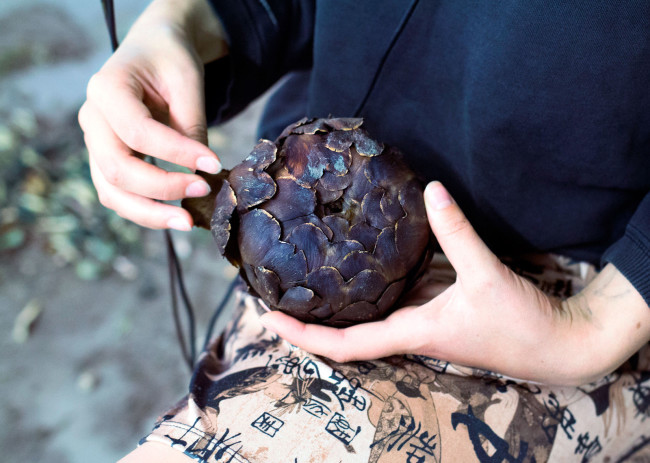
NOWs: Kaya Cynara by Hans-Henning Korb
NOWs:
Hans-Henning Korb
presents
Kaya Cynara at Empty Gallery, Hong Kong
Spread across three discrete exhibition spaces on Empty Gallery’s new 18th floor, Kaya Cynara takes the form of a modular installation comprising ritual performances, expanded sculpture, video installation and virtual reality. These complex environments are further activated by Korb’s rituals in which the spectator is guided through a ceremonial interaction with the various sculptures and objects. With each exhibition space representing a different stage of consciousness, the spectator experiences Kaya Cynara as a successively developing relationship between virtual and actual, nature and technology, inside and outside. Korb’s work reflects on the ontological convergence of these myriad spheres within our hyper-mediated present and the generative role of the human within this complex ecosystem. Designed from the outset as a mobile composition existing in different locations and time scales, Kaya Cynara includes ceramics by Jonas Wendelin Kesseler and music by Robert Lippok.
Trailer for Kaya Cynara at Empty Gallery, Hong Kong. Credits: Hans-Henning Korb, 2016 / Voice - Jack Barnett / Actors - Zoë-Louise Estève & Henry McMaster
Hans-Henning Korb will present Kaya Cynara, his first solo exhibition in Asia. Spread across three discrete exhibition spaces on Empty Gallery’s 18th floor, Kaya Cynara takes the form of a modular installation comprising ritual performances, expanded sculpture, video installation, and Oculus Rift VR. Kaya Cynara includes ceramics by Jonas Wendelin Kesseler and music by Robert Lippok.
Empty Gallery re-opens its new 4,500-sq-foot black-cube facilities in Tin Wan with two exhibitions: an immersive installation of Takashi Makino’s Cinema Concret, and a multi-sensory conceptual environment by Hans-Henning Korb.
The opening will be followed by an after-party with performances by Mark Fell, Rian Trianor, Robert Lippok, and Terre Thaemlitz aka DJ Sprinkles (as special guest).
Takashi Makino will present an installation version of his 2015 film Cinema Concret, with a new score by the Dutch experimental musician Machinefabriek.
Find further images here.
Hans-Henning Korb (b. 1988) lives and works in Berlin where he graduated from the Berlin University of the Arts, in 2016. Korb’s work transgresses traditional categories, combining sculpture, installation, and performances that involve music, film, computer animation, virtual worlds, plants, and organic processes. Korb completed an MA at the Berlin University of the Arts and studied in the class of Hito Steyerl and the Institute for Spatial Experiments (Institut für Raumexperimente) of Olafur Eliasson. He was a visiting student at the Addis Ababa School of Fine Arts in Ethiopia and the Hunter College in New York.
NOWs:
Hans-Henning Korb
presents
Kaya Cynara at Empty Gallery, Hong Kong
Spread across three discrete exhibition spaces on Empty Gallery’s new 18th floor, Kaya Cynara takes the form of a modular installation comprising ritual performances, expanded sculpture, video installation and virtual reality. These complex environments are further activated by Korb’s rituals in which the spectator is guided through a ceremonial interaction with the various sculptures and objects. With each exhibition space representing a different stage of consciousness, the spectator experiences Kaya Cynara as a successively developing relationship between virtual and actual, nature and technology, inside and outside. Korb’s work reflects on the ontological convergence of these myriad spheres within our hyper-mediated present and the generative role of the human within this complex ecosystem. Designed from the outset as a mobile composition existing in different locations and time scales, Kaya Cynara includes ceramics by Jonas Wendelin Kesseler and music by Robert Lippok.
Trailer for Kaya Cynara at Empty Gallery, Hong Kong. Credits: Hans-Henning Korb, 2016 / Voice - Jack Barnett / Actors - Zoë-Louise Estève & Henry McMaster
Hans-Henning Korb will present Kaya Cynara, his first solo exhibition in Asia. Spread across three discrete exhibition spaces on Empty Gallery’s 18th floor, Kaya Cynara takes the form of a modular installation comprising ritual performances, expanded sculpture, video installation, and Oculus Rift VR. Kaya Cynara includes ceramics by Jonas Wendelin Kesseler and music by Robert Lippok.Empty Gallery re-opens its new 4,500-sq-foot black-cube facilities in Tin Wan with two exhibitions: an immersive installation of Takashi Makino’s Cinema Concret, and a multi-sensory conceptual environment by Hans-Henning Korb.
The opening will be followed by an after-party with performances by Mark Fell, Rian Trianor, Robert Lippok, and Terre Thaemlitz aka DJ Sprinkles (as special guest).
Takashi Makino will present an installation version of his 2015 film Cinema Concret, with a new score by the Dutch experimental musician Machinefabriek.
Find further images here.
Hans-Henning Korb (b. 1988) lives and works in Berlin where he graduated from the Berlin University of the Arts, in 2016. Korb’s work transgresses traditional categories, combining sculpture, installation, and performances that involve music, film, computer animation, virtual worlds, plants, and organic processes. Korb completed an MA at the Berlin University of the Arts and studied in the class of Hito Steyerl and the Institute for Spatial Experiments (Institut für Raumexperimente) of Olafur Eliasson. He was a visiting student at the Addis Ababa School of Fine Arts in Ethiopia and the Hunter College in New York.
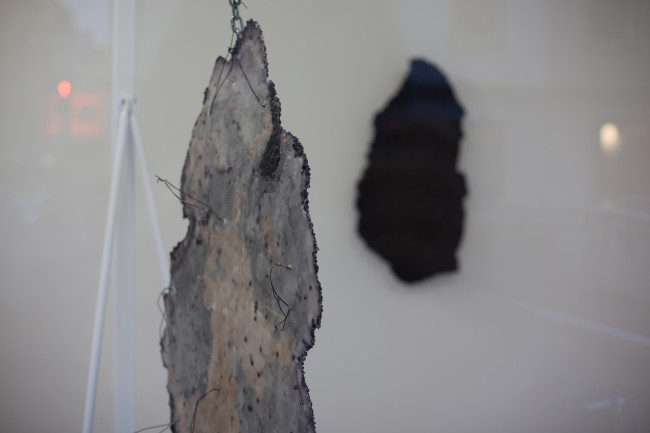
NOWs: The Condition of Your Attention by Leon Eixenberger
NOWs:
The fluid, the fluid of fluids, is frozen into crystals. What was always moving becomes still, until it melts again. Ice crystals are the immobilized that is dynamic through its interaction with environment. Ice is, therefore, a transient form, which is perhaps to say, not a form at all, for it always presses towards formlessness again.[1]
Crystalline environments are fragile, and their fragile untenability undoubtedly contributes to their beauty. Such fragility is materially occasioned. Ice and snow melt.[2]
–
Leon Eixenberger: THE CONDITION OF YOUR ATTENTION
with contribution by Robert Lippok
curated by Rosali Wiesheu
Opening: 9 December, 18h
super+ CENTERCOURT
Adalbertstr. 44
80799 Munich, Germany
Leon Eixenberger experimentiert unter dem Titel THE CONDITION OF YOUR ATTENTION mit Spielarten des Prozessualen. Dabei konzentriert er sich auf die Materialien Wachs und Wasser und präsentiert Objekte, die den transformativen Prozess ihrer Formauflösung und erneuten Formfindung performativ vollziehen. Eixenbergers Arbeiten lösen die geometrische Form ihrer Objekte auf und ermöglichen zufällige Neukonstellationen, die sich aus den Wachs- und Wasserkörpern selbst ergeben. Auf einer interpretativen Ebene durchlaufen hier nicht nur die Ausstellungsgegenstände eine Verschiebung ihrer materiellen Bedingtheit, auch das Auge beugt sich einer Metamorphose. Es wird dazu herausgefordert, sein identifizierendes Sehen aufzugeben und sich auf ein assoziatives und intuitives Spiel des Informen und Transformen einzulassen. Expand...
Leon Eixenberger experimentiert unter dem Titel THE CONDITION OF YOUR ATTENTION mit Spielarten des Prozessualen. Dabei konzentriert er sich auf die Materialien Wachs und Wasser und präsentiert Objekte, die den transformativen Prozess ihrer Formauflösung und erneuten Formfindung performativ vollziehen. Die Wachsobjekte bestehen aus unzähligen kleinen Tropfen von mehreren Hundert braunen und schwarzen Kerzen, die der Künstler in einem mehrmonatigen Prozess kontinuierlich über einer Wasserfläche hat abbrennen lassen, auf der die flüssigen Wachsmoleküle nach und nach zu blasenförmigen Erhebungen verschmolzen sind und eine komplexe Oberflächenstruktur erzeugen. Die Rückseiten lassen an manchen Stellen Teile der Metallgitter erkennen, die die Wachsobjekte zusammenhalten und von einer glatten, weißen Parafinschicht überzogen sind. Der rotbraune Rost, der an Teilen des Gitters sichtbar wird, verweist auf die Zeit, die im Prozess der Formwerdung der Objekte verstrichen ist. Die Arbeiten leben von der gebrochenen Anwesenheit ihrer Vergangenheit, die als schimmernde Spur in jedem Moment an den prekären Status ihrer vermeintlichen Abgeschlossenheit erinnert.
Während das Wachsrelief (120 x 60 cm) an der linken Ausstellungswand fest an einer Vorrichtung montiert ist, pendelt der Wachskörper (130 x 70 cm) in der Raummitte lose an einer Metallkette, die vom oberen Ende eines 250 x 130 cm großen, weißen Boxsackständers herabhängt. Durch die Montage des Wachskörpers auf das Boxsackgerüst ist der Skulptur ein Moment der Bewegung inhärent, die jedoch nicht zur Ausführung kommt.
Wo hier die Bewegung als Möglichkeit präsent ist, vollzieht sich diese konkret in den kontinuierlich und langsam schmelzenden, schwarzen, steinförmigen Wasserkörpern, die sich nach und nach auf dem Boden des Ausstellungsraumes ausbreiten. Der umgekehrt dynamische Prozess zwischen sich auflösendem, flüssig werdendem Eis und dem zu festen Körpern geronnenen Wachs tritt in eine zusätzliche Konstellation mit der Komposition des Künstlers Robert Lippok, dessen Soundwellen den Ausstellungsraum durchziehen und die prozessuale Dynamik der Objekte akustisch spiegeln.
Materie schleppt den Ballast der Geometrie. Eixenbergers Arbeiten lösen die geometrische Form ihrer Objekte auf und ermöglichen zufällige Neukonstellationen, die sich aus den Wachs- und Wasserkörpern selbst ergeben. Auf einer interpretativen Ebene durchlaufen hier nicht nur die Ausstellungsgegenstände eine Verschiebung ihrer materiellen Bedingtheit, auch das Auge beugt sich einer Metamorphose. Es wird dazu herausgefordert, sein identifizierendes Sehen aufzugeben und sich auf ein assoziatives und intuitives Spiel des Informen und Transformen einzulassen.
Rosali Wiesheu
–
[1] Esther Leslie: Liquidation and Shattering: Aesthetics and Politics in Cold Climates, in: Anca M. Pusca [Hrsg.]: Walter Benjamin and the Aesthetics of Change, New York/Basingstoke 2010, S. 95-108, hier S.100.
[2] Ebd.
–
NOWs:
The fluid, the fluid of fluids, is frozen into crystals. What was always moving becomes still, until it melts again. Ice crystals are the immobilized that is dynamic through its interaction with environment. Ice is, therefore, a transient form, which is perhaps to say, not a form at all, for it always presses towards formlessness again.[1]
Crystalline environments are fragile, and their fragile untenability undoubtedly contributes to their beauty. Such fragility is materially occasioned. Ice and snow melt.[2]
–
Leon Eixenberger: THE CONDITION OF YOUR ATTENTION
mit Betrag von Robert Lippok
kuratiert von Rosali Wiesheu
Eröffnung: 9. Dezember 2016, 18h
super+ CENTERCOURT
Adalbertstr. 44
80799 München
Leon Eixenberger experimentiert unter dem Titel THE CONDITION OF YOUR ATTENTION mit Spielarten des Prozessualen. Dabei konzentriert er sich auf die Materialien Wachs und Wasser und präsentiert Objekte, die den transformativen Prozess ihrer Formauflösung und erneuten Formfindung performativ vollziehen. Eixenbergers Arbeiten lösen die geometrische Form ihrer Objekte auf und ermöglichen zufällige Neukonstellationen, die sich aus den Wachs- und Wasserkörpern selbst ergeben. Auf einer interpretativen Ebene durchlaufen hier nicht nur die Ausstellungsgegenstände eine Verschiebung ihrer materiellen Bedingtheit, auch das Auge beugt sich einer Metamorphose. Es wird dazu herausgefordert, sein identifizierendes Sehen aufzugeben und sich auf ein assoziatives und intuitives Spiel des Informen und Transformen einzulassen. Expand...
Leon Eixenberger experimentiert unter dem Titel THE CONDITION OF YOUR ATTENTION mit Spielarten des Prozessualen. Dabei konzentriert er sich auf die Materialien Wachs und Wasser und präsentiert Objekte, die den transformativen Prozess ihrer Formauflösung und erneuten Formfindung performativ vollziehen. Die Wachsobjekte bestehen aus unzähligen kleinen Tropfen von mehreren Hundert braunen und schwarzen Kerzen, die der Künstler in einem mehrmonatigen Prozess kontinuierlich über einer Wasserfläche hat abbrennen lassen, auf der die flüssigen Wachsmoleküle nach und nach zu blasenförmigen Erhebungen verschmolzen sind und eine komplexe Oberflächenstruktur erzeugen. Die Rückseiten lassen an manchen Stellen Teile der Metallgitter erkennen, die die Wachsobjekte zusammenhalten und von einer glatten, weißen Parafinschicht überzogen sind. Der rotbraune Rost, der an Teilen des Gitters sichtbar wird, verweist auf die Zeit, die im Prozess der Formwerdung der Objekte verstrichen ist. Die Arbeiten leben von der gebrochenen Anwesenheit ihrer Vergangenheit, die als schimmernde Spur in jedem Moment an den prekären Status ihrer vermeintlichen Abgeschlossenheit erinnert.
Während das Wachsrelief (120 x 60 cm) an der linken Ausstellungswand fest an einer Vorrichtung montiert ist, pendelt der Wachskörper (130 x 70 cm) in der Raummitte lose an einer Metallkette, die vom oberen Ende eines 250 x 130 cm großen, weißen Boxsackständers herabhängt. Durch die Montage des Wachskörpers auf das Boxsackgerüst ist der Skulptur ein Moment der Bewegung inhärent, die jedoch nicht zur Ausführung kommt.
Wo hier die Bewegung als Möglichkeit präsent ist, vollzieht sich diese konkret in den kontinuierlich und langsam schmelzenden, schwarzen, steinförmigen Wasserkörpern, die sich nach und nach auf dem Boden des Ausstellungsraumes ausbreiten. Der umgekehrt dynamische Prozess zwischen sich auflösendem, flüssig werdendem Eis und dem zu festen Körpern geronnenen Wachs tritt in eine zusätzliche Konstellation mit der Komposition des Künstlers Robert Lippok, dessen Soundwellen den Ausstellungsraum durchziehen und die prozessuale Dynamik der Objekte akustisch spiegeln.
Materie schleppt den Ballast der Geometrie. Eixenbergers Arbeiten lösen die geometrische Form ihrer Objekte auf und ermöglichen zufällige Neukonstellationen, die sich aus den Wachs- und Wasserkörpern selbst ergeben. Auf einer interpretativen Ebene durchlaufen hier nicht nur die Ausstellungsgegenstände eine Verschiebung ihrer materiellen Bedingtheit, auch das Auge beugt sich einer Metamorphose. Es wird dazu herausgefordert, sein identifizierendes Sehen aufzugeben und sich auf ein assoziatives und intuitives Spiel des Informen und Transformen einzulassen.
Rosali Wiesheu
–
[1] Esther Leslie: Liquidation and Shattering: Aesthetics and Politics in Cold Climates, in: Anca M. Pusca [Hrsg.]: Walter Benjamin and the Aesthetics of Change, New York/Basingstoke 2010, S. 95-108, hier S.100.
[2] Ebd.
–
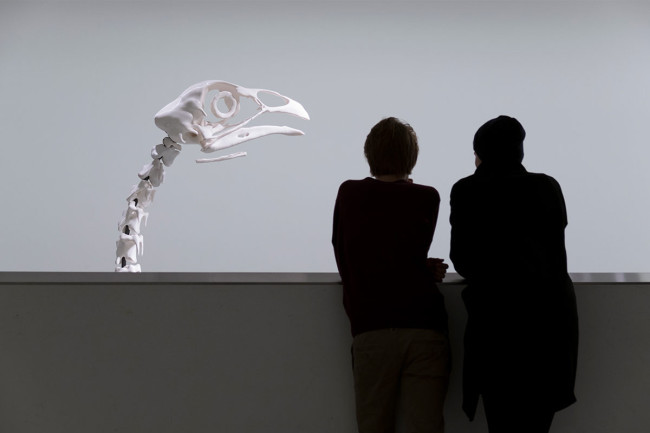
NOWs: StudioVisit mit Andreas Greiner
NOWs:
Andreas Greiner: Monument for A Contemporary Dinosaurs (Ross 308), 2016. High definition CT-scan of a dead-found broiler chicken, 3D print, Installation view.
StudioVisit:
Andreas Greiner, Preisträger des GASAG Kunstpreis 2016
Herzliche Einladung zum StudioVisit am Montag, 5. Dezember um 19 Uhr, beim Künstler Andreas Greiner, Preisträger des GASAG Kunstpreis 2016.
Greiners Werk befasst sich mit Phänomenen der Natur- und Geisteswissenschaften, mit Medizin, Anatomie und Musik. Anlässlich seiner Einzelausstellung „Agentur des Exponenten“ in der Berlinischen Galerie, die sich mit dem exponentiellen Wachstum, der Identität und Transformation von Lebewesen, speziell von Masthühnern, befasst, sprechen wir mit Greiner über seine Arbeiten, die Aufgabe der Kunst sowie ihren Möglichkeiten und Grenzen in der Gesellschaft. Gemeinsam mit sieben ehemaligen Meisterschülern, die wie Greiner bei Olafur Eliasson im Instituts für Raumexperimente studiert haben, teilt er sich eine beeindruckende Arbeitshalle in der Tempelhofer Malzfabrik.
Wie immer in der Reihe StudioVisits steht der Dialog mit dem Künstler im Vordergrund. Der Atelierbesuch wird auf Deutsch stattfinden und ca. eine Stunde dauern. Die Teilnahme kostet pro Person 15 Euro (inkl. MwSt., gerne mit Rechnung).
Die Studio-Adresse in Tempelhof folgt nach verbindlicher Anmeldung unter info@studiovisits.de
Kontakt & Organisation
Julia Rosenbaum
+49 177 64 36 173
www.studiovisits.de | info@studiovisits.de
Andreas Greiner: Monument for A Contemporary Dinosaurs (Ross 308), 2016. High definition CT-scan of a dead-found broiler chicken, 3D print, installation view, Berlinische Galerie.
NOWs:
Andreas Greiner: Monument for A Contemporary Dinosaurs (Ross 308), 2016. High definition CT-scan of a dead-found broiler chicken, 3D print, Installation view.
StudioVisit:
Andreas Greiner, Preisträger des GASAG Kunstpreis 2016
Herzliche Einladung zum StudioVisit am Montag, 5. Dezember um 19 Uhr, beim Künstler Andreas Greiner, Preisträger des GASAG Kunstpreis 2016.
Greiners Werk befasst sich mit Phänomenen der Natur- und Geisteswissenschaften, mit Medizin, Anatomie und Musik. Anlässlich seiner Einzelausstellung „Agentur des Exponenten“ in der Berlinischen Galerie, die sich mit dem exponentiellen Wachstum, der Identität und Transformation von Lebewesen, speziell von Masthühnern, befasst, sprechen wir mit Greiner über seine Arbeiten, die Aufgabe der Kunst sowie ihren Möglichkeiten und Grenzen in der Gesellschaft. Gemeinsam mit sieben ehemaligen Meisterschülern, die wie Greiner bei Olafur Eliasson im Instituts für Raumexperimente studiert haben, teilt er sich eine beeindruckende Arbeitshalle in der Tempelhofer Malzfabrik.
Wie immer in der Reihe StudioVisits steht der Dialog mit dem Künstler im Vordergrund. Der Atelierbesuch wird auf Deutsch stattfinden und ca. eine Stunde dauern. Die Teilnahme kostet pro Person 15 Euro (inkl. MwSt., gerne mit Rechnung).
Die Studio-Adresse in Tempelhof folgt nach verbindlicher Anmeldung unter info@studiovisits.de
Kontakt & Organisation
Julia Rosenbaum
+49 177 64 36 173
www.studiovisits.de | info@studiovisits.de
Andreas Greiner: Monument for A Contemporary Dinosaurs (Ross 308), 2016. High definition CT-scan of a dead-found broiler chicken, 3D print, installation view, Berlinische Galerie.
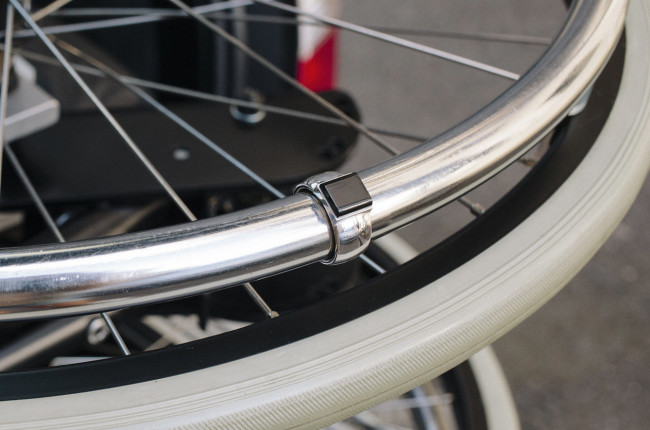
NOWs: Matthias Sohr at ACUD
NOWs:
Matthias Sohr
Information about the Exhibition of Matthias Sohr
The opening of the exhibition is
on Friday the 2nd of December 2016
from 18:00 to 22:00.
Afterwards these are the opening hours:
3 December to 18 December 2016
and 12 January to 15 January 2017
Every Friday and Saturday
from 13:00 to 18:00.
You can see the exhibition here:
ACUD gallery Berlin
Veteranenstraße 21
10119 Berlin
ACUD is the name of the gallery.
A gallery is a space
where exhibitions are shown.
Matthias Sohr has thought about many topics
for the exhibition.
For example, the exhibition is about:
family and family ties
the agency of people
In his exhibition he shows different sculptures.
Sculptures are figures.
For example made from plastic.
Or from metal.
Matthias Sohr also shows other things.
For example:
A stair lift
Or a wheelchair
Or colourful boards on the wall
Matthias Sohr makes art.
He doesn’t just show things.
He wants to show things differently
than they normally are.
That’s important to him.
Information about the artist
The name of the artist is Matthias Sohr.
He was born in 1980.
He is from Düsseldorf in Germany.
Matthias Sohr is a sculptor.
That means: He makes sculptures.
Sculptures are figures.
For example made from plastic.
Or from metal.
He has studied in various countries.
He has often shown his sculptures before.
This is his first exhibition in Berlin.
The exhibition is made accessible
by the Reha Hilfe Jessen GmbH.
The text was translated by the
AWO Büro Leichte Sprache.
The exhibition receives money
from the Senate of Berlin.
NOWs:
Matthias Sohr
Infos zur Ausstellung von Matthias Sohr
Die Eröffnung von der Ausstellung ist
am Freitag den 2. Dezember 2016
von 18 Uhr bis 22 Uhr.
Danach gibt es diese Öffnungs-Zeiten:
3. Dezember 2016 bis 15. Januar 2017
Jeden Freitag und Samstag von 13 Uhr bis 18 Uhr.
Die Ausstellung kann man sich hier ansehen:
ACUD Galerie Berlin
Veteranenstraße 21
10119 Berlin
ACUD ist der Name von der Galerie.
Eine Galerie ist ein Raum,
in dem Ausstellungen gezeigt werden.
Für die Ausstellung hat sich Matthias Sohr
mit vielen Themen beschäftigt.
In der Ausstellung geht es zum Beispiel um:
• Familie und Familien-Zusammenhalt
• Selbst-Vertretung von Menschen
In seiner Ausstellung zeigt er verschiedene Skulpturen.
Skulpturen sind Figuren.
Zum Beispiel aus Plastik.
Oder aus Metall.
Matthias Sohr zeigt auch andere Dinge.
Zum Beispiel:
• Einen Treppen-Lift.
• Oder einen Rollstuhl.
• Oder bunte Tafeln an der Wand.
Matthias Sohr macht Kunst.
Er zeigt Dinge nicht einfach nur so.
Er möchte die Dinge anders zeigen,
als sie sonst sind.
Das ist ihm wichtig.
Infos über den Künstler
Der Künstler heißt Matthias Sohr.
Er wurde 1980 geboren.
Er kommt aus Düsseldorf.
Matthias Sohr ist Bildhauer.
Das heißt: Er macht Skulpturen.
Skulpturen sind Figuren.
Zum Beispiel aus Plastik.
Oder aus Metall.
Er hat in verschiedenen Ländern studiert.
Er hat seine Skulpturen schon oft gezeigt.
Diese ist seine erste Ausstellung in Berlin.
Die Ausstellung wurde barriere-frei gemacht
von der Reha Hilfe Jessen GmbH.
Übersetzt wurde der Text vom
AWO Büro Leichte Sprache.
Die Ausstellung bekommt Geld
vom Senat Berlin.
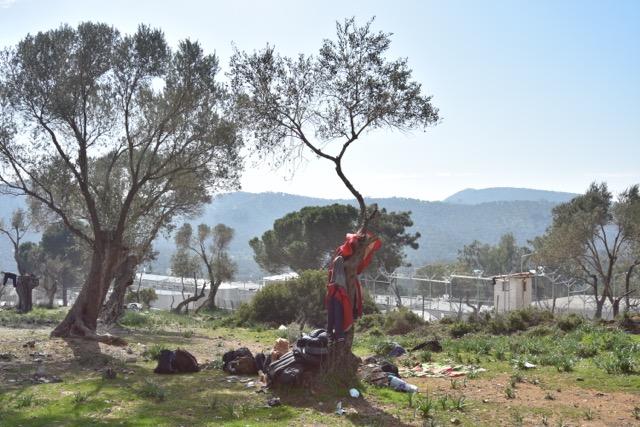
NOWs: IBB Preis für Photographie: Raul Walch
NOWs:
IBB-Preis für Photographie 2016 : Raul Walch
Der IBB Preis für Photographie wird von der Investitionsbank Berlin in Kooperation mit dem Freundeskreis der UdK Berlin | Karl Hofer Gesellschaft zum 10. Mal ausgelobt. Raul Walch gewinnt in diesem Jahr den Preis, der neben dem Preisgeld von 5000 € eine Ausstellung im IBB Atrium und einen Katalog umfasst. Der Annerkennungspreis wird an Marta Djourina vergeben. Die Auswahl haben dieses Jahr Dr. Ralf Hartmann (Galerie Nord | Kunstverein Tiergarten, Rektor HGB Leipzig) und Dr. Thomas Köhler (Berlinische Galerie) getroffen.
In der Jury-Begründung heißt es:
“Raul Walch, der zunächst Soziologie studierte und dann bei Olafur Eliasson am Institut für Raumexperimente war, macht mit spielerischen und zugleich kritischen Interventionen den öffentlichen Raum zu seiner Bühne. Er hisst farbenfrohe Fahnen, lässt Drachen in ungewohnter Umgebung steigen und funktioniert städtische Hydranten zu Wasserfontänen um. Diese hintersinnig-poetischen Eingriffe in gewohnte Abläufe vollzieht Walch ortsspezifisch und fotografiert seine humorvoll-subversiven Aktionen, um über die temporären, performativen Störungen hinaus ein Bild zu bewahren.”
Raul Walch: Moria, 2016. (Series)
›
Raul Walch: Azimut, 2016. (Series) Mytilene, Mithymna, Idomeni, Berlin, Arnsberg.
Ausstellung:
IBB-Preis für Photographie 2016
30. November bis 21. Dezember 2016
Mo.–Fr. 9–18 Uhr
Ort:
Investitionsbank Bank Berlin (Atrium)
Bundesallee 210
10719 Berlin
karl-hofer-gesellschaft.de
NOWs:
IBB-Preis für Photographie 2016 : Raul Walch
Der IBB Preis für Photographie wird von der Investitionsbank Berlin in Kooperation mit dem Freundeskreis der UdK Berlin | Karl Hofer Gesellschaft zum 10. Mal ausgelobt. Raul Walch gewinnt in diesem Jahr den Preis, der neben dem Preisgeld von 5000 € eine Ausstellung im IBB Atrium und einen Katalog umfasst. Der Annerkennungspreis wird an Marta Djourina vergeben. Die Auswahl haben dieses Jahr Dr. Ralf Hartmann (Galerie Nord | Kunstverein Tiergarten, Rektor HGB Leipzig) und Dr. Thomas Köhler (Berlinische Galerie) getroffen.
In der Jury-Begründung heißt es:
“Raul Walch, der zunächst Soziologie studierte und dann bei Olafur Eliasson am Institut für Raumexperimente war, macht mit spielerischen und zugleich kritischen Interventionen den öffentlichen Raum zu seiner Bühne. Er hisst farbenfrohe Fahnen, lässt Drachen in ungewohnter Umgebung steigen und funktioniert städtische Hydranten zu Wasserfontänen um. Diese hintersinnig-poetischen Eingriffe in gewohnte Abläufe vollzieht Walch ortsspezifisch und fotografiert seine humorvoll-subversiven Aktionen, um über die temporären, performativen Störungen hinaus ein Bild zu bewahren.”
Raul Walch: Moria, 2016. (Series)
›
Raul Walch: Azimut, 2016. (Series) Mytilene, Mithymna, Idomeni, Berlin, Arnsberg.
Ausstellung:
IBB-Preis für Photographie 2016
30. November bis 21. Dezember 2016
Mo.–Fr. 9–18 Uhr
Ort:
Investitionsbank Bank Berlin (Atrium)
Bundesallee 210
10719 Berlin
karl-hofer-gesellschaft.de
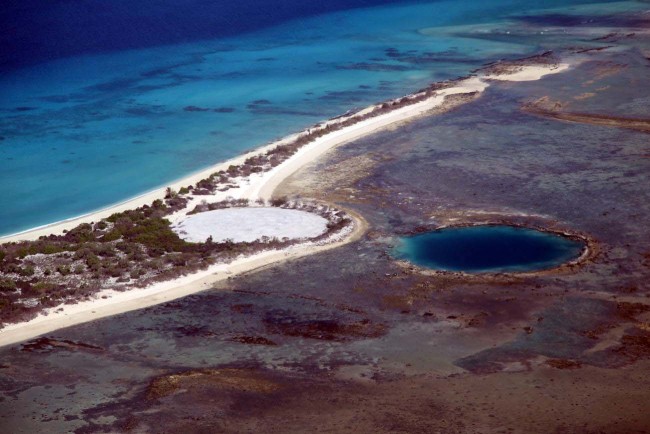
NOWs: From the Bikini Atoll to Yozgat by Markus Hoffmann
NOWs:
Markus Hoffman: Bikini Atoll Containment I (Source), 2015, detail
Markus Hoffman: Bikini Atoll Containment I (Source), 2015
Markus Hoffmann:
“The Reality is uncertain. From the Bikini Atoll to Yozgat”
at
Atölye
Tarihi Bomonti Bira Fabrikası
Silahşör Cad. Birahane Sok.
No. 1 – Şişli, İstanbul
November 30th, Wednesday, 18.30 – 20.00 h
Markus Hoffman: Bikini Atoll Containment II (Equilibrium), 2016, detail
“We have reached a tipping point that does not merely consist in the fact that climate change has reached a point where it is self reinforcing, or that fossil resources are becoming dramatically depleted. Over the last centuries, humankind has put processes in motion leading to developments for which we no longer have any standards by which to judge them. When humankind itself becomes a natural force – or that which we understood to be nature is now made by humans – then the dualism of nature/culture subject/object no longer function in the accustomed fashion.”
(Bernd M Scherer: Textures of the Anthropocene)
Markus Hoffman: Bikini Atoll Containment III (Transformation), 2016
In the last ten years Markus Hoffmann worked on several aspects of the Anthropocene, aiming to combine science aspects and creation of reality to set up works that allow space or individual projection. That focus led him to travel to remote places to do experience/exploration driven site-specific art works. He has been realizing a large body works that are related to the topic of radioactivity rare earth minerals and a large variety of industrial toxic waste products that can be seen as the guiding fossils of the Anthropocene.
In this talk – “The Reality is uncertain. From the Bikini Atoll to Yozgat” – Markus Hoffmann will gives some insight in his years of research on projects focusing on nuclear issues site-specifically related to Pacific Islands dealing with a nuclear legacy like the Bikini and the Mururoa Atoll spanning to his current research project in Yozgat, Turkey as well as a general introduction in his thought processes and practice that led him to question the world in future in a transdisciplinary way.
Markus Hoffman: Cactus Dome Exposure Series, 2015
Backgroundinformation:
The Bikini Atoll
The Bikini Atoll is a Micronesian Island chain located about halfway between Hawaii and Australia, and is what should be a heavenly place on Earth. However, its residents were forcibly relocated when the United States took possession of the islands in 1946, and over the next 12 years, the US sent 23 nuclear bombs raining down on this slice of paradise, rendering it uninhabitable to this day. From the air, Bikini is pristine and beautiful. The plant life has regrown unchecked since the explosions and is lush and green. Some visible remains of houses, towns, and graveyards give the illusion that civilization still exists on the land. The coral reefs have also been reborn and the large lagoon is inviting and clear. This island chain is hungry for tourists and has plenty of money-making potential. From the air, it hides its secrets well.Under the clear lagoon, the bones of many Navy vessels and ships rest, the area designated as a marine graveyard before the blasts. This location has been tempting diving expeditions for years, and is just another feature that tourists would flock to if safety allowed. In 1968, the US prematurely deemed the islands safe, and let residents return to their homes and rebuild their towns. The radiation levels and related chemical strains rose to dangerously unhealthy levels in their bloodstreams, and they had to be removed yet again.To this day, the United States compensates the survivors and residents who will likely never be able to go home again, and the islands remain a paradise ostaggering beauty and potential that no one can safely experience.
source:http://www.atlasobscura.com/places/bikini-atoll
Cactus Dome Ruinit Island
The Cactus Dome and other nuclear contaminated Pacific Islands
A giant, concrete dome filled with radioactive waste looms above Runit Island, and it’s leaking. Locals call it “The Tomb”. Runit (or Cactus) dome was used for Cold War nuclear testing by the US government for 10 years from 1948. There were 42 tests in total on Enewetak Atoll, including 22 explosions on platforms, barges and underwater in the space of just three months in 1958, just before a moratorium on atomic testing. In the late 1970s, an estimated 73,000 cubic metres of contaminated topsoil was deposited in the Cactus nuclear test crater beneath the dome, according to a report commissioned by the us government
It was only supposed to be a temporary measure — but the dome remains. Scientists now fear that a major storm, typhoon or other natural disaster could damage the 46cm-thick concrete dome, releasing nuclear waste into the sea.The US Department of Energy insists cracks in the dome are merely cosmetic, a result of drying and shrinking of the half-submerged dome, but there are plans for repairs.
Inhabitants of Runit were resettled on nearby Enewetak Island in 1980. Even in the early days, concerns were raised over human exposure to radiation through locally grown food, with resettlers resorting to cans of spam, Columbia University’s Michael Gerrard wrote last year in The New York Times .Runit remains uninhabited, home only to abandoned bunkers and cables, but locals still visit to fish and salvage scrap metal. It sounds dangerous, but impoverished Marshall Islanders say they have no choice. And just because Runit is remote, doesn’t mean other countries are totally immune from its influence. A report published in the Environmental Science and Technology journal last year traced plutonium found in Guangdong province in the South China Sea back to the Marshall Islands. Runit is not the only Pacific island dealing with a nuclear legacy. Other atolls in the Marshall Islands, Micronesia, have shared this dubious honour. The very first US hydrogen bomb test vaporised the islet of Elugelab in 1952. Then Bikini Atoll became the site of the country’s most powerful hydrogen bomb detonation, codename Bravo, set off on its reef in 1954. A fireball shot into the air at 480km/h, taking millions of tons of sand, coral and marine life with it. Locals were moved to Kili, a small island with few resources, where they faced starvation. Many returned to Bikini Island, despite the contamination of its water wells, breadfruit and coconut crabs, which were found to be too radioactive for human consumption. Many now rely on US rice and canned goods to survive.The nuclear crisis continues out in the Pacific. But it’s far enough away for everyone to forget about it.
source:http://www.news.com.au/technology/environment/climate-change/deadly-dome-of-gorgeous-pacific-island-leaking-radioactive-waste/news-story/46ea600ea9db15c1563fbc299a5e0906
"There was a world, once, you punk – When nature disappears"
NOWs:
Markus Hoffman: Bikini Atoll Containment I (Source), 2015, detail
Markus Hoffman: Bikini Atoll Containment I (Source), 2015
Markus Hoffmann:
“The Reality is uncertain. From the Bikini Atoll to Yozgat”
at
Atölye
Tarihi Bomonti Bira Fabrikası
Silahşör Cad. Birahane Sok.
No. 1 – Şişli, İstanbul
November 30th, Wednesday, 18.30 – 20.00 h
Markus Hoffman: Bikini Atoll Containment II (Equilibrium), 2016, detail
“We have reached a tipping point that does not merely consist in the fact that climate change has reached a point where it is self reinforcing, or that fossil resources are becoming dramatically depleted. Over the last centuries, humankind has put processes in motion leading to developments for which we no longer have any standards by which to judge them. When humankind itself becomes a natural force – or that which we understood to be nature is now made by humans – then the dualism of nature/culture subject/object no longer function in the accustomed fashion.”
(Bernd M Scherer: Textures of the Anthropocene)
Markus Hoffman: Bikini Atoll Containment III (Transformation), 2016
In the last ten years Markus Hoffmann worked on several aspects of the Anthropocene, aiming to combine science aspects and creation of reality to set up works that allow space or individual projection. That focus led him to travel to remote places to do experience/exploration driven site-specific art works. He has been realizing a large body works that are related to the topic of radioactivity rare earth minerals and a large variety of industrial toxic waste products that can be seen as the guiding fossils of the Anthropocene.
In this talk – “The Reality is uncertain. From the Bikini Atoll to Yozgat” – Markus Hoffmann will gives some insight in his years of research on projects focusing on nuclear issues site-specifically related to Pacific Islands dealing with a nuclear legacy like the Bikini and the Mururoa Atoll spanning to his current research project in Yozgat, Turkey as well as a general introduction in his thought processes and practice that led him to question the world in future in a transdisciplinary way.
Markus Hoffman: Cactus Dome Exposure Series, 2015
Backgroundinformation:
The Bikini Atoll
The Bikini Atoll is a Micronesian Island chain located about halfway between Hawaii and Australia, and is what should be a heavenly place on Earth. However, its residents were forcibly relocated when the United States took possession of the islands in 1946, and over the next 12 years, the US sent 23 nuclear bombs raining down on this slice of paradise, rendering it uninhabitable to this day. From the air, Bikini is pristine and beautiful. The plant life has regrown unchecked since the explosions and is lush and green. Some visible remains of houses, towns, and graveyards give the illusion that civilization still exists on the land. The coral reefs have also been reborn and the large lagoon is inviting and clear. This island chain is hungry for tourists and has plenty of money-making potential. From the air, it hides its secrets well.Under the clear lagoon, the bones of many Navy vessels and ships rest, the area designated as a marine graveyard before the blasts. This location has been tempting diving expeditions for years, and is just another feature that tourists would flock to if safety allowed. In 1968, the US prematurely deemed the islands safe, and let residents return to their homes and rebuild their towns. The radiation levels and related chemical strains rose to dangerously unhealthy levels in their bloodstreams, and they had to be removed yet again.To this day, the United States compensates the survivors and residents who will likely never be able to go home again, and the islands remain a paradise ostaggering beauty and potential that no one can safely experience.
source:http://www.atlasobscura.com/places/bikini-atoll
Cactus Dome Ruinit Island
The Cactus Dome and other nuclear contaminated Pacific Islands
A giant, concrete dome filled with radioactive waste looms above Runit Island, and it’s leaking. Locals call it “The Tomb”. Runit (or Cactus) dome was used for Cold War nuclear testing by the US government for 10 years from 1948. There were 42 tests in total on Enewetak Atoll, including 22 explosions on platforms, barges and underwater in the space of just three months in 1958, just before a moratorium on atomic testing. In the late 1970s, an estimated 73,000 cubic metres of contaminated topsoil was deposited in the Cactus nuclear test crater beneath the dome, according to a report commissioned by the us government
It was only supposed to be a temporary measure — but the dome remains. Scientists now fear that a major storm, typhoon or other natural disaster could damage the 46cm-thick concrete dome, releasing nuclear waste into the sea.The US Department of Energy insists cracks in the dome are merely cosmetic, a result of drying and shrinking of the half-submerged dome, but there are plans for repairs.
Inhabitants of Runit were resettled on nearby Enewetak Island in 1980. Even in the early days, concerns were raised over human exposure to radiation through locally grown food, with resettlers resorting to cans of spam, Columbia University’s Michael Gerrard wrote last year in The New York Times .Runit remains uninhabited, home only to abandoned bunkers and cables, but locals still visit to fish and salvage scrap metal. It sounds dangerous, but impoverished Marshall Islanders say they have no choice. And just because Runit is remote, doesn’t mean other countries are totally immune from its influence. A report published in the Environmental Science and Technology journal last year traced plutonium found in Guangdong province in the South China Sea back to the Marshall Islands. Runit is not the only Pacific island dealing with a nuclear legacy. Other atolls in the Marshall Islands, Micronesia, have shared this dubious honour. The very first US hydrogen bomb test vaporised the islet of Elugelab in 1952. Then Bikini Atoll became the site of the country’s most powerful hydrogen bomb detonation, codename Bravo, set off on its reef in 1954. A fireball shot into the air at 480km/h, taking millions of tons of sand, coral and marine life with it. Locals were moved to Kili, a small island with few resources, where they faced starvation. Many returned to Bikini Island, despite the contamination of its water wells, breadfruit and coconut crabs, which were found to be too radioactive for human consumption. Many now rely on US rice and canned goods to survive.The nuclear crisis continues out in the Pacific. But it’s far enough away for everyone to forget about it.
source:http://www.news.com.au/technology/environment/climate-change/deadly-dome-of-gorgeous-pacific-island-leaking-radioactive-waste/news-story/46ea600ea9db15c1563fbc299a5e0906
"There was a world, once, you punk – When nature disappears"
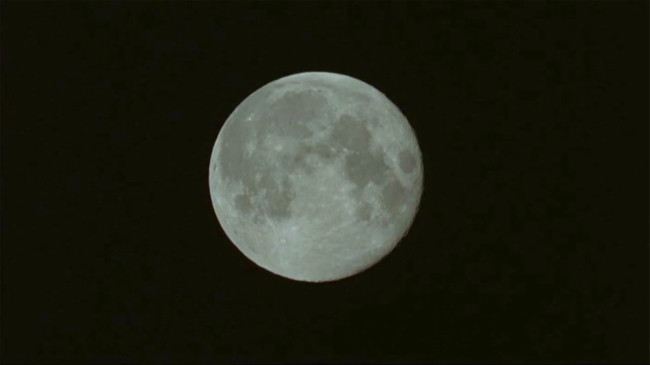
NOWs: Robert Lippok and Barbara Morgenstern play Light Year
NOWs:
27/11 . 12:00h . Brakke Grond, Amsterdam
LIGHT YEAR (Ljusår). Mikael Kristersson, Sweden | 2008 | 101 min
BARBARA MORGENSTERN & ROBERT LIPPOK
play
LIGHT YEAR / Ljusår
Mikael Kristersson | Sweden | 2008 | 101 min
The concert is part of IDFA 2016’s special focus program ‘The Quiet Eye’, a thematic program dedicated to the work of filmakkers who share a more contemplative approach towards documentary film production.
Award-winning Swedish director Mikael Kristersson explores the beauty and the complexity of the natural world that surrounds us by turning the camera towards his own garden in Falsterbo, an old village in the south of Sweden. Without any external narration, ‘Light Year’ shows a year in the life of the birds, insects and human beings that share the garden, creating a poetic portrait of the beauty, complexity and interconnectivity of animal, human and vegetable life.
Barbara Morgenstern (Monika Enterprise) is an electro-acoustic musician based in Berlin. One of the primary artists of Gudrun Gut’s label Monika Enterprise, she has released several albums under her own name and collaborated with artists such as Robert Wyatt and Hauschka.
Robert Lippok (Raster Noton) is a Berlin-based musician and visual artist. Together with his brother Ronald and with Stefan Schneider, he is the co-founder of the influential German electronic Krautrock group ‘To Rococo Rot’. As a solo artist and through various collaborations Lippok released various albums in a career spanning for nearly twenty years, with his latest (‘Redsuperstructure’) released by Raster Noton.
Robert Lippok and Barbara Morgenstern started worked together in 2005, with the release of the album ‘Tesri’.
GET YOUR TICKET(S) HERE
NOWs:
27/11 . 12:00h . Brakke Grond, Amsterdam
LIGHT YEAR (Ljusår). Mikael Kristersson, Sweden | 2008 | 101 min
BARBARA MORGENSTERN & ROBERT LIPPOK
play
LIGHT YEAR / Ljusår
Mikael Kristersson | Sweden | 2008 | 101 min
The concert is part of IDFA 2016’s special focus program ‘The Quiet Eye’, a thematic program dedicated to the work of filmakkers who share a more contemplative approach towards documentary film production.
Award-winning Swedish director Mikael Kristersson explores the beauty and the complexity of the natural world that surrounds us by turning the camera towards his own garden in Falsterbo, an old village in the south of Sweden. Without any external narration, ‘Light Year’ shows a year in the life of the birds, insects and human beings that share the garden, creating a poetic portrait of the beauty, complexity and interconnectivity of animal, human and vegetable life.
Barbara Morgenstern (Monika Enterprise) is an electro-acoustic musician based in Berlin. One of the primary artists of Gudrun Gut’s label Monika Enterprise, she has released several albums under her own name and collaborated with artists such as Robert Wyatt and Hauschka.
Robert Lippok (Raster Noton) is a Berlin-based musician and visual artist. Together with his brother Ronald and with Stefan Schneider, he is the co-founder of the influential German electronic Krautrock group ‘To Rococo Rot’. As a solo artist and through various collaborations Lippok released various albums in a career spanning for nearly twenty years, with his latest (‘Redsuperstructure’) released by Raster Noton.
Robert Lippok and Barbara Morgenstern started worked together in 2005, with the release of the album ‘Tesri’.
GET YOUR TICKET(S) HERE
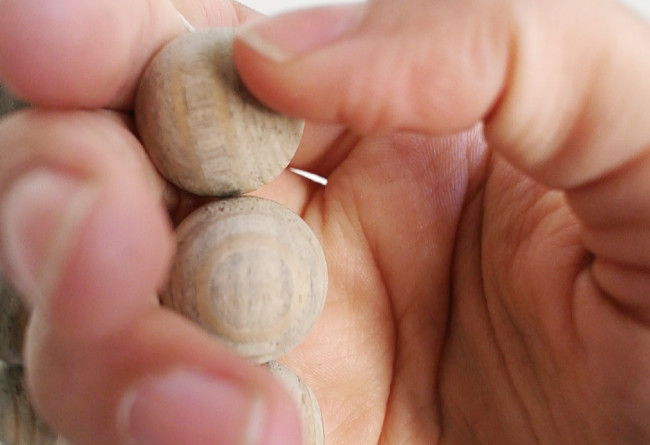
NOWs: Everything Is Not Lost by Nina Schuiki
NOWs:
Everything Is Not Lost
Nina Schuiki
For Everything Is Not Lost, Nina Schuiki collected discarded and abandoned wood from various sites in Austria, Germany, and China, turning the original function of a window frame or piece of furniture into hundreds of wooden beads. These beads are threaded into a looped chain that spans the height of the space, creating an expanded scale that references the earliest function of such beads as a measurement of time.
Time here occurs as a form of counting one by one and the passing of time itself. Through the material transformation, objects lose their original reference and find themselves as ongoing markers in an allegory on the notions of mourning and melancholy. Benjamin traces this allegory towards profound knowledge and understanding as an inconsistent timespace negotiating between then and now.
Nina Schuiki: Everything Is Not Lost, 2015. Beads made from wood re-purposed from found objects (window frame, stool, table,
walking stick, column, bench, tree branch), 12.88 metres length
Nina Schuiki, still from the accompanying video "Everything Is Not Lost", 28 min, colour, sound, 2016
Currently on view within the exhibition |_|, at the Forum Stadtpark, Graz
19.11. bis 17.12.2016
“What is important: the unsayable, the white space between the words, while these words themselves we always insert as side-issues, which as such are not the central part of what we mean. Our core concern remains unwritten, and that means, quite literally, that you write around it.” – Max Frisch, Diary 1946-49
Artists:
Dimitra Charamandas, Yolanda Domínguez, Emil Gruber, Christian Haake, Gerhard Lojen, Hermann Glettler, Søren Berner / Christian Falsnaes / Martin Fraenkel, Taiyo Onorato & Nico Krebs, Nina Schuiki, Markus Wilfling
Curated by Andreas Heller und zweintopf
www.forumstadtpark.at
NOWs:
Everything Is Not Lost
Nina Schuiki
For Everything Is Not Lost, Nina Schuiki collected discarded and abandoned wood from various sites in Austria, Germany, and China, turning the original function of a window frame or piece of furniture into hundreds of wooden beads. These beads are threaded into a looped chain that spans the height of the space, creating an expanded scale that references the earliest function of such beads as a measurement of time.
Time here occurs as a form of counting one by one and the passing of time itself. Through the material transformation, objects lose their original reference and find themselves as ongoing markers in an allegory on the notions of mourning and melancholy. Benjamin traces this allegory towards profound knowledge and understanding as an inconsistent timespace negotiating between then and now.
Nina Schuiki: Everything Is Not Lost, 2015. Beads made from wood re-purposed from found objects (window frame, stool, table,
walking stick, column, bench, tree branch), 12.88 metres length
Nina Schuiki, still from the accompanying video "Everything Is Not Lost", 28 min, colour, sound, 2016
Currently on view within the exhibition |_|, at the Forum Stadtpark, Graz
19.11. bis 17.12.2016
“What is important: the unsayable, the white space between the words, while these words themselves we always insert as side-issues, which as such are not the central part of what we mean. Our core concern remains unwritten, and that means, quite literally, that you write around it.” – Max Frisch, Diary 1946-49
Artists:
Dimitra Charamandas, Yolanda Domínguez, Emil Gruber, Christian Haake, Gerhard Lojen, Hermann Glettler, Søren Berner / Christian Falsnaes / Martin Fraenkel, Taiyo Onorato & Nico Krebs, Nina Schuiki, Markus Wilfling
Curated by Andreas Heller und zweintopf
www.forumstadtpark.at
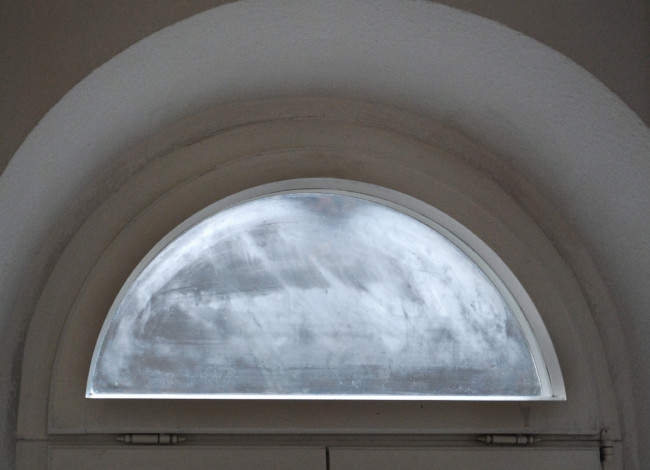
NOWs: Räumen IV by Nina Schuiki
NOWs:
Nina Schuiki: Räumen IV, 2016
On the occasion of the publication release of the project Schlafzimmer, curated by Julia Thiemann and published by Künstlerhaus Schloss Balmoral, 2016.
Upon the invitation of Julia Thiemann to propose a work within her sleeping and working room hosted by the Künstlerhaus Schloss Balmoral curatorial fellowship, the presentation of Nina Schuiki’s work shifted into a private space. The extended dialogue between them shaped the outcome of this project.
Excerpts from the accompanying text by Julia Thiemann:
“After several dialogues and exchanges about the living and working situation on-site, Nina Schuiki created an instruction piece that temporarily changed the room without introducing a foreign object. Referring completely to everyday objects and phenomena, Schuiki composed a situation condensing the experience of time and space.
She concentrated on the small sleeping and working area, the desk and the bed in front of the windows with a view, then separated the larger working area with its sloping roof by requesting the closing of an existing cotton curtain. In this reduced space a water heating element was to be positioned and continuously let to boil two litres of water so that water steam would fill the space little by little, clouding the view.
(…)
After a period the windows condensed completely, the view was eliminated and attention to the surrounding exterior shifted towards the inside of the room. In a kind of mist, the interior landscape became focused, and the function of the windows was temporarily negated to achieve an intensified situation of privacy and isolation.This choreography was appended with an instruction that I as a curator and inhabitant of this space should sit at the work table and read specifically chosen books* from the neighbouring library room while the process of evaporation took place. Together, the work addresses an everyday situation, reflecting and revealing its introspection. The processual transition between two physical processes occurs simultaneously to that between two psychological states, and the fluidity between each is made perceptible.
(…)
Walter Benjamin spoke of a “Wolkenwandelbarkeit der Dinge”——the changeable perception of things——which can metaphorically as well as literally be applied to the work. However, Nina Schuiki aesthetic gestures also always remain as concrete actions in time and space, rooted in the visible cause and effect principle of the here and now. The remarkable enchantment in the encounter of the created situational perception lies exactly in the simple yet precise gesture that can unfold with tremendous impact. With her minimal, aesthetic interventions into given situations and conditions, Nina Schuiki attempts an astonishingly tangible de-materialization of art that surprises us by this very paradox.”
*The exact books were chosen based upon details shared during the course of correspondence between Julia Thiemann and Nina Schuiki: Art and Anarchy by Edgar Wind; Untitled, 1996 (tomorrow is another day) by Rirkrit Tiravanija; Techniques of the Observer by Jonathan Crary.
The exhibition series Schlafzimmer-Ausstellung contained solo presentations by Matthias Conrady (Thermohygrograph, 2016), Heiko Wommelsdorf (Teedrogen, 2016) and Nina Schuiki (Räumen IV, 2016), each of which has been documented in the Schlafzimmer publication.
NOWs:
Nina Schuiki: Räumen IV, 2016
On the occasion of the publication release of the project Schlafzimmer, curated by Julia Thiemann and published by Künstlerhaus Schloss Balmoral, 2016.
Upon the invitation of Julia Thiemann to propose a work within her sleeping and working room hosted by the Künstlerhaus Schloss Balmoral curatorial fellowship, the presentation of Nina Schuiki’s work shifted into a private space. The extended dialogue between them shaped the outcome of this project.
Excerpts from the accompanying text by Julia Thiemann:
“After several dialogues and exchanges about the living and working situation on-site, Nina Schuiki created an instruction piece that temporarily changed the room without introducing a foreign object. Referring completely to everyday objects and phenomena, Schuiki composed a situation condensing the experience of time and space.
She concentrated on the small sleeping and working area, the desk and the bed in front of the windows with a view, then separated the larger working area with its sloping roof by requesting the closing of an existing cotton curtain. In this reduced space a water heating element was to be positioned and continuously let to boil two litres of water so that water steam would fill the space little by little, clouding the view.
(…)
After a period the windows condensed completely, the view was eliminated and attention to the surrounding exterior shifted towards the inside of the room. In a kind of mist, the interior landscape became focused, and the function of the windows was temporarily negated to achieve an intensified situation of privacy and isolation.This choreography was appended with an instruction that I as a curator and inhabitant of this space should sit at the work table and read specifically chosen books* from the neighbouring library room while the process of evaporation took place. Together, the work addresses an everyday situation, reflecting and revealing its introspection. The processual transition between two physical processes occurs simultaneously to that between two psychological states, and the fluidity between each is made perceptible.
(…)
Walter Benjamin spoke of a “Wolkenwandelbarkeit der Dinge”——the changeable perception of things——which can metaphorically as well as literally be applied to the work. However, Nina Schuiki aesthetic gestures also always remain as concrete actions in time and space, rooted in the visible cause and effect principle of the here and now. The remarkable enchantment in the encounter of the created situational perception lies exactly in the simple yet precise gesture that can unfold with tremendous impact. With her minimal, aesthetic interventions into given situations and conditions, Nina Schuiki attempts an astonishingly tangible de-materialization of art that surprises us by this very paradox.”
*The exact books were chosen based upon details shared during the course of correspondence between Julia Thiemann and Nina Schuiki: Art and Anarchy by Edgar Wind; Untitled, 1996 (tomorrow is another day) by Rirkrit Tiravanija; Techniques of the Observer by Jonathan Crary.
The exhibition series Schlafzimmer-Ausstellung contained solo presentations by Matthias Conrady (Thermohygrograph, 2016), Heiko Wommelsdorf (Teedrogen, 2016) and Nina Schuiki (Räumen IV, 2016), each of which has been documented in the Schlafzimmer publication.
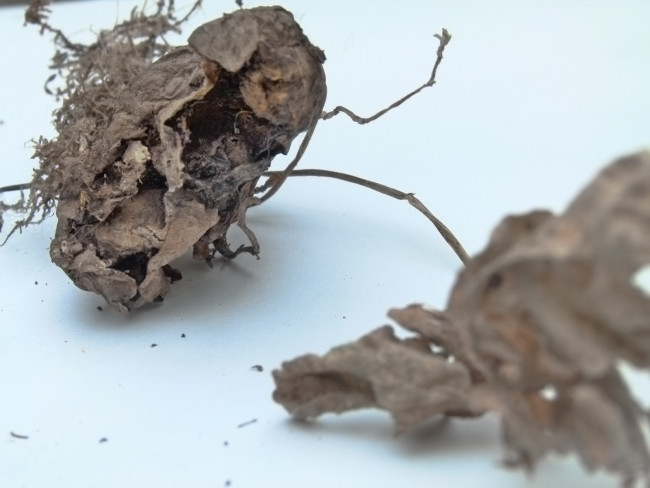
NOWs: Anne Duk Hee Jordan – Sacred Food
NOWs:
Anne Duk Hee Jordan: Kartoffeln, 2013
Food is an existential and fundamental basic need that must be satisfied. Maslow’s ‘hierarchy of needs’, a theory proposed by the psychologist in his 1943 paper “A Theory of Human Motivation” elaborates further: physiological needs are the physical requirements for human survival. If these requirements are not met, the human body cannot function properly and will ultimately fail. Physiological needs are thought to be the most important; they should be met first. Air, water, and food are metabolic requirements for survival in all animals, including humans. Staple food is an economic and a sociopolitical good: in this way, food undergoes a cultural change. Food preparation techniques are based on cultural knowledge developed over thousands of years, which also lead to specific eating habits.
Anne Duk Hee Jordan makes the following comparison: “Long ago humans discovered the Eastern Islands, they populated it and grubbed up the forest surface, among other reasons also to place the large famous statues on. Some time later they finished the raw materials to survive, because the available space was very limited. There were military conflicts between the individual villages and only the strongest one survived. But even the stronger once were dying at the end, because also they found nothing more to eat. They started to actually eat each other. Since they did not have boats (they also could not build any, as no more trees were there) they could not flee. They became extinct.” – Text by Pauline Doutreluingne
Anne Duk Hee Jordan’s photographs are on display in the exhibition:
SACRED FOOD: A visual and culinary exploration on food and spirituality
Featuring works of Anne Duk Hee Jordan, Sarmishta Pantham, Tito Casal, Alexis Raskin, Antônio Sérgio Moreira and a Table of Sacred Foods by Entretempo’s Collective.
›
In many religions, in different ages and in different cultures, food has been prepared, eaten or offered for ceremonies and celebrations. Buddhist and Hindus believe that our memories and emotions connected to food are so strong that even after we die, our spirit still remembers this. That is the reason why the beloved food of the person who died is offered at her or his altar. In the Brazilian-African religion food is prepared for special rituals to honour divinities and Gods, and in Tibetan monasteries monks prepare food while singing mantras, to benefit all sentient beings. But also in our everyday life food has often a spiritual meaning.
Through special recipes and rituals, we establish connections with the spiritual world. Where do these recipes come from? How and when are the rituals performed, and by who? “Sacred Food: Nourishment For Body & Soul” looks at these and other questions in order to find out how food and spirituality are connected.
Exhibition SACRED FOOD | 15.11.16 – 01.01.17
Opening 15.11.16 – 7 PM
Entretempo Kitchen Gallery
NOWs:
Anne Duk Hee Jordan: Kartoffeln, 2013
Food is an existential and fundamental basic need that must be satisfied. Maslow’s ‘hierarchy of needs’, a theory proposed by the psychologist in his 1943 paper “A Theory of Human Motivation” elaborates further: physiological needs are the physical requirements for human survival. If these requirements are not met, the human body cannot function properly and will ultimately fail. Physiological needs are thought to be the most important; they should be met first. Air, water, and food are metabolic requirements for survival in all animals, including humans. Staple food is an economic and a sociopolitical good: in this way, food undergoes a cultural change. Food preparation techniques are based on cultural knowledge developed over thousands of years, which also lead to specific eating habits.
Anne Duk Hee Jordan makes the following comparison: “Long ago humans discovered the Eastern Islands, they populated it and grubbed up the forest surface, among other reasons also to place the large famous statues on. Some time later they finished the raw materials to survive, because the available space was very limited. There were military conflicts between the individual villages and only the strongest one survived. But even the stronger once were dying at the end, because also they found nothing more to eat. They started to actually eat each other. Since they did not have boats (they also could not build any, as no more trees were there) they could not flee. They became extinct.” – Text by Pauline Doutreluingne
Anne Duk Hee Jordan’s photographs are on display in the exhibition:
SACRED FOOD: A visual and culinary exploration on food and spirituality
Featuring works of Anne Duk Hee Jordan, Sarmishta Pantham, Tito Casal, Alexis Raskin, Antônio Sérgio Moreira and a Table of Sacred Foods by Entretempo’s Collective.
›
In many religions, in different ages and in different cultures, food has been prepared, eaten or offered for ceremonies and celebrations. Buddhist and Hindus believe that our memories and emotions connected to food are so strong that even after we die, our spirit still remembers this. That is the reason why the beloved food of the person who died is offered at her or his altar. In the Brazilian-African religion food is prepared for special rituals to honour divinities and Gods, and in Tibetan monasteries monks prepare food while singing mantras, to benefit all sentient beings. But also in our everyday life food has often a spiritual meaning.
Through special recipes and rituals, we establish connections with the spiritual world. Where do these recipes come from? How and when are the rituals performed, and by who? “Sacred Food: Nourishment For Body & Soul” looks at these and other questions in order to find out how food and spirituality are connected.
Exhibition SACRED FOOD | 15.11.16 – 01.01.17
Opening 15.11.16 – 7 PM
Entretempo Kitchen Gallery

NOWs: The Lost Princess of Mongolia by Anne Duk Hee Jordan
NOWs:
Anne Duk Hee Jordan: The Lost Princess of Mongolia, 2009 - ongoing, 1. trailer
Anne Duk Hee Jordan:
The Lost Princess of Mongolia, 2009 – ongoing
(5 channel video, 5 trailers of 2 -5 min)
The Lost Princess of Mongolia is a semi-autobiographical filmic work that combines real and fictional elements of Anne Duk Hee Jordan’s life. Her own personal background and history is a continual red line, which runs through her artistic research. The main conflict that the Princess confronts mirrors her own struggle with not belonging to a single culture or nation. The process of searching and exploring becomes then a life-long journey, in which wandering is a main theme. This atypical documentary is conceived as a series of trailers. In 2009 Jordan started to make the first trailers; her plan is to produce a series of twelve. Thus far, five are completed. The work series runs parallel with her own life path and research.
The Lost Princess of Mongolia is currently on view at The Nanjing International Art Festival (NJIAF), an annual art festival that takes place in Nanjing of the Jiangsu province in China. This year’s theme is SCARCITY AND SUPPLY.
NOWs:
Anne Duk Hee Jordan: The Lost Princess of Mongolia, 2009 - ongoing, 1. trailer
Anne Duk Hee Jordan:
The Lost Princess of Mongolia, 2009 – ongoing
(5 channel video, 5 trailers of 2 -5 min)
The Lost Princess of Mongolia is a semi-autobiographical filmic work that combines real and fictional elements of Anne Duk Hee Jordan’s life. Her own personal background and history is a continual red line, which runs through her artistic research. The main conflict that the Princess confronts mirrors her own struggle with not belonging to a single culture or nation. The process of searching and exploring becomes then a life-long journey, in which wandering is a main theme. This atypical documentary is conceived as a series of trailers. In 2009 Jordan started to make the first trailers; her plan is to produce a series of twelve. Thus far, five are completed. The work series runs parallel with her own life path and research.
The Lost Princess of Mongolia is currently on view at The Nanjing International Art Festival (NJIAF), an annual art festival that takes place in Nanjing of the Jiangsu province in China. This year’s theme is SCARCITY AND SUPPLY.
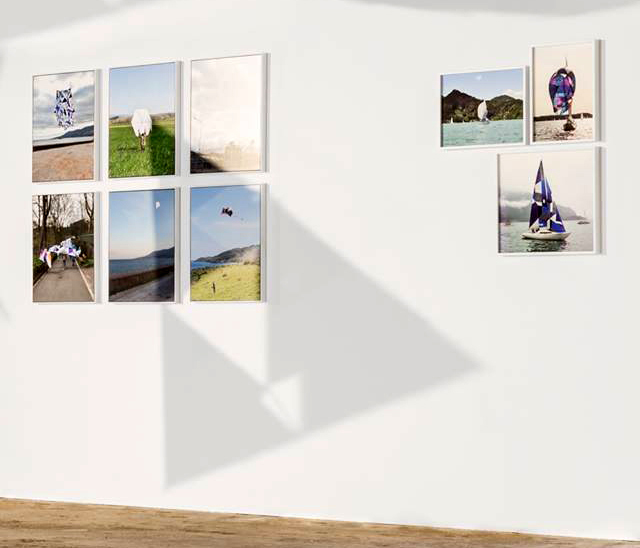
NOWs: Raul Walch HONORABLE MENTION Berlin Art Prize 2016
NOWs:
Raul Walch, installation view. Photo by Anastasia Muna, Berlin Art Prize 2016
BERLIN ART PRIZE 2016
Kühlhaus Berlin, Luckenwalder Straße 3, U1/U2 Gleisdreieck
HONORABLE MENTION: Raul Walch
“This artist’s dedication to the theme of communication and urgency amid the European refugee crisis made a strong impression on the jury. The brightly colored kites inspired by semaphore visual language and crafted using found materials represent an inventive and empathetic response to dire social need.”
NOMINEES
Martin John Callanan
Stine Marie Jacobsen
Lindsay Lawson
Lotte Meret
Regina de Miguel
Benedikt Partenheimer
Aurora Sander
Raul Walch
Lauryn Youden
JURY
Karen Archey
Kito Nedo
Emeka Ogboh
Ahmet Öğüt
Susanne M. Winterling
Saturday, November 19, 2016
Flying
with Raul Walch
1.30pm – 3.30pm
Join artist Raul Walch in making certain elements of the Berlin Art Prize exhibition fly.
Meeting point: Kühlhaus, Luckenwalder Straße 3, 1.30pm
The event will take place outdoors at Gleisdreieck Park. Please check www.berlinartprize.com for short-term confirmation – in case of rain or snow, the event will be rescheduled.
NOWs:
Raul Walch, installation view. Photo by Anastasia Muna, Berlin Art Prize 2016
BERLIN ART PRIZE 2016
Kühlhaus Berlin, Luckenwalder Straße 3, U1/U2 Gleisdreieck
HONORABLE MENTION: Raul Walch
“This artist’s dedication to the theme of communication and urgency amid the European refugee crisis made a strong impression on the jury. The brightly colored kites inspired by semaphore visual language and crafted using found materials represent an inventive and empathetic response to dire social need.”
NOMINEES
Martin John Callanan
Stine Marie Jacobsen
Lindsay Lawson
Lotte Meret
Regina de Miguel
Benedikt Partenheimer
Aurora Sander
Raul Walch
Lauryn Youden
JURY
Karen Archey
Kito Nedo
Emeka Ogboh
Ahmet Öğüt
Susanne M. Winterling
Samstag, 19. November 2016
Flying
mit Raul Walch
13:30 – 15:30 Uhr
Raul Walch bringt bestimmte Kunstwerke der diesjährigen Berlin Art Prize-Ausstellung zum Fliegen.
Treffpunkt: Kühlhaus, Luckenwalder Straße 3, 13:30 Uhr
Die Veranstaltung findet im Park am Gleisdreck unter freiem Himmel statt.
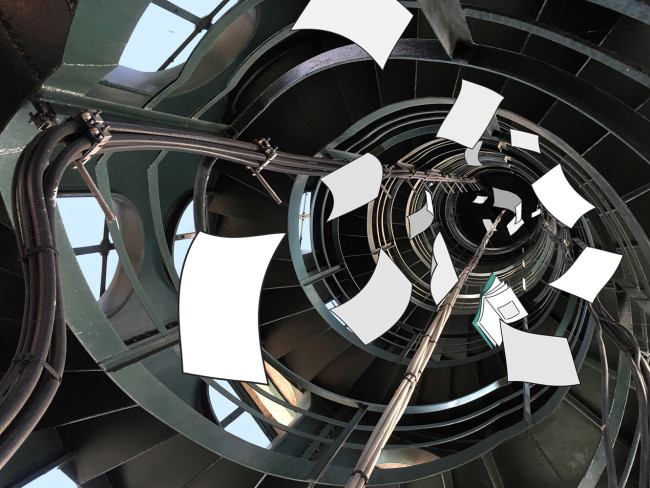
NOWs: “I” by Alvaro Urbano
NOWs:
“I”
by Alvaro Urbano
curated by Treti Galaxie in collaboration with the National Cinema Museum of Turin at Mole Antonelliana, Turin, Italy
11am (by reservation only)
In this project, the notion of the ‘solo show’, i.e. an exhibition of works held for public view by a single artist, is turned on its head: it is in fact an exhibition designed to be viewed by a single spectator. A choice both provocative and intimate at the same time, in line with the curatorial approach adopted by Treti Galaxie, which often questions the relationship between contemporary art and its audience.
The title ‘I’, as well as referencing the number one in the Roman numeral system and the first person singular pronoun, and therefore the particular viewing mechanism of the project, is also the last letter of the cryptogram written in an alphabet of ancient Icelandic runes which is found by Professor Otto Lidenbrock, the main character in the novel ‘Journey to the Centre of the Earth’ by Jules Verne. In the story, once deciphered, the message contains instructions on how to reach the centre of the planet. On the basis of this cryptogram, the artist has constructed a far-reaching project entitled ‘My Boy, with Such Boots we may Hope to Travel Far’, which consists in transforming the letters of the message into sculptural groups distributed throughout various places around the world and created with materials characteristic of the areas in which they are installed. The initial stage of the project witnessed the creation of the first 15 letters of the message, positioned permanently between Merano and Tyrol.
In ‘I’, Urbano’s ambitious project is brought together as a whole in the spaces of the Mole Antonelliana. The exhibition may be considered a sort of rite heralding the transformation of an idea into a work of art: a particular work which, in order to be viewed in its entirety, will require a long journey around the world.
The spectator, along the way up from the ground floor to the spire of the Mole, via the narrow spaces along the inside walls of the cupola, will come into contact with the entire cryptogram, presented in various forms, such as sounds, drawings and installations. Through his/her subjective experience, the spectator will be able to mentally reconstruct the various parts of the project, thus serving as the medium for the ideal transformation of ‘My Boy, with Such Boots we may Hope to Travel Far’ into a signal which, through the particular antenna-shaped architecture of the Mole, will be ‘transmitted’ and broadcast around the world.
With the development over time of ‘My Boy, with Such Boots we may Hope to Travel Far’, the sculptures positioned in various places around the planet will become the concrete manifestation of this signal.
The event is open to a limited number of participants, and foresees the participation of a maximum of 40 people: the sole spectator of the exhibition will be identified through the distribution of chocolate bars, one of which will contain instructions on how to access the exhibition.
In order to book, it is necessary to send a participation request to the address info@tretigalaxie.com on 27 October 2016 between 8am and 8pm with the words “SOLO SHOW” in the subject line.
Thanks to its collaboration with the National Cinema Museum of Turin, Treti Galaxie presents ‘I’: a solo show by Alvaro Urbano staged in the evocative and mysterious spaces of the Mole Antonelliana.
›
Alvaro Urbano examines the borders between architecture, fiction and utopia through the use of various media, including video, performance, site-specific installation and sculpture. In his research, Urbano conceives of architecture as the translation of thought into a tangible structure, a structure which is then built with the aim of influencing the lives and the perception of the people it houses. The artist, drawing on forms of thought apparently far-removed from those regarding the construction of artificial environments, such as storytelling, dreaming and utopian thought, works to bring these elements back to architecture, in the attempt to disrupt its paradigms and original functions.
Alvaro Urbano:"I", 2016,. Installation view, Mole Antonelliana / Museo Nazionale del Cinema. Turin.
Courtesy of Treti Galaxie. Photos by Delfino Sisto Legnani
NOWs:
“I”
by Alvaro Urbano
curated by Treti Galaxie in collaboration with the National Cinema Museum of Turin at Mole Antonelliana, Turin, Italy
11am (by reservation only)
In this project, the notion of the ‘solo show’, i.e. an exhibition of works held for public view by a single artist, is turned on its head: it is in fact an exhibition designed to be viewed by a single spectator. A choice both provocative and intimate at the same time, in line with the curatorial approach adopted by Treti Galaxie, which often questions the relationship between contemporary art and its audience.
The title ‘I’, as well as referencing the number one in the Roman numeral system and the first person singular pronoun, and therefore the particular viewing mechanism of the project, is also the last letter of the cryptogram written in an alphabet of ancient Icelandic runes which is found by Professor Otto Lidenbrock, the main character in the novel ‘Journey to the Centre of the Earth’ by Jules Verne. In the story, once deciphered, the message contains instructions on how to reach the centre of the planet. On the basis of this cryptogram, the artist has constructed a far-reaching project entitled ‘My Boy, with Such Boots we may Hope to Travel Far’, which consists in transforming the letters of the message into sculptural groups distributed throughout various places around the world and created with materials characteristic of the areas in which they are installed. The initial stage of the project witnessed the creation of the first 15 letters of the message, positioned permanently between Merano and Tyrol.
In ‘I’, Urbano’s ambitious project is brought together as a whole in the spaces of the Mole Antonelliana. The exhibition may be considered a sort of rite heralding the transformation of an idea into a work of art: a particular work which, in order to be viewed in its entirety, will require a long journey around the world.
The spectator, along the way up from the ground floor to the spire of the Mole, via the narrow spaces along the inside walls of the cupola, will come into contact with the entire cryptogram, presented in various forms, such as sounds, drawings and installations. Through his/her subjective experience, the spectator will be able to mentally reconstruct the various parts of the project, thus serving as the medium for the ideal transformation of ‘My Boy, with Such Boots we may Hope to Travel Far’ into a signal which, through the particular antenna-shaped architecture of the Mole, will be ‘transmitted’ and broadcast around the world.
With the development over time of ‘My Boy, with Such Boots we may Hope to Travel Far’, the sculptures positioned in various places around the planet will become the concrete manifestation of this signal.
The event is open to a limited number of participants, and foresees the participation of a maximum of 40 people: the sole spectator of the exhibition will be identified through the distribution of chocolate bars, one of which will contain instructions on how to access the exhibition.
In order to book, it is necessary to send a participation request to the address info@tretigalaxie.com on 27 October 2016 between 8am and 8pm with the words “SOLO SHOW” in the subject line.
Thanks to its collaboration with the National Cinema Museum of Turin, Treti Galaxie presents ‘I’: a solo show by Alvaro Urbano staged in the evocative and mysterious spaces of the Mole Antonelliana.
›
Alvaro Urbano examines the borders between architecture, fiction and utopia through the use of various media, including video, performance, site-specific installation and sculpture. In his research, Urbano conceives of architecture as the translation of thought into a tangible structure, a structure which is then built with the aim of influencing the lives and the perception of the people it houses. The artist, drawing on forms of thought apparently far-removed from those regarding the construction of artificial environments, such as storytelling, dreaming and utopian thought, works to bring these elements back to architecture, in the attempt to disrupt its paradigms and original functions.
Alvaro Urbano:"I", 2016,. Installation view, Mole Antonelliana / Museo Nazionale del Cinema. Turin.
Courtesy of Treti Galaxie. Photos by Delfino Sisto Legnani
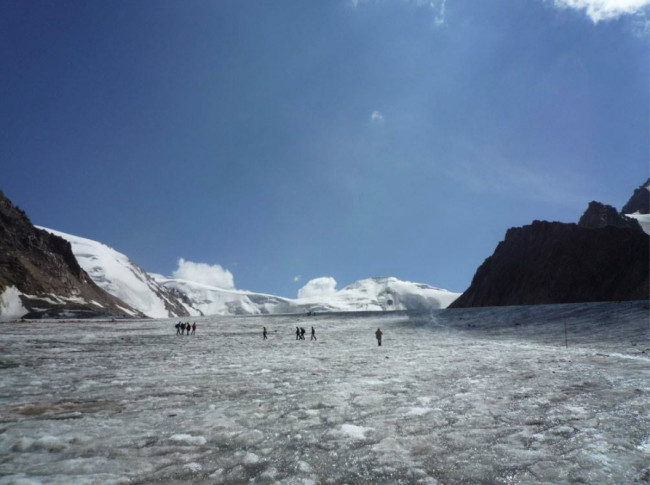
NOWs: Gletschermusik by Robert Lippok, Askat Zhetigen and Lillevan
photo: Lillevan.com 2008-2016
NOWs:
Gletschermusik
Musik: Robert Lippok & Askat Zhetigen (Kirgisien). Video: Lillevan
20:00 h
Roter Salon in der Volksbühne | Rosa-Luxemburg-Platz | 10178 Berlin/Mitte
Gletschermusik (Glacier Music) uses the sounds and images of Central Asia’s melting glaciers as source material and inspiration. Berlin’s Robert Lippok & Kyrgyz musician Askat Jetigen were invited to create an audio-visual performance and a series of concerts. The project promotes the exchange between science and the arts, creating awareness of the human-induced deterioration of our pristine environment and was instigated by the Goethe-Institutes in Tashkent and Almaty. The album crowns the 12 month traveling festival through the countries of Central Asia in 2013 featuring multimedial concerts, promoting dialogue between artists, scientists, nationalities, genres and traditions. The music Robert and Askat created together is magical and thematically relevant to the theme of melting glaciers, a fascinating blend of ancient Kyrgyz tradition and new musical ideas. After the first concerts it was obvious that a recording must be made and released, and here we are: the Gletschermusik recordings, also featuring a track by pianist SooJin Anjou – the piano in dialogue with the sounds of Central Asia’s melting glaciers.
Gletscher Musik initiated by Goethe Institut Almaty & Tashkent explored Central Asia’s melting Glaciers, using the recorded sound of the glaciers a range of art events and symposia spread over 4 years, 5 countries and 60 artists.
Featuring Omnibus Ensemble, Gebrüder Teichmann, Askat Jetigenov, Robert Lippok & Artyom Kim and many others.
Tickets kosten 15,- Euro.
photo: Lillevan.com 2008-2016
NOWs:
Gletschermusik
Musik: Robert Lippok & Askat Zhetigen (Kirgisien). Video: Lillevan
20:00 h
Roter Salon in der Volksbühne | Rosa-Luxemburg-Platz | 10178 Berlin/Mitte
Gletschermusik (Glacier Music) uses the sounds and images of Central Asia’s melting glaciers as source material and inspiration. Berlin’s Robert Lippok & Kyrgyz musician Askat Jetigen were invited to create an audio-visual performance and a series of concerts. The project promotes the exchange between science and the arts, creating awareness of the human-induced deterioration of our pristine environment and was instigated by the Goethe-Institutes in Tashkent and Almaty. The album crowns the 12 month traveling festival through the countries of Central Asia in 2013 featuring multimedial concerts, promoting dialogue between artists, scientists, nationalities, genres and traditions. The music Robert and Askat created together is magical and thematically relevant to the theme of melting glaciers, a fascinating blend of ancient Kyrgyz tradition and new musical ideas. After the first concerts it was obvious that a recording must be made and released, and here we are: the Gletschermusik recordings, also featuring a track by pianist SooJin Anjou – the piano in dialogue with the sounds of Central Asia’s melting glaciers.
Gletscher Musik initiated by Goethe Institut Almaty & Tashkent explored Central Asia’s melting Glaciers, using the recorded sound of the glaciers a range of art events and symposia spread over 4 years, 5 countries and 60 artists.
Featuring Omnibus Ensemble, Gebrüder Teichmann, Askat Jetigenov, Robert Lippok & Artyom Kim and many others.
Tickets kosten 15,- Euro.

NOWs: Ziggy and the Starfish by Anne Duk Hee Jordan
NOWs:
New work by Anne Duk Hee Jordan presented at Agency of Living Organisms:
Anne Duk Hee Jordan:
Ziggy and the Starfish (2016)
„What we call the beginning is often the end. And to make an end is to make a beginning. The end is where we start from“. T. S. Eliot
Ziggy and the Starfish is a sculptural installation composing of a mechanical waste processing crab, a film exploring the diversity of sexuality in the ocean, scientific interviews and moving singing stones dating back millions of years. The newly commissioned work of Anne Duk Hee Jordan looks at sexuality from the perspective of marine life in a wholehearted environmental consumption where many causalities influence each other. Through pollution, traffic, oil spills, oil platforms, the sea began to change. The climate change in the hydrosphere determines the sexuality of the ocean animals. An almost invisible, yet undeniable change in the environmental and sexual world occurs. We can pretend the world goes on but we all go back to another big extinction. We are heading back to the end.
Facing the dreadful facts about global warming by zooming in on the perspective of aquatic life, Anne Duk Hee Jordan, created Ziggy and the Starfish, a sculptural environment exploring an alienate universe full of strangeness, changes and adaptation. After a month of free diving, many hours of underwater filming, interviews with marine biologists and geologists on the Basque coast, the artist tells the story of reproduction and decay and a sexuality way beyond our own imagination, while examining the relationship between nature, time and human intervention.
Text by Pauline Doutreluingne
Anne Duk Hee Jordan: Ziggy and the Starfish, 2016. Trailer
Anne Duk Hee Jordan: Ziggy and the Starfish. A documentary.
Agency of Living Organisms
Tabakalera Center for Contemporary Art, San Sebastian, Spain
Opening, attended by the curator and the participating artists: Friday, 21st October 2016, at 7 pm.
Full website content launched on the opening: Design and website: A Satellite Studio × Internet Friends Forever
›
Agency of Living Organisms explores the communication between different living organisms throughout the lithosphere, atmosphere, biosphere, and hydrosphere. It manifests itself as an artistic cosmography in close collaboration with artists exhibiting mainly new works specially designed for this project. The invited ‘agents’ share a questioning attitude towards the environment and its constructed representations. A new kind of ‘nature’ is being created, one that is shaped and categorized by humanity. Today the technosphere and the biosphere interact to form neo-natural phenomena.
As we find ourselves amidst pressing environmental and social crises, this project not only seeks to investigate our position in regards to our natural and built environment (the way we consume or sustain it), but also to lend insight into the perception of the self through the eyes of the ‘others’ and to forge an understanding of the complex networks within which we are embedded.
In response to the theme in question, the project proposes an exhibition with interconnected commissioned and existing works as a social living sculpture, an expanding format that opens the walls of the exhibition halls into the urban, natural and ‘online’ environment.
The show will include work by Anne Duk Hee Jordan, Esther Kokmeijer, Gerard Ortín, Iain Ball, Iratxe Jaio and Klaas van Gorkum, Lara Almarcegui, Maider López, New Mineral Collective, Tere Recarens, Tue Greenfort, El Conde de Torrefiel, Koenraad Van den Driessche and Nader Koochaki. Curated by Pauline Doutreluingne.
Please find the curatorial statement by Pauline Doutreluingne, Tabakalera Curator 2015, here.
NOWs:
New work by Anne Duk Hee Jordan presented at Agency of Living Organisms:
Anne Duk Hee Jordan:
Ziggy and the Starfish (2016)
„What we call the beginning is often the end. And to make an end is to make a beginning. The end is where we start from“. T. S. Eliot
Ziggy and the Starfish is a sculptural installation composing of a mechanical waste processing crab, a film exploring the diversity of sexuality in the ocean, scientific interviews and moving singing stones dating back millions of years. The newly commissioned work of Anne Duk Hee Jordan looks at sexuality from the perspective of marine life in a wholehearted environmental consumption where many causalities influence each other. Through pollution, traffic, oil spills, oil platforms, the sea began to change. The climate change in the hydrosphere determines the sexuality of the ocean animals. An almost invisible, yet undeniable change in the environmental and sexual world occurs. We can pretend the world goes on but we all go back to another big extinction. We are heading back to the end.
Facing the dreadful facts about global warming by zooming in on the perspective of aquatic life, Anne Duk Hee Jordan, created Ziggy and the Starfish, a sculptural environment exploring an alienate universe full of strangeness, changes and adaptation. After a month of free diving, many hours of underwater filming, interviews with marine biologists and geologists on the Basque coast, the artist tells the story of reproduction and decay and a sexuality way beyond our own imagination, while examining the relationship between nature, time and human intervention.
Text by Pauline Doutreluingne
Anne Duk Hee Jordan: Ziggy and the Starfish, 2016. Trailer
Anne Duk Hee Jordan: Ziggy and the Starfish. A documentary.
Agency of Living Organisms
Tabakalera Center for Contemporary Art, San Sebastian, Spain
Opening, attended by the curator and the participating artists: Friday, 21st October 2016, at 7 pm.
Full website content launched on the opening: Design and website: A Satellite Studio × Internet Friends Forever
›
Agency of Living Organisms explores the communication between different living organisms throughout the lithosphere, atmosphere, biosphere, and hydrosphere. It manifests itself as an artistic cosmography in close collaboration with artists exhibiting mainly new works specially designed for this project. The invited ‘agents’ share a questioning attitude towards the environment and its constructed representations. A new kind of ‘nature’ is being created, one that is shaped and categorized by humanity. Today the technosphere and the biosphere interact to form neo-natural phenomena.
As we find ourselves amidst pressing environmental and social crises, this project not only seeks to investigate our position in regards to our natural and built environment (the way we consume or sustain it), but also to lend insight into the perception of the self through the eyes of the ‘others’ and to forge an understanding of the complex networks within which we are embedded.
In response to the theme in question, the project proposes an exhibition with interconnected commissioned and existing works as a social living sculpture, an expanding format that opens the walls of the exhibition halls into the urban, natural and ‘online’ environment.
The show will include work by Anne Duk Hee Jordan, Esther Kokmeijer, Gerard Ortín, Iain Ball, Iratxe Jaio and Klaas van Gorkum, Lara Almarcegui, Maider López, New Mineral Collective, Tere Recarens, Tue Greenfort, El Conde de Torrefiel, Koenraad Van den Driessche and Nader Koochaki. Curated by Pauline Doutreluingne.
Please find the curatorial statement by Pauline Doutreluingne, Tabakalera Curator 2015, here.

NOWs: Zirkon Kompass by Markus Hoffmann
NOWs:
Markus Hoffmann: Zirkon Kompass, 2015
Markus Hoffmann
winner of Celeste Art Prize 2016 – Installation, Sculpture & Performance Prize;
awards and final exhibition 7-9 October, The Bargehouse, OXO Tower Wharf, London
–
Markus Hoffmann: Zirkon Kompass, 2015
Filled with different zircon sands from all the continents of the world, the work Zirkon Kompass consists of sixteen hourglasses that are suspended from the ceiling. Positioned at eye level, the hourglasses are arranged in a circle with each object at the quarter-wind point on a 16-wind compass rose.
A thin steel rope is mounted at the narrowest point of each hourglass, keeping them in horizontal equilibrium. Zircon minerals are the oldest known materials on Earth. Resistant to chemical changes, they offer a window into time going back as far as 4.4 billion years ago. Zircon is omnipresent in all stones and contains the radioactive elements uranium and thorium in minute amounts – the clock within the zircon. With the passage of time, it converts to the element lead. In the work both the semiotics of the hourglass as a metaphor for vanity and the utility as scientific instrumentation are transformed. Instead, the sand forms a seemingly stable horizon: a layer representing the oldest stratum we could hypothetically stand on.
While the hourglass has lost its socially determined function, the zircon clock invisibly continues to transform, subconsciously reminding the viewers of their precious and yet transient time on earth. The zircon is a metaphorical semblance of the element of time. As the oldest material on the planet, it establishes an abstract meaning of time that is limited by the current capabilities of scientific research. It thus inherently addresses the relative stability of scientific knowledge, which depends on technological progress and the creation of measurement methods, enabling us to expand our limited horizon. Paradoxically, zircon is used to create storage vessels that may be durable enough to hold the radioactive waste products of our species – the future fossils of the Anthropocene. But even zircon is not eternally durable. Everything eventually decays, and even permanence becomes relative.
Celeste Prize 2016, 8th edition, curated by Ellen Blumenstein, KW Institute for Contemporary Art, Berlin.
The jury: Juliana Bardolim, Marc Bembekoff, Sandro Droschl, Chris Fitzpatrick, Martin Germann, Felix Hoffmann, Chiara Ianeselli, Marianna Liosi, Zane Onckule, Barbara Piwowarska, Alya Sebti, Moritz Wesseler.
NOWs:
Markus Hoffmann: Zirkon Kompass, 2015
Markus Hoffmann
winner of Celeste Art Prize 2016 – Installation, Sculpture & Performance Prize;
awards and final exhibition 7-9 October, The Bargehouse, OXO Tower Wharf, London
–
Markus Hoffmann: Zirkon Kompass, 2015
Filled with different zircon sands from all the continents of the world, the work Zirkon Kompass consists of sixteen hourglasses that are suspended from the ceiling. Positioned at eye level, the hourglasses are arranged in a circle with each object at the quarter-wind point on a 16-wind compass rose.
A thin steel rope is mounted at the narrowest point of each hourglass, keeping them in horizontal equilibrium. Zircon minerals are the oldest known materials on Earth. Resistant to chemical changes, they offer a window into time going back as far as 4.4 billion years ago. Zircon is omnipresent in all stones and contains the radioactive elements uranium and thorium in minute amounts – the clock within the zircon. With the passage of time, it converts to the element lead. In the work both the semiotics of the hourglass as a metaphor for vanity and the utility as scientific instrumentation are transformed. Instead, the sand forms a seemingly stable horizon: a layer representing the oldest stratum we could hypothetically stand on.
While the hourglass has lost its socially determined function, the zircon clock invisibly continues to transform, subconsciously reminding the viewers of their precious and yet transient time on earth. The zircon is a metaphorical semblance of the element of time. As the oldest material on the planet, it establishes an abstract meaning of time that is limited by the current capabilities of scientific research. It thus inherently addresses the relative stability of scientific knowledge, which depends on technological progress and the creation of measurement methods, enabling us to expand our limited horizon. Paradoxically, zircon is used to create storage vessels that may be durable enough to hold the radioactive waste products of our species – the future fossils of the Anthropocene. But even zircon is not eternally durable. Everything eventually decays, and even permanence becomes relative.
Celeste Prize 2016, 8th edition, curated by Ellen Blumenstein, KW Institute for Contemporary Art, Berlin.
The jury: Juliana Bardolim, Marc Bembekoff, Sandro Droschl, Chris Fitzpatrick, Martin Germann, Felix Hoffmann, Chiara Ianeselli, Marianna Liosi, Zane Onckule, Barbara Piwowarska, Alya Sebti, Moritz Wesseler.
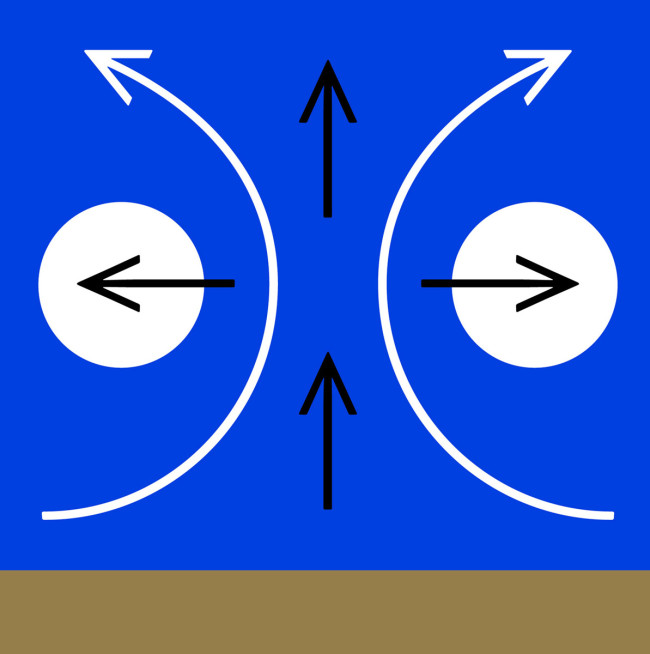
NOWs: Life Is a Staircase by Matthias Sohr
NOWs:
Koo Jeong A: Riptide
Opening Reception: Thursday 6 October, 5 – 7.30pm
The Korean Cultural Centre UK (KCCUK) in London presents Riptide, a new exhibition from their 2016 ‘Artist of the Year’, Koo Jeong A. The artist presents 20 large-scale line drawings recontextualised from her book project Koo Jeong-A: R (2006). Transforming a solo exhibition into a dynamic collaborative project, Koo Jeong A invites a judicious selection of international artists to respond and exhibit alongside her existing works.
Participating artists include Kyung Roh Bannwart, Melissa Dubbin & Aaron S. Davidson, Yva Jung, Hanqing Ma & Mona Yoo, Martin Roth and Matthias Sohr.
The exhibition takes Koo Jeong A’s intricate drawing Civilising Process (2005) as its departure point, in which to explore topical issues concerning artistic practice and collaboration today. Published by Swiss Re, Koo Jeong A: R (2006) – made up of 1001 individual line drawings – refers to One Thousand and One Nights: the classic collection of Middle Eastern stories, folk tales, myths and legends dating from the 8th Century. Mirroring the process of storytelling – by nature spontaneous, responsive and heterogeneous – the artists respond to Koo Jeong A’s Civilising Process with site-specific installations, as well as existing works refigured within the space. Each response unearths alternative narratives within Koo Jeong A’s drawing, including Martin Roth’s untitled (persian rugs) installation, which sees a number of Persian rugs brought to life with the cultivation of grass. Through the work’s sensual qualities – the damp smell and the ever growing grass – Roth questions the complexities of documentation, and explores how we obtain, translate and communicate narratives from cultural objects. Reflecting on the global nature of the participating artists, Riptide describes the various clusters of opposing energies which meet to form the exhibition.
Installation details by Matthias Sohr:
Matthias Sohr: Life Is a Staircase, 2016 (installation detail). Photo Julien Gremaud
Matthias Sohr: Life Is a Staircase, 2016 (installation detail). Photo Julien Gremaud
Life Is a Staircase (2016)
Solder resist mask on copper, epoxy resin and glass fibre, platform lift
In Life Is a Staircase, Matthias Sohr tries to gain access to a very material effect of Koo Jeong A’s drawings, notably to the colour of the fountain pen she made use of. Blue is the point of departure of Sohr’s series of monochromes industrially made from printed circuit board, a composite material that is at the core of each and every electronic device that surrounds us, no matter if big or small.
NOWs:
Koo Jeong A: Riptide
Opening Reception: Thursday 6 October, 5 – 7.30pm
The Korean Cultural Centre UK (KCCUK) in London presents Riptide, a new exhibition from their 2016 ‘Artist of the Year’, Koo Jeong A. The artist presents 20 large-scale line drawings recontextualised from her book project Koo Jeong-A: R (2006). Transforming a solo exhibition into a dynamic collaborative project, Koo Jeong A invites a judicious selection of international artists to respond and exhibit alongside her existing works.
Participating artists include Kyung Roh Bannwart, Melissa Dubbin & Aaron S. Davidson, Yva Jung, Hanqing Ma & Mona Yoo, Martin Roth and Matthias Sohr.
The exhibition takes Koo Jeong A’s intricate drawing Civilising Process (2005) as its departure point, in which to explore topical issues concerning artistic practice and collaboration today. Published by Swiss Re, Koo Jeong A: R (2006) – made up of 1001 individual line drawings – refers to One Thousand and One Nights: the classic collection of Middle Eastern stories, folk tales, myths and legends dating from the 8th Century. Mirroring the process of storytelling – by nature spontaneous, responsive and heterogeneous – the artists respond to Koo Jeong A’s Civilising Process with site-specific installations, as well as existing works refigured within the space. Each response unearths alternative narratives within Koo Jeong A’s drawing, including Martin Roth’s untitled (persian rugs) installation, which sees a number of Persian rugs brought to life with the cultivation of grass. Through the work’s sensual qualities – the damp smell and the ever growing grass – Roth questions the complexities of documentation, and explores how we obtain, translate and communicate narratives from cultural objects. Reflecting on the global nature of the participating artists, Riptide describes the various clusters of opposing energies which meet to form the exhibition.
Installation details by Matthias Sohr:
Matthias Sohr: Life Is a Staircase, 2016 (installation detail). Photo Julien Gremaud
Matthias Sohr: Life Is a Staircase, 2016 (installation detail). Photo Julien Gremaud
Life Is a Staircase (2016)
Solder resist mask on copper, epoxy resin and glass fibre, platform lift
In Life Is a Staircase, Matthias Sohr tries to gain access to a very material effect of Koo Jeong A’s drawings, notably to the colour of the fountain pen she made use of. Blue is the point of departure of Sohr’s series of monochromes industrially made from printed circuit board, a composite material that is at the core of each and every electronic device that surrounds us, no matter if big or small.
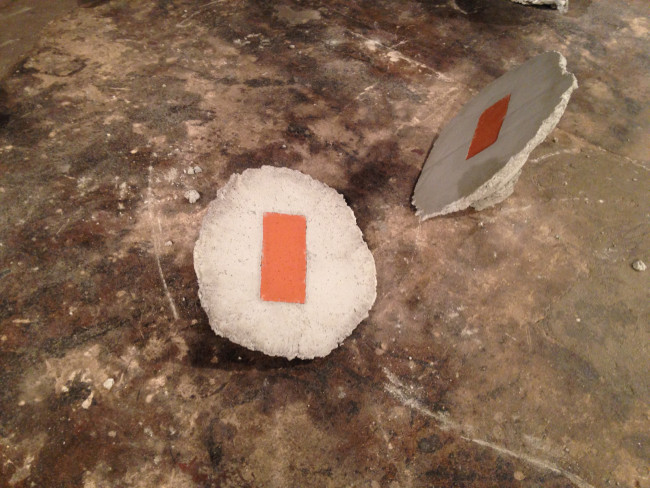
NOWs: Rike Horb at Goldrausch
NOWs:
Rike Horb: Concrete and Bricks, 2016
The title of her work “Concrete and Bricks” references the material and bridges between man and nature, it is a symbol of domestication and human power. The two materials are in dialogue, between a standardized measure and cast size. The installation tests the flexibility against a structural analysis of the material and plays with the idea of functionality, of right and wrong. Mold and counter mold. Gaps and crossing lines.
–
FRAUD, FAKE & FAME – Goldrausch 2016
Opening: 30 September, 7pm. Opening hours: Sa 1pm – 7pm, So 2pm – 7pm.
Andrea Acosta, Bas | Bas Backer, Lucie Biloshytskyy, Kirstin Burckhardt, Dania Burger, Birte Endrejat, Elisa Ewert, Ulrike Hannemann, Rike Horb, Stefanie Kägi, Dina Khouri, Alanna Lynch, Dagmar Schürrer, Anna Steinert, Nina Tobien. Curated by Birgit Effinger, Hannah Kruse and Kerstin. Gottschalk
–
St. Johannes-Evangelist
Auguststraße 90, 10117 Berlin
S Oranienburger Straße
–
Additional Program:
Sunday, October 2, 2016, 4 pm
–Artist Walk: through the exhibition with Lucie Biloshytskyy, Ulrike Hannemann, Stefanie Kägi, and Nina Tobien (German)
Thursday, October 6, 2016, 7 pm
–Performance as a material practice: Performance by Alanna Lynch
–Thematic tour with Susanne Prinz, Kunstverein am Rosa-Luxemburg-Platz e.V.
Saturday, October 8, 2016, 4 pm
–Artist Walk: through the exhibition with Andrea Acosta, Kirstin Burckhardt, and Dagmar Schürrer (English)
Sunday, October 9, 2016, 4 pm
–Artist Walk: through the exhibition with Dania Burger, Birte Endrejat, Rike Horb, and Anna Steinert (German)
Saturday, October 15, 2016, 4 pm
–Artist Walk: through the exhibition with Bas | Bas Backer, Dina Khouri, and Alanna Lynch (English)
Sunday, October 16, 2016
–Closing Reception and Performances
4 pm:
–Thematic tour with Dr. Ines Lindner, art historian
from 5 pm:
–Comic reading with Bas | Bas Backer
Performances by Kirstin Burckhardt, Rike Horb, Alanna Lynch, Anna Steinert, and other guests
Tours are available in Arabic, Norwegian, Spanish or Dutch upon request.
A collaboration with Kultur Büro Elisabeth.
Organized by the Goldrausch Project for Women Artists with the support of the Berlin Senate Department of Labour, Integration, and Women and the European Social Fund (ESF).
NOWs:
Rike Horb: Concrete and Bricks, 2016
Beton und Ziegel sind in der Arbeit Concrete and Bricks sowohl Baustoffe als auch Brücke zwischen Mensch und Natur, wie auch Sinnbilder für Domestizierung und Menschenkraft. Die beiden Werkstoffe stehen in einem Dialog zwischen normiertem Maß und gegossener Größe. Die Installation ermittelt die Flexibilität und Statik in zweckgebundenem Material und spielt mit der Idee von Funktionalität, richtig und falsch. Form und Gegenform. Lücken und Linien aus Kreuzungspunkten.
–
FRAUD, FAKE & FAME – Goldrausch 2016
Eröffnung: 30. September, 19:00 Uhr. Öffnungszeiten: Mo–Sa 13 – 19 Uhr, So 14 – 19 Uhr.
Andrea Acosta, Bas | Bas Backer, Lucie Biloshytskyy, Kirstin Burckhardt, Dania Burger, Birte Endrejat, Elisa Ewert, Ulrike Hannemann, Rike Horb, Stefanie Kägi, Dina Khouri, Alanna Lynch, Dagmar Schürrer, Anna Steinert, Nina Tobien. Kuratiert von Birgit Effinger, Hannah Kruse und Kerstin Gottschalk.
–
St. Johannes-Evangelist
Auguststraße 90, 10117 Berlin
S Oranienburger Straße
–
Programm zur Ausstellung
Sonntag, 2. Oktober, 16 Uhr
–Artist Walk: Durch die Ausstellung mit Lucie Biloshytskyy, Ulrike Hannemann, Stefanie Kägi und Nina Tobien (deutsch)
Donnerstag, 6. Oktober, 19 Uhr
–Performance als materielle Praxis: Themenführung mit Susanne Prinz, Kunstverein am Rosa-Luxemburg-Platz e. V.
–Performance mit Alanna Lynch
Samstag, 8. Oktober, 16 Uhr
–Artist Walk: Durch die Ausstellung mit Andrea Acosta, Kirstin Burckhardt und Dagmar Schürrer (englisch)
Sonntag, 9. Oktober, 16 Uhr
–Artist Walk: Durch die Ausstellung mit Dania Burger, Birte Endrejat, Rike Horb und Anna Steinert (deutsch)
Samstag, 15. Oktober, 16 Uhr
–Artist Walk: Durch die Ausstellung mit Bas | Bas Backer, Dina Khouri und Alanna Lynch (englisch)
Sonntag, 16. Oktober
–Finissage und Performances
16 Uhr
– Themenführung mit Dr. Ines Lindner, Kunsthistorikerin
ab 17 Uhr
–Comic-Lesung mit Bas | Bas Backer
–Performances mit Kirstin Burckhardt, Rike Horb, Alanna Lynch, Anna Steinert und weiteren Gästen
Künstler*innengespräche in arabischer, norwegischer, spanischer oder niederländischer Sprache auf Anfrage.
Eine Kooperation mit dem Kultur Büro Elisabeth.
Veranstaltet vom Goldrausch Künstlerinnenprojekt, im Auftrag und mit Mitteln der Berliner Senatsverwaltung für Arbeit, Inte
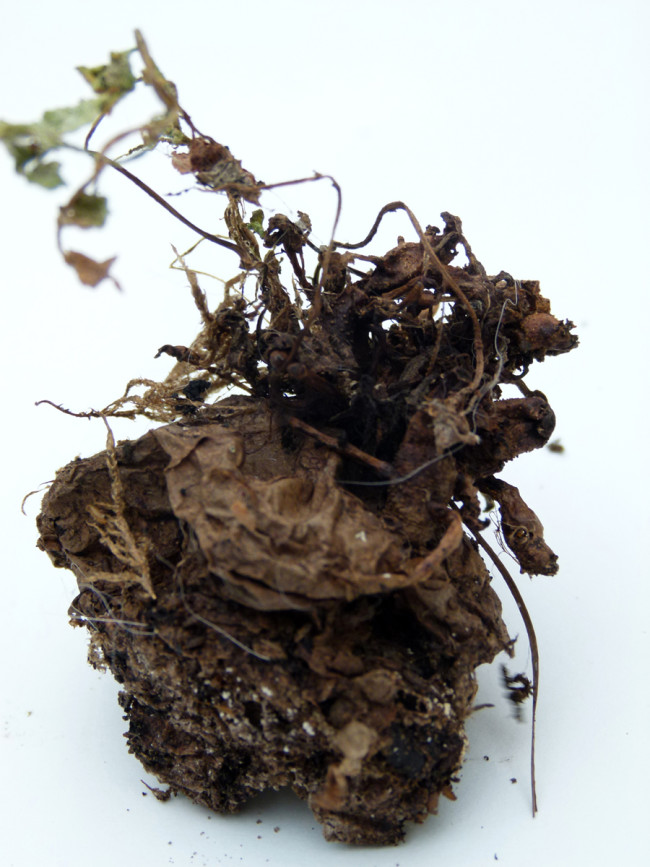
Kartoffeln by Anne Duk Hee Jordan
NOWs:
Man has always tried to shape his environment.
Food is an existential and fundamental basic need that must be satisfied. Maslow’s ‘hierarchy of needs’, a theory proposed by the psychologist in his 1943 paper “A Theory of Human Motivation” elaborates further: physiological needs are the physical requirements for human survival. If these requirements are not met, the human body cannot function properly and will ultimately fail. Physiological needs are thought to be the most important; they should be met first. Air, water, and food are metabolic requirements for survival in all animals, including humans. Staple food is an economic and a sociopolitical good: in this way, food undergoes a cultural change. Food preparation techniques are based on cultural knowledge developed over thousands of years, which also lead to specific eating habits.
Anne Duk Hee Jordan makes the following comparison: “Long ago humans discovered the Eastern Islands, they populated it and grubbed up the forest surface, among other reasons also to place the large famous statues on. Some time later they finished the raw materials to survive, because the available space was very limited. There were military conflicts between the individual villages and only the strongest one survived. But even the stronger once were dying at the end, because also they found nothing more to eat. They started to actually eat each other. Since they did not have boats (they also could not build any, as no more trees were there) they could not flee. They became extinct.” – Text by Pauline Doutreluingne
Anne Duk Hee Jordan‘s photographs are on display at TU Berlin in the context of the exhibition project Clouded Lands. 30 Years Chornobyl curated by Food of War as part of IPB World Congress 2016. Starting the 30th of September 2016, the exhibition lasts until 3rd of October.
Jordan, an adoptee from South Korea, grew up in a rural environment in the southern Palatine region in Germany, where the potato is an important part of agriculture. The history of the potato interweaves with her own identity and life story. As a culinary object, the potato embodies not only a wide range of symbols, rules and rituals, but also functions as a traditional food of entire cultures. It is a nightshade plant and comes originally from the Incas. The Spanish introduced the potato to Europe in the second half of the 16th century. In Prussia, Friedrich II formally flogged his compatriots to accept it as staple food, as there they stubbornly refused recognizing the potato. The potato was slow to be adopted by distrustful European farmers, but soon enough it became an important food staple and field crop that played a major role in the European 19th century population boom. However, due to its lack of genetic diversity, and the very limited number of varieties initially introduced, the crop was vulnerable to disease. In 1845, a plant disease known as late blight spread rapidly through the poorer communities of western Ireland, resulting in the crop failures that led to the Great Irish Famine. Half of the Irish population got reduced; a million died of famine and up to two million emigrated to the USA. In 2009, Anne Duk Hee Jordan created a machine/self sustained chemo-biological system called Water Me / Eat Me. The system consists of a potato field, biological circuit and a watering machine. She grew potatoes, which produced electricity for an engine that represents the drive for the watering machine. This machine functions as gears or, figuratively as a heart, which supplies the potatoes with all the necessary nutrients that promote their growth. She then cut open the potatoes and infused her own blood in the biological transmission, so that the potatoes were not only supplied by the nutrients in the earth, but also by the blood of the artist. She titled the performance and photography series created out of this process Compassion (2011).
NOWs:
Man has always tried to shape his environment.
Food is an existential and fundamental basic need that must be satisfied. Maslow’s ‘hierarchy of needs’, a theory proposed by the psychologist in his 1943 paper “A Theory of Human Motivation” elaborates further: physiological needs are the physical requirements for human survival. If these requirements are not met, the human body cannot function properly and will ultimately fail. Physiological needs are thought to be the most important; they should be met first. Air, water, and food are metabolic requirements for survival in all animals, including humans. Staple food is an economic and a sociopolitical good: in this way, food undergoes a cultural change. Food preparation techniques are based on cultural knowledge developed over thousands of years, which also lead to specific eating habits.
Anne Duk Hee Jordan makes the following comparison: “Long ago humans discovered the Eastern Islands, they populated it and grubbed up the forest surface, among other reasons also to place the large famous statues on. Some time later they finished the raw materials to survive, because the available space was very limited. There were military conflicts between the individual villages and only the strongest one survived. But even the stronger once were dying at the end, because also they found nothing more to eat. They started to actually eat each other. Since they did not have boats (they also could not build any, as no more trees were there) they could not flee. They became extinct.” – Text by Pauline Doutreluingne
Anne Duk Hee Jordan‘s photographs are on display at TU Berlin in the context of the exhibition project Clouded Lands. 30 Years Chornobyl curated by Food of War as part of IPB World Congress 2016. Starting the 30th of September 2016, the exhibition lasts until 3rd of October.
Jordan, an adoptee from South Korea, grew up in a rural environment in the southern Palatine region in Germany, where the potato is an important part of agriculture. The history of the potato interweaves with her own identity and life story. As a culinary object, the potato embodies not only a wide range of symbols, rules and rituals, but also functions as a traditional food of entire cultures. It is a nightshade plant and comes originally from the Incas. The Spanish introduced the potato to Europe in the second half of the 16th century. In Prussia, Friedrich II formally flogged his compatriots to accept it as staple food, as there they stubbornly refused recognizing the potato. The potato was slow to be adopted by distrustful European farmers, but soon enough it became an important food staple and field crop that played a major role in the European 19th century population boom. However, due to its lack of genetic diversity, and the very limited number of varieties initially introduced, the crop was vulnerable to disease. In 1845, a plant disease known as late blight spread rapidly through the poorer communities of western Ireland, resulting in the crop failures that led to the Great Irish Famine. Half of the Irish population got reduced; a million died of famine and up to two million emigrated to the USA. In 2009, Anne Duk Hee Jordan created a machine/self sustained chemo-biological system called Water Me / Eat Me. The system consists of a potato field, biological circuit and a watering machine. She grew potatoes, which produced electricity for an engine that represents the drive for the watering machine. This machine functions as gears or, figuratively as a heart, which supplies the potatoes with all the necessary nutrients that promote their growth. She then cut open the potatoes and infused her own blood in the biological transmission, so that the potatoes were not only supplied by the nutrients in the earth, but also by the blood of the artist. She titled the performance and photography series created out of this process Compassion (2011).
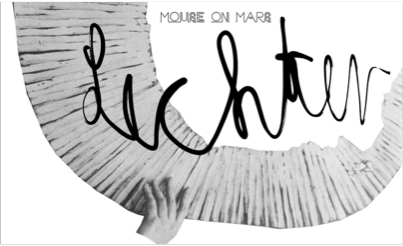
NOWs: Lichter by Mouse on Mars
NOWs:
MOVES#130 Mouse on Mars »Lichter«
Record-Release-Party | Performance | Nacht-im-Museum
27 September 2016, 8.30pm
Admission is free.
Since 1993 Andi Toma and Jan St. Werner work as Mouse on Mars. Sailing on the wild and deep waters of contemporary electronic music, they have released 15 albums, played countless shows all around the world, collaborated with the likes of Mark E. Smith, Stereolab, Eric D. Clark, or with André de Ridder and the Chicago Symphony Orchestra, while Toma also worked with the late Moondog or Werner with Markus Popp/Oval. Among many others.
Mouse on Mars’ »Lichter« now is release number 10 on Infinite Greyscale, the imprint of Paul McDevitt and Cornelius Quabeck: a 10inch of coloured vinyl with a screen-printed b-side. Each handmade and handpacked in a numbered edition of 300 copies including an insert, a photograph, and a download code.
»Lichter« a cross–rhythmic piece, was conceived with the help of robotic joints courtesy of Sonic Robots beating out the rhythm on metal gear. To celebrate the record release Mouse on Mars will re-enact the recording session in a live performance.
The performance will take place upstairs in the project space of gallery Sprüth Magers, Berlin, works on display are by Louisa Clement, Anna Vogel, and Moritz Wegwerth.
Furthermore, Paul McDevitt & Jamie Lemoine created a video for »Lichter« which will be screened at Image Movement.
NOWs:
MOVES#130 Mouse on Mars »Lichter«
Record-Release-Party | Performance | Nacht-im-Museum
27. September 2016, 20.30 Uhr
Der Eintritt ist frei.
Seit 1993 durchforsten Andi Toma und Jan St. Werner als Mouse on Mars die wilden und tiefen Gewässer der zeitgenössischen elektronischen Musik. Sie haben 15 Alben veröffentlicht, unzählige Shows auf der ganzen Welt gespielt, und mit Künstlern wie Mark E. Smith, Eric D. Clark, Stereolab oder André de Ridder und dem Chicago Symphony Orchestra kooperiert; darüber hinaus hatte Toma beispielsweise auch mit Moondog gearbeitet oder Werner mit Markus Popp / Oval.
Die EP »Lichter« erscheint auf Paul McDevitts / Cornelius Quabecks Label Infinite Greyscale, eine 10inch in farbigem Vinyl, mit einem Siebdruck auf der B-Seite. Jede von Hand verpackt in einer nummerierten Auflage von 300 Exemplaren mit einem Insert, einem Foto und einem Download-Code.
Die Aufnahmen hatte Mouse on Mars mit programmierten Robotern von Sonic Robots produziert, und mit diesen wird sie heute Abend auch einen Live-Auftritt realisieren.
Die Performance findet im Projektraum von Sprüth Magers in Berlin statt, in der Ausstellung von Louisa Clement, Anna Vogel, Moritz Wegwerth. Paul McDevitt & Jamie Lemoine produzierten ein Video für »Lichter«, das wir wir bei Image Movement zeigen werden.
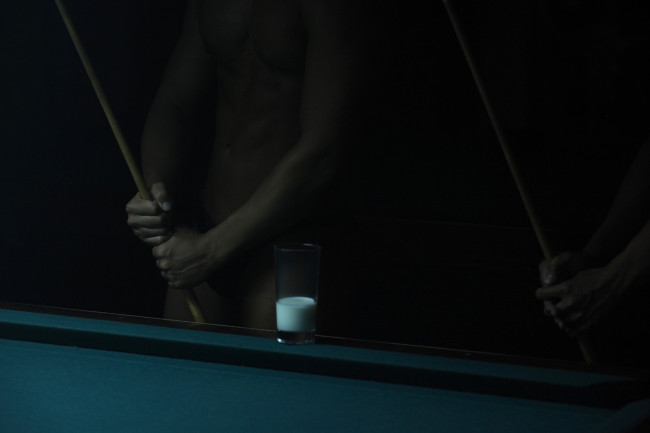
NOWs: Milky Bay by Yuichiro Tamura
NOWs:
[BODY/PLAY/POLITICS]
Yokohama Museum of Art
Artists: Yinka Shonibare MBE, Yee I-Lann, Apichatpong Weerasethakul, UuDam Tran Nguyen, Ishikawa Ryuichi, Tamura Yuichiro
BODY/PLAY/POLITICS presents contemporary works of art that delve from a variety of angles into images that have been generated throughout history by “the body,” which encompasses the individual human body, our collective actions, and spiritual presences. There is a tendency in our society to label specific bodies as healthy or unhealthy, beautiful or ugly, and to envision certain modes of behavior as representative of the entire group, which we classify such as “typically Japanese.” In other cases, minor deviations from norms or expectations can elicit strange feelings in observers and cause entirely different meanings to be perceived.
In a world cohabited by people with all sorts of skin colors, ethnicities, religions, gender norms and lifestyles, where the colors, forms, or behaviors of individual bodies are not inherently vested with specific meanings, over the course of millennia many value judgments and hierarchies have arisen in societies and are all too often linked to tragedies of history.
The six artists featured in this exhibition are from Europe/ Africa, Southeast Asia, and Japan. Their works express, in poetic and sometimes humor-inflected ways, aspects of history that manifest themselves through the body, looking toward the future and bringing the shapes of new ideas and meanings into view.
Tamura Yuichiro. Born in 1977 in Toyama, Japan. Lives and works in Atami, Japan.
Tamura delves into the memory and history of localities and transforms these into new narratives that transcend time and space, presenting works that investigate the contemporary significance of past events. This exhibition features his new video installation focusing on the history of modern bodybuilding. Originating in Prussia in the 19th century, modern bodybuilding soon spread from Europe to America and thence to Japan via Yokohama under post-World War II Allied occupation, creating a new image of the body for the modern era. This work delivers a new, unknown story of postwar Yokohama via a new dramatic piece narrated by a fictional storyteller reminiscent of Mishima Yukio.
–
In Yokohama, B-29s fly over the skies every night. I heard that there were intense fires in Honmoku. I am very worried.
I heard that ABCD have encircled us, and that petrol will run out. I am very worried.
<A are the Americans, B the British, C the Chinese, and D the Dutch.>
That American big shot who landed in Atsugi with a C-54, MacArthur, he apparently set up something called the GHQ at the Yokohama customs house.
GHQ… The name is somewhat catchy.
<General Headquarters, G, H, Q.>
They say this GHQ requisitioned a metal factory on the north side of the Port of Yokohama and turned it into a milk plant.
I think they used to store petrol in that area, but now they seem to be storing milk.
I guess milk is the new metal, the new petrol. It’s a strange world.
Today, I saw the body of an American soldier as he was walking down the street.
I remember it was very robust and radiant. To be honest, I was enchanted by that body.
Then I understood; what makes that body is neither metal nor petrol, but milk. I was enchanted by that body, that radiant body.
<To drink milk to make the body strong, and for that body to walk around town. America knows that this is a far better propaganda than radios or newspapers.>
Speaking of which, I recently learnt of a certain tribe. In this village, young boys drink the semen of older boys. They do that to make their bodies stronger, and to develop into an adult. Maybe it’s something like the mother’s milk. It’s a tribe in Papua New Guinea.
That story about milk being stored in the reclaimed land swelling out from the Port of Yokohama… That protrusion feels to me like a woman’s breast, or perhaps a scrotum.
<The protrusions in Honmoku: Pier A, Pier B, Pier C, Pier D>
Did you know that there’s a club called Seamen’s Club at the base of Protrusion B? Seamen refers to sailors.
But do you know what happens if you take the letter “a” out of “seamen”? The pronunciation stays the same, but the word changes to “semen,” as in sperm. A club where sperms gather. I don’t think that’s an inaccurate image. This is a seamen’s club. A club where only men gather. I imagine them taking turns to hit white balls.
This happened a while ago.
I went to a Christmas party at the Fryar Gym in Yokohama. There I was given a Christmas present from an American officer dressed as Santa Claus. But I was more taken by the muscular figure of the officer than the content of the present. He was heavily built, large. More than you, father. It seemed that American officers worked out at the Fryar Gym. That’s why there was a faint smell of sweat. I can’t remember what the gift was, but I can recall that officer’s body well. Perhaps you could say that the present for me was their bodies. I’m thinking about working on my body too.
The day after the Christmas party, a ship leaves the Port of Yokohama with a novelist on board. The ship’s name is President Wilson. The novelist, who is coming down with a cold, waves his hand from the ship’s deck. No one knows at this moment that the same hand would be waved again 19 years later, from a balcony in Ichigaya. The novelist is embarking on a round the world trip, which would take him to Greece. There he encounters the “sun” and the “bodies.”
I finally started practicing what’s called bodybuilding. The body is honest. It gains as much muscle as I train. I train three days a week, working on each separate muscle. This muscle today, and this other muscle tomorrow… I can feel my body is gradually changing.
After his return from Greece, the novelist too starts applying himself in “body production.” That is to say, bodybuilding. “I” was the one who coached him. The words of gods in ancient Greece; oracles that cannot be thwarted. In postwar Japan, the equivalent are the words, the commands, the suggestions put forward by the GHQ. The GHQ’s words go as far as to dictate the movements in film, theatre, or kabuki. Even in sword fighting scenes, there was to be no slashing. The novelist, however, slits his belly in the end.
–
Kanagawaoki-shinju Mishima-no-Shiranami
Since medieval times, the three islands off the coast of Kanagawa, have seen many double suicides bound by love, as well as shipwrecks.
Towards the end of the early modern period, Black Ships push into these three islands, marking the dawn of modernity.
The three islands are later occupied by foreign countries, and are used to store cow milk.
Cow milk is exclusively produced for and provided to foreigners, but a young man sneaks into the islands to steal the milk.
The young man drinks the cloudy white syrup every day and as he does so his body changes dramatically.
He makes the body of ancient mythologies his own as a result of the cow milk brought on by the foreigners.
As he grabs a sword in an attempt to disassemble his body, he remembers the oracle by the GHP commanding that “no flesh should be cut by sword.”
The story culminates with the famous scene of the young man’s hara-kiri, and the cloudy white syrup flowing up from his belly.
The syrup turns the sea into a dull white color, causing white-crested waves on the shore.
–
This is a story I heard.
A painter gathered five women to draw one portrait. He did that to combine the most beautiful parts of these women to create the ideal woman. Artists, it seems, can amputate people and reconnect them at will to create the ideal beauty. I feel this story shares something with bodybuilding. In terms of its dismembered thinking about the body.
Apparently, sculptures of only the trunk of the body are called torsos. And the most beautiful among them is said to be the Belvedere Torso. This statue wasn’t shaped like it is from the beginning though, as its arms and legs were severed at some point. The head too. So of course, the sculpture today is far from what the sculptor intended us to see. But what can you do? Everyone says it’s beautiful.
–
(Excerpt from an exhibition text by Tamura Yuichiro)
NOWs:
[BODY/PLAY/POLITICS]
Yokohama Museum of Art
Artists: Yinka Shonibare MBE, Yee I-Lann, Apichatpong Weerasethakul, UuDam Tran Nguyen, Ishikawa Ryuichi, Tamura Yuichiro
BODY/PLAY/POLITICS presents contemporary works of art that delve from a variety of angles into images that have been generated throughout history by “the body,” which encompasses the individual human body, our collective actions, and spiritual presences. There is a tendency in our society to label specific bodies as healthy or unhealthy, beautiful or ugly, and to envision certain modes of behavior as representative of the entire group, which we classify such as “typically Japanese.” In other cases, minor deviations from norms or expectations can elicit strange feelings in observers and cause entirely different meanings to be perceived.
In a world cohabited by people with all sorts of skin colors, ethnicities, religions, gender norms and lifestyles, where the colors, forms, or behaviors of individual bodies are not inherently vested with specific meanings, over the course of millennia many value judgments and hierarchies have arisen in societies and are all too often linked to tragedies of history.
The six artists featured in this exhibition are from Europe/ Africa, Southeast Asia, and Japan. Their works express, in poetic and sometimes humor-inflected ways, aspects of history that manifest themselves through the body, looking toward the future and bringing the shapes of new ideas and meanings into view.
Tamura Yuichiro. Born in 1977 in Toyama, Japan. Lives and works in Atami, Japan.
Tamura delves into the memory and history of localities and transforms these into new narratives that transcend time and space, presenting works that investigate the contemporary significance of past events. This exhibition features his new video installation focusing on the history of modern bodybuilding. Originating in Prussia in the 19th century, modern bodybuilding soon spread from Europe to America and thence to Japan via Yokohama under post-World War II Allied occupation, creating a new image of the body for the modern era. This work delivers a new, unknown story of postwar Yokohama via a new dramatic piece narrated by a fictional storyteller reminiscent of Mishima Yukio.
–
In Yokohama, B-29s fly over the skies every night. I heard that there were intense fires in Honmoku. I am very worried.
I heard that ABCD have encircled us, and that petrol will run out. I am very worried.
<A are the Americans, B the British, C the Chinese, and D the Dutch.>
That American big shot who landed in Atsugi with a C-54, MacArthur, he apparently set up something called the GHQ at the Yokohama customs house.
GHQ… The name is somewhat catchy.
<General Headquarters, G, H, Q.>
They say this GHQ requisitioned a metal factory on the north side of the Port of Yokohama and turned it into a milk plant.
I think they used to store petrol in that area, but now they seem to be storing milk.
I guess milk is the new metal, the new petrol. It’s a strange world.
Today, I saw the body of an American soldier as he was walking down the street.
I remember it was very robust and radiant. To be honest, I was enchanted by that body.
Then I understood; what makes that body is neither metal nor petrol, but milk. I was enchanted by that body, that radiant body.
<To drink milk to make the body strong, and for that body to walk around town. America knows that this is a far better propaganda than radios or newspapers.>
Speaking of which, I recently learnt of a certain tribe. In this village, young boys drink the semen of older boys. They do that to make their bodies stronger, and to develop into an adult. Maybe it’s something like the mother’s milk. It’s a tribe in Papua New Guinea.
That story about milk being stored in the reclaimed land swelling out from the Port of Yokohama… That protrusion feels to me like a woman’s breast, or perhaps a scrotum.
<The protrusions in Honmoku: Pier A, Pier B, Pier C, Pier D>
Did you know that there’s a club called Seamen’s Club at the base of Protrusion B? Seamen refers to sailors.
But do you know what happens if you take the letter “a” out of “seamen”? The pronunciation stays the same, but the word changes to “semen,” as in sperm. A club where sperms gather. I don’t think that’s an inaccurate image. This is a seamen’s club. A club where only men gather. I imagine them taking turns to hit white balls.
This happened a while ago.
I went to a Christmas party at the Fryar Gym in Yokohama. There I was given a Christmas present from an American officer dressed as Santa Claus. But I was more taken by the muscular figure of the officer than the content of the present. He was heavily built, large. More than you, father. It seemed that American officers worked out at the Fryar Gym. That’s why there was a faint smell of sweat. I can’t remember what the gift was, but I can recall that officer’s body well. Perhaps you could say that the present for me was their bodies. I’m thinking about working on my body too.
The day after the Christmas party, a ship leaves the Port of Yokohama with a novelist on board. The ship’s name is President Wilson. The novelist, who is coming down with a cold, waves his hand from the ship’s deck. No one knows at this moment that the same hand would be waved again 19 years later, from a balcony in Ichigaya. The novelist is embarking on a round the world trip, which would take him to Greece. There he encounters the “sun” and the “bodies.”
I finally started practicing what’s called bodybuilding. The body is honest. It gains as much muscle as I train. I train three days a week, working on each separate muscle. This muscle today, and this other muscle tomorrow… I can feel my body is gradually changing.
After his return from Greece, the novelist too starts applying himself in “body production.” That is to say, bodybuilding. “I” was the one who coached him. The words of gods in ancient Greece; oracles that cannot be thwarted. In postwar Japan, the equivalent are the words, the commands, the suggestions put forward by the GHQ. The GHQ’s words go as far as to dictate the movements in film, theatre, or kabuki. Even in sword fighting scenes, there was to be no slashing. The novelist, however, slits his belly in the end.
–
Kanagawaoki-shinju Mishima-no-Shiranami
Since medieval times, the three islands off the coast of Kanagawa, have seen many double suicides bound by love, as well as shipwrecks.
Towards the end of the early modern period, Black Ships push into these three islands, marking the dawn of modernity.
The three islands are later occupied by foreign countries, and are used to store cow milk.
Cow milk is exclusively produced for and provided to foreigners, but a young man sneaks into the islands to steal the milk.
The young man drinks the cloudy white syrup every day and as he does so his body changes dramatically.
He makes the body of ancient mythologies his own as a result of the cow milk brought on by the foreigners.
As he grabs a sword in an attempt to disassemble his body, he remembers the oracle by the GHP commanding that “no flesh should be cut by sword.”
The story culminates with the famous scene of the young man’s hara-kiri, and the cloudy white syrup flowing up from his belly.
The syrup turns the sea into a dull white color, causing white-crested waves on the shore.
–
This is a story I heard.
A painter gathered five women to draw one portrait. He did that to combine the most beautiful parts of these women to create the ideal woman. Artists, it seems, can amputate people and reconnect them at will to create the ideal beauty. I feel this story shares something with bodybuilding. In terms of its dismembered thinking about the body.
Apparently, sculptures of only the trunk of the body are called torsos. And the most beautiful among them is said to be the Belvedere Torso. This statue wasn’t shaped like it is from the beginning though, as its arms and legs were severed at some point. The head too. So of course, the sculpture today is far from what the sculptor intended us to see. But what can you do? Everyone says it’s beautiful.
–
(Excerpt from an exhibition text by Tamura Yuichiro)
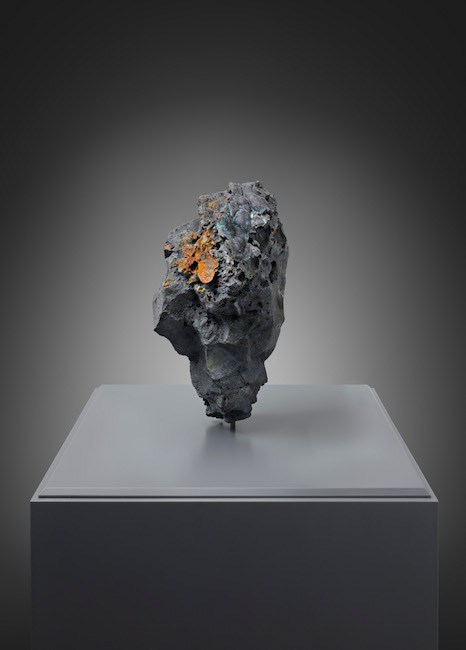
NOWs: Kaiserringstipendium 2016 : Julian Charrière
NOWs:
Julian Charrière präsentiert im Mönchehaus Museum Goslar verschiedene Werkserien anlässlich des Goslarer Kaiserringstipendium für junge Kunst. Julian Charrière macht die Welt zu seinem Studio. Er unternimmt Expeditionen in ferne Länder und bezeichnet sich selbst als “Zukunftsarchäologe”. Seine multimedialen Arbeiten verbinden bildende Kunst mit Wissenschaft, Land-Art mit Archäologie, Romantik mit Sciene-Fiction. In seinen Videos, Skulpturen, Fotografien und Installationen führt er eindrucksvoll vor Augen, wie “der Mensch die größte Erosionskraft in der Natur ist” (Charrière). Seine Bilder zwischen verführerischer Schönheit und latentem Schrecken verhandeln aktuelle Fragen unserer Zeit.
So hat er in Kasachstan ein radioaktiv verseuchtes Atomwaffentestgelände fotografiert (2015) oder ist in Island auf einen hohen Eisberg geklettert (2013), den er mit einem Bunsenbrenner zum Schmelzen bringen wollte. 2014 reiste er nach Argentinien, Chile und Bolivien, um sich auf die Suche nach Lithium, ohne das kein Handy-Akku funktionieren würde, zu begeben. Das Metall wird dort in Salzwüsten gewonnen. Charrière schnitt Blöcke aus den Lithium-Förderbecken und kombinierte sie zu einem minimalistischen Skulpturenensemble. Wie Ausgrabungen aus fernen Zeiten mahnen sie ganz ohne erhobenen Zeigefinger an die Größe und Unendlichkeit der Natur.
Die Ausstellung im Mönchehaus Museum konzentriert sich auf Arbeiten aus drei Werkserien, von denen eine erstmals in Goslar zu sehen sein wird.
–
Julian Charriere: Polygon, Somewhere, 2015
Julian Charriere: Polygon, Somewhere, 2015
Julian Charriere: Installationview: Into the Hollow at Dittrich & Schlechtriem, 2016; photo Hans-Georg Gaul
Julian Charriere: Installationview: Into the Hollow at Dittrich & Schlechtriem, 2016; photo Hans-Georg Gaul
Julian Charriere: Metamorphism XVII (Detail), 2016, photo Hans-Georg Gaul
Julian Charriere: Metamorphism XIX (Detail), 2016, photo Hans-Georg Gaul
Julian Charriere: Metamorphism XIV, 2016, photo Hans-Georg Gaul
NOWs:
Julian Charrière präsentiert im Mönchehaus Museum Goslar verschiedene Werkserien anlässlich des Goslarer Kaiserringstipendium für junge Kunst. Julian Charrière macht die Welt zu seinem Studio. Er unternimmt Expeditionen in ferne Länder und bezeichnet sich selbst als “Zukunftsarchäologe”. Seine multimedialen Arbeiten verbinden bildende Kunst mit Wissenschaft, Land-Art mit Archäologie, Romantik mit Sciene-Fiction. In seinen Videos, Skulpturen, Fotografien und Installationen führt er eindrucksvoll vor Augen, wie “der Mensch die größte Erosionskraft in der Natur ist” (Charrière). Seine Bilder zwischen verführerischer Schönheit und latentem Schrecken verhandeln aktuelle Fragen unserer Zeit.
So hat er in Kasachstan ein radioaktiv verseuchtes Atomwaffentestgelände fotografiert (2015) oder ist in Island auf einen hohen Eisberg geklettert (2013), den er mit einem Bunsenbrenner zum Schmelzen bringen wollte. 2014 reiste er nach Argentinien, Chile und Bolivien, um sich auf die Suche nach Lithium, ohne das kein Handy-Akku funktionieren würde, zu begeben. Das Metall wird dort in Salzwüsten gewonnen. Charrière schnitt Blöcke aus den Lithium-Förderbecken und kombinierte sie zu einem minimalistischen Skulpturenensemble. Wie Ausgrabungen aus fernen Zeiten mahnen sie ganz ohne erhobenen Zeigefinger an die Größe und Unendlichkeit der Natur.
Die Ausstellung im Mönchehaus Museum konzentriert sich auf Arbeiten aus drei Werkserien, von denen eine erstmals in Goslar zu sehen sein wird.
–
Julian Charriere: Polygon, Somewhere, 2015
Julian Charriere: Polygon, Somewhere, 2015
Julian Charriere: Installationview: Into the Hollow at Dittrich & Schlechtriem, 2016; photo Hans-Georg Gaul
Julian Charriere: Installationview: Into the Hollow at Dittrich & Schlechtriem, 2016; photo Hans-Georg Gaul
Julian Charriere: Metamorphism XVII (Detail), 2016, photo Hans-Georg Gaul
Julian Charriere: Metamorphism XIX (Detail), 2016, photo Hans-Georg Gaul
Julian Charriere: Metamorphism XIV, 2016, photo Hans-Georg Gaul
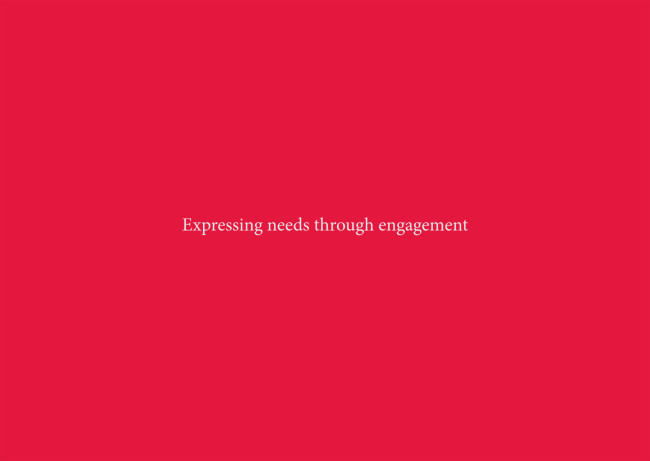
NOWs: Rike Horb and Raul Walch at Global Goals World Cup
NOWs
Rike Horb: „Words“, 2016
Text on postcards, colors by Eir Soccer and Raul Walch
Every space contains thoughts. Mediated through language. Concepts for access to buildings and positions. The mind and confusion in monolgues. The postcards share notions and ideas on the human, as well as on the built. It follows the question of how can an architecture become inclusive and open. How can we feel belonging to space. The postcards spread words and distribute constructions in order to meet new thoughts and places.
—
Rike Horb and Raul Walch participate in PLAY FOR CHANGE, the launch of The Global Goals World Cup at The Social Good Summit and amplify the 17 UN Global Goals through art.
The Global Goals World Cup is an open women’s amateur soccer tournament designed to expand the scope of a conventional sport event and draw on the perspectives of creatives, academics, and activists, to merge true global citizenship with the game of soccer. To qualify, teams have to play and take action for one of their favorite 17 UN Global Goals.
The Global Goals World Cup is powered by Eir Soccer and UNDP – who are proudly supported by Social Good Summit, Save the Children and The Danish Ministry of Foreign Affairs.
—
—
NOWs
Rike Horb: „Words“, 2016
Text on postcards, colors by Eir Soccer and Raul Walch
Every space contains thoughts. Mediated through language. Concepts for access to buildings and positions. The mind and confusion in monolgues. The postcards share notions and ideas on the human, as well as on the built. It follows the question of how can an architecture become inclusive and open. How can we feel belonging to space. The postcards spread words and distribute constructions in order to meet new thoughts and places.
—
Rike Horb and Raul Walch participate in PLAY FOR CHANGE, the launch of The Global Goals World Cup at The Social Good Summit and amplify the 17 UN Global Goals through art.
The Global Goals World Cup is an open women’s amateur soccer tournament designed to expand the scope of a conventional sport event and draw on the perspectives of creatives, academics, and activists, to merge true global citizenship with the game of soccer. To qualify, teams have to play and take action for one of their favorite 17 UN Global Goals.
The Global Goals World Cup is powered by Eir Soccer and UNDP – who are proudly supported by Social Good Summit, Save the Children and The Danish Ministry of Foreign Affairs.
—
—
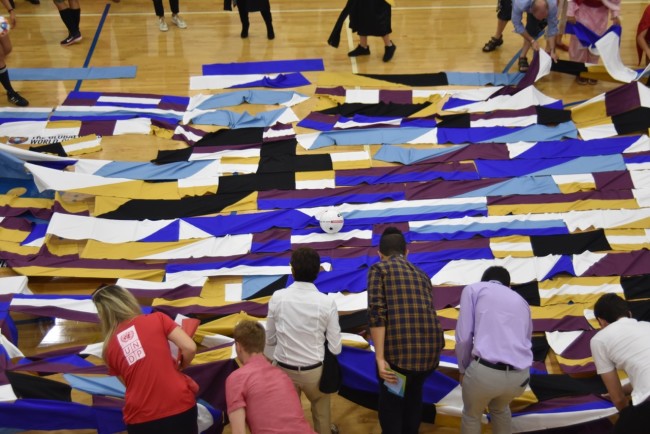
NOWs: Raul Walch and Rike Horb at Global Goals World Cup
NOWs
Raul Walch: UNITY, 2016
New York
fabric, buttons
200 pieces 35 x 140cm
On the occasion of the Global Goals World Cup the Berlin artist Raul Walch has produced a cloth that is composed of 200 individual parts and which can be used by the viewers in a variety of different ways. The piece consists of 17 unique geometric designs that interlock with one another creating a large and abstract pattern. Chance decides how the variable shapes and the colors of the cloth are assembled. Similar to a community – the whole is constructed out of many singular and constituent elements.
The unity and the completeness of the cloth will slowly degrade over the course of the event as the many individual pieces will be taken over by the public. Visitors will be able to wear and use the scarf-like components during the event. Once the crowd leaves the arena, the textile elements will be carried out into the city; and then further out into the world. Through their participation with this textile sculpture the visitors will become ambassadors to the UN Global Goals.
—
Raul Walch and Rike Horb participate in PLAY FOR CHANGE, the launch of The Global Goals World Cup at The Social Good Summit and amplify the 17 UN Global Goals through art.
The Global Goals World Cup is an open women’s amateur soccer tournament designed to expand the scope of a conventional sport event and draw on the perspectives of creatives, academics, and activists, to merge true global citizenship with the game of soccer. To qualify, teams have to play and take action for one of their favorite 17 UN Global Goals.
The Global Goals World Cup is powered by Eir Soccer and UNDP – who are proudly supported by Social Good Summit, Save the Children and The Danish Ministry of Foreign Affairs.
—
NOWs
Raul Walch: UNITY, 2016
New York
fabric, buttons
200 pieces 35 x 140cm
On the occasion of the Global Goals World Cup the Berlin artist Raul Walch has produced a cloth that is composed of 200 individual parts and which can be used by the viewers in a variety of different ways. The piece consists of 17 unique geometric designs that interlock with one another creating a large and abstract pattern. Chance decides how the variable shapes and the colors of the cloth are assembled. Similar to a community – the whole is constructed out of many singular and constituent elements.
The unity and the completeness of the cloth will slowly degrade over the course of the event as the many individual pieces will be taken over by the public. Visitors will be able to wear and use the scarf-like components during the event. Once the crowd leaves the arena, the textile elements will be carried out into the city; and then further out into the world. Through their participation with this textile sculpture the visitors will become ambassadors to the UN Global Goals.
—
Raul Walch and Rike Horb participate in PLAY FOR CHANGE, the launch of The Global Goals World Cup at The Social Good Summit and amplify the 17 UN Global Goals through art.
The Global Goals World Cup is an open women’s amateur soccer tournament designed to expand the scope of a conventional sport event and draw on the perspectives of creatives, academics, and activists, to merge true global citizenship with the game of soccer. To qualify, teams have to play and take action for one of their favorite 17 UN Global Goals.
The Global Goals World Cup is powered by Eir Soccer and UNDP – who are proudly supported by Social Good Summit, Save the Children and The Danish Ministry of Foreign Affairs.
—
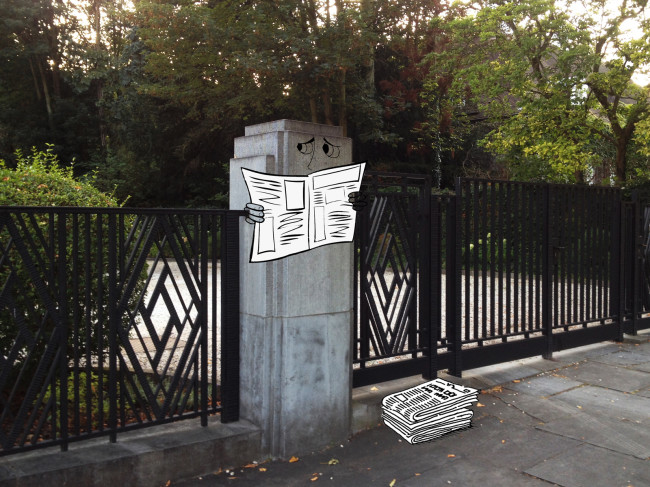
NOWs: Functions and Fictions by Alvaro Urbano
NOWs:
Alvaro Urbano
Solo Performance : Functions and Fictions
Villa Empain / FONDATION BOGHOSSIAN, Brussels
Alvaro Urbano’s practice unfolds through an experimental process by creating synergies between living entities and dynamic structures, scripting time-space based situations with a strong interest in heterotopias, architecture and fiction. Urbano’s Functions and Fictions will animate the Villa Empain – shifting perspectives on the built environment through replicating architectural elements of the Villa. He will destabilize the functionality and space-time relations of the architectural program to create a fictional landscape and portal to the imaginative.
Curated by Asad Raza.
NOWs:
Alvaro Urbano
Solo Performance : Functions and Fictions
Villa Empain / FONDATION BOGHOSSIAN, Brussels
Alvaro Urbano’s practice unfolds through an experimental process by creating synergies between living entities and dynamic structures, scripting time-space based situations with a strong interest in heterotopias, architecture and fiction. Urbano’s Functions and Fictions will animate the Villa Empain – shifting perspectives on the built environment through replicating architectural elements of the Villa. He will destabilize the functionality and space-time relations of the architectural program to create a fictional landscape and portal to the imaginative.
Curated by Asad Raza.
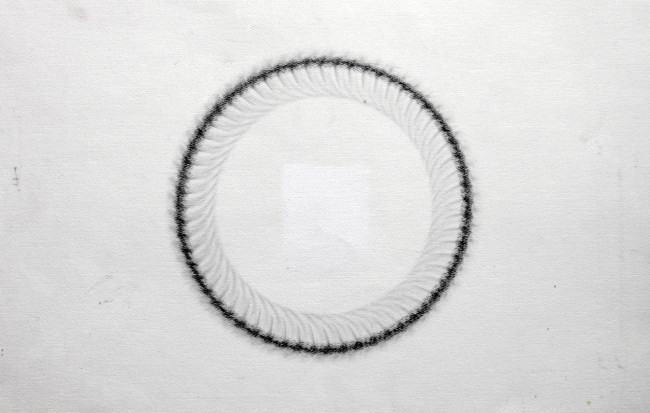
NOWs: Time Drawings and Elbstein by Felix Kiessling
NOWs:
Felix Kiessling: Zeitzeichnung, Berlin 2014
FAREWELL TO AN IDEA. Five objects and five ideas.
15. September – 18. September 2016
Neue Berliner Räume e.V. c/o Plattenpalast, Wolliner Str. 50, 10435 Berlin-Prenzlauer Berg
〉
I. Fünf Künstler und Künstlerinnen konzipieren ein „Werk“, das nur in der Vorstellung existiert. Jede Idee wird in zwei Umschlägen verschlossen. Einer der beiden Umschläge wird gerahmt und im Ausstellungsraum präsentiert. Der andere wird im Vorfeld an eine zufällig ausgewählte Person verschenkt. II. Fünf Künstler und Künstlerinnen zeigen ein „Objekt“ aus (fast) unbearbeitetem Material. – Fünf Objekte und fünf Ideen. Verborgen und frei. Die Zukunft hat Zeit.
Gruppen-Ausstellung mit Werken von: Geta Brătescu, Nina Canell, Vajiko Chachkhiani, Daniel Gustav Cramer, Haris Epaminonda, Markus Hoffmann, Felix Kiessling, Antje Majewski, Michael Müller und Katie Paterson. Kuratiert Jaromir Hladík
_
Beitrag von Felix Kiessling:
Elbstein (Weltwasserspiegelsenkung, 2014)
Der Stein, der Elbe entnommen, hat ein Volumen von 5 Litern, das entspricht einer Absenkung des Weltwasserspiegels von 1.386693291177857 x 10 (hoch)-17 Meter.
Felix Kiessling: Elbstein (Weltwasserspiegelsenkung), 2014, Photo: Johannes Foerster
–
TIME CAPSULE
17. September – 29. Oktober 2016
hase29 – Kunstraum
Gesellschaft für zeitgenössische Kunst Osnabrück e.V.
〉
Die künstlerischen Positionen eröffnen eine Vielzahl von Perspektiven, um ZEIT als eine Grundbedingung menschlicher Existenz jeweils zu erfahren. Präsentiert werden Raum- und Videoinstallationen, Fotografien, Zeichnungen, Objekte ggf. Malerei. Zeit als künstlerischer Prozess, Zeitmanagement, Zeitstrategien, erlebte Zeit, Echtzeit, Gleichzeitigkeit, Weltzeit, Raumzeit, Zeitmesser, Zeitraum, Zeitpunkt, zeitlos… In den Werken der Künstlerinnen und Künstler wird die Zeit in spezifischer Weise erlebbar. Sie sprechen das Zeitgefühl an, sie veranschaulichen Zeit, irritieren das Zeitempfinden oder verleiten dazu, Zeit zu verbringen ohne Nützliches tun zu wollen.
»Zeit ist immer knapp obwohl und weil die Gegenwart immer schneller läuft. Was Zeit ist, erfahren wir dann, wenn sie in der Vergangenheit verschwindet oder in die Zukunft projiziert wird. Fremd wird uns Zeit, wenn sie, wie in dieser Ausstellung wie in einer Time Capsule präsent wird. Während Gegenwart aktuell vergeht, steht die nächste Zukunft schon vor der Tür und damit Veränderungen, die wir nicht übersehen können. Was wir wissen ist, dass Veränderungen kommen werden – Risiken und Nebenwirkungen kalkulieren wir vorsichtshalber ein – doch (unsere) Zeit bleibt unberechenbar.« Michael Kröger
Gruppen-Ausstellung mit Werken von:
Rafram Chaddaz Boaz (Tunis/TUN), Satomi Edo (MS) Nicole Fuchs (CH), Christine Gensheimer (BI), Angelika Höger (BI), Christine Hoffmann (OS), Daphne Keramidas (Paris/F), Felix Kiessling (B), Laura Mareen Lagemann (MS), Reiner Nachtwey (D), Lars Rosenbohm (BI), Deniz Saridas (D) Hiltrud Schäfer (OS). Kuratiert von: Dr. Michael Kröger, Elisabeth Lumme, Ellen Timmerman
–
Beitrag von Felix Kiessling:
Zeitzeichnungen (time drawings)
Ongoing, Berlin 2014
Ich habe ein Stück Graphit am Sekundenzeiger eines Uhrwerkes befestigt. Die Dauer dieser Zeichnung betrug 6220800 Sekunden. Jede einzelne Sekunde dieser Dauer wird zeichnerisch festgehalten. Gleichzeitig ist die Zeichnung eine seismographische Karte des umgebenden Raumes, dessen Vibrationen Einfluss auf das Bewegungsmoment des Grahphitstücks ausüben.
Felix Kiessling: Zeitzeichnung, Arndt, Berlin 2014
Felix Kiessling: Zeitzeichnung, Arndt, Berlin 2014
NOWs:
Felix Kiessling: Zeitzeichnung, Berlin 2014
FAREWELL TO AN IDEA. Five objects and five ideas.
15. September – 18. September 2016
Neue Berliner Räume e.V. c/o Plattenpalast, Wolliner Str. 50, 10435 Berlin-Prenzlauer Berg
〉
I. Fünf Künstler und Künstlerinnen konzipieren ein „Werk“, das nur in der Vorstellung existiert. Jede Idee wird in zwei Umschlägen verschlossen. Einer der beiden Umschläge wird gerahmt und im Ausstellungsraum präsentiert. Der andere wird im Vorfeld an eine zufällig ausgewählte Person verschenkt. II. Fünf Künstler und Künstlerinnen zeigen ein „Objekt“ aus (fast) unbearbeitetem Material. – Fünf Objekte und fünf Ideen. Verborgen und frei. Die Zukunft hat Zeit.
Gruppen-Ausstellung mit Werken von: Geta Brătescu, Nina Canell, Vajiko Chachkhiani, Daniel Gustav Cramer, Haris Epaminonda, Markus Hoffmann, Felix Kiessling, Antje Majewski, Michael Müller und Katie Paterson. Kuratiert Jaromir Hladík
_
Beitrag von Felix Kiessling:
Elbstein (Weltwasserspiegelsenkung, 2014)
Der Stein, der Elbe entnommen, hat ein Volumen von 5 Litern, das entspricht einer Absenkung des Weltwasserspiegels von 1.386693291177857 x 10 (hoch)-17 Meter.
Felix Kiessling: Elbstein (Weltwasserspiegelsenkung), 2014, Photo: Johannes Foerster
–
TIME CAPSULE
17. September – 29. Oktober 2016
hase29 – Kunstraum
Gesellschaft für zeitgenössische Kunst Osnabrück e.V.
〉
Die künstlerischen Positionen eröffnen eine Vielzahl von Perspektiven, um ZEIT als eine Grundbedingung menschlicher Existenz jeweils zu erfahren. Präsentiert werden Raum- und Videoinstallationen, Fotografien, Zeichnungen, Objekte ggf. Malerei. Zeit als künstlerischer Prozess, Zeitmanagement, Zeitstrategien, erlebte Zeit, Echtzeit, Gleichzeitigkeit, Weltzeit, Raumzeit, Zeitmesser, Zeitraum, Zeitpunkt, zeitlos… In den Werken der Künstlerinnen und Künstler wird die Zeit in spezifischer Weise erlebbar. Sie sprechen das Zeitgefühl an, sie veranschaulichen Zeit, irritieren das Zeitempfinden oder verleiten dazu, Zeit zu verbringen ohne Nützliches tun zu wollen.
»Zeit ist immer knapp obwohl und weil die Gegenwart immer schneller läuft. Was Zeit ist, erfahren wir dann, wenn sie in der Vergangenheit verschwindet oder in die Zukunft projiziert wird. Fremd wird uns Zeit, wenn sie, wie in dieser Ausstellung wie in einer Time Capsule präsent wird. Während Gegenwart aktuell vergeht, steht die nächste Zukunft schon vor der Tür und damit Veränderungen, die wir nicht übersehen können. Was wir wissen ist, dass Veränderungen kommen werden – Risiken und Nebenwirkungen kalkulieren wir vorsichtshalber ein – doch (unsere) Zeit bleibt unberechenbar.« Michael Kröger
Gruppen-Ausstellung mit Werken von:
Rafram Chaddaz Boaz (Tunis/TUN), Satomi Edo (MS) Nicole Fuchs (CH), Christine Gensheimer (BI), Angelika Höger (BI), Christine Hoffmann (OS), Daphne Keramidas (Paris/F), Felix Kiessling (B), Laura Mareen Lagemann (MS), Reiner Nachtwey (D), Lars Rosenbohm (BI), Deniz Saridas (D) Hiltrud Schäfer (OS). Kuratiert von: Dr. Michael Kröger, Elisabeth Lumme, Ellen Timmerman
–
Beitrag von Felix Kiessling:
Zeitzeichnungen (time drawings)
Ongoing, Berlin 2014
Ich habe ein Stück Graphit am Sekundenzeiger eines Uhrwerkes befestigt. Die Dauer dieser Zeichnung betrug 6220800 Sekunden. Jede einzelne Sekunde dieser Dauer wird zeichnerisch festgehalten. Gleichzeitig ist die Zeichnung eine seismographische Karte des umgebenden Raumes, dessen Vibrationen Einfluss auf das Bewegungsmoment des Grahphitstücks ausüben.
Felix Kiessling: Zeitzeichnung, Arndt, Berlin 2014
Felix Kiessling: Zeitzeichnung, Arndt, Berlin 2014
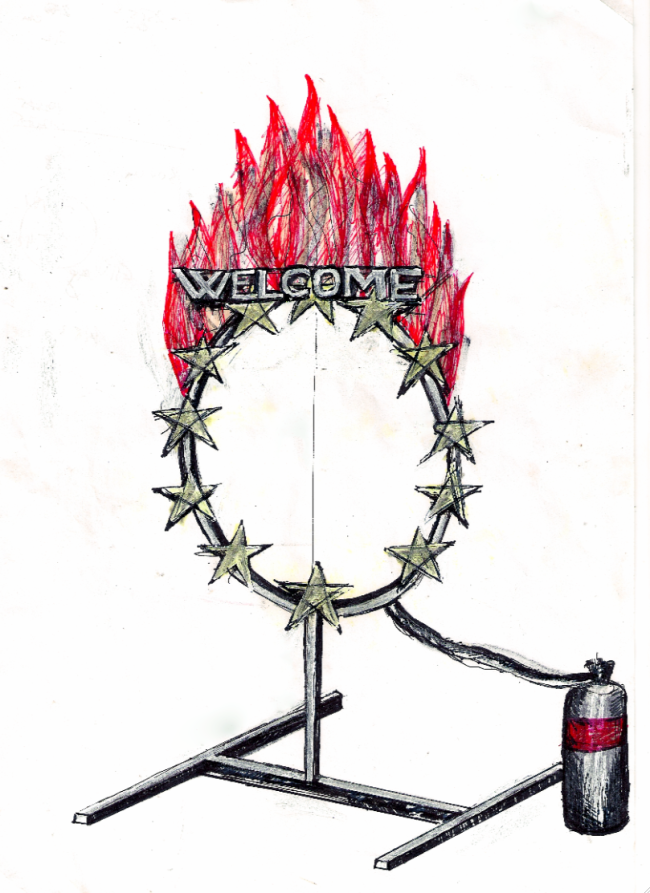
NOWs: Welcome & Wire by Timea Anita Oravecz
NOWs:
Timea Anita Oravecz: Wire, 2016. Photo: Vladimir Pavic
SEE Art Gates: States of Reality
17th Art Biennial, organized by the Pancevo Cultural Centre, Serbia
A concern for the politics of geography and the reality of migration informs the work of Timea Anita Oravecz, who participates in the 17th Art Biennial, Serbia.
“For more than eighteen years, I have been living in different Western European countries. I am fascinated by the diverse cultural and social approaches that differ from my childhood experiences in Hungary under the socialist regime. With my background and the experiences I faced as an immigrant, I developed an interest in the relationship between personal identity, culture of origin, and the need for integration.
My projects generally make reference to my socio-cultural context and they are inspired by my daily life. The urban space is crucial to my work in addition to the connections between the political, cultural and historical context”, says the artist.
Slought Curatorial and Research Fellow Laurel McLaughlin spoke with Oravecz about the the possibility of migrating across political and ideological borders, and her own moral imperative to empathize and support other migrants. Informed by her Hungarian identity, her work interrogates the agenda of the European Union as concerns inclusion and exclusion, and the human necessity to explore “elsewhere.” Read the interview.
–
Timea Anita Oravecz: Welcome to EU, 2016
Timea Anita Oravecz: Windless, Variations for the Eu Flag Nr.2., 2016
NOWs:
Timea Anita Oravecz: Wire, 2016. Photo: Vladimir Pavic
SEE Art Gates: States of Reality
17th Art Biennial, organized by the Pancevo Cultural Centre, Serbia
A concern for the politics of geography and the reality of migration informs the work of Timea Anita Oravecz, who participates in the 17th Art Biennial, Serbia.
“For more than eighteen years, I have been living in different Western European countries. I am fascinated by the diverse cultural and social approaches that differ from my childhood experiences in Hungary under the socialist regime. With my background and the experiences I faced as an immigrant, I developed an interest in the relationship between personal identity, culture of origin, and the need for integration.
My projects generally make reference to my socio-cultural context and they are inspired by my daily life. The urban space is crucial to my work in addition to the connections between the political, cultural and historical context”, says the artist.
Slought Curatorial and Research Fellow Laurel McLaughlin spoke with Oravecz about the the possibility of migrating across political and ideological borders, and her own moral imperative to empathize and support other migrants. Informed by her Hungarian identity, her work interrogates the agenda of the European Union as concerns inclusion and exclusion, and the human necessity to explore “elsewhere.” Read the interview.
–
Timea Anita Oravecz: Welcome to EU, 2016
Timea Anita Oravecz: Windless, Variations for the Eu Flag Nr.2., 2016
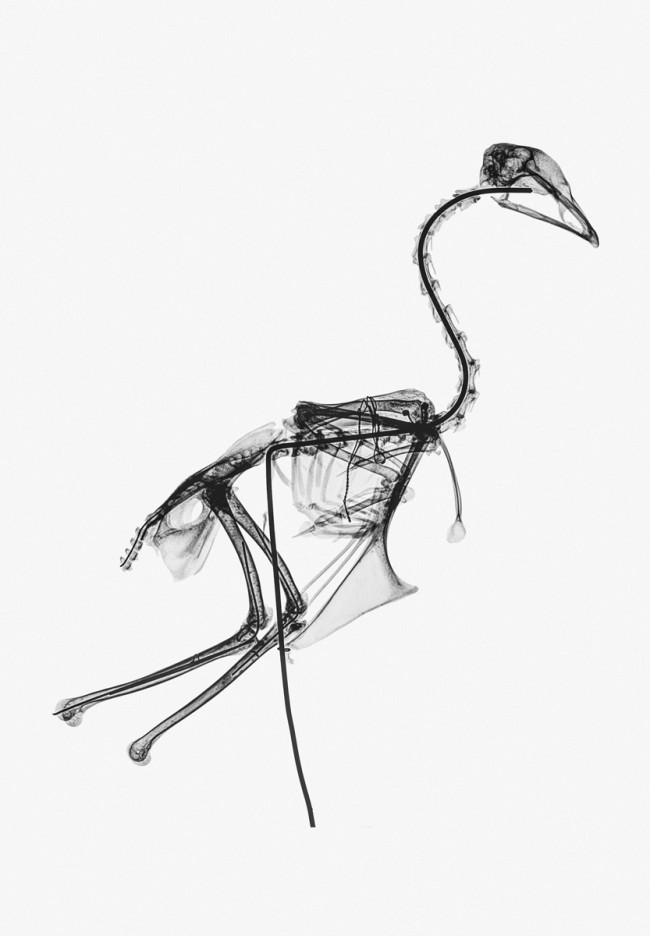
NOWs: Agentur des Exponenten by Andreas Greiner
Andreas Greiner: Heinrich (totus corpus), Ganzkörper-Porträt eines Masthahns, 2015. Photo: Theo Bitzer
NOWs:
Agentur des Exponenten
GASAG Art Prize 2016
Andreas Greiner has been awarded the GASAG Kunstpreis for 2016. The artist has created an exhibition entitled Agentur des Exponenten (Agency of the Exponent) for the first big hall in the Berlinische Galerie. Its themes are the exponential growth, identity and transformation of living creatures, including such very different beings as microorganisms and chickens bred for fattening. With them, he describes the relationship of people in the media and consumer society to art and to themselves.
For his show at the Berlinische Galerie, Greiner has devised a three-part installation linking the various thematic strands in his work. At the centre is the skeleton of a broiler, a monumental celebration of the species made with a 3D printer. The sculpture Monument for 308 (2016) resembles the reconstruction of a winged dinosaur about to leap into the air or take flight. In his Study (Portrait) of the Singularity of the Animal, the second part of the exhibition, the artist considers creatures which are not normally perceived as individuals, such as algae, portrayed here singly with the aid of a scanning electron microscope. In the third section, Greiner combines a self-actuating grand piano (Disklavier) with film shots of the rhythmically throbbing skin of “firefly squids” (Watasenia scintillans). The videos were given as visual scores to composers (Páll Ragnar Pálsson, Therese Strasser, Tyler Friedman), who then derived musical interpretations for the Disklavier.
Opening of the exhibition on September 14 in the context of Berlin Art Week 2016. In 2016 the art prize initiated by GASAG will be awarded for the fourth time in partnership with the Berlinische Galerie.
The catalogue accompanies the exhibition and examines the individual detached from the masses based on exponential growth. With contributions by Guido Faßbender, Thomas Köhler, Kim Mildebrath and Erich Pucher.
Andreas Greiner: The Last Exponent (Karl), 2015
Andreas Greiner: Heinrich (totus corpus), Ganzkörper-Porträt eines Masthahns, 2015. Foto: Theo Bitzer
NOWs:
Agentur des Exponenten
GASAG Kunstpreis 2016
Andreas Greiner erhält den GASAG Kunstpreis 2016. Unter dem Titel Agentur des Exponenten hat der Künstler für die erste große Halle der Berlinischen Galerie eine Ausstellung entwickelt, die sich mit dem exponentiellen Wachstum, der Identität und Transformation von Lebewesen befasst – darunter so unterschiedliche Wesen wie Mikroorganismen und Masthühner. Mit ihnen beschreibt er das Verhältnis des Menschen der Medien- und Konsumgesellschaft zur Natur, zur Kunst und zu sich selbst.
Für seine Ausstellung in der Berlinischen Galerie entwickelt Greiner eine dreiteilige Rauminstallation, welche die unterschiedlichen Themen seiner Arbeit verbindet. Im Zentrum steht ein monumentales, im 3D-Druckverfahren erzeugtes Skelett eines Masthuhns, das der Gattung ein Denkmal setzt. Die Skulptur Monument für die 308 (2016) erinnert an die Rekonstruktion eines Flugsauriers, der gerade zum Sprung oder Flug ansetzt. In seiner Studie (Porträt) zur Singularität des Tieres, dem zweiten Teil der Ausstellung, befasst sich der Künstler mit Lebewesen, die normalerweise nicht als Individuen wahrgenommen werden, wie zum Beispiel Algen, die einzeln mit einem Elektronenrastermikroskop porträtiert wurden. Im dritten Teil kombiniert Greiner einen selbstspielenden Flügel (Disklavier) mit Filmaufnahmen der rhythmisch pulsierenden Haut von „Leuchtkalmaren“ (Watasenia scintillans). Die Videos wurden als visuelle Partituren an Komponisten (Páll Ragnar Pálsson, Therese Strasser, Tyler Friedman) weitergegeben, die daraus musikalische Interpretationen für das Disklavier entwickelten.
Die Ausstellung wird am 14. September im Rahmen der Berlin Art Week 2016 eröffnet. Die von der GASAG initiierte Auszeichnung wird in diesem Jahr zum vierten Mal in Kooperation mit der vergeben Berlinischen Galerie.
Der Katalog begleitet die Ausstellung „Agentur des Exponenten“, die ausgehend vom exponentiellen Wachstum das Individuum gelöst von der Masse untersucht.
Andreas Greiner: The Last Exponent (Karl), 2015
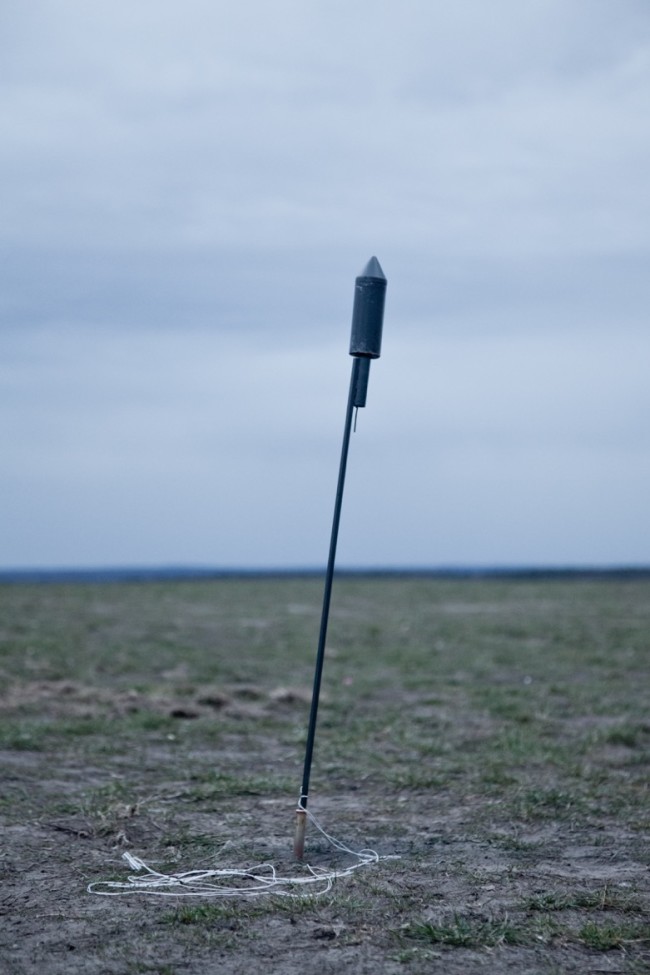
NOWs: Rakete by Malte Bartsch
NOWs:
WHO WANTS TO DIE?
rk Galerie | Möllendorffstr. 6 | 10367 Berlin
„Pazifismus heute“ bildet das zentrale Motiv als auch das konstituierende Moment für eine sozialkritische, hinterfragende, forschende, aktionistische und abstrahierend künstlerische Auseinandersetzung mit gesellschaftlichen Ordnungssystemen und deren Transformation im Rahmen des Ausstellungsprojektes „WHO WANTS TO DIE?“, das als Rechercheprojekt erstmalig im Rahmen der Berlin Art Week gezeigt wird.
Teilnehmende Künstler und Künsterlinnen:
Marta Antoniak (PL), Malte Bartsch (DE), Christoph Both-Asmus (DE), Krzysztof Debicki (PL), Milosz Flis (PL), Jakob Grebert (DE), Rafael Ibarra (MEX), Teresa Otulak (PL), Urszula Pieregonczuk (PL), Jovana Popic (CRO-RS), Wlodzimierz Pozniak (PL), Dominik Ritszel (PL), Elisabeth Scharler (A), Martin Schwarze (DE), Anna Siekierska (PL), Wanda Stang (DE), André Uerba (PT), Ivar Veermäe (FI). Kuratorin: Nicole Loeser, Co-Kurator: Leszek Golec
Ein Ausstellungsprojekt von rk Galerie in Kooperation mit dem Center for Polish Sculpture und WHITECONCEPTS im Rahmen der Berlin Art Week 2016.
–
Beitrag von Malte Bartsch:
Raktete, 2016
Eine Rakete startet in den Himmel, will hoch hinaus, wird mit einem Gummiband zur Erde zurück gezwungen.
NOWs:
WHO WANTS TO DIE?
rk Galerie | Möllendorffstr. 6 | 10367 Berlin
„Pazifismus heute“ bildet das zentrale Motiv als auch das konstituierende Moment für eine sozialkritische, hinterfragende, forschende, aktionistische und abstrahierend künstlerische Auseinandersetzung mit gesellschaftlichen Ordnungssystemen und deren Transformation im Rahmen des Ausstellungsprojektes „WHO WANTS TO DIE?“, das als Rechercheprojekt erstmalig im Rahmen der Berlin Art Week gezeigt wird.
Teilnehmende Künstler und Künsterlinnen:
Marta Antoniak (PL), Malte Bartsch (DE), Christoph Both-Asmus (DE), Krzysztof Debicki (PL), Milosz Flis (PL), Jakob Grebert (DE), Rafael Ibarra (MEX), Teresa Otulak (PL), Urszula Pieregonczuk (PL), Jovana Popic (CRO-RS), Wlodzimierz Pozniak (PL), Dominik Ritszel (PL), Elisabeth Scharler (A), Martin Schwarze (DE), Anna Siekierska (PL), Wanda Stang (DE), André Uerba (PT), Ivar Veermäe (FI). Kuratorin: Nicole Loeser, Co-Kurator: Leszek Golec
Ein Ausstellungsprojekt von rk Galerie in Kooperation mit dem Center for Polish Sculpture und WHITECONCEPTS im Rahmen der Berlin Art Week 2016.
–
Beitrag von Malte Bartsch:
Raktete, 2016
Eine Rakete startet in den Himmel, will hoch hinaus, wird mit einem Gummiband zur Erde zurück gezwungen.
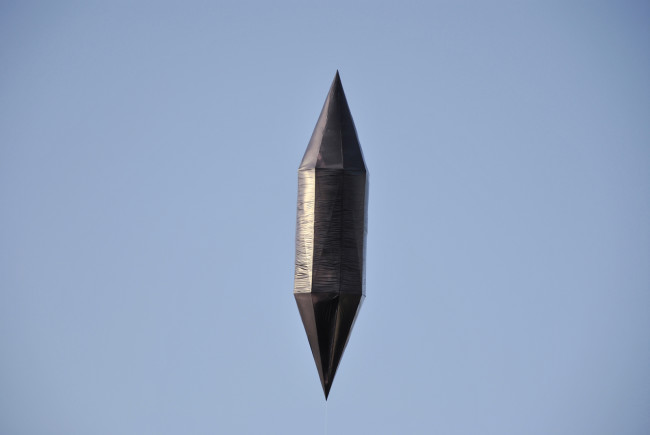
NOWs: Elise Eeraerts at Horst
NOWs
Elise Eeraerts: Floating Identity, 2016
New object based performance by Elise Eeraerts at HORST Arts and Music, Festival and Exhibition at Castle of Horst, Belgium:
Elise Eeraerts: Floating Identity, 2016
The concept for the floating identity sculpture originated from the landmark Horst tower. The upper part of the well known structure is octagon-shaped, based on a prism with pyramidic ending. The visual importance of this architectural element is further stressed by realising a repetition of that very geometry through floating identity. The positioning and appearance of the sculpture are however often performative and forever in motion, allowing its stance with the static reality on which it is inspired – the tower itself – to create an experimental dynamic.
NOWs
Elise Eeraerts: Floating Identity, 2016
New object based performance by Elise Eeraerts at HORST Arts and Music, Festival and Exhibition at Castle of Horst, Belgium:
Elise Eeraerts: Floating Identity, 2016
The concept for the floating identity sculpture originated from the landmark Horst tower. The upper part of the well known structure is octagon-shaped, based on a prism with pyramidic ending. The visual importance of this architectural element is further stressed by realising a repetition of that very geometry through floating identity. The positioning and appearance of the sculpture are however often performative and forever in motion, allowing its stance with the static reality on which it is inspired – the tower itself – to create an experimental dynamic.
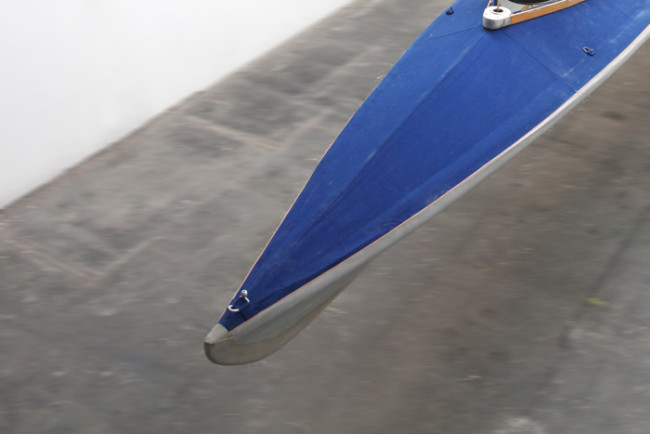
NOWs: Ausufernde Blickfelder by Anna Hentschel & Sophia Pompéry
NOWs:
AUSUFERNDE BLICKFELDER
Anna Hentschel & Sophia Pompéry
Spreeufer Moabit / Charlottenburg
Die Künstlerinnen Anna Hentschel und Sophia Pompéry haben ein Kayak-Faltboot um das Prinzip der Camera Obscura erweitert und ein lichtempfindliches Vehikel für die Spree und den Stadtraum um Moabit entwickelt: Diese schwimmende Lochkamera setzt der Bewegung von Wellen und Strömung einen unmittelbaren Bilderfluss entgegen. Die Bootstour wird zur filmischen Kamerafahrt und scannt die Stadt im Rhythmus der Spree. Die Insel Moabit wird umschifft und aus der Perspektive des Flusses nachgezeichnet. Dabei ist der Blick auf die Stadt neu und doch ursprünglich, denn die Kamera projiziert die Außenwelt genau so, wie die Linse unseres Auges: kopfüber und seitenverkehrt. An den Rändern offen – mit einer Unschärfe am Rande des Bildfeldes treten aus dem Schwarz nach und nach Häuserzeilen, Bäume und Passanten hervor, bevor sie langsam wieder in nebeliger Dunkelheit verschwinden. Die Flüchtigkeit des Augenblicks und die Grenzen visueller Wahrnehmung werden auf poetische Weise unterstrichen.
Das Projekt wurde vom Berliner Senat / Kulturamt Mitte im Rahmen der miKrOPROJEKTE 2016 gefördert.
Einladung zur Jungfernfahrt am 10.9. nachmittags auf der Spree in Berlin-Moabit.
Wir bitten wir um Anmeldung bis zum 5.9 unter spreefahrt@greetings-from.com
Zeit und Ort geben wir anschließend bekannt.
NOWs:
AUSUFERNDE BLICKFELDER
Anna Hentschel & Sophia Pompéry
Spreeufer Moabit / Charlottenburg
Die Künstlerinnen Anna Hentschel und Sophia Pompéry haben ein Kayak-Faltboot um das Prinzip der Camera Obscura erweitert und ein lichtempfindliches Vehikel für die Spree und den Stadtraum um Moabit entwickelt: Diese schwimmende Lochkamera setzt der Bewegung von Wellen und Strömung einen unmittelbaren Bilderfluss entgegen. Die Bootstour wird zur filmischen Kamerafahrt und scannt die Stadt im Rhythmus der Spree. Die Insel Moabit wird umschifft und aus der Perspektive des Flusses nachgezeichnet. Dabei ist der Blick auf die Stadt neu und doch ursprünglich, denn die Kamera projiziert die Außenwelt genau so, wie die Linse unseres Auges: kopfüber und seitenverkehrt. An den Rändern offen – mit einer Unschärfe am Rande des Bildfeldes treten aus dem Schwarz nach und nach Häuserzeilen, Bäume und Passanten hervor, bevor sie langsam wieder in nebeliger Dunkelheit verschwinden. Die Flüchtigkeit des Augenblicks und die Grenzen visueller Wahrnehmung werden auf poetische Weise unterstrichen.
Das Projekt wurde vom Berliner Senat / Kulturamt Mitte im Rahmen der miKrOPROJEKTE 2016 gefördert.
Einladung zur Jungfernfahrt am 10.9. nachmittags auf der Spree in Berlin-Moabit.
Wir bitten wir um Anmeldung bis zum 5.9 unter spreefahrt@greetings-from.com
Zeit und Ort geben wir anschließend bekannt.
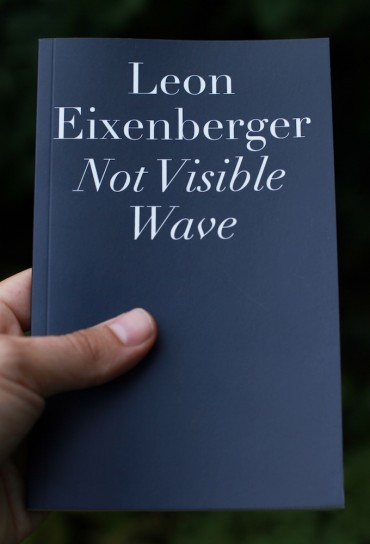
NOWs: Not Visible Wave by Leon Eixenberger
NOWs:
Leon Eixenberger: Not Visible Wave
The work consists of writing describing a series of intimate tangencies in which the sun merges with the surfaces of people’s faces, animals and plants in synchronicity.
Across media such as architecture, installation, writing and film Leon Eixenberger’s works take care of questions around space and proximity. They embody a sensitivity for micro situations and processes that usually tend to escape in our daily life. The book is available at Motto.
NOWs:
Leon Eixenberger: Not Visible Wave
The work consists of writing describing a series of intimate tangencies in which the sun merges with the surfaces of people’s faces, animals and plants in synchronicity.
Across media such as architecture, installation, writing and film Leon Eixenberger’s works take care of questions around space and proximity. They embody a sensitivity for micro situations and processes that usually tend to escape in our daily life. The book is available at Motto.
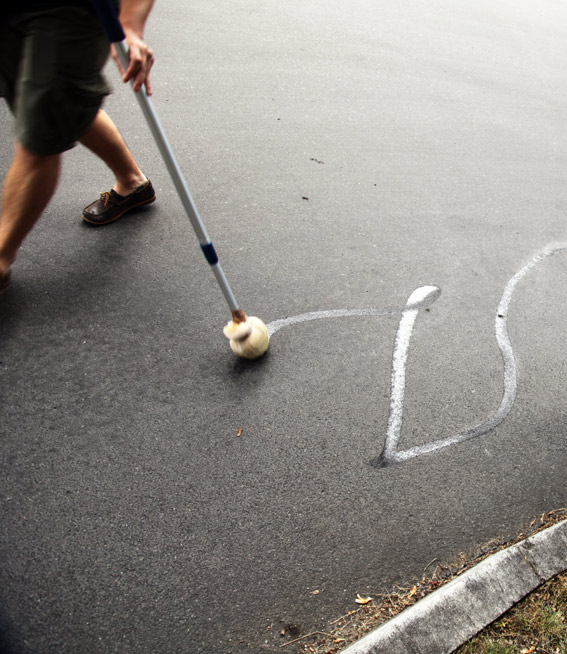
NOWs: Line and Dot by Sophia Pompéry & Tobias Roth
NOWs:
LINE AND DOT
Sophia Pompéry & Tobias Roth
The line and the dot, these ancient characters of script, become cues for two radical and experimental artworks exhibited during Appropriating Language #17, in Manière Noire. With both pieces: Und Punkt as well as Häuserzeilen. 1600 Meter Monostichon, Sophia Pompéry examines the visual form of writing, given extreme amplifications.
Und Punkt is a collection of microscopically photographed full stops that mark the end of the last sentence in novels about love, in a time frame from 1774 to 2008. This is an invitation to the viewer, to individually contemplate on detail at a standstill. Whereas Häuserzeilen. 1600 Meter Monostichon, a collaboration with the author Tobias Roth, invites the viewer for a stroll, in order to go through distances in urban space. A poem of Roth about the quarter of Moabit was recently executed on its streets (spanning over 1600 meters) by means of a huge brush and a mixture of water and chalk. The perception of everyday life and space was the theme of the poem, which, transferred outdoors, stimulated the public to experience the line (the poem) by walking.
–
How do these, brought to extreme, forms of typography and calligraphy change, when they return indoor, back to the book and frames? Photographs, printed matter, a poem and a film are on display at Manière Noire in Berlin/Moabit. Starting the 2nd of September 2016, the exhibition lasts until 15th of October.
–
Tobias Roth’s essay about Und Punkt, the series of full stops by Sophia Pompéry is available with Signaturen Magazin, Forum für zeitgenössische Poesie.
NOWs:
LINE AND DOT
Sophia Pompéry & Tobias Roth
Linie und Punkt bilden die Basis der Schrift – hier bilden sie die Basis zweier radikaler, experimenteller Aneignungen des Schriftzeichens. In ihren beiden Und Punkt und Häuserzeilen. 1600 Meter Monostichon lotet Sophia Pompéry Extreme der Größenordnung aus. Und Punkt versammelt die letzten Punkte aus Liebesromanen von 1774 bis 2008 in mikroskopischen Nahaufnahmen und lädt zur Konzentration im Detail ein – Häuserzeilen hingegen, ein Gemeinschaftswerk mit dem Autor Tobias Roth, lädt ein zu Flanerie und Entfaltung im Raum. Ein Gedicht Roths über Moabit wurde mit Schlemmkreide auf 1600 Metern auf die Straßen Moabit geschrieben: Die Wahrnehmung des Alltags und des Lebensraums ist Thema des Textes, aber auch genau der Punkt, auf den das Erlebnis der Linie einwirkt.
–
Wie haben sich diese Gestalten, diese Extrempunkte der Typographie und Kalligraphie, verändert, wenn sie letzten Endes wieder in ein Buch, in eine Galerie zurückkehren? Beide Werke und ihre zugehörigen Dokumentationen als Buch oder Video sind ab dem 2. September 2016 in der Galerie Manière Noire in Berlin/Moabit zu sehen.
–
Ein Essay von Tobias Roth zu Und Punkt, der Werkserie von Schlusspunkten von Sophia Pompéry ist im Signaturen Magazin, Forum für zeitgenössische Poesie erschienen.
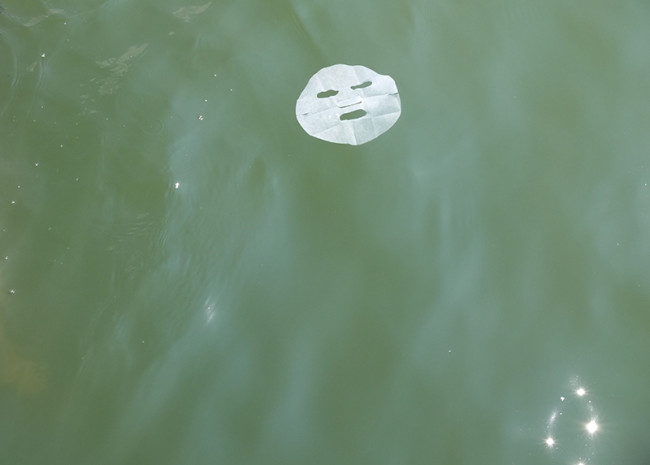
NOWs: Widow Radio Ching by Ming LIN & Elaine W. HO
NOWs:
WIDOW RADIO CHING
The Hydrofemme in Three Acts
WIDOW RADIO CHING is a radio operetta, variety show and audio symposium with FM broadcast and netstreams on Radio FRO (Linz) and Radio Helsinki (Graz), live aboard the survey vessel Eleonore from August 3 to 5, 2016, 00:00-01:30 (GMT +1) nightly.
From the South China Sea to the Danube river, minor ripples become the waves by which the hydrofemme contests the neocolonial frontiers of water in defense of an oceanic commons of substance and thought. WIDOW RADIO CHING rewrites a fragmented and amorphous ode to the hydrofemme as a sonic essay in (radio) waves, transmitting her as a multi-headed heroine who traces the fissures between bottom-up social organization and top-down politico-economic power. Weaving together textual narrative, sound works, and dialogue with invited guests, WIDOW RADIO CHING will unfold in three acts (each act of 90 minute duration) following a trajectory of queer time — divested of concrete future aims and abandoning overarching, streamlined narratives of the hope and optimism that govern our contemporary political, economic and environmental ecosystems. Beginning from the critical dystopia that is our science fiction present, migration, extraterritoriality and environmental degradation shall take new course expanding upon feminine myths of liquidity, fluid identity and alter-sovereignty in labour.
WIDOW RADIO CHING features contributions by: Shu Lea Cheang, Deborah Cowen, Natalie Galpern, Annie Goh, Aurelia Guo, Elaine W. Ho, Reni Hofmüller, Ming Lin, Astrida Neimanus, Kaitlin Rees & Liam Welch, Kate Rich, Pelin Tan, Tortuga, Eva Ursprung, et al.
Brought to you by Ming Lin & Elaine W. Ho as part of the RADIO ACTIVE – SINK and SWIM residency 2016, Linz, AT
Writer-researcher Ming Lin and artist-researcher Elaine W. Ho work under the shared mantle of Display Distribute — a shop, exhibition space and roving thematic inquiry investigating bottom-up organisation amidst global trade. What began in 2013 as a documentary gesture of a distinct urban phenomenon has unfolded as a series of interventions, research initiatives and distribution experiments, forming a unique document that attests to the ad-hoc arrangements emerging out of the fissures of capitalism and its social and material detritus. WIDOW RADIO CHING is their first foray into the sociopolitical spaces of broadcast.
NOWs:
WIDOW RADIO CHING
The Hydrofemme in Three Acts
WIDOW RADIO CHING is a radio operetta, variety show and audio symposium with FM broadcast and netstreams on Radio FRO (Linz) and Radio Helsinki (Graz), live aboard the survey vessel Eleonore from August 3 to 5, 2016, 00:00-01:30 (GMT +1) nightly.
From the South China Sea to the Danube river, minor ripples become the waves by which the hydrofemme contests the neocolonial frontiers of water in defense of an oceanic commons of substance and thought. WIDOW RADIO CHING rewrites a fragmented and amorphous ode to the hydrofemme as a sonic essay in (radio) waves, transmitting her as a multi-headed heroine who traces the fissures between bottom-up social organization and top-down politico-economic power. Weaving together textual narrative, sound works, and dialogue with invited guests, WIDOW RADIO CHING will unfold in three acts (each act of 90 minute duration) following a trajectory of queer time — divested of concrete future aims and abandoning overarching, streamlined narratives of the hope and optimism that govern our contemporary political, economic and environmental ecosystems. Beginning from the critical dystopia that is our science fiction present, migration, extraterritoriality and environmental degradation shall take new course expanding upon feminine myths of liquidity, fluid identity and alter-sovereignty in labour.
WIDOW RADIO CHING features contributions by: Shu Lea Cheang, Deborah Cowen, Natalie Galpern, Annie Goh, Aurelia Guo, Elaine W. Ho, Reni Hofmüller, Ming Lin, Astrida Neimanus, Kaitlin Rees & Liam Welch, Kate Rich, Pelin Tan, Tortuga, Eva Ursprung, et al.
Brought to you by Ming Lin & Elaine W. Ho as part of the RADIO ACTIVE – SINK and SWIM residency 2016, Linz, AT
Writer-researcher Ming Lin and artist-researcher Elaine W. Ho work under the shared mantle of Display Distribute — a shop, exhibition space and roving thematic inquiry investigating bottom-up organisation amidst global trade. What began in 2013 as a documentary gesture of a distinct urban phenomenon has unfolded as a series of interventions, research initiatives and distribution experiments, forming a unique document that attests to the ad-hoc arrangements emerging out of the fissures of capitalism and its social and material detritus. WIDOW RADIO CHING is their first foray into the sociopolitical spaces of broadcast.
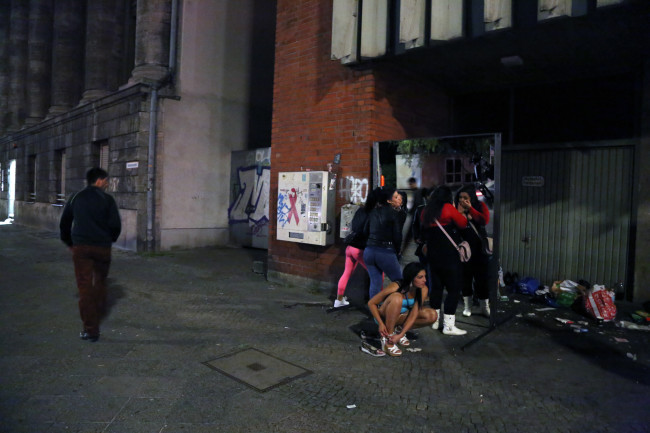
NOWs: Glory Hole by Tomas Espinosa
NOWs:
Tomas Espinosa: Glory Hole (Nachbarschaftsbeziehungen)
Tomas Espinosa gestaltet seit 2009 wiederholt Installationen und künstlerische Arbeiten mit Spiegelelementen. Seine Installationen stellen dabei häufig das Verhältnis von intimen und Gemeinschaft stiftenden Situationen in den Mittelpunkt. Mit großer Sensibilität für das soziale und emotionale Umfeld schafft er mit Mitteln der Plastik, Möglichkeiten, die zur Reflexion und zum Dialog anregen.
Zwei Arbeitsserien des Künstlers sind vom 22.-24 Juli 2016 in der Universität der Künste Berlin zu sehen: Universität der Künste Berlin (UdK), Hardenbergstr. 33, 10623 Berlin, Raum 84
Rundgang Öffnungszeiten 22.07-24.07.2016; Fr. 13-22 Uhr, Sa. 11-22 Uhr, So 11-20 Uhr
—
Glory Hole (Nachbarschaftsbeziehungen)
Tomas Espinosa macht es uns nur auf den ersten Blick leicht. Wir meinen zu wissen, was wir sehen. Das Sehen stellt uns eine Falle: Wir sehen auf Distanz. Wir analysieren das Gesehene mit Abstand. Doch die Arbeiten von Tomas Espinosa zielen auf Anziehung. Wir sind aufgefordert uns zu nähern, in Kontakt zu treten, zu berühren, in Beziehung zu treten: „Ich verstehe meine Arbeit als Reflexion über Begegnungen und die Zeit, die wir dafür benötigen – Zeit zu berühren, Zeit zu sprechen, Zeit zu teilen“, sagt der Künstler.
Damit setzt Tomas Espinosa die Position des Subjekts und dessen Bezogenheit auf seine Umwelt in den Mittelpunkt seiner objektbasierten Installationen. Am deutlichsten wird das in seinen wie Versuchsanordnungen funktionierenden, aus Spiegeln konstruierten, Wahrnehmungsarrangements, die als skulpturale Paravents im Außenraum platziert werden. Ihre besondere Funktion erfährt man erst dann, wenn man sie jeweils als Ergebnisse minuziöser Kontext- und Situationsrecherche versteht, die sich neben dem Bezugsfeld der Sozialreportage im Feld des Künstlerischen positioniert. Der Einsatz der Spiegelinstallationen im öffentlichen Raum – sei es im Park oder im Straßenraum – basiert auf einer vom Künstler vorgeschlagenen Empirie, verstanden als Erfahrung (des Künstlers als auch des Betrachters), die zu einer Hypothese führt oder diese zu bestätigen versucht. Die temporären Standorte im Park, an der Allee, in der Seitengasse wählt Tomas Epinosa gezielt, und markiert städtischen Raum, den verschiedene Bewegungsmuster kreuzen. Dabei interessiert in die Ambiguität der Wahrnehmung und Nutzung solch öffentlicher Räume, die Ambiguität von Wissen und Nicht-Wissen, von Akzeptanz, Erkennen oder Verschleiern, etwa des Cruising im Stadtraum.
„Das Anblicken ist kombiniert mit einer anderen Mobilität; du kannst Nachgehen, du kannst stoppen und vorgeben, in Auslagen zu sehen, du kannst dich auf einer Bank niedersetzen und wieder aufstehen, du kannst draussen in Chiswick landen. Was Cruising genannt wird, ist diese Kombination von Blicken und Bewegungen, welche im geschützten Bereich in der Schwulenbar ablaufen können und ihr angemessenes Territorium draussen in der Stadt finden.“1
Tomas Espinosas installative Serie Nachbarschaftsbeziehungen weiß um die Ästhetik der Ausstattung von Clubs ebenso, wie um die Performativität dieser Bewegungen, des Anblickens und der Camouflage im Außenraum. Es ist ein Spiel, das den Betrachter, der näher tritt, dazu einlädt, sein Verhältnis zum jeweiligen Ort mehrschichtig zu erleben. Die Konstruktion oder Anordnung der Paravents ist nach mehreren Seiten hin offen oder durch kreisrunde Ausschnitte durchlässig und ermöglicht denjenigen, die sich darin oder dahinter befinden, sowohl den nach innen als auch den nach außen gerichteten Blick des Verstecken und des Präsentierens; den Passanten das Flanieren und das voyeuristische Innehalten gleichermaßen.
Michel Foucault beschreibt den Spiegel als einen Ort der Mehrschichtigkeit, der die Definition von Utopie und Heteropie verbindet und die Erfahrungen beider Orte durchmischt:
„Der Spiegel ist nämlich eine Utopie, sofern er ein Ort ohne Ort ist. Im Spiegel sehe ich mich da, wo ich nicht bin: in einem unwirkliche Raum, der sich virtuell hinter der Oberfläche auftut; ich bin dort, wo ich nicht bin, eine Art Schatten, der mir meine eigene Sichtbarkeit gibt, der mich mich erblicken läßt, wo ich abwesend bin: Utopie des Spiegels. Aber der Spiegel ist auch eine Heterotopie, insofern er wirklich existiert und insofern er mich auf den Platz zurückschickt, den ich wirklich einnehme; vom Spiegel aus entdecke ich mich als abwesend auf dem Platz, wo ich bin, da ich mich dort sehe; von diesem Blick aus, der sich auf mich richtet, und aus der Tiefe dieses virtuellen Raumes hinter dem Glas kehre ich zu mir zurück und beginne meine Augen wieder auf mich zu richten und mich da wieder einzufinden, wo ich bin. Der Spiegel funktioniert als eine Heterotopie in dem Sinn, daß er den Platz, den ich einnehme, während ich mich im Glas erblicke, ganz wirklich macht und mit dem ganzen Umraum verbindet, und daß er ihn zugleich ganz unwirklich macht, da er nur über den virtuellen Punkt dort wahrzunehmen ist.“2
Für Glory Hole (Nachbarschaftsbeziehungen) hat Tomas Espinosa diesen Punkt der Abwesenheit doppelt markiert, indem er ein Loch, auf der zentralen Blickachse der sich kreuzenden Blicke liegend, herausgeschnitten hat. Der Durchblick enttarnt, ermöglicht und potenziert. „Ich war immer am Thema von Sexualität und damit zusammenhängenden Tabus in Kolumbien interessiert und habe vor allem mit den Mitteln der Fotografie dazu gearbeitet“, berichtet Tomas Espinosa.
In Berlin führt ihn das Thema zur Untersuchung von Vorstellungen hinsichtlich flüchtiger Objekte im öffentlichen Raum, nicht-normativer Orte und unvorhersehbarer Begegnungen, als auch dem Gemeinschaftssinns der Stadträume definiert. Für Tomas Espinosa eignet sich Berlin hierfür ganz besonders: eine Stadt, die zwischen all ihren Schichten genügend Raum bietet, um auf großzügige Weise offen zu sein. Er nutzt die Durchlässigkeit der städtischen Zonen in Berlin für seine Untersuchungen – mit Hilfe der Skulpturen und mit Mitteln der Fotografie –, und lotet auch die Möglichkeiten der Dokumentation des nicht Dokumentierbaren aus. Die Fotografien verdichten atmosphärisch das Geflecht von Begegnungen, Blicken und Berührung, von Imagination und (Selbst-)Inszenierung. Der Kiez eignet sich den Foucault’schen Mischort von Utopie und Heterotopie, die von Tomas Espinosa materialisierte Ambiguität umgehend an.
Für den Künstler stellen sich Skulptur und Fotografie für seine künstlerisch empirische Vorgehensweise dabei sozusagen als „zeitbasierte Medien“ dar: „Die Kunst stellt diese Terminologie selbst in Frage: die Skulptur ist nicht mehr nur ein Objekt. Der Faktor ‚Zeit’ ist immer gegenwärtig, es kann sich also um einen Moment handeln, scheinbar statisch, ist es etwas, das ich kontinuierlich verändert. Eine Installation, so oft sie auch ausgestellt wird, wird niemals genau die gleiche sein. Für meine Arbeit gilt daher auch immer, einem performativen Aspekt Rechnung zu tragen.“
Christina Werner
1 Zitat: Mark W. Turner: Backward Glances: Cruising the Queer Streets of New York and London, Reaktion Books, 2003. S. 60
2 Michel Foucaul: Andere Räume. In: Barck, Karlheinz u.a. (Hg.), Aisthesis. Wahrnehmung heute oder Perspektiven einer anderen Ästhetik, Leipzig 1992, S. 38′]
NOWs:
Tomas Espinosa: Glory Hole (Nachbarschaftsbeziehungen)
Tomas Espinosa gestaltet seit 2009 wiederholt Installationen und künstlerische Arbeiten mit Spiegelelementen. Seine Installationen stellen dabei häufig das Verhältnis von intimen und Gemeinschaft stiftenden Situationen in den Mittelpunkt. Mit großer Sensibilität für das soziale und emotionale Umfeld schafft er mit Mitteln der Plastik, Möglichkeiten, die zur Reflexion und zum Dialog anregen.
Zwei Arbeitsserien des Künstlers sind vom 22.-24 Juli 2016 in der Universität der Künste Berlin zu sehen: Universität der Künste Berlin (UdK), Hardenbergstr. 33, 10623 Berlin, Raum 84
Rundgang Öffnungszeiten 22.07-24.07.2016; Fr. 13-22 Uhr, Sa. 11-22 Uhr, So 11-20 Uhr
—
Glory Hole (Nachbarschaftsbeziehungen)
Tomas Espinosa macht es uns nur auf den ersten Blick leicht. Wir meinen zu wissen, was wir sehen. Das Sehen stellt uns eine Falle: Wir sehen auf Distanz. Wir analysieren das Gesehene mit Abstand. Doch die Arbeiten von Tomas Espinosa zielen auf Anziehung. Wir sind aufgefordert uns zu nähern, in Kontakt zu treten, zu berühren, in Beziehung zu treten: „Ich verstehe meine Arbeit als Reflexion über Begegnungen und die Zeit, die wir dafür benötigen – Zeit zu berühren, Zeit zu sprechen, Zeit zu teilen“, sagt der Künstler.
Damit setzt Tomas Espinosa die Position des Subjekts und dessen Bezogenheit auf seine Umwelt in den Mittelpunkt seiner objektbasierten Installationen. Am deutlichsten wird das in seinen wie Versuchsanordnungen funktionierenden, aus Spiegeln konstruierten, Wahrnehmungsarrangements, die als skulpturale Paravents im Außenraum platziert werden. Ihre besondere Funktion erfährt man erst dann, wenn man sie jeweils als Ergebnisse minuziöser Kontext- und Situationsrecherche versteht, die sich neben dem Bezugsfeld der Sozialreportage im Feld des Künstlerischen positioniert. Der Einsatz der Spiegelinstallationen im öffentlichen Raum – sei es im Park oder im Straßenraum – basiert auf einer vom Künstler vorgeschlagenen Empirie, verstanden als Erfahrung (des Künstlers als auch des Betrachters), die zu einer Hypothese führt oder diese zu bestätigen versucht. Die temporären Standorte im Park, an der Allee, in der Seitengasse wählt Tomas Epinosa gezielt, und markiert städtischen Raum, den verschiedene Bewegungsmuster kreuzen. Dabei interessiert in die Ambiguität der Wahrnehmung und Nutzung solch öffentlicher Räume, die Ambiguität von Wissen und Nicht-Wissen, von Akzeptanz, Erkennen oder Verschleiern, etwa des Cruising im Stadtraum.
„Das Anblicken ist kombiniert mit einer anderen Mobilität; du kannst Nachgehen, du kannst stoppen und vorgeben, in Auslagen zu sehen, du kannst dich auf einer Bank niedersetzen und wieder aufstehen, du kannst draussen in Chiswick landen. Was Cruising genannt wird, ist diese Kombination von Blicken und Bewegungen, welche im geschützten Bereich in der Schwulenbar ablaufen können und ihr angemessenes Territorium draussen in der Stadt finden.“1
Tomas Espinosas installative Serie Nachbarschaftsbeziehungen weiß um die Ästhetik der Ausstattung von Clubs ebenso, wie um die Performativität dieser Bewegungen, des Anblickens und der Camouflage im Außenraum. Es ist ein Spiel, das den Betrachter, der näher tritt, dazu einlädt, sein Verhältnis zum jeweiligen Ort mehrschichtig zu erleben. Die Konstruktion oder Anordnung der Paravents ist nach mehreren Seiten hin offen oder durch kreisrunde Ausschnitte durchlässig und ermöglicht denjenigen, die sich darin oder dahinter befinden, sowohl den nach innen als auch den nach außen gerichteten Blick des Verstecken und des Präsentierens; den Passanten das Flanieren und das voyeuristische Innehalten gleichermaßen.
Michel Foucault beschreibt den Spiegel als einen Ort der Mehrschichtigkeit, der die Definition von Utopie und Heteropie verbindet und die Erfahrungen beider Orte durchmischt:
„Der Spiegel ist nämlich eine Utopie, sofern er ein Ort ohne Ort ist. Im Spiegel sehe ich mich da, wo ich nicht bin: in einem unwirkliche Raum, der sich virtuell hinter der Oberfläche auftut; ich bin dort, wo ich nicht bin, eine Art Schatten, der mir meine eigene Sichtbarkeit gibt, der mich mich erblicken läßt, wo ich abwesend bin: Utopie des Spiegels. Aber der Spiegel ist auch eine Heterotopie, insofern er wirklich existiert und insofern er mich auf den Platz zurückschickt, den ich wirklich einnehme; vom Spiegel aus entdecke ich mich als abwesend auf dem Platz, wo ich bin, da ich mich dort sehe; von diesem Blick aus, der sich auf mich richtet, und aus der Tiefe dieses virtuellen Raumes hinter dem Glas kehre ich zu mir zurück und beginne meine Augen wieder auf mich zu richten und mich da wieder einzufinden, wo ich bin. Der Spiegel funktioniert als eine Heterotopie in dem Sinn, daß er den Platz, den ich einnehme, während ich mich im Glas erblicke, ganz wirklich macht und mit dem ganzen Umraum verbindet, und daß er ihn zugleich ganz unwirklich macht, da er nur über den virtuellen Punkt dort wahrzunehmen ist.“2
Für Glory Hole (Nachbarschaftsbeziehungen) hat Tomas Espinosa diesen Punkt der Abwesenheit doppelt markiert, indem er ein Loch, auf der zentralen Blickachse der sich kreuzenden Blicke liegend, herausgeschnitten hat. Der Durchblick enttarnt, ermöglicht und potenziert. „Ich war immer am Thema von Sexualität und damit zusammenhängenden Tabus in Kolumbien interessiert und habe vor allem mit den Mitteln der Fotografie dazu gearbeitet“, berichtet Tomas Espinosa.
In Berlin führt ihn das Thema zur Untersuchung von Vorstellungen hinsichtlich flüchtiger Objekte im öffentlichen Raum, nicht-normativer Orte und unvorhersehbarer Begegnungen, als auch dem Gemeinschaftssinns der Stadträume definiert. Für Tomas Espinosa eignet sich Berlin hierfür ganz besonders: eine Stadt, die zwischen all ihren Schichten genügend Raum bietet, um auf großzügige Weise offen zu sein. Er nutzt die Durchlässigkeit der städtischen Zonen in Berlin für seine Untersuchungen – mit Hilfe der Skulpturen und mit Mitteln der Fotografie –, und lotet auch die Möglichkeiten der Dokumentation des nicht Dokumentierbaren aus. Die Fotografien verdichten atmosphärisch das Geflecht von Begegnungen, Blicken und Berührung, von Imagination und (Selbst-)Inszenierung. Der Kiez eignet sich den Foucault’schen Mischort von Utopie und Heterotopie, die von Tomas Espinosa materialisierte Ambiguität umgehend an.
Für den Künstler stellen sich Skulptur und Fotografie für seine künstlerisch empirische Vorgehensweise dabei sozusagen als „zeitbasierte Medien“ dar: „Die Kunst stellt diese Terminologie selbst in Frage: die Skulptur ist nicht mehr nur ein Objekt. Der Faktor ‚Zeit’ ist immer gegenwärtig, es kann sich also um einen Moment handeln, scheinbar statisch, ist es etwas, das ich kontinuierlich verändert. Eine Installation, so oft sie auch ausgestellt wird, wird niemals genau die gleiche sein. Für meine Arbeit gilt daher auch immer, einem performativen Aspekt Rechnung zu tragen.“
Christina Werner
1 Zitat: Mark W. Turner: Backward Glances: Cruising the Queer Streets of New York and London, Reaktion Books, 2003. S. 60
2 Michel Foucaul: Andere Räume. In: Barck, Karlheinz u.a. (Hg.), Aisthesis. Wahrnehmung heute oder Perspektiven einer anderen Ästhetik, Leipzig 1992, S. 38′]
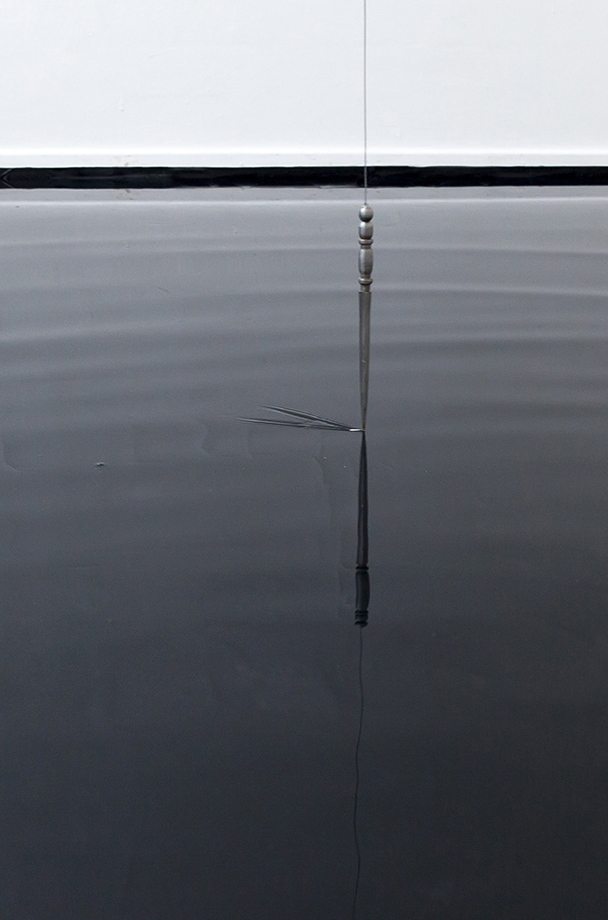
NOWs: Misericordia by Rafael Ibarra
NOWs:
The dagger is moved back and forth by a machine mounted on the ceiling. The slight asymmetry of the dagger generates variations in the pendular movement. The dagger “cuts” the water surface just when the distance to the water is short enough.
The Misericorde (derived from the latin Misericordia “act of mercy”) daggers were used from the Middle Ages until the 16th century to end the sufferings of seriously wounded soldiers by delivering a death stroke. They were used both for friends and enemies. The thin blade is designed to strike between the gaps of a knight’s armour plates.
The work is presented as part of the Meisterschüler show at Universität der Künste Berlin:
Universität der Künste Berlin (UdK), Hardenbergstr. 33, 10623 Berlin, room 94
Opening times: 22.07-24.07.2016; Fr. 13-22 h Sat. 11-22 h, Sun 11-20 h
Rafael Ibarra: Misericordia, 2016. Water, Misericorde dagger, machine, plastic foil.
9,45 x 5,46 x 6,58 m. Installation view.
NOWs:
The dagger is moved back and forth by a machine mounted on the ceiling. The slight asymmetry of the dagger generates variations in the pendular movement. The dagger “cuts” the water surface just when the distance to the water is short enough.
The Misericorde (derived from the latin Misericordia “act of mercy”) daggers were used from the Middle Ages until the 16th century to end the sufferings of seriously wounded soldiers by delivering a death stroke. They were used both for friends and enemies. The thin blade is designed to strike between the gaps of a knight’s armour plates.
The work is presented as part of the Meisterschüler show at Universität der Künste Berlin:
Universität der Künste Berlin (UdK), Hardenbergstr. 33, 10623 Berlin, room 94
Opening times: 22.07-24.07.2016; Fr. 13-22 h Sat. 11-22 h, Sun 11-20 h
Rafael Ibarra: Misericordia, 2016. Water, Misericorde dagger, machine, plastic foil.
9,45 x 5,46 x 6,58 m. Installation view.
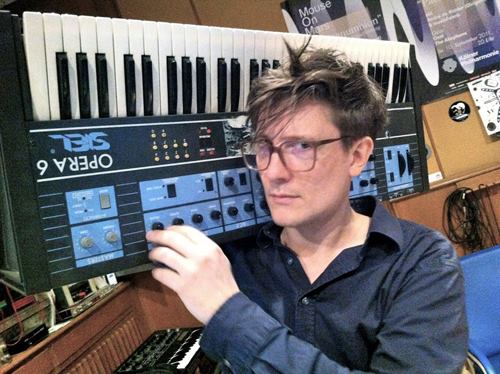
NOWs: Jan St. Werner (Mouse On Mars) & Kid Millions (Oneida, Boredoms)
NOWs:
Roter Salon / Volksbühne präsentiert:
Jan St. Werner - Felder (Official Album Trailer) from Thrill Jockey Records on Vimeo.
Jan St. Werner, bekannt für seine Solo-Kompositionen, als eine Hälfte von Mouse on Mars sowie für seine konzeptuellen Kunstwerke, hat mit seinem neuen Album „Felder“ ein extrem rhythmisches, sorgsam verwobenes Werk geschaffen, das mit jedem Hörgang wächst. Die Stücke sind einladend und gleichermaßen komplex, zugänglich aber auch kryptisch. Passend zum Titel verhält sich Werner auf dem Album wie ein Landwirt, kultiviert organische Klänge und reichert sie mit synthetischen Notizen an. Daraus ergibt sich ein Mix aus Jazz, Industrial, Drone und Folk, der sich mühelos durch seinen elektroakustischen Rahmen windet.
Bei der Präsentation seines Albums unterstützt wird Jan St. Werner an diesem Abend von keinem geringeren als seinem Labelkollegen John Colpitts aka. Kid Millions, der sich nicht zuletzt als Mitglied von Bands wie Oneida und Man Forever in die Herzen experimenteller Soundjünger getrommelt haben dürfte. Colpitts war auch Teil der sogenannten „Felder Interventions“ bei denen sich Künstler an verschiedensten Orten und in verschiedensten Kontexten mit „Felder“ auseinandergesetzt haben. Er gilt als einer der gefragtesten Drummer New Yorks und arbeitete in den vergangenen Jahren mit Künstlern wie Spiritualized, Akron/Family, William Basinski, Boredoms, Yo La Tengo und Marnie Stern.
Sonntag, 3. Juli 2016
Roter Salon / Volksbühne
Rosa-Luxemburg-Platz 1, 10178 Berlin
Einlass 19.00, Beginn 20.00
Tickets hier.
NOWs:
Roter Salon / Volksbühne präsentiert:
Jan St. Werner - Felder (Official Album Trailer) from Thrill Jockey Records on Vimeo.
Jan St. Werner, bekannt für seine Solo-Kompositionen, als eine Hälfte von Mouse on Mars sowie für seine konzeptuellen Kunstwerke, hat mit seinem neuen Album „Felder“ ein extrem rhythmisches, sorgsam verwobenes Werk geschaffen, das mit jedem Hörgang wächst. Die Stücke sind einladend und gleichermaßen komplex, zugänglich aber auch kryptisch. Passend zum Titel verhält sich Werner auf dem Album wie ein Landwirt, kultiviert organische Klänge und reichert sie mit synthetischen Notizen an. Daraus ergibt sich ein Mix aus Jazz, Industrial, Drone und Folk, der sich mühelos durch seinen elektroakustischen Rahmen windet.
Bei der Präsentation seines Albums unterstützt wird Jan St. Werner an diesem Abend von keinem geringeren als seinem Labelkollegen John Colpitts aka. Kid Millions, der sich nicht zuletzt als Mitglied von Bands wie Oneida und Man Forever in die Herzen experimenteller Soundjünger getrommelt haben dürfte. Colpitts war auch Teil der sogenannten „Felder Interventions“ bei denen sich Künstler an verschiedensten Orten und in verschiedensten Kontexten mit „Felder“ auseinandergesetzt haben. Er gilt als einer der gefragtesten Drummer New Yorks und arbeitete in den vergangenen Jahren mit Künstlern wie Spiritualized, Akron/Family, William Basinski, Boredoms, Yo La Tengo und Marnie Stern.
Sonntag, 3. Juli 2016
Roter Salon / Volksbühne
Rosa-Luxemburg-Platz 1, 10178 Berlin
Einlass 19.00, Beginn 20.00
Tickets hier.
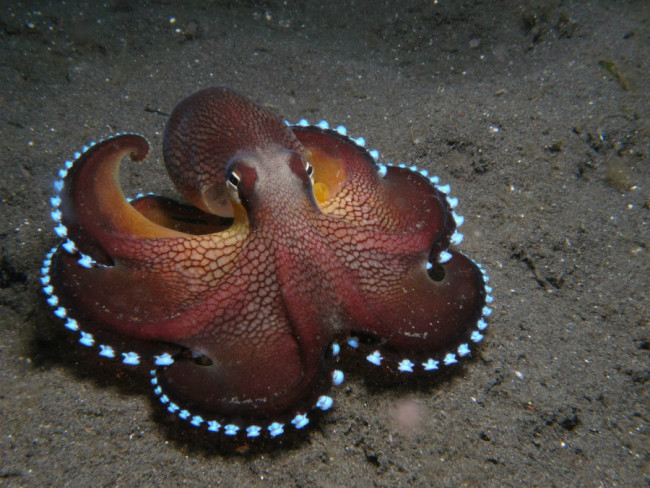
NOWs: 5th Moscow International Biennale for Young Art
Trekhgornaya Factory, Moscow
NOWs:
Under the title “Deep Inside” the 5th Moscow International Biennale for Young Art offers a long list of participating artists, and a meanding tour through barely lit corridors of its main venue, the Trekhgornaya Factory, one of Moscow’s oldest textile mills. The curatorial focus emphazises recent issues in ecology and economics and tries to tackle questions regarding the dangers presented by new technologies and social instability.
Berlin-based independent curator Nadim Samman explains in a statement, “Ours is the time of fissures, of prying apart, of penetration and cavities. We are climbing, or falling, ever deeper into a kind of black hole. As we do, it is perhaps to be expected that artists should be fascinated by opacities, by occultations, encryptions and conspiracies—the other side of the event horizon. Also, that they should rhapsodize about instability and polydimensionality. Deep Inside is a view from the chasm.
Amongst the 87 participating artists, the Biennale feature works by Julius von Bismarck, Ekaterina Burlyga, Julian Charrière, Felix Kiessling, Fabian Knecht, Alvaro Urbano, and Helga Wretman.
Find a review by Hetti Judah in artnetnews.
Felix Kiessling: Antisonne (Anti-Sun), 2016. Interactive installation.
Alvaro Urbano: Untitled, 2016
Trekhgornaya Factory, Moscow
NOWs:
Under the title “Deep Inside” the 5th Moscow International Biennale for Young Art offers a long list of participating artists, and a meanding tour through barely lit corridors of its main venue, the Trekhgornaya Factory, one of Moscow’s oldest textile mills. The curatorial focus emphazises recent issues in ecology and economics and tries to tackle questions regarding the dangers presented by new technologies and social instability.
Berlin-based independent curator Nadim Samman explains in a statement, “Ours is the time of fissures, of prying apart, of penetration and cavities. We are climbing, or falling, ever deeper into a kind of black hole. As we do, it is perhaps to be expected that artists should be fascinated by opacities, by occultations, encryptions and conspiracies—the other side of the event horizon. Also, that they should rhapsodize about instability and polydimensionality. Deep Inside is a view from the chasm.
Amongst the 87 participating artists, the Biennale feature works by Julius von Bismarck, Ekaterina Burlyga, Julian Charrière, Felix Kiessling, Fabian Knecht, Alvaro Urbano, and Helga Wretman.
Find a review by Hetti Judah in artnetnews.
Felix Kiessling: Antisonne (Anti-Sun), 2016. Interactive installation.
Alvaro Urbano: Untitled, 2016
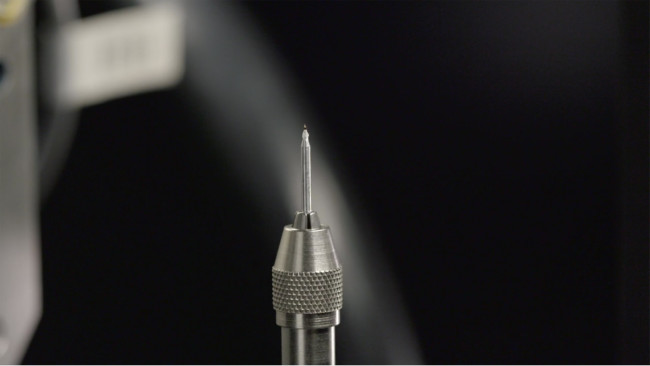
NOWs: Tilt by Clara Jo with soundtrack by Jacob Kirkegaard
NOWs:
Excerpt: Tilt. A film installation by Clara Jo. 2016
Tilt is a film installation by Clara Jo which creates a contemporary parallel of an Enlightenment World, employing current museological digital imaging technologies as devices to penetrate the surface of scientific and artistic objects. Rather than performing direct incisions into material culture, these new technologies create a surrogate and abstracted experience of objects and bodies for public consumption. This film draws from the RA Collections and Archives, folding in material from other London institutions such as the Burlington Courtyard Learned Societies and the Imaging and Analysis Centre at the Natural History Museum.
–
Clara Jo is recipient of the Starr Fellowship at the Royal Academy Schools.
–
The film installation will be presented at The John Madejski Fine Rooms, Royal Academy of Arts, London on Friday, 8 July & Saturday, 9 July, 2016, 6 – 9pm.
Enter the Royal Academy from Piccadilly. The Fine Rooms are on the first floor of Burlington House, accessible via the main staircase.
Film stills: Tilt. A film installation by Clara Jo. 2016
Credits:
Director, Camera, Edit: Clara Jo
Soundtrack: Jacob Kirkegaard
3D Animation: Arglèton Studio
Compositing & 2D Animation: Jack Holmes
Additional Camera (NHM) and Colourist: Mann Bros
Special Thanks:
Royal Academy Schools, Collections, Library, & Estates
Royal Astronomical Society
Royal Society of Chemistry
The Natural History Museum
NOWs:
Excerpt: Tilt. A film installation by Clara Jo. 2016
Tilt is a film installation by Clara Jo which creates a contemporary parallel of an Enlightenment World, employing current museological digital imaging technologies as devices to penetrate the surface of scientific and artistic objects. Rather than performing direct incisions into material culture, these new technologies create a surrogate and abstracted experience of objects and bodies for public consumption. This film draws from the RA Collections and Archives, folding in material from other London institutions such as the Burlington Courtyard Learned Societies and the Imaging and Analysis Centre at the Natural History Museum.
–
Clara Jo is recipient of the Starr Fellowship at the Royal Academy Schools.
–
The film installation will be presented at The John Madejski Fine Rooms, Royal Academy of Arts, London on Friday, 8 July & Saturday, 9 July, 2016, 6 – 9pm.
Enter the Royal Academy from Piccadilly. The Fine Rooms are on the first floor of Burlington House, accessible via the main staircase.
Film stills: Tilt. A film installation by Clara Jo. 2016
Credits:
Director, Camera, Edit: Clara Jo
Soundtrack: Jacob Kirkegaard
3D Animation: Arglèton Studio
Compositing & 2D Animation: Jack Holmes
Additional Camera (NHM) and Colourist: Mann Bros
Special Thanks:
Royal Academy Schools, Collections, Library, & Estates
Royal Astronomical Society
Royal Society of Chemistry
The Natural History Museum
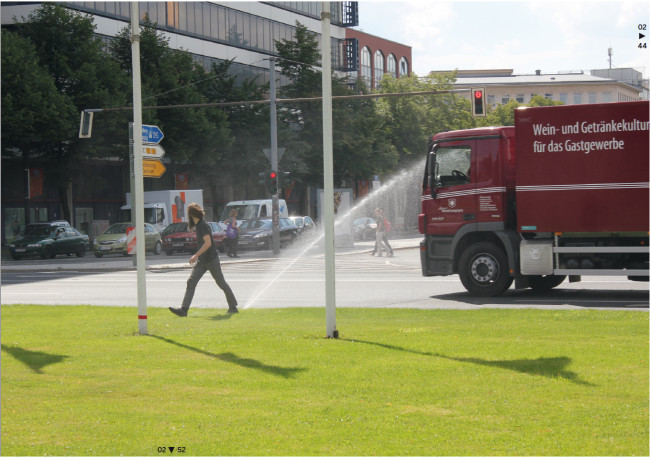
NOWs: Perspektiven. Zu Fuß – vom Erlaufen der Welt von Maya Kristin Schönfelder
NOWs:
kulturradio rbb:
Maya Kristin Schönfelder auf den Spuren der Spaziergangswissenschaft
Wie man eine Stadt ergeht
Flanieren, Schlendern, Bummeln oder Promenieren. Es gibt viele Arten, zu Fuß zu gehen und noch mehr Wörter in der deutschen Sprache, diesen Vorgang zu beschreiben. Langsam durch die Stadt zu streifen, ist allerdings nicht nur ein “besonderes Vergnügen”, sondern – Gegenstand von Forschung und Lehre.
Lucius Burckhardt ist ein Schweizer Bürger gewesen, der in Kassel ab 1973 an der Gesamthochschule als Professor für Sozioökonomie urbaner Systeme lehrte. Dort entwickelte er eine Lehre von der Ästhetik der Landschaft. Die nannte er Spaziergangswissenschaft – Promenadologie. Lucius Burckhardts akademische Essays tragen Titel wie “Brache als Kontext”, “Die Vernunft schläft im Garten”, “Das Zebra streifen” oder “Bergsteigen auf Sylt”. Oder er fragt: “Warum ist Landschaft schön?”
Alles, was man zu Fuß erlebt, war für ihn Teil eines Konzeptes zur Raum- und Landschaftserkundung. Das klingt erst einmal etwas abgehoben. Ist es aber nicht.
Für diese Perspektivensendung hat Maya Kristin Schönfelder ihre Stadt Berlin mit Aufnahmegerät und Mikrofon durchquert und dabei ihren promenadologischen Blick geschult. Der Weg ist ihr Ziel – von Ahrensfelde nach Lichterfelde – durch Feld, wenig Wald und viel Stadtlandschaft und führt auch zum Institut für Raumexperimente. Ein promenadologischer Selbstversuch. Zu Fuß. Im Radio.
Die Sendung ist zu hören auf:
kulturradio
Perspektiven-Ursendung: 30.6.2016, 22.04 Uhr
Fotos: Mapping Everything. Hrsg Institut für Raumexperimente, UdK Berlin und Institut für Landschaftsarchtektur, ETH Zürich, 2012, 59 Postkarten, Textbuch 128 S. Mit zahl. Abbild., Poster
NOWs:
kulturradio rbb:
Maya Kristin Schönfelder auf den Spuren der Spaziergangswissenschaft
Wie man eine Stadt ergeht
Flanieren, Schlendern, Bummeln oder Promenieren. Es gibt viele Arten, zu Fuß zu gehen und noch mehr Wörter in der deutschen Sprache, diesen Vorgang zu beschreiben. Langsam durch die Stadt zu streifen, ist allerdings nicht nur ein “besonderes Vergnügen”, sondern – Gegenstand von Forschung und Lehre.
Lucius Burckhardt ist ein Schweizer Bürger gewesen, der in Kassel ab 1973 an der Gesamthochschule als Professor für Sozioökonomie urbaner Systeme lehrte. Dort entwickelte er eine Lehre von der Ästhetik der Landschaft. Die nannte er Spaziergangswissenschaft – Promenadologie. Lucius Burckhardts akademische Essays tragen Titel wie “Brache als Kontext”, “Die Vernunft schläft im Garten”, “Das Zebra streifen” oder “Bergsteigen auf Sylt”. Oder er fragt: “Warum ist Landschaft schön?”
Alles, was man zu Fuß erlebt, war für ihn Teil eines Konzeptes zur Raum- und Landschaftserkundung. Das klingt erst einmal etwas abgehoben. Ist es aber nicht.
Für diese Perspektivensendung hat Maya Kristin Schönfelder ihre Stadt Berlin mit Aufnahmegerät und Mikrofon durchquert und dabei ihren promenadologischen Blick geschult. Der Weg ist ihr Ziel – von Ahrensfelde nach Lichterfelde – durch Feld, wenig Wald und viel Stadtlandschaft und führt auch zum Institut für Raumexperimente. Ein promenadologischer Selbstversuch. Zu Fuß. Im Radio.
Die Sendung ist zu hören auf:
kulturradio
Perspektiven-Ursendung: 30.6.2016, 22.04 Uhr
Fotos: Mapping Everything. Hrsg Institut für Raumexperimente, UdK Berlin und Institut für Landschaftsarchtektur, ETH Zürich, 2012, 59 Postkarten, Textbuch 128 S. Mit zahl. Abbild., Poster
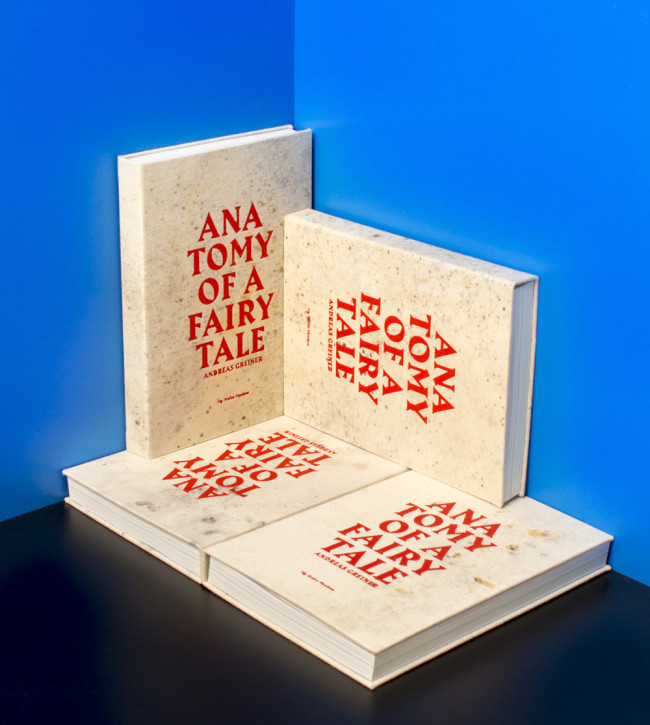
NOWs: Anatomy of a Fairy Tale by Andreas Greiner
NOWs:
Anatomy of a Fairy Tale is the first comprehensive monograph on the work of artist Andreas Greiner. Time-based and living sculptures form the focus of his artistic practice. Experimenting with technoscientific processes, he integrates biological organisms – such as algae, insects and bacteria – as co-authors of his art works. Thus Greiners artistic position reflexively approaches the relation between human beings and their environment, which today is natural and artificial in equal part. Continuing his artistic practice the texts by authors of various scientific backgrounds develope expositions of the given range of topics.
Texts: Marie Egger, Desiree Förster, Prof. Dr. Nicole C. Karafyllis, Prof. Dr. Hans-Jörg Rheinberger, Dr. Christine Stahl, Dr. Ursula Ströbele, Stefan Vicedom.
The introducing contribution Andreas Greiner: Volatile Experimental Currents, photographically recorded by art historian Christiane Stahl looks at Greiner’s photographic works to explore the specific potential of photography within the production of scientific images.
Meanwhile the text Man Beast Plant: Human and Non-Human Living Sculptures by art historian Ursula Ströbele focuses on Andreas Greiners use of life and ephemeral materials for his time-based and living sculptures, analyzing it in a multilayered, art historical, and aesthetic context.
The dialogue Hybrids between science historian Hans-Jörg Rheinberger and Andreas Greiner follows, wherein their personal experiences illuminate the deeper relation between the scientific and artistic practice of knowledge production, and highlight the relevance of such interactions with regard to current challenges.
Philosopher Nicole C. Karafyllis offers a short outline describing the term Biofact, emphasizing the necessity of a basic reevaluation of the categories „nature“ and „culture“.
In her text Being Interspecies. Negotiation Processes of Subjectivity and the Event Beyond Representation art historian Desiree Förster describes a growing interest within artistic practices to engage with ecological and biological phenomena, and considers the ability of art to serve as a unique testing ground for interactions between human and non-human agents.
The final contribution Dear Andreas: Notes on Cosmism appears in the form of a personal letter and picture collage by curator Marie Egger that traces the utopian and universal potential of Greiner’s artistic work by loosely intertwining these notions with the concept of „Cosmism“.
Aphorisms: Carson Chan, Eric Ellingsen, Yukiko Ohji, Donata Rigg, Prof. Dr. Otto E. Rössler, Lukas Töpfer, Stefan Vicedom
Accompanying the publication’s theoretical and visual content are short literary interventions by Carson Chan, Eric Ellingsen, Yukiko Ohji, Donata Rigg, Otto E. Rössler, Lukas Töpfer, and Stefan Vicedom. They each capture central moments of Greiner’s artistic involvement and reflected upon them through associative linguistics.
The monograph is being published in two versions, each as Swiss brochure with 248 pages. The design by Sin-U Ko visually relates to the anatomical textbook Recherches sur les ossements fossiles de quadrupèdes (1830) by Georges Curvier. While the deep blue cover version is meant for commercial sale, the special edition is limited to 100 copies and is released with a linen cover which surface reveals a unique pattern created by impregating the cloth with microorganisms and sterilising it.
The book is available at Verlag für moderne Kunst.
NOWs:
Anatomy of a Fairy Tale ist die erste umfassende Monografie zum Werk des Künstlers Andreas Greiner. Den Schwerpunkt seiner künstlerischen Praxis bilden zeitbasierte und lebende Skulpturen. Auf experimentelle Weise nutzt er dabei technisch-naturwissenschaftliche Prozesse und integriert natürliche Organismen – wie Algen, Insekten oder Bakterien – als Co-Autoren seiner Kunstwerke. In reflexiver Form rückt Andreas Greiners Ansatz somit die Beziehung des Menschen zu einer heute gleichermaßen natürlich wie artifiziell geprägten Umwelt in den Mittelpunkt. Als unmittelbare Fortführung seiner künstlerischen Praxis verorten Textbeiträge von Autoren aus unterschiedlichen Disziplinen das zugrunde liegende Themenspektrum.
Texte: Marie Egger, Desiree Förster, Prof. Dr. Nicole C. Karafyllis, Prof. Dr. Hans-Jörg Rheinberger, Dr. Christine Stahl, Dr. Ursula Ströbele, Stefan Vicedom.
Der einleitende Beitrag Volatile Experimentalströme, fotografisch fixiert der Kunsthistorikerin Christiane Stahl nimmt Bezug auf Andreas Greiners fotografische Serien und erörtert anhand dieser die spezifischen Potenziale von Fotografien in ihrer Verwendung als wissenschaftliche Bildmedien.
Demgegenüber richtet der Text Mensch Tier Pflanze. Human and Non-Human Living Sculptures der Kunsthistorikerin Ursula Ströbele seinen thematischen Fokus auf die Lebendigkeit und Eigenzeitlichkeit des plastischen Materials von Andreas Greiners Living Sculptures und erläutert diese im Kontext seiner vielschichtigen kunstgeschichtlichen und ästhetischen Bezüge.
Aus einer persönlichen Erfahrungsperspektive beleuchtet der Dialog Hybride zwischen dem Wissenschaftshistoriker Hans-Jörg Rheinberger und Andreas Greiner die tiefer liegende Relation zwischen wissenschaftlichen und künstlerischen Verfahren der Wissensproduktion sowie die Relevanz dieses Themenfeldes für aktuelle Fragestellungen.
Anhand einer kurzen Gedankenskizze führt die Philosophin Nicole C. Karafyllis in die Begrifflichkeit des Biofakts ein und verdeutlicht anhand dessen die Notwendigkeit einer grundlegenden Neubewertung der beiden Verständniskategorien von „Natur“ und „Kultur“.
In ihrem Text Being interspecies. Aushandlungsprozesse von Subjektivität und Ereignis jenseits der Repräsentation folgt die Kunstwissenschaftlerin Desiree Förster nicht nur dem in den letzten Jahren zunehmend starken Interesse künstlerischer Praktiken an ökologischen und biologischen Phänomenen, sondern erörtert zugleich das Vermögen der Kunst als einem besonderen Erprobungsort, an dem sich neuartige Interaktionen zwischen menschlichen und nichtmenschlichen Lebensformen vollziehen.
In einem abschließenden Beitrag spürt die als persönlicher Brief angelegte Text- und Bildcollage Lieber Andreas – Notizen zum Kosmismus der Kuratorin Marie Egger den utopischen und universalistischen Potenzialen von Andreas Greiners künstlerischer Arbeit nach, indem sie diese in ein loses Beziehungsgeflecht zum Wirkkreis des Kosmismus und seiner Ideen setzt.
Aphorismen: Carson Chan, Eric Ellingsen, Yukiko Ohji, Donata Rigg, Prof. Dr. Otto E. Rössler, Lukas Töpfer, Stefan Vicedom
Begleitet werden die theoretischen und visuellen Inhalte der Publikation durch kurze literarische Interventionen von Carson Chan, Eric Ellingsen, Yukiko Ohji, Donata Rigg, Otto E. Rössler, Lukas Töpfer und Stefan Vicedom, die jeweils zentrale Momente von Andreas Greiners künstlerischer Praxis aufgreifen und assoziativ auf sprachlicher Ebene reflektieren.
Die Publikation erscheint in 2 Versionen, jeweils als Schweizer Broschur mit 248 Seiten Umfang. Die Gestaltung des Designers Sin-U Ko nimmt assoziativ Bezug auf das visuelle Konzept des anatomischen Lehrbuches Recherches sur les ossements fossiles de quadrupèdes (1830) von Georges Curvier. Die Handelsauflage besitzt ein leuchtend blaues Softcover (Sonderfarbe) mit Prägung. Die durch den Künstler vertriebene Vorzugsausgabe (100 Stück) erscheint mit einem Leinen-Hardcover, dessen Oberfläche bei jedem Exemplar individuell durch das Wachstumsmuster zuvor angeimpfter Mikroorganismen gestaltet worden ist.
Die Publikation erscheint und ist erhältlich: Verlag für moderne Kunst
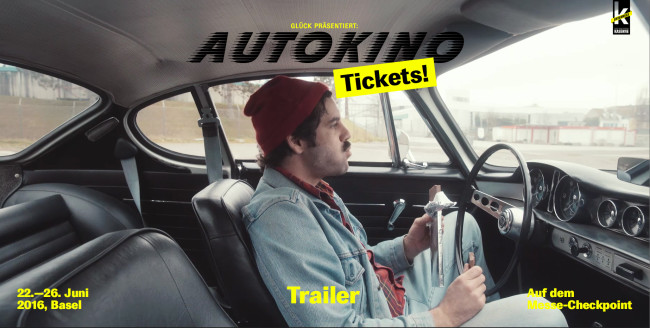
NOWs: Autokino by Glück
NOWs:
Autokino
«Ein bisschen unnötig Autofahren, ist ein bisschen Freiheit», sagte schon der Luzerner Strassenphilosoph Emil Manser. Bevor alles hybrid und elektrisch wird, bietet Glück all denjenigen eine Plattform, die ihr Herz an Benzin, Gummi und Pferdestärken verloren haben. Dafür verlässt die Gruppe Glück den Theaterraum und veranstaltet ein Autokino – das letzte Kino ohne Rauchverbot. Gezeigt wird der eigens produzierte Dokfilm «Jäger & Sammler»: Ganz in Roadmovie-Manier handelt der Film von Autos, ihren Besitzern, wahrer Liebe zu grossen Motoren und von solchen, die ihr Schicksal selber in die Hand nehmen wollen.
Glück möchte der eigenartigen Symbiose zwischen Mensch und Auto auf die Schliche kommen. Immer mit der Frage im Nacken: Wie weit gehen Menschen für Motoren?
Wie sehen die Roadmovies der Zukunft aus, wenn Roboter das Steuer übernehmen? Bevor Duracell Häschen in Google-Autos durch die Gegend piepsen und uns GPS Satelliten die Orientierung verlieren lassen, zeigen wir die letzten echten Autofreaks und geben ihnen unsere Bühne. Ganz in Roadmovie-Manier handelt der Film von Autos, ihren Besitzern, wahrer Liebe zu grossen Motoren und von solchen die ihr Schicksal selber in die Hand nehmen wollen. In kleinen Episoden tritt die flammende Leidenschaft hervor. Autoliebhaber und überzeugte Fahrradfahrer reichen sich die Klinke in die Hand und die ganz grossen Gefühle werden aufgefahren – ganz nach dem Motto: «Wer nicht spinnt ist nicht normal!» (Pesche, Protagonist «Jäger & Sammler»).
Glück – bestehend aus den Basler Künstlern, Musikern und Theaterschaffenden Gregor Brändli, Jeremias Holliger, Lukas Kubik, Benjamin Matthis und Victor Moser – entstand aus dem Bedürfnis, Arbeiten zu machen, die kollektiv entstehen und dem hierarchischen Theaterprinzip entsagen. Ihre erste Produktion «Glück präsentiert: Honegger» (2012), eine performative Buchpräsentation, feierte Erfolge in der Kaserne Basel, dem Südpol Luzern und der Tuchlaube Aarau.
Für ihre zweite Produktion Glück präsentiert: Autokino verlassen sie den Theaterraum und präsentieren im eigenen Autokino ihren ersten Dokumentarfilm «Jäger & Sammler».
Ort: Messe-Checkpoint, Neuhausstrasse 49, 4057 Basel // Zeit: 22.—26. Juni 2016, Einlass: 20.30 Uhr
NOWs:
Autokino
«Ein bisschen unnötig Autofahren, ist ein bisschen Freiheit», sagte schon der Luzerner Strassenphilosoph Emil Manser. Bevor alles hybrid und elektrisch wird, bietet Glück all denjenigen eine Plattform, die ihr Herz an Benzin, Gummi und Pferdestärken verloren haben. Dafür verlässt die Gruppe Glück den Theaterraum und veranstaltet ein Autokino – das letzte Kino ohne Rauchverbot. Gezeigt wird der eigens produzierte Dokfilm «Jäger & Sammler»: Ganz in Roadmovie-Manier handelt der Film von Autos, ihren Besitzern, wahrer Liebe zu grossen Motoren und von solchen, die ihr Schicksal selber in die Hand nehmen wollen.
Glück möchte der eigenartigen Symbiose zwischen Mensch und Auto auf die Schliche kommen. Immer mit der Frage im Nacken: Wie weit gehen Menschen für Motoren?
Wie sehen die Roadmovies der Zukunft aus, wenn Roboter das Steuer übernehmen? Bevor Duracell Häschen in Google-Autos durch die Gegend piepsen und uns GPS Satelliten die Orientierung verlieren lassen, zeigen wir die letzten echten Autofreaks und geben ihnen unsere Bühne. Ganz in Roadmovie-Manier handelt der Film von Autos, ihren Besitzern, wahrer Liebe zu grossen Motoren und von solchen die ihr Schicksal selber in die Hand nehmen wollen. In kleinen Episoden tritt die flammende Leidenschaft hervor. Autoliebhaber und überzeugte Fahrradfahrer reichen sich die Klinke in die Hand und die ganz grossen Gefühle werden aufgefahren – ganz nach dem Motto: «Wer nicht spinnt ist nicht normal!» (Pesche, Protagonist «Jäger & Sammler»).
Glück – bestehend aus den Basler Künstlern, Musikern und Theaterschaffenden Gregor Brändli, Jeremias Holliger, Lukas Kubik, Benjamin Matthis und Victor Moser – entstand aus dem Bedürfnis, Arbeiten zu machen, die kollektiv entstehen und dem hierarchischen Theaterprinzip entsagen. Ihre erste Produktion «Glück präsentiert: Honegger» (2012), eine performative Buchpräsentation, feierte Erfolge in der Kaserne Basel, dem Südpol Luzern und der Tuchlaube Aarau.
Für ihre zweite Produktion Glück präsentiert: Autokino verlassen sie den Theaterraum und präsentieren im eigenen Autokino ihren ersten Dokumentarfilm «Jäger & Sammler».
Ort: Messe-Checkpoint, Neuhausstrasse 49, 4057 Basel // Zeit: 22.—26. Juni 2016, Einlass: 20.30 Uhr
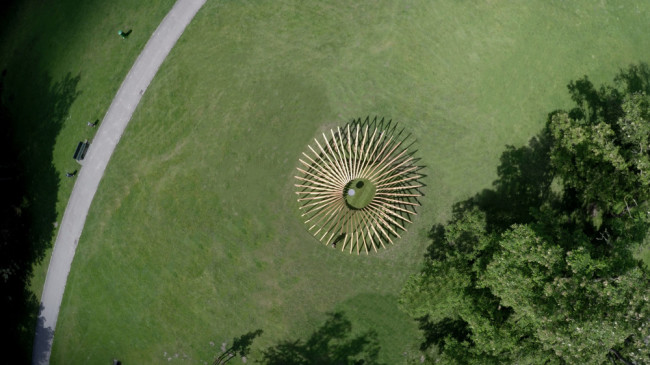
NOWs: Lp/’16 with Thilo Frank, Tomás Saraceno, Michael Sailstorfer, Björn Dahlem, Elín Hansdóttir, and others
NOWs:
Lichtparcours Braunschweig 2016 presents current works throughout the city and on the premises of the Port of Braunschweig-Veltenhof. In this fourth edition of the exhibition format, the focus will be on new artistic productions. After exploring the urban landscape, the artists developed concepts for site-specific works, each applying different strategies of intervention for public locations. Considerations for the periodic transformations in natural lighting throughout an entire day, constitute vital points of reference: For the first time, there will be a focus on works whose interplay with the surroundings can be experienced during all 24 hours of the day. Visitors will be offered the possibility of returning to the sites, again and again, at any time, to experience the works in new ways at different times of the day.
Thilo Frank: You and I, wandering on the snake’s tail, 2016
With works by Andreas Fischer, Thilo Frank, Tomás Saraceno, Kevin Schmidt, Alfredo Jaar, Kai Schiemenz, Michael Sailstorfer, Tobias Rehberger, Danica Dakić, Björn Dahlem, Elín Hansdóttir, Studio Drift, Yvonne Goulbierm Fabrizio Plessi, Mark Dion.
Lichtparcours artworks can be visited individually and independent of opening hours, around the clock. Please find a map here.
—
Thilo Frank: You and I, wandering on the snake’s tail
2016
Temporary Public Installation / Ø 10m H 3.5m / Wood, stainless steel wire, zinc coated steel, aluminum, sensor controlled light-system
A weave of 44 wooden beams encompass a circular path. As if suspended, they rotate around a ring-formed central axis, leaving the impression of an unobstructed, and simultaneously, tunnel-like space—a walk-in lattice of flowing lines: reminiscent of a helical body, generating shimmering moiré effects. As the visitor moves through the installation, the sun “draws” constantly varying patterns of light and shadow, and with its changing positions, also determines the shape and dimension of the work. At night, the effect of shadow and the perception of the pavilion is inverted by a light source at the center: fields of light and shadow are uniformly mapped onto the surrounding exterior. In the braid of beams—this entanglement of space, light and time— You and I, wandering on the snake’s tail is an experiential space reflecting the times of the day.
—
Elín Hansdóttir: Cast
2016
With Cast, Elín Hansdóttir creates a walk-in space, which acts like a filter for the lights from the street of passing cars, trucks and trams. Through vertical slots, light penetrates into the inside of the room and throws ephemeral patterns onto the walls and floors. Exterior movements are hereby converted into momentary fields of flickering light and colour, whose appearance and disappearance occur as a direct reaction to the ever-changing outside world. The experience of the sensual quality of light in an intimate space is intensified by the concentration of just a few rays. Thus, the space offers itself to the recipient, not as an objective “other,” but as a point of initiation for body-bound perception—a relational system, constituting and modifying itself again and again, in transitory exchange with the beholder.
—
more
NOWs:
Lichtparcours Braunschweig 2016 presents current works throughout the city and on the premises of the Port of Braunschweig-Veltenhof. In this fourth edition of the exhibition format, the focus will be on new artistic productions. After exploring the urban landscape, the artists developed concepts for site-specific works, each applying different strategies of intervention for public locations. Considerations for the periodic transformations in natural lighting throughout an entire day, constitute vital points of reference: For the first time, there will be a focus on works whose interplay with the surroundings can be experienced during all 24 hours of the day. Visitors will be offered the possibility of returning to the sites, again and again, at any time, to experience the works in new ways at different times of the day.
Thilo Frank: You and I, wandering on the snake’s tail, 2016
With works by Andreas Fischer, Thilo Frank, Tomás Saraceno, Kevin Schmidt, Alfredo Jaar, Kai Schiemenz, Michael Sailstorfer, Tobias Rehberger, Danica Dakić, Björn Dahlem, Elín Hansdóttir, Studio Drift, Yvonne Goulbierm Fabrizio Plessi, Mark Dion.
Lichtparcours artworks can be visited individually and independent of opening hours, around the clock. Please find a map here.
—
Thilo Frank: You and I, wandering on the snake’s tail
2016
Temporary Public Installation / Ø 10m H 3.5m / Wood, stainless steel wire, zinc coated steel, aluminum, sensor controlled light-system
A weave of 44 wooden beams encompass a circular path. As if suspended, they rotate around a ring-formed central axis, leaving the impression of an unobstructed, and simultaneously, tunnel-like space—a walk-in lattice of flowing lines: reminiscent of a helical body, generating shimmering moiré effects. As the visitor moves through the installation, the sun “draws” constantly varying patterns of light and shadow, and with its changing positions, also determines the shape and dimension of the work. At night, the effect of shadow and the perception of the pavilion is inverted by a light source at the center: fields of light and shadow are uniformly mapped onto the surrounding exterior. In the braid of beams—this entanglement of space, light and time— You and I, wandering on the snake’s tail is an experiential space reflecting the times of the day.
—
Elín Hansdóttir: Cast
2016
With Cast, Elín Hansdóttir creates a walk-in space, which acts like a filter for the lights from the street of passing cars, trucks and trams. Through vertical slots, light penetrates into the inside of the room and throws ephemeral patterns onto the walls and floors. Exterior movements are hereby converted into momentary fields of flickering light and colour, whose appearance and disappearance occur as a direct reaction to the ever-changing outside world. The experience of the sensual quality of light in an intimate space is intensified by the concentration of just a few rays. Thus, the space offers itself to the recipient, not as an objective “other,” but as a point of initiation for body-bound perception—a relational system, constituting and modifying itself again and again, in transitory exchange with the beholder.
—
more
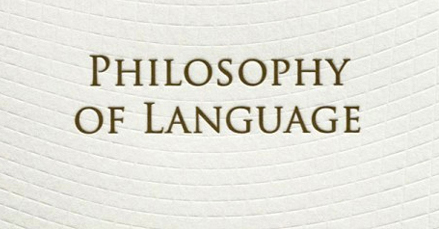
NOWs: Philosophy of Language, translated by Rodrigo Maltez Novaes
NOWs:
Exploring language from an ontological perspective.
In 1963 Vilém Flusser presented a series of lectures at the Brazilian Institute of Philosophy (IBF) in São Paulo concerning the philosophy of language. The resulting ten essays would eventually be published in 1965 in the annual magazine of the Brazilian Institute of Technology and Aeronautics (ITA), and published here for the first time in book form. Flusser prepared each lecture as a response to the dialogs that followed the preceding lecture, thereby expanding and explicating his philosophy of language in an intense dialogical process. Despite the fact that the other side of the dialogue was not recorded, it becomes clear to the reader that the resulting discussions and polemics generated by the lectures progressively and profoundly changed Flusser’s intended trajectory for the course. This kind of philosophy in fieri was in part the result of a group effort between all of those present, and subsequently synthesized by Flusser in every essay. As a result of this experience, Flusser adopted this dialogic method as an integral part of his future work.
Vilém Flusser (1920–1991) is increasingly recognized as one of the most influential thinkers of digital and global culture.
–
Philosophy of Language
by Vilém Flusser
foreword by Sean Cubitt
translated by Rodrigo Maltez Novaes
Rodrigo Maltez Novaes is an artist, translator, editor and designer. He has translated and published several titles by the philosopher Vilém Flusser including Natural:Mind, Post-History, and most recently Immaterial Culture.
The publication is availble from Univocal Publishing.
–
NOWs:
Exploring language from an ontological perspective.
In 1963 Vilém Flusser presented a series of lectures at the Brazilian Institute of Philosophy (IBF) in São Paulo concerning the philosophy of language. The resulting ten essays would eventually be published in 1965 in the annual magazine of the Brazilian Institute of Technology and Aeronautics (ITA), and published here for the first time in book form. Flusser prepared each lecture as a response to the dialogs that followed the preceding lecture, thereby expanding and explicating his philosophy of language in an intense dialogical process. Despite the fact that the other side of the dialogue was not recorded, it becomes clear to the reader that the resulting discussions and polemics generated by the lectures progressively and profoundly changed Flusser’s intended trajectory for the course. This kind of philosophy in fieri was in part the result of a group effort between all of those present, and subsequently synthesized by Flusser in every essay. As a result of this experience, Flusser adopted this dialogic method as an integral part of his future work.
Vilém Flusser (1920–1991) is increasingly recognized as one of the most influential thinkers of digital and global culture.
–
Philosophy of Language
by Vilém Flusser
foreword by Sean Cubitt
translated by Rodrigo Maltez Novaes
Rodrigo Maltez Novaes is an artist, translator, editor and designer. He has translated and published several titles by the philosopher Vilém Flusser including Natural:Mind, Post-History, and most recently Immaterial Culture.
The publication is availble from Univocal Publishing.
–
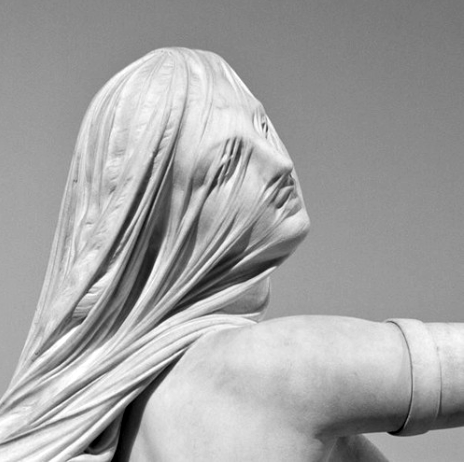
NOWs: Corpo Velato by Rafael Ibarra
NOWs:
Rafael Ibarra: Corpo Velato, zeitbasierte Skulptur, 2016.
On the occasion of the first anniversary of the Kunsthaus Dahlem in Berlin Rafael Ibarra created a piece inspired by the aesthetics of the Italian baroque sculpture. The artist describes the sculpture performance: ” I covered a human body placed on a table with cloth. I see the white cloth as a layer of uniformity and clarity; it resembles marble and has two main effects on the piece. It erases and veils some information and in doing so it allows other elements to appear. Color, texture and the person as such were covered to enhance form, volume and create another type of physical presence. Only breathing reveals it’s a living being.”
The “one hour sculpture” creates a dialogue with the surrounding pieces made out of long lasting materials such as stone, granite, marble and bronze, all part of the postwar exhibition of the museum. The building was erected during the Nazi regime to be the studio of the artist Arno Brecker. After the war it was the studio of renowned postwar artist Bernhard Heiliger. Both Arno Breker and Bernhard Heiliger were Professors at the Berlin University of the Arts.
Rafael Ibarra presents his new performance sculpure Corpo Velato at Kunsthaus Dahlem on Thursday, 9 June 2016 at 6 pm and Saturday, 27 August 2016 at 8 pm during the Long Night of Museums.
NOWs:
Rafael Ibarra: Corpo Velato, zeitbasierte Skulptur, 2016.
On the occasion of the first anniversary of the Kunsthaus Dahlem in Berlin Rafael Ibarra created a piece inspired by the aesthetics of the Italian baroque sculpture. The artist describes the sculpture performance: ” I covered a human body placed on a table with cloth. I see the white cloth as a layer of uniformity and clarity; it resembles marble and has two main effects on the piece. It erases and veils some information and in doing so it allows other elements to appear. Color, texture and the person as such were covered to enhance form, volume and create another type of physical presence. Only breathing reveals it’s a living being.”
The “one hour sculpture” creates a dialogue with the surrounding pieces made out of long lasting materials such as stone, granite, marble and bronze, all part of the postwar exhibition of the museum. The building was erected during the Nazi regime to be the studio of the artist Arno Brecker. After the war it was the studio of renowned postwar artist Bernhard Heiliger. Both Arno Breker and Bernhard Heiliger were Professors at the Berlin University of the Arts.
Rafael Ibarra presents his new performance sculpure Corpo Velato at Kunsthaus Dahlem on Thursday, 9 June 2016 at 6 pm and Saturday, 27 August 2016 at 8 pm during the Long Night of Museums.
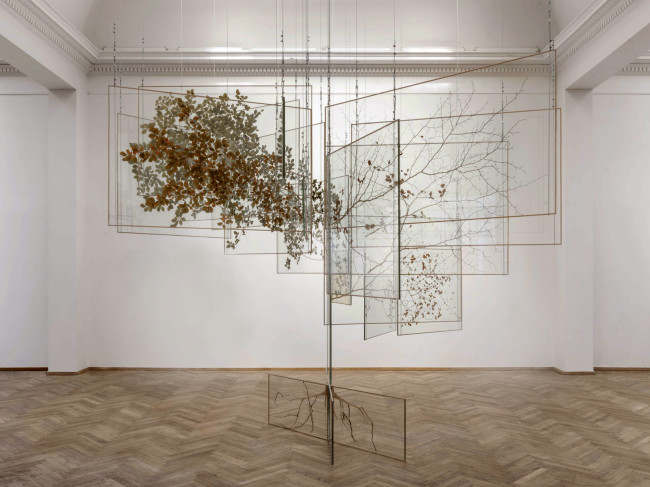
NOWs: Tempus circularis Fagus sylvatica by Rune Bosse
NOWs:
Rune Bosse: Tempus circularis Fagus sylvatica, 2015-16 (detail). Tree, glass, metal, time. Photo: David Stjernholm
Rune Bosse´s art focuses on the elementary experience of our natural surroundings in a protracted exploration of time, the tree and the herbarium. His work for the exhibition documents the different stages a tree passes through during a year-long cycle. Around every third week from april 2015 to april 2016 the artist cut a branch of a beech tree, planed it until it was 2-3 mm. This, then put it in a press to retain the colour of the branch at the precise time of year.
At Charlottenborg the tree has been reassembled and spread out again in its original shape, the different seasons meet and are interwoven, making the entire annual cycle of the tree visible simultaneously. The round shape becomes an image of cyclical time, as indicated by the title Tempus circularis Fagus sylvatica (circular time, common beech). – by Rhea Dahl and Mathias Kryger
Rune Bosse’s installation in on show at Kunsthal Charlottenburg as part of annual exhibition by graduates from the Schools of Visual Arts at Royal Danish Academy of Fine Arts in Copenhagen.
Photos by David Stjernholm
NOWs:
Rune Bosse: Tempus circularis Fagus sylvatica, 2015-16 (detail). Tree, glass, metal, time. Photo: David Stjernholm
Rune Bosse´s art focuses on the elementary experience of our natural surroundings in a protracted exploration of time, the tree and the herbarium. His work for the exhibition documents the different stages a tree passes through during a year-long cycle. Around every third week from april 2015 to april 2016 the artist cut a branch of a beech tree, planed it until it was 2-3 mm. This, then put it in a press to retain the colour of the branch at the precise time of year.
At Charlottenborg the tree has been reassembled and spread out again in its original shape, the different seasons meet and are interwoven, making the entire annual cycle of the tree visible simultaneously. The round shape becomes an image of cyclical time, as indicated by the title Tempus circularis Fagus sylvatica (circular time, common beech). – by Rhea Dahl and Mathias Kryger
Rune Bosse’s installation in on show at Kunsthal Charlottenburg as part of annual exhibition by graduates from the Schools of Visual Arts at Royal Danish Academy of Fine Arts in Copenhagen.
Photos by David Stjernholm
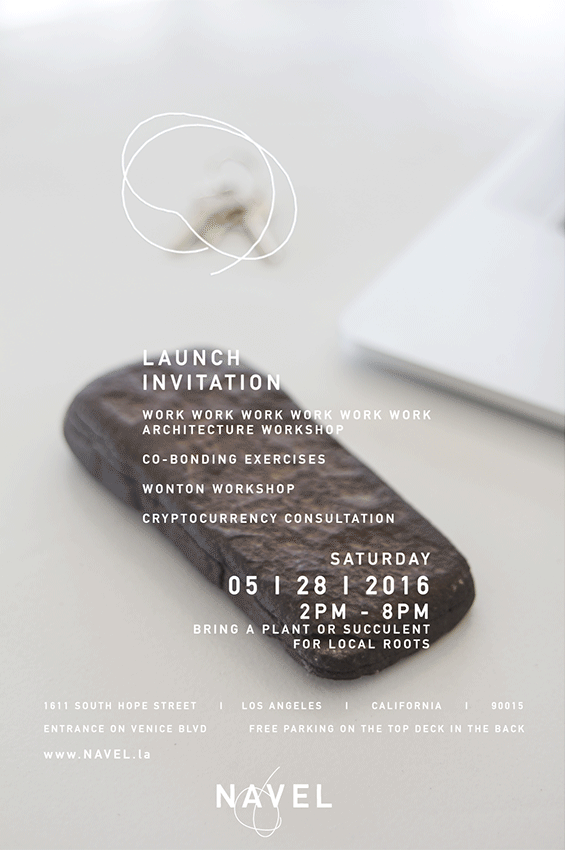
NOWs: Launch NAVEL in L.A.
NOWs:
LAUNCH INVITATION
NAVEL
1611 South Hope Street
Los Angeles
90015 California
U.S.A
–
Work Work Work Work Work Work Architecture Workshop with Jonas Wendelin Kesseler
Co-Bonding Exercises with Caspar Böhme
Wonton Workshop with Liesel Burisch
And Cryptocurrency Consultation with Kristoffer Josefsson
Featuring works by Analisa Teachworth, Hayden Dunham, Lina Hermsdorf, Hans-Henning Korb and more to come…
–
Come join us for our Launch @navel.la in Downtown Los Angeles
Saturday 05/28/2016 2pm – 8pm
NOWs:
LAUNCH INVITATION
NAVEL
1611 South Hope Street
Los Angeles
90015 California
U.S.A
–
Work Work Work Work Work Work Architecture Workshop with Jonas Wendelin Kesseler
Co-Bonding Exercises with Caspar Böhme
Wonton Workshop with Liesel Burisch
And Cryptocurrency Consultation with Kristoffer Josefsson
Featuring works by Analisa Teachworth, Hayden Dunham, Lina Hermsdorf, Hans-Henning Korb and more to come…
–
Come join us for our Launch @navel.la in Downtown Los Angeles
Saturday 05/28/2016 2pm – 8pm
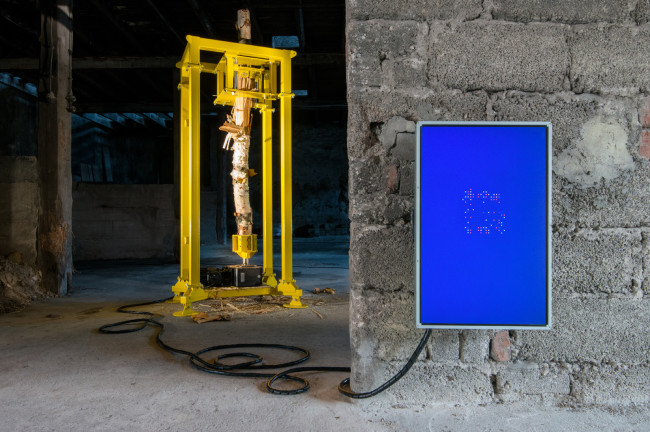
NOWs: Hybrid Modus at Skulptur Bredelar
Stian Korntved Ruud & AE: Ludological, 2016
NOWs:
Hybrid Modus documents how traditional concepts of sculpture are being challenged and expanded to their outer boundaries, and how sculpture merges into other disciplines. New, contemporary definitions are questioned, adapted and proved.
Hybrid Modus is a group show that brings together artists, who’s works deal with the paradigm shift that has taken place on the level of ecological, societal and technological issues, leading to a post-human environment. The exhibition addresses the issue of a man-made, hybrid ecology where nature, culture, capital, and the circulation of information coexist and overlap within the web of life. It may be related to our physical space, natural or urban surroundings, to virtual worlds. How do we deal with and live in these different realities? From the perspective of the human environment being in such a state of flux, the exhibition focuses on the significance of sculpture in the context of today’s networked society. How does the sometimes seemingly anachronistic, traditional medium address this current development?
Artists: Lara Almarcegui, Isabelle Andriessen, Julian Charrière, Andreas Greiner, Spiros Hadjidjanos, Martijn Hendriks, Markus Hoffmann, Rachel de Joode, Sculptress Of Sound, Stian Korntved Ruud & AE, Philip Topolovac, Mirko Tschauner, Alvaro Urbano, Benjamin Verhoeven, Raul Walch, Dan Walwin.
Hybrid Modus is the 2016 edition of Skulptur Bredelar, and is curated by Bas Hendrikx and Ursula Ströbele.
Hybrid Modus : Skulptur Bredar, installation view
Markus Hoffmann: Memory, 2014
Markus Hoffmann: Memory (detail), 2014
Markus Hoffmann: As a tribute to the wealth of natural patterns and systems, Memory consists of twelve glass-topped cabinets, each containing segmented discs of trees taken from all over the world. These specimens were artificially exposed to the growth of fungi for a certain period of time, before the discs were fossilised in their containers. Resulting in a fossil mosaic, Memory is an archived global forest for generations to come.
Julian Charrière:
Future Fossil Spaces, 2016
Julian Charrière: Future Fossil Spaces is a space-consuming sculpture made from blocks of salt, complementary plaster elements and enamelled basins filled with a lithium-rich saline solution, the materials reference where they are from, the South American “lithium triangle” (Argentina, Bolivia, Chile). The one hundred million year-old salt is mined there in order to process it for producing lithium salt solutions used in the rechargeable batteries of our digitised world. Past and present collide in the geological time required to make the salt and its modern use.
Andreas Greiner: Dreamcatcher, 2014
Andreas Greiner: Dreamcatcher (detail), 2014
Andreas Greiner: A pendulum on a canopy bed is in random motion and transfers this movement to a conical flask containing bioluminescent bacteria suspended in seawater, which react by glowing. In the wild, these bacteria live symbiotically within the organs on the underbellies of night-hunting squid which use this disguise to convince their prey that they are a part of the night sky glimmering above them.
Stian Korntved Ruud & AE: Ludological, 2016
Stian Korntved Ruud & AE: Visually referencing deep-sea data infrastructures, Ludological is a device in which algorithms compete with each other. Hyper-optimization and advanced efficiency protocols in industry 4.0 have led to a detachment of ecology and its actors. Ludological subjects a tree trunk to the outcomes of a game between two scripts. The tree is distorted with each gain or loss of its host, ultimately and inevitably leading to its destruction.
Alvaro Urbano: The Ghost & The Host, 2014, installations & film HD, 8. 29 looped
Alvaro Urbano: The short, The Ghost & The Host was filmed on location in the garden of the Villa Romana in Florence. The fictive story unfolds in the traces of this historic garden‘s past, its sculptural decor and its inconspicuous inhabitants (insects, fish, and cats) which awaken to life in the mysterious moonlight. Even the statues move ghost-like through the plumes of fog and explore the place. Is it an animistic dream, or a reference to post-humanism, or a glimpse into a surrealist fantasy world?
Raul Walch: Five, 2016
Raul Walch: Five, 2016
Raul Walch: Five flags, moving in the wind in front of the former monastery, show abstract color patterns, that are neither related to a certain group nor territory, but instead, they represent brush strokes: a hybrid of painting on canvas or a sculpture, similar to the fluttering clothes on a line that Man Ray called Sculpture mouvante in the 1920s? Exposed to the elements, the surface changes thoughout the exhibition.
–
Photos: Sander van Wettum; copyright and courtesy of the artists and Skulptur Bredelar
Stian Korntved Ruud & AE: Ludological, 2016
NOWs:
Hybrid Modus zeigt, wie traditionelle Konzepte von Bildhauerei angefochten und bis aufs Äußerste gedehnt werden, wie Skulptur heute mit anderen Disziplinen und Fachbereichen verschmilzt. Neue zeitgenössische Definitionen werden befragt und erprobt.
Hybrid Modus ist eine Gruppenausstellung, die Künstler aus Deutschland, Belgien und den Niederlanden vereint. Ihre Arbeiten beschäftigen sich mit dem Paradigmenwechsel, der auf ökologischer, gesellschaftlicher und technologischer Ebene stattfindet und zu einer ‘post-humanen’ Umwelt führt.
Die Ausstellung behandelt den Themenkomplex einer künstlichen, hybriden Ökologie, in der Natur, Kultur, Kapital und das ständige Zirkulieren von Informationen nebeneinander bestehen und sich im Netz des (digitalen) Lebens überlagern. Dies betrifft unseren physischen Raum, natürliche oder urbane Umgebungen bis hin zu virtuellen Welten. Wie gehen wir mit diesen verschiedenen Realitäten um und wie leben wir in ihnen? Aus der Perspektive einer sich derartig im Fluss befindenden und in Veränderung begriffenen menschlichen Umwelt beleuchtet die Ausstellung die Bedeutung von Skulptur im Kontext der heutigen Netzgesellschaft. Wie reagiert dieses teils anachronistische, traditionelle künstlerische Medium auf die gegenwärtigen Entwicklungen?
Künstler: Lara Almarcegui, Isabelle Andriessen, Julian Charrière, Andreas Greiner, Spiros Hadjidjanos, Martijn Hendriks, Markus Hoffmann, Rachel de Joode, Sculptress Of Sound, Stian Korntved Ruud & AE, Philip Topolovac, Mirko Tschauner, Alvaro Urbano, Benjamin Verhoeven, Raul Walch, Dan Walwin.
Hybrid Modus ist die 2016 Edition von Skulptur Bredelar. Die Ausstellung wird von Bas Hendrikx und Ursula Ströbele kuratiert.
Hybrid Modus : Skulptur Bredar, Installationsansicht
Markus Hoffmann: Memory, 2014
Markus Hoffmann: Memory (Detail), 2014
Markus Hoffmann: Als Hommage an den Reichtum und die Vielfalt natürlicher Muster und Systeme besteht Memory aus zwölf mit Glasplatten bedeckten Kästen, die Baumscheiben aus aller Welt enthalten. Bevor die Scheiben zum Zweck der Versteinerung in ihre Behälter gelegt wurden, setzte der Künstler diese Baumproben über einen längeren Zeitraum einem künstlichem Pilzbewuchs aus. Als ein fossiles Mosaik stellt Memory nun einen archivierten globalen Wald für zukünftige Generationen dar.
Julian Charrière:
Future Fossil Spaces, 2016
Julian Charrière: Future Fossil Spaces ist eine raumgreifende Skulptur aus Salzblöcken, komplementierenden Gipselementen und mit Lithiumsole gefüllten Emaillebecken, deren Material auf den Herkunftsort, das südamerikanische “Lithium-Dreieck“ (Argentinien, Bolivien, Chile) verweist. Das hunderte Millionen Jahre alte Salz wird dort abgebaut, um daraus Lithiumsole für die Akkubatterien unserer digitalisierten Welt zu gewinnen. Vergangenheit und Zukunft prallen in der geologischen Zeit und heutigen Nutzung aufeinander.
Andreas Greiner: Dreamcatcher, 2014
Andreas Greiner: Dreamcatcher (detail), 2014
Andreas Greiner: Ein Pendel an einem Baldachinbett evoziert eine chaotische Bewegung und überträgt diese auf einen Erlenmeyerkolben mit biolumineszierenden Bakterien in Meerwasser, die darauf mit einem Leuchten reagieren. In der Natur kommen diese in den Leuchtorganen auf der Körperunterseite nachts jagender Tintenfische vor, die so getarnt von ihrer Beute als Teil des über ihnen strahlenden Sternenhimmels wahrgenommen werden.
Stian Korntved Ruud & AE: Ludological, 2016
Stian Korntved Ruud & AE: Ludological ist eine Apparatur, die visuell Bezug auf Infrastrukturdaten aus der Tiefsee nimmt und in der sich Algorithmen miteinander messen. Hyper-Optimierung und hoch entwickelte Effizienzprotokolle in der Industrie 4.0 haben zu einer Entkopplung der Ökologie von ihren Akteuren geführt. Ludological macht einen Baumstamm zum Gegenstand der Ergebnisse eines Spiels zwischen zwei Skripten, die mit jedem Gewinn oder Verlust ihres ‘Hosts’ weiter verfälscht werden, was letztendlich und unausweichlich zu dessen Zerstörung führt.
Alvaro Urbano: The Ghost & The Host, 2014, installations & film HD, 8. 29 looped
Alvaro Urbano: Drehort des Kurzfilms ist der Garten der Villa Romana in Florenz. Die fiktive Geschichte entwickelt sich auf den Spuren der Vergangenheit dieses historischen Gartens, seines skulpturalen Dekors und seiner teils unscheinbaren Bewohner (Insekten, Fische, Katzen) die im geheimnisvollen Mondschein zum Leben erwachen. Sogar die Statuen bewegen sich geisterhaft durch die Nebelschwaden und erkunden den Ort. Ein animistischer Traum, Verweis auf den Posthumanismus oder der Blick in eine surrealistische Fantasiewelt?
Raul Walch: Five, 2016
Raul Walch: Five, 2016
Raul Walch: Fünf, sich vor dem ehemaligen Kloster im Wind bewegende Flaggen weisen abstrakte Farbmuster auf, die weder auf eine bestimmte Gruppierung oder Territorium verweisen, sondern einen Pinselduktus erkennen lassen: ein Hybrid von Malerei auf Leinwand oder Skulptur, ähnlich den von Man Ray in den 1920ern als Sculpture mouvante bezeichneten flatternden Wäschestücken? Der Witterung ausgesetzt, verändert sich die Oberfläche im Laufe der Ausstellung.
–
Fotos: Sander van Wettum; Copyright und Courtesy: die Künstler und Skulptur Bredelar
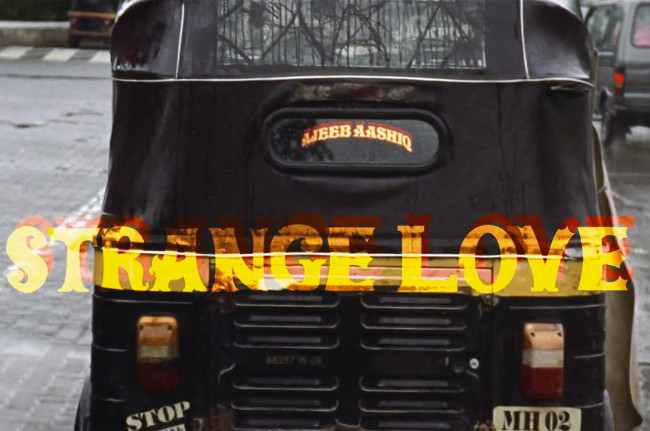
NOWs: Ajeeb Aashiq // Strange Love by Natasha Mendonca
NOWs:
Ajeeb Aashiq // Strange Love, HD, Color, 75 min, o.v. Hindi/English
A docu–fiction hybrid film Ajeeb Aashiq // Strange Love by filmmaker Natasha Mendonca features a stylish working class transgender rickshaw driver Khush/Amal who chauffeurs a singer named Suman on her nightly performances and Bollywood trysts; their lives intersect in a contemporary portrait of Mumbai. Unrequited love, betrayal, and a complex friendship change the course of their lives and builds a larger narrative of city hustle in a thriving megalopolis, known as the maximum city.
Ajeeb is an Urdu word for strange or unexplainable, and Aashiq translates as lover. This film is primarily a story of desire – a desire to live and love beyond ones reality in a world hell bent on making one face that longing for escape. The film plays out issues of class and gender in a thriving over populated Metropolis by night and investigates how attitudes to love, sex and relationship are informed by the entertainment industry. The intimate gaze paints the portrait of a city hanging in the balance, skewed by poverty and class divide on the one hand, united on the other hand by the characters’ longing and pursuit of a utopia.
Through process-based filmmaking the film explores the lives of working class gender outlaws, sex-work, HIV, desire, and friendship. The film invests less in narrative progression. It allows the story to unfurl by exploring the physical and psychological landscape of all three main characters: Sunam, Khush/Amal and Bombay city. The film is also a document about the creation of a fiction, which overtakes the proceedings at points only to recede again. It is as much about the making of this fiction, about finding the right characters to play the parts, incorporating their real lives into the film, as much as it is about the story itself.
The cast of the film includes Mumbai-based Khush Mishra and singer-songwriter Suman Sridhar in a lead role with her original music alongside theatre actor Jim Sarbh.
The film will be presented at the XPOSED International Queer Film Festival in Berlin on May 19, 21:00 at Moviemento: Ajeeb Aashiq // Strange Love by Natasha Mendonca / India / 2016 / 75 mins. The film has received the Hubert Bals Fund, 2011 for production and was selected to be part of Open Doors at the Locarno Film Festival 2011. The world premiere was at the 45th International Film Festival, Rotterdam, February 2016. The film has been nominated for the Bright Future Award.
–
NOWs:
Ajeeb Aashiq // Strange Love, HD, Color, 75 min, o.v. Hindi/English
A docu–fiction hybrid film Ajeeb Aashiq // Strange Love by filmmaker Natasha Mendonca features a stylish working class transgender rickshaw driver Khush/Amal who chauffeurs a singer named Suman on her nightly performances and Bollywood trysts; their lives intersect in a contemporary portrait of Mumbai. Unrequited love, betrayal, and a complex friendship change the course of their lives and builds a larger narrative of city hustle in a thriving megalopolis, known as the maximum city.
Ajeeb is an Urdu word for strange or unexplainable, and Aashiq translates as lover. This film is primarily a story of desire – a desire to live and love beyond ones reality in a world hell bent on making one face that longing for escape. The film plays out issues of class and gender in a thriving over populated Metropolis by night and investigates how attitudes to love, sex and relationship are informed by the entertainment industry. The intimate gaze paints the portrait of a city hanging in the balance, skewed by poverty and class divide on the one hand, united on the other hand by the characters’ longing and pursuit of a utopia.
Through process-based filmmaking the film explores the lives of working class gender outlaws, sex-work, HIV, desire, and friendship. The film invests less in narrative progression. It allows the story to unfurl by exploring the physical and psychological landscape of all three main characters: Sunam, Khush/Amal and Bombay city. The film is also a document about the creation of a fiction, which overtakes the proceedings at points only to recede again. It is as much about the making of this fiction, about finding the right characters to play the parts, incorporating their real lives into the film, as much as it is about the story itself.
The cast of the film includes Mumbai-based Khush Mishra and singer-songwriter Suman Sridhar in a lead role with her original music alongside theatre actor Jim Sarbh.
The film will be presented at the XPOSED International Queer Film Festival in Berlin on May 19, 21:00 at Moviemento: Ajeeb Aashiq // Strange Love by Natasha Mendonca / India / 2016 / 75 mins. The film has received the Hubert Bals Fund, 2011 for production and was selected to be part of Open Doors at the Locarno Film Festival 2011. The world premiere was at the 45th International Film Festival, Rotterdam, February 2016. The film has been nominated for the Bright Future Award.
–
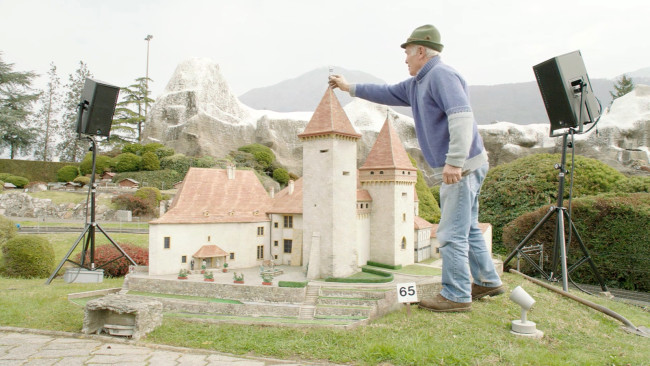
NOWs: History Sugar Dream – Expedition by Brändli&Holliger
NOWs:
Basel based artist Gregor Brändli and Jeremias Holliger call their experimental film “History Sugar Dream – Expedition” a poetic counter proposition if compared to popular music videos. The film is produced in conjunction with the new album by Post-Jazz-Trio RUSCONI. Thurday, May 19, 2016 the film “History Sugar Dream – Expedition” by Gregor Brändli & Jeremias Holliger is presented at Alpinen Museum Bern. Find a short introduction trailer on art-tv.ch.
Excerpt: History Sugar Dream - Expedition, 2014, experimental film, 56 min., Gregor Brändli & Jeremias Holliger, Stadtkino Basel, CH (2014)
TWISTED (RUSCONI) by Brändli&Holliger (official. right!)
The song TWISTED as an extract of the poetic “Expedition History Sugar Dream” – a playful journey through Switzerland, in which scenes and situations are filled with the sound of RUSCONI’s latest record ‘History Sugar Dream’ – counterdraft to the well-known music-clip, an episodic film, that puts music-recordings and images into a scenic dialog – with a spatially and timely uncertain ending. It is going to be examined how RUSCONI’s music sounds and echos in different surroundings. The Expedition History Sugar Dream leads you through Switzerland in eight days. Starting at Swissminiatur via Porta Alpina and inside the NEAT, into the backmost “Glarner Land”, to lions and tigers, into a henhouse and an indoor-skifacility.
The filmmaker and fotografer Gregor Brändli, being asked by the band RUSCONI in autumn 2013, developed the concept together with the artist Jeremias Holliger. With a seven-headed crew the expedition started on March 10th 2014.
NOWs:
Als poetischen Gegenentwurf zu gängigen Musikvideos bezeichnen die Basler Künstler Gregor Brändli und Jeremias Holliger ihren Experimentalfilm «History Sugar Dream» zum neuen gleichnamigen Album des Schweizer Post-Jazz-Trios RUSCONI. Der Film wird am Donnerstag, 19. Mai 2016 im Alpinen Museum Bern gezeigt. Einen Vorgeschmack gibt der Info-Trailer von art-tv.ch.
Excerpt: History Sugar Dream - Expedition, 2014, experimental film, 56 min., Gregor Brändli & Jeremias Holliger, Stadtkino Basel, CH (2014)
TWISTED (RUSCONI) by Brändli&Holliger (official. right!)
Der Song TWISTED ist ein Auszug aus der experimentellen Film-Expedition «History Sugar Dream», eine poetische Reise durch die Schweiz, auf der Orte und Situationen mit RUSCONIs «History Sugar Dream» beschallt werden. Ein Gegenentwurf zum Musikvideo, ein Episodenfilm, der Musikaufnahmen und Filmbilder in einen szenischen Dialog setzt, mit zeitlich und räumlich ungewissem Ausgang. Untersucht wird, wie die Musik von RUSCONI an verschiedenen Orten klingt und nachhallt. Die Expedition «History Sugar Dream» führt in acht Tagen durch die Schweiz. Ausgehend von Swissminiatur zur Porta Alpina ins Innere der NEAT, ins hinterste Glarnerland, zu Löwen und Tigern, in einen Hühnerstall, in eine Indoor-Skianlage.
Im Herbst 2013 von RUSCONI angefragt, entwickelte der Filmemacher und Fotograf Gregor Brändli zusammen mit dem Künstler Jeremias Holliger das Filmkonzept. Mit einer siebenköpfigen Crew begann am 10. März 2014 die Expedition «History Sugar Dream».
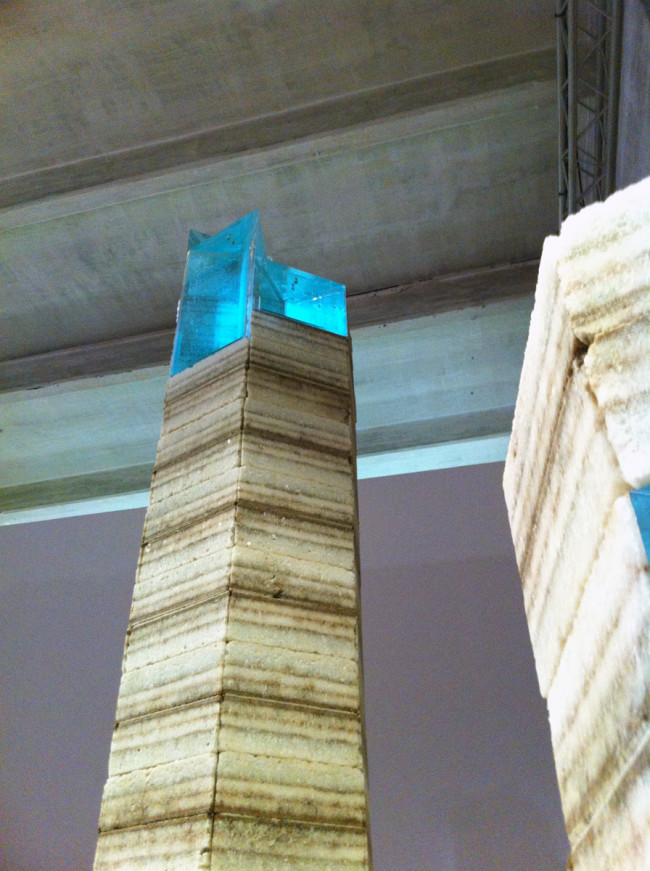
NOWs: Future Fossil Spaces by Julian Charrière
NOWs:
Julian Charrière:
Future Fossil Spaces
at
Viva Arte Viva, curated by Christine Macel
57th International Art Exhibition, Venice Biennale, Venice
–
In his book Tristes Tropiques, the anthropologist Claude Lévi-Strauss writes that he wished to have lived fifty years earlier, “in the days of real journeys, when it was still possible to see the full splendour of a spectacle that had not yet been blighted, polluted and spoilt.” More than fifty years later, the artist Julian Charrière travels to Bolivia, to the Salar de Uyuni, the world’s largest salt flat. It still spreads out before the artist’s eye as an infinitely vast white salt crust scabbed in polygonal patterns. Yet over the next fifty years, the treasure it harbors, the largest lithium deposit in the world, will drive a dramatic transformation of this landscape: lithium, now a vital component of the digital world’s batteries, has emerged as a resource of inestimable value for Bolivia, and mining will begin in the near future.
Charrière is interested in the relationship between contemporary civilization and the world of geology, which has existed since time immemorial and ultimately sustains modern life. Like an anthropologist from the future who studies the present and conceies of the world as a network of human and non-human beings in which people, things, and nature are closely interdependent, making it impossible to isolate the environment, Charrière brings materials back home from his ‘fieldwork’; from the trip to the Salar de Uyuni, he returns with a large quantity of salt sediment in lumps he uses to build an installation in the Arsenale that oscillates between topography and landscape. Material turns into representation; the installation becomes a negative space of the mined salt that leaves a new cavity, a Future Fossil Space, in Bolivia, while guiding the visitor in Venice through a heaped mountain landscape, its layout hexagonal in imitation of the scabs on the salt crust. The earth’s interior is wrestled to the surface, and the primeval landscape that was buried when the Andes broke open and lakes appeared is brought back to the surface as an essence. With a nod to the hexagonal rooms of the library in Jorge Luis Borges’s story The Library of Babel, the artist’s interest concerns the body of knowledge that is stored in the salt segments. Meanwhile, the title Future Fossil Spaces refers to future spaces that will be created inside the earth by the mining operations, the traces that the digital era will engender and that he brings back into the present by displaying the raw material of the digital as an artifact from the past. The artist-anthropologist designs an early mausoleum for the geological age of the digital, offering, as a counterpart to the internet, a physical and tactile experience. Ironically enough, that experience demonstrates that the enlargement of the virtual world requires a hollowing-out of the world of natural resources. It is a narrative of matter reporting on the virtual, material culture that grapples with the progress of our information society; impartial and as real as it is relevant in a world of plural realities.
–
Julian Charrière: Future Fossil Spaces, 2017. Salt from the Salar de Uyuni, acrylic-containers filled with lithium-brine. Dimensions variable. Installation view: La Biennale di Venezia, Arsenale, 57th International Art Exhibition „Viva Arte Viva“ (curated by Christine Macel)
©Julian Charrière; VG Bild-Kunst, Bonn, Germany
Courtesy: BUGADA & CARGNEL, Paris, France; DITTRICH & SCHLECHTRIEM,
Berlin, Germany; Galerie Tschudi, Zuoz, Switzerland; Sean Kelly Gallery, New York,
NY, USA; Sies + Höke Galerie, Düsseldorf, Germany
NOWs:
Julian Charrière:
Future Fossil Spaces
at
Viva Arte Viva, curated by Christine Macel
57th International Art Exhibition, Venice Biennale, Venice
–
In his book Tristes Tropiques, the anthropologist Claude Lévi-Strauss writes that he wished to have lived fifty years earlier, “in the days of real journeys, when it was still possible to see the full splendour of a spectacle that had not yet been blighted, polluted and spoilt.” More than fifty years later, the artist Julian Charrière travels to Bolivia, to the Salar de Uyuni, the world’s largest salt flat. It still spreads out before the artist’s eye as an infinitely vast white salt crust scabbed in polygonal patterns. Yet over the next fifty years, the treasure it harbors, the largest lithium deposit in the world, will drive a dramatic transformation of this landscape: lithium, now a vital component of the digital world’s batteries, has emerged as a resource of inestimable value for Bolivia, and mining will begin in the near future.
Charrière is interested in the relationship between contemporary civilization and the world of geology, which has existed since time immemorial and ultimately sustains modern life. Like an anthropologist from the future who studies the present and conceies of the world as a network of human and non-human beings in which people, things, and nature are closely interdependent, making it impossible to isolate the environment, Charrière brings materials back home from his ‘fieldwork’; from the trip to the Salar de Uyuni, he returns with a large quantity of salt sediment in lumps he uses to build an installation in the Arsenale that oscillates between topography and landscape. Material turns into representation; the installation becomes a negative space of the mined salt that leaves a new cavity, a Future Fossil Space, in Bolivia, while guiding the visitor in Venice through a heaped mountain landscape, its layout hexagonal in imitation of the scabs on the salt crust. The earth’s interior is wrestled to the surface, and the primeval landscape that was buried when the Andes broke open and lakes appeared is brought back to the surface as an essence. With a nod to the hexagonal rooms of the library in Jorge Luis Borges’s story The Library of Babel, the artist’s interest concerns the body of knowledge that is stored in the salt segments. Meanwhile, the title Future Fossil Spaces refers to future spaces that will be created inside the earth by the mining operations, the traces that the digital era will engender and that he brings back into the present by displaying the raw material of the digital as an artifact from the past. The artist-anthropologist designs an early mausoleum for the geological age of the digital, offering, as a counterpart to the internet, a physical and tactile experience. Ironically enough, that experience demonstrates that the enlargement of the virtual world requires a hollowing-out of the world of natural resources. It is a narrative of matter reporting on the virtual, material culture that grapples with the progress of our information society; impartial and as real as it is relevant in a world of plural realities.
–
Julian Charrière: Future Fossil Spaces, 2017. Salt from the Salar de Uyuni, acrylic-containers filled with lithium-brine. Dimensions variable. Installation view: La Biennale di Venezia, Arsenale, 57th International Art Exhibition „Viva Arte Viva“ (curated by Christine Macel)
©Julian Charrière; VG Bild-Kunst, Bonn, Germany
Courtesy: BUGADA & CARGNEL, Paris, France; DITTRICH & SCHLECHTRIEM,
Berlin, Germany; Galerie Tschudi, Zuoz, Switzerland; Sean Kelly Gallery, New York,
NY, USA; Sies + Höke Galerie, Düsseldorf, Germany
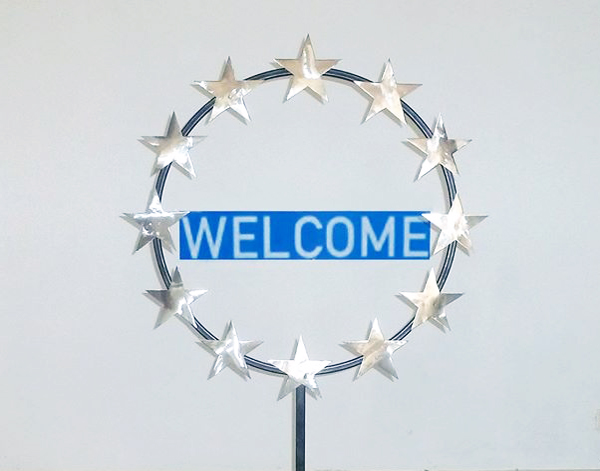
NOWs: Time Lost by Timea Anita Oravecz
NOWs:
Timea Anita Oravecz, Installationview: Windless, Variations for the Eu Flag Nr.2., 2016 and Welcome to EU, 2016
Timea Anita Oravecz, Detail: Windless, Variations for the Eu Flag Nr.2., 2016
Timea Anita Oravecz, Installationview: Windless, Variations for the Eu Flag Nr.1., 2016
Timea Anita Oravecz relates contemporary narratives of social and professional mobility from the periphery to the center(s). Her work and stories embedded in those unfold in the various cities of the allegedly borderless European Union. Her most recent works Welcome to EU, 2016 and Variations for the EU Flag Nr.2., 2016 reflecting the ambivilance of EU’s representation and symbols are on view at OKK – Organ kritischer Kunst from 29 April to 1 May 2016.
Works from her Time Lost (Series), 2015-2017, present a personal approach looking at the experience of travel and crossing borders from the artists perspective and background:
“In the pieces, the artist foregrounds some salient aspects of her personal and artistic identity: her Central European origin is exposed in some works – like in the Time Lost (Series) –, while several other projects explicitly narrate her history of itinerancy from the perspective of her working-class background. (…) Taking the shape of embroideries, Time Lost (Series), 2015-2017, presents the administrative documents for which the artist had to apply during the nine years she spent travelling in a presumably borderless and united Europe as an art student and scholarship holder from Central Europe. Oravecz tried to meet the bureaucratic requirements as best as she could. Accordingly, she embroidered every letter, code, stamp and signature on the „forms“, even though the task proved time-consuming, senseless and, due to the countless details, simply impossible – not to mention that she occasionally hurt herself with the needle,” writes Beata Hock.
Timea Anita Oravecz presents a selection of works from the Time Lost (Series) in the context of the exhibition The Travellers at Zachęta – National Gallery of Art in Warsaw from 14 May to 21 August 2016. By looking at the experience of voyage and migration in the art of Central and Eastern Europe, the exhibition sheds light on the contemporary identity of the region.
Timea Anita Oravecz: Time Lost Nr III (Series), 2008, hand embroidery on fabric
Timea Anita Oravecz: Time Lost Nr II (Series), 2008, hand embroidery on fabric
Timea Anita Oravecz: Time Lost Nr IV (Series), 2015, hand embroidery on fabric
NOWs:
Timea Anita Oravecz, Installationview: Windless, Variations for the Eu Flag Nr.2., 2016 and Welcome to EU, 2016
Timea Anita Oravecz, Detail: Windless, Variations for the Eu Flag Nr.2., 2016
Timea Anita Oravecz, Installationview: Windless, Variations for the Eu Flag Nr.1., 2016
Timea Anita Oravecz relates contemporary narratives of social and professional mobility from the periphery to the center(s). Her work and stories embedded in those unfold in the various cities of the allegedly borderless European Union. Her most recent works Welcome to EU, 2016 and Variations for the EU Flag Nr.2., 2016 reflecting the ambivilance of EU’s representation and symbols are on view at OKK – Organ kritischer Kunst from 29 April to 1 May 2016.
Works from her Time Lost (Series), 2015-2017, present a personal approach looking at the experience of travel and crossing borders from the artists perspective and background:
“In the pieces, the artist foregrounds some salient aspects of her personal and artistic identity: her Central European origin is exposed in some works – like in the Time Lost (Series) –, while several other projects explicitly narrate her history of itinerancy from the perspective of her working-class background. (…) Taking the shape of embroideries, Time Lost (Series), 2015-2017, presents the administrative documents for which the artist had to apply during the nine years she spent travelling in a presumably borderless and united Europe as an art student and scholarship holder from Central Europe. Oravecz tried to meet the bureaucratic requirements as best as she could. Accordingly, she embroidered every letter, code, stamp and signature on the „forms“, even though the task proved time-consuming, senseless and, due to the countless details, simply impossible – not to mention that she occasionally hurt herself with the needle,” writes Beata Hock.
Timea Anita Oravecz presents a selection of works from the Time Lost (Series) in the context of the exhibition The Travellers at Zachęta – National Gallery of Art in Warsaw from 14 May to 21 August 2016. By looking at the experience of voyage and migration in the art of Central and Eastern Europe, the exhibition sheds light on the contemporary identity of the region.
Timea Anita Oravecz: Time Lost Nr III (Series), 2008, hand embroidery on fabric
Timea Anita Oravecz: Time Lost Nr II (Series), 2008, hand embroidery on fabric
Timea Anita Oravecz: Time Lost Nr IV (Series), 2015, hand embroidery on fabric
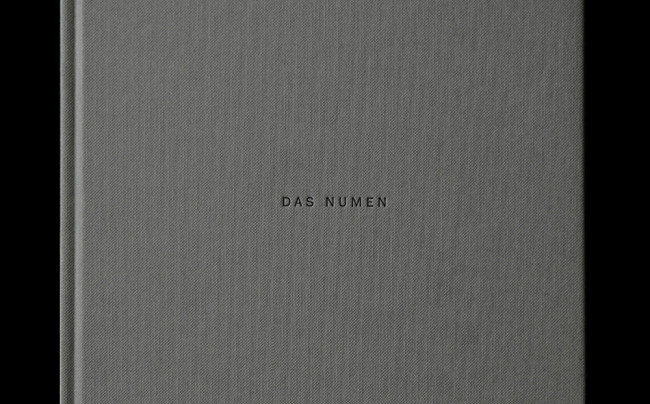
NOWs: Book Release by Das Numen
NOWs:
Das Numen, Berlin-based artists’ collective of Julian Charrière, Andreas Greiner, Markus Hoffmann, and Felix Kiessling, introduces its first mono-graphic publication by the same name, ‘Das Numen’. The book includes recent and previous projects and a associative reflection on these by Melanie Franke, Carson Chan, Paul Feigelfeld and Otto E. Roessler. The reader is taken on a journey through interlocking references and his own individual experience.
The release is accompanied by a reading performance that will take place in the DAZ. ‘The Numen Chorus’ de- and reconstructs the different text layers of the publication with a distinctive noise. The result is a tangible sound experience created by four overlaying reading voices. Readings by: Paul Feigelfeld, Lucas Töpfer, Melanie Franke, Toni Jessen and Anja Schwanhäußer.
A bar will offer local cocktails and a hub for the visitors to discuss both the publication and the ideas behind ‘Das Numen’. The launch will be celebrated with specially transformed cocktails made with purified, site-specific water that has been sourced from the Spree river.
The evening will be held in German and English.
Meet Das Numen at Deutsches Architektur Zentrum DAZ, Friday, May 13, 2016, 7 p.m.
NOWs:
Das Numen, Berlin-based artists’ collective of Julian Charrière, Andreas Greiner, Markus Hoffmann, and Felix Kiessling, introduces its first mono-graphic publication by the same name, ‘Das Numen’. The book includes recent and previous projects and a associative reflection on these by Melanie Franke, Carson Chan, Paul Feigelfeld and Otto E. Roessler. The reader is taken on a journey through interlocking references and his own individual experience.
The release is accompanied by a reading performance that will take place in the DAZ. ‘The Numen Chorus’ de- and reconstructs the different text layers of the publication with a distinctive noise. The result is a tangible sound experience created by four overlaying reading voices. Readings by: Paul Feigelfeld, Lucas Töpfer, Melanie Franke, Toni Jessen and Anja Schwanhäußer.
A bar will offer local cocktails and a hub for the visitors to discuss both the publication and the ideas behind ‘Das Numen’. The launch will be celebrated with specially transformed cocktails made with purified, site-specific water that has been sourced from the Spree river.
The evening will be held in German and English.
Meet Das Numen at Deutsches Architektur Zentrum DAZ, Friday, May 13, 2016, 7 p.m.
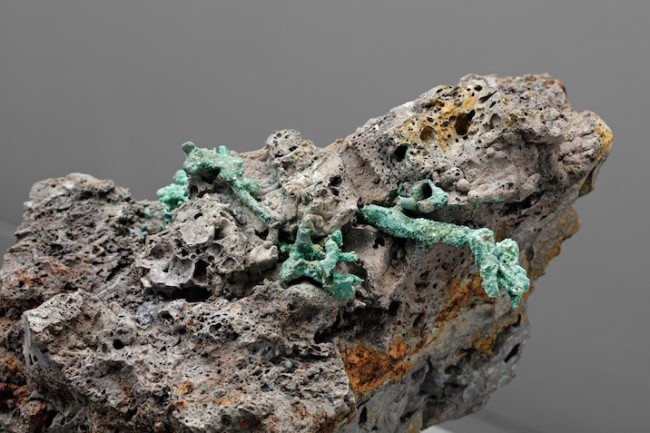
NOWs: Into the Hollow by Julian Charrière
NOWs:
Julian Charriere, Metamorphism XIV, 2016 © Julian Charriere, VG Bild-Kunst, Bonn
For his exhibition “Into the Hollow”, Julian Charrière transforms the space at gallery Dittrich & Schlechtriem into a cabinet of geological curiosities from a possible post-digital era. Selected pieces of manipulated molten rock are displayed in vitrines like topological fragments in a natural history museum from a time yet to come. The presented objects are hybrids of congealed magma. Charrière has melted, transmuted and amalgamated current technological gadgets (smartphones, notebooks, hard drives etc.), including their stored memory, within molten rock.
The minerals used for those technical devices are excavated at different locations around the world, then shipped to countries like India, China or the United States to be assembled into technological devices, a process that may be considered a cultural crystallization of a globalized production scheme. Materials sourced from various geographies are brought together in physical objects by which we are all digitally connected. When these become outdated they are sent to e-waste sites, where they are handpicked and separated in order to fuel more technology, thus re-entering the circulation process. Julian Charrière interrupts this recycling flow by prematurely transmuting these delicate devices. Through this forcible intervention, he initiates a geo-artistic reflection on our digital consumer culture, a ‘geo-reset’: back to the future.
A full exhibition catalog including a text by Paul Feigelfeld will be published and available through the gallery. An interview with Julian Charrière on “Fossiling the Future” by Penny Victoria Rafferty is featured in sleek magazine.
“Into the Hollow” is on display at Dittrich & Schlechtriem from 29 April until 25 June 2016.
Julian Charriere, Metamorphism XVII (Detail), 2016, © Julian Charriere, VG Bild-Kunst, Bonn; Courtesy Dittrich & Schlechtriem, Berlin; photo Hans-Georg Gaul
Julian Charriere, Metamorphism XIX (Detail), 2016, © Julian Charriere, VG Bild-Kunst, Bonn; Courtesy Dittrich & Schlechtriem, Berlin; photo Hans-Georg Gaul
Julian Charriere, Installlationview Into the Hollow at Dittrich & Schlechtriem, 2016, © Julian Charriere, VG Bild-Kunst, Bonn; Courtesy Dittrich & Schlechtriem, Berlin; photo Hans-Georg Gaul
Julian Charriere, Installationview: Into the Hollow at Dittrich & Schlechtriem, 2016, © Julian Charriere, VG Bild-Kunst, Bonn; Courtesy Dittrich & Schlechtriem, Berlin; photo Hans-Georg Gaul
NOWS:
Julian Charriere, Metamorphism XIV, 2016 © Julian Charriere, VG Bild-Kunst, Bonn
Für seine seine Ausstellung „Into the Hollow“ hat Julian Charrière die Räumlichkeiten der Galerie Dittrich & Schlechtriem in ein geologisches Kuriositätenkabinett aus einer möglichen postdigitalen Ära verwandeln. Die Installation zeigt ausgewählte und bearbeitete Stücke geschmolzenen Gesteins in Glaskästen wie topologische Fragmente in einem Museum für Naturgeschichte der fernen Zukunft. Die ausgestellten Objekte sind Hybride aus erstarrtem Magma. Charrière hat sie aufgeschmolzen und umgewandelt und dabei technische Apparate von heute (Smartphones, Notebooks, Festplatten usw.) mitsamt den auf ihnen gespeicherten Daten in das flüssige Gestein eingebettet.
Die seltene Erden, die in solche technischen Geräte verarbeitet sind, werden an verschiedenen Orten rund um den Erdball abgebaut und dann in Länder wie Indien, China oder die Vereinigten Staaten transportiert, um dort zu technischen Geräten zusammengesetzt zu werden; in diesem Vorgang nimmt ein globales Ensemble von Produktionsprozessen gewissermaßen kulturelle Gestalt an. Materialien, die den verschiedensten geografischen Zusammenhängen entstammen, verbinden sich zu physischen Objekten, die uns alle digital miteinander verknüpfen.
Wenn diese veralten, landen sie auf Elektroschrotthalden, wo sie von Hand sortiert und getrennt werden, um neuen Technologien als Nahrung zu dienen und so in den Zirkulationsprozess zurückzukehren. Julian Charrière unterbricht den Recyclingkreislauf, indem er die empfindlichen Geräte vor der Zeit in etwas ganz anderes verwandelt. Mit diesem gewaltsamen Eingriff stößt er eine geo-künstlerische Reflexion auf unsere digitale Konsumkultur, ein ‚Geo-Reset‘ an: Zurück in die Zukunft.
Ein umfangreicher Katalog mit einem Essay von Paul Feigelfeld ist über Galerie erhältlich. Ein aktuelles Interview mit Julian Charrière über “Fossiling the Future” von Penny Victoria Rafferty veröffentlicht sleek magazine.
“Into the Hollow” ist vom 29. April bis 25. Juni 2016 in der Galerie Dittrich & Schlechtriem zusehen.
Julian Charriere, Metamorphism XVII (Detail), 2016, © Julian Charriere, VG Bild-Kunst, Bonn; Courtesy Dittrich & Schlechtriem, Berlin; photo Hans-Georg Gaul
Julian Charriere, Metamorphism XIX (Detail), 2016, © Julian Charriere, VG Bild-Kunst, Bonn; Courtesy Dittrich & Schlechtriem, Berlin; photo Hans-Georg Gaul
Julian Charriere, Installationview: Into the Hollow at Dittrich & Schlechtriem, 2016, © Julian Charriere, VG Bild-Kunst, Bonn; Courtesy Dittrich & Schlechtriem, Berlin; photo Hans-Georg Gaul
Julian Charriere, Installationview: Into the Hollow at Dittrich & Schlechtriem, 2016, © Julian Charriere, VG Bild-Kunst, Bonn; Courtesy Dittrich & Schlechtriem, Berlin; photo Hans-Georg Gaul
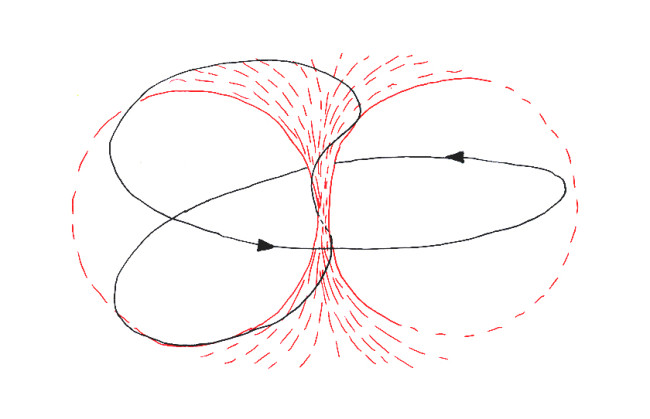
NOWs: Approximately 3 Dimensions by Julius von Bismarck
NOWs:
Julius von Bismarck: Self-Revolving Torus (Silver), 2016 and Platonic Birth, 2016
For his exhibition Approximately Three Dimensions, Julius von Bismarck created artworks that examine three or more dimensions from all angles. To make a hole, three dimensions are necessary. In the two-dimensions of the iconic thought experiment Flatland, organisms that sustain their existence through a digestive system characterized by two holes, would find themselves split in two along the hole-connecting tube. And if such a punctured, three-dimensional body starts turning itself inside-out through the central hole, it acts out something like the fourth dimension, as imagined from its 3-D perspective.
In the video installation Space Beyond Me he translates two spatial and one temporal dimensions into three spatial ones. In Self-Revolving Torus, the artist uses the analogy of a torus that seems to continuously devour and disgorge itself, to explain the fourth spatial dimension. Finally, in Platonic Birth, a torusresembling opening forces out platonic bodies from the space within. A sense of inevitability characterizes the exhibition, much like the more or less three dimensions that continuously permeate the observer.
Space Beyond Me: Inside the rusty cylindrical room that is constructed using recycled tunnel lining, a film is projected onto the wall, which has been coated with phosphorescent paint. The UV projector at the center of this space mimics the movements performed by the camera, which, at the time, had recorded the film material. It uses a program, developed by the artist, which analyzes found footage to precisely determine the original movement of the camera in terms of three axes: rotation, angle, and zoom. The exact deconstruction of the movements is transferred to the projector, a modified 16mm camera, which carries out these motions as if choreographed. At the end of the projection, all scenes appear on the wall at their correct location. In this manner a time-based medium is transposed onto a spatial medium. The filmed scenario consists of two spatial dimensions and the component of time. The spatial perception of the viewer engages with the landscape glowing on the walls of the projection space to translate this surface back into three spatial dimensions that are independent of time. The film documents a naked man in a desert, who, with difficulty, navigates his way through the dimensions of the monotonous landscape. Any historical and geographical indicators are undecipherable. The viewer cannot tell when and where the film might have been produced, just as she can only wonder at the tunnels that may at one point have been contained by the walls
that surround her now.
Self-Revolving Torus: Five tori, ranging from 40 cm to 1m 40cm in diameter, are shuffling across the floor, animated by their self-revolving surface. Powered by an internal motor, the skin rotates through the central hole, turning the body inside-out. The tori seem alive: yet unknown creatures – furry, plush, clad in leather – that travel the world’s seemingly flat surface by self-absorption and -ejection. Standing amidst these moving bodies, the observer ponders the energetic inward-folding that might be, at this moment, devouring his own body in the fourth dimension.
Platonic Birth: Platonic solids are exhibited below a video that shows their emergence from a torus-resembling opening. Platonic solids have, for thousands of years, expressed the mathematical poetry intrinsic to the four elements and a more ephemeral fifth substance. The video oscillates between three dimensions and infinity, as it describes the birth of the universe or the absurdity of imaging four or more dimensions from within a three-dimensional skull.
The exhibition “Approximately 3 Dimensions” by Julius von Bismarck at alexander levy will be on from April 29 to June 11, 2016.
Julius von Bismarck: Self-Revolving Torus (Synthetic leather), 2016
Installationview, Julius von Bismarck: Approximately 3 Dimensions at Alexander Levy
NOWs:
Julius von Bismarck: Self-Revolving Torus (Silver), 2016 and Platonic Birth, 2016
For his exhibition Approximately Three Dimensions, Julius von Bismarck created artworks that examine three or more dimensions from all angles. To make a hole, three dimensions are necessary. In the two-dimensions of the iconic thought experiment Flatland, organisms that sustain their existence through a digestive system characterized by two holes, would find themselves split in two along the hole-connecting tube. And if such a punctured, three-dimensional body starts turning itself inside-out through the central hole, it acts out something like the fourth dimension, as imagined from its 3-D perspective.
In the video installation Space Beyond Me he translates two spatial and one temporal dimensions into three spatial ones. In Self-Revolving Torus, the artist uses the analogy of a torus that seems to continuously devour and disgorge itself, to explain the fourth spatial dimension. Finally, in Platonic Birth, a torusresembling opening forces out platonic bodies from the space within. A sense of inevitability characterizes the exhibition, much like the more or less three dimensions that continuously permeate the observer.
Space Beyond Me: Inside the rusty cylindrical room that is constructed using recycled tunnel lining, a film is projected onto the wall, which has been coated with phosphorescent paint. The UV projector at the center of this space mimics the movements performed by the camera, which, at the time, had recorded the film material. It uses a program, developed by the artist, which analyzes found footage to precisely determine the original movement of the camera in terms of three axes: rotation, angle, and zoom. The exact deconstruction of the movements is transferred to the projector, a modified 16mm camera, which carries out these motions as if choreographed. At the end of the projection, all scenes appear on the wall at their correct location. In this manner a time-based medium is transposed onto a spatial medium. The filmed scenario consists of two spatial dimensions and the component of time. The spatial perception of the viewer engages with the landscape glowing on the walls of the projection space to translate this surface back into three spatial dimensions that are independent of time. The film documents a naked man in a desert, who, with difficulty, navigates his way through the dimensions of the monotonous landscape. Any historical and geographical indicators are undecipherable. The viewer cannot tell when and where the film might have been produced, just as she can only wonder at the tunnels that may at one point have been contained by the walls
that surround her now.
Self-Revolving Torus: Five tori, ranging from 40 cm to 1m 40cm in diameter, are shuffling across the floor, animated by their self-revolving surface. Powered by an internal motor, the skin rotates through the central hole, turning the body inside-out. The tori seem alive: yet unknown creatures – furry, plush, clad in leather – that travel the world’s seemingly flat surface by self-absorption and -ejection. Standing amidst these moving bodies, the observer ponders the energetic inward-folding that might be, at this moment, devouring his own body in the fourth dimension.
Platonic Birth: Platonic solids are exhibited below a video that shows their emergence from a torus-resembling opening. Platonic solids have, for thousands of years, expressed the mathematical poetry intrinsic to the four elements and a more ephemeral fifth substance. The video oscillates between three dimensions and infinity, as it describes the birth of the universe or the absurdity of imaging four or more dimensions from within a three-dimensional skull.
The exhibition “Approximately 3 Dimensions” by Julius von Bismarck at alexander levy will be on from April 29 to June 11, 2016.
Julius von Bismarck: Self-Revolving Torus (Synthetic leather), 2016
Installationview, Julius von Bismarck: Approximately 3 Dimensions at Alexander Levy
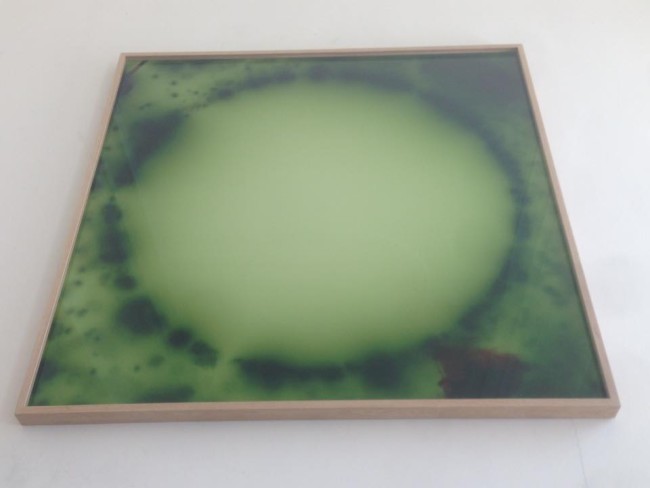
NOWs: Pure Chance by Markus Hoffmann
NOWs:
Pure Chance, Markus Hoffmann, 2015
—
Pure Chance consists of four dice made of uranium-rich ore, two dice cups of black leather and 34 transparent blisters filled with the 17 rare earth elements, arranged on a black felt playing field of 180 x 240 cm and a wood disc of a 180 year ols Oak tree cut down in an area that sufferd strongly from the acidic rain creaated by the incident of Tschernobyl casted in Aluminium.
—
Game Manual: References in the game Pure Chance
The Principle of Random Generators:
There are two principal methods used to generate random numbers. The first method measures a physical phenomenon that is expected to be random, subsequently compensating for possible biases in the measurement process. Example sources include measuring atmospheric noise, thermal noise and other external electromagnetic and quantum phenomena. For example, cosmic background radiation or radioactive decay as measured over short time scales represent sources of natural entropy.
The second method uses computational algorithms that can produce long sequences of apparently random results, which are in fact completely determined by a shorter initial value (known as a seed value or key). As a result, the entire seemingly random sequence can be reproduced if the seed value is known. This type of random number generator is often called a pseudorandom number generator and does not typically rely on sources of naturally occurring entropy, although it may be periodically seeded by natural sources. Furthermore, this type is non-blocking and is thus not rate-limited by an external event, rendering large bulk reads a possibility. Throwing a dice made of uranium, unite/merge the two possible systems of random generators: Pure Chance.
The Rare Earths:
The Japanese call them “the seeds of technology.” The US Department of Energy calls them “technology metals.” Regardless of the terminology, these elements make the high tech world we live in today possible – everything from the miniaturization of electronics, to the enabling
of green energy and medical technologies, to supporting a myriad of essential telecommunications and defence systems. Due to their unique magnetic, phosphorescent and catalytic properties, these are the elements that have become irreplaceable to our world of technology.
Rare earth elements are a set of seventeen chemical elements in the periodic table, specifically the fifteen lanthanides plus scandium and yttrium. Scandium and yttrium are considered rare earth elements as they tend to occur in the same ore deposits as the lanthanides and exhibit similar chemical properties. Despite their name, Rare Earths are, in fact, fairly commonplace and are relatively abundant in the Earth‘s crust. Nevertheless, it is unusual to find them in quantities significant enough to support the current economic interest in mineral development.
From our smart phones to our latest weaponry, the technology forming the foundation for contemporary life would be impossible without rare earth metals. The importance of these elements continues to grow as emerging markets — including the renewable energy sector — increase their demand for technologies dependant on Rare Earths. Now a new study from researchers at Yale has found that many of the materials used in high tech products, including Rare Earth metals, have no satisfactory substitutes, underscoring not only our vulnerable reliance on them, but also the need to better manage these crucial resources.
Consequently, increased mining for these scarce resources can have some nasty side effects for the environment. China has intensively
mined for rare earths with little regulation, allowing it to dominate the global industry for the past 25 years. Despite this economic interest, China has acknowledged the significant environmental harm caused by the process. According to a white paper issued by the Chinese cabinet in June last year, “excessive Rare Earth mining has resulted in landslides, clogged rivers, environmental pollution emergencies and even major accidents and disasters, causing great damage to people’s safety and health and the ecological environment”.
The mining, refining and recycling of Rare Earths have serious environmental consequences if not properly managed. A particular hazard is mildly radioactive slurry tailings resulting from the common occurrence of thorium and uranium in rare earth element ores.
34 blisters full of rare earth minerals: currency; potential; hope; a tribute of mother earth and the fuel of the Anthropocene. Commodification of these materials implicitly results in destruction of the planet in order to build a reality delineating our relationship to that which was
once called nature.
Dice:
Dice are small objects to be thrown, exhibiting multiple resting positions and used for generating random numbers. In accordance with the laws of classical mechanics, the cast of the dice is determined by the way they are thrown. Rolling dice is inherently random due to uncertainty in minor factors, such as tiny movements in the thrower‘s hand. Consequently, dice represent a crude predecessor to the hardware
random number generator.
It is theorized that dice were originally made of the talus of hoofed animals — colloquially known as „knucklebones“ — and were used for predicting the future.
The Royal Game of Ur (also known as the Game of Twenty Squares) originated in Mesopotamia (modern Iraq) and dates back to about 3000 BC. The game was played with a set of pawns on a richly decorated board. This can be considered an ancient relative of the racing game and employed a set of knucklebone dice. Versions of the Royal Game of Ur were also known to be played in Egypt. A Babylonian treatise on the game written on clay tablet shows that the game had astronomical significance and that it could also be used to tell one‘s fortune.
The game‘s inherent modus operandi reveals the overt execution of chance; the rules can only be hazily made out through the guise of conditioned ignorance. This leads to a challenging future: the environment as the game board, setting the guidelines as a mirror of the rules for human development.
The works Pure Chance and Domarring by Markus Hoffmann are on show at Studio Picknick, Berlin, (Ausstellung zum Meisterschülerpreis des Präsidenten der Udk) from April 29 till May 14, 2016.
NOWs:
Pure Chance, Markus Hoffmann, 2015
—
Pure Chance consists of four dice made of uranium-rich ore, two dice cups of black leather and 34 transparent blisters filled with the 17 rare earth elements, arranged on a black felt playing field of 180 x 240 cm and a wood disc of a 180 year ols Oak tree cut down in an area that sufferd strongly from the acidic rain creaated by the incident of Tschernobyl casted in Aluminium.
—
Game Manual: References in the game Pure Chance
The Principle of Random Generators:
There are two principal methods used to generate random numbers. The first method measures a physical phenomenon that is expected to be random, subsequently compensating for possible biases in the measurement process. Example sources include measuring atmospheric noise, thermal noise and other external electromagnetic and quantum phenomena. For example, cosmic background radiation or radioactive decay as measured over short time scales represent sources of natural entropy.
The second method uses computational algorithms that can produce long sequences of apparently random results, which are in fact completely determined by a shorter initial value (known as a seed value or key). As a result, the entire seemingly random sequence can be reproduced if the seed value is known. This type of random number generator is often called a pseudorandom number generator and does not typically rely on sources of naturally occurring entropy, although it may be periodically seeded by natural sources. Furthermore, this type is non-blocking and is thus not rate-limited by an external event, rendering large bulk reads a possibility. Throwing a dice made of uranium, unite/merge the two possible systems of random generators: Pure Chance.
The Rare Earths:
The Japanese call them “the seeds of technology.” The US Department of Energy calls them “technology metals.” Regardless of the terminology, these elements make the high tech world we live in today possible – everything from the miniaturization of electronics, to the enabling
of green energy and medical technologies, to supporting a myriad of essential telecommunications and defence systems. Due to their unique magnetic, phosphorescent and catalytic properties, these are the elements that have become irreplaceable to our world of technology.
Rare earth elements are a set of seventeen chemical elements in the periodic table, specifically the fifteen lanthanides plus scandium and yttrium. Scandium and yttrium are considered rare earth elements as they tend to occur in the same ore deposits as the lanthanides and exhibit similar chemical properties. Despite their name, Rare Earths are, in fact, fairly commonplace and are relatively abundant in the Earth‘s crust. Nevertheless, it is unusual to find them in quantities significant enough to support the current economic interest in mineral development.
From our smart phones to our latest weaponry, the technology forming the foundation for contemporary life would be impossible without rare earth metals. The importance of these elements continues to grow as emerging markets — including the renewable energy sector — increase their demand for technologies dependant on Rare Earths. Now a new study from researchers at Yale has found that many of the materials used in high tech products, including Rare Earth metals, have no satisfactory substitutes, underscoring not only our vulnerable reliance on them, but also the need to better manage these crucial resources.
Consequently, increased mining for these scarce resources can have some nasty side effects for the environment. China has intensively
mined for rare earths with little regulation, allowing it to dominate the global industry for the past 25 years. Despite this economic interest, China has acknowledged the significant environmental harm caused by the process. According to a white paper issued by the Chinese cabinet in June last year, “excessive Rare Earth mining has resulted in landslides, clogged rivers, environmental pollution emergencies and even major accidents and disasters, causing great damage to people’s safety and health and the ecological environment”.
The mining, refining and recycling of Rare Earths have serious environmental consequences if not properly managed. A particular hazard is mildly radioactive slurry tailings resulting from the common occurrence of thorium and uranium in rare earth element ores.
34 blisters full of rare earth minerals: currency; potential; hope; a tribute of mother earth and the fuel of the Anthropocene. Commodification of these materials implicitly results in destruction of the planet in order to build a reality delineating our relationship to that which was
once called nature.
Dice:
Dice are small objects to be thrown, exhibiting multiple resting positions and used for generating random numbers. In accordance with the laws of classical mechanics, the cast of the dice is determined by the way they are thrown. Rolling dice is inherently random due to uncertainty in minor factors, such as tiny movements in the thrower‘s hand. Consequently, dice represent a crude predecessor to the hardware
random number generator.
It is theorized that dice were originally made of the talus of hoofed animals — colloquially known as „knucklebones“ — and were used for predicting the future.
The Royal Game of Ur (also known as the Game of Twenty Squares) originated in Mesopotamia (modern Iraq) and dates back to about 3000 BC. The game was played with a set of pawns on a richly decorated board. This can be considered an ancient relative of the racing game and employed a set of knucklebone dice. Versions of the Royal Game of Ur were also known to be played in Egypt. A Babylonian treatise on the game written on clay tablet shows that the game had astronomical significance and that it could also be used to tell one‘s fortune.
The game‘s inherent modus operandi reveals the overt execution of chance; the rules can only be hazily made out through the guise of conditioned ignorance. This leads to a challenging future: the environment as the game board, setting the guidelines as a mirror of the rules for human development.
The works Pure Chance and Domarring by Markus Hoffmann are on show at Studio Picknick, Berlin, (Ausstellung zum Meisterschülerpreis des Präsidenten der Udk) from April 29 till May 14, 2016.
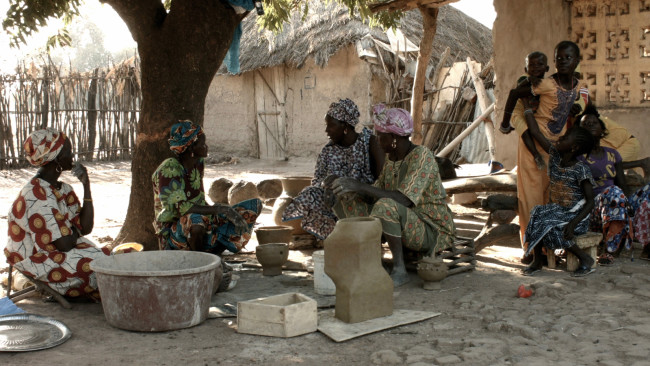
NOWs: Bumbu by Elise Eeraerts
NOWs:
Bumbu (21:43 min) by Elise Eeraerts
The video Bumbu by Elise Eeraerts has been produced in the context of Thread – Artist Residency & Cultural Center in Sinthian, a rural village in Tambacounda, Senegal, supported by the Josef and Anni Albers Foundation.
The video Bumbu by Elise Eeraerts evolved through a participatory, collaborative process with local craftswomen in Sinthian, Senegal. A series of ceramic objects was jointly created. Segments of each object were partly made by the women and partly by the artist; thus each object has more than one creator. The word ‘bumbu’ means the “beginning” or “foundation” of a pot, often the bottom part, which is produced by use of a mould. Eeraerts initiated the ceramic series, introducing geometrical forms form her artistic repertoire. In the video the geometrical, modular forms of the moulded “foundation” parts made by the Eeraerts contrast with the craftwomen’s traditional forms and techniques, yet inspire the new objects that evolve throughout the dialogical work process.
Elise Eerarts reflects: “Through the intensive collaboration process, we were actively involved with each other’s working habits and techniques. I could get a sense of various aspects during the making of the series. The video ‘bumbu’ shows the making of: from collecting materials in nature, such as earth, grass, dung, to processing the materials and shaping the objects. Towards the end of the film the younger generations appears more prominently in sequences that confront the previous framing of the traditional culture and crafts with digital media imagery that introduce another perspective to the present and the future of the rituals and life in the village’s culture.”
—
elise-eeraerts.be
NOWs:
Bumbu (21:43 min) by Elise Eeraerts
The video Bumbu by Elise Eeraerts has been produced in the context of Thread – Artist Residency & Cultural Center in Sinthian, a rural village in Tambacounda, Senegal, supported by the Josef and Anni Albers Foundation.
The video Bumbu by Elise Eeraerts evolved through a participatory, collaborative process with local craftswomen in Sinthian, Senegal. A series of ceramic objects was jointly created. Segments of each object were partly made by the women and partly by the artist; thus each object has more than one creator. The word ‘bumbu’ means the “beginning” or “foundation” of a pot, often the bottom part, which is produced by use of a mould. Eeraerts initiated the ceramic series, introducing geometrical forms form her artistic repertoire. In the video the geometrical, modular forms of the moulded “foundation” parts made by the Eeraerts contrast with the craftwomen’s traditional forms and techniques, yet inspire the new objects that evolve throughout the dialogical work process.
Elise Eerarts reflects: “Through the intensive collaboration process, we were actively involved with each other’s working habits and techniques. I could get a sense of various aspects during the making of the series. The video ‘bumbu’ shows the making of: from collecting materials in nature, such as earth, grass, dung, to processing the materials and shaping the objects. Towards the end of the film the younger generations appears more prominently in sequences that confront the previous framing of the traditional culture and crafts with digital media imagery that introduce another perspective to the present and the future of the rituals and life in the village’s culture.”
—
elise-eeraerts.be
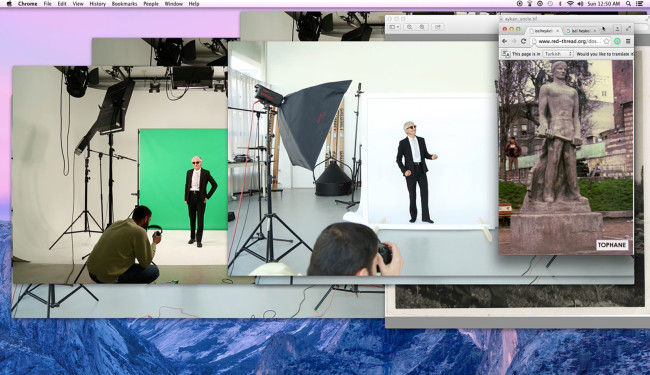
NOWs: Untitled (Gülşen & Hüseyin) by Aykan Safoğlu
Aykan Safoǧlu, Excerpt of Untitled (Gülşen & Hüseyin), 2015
NOWs:
In the two-channel video installation Untitled (Gülşen & Hüseyin), 2015, Aykan Safoǧlu traces the life story of his uncle Hüseyin, who immigrated to Germany to join the growing workforce of Turkish workers there in the early 1960s. On one screen, Safoğlu is seen directing his friend Gülşen Aktaş to pose as his uncle, in a recreation of an early photograph. Gülşen, who lives in Berlin, is prompted by the artist to participate in an exercise designed to elicit empathy for the character she is playing. The Turkish-born artist, who also lives in Germany, is looking for insight. The second screen tells of the ups and downs of Hüseyin’s life as a cleaning person, in the form of scrawled statements and drawings on a bathroom wall. The intimacy of the juxtaposed storytelling modes relates to Safoğlu’s own search for alternative modes of survival to meet the challenges of maintaining his identity in the face of dislocation and sexual bias. With this piece, Safoğlu proves himself to be a nuanced storyteller, a capable historian for “otherness,” and a queerer of history. With this piece, Safoğlu proves himself to be a nuanced storyteller, a capable historian for “otherness,” and a queerer of history – reclaiming history, rewriting it – as he did with Off-White Tulips, 2013.
By Nicole O’Rourke
—
The work is presented in the context of the exhibition Father Figures Are Hard To Find at nGbK Berlin on 17 April 2016, 5-7 pm. The artist Aykan Safoǧlu will be present for a screening, conversation and guided tour at 6 pm.
Aykan Safoǧlu, Excerpt of Untitled (Gülşen & Hüseyin), 2015
NOWs:
In the two-channel video installation Untitled (Gülşen & Hüseyin), 2015, Aykan Safoǧlu traces the life story of his uncle Hüseyin, who immigrated to Germany to join the growing workforce of Turkish workers there in the early 1960s. On one screen, Safoğlu is seen directing his friend Gülşen Aktaş to pose as his uncle, in a recreation of an early photograph. Gülşen, who lives in Berlin, is prompted by the artist to participate in an exercise designed to elicit empathy for the character she is playing. The Turkish-born artist, who also lives in Germany, is looking for insight. The second screen tells of the ups and downs of Hüseyin’s life as a cleaning person, in the form of scrawled statements and drawings on a bathroom wall. The intimacy of the juxtaposed storytelling modes relates to Safoğlu’s own search for alternative modes of survival to meet the challenges of maintaining his identity in the face of dislocation and sexual bias. With this piece, Safoğlu proves himself to be a nuanced storyteller, a capable historian for “otherness,” and a queerer of history. With this piece, Safoğlu proves himself to be a nuanced storyteller, a capable historian for “otherness,” and a queerer of history – reclaiming history, rewriting it – as he did with Off-White Tulips, 2013.
By Nicole O’Rourke
—
The work is presented in the context of the exhibition Father Figures Are Hard To Find at nGbK Berlin on 17 April 2016, 5-7 pm. The artist Aykan Safoǧlu will be present for a screening, conversation and guided tour at 6 pm.
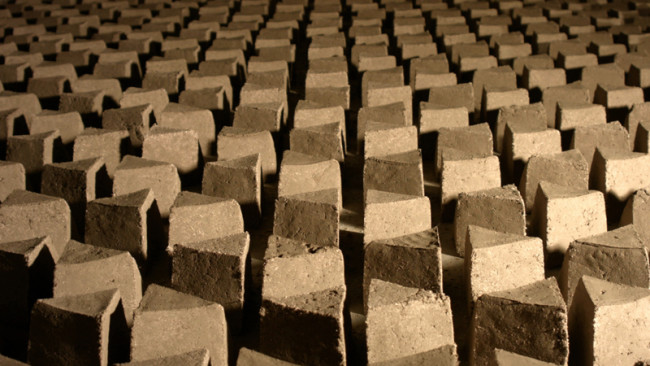
NOWs: Fire Pit (Blocks) by Elise Eeraerts
NOWs:
The video fire pit (blocks) by Elise Eeraerts shows the firing process of blocks through the traditional method of a fire pit. A hole is dug, filled with sawdust and within it the objects are placed to be fired during the course of a night. During the firing process a humming/singing performance took place around midnight, performig artists are Jeremias Holliger and Christian Holliger. The live sound recording of this performative ritualistic act is included in the sound sequence of the video and produced by Annelien van Heymbeeck.
Most recent works by Elise Eeraerts that reflect the process of brick production tested and realized by the artist during the last months in Senegal are currently shown in the context of the exibition Our Mathematical World at Sint-Lukasgalerie, Brussels.
—
elise-eeraerts.be
NOWs:
The video fire pit (blocks) by Elise Eeraerts shows the firing process of blocks through the traditional method of a fire pit. A hole is dug, filled with sawdust and within it the objects are placed to be fired during the course of a night. During the firing process a humming/singing performance took place around midnight, performig artists are Jeremias Holliger and Christian Holliger. The live sound recording of this performative ritualistic act is included in the sound sequence of the video and produced by Annelien van Heymbeeck.
Most recent works by Elise Eeraerts that reflect the process of brick production tested and realized by the artist during the last months in Senegal are currently shown in the context of the exibition Our Mathematical World at Sint-Lukasgalerie, Brussels.
—
elise-eeraerts.be
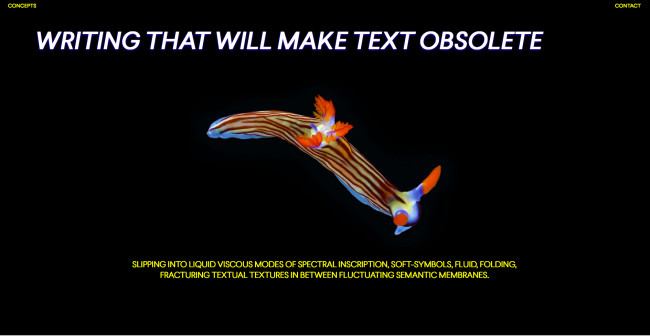
NOWs: Alius by Rodrigo Maltez Novaes and Simen Musæus
NOWs:
Alius is an artistic research project in its pilot phase:
Developed by Rodrigo Maltez Novaes and Simen Musæus, Alius seeks to leverage generative algorithms, machine learning, and distributed data technology in the pursuit of radical alternatives to text.
Their current model takes as its inputs: hypermedia, clusters of linkable media (e.g. a blog post, or a .JPEG), to produce a mesh of radically abstracted signs that can be rendered in myriad visual representations, opening new forms of experiencing and navigating knowledge.
Bringing together practitioners from linguistics, technology, and contemporary art, Alius questions whether the habituated communication forms have reached the potential that digital infrastructures offer. Combining strands of artistic research and technological development, Alius generates an ecosystem of new narratives and solutions that test established notions of language and media.
–
Watch the introduction video about Alius and feel welcome to contact the artists for futher information.
NOWs:
Alius is an artistic research project in its pilot phase:
Developed by Rodrigo Maltez Novaes and Simen Musæus, Alius seeks to leverage generative algorithms, machine learning, and distributed data technology in the pursuit of radical alternatives to text.
Their current model takes as its inputs: hypermedia, clusters of linkable media (e.g. a blog post, or a .JPEG), to produce a mesh of radically abstracted signs that can be rendered in myriad visual representations, opening new forms of experiencing and navigating knowledge.
Bringing together practitioners from linguistics, technology, and contemporary art, Alius questions whether the habituated communication forms have reached the potential that digital infrastructures offer. Combining strands of artistic research and technological development, Alius generates an ecosystem of new narratives and solutions that test established notions of language and media.
–
Watch the introduction video about Alius and feel welcome to contact the artists for futher information.
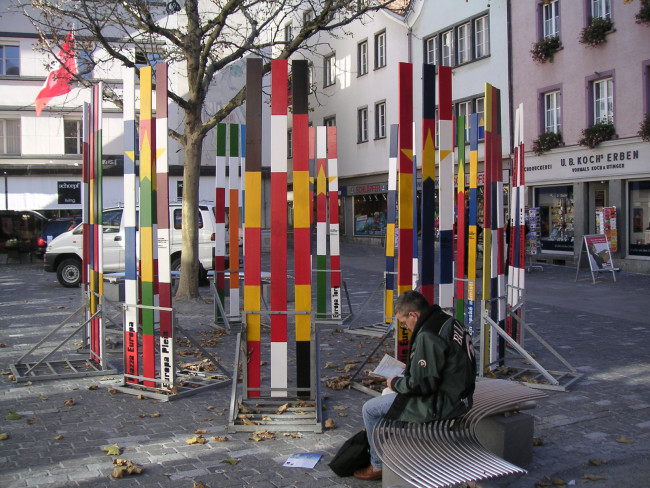
NOWs: Europe Square by Yves Mettler
Intervention “Europaplatz (Chur), commissioned by the art in public space festival, Chur_Interveniert. © Yves Mettler (photo&art), Chur (CH), 2003
NOWs:
Yves Mettler introduces his research project Europe Square on urban geographies and places named “Europe Square”, “Europaplatz”, or “place de l’Europe” and analyses his past interventions in different cities with regard to participation, public use and the signficance of those places within the European cities.
His most recent installation The Mayor, The Numbers and The Midi that presents part of his Europe Square reserach is shown at BOZAR in Brussels in the context of the the exhibition Imagine Europe : In Search of New Narratives, which brings together artists, scientists and thinkers to present their vision of a future Europe. Yves Mettler displays a comprehensive collection of visual materials that portraits different “Europe Squares” and the respective cities. The installation generates a vocabulary of space that problematizes representation of cultural hegemony and searches for notions of diversity or “pan-culturalism”.
Europaplatz (From With Love), Postcards, B/W inkjet photo prints, laserprint, 2015, Sammlung BAK Schweiz
Video excerpt Europaplein (Autour de Midi), 7.24, double monitor DV-PAL, 2016
If you have postcards or documentation of public places named “Europe Square”, please be welcome to share with the artist and send them to: institut@raumexperimente.net or to Institut für Raumexperimente, Christinenstr. 18/19, Haus 2, 10119 Berlin, Germany.
Intervention “Europaplatz (Chur), commissioned by the art in public space festival, Chur_Interveniert. © Yves Mettler (photo&art), Chur (CH), 2003
NOWs:
Yves Mettler introduces his research project Europe Square on urban geographies and places named “Europe Square”, “Europaplatz”, or “place de l’Europe” and analyses his past interventions in different cities with regard to participation, public use and the signficance of those places within the European cities.
His most recent installation The Mayor, The Numbers and The Midi that presents part of his Europe Square reserach is shown at BOZAR in Brussels in the context of the the exhibition Imagine Europe : In Search of New Narratives, which brings together artists, scientists and thinkers to present their vision of a future Europe. Yves Mettler displays a comprehensive collection of visual materials that portraits different “Europe Squares” and the respective cities. The installation generates a vocabulary of space that problematizes representation of cultural hegemony and searches for notions of diversity or “pan-culturalism”.
Europaplatz (From With Love), Postcards, B/W inkjet photo prints, laserprint, 2015, Sammlung BAK Schweiz
Video excerpt Europaplein (Autour de Midi), 7.24, double monitor DV-PAL, 2016
If you have postcards or documentation of public places named “Europe Square”, please be welcome to share with the artist and send them to: institut@raumexperimente.net or to Institut für Raumexperimente, Christinenstr. 18/19, Haus 2, 10119 Berlin, Germany.
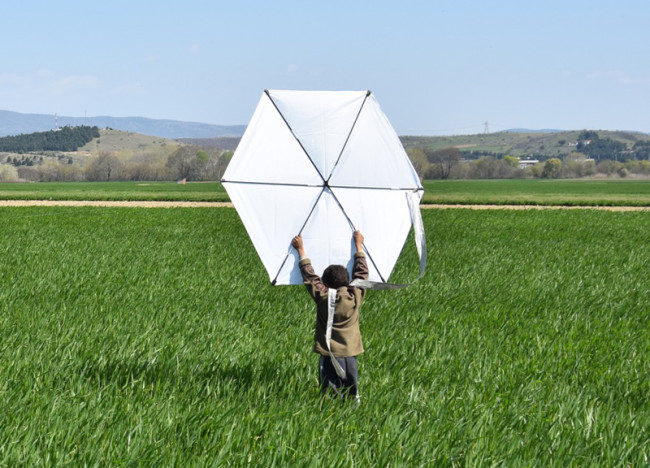
NOWs: Azimut by Raul Walch
NOWs:
The title “Azimut” comes from the Arabic word “azimuth” and can be described as “paths”. In astronomy, it is the angle between the meridian plane and vertical plane defining the height of a star. Whether interpreted as a path, as an arch or as a bridge, “Azimut” describes connections that Raul Walch introduces in the context of his exhibition at Kunstverein Arnsberg.
Raul Walch developed and tested series of “rescue kites” together with children and adults at the Greece border. His rescue kites are a type of flying lighthouses and can serve as solar reflectors, as a marker to attract attention of coast guards and be used to locate and rescue a shipwrecked person. The materials are found on site in the camps and their surroundings: the PVC of boats, tent poles, tent fabrics, and the reflectors of lifejackets. The azimut rescue kites fly with the wind, across the borders, the fences and the barbed wire, thus “Azimut” signals hope of freedom.
raulwalch.net
NOWs:
Das Wort Azimut stammt aus dem Arabischen und lässt sich als “die Wege“ übersetzen. In der Astronomie bezeichnet es den Winkel zwischen der Meridianebene und der die Höhe eines Gestirns definierenden Vertikalebene. Ob als Weg, Bogen oder Brücke, das Azimut in der Ausstellung im Kunstverein Arnsberg beschreibt eine Verbindung.
Raul Walch hat eine Serie von “Rescue Kites“ entwickelt und zusammen mit Kindern und Erwachsenen an der griechischen Grenze getestet. Seine Rettungsdrachen sind eine Art von fliegenden Leuchttürmen und können als Sonnenreflektoren zur Orientierung, als Markierung für die Küstenwache und für die Ortung und Rettung von Schiffbrüchigen dienen. Die verwendeten Materialien stammen aus den Camps und deren Umgebung: das PVC der Boote, die Zeltstangen, die Zeltstoffe und die Reflektoren der Rettungswesten. Die “Azimuts“ konnten mit dem Wind über die Grenzzäune und den Stacheldraht hinweg fliegen und so zu einem Zeichen der Freiheit werden.
raulwalch.net
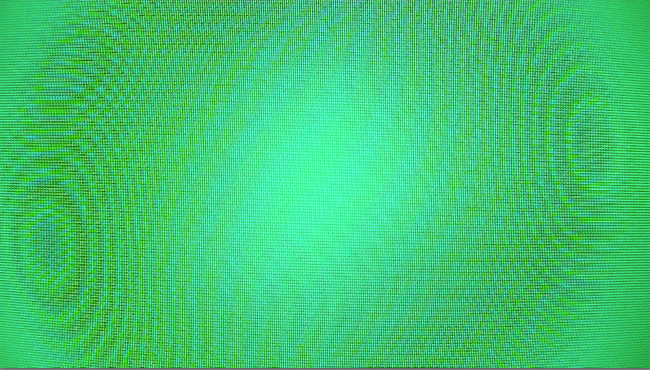
NOWs: Football matches and lunar landings by Euan Williams
Football matches and lunar landings, 2014, 36 min, (extract) by Euan Williams
NOWs:
Euan Williams’s Football matches and lunar landings presents a close up video of the screen of an old cathode ray television. A film is playing that slowly runs through the colour spectrum by individually charging up the red, green and blue pixels of the television’s screen. The slow shifts in pattern and colour are created by the interplay between the camera and the screen and the shifts in luminosity between the minutely separated pixels.
This is an echo of the performance Televisioning which was executed by the inhabitants of a Berlin housing block close to the Neue Nationalgalerie Berlin and within the context of the Festival of Future Nows.
‘Football matches and lunar landings‘ by Euan Williams will be presented alongside documentation of ‘We Shall Survive in the Memory of Others’ by Vilém Flusser and the film ‘Salt White’ by Keti Machavariani on April 7th, 2016 at 20:00 at Werkstatt der Kulturen Berlin.
—
euanwilliams.com
Football matches and lunar landings, 2014, 36 min, (extract) by Euan Williams
NOWs:
Euan Williams’s Football matches and lunar landings presents a close up video of the screen of an old cathode ray television. A film is playing that slowly runs through the colour spectrum by individually charging up the red, green and blue pixels of the television’s screen. The slow shifts in pattern and colour are created by the interplay between the camera and the screen and the shifts in luminosity between the minutely separated pixels.
This is an echo of the performance Televisioning which was executed by the inhabitants of a Berlin housing block close to the Neue Nationalgalerie Berlin and within the context of the Festival of Future Nows.
‘Football matches and lunar landings‘ by Euan Williams will be presented alongside documentation of ‘We Shall Survive in the Memory of Others’ by Vilém Flusser and the film ‘Salt White’ by Keti Machavariani on April 7th, 2016 at 20:00 at Werkstatt der Kulturen Berlin.
—
euanwilliams.com
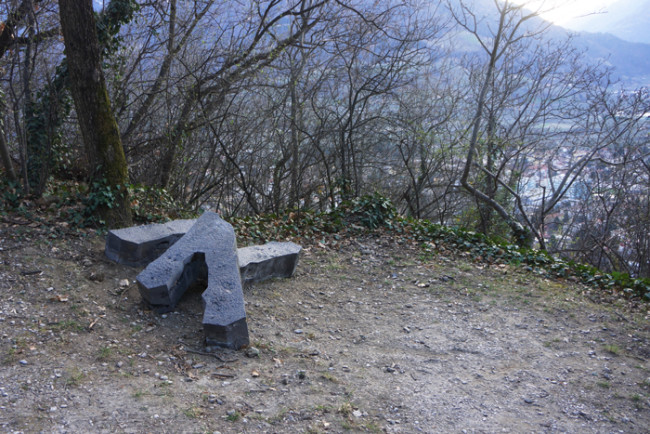
NOWs: My boy, with such boots we may hope to travel far by Alvaro Urbano
NOWs:
In several locations in Tirolo and on the Tiroler Steig reaching Merano, Alvaro Urbano has placed a series of 15 concrete sculptures in the shape of the rune symbols of the cryptogram of Jules Verne’s famous book Journey to the Center of the Earth. During the spring of 1863, Professor Otto Lidenbrock, the main character of the novel – who believes in the existence of volcanic tubes that connect to the centre of the Earth – discovers a mysterious manuscript entirely written in runic alphabet, which offers an important key to unveil the path to the centre of the Earth. Considering how important the runes are as a pre-historical relict in the area of Tirolo, an interesting interchange between fiction and reality emerges. The sculptures are scattered along the path that leads from Merano to Tirolo, and in different locations of the village, as the main park and the market square. Visitors and passers-by will discover the sculptures while walking, becoming, almost by chance, the characters of Jules Verne’s famous novel. The sculptures are made in concrete and other local stone material. Moss will slowly grow on them.
The sculptures can be discovered as part of the second edition of Art & Nature titled Walking with Senses held between March 24 and June 5, 2016 in Merano and the surrounding villages Naturno, Scena and Tirolo, curated by the team of BAU.
Alvaro Urbano
My Boy, with Such Boots we may Hope to Travel Far, 2016
Concrete, metal, local minerals and vegetation.
Variable dimensions.
Art & Nature 2016.
Permanent public sculpture. Merano – Dorf Tyrol
Photos by Daniel Mazza and Alvaro Urbano
NOWs:
In several locations in Tirolo and on the Tiroler Steig reaching Merano, Alvaro Urbano has placed a series of 15 concrete sculptures in the shape of the rune symbols of the cryptogram of Jules Verne’s famous book Journey to the Center of the Earth. During the spring of 1863, Professor Otto Lidenbrock, the main character of the novel – who believes in the existence of volcanic tubes that connect to the centre of the Earth – discovers a mysterious manuscript entirely written in runic alphabet, which offers an important key to unveil the path to the centre of the Earth. Considering how important the runes are as a pre-historical relict in the area of Tirolo, an interesting interchange between fiction and reality emerges. The sculptures are scattered along the path that leads from Merano to Tirolo, and in different locations of the village, as the main park and the market square. Visitors and passers-by will discover the sculptures while walking, becoming, almost by chance, the characters of Jules Verne’s famous novel. The sculptures are made in concrete and other local stone material. Moss will slowly grow on them.
The sculptures can be discovered as part of the second edition of Art & Nature titled Walking with Senses held between March 24 and June 5, 2016 in Merano and the surrounding villages Naturno, Scena and Tirolo, curated by the team of BAU.
Alvaro Urbano
My Boy, with Such Boots we may Hope to Travel Far, 2016
Concrete, metal, local minerals and vegetation.
Variable dimensions.
Art & Nature 2016.
Permanent public sculpture. Merano – Dorf Tyrol
Photos by Daniel Mazza and Alvaro Urbano
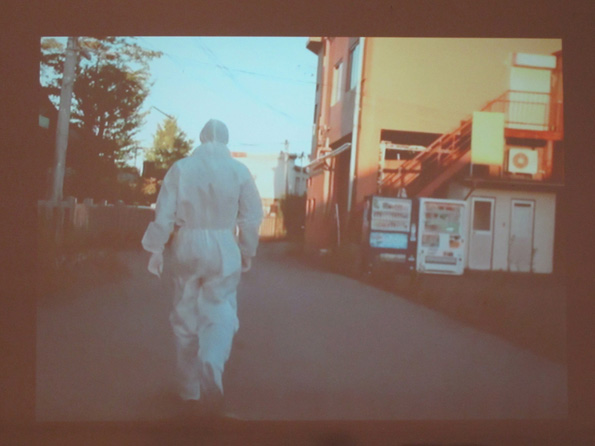
NOWs: Jusqu’ici tout va bien by Raul Walch
Five years after Fukushima:
Jusqu’ici tout va bien
installation / video loop; 4,30min; Fukushima, Japan & Vienna, Austria, 2013
The video shows a person running though the lost city Futaba filmed from a car following the runner who’s movements are in sync with the clicks of a Geiger counter. The video was part of an installation where two places were connected with each other: Vienna hosting the International Atomic Energy Agency and the Fukushima area. The connection is barely visible like the threat of nuclear radiation. In the interventional work these two different places are brought together in an investigative situation. One part of the installation was a picture of the flag of the abandoned city Futaba, situated next to the destroyed power plant, that was put up at Uno-city in front of the IAEO-building.
www.raulwalch.net
Five years after Fukushima:
Jusqu’ici tout va bien
installation / video loop; 4,30min; Fukushima, Japan & Vienna, Austria, 2013
The video shows a person running though the lost city Futaba filmed from a car following the runner who’s movements are in sync with the clicks of a Geiger counter. The video was part of an installation where two places were connected with each other: Vienna hosting the International Atomic Energy Agency and the Fukushima area. The connection is barely visible like the threat of nuclear radiation. In the interventional work these two different places are brought together in an investigative situation. One part of the installation was a picture of the flag of the abandoned city Futaba, situated next to the destroyed power plant, that was put up at Uno-city in front of the IAEO-building.
www.raulwalch.net
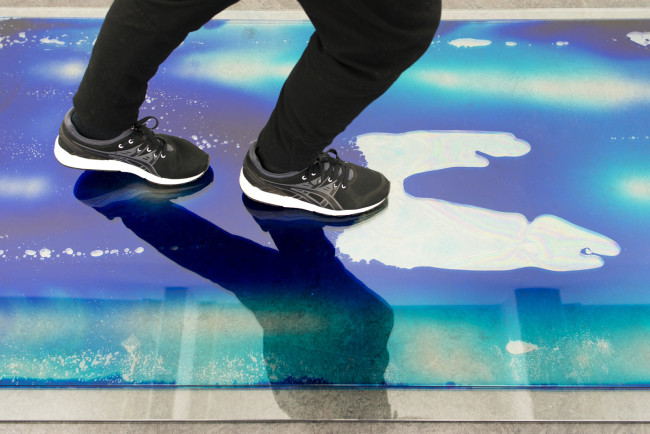
NOWS: House by Dan Stockholm
NOWs:
HOUSE (detail), 2016. Scaffolding, stainless steel, plaster. Dimensions variable
Fascinated by places and architecture with an innate historical significance and narrative tension, Dan Stockholm practises a “creative archaeology”, which includes field research and work with finds. Recently, his works have been evolving from a “performative process” which turns the finished piece into a container bearing the history of ist making within. At Künstlerhaus Bethanien Stockholm is showing several processgenerated works. The installation HOUSE, for example, was originally begun in 2013 only days after his father’s death, when the artist in a three-day performative action methodically touched his father’s entire house on the outside centimetre by centimetre. This process ended by Stockholm translating this process into object form by producing a large number of negative plaster casts of his handprints. At the Künstlerhaus, he has mounted these on ceiling-height, metal scaffolding poles and in doing so created a spatial installation that exudes a curious enchantment, inviting visitors to move through it as if in a forest. On the ground floor, a video is shown documenting the touching of the house.
Another sculpture / installation by Stockholm consists of reddish bricks that the artist made by hand – which is also the title of the work. He used 12 of the handprints produced for HOUSE as tools for these, pressing them into the damp clay, so that a positive imprint was created in each brick. Afterwards, the bricks were dried out and have been arranged by Stockholm within the exhibition space into a “palpated architecture” and therefore into a new (narrative) structure. On the upper floor of the exhibition space there is another piece by Stockholm, a floor sculpture entitled Level (Blue Mare, Königsblau); in this case, the artist leaves it to the visitors to discover, touch and develop/complete the work.
For Dan Stockholm, the act of ‘touching’ has become a fundamental part of his working process. The works shown at the Künstlerhaus Bethanien each stand alone, but they are also part of a wider, processual context – a never-ending cycle of ideas and stories, to which we do not gain access directly through contemplation of the work, but via retrospective activation of the narratives inherent in them.
Dan Stockholm is a grantee at Künstlerhaus Bethanien by selection of The Danish Arts Foundation.
Please be welcome to contact the artist if you are interested in a studio visit there until 1 July 2016. Contact: Dan Stockholm: hello@danstockholm.com
Installation view, HOUSE, Künstlerhaus Bethanien, 2016
By hand, 2016. 255 x 125 x 70 cm, red clay
By hand (detail), 2016. 23 x 14 x 10 cm, red clay
HOUSE, 2016. Scaffolding, stainless steel, plaster. Dimensions variable
HOUSE (detail), 2016. Scaffolding, stainless steel, plaster. Dimensions variable
Installation view, HOUSE, 2016
Untitled, 2016. Plaster, epoxy, water
Level (Blue Mare, Königsblau), 2016. 420 x 100 x 1,6 cm, ink, glass, water
NOWs:
HOUSE (detail), 2016. Scaffolding, stainless steel, plaster. Dimensions variable
Fascinated by places and architecture with an innate historical significance and narrative tension, Dan Stockholm practises a “creative archaeology”, which includes field research and work with finds. Recently, his works have been evolving from a “performative process” which turns the finished piece into a container bearing the history of ist making within. At Künstlerhaus Bethanien Stockholm is showing several processgenerated works. The installation HOUSE, for example, was originally begun in 2013 only days after his father’s death, when the artist in a three-day performative action methodically touched his father’s entire house on the outside centimetre by centimetre. This process ended by Stockholm translating this process into object form by producing a large number of negative plaster casts of his handprints. At the Künstlerhaus, he has mounted these on ceiling-height, metal scaffolding poles and in doing so created a spatial installation that exudes a curious enchantment, inviting visitors to move through it as if in a forest. On the ground floor, a video is shown documenting the touching of the house.
Another sculpture / installation by Stockholm consists of reddish bricks that the artist made by hand – which is also the title of the work. He used 12 of the handprints produced for HOUSE as tools for these, pressing them into the damp clay, so that a positive imprint was created in each brick. Afterwards, the bricks were dried out and have been arranged by Stockholm within the exhibition space into a “palpated architecture” and therefore into a new (narrative) structure. On the upper floor of the exhibition space there is another piece by Stockholm, a floor sculpture entitled Level (Blue Mare, Königsblau); in this case, the artist leaves it to the visitors to discover, touch and develop/complete the work.
For Dan Stockholm, the act of ‘touching’ has become a fundamental part of his working process. The works shown at the Künstlerhaus Bethanien each stand alone, but they are also part of a wider, processual context – a never-ending cycle of ideas and stories, to which we do not gain access directly through contemplation of the work, but via retrospective activation of the narratives inherent in them.
Dan Stockholm is a grantee at Künstlerhaus Bethanien by selection of The Danish Arts Foundation.
Please be welcome to contact the artist if you are interested in a studio visit there until 1 July 2016. Contact: Dan Stockholm: hello@danstockholm.com
Installation view, HOUSE, Künstlerhaus Bethanien, 2016
By hand, 2016. 255 x 125 x 70 cm, red clay
By hand (detail), 2016. 23 x 14 x 10 cm, red clay
HOUSE, 2016. Scaffolding, stainless steel, plaster. Dimensions variable
HOUSE (detail), 2016. Scaffolding, stainless steel, plaster. Dimensions variable
Installation view, HOUSE, 2016
Untitled, 2016. Plaster, epoxy, water
Level (Blue Mare, Königsblau), 2016. 420 x 100 x 1,6 cm, ink, glass, water
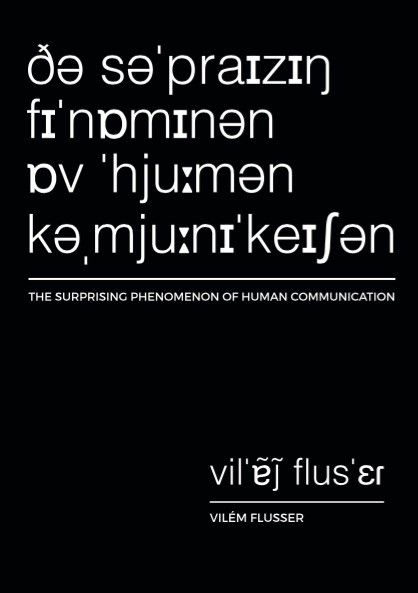
NOWs: The Surprising Phenomenon of Human Communication by Rodrigo Maltez Novaes
Originally written in both English and French, The Surprising Phenomenon of Human Communicationis a series of twelve essays that Vilém Flusser delivered as lectures in Aix-en-Provence, France, on several subjects ranging from communication media, memory, symbols, meaning, models, art, cybernetics, the Bible, and Brigitte Bardot.
Although written in 1975, this early phenomenological study of changing aesthetic, ethical, and epistemological models, and of the current fundamental revolution in the structure of human communication, is a visionary and provocative polemic that can help us understand, or at least, gain a better view of what is happening in the world around us today: big data, centralised media power, mass media conglomerates, political aesthetics etc.
Unpublished for almost forty years, The Surprising Phenomenon of Human Communication, now published for the first time, edited from Vilém Flusser’s original English typescript, is not only an important work from the author’s mid career, just before the development of his seminal theories on technical images and technical imagination, but it also forms a continuous link with his other titles of the same period: Natural:Mind, Gestures, Mutation in Human Relations, Post-History, Vampyroteuthis infernalis, and Towards a Philosophy of Photography.
Rodrigo Maltez Novaes is an artist, translator, editor and designer. He has translated and published several titles by the philosopher Vilém Flusser. Rodrigo is the founder and Editor-in-Chief of Metaflux Publishing. Metaflux Publishing is an independent project that aims to publish both fiction and non-fiction works from a variety of fields and cultures.
Metaflux is open for collaborative projects.
Originally written in both English and French, The Surprising Phenomenon of Human Communicationis a series of twelve essays that Vilém Flusser delivered as lectures in Aix-en-Provence, France, on several subjects ranging from communication media, memory, symbols, meaning, models, art, cybernetics, the Bible, and Brigitte Bardot.
Although written in 1975, this early phenomenological study of changing aesthetic, ethical, and epistemological models, and of the current fundamental revolution in the structure of human communication, is a visionary and provocative polemic that can help us understand, or at least, gain a better view of what is happening in the world around us today: big data, centralised media power, mass media conglomerates, political aesthetics etc.
Unpublished for almost forty years, The Surprising Phenomenon of Human Communication, now published for the first time, edited from Vilém Flusser’s original English typescript, is not only an important work from the author’s mid career, just before the development of his seminal theories on technical images and technical imagination, but it also forms a continuous link with his other titles of the same period: Natural:Mind, Gestures, Mutation in Human Relations, Post-History, Vampyroteuthis infernalis, and Towards a Philosophy of Photography.
Rodrigo Maltez Novaes is an artist, translator, editor and designer. He has translated and published several titles by the philosopher Vilém Flusser. Rodrigo is the founder and Editor-in-Chief of Metaflux Publishing. Metaflux Publishing is an independent project that aims to publish both fiction and non-fiction works from a variety of fields and cultures.
Metaflux is open for collaborative projects.
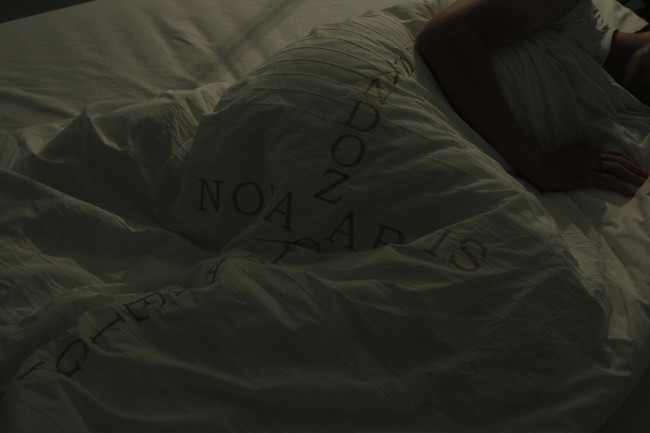
NOWs: Basel Nightmare by Yuichiro Tamura
Basel Nightmare
Switzerland’s largest traditional carnival “Basler Fasnacht” takes place Monday to Thursday following Ash Wednesday in spring every year, its history dating back to the 14th century. In Yuichiro Tamura’s performance locals dressed in jester’s clothing bang their drums, while a young man sleeps after taking sleeping pills. Basel’s pharmaceutical industry is a key industry in the region. A disturbing sensation: To see and hear the Fasnacht drummers disturbing the young man’s sleep is definitely a Basel Nightmare.
Performance, Atelier Mondial, Basel, Switzerland. 2015
damianoyurkiewich.com
Basel Nightmare
Switzerland’s largest traditional carnival “Basler Fasnacht” takes place Monday to Thursday following Ash Wednesday in spring every year, its history dating back to the 14th century. In Yuichiro Tamura’s performance locals dressed in jester’s clothing bang their drums, while a young man sleeps after taking sleeping pills. Basel’s pharmaceutical industry is a key industry in the region. A disturbing sensation: To see and hear the Fasnacht drummers disturbing the young man’s sleep is definitely a Basel Nightmare.
Performance, Atelier Mondial, Basel, Switzerland. 2015
